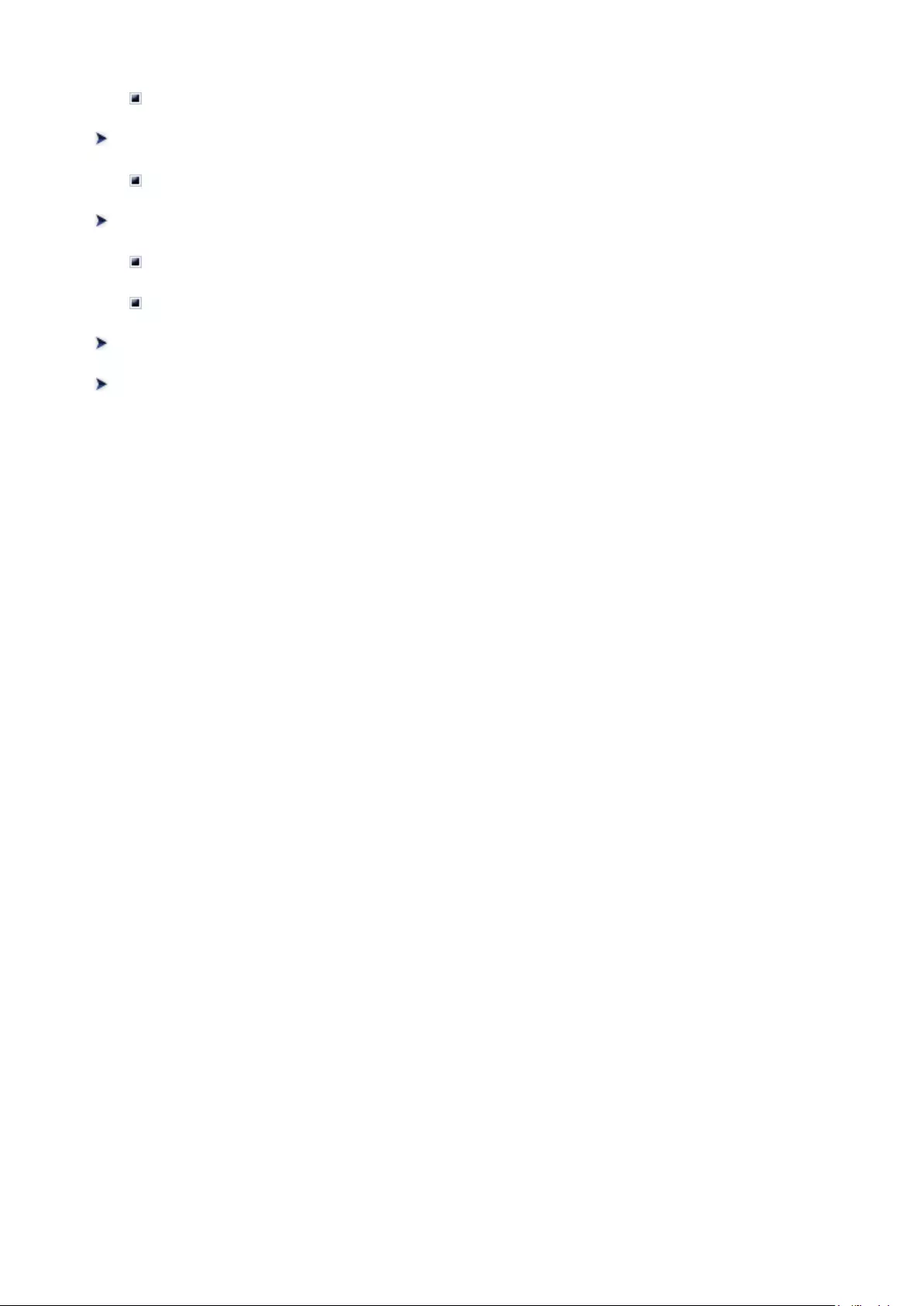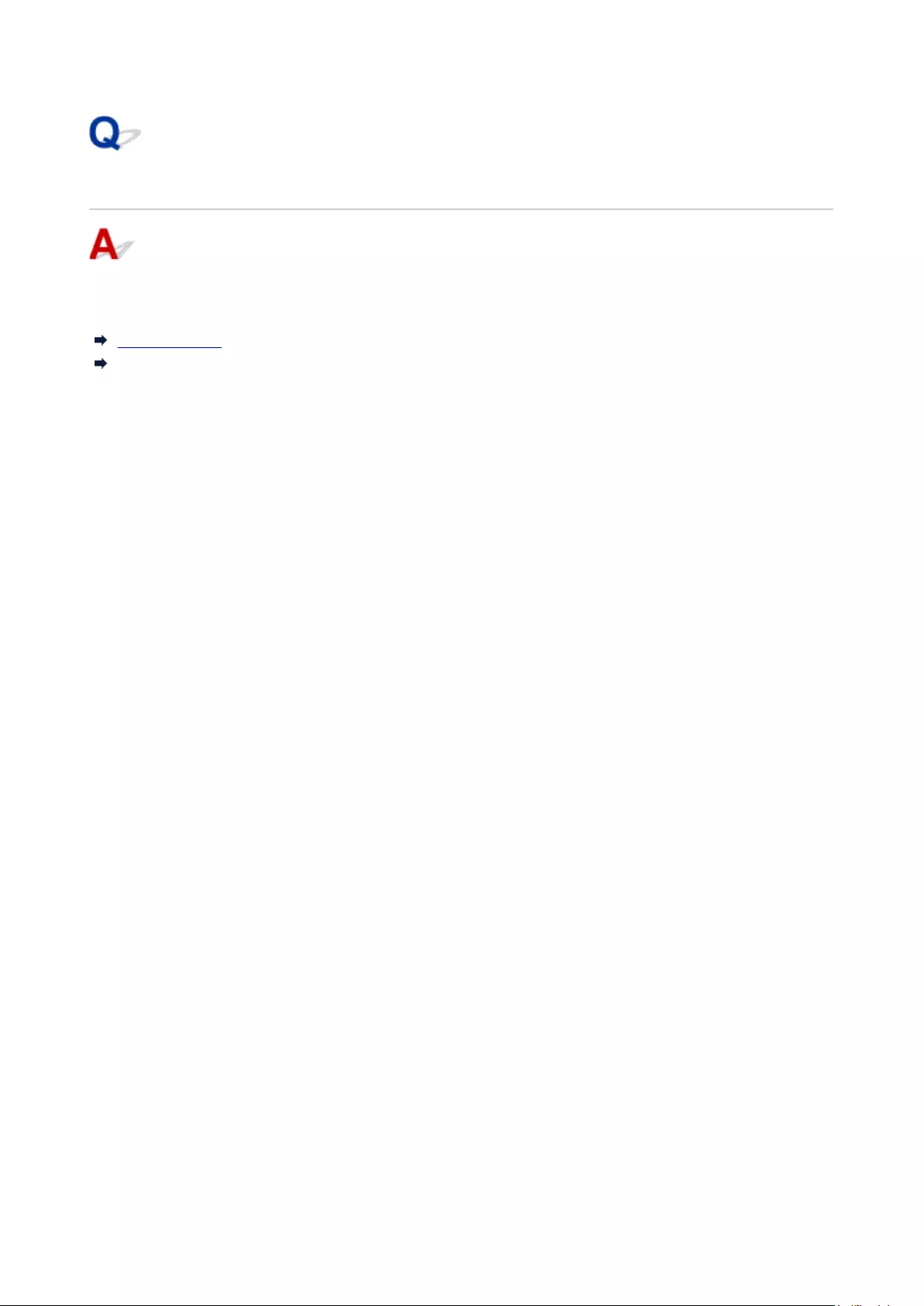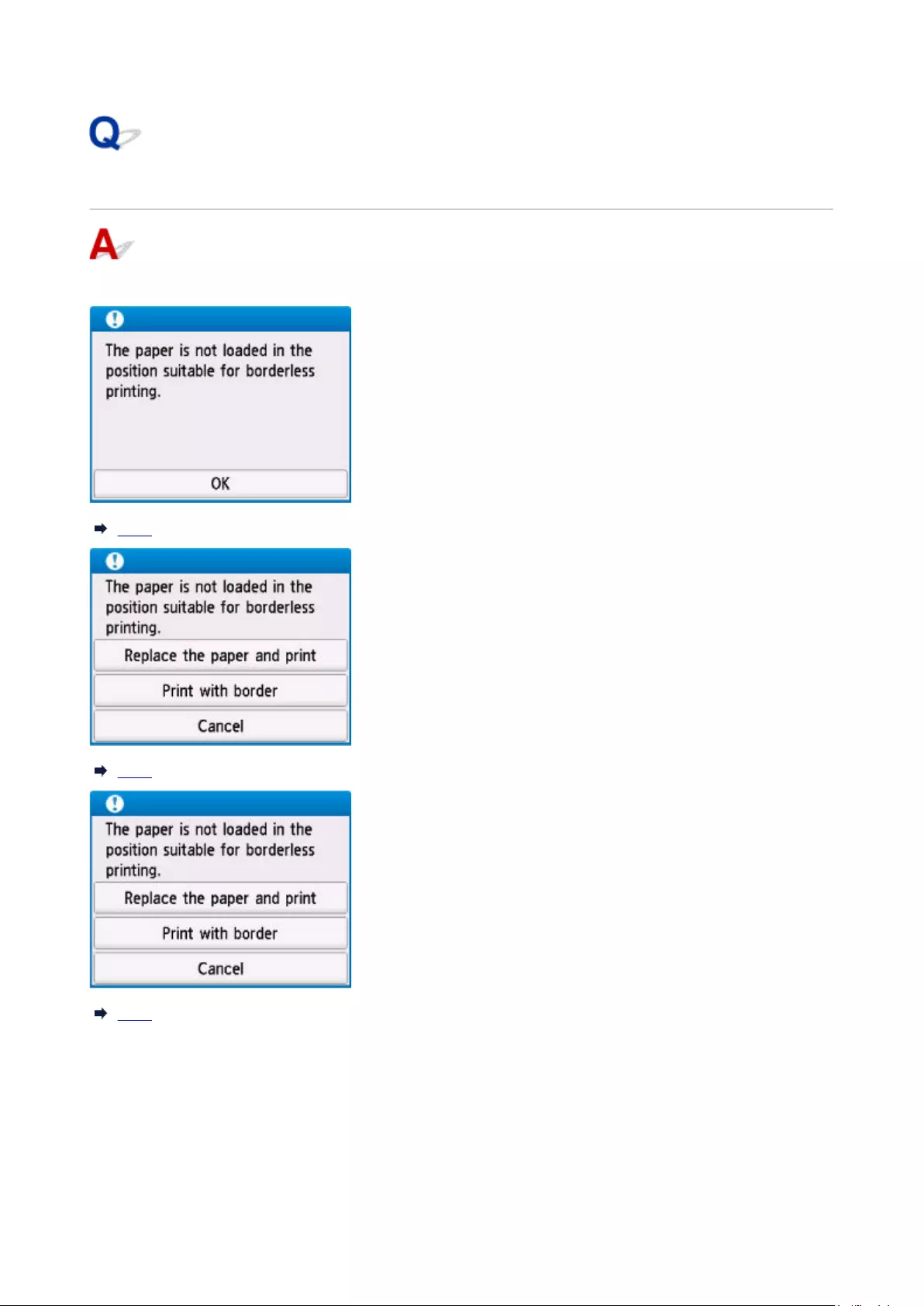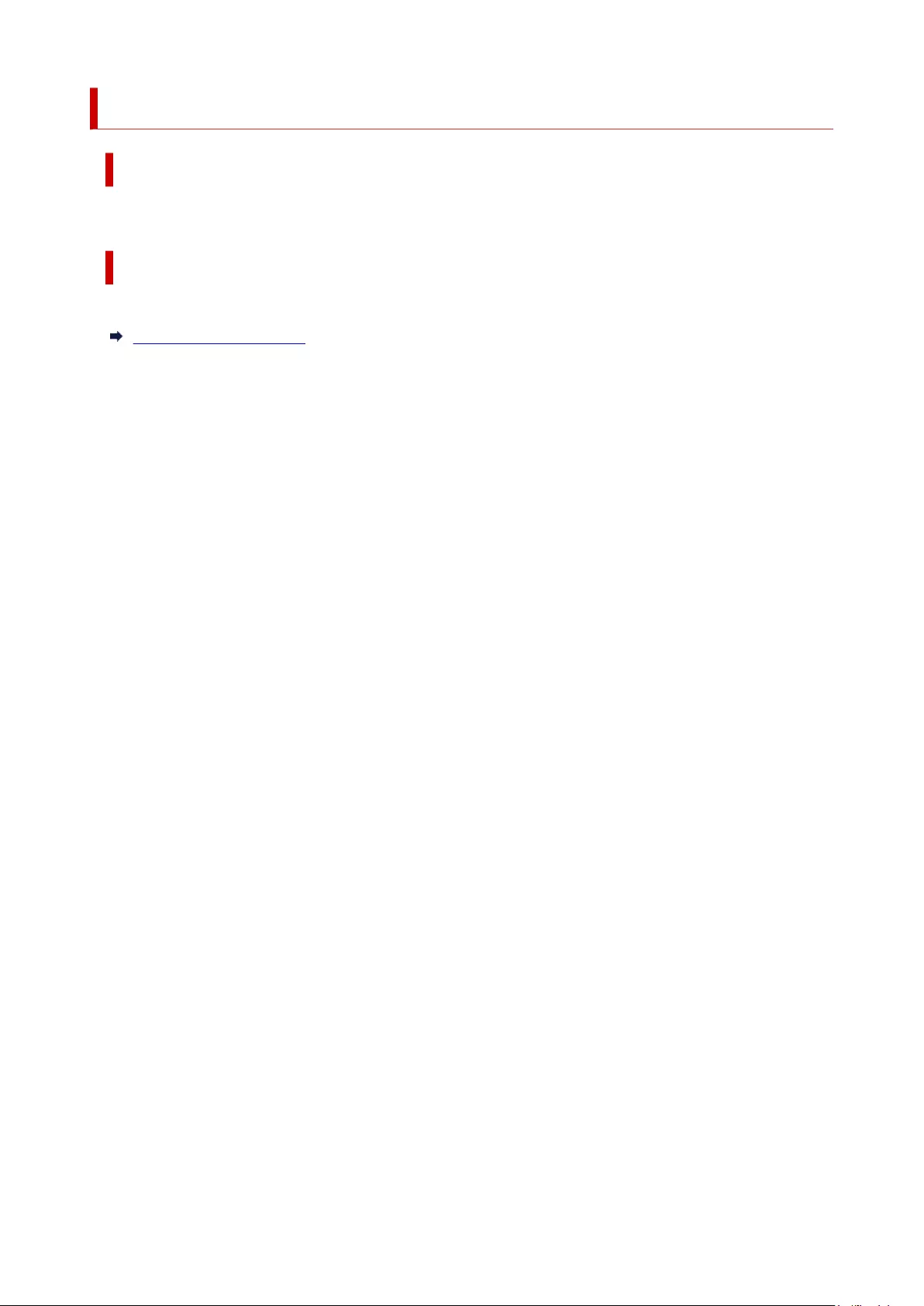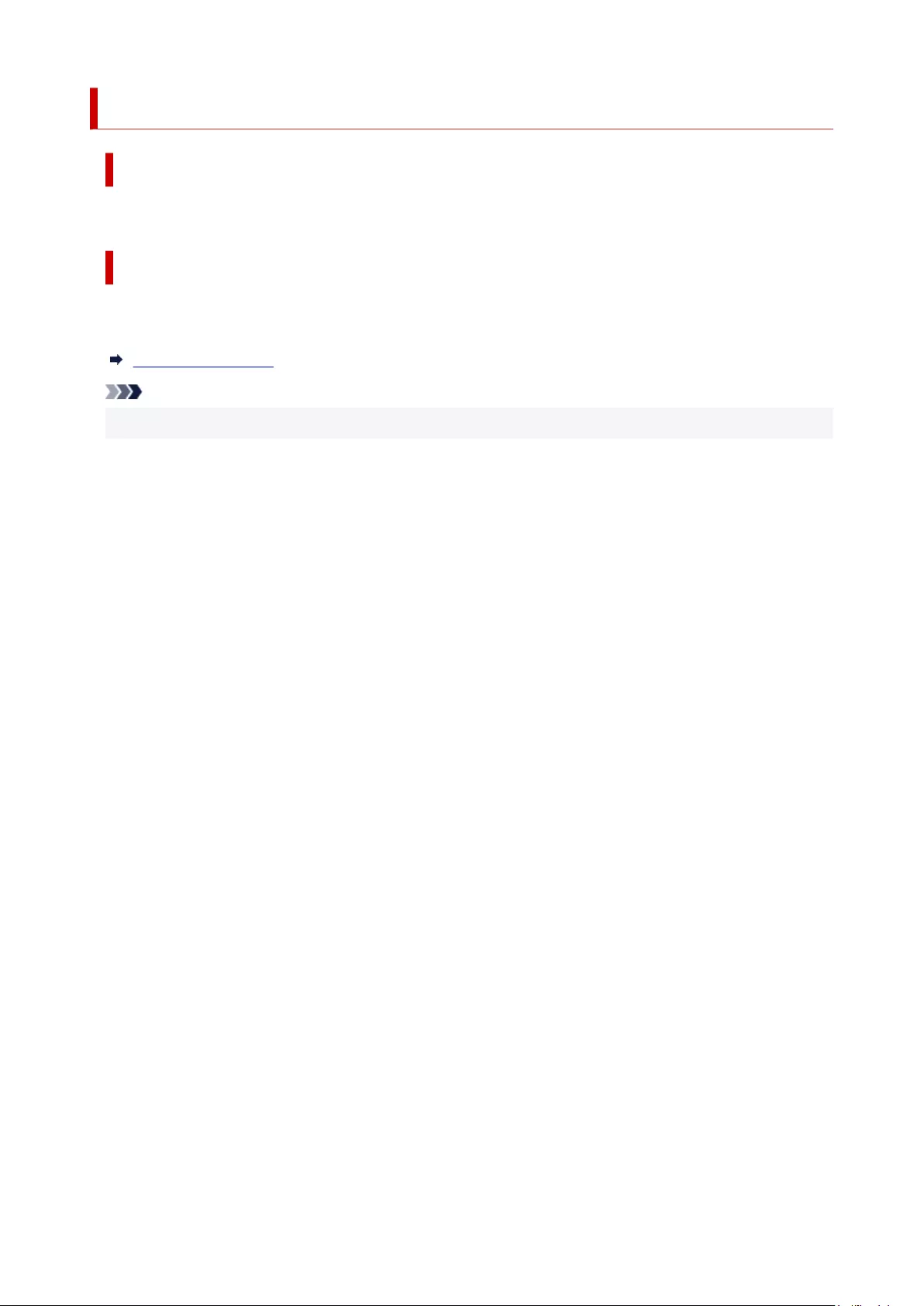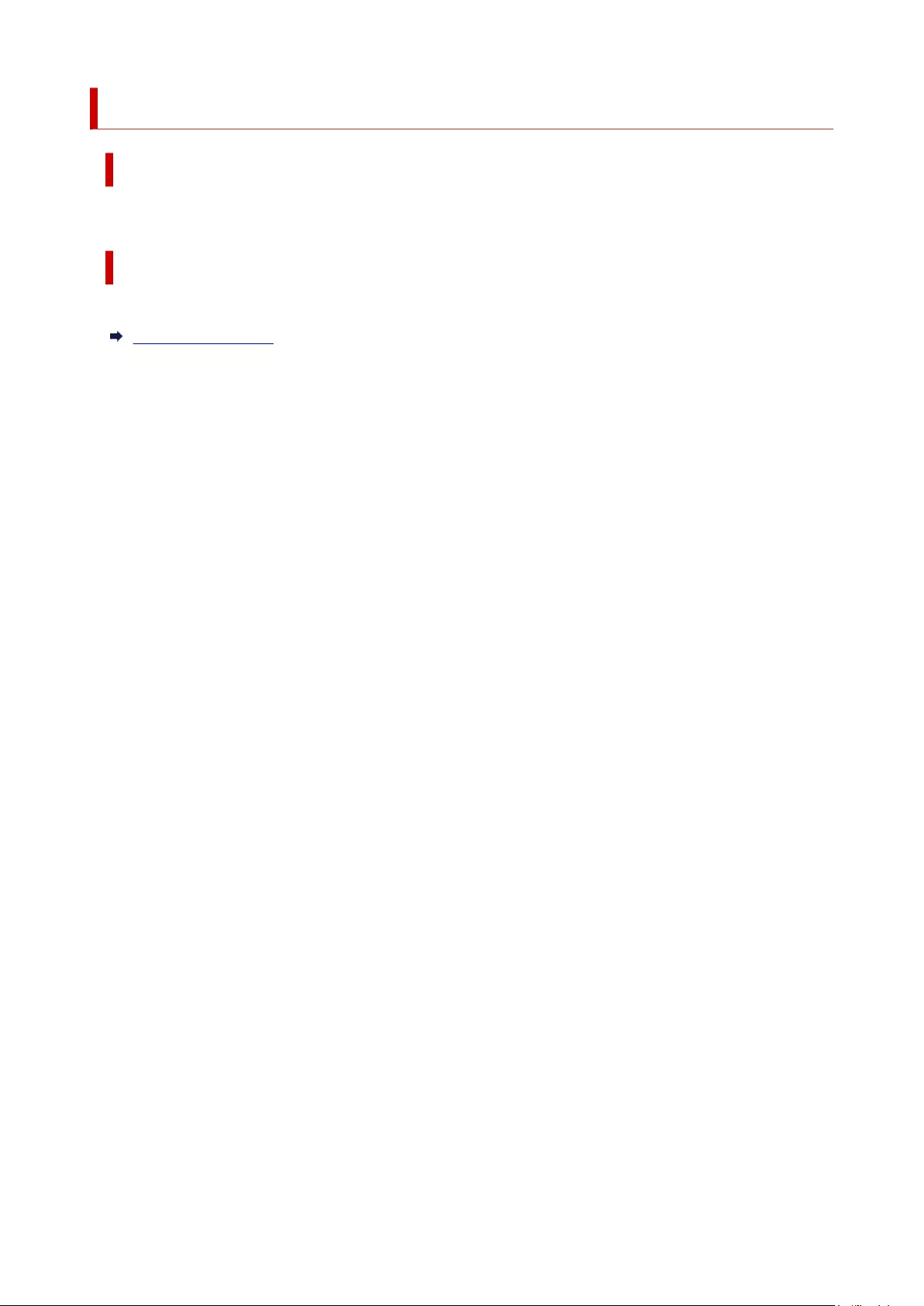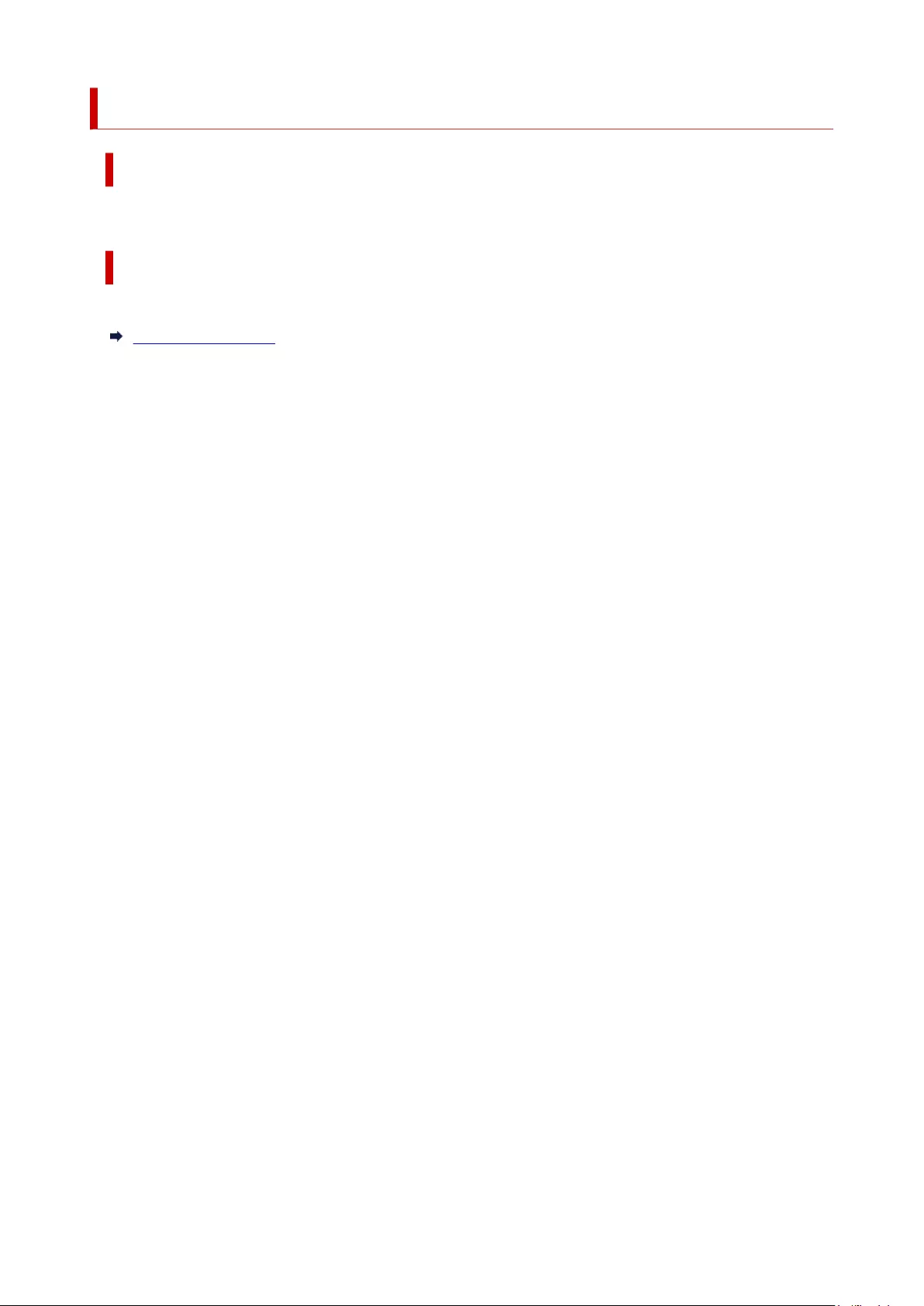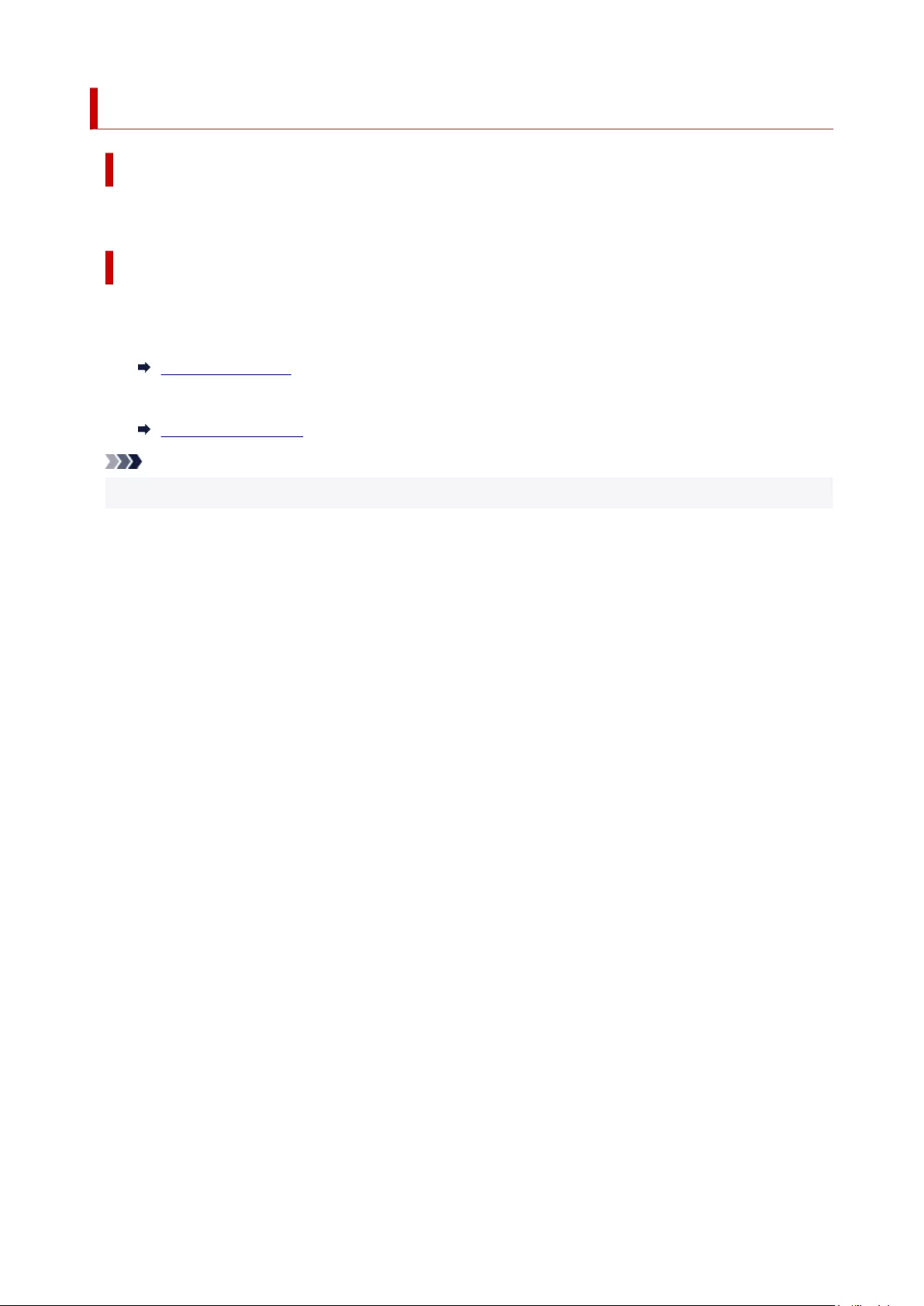Canon GP-200 User Manual
Displayed below is the user manual for GP-200 by Canon which is a product in the Large Format Printers category. This manual has pages.
Related Manuals

GP-300 GP-200 GP-5300 GP-5200
Online Manual
English

Contents
Using This Online Manual. . . . . . . . . . . . . . . . . . . . . . . . . . . . . . . . . . . . . . . . . . . . . . . . . . 18
Trademarks and Licenses. . . . . . . . . . . . . . . . . . . . . . . . . . . . . . . . . . . . . . . . . . . . . . . . . 19
Basic Operation. . . . . . . . . . . . . . . . . . . . . . . . . . . . . . . . . . . . . . . . . . . . . . . . . . 38
Printer Parts. . . . . . . . . . . . . . . . . . . . . . . . . . . . . . . . . . . . . . . . . . . . . . . . . . . . . . . . . . . . 39
Printer Parts. . . . . . . . . . . . . . . . . . . . . . . . . . . . . . . . . . . . . . . . . . . . . . . . . . . . . . . . . . . . . . . . . . . . . . . 40
Front. . . . . . . . . . . . . . . . . . . . . . . . . . . . . . . . . . . . . . . . . . . . . . . . . . . . . . . . . . . . . . . . . . . . . . . . 41
Side. . . . . . . . . . . . . . . . . . . . . . . . . . . . . . . . . . . . . . . . . . . . . . . . . . . . . . . . . . . . . . . . . . . . . . . . . 43
Top Cover (Inside). . . . . . . . . . . . . . . . . . . . . . . . . . . . . . . . . . . . . . . . . . . . . . . . . . . . . . . . . . . . . . 44
Roll Paper Cover (Inside). . . . . . . . . . . . . . . . . . . . . . . . . . . . . . . . . . . . . . . . . . . . . . . . . . . . . . . . 45
Carriage. . . . . . . . . . . . . . . . . . . . . . . . . . . . . . . . . . . . . . . . . . . . . . . . . . . . . . . . . . . . . . . . . . . . . . 46
Ink Tank Cover (Inside). . . . . . . . . . . . . . . . . . . . . . . . . . . . . . . . . . . . . . . . . . . . . . . . . . . . . . . . . . 47
Operation Panel. . . . . . . . . . . . . . . . . . . . . . . . . . . . . . . . . . . . . . . . . . . . . . . . . . . . . . . . . . . . . . . . 48
Optional accessories. . . . . . . . . . . . . . . . . . . . . . . . . . . . . . . . . . . . . . . . . . . . . . . . . . . . . . . . . . . . . . . . 50
Stand. . . . . . . . . . . . . . . . . . . . . . . . . . . . . . . . . . . . . . . . . . . . . . . . . . . . . . . . . . . . . . . . . . . . . . . . 51
Roll Holder Set. . . . . . . . . . . . . . . . . . . . . . . . . . . . . . . . . . . . . . . . . . . . . . . . . . . . . . . . . . . . . . . . . 53
Printing procedure. . . . . . . . . . . . . . . . . . . . . . . . . . . . . . . . . . . . . . . . . . . . . . . . . . . . . . . 54
Turning the Printer On and Off. . . . . . . . . . . . . . . . . . . . . . . . . . . . . . . . . . . . . . . . . . . . . . . . . . . . . . . . . 55
Loading and Printing on Rolls. . . . . . . . . . . . . . . . . . . . . . . . . . . . . . . . . . . . . . . . . . . . . . . . . . . . . . . . . 57
Loading and Printing on Sheets. . . . . . . . . . . . . . . . . . . . . . . . . . . . . . . . . . . . . . . . . . . . . . . . . . . . . . . . 60
Printing in Windows. . . . . . . . . . . . . . . . . . . . . . . . . . . . . . . . . . . . . . . . . . . . . . . . . . . . . . . . . . . . . . . . . 62
Printing from macOS. . . . . . . . . . . . . . . . . . . . . . . . . . . . . . . . . . . . . . . . . . . . . . . . . . . . . . . . . . . . . . . . 64
Canceling print jobs. . . . . . . . . . . . . . . . . . . . . . . . . . . . . . . . . . . . . . . . . . . . . . . . . . . . . . 65
Canceling Print Jobs from the Control Panel. . . . . . . . . . . . . . . . . . . . . . . . . . . . . . . . . . . . . . . . . . . . . . 66
Canceling Print Jobs from Windows. . . . . . . . . . . . . . . . . . . . . . . . . . . . . . . . . . . . . . . . . . . . . . . . . . . . 67
Canceling Print Jobs from macOS. . . . . . . . . . . . . . . . . . . . . . . . . . . . . . . . . . . . . . . . . . . . . . . . . . . . . . 69
Pausing Printing. . . . . . . . . . . . . . . . . . . . . . . . . . . . . . . . . . . . . . . . . . . . . . . . . . . . . . . . . 70
Pausing Printing. . . . . . . . . . . . . . . . . . . . . . . . . . . . . . . . . . . . . . . . . . . . . . . . . . . . . . . . . . . . . . . . . . . . 71
Handling and Use of Paper. . . . . . . . . . . . . . . . . . . . . . . . . . . . . . . . . . . . . . . . . 72
Paper. . . . . . . . . . . . . . . . . . . . . . . . . . . . . . . . . . . . . . . . . . . . . . . . . . . . . . . . . . . . . . . . . 74
Types of Paper. . . . . . . . . . . . . . . . . . . . . . . . . . . . . . . . . . . . . . . . . . . . . . . . . . . . . . . . . . . . . . . . . . . . . 75
Paper Sizes. . . . . . . . . . . . . . . . . . . . . . . . . . . . . . . . . . . . . . . . . . . . . . . . . . . . . . . . . . . . . . . . . . . . . . . 76

Using Paper Other Than Genuine Paper and feed confirmed Paper. . . . . . . . . . . . . . . . . . . . . . . . . . . 78
Printing on Paper Other Than Genuine Paper and feed confirmed Paper Using Existing Settings. . .
. . . . . . . . . . . . . . . . . . . . . . . . . . . . . . . . . . . . . . . . . . . . . . . . . . . . . . . . . . . . . . . . . . . . . . . . . . . . . 79
Printing on Paper Other Than Genuine Paper and feed confirmed Paper by Adding a Media Type. .
. . . . . . . . . . . . . . . . . . . . . . . . . . . . . . . . . . . . . . . . . . . . . . . . . . . . . . . . . . . . . . . . . . . . . . . . . . . . . 80
Updating paper information. . . . . . . . . . . . . . . . . . . . . . . . . . . . . . . . . . . . . . . . . . . . . . . . . . . . . . . . . . . 81
Handling rolls. . . . . . . . . . . . . . . . . . . . . . . . . . . . . . . . . . . . . . . . . . . . . . . . . . . . . . . . . . . 82
Loading Rolls on the Roll Holder. . . . . . . . . . . . . . . . . . . . . . . . . . . . . . . . . . . . . . . . . . . . . . . . . . . . . . . 83
Loading Rolls in the Printer. . . . . . . . . . . . . . . . . . . . . . . . . . . . . . . . . . . . . . . . . . . . . . . . . . . . . . . . . . . 87
Changing the Type of Paper. . . . . . . . . . . . . . . . . . . . . . . . . . . . . . . . . . . . . . . . . . . . . . . . . . . . . . . . . . 92
Specifying the Paper Length. . . . . . . . . . . . . . . . . . . . . . . . . . . . . . . . . . . . . . . . . . . . . . . . . . . . . . . . . . 95
Removing the Roll from the Printer. . . . . . . . . . . . . . . . . . . . . . . . . . . . . . . . . . . . . . . . . . . . . . . . . . . . . 96
Removing Rolls From the Roll Holder. . . . . . . . . . . . . . . . . . . . . . . . . . . . . . . . . . . . . . . . . . . . . . . . . . . 99
Feeding Roll Paper Manually. . . . . . . . . . . . . . . . . . . . . . . . . . . . . . . . . . . . . . . . . . . . . . . . . . . . . . . . . 101
Keeping Track of the Amount of Roll Paper Left. . . . . . . . . . . . . . . . . . . . . . . . . . . . . . . . . . . . . . . . . . 102
Specifying the Amount of Extension for Borderless Printing. . . . . . . . . . . . . . . . . . . . . . . . . . . . . . . . . 105
Specifying the Ink Drying Time. . . . . . . . . . . . . . . . . . . . . . . . . . . . . . . . . . . . . . . . . . . . . . . . . . . . . . . 107
Specifying the Cutting Method for Rolls. . . . . . . . . . . . . . . . . . . . . . . . . . . . . . . . . . . . . . . . . . . . . . . . . 109
Cutting the Leading Edge of Roll Paper Automatically. . . . . . . . . . . . . . . . . . . . . . . . . . . . . . . . . . . . . 114
Reducing Dust from Cutting Rolls. . . . . . . . . . . . . . . . . . . . . . . . . . . . . . . . . . . . . . . . . . . . . . . . . . . . . 116
Detecting Roll Paper was Replaced While the Power was Off. . . . . . . . . . . . . . . . . . . . . . . . . . . . . . . 118
Handling sheets. . . . . . . . . . . . . . . . . . . . . . . . . . . . . . . . . . . . . . . . . . . . . . . . . . . . . . . . 119
Loading Sheets in the Printer. . . . . . . . . . . . . . . . . . . . . . . . . . . . . . . . . . . . . . . . . . . . . . . . . . . . . . . . . 120
Printing From a Desired Starting Point. . . . . . . . . . . . . . . . . . . . . . . . . . . . . . . . . . . . . . . . . . . . . . . . . 123
Removing Sheets. . . . . . . . . . . . . . . . . . . . . . . . . . . . . . . . . . . . . . . . . . . . . . . . . . . . . . . . . . . . . . . . . . 126
Basket. . . . . . . . . . . . . . . . . . . . . . . . . . . . . . . . . . . . . . . . . . . . . . . . . . . . . . . . . . . . . . . . 128
Using the Basket. . . . . . . . . . . . . . . . . . . . . . . . . . . . . . . . . . . . . . . . . . . . . . . . . . . . . . . . . . . . . . . . . . 129
Changing Printer's Setting. . . . . . . . . . . . . . . . . . . . . . . . . . . . . . . . . . . . . . . . . 131
Changing Settings from Operation Panel. . . . . . . . . . . . . . . . . . . . . . . . . . . . . . . . . . . . . 132
Home Screen Menu Composition. . . . . . . . . . . . . . . . . . . . . . . . . . . . . . . . . . . . . . . . . . . . . . . . . . . . . 133
Menu Structure. . . . . . . . . . . . . . . . . . . . . . . . . . . . . . . . . . . . . . . . . . . . . . . . . . . . . . . . . . . . . . . . . . . 137
Advanced (Paper settings). . . . . . . . . . . . . . . . . . . . . . . . . . . . . . . . . . . . . . . . . . . . . . . . . . . . . . 156
Advanced (LAN settings). . . . . . . . . . . . . . . . . . . . . . . . . . . . . . . . . . . . . . . . . . . . . . . . . . . . . . . . 158
Setting Items on Operation Panel. . . . . . . . . . . . . . . . . . . . . . . . . . . . . . . . . . . . . . . . . . . . . . . . . . . . . 161

Maintenance. . . . . . . . . . . . . . . . . . . . . . . . . . . . . . . . . . . . . . . . . . . . . . . . . . . . . . . . . . . . . . . . . 163
Job management. . . . . . . . . . . . . . . . . . . . . . . . . . . . . . . . . . . . . . . . . . . . . . . . . . . . . . . . . . . . . . 165
LAN settings. . . . . . . . . . . . . . . . . . . . . . . . . . . . . . . . . . . . . . . . . . . . . . . . . . . . . . . . . . . . . . . . . 166
Test print. . . . . . . . . . . . . . . . . . . . . . . . . . . . . . . . . . . . . . . . . . . . . . . . . . . . . . . . . . . . . . . . . . . . 174
Print settings. . . . . . . . . . . . . . . . . . . . . . . . . . . . . . . . . . . . . . . . . . . . . . . . . . . . . . . . . . . . . . . . . 175
Web service setup. . . . . . . . . . . . . . . . . . . . . . . . . . . . . . . . . . . . . . . . . . . . . . . . . . . . . . . . . . . . . 177
Paper-related settings. . . . . . . . . . . . . . . . . . . . . . . . . . . . . . . . . . . . . . . . . . . . . . . . . . . . . . . . . . 178
Auto maintenance settings. . . . . . . . . . . . . . . . . . . . . . . . . . . . . . . . . . . . . . . . . . . . . . . . . . . . . . 180
Hard disk settings. . . . . . . . . . . . . . . . . . . . . . . . . . . . . . . . . . . . . . . . . . . . . . . . . . . . . . . . . . . . . 181
Monitoring service settings. . . . . . . . . . . . . . . . . . . . . . . . . . . . . . . . . . . . . . . . . . . . . . . . . . . . . . 183
Other printer settings. . . . . . . . . . . . . . . . . . . . . . . . . . . . . . . . . . . . . . . . . . . . . . . . . . . . . . . . . . . 184
Language selection. . . . . . . . . . . . . . . . . . . . . . . . . . . . . . . . . . . . . . . . . . . . . . . . . . . . . . . . . . . . 186
Firmware update. . . . . . . . . . . . . . . . . . . . . . . . . . . . . . . . . . . . . . . . . . . . . . . . . . . . . . . . . . . . . . 187
Security settings. . . . . . . . . . . . . . . . . . . . . . . . . . . . . . . . . . . . . . . . . . . . . . . . . . . . . . . . . . . . . . 188
Printer information. . . . . . . . . . . . . . . . . . . . . . . . . . . . . . . . . . . . . . . . . . . . . . . . . . . . . . . . . . . . . 189
Setting Administrator Password on Operation Panel. . . . . . . . . . . . . . . . . . . . . . . . . . . . . . . . . . . . . . . 190
Erasing Data on Printer's Hard Disk. . . . . . . . . . . . . . . . . . . . . . . . . . . . . . . . . . . . . . . . . . . . . . . . . . . 192
Status Print. . . . . . . . . . . . . . . . . . . . . . . . . . . . . . . . . . . . . . . . . . . . . . . . . . . . . . . . . . . . . . . . . . . . . . 194
Changing Printer's Setting Using Web Browser. . . . . . . . . . . . . . . . . . . . . . . . . . . . . . . . 196
Start up Remote UI. . . . . . . . . . . . . . . . . . . . . . . . . . . . . . . . . . . . . . . . . . . . . . . . . . . . . . . . . . . . . . . . 197
Changeable Setting Items Using Remote UI. . . . . . . . . . . . . . . . . . . . . . . . . . . . . . . . . . . . . . . . . . . . . 200
Security. . . . . . . . . . . . . . . . . . . . . . . . . . . . . . . . . . . . . . . . . . . . . . . . . . . . . . . . . . . . . . . . . . . . . 202
LAN settings. . . . . . . . . . . . . . . . . . . . . . . . . . . . . . . . . . . . . . . . . . . . . . . . . . . . . . . . . . . . . . . . . 203
Setting Passwords using Remote UI. . . . . . . . . . . . . . . . . . . . . . . . . . . . . . . . . . . . . . . . . . . . . . . . . . . 205
Registering Printer's Root Certificate to Web Browser for SSL Communication. . . . . . . . . . . . . . . . . . 207
Registering Printer's Root Certificate to Local Computer for SSL Communication. . . . . . . . . . . . . . . . 211
Generating Server Certificate. . . . . . . . . . . . . . . . . . . . . . . . . . . . . . . . . . . . . . . . . . . . . . . . . . . . . . . . 217
Setting Mail Server. . . . . . . . . . . . . . . . . . . . . . . . . . . . . . . . . . . . . . . . . . . . . . . . . . . . . . . . . . . . . . . . . 220
Receiving Printer Status by E-mail. . . . . . . . . . . . . . . . . . . . . . . . . . . . . . . . . . . . . . . . . . . . . . . . . . . . 222
Migrating Printer's Setting. . . . . . . . . . . . . . . . . . . . . . . . . . . . . . . . . . . . . . . . . . . . . . . . . 224
Initializing Printer's Setting. . . . . . . . . . . . . . . . . . . . . . . . . . . . . . . . . . . . . . . . . . . . . . . . 226
Network Setting. . . . . . . . . . . . . . . . . . . . . . . . . . . . . . . . . . . . . . . . . . . . . . . . . 227
Network Connection Tips. . . . . . . . . . . . . . . . . . . . . . . . . . . . . . . . . . . . . . . . . . . . . . . . . 228
Printer Connection Methods. . . . . . . . . . . . . . . . . . . . . . . . . . . . . . . . . . . . . . . . . . . . . . . . . . . . . . . . . 229
Connecting Smartphone/Tablet to Printer via Wireless Router. . . . . . . . . . . . . . . . . . . . . . . . . . . 233

Connecting Smartphone/Tablet to Printer Directly (Wireless Direct). . . . . . . . . . . . . . . . . . . . . . . 236
Default Network Settings. . . . . . . . . . . . . . . . . . . . . . . . . . . . . . . . . . . . . . . . . . . . . . . . . . . . . . . . . . . . 240
Another Printer Found with Same Name. . . . . . . . . . . . . . . . . . . . . . . . . . . . . . . . . . . . . . . . . . . . . . . . 242
Connecting to Another Computer via LAN/Changing from USB to LAN Connection. . . . . . . . . . . . . . . 243
Printing Network Settings. . . . . . . . . . . . . . . . . . . . . . . . . . . . . . . . . . . . . . . . . . . . . . . . . . . . . . . . . . . . 244
Reconfiguration Method of LAN Connection/Reconfiguration Method of Wi-Fi Connection. . . . . . . . . 260
Countermeasures against Unauthorized Access. . . . . . . . . . . . . . . . . . . . . . . . . . . . . . . . . . . . . . . . . . 262
Network Status and Troubleshooting. . . . . . . . . . . . . . . . . . . . . . . . . . . . . . . . . . . . . . . . . . . . . . . . . . . 264
Sharing the Printer on a Network (Windows). . . . . . . . . . . . . . . . . . . . . . . . . . . . . . . . . . 266
Setting Up a Shared Printer. . . . . . . . . . . . . . . . . . . . . . . . . . . . . . . . . . . . . . . . . . . . . . . . . . . . . . . . . . 267
Restrictions on Printer Sharing. . . . . . . . . . . . . . . . . . . . . . . . . . . . . . . . . . . . . . . . . . . . . . . . . . . . . . . 269
Adjustments for Better Print Quality. . . . . . . . . . . . . . . . . . . . . . . . . . . . . . . . . 270
Adjusting the Print Head. . . . . . . . . . . . . . . . . . . . . . . . . . . . . . . . . . . . . . . . . . . . . . . . . . 271
Adjusting the Print Head. . . . . . . . . . . . . . . . . . . . . . . . . . . . . . . . . . . . . . . . . . . . . . . . . . . . . . . . . . . . 272
Adjusting Line Misalignment. . . . . . . . . . . . . . . . . . . . . . . . . . . . . . . . . . . . . . . . . . . . . . . . . . . . . 273
Automatic Adjustment to Straighten Lines and Colors. . . . . . . . . . . . . . . . . . . . . . . . . . . . . . . . . 277
Manual Adjustment to Straighten Lines and Colors. . . . . . . . . . . . . . . . . . . . . . . . . . . . . . . . . . . . 279
Troubleshooting Paper Abrasion and Blurry Images. . . . . . . . . . . . . . . . . . . . . . . . . . . . . . . . . . . . . . . 281
Adjusting Feed Amount. . . . . . . . . . . . . . . . . . . . . . . . . . . . . . . . . . . . . . . . . . . . . . . . . . 283
Adjusting Feed Amount. . . . . . . . . . . . . . . . . . . . . . . . . . . . . . . . . . . . . . . . . . . . . . . . . . . . . . . . . . . . . 284
Selecting Feed Amount Adjustment Method. . . . . . . . . . . . . . . . . . . . . . . . . . . . . . . . . . . . . . . . . 285
Automatic Banding Adjustment. . . . . . . . . . . . . . . . . . . . . . . . . . . . . . . . . . . . . . . . . . . . . . . . . . . 286
Manual Banding Adjustment. . . . . . . . . . . . . . . . . . . . . . . . . . . . . . . . . . . . . . . . . . . . . . . . . . . . . 288
Fine-Tuning Paper Feed Amount. . . . . . . . . . . . . . . . . . . . . . . . . . . . . . . . . . . . . . . . . . . . . . . . . 290
Adjusting Line Length. . . . . . . . . . . . . . . . . . . . . . . . . . . . . . . . . . . . . . . . . . . . . . . . . . . . . . . . . . 291
Adjusting Vacuum Strength. . . . . . . . . . . . . . . . . . . . . . . . . . . . . . . . . . . . . . . . . . . . . . . . . . . . . . . . . . 293
Maintenance and Consumables. . . . . . . . . . . . . . . . . . . . . . . . . . . . . . . . . . . . 294
Ink Tanks. . . . . . . . . . . . . . . . . . . . . . . . . . . . . . . . . . . . . . . . . . . . . . . . . . . . . . . . . . . . . 296
Ink Tanks. . . . . . . . . . . . . . . . . . . . . . . . . . . . . . . . . . . . . . . . . . . . . . . . . . . . . . . . . . . . . . . . . . . . . . . . 297
Replacing Ink Tanks. . . . . . . . . . . . . . . . . . . . . . . . . . . . . . . . . . . . . . . . . . . . . . . . . . . . . . . . . . . . . . . 300
Checking Ink Tank Levels. . . . . . . . . . . . . . . . . . . . . . . . . . . . . . . . . . . . . . . . . . . . . . . . . . . . . . . . . . . 306
When to Replace Ink Tanks. . . . . . . . . . . . . . . . . . . . . . . . . . . . . . . . . . . . . . . . . . . . . . . . . . . . . . . . . . 308
Print Head. . . . . . . . . . . . . . . . . . . . . . . . . . . . . . . . . . . . . . . . . . . . . . . . . . . . . . . . . . . . . 309

Print Head. . . . . . . . . . . . . . . . . . . . . . . . . . . . . . . . . . . . . . . . . . . . . . . . . . . . . . . . . . . . . . . . . . . . . . . 310
Checking for Nozzle Clogging. . . . . . . . . . . . . . . . . . . . . . . . . . . . . . . . . . . . . . . . . . . . . . . . . . . . . . . . 311
Cleaning the Print Head. . . . . . . . . . . . . . . . . . . . . . . . . . . . . . . . . . . . . . . . . . . . . . . . . . . . . . . . . . . . . 313
Replacing the Print Head. . . . . . . . . . . . . . . . . . . . . . . . . . . . . . . . . . . . . . . . . . . . . . . . . . . . . . . . . . . . 315
Maintenance Cartridge. . . . . . . . . . . . . . . . . . . . . . . . . . . . . . . . . . . . . . . . . . . . . . . . . . . 323
Maintenance Cartridge. . . . . . . . . . . . . . . . . . . . . . . . . . . . . . . . . . . . . . . . . . . . . . . . . . . . . . . . . . . . . . 324
Replacing the Maintenance Cartridge. . . . . . . . . . . . . . . . . . . . . . . . . . . . . . . . . . . . . . . . . . . . . . . . . . 325
Checking the Remaining Maintenance Cartridge Capacity. . . . . . . . . . . . . . . . . . . . . . . . . . . . . . . . . . 329
When to Replace the Maintenance Cartridge. . . . . . . . . . . . . . . . . . . . . . . . . . . . . . . . . . . . . . . . . . . . 330
Cutter Blade. . . . . . . . . . . . . . . . . . . . . . . . . . . . . . . . . . . . . . . . . . . . . . . . . . . . . . . . . . . 331
Cutter Blade. . . . . . . . . . . . . . . . . . . . . . . . . . . . . . . . . . . . . . . . . . . . . . . . . . . . . . . . . . . . . . . . . . . . . . 332
Replacing the Cutter Blade. . . . . . . . . . . . . . . . . . . . . . . . . . . . . . . . . . . . . . . . . . . . . . . . . . . . . . . . . . 333
Performing Maintenance Functions from Your Computer (Windows). . . . . . . . . . . . . . . 336
Cleaning the Print Heads. . . . . . . . . . . . . . . . . . . . . . . . . . . . . . . . . . . . . . . . . . . . . . . . . . . . . . . . . . . . 337
Printing a Nozzle Check Pattern. . . . . . . . . . . . . . . . . . . . . . . . . . . . . . . . . . . . . . . . . . . . . . . . . . . . . . 338
Cleaning the Printer. . . . . . . . . . . . . . . . . . . . . . . . . . . . . . . . . . . . . . . . . . . . . . . . . . . . . 340
Cleaning the Printer Exterior. . . . . . . . . . . . . . . . . . . . . . . . . . . . . . . . . . . . . . . . . . . . . . . . . . . . . . . . . 341
Cleaning Inside the Top Cover. . . . . . . . . . . . . . . . . . . . . . . . . . . . . . . . . . . . . . . . . . . . . . . . . . . . . . . 342
Other Maintenance. . . . . . . . . . . . . . . . . . . . . . . . . . . . . . . . . . . . . . . . . . . . . . . . . . . . . . 346
Preparing to Transfer the Printer. . . . . . . . . . . . . . . . . . . . . . . . . . . . . . . . . . . . . . . . . . . . . . . . . . . . . . 347
Reinstalling the Printer. . . . . . . . . . . . . . . . . . . . . . . . . . . . . . . . . . . . . . . . . . . . . . . . . . . . . . . . . . . . . . 350
Firmware update. . . . . . . . . . . . . . . . . . . . . . . . . . . . . . . . . . . . . . . . . . . . . . . . . . . . . . . . . . . . . . . . . . 355
Specifications. . . . . . . . . . . . . . . . . . . . . . . . . . . . . . . . . . . . . . . . . . . . . . . . . . 356
Specifications. . . . . . . . . . . . . . . . . . . . . . . . . . . . . . . . . . . . . . . . . . . . . . . . . . . . . . . . . . 357
Print Area. . . . . . . . . . . . . . . . . . . . . . . . . . . . . . . . . . . . . . . . . . . . . . . . . . . . . . . . . . . . . 362
Appendix. . . . . . . . . . . . . . . . . . . . . . . . . . . . . . . . . . . . . . . . . . . . . . . . . . . . . . 364
Manuals and Their Contents. . . . . . . . . . . . . . . . . . . . . . . . . . . . . . . . . . . . . . . . . . . . . . . 365
Safety. . . . . . . . . . . . . . . . . . . . . . . . . . . . . . . . . . . . . . . . . . . . . . . . . . . . . . . . . . . . . . . . 366
Safety Precautions. . . . . . . . . . . . . . . . . . . . . . . . . . . . . . . . . . . . . . . . . . . . . . . . . . . . . . . . . . . . . . . . . 367
Regulatory Information. . . . . . . . . . . . . . . . . . . . . . . . . . . . . . . . . . . . . . . . . . . . . . . . . . . . . . . . . . . . . . 369
WEEE (EU&EEA). . . . . . . . . . . . . . . . . . . . . . . . . . . . . . . . . . . . . . . . . . . . . . . . . . . . . . . . . . . . . . . . . 371
When Repairing, Lending, or Disposing of the Printer. . . . . . . . . . . . . . . . . . . . . . . . . . . . . . . . . . . . . . 384

Online Manual. . . . . . . . . . . . . . . . . . . . . . . . . . . . . . . . . . . . . . . . . . . . . . . . . . . . . . . . . . 385
Enhanced Printing Options. . . . . . . . . . . . . . . . . . . . . . . . . . . . . . . . . . . . . . . . 386
Printing from Your Computer (Windows). . . . . . . . . . . . . . . . . . . . . . . . . . . . . . . . . . . . . 390
Printing with Easy Setup. . . . . . . . . . . . . . . . . . . . . . . . . . . . . . . . . . . . . . . . . . . . . . . . . . . . . . . . . . . . 391
Setting the Number of Copies and Printing Order. . . . . . . . . . . . . . . . . . . . . . . . . . . . . . . . . . . . . . . . . 396
Printing Photos and Business Documents. . . . . . . . . . . . . . . . . . . . . . . . . . . . . . . . . . . . . . . . . . . . . . . 397
Printing By Setting Print Purpose. . . . . . . . . . . . . . . . . . . . . . . . . . . . . . . . . . . . . . . . . . . . . . . . . 398
Edit in PosterArtist and Print. . . . . . . . . . . . . . . . . . . . . . . . . . . . . . . . . . . . . . . . . . . . . . . . . . . . . 401
Changing the Print Quality and Correcting Image Data. . . . . . . . . . . . . . . . . . . . . . . . . . . . . . . . . . . . . 403
Adjusting Color Balance. . . . . . . . . . . . . . . . . . . . . . . . . . . . . . . . . . . . . . . . . . . . . . . . . . . . . . . . 404
Setting the Print Quality Level (Custom). . . . . . . . . . . . . . . . . . . . . . . . . . . . . . . . . . . . . . . . . . . . 406
Printing a Color Document in Monochrome. . . . . . . . . . . . . . . . . . . . . . . . . . . . . . . . . . . . . . . . . . 408
Specifying Color Correction. . . . . . . . . . . . . . . . . . . . . . . . . . . . . . . . . . . . . . . . . . . . . . . . . . . . . . 410
Optimal Photo Printing of Image Data. . . . . . . . . . . . . . . . . . . . . . . . . . . . . . . . . . . . . . . . . . 413
Adjusting Colors with the Printer Driver. . . . . . . . . . . . . . . . . . . . . . . . . . . . . . . . . . . . . . . . . 414
Printing with ICC Profiles. . . . . . . . . . . . . . . . . . . . . . . . . . . . . . . . . . . . . . . . . . . . . . . . . . . . 417
Adjusting Brightness. . . . . . . . . . . . . . . . . . . . . . . . . . . . . . . . . . . . . . . . . . . . . . . . . . . . . . . . . . . 422
Adjusting Contrast. . . . . . . . . . . . . . . . . . . . . . . . . . . . . . . . . . . . . . . . . . . . . . . . . . . . . . . . . . . . . 424
Printing Using Detailed Setting Mode. . . . . . . . . . . . . . . . . . . . . . . . . . . . . . . . . . . . . . . . . . . . . . 426
Scaled Printing. . . . . . . . . . . . . . . . . . . . . . . . . . . . . . . . . . . . . . . . . . . . . . . . . . . . . . . . . . . . . . . . . . . . 429
Printing to Oversized Paper Sizes. . . . . . . . . . . . . . . . . . . . . . . . . . . . . . . . . . . . . . . . . . . . . . . . . . . . . 432
Setting Paper Dimensions (Custom Size). . . . . . . . . . . . . . . . . . . . . . . . . . . . . . . . . . . . . . . . . . . . . . . 434
Set a Custom Size Roll Width. . . . . . . . . . . . . . . . . . . . . . . . . . . . . . . . . . . . . . . . . . . . . . . . . . . . . . . . 438
Printing without Edges Based on the Scenarios. . . . . . . . . . . . . . . . . . . . . . . . . . . . . . . . . . . . . . . . . . 440
Printing without Margins to Match Paper Size. . . . . . . . . . . . . . . . . . . . . . . . . . . . . . . . . . . . . . . . 441
Printing without Margins to Match Roll Paper Width. . . . . . . . . . . . . . . . . . . . . . . . . . . . . . . . . . . 443
Printing Full-Size without Margins. . . . . . . . . . . . . . . . . . . . . . . . . . . . . . . . . . . . . . . . . . . . . . . . . 445
Three-sided Borderless Printing on Roll Paper. . . . . . . . . . . . . . . . . . . . . . . . . . . . . . . . . . . . . . . 447
Printing Hanging and Horizontal Banners (Large-Format Printing). . . . . . . . . . . . . . . . . . . . . . . . . . . . 452
Printing by Dividing/Joining Documents. . . . . . . . . . . . . . . . . . . . . . . . . . . . . . . . . . . . . . . . . . . . . . . . . 454
Lining Up and Printing Multiple Documents to Cut Sheets. . . . . . . . . . . . . . . . . . . . . . . . . . . . . . 455
Printing by Connecting Multiple Pages. . . . . . . . . . . . . . . . . . . . . . . . . . . . . . . . . . . . . . . . . . . . . 457
Printing Multiple Pages All on One Page. . . . . . . . . . . . . . . . . . . . . . . . . . . . . . . . . . . . . . . . . . . . 458
Dividing and Printing Posters. . . . . . . . . . . . . . . . . . . . . . . . . . . . . . . . . . . . . . . . . . . . . . . . . . . . . 460
Printing Document in Center of Paper. . . . . . . . . . . . . . . . . . . . . . . . . . . . . . . . . . . . . . . . . . . . . . . . . . 463

Printing by Saving Roll Paper. . . . . . . . . . . . . . . . . . . . . . . . . . . . . . . . . . . . . . . . . . . . . . . . . . . . . . . . 466
Saving Roll Paper by Rotating Document 90 Degrees. . . . . . . . . . . . . . . . . . . . . . . . . . . . . . . . . 467
Saving Roll Paper by Eliminating Upper and Lower Margins on Document. . . . . . . . . . . . . . . . . 470
Switching the Paper Source to Match the Purpose. . . . . . . . . . . . . . . . . . . . . . . . . . . . . . . . . . . . . . . . 473
Displaying the Print Results before Printing. . . . . . . . . . . . . . . . . . . . . . . . . . . . . . . . . . . . . . . . . . . . . . 474
Link with PosterArtist to print with bright colors. . . . . . . . . . . . . . . . . . . . . . . . . . . . . . . . . . . . . . . . . . . 475
Specify Fluorescent Colors and Print. . . . . . . . . . . . . . . . . . . . . . . . . . . . . . . . . . . . . . . . . . . . . . . . . . . 476
Other Convenient Settings. . . . . . . . . . . . . . . . . . . . . . . . . . . . . . . . . . . . . . . . . . . . . . . . . . . . . . . . . . . 478
Stamp Printing. . . . . . . . . . . . . . . . . . . . . . . . . . . . . . . . . . . . . . . . . . . . . . . . . . . . . . . . . . . . . . . . 479
Registering a Stamp. . . . . . . . . . . . . . . . . . . . . . . . . . . . . . . . . . . . . . . . . . . . . . . . . . . . . . . 480
Setting a Page Size and Orientation. . . . . . . . . . . . . . . . . . . . . . . . . . . . . . . . . . . . . . . . . . . . . . . 483
Registering a Frequently Used Printing Profile. . . . . . . . . . . . . . . . . . . . . . . . . . . . . . . . . . . . . . . 484
Cutting Roll Paper after Printing. . . . . . . . . . . . . . . . . . . . . . . . . . . . . . . . . . . . . . . . . . . . . . . . . . 486
Printing from Printer. . . . . . . . . . . . . . . . . . . . . . . . . . . . . . . . . . . . . . . . . . . . . . . . . . . . . 488
Printing Data Saved on USB Flash Drive. . . . . . . . . . . . . . . . . . . . . . . . . . . . . . . . . . . . . . . . . . . . . . . 489
Printing from Smartphone/Tablet. . . . . . . . . . . . . . . . . . . . . . . . . . . . . . . . . . . . . . . . . . . 492
Enlarging Copy with imageRUNNER ADVANCE. . . . . . . . . . . . . . . . . . . . . . . . . . . . . . . 493
Fitting to Paper Width. . . . . . . . . . . . . . . . . . . . . . . . . . . . . . . . . . . . . . . . . . . . . . . . . . . . . . . . . . . . . . 499
Specifying Magnification Level. . . . . . . . . . . . . . . . . . . . . . . . . . . . . . . . . . . . . . . . . . . . . . . . . . . . . . . . 500
Printing with Fluorescent Ink. . . . . . . . . . . . . . . . . . . . . . . . . . . . . . . . . . . . . . . 504
Printer Driver. . . . . . . . . . . . . . . . . . . . . . . . . . . . . . . . . . . . . . . . . . . . . . . . . . . 506
Windows Printer Driver. . . . . . . . . . . . . . . . . . . . . . . . . . . . . . . . . . . . . . . . . . . . . . . . . . . 507
Overview of the Printer Driver. . . . . . . . . . . . . . . . . . . . . . . . . . . . . . . . . . . . . . . . . . . . . . . . . . . . . . . . 508
Canon IJ Printer Driver. . . . . . . . . . . . . . . . . . . . . . . . . . . . . . . . . . . . . . . . . . . . . . . . . . . . . . . . . 509
Changing the Print Options. . . . . . . . . . . . . . . . . . . . . . . . . . . . . . . . . . . . . . . . . . . . . . . . . . . . . . 510
Canon imagePROGRAF Preview. . . . . . . . . . . . . . . . . . . . . . . . . . . . . . . . . . . . . . . . . . . . . . . . . 511
How to Open the Printer Driver Setup Window. . . . . . . . . . . . . . . . . . . . . . . . . . . . . . . . . . . . . . . 512
Updating Media Information in Printer Driver. . . . . . . . . . . . . . . . . . . . . . . . . . . . . . . . . . . . . . . . . 513
Setting Accounting Information. . . . . . . . . . . . . . . . . . . . . . . . . . . . . . . . . . . . . . . . . . . . . . . . . . . 514
Set a PIN Code for Print Jobs. . . . . . . . . . . . . . . . . . . . . . . . . . . . . . . . . . . . . . . . . . . . . . . . . . . . 517
Deleting the Undesired Print Job. . . . . . . . . . . . . . . . . . . . . . . . . . . . . . . . . . . . . . . . . . . . . . . . . . 518
Canon IJ Status Monitor. . . . . . . . . . . . . . . . . . . . . . . . . . . . . . . . . . . . . . . . . . . . . . . . . . . . . . . . 519
Checking the Ink Status from Your Computer. . . . . . . . . . . . . . . . . . . . . . . . . . . . . . . . . . . . 521
Instructions for Use (Printer Driver). . . . . . . . . . . . . . . . . . . . . . . . . . . . . . . . . . . . . . . . . . . . . . . . 522

Printer Driver Description. . . . . . . . . . . . . . . . . . . . . . . . . . . . . . . . . . . . . . . . . . . . . . . . . . . . . . . . . . . . 525
Main Tab Description. . . . . . . . . . . . . . . . . . . . . . . . . . . . . . . . . . . . . . . . . . . . . . . . . . . . . . . . . . . 526
Page Setup Tab Description. . . . . . . . . . . . . . . . . . . . . . . . . . . . . . . . . . . . . . . . . . . . . . . . . . . . . 534
Layout Tab Description. . . . . . . . . . . . . . . . . . . . . . . . . . . . . . . . . . . . . . . . . . . . . . . . . . . . . . . . . 540
Favorites Tab Description. . . . . . . . . . . . . . . . . . . . . . . . . . . . . . . . . . . . . . . . . . . . . . . . . . . . . . . 546
Utility Tab Description. . . . . . . . . . . . . . . . . . . . . . . . . . . . . . . . . . . . . . . . . . . . . . . . . . . . . . . . . . 548
Device Settings Tab Description. . . . . . . . . . . . . . . . . . . . . . . . . . . . . . . . . . . . . . . . . . . . . . . . . . 550
Canon IJ Status Monitor Description. . . . . . . . . . . . . . . . . . . . . . . . . . . . . . . . . . . . . . . . . . . . . . . 552
Updating the Printer Driver. . . . . . . . . . . . . . . . . . . . . . . . . . . . . . . . . . . . . . . . . . . . . . . . . . . . . . . . . . 555
Obtaining the Latest Printer Driver. . . . . . . . . . . . . . . . . . . . . . . . . . . . . . . . . . . . . . . . . . . . . . . . 556
Deleting the Unnecessary Printer Driver. . . . . . . . . . . . . . . . . . . . . . . . . . . . . . . . . . . . . . . . . . . . 557
Before Installing the Printer Driver. . . . . . . . . . . . . . . . . . . . . . . . . . . . . . . . . . . . . . . . . . . . . . . . . 558
Installing the Printer Driver. . . . . . . . . . . . . . . . . . . . . . . . . . . . . . . . . . . . . . . . . . . . . . . . . . . . . . 559
Application Software. . . . . . . . . . . . . . . . . . . . . . . . . . . . . . . . . . . . . . . . . . . . . 560
Managing Print Jobs. . . . . . . . . . . . . . . . . . . . . . . . . . . . . . . . . . . . . . . . . . . . . 561
Basic Print Job Operations. . . . . . . . . . . . . . . . . . . . . . . . . . . . . . . . . . . . . . . . . . . . . . . . 562
Using Printer Hard Disk. . . . . . . . . . . . . . . . . . . . . . . . . . . . . . . . . . . . . . . . . . . . . . . . . . . . . . . . . . . . . 563
Saving Print Jobs in Personal Job Boxes. . . . . . . . . . . . . . . . . . . . . . . . . . . . . . . . . . . . . . . . . . . . . . . 565
Priority Printing. . . . . . . . . . . . . . . . . . . . . . . . . . . . . . . . . . . . . . . . . . . . . . . . . . . . . . . . . . . . . . . . . . . . 570
Printing Pending Jobs. . . . . . . . . . . . . . . . . . . . . . . . . . . . . . . . . . . . . . . . . . . . . . . . . . . . . . . . . . . . . . 572
Printing Security Print Jobs. . . . . . . . . . . . . . . . . . . . . . . . . . . . . . . . . . . . . . . . . . . . . . . . . . . . . . . . . . 574
Deleting Print Jobs. . . . . . . . . . . . . . . . . . . . . . . . . . . . . . . . . . . . . . . . . . . . . . . . . . . . . . . . . . . . . . . . . 576
Printing Saved Jobs. . . . . . . . . . . . . . . . . . . . . . . . . . . . . . . . . . . . . . . . . . . . . . . . . . . . . . . . . . . . . . . . 578
Deleting Saved Jobs. . . . . . . . . . . . . . . . . . . . . . . . . . . . . . . . . . . . . . . . . . . . . . . . . . . . . . . . . . . . . . . 580
Moving Saved Jobs. . . . . . . . . . . . . . . . . . . . . . . . . . . . . . . . . . . . . . . . . . . . . . . . . . . . . . . . . . . . . . . . 582
Advanced Print Job Operations. . . . . . . . . . . . . . . . . . . . . . . . . . . . . . . . . . . . . . . . . . . . 583
Saving Print Jobs Sent from Sources Other than Printer Driver. . . . . . . . . . . . . . . . . . . . . . . . . . . . . . 584
Printing without Saving Jobs in Common Job Box. . . . . . . . . . . . . . . . . . . . . . . . . . . . . . . . . . . . . . . . 586
Setting Passwords for Personal Job Boxes. . . . . . . . . . . . . . . . . . . . . . . . . . . . . . . . . . . . . . . . . . . . . . 587
Naming Personal Job Boxes. . . . . . . . . . . . . . . . . . . . . . . . . . . . . . . . . . . . . . . . . . . . . . . . . . . . . . . . . 588
Printing List of Saved Jobs. . . . . . . . . . . . . . . . . . . . . . . . . . . . . . . . . . . . . . . . . . . . . . . . . . . . . . . . . . 589
Renaming Saved Jobs. . . . . . . . . . . . . . . . . . . . . . . . . . . . . . . . . . . . . . . . . . . . . . . . . . . . . . . . . . . . . . 590
Printer Hard Disk Operations. . . . . . . . . . . . . . . . . . . . . . . . . . . . . . . . . . . . . . . . . . . . . . . . . . . . . . . . . 591
Checking Free Hard Disk Space. . . . . . . . . . . . . . . . . . . . . . . . . . . . . . . . . . . . . . . . . . . . . . . . . . . . . . 592
Frequently Asked Questions. . . . . . . . . . . . . . . . . . . . . . . . . . . . . . . . . . . . . . . 593

I want to easily create vertical or horizontal banners. . . . . . . . . . . . . . . . . . . . . . . . . . . . 597
Does this printer support sub-ink tank system. . . . . . . . . . . . . . . . . . . . . . . . . . . . . . . . . 598
I want to know how to configure roll cutting. . . . . . . . . . . . . . . . . . . . . . . . . . . . . . . . . . . 599
I want to configure so that the roll is cut automatically after waiting for the ink to dry. . . 600
How do I print without borders. . . . . . . . . . . . . . . . . . . . . . . . . . . . . . . . . . . . . . . . . . . . . 601
I want to know the paper types that can be used in this printer. . . . . . . . . . . . . . . . . . . . 602
The paper type that I want to print is not displayed on the Touch Screen. . . . . . . . . . . . 603
Can I perform duplex printing. . . . . . . . . . . . . . . . . . . . . . . . . . . . . . . . . . . . . . . . . . . . . . 604
I want to perform enlargement printing. . . . . . . . . . . . . . . . . . . . . . . . . . . . . . . . . . . . . . . 605
Network Settings and Common Problems. . . . . . . . . . . . . . . . . . . . . . . . . . . . . . . . . . . . 606
Problems Regarding Paper. . . . . . . . . . . . . . . . . . . . . . . . . . . . . . . . . . . . . . . . . . . . . . . 607
Remove Jammed Roll Paper. . . . . . . . . . . . . . . . . . . . . . . . . . . . . . . . . . . . . . . . . . . . . . . . . . . . . . . . . 608
Remove a Jammed Sheet. . . . . . . . . . . . . . . . . . . . . . . . . . . . . . . . . . . . . . . . . . . . . . . . . . . . . . . . . . . 613
Remove Jammed Paper (Paper Feed Slot). . . . . . . . . . . . . . . . . . . . . . . . . . . . . . . . . . . . . . . . . . . . . . 617
Roll paper cannot be inserted into the Paper Feed Slot. . . . . . . . . . . . . . . . . . . . . . . . . . . . . . . . . . . . 620
Roll Paper Remains/Lacks under Quantity Management. . . . . . . . . . . . . . . . . . . . . . . . . . . . . . . . . . . 622
Cannot load sheets. . . . . . . . . . . . . . . . . . . . . . . . . . . . . . . . . . . . . . . . . . . . . . . . . . . . . . . . . . . . . . . . 623
Paper is not cut straight. . . . . . . . . . . . . . . . . . . . . . . . . . . . . . . . . . . . . . . . . . . . . . . . . . . . . . . . . . . . . 624
Paper is not cut. . . . . . . . . . . . . . . . . . . . . . . . . . . . . . . . . . . . . . . . . . . . . . . . . . . . . . . . . . . . . . . . . . . 626
Cutter Blade Does Not Work While Cutting Is in Progress. . . . . . . . . . . . . . . . . . . . . . . . . . . . . . . . . . 627
Dent in the Tip of Paper. . . . . . . . . . . . . . . . . . . . . . . . . . . . . . . . . . . . . . . . . . . . . . . . . . . . . . . . . . . . . 628
The size of clear film cannot be detected. . . . . . . . . . . . . . . . . . . . . . . . . . . . . . . . . . . . . . . . . . . . . . . 629
Printer Keeps Ejecting the Roll Paper. . . . . . . . . . . . . . . . . . . . . . . . . . . . . . . . . . . . . . . . . . . . . . . . . . 630
Margins are wide. . . . . . . . . . . . . . . . . . . . . . . . . . . . . . . . . . . . . . . . . . . . . . . . . . . . . . . . . . . . . . . . . . 633
When printing on roll paper, the printed surface becomes scratched. . . . . . . . . . . . . . . . . . . . . . . . . . 634
Printing Does Not Start. . . . . . . . . . . . . . . . . . . . . . . . . . . . . . . . . . . . . . . . . . . . . . . . . . . 635
Printer Suddenly Stopped Working for Some Reason. . . . . . . . . . . . . . . . . . . . . . . . . . . . . . . . . . . . . . 636
The Data lamp on the Operation Panel does not light up. . . . . . . . . . . . . . . . . . . . . . . . . . . . . . . . . . . 641
The printer does not respond even if print jobs are sent. . . . . . . . . . . . . . . . . . . . . . . . . . . . . . . . . . . . 642
"Preparing the ink system." is displayed. . . . . . . . . . . . . . . . . . . . . . . . . . . . . . . . . . . . . . . . . . . . . . . . 643
"Agitating the ink" is displayed. . . . . . . . . . . . . . . . . . . . . . . . . . . . . . . . . . . . . . . . . . . . . . . . . . . . . . . . 644
Message Is Displayed and Borderless Printing Fails. . . . . . . . . . . . . . . . . . . . . . . . . . . . . . . . . . . . . . . 645
The Printer Stops During a Print Job. . . . . . . . . . . . . . . . . . . . . . . . . . . . . . . . . . . . . . . . 646
Printing stops and an error message is displayed. . . . . . . . . . . . . . . . . . . . . . . . . . . . . . . . . . . . . . . . . 647
The printer ejects blank, unprinted paper. . . . . . . . . . . . . . . . . . . . . . . . . . . . . . . . . . . . . . . . . . . . . . . 648

Problems with the Printing Quality. . . . . . . . . . . . . . . . . . . . . . . . . . . . . . . . . . . . . . . . . . 649
Printing is faint. . . . . . . . . . . . . . . . . . . . . . . . . . . . . . . . . . . . . . . . . . . . . . . . . . . . . . . . . . . . . . . . . . . . 650
Paper rubs against the Print Head. . . . . . . . . . . . . . . . . . . . . . . . . . . . . . . . . . . . . . . . . . . . . . . . . . . . . 652
The edges of the paper are dirty. . . . . . . . . . . . . . . . . . . . . . . . . . . . . . . . . . . . . . . . . . . . . . . . . . . . . . 654
The surface of the paper is dirty. . . . . . . . . . . . . . . . . . . . . . . . . . . . . . . . . . . . . . . . . . . . . . . . . . . . . . 657
The back side of the paper is dirty. . . . . . . . . . . . . . . . . . . . . . . . . . . . . . . . . . . . . . . . . . . . . . . . . . . . . 659
Immediately after borderless printing, the trailing edge margin is soiled during regular printing. . . . . . 661
Printed colors are inaccurate. . . . . . . . . . . . . . . . . . . . . . . . . . . . . . . . . . . . . . . . . . . . . . . . . . . . . . . . . 662
Banding in different colors occurs. . . . . . . . . . . . . . . . . . . . . . . . . . . . . . . . . . . . . . . . . . . . . . . . . . . . . 664
Colors in printed images are uneven. . . . . . . . . . . . . . . . . . . . . . . . . . . . . . . . . . . . . . . . . . . . . . . . . . . 666
Image edges are blurred or white banding occurs. . . . . . . . . . . . . . . . . . . . . . . . . . . . . . . . . . . . . . . . . 669
The length of the printed image in the paper ejection direction is not accurate. . . . . . . . . . . . . . . . . . . 671
Images are printed crooked. . . . . . . . . . . . . . . . . . . . . . . . . . . . . . . . . . . . . . . . . . . . . . . . . . . . . . . . . . 673
Documents are printed in monochrome. . . . . . . . . . . . . . . . . . . . . . . . . . . . . . . . . . . . . . . . . . . . . . . . . 674
Line thickness is not uniform. . . . . . . . . . . . . . . . . . . . . . . . . . . . . . . . . . . . . . . . . . . . . . . . . . . . . . . . . 675
Lines or colors are misaligned. . . . . . . . . . . . . . . . . . . . . . . . . . . . . . . . . . . . . . . . . . . . . . . . . . . . . . . . 677
Borders appear in borderless printing. . . . . . . . . . . . . . . . . . . . . . . . . . . . . . . . . . . . . . . . . . . . . . . . . . 679
Cannot Print over Network. . . . . . . . . . . . . . . . . . . . . . . . . . . . . . . . . . . . . . . . . . . . . . . . 680
Cannot Connect Printer to Network. . . . . . . . . . . . . . . . . . . . . . . . . . . . . . . . . . . . . . . . . . . . . . . . . . . . 681
Cannot Print over TCP/IP Network. . . . . . . . . . . . . . . . . . . . . . . . . . . . . . . . . . . . . . . . . . . . . . . . . . . . 682
Cannot Print over Bonjour networks. . . . . . . . . . . . . . . . . . . . . . . . . . . . . . . . . . . . . . . . . . . . . . . . . . . 683
Cannot Find Printer on Network. . . . . . . . . . . . . . . . . . . . . . . . . . . . . . . . . . . . . . . . . . . . 684
Cannot Find Printer During Setup. . . . . . . . . . . . . . . . . . . . . . . . . . . . . . . . . . . . . . . . . . . . . . . . . . . . . 685
Cannot Proceed beyond Printer Connection Screen/Connect Cable Screen. . . . . . . . . . . . . . . . . . . . 689
Searching Printer by IP Address or Host Name During Setup. . . . . . . . . . . . . . . . . . . . . . . . . . . . . . . . 691
Cannot Find Printer while Using Wi-Fi. . . . . . . . . . . . . . . . . . . . . . . . . . . . . . . . . . . . . . . . . . . . . . . . . . 694
Cannot Find Printer while Using Wired LAN. . . . . . . . . . . . . . . . . . . . . . . . . . . . . . . . . . . . . . . . . . . . . 697
Cannot Print Using AirPrint. . . . . . . . . . . . . . . . . . . . . . . . . . . . . . . . . . . . . . . . . . . . . . . . . . . . . . . . . . 698
Installation Problems. . . . . . . . . . . . . . . . . . . . . . . . . . . . . . . . . . . . . . . . . . . . . . . . . . . . 699
Removing Printer Software. . . . . . . . . . . . . . . . . . . . . . . . . . . . . . . . . . . . . . . . . . . . . . . . . . . . . . . . . . 700
Taking Time to Setup Process (Windows). . . . . . . . . . . . . . . . . . . . . . . . . . . . . . . . . . . . . . . . . . . . . . . 702
Failed to Printer Driver Installation (Windows). . . . . . . . . . . . . . . . . . . . . . . . . . . . . . . . . . . . . . . . . . . . 703
Other Problems. . . . . . . . . . . . . . . . . . . . . . . . . . . . . . . . . . . . . . . . . . . . . . . . . . . . . . . . . 705
Printer does not turn on. . . . . . . . . . . . . . . . . . . . . . . . . . . . . . . . . . . . . . . . . . . . . . . . . . . . . . . . . . . . . 706
If the Printer Makes a Strange Sound. . . . . . . . . . . . . . . . . . . . . . . . . . . . . . . . . . . . . . . . . . . . . . . . . . 707

Messages advising to check the maintenance cartridge are not cleared. . . . . . . . . . . . . . . . . . . . . . . 709
Printer consumes a lot of ink. . . . . . . . . . . . . . . . . . . . . . . . . . . . . . . . . . . . . . . . . . . . . . . . . . . . . . . . . 710
Ink Level Detection. . . . . . . . . . . . . . . . . . . . . . . . . . . . . . . . . . . . . . . . . . . . . . . . . . . . . . . . . . . . . . . . 711
Media Type Selection does not Match Loaded Media Type. . . . . . . . . . . . . . . . . . . . . . . . . . . . . . . . . 712
List of Support Code for Error. . . . . . . . . . . . . . . . . . . . . . . . . . . . . . . . . . . . . . 713
1005. . . . . . . . . . . . . . . . . . . . . . . . . . . . . . . . . . . . . . . . . . . . . . . . . . . . . . . . . . . . . . . . . 715
100A. . . . . . . . . . . . . . . . . . . . . . . . . . . . . . . . . . . . . . . . . . . . . . . . . . . . . . . . . . . . . . . . . 716
1012. . . . . . . . . . . . . . . . . . . . . . . . . . . . . . . . . . . . . . . . . . . . . . . . . . . . . . . . . . . . . . . . . 717
1021. . . . . . . . . . . . . . . . . . . . . . . . . . . . . . . . . . . . . . . . . . . . . . . . . . . . . . . . . . . . . . . . . 718
1024. . . . . . . . . . . . . . . . . . . . . . . . . . . . . . . . . . . . . . . . . . . . . . . . . . . . . . . . . . . . . . . . . 719
1041. . . . . . . . . . . . . . . . . . . . . . . . . . . . . . . . . . . . . . . . . . . . . . . . . . . . . . . . . . . . . . . . . 720
1051. . . . . . . . . . . . . . . . . . . . . . . . . . . . . . . . . . . . . . . . . . . . . . . . . . . . . . . . . . . . . . . . . 721
1052. . . . . . . . . . . . . . . . . . . . . . . . . . . . . . . . . . . . . . . . . . . . . . . . . . . . . . . . . . . . . . . . . 722
1054. . . . . . . . . . . . . . . . . . . . . . . . . . . . . . . . . . . . . . . . . . . . . . . . . . . . . . . . . . . . . . . . . 723
1056. . . . . . . . . . . . . . . . . . . . . . . . . . . . . . . . . . . . . . . . . . . . . . . . . . . . . . . . . . . . . . . . . 724
1057. . . . . . . . . . . . . . . . . . . . . . . . . . . . . . . . . . . . . . . . . . . . . . . . . . . . . . . . . . . . . . . . . 725
1058. . . . . . . . . . . . . . . . . . . . . . . . . . . . . . . . . . . . . . . . . . . . . . . . . . . . . . . . . . . . . . . . . 726
1061. . . . . . . . . . . . . . . . . . . . . . . . . . . . . . . . . . . . . . . . . . . . . . . . . . . . . . . . . . . . . . . . . 727
1200. . . . . . . . . . . . . . . . . . . . . . . . . . . . . . . . . . . . . . . . . . . . . . . . . . . . . . . . . . . . . . . . . 728
1201. . . . . . . . . . . . . . . . . . . . . . . . . . . . . . . . . . . . . . . . . . . . . . . . . . . . . . . . . . . . . . . . . 729
1210. . . . . . . . . . . . . . . . . . . . . . . . . . . . . . . . . . . . . . . . . . . . . . . . . . . . . . . . . . . . . . . . . 730
1213. . . . . . . . . . . . . . . . . . . . . . . . . . . . . . . . . . . . . . . . . . . . . . . . . . . . . . . . . . . . . . . . . 731
1214. . . . . . . . . . . . . . . . . . . . . . . . . . . . . . . . . . . . . . . . . . . . . . . . . . . . . . . . . . . . . . . . . 732
1300. . . . . . . . . . . . . . . . . . . . . . . . . . . . . . . . . . . . . . . . . . . . . . . . . . . . . . . . . . . . . . . . . 733
1306. . . . . . . . . . . . . . . . . . . . . . . . . . . . . . . . . . . . . . . . . . . . . . . . . . . . . . . . . . . . . . . . . 734
1317. . . . . . . . . . . . . . . . . . . . . . . . . . . . . . . . . . . . . . . . . . . . . . . . . . . . . . . . . . . . . . . . . 735
1322. . . . . . . . . . . . . . . . . . . . . . . . . . . . . . . . . . . . . . . . . . . . . . . . . . . . . . . . . . . . . . . . . 736
1323. . . . . . . . . . . . . . . . . . . . . . . . . . . . . . . . . . . . . . . . . . . . . . . . . . . . . . . . . . . . . . . . . 737
1324. . . . . . . . . . . . . . . . . . . . . . . . . . . . . . . . . . . . . . . . . . . . . . . . . . . . . . . . . . . . . . . . . 738
1401. . . . . . . . . . . . . . . . . . . . . . . . . . . . . . . . . . . . . . . . . . . . . . . . . . . . . . . . . . . . . . . . . 739
1403. . . . . . . . . . . . . . . . . . . . . . . . . . . . . . . . . . . . . . . . . . . . . . . . . . . . . . . . . . . . . . . . . 740
1408. . . . . . . . . . . . . . . . . . . . . . . . . . . . . . . . . . . . . . . . . . . . . . . . . . . . . . . . . . . . . . . . . 741
1409. . . . . . . . . . . . . . . . . . . . . . . . . . . . . . . . . . . . . . . . . . . . . . . . . . . . . . . . . . . . . . . . . 742

140A. . . . . . . . . . . . . . . . . . . . . . . . . . . . . . . . . . . . . . . . . . . . . . . . . . . . . . . . . . . . . . . . . 743
140B. . . . . . . . . . . . . . . . . . . . . . . . . . . . . . . . . . . . . . . . . . . . . . . . . . . . . . . . . . . . . . . . . 744
140C. . . . . . . . . . . . . . . . . . . . . . . . . . . . . . . . . . . . . . . . . . . . . . . . . . . . . . . . . . . . . . . . . 745
140F. . . . . . . . . . . . . . . . . . . . . . . . . . . . . . . . . . . . . . . . . . . . . . . . . . . . . . . . . . . . . . . . . 746
1468. . . . . . . . . . . . . . . . . . . . . . . . . . . . . . . . . . . . . . . . . . . . . . . . . . . . . . . . . . . . . . . . . 747
1477. . . . . . . . . . . . . . . . . . . . . . . . . . . . . . . . . . . . . . . . . . . . . . . . . . . . . . . . . . . . . . . . . 748
1478. . . . . . . . . . . . . . . . . . . . . . . . . . . . . . . . . . . . . . . . . . . . . . . . . . . . . . . . . . . . . . . . . 749
1480. . . . . . . . . . . . . . . . . . . . . . . . . . . . . . . . . . . . . . . . . . . . . . . . . . . . . . . . . . . . . . . . . 750
1481. . . . . . . . . . . . . . . . . . . . . . . . . . . . . . . . . . . . . . . . . . . . . . . . . . . . . . . . . . . . . . . . . 751
1485. . . . . . . . . . . . . . . . . . . . . . . . . . . . . . . . . . . . . . . . . . . . . . . . . . . . . . . . . . . . . . . . . 752
1492. . . . . . . . . . . . . . . . . . . . . . . . . . . . . . . . . . . . . . . . . . . . . . . . . . . . . . . . . . . . . . . . . 753
1494. . . . . . . . . . . . . . . . . . . . . . . . . . . . . . . . . . . . . . . . . . . . . . . . . . . . . . . . . . . . . . . . . 754
1495. . . . . . . . . . . . . . . . . . . . . . . . . . . . . . . . . . . . . . . . . . . . . . . . . . . . . . . . . . . . . . . . . 755
1500. . . . . . . . . . . . . . . . . . . . . . . . . . . . . . . . . . . . . . . . . . . . . . . . . . . . . . . . . . . . . . . . . 756
1551. . . . . . . . . . . . . . . . . . . . . . . . . . . . . . . . . . . . . . . . . . . . . . . . . . . . . . . . . . . . . . . . . 757
1552. . . . . . . . . . . . . . . . . . . . . . . . . . . . . . . . . . . . . . . . . . . . . . . . . . . . . . . . . . . . . . . . . 758
1570. . . . . . . . . . . . . . . . . . . . . . . . . . . . . . . . . . . . . . . . . . . . . . . . . . . . . . . . . . . . . . . . . 759
1571. . . . . . . . . . . . . . . . . . . . . . . . . . . . . . . . . . . . . . . . . . . . . . . . . . . . . . . . . . . . . . . . . 760
1660. . . . . . . . . . . . . . . . . . . . . . . . . . . . . . . . . . . . . . . . . . . . . . . . . . . . . . . . . . . . . . . . . 761
168B. . . . . . . . . . . . . . . . . . . . . . . . . . . . . . . . . . . . . . . . . . . . . . . . . . . . . . . . . . . . . . . . . 762
1720. . . . . . . . . . . . . . . . . . . . . . . . . . . . . . . . . . . . . . . . . . . . . . . . . . . . . . . . . . . . . . . . . 763
1721. . . . . . . . . . . . . . . . . . . . . . . . . . . . . . . . . . . . . . . . . . . . . . . . . . . . . . . . . . . . . . . . . 764
1722. . . . . . . . . . . . . . . . . . . . . . . . . . . . . . . . . . . . . . . . . . . . . . . . . . . . . . . . . . . . . . . . . 765
1730. . . . . . . . . . . . . . . . . . . . . . . . . . . . . . . . . . . . . . . . . . . . . . . . . . . . . . . . . . . . . . . . . 766
1731. . . . . . . . . . . . . . . . . . . . . . . . . . . . . . . . . . . . . . . . . . . . . . . . . . . . . . . . . . . . . . . . . 767
1752. . . . . . . . . . . . . . . . . . . . . . . . . . . . . . . . . . . . . . . . . . . . . . . . . . . . . . . . . . . . . . . . . 768
1753. . . . . . . . . . . . . . . . . . . . . . . . . . . . . . . . . . . . . . . . . . . . . . . . . . . . . . . . . . . . . . . . . 769
1756. . . . . . . . . . . . . . . . . . . . . . . . . . . . . . . . . . . . . . . . . . . . . . . . . . . . . . . . . . . . . . . . . 770
1757. . . . . . . . . . . . . . . . . . . . . . . . . . . . . . . . . . . . . . . . . . . . . . . . . . . . . . . . . . . . . . . . . 771
2001. . . . . . . . . . . . . . . . . . . . . . . . . . . . . . . . . . . . . . . . . . . . . . . . . . . . . . . . . . . . . . . . . 772
2002. . . . . . . . . . . . . . . . . . . . . . . . . . . . . . . . . . . . . . . . . . . . . . . . . . . . . . . . . . . . . . . . . 773
2130. . . . . . . . . . . . . . . . . . . . . . . . . . . . . . . . . . . . . . . . . . . . . . . . . . . . . . . . . . . . . . . . . 774
2131. . . . . . . . . . . . . . . . . . . . . . . . . . . . . . . . . . . . . . . . . . . . . . . . . . . . . . . . . . . . . . . . . 775

2132. . . . . . . . . . . . . . . . . . . . . . . . . . . . . . . . . . . . . . . . . . . . . . . . . . . . . . . . . . . . . . . . . 776
3000. . . . . . . . . . . . . . . . . . . . . . . . . . . . . . . . . . . . . . . . . . . . . . . . . . . . . . . . . . . . . . . . . 777
3001. . . . . . . . . . . . . . . . . . . . . . . . . . . . . . . . . . . . . . . . . . . . . . . . . . . . . . . . . . . . . . . . . 778
3200. . . . . . . . . . . . . . . . . . . . . . . . . . . . . . . . . . . . . . . . . . . . . . . . . . . . . . . . . . . . . . . . . 779
3201. . . . . . . . . . . . . . . . . . . . . . . . . . . . . . . . . . . . . . . . . . . . . . . . . . . . . . . . . . . . . . . . . 780
3250. . . . . . . . . . . . . . . . . . . . . . . . . . . . . . . . . . . . . . . . . . . . . . . . . . . . . . . . . . . . . . . . . 781
3306. . . . . . . . . . . . . . . . . . . . . . . . . . . . . . . . . . . . . . . . . . . . . . . . . . . . . . . . . . . . . . . . . 782
3311. . . . . . . . . . . . . . . . . . . . . . . . . . . . . . . . . . . . . . . . . . . . . . . . . . . . . . . . . . . . . . . . . 783
3312. . . . . . . . . . . . . . . . . . . . . . . . . . . . . . . . . . . . . . . . . . . . . . . . . . . . . . . . . . . . . . . . . 784
3313. . . . . . . . . . . . . . . . . . . . . . . . . . . . . . . . . . . . . . . . . . . . . . . . . . . . . . . . . . . . . . . . . 785
3314. . . . . . . . . . . . . . . . . . . . . . . . . . . . . . . . . . . . . . . . . . . . . . . . . . . . . . . . . . . . . . . . . 786
3315. . . . . . . . . . . . . . . . . . . . . . . . . . . . . . . . . . . . . . . . . . . . . . . . . . . . . . . . . . . . . . . . . 787
3316. . . . . . . . . . . . . . . . . . . . . . . . . . . . . . . . . . . . . . . . . . . . . . . . . . . . . . . . . . . . . . . . . 788
3317. . . . . . . . . . . . . . . . . . . . . . . . . . . . . . . . . . . . . . . . . . . . . . . . . . . . . . . . . . . . . . . . . 789
3331. . . . . . . . . . . . . . . . . . . . . . . . . . . . . . . . . . . . . . . . . . . . . . . . . . . . . . . . . . . . . . . . . 790
3332. . . . . . . . . . . . . . . . . . . . . . . . . . . . . . . . . . . . . . . . . . . . . . . . . . . . . . . . . . . . . . . . . 791
3333. . . . . . . . . . . . . . . . . . . . . . . . . . . . . . . . . . . . . . . . . . . . . . . . . . . . . . . . . . . . . . . . . 792
3336. . . . . . . . . . . . . . . . . . . . . . . . . . . . . . . . . . . . . . . . . . . . . . . . . . . . . . . . . . . . . . . . . 793
3338. . . . . . . . . . . . . . . . . . . . . . . . . . . . . . . . . . . . . . . . . . . . . . . . . . . . . . . . . . . . . . . . . 794
3341. . . . . . . . . . . . . . . . . . . . . . . . . . . . . . . . . . . . . . . . . . . . . . . . . . . . . . . . . . . . . . . . . 795
3342. . . . . . . . . . . . . . . . . . . . . . . . . . . . . . . . . . . . . . . . . . . . . . . . . . . . . . . . . . . . . . . . . 796
3350. . . . . . . . . . . . . . . . . . . . . . . . . . . . . . . . . . . . . . . . . . . . . . . . . . . . . . . . . . . . . . . . . 797
3351. . . . . . . . . . . . . . . . . . . . . . . . . . . . . . . . . . . . . . . . . . . . . . . . . . . . . . . . . . . . . . . . . 798
3352. . . . . . . . . . . . . . . . . . . . . . . . . . . . . . . . . . . . . . . . . . . . . . . . . . . . . . . . . . . . . . . . . 799
3414. . . . . . . . . . . . . . . . . . . . . . . . . . . . . . . . . . . . . . . . . . . . . . . . . . . . . . . . . . . . . . . . . 800
3415. . . . . . . . . . . . . . . . . . . . . . . . . . . . . . . . . . . . . . . . . . . . . . . . . . . . . . . . . . . . . . . . . 801
3416. . . . . . . . . . . . . . . . . . . . . . . . . . . . . . . . . . . . . . . . . . . . . . . . . . . . . . . . . . . . . . . . . 802
3417. . . . . . . . . . . . . . . . . . . . . . . . . . . . . . . . . . . . . . . . . . . . . . . . . . . . . . . . . . . . . . . . . 803
3418. . . . . . . . . . . . . . . . . . . . . . . . . . . . . . . . . . . . . . . . . . . . . . . . . . . . . . . . . . . . . . . . . 804
3419. . . . . . . . . . . . . . . . . . . . . . . . . . . . . . . . . . . . . . . . . . . . . . . . . . . . . . . . . . . . . . . . . 805
3420. . . . . . . . . . . . . . . . . . . . . . . . . . . . . . . . . . . . . . . . . . . . . . . . . . . . . . . . . . . . . . . . . 806
3421. . . . . . . . . . . . . . . . . . . . . . . . . . . . . . . . . . . . . . . . . . . . . . . . . . . . . . . . . . . . . . . . . 807
3422. . . . . . . . . . . . . . . . . . . . . . . . . . . . . . . . . . . . . . . . . . . . . . . . . . . . . . . . . . . . . . . . . 808

3423. . . . . . . . . . . . . . . . . . . . . . . . . . . . . . . . . . . . . . . . . . . . . . . . . . . . . . . . . . . . . . . . . 809
3424. . . . . . . . . . . . . . . . . . . . . . . . . . . . . . . . . . . . . . . . . . . . . . . . . . . . . . . . . . . . . . . . . 810
3448. . . . . . . . . . . . . . . . . . . . . . . . . . . . . . . . . . . . . . . . . . . . . . . . . . . . . . . . . . . . . . . . . 811
3451. . . . . . . . . . . . . . . . . . . . . . . . . . . . . . . . . . . . . . . . . . . . . . . . . . . . . . . . . . . . . . . . . 812
4111. . . . . . . . . . . . . . . . . . . . . . . . . . . . . . . . . . . . . . . . . . . . . . . . . . . . . . . . . . . . . . . . . 813
4113. . . . . . . . . . . . . . . . . . . . . . . . . . . . . . . . . . . . . . . . . . . . . . . . . . . . . . . . . . . . . . . . . 814
4114. . . . . . . . . . . . . . . . . . . . . . . . . . . . . . . . . . . . . . . . . . . . . . . . . . . . . . . . . . . . . . . . . 815
4116. . . . . . . . . . . . . . . . . . . . . . . . . . . . . . . . . . . . . . . . . . . . . . . . . . . . . . . . . . . . . . . . . 816
4117. . . . . . . . . . . . . . . . . . . . . . . . . . . . . . . . . . . . . . . . . . . . . . . . . . . . . . . . . . . . . . . . . 817
4122. . . . . . . . . . . . . . . . . . . . . . . . . . . . . . . . . . . . . . . . . . . . . . . . . . . . . . . . . . . . . . . . . 818
4801. . . . . . . . . . . . . . . . . . . . . . . . . . . . . . . . . . . . . . . . . . . . . . . . . . . . . . . . . . . . . . . . . 819
4803. . . . . . . . . . . . . . . . . . . . . . . . . . . . . . . . . . . . . . . . . . . . . . . . . . . . . . . . . . . . . . . . . 820
4900. . . . . . . . . . . . . . . . . . . . . . . . . . . . . . . . . . . . . . . . . . . . . . . . . . . . . . . . . . . . . . . . . 821
4901. . . . . . . . . . . . . . . . . . . . . . . . . . . . . . . . . . . . . . . . . . . . . . . . . . . . . . . . . . . . . . . . . 822
4903. . . . . . . . . . . . . . . . . . . . . . . . . . . . . . . . . . . . . . . . . . . . . . . . . . . . . . . . . . . . . . . . . 823
4905. . . . . . . . . . . . . . . . . . . . . . . . . . . . . . . . . . . . . . . . . . . . . . . . . . . . . . . . . . . . . . . . . 824
4910. . . . . . . . . . . . . . . . . . . . . . . . . . . . . . . . . . . . . . . . . . . . . . . . . . . . . . . . . . . . . . . . . 825
4911. . . . . . . . . . . . . . . . . . . . . . . . . . . . . . . . . . . . . . . . . . . . . . . . . . . . . . . . . . . . . . . . . 826
4913. . . . . . . . . . . . . . . . . . . . . . . . . . . . . . . . . . . . . . . . . . . . . . . . . . . . . . . . . . . . . . . . . 827
4920. . . . . . . . . . . . . . . . . . . . . . . . . . . . . . . . . . . . . . . . . . . . . . . . . . . . . . . . . . . . . . . . . 828
4931. . . . . . . . . . . . . . . . . . . . . . . . . . . . . . . . . . . . . . . . . . . . . . . . . . . . . . . . . . . . . . . . . 830
4932. . . . . . . . . . . . . . . . . . . . . . . . . . . . . . . . . . . . . . . . . . . . . . . . . . . . . . . . . . . . . . . . . 831
4933. . . . . . . . . . . . . . . . . . . . . . . . . . . . . . . . . . . . . . . . . . . . . . . . . . . . . . . . . . . . . . . . . 832
4934. . . . . . . . . . . . . . . . . . . . . . . . . . . . . . . . . . . . . . . . . . . . . . . . . . . . . . . . . . . . . . . . . 833
4935. . . . . . . . . . . . . . . . . . . . . . . . . . . . . . . . . . . . . . . . . . . . . . . . . . . . . . . . . . . . . . . . . 834
4937. . . . . . . . . . . . . . . . . . . . . . . . . . . . . . . . . . . . . . . . . . . . . . . . . . . . . . . . . . . . . . . . . 835
4950. . . . . . . . . . . . . . . . . . . . . . . . . . . . . . . . . . . . . . . . . . . . . . . . . . . . . . . . . . . . . . . . . 836
4951. . . . . . . . . . . . . . . . . . . . . . . . . . . . . . . . . . . . . . . . . . . . . . . . . . . . . . . . . . . . . . . . . 837
4952. . . . . . . . . . . . . . . . . . . . . . . . . . . . . . . . . . . . . . . . . . . . . . . . . . . . . . . . . . . . . . . . . 838
4953. . . . . . . . . . . . . . . . . . . . . . . . . . . . . . . . . . . . . . . . . . . . . . . . . . . . . . . . . . . . . . . . . 839
4954. . . . . . . . . . . . . . . . . . . . . . . . . . . . . . . . . . . . . . . . . . . . . . . . . . . . . . . . . . . . . . . . . 840
4955. . . . . . . . . . . . . . . . . . . . . . . . . . . . . . . . . . . . . . . . . . . . . . . . . . . . . . . . . . . . . . . . . 841
4956. . . . . . . . . . . . . . . . . . . . . . . . . . . . . . . . . . . . . . . . . . . . . . . . . . . . . . . . . . . . . . . . . 842

5106. . . . . . . . . . . . . . . . . . . . . . . . . . . . . . . . . . . . . . . . . . . . . . . . . . . . . . . . . . . . . . . . . 843
5200. . . . . . . . . . . . . . . . . . . . . . . . . . . . . . . . . . . . . . . . . . . . . . . . . . . . . . . . . . . . . . . . . 844
5B16. . . . . . . . . . . . . . . . . . . . . . . . . . . . . . . . . . . . . . . . . . . . . . . . . . . . . . . . . . . . . . . . . 845
5B20. . . . . . . . . . . . . . . . . . . . . . . . . . . . . . . . . . . . . . . . . . . . . . . . . . . . . . . . . . . . . . . . . 846
5B21. . . . . . . . . . . . . . . . . . . . . . . . . . . . . . . . . . . . . . . . . . . . . . . . . . . . . . . . . . . . . . . . . 847
5C00. . . . . . . . . . . . . . . . . . . . . . . . . . . . . . . . . . . . . . . . . . . . . . . . . . . . . . . . . . . . . . . . . 848
6502. . . . . . . . . . . . . . . . . . . . . . . . . . . . . . . . . . . . . . . . . . . . . . . . . . . . . . . . . . . . . . . . . 849
6700. . . . . . . . . . . . . . . . . . . . . . . . . . . . . . . . . . . . . . . . . . . . . . . . . . . . . . . . . . . . . . . . . 850
6702. . . . . . . . . . . . . . . . . . . . . . . . . . . . . . . . . . . . . . . . . . . . . . . . . . . . . . . . . . . . . . . . . 851
6820. . . . . . . . . . . . . . . . . . . . . . . . . . . . . . . . . . . . . . . . . . . . . . . . . . . . . . . . . . . . . . . . . 852
6900. . . . . . . . . . . . . . . . . . . . . . . . . . . . . . . . . . . . . . . . . . . . . . . . . . . . . . . . . . . . . . . . . 853
6901. . . . . . . . . . . . . . . . . . . . . . . . . . . . . . . . . . . . . . . . . . . . . . . . . . . . . . . . . . . . . . . . . 854
6902. . . . . . . . . . . . . . . . . . . . . . . . . . . . . . . . . . . . . . . . . . . . . . . . . . . . . . . . . . . . . . . . . 855
6910. . . . . . . . . . . . . . . . . . . . . . . . . . . . . . . . . . . . . . . . . . . . . . . . . . . . . . . . . . . . . . . . . 856
6911. . . . . . . . . . . . . . . . . . . . . . . . . . . . . . . . . . . . . . . . . . . . . . . . . . . . . . . . . . . . . . . . . 857
6920. . . . . . . . . . . . . . . . . . . . . . . . . . . . . . . . . . . . . . . . . . . . . . . . . . . . . . . . . . . . . . . . . 858
6921. . . . . . . . . . . . . . . . . . . . . . . . . . . . . . . . . . . . . . . . . . . . . . . . . . . . . . . . . . . . . . . . . 859
6930. . . . . . . . . . . . . . . . . . . . . . . . . . . . . . . . . . . . . . . . . . . . . . . . . . . . . . . . . . . . . . . . . 860
6931. . . . . . . . . . . . . . . . . . . . . . . . . . . . . . . . . . . . . . . . . . . . . . . . . . . . . . . . . . . . . . . . . 861
6932. . . . . . . . . . . . . . . . . . . . . . . . . . . . . . . . . . . . . . . . . . . . . . . . . . . . . . . . . . . . . . . . . 862
6933. . . . . . . . . . . . . . . . . . . . . . . . . . . . . . . . . . . . . . . . . . . . . . . . . . . . . . . . . . . . . . . . . 863
6940. . . . . . . . . . . . . . . . . . . . . . . . . . . . . . . . . . . . . . . . . . . . . . . . . . . . . . . . . . . . . . . . . 864
6941. . . . . . . . . . . . . . . . . . . . . . . . . . . . . . . . . . . . . . . . . . . . . . . . . . . . . . . . . . . . . . . . . 865
6942. . . . . . . . . . . . . . . . . . . . . . . . . . . . . . . . . . . . . . . . . . . . . . . . . . . . . . . . . . . . . . . . . 866
6943. . . . . . . . . . . . . . . . . . . . . . . . . . . . . . . . . . . . . . . . . . . . . . . . . . . . . . . . . . . . . . . . . 867
6944. . . . . . . . . . . . . . . . . . . . . . . . . . . . . . . . . . . . . . . . . . . . . . . . . . . . . . . . . . . . . . . . . 868
6945. . . . . . . . . . . . . . . . . . . . . . . . . . . . . . . . . . . . . . . . . . . . . . . . . . . . . . . . . . . . . . . . . 869
6946. . . . . . . . . . . . . . . . . . . . . . . . . . . . . . . . . . . . . . . . . . . . . . . . . . . . . . . . . . . . . . . . . 870
7050. . . . . . . . . . . . . . . . . . . . . . . . . . . . . . . . . . . . . . . . . . . . . . . . . . . . . . . . . . . . . . . . . 871
7051. . . . . . . . . . . . . . . . . . . . . . . . . . . . . . . . . . . . . . . . . . . . . . . . . . . . . . . . . . . . . . . . . 872
7052. . . . . . . . . . . . . . . . . . . . . . . . . . . . . . . . . . . . . . . . . . . . . . . . . . . . . . . . . . . . . . . . . 873
8200. . . . . . . . . . . . . . . . . . . . . . . . . . . . . . . . . . . . . . . . . . . . . . . . . . . . . . . . . . . . . . . . . 874
9000. . . . . . . . . . . . . . . . . . . . . . . . . . . . . . . . . . . . . . . . . . . . . . . . . . . . . . . . . . . . . . . . . 875

9110. . . . . . . . . . . . . . . . . . . . . . . . . . . . . . . . . . . . . . . . . . . . . . . . . . . . . . . . . . . . . . . . . 876
B20A. . . . . . . . . . . . . . . . . . . . . . . . . . . . . . . . . . . . . . . . . . . . . . . . . . . . . . . . . . . . . . . . . 877
B510. . . . . . . . . . . . . . . . . . . . . . . . . . . . . . . . . . . . . . . . . . . . . . . . . . . . . . . . . . . . . . . . . 878

Using This Online Manual
Symbols Used in This Document
Touch-enabled Device Users (Windows)
Symbols Used in This Document
Warning
Instructions that, if ignored, could result in death, serious personal injury, or property damage caused
by incorrect operation of the equipment. These must be observed for safe operation.
Caution
Instructions that, if ignored, could result in personal injury or property damage caused by incorrect
operation of the equipment. These must be observed for safe operation.
Important
Instructions including important information that must be observed to avoid damage and injury or
improper use of the product. Be sure to read these instructions.
Note
Instructions including notes for operation and additional explanations.
Basics
Instructions explaining basic operations of your product.
Note
• Icons may vary depending on your product.
Touch-enabled Device Users (Windows)
For touch actions, you need to replace "right-click" in this document with the action set on the operating
system. For example, if the action is set to "press and hold" on your operating system, replace "right-click"
with "press and hold."
18

Trademarks and Licenses
• Microsoft is a registered trademark of Microsoft Corporation.
• Windows is a trademark or registered trademark of Microsoft Corporation in the U.S. and/or other
countries.
• Windows Vista is a trademark or registered trademark of Microsoft Corporation in the U.S. and/or other
countries.
• Microsoft Edge is a trademark or registered trademark of Microsoft Corporation in the U.S. and/or other
countries.
• Internet Explorer is a trademark or registered trademark of Microsoft Corporation in the U.S. and/or
other countries.
• Mac, Mac OS, macOS, OS X, AirPort, App Store, AirPrint, the AirPrint logo, Safari, Bonjour, iPad, iPad
Air, iPad mini, iPadOS, iPhone and iPod touch are trademarks of Apple Inc., registered in the U.S. and
other countries.
• IOS is a trademark or registered trademark of Cisco in the U.S. and other countries and is used under
license.
• Google Cloud Print, Google Chrome, Chrome OS, Chromebook, Android, Google Drive, Google Apps
and Google Analytics are either registered trademarks or trademarks of Google Inc. Google Play and
Google Play Logo are trademarks of Google LLC.
• Adobe, Acrobat, Flash, Photoshop, Photoshop Elements, Lightroom, Adobe RGB and Adobe RGB
(1998) are either registered trademarks or trademarks of Adobe Systems Incorporated in the United
States and/or other countries.
• Bluetooth is a trademark of Bluetooth SIG, Inc., U.S.A. and licensed to Canon Inc.
• Autodesk and AutoCAD are registered trademarks or trademarks of Autodesk, Inc., and/or its
subsidiaries and/or affiliates in the USA and/or other countries.
• QR Code is a registered trademark of DENSO WAVE INCORPORATED in Japan and in other
countries.
• USB Type-C™ is a trademark of USB Implementers Forum.
• The Mopria® word mark and the Mopria® Logo are registered and/or unregistered trademarks of Mopria
Alliance, Inc. in the United States and other countries. Unauthorized use is strictly prohibited.
Note
• The formal name of Windows Vista is Microsoft Windows Vista operating system.
Copyright (c) 2003-2015 Apple Inc. All rights reserved.
Redistribution and use in source and binary forms, with or without modification, are permitted provided
that the following conditions are met:
1. Redistributions of source code must retain the above copyright notice, this list of conditions and the
following disclaimer.
2. Redistributions in binary form must reproduce the above copyright notice, this list of conditions and
the following disclaimer in the documentation and/or other materials provided with the distribution.
3. Neither the name of Apple Inc. ("Apple") nor the names of its contributors may be used to endorse or
promote products derived from this software without specific prior written permission.
THIS SOFTWARE IS PROVIDED BY APPLE AND ITS CONTRIBUTORS "AS IS" AND ANY EXPRESS
OR IMPLIED WARRANTIES, INCLUDING, BUT NOT LIMITED TO, THE IMPLIED WARRANTIES
OF MERCHANTABILITY AND FITNESS FOR A PARTICULAR PURPOSE ARE DISCLAIMED. IN
19

NO EVENT SHALL APPLE OR ITS CONTRIBUTORS BE LIABLE FOR ANY DIRECT, INDIRECT,
INCIDENTAL, SPECIAL, EXEMPLARY, OR CONSEQUENTIAL DAMAGES (INCLUDING, BUT NOT
LIMITED TO, PROCUREMENT OF SUBSTITUTE GOODS OR SERVICES; LOSS OF USE, DATA,
OR PROFITS; OR BUSINESS INTERRUPTION) HOWEVER CAUSED AND ON ANY THEORY OF
LIABILITY, WHETHER IN CONTRACT, STRICT LIABILITY, OR TORT (INCLUDING NEGLIGENCE OR
OTHERWISE) ARISING IN ANY WAY OUT OF THE USE OF THIS SOFTWARE, EVEN IF ADVISED OF
THE POSSIBILITY OF SUCH DAMAGE.
Apache License
Version 2.0, January 2004
http://www.apache.org/licenses/
TERMS AND CONDITIONS FOR USE, REPRODUCTION, AND DISTRIBUTION
1. Definitions.1.
"License" shall mean the terms and conditions for use, reproduction, and distribution as defined by
Sections 1 through 9 of this document.
"Licensor" shall mean the copyright owner or entity authorized by the copyright owner that is granting
the License.
"Legal Entity" shall mean the union of the acting entity and all other entities that control, are controlled
by, or are under common control with that entity. For the purposes of this definition, "control" means
(i) the power, direct or indirect, to cause the direction or management of such entity, whether by
contract or otherwise, or (ii) ownership of fifty percent (50%) or more of the outstanding shares, or (iii)
beneficial ownership of such entity.
"You" (or "Your") shall mean an individual or Legal Entity exercising permissions granted by this
License.
"Source" form shall mean the preferred form for making modifications, including but not limited to
software source code, documentation source, and configuration files.
"Object" form shall mean any form resulting from mechanical transformation or translation of a Source
form, including but not limited to compiled object code, generated documentation, and conversions to
other media types.
"Work" shall mean the work of authorship, whether in Source or Object form, made available under
the License, as indicated by a copyright notice that is included in or attached to the work (an example
is provided in the Appendix below).
"Derivative Works" shall mean any work, whether in Source or Object form, that is based on (or
derived from) the Work and for which the editorial revisions, annotations, elaborations, or other
modifications represent, as a whole, an original work of authorship. For the purposes of this License,
Derivative Works shall not include works that remain separable from, or merely link (or bind by name)
to the interfaces of, the Work and Derivative Works thereof.
"Contribution" shall mean any work of authorship, including the original version of the Work
and any modifications or additions to that Work or Derivative Works thereof, that is intentionally
submitted to Licensor for inclusion in the Work by the copyright owner or by an individual or
Legal Entity authorized to submit on behalf of the copyright owner. For the purposes of this
definition, "submitted" means any form of electronic, verbal, or written communication sent to the
Licensor or its representatives, including but not limited to communication on electronic mailing lists,
20

source code control systems, and issue tracking systems that are managed by, or on behalf of,
the Licensor for the purpose of discussing and improving the Work, but excluding communication
that is conspicuously marked or otherwise designated in writing by the copyright owner as "Not a
Contribution."
"Contributor" shall mean Licensor and any individual or Legal Entity on behalf of whom a Contribution
has been received by Licensor and subsequently incorporated within the Work.
2. Grant of Copyright License. Subject to the terms and conditions of this License, each Contributor
hereby grants to You a perpetual, worldwide, non-exclusive, no-charge, royalty-free, irrevocable
copyright license to reproduce, prepare Derivative Works of, publicly display, publicly perform,
sublicense, and distribute the Work and such Derivative Works in Source or Object form.
3. Grant of Patent License. Subject to the terms and conditions of this License, each Contributor hereby
grants to You a perpetual, worldwide, non-exclusive, no-charge, royalty-free, irrevocable (except
as stated in this section) patent license to make, have made, use, offer to sell, sell, import, and
otherwise transfer the Work, where such license applies only to those patent claims licensable by
such Contributor that are necessarily infringed by their Contribution(s) alone or by combination of
their Contribution(s) with the Work to which such Contribution(s) was submitted. If You institute
patent litigation against any entity (including a cross-claim or counterclaim in a lawsuit) alleging that
the Work or a Contribution incorporated within the Work constitutes direct or contributory patent
infringement, then any patent licenses granted to You under this License for that Work shall terminate
as of the date such litigation is filed.
4. Redistribution. You may reproduce and distribute copies of the Work or Derivative Works thereof in4.
any medium, with or without modifications, and in Source or Object form, provided that You meet the
following conditions:
1. You must give any other recipients of the Work or Derivative Works a copy of this License; and
2. You must cause any modified files to carry prominent notices stating that You changed the files;
and
3. You must retain, in the Source form of any Derivative Works that You distribute, all copyright,
patent, trademark, and attribution notices from the Source form of the Work, excluding those
notices that do not pertain to any part of the Derivative Works; and
4. If the Work includes a "NOTICE" text file as part of its distribution, then any Derivative Works4.
that You distribute must include a readable copy of the attribution notices contained within such
NOTICE file, excluding those notices that do not pertain to any part of the Derivative Works, in
at least one of the following places: within a NOTICE text file distributed as part of the Derivative
Works; within the Source form or documentation, if provided along with the Derivative Works;
or, within a display generated by the Derivative Works, if and wherever such third-party notices
normally appear. The contents of the NOTICE file are for informational purposes only and do not
modify the License. You may add Your own attribution notices within Derivative Works that You
distribute, alongside or as an addendum to the NOTICE text from the Work, provided that such
additional attribution notices cannot be construed as modifying the License.
You may add Your own copyright statement to Your modifications and may provide additional or
different license terms and conditions for use, reproduction, or distribution of Your modifications,
or for any such Derivative Works as a whole, provided Your use, reproduction, and distribution of
the Work otherwise complies with the conditions stated in this License.
5. Submission of Contributions. Unless You explicitly state otherwise, any Contribution intentionally
submitted for inclusion in the Work by You to the Licensor shall be under the terms and conditions
21

of this License, without any additional terms or conditions. Notwithstanding the above, nothing herein
shall supersede or modify the terms of any separate license agreement you may have executed with
Licensor regarding such Contributions.
6. Trademarks. This License does not grant permission to use the trade names, trademarks, service
marks, or product names of the Licensor, except as required for reasonable and customary use in
describing the origin of the Work and reproducing the content of the NOTICE file.
7. Disclaimer of Warranty. Unless required by applicable law or agreed to in writing, Licensor provides
the Work (and each Contributor provides its Contributions) on an "AS IS" BASIS, WITHOUT
WARRANTIES OR CONDITIONS OF ANY KIND, either express or implied, including, without
limitation, any warranties or conditions of TITLE, NON-INFRINGEMENT, MERCHANTABILITY,
or FITNESS FOR A PARTICULAR PURPOSE. You are solely responsible for determining the
appropriateness of using or redistributing the Work and assume any risks associated with Your
exercise of permissions under this License.
8. Limitation of Liability. In no event and under no legal theory, whether in tort (including negligence),
contract, or otherwise, unless required by applicable law (such as deliberate and grossly negligent
acts) or agreed to in writing, shall any Contributor be liable to You for damages, including any direct,
indirect, special, incidental, or consequential damages of any character arising as a result of this
License or out of the use or inability to use the Work (including but not limited to damages for loss of
goodwill, work stoppage, computer failure or malfunction, or any and all other commercial damages
or losses), even if such Contributor has been advised of the possibility of such damages.
9. Accepting Warranty or Additional Liability. While redistributing the Work or Derivative Works thereof,
You may choose to offer, and charge a fee for, acceptance of support, warranty, indemnity, or other
liability obligations and/or rights consistent with this License. However, in accepting such obligations,
You may act only on Your own behalf and on Your sole responsibility, not on behalf of any other
Contributor, and only if You agree to indemnify, defend, and hold each Contributor harmless for any
liability incurred by, or claims asserted against, such Contributor by reason of your accepting any
such warranty or additional liability.
END OF TERMS AND CONDITIONS
---- Part 1: CMU/UCD copyright notice: (BSD like) -----
Copyright 1989, 1991, 1992 by Carnegie Mellon University
Derivative Work - 1996, 1998-2000
Copyright 1996, 1998-2000 The Regents of the University of California
All Rights Reserved
Permission to use, copy, modify and distribute this software and its documentation for any purpose and
without fee is hereby granted, provided that the above copyright notice appears in all copies and that both
that copyright notice and this permission notice appear in supporting documentation, and that the name of
CMU and The Regents of the University of California not be used in advertising or publicity pertaining to
distribution of the software without specific written permission.
CMU AND THE REGENTS OF THE UNIVERSITY OF CALIFORNIA DISCLAIM ALL WARRANTIES
WITH REGARD TO THIS SOFTWARE, INCLUDING ALL IMPLIED WARRANTIES OF
MERCHANTABILITY AND FITNESS. IN NO EVENT SHALL CMU OR THE REGENTS OF THE
UNIVERSITY OF CALIFORNIA BE LIABLE FOR ANY SPECIAL, INDIRECT OR CONSEQUENTIAL
DAMAGES OR ANY DAMAGES WHATSOEVER RESULTING FROM THE LOSS OF USE, DATA OR
22

PROFITS, WHETHER IN AN ACTION OF CONTRACT, NEGLIGENCE OR OTHER TORTIOUS ACTION,
ARISING OUT OF OR IN CONNECTION WITH THE USE OR PERFORMANCE OF THIS SOFTWARE.
---- Part 2: Networks Associates Technology, Inc copyright notice (BSD) -----
Copyright (c) 2001-2003, Networks Associates Technology, Inc
All rights reserved.
Redistribution and use in source and binary forms, with or without modification, are permitted provided
that the following conditions are met:
* Redistributions of source code must retain the above copyright notice, this list of conditions and the
following disclaimer.
* Redistributions in binary form must reproduce the above copyright notice, this list of conditions and the
following disclaimer in the documentation and/or other materials provided with the distribution.
* Neither the name of the Networks Associates Technology, Inc nor the names of its contributors may be
used to endorse or promote products derived from this software without specific prior written permission.
THIS SOFTWARE IS PROVIDED BY THE COPYRIGHT HOLDERS AND CONTRIBUTORS ``AS
IS'' AND ANY EXPRESS OR IMPLIED WARRANTIES, INCLUDING, BUT NOT LIMITED TO, THE
IMPLIED WARRANTIES OF MERCHANTABILITY AND FITNESS FOR A PARTICULAR PURPOSE
ARE DISCLAIMED. IN NO EVENT SHALL THE COPYRIGHT HOLDERS OR CONTRIBUTORS BE
LIABLE FOR ANY DIRECT, INDIRECT, INCIDENTAL, SPECIAL, EXEMPLARY, OR CONSEQUENTIAL
DAMAGES (INCLUDING, BUT NOT LIMITED TO, PROCUREMENT OF SUBSTITUTE GOODS OR
SERVICES; LOSS OF USE, DATA, OR PROFITS; OR BUSINESS INTERRUPTION) HOWEVER
CAUSED AND ON ANY THEORY OF LIABILITY, WHETHER IN CONTRACT, STRICT LIABILITY, OR
TORT (INCLUDING NEGLIGENCE OR OTHERWISE) ARISING IN ANY WAY OUT OF THE USE OF
THIS SOFTWARE, EVEN IF ADVISED OF THE POSSIBILITY OF SUCH DAMAGE.
---- Part 3: Cambridge Broadband Ltd. copyright notice (BSD) -----
Portions of this code are copyright (c) 2001-2003, Cambridge Broadband Ltd.
All rights reserved.
Redistribution and use in source and binary forms, with or without modification, are permitted provided
that the following conditions are met:
* Redistributions of source code must retain the above copyright notice, this list of conditions and the
following disclaimer.
* Redistributions in binary form must reproduce the above copyright notice, this list of conditions and the
following disclaimer in the documentation and/or other materials provided with the distribution.
* The name of Cambridge Broadband Ltd. may not be used to endorse or promote products derived from
this software without specific prior written permission.
THIS SOFTWARE IS PROVIDED BY THE COPYRIGHT HOLDER ``AS IS'' AND ANY EXPRESS
OR IMPLIED WARRANTIES, INCLUDING, BUT NOT LIMITED TO, THE IMPLIED WARRANTIES OF
MERCHANTABILITY AND FITNESS FOR A PARTICULAR PURPOSE ARE DISCLAIMED. IN NO
EVENT SHALL THE COPYRIGHT HOLDER BE LIABLE FOR ANY DIRECT, INDIRECT, INCIDENTAL,
SPECIAL, EXEMPLARY, OR CONSEQUENTIAL DAMAGES (INCLUDING, BUT NOT LIMITED TO,
PROCUREMENT OF SUBSTITUTE GOODS OR SERVICES; LOSS OF USE, DATA, OR PROFITS; OR
BUSINESS INTERRUPTION) HOWEVER CAUSED AND ON ANY THEORY OF LIABILITY, WHETHER
23

IN CONTRACT, STRICT LIABILITY, OR TORT (INCLUDING NEGLIGENCE OR OTHERWISE) ARISING
IN ANY WAY OUT OF THE USE OF THIS SOFTWARE, EVEN IF ADVISED OF THE POSSIBILITY OF
SUCH DAMAGE.
---- Part 4: Sun Microsystems, Inc. copyright notice (BSD) -----
Copyright c 2003 Sun Microsystems, Inc., 4150 Network Circle, Santa Clara, California 95054, U.S.A. All
rights reserved.
Use is subject to license terms below.
This distribution may include materials developed by third parties.
Sun, Sun Microsystems, the Sun logo and Solaris are trademarks or registered trademarks of Sun
Microsystems, Inc. in the U.S. and other countries.
Redistribution and use in source and binary forms, with or without modification, are permitted provided
that the following conditions are met:
* Redistributions of source code must retain the above copyright notice, this list of conditions and the
following disclaimer.
* Redistributions in binary form must reproduce the above copyright notice, this list of conditions and the
following disclaimer in the documentation and/or other materials provided with the distribution.
* Neither the name of the Sun Microsystems, Inc. nor the names of its contributors may be used to
endorse or promote products derived from this software without specific prior written permission.
THIS SOFTWARE IS PROVIDED BY THE COPYRIGHT HOLDERS AND CONTRIBUTORS ``AS
IS'' AND ANY EXPRESS OR IMPLIED WARRANTIES, INCLUDING, BUT NOT LIMITED TO, THE
IMPLIED WARRANTIES OF MERCHANTABILITY AND FITNESS FOR A PARTICULAR PURPOSE
ARE DISCLAIMED. IN NO EVENT SHALL THE COPYRIGHT HOLDERS OR CONTRIBUTORS BE
LIABLE FOR ANY DIRECT, INDIRECT, INCIDENTAL, SPECIAL, EXEMPLARY, OR CONSEQUENTIAL
DAMAGES (INCLUDING, BUT NOT LIMITED TO, PROCUREMENT OF SUBSTITUTE GOODS OR
SERVICES; LOSS OF USE, DATA, OR PROFITS; OR BUSINESS INTERRUPTION) HOWEVER
CAUSED AND ON ANY THEORY OF LIABILITY, WHETHER IN CONTRACT, STRICT LIABILITY, OR
TORT (INCLUDING NEGLIGENCE OR OTHERWISE) ARISING IN ANY WAY OUT OF THE USE OF
THIS SOFTWARE, EVEN IF ADVISED OF THE POSSIBILITY OF SUCH DAMAGE.
---- Part 5: Sparta, Inc copyright notice (BSD) -----
Copyright (c) 2003-2012, Sparta, Inc
All rights reserved.
Redistribution and use in source and binary forms, with or without modification, are permitted provided
that the following conditions are met:
* Redistributions of source code must retain the above copyright notice, this list of conditions and the
following disclaimer.
* Redistributions in binary form must reproduce the above copyright notice, this list of conditions and the
following disclaimer in the documentation and/or other materials provided with the distribution.
* Neither the name of Sparta, Inc nor the names of its contributors may be used to endorse or promote
products derived from this software without specific prior written permission.
24

THIS SOFTWARE IS PROVIDED BY THE COPYRIGHT HOLDERS AND CONTRIBUTORS ``AS
IS'' AND ANY EXPRESS OR IMPLIED WARRANTIES, INCLUDING, BUT NOT LIMITED TO, THE
IMPLIED WARRANTIES OF MERCHANTABILITY AND FITNESS FOR A PARTICULAR PURPOSE
ARE DISCLAIMED. IN NO EVENT SHALL THE COPYRIGHT HOLDERS OR CONTRIBUTORS BE
LIABLE FOR ANY DIRECT, INDIRECT, INCIDENTAL, SPECIAL, EXEMPLARY, OR CONSEQUENTIAL
DAMAGES (INCLUDING, BUT NOT LIMITED TO, PROCUREMENT OF SUBSTITUTE GOODS OR
SERVICES; LOSS OF USE, DATA, OR PROFITS; OR BUSINESS INTERRUPTION) HOWEVER
CAUSED AND ON ANY THEORY OF LIABILITY, WHETHER IN CONTRACT, STRICT LIABILITY, OR
TORT (INCLUDING NEGLIGENCE OR OTHERWISE) ARISING IN ANY WAY OUT OF THE USE OF
THIS SOFTWARE, EVEN IF ADVISED OF THE POSSIBILITY OF SUCH DAMAGE.
---- Part 6: Cisco/BUPTNIC copyright notice (BSD) -----
Copyright (c) 2004, Cisco, Inc and Information Network Center of Beijing University of Posts and
Telecommunications.
All rights reserved.
Redistribution and use in source and binary forms, with or without modification, are permitted provided
that the following conditions are met:
* Redistributions of source code must retain the above copyright notice, this list of conditions and the
following disclaimer.
* Redistributions in binary form must reproduce the above copyright notice, this list of conditions and the
following disclaimer in the documentation and/or other materials provided with the distribution.
* Neither the name of Cisco, Inc, Beijing University of Posts and Telecommunications, nor the names of
their contributors may be used to endorse or promote products derived from this software without specific
prior written permission.
THIS SOFTWARE IS PROVIDED BY THE COPYRIGHT HOLDERS AND CONTRIBUTORS ``AS
IS'' AND ANY EXPRESS OR IMPLIED WARRANTIES, INCLUDING, BUT NOT LIMITED TO, THE
IMPLIED WARRANTIES OF MERCHANTABILITY AND FITNESS FOR A PARTICULAR PURPOSE
ARE DISCLAIMED. IN NO EVENT SHALL THE COPYRIGHT HOLDERS OR CONTRIBUTORS BE
LIABLE FOR ANY DIRECT, INDIRECT, INCIDENTAL, SPECIAL, EXEMPLARY, OR CONSEQUENTIAL
DAMAGES (INCLUDING, BUT NOT LIMITED TO, PROCUREMENT OF SUBSTITUTE GOODS OR
SERVICES; LOSS OF USE, DATA, OR PROFITS; OR BUSINESS INTERRUPTION) HOWEVER
CAUSED AND ON ANY THEORY OF LIABILITY, WHETHER IN CONTRACT, STRICT LIABILITY, OR
TORT (INCLUDING NEGLIGENCE OR OTHERWISE) ARISING IN ANY WAY OUT OF THE USE OF
THIS SOFTWARE, EVEN IF ADVISED OF THE POSSIBILITY OF SUCH DAMAGE.
---- Part 7: Fabasoft R&D Software GmbH & Co KG copyright notice (BSD) -----
Copyright (c) Fabasoft R&D Software GmbH & Co KG, 2003 oss@fabasoft.com
Author: Bernhard Penz <bernhard.penz@fabasoft.com>
Redistribution and use in source and binary forms, with or without modification, are permitted provided
that the following conditions are met:
* Redistributions of source code must retain the above copyright notice, this list of conditions and the
following disclaimer.
25

* Redistributions in binary form must reproduce the above copyright notice, this list of conditions and the
following disclaimer in the documentation and/or other materials provided with the distribution.
* The name of Fabasoft R&D Software GmbH & Co KG or any of its subsidiaries, brand or product names
may not be used to endorse or promote products derived from this software without specific prior written
permission.
THIS SOFTWARE IS PROVIDED BY THE COPYRIGHT HOLDER ``AS IS'' AND ANY EXPRESS
OR IMPLIED WARRANTIES, INCLUDING, BUT NOT LIMITED TO, THE IMPLIED WARRANTIES OF
MERCHANTABILITY AND FITNESS FOR A PARTICULAR PURPOSE ARE DISCLAIMED. IN NO
EVENT SHALL THE COPYRIGHT HOLDER BE LIABLE FOR ANY DIRECT, INDIRECT, INCIDENTAL,
SPECIAL, EXEMPLARY, OR CONSEQUENTIAL DAMAGES (INCLUDING, BUT NOT LIMITED TO,
PROCUREMENT OF SUBSTITUTE GOODS OR SERVICES; LOSS OF USE, DATA, OR PROFITS; OR
BUSINESS INTERRUPTION) HOWEVER CAUSED AND ON ANY THEORY OF LIABILITY, WHETHER
IN CONTRACT, STRICT LIABILITY, OR TORT (INCLUDING NEGLIGENCE OR OTHERWISE) ARISING
IN ANY WAY OUT OF THE USE OF THIS SOFTWARE, EVEN IF ADVISED OF THE POSSIBILITY OF
SUCH DAMAGE.
---- Part 8: Apple Inc. copyright notice (BSD) -----
Copyright (c) 2007 Apple Inc. All rights reserved.
Redistribution and use in source and binary forms, with or without modification, are permitted provided
that the following conditions are met:
1. Redistributions of source code must retain the above copyright notice, this list of conditions and the
following disclaimer.
2. Redistributions in binary form must reproduce the above copyright notice, this list of conditions and
the following disclaimer in the documentation and/or other materials provided with the distribution.
3. Neither the name of Apple Inc. ("Apple") nor the names of its contributors may be used to endorse or
promote products derived from this software without specific prior written permission.
THIS SOFTWARE IS PROVIDED BY APPLE AND ITS CONTRIBUTORS "AS IS" AND ANY EXPRESS
OR IMPLIED WARRANTIES, INCLUDING, BUT NOT LIMITED TO, THE IMPLIED WARRANTIES
OF MERCHANTABILITY AND FITNESS FOR A PARTICULAR PURPOSE ARE DISCLAIMED. IN
NO EVENT SHALL APPLE OR ITS CONTRIBUTORS BE LIABLE FOR ANY DIRECT, INDIRECT,
INCIDENTAL, SPECIAL, EXEMPLARY, OR CONSEQUENTIAL DAMAGES (INCLUDING, BUT NOT
LIMITED TO, PROCUREMENT OF SUBSTITUTE GOODS OR SERVICES; LOSS OF USE, DATA,
OR PROFITS; OR BUSINESS INTERRUPTION) HOWEVER CAUSED AND ON ANY THEORY OF
LIABILITY, WHETHER IN CONTRACT, STRICT LIABILITY, OR TORT (INCLUDING NEGLIGENCE OR
OTHERWISE) ARISING IN ANY WAY OUT OF THE USE OF THIS SOFTWARE, EVEN IF ADVISED OF
THE POSSIBILITY OF SUCH DAMAGE.
---- Part 9: ScienceLogic, LLC copyright notice (BSD) -----
Copyright (c) 2009, ScienceLogic, LLC
All rights reserved.
Redistribution and use in source and binary forms, with or without modification, are permitted provided
that the following conditions are met:
26

* Redistributions of source code must retain the above copyright notice, this list of conditions and the
following disclaimer.
* Redistributions in binary form must reproduce the above copyright notice, this list of conditions and the
following disclaimer in the documentation and/or other materials provided with the distribution.
* Neither the name of ScienceLogic, LLC nor the names of its contributors may be used to endorse or
promote products derived from this software without specific prior written permission.
THIS SOFTWARE IS PROVIDED BY THE COPYRIGHT HOLDERS AND CONTRIBUTORS "AS
IS" AND ANY EXPRESS OR IMPLIED WARRANTIES, INCLUDING, BUT NOT LIMITED TO, THE
IMPLIED WARRANTIES OF MERCHANTABILITY AND FITNESS FOR A PARTICULAR PURPOSE
ARE DISCLAIMED. IN NO EVENT SHALL THE COPYRIGHT HOLDERS OR CONTRIBUTORS BE
LIABLE FOR ANY DIRECT, INDIRECT, INCIDENTAL, SPECIAL, EXEMPLARY, OR CONSEQUENTIAL
DAMAGES (INCLUDING, BUT NOT LIMITED TO, PROCUREMENT OF SUBSTITUTE GOODS OR
SERVICES; LOSS OF USE, DATA, OR PROFITS; OR BUSINESS INTERRUPTION) HOWEVER
CAUSED AND ON ANY THEORY OF LIABILITY, WHETHER IN CONTRACT, STRICT LIABILITY, OR
TORT (INCLUDING NEGLIGENCE OR OTHERWISE) ARISING IN ANY WAY OUT OF THE USE OF
THIS SOFTWARE, EVEN IF ADVISED OF THE POSSIBILITY OF SUCH DAMAGE.
LEADTOOLS
Copyright (C) 1991-2009 LEAD Technologies, Inc.
CMap Resources
-----------------------------------------------------------
Copyright 1990-2009 Adobe Systems Incorporated.
All rights reserved.
Copyright 1990-2010 Adobe Systems Incorporated.
All rights reserved.
Redistribution and use in source and binary forms, with or
without modification, are permitted provided that the
following conditions are met:
Redistributions of source code must retain the above
copyright notice, this list of conditions and the following
disclaimer.
Redistributions in binary form must reproduce the above
copyright notice, this list of conditions and the following
disclaimer in the documentation and/or other materials
provided with the distribution.
Neither the name of Adobe Systems Incorporated nor the names
of its contributors may be used to endorse or promote
products derived from this software without specific prior
written permission.
THIS SOFTWARE IS PROVIDED BY THE COPYRIGHT HOLDERS AND
CONTRIBUTORS "AS IS" AND ANY EXPRESS OR IMPLIED WARRANTIES,
INCLUDING, BUT NOT LIMITED TO, THE IMPLIED WARRANTIES OF
MERCHANTABILITY AND FITNESS FOR A PARTICULAR PURPOSE ARE
27

DISCLAIMED. IN NO EVENT SHALL THE COPYRIGHT HOLDER OR
CONTRIBUTORS BE LIABLE FOR ANY DIRECT, INDIRECT, INCIDENTAL,
SPECIAL, EXEMPLARY, OR CONSEQUENTIAL DAMAGES (INCLUDING, BUT
NOT LIMITED TO, PROCUREMENT OF SUBSTITUTE GOODS OR SERVICES;
LOSS OF USE, DATA, OR PROFITS; OR BUSINESS INTERRUPTION)
HOWEVER CAUSED AND ON ANY THEORY OF LIABILITY, WHETHER IN
CONTRACT, STRICT LIABILITY, OR TORT (INCLUDING NEGLIGENCE OR
OTHERWISE) ARISING IN ANY WAY OUT OF THE USE OF THIS
SOFTWARE, EVEN IF ADVISED OF THE POSSIBILITY OF SUCH DAMAGE.
-----------------------------------------------------------
MIT License
Copyright (c) 1998, 1999, 2000 Thai Open Source Software Center Ltd
Permission is hereby granted, free of charge, to any person obtaining a copy of this software and
associated documentation files (the "Software"), to deal in the Software without restriction, including
without limitation the rights to use, copy, modify, merge, publish, distribute, sublicense, and/or sell copies
of the Software, and to permit persons to whom the Software is furnished to do so, subject to the following
conditions:
The above copyright notice and this permission notice shall be included in all copies or substantial
portions of the Software.
THE SOFTWARE IS PROVIDED "AS IS", WITHOUT WARRANTY OF ANY KIND, EXPRESS OR
IMPLIED, INCLUDING BUT NOT LIMITED TO THE WARRANTIES OF MERCHANTABILITY, FITNESS
FOR A PARTICULAR PURPOSE AND NONINFRINGEMENT. IN NO EVENT SHALL THE AUTHORS
OR COPYRIGHT HOLDERS BE LIABLE FOR ANY CLAIM, DAMAGES OR OTHER LIABILITY,
WHETHER IN AN ACTION OF CONTRACT, TORT OR OTHERWISE, ARISING FROM, OUT OF OR
IN CONNECTION WITH THE SOFTWARE OR THE USE OR OTHER DEALINGS IN THE SOFTWARE.
Copyright 2000 Computing Research Labs, New Mexico State University
Copyright 2001-2015 Francesco Zappa Nardelli
Permission is hereby granted, free of charge, to any person obtaining a copy of this software and
associated documentation files (the "Software"), to deal in the Software without restriction, including
without limitation the rights to use, copy, modify, merge, publish, distribute, sublicense, and/or sell copies
of the Software, and to permit persons to whom the Software is furnished to do so, subject to the following
conditions:
The above copyright notice and this permission notice shall be included in all copies or substantial
portions of the Software.
THE SOFTWARE IS PROVIDED "AS IS", WITHOUT WARRANTY OF ANY KIND, EXPRESS OR
IMPLIED, INCLUDING BUT NOT LIMITED TO THE WARRANTIES OF MERCHANTABILITY, FITNESS
FOR A PARTICULAR PURPOSE AND NONINFRINGEMENT. IN NO EVENT SHALL THE COMPUTING
RESEARCH LAB OR NEW MEXICO STATE UNIVERSITY BE LIABLE FOR ANY CLAIM, DAMAGES
OR OTHER LIABILITY, WHETHER IN AN ACTION OF CONTRACT, TORT OR OTHERWISE, ARISING
FROM, OUT OF OR IN CONNECTION WITH THE SOFTWARE OR THE USE OR OTHER DEALINGS IN
THE SOFTWARE.
28

Written by Joel Sherrill <joel@OARcorp.com>.
COPYRIGHT (c) 1989-2000.
On-Line Applications Research Corporation (OAR).
Permission to use, copy, modify, and distribute this software for any purpose without fee is hereby
granted, provided that this entire notice is included in all copies of any software which is or includes a
copy or modification of this software.
THIS SOFTWARE IS BEING PROVIDED "AS IS", WITHOUT ANY EXPRESS OR IMPLIED WARRANTY.
IN PARTICULAR, THE AUTHOR MAKES NO REPRESENTATION OR WARRANTY OF ANY KIND
CONCERNING THE MERCHANTABILITY OF THIS SOFTWARE OR ITS FITNESS FOR ANY
PARTICULAR PURPOSE.
(1) Red Hat Incorporated
Copyright (c) 1994-2009 Red Hat, Inc. All rights reserved.
This copyrighted material is made available to anyone wishing to use, modify, copy, or redistribute it
subject to the terms and conditions of the BSD License. This program is distributed in the hope that it
will be useful, but WITHOUT ANY WARRANTY expressed or implied, including the implied warranties of
MERCHANTABILITY or FITNESS FOR A PARTICULAR PURPOSE. A copy of this license is available at
http://www.opensource.org/licenses. Any Red Hat trademarks that are incorporated in the source code or
documentation are not subject to the BSD License and may only be used or replicated with the express
permission of Red Hat, Inc.
(2) University of California, Berkeley
Copyright (c) 1981-2000 The Regents of the University of California.
All rights reserved.
Redistribution and use in source and binary forms, with or without modification, are permitted provided
that the following conditions are met:
* Redistributions of source code must retain the above copyright notice, this list of conditions and the
following disclaimer.
* Redistributions in binary form must reproduce the above copyright notice, this list of conditions and the
following disclaimer in the documentation and/or other materials provided with the distribution.
* Neither the name of the University nor the names of its contributors may be used to endorse or promote
products derived from this software without specific prior written permission.
THIS SOFTWARE IS PROVIDED BY THE COPYRIGHT HOLDERS AND CONTRIBUTORS "AS
IS" AND ANY EXPRESS OR IMPLIED WARRANTIES, INCLUDING, BUT NOT LIMITED TO, THE
IMPLIED WARRANTIES OF MERCHANTABILITY AND FITNESS FOR A PARTICULAR PURPOSE ARE
DISCLAIMED. IN NO EVENT SHALL THE COPYRIGHT OWNER OR CONTRIBUTORS BE LIABLE FOR
ANY DIRECT, INDIRECT, INCIDENTAL, SPECIAL, EXEMPLARY, OR CONSEQUENTIAL DAMAGES
(INCLUDING, BUT NOT LIMITED TO, PROCUREMENT OF SUBSTITUTE GOODS OR SERVICES;
LOSS OF USE, DATA, OR PROFITS; OR BUSINESS INTERRUPTION) HOWEVER CAUSED AND ON
ANY THEORY OF LIABILITY, WHETHER IN CONTRACT, STRICT LIABILITY, OR TORT (INCLUDING
NEGLIGENCE OR OTHERWISE) ARISING IN ANY WAY OUT OF THE USE OF THIS SOFTWARE,
EVEN IF ADVISED OF THE POSSIBILITY OF SUCH DAMAGE.
The FreeType Project LICENSE
29

----------------------------
2006-Jan-27
Copyright 1996-2002, 2006 by
David Turner, Robert Wilhelm, and Werner Lemberg
Introduction
============
The FreeType Project is distributed in several archive packages; some of them may contain, in addition to
the FreeType font engine, various tools and contributions which rely on, or relate to, the FreeType Project.
This license applies to all files found in such packages, and which do not fall under their own explicit
license. The license affects thus the FreeType font engine, the test programs, documentation and
makefiles, at the very least.
This license was inspired by the BSD, Artistic, and IJG (Independent JPEG Group) licenses, which
all encourage inclusion and use of free software in commercial and freeware products alike. As a
consequence, its main points are that:
o We don't promise that this software works. However, we will be interested in any kind of bug reports.
(`as is' distribution)
o You can use this software for whatever you want, in parts or full form, without having to pay us.
(`royalty-free' usage)
o You may not pretend that you wrote this software. If you use it, or only parts of it, in a program, you
must acknowledge somewhere in your documentation that you have used the FreeType code. (`credits')
We specifically permit and encourage the inclusion of this software, with or without modifications, in
commercial products.
We disclaim all warranties covering The FreeType Project and assume no liability related to The FreeType
Project.
Finally, many people asked us for a preferred form for a credit/disclaimer to use in compliance with this
license. We thus encourage you to use the following text:
"""
Portions of this software are copyright © <year> The FreeType
Project (www.freetype.org). All rights reserved.
"""
Please replace <year> with the value from the FreeType version you actually use.
Legal Terms
===========
0. Definitions
--------------
Throughout this license, the terms `package', `FreeType Project', and `FreeType archive' refer to the set
of files originally distributed by the authors (David Turner, Robert Wilhelm, and Werner Lemberg) as the
`FreeType Project', be they named as alpha, beta or final release.
30

`You' refers to the licensee, or person using the project, where `using' is a generic term including
compiling the project's source code as well as linking it to form a `program' or `executable'.
This program is referred to as `a program using the FreeType engine'.
This license applies to all files distributed in the original FreeType Project, including all source code,
binaries and documentation, unless otherwise stated in the file in its original, unmodified form as
distributed in the original archive.
If you are unsure whether or not a particular file is covered by this license, you must contact us to verify
this.
The FreeType Project is copyright (C) 1996-2000 by David Turner, Robert Wilhelm, and Werner Lemberg.
All rights reserved except as specified below.
1. No Warranty
--------------
THE FREETYPE PROJECT IS PROVIDED `AS IS' WITHOUT WARRANTY OF ANY KIND, EITHER
EXPRESS OR IMPLIED, INCLUDING, BUT NOT LIMITED TO, WARRANTIES OF MERCHANTABILITY
AND FITNESS FOR A PARTICULAR PURPOSE. IN NO EVENT WILL ANY OF THE AUTHORS OR
COPYRIGHT HOLDERS BE LIABLE FOR ANY DAMAGES CAUSED BY THE USE OR THE INABILITY
TO USE, OF THE FREETYPE PROJECT.
2. Redistribution
-----------------
This license grants a worldwide, royalty-free, perpetual and irrevocable right and license to use, execute,
perform, compile, display, copy, create derivative works of, distribute and sublicense the FreeType Project
(in both source and object code forms) and derivative works thereof for any purpose; and to authorize
others to exercise some or all of the rights granted herein, subject to the following conditions:
o Redistribution of source code must retain this license file (`FTL.TXT') unaltered; any additions, deletions
or changes to the original files must be clearly indicated in accompanying documentation. The copyright
notices of the unaltered, original files must be preserved in all copies of source files.
o Redistribution in binary form must provide a disclaimer that states that the software is based in part of
the work of the FreeType Team, in the distribution documentation. We also encourage you to put an URL
to the FreeType web page in your documentation, though this isn't mandatory.
These conditions apply to any software derived from or based on the FreeType Project, not just the
unmodified files. If you use our work, you must acknowledge us. However, no fee need be paid to us.
3. Advertising
--------------
Neither the FreeType authors and contributors nor you shall use the name of the other for commercial,
advertising, or promotional purposes without specific prior written permission.
We suggest, but do not require, that you use one or more of the following phrases to refer to this software
in your documentation or advertising materials: `FreeType Project', `FreeType Engine', `FreeType library',
or `FreeType Distribution'.
As you have not signed this license, you are not required to accept it. However, as the FreeType Project
is copyrighted material, only this license, or another one contracted with the authors, grants you the right
to use, distribute, and modify it.
31

Therefore, by using, distributing, or modifying the FreeType Project, you indicate that you understand and
accept all the terms of this license.
4. Contacts
-----------
There are two mailing lists related to FreeType:
o freetype@nongnu.org
Discusses general use and applications of FreeType, as well as future and wanted additions to the library
and distribution.
If you are looking for support, start in this list if you haven't found anything to help you in the
documentation.
o freetype-devel@nongnu.org
Discusses bugs, as well as engine internals, design issues, specific licenses, porting, etc.
Our home page can be found at
http://www.freetype.org
--- end of FTL.TXT ---
The TWAIN Toolkit is distributed as is. The developer and distributors of the TWAIN Toolkit expressly
disclaim all implied, express or statutory warranties including, without limitation, the implied warranties
of merchantability, noninfringement of third party rights and fitness for a particular purpose. Neither the
developers nor the distributors will be liable for damages, whether direct, indirect, special, incidental, or
consequential, as a result of the reproduction, modification, distribution or other use of the TWAIN Toolkit.
JSON for Modern C++
Copyright (c) 2013-2017 Niels Lohmann
Permission is hereby granted, free of charge, to any person obtaining a copy of this software and
associated documentation files (the "Software"), to deal in the Software without restriction, including
without limitation the rights to use, copy, modify, merge, publish, distribute, sublicense, and/or sell copies
of the Software, and to permit persons to whom the Software is furnished to do so, subject to the following
conditions:
The above copyright notice and this permission notice shall be included in all copies or substantial
portions of the Software.
THE SOFTWARE IS PROVIDED "AS IS", WITHOUT WARRANTY OF ANY KIND, EXPRESS OR
IMPLIED, INCLUDING BUT NOT LIMITED TO THE WARRANTIES OF MERCHANTABILITY, FITNESS
FOR A PARTICULAR PURPOSE AND NONINFRINGEMENT. IN NO EVENT SHALL THE AUTHORS
OR COPYRIGHT HOLDERS BE LIABLE FOR ANY CLAIM, DAMAGES OR OTHER LIABILITY,
WHETHER IN AN ACTION OF CONTRACT, TORT OR OTHERWISE, ARISING FROM, OUT OF OR
IN CONNECTION WITH THE SOFTWARE OR THE USE OR OTHER DEALINGS IN THE SOFTWARE.
Copyright (c) 2011 - 2015 ARM LIMITED
All rights reserved.
32

Redistribution and use in source and binary forms, with or without modification, are permitted provided
that the following conditions are met:
- Redistributions of source code must retain the above copyright notice, this list of conditions and the
following disclaimer.
- Redistributions in binary form must reproduce the above copyright notice, this list of conditions and the
following disclaimer in the documentation and/or other materials provided with the distribution.
- Neither the name of ARM nor the names of its contributors may be used to endorse or promote products
derived from this software without specific prior written permission.
THIS SOFTWARE IS PROVIDED BY THE COPYRIGHT HOLDERS AND CONTRIBUTORS "AS
IS" AND ANY EXPRESS OR IMPLIED WARRANTIES, INCLUDING, BUT NOT LIMITED TO, THE
IMPLIED WARRANTIES OF MERCHANTABILITY AND FITNESS FOR A PARTICULAR PURPOSE ARE
DISCLAIMED. IN NO EVENT SHALL COPYRIGHT HOLDERS AND CONTRIBUTORS BE LIABLE FOR
ANY DIRECT, INDIRECT, INCIDENTAL, SPECIAL, EXEMPLARY, OR CONSEQUENTIAL DAMAGES
(INCLUDING, BUT NOT LIMITED TO, PROCUREMENT OF SUBSTITUTE GOODS OR SERVICES;
LOSS OF USE, DATA, OR PROFITS; OR BUSINESS INTERRUPTION) HOWEVER CAUSED AND ON
ANY THEORY OF LIABILITY, WHETHER IN CONTRACT, STRICT LIABILITY, OR TORT (INCLUDING
NEGLIGENCE OR OTHERWISE) ARISING IN ANY WAY OUT OF THE USE OF THIS SOFTWARE,
EVEN IF ADVISED OF THE POSSIBILITY OF SUCH DAMAGE.
Copyright (c) 2014, Kenneth MacKay
All rights reserved.
Redistribution and use in source and binary forms, with or without modification, are permitted provided
that the following conditions are met:
* Redistributions of source code must retain the above copyright notice, this list of conditions and the
following disclaimer.
* Redistributions in binary form must reproduce the above copyright notice, this list of conditions and the
following disclaimer in the documentation and/or other materials provided with the distribution.
THIS SOFTWARE IS PROVIDED BY THE COPYRIGHT HOLDERS AND CONTRIBUTORS "AS
IS" AND ANY EXPRESS OR IMPLIED WARRANTIES, INCLUDING, BUT NOT LIMITED TO, THE
IMPLIED WARRANTIES OF MERCHANTABILITY AND FITNESS FOR A PARTICULAR PURPOSE
ARE DISCLAIMED. IN NO EVENT SHALL THE COPYRIGHT HOLDER OR CONTRIBUTORS BE
LIABLE FOR ANY DIRECT, INDIRECT, INCIDENTAL, SPECIAL, EXEMPLARY, OR CONSEQUENTIAL
DAMAGES (INCLUDING, BUT NOT LIMITED TO, PROCUREMENT OF SUBSTITUTE GOODS OR
SERVICES; LOSS OF USE, DATA, OR PROFITS; OR BUSINESS INTERRUPTION) HOWEVER
CAUSED AND ON ANY THEORY OF LIABILITY, WHETHER IN CONTRACT, STRICT LIABILITY, OR
TORT (INCLUDING NEGLIGENCE OR OTHERWISE) ARISING IN ANY WAY OUT OF THE USE OF
THIS SOFTWARE, EVEN IF ADVISED OF THE POSSIBILITY OF SUCH DAMAGE.
Copyright (c) 2006, CRYPTOGAMS by <appro@openssl.org> All rights reserved.
Redistribution and use in source and binary forms, with or without modification, are permitted provided
that the following conditions are met:
* Redistributions of source code must retain copyright notices, this list of conditions and the following
disclaimer.
33

* Redistributions in binary form must reproduce the above copyright notice, this list of conditions and the
following disclaimer in the documentation and/or other materials provided with the distribution.
* Neither the name of the CRYPTOGAMS nor the names of its copyright holder and contributors may be
used to endorse or promote products derived from this software without specific prior written permission.
ALTERNATIVELY, provided that this notice is retained in full, this product may be distributed under the
terms of the GNU General Public License (GPL), in which case the provisions of the GPL apply INSTEAD
OF those given above.
THIS SOFTWARE IS PROVIDED BY THE COPYRIGHT HOLDER AND CONTRIBUTORS "AS IS"
AND ANY EXPRESS OR IMPLIED WARRANTIES, INCLUDING, BUT NOT LIMITED TO, THE
IMPLIED WARRANTIES OF MERCHANTABILITY AND FITNESS FOR A PARTICULAR PURPOSE ARE
DISCLAIMED. IN NO EVENT SHALL THE COPYRIGHT OWNER OR CONTRIBUTORS BE LIABLE FOR
ANY DIRECT, INDIRECT, INCIDENTAL, SPECIAL, EXEMPLARY, OR CONSEQUENTIAL DAMAGES
(INCLUDING, BUT NOT LIMITED TO, PROCUREMENT OF SUBSTITUTE GOODS OR SERVICES;
LOSS OF USE, DATA, OR PROFITS; OR BUSINESS INTERRUPTION) HOWEVER CAUSED AND ON
ANY THEORY OF LIABILITY, WHETHER IN CONTRACT, STRICT LIABILITY, OR TORT (INCLUDING
NEGLIGENCE OR OTHERWISE) ARISING IN ANY WAY OUT OF THE USE OF THIS SOFTWARE,
EVEN IF ADVISED OF THE POSSIBILITY OF SUCH DAMAGE.
ISC License
Copyright (c) 2013-2017
Frank Denis <j at pureftpd dot org>
Permission to use, copy, modify, and/or distribute this software for any purpose with or without fee is
hereby granted, provided that the above copyright notice and this permission notice appear in all copies.
THE SOFTWARE IS PROVIDED "AS IS" AND THE AUTHOR DISCLAIMS ALL WARRANTIES WITH
REGARD TO THIS SOFTWARE INCLUDING ALL IMPLIED WARRANTIES OF MERCHANTABILITY
AND FITNESS. IN NO EVENT SHALL THE AUTHOR BE LIABLE FOR ANY SPECIAL, DIRECT,
INDIRECT, OR CONSEQUENTIAL DAMAGES OR ANY DAMAGES WHATSOEVER RESULTING FROM
LOSS OF USE, DATA OR PROFITS, WHETHER IN AN ACTION OF CONTRACT, NEGLIGENCE
OR OTHER TORTIOUS ACTION, ARISING OUT OF OR IN CONNECTION WITH THE USE OR
PERFORMANCE OF THIS SOFTWARE.
Copyright (c) 2008 The NetBSD Foundation, Inc.
All rights reserved.
This code is derived from software contributed to The NetBSD Foundation
by Lennart Augustsson (lennart@augustsson.net) at
Carlstedt Research & Technology.
Redistribution and use in source and binary forms, with or without
modification, are permitted provided that the following conditions
are met:
1. Redistributions of source code must retain the above copyright
notice, this list of conditions and the following disclaimer.
34

2. Redistributions in binary form must reproduce the above copyright
notice, this list of conditions and the following disclaimer in the
documentation and/or other materials provided with the distribution.
THIS SOFTWARE IS PROVIDED BY THE NETBSD FOUNDATION, INC. AND CONTRIBUTORS
``AS IS'' AND ANY EXPRESS OR IMPLIED WARRANTIES, INCLUDING, BUT NOT LIMITED
TO, THE IMPLIED WARRANTIES OF MERCHANTABILITY AND FITNESS FOR A PARTICULAR
PURPOSE ARE DISCLAIMED. IN NO EVENT SHALL THE FOUNDATION OR CONTRIBUTORS
BE LIABLE FOR ANY DIRECT, INDIRECT, INCIDENTAL, SPECIAL, EXEMPLARY, OR
CONSEQUENTIAL DAMAGES (INCLUDING, BUT NOT LIMITED TO, PROCUREMENT OF
SUBSTITUTE GOODS OR SERVICES; LOSS OF USE, DATA, OR PROFITS; OR BUSINESS
INTERRUPTION) HOWEVER CAUSED AND ON ANY THEORY OF LIABILITY, WHETHER IN
CONTRACT, STRICT LIABILITY, OR TORT (INCLUDING NEGLIGENCE OR OTHERWISE)
ARISING IN ANY WAY OUT OF THE USE OF THIS SOFTWARE, EVEN IF ADVISED OF THE
POSSIBILITY OF SUCH DAMAGE.
Copyright (c) 2000 Intel Corporation
All rights reserved.
Redistribution and use in source and binary forms, with or without
modification, are permitted provided that the following conditions are met:
* Redistributions of source code must retain the above copyright notice,
this list of conditions and the following disclaimer.
* Redistributions in binary form must reproduce the above copyright notice,
this list of conditions and the following disclaimer in the documentation
and/or other materials provided with the distribution.
* Neither name of Intel Corporation nor the names of its contributors
may be used to endorse or promote products derived from this software
without specific prior written permission.
THIS SOFTWARE IS PROVIDED BY THE COPYRIGHT HOLDERS AND CONTRIBUTORS
"AS IS" AND ANY EXPRESS OR IMPLIED WARRANTIES, INCLUDING, BUT NOT
LIMITED TO, THE IMPLIED WARRANTIES OF MERCHANTABILITY AND FITNESS FOR
A PARTICULAR PURPOSE ARE DISCLAIMED. IN NO EVENT SHALL INTEL OR
CONTRIBUTORS BE LIABLE FOR ANY DIRECT, INDIRECT, INCIDENTAL, SPECIAL,
EXEMPLARY, OR CONSEQUENTIAL DAMAGES (INCLUDING, BUT NOT LIMITED TO,
PROCUREMENT OF SUBSTITUTE GOODS OR SERVICES; LOSS OF USE, DATA, OR
PROFITS; OR BUSINESS INTERRUPTION) HOWEVER CAUSED AND ON ANY THEORY
OF LIABILITY, WHETHER IN CONTRACT, STRICT LIABILITY, OR TORT (INCLUDING
NEGLIGENCE OR OTHERWISE) ARISING IN ANY WAY OUT OF THE USE OF THIS
SOFTWARE, EVEN IF ADVISED OF THE POSSIBILITY OF SUCH DAMAGE.
Lua
Copyright © 1994–2014 Lua.org, PUC-Rio.
Permission is hereby granted, free of charge, to any person obtaining a copy of this software and
associated
documentation files (the "Software"), to deal in the Software without restriction, including without limitation
35

the
rights to use, copy, modify, merge, publish, distribute, sublicense, and/or sell copies of the Software, and
to
permit persons to whom the Software is furnished to do so, subject to the following conditions:
The above copyright notice and this permission notice shall be included in all copies or substantial
portions of
the Software.
THE SOFTWARE IS PROVIDED "AS IS", WITHOUT WARRANTY OF ANY KIND, EXPRESS OR
IMPLIED,
INCLUDING BUT NOT LIMITED TO THE WARRANTIES OF MERCHANTABILITY, FITNESS FOR A
PARTICULAR PURPOSE AND NONINFRINGEMENT. IN NO EVENT SHALL THE AUTHORS OR
COPYRIGHT HOLDERS BE LIABLE FOR ANY CLAIM, DAMAGES OR OTHER LIABILITY, WHETHER
IN AN
ACTION OF CONTRACT, TORT OR OTHERWISE, ARISING FROM, OUT OF OR IN CONNECTION
WITH
THE SOFTWARE OR THE USE OR OTHER DEALINGS IN THE SOFTWARE.
LuaSocket
LuaSocket 2.0.2 license
Copyright © 2004-2007 Diego Nehab
Permission is hereby granted, free of charge, to any person obtaining a
copy of this software and associated documentation files (the "Software"),
to deal in the Software without restriction, including without limitation
the rights to use, copy, modify, merge, publish, distribute, sublicense,
and/or sell copies of the Software, and to permit persons to whom the
Software is furnished to do so, subject to the following conditions:
The above copyright notice and this permission notice shall be included in
all copies or substantial portions of the Software.
THE SOFTWARE IS PROVIDED "AS IS", WITHOUT WARRANTY OF ANY KIND, EXPRESS OR
IMPLIED, INCLUDING BUT NOT LIMITED TO THE WARRANTIES OF MERCHANTABILITY,
FITNESS FOR A PARTICULAR PURPOSE AND NONINFRINGEMENT. IN NO EVENT SHALL THE
AUTHORS OR COPYRIGHT HOLDERS BE LIABLE FOR ANY CLAIM, DAMAGES OR OTHER
LIABILITY, WHETHER IN AN ACTION OF CONTRACT, TORT OR OTHERWISE, ARISING
FROM, OUT OF OR IN CONNECTION WITH THE SOFTWARE OR THE USE OR OTHER
DEALINGS IN THE SOFTWARE.
LuneScript
Copyright (c) 2018 ifritJP
Permission is hereby granted, free of charge, to any person obtaining a copy
of this software and associated documentation files (the "Software"), to deal
in the Software without restriction, including without limitation the rights
to use, copy, modify, merge, publish, distribute, sublicense, and/or sell
copies of the Software, and to permit persons to whom the Software is
furnished to do so, subject to the following conditions:
36

The above copyright notice and this permission notice shall be included in all
copies or substantial portions of the Software.
THE SOFTWARE IS PROVIDED "AS IS", WITHOUT WARRANTY OF ANY KIND, EXPRESS OR
IMPLIED, INCLUDING BUT NOT LIMITED TO THE WARRANTIES OF MERCHANTABILITY,
FITNESS FOR A PARTICULAR PURPOSE AND NONINFRINGEMENT. IN NO EVENT SHALL THE
AUTHORS OR COPYRIGHT HOLDERS BE LIABLE FOR ANY CLAIM, DAMAGES OR OTHER
LIABILITY, WHETHER IN AN ACTION OF CONTRACT, TORT OR OTHERWISE, ARISING FROM,
OUT OF OR IN CONNECTION WITH THE SOFTWARE OR THE USE OR OTHER DEALINGS IN THE
SOFTWARE.
The following applies only to products supporting Wi-Fi.
(c) 2009-2013 by Jeff Mott. All rights reserved.
Redistribution and use in source and binary forms, with or without modification, are permitted provided
that the following conditions are met:
* Redistributions of source code must retain the above copyright notice, this list of conditions, and the
following disclaimer.
* Redistributions in binary form must reproduce the above copyright notice, this list of conditions, and the
following disclaimer in the documentation or other materials provided with the distribution.
* Neither the name CryptoJS nor the names of its contributors may be used to endorse or promote
products derived from this software without specific prior written permission.
THIS SOFTWARE IS PROVIDED BY THE COPYRIGHT HOLDERS AND CONTRIBUTORS "AS
IS," AND ANY EXPRESS OR IMPLIED WARRANTIES, INCLUDING, BUT NOT LIMITED TO, THE
IMPLIED WARRANTIES OF MERCHANTABILITY AND FITNESS FOR A PARTICULAR PURPOSE,
ARE DISCLAIMED. IN NO EVENT SHALL THE COPYRIGHT HOLDER OR CONTRIBUTORS BE
LIABLE FOR ANY DIRECT, INDIRECT, INCIDENTAL, SPECIAL, EXEMPLARY, OR CONSEQUENTIAL
DAMAGES (INCLUDING, BUT NOT LIMITED TO, PROCUREMENT OF SUBSTITUTE GOODS OR
SERVICES; LOSS OF USE, DATA, OR PROFITS; OR BUSINESS INTERRUPTION) HOWEVER
CAUSED AND ON ANY THEORY OF LIABILITY, WHETHER IN CONTRACT, STRICT LIABILITY, OR
TORT (INCLUDING NEGLIGENCE OR OTHERWISE) ARISING IN ANY WAY OUT OF THE USE OF
THIS SOFTWARE, EVEN IF ADVISED OF THE POSSIBILITY OF SUCH DAMAGE.
37

Front
(A) Top Cover
Open this cover to install the print head and remove any jammed paper from inside the printer, as
needed. (See "Top Cover (Inside).")
(B) Roll Paper Cover
Open this cover to load rolls. (See "Roll Paper Cover (Inside).")
(C) Width Guide
When loading the sheets , move the guide to match the paper size.
(D) Paper Alignment Line
A white line for alignment of paper.
(E) Ink Tank Cover
Open this cover to replace the ink tank. (See "Ink Tank Cover (Inside).")
(F) Operation Panel
Use this screen to operate the printer and check the printer status. (See "Operation Panel.")
(G) Release Lever
When releasing the Paper Retainer, push this lever back.
(H) Output Guide
Supports output paper.
41

(I) Maintenance Cartridge
Ink used for maintenance purposes such as head cleaning is absorbed. (Replace the cartridge when it
is full.)
(J) Maintenance Cartridge Cover
Open this cover to replace the maintenance cartridge.
(K) Stand
A stand that holds the printer. Equipped with casters to facilitate moving it. (See "Stand.")
42

Side
(A) Power Cord Connector
Connect the power cord to this connector.
(B) Carrying Grips
When carrying the printer, have three or more people hold it by these handles under both sides.
Furthermore, hold the left and right of these parts when moving the printer with a stand.
(C) Wired LAN Connector
Connect an Ethernet cable to this port. The lamp is lit if the Ethernet cable is connected correctly and
communication is possible between the computer and printer.
(D) USB Port
Connect a USB cable to this port. The printer is compatible with Hi-Speed USB connections.
43

Top Cover (Inside)
(A) Platen
The print head moves across the platen to print.
(B) Paper Retainer
Important in supplying the paper. This retainer holds paper as it is fed.
(C) Linear Scale
The linear scale serves a key role in detecting the carriage position.
(D) Carriage Shaft
The Carriage slides along this shaft.
(E) Carriage
Moves the print head. The carriage serves a key role in printing. (See "Carriage.")
(F) Cleaning Brush
When cleaning inside the printer under the top cover, use this brush to sweep away paper dust on the
platen.
(G) Cutter Blade
A round-bladed cutter for automatic paper cutting.
44

Roll Paper Cover (Inside)
(A) Slide Guide
Move the roll holder along this guide.
(B) Roll Holder Slot
Slide the roll holder into this slot.
(C) Holder Stopper
Secure the roll on the roll holder with this part.
(D) Roll Holder
Load the roll on this holder.
45

Carriage
(A) Print Head
The print head is equipped with ink nozzles. The carriage serves a key role in printing.
(B) Print Head Locking Cover
Secures the print head.
(C) Angle Adjustment Lever
Fine-tunes the line misalignment when printing.
(D) Print Head Lock Lever
Lock print head locking cover.
46

Ink Tank Cover (Inside)
(A) Ink Tank
Cartridges of ink in various colors.
(B) Ink Tank Lock Lever
A lever that locks the ink tank in place and protects it. Lift and press down the lever when replacing an
ink tank.
47

Operation Panel
A: HOME button
The HOME screen appears.
Home Screen Menu Composition
B: Back button
Displays the screen before the current screen.
C: Stop button
Cancels print jobs in progress and ends the ink drying period.
D: ON button/ON lamp
Turns the printer on and off.
Turning the Printer On and Off
The ON lamp is lit when the printer is on or in Sleep mode.
E: Touch Screen
Shows printer menus, as well as the printer status and messages. You can select menu items and
display buttons by gently touching the screen with your fingertip.
Home Screen Menu Composition
F: Status lamp
• Flashing (white)•
During printing, this lamp flashes when the printer is receiving or processing print jobs. Otherwise,
this lamp flashes when the print job is paused or the printer is updating the firmware.
• Lit (orange)•
A warning message is displayed.
• Flashing (orange)•
An error message is displayed.
• Off•
There are no active print jobs, warnings, or errors.
48

Stand
The following Stand can be used with the printer.
• GP-300 / GP-5300 : Printer Stand SD-33•
GP-200 / GP-5200 : Printer Stand SD-24
Stand Parts
(A) Stand
A stand that holds the printer. It is equipped with casters to facilitate movement.
51

(B) Basket
Catches the ejected printed documents.
(C) Locking Caster
The casters can be locked securely. When moving the printer, be sure to unlock the 4 casters. If you
move it while the locking casters are locked, the floor may become scratched.
Note
• For instructions on how to use the basket, see "Using the Basket".•
• Depending on the product, a stand may not be provided.•
52

Roll Holder Set
Load roll paper on the roll holder and then load the holder in the printer. You can use the roll holder with
both 2-inch and 3-inch paper cores. However, if using 3-inch core roll paper, attach the 3-inch paper core
attachment. (See "Loading Rolls on the Roll Holder.").
• GP-300 / GP-5300 : Roll Holder Set RH2-35
• GP-200 / GP-5200 : Roll Holder Set RH2-28
◦ Roll Holder (for 2- and 3-inch paper cores)◦
◦ 3-Inch Paper Core Attachment (×2)◦
53

Turning the Printer On and Off
Turning the printer on
1. Press ON button to turn on printer.
1.
The ON button lights up and the printer will now start up.
The Canon logo appears on the operation panel, and then "Starting the system...Please wait
momentarily" appears.
When startup is finished, the printer enters standby mode.
The printer will not enter standby mode in the following situations. Take action as necessary.
•The top cover is open•
Close the top cover.
•The ink tank cover is open•
Close the ink tank cover.
•The print head is not installed•
Replacing the Print Head
55

•The ink tank is not installed•
Replacing Ink Tanks
•If "Error" is shown on the operation panel•
Check the message on the operation panel and take action as necessary.
•The ON button and Status lamp never light up, and nothing appears on the operation•
panel
Check the connection at the plug and electrical outlet.
Turning the printer off
Important
• Never disconnect the printer's power supply or unplug it during a print job. This may damage the•
printer.
1. Make sure no print jobs are in progress.
1.
While the Status lamp is flashing, the printer is running. The color of the lamp indicates the following
states.
If the Status lamp is flashing orange, check the message on the operation panel and take action as
necessary.
If the Status lamp is flashing white, the printer is printing, receiving data, etc. Turn off the power after
the Status lamp turns off.
2. Hold down the ON button for more than a second.
2.
"Turning off... Please wait momentarily" appears on the operation panel, and the printer turns off.
56

Loading and Printing on Rolls
These are the basic steps for loading and printing on rolls.
Follow these steps to load and print on rolls.
Note
• For details on roll paper sizes and types that can be used, see "Paper Sizes" or "Paper Information•
List".
• To wait until the ink dries after printing before cutting the roll, set Drying Time in the printer driver. (See•
"Specifying the Ink Drying Time.")
• Once you have used all the paper on a roll, clean the platen. If the platen inside the top cover becomes•
dirty, it may soil the underside of paper. (See "Cleaning Inside the Top Cover.").
1. Turn the printer on. (See "Turning the Printer On and Off.")
1.
2. Load a roll on the roll holder. (See "Loading Rolls on the Roll Holder.")2.
3. Load the Roll Media in the printer. (See "Loading Rolls in the Printer")
3.
57

4. Select the type of paper. (See "Changing the Type of Paper.")4.
Note
• If no barcode has been printed on the roll paper and you have set Manage remaining roll•
amount to Barcodes, specify the roll length after selecting the media type. (See "Specifying the
Paper Length.")
5. Complete settings in the printer driver for the type of paper and other details.
5.
How to Open the Printer Driver Setup Window (Windows)
How to Open the Printer Driver Setup Window (macOS)
6. Send the print job.
6.
Printing in Windows
Printing from macOS
58

Start printing.
Important
•Do not move the release lever during printing.
•
59

Loading and Printing on Sheets
These are the basic steps for loading sheets and then printing.
Follow the steps below to load and print on sheets.
Note
• For details on paper sizes and types that can be loaded, see "Paper Sizes" or "Paper Information List".•
• Borderless printing is not supported on sheets.•
1. Turn the printer on. (See "Turning the Printer On and Off.")
1.
2. Load the sheet. (See "Loading Sheets in the Printer.")2.
3. Complete settings in the printer driver for the type of paper and other details.3.
How to Open the Printer Driver Setup Window (Windows)
How to Open the Printer Driver Setup Dialog (macOS)
4. Send the print job.
4.
Printing in Windows
Printing from macOS
Start printing.
60

Important
• Do not move the release lever until instructions (guidance) for removing the paper are displayed.•
Moving the release lever during printing will cause printing to stop.
61

Printing in Windows
Print from the application menu.
Important
• We recommend exiting unnecessary applications before printing. Running several applications while•
printing may interrupt the transfer of print data and affect printing quality.
1. In the source application, select Print from the File menu to display the dialog box for
1.
printing conditions.
2. After confirming that the printer is selected in the dialog box, click Print or OK to start
2.
printing.
Note
• The appearance of the dialog box varies depending on the software application. In most cases,•
the dialog box includes basic printing options and enables you to choose the printer, specify the
range of pages, number of copies, and so on.
Example: Print dialog box displayed by the application
•If another printer is selected, select the printer you want to use under Select Printer or in the
•
dialog box displayed after clicking Printer.
62

You can use the printer driver dialog box to configure various printing settings such as for enlarged or
reduced printing and borderless printing. You can open the printer driver dialog box from the application
software or from the operating system menu. For details, see "How to Open the Printer Driver Setup
Window" (Windows) or "How to Open the Printer Driver Setup Dialog" (macOS).
63

Printing from macOS
Print from the application menu after registering the printer.
Important
• We recommend exiting unnecessary applications before printing. Running several applications while•
printing may interrupt the transfer of print data and affect printing quality.
Registering the printer
The printer needs to be registered in Print & Scan (identified as Printers & Scanners or Print & Fax in
other versions of macOS X) in System Preferences before printing.
For instructions on registering printers, see "Sharing the Printer on a Network (macOS)."
Important
• During this setup process, the printer will not be listed among available printers if it is off or•
disconnected.
Printing from the application software
1. In the application software, select Print from the File menu to display the dialog box for1.
printing conditions.
Note
• This dialog box includes basic printing options and enables you to choose the printer, specify•
the range of pages, number of copies, and so on.
Print Dialog (macOS)
2. Select the printer in the Printer list.2.
3. Click Print to start printing.3.
You can make various settings from the print dialog box pop-up menu to change the printing method,
including enlarged and reduced printing, and borderless printing.
64

Canceling Print Jobs from the Control Panel
To cancel printing or reception of print jobs, press the Stop button on the operation panel.
When you press the Stop button during printing, the printer operation varies depending on the current
status.
•You press the Stop button before printing starts•
Pressing the Stop button before printing starts displays a confirmation message. To cancel the print job,
select Yes.
•You press the Stop button during printing•
Pressing the Stop button during printing displays a confirmation message. To cancel the print job
immediately, select Yes.
66

Canceling Print Jobs from Windows
In the printer window, you can cancel jobs that are being sent to the printer.
Using Canon IJ Status Monitor, you can cancel print jobs that have already been received by the printer or
that are currently being printed.
1. Click the printer icon in the taskbar to display the printer window.1.
Note
•You can proceed from the folder for configuring the printer settings in the OS you are using.
•
For example, in Windows 7, open the Devices and Printers window from the start menu and
double-click the printer icon.
2. Right-click the job to cancel and select Cancel.
2.
3. If job to be canceled is not shown in printer window (that is, if print data has already been3.
received by printer), click taskbar icon to display Canon IJ Status Monitor.
4. Click Cancel Printing.4.
67

Note
• The screen may differ slightly depending on the model you are using.•
68

Canceling Print Jobs from macOS
In the printer window, you can cancel jobs that are being sent to the printer.
Note
• Print jobs are shown in the printer window while they are being sent from the computer. After•
transmission, jobs are not displayed even during printing.
1. Click the printer icon in the Dock to display the printer window.
1.
2. Either click × for the job to cancel printing or select the job to cancel printing and then click
2.
Delete to delete the job.
Note
• If the job to be canceled is not shown in the printer window (that is, if the print data has already•
been received by the printer), you can cancel printing from the operation panel on the printer or
from Remote UI. For details, "Canceling Print Jobs from the Control Panel" or see "Deleting Print
Jobs."
69

Pausing Printing
During printing, if you set Pause printing to Enable, the printer enters a state in which printing is paused,
after the completion of the printing process when this setting was made.
In this state, all printing is not executed.
To restore normal operation after pausing printing, set Pause printing to Disable.
Note
• In the following cases, the status is cleared even if you do not set Pause printing to Disable.•
When paper is advanced
If you changed the media type from the paper settings display area
1. Tap (Jobs) on Home screen during printing.
1.
Note
• If the Home screen does not appear, press the HOME button.
2. Tap Pause printing.2.
3. Tap Enable or Disable.3.
71

Handling and Use of Paper
Paper
Types of Paper
Paper Sizes
Using Paper Other Than Genuine Paper and feed confirmed Paper
Printing on Paper Other Than Genuine Paper and feed confirmed Paper Using Existing
Settings
Printing on Paper Other Than Genuine Paper and feed confirmed Paper by Adding a
Media Type
Paper Information List
Updating paper information
Handling rolls
Loading Rolls on the Roll Holder
Loading Rolls in the Printer
Changing the Type of Paper
Specifying the Paper Length
Removing the Roll from the Printer
Removing Rolls From the Roll Holder
Remove Jammed Roll Paper
Feeding Roll Paper Manually
Keeping Track of the Amount of Roll Paper Left
Specifying the Amount of Extension for Borderless Printing
Specifying the Ink Drying Time
Specifying the Cutting Method for Rolls
Cutting the Leading Edge of Roll Paper Automatically
Reducing Dust from Cutting Rolls
Detecting Roll Paper was Replaced While the Power was Off
Handling sheets
72

Paper
Types of Paper
Paper Sizes
Using Paper Other Than Genuine Paper and feed confirmed Paper
Printing on Paper Other Than Genuine Paper and feed confirmed Paper Using
Existing Settings
Printing on Paper Other Than Genuine Paper and feed confirmed Paper by Adding
a Media Type
Paper Information List
Updating paper information
74

Types of Paper
The following media types are supported by the printer. For details on the media types supported by the
printer, see "Paper Information List."
• Plain Paper•
• Coated Paper•
• Photo Paper•
• Glossy Paper•
• Proofing Paper•
• CAD-dedicated Paper Etc.•
The Paper Information List includes the following information.
• Types of paper•
• Paper handling•
• Paper product specifications•
• Use precautions•
• Setting of printer driver, operation panel etc.•
Note
• For instructions on using paper not included in the Paper Information List, see "Using Paper Other Than•
Genuine Paper and feed confirmed Paper."
•Method of Updating Supported Paper•
Paper that is supported by the printer may be newly released on the Canon website.
To use newly released paper, register the latest paper information on the printer with the Media
Configuration Tool. (See "Updating paper information.")
Important
• Even if you are not using the printer driver, you should install the Media Configuration Tool in order•
to register the media types for your region in the printer.
(See "Media Configuration Tool Guide" .)
75

Paper Sizes
Rolls
Rolls that meet the following conditions are supported.
• Outer diameter is 5.9 inches (150 mm) or less•
• Inner diameter of paper core: 2 or 3 inches•
• Printing side out•
Roll Paper Width GP-300 / GP-5300 : 36.11 in. (917.0 mm) to 8.00 in. (203.2 mm)
GP-200 / GP-5200 : 24.02 in. (610.0 mm) to 8.00 in. (203.2 mm)
Roll paper width recommended
for borderless printing(*1,*2)
36 in Roll (914.4mm)
A0/A1 Roll (841.0mm)
B1/B2 Roll (728.0mm)
24 in Roll (609.6mm)
A1/A2 Roll (594.0mm)
B2/B3 Roll (515.0mm)
17 in Roll (431.8mm)
14 in Roll (355.6mm)
10 in Roll (254.0mm)
Minimum Paper Length 8.00 in. (203.2 mm)
Excludes cloth/canvas paper.
Maximum Printable Length 59 feet (18 m)
depends on the OS and application.
Thickness 3 mil (0.07 mm) to 31 mil (0.8 mm)
*1:Borderless printing may not be available depending on the media type. For details on media types that
can be used for borderless printing, see "Paper Information List."
*2:You can perform borderless printing without specifying Roll paper width recommended for it. As
opposed to standard borderless printing, there will be a small margin on the left and right because the
paper width is set a little bit smaller than the width of the document.
Sheets
Sheets of the following sizes are supported.
Sheet Width GP-300 / GP-5300 : 36.11 in. (917.0 mm) to 8.00 in. (203.2 mm)
GP-200 / GP-5200 : 24.02 in. (610.0 mm) to 8.00 in. (203.2 mm)
Minimum Paper Length 11.00 in. (279.4 mm)
Maximum Printable Length 5.2 feet (1.6 m)
76

Using Paper Other Than Genuine Paper and feed confirmed
Paper
When using this printer to print on paper other than genuine Canon paper and feed confirmed paper, use
paper that meets the following conditions.
Note
• For Canon genuine paper/feed confirmed paper, see "Paper Information List."•
• Paper where the size is described in "Paper Sizes" (See "Paper Sizes.")•
• Paper where bleeding and ink overflow does not occur when printing•
• Paper that does not warp severely when loading the paper or printing•
Important
• If you use paper other than Canon genuine paper and feed confirmed paper, Canon provides•
absolutely no guarantees regarding print quality or paper feed properties. For Canon genuine paper/
feed confirmed paper, see "Paper Information List."
After loading the paper in the printer, select the media type in the operation panel and printer driver and then
perform the printing. For the media type, you can select easily from existing settings or you can create and
use settings for the paper you are using.
Printing Using Existing Settings
You can print easily by selecting from existing settings provided in the operation panel and printer driver.
(See "Printing on Paper Other Than Genuine Paper and feed confirmed Paper Using Existing Settings.")
Printing Using Additional Settings
You can use the Media Configuration Tool function for adding custom paper to create settings suitable for
non-Canon genuine paper/feed confirmed paper and add as a new media type to the printer's operation
panel and the printer driver for printing. (See "Printing on Paper Other Than Genuine Paper and feed
confirmed Paper by Adding a Media Type.")
78

Printing on Paper Other Than Genuine Paper and feed
confirmed Paper Using Existing Settings
You can easily print on paper other than genuine Canon paper and feed confirmed paper without making
complicated settings by selecting the existing settings provided in the operation panel and printer driver
depending on the media type you are using. The existing settings consist of general-purpose paper settings
provided for different media types.
Important
• The Canon genuine paper settings provided in the operation panel and printer driver are optimized for•
Canon genuine paper. If these settings are selected for printing on paper other than Canon genuine
paper, the ink may bleed or the print head may rub against the paper. To easily print on paper other
than Canon genuine paper and feed confirmed paper, we recommend that you select one of the
following general-purpose paper settings.
Note
• For an overview of the media types, see "Types of Paper."•
• For instructions on selecting the media type with the operation panel, see "Types of Paper". For•
instructions on selecting the media type with the printer driver, see "How to Open the Printer Driver
Setup Window" (Windows) or "How to Open the Printer Driver Setup Dialog" (macOS).
Choosing General-Purpose Paper Settings
These settings anticipate a wide variety of paper other than Canon genuine paper and feed confirmed
paper, and, therefore, these settings make it difficult for bleeding ink and print head rubbing to occur. For
details on the relationships between the conditions of paper other than Canon genuine paper and feed
confirmed paper and the media type to select, see "Paper Information List."
Note
• If you cannot obtain the desired results by selecting the general-purpose paper settings, use the•
custom paper adding function in Media Configuration Tool to create settings suitable for the paper
you are using. For details, see "Printing on Paper Other Than Genuine Paper and feed confirmed
Paper by Adding a Media Type."
79

Printing on Paper Other Than Genuine Paper and feed
confirmed Paper by Adding a Media Type
Media Configuration Tool provides a function for adding custom paper for better print quality and improved
paper feed properties when printing on paper other than Canon genuine paper/feed confirmed paper than
when printing with general-purpose settings. You can use this function to configure settings such as the
amount of ink used and the height of the print head according to the characteristics of the paper being used,
and thereby realize higher print quality. Also, you can add the settings created with this function as a new
media type to the operation panel and printer driver.
For details on Media Configuration Tool, refer as follows.
Media Configuration Tool Guide
Important
• For details on how to select the added media type in the operation panel, see "Changing the Type of•
Paper."
• You can select the media type to be used in printing from Media Type in the Main sheet (Windows) or•
Quality & Media (macOS) in the printer driver. For details, see "Main Tab Description" (Windows) or
"Quality & Media" (macOS).
• We recommend that you use an ICC profile created using commercially available profile creation•
software to perform color management accurately on paper other than Canon genuine paper and feed
confirmed paper. You can register the ICC profile you created when creating a custom paper with
Media Configuration Tool. See "Adding Custom Paper" in Media Configuration Tool Guide.
80

Updating paper information
You can update the printer's media information to the latest information by applying the latest version of the
Media Information File.
For details on the procedure for applying the Media Information File, refer to the following.
Media Configuration Tool Guide
Important
• If you are using the Media Configuration Tool, the new Media Information File is downloaded•
automatically when released on the Canon website. A computer connected to the Internet is required to
download the Media Information File.
81

Handling rolls
Loading Rolls on the Roll Holder
Loading Rolls in the Printer
Changing the Type of Paper
Specifying the Paper Length
Removing the Roll from the Printer
Removing Rolls From the Roll Holder
Remove Jammed Roll Paper
Feeding Roll Paper Manually
Keeping Track of the Amount of Roll Paper Left
Specifying the Amount of Extension for Borderless Printing
Specifying the Ink Drying Time
Specifying the Cutting Method for Rolls
Cutting the Leading Edge of Roll Paper Automatically
Reducing Dust from Cutting Rolls
Detecting Roll Paper was Replaced While the Power was Off
82

Loading Rolls on the Roll Holder
When printing on roll paper, attach the roll paper to the roll holder.
Roll paper comes in two types: 2-inch and 3-inch cores. If using 3-inch core roll paper, attach the 3-inch
paper core attachment to the roll holder and holder stopper.
Caution
• Set the roll on its side on a table or other flat surface so that it does not roll or fall. Rolls are heavy, and•
dropping a roll may cause injury.
Important
• When handling the roll, be careful not to soil the printing surface. This may affect the printing quality.•
We recommend wearing clean cloth gloves when handling rolls to protect the printing surface.
• Cut the edge of the roll paper if it is uneven, dirty, or has tape residue. Otherwise, it may cause feeding•
problems and affect the printing quality. Be careful not to cut through any barcodes printed on the roll.
• Align the edges of the paper on both ends of the roll. This may cause feeding problems.•
• If a feeding problem occurs, release the release lever and reload the roll paper.•
Note
• For details on roll paper sizes and types that can be used, see "Paper Sizes" or "Paper Information•
List".
83

1. Rotate the holder stopper lever (A) towards to release the lock, and while holding it in1.
position (B), remove holder stopper from the roll holder.
2. If using 3-inch core paper, align 3-inch paper core attachment tabs (A) with roll holder holes
2.
(B) and insert firmly.
3. With leading edge of roll paper facing forward as shown, insert Roll Holder from right side of3.
roll. Insert firmly until roll paper touches flange (A) of roll holder.
84

Important
•When loading a roll, be careful to avoid hitting the printer hard with the roll. This may damage the
•
roll holder.
• If you stand the roll holder vertically and set the roll paper by dropping, the roll holder may be•
damaged.
4. If using 3-inch core paper, align 3-inch paper core attachment tabs (A) with holder stopper
4.
holes (B) and insert firmly.
5. Insert holder stopper from left into roll holder as shown, and then while holding in position
5.
(B), push firmly until holder stopper flange (A) touches roll paper. Lock the holder stopper
lever (C) by rotating it towards .
85

86

Loading Rolls in the Printer
Follow these steps to load rolls in the printer.
Important
• Before loading a roll, confirm whether the inside of the top cover or the output guide is soiled. If these•
areas are dirty, we recommend cleaning them in advance. (See "Cleaning Inside the Top Cover.")
1. Tap Load paper or Replace paper on the Home screen of the operation panel.
1.
Note
•If the Home screen does not appear, tap the HOME button.
•
2. Tap Load roll paper.2.
Note
• If any paper has been advanced that will not be used, a message is shown requesting you to•
remove it.
After following the instructions on the screen to remove the paper, go to the next step.
3. Positioning your hands as shown, open the roll paper cover.
3.
87

4. Holding the roll holder flange (A), rest the roll holder shaft on the roll holder resting ledge
4.
(B).
At this time, position the holder as shown in the illustration so that the R label (C) on the roll holder
flange is aligned with the R label (D) on the printer.
Note
•For the procedure for attaching the roll paper to the Roll Holder, see "Loading Rolls on the Roll
•
Holder."
88

5. Holding the roll holder flange (A), guide the holder along the slide guides (B) on both ends,5.
keeping the holder level as you load it in the roll holder slot.
Caution
• Do not force the roll holder into the printer with the right and left ends reversed. This may damage•
the printer and roll holder.
• Do not release the flanges until the holder is loaded in the roll holder slot.•
• Be careful not to pinch your fingers between the slide guides (B) and the roll holder shaft (C) when•
loading rolls.
Important
• If the leading edge of the roll paper is cut crooked or folded, it may not be fed correctly. Cut the•
leading edge of the roll paper with scissors or the like and straighten it.
•Load the roll paper so that it is not loaded in the opposite direction.
•
6. Insert the edge of the roll in the feed slot (A) and advance the roll until you hear the feed
6.
tone.
89

Important
•If the roll paper has become unwound, remove the slack before loading the roll paper.
•
•Be careful not to soil the printing surface of roll paper as you insert it in the slot. This may affect
•
the printing quality. We recommend wearing clean cloth gloves when handling rolls to protect the
printing surface.
• If the paper is wrinkled or warped, straighten it out before loading it.•
• Load the roll so that there is no gap between the right edge of the paper and the roll holder.•
7. After paper feeding has started, do the following operations based on the Manage
7.
remaining roll amount setting and the barcode printed on the roll paper (see "Keeping
Track of the Amount of Roll Paper Left").
•When selecting Disable or Warning message only in Manage remaining roll amount.
•
A menu for selecting the media type appears on the operation panel. Operate the operation panel
and select the media type to be used.
•When selecting Barcodes in Manage remaining roll amount and if the barcode is printed.
•
The type and amount of paper left is automatically detected based on the barcode printed on the
roll. There is no need to specify the type and length of the paper.
90

•When selecting Barcodes in Manage remaining roll amount and if the barcode is not•
printed.
A menu for selection of the media type and length is shown on the operation panel. Operate the
operation panel, select the media type to be used, and enter its length.
Important
• When selecting Enable in Keep media type, there is no need to specify the type of the paper.•
•Cut the edge of the roll using the Cut paper function if the edge is creased or soiled. (See
•
"Specifying the Cutting Method for Rolls.")
•When selecting the media type on the operation panel, make sure the media type set in the printer
•
driver and the media type loaded on the printer match.
Note
•For details on media types that you can select, see "Paper Information List."
•
8. Holding it at the positions indicated, close the roll paper cover.
8.
Note
•Cut the edge of the roll after the paper is advanced if it is soiled or if there are cuts from scissors
•
or the blade after removing creased edges. (See "Specifying the Cutting Method for Rolls.")
• Adjusting the print head alignment with the type of paper to be used in printing may enhance•
printing quality. (See "Automatic Adjustment to Straighten Lines and Colors.")
91

Changing the Type of Paper
Follow these steps to change the type of paper specified on the printer after you have loaded paper.
If you continue using the same type of paper and set Keep media type to Enable, when you load paper, the
media type selected before Enable was set is selected automatically, eliminating the need to set the media
type. (See "Using the Same Type of Paper Regularly.")
Important
• For best printing results, the printer fine-tunes the print head height and the feed amount for each type•
of paper. Be sure to select the type of paper to use correctly before printing.
• Because the printer fine-tunes the feed amount for each type of paper, the margins and the size of•
printed images may vary depending on the type of paper used. If margins and the size of images are
not as you expected, adjust the paper feed amount.
(See "Adjusting Feed Amount.")
• Rolls and sheets have different printing areas, and sheets having a larger bottom margin than rolls.•
(See "Print Area.")
Changing the Type of Paper
Note
• When you load roll paper, a menu for selecting the media type appears on the operation panel. Tap•
the media type.
If no barcode has been printed on the roll paper and you have set Manage remaining roll amount to
Barcodes, specify the roll length after selecting the media type. (See "Specifying the Paper Length.")
1. Tap paper settings display area on Home screen of operation panel.
1.
Note
•If the Home screen does not appear, press the HOME button.
•
2. Tap Paper settings.
2.
3. Tap Type.
3.
92

4. Tap media type of roll paper loaded in printer.4.
5. Tap Register.5.
Important
• Be sure to select the correct paper type. If this setting does not match the loaded paper, it may•
cause feed errors and affect printing quality.
Note
•For details on media types, see "Paper Information List." At the factory default settings, Plain
•
Paper is selected for the media type.
•When the release lever is operated, the settings automatically return to the last selected media
•
type.
Using the Same Type of Paper Regularly
Configure this setting so that current media type settings will be automatically selected when you load the
same type of paper later.
1. Tap (Setup) on Home screen of operation panel.
1.
Note
•If the Home screen does not appear, press the HOME button.
•
2. Tap Printer settings.
2.
3. Tap Paper-related settings.
3.
4. Tap Keep media type.
4.
5. Tap Enable.
5.
Note
• The specified media type setting is updated in the following situations.•
93

When using sheets, if you send a print job before loading a sheet, the media type setting is
updated to match the type of paper specified by the print job.
If a barcode is printed on the roll paper and you have set Manage remaining roll amount to
Barcodes in the operation panel menu, the media type setting is updated to match the media
type specified by the barcode.
• To change the media type setting, see "Changing the Type of Paper."•
94

Specifying the Paper Length
When changing the length of paper after the paper has been advanced, specify the length as follows.
Note
• Specify the roll paper length when you have set Manage remaining roll amount to Barcodes. (See•
"Keeping Track of the Amount of Roll Paper Left.")
1. Tap paper settings display area on Home screen of operation panel.
1.
Note
•If the Home screen does not appear, press the HOME button.
•
2. Tap Paper settings.2.
3. Tap Advanced.3.
4. Tap Roll length (change default).4.
5. Enter roll paper length.
5.
Specify the roll length as follows.
1. Tap the numerical input field.1.
2. Tap the keypad appearing on the operation panel, enter the roll paper length, and then tap OK.
2.
3. Check the entered length and tap OK.
3.
95

Removing the Roll from the Printer
Remove rolls from the printer as follows.
Note
• If you need to cut a printed roll, select Feed/Cut in the printer menu and cut the roll paper at the desired•
position. (See "Specifying the Cutting Method for Rolls.")
1. Tap paper settings display area on Home screen of operation panel.
1.
Note
•If the Home screen does not appear, press the HOME button.
•
2. Tap Remove paper.2.
3. Tap Yes.3.
The roll is rewound.
Important
•If Manage remaining roll amount is set to Barcodes in the operation panel menu, a barcode is
•
printed on the leading edge of the roll paper.
Do not remove the roll before the barcode is printed. You will be unable to keep track of the
amount of roll paper left. (See "Keeping Track of the Amount of Roll Paper Left.")
4. Positioning your hands as shown, open the roll paper cover.
4.
96

5. Using both hands, rotate the roll holder toward the back to rewind the roll.
5.
6. Hold roll holder by its flanges (A) and remove from roll holder slot.6.
97

Note
• For instructions on removing the roll holder from rolls, see "Removing Rolls From the Roll Holder."•
7. Holding it at the positions indicated, close the roll paper cover.7.
Note
• To load new roll paper in the printer at this point, see "Loading Rolls in the Printer."•
• Clean inside the top cover before loading paper.•
(See "Cleaning Inside the Top Cover.").
98

Removing Rolls From the Roll Holder
1. Rotate the holder stopper lever (A) towards to release the lock, and while holding it in1.
position (B), remove holder stopper from the roll holder.
2. Remove roll holder from roll paper.2.
3. To remove 3-inch paper core attachment, press tabs (A) inward and remove attachment.3.
•roll holder Side
•
99

• holder stopper Side•
Important
• Store the roll in the original bag or box, away from high temperature, humidity, and direct sunlight. If•
paper is not stored properly, the printing surface may become scratched, which may affect the printing
quality when you use it again.
100

Feeding Roll Paper Manually
After feeding the roll paper, you can move it forward and back.
1. Tap paper settings display area on Home screen of operation panel.1.
Note
•If the Home screen does not appear, press the HOME button.
•
2. Tap Feed/Cut.2.
3. Tap or touch Advance and Rewind to move roll paper forward or back.3.
Note
• Tapping Advance or Rewind moves the roll paper approximately 0.04 inch (1 mm).•
Touching Advance or Rewind moves the roll paper until you release the key. If "Cannot advance
the paper any further." appears on the operation panel, release the key.
4. Tap OK when you have determined position of roll paper.4.
101

Keeping Track of the Amount of Roll Paper Left
There are two methods of managing the amount of roll paper left: by using the barcode and by estimating
the amount of roll paper left.
Managing by the Barcode for the Amount of Roll Paper Left
When you set Manage remaining roll amount to Barcodes in Printer settings on the Home screen, the
amount of remaining roll paper and the media type information are printed as a barcode and text when the
paper is removed. When Manage remaining roll amount is set to Barcodes and you load roll paper with
a printed barcode, the media type and remaining amount are automatically detected after the roll paper is
loaded. The barcode will be cut off after it has been read.
Important
• If the barcode on the roll is not detected, enter the type and length of paper on the operation panel.•
The length of the paper at this time can be set in Roll length (change default).
Setting the Default Value of the Amount of Roll Paper Left when Managing by the Barcode
Follow the steps below when setting Manage remaining roll amount to Barcodes.
1. Tap (Setup) on Home screen of operation panel.1.
Note
•If the Home screen does not appear, press the HOME button.
•
2. Tap Printer settings.
2.
3. Tap Paper-related settings.
3.
4. Tap Manage remaining roll amount.
4.
5. Tap Barcodes.
5.
102

6. Check the length of the roll paper and tap OK.6.
Note
• The length of the roll paper to be displayed can be set in Roll length (change default).•
Setting the Default Value of the Amount of Roll Paper Left when Managing by the Barcode
• If the length of the roll paper to be displayed is different from the length of the roll paper actually
used, set the actual length.
7. Select the timing when the warning message appears.
7.
Setting the Default Value of the Amount of Roll Paper Left when Managing by the
Barcode
When you select Barcodes in Manage remaining roll amount and if you feed roll paper on which no
barcode is printed, such as new roll paper, the screen to enter the roll paper length (remaining amount)
appears.
In this screen, the length (remaining amount) of default value appears. If the length is not correct, tap the
screen and enter a correct length.
When you want to change the length (remaining amount) of default value, follow the steps below.
1. Tap paper settings display area on Home screen of operation panel.1.
Note
• If the Home screen does not appear, press the HOME button.•
2. Tap Paper settings.
2.
3. Tap Advanced.
3.
4. Tap Roll length (change default).
4.
5. Specify the length of the roll paper and tap OK.
5.
103

Managing by Estimating the Amount of Roll Paper Left
When you set Manage remaining roll amount to Warning message only in Printer settings on the
Home screen, if the amount of roll paper left decreases, the Status lamp on the operation panel lights up
orange and the warning message is displayed. The barcode is not printed.
The time to display warning message can be set in Roll amount warning settings. If you increase the
level in Roll amount warning settings, the warning message appears sooner.
Important
• If the type of paper is not selected correctly, the amount of roll paper left may not be estimated•
correctly.
• When using the types of paper which are not displayed on "Paper Information List," set the paper•
thickness and the size of paper core with Media Configuration Tool.
Media Configuration Tool Guide
104

Specifying the Amount of Extension for Borderless Printing
Borderless printing may leave margins on the left and right sides of the paper or soil the back of the paper.
Adjusting the amount of extension may improve these problems.
Each paper width is shown as being a recommended width for borderless printing ( Paper with
recommended width ), or as having sufficient width for borderless printing ( Paper of sufficient width ).
The procedure for specifying the amount of extension differs depending on Paper with recommended
width and Paper of sufficient width.
Specifying Amount of Extension for Paper with recommended width.
Specifying Amount of Extension for Paper of sufficient width.
For more information on a paper width recommended for borderless printing, see Paper Sizes.
Specifying Amount of Extension for Paper with recommended width.
1. Tap paper settings display area on Home screen of operation panel.
1.
2. Tap Paper settings.
2.
3. Tap Advanced.
3.
4. Tap Extension for borderless printing.4.
5. Tap Paper with recommended width.
5.
6. Select amount of extension.
6.
Select Large, Standard, or Small.
Note
•When selecting Large, the printed area will be wider. Select this if there are margins.
•
•When selecting Small, the printed area will be narrower. Select this if there are stains.
•
105

Specifying Amount of Extension for Paper of sufficient width.
In case of Paper of sufficient width, the width of the original is set to be slightly smaller than the paper,
and there are margins on the left and right. You can reduce the margins by increasing the amount of
extension.
On the other hand, if the amount of extension is too large, the back side of the paper will be easily soiled
with the overflowed ink. When performing borderless printing with specifying the amount of extension for
Paper of sufficient width, clean the platen regularly.
Cleaning Inside the Top Cover
1. Tap paper settings display area on Home screen of operation panel.
1.
2. Tap Paper settings.
2.
3. Tap Advanced setup.
3.
4. Tap Extension for borderless printing.4.
5. Tap Paper of sufficient width.5.
6. Select the adjustment value.6.
Note
•The larger the set adjustment value, the wider the printed range.
•
• After setting, we recommend to perform borderless printing to check the margin status.•
If the margin remains, set a larger adjustment value. If the back of the paper is soiled, set a
smaller adjustment value.
• After borderless printing for confirmation, we recommend to clean the platen.•
Cleaning Inside the Top Cover
106

Specifying the Ink Drying Time
When you are using paper that takes longer for ink to adhere, ink may be transferred onto the paper surface
during ejection, soiling it. In that case, you may be able to improve the condition by setting the time to wait
for the ink to dry after printing.
Important
• Printer settings are applied when the ink drying time is not set in the printer driver. If the ink drying time•
is set in the printer driver, that setting has priority.
Note
• If the cutter touches the print surface on which the ink is not dry, the paper surface may become•
scratched or soiled, or the paper surface may rub when the paper falls and the surface may become
soiled.
To wait for the ink to dry without allowing printed materials to fall after printing, set Cutting mode on the
printer menu to Eject cut. (See "Specifying the Cutting Method for Rolls.")
• The ink drying time for sheets can also be set using this procedure.•
Set on the Printer
Set with the operation panel of the printer.
1. Tap paper settings display area on Home screen of operation panel.
1.
2. Tap Paper settings.
2.
3. Tap Advanced.
3.
4. Scroll the screen, tap Pause between scans or Pause between pages.
4.
107

Pause between scans
Specify the waiting time between printing one scan on a page and printing the next one.
Pause between pages
Specify the waiting time between printing one page and ejecting the paper. If there is a next page,
it will be printed after the ink drying time has elapsed.
Set on your Computer
Refer to the followings for how to set from your computer.
Main Tab Description (Windows)
Advanced Paper Settings (macOS)
108

Specifying the Cutting Method for Rolls
How rolls are cut after ejection varies depending on printer settings.
•Automatic cut•
The roll is automatically cut by the cutter blade according to the printer driver settings.
◦ Printer Setting◦
Tap paper settings display area >Paper settings>Advanced>Cutting mode>Automatic cut
◦ Driver Setting◦
Automatic Cutting>Yes
See "Cutting Roll Paper after Printing" (Windows).
See "Cutting Roll Paper after Printing" (macOS).
•Eject (when the paper surface is being scratched / to wait for ink to dry)•
Select this to move the cutter by operation panel operation and cut paper. With Automatic cut, the
paper drops and may rub against the basket, resulting in damage to the print surface, but you can cut
using this method and supporting the paper so that it does not drop to avoid damage to the paper. Also,
you can prevent paper that has not dried from dropping by visually checking the ink has dried, and then
cutting the paper.
After printing, tap Cut paper and cut the roll paper on the cutter blade.
◦ Printer Setting◦
Tap paper settings display area >Paper settings>Advanced>Cutting mode>Eject cut
◦ Driver Setting◦
Automatic Cutting>Yes
See "Cutting Roll Paper after Printing" (Windows).
See "Cutting Roll Paper after Printing" (macOS).
•Manual (when using media that cannot be cut with the cutter blade)•
Select this if the paper cannot be cut on the cutter blade.
Cut each page from the roll using scissors. For continuous printing (if you will cut each page later),
select Automatic Cutting>Yes or select Print Cut Guideline.
◦ Printer Setting◦
Tap paper settings display area >Paper settings>Advanced>Cutting mode>User cut
◦ Driver Setting◦
Automatic Cutting>No, Yes, Print Cut Guideline
See "Cutting Roll Paper after Printing" (Windows).
See "Cutting Roll Paper after Printing" (macOS).
109

•Paper cutting (to have the roll cut at your specified position)•
Select this when you want to cut the roll paper by operating the cutter blade using the operation panel
after printing with No or Print Cut Guideline selected in Automatic Cutting in the printer driver.
Otherwise choose this option if you want to cut the roll edge after loading a roll.
◦ Printer Setting◦
Tap paper settings display area >Feed/Cut>Cut paper>Yes
◦ Driver Setting◦
Automatic Cutting>No, Yes, Print Cut Guideline
See "Cutting Roll Paper after Printing" (Windows).
See "Cutting Roll Paper after Printing" (macOS).
Note
• Automatic and Eject are valid only when you have selected Automatic Cutting>Yes in the printer•
driver.
• With Eject, printing does not resume after a series of jobs have been printed continuously until the roll is•
cut.
•Eject cut or User cut is the preset selection in Cutting mode for some types of paper. For this paper,•
we recommend keeping the preset cutting mode.
• If documents printed using Automatic, Eject, or manual cutting are short, rolls are advanced a specific•
amount before cutting to prevent problems with cutting and paper ejection. This may create a wider
bottom margin, in some cases.
Cut rolls manually in the following cases:
Eject (when the paper surface is being scratched / to wait for ink to dry)
Important
• When cutting wide printed documents after ejection, have two people support the documents. If the•
paper drops, printed documents may be damaged.
• Do not lift the paper when holding printed documents before cutting. If the paper rises, it may affect•
the printing quality or cause rough cut edges.
Note
•Once the following step has been performed, the procedure can be started from step 7 the next time.
•
Printing the second and subsequent times
Printing after replacing with the same type of paper
1. Tap paper settings display area on Home screen of operation panel.
1.
110

Note
•If the Home screen does not appear, press the HOME button.
•
2. Tap Paper settings.
2.
3. Tap Advanced.
3.
4. Tap Cutting mode.4.
5. Tap Eject cut.5.
6. Print the job.6.
When printing is finished, the printer will stop without cutting.
7. While holding the printed document from the bottom edge to prevent it from dropping, tap7.
Cut paper to cut the roll paper.
Manual (when using media that cannot be cut with the cutter blade)
Note
• Once the following step has been performed, the procedure can be started from step 8 the next time.•
Printing the second and subsequent times
Printing after replacing with the same type of paper
1. Tap paper settings display area on Home screen of operation panel.
1.
111

Note
• If the Home screen does not appear, press the HOME button.•
2. Tap Paper settings.2.
3. Tap Advanced.3.
4. Tap Cutting mode.
4.
5. Tap User cut.
5.
6. When Do you want to set to detect the leading edge of the paper? is displayed, select
6.
Detect (recommended).
7. Print the job.
7.
The printer stops advancing the paper after printing.
8. Tap Advance paper.8.
Roll paper is fed to the specified cut position and then automatically stopped.
9. Cut the roll paper manually with scissors or the like.
9.
10. Tap OK.
10.
After the roll is rewound, it stops automatically.
Paper cutting (to have the roll cut at your specified position)
1. Tap Feed/Cut on Home screen of operation panel.
1.
112

Note
•If the Home screen does not appear, press the HOME button.
•
2. Tap or touch Advance or Rewind to feed roll paper to desired cutting position.
2.
3. Tap Cut paper.
3.
4. Tap Yes.4.
After the roll paper is cut, it is rewound automatically.
113

Cutting the Leading Edge of Roll Paper Automatically
If the leading edge of the paper is cut crooked or is not cut straight when roll paper is loaded, it will not print
correctly. If this happens, you can cut the leading edge of the paper straight when loading a paper roll by
using Trim edge first in the operation panel menu.
The following settings are available for Trim edge first.
•Auto•
If the leading edge of the paper is cut crooked and is not cut straight when loading roll paper, cut the
leading edge straight and eject the fragment of paper to prevent printing on the platen and soiling the
printer.
•On(Preset Length)•
The amount to cut from the leading edge of the paper varies depending on the media type and is cut to
a prescribed length. For the leading edge precut length, see "Paper Information List".
•On(Input Length)•
The amount to cut from the leading edge of paper is specified in the operation panel. The amount to
cut from the leading edge can be specified in the range of lengths displayed in the operation panel. The
range of lengths differs according to the media type.
Note
• The amount to cut from the leading edge of paper cannot be set shorter than the length displayed in•
the operation panel.
•Manual•
The amount to cut from the leading edge of paper can be adjusted by using the operation panel.
To cut the paper after adjusting, tap Cut paper and select Yes.
After cutting the paper, tap Complete paper loading.
Note
• If you do not tap Complete paper loading after cutting the paper, you cannot print the next job.•
•Off•
The edge is not cut and scraps are not removed.
Follow these steps to change the Trim edge first setting.
1. Tap paper settings display area on Home screen of operation panel.
1.
114

Note
•If the Home screen does not appear, press the HOME button.
•
2. Tap Paper settings.
2.
3. Tap Advanced.
3.
4. Tap Trim edge first.4.
5. Tap desired Trim edge first settings.5.
This setting takes effect the next time you load a roll.
115

Reducing Dust from Cutting Rolls
If the paper tends to generate dust when cut, such as with Backlit Film, you can reduce flying dust by setting
Cut-dust reduction to ON from the operation panel menu, which will coat the leading and trailing edges
of the printed document with ink. As a result, you can reduce problems with the print head. You can set
Cut-dust reduction according to the media type.
Important
• Do not set Cut-dust reduction to ON for paper that wrinkles easily, such as Plain Paper or lightweight•
paper. If not cut properly, the paper may jam.
• Borderless printing is not available when Cut-dust reduction is set to ON. When performing borderless•
printing, set Cut-dust reduction to OFF.
Follow these steps to set Cut-dust reduction to ON.
1. Tap paper settings display area on Home screen of operation panel.1.
Note
•If the Home screen does not appear, press the HOME button.
•
2. Tap Paper settings.
2.
3. Tap Advanced.
3.
4. Tap Cut-dust reduction.
4.
116

5. Tap ON.5.
117

Detecting Roll Paper was Replaced While the Power was Off
When you turn the printer on, it can confirm whether the roll paper was replaced while the power was off.
From Printer settings on the Home screen, set Auto feed at power on to Enable to detect the position
of the roll paper's leading edge when the power is turned on. If the position of the roll paper's leading edge
is over 1 mm since the last time the power was turned off, the printer determines that the roll paper has
been replaced, and then starts feeding paper automatically to detect the paper width and the barcode for the
management of unused roll paper.
Note
• Setting Auto feed at power on to Enable causes the operations that can be done after turning on the•
power to take longer since the printer must detect the leading edge of the roll paper.
•Auto feed at power on is set to Disable when you buy the printer.•
Follow these steps to set Auto feed at power on to Enable as follows.
1. Tap (Setup) on Home screen of operation panel.1.
Note
• If the Home screen does not appear, press the HOME button.•
2. Tap Printer settings.
2.
3. Tap Paper-related settings.
3.
4. Tap Auto feed at power on.
4.
5. Tap Enable.
5.
118

Loading Sheets in the Printer
Follow these steps to load sheets in the printer.
Important
• One sheet of paper can be loaded in the feed slot at a time. Do not load more than one sheet at a time.•
This may cause paper jams.
• Before feeding paper or printing, make sure the sheet is flat against the roll paper cover. The sheet may•
jam if it curls before feeding or printing and the trailing edge drops toward the front.
• Paper that is wrinkled or warped may jam. If necessary, straighten the paper and reload it.•
• Load the paper straight. Loading paper askew will cause an error. (See "1317.")•
Note
• Before loading cut sheets, check whether or not the inside of the top cover or the output guide is•
soiled. If these areas are dirty, we recommend cleaning them in advance. (See "Cleaning Inside the
Top Cover.").
• Store unused paper in the original package, away from high temperature, humidity, and direct sunlight.•
1. Select sheets as the paper source.1.
•If a print job was received
•
Sheets are automatically selected, and the media type and size specified by the print job are
shown on the operation panel.
Tap OK and Load paper.
•If no print job was received•
1. Tap Load paper or Replace paper.1.
2. Tap Load cut sheet or Replace cut sheet.
2.
Note
•If the Home screen does not appear, press the HOME button.
•
Note
•If any paper has been advanced that will not be used, a message is shown requesting you to
•
remove it.
120

Follow the instructions on the screen to remove the paper, and redo the operation.
2. Slide the width guide (A) to align it with the mark for the size of paper you will load.2.
3. Load a single sheet printing-side up in the feed slot, with the right edge aligned with the
3.
paper alignment line (A) to the right of the roll paper cover.
Insert the paper until the leading edge makes contact.
4. Move the width guide (A) carefully to match the size of paper loaded.
4.
Set the width guide against the edge of the paper to prevent the paper from becoming crooked or
wrinkled.
121

5. Tap Start feeding.
5.
•If a print job was received•
Tap Start feeding to feed the paper and begin printing.
•If no print job was received•
A menu for selecting the media type appears.
Select the media type loaded and tap OK.
The printer now starts feeding the paper.
Note
• For details on media types that you can select, see "Paper Information List."•
122

Printing From a Desired Starting Point
Print on sheets from a desired starting point as follows.
Setting Detect paper width to Disable
1. Tap paper settings display area on Home screen of operation panel.
1.
Note
• If the Home screen does not appear, press the HOME button.•
2. Tap Paper settings.2.
3. Tap Advanced.
3.
4. Select Detect paper width and tap Disable.
4.
Load paper in the desired position to start printing from
Follow these instructions to load paper at the desired starting position for printing when Detect paper
width is set to Disable.
1. If you did not send a print job in advance, a menu for selection of the type of paper is1.
displayed.
Tap media type loaded.
Note
•If a print job was received before the paper was fed, the media type and size specified by the
•
job are shown on the operation panel.
Go to step 2.
2. When "[Detect paper width] is disabled. Do you want to keep it disabled and
2.
continue?" appears on operation panel, tap Keep it disabled and continue.
123

3. Open top cover and check position where paper is loaded.3.
To start printing from the current position, close the top cover.
To reposition the paper, push the release lever back.
4. Load paper keeping right edge of paper aligned with extended line of paper alignment line4.
(A) on right side of printer and position from which to start printing aligned with groove (B)
at far end of platen.
124

5. Pull the release lever forward and close the top cover.
5.
6. When screen for selecting paper size appears, select size of paper loaded.
6.
125

Removing Sheets
Remove sheets from the printer as follows.
1. Tap paper settings display area on Home screen of operation panel.1.
Note
•If the Home screen does not appear, press the HOME button.
•
2. Tap Remove paper.2.
3. Check operation panel message and tap Yes.3.
The paper is ejected from the front of the printer.
4. Holding the paper, push the release lever back and remove the sheet.
4.
5. Pull the release lever forward.
5.
126

127

Using the Basket
You can store printed documents in the basket.
When storing printed documents in the basket, use the basket in position (1).
When you are not using the basket, store it in position (2).
Important
• When storing printed documents on the basket, always use it in position (1). If you do not, printed•
documents may not be dropped into the basket, and the printed surface may become soiled.
• To store printed documents in the basket, first pull down the side rod (B) evenly so that the front rod (A)•
is not askew, and then use the basket.
• The number of sheets that can be collected in the basket is one. If printing multiple pages, print after•
removing each sheet.
• The basket can hold printed documents from paper up to 48 inches (1219.2 mm) long.•
• When moving the stand, make sure that the basket does not graze the floor and that all four of the
casters are unlocked before moving the stand. Not doing so may damage the basket, scratch the floor,
or cause injuries.
129

• If the cloth part of the basket becomes dirty, wipe off the dirt without washing. Washing it may affect the•
performance of the basket.
130

Changing Printer's Setting
Changing Settings from Operation Panel
Home Screen Menu Composition
Menu Structure
Setting Items on Operation Panel
Setting Administrator Password on Operation Panel
Erasing Data on Printer's Hard Disk
Status Print
Changing Printer's Setting Using Web Browser
Start up Remote UI
Changeable Setting Items Using Remote UI
Setting Passwords Using Remote UI
Registering Printer's Root Certificate to Web Browser for SSL Communication
Registering Printer's Root Certificate to Local Computer for SSL Communication
Generating Server Certificate
Setting Mail Server
Receiving Printer Status by E-mail
Migrating Printer's Setting
Initializing Printer's Setting
131

Home Screen Menu Composition
After the printer starts up, the HOME screen appears on the touch screen.
From the HOME screen, you can check the printer status and select the maintenance, paper operations,
settings, and other menus.
Basic Touch Screen Operations
A: Printer Information Display Area
Displays the printer status, messages, and other information. Tap this item when a message appears to
view the message on the list screen and to jump to the screen with detailed information and operations.
Notification Messages
B: Paper Setting Display Area
Displays the information on loaded paper on the upper area. Tapping this option displays the menu
relating paper and allows the paper settings. Replace paper and Feed/Cut frequently used in the menu
appears on the lower area, and you can directly select.
C: Network
Displays the current network status. Select to display the basic network information or to change the
network settings.
The icon differs depending on the network of use or the network status.
Wi-Fi is enabled and the printer is connected to the wireless router.
Note
• Depending on the signal state, the icon will change.•
(Signal strength: 81 % or more): You can use the printer over a Wi-Fi without any problems.
(Signal strength: 51 % or more): The problem such as the printer cannot print may occur
according to the network status. We recommends placing the printer near the wireless router.
133

(Signal strength: 50 % or less): The problem such as the printer cannot print may occur.
Place the printer near the wireless router.
Wi-Fi is enabled but the printer is not connected to the wireless router.
Wired LAN is enabled.
Wireless Direct is enabled.
Wi-Fi and Wired LAN are disabled.
D: Ink information
Selects when checking current estimated ink levels or replacing ink tanks.
E: Setup
Selects when changing the printer settings, performing maintenance, or checking printer information.
F: Job management
Select when setting up print job managements or printing data on a USB flash drive.
Note
• By default, menu settings apply to all print jobs. However, for settings that are also available in the•
printer driver, the values specified in the printer driver take priority.
Basic Touch Screen Operations
You can select various functions and settings by gently touching and swiping the touch screen with your
fingertip.
Important
• Take the following precautions when operating the touch screen. Otherwise, the touch screen may•
malfunction or become damaged.
Do not forcibly press the touch screen with your finger.
Do not press the touch screen with an object other than your finger (such as a ballpoint pen,
pencil, fingernail, or other object with a sharp tip).
Do not operate the touch screen with wet or dirty hands.
Do not place objects on top of the touch screen.
• Do not place a protective film over the touch screen. Removing it can damage the touch screen.
Tap
Gently touch with your fingertip and then release.
Use this when selecting an item on the screen.
134

Touch
Gently touch with your fingertip.
To go (or return) to a menu or list, touch the directional mark.
Flick
Drag and release your finger up, down, left, or right.
Use this to quickly scroll through a menu or list.
Drag
Move your finger up, down, left, or right while gently keeping it in contact with the touch screen.
Use this to move a menu or list while viewing it.
135

Notification Messages
When the ink is low or there is another notification, New notice appears in the printer information display
area. Tap this to display the Notice list screen to view messages with the newest one appearing first. Tap
a message to display the message details screen to view the details and take action.
Example: Notices on the maintenance cartridge
136

Menu Structure
The * on the right side of an item indicates the default value.
Values may vary depending on your model and firmware version.
•Paper menu (when roll paper is loaded)•
This menu is displayed by tapping paper information area.
Replace paper
Feed/Cut
Remove paper
Paper settings
Width
Type
Advanced
Buy paper
•Paper menu (when cut sheet is loaded)•
This menu is displayed by tapping paper information area.
Replace paper
Remove paper
Paper settings
Page size
Type
Advanced
Buy paper
•Replace paper•
•Feed/Cut•
This menu is displayed when roll paper is loaded.
•LAN settings•
This menu is displayed by tapping Network icon.
Wi-Fi
Connection
Network name (SSID)
Communication mode
Channel
Wi-Fi security
137

IPv4 address
IPv4 subnet mask
IPv4 default gateway
IPv4 DNS dynamic settings
IPv4 DNS host name
IPv4 DNS domain name
IPv6 link-local address
IPv6 link-local prefix length
IPv6 manual address
IPv6 manual prefix length
IPv6 stateless address 1
IPv6 stateless prefix length 1
IPv6 stateless address 2
IPv6 stateless prefix length 2
IPv6 stateless address 3
IPv6 stateless prefix length 3
IPv6 stateless address 4
IPv6 stateless prefix length 4
DHCPv6
DHCPv6 stateful address
DHCPv6 stateful prefix length
IPv6 default gateway 1
IPv6 default gateway 2
IPv6 default gateway 3
IPv6 default gateway 4
IPv6 primary DNS server address
IPv6 secondary DNS server add.
IPv6 DNS dyn. update: manual
IPv6 DNS dyn. update: stateless
IPv6 DNS dyn. update: stateful
IPv6 Use IPv4 host/domain name
IPv6 DNS host name
IPv6 DNS domain name
MAC address
IPsec settings
Printer name
138

Bonjour service name
Settings
Enable/disable Wi-Fi
Enable / Disable
Wi-Fi setup
Easy wireless connect
Manual connect
WPS (Push button method)
Other connection types
Manual connect (adv.)
WPS (PIN code method)
Advanced
Wireless Direct
Connection
Network name (SSID)
Password
Communication mode
Channel
Wi-Fi security
IPv4 address
IPv4 subnet mask
IPv4 default gateway
IPv4 DNS dynamic settings
IPv4 DNS host name
IPv4 DNS domain name
IPv6 link-local address
IPv6 link-local prefix length
MAC address
IPsec settings
Printer name
Bonjour service name
Settings
Enable/disable Wireless Direct
Yes / No
Update SSID/password
Yes / No
139

Wireless Direct network (SSID)
Connection request confirmation
ON* / OFF
Advanced
Wired LAN
Connection
IPv4 address
IPv4 subnet mask
IPv4 default gateway
IPv4 DNS dynamic settings
IPv4 DNS host name
IPv4 DNS domain name
IPv6 link-local address
IPv6 link-local prefix length
IPv6 manual address
IPv6 manual prefix length
IPv6 stateless address 1
IPv6 stateless prefix length 1
IPv6 stateless address 2
IPv6 stateless prefix length 2
IPv6 stateless address 3
IPv6 stateless prefix length 3
IPv6 stateless address 4
IPv6 stateless prefix length 4
DHCPv6
DHCPv6 stateful address
DHCPv6 stateful prefix length
IPv6 default gateway 1
IPv6 default gateway 2
IPv6 default gateway 3
IPv6 default gateway 4
IPv6 primary DNS server address
IPv6 secondary DNS server add.
IPv6 DNS dyn. update: manual
IPv6 DNS dyn. update: stateless
IPv6 DNS dyn. update: stateful
140

IPv6 Use IPv4 host/domain name
IPv6 DNS host name
IPv6 DNS domain name
MAC address
IPsec settings
Printer name
Bonjour service name
Settings
Enable/disable Wired LAN
Enable / Disable
Advanced
Print details
•Ink information•
This menu is displayed by tapping Ink icon.
Current estimated ink levels
Replace
Order ink now
•Setup•
This menu is displayed by tapping Setup icon.
Printer settings
Test print
Nozzle Check
Status print
Status print (administrator)
Print LAN details
Print the print settings
Print advanced paper settings
Print job history
Print menu map
Print the color chart
Print settings
Print head movable width setting
Data width* / Maximum movable width / Paper width
Prioritize paper size
141

Enable / Disable*
Magnification level for borderless
Large / Medium* / Small / Minimum
PDF print settings
Print quality settings
Color mode
Color (perceptual) / Color (saturation)* / Color (correct off) /
Monochrome / FL spot color
Print quality
5 (Fast) / 4 / 3* / 2 / 1 (High)
Input resolution
600 dpi / 300 dpi*
Print target
Photo / Poster (fluorescent)*
Paper settings
Paper src
Auto select* / Roll paper / Manual
Margin
3mm* / 5mm
Border
Borderless / Bordered*
Oversize
Enable / Disable*
Save paper
ON / OFF*
Rotate
0 degrees* / 90 degrees
Auto rotation
ON / OFF*
Enlarge/Reduce
Fit paper size* / Same size / Scaling
Print centered
ON / OFF*
Cut to standard size
ON / OFF*
Line & pen manager
142

Width correction
Black/gray
Color
Processing options
Warning display
Enable / Disable*
JPEG print settings
Print quality settings
Color mode
Color (perceptual) / Color (saturation)* / Color (correct off) /
Monochrome / FL spot color
Print quality
5 (Fast) / 4 / 3* / 2 / 1 (High)
Input resolution
600 dpi / 300 dpi* / Specify print job
Print target
Photo / Poster (fluorescent)*
Paper settings
Paper src
Auto select* / Roll paper / Manual
Margin
3mm* / 5mm
Border
Borderless / Bordered*
Rotate
0 degrees* / 90 degrees
Auto rotation
ON / OFF*
Enlarge/Reduce
Fit paper size* / Same size / Scaling
Print centered
ON / OFF*
Cut to standard size
ON / OFF*
Print from USB flash settings
Print quality settings
143

Color mode
Color (perceptual) / Color (saturation)* / Color (correct off) /
Monochrome / FL spot color
Print quality
5 (Fast) / 4 / 3* / 2 / 1 (High)
Print target
Photo / Poster (fluorescent)*
Paper settings
Paper src
Auto select* / Roll paper / Manual
Margin
3mm* / 5mm
Border
Borderless / Bordered*
Rotate
0 degrees* / 90 degrees
Auto rotation
ON / OFF*
Enlarge/Reduce
Fit paper size* / Same size / Scaling
Print centered
ON / OFF*
Cut to standard size
ON / OFF*
AirPrint print settings
Print quality settings
Color mode
Color (perceptual) / Color (saturation)* / Color (correct off) /
Monochrome / FL spot color
Print resolution
Standard* / Speed priority / Print priority
Print target
Photo / Poster (fluorescent)*
Paper settings
No Top/Btm Space (Save Paper)
ON / OFF*
144

Unidirectional printing
Enable / Disable*
Direct print settings from FTP
Print settings 1
Print quality settings
Color mode
Color (perceptual) / Color (saturation)* / Color
(correct off) / Monochrome / FL spot color
Print quality
5 (Fast) / 4 / 3* / 2 / 1 (High)
Input resolution
600 dpi / 300 dpi* / Specify print job
Print target
Photo / Poster (fluorescent)*
Paper settings
Paper src
Auto select* / Roll paper / Manual
Margin
3mm* / 5mm
Border
Borderless / Bordered*
Oversize
Enable* / Disable
Save paper
ON / OFF*
Rotate
0 degrees* / 90 degrees
Auto rotation
ON / OFF*
Enlarge/Reduce
Fit paper size* / Same size / Scaling
Print centered
ON / OFF*
Cut to standard size
ON / OFF*
Line & pen manager
145

Width correction
Black/gray
Color
Processing options
Warning display
Enable / Disable*
Print settings 2
Print quality settings
Color mode
Color (perceptual) / Color (saturation)* / Color
(correct off) / Monochrome / FL spot color
Print quality
5 (Fast) / 4 / 3* / 2 / 1 (High)
Input resolution
600 dpi / 300 dpi* / Specify print job
Print target
Photo / Poster (fluorescent)*
Paper settings
Paper src
Auto select* / Roll paper / Manual
Margin
3mm* / 5mm
Border
Borderless / Bordered*
Oversize
Enable* / Disable
Save paper
ON / OFF*
Rotate
0 degrees* / 90 degrees
Auto rotation
ON / OFF*
Enlarge/Reduce
Fit paper size* / Same size / Scaling
Print centered
ON / OFF*
146

Cut to standard size
ON / OFF*
Line & pen manager
Width correction
Black/gray
Color
Processing options
Warning display
Enable / Disable*
Print settings 3
Print quality settings
Color mode
Color (perceptual) / Color (saturation)* / Color
(correct off) / Monochrome / FL spot color
Print quality
5 (Fast) / 4 / 3* / 2 / 1 (High)
Input resolution
600 dpi / 300 dpi* / Specify print job
Print target
Photo / Poster (fluorescent)*
Paper settings
Paper src
Auto select* / Roll paper / Manual
Margin
3mm* / 5mm
Border
Borderless / Bordered*
Oversize
Enable* / Disable
Save paper
ON / OFF*
Rotate
0 degrees* / 90 degrees
Auto rotation
ON / OFF*
Enlarge/Reduce
147

Fit paper size* / Same size / Scaling
Print centered
ON / OFF*
Cut to standard size
ON / OFF*
Line & pen manager
Width correction
Black/gray
Color
Processing options
Warning display
Enable / Disable*
Print settings 4
Print quality settings
Color mode
Color (perceptual) / Color (saturation)* / Color
(correct off) / Monochrome / FL spot color
Print quality
5 (Fast) / 4 / 3* / 2 / 1 (High)
Input resolution
600 dpi / 300 dpi / Specify print job*
Print target
Photo / Poster (fluorescent)*
Paper settings
Paper src
Auto select* / Roll paper / Manual
Margin
3mm* / 5mm
Border
Borderless / Bordered*
Oversize
Enable* / Disable
Save paper
ON / OFF*
Rotate
0 degrees* / 90 degrees
148

Auto rotation
ON / OFF*
Enlarge/Reduce
Fit paper size* / Same size / Scaling
Print centered
ON / OFF*
Cut to standard size
ON / OFF*
Line & pen manager
Width correction
Black/gray
Color
Processing options
Warning display
Enable / Disable*
Default print settings
Print quality settings
Color mode
Color (perceptual) / Color (saturation)* / Color (correct off) /
Monochrome / FL spot color
Print quality
5 (Fast) / 4 / 3* / 2 / 1 (High)
Print target
Photo / Poster (fluorescent)*
Print the print settings
LAN settings
The lower items of this menu are the same as the lower items of LAN settings displayed by tapping
Network icon.
Web service setup
Web service usage registration / Web service usage cancellation
Issue registration code
DNS server setup
Auto setup* / Manual setup
Proxy server setup
Use / Do not use*
Web service inquiry
Print from Canon server
149

Paper-related settings
Keep media type
Enable / Disable*
Manage remaining roll amount
Barcodes / Warning message only / Disable*
Roll amount warning settings
Roll amount 6 (earlier warning) / Roll amount 5 / Roll amount 4 / Roll amount 3
(standard)* / Roll amount 2 / Roll amount 1 (later warning)
Detect paper setting mismatch
Pause / Display warning* / Do not detect / Hold job
Advanced paper settings
Paper size recognition settings
Roll paper setting 1
Roll paper setting 2
Roll paper setting 3
Roll paper setting 4
Roll paper setting 5
Roll paper setting 6
Roll paper setting 7
Keep margin at cut sheet end
Enable / Disable*
Auto feed at power on
Enable* / Disable
Add priority roll paper width
Setting 1
Setting 2
Setting 3
Print advanced paper settings
Reset paper settings for all paper
Auto maintenance settings
Auto nozzle check
Standard* / 1 page / 10 pages / Disable
Nozzle check error display
Enable / Disable*
System Cleaning frequency
Standard* / Short
150

Print pattern after new head
ON* / OFF
Hard disk settings
Output method
Print* / Print (auto delete) / Save to job box
Save first and print
ON / OFF*
Common job box settings
Print* / Print (auto delete)
File deletion settings
Fast* / Fast secure / Secure / Secure (VSITR)
Data deletion
Fast
Fast secure
Secure
Secure (VSITR)
Monitoring service settings
Enable/disable monitoring service
Enable / Disable*
Communication test
Communication log
Warning notification settings
Enable* / Disable
Other printer settings
Energy saving settings
Auto power off
5 minutes / 10 min. / 30 min. / 1 hour / 4 hours / 8 hours / 12 hours / OFF
Sleep timer
5 minutes* / 10 min. / 15 min. / 20 min. / 30 min. / 40 min. / 50 min. / 60 min.
Use USB connection
Use* / Do not use
Date/time settings
Date display format
YYYY/MM/DD / MM/DD/YYYY / DD/MM/YYYY
Time zone (GMT)
0 / +1 / ... / +12 / -12 / ... / -1
151

Sound control
Keypad sound
ON/ OFF*
Alarm sound
ON* / OFF
Length unit settings
Meters* / Feet/inches
EOP timer settings
1 minute / 2 minutes / 5 minutes / 10 minutes* / 30 minutes / 60 minutes
Job history sending settings
Send / Do not send*
Language selection
Firmware update
Install update
Check current version
Update notification settings
Yes* / No
DNS server setup
Auto setup* / Manual setup
Proxy server setup
Use / Do not use*
Security settings
Administrator password settings
Remote UI and other tools / LCD, Remote UI, and other tools
Operation restrictions
Job history
Restrict / Do not restrict*
Remote UI
Restrict / Do not restrict*
Print from USB flash drive
Restrict / Do not restrict*
IEEE802.1X settings
Authentication
Do not use* / TLS / TTLS / PEAP
EAP-TTLS internal auth. method
MSCHAPv2* / PAP
152

Weak encryption restriction
Restrict* / Do not restrict
Weak certificate restriction
Restrict* / Do not restrict
Advanced setup
User-ID
Username
Password
Authentication server name
Verify auth. server name
Verify auth. server certificates
Last authentication result
Import/export settings
Import
Export
Initialize printer settings
Maintenance
Troubleshooting
Nozzle Check
Print Head Cleaning
Cleaning
All colors / Pattern 1 / Pattern 2
Deep Cleaning
All colors / Pattern 1 / Pattern 2
System Cleaning
All colors / Pattern 1 / Pattern 2
Print Head Alignment
Auto (standard)
Auto (advanced)
Manual
Print head angle adjustment
Paper feed adjustment
Set priority
Auto / Prioritize print quality / Prioritize length accuracy
Adjust print quality
Auto
153

Manual
Adjust feed length
Print alignment pattern
Change adjustment values
-0.70% / -0.68% / ... / 0.68% / 0.70%
Maintenance cartridge info
Maintenance cartridge usage
Replace
Head Replacement
Start head replacement.
Replace cutter blade unit
Platen cleaning
Prepare to move
Move on the same floor
Transport outdoors
Printer information
System information
Current version
Printer name
Serial number
MAC address (Wi-Fi)
MAC address (Wired LAN)
Root cert. thumbprint (SHA-1)
Root cert. thumbprint (SHA-256)
Hard disk information
Hard disk capacity
Job box free space
Error history
Hardware error
Recoverable error
Paper feed/transfer error
Usage
Total print area
Ink consumed
Duty counter
Head information
154

Serial number
Installation date
Dot count (million dots)
Head alignment performance log
Values applied with auto settings
Paper thickness (head height)
Transport unit vacuum strength
Total print area
•Job management•
This menu is displayed by tapping Jobs icon.
Print job
List of print jobs
Saved job
Job box list
Job list
Print the job list
Print from USB flash drive
Folder/file list
Copies
Preview
Settings
The lower items of this menu are the same as the lower items of Print from USB flash settings.
Start print
Job history
Display job history
Print job history
Pause printing
Enable / Disable*
Delete all print jobs
155

Advanced (Paper settings)
Tap the paper information area and tap Paper settings to display this menu.
Advanced
Roll length (change default)
Paper thickness (head height)
Auto / -4 (Low) / -3 / -2 / 0 (Standard) / +1 / +2 / +3 (High)
Skew detection accuracy
Standard / Loose / OFF
Cutting mode
Automatic cut / Eject cut / User cut
Cut speed
Fast / Standard / Slow
Trim edge first
Auto / Off / On(Preset Length) / On(Input Length) / Manual
Cut-dust reduction
ON / OFF
Transport unit vacuum strength
Auto / Strong / Medium-strong / Standard / Medium-weak / Weak
Roll paper tension (printing)
High / Standard / Low
Roll paper tension (feeding)
High / Standard / Low
Pause between scans
Ink drying wait time
OFF / 0.5 seconds / 1 second / 3 seconds / 5 seconds / 7 seconds / 9 seconds
Ink drying target area
Overall / Leading edge
Pause between pages
OFF / 30 seconds / 1 minute / 3 minutes / 5 minutes / 10 minutes / 30 minutes / 60 minutes
Leading edge margin (roll)
3mm / 20mm
Leading edge margin (sheet)
3mm / 20mm
Extension for borderless printing
Paper with recommended width
156

Large / Standard / Small
Paper of sufficient width
Select extension amount
1 (min) / 2 / 3 / 4 / 5 / 6 / 7 / 8 (max)
Detect paper width
Enable / Disable
Reset paper settings by paper
157

Advanced (LAN settings)
This menu is displayed by tapping Network icon > Wi-Fi / Wireless Direct / Wired LAN > Settings >
Advanced.
The * on the right side of an item indicates the default value.
Advanced
Set printer name
TCP/IP settings
IPv4
IP address
Auto setup* / Manual setup
DNS server
DNS server setup
Auto setup* / Manual setup
Dynamic update settings
Enable / Disable*
Host name
Domain name
Proxy server
Use / Do not use*
DHCP option settings
Acquire host name
Enable / Disable*
DNS dynamic update
Enable / Disable*
Acquire domain name
Enable / Disable*
IPv6
Enable/disable IPv6
Enable* / Disable
IPsec settings
Enable / Disable*
Use DHCPv6
Use* / Do not use
Manual address
Use / Do not use*
158

DNS server
DNS server setup
Auto setup* / Manual setup
Dynamic update settings
IPv6 DNS dyn. update: manual
Enable / Disable*
IPv6 DNS dyn. update: stateless
Enable / Disable*
IPv6 DNS dyn. update: stateful
Enable / Disable*
IPv6 Use IPv4 host/domain name
Enable / Disable*
IPv6 DNS host name
IPv6 DNS domain name
DHCP option settings
Acquire host name
Enable / Disable*
DNS dynamic update
Enable / Disable*
Acquire domain name
Enable / Disable*
WSD settings
Enable/disable WSD
Enable / Disable*
Optimize inbound WSD
Enable* / Disable
Timeout settings
20 minutes / 15 minutes* / 10 minutes / 5 minutes / 1 minute
Bonjour settings
Enable/disable Bonjour
Enable* / Disable
Service name
SNTP settings
Client operation status
Enable / Disable*
NTP server address
159

Polling interval
Spanning tree settings
Enable / Disable*
LPR protocol settings
Enable* / Disable
RAW protocol
ON* / OFF
LLMNR
ON* / OFF
Gigabit Ethernet settings
Autonegotiation* / 10 Mbps half duplex / 10 Mbps full duplex / 100 Mbps half duplex / 100 Mbps
full duplex / 1 Gbps full duplex
Use Dedicated Port
ON* / OFF
IPP settings
Enable/disable IPP
Enable* / Disable
Security Print
Enable* / Disable
Wi-Fi DRX settings
Enable* / Disable
Wired LAN DRX settings
Enable* / Disable
Reset SSL certificates
Reset LAN settings
160

Setting Items on Operation Panel
Note
• The administrator password is required to change some setting items if it is enabled for changing•
settings using the operation panel.
For more on setting items which the administrator password is required:
Setting Administrator Password on Operation Panel
(Network)
(Setup)
•Printer settings•
◦Test print◦
◦Print settings◦
◦LAN settings◦
◦Web service setup◦
◦Paper-related settings◦
◦Auto maintenance settings◦
◦Hard disk settings◦
◦Monitoring service settings◦
◦Other printer settings◦
◦Language selection◦
◦Firmware update◦
◦Security settings◦
161

Maintenance
It will be displayed when you tap (Setup) on HOME screen.
•Nozzle Check•
Prints out the nozzle check pattern.
Checking for Nozzle Clogging
•Print Head Cleaning•
Select this to clean the print head.
Cleaning the Print Head
•Print Head Alignment•
Adjusts the alignment of print head.
Automatic Adjustment to Straighten Lines and Colors
Manual Adjustment to Straighten Lines and Colors
•Print head angle adjustment•
Adjusts the print head angle.
Adjusting Line Misalignment
•Paper feed adjustment•
Adjusts the paper feed amount.
Adjusting Feed Amount
•Maintenance cartridge info•
Displays the estimated usage of maintenance cartridge. Select Replace to replace the maintenance
cartridge.
Replacing the Maintenance Cartridge
•Head Replacement•
Select this to replace the print head.
Replacing the Print Head
•Replace cutter blade unit•
Select this to replace the cutter blade.
Replacing the Cutter Blade
•Platen cleaning•
Select this to clean inside the top cover.
Cleaning Inside the Top Cover
163

Job management
It will be displayed when you tap (Jobs) on HOME screen.
•Print job•
Displays the print job list. Tapping a job displays the details. You can also delete or preempt jobs on this
menu.
•Saved job•
Displays the saved print job list. You can print / delete saved jobs and print job list on each job box.
Note
• Enter the password if it is enabled for a personal job box using Remote UI.
•Print from USB flash drive•
Displays a list of the data saved on the USB flash drive. You can set the print settings and print the data
from this menu.
•Job history•
Important
• The administrator password is required to display the job history if it is enabled for changing
settings using the operation panel.
◦Display job history◦
Displays the print job history. Tapping a print job displays the details.
◦Print job history◦
Prints out the print job history.
•Pause printing•
Selecting Enable while a print job is in progress pauses the print job after the current job is completed.
•Delete all print jobs•
Deletes all jobs in the job queue.
165

LAN settings
This setting item is displayed by tapping Printer settings after tapping (Setup) on the HOME
screen.
Important
• The administrator password is required to change settings if it is enabled for changing settings using the
operation panel.
Note
• You can also enter LAN settings by tapping (Network) on the HOME screen.
•Wi-Fi•
The following setting information on the Wi-Fi connection is displayed. (Some items are not displayed
depending on printer settings.)
Items Setting
Connection Enabled (connected) / Enabled (disconnected) / Disa-
ble
Network name (SSID) XXXXXXXXXXXXXXXX
XXXXXXXXXXXXXXXX (up to 32 characters)
Communication mode Infrastructure
Channel 1 - 13
Wi-Fi security Disable / WEP (64 bit) / WEP (128 bit) / WPA-PSK
(TKIP) / WPA-PSK (AES) / WPA2-PSK (TKIP) / WPA2-
PSK (AES)
IPv4 address XXX. XXX. XXX. XXX (12 characters)
IPv4 subnet mask XXX. XXX. XXX. XXX (12 characters)
IPv4 default gateway XXX. XXX. XXX. XXX (12 characters)
IPv4 DNS dynamic settings Enable / Disable
IPv4 DNS host name XXXXXXXXXXXX
IPv4 DNS domain name XXXXXXXXXXXX
IPv6 link-local address XXXX: XXXX: XXXX: XXXX:
XXXX: XXXX: XXXX: XXXX (32 characters)
IPv6 link-local prefix length XXX (up to 3 digits)
IPv6 manual address XXXX: XXXX: XXXX: XXXX:
XXXX: XXXX: XXXX: XXXX (32 characters)
IPv6 manual prefix length XXX (up to 3 digits)
IPv6 stateless address 1 XXXX: XXXX: XXXX: XXXX:
XXXX: XXXX: XXXX: XXXX (32 characters)
166

IPv6 stateless prefix length 1 XXX (up to 3 digits)
IPv6 stateless address 2 XXXX: XXXX: XXXX: XXXX:
XXXX: XXXX: XXXX: XXXX (32 characters)
IPv6 stateless prefix length 2 XXX (up to 3 digits)
IPv6 stateless address 3 XXXX: XXXX: XXXX: XXXX:
XXXX: XXXX: XXXX: XXXX (32 characters)
IPv6 stateless prefix length 3 XXX (up to 3 digits)
IPv6 stateless address 4 XXXX: XXXX: XXXX: XXXX:
XXXX: XXXX: XXXX: XXXX (32 characters)
IPv6 stateless prefix length 4 XXX (up to 3 digits)
DHCPv6 Enable / Disable
DHCPv6 stateful address XXXXXXXXXXXX
DHCPv6 stateful prefix length XXX (up to 3 digits)
IPv6 default gateway 1 XXXX: XXXX: XXXX: XXXX:
XXXX: XXXX: XXXX: XXXX (32 characters)
IPv6 default gateway 2 XXXX: XXXX: XXXX: XXXX:
XXXX: XXXX: XXXX: XXXX (32 characters)
IPv6 default gateway 3 XXXX: XXXX: XXXX: XXXX:
XXXX: XXXX: XXXX: XXXX (32 characters)
IPv6 default gateway 4 XXXX: XXXX: XXXX: XXXX:
XXXX: XXXX: XXXX: XXXX (32 characters)
IPv6 primary DNS server address XXXXXXXXXXXX
IPv6 secondary DNS server add. XXXXXXXXXXXX
IPv6 DNS dyn. update: manual Enable / Disable
IPv6 DNS dyn. update: stateless Enable / Disable
IPv6 DNS dyn. update: stateful Enable / Disable
IPv6 Use IPv4 host/domain name Enable / Disable
IPv6 DNS host name XXXXXXXXXXXX
IPv6 DNS domain name XXXXXXXXXXXX
MAC address XX:XX:XX:XX:XX:XX (12 characters)
IPsec settings Enable (ESP) / Enable (ESP & AH) / Enable (AH) /
Disable
Printer name XXXXXXXXXXXXXXX (up to 15 characters)
Bonjour service name XXXXXXXXXXXXX
XXXXXXXXXXXXX
XXXXXXXXXXXXX
XXXXXXXXXXXXX (up to 52 characters)
("XX" represents alphanumeric characters.)
To change the setting, tap Settings.
167

◦Enable/disable Wi-Fi◦
Select Enable to wirelessly connect via wireless router.
◦Wi-Fi setup◦
Select how to setup Wi-Fi.
▪Easy wireless connect▪
Select if you specify the settings of the access point information to the printer directly from a
device (e.g. smartphone, or tablet) without operating the wireless router. Follow the on-screen
instructions of the connecting device for the setup procedure.
▪Manual connect▪
Select when you perform settings for Wi-Fi manually using the operation panel of the printer.
▪WPS (Push button method)▪
Select when you perform settings for Wi-Fi using a wireless router supporting a Wi-Fi Protected
Setup (WPS) push button method. Follow the on-screen instructions during setup.
▪Other connection types▪
▪Manual connect (adv.)▪
Select when you perform settings for Wi-Fi manually. You can specify multiple WEP keys.
▪WPS (PIN code method)▪
Select when you perform settings for Wi-Fi using a wireless router supporting a Wi-Fi
Protected Setup (WPS) PIN code method. Follow the on-screen instructions during setup.
Note
• By tapping Advanced, you can set LAN in detail.•
For the items that can be set, see the following.
Advanced
•Wireless Direct•
The following setting information on the Wireless Direct connection is displayed. (Some items are not
displayed depending on printer settings.)
Items Setting
Connection Enable / Disable
Network name (SSID) DIRECT-XXXX-GP-NNNN*1
Password XXXXXXXXXX (10 characters)
Communication mode Wireless Direct
Channel 3
Wi-Fi security WPA2-PSK (AES)
IPv4 address XXX. XXX. XXX. XXX (12 characters)
IPv4 subnet mask XXX. XXX. XXX. XXX (12 characters)
IPv4 default gateway XXX. XXX. XXX. XXX (12 characters)
168

IPv4 DNS dynamic settings Enable / Disable
IPv4 DNS host name XXXXXXXXXXXX
IPv4 DNS domain name XXXXXXXXXXXX
IPv6 link-local address XXXX: XXXX: XXXX: XXXX:
XXXX: XXXX: XXXX: XXXX (32 characters)
IPv6 link-local prefix length XXX (up to 3 digits)
MAC address XX:XX:XX:XX:XX:XX (12 characters)
IPsec settings Disable
Printer name XXXXXXXXXXXXXXX (up to 15 characters)
Bonjour service name XXXXXXXXXXXXX
XXXXXXXXXXXXX
XXXXXXXXXXXXX
XXXXXXXXXXXXX (up to 52 characters)
*1 means printer's model name
("XX" represents alphanumeric characters.)
To change the setting, tap Settings.
◦Enable/disable Wireless Direct
◦
Select Enable to wirelessly connect without wireless router.
◦Update SSID/password
◦
Updates the identifier (SSID) and password.
◦Wireless Direct network (SSID)
◦
Changes the name (device name) of the printer displayed on Wi-Fi Direct compatible device.
◦Connection request confirmation
◦
Changes the display / non-display of the confirmation screen when Wi-Fi Direct compatible devices
are connected to the printer.
Note
•By tapping Advanced, you can set LAN in detail.
•
For the items that can be set, see the following.
Advanced
•Wired LAN
•
The following setting information on the Wired LAN connection is displayed. (Some items are not
displayed depending on printer settings.)
Items Setting
Connection Enabled (connected) / Enabled (disconnected) / Disa-
ble
IPv4 address XXX. XXX. XXX. XXX (12 characters)
IPv4 subnet mask XXX. XXX. XXX. XXX (12 characters)
169

IPv4 default gateway XXX. XXX. XXX. XXX (12 characters)
IPv4 DNS dynamic settings Enable / Disable
IPv4 DNS host name XXXXXXXXXXXX
IPv4 DNS domain name XXXXXXXXXXXX
IPv6 link-local address XXXX: XXXX: XXXX: XXXX:
XXXX: XXXX: XXXX: XXXX (32 characters)
IPv6 link-local prefix length XXX (up to 3 digits)
IPv6 manual address XXXX: XXXX: XXXX: XXXX:
XXXX: XXXX: XXXX: XXXX (32 characters)
IPv6 manual prefix length XXX (up to 3 digits)
IPv6 stateless address 1 XXXX: XXXX: XXXX: XXXX:
XXXX: XXXX: XXXX: XXXX (32 characters)
IPv6 stateless prefix length 1 XXX (up to 3 digits)
IPv6 stateless address 2 XXXX: XXXX: XXXX: XXXX:
XXXX: XXXX: XXXX: XXXX (32 characters)
IPv6 stateless prefix length 2 XXX (up to 3 digits)
IPv6 stateless address 3 XXXX: XXXX: XXXX: XXXX:
XXXX: XXXX: XXXX: XXXX (32 characters)
IPv6 stateless prefix length 3 XXX (up to 3 digits)
IPv6 stateless address 4 XXXX: XXXX: XXXX: XXXX:
XXXX: XXXX: XXXX: XXXX (32 characters)
IPv6 stateless prefix length 4 XXX (up to 3 digits)
DHCPv6 Enable / Disable
DHCPv6 stateful address XXXXXXXXXXXX
DHCPv6 stateful prefix length XXX (up to 3 digits)
IPv6 default gateway 1 XXXX: XXXX: XXXX: XXXX:
XXXX: XXXX: XXXX: XXXX (32 characters)
IPv6 default gateway 2 XXXX: XXXX: XXXX: XXXX:
XXXX: XXXX: XXXX: XXXX (32 characters)
IPv6 default gateway 3 XXXX: XXXX: XXXX: XXXX:
XXXX: XXXX: XXXX: XXXX (32 characters)
IPv6 default gateway 4 XXXX: XXXX: XXXX: XXXX:
XXXX: XXXX: XXXX: XXXX (32 characters)
IPv6 primary DNS server address XXXXXXXXXXXX
IPv6 secondary DNS server add. XXXXXXXXXXXX
IPv6 DNS dyn. update: manual Enable / Disable
IPv6 DNS dyn. update: stateless Enable / Disable
IPv6 DNS dyn. update: stateful Enable / Disable
IPv6 Use IPv4 host/domain name Enable / Disable
170

IPv6 DNS host name XXXXXXXXXXXX
IPv6 DNS domain name XXXXXXXXXXXX
MAC address XX:XX:XX:XX:XX:XX (12 characters)
IPsec settings Enable (ESP) / Enable (ESP & AH) / Enable (AH) /
Disable
Printer name XXXXXXXXXXXXXXX (up to 15 characters)
Bonjour service name XXXXXXXXXXXXX
XXXXXXXXXXXXX
XXXXXXXXXXXXX
XXXXXXXXXXXXX (up to 52 characters)
("XX" represents alphanumeric characters.)
To change the setting, tap Settings.
◦Enable/disable Wired LAN◦
Select Enable when connecting to wired LAN.
Note
• By tapping Advanced, you can set LAN in detail.•
For the items that can be set, see the following.
Advanced
•Print details•
Prints out the LAN setting information of the printer with Wi-Fi connection, wired LAN connection,
wireless direct connection.
For the items that can be checked, see the following.
Printing Network Settings
Important
• Important information on your computer is stated on the paper on which the LAN setting information
is printed. Please handle with care enough.
Note
• You can also print out the LAN setting information by tapping in the following order.•
(Setup) > Printer settings > Test print > Print LAN details
•Advanced
•
By tapping Advanced on each setting screen of Wi-Fi connection, wired LAN connection, wireless direct
connection, LAN information can be set in detail.
Important
•If the LAN is disabled, the following items can not be selected.
171

◦Set printer name◦
Specifies the printer name. You can use up to 15 characters for the name.
Note
• You cannot use the same printer name as that already used for other LAN connected devices.
• You cannot use a hyphen for the initial or last character of the printer name.
◦TCP/IP settings◦
Performs IPv4 or IPv6 setting.
◦WSD settings◦
Setting items when you use WSD (one of the network protocols supported in Windows 10, Windows
8.1, and Windows 7).
▪Enable/disable WSD▪
Selects whether WSD is enabled or disabled.
Note
• When this setting is enabled, the printer icon is displayed on the Network Explorer in
Windows 10, Windows 8.1, and Windows 7.
▪Optimize inbound WSD▪
Selecting Enable allows you to receive the WSD printing data faster.
▪Timeout settings▪
Specifies the timeout length.
◦Bonjour settings◦
Setting items for LAN using Bonjour.
▪Enable/disable Bonjour▪
Selecting Enable allows you to use Bonjour to perform the network settings.
▪Service name▪
Specifies the Bonjour service name. You can use up to 48 characters for the name.
Note
• You cannot use the same service name as that already used for other LAN connected
devices.
◦SNTP settings◦
Performs various settings for SNTP (Simple Network Time Protocol).
◦Spanning tree settings◦
Enables/Disables spanning tree. Selecting Enable avoids circulating data on a network.
◦LPR protocol settings◦
Enables/Disables the LPR setting.
◦RAW protocol◦
Enables/Disables RAW printing.
172

◦LLMNR◦
Specifies ON/OFF of LLMNR (Link-Local Multicast Name Resolution). Selecting ON allows the
printer to detect printer's IP address from the printer name without a DNS server.
◦Gigabit Ethernet settings◦
Specifies the communication speed and communication method when using Gigabit Ethernet.
◦Use Dedicated Port◦
Selects whether to use a dedicated port for a command sent from a Canon application to the printer.
Selecting ON allows you to use the dedicated port.
◦IPP settings◦
Selecting Enable allows you to print via the network with the IPP protocol.
If you use the security print function when printing using IPP protocol in AirPrint etc., select Enable
for Security Print.
◦Wi-Fi DRX settings◦
Selecting Enable allows you to activate discontinuous reception when using Wi-Fi.
◦Wired LAN DRX settings◦
Selecting Enable allows you to activate discontinuous reception when the printer is connected to a
device compatible with wired LAN.
◦Reset SSL certificates◦
Initializes SSL certificate information.
◦Reset LAN settings◦
Initializes the network settings on the printer.
After resetting, perform setup again as necessary.
173

Test print
This setting item is displayed by tapping Printer settings after tapping (Setup) on the HOME
screen.
•Nozzle Check•
Prints out the nozzle check pattern.
Checking for Nozzle Clogging
•Status print•
Prints out the printer status and setting value information.
Note
•Status print (administrator) is also displayed if the administrator password is enabled for
changing settings using the operation panel.
Status Print
•Print LAN details•
Prints out the network setting information.
Printing Network Settings
•Print the print settings•
Prints out the print settings list.
•Print advanced paper settings•
Prints out the setting values specified by Advanced paper settings.
•Print job history•
Prints out a record of print jobs, including the paper type and size, amount of ink consumed, and so on.
Ink consumption indicates a rough estimate of the amount of ink consumed per print job.
Job management
•Print menu map•
Prints out the menu list.
•Print the color chart•
Prints out the color chart.
174

Print settings
This setting item is displayed by tapping Printer settings after tapping (Setup) on the HOME
screen.
•Print head movable width setting•
Adjusts the print head movable width.
•Prioritize paper size•
This is a setting item for roll paper.
Select Enable to use the paper size setting as the basis for printing instead of other settings. The text or
images in the margin are not printed.
Select Disable to give priority to printing text or images.
Note
• The printed paper length is longer than the actual paper length. This is because the printed paper
includes the upper/lower margins specified by Roll Paper Safety Margin and Near End Margin in
the printer driver and excludes the paper margins.
•Magnification level for borderless•
Sets magnification level when performing borderless printing in the following print method.
Normally, the image is enlarged slightly and printed so that there is no border. If the border remains,
change this setting.
◦ Printing JPEG file
◦ Printing using AirPrint
◦ Printing PDF file
◦ Printing data saved on the USB flash drive directly
◦ Printing directly from FTP
•PDF print settings•
Performs PDF print settings.
•JPEG print settings•
Performs JPEG print settings.
•Print from USB flash settings•
Performs settings for printing data saved on the USB flash drive.
•AirPrint print settings•
Performs AirPrint print settings when printing with AirPrint.
•Direct print settings from FTP•
Performs print settings when printing directly from FTP. You can perform four settings individually.
175

•Default print settings•
Prints out the default values of print settings.
•Print the print settings•
Prints out the print settings list.
176

Web service setup
This setting item is displayed by tapping Printer settings after tapping (Setup) on the HOME
screen.
Important
• The administrator password is required to change settings if it is enabled for changing settings using the
operation panel.
•Web service usage registration/Web service usage cancellation•
Registers/Deletes Web service usage to use the printer device information to/from PIXMA/MAXIFY
Cloud Link.
•Issue registration code•
In order to link the web service and printer, obtain the registration code from the service origin.
•DNS server setup•
Performs settings for a DNS server. Select Auto setup or Manual setup. If you select Manual setup,
follow the display on the touch screen to perform settings.
•Proxy server setup•
Performs settings for a proxy server. Follow the display on the touch screen to perform settings.
177

Paper-related settings
This setting item is displayed by tapping Printer settings after tapping (Setup) on the HOME
screen.
•Keep media type•
Select Enable to keep using the same type of paper.
•Manage remaining roll amount•
Selects the method to manage remaining roll amount and that to display warning when the roll is
running short.
◦Barcodes◦
Manages remaining roll amount by using a barcode.
By using the barcode every time you replace a roll, you can manage remaining roll amount properly.
Specify the roll length properly when you load a new roll.
◦Warning message only◦
Estimates remaining roll amount by using media type and roll diameter information. A warning
appears when remaining roll amount comes closer to the specified value.
Depending on the environment you are using the printer, selecting this setting may not manage
remaining roll amount as precisely as you expected. We recommend you select a higher value for
this setting item.
◦Disable◦
Select to disable managing remaining roll amount.
•Roll amount warning settings•
Specifies when to warn the remaining roll paper amount.
•Detect paper setting mismatch•
Selects printer action when you start printing with the paper size, the media type, and print settings
different from those registered.
•Advanced paper settings•
Specifies advanced paper settings for each paper type.
•Paper size recognition settings•
Selects which size is preferred when paper size detection is enabled.
◦Roll paper setting 1◦
Select whether B4 or 10 inch is applied when a roll of an intermediate size is detected.
◦Roll paper setting 2◦
Select whether A3 or 300 mm is applied when a roll of an intermediate size is detected.
◦Roll paper setting 3◦
178

Select whether 300 mm or 12 inch is applied when a roll of an intermediate size is detected.
◦Roll paper setting 4◦
Select whether 500 mm or 20 inch is applied when a roll of an intermediate size is detected.
◦Roll paper setting 5◦
Select whether B2 or 20 inch is applied when a roll of an intermediate size is detected.
◦Roll paper setting 6◦
Select whether A1 or 600 mm is applied when a roll of an intermediate size is detected.
◦Roll paper setting 7◦
Select whether 600 mm or 24 inch is applied when a sheet of an intermediate size is detected.
•Keep margin at cut sheet end•
When printing on the sheet using AirPrint, selecting Enable sets the trailing edge of the paper to 20 mm.
Select Enable if printing on the trailing edge of the paper is disturbed.
•Auto feed at power on•
When Enable is selected, the printer judges the existence of paper exchange when starting up, and if
paper has been exchanged, paper feeding operation is performed.
It may take time to judge paper exchange.
When Disable is selected, the printer does not judge whether or not to change the paper when starting
up, and waits with the current paper feed setting.
•Add priority roll paper width•
When paper size is detected, set the width of the roll paper to be recognized first. Judge in order from 1
in the list.
•Print advanced paper settings•
Tapping Yes prints out each setting specified in Advanced paper settings.
•Reset paper settings for all paper•
Tapping Yes initializes each setting specified in Advanced paper settings.
Entering the administrator password is required if it is enabled.
Important
• When you set the paper settings back to the factory default, added or updated paper information•
using Media Configuration Tool is erased.
179

Auto maintenance settings
This setting item is displayed by tapping Printer settings after tapping (Setup) on the HOME
screen.
Important
• The administrator password is required to change settings if it is enabled for changing settings using the
operation panel.
•Auto nozzle check•
Enables/Disables automatic nozzle checking. You can also select the page interval to perform automatic
nozzle checking.
•Nozzle check error display•
Enables/Disables displaying the nozzle check error.
•System Cleaning frequency•
Specifies the frequency of automatic system cleaning.
Note
• To maintain print quality, we recommend you select Short if you use the printer at a higher place.
•Print pattern after new head•
Selects whether you print an adjustment pattern after replacing the Print head.
180

Hard disk settings
This setting item is displayed by tapping Printer settings after tapping (Setup) on the HOME
screen.
Important
• The administrator password is required to change settings if it is enabled for changing settings using the
operation panel.
•Output method•
Selects the printing method for jobs received from software other than the printer driver. When using the
printer driver, configure settings on the printer driver.
◦Print◦
Performs printing as usual.
◦Print (auto delete)◦
Deletes the data from the printer's hard disk after printing is completed.
◦Save to job box◦
Only saves the print job in job box without printing it.
•Save first and print•
A setting for jobs received from software other than the printer driver. When using the printer driver,
configure settings on the printer driver. Select ON to print the job after it has been saved.
•Common job box settings•
Select Print (auto delete) to print without saving jobs in common job box.
•File deletion settings•
Selects the data erasing method when deleting a Print job or Saved job, or when Print (auto delete) is
selected in Output method or Common job box settings.
◦Fast◦
Erases file management data for print job data stored on the printer's hard disk. Choose this method
for relatively fast erasure. Because only the file management data is erased, the print job data itself
is not erased.
◦Fast secure◦
Erases the data encryption key specified for the hard disk drive. Specifying the encryption key again
does not allow you to read and use data saved in the past safely and fast. Select to erase highly
confidential data.
◦Secure◦
Overwrites the entire hard disk with 00, FF, and random data (one time each) after the data
encryption key specified for the hard disk drive is erased. Verification is performed to check if the
data was correctly written. Choose this method to erase especially confidential data. It is virtually
181

impossible to recover the overwritten data. Conforms to the DoD5220.22-M standard of the U.S.
Department of Defense.
◦Secure (VSITR)◦
Overwrites the entire hard disk with 00 next overwrites with FF after the data encryption key
specified for the hard disk drive is erased. After repeating this process three times, the entire hard
disk is overwritten with AA. It is virtually impossible to recover the overwritten data. Conforms to the
guidelines of German Federal Government (VS-ITR).
•Data deletion•
Selects the method to delete data on printer's hard disk.
Erasing Data on Printer's Hard Disk
182

Monitoring service settings
This setting item is displayed by tapping Printer settings after tapping (Setup) on the HOME
screen.
Important
• The administrator password is required to change settings if it is enabled for changing settings using the
operation panel.
•Enable/disable monitoring service•
Selecting Enable allows the printer to send error details to the service center.
When selecting Enable, perform a communication test.
•Communication test•
Performs a communication test with the service center.
•Communication log•
Displays the list of error numbers (up to 30), error code, and time the error occurs. Tapping an item
displays the error details.
Main errors and countermeasures
Error code Error detail Countermeasure
0xxx0003 Communication test is not performed. Perform the communication test.
8xxx0003 E-RDS switch is setting OFF. Enable monitoring service.
8xxx2003 Network is not ready, try later. Check the network settings.
8xxx200A Server connection error Check the network settings.
8xxx2014 Proxy connection error Check the proxy server address etc.
8xxx201E Proxy authentication error Check the user name and password to log in to the proxy
server.
8xxx2046 Server certificate expired The server certificate has expired.Set the correct date
and time on the printer.
8xxx2047 Server response time out Check the network settings. Check the proxy server ad-
dress. Make sure that the correct date and time is set on
the printer.
8xxx2058 Unknown error Wait a while, and then try the communication test again.
•Warning display•
Displays a message on the touch screen selecting Enable when communication with the service center
fails.
183

Other printer settings
This setting item is displayed by tapping Printer settings after tapping (Setup) on the HOME
screen.
Important
• The administrator password is required to change settings if it is enabled for changing settings using the
operation panel.
•Energy saving settings•
To save electricity, enable this setting to turn off the printer automatically or to enter sleep mode when
specified length of time has elapsed.
◦Auto power off◦
Sets the time until the printer turns off automatically. If no operations are performed on the printer for
the specified duration of the time after entering Sleep mode, the printer automatically turns off.
◦Sleep timer◦
Specifies the length of time to enter sleep mode automatically when no operation is made.
Note
If the print job contains a pending job or a security print job, the printer does not enter sleep
mode.
•Use USB connection•
Use / Do not use USB connection.
•Date/time settings•
Sets the current date and time.
•Date display format•
Sets the format of dates displayed on the touch screen and printed on photos.
•Time zone (GMT)•
Specifies the time zone according to a country or region you live in.
Specifying the time zone allows you to display the correct time and date an e-mail was sent on your mail
software.
Select the time difference from GMT (Greenwich mean time) according to a country or region you live in.
•Sound control•
Select whether to sound / not sound for key touch sound and alarm sound.
•Length unit settings•
Selects the length unit (meter or feet/inch).
184

•EOP timer settings•
Specify the timeout period before cancellation of print jobs that cannot be received by the printer.
•Job history sending settings•
Select Send to send the information to the printer management and job management systems.
185

Language selection
This setting item is displayed by tapping Printer settings after tapping (Setup) on the HOME
screen.
Important
• The administrator password is required to change settings if it is enabled for changing settings using the
operation panel.
Changes the language for the messages and menus on the touch screen.
186

Firmware update
This setting item is displayed by tapping Printer settings after tapping (Setup) on the HOME
screen.
Important
• The administrator password is required to change settings if it is enabled for changing settings using the
operation panel.
You can update the firmware of the printer, check the firmware version, or perform settings of a notification
screen, a DNS server and a proxy server.
Note
• If LAN is disabled, you can not use Install update, DNS server setup, Proxy server setup.•
•Install update•
Performs the firmware update of the printer.
Firmware update
•Check current version•
You can check the current firmware version.
•Update notification settings•
When Yes is selected and the firmware update is available, the screen to inform you of the firmware
update is displayed on the touch screen.
•DNS server setup•
Performs settings for a DNS server. Select Auto setup or Manual setup. If you select Manual setup,
follow the display on the touch screen to perform settings.
•Proxy server setup•
Performs settings for a proxy server. Follow the display on the touch screen to perform settings.
187

Security settings
This setting item is displayed by tapping Printer settings after tapping (Setup) on the HOME
screen.
Important
• The administrator password is required to change settings if it is enabled for changing settings using the
operation panel.
•Administrator password settings•
You can specify or disable the administrator password.
If you specify the administrator password, select the range and specify the administrator password.
Remote UI and other tools
Entering the administrator password is required to change the setting items using Remote UI or
some software.
LCD, Remote UI, and other tools
Entering the administrator password is required to change the setting items using the operation
panel of the printer, Remote UI, or some software.
For details:
Setting Administrator Password on Operation Panel
•Operation restrictions•
Restricts the following operations.
◦Job history◦
Restricts to display or print the print job history.
◦Remote UI◦
Restricts to use Remote UI.
◦Print from USB flash drive◦
Restricts to print data on USB flash drive.
•IEEE802.1X settings•
Performs various settings for IEEE802.1X.
188

Printer information
It will be displayed when you tap (Setup) on HOME screen.
•System information•
Displays printer's system information.
•Hard disk information•
Displays the total or free space of the printer hard disk.
•Error history•
Displays the error history.
◦Hardware error◦
Displays the hardware error codes (up to 5).
◦Recoverable error◦
Displays the recoverable error (e.g. paper or ink related error) codes (up to 5).
◦Paper feed/transfer error◦
Displays the error codes for errors which occur during paper feed/transfer (up to 5).
Tapping an error code displays the error details.
For more on the error code, refer to List of Support Code for Error.
•Usage•
Displays the printer's record of use such as total print area or the amount of ink consumption.
•Head information•
Displays the Print head serial number, elapsed days since the current Print head was installed, and dot
count.
•Head alignment performance log•
Displays the Print head alignment performance log (up to 5).
•Values applied with auto settings•
Displays the print settings applied the last print job.
189

Setting Administrator Password on Operation Panel
You can specify or disable the administrator password.
Specifying the administrator password requires you to enter the password to use the items or change the
settings below.
•LAN settings
•Web service setup
•Auto maintenance settings
•Hard disk settings
•Monitoring service settings
•Other printer settings
•Language selection
•Firmware update
•Security settings
•Import/export settings
•Initialize printer settings
•Status print (administrator)
Follow the procedure below to specify the administrator password.
Important
• The administrator password is set at the time of purchase. The printer's serial number is used as the•
password.
1. Tap (Setup) on HOME screen.1.
Home Screen Menu Composition
2. Tap Printer settings.2.
3. Tap Security settings.3.
If you specify the administrator password, enter the password.
4. Tap Administrator password settings.
4.
If you specify the administrator password, enter the password.
5. Tap Change administrator password.
5.
6. Select range where administrator password is valid.
6.
Remote UI and other tools
Entering the administrator password is required to change the setting items using Remote UI or
some software.
190

LCD, Remote UI, and other tools
Entering the administrator password is required to change the setting items using the operation
panel of the printer, Remote UI, or some software.
7. Enter new administrator password.7.
Important
• The following character restrictions apply to the password:•
Set the password by using 4 to 32 characters.
The allowed characters are single-byte alphanumeric characters, blank space, umlaut
characters, and the below characters.
- ! @ # $ % ^ & * _ ; : , . / ` = + ' " ( ) { } [ ] < > |
For security reasons, we recommend you use 8 and more alphanumeric characters.
8. Tap Apply.
8.
9. Enter administrator password you specified again.
9.
10. Tap Apply.
10.
The administrator password is enabled.
When You Want to Disable the Administrator Password:
After tapping (Setup) on HOME screen, select Printer settings > Security settings >
Administrator password settings > Remove administrator password. Select either item and follow
the on-screen instructions to perform settings.
191

Erasing Data on Printer's Hard Disk
Important
• The administrator password is required to change settings if it is enabled for changing settings using the
operation panel.
• For a more secure method of preventing data recovery, we recommend physically or magnetically
destroying the hard disk. In this case, the hard disk can no longer be used.
• You cannot erase HDD data if there is a job queue. Additionally, print jobs are not processed while data
erasing is in progress.
1. Tap (Setup) on HOME screen.
1.
Home Screen Menu Composition
2. Tap Printer settings.
2.
3. Tap Hard disk settings.3.
If an administrator password is set, enter the password.
4. Tap Data deletion.4.
5. Tap erasing method.5.
Fast
Erases file management data for print job data stored on the printer's hard disk. Choose this method
for relatively fast erasure. Because only the file management data is erased, the print job data itself
is not erased.
Fast secure
Erases the data encryption key specified for the hard disk drive. Specifying the encryption key again
does not allow you to read and use data saved in the past safely and fast. Select to erase highly
confidential data.
Secure
Overwrites the entire hard disk with 00, FF, and random data (one time each) after the data
encryption key specified for the hard disk drive is erased. Verification is performed to check if the
data was correctly written. Choose this method to erase especially confidential data. It is virtually
impossible to recover the overwritten data. Conforms to the DoD5220.22-M standard of the U.S.
Department of Defense.
Secure (VSITR)
Overwrites the entire hard disk with 00 next overwrites with FF after the data encryption key
specified for the hard disk drive is erased. After repeating this process three times, the entire hard
disk is overwritten with AA. It is virtually impossible to recover the overwritten data. Conforms to the
guidelines of German Federal Government (VS-ITR).
6. Confirm displayed message and tap Yes.
6.
192

Data on the hard disk are erased.
193

Status Print
You can print a "Status Print" report indicating the current status of the printer.
With "Status Print", information is printed regarding the printer firmware version, various settings, and the
status of consumables.
Follow the procedure below to print.
1. On the HOME screen, tap (Setup).
1.
Home Screen Menu Composition
2. Tap Printer settings.
2.
3. Tap Test print.
3.
4. Tap Status print.
4.
Note
•If you specify the administrator password, tap Status print (administrator).
5. Tap Yes.5.
The printer starts printing.
The following information is included.
Canon xxxxxxxxxxxxxxxxxxxx Status Print Printer model
S/N Printer serial number
Firm Firmware version
Boot Boot ROM version
Date Date and time when the status print was output
Paper Info
Roll Media Type of roll paper
Cut Sheet Type of cut sheet
Job Menu
Job History
Log * Details of up to 5 jobs (Job name is printed as "*".)
*Printed only when Status print (administrator) is selected.
Settings
Printer settings
194

Print settings Setting values of Print head movable width setting and
Prioritize paper size
Paper-related settings Setting values of Paper-related settings
Device settings
Auto maintenance settings Setting values of Auto maintenance settings
Hard disk settings Setting values of Hard disk settings
Device user settings Setting values of Other printer settings
Language selection Setting value of Language selection
Firmware update notification Setting values of Update notification settings
Monitoring service settings Setting values of Enable/disable monitoring
service
Usage Condition
Hard disk information Values of Hard disk capacity and Job box free space
Hardware error History information of Hardware error
Error History information of Recoverable error
Warning Warning history information
Jam History information of Paper feed/transfer error
Maintenance cartridge usage / Remaining ink lev-
el
Values of Ink consumed
Duty counter Values of Duty counter
PARTS STATUS
COUNTER Part status
Head information
HEAD LOT NUMBER/ DATE OF INSTALLATION Information of Head information
Head alignment performance log History information of Head alignment performance log
COUNTER
MEDIA Usage status by media
THE NUMBER OF CUTS Total number of cuts
AFTER INSTALLATION Number of days from the use start date
195

Changing Printer's Setting Using Web Browser
Start up Remote UI
Changeable Setting Items Using Remote UI
Setting Passwords using Remote UI
Registering Printer's Root Certificate to Web Browser for SSL Communication
Registering Printer's Root Certificate to Local Computer for SSL Communication
Generating Server Certificate
Setting Mail Server
Receiving Printer Status by E-mail
196

Start up Remote UI
You can check the printer status and change the printer settings using the web browser on your
smartphone, tablet, or computer.
To check the printer status and to change the printer settings, display "Remote UI" on the web browser.
Note
• Remote UI is a software that enables you to perform operations, which are usually performed on the•
printer's operation panel, using a Web browser over a network.
LAN connection with the printer is required to use Remote UI.
• You can use Remote UI on the following OS and the web browser.•
iOS device
OS: iOS 12.0 or later
Web browser: iOS standard Web browser (Mobile Safari)
iPadOS device
OS: iPadOS 13.0 or later
Web browser: iPadOS standard Web browser (Mobile Safari)
Android device
OS: Android 5.1 or later
Web browser: Android standard Web browser (Browser or Chrome)
macOS device
OS: macOS Sierra 10.12 or later
Web browser: Safari 10.0 or later
Windows device
OS: Windows 7 SP1 or later
Web browser: Microsoft Edge, Internet Explorer 11, Mozilla Firefox, Google Chrome
• Enable JavaScript and cookies in the web browser.•
1. Check printer's IP address.
1.
1. Tap (Network) on HOME screen.1.
Home Screen Menu Composition
2. Tap the enabled LAN.
2.
Diagonal lines are displayed for disabled LAN icons.
3. Check IPv4 address.3.
197

2. Open web browser on your smartphone, tablet, or computer and enter IP address.2.
Enter as following in the URL field of the web browser.
http://XXX.XX.X.XXX
Enter the IP address of the printer in "XXX.XX.X.XXX".
Note
•If you have set a DNS host name, you can also enter this.
When you access, "Remote UI" will be displayed on the web browser on your smartphone, tablet, or
computer.
Note
• If you display Remote UI for the first time on your smartphone, tablet, or computer, download the
root certificate, and then register it.
Registering Printer's Root Certificate to Web Browser for SSL Communication
• If the root certificate is not registered, a message to warn you that the secure connection is not
guaranteed may appear.
3. Select Log in.
3.
The password authentication screen appears.
Note
•When the standard user mode is enabled, choose either administrator mode or standard user
•
mode to log on.
After choosing a mode and selecting Log in, the password authentication screen of each mode
appears.
4. Enter password.
4.
When the password authentication is complete, the menus that can be utilized are displayed on the web
browser.
198

Important
• The password is set at the time of purchase. The password is the printer serial number. The•
printer serial number is printed on the sticker attached on the printer. It consists of 9 alphanumeric
characters (four alphabets followed by five numbers).
For details on setting password, see Setting Passwords Using Remote UI.
5. Confirm that the main screen of Remote UI is displayed.5.
For changeable setting items, see below.
Changeable Setting Items Using Remote UI
When you finish checking printer status and changing printer settings, select Log out.
199

Changeable Setting Items Using Remote UI
Note
• The item which can be used is different in administrator mode or in standard user mode.
Printer status
This function displays printer information such as the remaining ink amount, the status, and detailed
error information.
You can also connect to the ink purchase site or support page, and use Web Services.
Utilities
This function allows you to set and perform maintenance such as cleaning.
Printer settings
This function allows you to change the printer settings such as the energy saving settings and the
print settings.
Additionally, this function allows you to receive the printer status information such as the remaining
ink level and the error.
Setting Mail Server
Receiving Printer Status by E-mail
You can disable any operations using the operation panel from Operation panel lock on Custom
settings.
Note
• Some of the menu is available only when you logged on in administrator mode.
AirPrint settings
This function allows you to specify the AirPrint settings when printing with AirPrint.
Job management
This function allows you to display the job history and print it.
In addition, you can delete jobs from this item.
200

Note
• When you are logging on in administrator mode, you can restrict this function in standard user
mode.
Security (Item for administrator)
This function allows you to specify the password, the standard user mode settings, the operation
restrictions, and SSL/TLS settings of certificate for encrypted communication.
System info and LAN settings
•Confirm system information
•LAN settings(Item for administrator)
Firmware update
You can update the firmware of the printer, check the firmware version, or perform settings of a DNS
server and a proxy server.
Firmware update
Language selection (Item for administrator)
This function allows you to change the language on the display.
Manual (Online)
This function displays the Online Manual.
201

Security
•Administrator password setting•
Setting Passwords Using Remote UI
•Operation restrictions•
Restricts the following operations.
◦Job history◦
Restricts to display or print the print job history.
◦Print from USB flash drive◦
Restricts to print data on USB flash drive.
•SSL/TLS settings•
Perform settings of a certificate for encrypted communication.
Available TLS settings enables you to specify the range of the version used for SSL/TLS
communication.
•IEEE802.1X settings•
◦Authentication◦
Enables/Disables IEEE802.1X certificate.
Note
• In the case of using IEEE802.1X certificate, Security > IEEE802.1X settings > CA certificate,•
and register the CA certificate.
• Supported authentication method•
EAP-TLS(Extensible Authentication Protocol-Transport Level Security)
EAP-TTLS(EAP-Tunneled TLS)
PEAP(Protected EAP)
◦Weak encryption restriction◦
Selecting Do not restrict enables communication using the 3DES or RC4 encryption algorithm.
◦Weak certificate restriction◦
Selecting Do not restrict enables certificate authentication using the public key algorithm of RSA
(512 bit) or RSA (1024 bit).
◦Key and certificate settings◦
Perform settings for key and client certificate.
◦CA certificate◦
Perform settings for the CA certificate that verifies a server certificate.
202

LAN settings
•Wi-Fi•
Enables/Disables Wi-Fi.
•Wireless Direct•
Enables/Disables Wireless Direct.
•Wired LAN•
Enables/Disables Wired LAN.
•Confirm LAN settings•
The LAN setting information is displayed.
•Advanced setup•
◦Set printer name◦
Specifies the printer name. You can use 2 to 15 characters for the name.
Note
• You cannot use the same printer name as that already used for other LAN connected devices.
• You cannot use a hyphen for the initial or last character of the printer name.
◦TCP/IP settings◦
Performs IPv4 or IPv6 setting.
◦WSD settings◦
Perform settings to use WSD.
◦Bonjour settings◦
Perform settings to use Bonjour.
◦LPD print◦
Perform settings for printing with LPD.
◦SNMP settings◦
Perform settings for using SNMP to manage and control the printer.
◦SNTP settings◦
Perform settings for using SNTP to adjust the time on the printer.
◦FTP settings◦
Perform settings for printing with FTP.
◦IPP Settings◦
Perform settings for printing with IPP.
◦CHMP settings◦
Perform settings for communication at the time when printer drivers or applications acquire the
information on status, paper, and job log, from the printer.
203

Selecting Enable HTTPS redirection redirects the communication using CHMP to encrypted
communication.
Note
• To use CHMP for encrypted communication, you need to register the printer's root certificate to
your computer.
Registering Printer's Root Certificate to Local Computer for SSL Communication
• CHMP is a Canon proprietary protocol.
◦Network interface settings◦
To connect to a hub that supports STP, select Enable.
Selecting Enable perform the intermittent data reception when connecting to the network.
◦DRX settings◦
Selecting Enable perform the intermittent data reception when connecting to the network.
◦IP filtering◦
Allows or denies access for specific IP addresses.
Settings for both IPv4 and IPv6 addresses can be specified.
Important
• If the device address for administrator has been set to rejection by mistake, tap •
(Network) on the HOME screen of the operation panel, and then tap LAN settings > Wi-Fi /
Wireless Direct / Wired LAN > Settings > Advanced setup > Reset LAN settings, and
initialize network information of the printer.
After resetting, perform setup again as necessary.
◦MAC address filtering settings◦
Allows or denies access for specific MAC addresses.
Important
• If the device address for administrator has been set to rejection by mistake, tap •
(Network) on the HOME screen of the operation panel, and then tap LAN settings > Wi-Fi /
Wireless Direct / Wired LAN > Settings > Advanced setup > Reset LAN settings, and
initialize network information of the printer.
After resetting, perform setup again as necessary.
◦Reset LAN settings◦
Initializes the network settings on the printer.
After resetting, perform setup again as necessary.
204

Setting Passwords using Remote UI
Each of passwords for administrator and standard user can be set.
When logging on with password for administrator, all settings can be changed.
When logging on with password for standard user, some of the settings can be changed.
When logging on with password for administrator, you can restrict the function for standard user.
Setting Administrator Password
Setting Standard User Password
Note
• Password can be set only when you are logged in administrator mode.
Setting Administrator Password
Change the administrator password by following the steps below.
Important
• The password is set at the time of purchase. The password is the printer serial number. The
printer serial number is printed on the sticker attached on the printer. It consists of 9 alphanumeric
characters (four alphabets followed by five numbers).
1. Start up Remote UI.
1.
Start up Remote UI
2. Select Security.2.
3. Select Administrator password setting.3.
4. Select Change administrator password.4.
If an administrator password is not specified, the confirmation message appears. Confirm the
message and select Yes. When message appears again, confirm it and select OK.
5. Select range where administrator password is valid and select OK.
5.
Remote UI and other tools
Entering the administrator password is required to change the setting items using the Remote UI
or some software.
Operation panel/Remote UI/other tools
Entering the administrator password is required to change the setting items using the operation
panel of the printer, the Remote UI, or some software.
6. Enter password and select OK.
6.
Important
•The following character restrictions apply to the password:
•
205

Set the password by using 4 to 32 characters.
The allowed characters are single-byte alphanumeric characters, blank space, umlaut
characters, and the below characters.
- ! @ # $ % ^ & * _ ; : , . / ` = + ' " ( ) { } [ ] < > |
For security reasons, we recommend you use 8 and more alphanumeric characters.
7. When completion message appears, select OK.7.
Setting Standard User Password
For restricting the function for standard user, enable the standard user mode and set a standard user
password by following the steps below.
1. Start up Remote UI.
1.
Start up Remote UI
2. Select Security.2.
The menus appear.
3. Select Standard user mode settings.
3.
4. When confirmation message appears, select Yes.4.
5. Enter password and select OK.5.
Important
• The following character restrictions apply to the password:•
Set the password by using 4 to 32 characters.
The allowed characters are single-byte alphanumeric characters, blank space, umlaut
characters, and the below characters.
- ! @ # $ % ^ & * _ ; : , . / ` = + ' " ( ) { } [ ] < > |
For security reasons, we recommend you use 8 and more alphanumeric characters.
6. When completion message appears, select OK.
6.
206

Registering Printer's Root Certificate to Web Browser for SSL
Communication
If the printer's root certificate has not been registered to the web browser, a message to warn you that the
secure connection is not guaranteed may appear.
When you display Remote UI for the first time on your smartphone, tablet, or computer, download the root
certificate, and then register it to the web browser. The secure connection will be confirmed and a message
will not appear. However, the message may appear depending on a web browser even after you have
registered the root certificate.
How to register the root certificate varies depending on the web browser.
For Microsoft Edge
For Safari
For Chrome on Android
For Mobile Safari on iOS
Operating procedure may differ depending on the version of your web browser. For other web browser, refer
to each help.
Important
• Make sure that you have accessed to the printer IP address correctly by checking the URL field of the•
web browser before registering the root certificate.
• If the printer is connected via IPv6 using Windows, you need to generate a server certificate using•
Remote UI.
For details, see Generating Server Certificate.
For Microsoft Edge
1. Select For secure communication on Remote UI.
1.
2. Select Download.2.
Downloading the root certificate is started.
3. If confirmation screen appears, select Open.
3.
Certificate screen is displayed.
Note
•To save the certificate file and register it, select Save. To register, select Control Panel >
•
Network and Internet > Internet Options, and register the root certificate from Certificates on
Content sheet.
4. Select Install Certificate.
4.
Certificate Import Wizard screen is displayed.
207

5. Select Next.5.
6. Select Place all certificates in the following store.6.
7. Select Browse.7.
Select Certificate Store screen is displayed.
8. Select Trusted Root Certification Authorities and OK.8.
9. Select Next on Certificate Import Wizard screen.
9.
10. If Completing the Certificate Import Wizard appears, select Finish.
10.
Security Warning screen is displayed.
11. Make sure that thumbprint on Security Warning screen matches printer's thumbprint.
11.
To display the printer's root certificate thumbprint in Root cert. thumbprint (SHA-1) or Root cert.
thumbprint (SHA-256), tap (Setup) on HOME screen of the operation panel, and then tap
Printer information > System information.
12. If thumbprint on Security Warning screen matches printer's thumbprint, select Yes.12.
13. Select OK on Certificate Import Wizard screen.13.
The root certificate registration is completed.
For Safari
1. Select For secure communication on Remote UI.1.
2. Select Download.2.
Downloading the root certificate is started.
3. Open the downloaded file.
3.
Keychain access starts up and Add Certificates screen is displayed.
4. Select Add.
4.
Information on the certificate is displayed.
Note
•You can also add the certificate by selecting Show Certificate, checking certificate name to
add, and then selecting the same certificate on Keychain access.
208

5. Make sure that fingerprint of certificate detail information matches printer's thumbprint.5.
To display the printer's root certificate thumbprint in Root cert. thumbprint (SHA-1) or Root cert.
thumbprint (SHA-256), tap (Setup) on HOME screen of the operation panel, and then tap
Printer information > System information.
6. If fingerprint of certificate detail information matches printer's thumbprint, display
6.
information on certificate from the menu or by double-clicking the certificate, and select
Always Trust on Trust.
The root certificate registration is completed.
Note
•If a password is set on your device, entering a password may be required.
For Chrome on Android
1. Select For secure communication on Remote UI.1.
2. Select Download.2.
Downloading the root certificate is started and then Name the certificate screen is displayed.
3. As entering the root certificate name is required, enter an arbitrary certificate name and
3.
select OK.
The root certificate registration is completed.
Note
• If PIN or password is not set as security type, the attention screen may appear. Select OK, and
then set the security type to PIN or password.
After Root Certificate Registration
We recommend that you make sure that the correct root certificate has been registered.
To make sure that the correct root certificate has been registered, make sure that thumbprint of
certificate information matches printer's thumbprint. Follow the steps below.
Note
• Some Android devices cannot be checked the thumbprint of a registered route certificate.
1. From Settings menu on your device, select Security, Trust credentials, and USER.
1.
The list of downloaded certificates appears.
2. Select downloaded certificate.
2.
The certificate information appears.
209

3. Make sure that thumbprint of certificate information matches printer's thumbprint.3.
To display the printer's root certificate thumbprint in Root cert. thumbprint (SHA-1) or Root cert.
thumbprint (SHA-256), tap (Setup) on HOME screen of the operation panel, and then
tap Printer information > System information.
4. If thumbprint of certificate information screen matches printer's thumbprint, select OK.
4.
The root certificate registration is completed.
If the message to warn you that the secure connection is not guaranteed appears when you select
Log in on Remote UI after registering the root certificate, restart the web browser. The message will
not appear on the web browser.
Note
• Depending on the Android device, a warning may appear even after registering the proper root
certificate.
For Mobile Safari on iOS
1. Select For secure communication on Remote UI.
1.
2. Select Download.2.
Downloading the root certificate is started and then Install Profile screen is displayed.
3. Select Install.3.
Warning screen is displayed.
Note
•If a password is set on your device, entering a password may be required.
4. Select Install.
4.
5. Select Install on displayed dialog.
5.
The root certificate registration is completed.
210

Registering Printer's Root Certificate to Local Computer for
SSL Communication
To use Device Management Console or Accounting Manager, etc. when you connect the printer to a
computer using SSL encrypted communication, you need to register (import) the printer's root certificate to
your computer.
Procedure to register the certificate varies depending on your operation environment.
Important
• If the printer is connected via IPv6 using Windows, you need to generate a server certificate using•
Remote UI.
For details, see Generating Server Certificate.
For Windows 10/Windows 8.1
For Windows 7
For macOS
Operation procedure may differ depending on your OS version.
For Windows 10/Windows 8.1
The procedure below describes how to import a root certificate in Windows 10/Windows 8.1.
1. Start up Remote UI.
1.
Start up Remote UI
2. Select For secure communication.2.
Note
• You can download a certificate from Status Monitor.•
1. Open status monitor.1.
Open the Printing preferences, and select Status Monitor... on Main.
2. Download a certificate.
2.
Select Download Security Certificate from the Remote UI menu.
3. Select Download.
3.
The root certificate will be downloaded.
4. When download confirmation screen is displayed, select Open.
4.
The Certificate screen appears.
5. Select Install Certificate.
5.
211

The Certificate Import Wizard screen appears.
6. Select Local Machine.6.
1. Select Local Machine on the startup screen of Certificate Import Wizard.1.
2. Select Next.2.
3. Select Yes on the displayed screen.3.
The Certificate Store screen appears.
7. Select Place all certificates in the following store.7.
8. Select Trusted Root Certificate Authorities.
8.
1. Select Browse to open the Select Certificate Store screen.1.
2. Select Trusted Root Certificate Authorities from the list and select OK.2.
3. Select Next on the Certificate Store screen.3.
9. Select Finish.
9.
When the Completing the Certificate Import Wizard screen appears, check the settings and select
Finish.
For Windows 7
The procedure below describes how to import a root certificate in Windows 7.
212

Important
• Be sure to create a certificate snap-in before importing a root certificate.•
The root certificate will be registered to the local user if you import it without creating a certificate
snap-in.
Creating Certificate Snap-in
1. Start up Microsoft Management Console.
1.
Enter MMC on Search programs and files in the Start menu and press the Enter key.
2. Select Yes on displayed screen.
2.
3. Select Add/Remove Snap-in from File menu.
3.
The Add or Remove Snap-ins screen appears.
4. Add Certificate snap-in.
4.
1. Select Certificates from Available snap-ins list and select Add.
1.
2. Select Computer account for This snap-in will always manage certificates for on the Certificates
2.
snap-in screen and select Next.
3. Select Local computer on the Select computer screen and select Finish.
3.
4. Select OK on the Add or Remove Snap-ins screen.4.
Downloading Certificate
1. Start up Remote UI.
1.
Start up Remote UI
213

2. Select For secure communication.2.
Note
• You can download a certificate from Status Monitor.•
1. Open status monitor.
1.
Open the Printing preferences, and select Status Monitor... on Main.
2. Download a certificate.2.
Select Download Security Certificate from the Remote UI menu.
3. Select Download.
3.
4. Select Save.
4.
Importing Certificate
1. Open Certificate Import Wizard.
1.
1. On the left window, open Trusted Root Certificate from Certificate on Console Root.1.
2. Right-click Certificates and select Import from All tasks.2.
2. Specify certificate file to import.2.
1. Select Next.1.
2. Specify the certificate file to import on File name and select Next.2.
3. Specify certificate store.3.
1. Select Place all certificates in the following store.1.
2. Select Trusted Root Certificate Authorities for Certificates Store.2.
4. Finish certificate import wizard.
4.
1. Select Next and check the specified settings.1.
2. Select Finish to finish the wizard.
2.
3. Select OK on the displayed screen.3.
Checking Imported Certificate
Make sure the imported certificate has been registered to your computer.
214

1. Display certificate list.1.
On the left window of Microsoft Management Console, select Console Root > Certificates (Local
Computer) > Trusted Root Certificate Authorities in this order, and Select Certificates to display
the certificate list.
2. Check registered certificate.
2.
Make sure the imported certificate name is displayed on the list.
Note
•Make sure you can see the registered certificate from Current user by creating the Current
user snap-in.
Note
• When you finish Microsoft Management Console, a message asking you whether to save the console
setting. If you continue to apply the same settings next, select Yes to save.
For macOS
The procedure below describes how to import a root certificate in macOS.
1. Start up Remote UI.
1.
Start up Remote UI
2. Select For secure communication.2.
3. Select Download.3.
The root certificate will be downloaded.
4. Open downloaded certificate file.
4.
When the download procedure is completed, a downloaded item pops up on the right of the screen.
Double-click the downloaded certificate on the list starts up Keychain Access and the Add
Certificates screen appears.
Note
•If the downloaded item does not pop up, select the Show Downloads button on the
right.
•Selecting the magnifying glass icon on the right of download list displays the folder containing
the certificate.
5. Select Add.
5.
Select the destination for the certificate on Keychain.
Selecting Add displays information on the certificate.
215

Note
• You can add the certificate by selecting the same certificate on Keychain Access. Check the
name of certification to add after selecting View Certificates.
6. Check certificate.6.
Make sure the fingerprint of certificate shown on Details corresponds with the root certificate
thumbprint of the printer.
To display the printer's root certificate thumbprint in Root cert. thumbprint (SHA-1) or Root cert.
thumbprint (SHA-256), tap (Setup) on HOME screen of the operation panel, and then tap
Printer information > System information.
7. Select Always Trust.
7.
If the fingerprint of certificate detail information matches printer's thumbprint, display information on
certificate from the menu or by double-clicking the certificate, and select Always Trust on Trust.
The root certificate has been registered.
Note
• Entering the password may be required if you specify it for your printer.
216

Generating Server Certificate
When you use SSL connection via IPv6 network, you need to generate an IPv6 server certificate using the
printer.
Generate the server certificate from Remote UI.
Follow the procedure below.
1. Checking Printer's IP Address1.
2. Generating Server Certificate2.
3. Checking Generated Server Certificate3.
Important
• To reset the IPv6 server certificate, tap (Network) on the HOME screen of the operation panel,•
and then tap in the following order.
LAN settings > Wi-Fi / Wireless Direct / Wired LAN > Settings > Advanced > Reset SSL
certificates > Yes
Checking Printer's IP Address
1. Tap (Network) on HOME screen.1.
Home Screen Menu Composition
2. Tap the enabled LAN.
2.
Diagonal lines are displayed for disabled LAN icons.
3. Check the value on IPv6 link-local address.3.
Write down the value on IPv6 link-local address for your reference when you open Remote UI and
generate a server certificate.
Generating Server Certificate
1. Open web browser on your smartphone, tablet, or computer and enter the printer IP
1.
address.
Enter as following in the URL field of the web browser.
http://[XXXX::XXXX:XXXX:XXXX:XXXX]
On "XXXX::XXXX:XXXX:XXXX:XXXX", enter the IPv6 link-local address in abbreviated form.
The top screen of Remote UI appears.
2. Select Log in on Remote UI.
2.
217

Note
• If you specify the administrator password, enter the password.
3. Select Security.3.
4. Select SSL/TLS settings.4.
5. Select Generate key and certificate.
5.
6. Select Generate self-signed cert.
6.
7. Specify each setting item.
7.
•Signature algorithm
•
Select SHA256.
•Public key length (bits)•
Select 2048 bits.
• Specify the expiration date.•
Enter the date you generated the server certificate on Valid from.
Enter the date the server certificate expires on Valid to.
• Enter the common name.•
On Common name, enter the IPv6 link-local address you checked in abbreviated form.
Note
• When you enter the common name, add [ ] to each end of the abbreviation value of the
printer's IPv6 address.
• Do not use a comma or make a space for the common name.
8. Select Next.
8.
You need not enter anything on Country, State or province, Locality, Organization, or
Organizational unit.
9. Select Generate.
9.
The server certificate starts to be generated.
When the server certificate has been generated, Generated a self-signed certificate. appears.
10. Select Restart LAN.
10.
LAN will be restarted.
When LAN has been restarted, Printer status on Remote UI appears.
Note
•If you cannot access to Remote UI after you restart LAN, reload your web browser.
218

Checking Generated Server Certificate
1. Select Security on Remote UI.1.
2. Select SSL/TLS settings.
2.
3. Select Check key and certificate.3.
Make sure the issuer of the root certificate is displayed on Issued by, and the value you entered is
displayed on Common name on Subject.
219

Setting Mail Server
To use mail function, specify the mail server settings.
*This function may not be available depending on the country or region of purchase.
Note
• If you did not specify the time zone setting using the printer's operation panel, a message to inform you•
that the correct time may not be reflected on the sent e-mail appears. We recommended that you set
the time zone setting using the printer's operation panel.
For the time zone setting, see Other printer settings.
• These functions can be set only when you are logged in administrator mode.
1. Start up Remote UI.
1.
Start up Remote UI
2. Select Printer settings.
2.
3. Select Set mail server.
3.
The setting items for mail server appear.
4. Specify mail server settings.4.
Specify the following items.
Sender address
Enter the e-mail address of the sender (this printer).
Outgoing mail server (SMTP)
Enter the address of your SMTP server.
Port number (SMTP)
Enter the port number of your SMTP server.
Secure connection (SSL)
Select if you use the secure connection (SSL).
Don't verify certificates
Select if you do not verify the certificate.
Authentication
Select one of the following authentication methods.
SMTP authentication
Select if you send e-mail with SMTP authentication.
Then select OK, and then make the following settings.
Outgoing account
Enter the account name for sending to perform the authentication.
220

Outgoing password
To set / change the password for sending in order to perform the authentication, check the
Set/change password and then enter the password.
POP before SMTP
Select if you send e-mail with POP before SMTP authentication.
Then select OK, and then make the following settings.
Incoming mail server (POP3)
Enter the address of your POP3 server.
Port number (POP3)
Enter the port number of your POP3 server.
Incoming account
Enter the account name for receiving to perform the authentication.
Incoming password
To set / change the password for receiving in order to perform the authentication, check the
Set/change password and then enter the password.
Use APOP authentication
Select if you send the password by the encryption transmission.
Clear mailbox
Select if you delete the e-mails that remain in the POP3 server.
Important
• When this setting is enabled, e-mail in the Inbox on the server will have all been
removed. If you specify the e-mail address of your everyday, be sure to disable this
setting as unread e-mail is not deleted. We recommended that you prepare this printer
dedicated e-mail account not to accidentally delete the unread e-mail.
5. Select OK.5.
The setting operation is completed.
221

Receiving Printer Status by E-mail
You receive the printer status information such as the remaining ink level and the error from the printer.
*This function may not be available depending on the country or region of purchase.
Note
• Specify the mail server settings in advance.•
Setting Mail Server
• If you did not specify the date and time setting using the printer's operation panel, the date and time•
may not be reflected on the sent e-mail. We recommended that you set the date and time setting using
the printer's operation panel.
For the date and time setting, see Other printer settings.
• These functions can be set only when you are logged in administrator mode.
1. Start up Remote UI.
1.
Start up Remote UI
2. Select Printer settings.
2.
3. Select Status notification email.
3.
4. Select Notification recipients.4.
5. Specify destination settings.5.
Up to 5 destinations can be registered by following the steps below.
1. Select number of destination.
1.
2. Select Add.2.
3. Enter e-mail address, and then select printer status to send information.3.
4. Select OK.4.
The registration for destination is completed.
6. Select Printer settings > Status notification email > Retry settings.
6.
7. Specify resending settings.
7.
The number of resending can be specified by following the steps below.
1. Specify number of resending.1.
2. Specify interval of resending.
2.
222

3. Select OK.3.
The resending setting is completed.
223

Migrating Printer's Setting
Migrates the printer settings to another one of the same model.
This operation is available using Remote UI or USB flash drive.
Using Remote UI
Using USB Flash Drive
Note
• The printers must be running the same firmware version. The target data to be migrated is fixed.
Using Remote UI
1. Exporting settings
1.
1. Start up Remote UI.1.
Start up Remote UI
2. Select Printer settings.2.
3. Select Import/Export printer settings.3.
4. Select Export printer settings.4.
5. Enter password and select OK.5.
2. Importing settings2.
1. Start up Remote UI1.
Start up Remote UI
2. Select Printer settings.2.
3. Select Import/Export printer settings.3.
4. Select Import printer settings.4.
5. Select a file to import.5.
6. Enter password and select OK.6.
Using USB Flash Drive
1. Exporting settings
1.
1. Insert a USB flash drive to USB flash drive port.1.
224

2. Tap (Setup) on HOME screen.2.
Home Screen Menu Composition
3. Tap Printer settings.
3.
4. Tap Import/export settings.
4.
If you specify the administrator password, enter the password.
5. Tap Export.5.
6. Enter password and Tap OK.6.
7. Enter password again.7.
2. Importing settings
2.
1. Insert a USB flash drive to USB flash drive port.1.
2. Tap (Setup) on HOME screen.2.
Home Screen Menu Composition
3. Tap Printer settings.3.
4. Tap Import/export settings.4.
If you specify the administrator password, enter the password.
5. Tap Import.5.
6. Enter password and Tap OK.6.
225

Initializing Printer's Setting
Initializes the following settings.
• Paper setting information
• Detection priority data of paper
• SSL certificate
• LAN setting
• Administrator password
• Hard drive data
• Job history
• Operation panel lock
This operation is available using the operation panel or Remote UI.
Using operation panel
Using Remote UI
Using operation panel
1. Tap (Setup) on HOME screen.1.
Home Screen Menu Composition
2. Tap Printer settings.
2.
3. Tap Initialize printer settings.3.
If you specify the administrator password, enter the password.
4. Confirm displayed message and tap Yes.4.
Using Remote UI
1. Start up Remote UI.
1.
Start up Remote UI.
2. Select Printer settings.
2.
3. Select Initialize printer settings.
3.
4. Confirm displayed message and select Yes.
4.
The Remote UI is disconnected.
226

Network Setting
Network Connection Tips
Printer Connection Methods
Connecting Smartphone/Tablet to Printer via Wireless Router
Connecting Smartphone/Tablet to Printer Directly (Wireless Direct)
Default Network Settings
Another Printer Found with Same Name
Connecting to Another Computer via LAN/Changing from USB to LAN Connection
Printing Network Settings
Reconfiguration Method of LAN Connection/Reconfiguration Method of Wi-Fi
Connection
Countermeasures against Unauthorized Access
Network Status and Troubleshooting
Checking Printer Connection Status Using IJ Network Device Setup Utility
Sharing the Printer on a Network (Windows)
Setting Up a Shared Printer
Restrictions on Printer Sharing
Sharing the Printer on a Network (macOS)
Settings on Print Server
Settings on Client PC
Restrictions on Printer Sharing
227

Network Connection Tips
Printer Connection Methods
Connecting Smartphone/Tablet to Printer via Wireless Router
Connecting Smartphone/Tablet to Printer Directly (Wireless Direct)
Default Network Settings
Another Printer Found with Same Name
Connecting to Another Computer via LAN/Changing from USB to LAN
Connection
Printing Network Settings
Reconfiguration Method of LAN Connection/Reconfiguration Method of Wi-Fi
Connection
Countermeasures against Unauthorized Access
Network Status and Troubleshooting
228

Different types of network connections cannot be used at the same time.
When connecting another device while the devices are already connected to the printer, connect it using the
same connection method as the connected device or connect via USB connection.
If you connect using a different connection method, the connection to the devices in use will be disabled.
Restrictions
Wi-Fi Connection
There are two methods for connecting the printer to your device (e.g. smartphone or tablet). One method
is to connect using a wireless router, and the other method is to connect without using a wireless router.
The two connection methods cannot be used at the same time.
If you have a wireless router, we recommend you use the method using a wireless Router.
•Connection Using a Wireless Router•
◦ Connect the printer and the devices using a wireless router.
◦ Connection methods vary depending on the wireless router type.
◦ You can change network settings such as the SSID and security protocol on the printer.
◦ When the connection between a device and a wireless router is completed and (Wi-Fi icon)
is displayed in the device's screen, you can connect the device to the printer using the wireless
router.
Connecting Smartphone/Tablet to Printer via Wireless Router
Note
• If you connect using a wireless router, the printer and the device must be connected to the same•
network.
Advantages of Connecting Printer over Wi-Fi
230

•Connection without Using a Wireless Router (Wireless Direct)•
◦ Connect the printer and a device without using a wireless router. Connect the device and the
printer directly using the printer's wireless direct.
◦ In the wireless direct, you can connect up to five devices at the same time. If you try to connect
another device while five devices are already connected, disconnect a device you do not use and
configure settings again.
◦ Network settings such as the SSID and security protocol are specified automatically.
Connecting Smartphone/Tablet to Printer Directly (Wireless Direct)
LAN Connection
Connect the printer and a computer or a router with an Ethernet cable. If your router supports wireless
connection, you can connect the device via wireless connection.
Note
• Devices connected to the router must be connected to the same network.
What Is Ethernet Cable?
Advantages of Connecting Printer via Wired LAN
USB Connection
Connect the printer to a computer using a USB cable.
231

What Is USB Cable?
In USB connection, the printer is connected one-on-one to the computer.
If your computer is connected to LAN, you can use the printer with other devices by enabling the sharing
setting on your computer.
Note
• You can connect the printer to a computer via USB even when the printer is already connected to
another one via wired LAN.
Important
• If you connect a device connected to the Internet via a wireless router to the printer that is in the
wireless direct, the connection between the device and wireless router will be disabled. In that case,
the connection of the device may switch to a mobile data connection automatically depending on your
device. Transmission fees for connecting to the Internet using a mobile data connection apply.
232

Connecting Smartphone/Tablet to Printer via Wireless Router
You can connect devices (e.g. smartphone, or tablet) to the printer by two methods below.
• Wi-Fi connection (connecting devices via a wireless router)
• Wireless Direct connection (connecting devices without using a wireless router)
This section describes Wi-Fi connection via a wireless router.
Follow the procedure below to connect via a wireless router.
1. Confirm the Printer's Wi-Fi Connection is Enabled1.
2. Connect Smartphones and Tablets to the Printer2.
Important
• Check the usage restrictions and change the printer LAN setting.•
Restrictions
• The administrator password is required to change settings if it is enabled for changing settings using the
operation panel.
Enable Printer's Wi-Fi connection
If a different network icon is displayed on the HOME screen, follow the procedure below to enable Wi-Fi
connection.
1. On the HOME screen, tap the Network icon.
1.
Home Screen Menu Composition
2. Tap Wi-Fi.
2.
3. Tap Settings.
3.
4. Tap Enable/disable Wi-Fi.
4.
5. Tap Enable.
5.
The printer's Wi-Fi is enabled and you can connect the Wi-Fi you connected previously.
233

Connect Smartphones and Tablets to the Printer
For Android device
For iOS device
For Android device
1. Open "Settings" menu on your device.1.
2. Enable "Wi-Fi".
2.
3. Select wireless router SSID you use from detected device list.
3.
4. Enter wireless LAN router password.4.
Your device is connected to the printer.
5. Start printing from application.
5.
For iOS device
1. Open "Settings" menu on your device.
1.
2. Enable "Wi-Fi".
2.
3. Select wireless router SSID you use from detected device list.
3.
234

4. Enter wireless LAN router password.
4.
Your device is connected to the printer.
5. Start printing from application.
5.
235

Connecting Smartphone/Tablet to Printer Directly (Wireless
Direct)
You can connect devices (e.g. smartphone, or tablet) to the printer by two methods below.
• Wi-Fi connection (connecting devices using a wireless router)
• Wireless Direct connection (connecting devices without using a wireless router)
This section describes wireless direct, which allows you to print by connecting the devices to the printer
directly.
Important
• Check the usage restrictions and switch the printer to the wireless direct.•
Restrictions
• The administrator password is required to change settings if it is enabled for changing settings using the
operation panel.
• If a device has already been connected to the printer directly and you want to add a device to connect,
connect it to the printer directly. You can connect up to 5 devices to the printer at the same time.
Connect with Wireless Direct
1. Make sure printer is turned on.
1.
2. On the HOME screen, tap the Network icon.2.
Depending on the current LAN status, the icon displayed on the button may differ.
Home Screen Menu Composition
3. Tap Wireless Direct.
3.
4. Tap Settings.
4.
5. Tap Enable/disable Wireless Direct and tap Yes.
5.
6. Confirm displayed message and tap OK.
6.
After Wireless Direct is enabled, the identifier (SSID) etc. when using the printer with wireless direct
connection are displayed.
236

By flicking the touch screen, you can check various settings of wireless direct.
Note
•The identifier (SSID) and password are specified automatically.
•
• By tapping Show password, you can check the password. The password is required when•
connecting a device to the printer. (Depending on the device you are using, no password is
required.)
• By tapping Settings, you can change the following settings.•
Enable/disable Wireless Direct
Update SSID/password
Wireless Direct network (SSID)
Connection request confirmation
For updating the SSID / password or changing the name of the printer displayed on Wi-Fi Direct
compatible device, see Change Wireless Direct Connection Setting.
Connecting Smartphone/Tablet to Printer
1. Turn on Wi-Fi communication on Wi-Fi Direct compatible device.1.
For more on turning on Wi-Fi communication, see your device's instruction manual.
2. Select "DIRECT-XXXX-GP-NNNN" ("X" represents alphanumeric characters, NNNN2.
means your printer model name.) from list displayed on device.
Note
• If "DIRECT-XXXX-GP-NNNN" does not appear on the list, wireless direct is not enabled.•
See Connect with Wireless Direct to enable wireless direct.
• You can change the name of the printer displayed on Wi-Fi Direct compatible devices.•
See Change Wireless Direct Connection Setting as necessary.
3. Enter password on Wi-Fi Direct compatible device.
3.
The device is connected to the printer.
Note
•You can check the password set for the printer by the following method.
•
1. On the HOME screen, tap (Network).
1.
2. Tap Wireless Direct.
2.
3. Tap Show password.
3.
•If your Wi-Fi Direct compatible device is set to prioritize using Wi-Fi Direct and it is connecting
•
to the printer, the printer displays a confirmation screen asking if you allow the device to
connect to the printer.
237

Make sure the name on the touch screen is the same as that of your Wi-Fi Direct compatible
device and tap Yes.
Change Wireless Direct Connection Setting
1. Make sure printer is turned on.1.
2. On the HOME screen, tap (Network).
2.
Home Screen Menu Composition
3. Tap Wireless Direct.
3.
4. Tap Settings.
4.
5. Change settings as necessary.5.
• To update the identifier (SSID) and the password for wireless direct•
Tap Update SSID/password to display the confirmation screen.
To update the identifier (SSID) and the password, tap Yes.
To check the updated password, tap Show password.
• To change the printer's name displayed on the Wi-Fi Direct compatible device•
Tap Wireless Direct network (SSID) to display the printer's name (the initial value is "DIRECT-
XXXX-GP-NNNN") displayed on a Wi-Fi Direct compatible device.
Follow the procedure below to change the name.
1. Tap the device name entry field on the touch screen.1.
2. Enter device name (up to 32 characters).2.
3. Tap OK and confirm the entered device name.3.
4. Tap OK.4.
•To change the confirmation screen setting when a Wi-Fi Direct compatible device is connecting
•
to the printer
Tap Connection request confirmation to display the confirmation screen.
If you want the printer to display the screen to inform you a Wi-Fi Direct compatible device is
connecting to the printer, tap Yes.
Important
•To prevent an unauthorized access, we recommend you should not change the setting from
the default.
When you finished performing the settings, the printer returns to the Wireless Direct settings screen.
238

Note
• If you change the wireless direct setting on the printer, also change the setting on the device.
Change the Printer Setting to Wi-Fi Connection
1. Make sure printer is turned on.
1.
2. On the HOME screen, tap (Network).
2.
Home Screen Menu Composition
3. Tap Wi-Fi.
3.
4. Tap Settings.
4.
5. Tap Enable/disable Wi-Fi and tap Enable.5.
6. Confirm displayed message and tap OK.6.
239

Default Network Settings
LAN Connection Defaults
Item Default
Enable/Disable LAN Wired LAN enabled
Network name (SSID) BJNPSETUP
Communication mode Infrastructure
Wi-Fi security Disable
IP address (IPv4) DHCP
IP address (IPv6) Auto setup
Set printer name *1 XXXXXXXXXXXX
Enable/disable IPv6 Enable
Enable/disable WSD Disable
Timeout settings 15 minutes
Enable/disable Bonjour Enable
Service name Canon GP-NNNN *2
LPR protocol settings Enable
Wi-Fi DRX settings Enable
Wired LAN DRX settings Enable
("XX" represents alphanumeric characters.)
*1 Default value depends on printer. To check value, use operation panel.
LAN settings
*2 NNNN means your printer model name.
Wireless Direct Defaults
Item Default
Network name (SSID) DIRECT-abXX-GP-NNNN *1
Password YYYYYYYYYY *2
Wi-Fi security WPA2-PSK (AES)
Connection request confirmation Displayed
240

*1 "ab" is specified at random and "XX" represents last two digits of printer's wireless MAC address.
NNNN means your printer model.
*2 The password is specified automatically when the printer is turned on for the first time.
241

Another Printer Found with Same Name
When the printer is found during setup, other printers with the same name may appear on the results
screen.
Select a printer with checking the printer settings against those on detection result screen.
Check the printer's MAC address or serial to select the correct printer from the results.
Note
• Serial number may not appear on result screen.
Check the printer's MAC address and the serial number by one of the following methods.
• Display on the touch screen.•
◦ MAC address◦
LAN settings
◦ Serial number◦
Refer to Printer information > System information.
Printer information
• Print the network settings.•
Printing Network Settings
242

Connecting to Another Computer via LAN/Changing from USB
to LAN Connection
For Windows:
To add a computer to connect to the printer on a LAN or to change from USB to LAN connection, perform
setup using the Setup CD-ROM or from Setup Guide.
For macOS:
To connect an additional computer to the printer via LAN, or to change from USB to LAN connection,
perform setup from Setup Guide.
243

Printing Network Settings
Use the operation panel to print the printer's current network settings.
Important
• The network settings printout contains important information about your network. Handle it with care.
1. Check that printer is turned on.1.
2. Load plain paper.
2.
Loading Rolls on the Roll Holder
Loading Rolls in the Printer
If you use sheets, prepare at least 10 sheets (A4 or Letter-sized).
Loading Sheets in the Printer
3. Select (Setup) icon on HOME screen.3.
4. Select Printer settings.
4.
5. Select LAN settings.5.
6. Select Print details.6.
7. Select Yes on displayed screen.7.
8. Select Yes or No on displayed screen.8.
The printer starts printing network settings information.
Note
• You can also print the printer's network settings. Select the (Setup) icon > Printer settings >
Test print > Print LAN details > Yes > Yes.
The printed network settings information is as follows: (Some setting values are not displayed depending on
the printer settings.)
Item Description Setting
LAN Setting Basic setting information -
Basic Info IPv4 setting information (Wired LAN) -
LAN Interface Mode Current interface Wired LAN/Wireless LAN(Infra)/Wireless
LAN(AP)/Wireless(Wireless direct)/Disa-
bled
244

Link Active Operation status Active/Inactive
IP Address IPv4 IP address XXX.XXX.XXX.XXX
Gateway Address IPv4 default gateway XXX.XXX.XXX.XXX
Subnet Mask IPv4 subnet mask XXX.XXX.XXX.XXX
IP Mode Acquiring method of IPv4 IP address Auto IP/DHCP/Manual
Use DNS Auto Mode Acquiring DNS server automatically On/Off
Primary DNS Server Address Primary DNS server address XXX.XXX.XXX.XXX
Secondary DNS Server Address Secondary DNS server address XXX.XXX.XXX.XXX
Control Filtering SNMP filtering setting information -
Use IP Filtering Operation status of IP filtering On/Off
IP Filtering Select IP filtering method Disabled/Enabled
IP Filtering Permission Address IP filtering permission address -
Start Address 1 Start address 1 XXX.XXX.XXX.XXX
End Address 1 End address 1 XXX.XXX.XXX.XXX
Use Single On 1 Use single on 1 On/Off
Start Address 2 Start address 2 XXX.XXX.XXX.XXX
End Address 2 End address 2 XXX.XXX.XXX.XXX
Use Single On 2 Use single on 2 On/Off
Start Address 3 Start address 3 XXX.XXX.XXX.XXX
End Address 3 End address 3 XXX.XXX.XXX.XXX
Use Single On 3 Use single on 3 On/Off
Start Address 4 Start address 4 XXX.XXX.XXX.XXX
End Address 4 End address 4 XXX.XXX.XXX.XXX
Use Single On 4 Use single on 4 On/Off
Start Address 5 Start address 5 XXX.XXX.XXX.XXX
End Address 5 End address 5 XXX.XXX.XXX.XXX
Use Single On 5 Use single on 5 On/Off
IP Filtering Prohibit Address IP filtering prohibit address -
Start Address 1 Start address 1 XXX.XXX.XXX.XXX
245

End Address 1 End address 1 XXX.XXX.XXX.XXX
Use Single On 1 Use single on 1 On/Off
Start Address 2 Start address 2 XXX.XXX.XXX.XXX
End Address 2 End address 2 XXX.XXX.XXX.XXX
Use Single On 2 Use single on 2 On/Off
Start Address 3 Start address 3 XXX.XXX.XXX.XXX
End Address 3 End address 3 XXX.XXX.XXX.XXX
Use Single On 3 Use single on 3 On/Off
Start Address 4 Start address 4 XXX.XXX.XXX.XXX
End Address 4 End address 4 XXX.XXX.XXX.XXX
Use Single On 4 Use single on 4 On/Off
LAN Setting Basic setting information -
Basic Info IPv4 setting information (Wired LAN) -
Control Filtering SNMP filtering setting information -
IP Filtering Prohibit Address IP filtering prohibit address -
Start Address 5 Start address 5 XXX.XXX.XXX.XXX
End Address 5 End address 5 XXX.XXX.XXX.XXX
Use Single On 5 Use single on 5 On/Off
Print Filtering Print filtering setting information -
Use IP Filtering Operation status of IP filtering On/Off
IP Filtering Select IP filtering method Disabled/Enabled
IP Filtering Permission Address IP filtering permission address -
Start Address 1 Start address 1 XXX.XXX.XXX.XXX
End Address 1 End address 1 XXX.XXX.XXX.XXX
Use Single On 1 Use single on 1 On/Off
Start Address 2 Start address 2 XXX.XXX.XXX.XXX
End Address 2 End address 2 XXX.XXX.XXX.XXX
Use Single On 2 Use single on 2 On/Off
Start Address 3 Start address 3 XXX.XXX.XXX.XXX
246

End Address 3 End address 3 XXX.XXX.XXX.XXX
Use Single On 3 Use single on 3 On/Off
Start Address 4 Start address 4 XXX.XXX.XXX.XXX
End Address 4 End address 4 XXX.XXX.XXX.XXX
Use Single On 4 Use single on 4 On/Off
Start Address 5 Start address 5 XXX.XXX.XXX.XXX
End Address 5 End address 5 XXX.XXX.XXX.XXX
Use Single On 5 Use single on 5 On/Off
IP Filtering Prohibit Address IP filtering prohibit address -
Start Address 1 Start address 1 XXX.XXX.XXX.XXX
End Address 1 End address 1 XXX.XXX.XXX.XXX
Use Single On 1 Use single on 1 On/Off
Start Address 2 Start address 2 XXX.XXX.XXX.XXX
End Address 2 End address 2 XXX.XXX.XXX.XXX
Use Single On 2 Use single on 2 On/Off
Start Address 3 Start address 3 XXX.XXX.XXX.XXX
End Address 3 End address 3 XXX.XXX.XXX.XXX
Use Single On 3 Use single on 3 On/Off
Start Address 4 Start address 4 XXX.XXX.XXX.XXX
End Address 4 End address 4 XXX.XXX.XXX.XXX
Use Single On 4 Use single on 4 On/Off
Start Address 5 Start address 5 XXX.XXX.XXX.XXX
End Address 5 End address 5 XXX.XXX.XXX.XXX
Use Single On 5 Use single on 5 On/Off
LAN Setting Basic setting information -
IPv6 Info IPv6 setting information (Wired LAN) -
Link Local Address Link local address -
IP Address IPv6 IP address XXXX:XXXX:XXXX:XXXX
XXXX:XXXX:XXXX:XXXX
247

Prefix Length Link local address prefix length XXX (0 to 128)
Use Manual Mode Operation status of IPv6 manual address On/Off
Manual Address Manual address -
IP Address IPv6 IP address XXXX:XXXX:XXXX:XXXX
XXXX:XXXX:XXXX:XXXX
Prefix Length Prefix length XXX (0 to 128)
Use Stateful Address Mode Operation status of stateful address mode On/Off
Stateful Address Stateful address -
IP Address IPv6 IP address XXXX:XXXX:XXXX:XXXX
XXXX:XXXX:XXXX:XXXX
Prefix Length Prefix length XXX (0 to 128)
Stateless Address Stateless address -
IP Address 1 IP address 1 XXXX:XXXX:XXXX:XXXX
XXXX:XXXX:XXXX:XXXX
Prefix Length 1 Prefix length 1 XXX (0 to 128)
IP Address 2 IP address 2 XXXX:XXXX:XXXX:XXXX
XXXX:XXXX:XXXX:XXXX
Prefix Length 2 Prefix length 2 XXX (0 to 128)
IP Address 3 IP address 3 XXXX:XXXX:XXXX:XXXX
XXXX:XXXX:XXXX:XXXX
Prefix Length 3 Prefix length 3 XXX (0 to 128)
IP Address 4 IP address 4 XXXX:XXXX:XXXX:XXXX
XXXX:XXXX:XXXX:XXXX
Prefix Length 4 Prefix length 4 XXX (0 to 128)
Gateway Address Gateway address -
IP Address 1 IP address 1 XXXX:XXXX:XXXX:XXXX
XXXX:XXXX:XXXX:XXXX
Prefix Length 1 Prefix length 1 XXX (0 to 128)
IP Address 2 IP address 2 XXXX:XXXX:XXXX:XXXX
XXXX:XXXX:XXXX:XXXX
Prefix Length 2 Prefix length 2 XXX (0 to 128)
248

IP Address 3 IP address 3 XXXX:XXXX:XXXX:XXXX
XXXX:XXXX:XXXX:XXXX
Prefix Length 3 Prefix length 3 XXX (0 to 128)
IP Address 4 IP address 4 XXXX:XXXX:XXXX:XXXX
XXXX:XXXX:XXXX:XXXX
Prefix Length 4 Prefix length 4 XXX (0 to 128)
Use DNS Auto Mode Acquiring DNS server automatically On/Off
Primary DNS Server Address Primary DNS server address XXXX:XXXX:XXXX:XXXX
XXXX:XXXX:XXXX:XXXX
Secondary DNS Server Address Secondary DNS server address XXXX:XXXX:XXXX:XXXX
XXXX:XXXX:XXXX:XXXX
Control Filtering SNMP filtering setting information -
Use IP Filtering Operation status of IP filtering On/Off
IP Filtering Select IP filtering method Disabled/Enabled
IPv6 Filtering Permission Info IPv6 filtering permission information -
IP Filtering Start Address 1 IP filtering start address 1 XXXX:XXXX:XXXX:XXXX
XXXX:XXXX:XXXX:XXXX
IP Filtering End Address 1 IP filtering end address 1 XXXX:XXXX:XXXX:XXXX
XXXX:XXXX:XXXX:XXXX
Use Single On 1 Use single on 1 On/Off
LAN Setting Basic setting information -
IPv6 Info IPv6 setting information (Wired LAN) -
Control Filtering SNMP filtering setting information -
IP Filtering Start Address 2 IP filtering start address 2 XXXX:XXXX:XXXX:XXXX
XXXX:XXXX:XXXX:XXXX
IP Filtering End Address 2 IP filtering end address 2 XXXX:XXXX:XXXX:XXXX
XXXX:XXXX:XXXX:XXXX
Use Single On 2 Use single on 2 On/Off
IP Filtering Start Address 3 IP filtering start address 3 XXXX:XXXX:XXXX:XXXX
XXXX:XXXX:XXXX:XXXX
IP Filtering End Address 3 IP filtering end address 3 XXXX:XXXX:XXXX:XXXX
XXXX:XXXX:XXXX:XXXX
249

Use Single On 3 Use single on 3 On/Off
IP Filtering Start Address 4 IP filtering start address 4 XXXX:XXXX:XXXX:XXXX
XXXX:XXXX:XXXX:XXXX
IP Filtering End Address 4 IP filtering end address 4 XXXX:XXXX:XXXX:XXXX
XXXX:XXXX:XXXX:XXXX
Use Single On 4 Use single on 4 On/Off
IP Filtering Start Address 5 IP filtering start address 5 XXXX:XXXX:XXXX:XXXX
XXXX:XXXX:XXXX:XXXX
IP Filtering End Address 5 IP filtering end address 5 XXXX:XXXX:XXXX:XXXX
XXXX:XXXX:XXXX:XXXX
Use Single On 5 Use single on 5 On/Off
IPv6 Filtering Prohibit Info IPv6 Filtering prohibit information -
IP Filtering Start Address 1 IP filtering start address 1 XXXX:XXXX:XXXX:XXXX
XXXX:XXXX:XXXX:XXXX
IP Filtering End Address 1 IP filtering end address 1 XXXX:XXXX:XXXX:XXXX
XXXX:XXXX:XXXX:XXXX
Use Single On 1 Use single on 1 On/Off
IP Filtering Start Address 2 IP filtering start address 2 XXXX:XXXX:XXXX:XXXX
XXXX:XXXX:XXXX:XXXX
IP Filtering End Address 2 IP filtering end address 2 XXXX:XXXX:XXXX:XXXX
XXXX:XXXX:XXXX:XXXX
Use Single On 2 Use single on 2 On/Off
IP Filtering Start Address 3 IP filtering start address 3 XXXX:XXXX:XXXX:XXXX
XXXX:XXXX:XXXX:XXXX
IP Filtering End Address 3 IP filtering end address 3 XXXX:XXXX:XXXX:XXXX
XXXX:XXXX:XXXX:XXXX
Use Single On 3 Use single on 3 On/Off
IP Filtering Start Address 4 IP filtering start address 4 XXXX:XXXX:XXXX:XXXX
XXXX:XXXX:XXXX:XXXX
IP Filtering End Address 4 IP filtering end address 4 XXXX:XXXX:XXXX:XXXX
XXXX:XXXX:XXXX:XXXX
Use Single On 4 Use single on 4 On/Off
250

IP Filtering Start Address 5 IP filtering start address 5 XXXX:XXXX:XXXX:XXXX
XXXX:XXXX:XXXX:XXXX
IP Filtering End Address 5 IP filtering end address 5 XXXX:XXXX:XXXX:XXXX
XXXX:XXXX:XXXX:XXXX
Use Single On 5 Use single on 5 On/Off
Print Filtering Print filtering setting information -
Use IP Filtering Operation status of IP filtering On/Off
IP Filtering Select IP filtering method Disabled/Enabled
IP Filtering Permission Info IP filtering permission information -
IP Filtering Start Address 1 IP filtering start address 1 XXXX:XXXX:XXXX:XXXX
XXXX:XXXX:XXXX:XXXX
IP Filtering End Address 1 IP filtering end address 1 XXXX:XXXX:XXXX:XXXX
XXXX:XXXX:XXXX:XXXX
Use Single On 1 Use single on 1 On/Off
IP Filtering Start Address 2 IP filtering start address 2 XXXX:XXXX:XXXX:XXXX
XXXX:XXXX:XXXX:XXXX
IP Filtering End Address 2 IP filtering end address 2 XXXX:XXXX:XXXX:XXXX
XXXX:XXXX:XXXX:XXXX
Use Single On 2 Use single on 2 On/Off
LAN Setting Basic setting information -
IPv6 Info IPv6 setting information (Wired LAN) -
Print Filtering Print filtering setting information -
IP Filtering Start Address 3 IP filtering start address 3 XXXX:XXXX:XXXX:XXXX
XXXX:XXXX:XXXX:XXXX
IP Filtering End Address 3 IP filtering end address 3 XXXX:XXXX:XXXX:XXXX
XXXX:XXXX:XXXX:XXXX
Use Single On 3 Use single on 3 On/Off
IP Filtering Start Address 4 IP filtering start address 4 XXXX:XXXX:XXXX:XXXX
XXXX:XXXX:XXXX:XXXX
IP Filtering End Address 4 IP filtering end address 4 XXXX:XXXX:XXXX:XXXX
XXXX:XXXX:XXXX:XXXX
Use Single On 4 Use single on 4 On/Off
251

IP Filtering Start Address 5 IP filtering start address 5 XXXX:XXXX:XXXX:XXXX
XXXX:XXXX:XXXX:XXXX
IP Filtering End Address 5 IP filtering end address 5 XXXX:XXXX:XXXX:XXXX
XXXX:XXXX:XXXX:XXXX
Use Single On 5 Use single on 5 On/Off
IPv6 Filtering Prohibit Info IPv6 Filtering prohibit information -
IP Filtering Start Address 1 IP filtering start address 1 XXXX:XXXX:XXXX:XXXX
XXXX:XXXX:XXXX:XXXX
IP Filtering End Address 1 IP filtering end address 1 XXXX:XXXX:XXXX:XXXX
XXXX:XXXX:XXXX:XXXX
Use Single On 1 Use single on 1 On/Off
IP Filtering Start Address 2 IP filtering start address 2 XXXX:XXXX:XXXX:XXXX
XXXX:XXXX:XXXX:XXXX
IP Filtering End Address 2 IP filtering end address 2 XXXX:XXXX:XXXX:XXXX
XXXX:XXXX:XXXX:XXXX
Use Single On 2 Use single on 2 On/Off
IP Filtering Start Address 3 IP filtering start address 3 XXXX:XXXX:XXXX:XXXX
XXXX:XXXX:XXXX:XXXX
IP Filtering End Address 3 IP filtering end address 3 XXXX:XXXX:XXXX:XXXX
XXXX:XXXX:XXXX:XXXX
Use Single On 3 Use single on 3 On/Off
IP Filtering Start Address 4 IP filtering start address 4 XXXX:XXXX:XXXX:XXXX
XXXX:XXXX:XXXX:XXXX
IP Filtering End Address 4 IP filtering end address 4 XXXX:XXXX:XXXX:XXXX
XXXX:XXXX:XXXX:XXXX
Use Single On 4 Use single on 4 On/Off
IP Filtering Start Address 5 IP filtering start address 5 XXXX:XXXX:XXXX:XXXX
XXXX:XXXX:XXXX:XXXX
IP Filtering End Address 5 IP filtering end address 5 XXXX:XXXX:XXXX:XXXX
XXXX:XXXX:XXXX:XXXX
Use Single On 5 Use single on 5 On/Off
MAC Info MAC address setting information (Wired/
Wi-Fi)
-
252

MAC Address(Wired) MAC address (Wired LAN) XX:XX:XX:XX:XX:XX
MAC Address(Wireless) MAC address (Wi-Fi) XX:XX:XX:XX:XX:XX
Use MAC Address Filtering Operation status of MAC address filtering On/Off
MAC Filtering Select MAC address filtering method Disabled/Enabled
MAC Filtering Permission Info MAC filtering permission information -
MAC Address 1 MAC address 1 XX:XX:XX:XX:XX:XX
MAC Address 2 MAC address 2 XX:XX:XX:XX:XX:XX
MAC Address 3 MAC address 3 XX:XX:XX:XX:XX:XX
MAC Address 4 MAC address 4 XX:XX:XX:XX:XX:XX
MAC Address 5 MAC address 5 XX:XX:XX:XX:XX:XX
LAN Setting Basic setting information -
MAC Info MAC address setting information (Wired/
Wi-Fi)
-
MAC Filtering Prohibit Info MAC filtering prohibit information -
MAC Address 1 MAC address 1 XX:XX:XX:XX:XX:XX
MAC Address 2 MAC address 2 XX:XX:XX:XX:XX:XX
MAC Address 3 MAC address 3 XX:XX:XX:XX:XX:XX
MAC Address 4 MAC address 4 XX:XX:XX:XX:XX:XX
MAC Address 5 MAC address 5 XX:XX:XX:XX:XX:XX
Proxy Setting Proxy server setting information -
Use Proxy Use proxy server On/Off
Proxy Server Address Proxy server address XXXXXXXXXXXXXXXX (up to 128 char-
acters)
Proxy Port Number Proxy port specification 1 to 65535
Use User Authority Mode Use user authority mode On/Off
Proxy Server User Name Proxy server user name XXXXXXXXXXXXXXXX (up to 64 char-
acters)
Wireless LAN Setting Wi-Fi setting information -
Channel Channel (infrastructure) XXX (0 to 255)
SSID SSID Wi-Fi (infrastructure) SSID (up to 32
characters)
253

Security Type Security type for Wi-Fi (infrastructure) Disabled/WEP 64bit/WEP 128bit/WPA
PSK TKIP/WPA PSK AES/WPA2 PSK
TKIP/WPA2 PSK AES/MIXED
WEP1 WEP key 1 for Wi-Fi (infrastructure) XXXXXXXX (up to 32 characters)
WEP2 WEP key 2 for Wi-Fi (infrastructure) XXXXXXXX (up to 32 characters)
WEP3 WEP key 3 for Wi-Fi (infrastructure) XXXXXXXX (up to 32 characters)
WEP4 WEP key 4 for Wi-Fi (infrastructure) XXXXXXXX (up to 32 characters)
WEP Certificate WEP certificate for Wi-Fi (infrastructure) Open/Shared/Auto
WEP Format WEP format for Wi-Fi (infrastructure) Hex/String
Direct Connection Setting Wireless direct setting information -
Device Name Wireless direct device name Wireless direct device name (up to 32
characters)
Channel Channel (Wireless direct) XXX (0 to 255)
SSID SSID Wireless direct network name (SSID) de-
vice name (up to 32 characters)
Security Type Security type for Wi-Fi (Wireless direct) Disabled/WPA2 PSK TKIP/WPA2 PSK
AES
WSD Setting WSD setting information -
Use WSD Use WSD On/Off
WSD Timeout Timeout 1/5/10/15/20 [min]
Use WSD Rx Optimization Use WSD reception optimization On/Off
Protocol Setting Protocol setting information -
Printer Name Printer name XXXXXXXX (up to 16 characters)
Use LPR Use LPR On/Off
Use Wired DRX Discontinuous reception (Wired LAN) On/Off
Use Wireless DRX Discontinuous reception (Wi-Fi) On/Off
Use RAW Use RAW On/Off
Use LLMNR Use LLMNR On/Off
Use Spanning Tree Use spanning tree On/Off
Use Dedicated Port Dedicated port setting On/Off
SNMP Setting SNMP setting information -
254

Use SNMPv1 Use SNMPv1 On/Off
Use SNMPv3 Use SNMPv3 On/Off
SNMP Community Name1 SNMPv1 community name 1 XXXXXXXX (up to 32 characters)
SNMP Community Name2 SNMPv1 community name 2 XXXXXXXX (up to 32 characters)
SNMP Extra Access Authority SNMPv1 extra access authority Disable/Read Only/Read Write
SNMP Access Authority1 SNMPv1 community1/2 access authority Read Only/Read Write
SNMP Access Authority2 SNMPv1 community1/2 access authority Disable/Read Only/Read Write
SNMPv3 Setting SNMPv3 setting information -
User1 User 1 -
User Name User name XXXXXXXX (up to 32 characters)
Use SNMPv3 Use SNMPv3 On/Off
MIB Access Restriction MIB access restriction Read Only/Read Write
Security Setting Security setting No Auth No Priv/Auth No Priv/Auto Priv
Authority Algorithm Authority algorithm Null/MD5/SHA1
Encryption Algorithm Encryption algorithm Null/AES/DES
User2 User 2 -
User Name User name XXXXXXXX (up to 32 characters)
Use SNMPv3 Use SNMPv3 On/Off
MIB Access Restriction MIB access restriction Read Only/Read Write
Security Setting Security setting No Auth No Priv/Auth No Priv/Auto Priv
Authority Algorithm Authority algorithm Null/MD5/SHA1
Encryption Algorithm Encryption algorithm Null/AES/DES
User3 User 3 -
User Name User name XXXXXXXX (up to 32 characters)
Use SNMPv3 Use SNMPv3 On/Off
MIB Access Restriction MIB access restriction Read Only/Read Write
Security Setting Security setting No Auth No Priv/Auth No Priv/Auto Priv
Authority Algorithm Authority algorithm Null/MD5/SHA1
Encryption Algorithm Encryption algorithm Null/AES/DES
255

User4 User 4 -
User Name User name XXXXXXXX (up to 32 characters)
Use SNMPv3 Use SNMPv3 On/Off
MIB Access Restriction MIB access restriction Read Only/Read Write
Security Setting Security setting No Auth No Priv/Auth No Priv/Auto Priv
Authority Algorithm Authority algorithm Null/MD5/SHA1
Encryption Algorithm Encryption algorithm Null/AES/DES
User5 User 5 -
User Name User name XXXXXXXX (up to 32 characters)
Use SNMPv3 Use SNMPv3 On/Off
MIB Access Restriction MIB access restriction Read Only/Read Write
Security Setting Security setting No Auth No Priv/Auth No Priv/Auto Priv
Authority Algorithm Authority algorithm Null/MD5/SHA1
Encryption Algorithm Encryption algorithm Null/AES/DES
Dynamic DNS Setting Dynamic DNS setting -
IPv4 IPv4 -
Use Dynamic DNS Operation status of Dynamic DNS On/Off
Host Name Host name XXXXXXXX (up to 64 characters)
Domain Name Domain name XXXXXXXX (up to 65 characters)
IPv6 IPv6 -
Use Manual Address DNS dynamic setting of manual address On/Off
Use Stateless Address DNS dynamic setting of stateless address On/Off
Use Stateful Address DNS dynamic setting of stateful address On/Off
Use Name As IPv4 Use same host name/domain name as
that used for IPv4
On/Off
Host Name Host name XXXXXXXX (up to 64 characters)
Domain Name Domain name XXXXXXXX (up to 65 characters)
SNTP Setting SNTP setting information -
Use SNTP Use SNTP On/Off
SNTP Polling Interval SNTP polling interval 1 to 48 [sec]
256

SNTP Server Name SNTP server name XXXXXXXX (up to 256 characters)
FTP Setting FTP setting information -
Use FTP Use FTP On/Off
Use FTP Authority Use FTP authority On/Off
FTP User Name FTP user name XXXXXXXX (up to 33 characters)
Bonjour Setting Bonjour setting information -
Use Bonjour Use Bonjour On/Off
Bonjour Service Name Bonjour service name Bonjour service name (Up to 50 alphanu-
meric characters)
802.1X Setting 802.1X setting information -
Authority Type Enable/disable 802.1X and authority type Do not use/EAP-TLS/EAP-TTLS/PEAP
EAP TTLS Type Internal authority type for EAP-TTLS MSCHAPv2/PAP
Weak Encryption Restriction Weak encryption restriction Do not restrict/Restrict
Weak Certificate Restriction Weak certificate restriction Do not restrict/Restrict
Login Name Login name XXXXXXXX (up to 24 characters)
User Name User name XXXXXXXX (up to 24 characters)
Server Name Server name XXXXXXXX (up to 43 characters)
IPsec Setting IPsec setting information -
Use IPsec Use IPsec On/Off
Previous Shared Key Previous shared key for IPsec XXXXXXXX (up to 17 characters)
Phase2 Protocol IPsec phase2 protocol AH/ESP/AH+ESP
IPP Setting IPP confirmation setting -
Use IPP Use IPP On/Off
Use IPP Authority Use IPP authority On/Off
IPP User Setting IPP confirmation user setting -
User1 User 1 -
User Name User name XXXXXXXX (up to 32 characters)
User2 User 2 -
User Name User name XXXXXXXX (up to 32 characters)
User3 User 3 -
257

User Name User name XXXXXXXX (up to 32 characters)
User4 User 4 -
User Name User name XXXXXXXX (up to 32 characters)
User5 User 5 -
User Name User name XXXXXXXX (up to 32 characters)
User6 User 6 -
User Name User name XXXXXXXX (up to 32 characters)
User7 User 7 -
User Name User name XXXXXXXX (up to 32 characters)
User8 User 8 -
User Name User name XXXXXXXX (up to 32 characters)
User9 User 9 -
User Name User name XXXXXXXX (up to 32 characters)
User10 User 10 -
User Name User name XXXXXXXX (up to 32 characters)
Email Setting E-mail setting information -
Retry Count E-mail retry count 0 to 5
Retry Interval E-mail retry interval 1 to 60 (min)
Use Email Notification Use E-mail notification On/Off
Use SSL Use SSL On/Off
Use SSL Cert No Check Use SSL certification On/Off
Use Mailbox Delete Use mailbox delete On/Off
SMTP Server Address SMTP server address XXXXXXXX (up to 256 characters)
SMTP Server Port No SMTP server port number 1 to 65535
SMTP State SMTP state Invalid/Authorized/POP before SMTP
From Address From address XXXXXXXX (up to 128 characters)
To Address 1 To address 1 XXXXXXXX (up to 128 characters)
Reply Address 1 Reply address 1 XXXXXXXX (up to 128 characters)
Notice Conditions 1 Notice conditions 1 -
258

Job End Job end On/Off
Error Occurred Error occurred On/Off
Warning Occurred Warning occurred On/Off
Signature 1 Signature 1 XXXXXXXX (up to 128 characters)
To Address 2 To address 2 XXXXXXXX (up to 128 characters)
Reply Address 2 Reply address 2 XXXXXXXX (up to 128 characters)
Notice Conditions 2 Notice conditions 2 -
Job End Job end On/Off
Error Occurred Error occurred On/Off
Warning Occurred Warning occurred On/Off
Signature 2 Signature 2 XXXXXXXX (up to 128 characters)
RUI Setting Remote UI setting information -
Use RUI Use Remote UI On/Off
("XX" represents alphanumeric characters.)
259

Reconfiguration Method of LAN Connection/Reconfiguration
Method of Wi-Fi Connection
Changing LAN Connection Method
Changing Wi-Fi Connection Method
Changing LAN Connection Method
Follow either procedure below to change LAN connection method (wired or wireless).
•For Windows:•
◦ Redo setup using the Setup CD-ROM or from Setup Guide.
◦ Select Enable for Enable/disable Wired LAN or Enable/disable Wi-Fi in the touch screen◦
menu.
After that, perform settings on the Network Settings screen on IJ Network Device Setup Utility.
For details, refer to "Performing/Changing Network Settings" > "Performing Network Settings" in IJ
Network Device Setup Utility Guide.
IJ Network Device Setup Utility Guide
•For macOS:•
Redo setup from Setup Guide.
Changing Wi-Fi Connection Method
Follow either procedure below to change Wi-Fi connection method (infrastructure or wireless direct).
•For Windows:•
◦ Redo setup using the Setup CD-ROM or from Setup Guide.
◦ Perform settings on the Network Settings screen on IJ Network Device Setup Utility.◦
Important
• Before you perform settings using IJ Network Device Setup Utility, change the printer settings•
following the procedure below.
1. Select LAN settings on HOME screen.
1.
Home Screen Menu Composition
If you specify the administrator password, enter the password.
2. Select Wi-Fi.
2.
3. Select Settings.
3.
4. Select Wi-Fi setup.
4.
260

5. Select Easy wireless connect.5.
6. Check message and select OK.6.
Follow instructions on your smartphone or tablet.
7. If message saying setup is completed appears, select OK.7.
•For macOS:•
Redo setup from Setup Guide.
261

Countermeasures against Unauthorized Access
This section describes countermeasures against an unauthorized access to the printer from outside. When
you use the printer via a network or you are an administrator, we recommend you read this section before
using the printer.
Four countermeasures below can be helpful against an unauthorized access.
Specify a Private IP Address
Restrict Communication Using Firewall or Wi-Fi Router
Specify a Password for the Printer
Apply higher security level for Wi-Fi connection
Note
• As the setting procedure described below is an example, it may be different from that of your printer.
For details, refer to your printer's manual.
Specify a Private IP Address
An IP address is a numeric label assigned to each device on the network. There are two types of IP
address. One is used for internet connection ("global IP address"), and the other is used for a local area
network such as an inhouse LAN ("private IP address").
If a global IP address is specified for the printer, many and unspecified users on internet can access to
the printer. As a result, you will face an increased risk of information leakage caused by an unauthorized
access from outside. On the other hand, if a private IP address is specified for the printer, users who can
access to the printer are confined to those on a local area network such as an inhouse LAN. Therefore,
we recommend you specify a private IP address for the printer.
The range of addresses used as a private IP address is shown below. Make sure whether a private IP
address is specified for your printer.
Range of private IP address
• 10.0.0.0 to 10.255.255.255
• 172.16.0.0 to 172.31.255.255
• 192.168.0.0 to 192.168.255.255
Procedure to check the IP address
Select Setup > Device settings > LAN settings on your printer to select a network connection method
and check the IP address. For the procedure to check and specify the IP address, refer to your printer's
manual.
Note
•Establishing an environment to protect an access from outside using a firewall can reduce a risk of an
unauthorized access even though a global IP address is specified for your printer.
262

Restrict Communication Using Firewall or Wi-Fi Router
Firewall is a system which prevents an unauthorized access from an external network user to protect an
inhouse network against attack or intrusion.
Firewall enables your network to be protected against an unauthorized access by restricting a
communication from the specific external IP address which seems to have a risk.
A home use Wi-Fi router has a similar function. Be careful when you change the settings.
Specify a Password for the Printer
Even if a malicious third party accesses to your printer by any chance, you can reduce a risk of
information leakage drastically by specifying a password to protect various information on your printer.
In addition, though the printer can be protected by specifying a password, it is important to manage the
specified password for security. Manage your password referring to the four points below. For details,
refer to your printer's manual.
• Be sure to change the default password.
• Change the password periodically.
• Do not use a password easy to guess for a third party.
• Do not tell a third party about the specified password casually.
Note
• A password is not specified for some printers at the time of purchase. In this case, specify the
password for the printer.
• A password cannot be specified for some printers.
Password management using Remote UI (User Interface)
Remote UI is a software to access to the printer via a network by using a web browser. You can check the
printer status or settings on Remote UI, which allows you to perform operations almost the same as those
you can on the operation panel of the printer.
Entering the printer's IP address or host name on the web browser displays the portal page of Remote UI.
For the procedure to start up or operations of Remote UI, refer to your printer's manual.
Important
• Do not access to a website while you are using Remote UI on the web browser.•
In addition, be sure to close the web browser when you leave your seat before you finish performing
settings, or when you have finished performing settings.
Apply higher security level for Wi-Fi connection
When you use the printer via Wi-Fi, we recommend you apply a security method with higher security level
(e.g. WPA/WPA2).
For more on operations, refer to your printer's manual.
263

Network Status and Troubleshooting
Check the network status referring to LAN setting information on the touch screen.
Printing Network Settings
Network Status What to Do
Connected normally.
If you are unable to
print, see 1 on What
to Do.
1. If you are unable to print, check the items below:1.
• whether the computer is connected to Wi-Fi
• whether the firewall of your security software is enabled
• whether a privacy separator, SSID separator, or Network separation function is ena-•
bled on your wireless router
If one of the above is enabled, disable it before setup.
• whether the network name (SSID) of the printer (see "3-2-6" of network setting infor-
mation printout) matches that of the router to connect
2. To change the network connection method (wired/wireless), change it on the printer's
network setting screen.
Wi-Fi is disabled on
the printer.
Perform printer setup following the instructions of the manual.
Wired LAN connec-
tion is disabled.
• Make sure the printer is connected to the router with the LAN cable.•
If the LAN cable is loose, connect the cable properly.
If the LAN cable is connected to the WAN side of the router, connect the cable to the LAN
side of the router.
• Make sure the network devices (e.g. hub or router) are turned on.•
IP address is not as-
signed.
• If you specify the printer's IP address automatically, enable DHCP on the router.•
• If you specify the printer's IP address manually, the address is disabled because it is out of•
the valid range. You specified (0.0.0.0) as the IP address, for example.
Specify the valid IP address.
The default gateway
is not specified.
Check the items below to communicate by hopping routers (e.g. using a cloud application).
• Make sure the device specified as the default gateway is turned on.•
• Specify the default gateway address correctly.•
To check the default gateway, print out the network settings information.
Note
•For some printers, you can check the default gateway on the operation panel.
Cannot connect to
the specified net-
work.
Check the status of the printer, network devices (e.g. wireless router), or smartphone/tablet.
• If they are turned off, turn them on.
• Make sure wireless signal is strong.•
Monitor signal status and move the printer and wireless router as necessary.
• The security key specified for the wireless router may not match that you entered.•
The security key is case-sensitive.
264

Enter the correct security key.
Make sure wireless
signal is strong.
• Make sure the printer is not placed too far away from the wireless router.•
• Monitor signal status and move the printer and wireless router as necessary.•
The number of con-
nected clients rea-
ches the upper limit.
• Wireless Direct does not allow more than 5 devices to be connected.•
If you add a device to connect, disconnect a device you do not use before adding the
device.
The signal to noise
ratio (S/N ratio) is
low.
• There is a lot of noise from other devices.•
Move the printer apart from other devices.
A link local address
is assigned.
• Perform printer setup again.
• The security key specified for the wireless router may not match that you entered.•
The security key is case-sensitive.
Enter the correct security key.
The specified net-
work name (SSID) is
left default value.
The network name (SSID) is not specified.
Enter the network name (SSID) specified for the destination.
265

Sharing the Printer on a Network (Windows)
When computers are used in a network environment, documents can be printed from multiple computers
that share a single printer.
•Setting Up a Shared Printer•
This section describes how to set up the print server and the client.
Note
• The Windows versions of the computers connected to the network do not necessarily have to be the
same.
Related Topic
Restrictions on Printer Sharing
266

Setting Up a Shared Printer
On the print server, set up sharing of the printer driver. Then from the client, set up the connection to the
print server.
1. Install the printer driver on the print server system1.
2. Display the Devices and Printers window
2.
Select the Control Panel -> Hardware and Sound (Hardware) -> Devices and Printers.
The Devices and Printers window is displayed.
3. Click the icon for the model name of printer to be shared
3.
Press the Alt key, and from the displayed File menu, select Printer properties -> Sharing tab.
Important
• When starting up the software and performing install or uninstall, a confirmation or warning dialog
box may appear.
This dialog box appears when administrative rights are required to perform a task.
When you are logged on to an administrator account, click Yes (or Continue, Allow) to continue.
Some applications require an administrator account to continue. In such cases, switch to an
administrator account, and restart the operation from the beginning.
4. Set sharing
4.
On the Sharing tab, check (or select) Share this printer, set the shared name as necessary, and then
click OK.
5. If the print server and the client have different architectures (32 bit or 64 bit), install an5.
additional driver
1. Display the Devices and Printers, Printers, or Printers and Faxes window.1.
2. Select the printer icon, click Print server properties, and select the Drivers tab.2.
3. Click Add....3.
4. When the Add Printer Driver Wizard window is displayed, click Next.4.
5. If the print server has a 32-bit architecture, select x64. If the print server has a 64-bit5.
architecture, select x86. Then click Next.
6. Click Have Disk....6.
7. In the Install From Disk window, open the "Driver" folder of the downloaded printer driver,7.
specify the "inf" file, and click OK.
267

Note
• If the printer server is 32-bit, specify it as "xxxxxxx3.INF". If it is 64-bit, specify it as "xxxxxxx6.INF".
8. Select the printer to be used, and click Next.8.
Note
•If an error message is displayed, select the other printer.
9. Click Finish
9.
The setup on the print server system is complete. Next, set up the client systems.
6. On the client, open Explorer, and double-click the icon of the printer to be shared
6.
7. Follow the window instructions, and install the printer driver
7.
The setup on the client system is complete.
Even when you perform the setup on a different client, follow the same steps 6 and 7.
268

Restrictions on Printer Sharing
These are restrictions that apply when you are using a printer in a network environment. Check the
restrictions for the environment you are using.
Restriction on setting up printer sharing
• If "ntprint.inf" is requested when you install the driver from Add Printer, specify the file as follows:
1. Start Explorer on the print server and on the client with the different architecture, paste the
following path in the address bar, and press Enter on the keyboard:
%windir%\system32\driverstore\
2. Right-click the FileRepository folder, and click Properties.
3. On the Sharing tab, click Share.
4. In the message window displayed on the print server, specify "ntprint.inf_xxxxxxxx" in the folder
that was shared in step 3, and click OK.
If there are multiples copies, select the file with the latest update date and time.
Restrictions on sharing and using a printer
• A print completion message may be displayed. To disable the message display, follow the procedure
below.
1. In the Control Panel -> Hardware and Sound (Hardware) -> Devices and Printers window of
the client system, select the printer, and click Print server properties on the command bar.
2. Uncheck Show informational notifications for network printers on the Advanced tab, and
then restart the computer.
• The bi-directional communication function is disabled and the correct printer status may not be
recognized.
If a client user opens the printer driver properties and then clicks OK with the Enable bidirectional
support check box cleared on the Ports tab, the bidirectional communication function of the print
server may also be disabled.
In this case, check Enable bidirectional support check box on both the print server system and the
client system.
• When you print from a client system, the following functions cannot be used.
◦ The Free Layout and the Edit Using PosterArtist features of Page Layout in the Layout tab
• When the functions on the Device Settings tab cannot be set properly from a client system, they may
be grayed out. In this case, change the settings from the print server.
When you change the settings of the print server, you should delete the icon of the shared printer
from the client system, and then specify the shared settings again in the client system.
• If the same driver installed on the print server is also installed on the client, the network printer icon
may be created automatically.
• If an error occurs when you print a document on a shared printer from a client, the error message
of the Canon IJ status monitor is displayed on both the client and the print server. If a document is
printed out normally, the Canon IJ status monitor is displayed only on the client.
269

Adjusting the Print Head
If printed documents are affected by the following problems, try adjusting the print head.
•If printing is faint or affected by banding in different colors•
Execute Nozzle Check in the touch screen menu to check for print head nozzle clogging.
Checking for Nozzle Clogging
•If printed lines are misaligned•
Execute Print head angle adjustment in the touch screen menu to adjust the print head angle.
Always adjust the print head angle after replacing the print head.
Adjusting Line Misalignment
After executing Print head angle adjustment, adjust the print head position.
Automatic Adjustment to Straighten Lines and Colors
Manual Adjustment to Straighten Lines and Colors
If printed vertical lines are warped or colors are out of alignment
Execute Print Head Alignment in the touch screen menu to adjust the print head position.
First, execute Auto (standard) of Print Head Alignment. If the print result is not improved, execute
Auto (advanced) or Manual.
Automatic Adjustment to Straighten Lines and Colors
Manual Adjustment to Straighten Lines and Colors
•If paper rubs against the print head, or image edges are blurred•
Setting Paper thickness (head height) in the touch screen menu and changing the height of the print
head may improve the situation.
Troubleshooting Paper Abrasion and Blurry Images
272

Adjusting Line Misalignment
If printed lines are misaligned, execute Print head angle adjustment to adjust the print head angle. Print
head angle adjustment requires you to examine a printed test pattern and adjust the angle using the angle
adjustment lever.
Always adjust the print head angle after replacing the print head.
Important
• Because the results of adjustment vary depending on the type of paper used for adjustment, use the
same type of paper as you will use for printing.
• When using cut sheets, do not move the release lever until instructions (guidance) for removing the•
paper are displayed.
Moving the release lever during printing or maintenance operations will cause the printer to stop.
Paper to Prepare
When using rolls
An unused roll at least 10.00 in. (254.0 mm) wide
When using sheets
1 sheet of unused paper of at least A4/Letter size
Perform adjustment as follows.
1. Load paper.1.
Loading Rolls in the Printer
Loading Sheets in the Printer
Important
• Always make sure the loaded paper matches the type of paper specified on the printer.
Adjustment cannot be completed correctly unless the loaded paper matches the settings.
2. Tap (Setup) > Maintenance on HOME screen.2.
Home Screen Menu Composition
The Maintenance screen appears.
3. Tap Print head angle adjustment.
3.
A confirmation message appears.
4. Tap Yes.
4.
The carriage moves and instructions for the print head angle adjustment procedure are displayed on the
touch screen.
5. Open the top cover.
5.
273

6. Align the angle adjustment lever with the red square and close the top cover.
6.
A test pattern is printed for adjustment.
Important
• Do not touch the linear scale (A) or carriage shaft (B). Touching these may cause malfunction.•
7. Examine the test pattern for adjustment. Determine the straightest set of lines.
7.
274

Example 1: Select "+2" in pattern (C).
Example 2: Move the angle adjustment lever to a position between the numbers or between the number
and the square (D) of the two sets of lines that are least misaligned. In this case, select -1.
8. Open top cover and move angle adjustment lever to match number (or square) of
8.
straightest set of lines.
9. Close the top cover.
9.
The print head is now straight, and adjustment is complete.
275

Note
• If the problem, such as misaligned lines or color unevenness, is not solved after adjustment, execute
Print head angle adjustment and move the angle adjustment lever in the front or the rear of the last
position. When finished, execute Print Head Alignment again.
276

Automatic Adjustment to Straighten Lines and Colors
If printed vertical lines are warped or colors are out of alignment, execute Print Head Alignment and adjust
the print head position.
Choose from Auto (standard) or Auto (advanced) for automatically adjusting the print head.
Minor warping and misaligned colors can usually be improved by executing Auto (standard). If there is no
improvement, perform Auto (advanced) or Manual.
Manual Adjustment to Straighten Lines and Colors
When you execute Auto (standard) or Auto (advanced), the adjustment pattern is printed, and the print
head position is adjusted based on the printing result automatically.
Important
• If the problem, such as misaligned lines, is conspicuous, or other problem, such as color unevenness,•
is not solved after executing Print Head Alignment, execute Print head angle adjustment and then
execute Print Head Alignment again.
Adjusting Line Misalignment
• Because the results of adjustment vary depending on the type of paper used for adjustment, use the
same type of paper as you will use for printing.
• This function is not available with Tracing Paper, Translucent Matte Film, or Clear Film.
• When using cut sheets, do not move the release lever until instructions (guidance) for removing the•
paper are displayed.
Moving the release lever during printing or maintenance operations will cause the printer to stop.
Note
• After print head replacement, we recommend executing Print Head Alignment. When Print pattern
after new head is set to ON, print head position adjustment is automatically executed after print head
replacement.
• To change the paper type or for more beautiful color borders, perform Auto (standard).
• To ensure clear quality and when replacing the print head, perform Auto (advanced) to fine-tune the
position between nozzles and colors. To ensure high-quality printing, we recommend that you execute
Auto (advanced).
• If adjustment is not possible as expected using special paper, try another type of paper or try Manual•
adjustment.
Manual Adjustment to Straighten Lines and Colors
Paper to Prepare
When using rolls
An unused roll at least 10.00 in. (254.0 mm) wide
277

When using sheets
Auto (standard): 2 sheets of unused paper, A4/Letter size or larger (or 1 sheet when using A2 or
larger)
Auto (advanced): 3 sheets of unused paper, A4/Letter size or larger (or 1 sheet when using A2 or
larger)
Perform adjustment as follows.
1. Load paper.1.
Loading Rolls in the Printer
Loading Sheets in the Printer
Important
•Always make sure the loaded paper matches the type of paper specified on the printer.
Adjustment cannot be completed correctly unless the loaded paper matches the settings.
2. Tap (Setup) > Maintenance on HOME screen.2.
Home Screen Menu Composition
The Maintenance screen appears.
3. Tap Print Head Alignment.3.
4. Tap Auto (standard) or Auto (advanced).
4.
A confirmation message appears.
5. Tap Yes.5.
The paper source setting screen appears.
6. Tap Roll paper or Manual.6.
A test pattern is printed for adjustment.
Note
•If you are printing on sheets smaller than A2 size, a confirmation message prompting you to
continue printing appears on the touch screen. Tap Yes and follow the instructions on the touch
screen.
278

Manual Adjustment to Straighten Lines and Colors
If printed vertical lines are warped or colors are out of alignment, execute Print Head Alignment and adjust
the print head position.
Normally, execute Auto (standard).
Automatic Adjustment to Straighten Lines and Colors
However, when printing on special paper or if printing is not improved after Auto (advanced), try Manual.
Manual adjustment requires you to examine the printed test pattern and enter an adjustment value.
Important
• Because the results of adjustment vary depending on the type of paper used for adjustment, use the
same type of paper as you will use for printing.
• When using cut sheets, do not move the release lever until instructions (guidance) for removing the•
paper are displayed.
Moving the release lever during printing or maintenance operations will cause the printer to stop.
Paper to Prepare
When using rolls
An unused roll at least 10.00 in. (254.0 mm) wide
When using sheets
1 sheet of unused paper, A4/Letter size or larger (or 1 sheet when using A2 or larger)
Perform adjustment as follows.
1. Load paper.1.
Loading Rolls in the Printer
Loading Sheets in the Printer
Important
•Always make sure the loaded paper matches the type of paper specified on the printer.
Adjustment cannot be completed correctly unless the loaded paper matches the settings.
2. Tap (Setup) > Maintenance on HOME screen.
2.
Home Screen Menu Composition
The Maintenance screen appears.
3. Tap Print Head Alignment.
3.
279

4. Tap Manual.4.
A confirmation message appears.
Note
• If you do not perform Auto (advanced), a confirmation message prompting you to perform Auto•
(advanced) appears. In this case, tap Yes and perform Auto (advanced).
5. Tap Yes.
5.
The paper source setting screen appears.
6. Tap Roll paper or Manual.
6.
A test pattern is printed for adjustment.
7. Tap D-1.
7.
8. Examine adjustment test pattern D-1 and determine the number with straight lines.
8.
A: Example with straight lines
B: Example with misaligned lines
Note
• If two patterns seem equally good and you cannot decide which one is better, choose an•
intermediate value. For example, choose 11 if you cannot decide whether pattern 10 or 12 is
better.
9. Repeat steps 7-8 to specify adjustment values for D-2 and other remaining patterns.
9.
Specify all the items displayed on the touch screen.
10. Tap OK.
10.
The adjustment value is now registered, and adjustment is complete.
280

Troubleshooting Paper Abrasion and Blurry Images
The print head height setting affects printing quality.
Specifying a low print head height makes images clearer and enhances printing quality but may cause paper
to rub against the print head.
On the other hand, specifying a high print head height will prevent paper from rubbing against the print head
but may reduce the printing quality.
Important
• Paper rubbing against or becoming caught on the print head may jam or result in printed documents
that are soiled.
Note
• Raise or lower print head, depending on nature of the problem.•
Paper rubs against the Print Head
The edges of the paper are dirty
Image edges are blurred or white banding occurs
1. Tap paper setting display area on HOME screen.1.
Home Screen Menu Composition
The Paper menu screen appears.
2. Tap Paper settings.
2.
The Paper settings screen appears.
3. Tap Advanced.
3.
The Advanced paper settings screen appears.
4. Tap Paper thickness (head height).
4.
5. Drag slider to set paper thickness (head height) and tap OK.
5.
281

Note
• When Auto is set to ON, before printing, the printer automatically adjusts the print head height•
to the level optimal for the ambient temperature and humidity. You can check the setting for the
previous print job in Values applied with auto settings.
Printer information
• When Auto is set to OFF, the setting selected during this procedure is applied.
• Depending on the type of paper, some setting values may not be available.
282

Selecting Feed Amount Adjustment Method
There are two methods of adjusting the paper feed amount, Prioritize print quality and Prioritize length
accuracy, either of which will be applied during printing.
Since the method that is applied during printing is determined from the value of the Set priority setting,
configure Set priority to match the print target.
Follow the procedure below to perform settings.
1. Tap (Setup) on HOME screen.
1.
Home Screen Menu Composition
2. Tap Maintenance.
2.
3. Tap Paper feed adjustment.
3.
4. Tap Set priority.
4.
5. Tap paper to adjust.5.
6. Tap setting.6.
Auto
Prioritize print quality will be selected when Print Target is set from the printer driver.
Prioritize print quality
Adjusts the feed amount to reduce banding across the sheet in printed documents. Adjust print
quality settings are applied.
When Paper feed fine adjustment is executed, the Paper feed fine adjustment settings are
applied in addition to the Adjust print quality settings.
Prioritize length accuracy
Adjusts the feed amount for better accuracy of lines in printed documents. The value of Change
adjustment values in Adjust feed length is applied.
7. Tap OK.
7.
285

Automatic Banding Adjustment
If printed images are affected by banding in different colors across the sheet, execute Adjust print quality
for automatic adjustment of the paper feed amount.
The printer prints and reads a test pattern for automatic adjustment of the feed amount.
Important
• When using highly transparent media, use manual adjustment.•
Manual Banding Adjustment
Note
• We recommend executing the adjustment if you have changed the paper type or paper size.
• Always check the Set priority values.•
Selecting Feed Amount Adjustment Method
• If additional fine-tuning is necessary, execute Paper feed fine adjustment.•
Fine-Tuning Paper Feed Amount
• Use Adjust feed length to ensure that lines in CAD drawings are printed at exactly the right length.•
Adjusting Line Length
• This may take some time, depending on the type of paper.
Items to Prepare
When Using Rolls
An unused roll at least 254.0 mm (10.00 in.) wide
When Using Sheets
One sheet of unused paper of at least A4/Letter size
Follow the procedure below to adjust.
1. Load paper.1.
Loading Rolls in the Printer
Loading Sheets in the Printer
2. Tap (Setup) on HOME screen.
2.
Home Screen Menu Composition
3. Tap Maintenance.
3.
4. Tap Paper feed adjustment.
4.
5. Tap Adjust print quality.
5.
286

6. Tap Auto.6.
7. Tap paper to adjust.7.
A test pattern is printed for adjustment and adjustment is finished.
287

Manual Banding Adjustment
If printed images are affected by banding in different colors, execute Adjust print quality for adjustment of
the paper feed amount.
Use manual adjustment with highly transparent media.
Manual adjustment requires you to enter an adjustment value after a test pattern is printed.
Note
• We recommend executing the adjustment if you have changed the paper type or paper size.
• Always check the Set priority values.•
Selecting Feed Amount Adjustment Method
• If additional fine-tuning is necessary, execute Paper feed fine adjustment.•
Fine-Tuning Paper Feed Amount
• Use Adjust feed length to ensure that lines in CAD drawings are printed at exactly the right length.•
Adjusting Line Length
Items to Prepare
When Using Rolls
An unused roll at least 254.0 mm (10.00 in.) wide
When Using Sheets
Two sheets of unused paper of at least A4/Letter size
Follow the procedure below to adjust.
1. Load paper.1.
Loading Rolls in the Printer
Loading Sheets in the Printer
Important
• Always make sure the loaded paper matches the type of paper specified. Adjustment cannot be
completed correctly unless the loaded paper matches the settings.
2. Tap (Setup) on HOME screen.
2.
Home Screen Menu Composition
3. Tap Maintenance.
3.
4. Tap Paper feed adjustment.
4.
5. Tap Adjust print quality.
5.
6. Tap Manual.
6.
288

7. Tap paper to adjust.7.
Test pattern A is printed for manual adjustment.
Note
• When printing on sheets, follow the instructions on the screen and remove the sheet.
8. Examine test pattern A for adjustment.8.
Determine pattern in which banding is least noticeable.
Note
•If banding seems least noticeable in two patterns but you cannot decide which one is better,
choose an intermediate value. For example, choose 11 if you cannot decide whether pattern 10 or
12 is better.
9. Tap number you decided.
9.
Test pattern B is printed for manual adjustment.
Note
• If you printed test pattern A on a sheet, follow the instructions on the screen and use another
sheet of the same type of paper. Additionally, after test pattern B is printed, follow the instructions
on the screen and remove the sheet.
10. Examine test pattern B for adjustment. Determine pattern in which banding is least
10.
noticeable.
11. Tap number you decided.11.
The adjustment value is now registered, and adjustment is complete.
289

Fine-Tuning Paper Feed Amount
If the contrast is uneven or banding in different colors appears at 30 mm (1.2 in) intervals in printed
documents, try executing Paper feed fine adjustment during printing to fine-tune the feed amount.
Note
• The Paper feed fine adjustment menu is only displayed during printing. Additionally, it is displayed•
when you have selected Auto or Prioritize print quality in Set priority in Paper feed adjustment.
• Always execute Adjust print quality before Paper feed fine adjustment. Once you execute Adjust•
print quality, the Paper feed fine adjustment value will revert to 0.
Automatic Banding Adjustment
Manual Banding Adjustment
Follow the procedure below to adjust.
1. Tap (Setup) on HOME screen during printing .1.
Home Screen Menu Composition
2. Tap Maintenance.2.
3. Tap Paper feed fine adjustment.3.
4. Tap value.
4.
At this time, if banding in dark colors appears, select a setting value in the range 1 to 5, and if banding in
light colors appears, select a setting value in the range -1 to -5.
290

Adjusting Line Length
To ensure that lines in CAD drawings are printed at exactly the right length, use Adjust feed length to
adjust the amount that paper is advanced.
There are two options in Adjust feed length : Print alignment pattern and Change adjustment values.
Note
• We recommend executing the adjustment if you have changed the paper type or paper size.
• Always check the Set priority values before adjustment.•
Selecting Feed Amount Adjustment Method
Items to Prepare
When Using Rolls
• An unused roll at least 254.0 mm (10.00 in.) wide
• High-precision ruler
When Using Sheets
• One sheet of unused paper of at least A4/Letter size
• High-precision ruler
Follow the procedure below to adjust.
1. Load paper.1.
Loading Rolls in the Printer
Loading Sheets in the Printer
Important
• Always make sure the loaded paper matches the type of paper specified.•
Adjustment cannot be completed correctly unless the loaded paper matches the settings.
2. Tap (Setup) on HOME screen.2.
Home Screen Menu Composition
3. Tap Maintenance.
3.
4. Tap Paper feed adjustment.
4.
5. Tap Adjust feed length.
5.
6. Tap Print alignment pattern or Change adjustment values.
6.
•If you tap Print alignment pattern:
•
The test pattern is printed for you to measure the scale and calculate the discrepancy.
The scale bar prints "Millimeter" in 50 mm increments and "Inch" in 1-inch increments.
291

•If you tap Change adjustment values:
•
No test pattern is printed.
Instead, you will measure a document already printed to determine the discrepancy.
7. Tap amount of discrepancy.
7.
If the scale is shorter than the actual size, use a positive setting value. If it is longer, use a negative
value. The feed amount can be adjusted in 0.02% increments.
292

Adjusting Vacuum Strength
When printing on heavyweight paper or paper that curls or wrinkles easily, if the Print head rubs against
paper, adjusting the level of suction against paper on the platen may improve results.
Important
• Paper rubbing against or becoming caught on the Print head may jam or result in printed documents
that are soiled.
1. On the HOME screen, tap paper information area.
1.
2. Tap Paper settings.2.
3. Tap Advanced.3.
4. Tap Transport unit vacuum strength.4.
5. Tap vacuum strength.
5.
293

Maintenance and Consumables
Ink Tanks
Ink Tanks
Replacing Ink Tanks
Checking Ink Tank Levels
When to Replace Ink Tanks
Print Head
Print Head
Checking for Nozzle Clogging
Cleaning the Print Head
Replacing the Print Head
Maintenance Cartridge
Maintenance Cartridge
Replacing the Maintenance Cartridge
Checking the Remaining Maintenance Cartridge Capacity
When to Replace the Maintenance Cartridge
Cutter Blade
Cutter Blade
Replacing the Cutter Blade
Performing Maintenance Functions from Your Computer (Windows)
Cleaning the Print Heads
Printing a Nozzle Check Pattern
Performing Maintenance Functions from Your Computer (macOS)
Opening Remote UI for Maintenance
Cleaning the Print Heads
Printing a Nozzle Check Pattern
Cleaning the Printer
294

The type and number of inks displayed will vary depending on the printer you are using.
Checking Using Canon IJ Status Monitor ( Windows )
1. Start up Canon IJ Status Monitor.
1.
Canon IJ Status Monitor
2. Click Estimated ink levels.2.
3. Click Ink Model Number information.3.
The type and number of inks displayed will vary depending on the printer you are using.
298

Replacing Ink Tanks
Compatible Ink Tanks
For details on compatible ink tanks, see Ink Tanks.
You can replace ink tanks in 4.4 fl oz (130 ml) and 10.1 fl oz (300 ml).
Note
• Depending on the color, you can also use an ink tank with a different capacity.
Precautions When Handling Ink Tanks
Take the following precautions when handling ink tanks.
Caution
• For safety, keep ink tanks out of the reach of children.
• If ink is accidentally ingested, contact a physician immediately.
Important
• There may be ink around the ink holes of an ink tank you removed. Handle the ink tanks carefully
during replacement. The ink may stain clothing.
• Do not install ink tanks used in this printer in another printer. This will prevent correct ink level
detection, which may damage the printer or cause other problems.
• We recommend using up an ink tank in the course of printing within six months after breaking the
seal. Printing quality may be affected if you use older ink tanks.
• Do not leave the printer without ink tanks installed for extended periods (a month or more). Residual
ink may become clogged inside the printer and affect printing quality.
How to Replace an Ink Tank
If a message indicates you should replace an ink tank, check the message details and go to step 2.
1. Selecting Ink Tank Replacement from Menu
2. Removing Ink Tanks2.
Removing ink tank
3. Loading New Ink Tanks3.
Loading ink tank
Important
• Do not remove an ink tank during initialization immediately after turning on the printer, or during print
head cleaning. Ink may leak out.
Note
• Ink tank replacement is possible even during printing, when print jobs are being canceled, or when
paper is being advanced.
300

Selecting Ink Tank Replacement from Menu
1. Tap (Ink information) on HOME screen.1.
Home Screen Menu Composition
The Current estimated ink levels screen appears.
2. Tap Replace.
2.
Instructions for the ink tank replacement procedure appear on the touch screen.
Removing ink tank
1. Open ink tank cover.
1.
Important
• Avoid jarring the printer a lot when replacing an ink tank. Handle the printer gently when
replacing tanks. Jarring the printer during printing may affect printing quality.
2. Press tip of ink tank lock lever of color for replacement horizontally and pull ink tank lock2.
lever up to open it.
3. Remove ink tank by grips (A), and then tap OK.
3.
301

Important
•Do not turn off the printer, except for transportation, while the ink tank is removed. It may cause
•
the interior of the ink tank cover to become soiled.
•Store the removed ink tank with ink remaining with the ink holes (B) facing up. Otherwise, ink
•
may leak and cause stains. Put the removed ink tank in a plastic bag and close the bag.
Note
• Dispose of the used ink tank in accordance with local regulations.
Loading ink tank
1. Before opening the pouch, tilt the ink tank to the left and right gently one or two times.
1.
Agitate the ink in the ink tank by slowly rotating the ink tank upside-down and right side up repeatedly.
302

Important
•Do not remove and agitate an ink tank that has already been installed in the printer. Ink may
leak out.
•Failure to agitate the ink tank may cause the ink components to precipitate and may affect
printing quality.
Note
•If the ink tank is at a low temperature, allow it to warm up to room temperature before installing.
2. Open the pouch and remove the ink tank.2.
Important
•Never touch the ink holes (B) or the metal contacts (C). This may cause stains, damage the ink
•
tank, and affect printing quality.
303

•Avoid dropping the ink tank after removing it from the pouch. Otherwise, ink may leak and
cause stains.
3. Tap OK and insert ink tank into holder with ink holes down and metal contacts in front.
3.
Important
• An ink tank cannot be loaded in the holder if the color or orientation is incorrect.•
If the ink tank does not fit in the holder, do not force it into the holder. Reinstall while checking
the label color display, ink tank color, and ink tank orientation.
4. Push the ink tank lock lever closed until it clicks into place.
4.
304

Important
• Do not push the ink tank in by hand. Forcing the ink tank into the holder may damage the•
printer.
•If a 4.4 fl oz (130 ml) ink tank is installed facing the wrong direction, the rotating part of the ink
•
tank lock lever come out of place. If this happens, open the ink tank lock lever to return it to the
proper position.
5. Close ink tank cover.5.
305

Checking Ink Tank Levels
On the touch screen, you can check how much ink is left in the ink tank.
1. Tap (Ink information) on HOME screen.1.
Home Screen Menu Composition
The Current estimated ink levels screen appears.
This printer has ink tanks (A) and sub-ink tanks (B). Even if ink runs out, printing can continue with ink in
the sub-ink tanks.
When the remaining ink is low, will appear on the remaining ink level. When ink runs out, will
appear. See the figure below.
If the touch screen indicates to replace the ink tank, replace the ink tank. If a message is displayed
indicating to check the remaining ink levels, or after tasks that consume a lot of ink such as large-format
printing or head cleaning, check the remaining levels and replace ink tank as needed.
Replacing Ink Tanks
Note
•Tap Order ink now to view the ink supplier information.
•When the ink tank is replaced, the sub-ink tank will be filled with ink.
•
During this time, is displayed above the ink level.
306

307

When to Replace Ink Tanks
Replace or prepare to replace ink tanks in the following situations.
•If ink confirmation message appears on touch screen•
If ink is low, the Status lamp lights orange and a notification message will appear on the touch screen.
You can continue to print, but prepare the ink tanks.
Checking Ink Tank Levels
•Before print jobs and maintenance that consume a lot of ink•
If little ink is left, there may not be enough for large-format printing, head cleaning, and maintenance,
which require a lot of ink. Replace or prepare to replace the ink tanks in the following situations.
Checking Ink Tank Levels
•If message for ink replacement appears on touch screen•
When the ink runs out, the Status lamp flashes orange, a message regarding ink tanks replacement
appears on the touch screen, and printing is disabled. Replace the ink tank.
Replacing Ink Tanks
308

Checking for Nozzle Clogging
If printing is faint or affected by banding in different colors, make sure the print head nozzles are clear by
printing a test pattern to check the nozzles.
Important
• When using cut sheets, do not move the release lever until instructions (guidance) for removing the•
paper are displayed.
Moving the release lever during printing or maintenance operations will cause the printer to stop.
Note
• By default, nozzles are checked at fixed intervals.•
Auto maintenance settings
Paper to Prepare
When using rolls
An unused roll at least 10.00 in. (254.0 mm) wide
When using sheets
1 sheet of unused paper of at least A4/Letter size
1. Load paper.1.
Loading Rolls in the Printer
Loading Sheets in the Printer
2. Tap (Setup) > Maintenance on HOME screen.2.
Home Screen Menu Composition
The Maintenance screen appears.
3. Tap Nozzle Check.3.
A confirmation message appears.
4. Tap Yes.
4.
The printer now prints a test pattern for checking the nozzles.
5. Check the printing results.
5.
If the horizontal lines are not faint or incomplete, the nozzles are clear.
311

Cleaning the Print Head
If printing is faint, cleaning the print head may improve results.
Choose one of three print head cleaning modes (Cleaning, Deep Cleaning, or System Cleaning),
depending on the problem to resolve.
•Cleaning•
Use this mode if printing is faint or contains foreign substances. This method of cleaning consumes the
least amount of ink.
It takes about 2 to 3 minutes.
•Deep Cleaning•
Use this mode if no ink is ejected at all or if Cleaning does not solve the problem.
It takes about 3 minutes.
•System Cleaning•
Use this mode if printing is not improved after Deep Cleaning. System Cleaning consumes a very
large amount of ink. Performing this frequently consumes the ink faster. Perform this only when needed.
It takes about 4 minutes.
Important
• Do not remove the maintenance cartridge or ink tanks during Cleaning, Deep Cleaning, or System•
Cleaning.
Ink may leak or an error may occur.
• If printing is not improved after System Cleaning, the print head may be at the end of its service life.
Contact your Canon dealer for assistance.
• When using cut sheets, do not move the release lever until instructions (guidance) for removing the•
paper are displayed.
Moving the release lever during printing or maintenance operations will cause the printer to stop.
Note
• Check the nozzle check pattern and select an ink group for which to perform cleaning as needed. You•
can clean all print head or select the pattern below to clean the print head with a clogged nozzle.
313

• By default, nozzles are checked at fixed intervals.•
Auto maintenance settings
Perform cleaning as follows.
1. Tap (Setup) > Maintenance on HOME screen.1.
Home Screen Menu Composition
The Maintenance screen appears.
2. Tap Print Head Cleaning.2.
3. Tap Cleaning, Deep Cleaning, or System Cleaning.3.
4. Tap ink group to be cleaned.4.
•All colors
•Pattern 1: MBK / BK / FP
•Pattern 2: Y / M / C
A confirmation message appears.
5. Tap Yes.
5.
Head cleaning is now executed.
6. Print a test pattern to check the nozzles and determine whether cleaning has cleared the
6.
nozzles.
Checking for Nozzle Clogging
314

Replacing the Print Head
If the touch screen indicates to replace the print head or if instructed to do so by your Canon dealer, replace
the print head.
Compatible Print Head
For details on compatible print head, see Print Head.
Precautions When Handling Print Head
Take the following precautions when handling the print head.
Caution
• For safety, keep print head out of the reach of children.
• If ink is accidentally ingested, contact a physician immediately.
• Do not touch the print head immediately after printing. The print head becomes extremely hot, and
there is a risk of burns.
Important
• There may be ink around the nozzles of the print head you remove. Handle the print head carefully
during replacement. The ink may stain clothing.
• Do not open the print head pouch until immediately before installation. After removing the print head
from the pouch, install it right away. If the print head is left as is after the pouch is opened, the
nozzles may dry out, which may affect printing quality.
How to Replace Print Head
Caution
• When replacing the print head immediately after printing, wait a few minutes before replacing it. The
metal parts of the print head become hot during printing, and there is a risk of burns from touching
these parts.
Important
• Your hands may become dirty during print head replacement. Use the gloves provided in the box with
the new print head for replacement.
Note
• Prepare a new ink tank when ink levels are low.
• Prepare a new maintenance cartridge when the remaining capacity of the maintenance cartridge is
low.
1. Tap (Setup) > Maintenance on HOME screen.
1.
Home Screen Menu Composition
315

The Maintenance screen appears.
2. Tap Head Replacement.2.
3. Tap Start head replacement.
3.
Ink begins being drawn in. When it finishes, instructions for the print head replacement procedure
appear on the touch screen.
It takes about 1 to 2 minutes for ink to be drawn into the system and remove ink from the print head.
4. Open top cover.
4.
5. If the print head locking cover and print head lock lever are dirty, use a damp cloth that
5.
you have wrung out completely to wipe them clean.
Important
•Do not touch the linear scale (A) or carriage shaft (B). Touching these may cause malfunction.
•
316

•Do not use tissue paper, paper towels, rough-textured cloth, or similar materials for cleaning so
as not to scratch the surface.
6. Pull down print head lock lever toward the front while holding its center (C) with your6.
fingertip.
7. Grab grip (D) and open print head locking cover.
7.
317

8. Grab grips (E), remove print head, and then tap OK.
8.
Important
• Never touch the metal contacts of the carriage. Furthermore, do not allow any dirt or debris to
become adhered to the metal contacts of the carriage. These may damage the printer.
Note
•Dispose of the used print head in accordance with local regulations.
9. Take new print head out of its pouch by grabbing grips (E).
9.
318

10. Remove orange protective caps (F, G).
10.
Grab grip (H) to remove protective cap (G).
Important
•Always carry the print head by holding its right and left grips. Never touch nozzle (I) or metal
contacts (J). This may damage the print head and affect printing quality.
•Never touch the ink holes (K). This may affect printing quality.
•
319

• The inside surface of the protective cap is coated with ink to protect the nozzle. Be careful not
to touch these surfaces when removing the caps.
•The print head contains ink to protect the nozzle. We recommend removing the protective cap
while holding it over the pouch that contained the print head or otherwise safely out of the way
to avoid spilling ink and staining your clothes or the surrounding area. If ink accidentally spills,
wipe off the ink with a dry cloth.
•If you need to put a print head somewhere temporarily before installation, do not set it down
with the nozzles and metal contacts facing down. If the nozzles or metal contacts are damaged,
it may affect the printing quality.
•Do not reattach the removed protective part. Dispose of these materials in accordance with
local regulations.
11. Turn ink holes (K) toward the front and insert print head into carriage.11.
Insert the print head all the way into the carriage, while taking care to keep parts that were protected
by the protective caps from touching the carriage.
12. Grasp tab (D) of print head locking cover and lower it to front to lock print head.
12.
320

13. While holding center part (C) of print head lock lever, lower it toward back.
13.
14. Align angle adjustment lever with the red square position.14.
15. Close top cover.
15.
321

Ink now fills the print head. It takes about 10 minutes.
Important
•While ink is being filled, definitely do not remove the ink tank or maintenance cartridge. Ink may
leak out.
Note
•Print head position adjustment is executed when Print pattern after new head is set to ON.
•
Follow the instructions on the touch screen to load paper.
Auto maintenance settings
322

Replacing the Maintenance Cartridge
Compatible Maintenance Cartridges
For details on compatible maintenance cartridge, see Maintenance Cartridge.
Precautions When Handling Maintenance Cartridge
Take the following precautions when handling the maintenance cartridge.
Caution
• For safety, keep maintenance cartridge out of the reach of children.
• If ink is accidentally ingested, contact a physician immediately.
Important
• Do not remove the maintenance cartridge except to replace it. Ink may leak out.
• Do not remove a maintenance cartridge during initialization immediately after turning on the printer,•
during print head cleaning, while ink is being drawn out, or during initialization immediately after
replacing the maintenance cartridge.
The maintenance cartridge may become damaged or ink may leak out.
• To prevent ink from leaking from a used maintenance cartridge, avoid dropping the cartridge or
storing it at an angle. Otherwise, ink may leak and cause stains.
• Ink adheres to the top of the maintenance cartridge after it has been used. Handle the maintenance
cartridge carefully during replacement. The ink may stain clothing.
How to Replace a Maintenance Cartridge
If a message indicates you should replace a maintenance cartridge, check the message details and go to
step 4.
1. Tap (Setup) > Maintenance on HOME screen.1.
Home Screen Menu Composition
The Maintenance screen appears.
2. Tap Maintenance cartridge info.
2.
The Maintenance cartridge info screen appears.
3. Tap Replace.
3.
Instructions for the maintenance cartridge replacement procedure appear on the touch screen.
4. Open box, and remove plastic bag and maintenance cartridge.
4.
325

Important
•Never touch the metal contacts (A). This may damage the maintenance cartridge.
•
5. Open maintenance cartridge cover.5.
6. Hold the used maintenance cartridge by the grip (B) with one hand and put your other
6.
hand under the maintenance cartridge to hold it firmly on the bottom, keeping it level as
you pull it out.
326

Important
•A used maintenance cartridge is heavy. Always grasp the cartridge firmly and keep the
cartridge level during removal. If you drop a used maintenance cartridge or store it at an angle,
ink may leak and cause stains.
7. Put used maintenance cartridge in supplied plastic bag and store on flat surface.
7.
8. Check the top and bottom of the maintenance cartridge, place in the box, and store the
8.
box on a flat surface.
Important
• Always put the used maintenance cartridge back in the box and store the box on a flat surface.
Note
•Dispose of the used maintenance cartridge in accordance with local regulations.
9. Wipe away any soiling on the maintenance cartridge cover.
9.
327

Important
•Support the maintenance cartridge cover from underneath as you wipe it.
10. Keeping the new maintenance cartridge level, insert it all the way in.
10.
The maintenance cartridge is initialized.
Important
• Do not remove the maintenance cartridge during initialization immediately after replacing the
maintenance cartridge. The maintenance cartridge may become damaged.
11. Close maintenance cartridge cover.11.
328

Checking the Remaining Maintenance Cartridge Capacity
The maintenance cartridge absorbs excess ink from borderless printing and print head cleaning. You can
confirm the remaining capacity of the maintenance cartridge by checking the touch screen.
1. Tap (Setup) > Maintenance on HOME screen.1.
Home Screen Menu Composition
The Maintenance screen appears.
2. Tap Maintenance cartridge info.
2.
The Maintenance cartridge info screen appears.
If the touch screen indicates to replace the maintenance cartridge, replace the maintenance cartridge.
If a message appears indicating to check the remaining capacity of the maintenance cartridge, or before
tasks that deplete much of the capacity such as head cleaning or preparations to move the printer, check
the remaining maintenance cartridge capacity and prepare a new maintenance cartridge as needed.
Replacing the Maintenance Cartridge
329

When to Replace the Maintenance Cartridge
Replace or prepare to replace the maintenance cartridge in the following situations.
•If maintenance cartridge confirmation message appears on touch screen•
When the maintenance cartridge is almost used up, the Status lamp lights orange and a notification
message will appear on the touch screen. You can continue to print, but check the remaining
maintenance cartridge capacity and prepare to replace the maintenance cartridge with a new one.
Checking the Remaining Maintenance Cartridge Capacity
•When the maintenance cartridge capacity is drastically depleted•
Print head cleaning, print head replacement, and preparations to transfer the printer deplete much of
the maintenance cartridge capacity. (In particular, preparing to move the printer depletes a lot of the
capacity.)
Check the remaining maintenance cartridge capacity before this maintenance and replace the
maintenance cartridge if necessary.
Checking the Remaining Maintenance Cartridge Capacity
•If message for maintenance cartridge replacement appears on touch screen•
When the maintenance cartridge is used up, the Status lamp blinks orange, a message regarding
maintenance cartridge replacement appears on the touch screen, and printing is disabled. Replace the
maintenance cartridge with a new one.
Replacing the Maintenance Cartridge
330

Replacing the Cutter Blade
Compatible Cutter Blade
For details on compatible cutter blade, see Cutter Blade.
How to Replace Cutter Blade
Important
• The cutter blade can not be replaced if there is paper in the moving range of the cutter. Remove the
paper.
1. Tap (Setup) > Maintenance on HOME screen.
1.
Home Screen Menu Composition
The Maintenance screen appears.
2. Tap Replace cutter blade unit.2.
A confirmation message appears.
3. Tap Yes.3.
The carriage moves and after it stops moving, instructions for the cutter blade replacement procedure
appear on the touch screen.
4. If cutter blade is dirty, use damp cloth that you have wrung out completely to wipe it4.
clean.
Important
•Do not use tissue paper, paper towels, rough-textured cloth, or similar materials for cleaning so
as not to scratch the surface.
5. Turn hex screw with hex wrench until loose.
5.
333

6. Remove cutter blade while holding A.6.
Caution
•Never touch any part other than A. This may stain your hands or cause injury. Additionally, this
may damage the printer.
• Do not disassemble the cutter blade. Touching the blade may cause injury.
Note
• Dispose of the used cutter blade in accordance with local regulations.
7. Install new cutter blade while aligning B to C and D to E.7.
8. Turn hex screw until securely fixed.
8.
334

Important
•After the cutter blade is secured, check that the cutter blade does not come off. If the cutter
blade comes off, this may damage the printer.
9. Tap Done.
9.
10. Tap Yes.10.
335

Cleaning the Print Heads
The print head cleaning function allows you to clear up clogged print head nozzle. Perform print head
cleaning if printing is faint or a specific color fails to print, even though there is enough ink.
The procedure for print head cleaning is as follows:
Print Head Cleaning
1. Open the printer driver setup window
1.
2. Click Print Head Cleaning on the Utility tab
2.
When the Print Head Cleaning dialog box opens, select the head cleaning to be performed from the
following:
Cleaning
Perform Cleaning if printing is faint or a specific color fails to print, even though there is enough
ink.
System Cleaning
System Cleaning is a more powerful cleaning function. Perform System Cleaning if there is no
improvement even after repeating Cleaning several times.
Important
•System Cleaning consumes an extremely large amount of ink.
Executing system cleaning frequently will rapidly deplete your printer's ink supply. Therefore,
execute system cleaning only when necessary.
3. Execute cleaning3.
Make sure that the printer is on and then click OK.
Print head cleaning starts.
Note
• After Cleaning or System Cleaning is complete, perform Print Nozzle Check Pattern and check the
cleaning results.
Related Topic
Printing a Nozzle Check Pattern
337

Printing a Nozzle Check Pattern
The nozzle check function allows you to check whether the print head is working properly by printing a
nozzle check pattern. Print the pattern if printing becomes faint, or if a specific color fails to print.
The procedure for printing a nozzle check pattern is as follows:
Print Nozzle Check Pattern
1. Open the printer driver setup window
1.
2. Load paper in the printer
2.
3. Click Print Nozzle Check Pattern on the Utility tab
3.
The Print Nozzle Check Pattern dialog box opens.
4. Select the paper source
4.
Select the paper source from the displayed dialog box.
5. Print a nozzle check pattern5.
Make sure that the printer is on and click OK.
Printing of the nozzle check pattern begins.
Click OK when the confirmation message appears.
6. Check the print result
6.
Check the print results.
(A) As long as the horizontal lines are in line, and not missing, the nozzle is working normally.
(B) Where the horizontal lines are not in line or are missing, the color nozzle is blocked.
Note
•From the nozzle check pattern printing results, if it becomes patchy or there are areas that
cannot be printed, use Print Head Cleaning to clean the print heads.
Once cleaning is complete, print the nozzle check pattern again and check the results.
338

Cleaning the Printer Exterior
Clean the printer regularly to maintain better printing quality and help prevent problems.
To ensure a comfortable working environment, clean the printer exterior about once a month.
1. Turn printer off.1.
Turning the Printer On and Off
2. Unplug power cord from outlet.
2.
Caution
•Always turn off the printer and unplug the power cord before cleaning or maintenance.
Accidentally leaving the printer on poses a risk of injury if you touch moving parts inside the
printer.
3. Wring out soft cloth with water or watered-down neutral detergent, and use it to wipe off dirt.
3.
Clean the printer exterior and the power cord plug.
Warning
• Never use flammable solvents such as alcohol, benzine, or thinner. If these substances come into
contact with electrical components inside the printer, there is a risk of fire or electrical shock.
Important
• If the output guide is dirty, it may soil the edge of the paper when the paper is cut. We recommend•
cleaning the output guide even if it does not appear dirty, because it may actually be covered with
paper dust.
Cleaning Inside the Top Cover
•Do not use tissue paper, paper towels, rough-textured cloth, or similar materials for cleaning so as
not to scratch the surface.
•When neutral detergent is used, be sure to wipe off the detergent with soft cloth with water.
4. After cleaning, dry with a soft dry cloth.
4.
5. Plug power cord into outlet.
5.
341

Cleaning Inside the Top Cover
Clean inside the top cover about once a month to maintain better printing quality and help prevent problems.
Also clean inside the top cover in the following situations to ensure optimal operation.
• If the printed surface or the underside of paper is dirty after printing
• When a roll paper runs out
• After borderless printing
• After printing on small paper
• After printing on paper that generates a lot of cutting debris
• After changing the roll paper
• After printing on paper that generates a lot of paper dust
• After printing on adhesive paper
Important
• If the platen inside the top cover becomes dirty, it may soil the underside of paper. We recommend
cleaning the platen after borderless printing or printing on small paper.
• If the output guide is dirty, it may soil the edge of the paper when the paper is cut. We recommend
cleaning the output guide even if it does not appear dirty, because it may actually be covered with
paper dust.
• Printing on adhesive paper may leave adhesive on the platen, paper retainer, or other parts. To prevent
paper jams, we recommend cleaning inside the top cover after printing.
• Cleaning may not be performed if there is paper in the cleaning area. Remove the paper.
1. Tap (Setup) > Maintenance on HOME screen.1.
Home Screen Menu Composition
The Maintenance screen appears.
2. Tap Platen cleaning.2.
A confirmation message appears.
3. Tap Yes.
3.
The carriage moves and after it stops moving, instructions appear on the touch screen.
4. Open top cover.
4.
342

5. If paper dust has accumulated in vacuum holes (A) on platen or in ink grooves (B), use5.
cleaning brush (C), provided with printer, to wipe it away.
Important
• Do not touch the linear scale (D) or carriage shaft (E). Touching these may cause malfunction.•
Note
•If the cleaning brush is dirty, rinse it in water.
6. Clean the inside of the top cover with a completely wrung out damp cloth.
6.
Wipe away any ink residue and paper dust (debris from cutting) on entire platen (F), paper retainer (G),
ink grooves (H), and output guide (I), and so on.
343

Warning
• Never use flammable solvents such as alcohol, benzine, or thinner. If these substances come into
contact with electrical components inside the printer, there is a risk of fire or electrical shock.
Important
• Do not use a dry cloth to wipe inside the top cover. This may create a static charge, which may
attract dust and affect the printing quality.
• Do not use tissue paper, paper towels, rough-textured cloth, or similar materials for cleaning so as
not to scratch the surface.
Note
• When cleaning between the platen and ejection guide, use a damp cloth that you have wrung out•
completely to wipe over the output tray and along grooves.
2. Close top cover.
2.
344

345

Preparing to Transfer the Printer
To protect the internal parts in transit, always follow these steps before transferring the printer to a new
location.
For details on installing printer after transfer, see Reinstalling the Printer.
Important
• Avoid tilting the printer excessively in transit. This may cause ink in the printer to leak and cause stains.
• When you select Prepare to move, any registered web services will be canceled. After moving your•
printer, set up your web services again.
Web service setup
Note
• The maintenance cartridge replacement may be required when you execute the Prepare to
move menu. Prepare the maintenance cartridge in advance while referring below. The number
of maintenance cartridge required varies depending on the amount remaining in the maintenance
cartridge being used.
• If you can move the printer in a level state using casters or something similar, you do not need to
execute Prepare to move.
• Always follow the instructions of the service representative when preparing to transfer the printer.•
The following lists transport restrictions by type of transport.
Move on the same floor
Usage Examples: Move indoors by carrying
Transport and storage in low temperature environments: No
Required maintenance cartridges: 1
Transport outdoors
Usage Examples: Transport by vehicle
Transport and storage in low temperature environments: Yes
Required maintenance cartridges: 1
Preparing for Transportation
1. Remove the paper.
1.
•Rolls
•
Removing the Roll from the Printer
•Sheet
•
Removing Sheets
2. If touch screen indicates to replace maintenance cartridge, replace maintenance
2.
cartridge.
347

Replacing the Maintenance Cartridge
3. Tap (Setup) > Maintenance on HOME screen.3.
Home Screen Menu Composition
The Maintenance screen appears.
4. Tap Prepare to move.
4.
5. Tap Move on the same floor or Transport outdoors.
5.
A confirmation message appears.
6. Tap Yes.
6.
The printer is now prepared for transfer.
When the preparation is finished, a message prompting you to open the ink tank cover appears on the
touch screen.
Important
• If consumables must be replaced, a message appears on the touch screen, and preparation is
disabled. If the message appears, tap OK and contact your Canon dealer for assistance.
7. Open ink tank cover to remove all ink tanks.
7.
Replacing Ink Tanks
8. Push all ink tank lock levers closed until they click into place.8.
9. Close ink tank cover.
9.
Ink is now drawn into the maintenance cartridge.
A confirmation message will appear when the process is finished.
348

Important
• Do not remove the maintenance cartridge except when the message indicating replacement is•
displayed.
If you remove the maintenance cartridge while ink is being removed, the ink may leak out.
10. Press ON button and turn off printer.10.
Packing Printer
1. Disconnect power cord and interface cable.
1.
Important
•Turn off the printer before you unplug it. Unplugging the printer before it is off and moving it may
damage the printer. If you accidentally unplug the printer, plug it in again, reinstall the ink tanks,
and follow this procedure again.
2. Tape down printer covers to secure them, in the reverse order of tape removal during2.
installation.
3. Remove the stand by reversing the installation procedure, when it was attached to the
3.
printer.
4. Disassemble and repackage the stand by following the installation procedure in reverse.
4.
5. Repack roll holder, holder stopper, and printer in shipping materials, and then package
5.
them in shipping box.
349

Reinstalling the Printer
The basic workflow for reinstalling the printer is as follows.
For detailed instructions, see the Setup Guide.
Assemble the stand (Option)
1. To use the optional stand, assemble the stand by referring to the Printer Stand Setup
1.
Guide that was provided with the stand.
Caution
• The stand must be assembled by at least two people on a flat surface. Attempting assembly by•
yourself poses a risk of injury or bending the Stand.
• When assembling the stand, lock all four of the casters. Attempting to move the stand when the•
casters are locked poses a risk of injury or damage to the location site.
•When moving the stand, make sure that the basket does not graze the floor and that all four
•
of the casters are unlocked before moving the stand. Not doing so may damage the basket,
scratch the floor, or cause injuries.
Install the printer
1. Mount the printer on the assembled stand and tighten the screws firmly.
1.
350

Caution
• Moving the printer requires at least three people. Be careful to avoid back strain and other•
injuries.
• When moving the printer, firmly grasp the carrying grips. The printer may be unsteady if you•
hold it at other positions, which poses a risk of injury from dropping the printer.
351

•When placing the printer on the stand, lock all four of the casters of the stand. Attempting to•
place the printer on the stand while the casters are not locked poses a risk of injury.
2. Remove tape and packaging material attached to the printer.
2.
3. Connect the power cord to the power cord connector on the right side of the printer.
3.
352

4. Plug the power cord into the outlet.
4.
5. Press ON button to turn on printer.
5.
When "Install the printer here? Do not install the ink tanks yet." appears, tap Yes.
6. When instructions for loading ink tank appear on operation panel, open ink tank cover6.
and load ink tank.
7. Loading Rolls on the roll holder
7.
(See "Loading Rolls on the Roll Holder.")
353

8. Load the Roll Media in the printer.
8.
(See "Loading Rolls in the Printer.")
9. Install the software.9.
Note that the driver installation procedure varies depending on the type of connection.
(See "Installing the Printer Driver" (Windows).)
(See "Installing the Printer Driver" (macOS).)
Important
• When the printer is connected to a network (via TCP/IP), the printer's IP address may be•
changed if you reinstall the printer.
In this case, be sure to reconfigure the printer's IP address.
•When you select Prepare to move, any registered web services will be canceled. After moving
•
your printer, set up your web services again.
Web service setup
354

Firmware update
Important
• When you use this function, make sure the printer is connected to the Internet.
• The administrator password is required to change settings if it is enabled for changing settings using the
operation panel.
Using Operation Panel
1. Tap (Setup) on HOME screen.
1.
Home Screen Menu Composition
2. Tap Printer settings.
2.
3. Tap Firmware update.3.
If an administrator password is set, enter the password.
4. Tap Install update.
4.
5. Tap Yes.5.
6. Confirm displayed message and tap Start update.6.
Using Remote UI
1. Start up Remote UI.
1.
Start up Remote UI
2. Select Firmware update.
2.
3. Select Install update.
3.
4. Confirm displayed message and select Update.
4.
Note
•If the firmware update is not complete, check the following and take an appropriate action.
•
Check the network settings such as a wireless router.
If Cannot connect to the server. is displayed on the touch screen, select OK and try again
after a while.
355

Specifications
Printer specifications
GP-300 / GP-5300
GP-200 / GP-5200
Printing performance
Memory and hard disk
Interface
Network Specifications
Operating Conditions
Ink
Paper
Important
• The following values may vary depending on the operating environment.
Printer specifications
GP-300 / GP-5300
Power supply 100-240 V AC (50/60 Hz)
Power consumption When printing: 74 W max. *1
In Sleep mode: 2.0 W max. *1
Standby (all ports connected): 2.1 W max.
When power is off: 0.3 W max. *2
*1 Wired LAN connection
*2 The printer uses a trace amount of power even when turned off. To stop all
power consumption, turn off the printer and unplug the power cord.
Operating environment Temperature: 59 to 86 °F (15 to 30 °C)
Humidity: 10 to 80 % RH (with no condensation)
Dimensions (W x D x H) Printer only:
Approx. 50.8 x 29.5 x 17.3 in. (1289 x 748 x 439 mm)
Printer and Stand SD-33 (when opening the basket):
Approx. 50.8 x 34.3 x 41.8 in. (1289 x 870 x 1060 mm)
Stand may not be provided depending on the region where the printer is
purchased.
Weight Printer only (without print head and ink tanks):
Approx. 108 lb (49 kg)
Printer and Stand SD-33 (without print head and ink tanks):
Approx. 128 lb (59 kg)
357

Space for installation (W x D x
H)
Printer only:
Approx. 66.5 x 53.5 x 29.1 in. (1689 x 1358 x 739 mm)
Printer and Stand SD-33 (when opening the basket):
Approx. 66.5 x 57.9 x 53.6 in. (1689 x 1470 x 1360 mm)
GP-200 / GP-5200
Power supply 100-240 V AC (50/60 Hz)
Power consumption When printing: 71 W max. *1
In Sleep mode: 2.0 W max. *1
Standby (all ports connected): 2.1 W max.
When power is off: 0.3 W max. *2
*1 Wired LAN connection
*2 The printer uses a trace amount of power even when turned off. To stop all
power consumption, turn off the printer and unplug the power cord.
Operating environment Temperature: 59 to 86 °F (15 to 30 °C)
Humidity: 10 to 80 % RH (with no condensation)
Dimensions (W x D x H) Printer only:
Approx. 38.7 x 29.5 x 17.3 in. (982 x 748 x 439 mm)
Printer and Stand SD-24 (when opening the basket):
Approx. 38.7 x 34.3 x 41.8 in. (982 x 870 x 1060 mm)
Stand may not be provided depending on the region where the printer is
purchased.
Weight Printer only (without print head and ink tanks):
Approx. 91 lb (41 kg)
Printer and Stand SD-24 (without print head and ink tanks):
Approx. 110 lb (50 kg)
Space for installation (W x D x
H)
Printer only:
Approx. 54.5 x 53.5 x 29.1 in. (1382 x 1358 x 739 mm)
Printer and Stand SD-24 (when opening the basket):
Approx. 54.5 x 57.9 x 53.6 in. (1382 x 1470 x 1360 mm)
Printing performance
Print method Bubblejet
Maximum resolution 2400 dpi (horizontally) * x 1200 dpi (vertically)
* Prints with a minimum 1/2400 inch dot pitch between ink droplets.
Print head PF-07
358

Number of nozzles 2560 nozzles per color
Memory and hard disk
Memory Physical memory 2GB
Hard disk capacity 500 GB
Personal mail boxes (Permanent storage area): 308 GB
Print job storage capacity Common Box: 100 jobs
Personal Boxes: 100 jobs
Interface
USB and the network can be used at the same time.
You cannot use Wi-Fi and wired LAN at the same time.
USB Hi-Speed USB *
* To use Hi-Speed USB, your computer must support Hi-Speed USB. Addition-
ally, the Hi-Speed USB interface is completely backward compatible with USB
1.1, so the printer can be connected even if the computer interface is USB 1.1.
USB memory USB flash drive
LAN Wired LAN: IEEE802.3ab (1000BASE-T) / IEEE802.3u (100BASE-TX) /
IEEE802.3 (10BASE-T)
Wi-Fi: IEEE802.11n / IEEE802.11g / IEEE802.11b
Network Specifications
Communication protocol SNMP, HTTP, TCP/IP (IPv4/IPv6), FTP
Wired LAN specifications Compliance standards: IEEE802.3ab (1000BASE-T) / IEEE802.3u
(100BASE-TX) / IEEE802.3 (10BASE-T)
Transmission speed: 10 Mbps / 100 Mbps / 1000 Mbps (automatically selec-
ted)
Security:IEEE802.1X (EAP-TLS/EAP-TTLS/PEAP)
Wi-Fi specifications Compliance standards: IEEE802.11n / IEEE802.11g / IEEE802.11b
Frequency range: 2.4 GHz
Channels: 1-11 or 1-13 *
* Varies by country and region.
Effective range: Indoors 164 feet/50 m *
* Varies according to environmental conditions.
Security:
WEP (64/128 bits)
359

WPA-PSK (TKIP/AES)
WPA2-PSK (TKIP/AES)
Setup:
WPS (push button method/PIN code method)
Easy wireless connect
Operating Conditions
If operating conditions of the operating system are high, follow those.
Windows
Compatible Operating System (Standard supplied
printer driver)
Windows 10
Windows 8.1
Windows 7
Windows Server 2019
Windows Server 2016
Windows Server 2012 R2
Windows Server 2012
Windows Server 2008 R2
Use the latest Service Pack available.
Free hard disk space 20 GB or more
macOS
Compatible Operating System (Standard
supplied printer driver)
macOS High Sierra 10.13.6 - macOS Big Sur 11
Free hard disk space 20 GB or more
Other Supported OS
iOS, iPadOS, Android
Some functions may not be available with the supported OS.
• An Internet connection is required to use the Online Manual.
• To install the software while using Windows, you must have a CD-ROM drive or a network
connection.
• To install the software while using macOS, you must have a network connection.
Ink
For information on the ink the printer supports, see Ink Tanks.
360

Print Area
A margin required by the printer is added with respect to the size of paper loaded in the printer. Except in
borderless printing, the actual printing area corresponds to the paper size minus the space for this margin.
Note
• Printable Area: The area that can be printed.
• For borderless printing with roll paper, the margin is 0 in. (0 mm).•
Printing without Edges Based on the Scenarios (Windows)
Printing without Edges Based on the Scenarios (macOS)
• Recommended Print Area: We recommend printing within this area.
• To match the document size with the actual printing area, print on oversize paper with the required•
margin added.
Printing to Oversized Paper Sizes (Windows)
Printing to Oversized Paper Sizes (macOS)
Sheets
Printable Area:
A margin of 0.2 in. (3 mm) on top, 0.5 in. (12.7 mm) on bottom*, and 0.2 in. (3 mm) on left and right sides
is required.
Recommended Print Area:
A margin of 0.8 in. (20 mm) on top, 0.8 in. (20 mm) on bottom*, and 0.2 in. (3 mm) on left and right sides
is required.
* The bottom margin for cut sheet depends on an OS and applications.
A: Top Edge
B: Bottom Edge
C: Left Edge
D: Right Edge
362

Rolls
Printable Area:
A margin of 0.2 in. (3 mm) on top and bottom and 0.2 in. (3 mm) on left and right sides is required. For
borderless printing, the margins on top, bottom, left, and right are 0 in. (0 mm). For paper that supports
borderless printing, see Paper Information List.
Recommended Print Area:
A margin of 0.8 in. (20 mm) on top, 0.2 in. (3 mm) on bottom, and 0.2 in. (3 mm) on left and right sides is
required.
A: Top Edge
B: Bottom Edge
C: Left Edge
D: Right Edge
363

Manuals and Their Contents
Quick Guide Replacing paper, ink tanks, and print head.
Setup Guide Installing the printer and software.
Printer Stand Setup Guide Assembling the stand.
365

Safety Precautions
Choosing a location
• Never install the printer on an unstable or vibrating surface.
• Do not install the printer in locations that are very humid or dusty, in direct sunlight, outdoors, or close
to a heating source.
To avoid the risk of fire or electric shocks, use the printer under the operating environment specified in
the Specifications.
• Do not place the printer on a thick rug or carpet.
• Do not place the printer with its back attached to the wall.
• We recommend ensuring ample space for installation.
• Do not install the printer near sources of strong electromagnetic fields, whether equipment that
generates such fields or places where such fields occur.
Power Supply
• Ensure that the area around the power outlet is kept clear at all times so you can easily unplug the
power cord if necessary.
• Never remove the plug by pulling on the cord.
Pulling the cord may damage the power cord, leading to possible fire or electrical shock.
• Do not use an extension lead/cord.
Working Around the Printer
• Never put your hands or fingers in the printer while it is printing.
• Firmly grasp the carrying grips on each side in the base. Holding the printer at other positions is
dangerous and cause injury and damage if the printer is dropped.
• Use the following number of people to hold the printer when transporting the printer by carrying it. The
weight may cause pain such as back pain.
For the GP-300, GP-5300 : 3 people or more
For the GP-200, GP-5200 : 3 people or more
• When using and transferring the printer, do not tilt it, stand it on its side, or turn it upside down. There
is a risk of the ink spilling.
• When transferring the printer tilted, always perform the steps in "Preparing to Transfer the Printer" in
order to protect the internal structure.
• Do not place any object on the printer. Especially do not place metal objects (paper clips, staples,
etc.) or containers of flammable solvents (alcohol, thinners, etc.) on top of the printer.
Print Heads/Ink Tanks/Maintenance Cartridges
• Keep ink tanks out of the reach of children. In case ink is accidentally licked or swallowed, rinse out
mouth or give one or two glasses of water to drink. If irritation or discomfort occurs, obtain medical
advice immediately.
367

• In case ink gets in contact with eyes, rinse with water immediately. In case ink gets in contact with
skin, wash with soap and water immediately. If irritation to eyes or skin persists, obtain medical advice
immediately.
• Never touch the electrical contacts on a print head after printing.
The metal parts may be very hot and could cause burns.
• Do not throw ink tanks and maintenance cartridges into fire.
• Do not attempt to disassemble or modify the print head, ink tanks, and maintenance cartridges.
• Avoid dropping or shaking print head, ink tanks, and maintenance cartridges.
368

Regulatory Information
Users in the U.S.A.
FCC Notice (U.S.A. Only)
For 120V, 60Hz model
Model Number: K10548/K10547 (Contains FCC Approved WLAN Module K30357)
This device complies with Part 15 of the FCC Rules. Operation is subject to the following two conditions:
(1) This device may not cause harmful interference, and (2) this device must accept any interference
received, including interference that may cause undesired operation.
Note: This equipment has been tested and found to comply with the limits for a Class B digital device,
pursuant to Part 15 of the FCC Rules. These limits are designed to provide reasonable protection against
harmful interference in a residential installation. This equipment generates, uses and can radiate radio
frequency energy and, if not installed and used in accordance with the instructions, may cause harmful
interference to radio communications.
However, there is no guarantee that interference will not occur in a particular installation. If this equipment
does cause harmful interference to radio or television reception, which can be determined by turning the
equipment off and on, the user is encouraged to try to correct the interference by one or more of the
following measures:
• Reorient or relocate the receiving antenna.
• Increase the separation between the equipment and receiver.
• Connect the equipment into an outlet on a circuit different from that to which the receiver is
connected.
• Consult the dealer or an experienced radio/TV technician for help.
Use of a shielded cable is required to comply with Class B limits in Subpart B of Part 15 of the FCC Rules.
Do not make any changes or modifications to the equipment unless otherwise specified in the manual. If
such changes or modifications should be made, you could be required to stop operation of the equipment.
Changes or modifications not expressly approved by the party responsible for compliance could void the
user's authority to operate equipment.
This transmitter must not be co-located or operating in conjunction with any other antenna or transmitter.
The equipment complies with FCC radiation exposure limits for at uncontrolled equipment. This
equipment should be installed and operated with minimum distance at least 20cm between the radiator
and persons body (excluding extremities: hands, wrists, feet and ankles) and must not be colocated or
operated with any other antenna or transmitter.
Canon U.S.A., Inc.
One Canon Park
Melville, New York 11747
1-800-652-2666
369

Interference
Do not use the printer around medical equipment or other electronic devices. Signals from the printer may
interfere with the correct operation of these devices.
370

WEEE (EU&EEA)
Only for European Union and EEA (Norway, Iceland and Liechtenstein)
These symbols indicate that this product is not to be disposed of with your household waste, according
to the WEEE Directive (2012/19/EU), the Battery Directive (2006/66/EC) and/or national legislation
implementing those Directives. If a chemical symbol is printed beneath the symbol shown above,
in accordance with the Battery Directive, this indicates that a heavy metal (Hg = Mercury, Cd =
Cadmium, Pb = Lead) is present in this battery or accumulator at a concentration above an applicable
threshold specified in the Battery Directive. This product should be handed over to a designated
collection point, e.g., on an authorized one-for-one basis when you buy a new similar product or to an
authorized collection site for recycling waste electrical and electronic equipment (EEE) and batteries and
accumulators. Improper handling of this type of waste could have a possible impact on the environment
and human health due to potentially hazardous substances that are generally associated with EEE.
Your cooperation in the correct disposal of this product will contribute to the effective usage of natural
resources. For more information about the recycling of this product, please contact your local city
office, waste authority, approved scheme or your household waste disposal service or visit www.canon-
europe.com/weee, or www.canon-europe.com/battery.
Nur für Europäische Union und EWR (Norwegen, Island und
Liechtenstein)
Diese Symbole weisen darauf hin, dass dieses Produkt gemäß WEEE-Richtlinie (2012/19/EU; Richtlinie
über Elektro- und Elektronik-Altgeräte), Batterien-Richtlinie (2006/66/EG) und nationalen Gesetzen
zur Umsetzung dieser Richtlinien nicht über den Hausmüll entsorgt werden darf. Falls sich unter
dem oben abgebildeten Symbol ein chemisches Symbol befindet, bedeutet dies gemäß der Batterien-
Richtlinie, dass in dieser Batterie oder diesem Akkumulator ein Schwermetall (Hg = Quecksilber, Cd =
Cadmium, Pb = Blei) in einer Konzentration vorhanden ist, die über einem in der Batterien-Richtlinie
angegebenen Grenzwert liegt. Dieses Produkt muss bei einer dafür vorgesehenen Sammelstelle
abgegeben werden. Dies kann z. B. durch Rückgabe beim Kauf eines neuen ähnlichen Produkts
oder durch Abgabe bei einer autorisierten Sammelstelle für die Wiederaufbereitung von Elektro- und
Elektronik-Altgeräten sowie Batterien und Akkumulatoren geschehen. Der unsachgemäße Umgang
mit Altgeräten kann aufgrund potenziell gefährlicher Stoffe, die generell mit Elektro- und Elektronik-
Altgeräten in Verbindung stehen, negative Auswirkungen auf die Umwelt und die menschliche Gesundheit
haben. Durch Ihre Mitarbeit bei der umweltgerechten Entsorgung dieses Produkts tragen Sie zu einer
effektiven Nutzung natürlicher Ressourcen bei. Um weitere Informationen über die Wiederverwertung
dieses Produkts zu erhalten, wenden Sie sich an Ihre Stadtverwaltung, den öffentlich-rechtlichen
Entsorgungsträger, eine autorisierte Stelle für die Entsorgung von Elektro- und Elektronik-Altgeräten
371

oder Ihr örtliches Entsorgungsunternehmen oder besuchen Sie www.canon-europe.com/weee, oder
www.canon-europe.com/battery.
Union Européenne, Norvège, Islande et Liechtenstein uniquement.
Ces symboles indiquent que ce produit ne doit pas être mis au rebut avec les ordures ménagères, comme
le spécifient la Directive européenne DEEE (2012/19/UE), la Directive européenne relative à l'élimination
des piles et des accumulateurs usagés (2006/66/CE) et les lois en vigueur dans votre pays appliquant
ces directives. Si un symbole de toxicité chimique est imprimé sous le symbole illustré ci-dessus
conformément à la Directive relative aux piles et aux accumulateurs, il indique la présence d'un métal
lourd (Hg = mercure, Cd = cadmium, Pb = plomb) dans la pile ou l'accumulateur à une concentration
supérieure au seuil applicable spécifié par la Directive. Ce produit doit être confié au distributeur à
chaque fois que vous achetez un produit neuf similaire, ou à un point de collecte mis en place par les
collectivités locales pour le recyclage des Déchets des Équipements Électriques et Électroniques (DEEE).
Le traitement inapproprié de ce type de déchet risque d'avoir des répercussions sur l'environnement
et la santé humaine, du fait de la présence de substances potentiellement dangereuses généralement
associées aux équipements électriques et électroniques. Votre entière coopération dans le cadre de
la mise au rebut correcte de ce produit favorisera une meilleure utilisation des ressources naturelles.
Pour plus d'informations sur le recyclage de ce produit, contactez vos services municipaux, votre éco-
organisme ou les autorités locales compétentes, ou consultez le site www.canon-europe.com/weee, ou
www.canon-europe.com/battery.
Uitsluitend bestemd voor de Europese Unie en EER (Noorwegen,
IJsland en Liechtenstein)
Met deze symbolen wordt aangegeven dat dit product in overeenstemming met de AEEA-richtlijn
(2012/19/EU), de richtlijn 2006/66/EG betreffende batterijen en accu's en/of de plaatselijk geldende
wetgeving waarin deze richtlijnen zijn geïmplementeerd, niet bij het normale huisvuil mag worden
weggegooid. Indien onder het hierboven getoonde symbool een chemisch symbool gedrukt staat, geeft
dit in overeenstemming met de richtlijn betreffende batterijen en accu's aan dat deze batterij of accu een
zwaar metaal bevat (Hg = kwik, Cd = cadmium, Pb = lood) waarvan de concentratie de toepasselijke
drempelwaarde in overeenstemming met de genoemde richtlijn overschrijdt. Dit product dient te worden
ingeleverd bij een hiervoor aangewezen inzamelpunt, bijv. door dit in te leveren bij een hiertoe erkend
verkooppunt bij aankoop van een gelijksoortig product, of bij een officiële inzameldienst voor de recycling
van elektrische en elektronische apparatuur (EEA) en batterijen en accu's. Door de potentieel gevaarlijke
stoffen die gewoonlijk gepaard gaan met EEA, kan onjuiste verwerking van dit type afval mogelijk
nadelige gevolgen hebben voor het milieu en de menselijke gezondheid. Uw medewerking bij het op
juiste wijze weggooien van dit product draagt bij tot effectief gebruik van natuurlijke hulpbronnen. Voor
verdere informatie over recycling van dit product kunt u contact opnemen met uw plaatselijke gemeente,
372

afvaldienst, officiële dienst voor klein chemisch afval of afvalstortplaats, of kunt u terecht op www.canon-
europe.com/weee, of www.canon-europe.com/battery.
Sólo para la Unión Europea y el Área Económica Europea (Noruega,
Islandia y Liechtenstein)
Estos iconos indican que este producto no debe desecharse con los residuos domésticos de acuerdo
con la Directiva sobre RAEE (2012/19/UE) y la Directiva sobre Pilas y Acumuladores (2006/66/CE) y/o la
legislación nacional. Si aparece un símbolo químico bajo este icono, de acuerdo con la Directiva sobre
Pilas y Acumuladores, significa que la pila o el acumulador contiene metales pesados (Hg = Mercurio,
Cd = Cadmio, Pb = Plomo) en una concentración superior al límite especificado en dicha directiva.
Este producto deberá entregarse en un punto de recogida designado, por ejemplo, entregándolo en
el lugar de venta al adquirir un producto nuevo similar o en un centro autorizado para la recogida de
residuos de aparatos eléctricos y electrónicos (RAEE), baterías y acumuladores. La gestión incorrecta
de este tipo de residuos puede afectar al medio ambiente y a la salud humana debido a las sustancias
potencialmente nocivas que suelen contener estos aparatos. Su cooperación en la correcta eliminación
de este producto contribuirá al correcto aprovechamiento de los recursos naturales. Los usuarios tienen
derecho a devolver pilas, acumuladores o baterías usados sin coste alguno. El precio de venta de pilas,
acumuladores y baterías incluye el coste de la gestión medioambiental de su desecho, y no es necesario
mostrar la cuantía de dicho coste en la información y la factura suministradas a los usuarios finales. Si
desea más información sobre el reciclado de este producto, póngase en contacto con su municipio, el
servicio o el organismo encargado de la gestión de residuos domésticos o visite www.canon-europe.com/
weee, o www.canon-europe.com/battery.
Només per a la Unió Europea i a l’Espai Econòmic Europeu (Noruega,
Islàndia i Liechtenstein)
Aquests símbols indican que aquest producte no s’ha de llençar amb les escombraries de la llar,
d’acord amb la RAEE (2012/19/UE), la Directiva relativa a piles i acumuladors (2006/66/CE) i la
legislació nacional que implementi aquestes directives. Si al costat d’aquest símbol hi apareix imprès
un símbol químic, segons especifica la Directiva relativa a piles i acumuladors, significa que la bateria o
l’acumulador conté un metall pesant (Hg = mercuri, Cd = cadmi, Pb = plom) en una concentració superior
al límit aplicable especificat en la Directiva. Aquest producte s’hauria de lliurar en un dels punts de
recollida designats, com per exemple, intercanviant un per un en comprar un producte similar o lliurant-lo
en un lloc de recollida autoritzat per al reciclatge de residus d’aparells elèctrics i electrònics (RAEE) i
piles i acumuladors. La manipulació inadequada d’aquest tipus de residus podria tenir un impacte negatiu
en l’entorn i en la salut humana, a causa de les substàncies potencialment perilloses que normalment
estan associades a l'RAEE. La vostra cooperació a l’hora de rebutjar correctament aquest producte
contribuirà a la utilització efectiva dels recursos naturals. Els usuaris tenen dret a retornar les bateries o
373

els acumuladors usats sense cap càrrec. El preu de venda de les bateries i els acumuladors inclou el cost
de la gestió ambiental dels residus i no es necessari mostrar l’import d’aquest cost en aquest fullet o en la
factura que es lliuri a l’usuari final. Per a més informació sobre el reciclatge d’aquest producte, contacteu
amb l’oficina municipal, les autoritats encarregades dels residus, el pla de residus homologat o el servei
de recollida d’escombraries domèstiques de la vostra localitat o visiteu www.canon-europe.com/weee, o
www.canon-europe.com/battery.
Solo per Unione Europea e SEE (Norvegia, Islanda e Liechtenstein)
Questi simboli indicano che il prodotto non può essere smaltito con i rifiuti domestici, ai sensi della
Direttiva RAEE (2012/19/UE), della Direttiva sulle Batterie (2006/66/CE) e/o delle leggi nazionali che
attuano tali Direttive. Se sotto il simbolo indicato sopra è riportato un simbolo chimico, in osservanza
della Direttiva sulle batterie, tale simbolo indica la presenza di un metallo pesante (Hg = Mercurio, Cd
= Cadmio, Pb = Piombo) nella batteria o nell'accumulatore con un livello di concentrazione superiore
a una soglia applicabile specificata nella Direttiva sulle batterie. Il prodotto deve essere conferito a
un punto di raccolta designato, ad esempio il rivenditore in caso di acquisto di un nuovo prodotto
simile oppure un centro di raccolta autorizzato per il riciclaggio di rifiuti di apparecchiature elettriche
ed elettroniche (RAEE) nonché di batterie e accumulatori. Un trattamento improprio di questo tipo di
rifiuti può avere conseguenze negative sull'ambiente e sulla salute umana a causa delle sostanze
potenzialmente nocive solitamente contenute in tali rifiuti. La collaborazione dell'utente per il corretto
smaltimento di questo prodotto contribuirà a un utilizzo efficace delle risorse naturali ed eviterà di
incorrere in sanzioni amministrative ai sensi dell'art. 255 e successivi del Decreto Legislativo n. 152/06.
Per ulteriori informazioni sul riciclaggio di questo prodotto, contattare le autorità locali, l'ente responsabile
della raccolta dei rifiuti, un rivenditore autorizzato o il servizio di raccolta dei rifiuti domestici, oppure
visitare il sito www.canon-europe.com/weee, o www.canon-europe.com/battery.
Apenas para a União Europeia e AEE (Noruega, Islândia e
Liechtenstein)
Estes símbolos indicam que este produto não deve ser eliminado juntamente com o seu lixo doméstico,
segundo a Diretiva REEE de 2012/19/UE, a Diretiva de Baterias (2006/66/CE) e/ou a sua legislação
nacional que transponha estas Diretivas. Se houver um símbolo químico impresso como mostrado
abaixo, de acordo com a Diretiva de Baterias, isto indica que um metal pesado (Hg = Mercúrio, Cd =
Cádmio, Pb = Chumbo) está presente nesta pilha ou acumulador, numa concentração acima de um limite
aplicável especificado na Diretiva. Este produto deve ser entregue num ponto de recolha designado, por
exemplo num local autorizado de troca quando compra um equipamento novo idêntico, ou num local
de recolha autorizado para reciclar equipamento elétrico e eletrónico (EEE) em fim de vida, bem como
pilhas e baterias. O tratamento inadequado deste tipo de resíduos pode ter um impacto negativo no
ambiente e na saúde humana, devido a substâncias potencialmente perigosas que estão associadas
374

com equipamentos do tipo EEE. A sua cooperação no tratamento correto deste produto irá contribuir
para a utilização mais eficaz dos recursos naturais. Para obter mais informações acerca de como
reciclar este produto, por favor contacte as suas autoridades locais responsáveis pela matéria, serviço
de recolha aprovado para pilhas e baterias ou serviço de recolha de resíduos sólidos domésticos da sua
municipalidade, ou visite www.canon-europe.com/weee, ou www.canon-europe.com/battery.
Gælder kun i Europæiske Union og EØS (Norge, Island og
Liechtenstein)
Disse symboler betyder, at produktet ikke må bortskaffes sammen med dagrenovation i henhold til
WEEE-direktivet (2012/19/EU), batteridirektivet (2006/66/EF) og/eller den lokale lovgivning, som disse
direktiver er gennemført i. Hvis der i overensstemmelse med batteridirektivet er trykt et kemisk symbol
under det symbol, der er vist ovenfor, betyder det, at batteriet eller akkumulatoren indeholder tungmetaller
(Hg = kviksølv, Cd = cadmium, Pb = bly) i en koncentration, som ligger over de grænseværdier,
der er beskrevet i batteridirektivet. Produktet skal afleveres på et godkendt indsamlingssted, f.eks. i
overensstemmelse med en godkendt én-til-én-procedure, når du indkøber et nyt tilsvarende produkt,
eller på et godkendt indsamlingssted for elektronikaffald samt for batterier og akkumulatorer. Forkert
håndtering af denne type affald kan medføre negative konsekvenser for miljøet og menneskers
helbred på grund af de potentielt sundhedsskadelige stoffer, der generelt kan forefindes i elektrisk og
elektronisk udstyr. Når du foretager korrekt bortskaffelse af produktet, bidrager du til effektiv brug af
naturressourcerne. Kontakt din kommune, den lokale affaldsmyndighed, det lokale affaldsanlæg, eller
besøg www.canon-europe.com/weee, eller www.canon-europe.com/battery for at få flere oplysninger om
genbrug af dette produkt.
Μόνο για την Ευρωπαϊκή Ένωση και τον ΕΟΧ (Νορβηγία, Ισλανδία και
Λιχτενστάιν)
Αυτά τα σύμβολα υποδεικνύουν ότι αυτό το προϊόν δεν πρέπει να απορρίπτεται μαζί με τα οικιακά
απορρίμματα, σύμφωνα με την Οδηγία για τα Απόβλητα Ηλεκτρικού και Ηλεκτρονικού Εξοπλισμού
(ΑΗΗΕ) (2012/19/ΕΕ), την Οδηγία για τις Ηλεκτρικές Στήλες (2006/66/ΕΚ) ή/και την εθνική νομοθεσία
που εφαρμόζει τις Οδηγίες εκείνες. Εάν κάποιο χημικό σύμβολο είναι τυπωμένο κάτω από το σύμβολο
που φαίνεται παραπάνω, σύμφωνα με την Οδηγία για τις Ηλεκτρικές Στήλες, υποδηλώνει ότι κάποιο βαρύ
μέταλλο (Hg = Υδράργυρος, Cd = Κάδμιο, Pb = Μόλυβδος) υπάρχει στην μπαταρία ή τον συσσωρευτή σε
συγκέντρωση μεγαλύτερη από το ισχύον επίπεδο που καθορίζεται στην Οδηγία για τις Ηλεκτρικές Στήλες.
Αυτό το προϊόν πρέπει να παραδίδεται σε καθορισμένο σημείο συλλογής, π.χ. σε μια εξουσιοδοτημένη
βάση ανταλλαγής όταν αγοράζετε ένα νέο παρόμοιο προϊόν ή σε μια εξουσιοδοτημένη θέση συλλογής για
την ανακύκλωση των αποβλήτων ηλεκτρικού και ηλεκτρονικού εξοπλισμού (ΗΗE) και των ηλεκτρικών
στηλών και συσσωρευτών. Ο ακατάλληλος χειρισμός αυτού του τύπου αποβλήτων μπορεί να έχει
αρνητικό αντίκτυπο στο περιβάλλον και την υγεία του ανθρώπου, λόγω δυνητικά επικίνδυνων ουσιών
375

που γενικά συνδέονται με τον ΗΗΕ. Η συνεργασία σας για τη σωστή απόρριψη αυτού του προϊόντος θα
συμβάλει στην αποτελεσματική χρήση των φυσικών πόρων. Για περισσότερες πληροφορίες σχετικά με
ανακύκλωση αυτού του προϊόντος, επικοινωνήστε με το τοπικό γραφείο της πόλης σας, την υπηρεσία
απορριμμάτων, το εγκεκριμένο σχήμα ή την υπηρεσία απόρριψης οικιακών αποβλήτων ή επισκεφθείτε τη
διεύθυνση www.canon-europe.com/weee ή www.canon-europe.com/battery.
Gjelder kun den europeiske union og EØS (Norge, Island og
Liechtenstein)
Disse symbolene indikerer at dette produktet ikke skal kastes sammen med husholdningsavfall, i
henhold til WEEE-direktivet (2012/19/EU), batteridirektivet (2006/66/EF) og/eller nasjonal lov som har
implementert disse direktivene. Hvis et kjemisk symbol vises under symbolet vist ovenfor, i samsvar
med batteridirektivet, indikerer dette at et tungmetall (Hg = kvikksølv, Cd = kadmium, Pb = bly) finnes
i batteriet eller akkumulatoren i en konsentrasjon over en gjeldende øvre grense som er spesifisert i
batteridirektivet. Produktet må leveres til et dertil egnet innsamlingspunkt, det vil si på en autorisert
en-til-en-basis når en kjøper et nytt lignende produkt, eller til et autorisert innsamlingssted for resirkulering
av avfall fra elektrisk og elektronisk utstyr (EE-utstyr) og batterier og akkumulatorer. Feil håndtering
av denne typen avfall kan være miljø- og helseskadelig på grunn av potensielt skadelige stoffer som
ofte brukes i EE-utstyr. Din innsats for korrekt avhending av produktet vil bidra til effektiv bruk av
naturressurser. Du kan få mer informasjon om resirkulering av dette produktet ved å kontakte lokale
myndigheter, avfallsadministrasjonen, et godkjent program eller husholdningens renovasjonsselskap, eller
gå til www.canon-europe.com/weee, eller www.canon-europe.com/battery.
Vain Euroopan unionin sekä ETA:n (Norja, Islanti ja Liechtenstein)
alueelle.
Nämä tunnukset osoittavat, että sähkö- ja elektroniikkalaiteromua koskeva direktiivi (SER-direktiivi,
2012/19/EU), paristoista ja akuista annettu direktiivi (2006/66/EY) sekä kansallinen lainsäädäntö kieltävät
tuotteen hävittämisen talousjätteen mukana. Jos yllä olevan symbolin alapuolelle on paristodirektiivin
mukaisesti painettu kemiallisen aineen tunnus, kyseinen paristo tai akku sisältää raskasmetalleja (Hg
= elohopea, Cd = kadmium, Pb = lyijy) enemmän kuin paristodirektiivin salliman määrän. Tuote on
vietävä asianmukaiseen keräyspisteeseen, esimerkiksi kodinkoneliikkeeseen uutta vastaavaa tuotetta
ostettaessa tai viralliseen sähkö- ja elektroniikkalaiteromun tai paristojen ja akkujen keräyspisteeseen.
Sähkö- ja elektroniikkalaiteromun virheellinen käsittely voi vahingoittaa ympäristöä ja ihmisten terveyttä,
koska laitteet saattavat sisältää ympäristölle ja terveydelle haitallisia aineita. Tuotteen asianmukainen
hävittäminen säästää myös luonnonvaroja. Jos haluat lisätietoja tämän tuotteen kierrätyksestä, ota
yhteys kunnan jätehuoltoviranomaisiin tai käyttämääsi jätehuoltoyhtiöön tai käy osoitteessa www.canon-
europe.com/weee, tai www.canon-europe.com/battery.
376

Endast för Europeiska unionen och EES (Norge, Island och
Liechtenstein)
De här symbolerna visar att produkten inte får sorteras och slängas som hushållsavfall enligt WEEE-
direktivet (2012/19/EU), batteridirektivet (2006/66/EG) och/eller nationell lagstiftning som implementerar
dessa direktiv. Om en kemisk symbol förekommer under ovanstående symbol innebär detta enligt
Batteridirektivet att en tungmetall (Hg = Kvicksilver, Cd = Kadmium, Pb = Bly) förekommer i batteriet
eller ackumulatorn med en koncentration som överstiger tillämplig gräns som anges i Batteridirektivet.
Produkten ska lämnas in på en avsedd insamlingsplats, t.ex. på en återvinningsstation auktoriserad
att hantera elektrisk och elektronisk utrustning (EE-utrustning) samt batterier och ackumulatorer eller
hos handlare som är auktoriserade att byta in varor då nya, motsvarande köps (en mot en). Olämplig
hantering av avfall av den här typen kan ha negativ inverkan på miljön och människors hälsa på grund
av de potentiellt farliga ämnen som kan återfinnas i elektrisk och elektronisk utrustning. Din medverkan
till en korrekt avfallshantering av produkten bidrar till effektiv användning av naturresurserna. Om du vill
ha mer information om var du kan lämna in den här produkten, kontakta ditt lokala kommunkontor, berörd
myndighet eller företag för avfallshantering eller se www.canon-europe.com/weee, eller www.canon-
europe.com/battery.
Pouze Evropská unie a EHP (Norsko, Island a Lichtenštejnsko)
Tento symbol znamená, že podle směrnice OEEZ (2012/19/EU), směrnice o bateriích (2006/66/ES) a/
nebo podle vnitrostátních právních prováděcích předpisů k těmto směrnicím nemá být tento výrobek
likvidován s odpadem z domácností. Je-li v souladu s požadavky směrnice o bateriích vytištěna pod výše
uvedeným symbolem chemická značka, udává, že tato baterie nebo akumulátor obsahuje těžké kovy (Hg
= rtuť, Cd = kadmium, Pb = olovo) v koncentraci vyšší, než je příslušná hodnota předepsaná směrnicí.
Tento výrobek má být vrácen do určeného sběrného místa, např. v rámci autorizovaného systému
odběru jednoho výrobku za jeden nově prodaný podobný výrobek, nebo do autorizovaného sběrného
místa pro recyklaci odpadních elektrických a elektronických zařízení (OEEZ), baterií a akumulátorů.
Nevhodné nakládání s tímto druhem odpadu by mohlo mít negativní dopad na životní prostředí a
lidské zdraví, protože elektrická a elektronická zařízení zpravidla obsahují potenciálně nebezpečné
látky. Vaše spolupráce na správné likvidaci tohoto výrobku napomůže efektivnímu využívání přírodních
zdrojů. Chcete-li získat podrobné informace týkající se recyklace tohoto výrobku, obraťte se prosím
na místní úřad, orgán pro nakládání s odpady, schválený systém nakládání s odpady či společnost
zajišťující likvidaci domovního odpadu, nebo navštivte webové stránky www.canon-europe.com/weee
nebo www.canon-europe.com/battery.
377

Csak az Európai Unió és az EGT (Norvégia, Izland és Liechtenstein)
országaiban
Ezek a szimbólumok azt jelzik, hogy a termék hulladékkezelése a háztartási hulladéktól különválasztva,
az elektromos és elektronikus berendezések hulladékairól (WEEE) szóló (2012/19/EU) irányelvnek és az
elemekről és akkumulátorokról, valamint a hulladék elemekről és akkumulátorokról szóló (2006/66/EK)
irányelvnek megfelelően és/vagy ezen irányelveknek megfelelő helyi előírások szerint történik.
Amennyiben a fent feltüntetett szimbólum alatt egy vegyjel is szerepel, az elemekről és akkumulátorokról
szóló irányelvben foglaltak értelmében ez azt jelzi, hogy az elem vagy az akkumulátor az irányelvben
meghatározott határértéknél nagyobb mennyiségben tartalmaz nehézfémet (Hg = higany, Cd = kadmium,
Pb = ólom). E terméket az arra kijelölt gyűjtőhelyre kell juttatni – pl. hasonló termék vásárlásakor
a régi becserélésére vonatkozó hivatalos program keretében, vagy az elektromos és elektronikus
berendezések (EEE) hulladékainak gyűjtésére, valamint a hulladék elemek és hulladék akkumulátorok
gyűjtésére kijelölt hivatalos gyűjtőhelyre. Az ilyen jellegű hulladékok nem előírásszerű kezelése az
elektromos és elektronikus berendezésekhez (EEE) általánosan kapcsolható potenciálisan veszélyes
anyagok révén hatással lehet a környezetre és az egészségre. E termék megfelelő leselejtezésével
Ön is hozzájárul a természeti források hatékony használatához. A termék újrahasznosítását illetően
informálódjon a helyi polgármesteri hivatalnál, a helyi közterület-fenntartó vállalatnál, a hivatalos
hulladéklerakó telephelyen vagy a háztartási hulladék begyűjtését végző szolgáltatónál, illetve látogasson
el a www.canon-europe.com/weee, vagy www.canon-europe.com/battery internetes oldalra.
Tylko dla krajów Unii Europejskiej oraz EOG (Norwegia, Islandia i
Liechtenstein)
Te symbole oznaczają, że produktu nie należy wyrzucać razem z odpadami gospodarstwa domowego,
zgodnie z dyrektywą WEEE w sprawie zużytego sprzętu elektrycznego i elektronicznego (2012/19/UE)
lub dyrektywą w sprawie baterii (2006/66/WE) bądź przepisami krajowymi wdrażającymi te dyrektywy.
Jeśli pod powyższym symbolem znajduje się symbol chemiczny, zgodnie z dyrektywą w sprawie
baterii oznacza to, że bateria lub akumulator zawiera metal ciężki (Hg = rtęć, Cd = kadm, Pb
= ołów) w stężeniu przekraczającym odpowiedni poziom określony w dyrektywie w sprawie baterii.
Użytkownicy baterii i akumulatorów mają obowiązek korzystać z dostępnego programu zwrotu, recyklingu
i utylizacji baterii oraz akumulatorów. Niewłaściwe postępowanie z tego typu odpadami może mieć
wpływ na środowisko i zdrowie ludzi ze względu na substancje potencjalnie niebezpieczne, związane
ze zużytym sprzętem elektrycznym i elektronicznym. Państwa współpraca w zakresie właściwej utylizacji
tego produktu przyczyni się do efektywnego wykorzystania zasobów naturalnych. W celu uzyskania
informacji o sposobie recyklingu tego produktu prosimy o kontakt z właściwym urzędem miejskim
lub zakładem gospodarki komunalnej bądź zapraszamy na stronę www.canon-europe.com/weee, lub
www.canon-europe.com/battery.
378

Platí len pre štáty Európskej únie a EHP (Nórsko, Island a
Lichtenštajnsko)
Tieto symboly označujú, že podľa Smernice o odpade z elektrických a elektronických zariadení (OEEZ)
2012/19/EÚ, Smernice o batériách (2006/66/ES) a podľa platnej legislatívy Slovenskej republiky sa tento
produkt nesmie likvidovať spolu s komunálnym odpadom. Ak je chemická značka vytlačená pod vyššie
uvedeným symbolom, znamená to, že táto batéria alebo akumulátor obsahuje ťažký kov (Hg = ortuť,
Cd = kadmium, Pb = olovo) v koncentrácii vyššej, ako je príslušná povolená hodnota stanovená v
Smernici o batériách. Produkt je potrebné odovzdať do určenej zberne, napr. prostredníctvom výmeny
za kúpu nového podobného produktu, alebo na autorizované zberné miesto, ktoré spracúva odpad z
elektrických a elektronických zariadení (EEZ), batérií a akumulátorov. Nesprávna manipulácia s takýmto
typom odpadu môže mať negatívny vplyv na životné prostredie a ľudské zdravie, pretože elektrické
a elektronické zariadenia obsahujú potenciálne nebezpečné látky. Spoluprácou na správnej likvidácii
tohto produktu prispejete k účinnému využívaniu prírodných zdrojov. Ďalšie informácie o recyklácii tohto
produktu získate od miestneho úradu, úradu životného prostredia, zo schváleného plánu OEEZ alebo od
spoločnosti, ktorá zaisťuje likvidáciu komunálneho odpadu. Viac informácií nájdete aj na webovej stránke:
www.canon-europe.com/weee, alebo www.canon-europe.com/battery.
Üksnes Euroopa Liit ja EMP (Norra, Island ja Liechtenstein)
Antud sümbolid viitavad sellele, et vastavalt elektri- ja elektroonikaseadmete jäätmeid käsitlevale
direktiivile (2012/19/EL), patareisid ja akusid ning patarei- ja akujäätmeid käsitlevale direktiivile
(2006/66/EÜ) ja/või nimetatud direktiive rakendavatele riiklikele õigusaktidele ei või seda toodet koos
olmejäätmetega ära visata. Kui keemiline sümbol on trükitud eespool toodud sümboli alla, siis tähendab
see, et antud patareis või akus leiduva raskemetalli (Hg = elavhõbe, Cd = kaadmium, Pb = plii)
kontsentratsioonitase on kõrgem kui patareisid ja akusid ning patarei- ja akujäätmeid käsitlevas
direktiivis sätestatud piirmäär. Antud tootest tekkinud jäätmed tuleb anda vastavasse kogumispunkti,
nt müügipunkti, mis on volitatud üks ühe vastu vahetama, kui ostate uue sarnase toote, või
vastavasse elektri- ja lektroonikaseadmete jäätmete ning patareide ja akude ümbertöötlemiseks mõeldud
kogumispunkti. Antud liiki jäätmete vale käitlemine võib kahjustada keskkonda ja inimeste tervist elektri-
ja elektroonikajäätmetes tavaliselt leiduvate potentsiaalselt ohtlike ainete tõttu. Antud tootest tekkinud
jäätmete nõuetekohase kõrvaldamisega aitate kasutada loodusvarasid efektiivselt. Täiendava teabe
saamiseks elektri- ja elektroonikaseadmetest tekkinud jäätmete ning patarei- ja akujäätmete tagastamise
ja ümbertöötlemise kohta võtke ühendust kohaliku omavalitsusega, asjakohase valitsusasutusega,
asjakohase tootjavastutusorganisatsiooniga või olmejäätmete käitlejaga. Lisateavet leitate ka Interneti-
leheküljelt www.canon-europe.com/weee või www.canon-europe.com/battery.
379

Tikai Eiropas Savienībai un EEZ (Norvēģijai, Islandei un Lihtenšteinai)
Šie simboli norāda, ka atbilstoši ES Direktīvai (2012/19/ES) par elektrisko un elektronisko iekārtu
atkritumiem (EEIA), Direktīvai (2006/66/EK) par baterijām un akumulatoriem, un akumulatoru atkritumiem,
ar ko atceļ Direktīvu 91/157/EEK, un vietējiem tiesību aktiem šo izstrādājumu nedrīkst izmest kopā
ar sadzīves atkritumiem. Ja zem iepriekš norādītā simbola ir uzdrukāts ķīmiskais simbols, saskaņā ar
direktīvu par baterijām un akumulatoriem tas nozīmē, ka šīs baterijas vai akumulatori satur smagos
metālus (Hg = dzīvsudrabs, Cd = kadmijs, Pb = svins) un to koncentrācijas līmenis pārsniedz direktīvā
par baterijām un akumulatoriem minēto piemērojamo slieksni. Šis izstrādājums ir jānodod piemērotā
savākšanas vietā, piemēram, apstiprinātā veikalā, kur iegādājaties līdzīgu jaunu produktu un atstājat
veco, vai apstiprinātā vietā izlietotu elektrisko un elektronisko iekārtu un bateriju un akumulatoru
pārstrādei. Nepareiza šāda veida atkritumu apsaimniekošana var apdraudēt vidi un cilvēka veselību
tādu iespējami bīstamu vielu dēļ, kas parasti ir elektriskajās un elektroniskajās iekārtās. Jūsu atbalsts
pareizā šāda veida atkritumu apsaimniekošanā sekmēs efektīvu dabas resursu izmantošanu. Lai saņemtu
pilnīgāku informāciju par šāda veida izstrādājumu nodošanu otrreizējai pārstrādei, sazinieties ar vietējo
pašvaldību, atkritumu savākšanas atbildīgo dienestu, pilnvaroto organizāciju vai iestādi, kas veic sadzīves
atkritumu apsaimniekošanu, vai apmeklējiet tīmekļa vietni www.canon-europe.com/weee, vai www.canon-
europe.com/battery.
Tik Europos Sąjungai ir EEE (Norvegijai, Islandijai ir Lichtenšteinui)
Šie simboliai reiškia, kad šio gaminio negalima išmesti į buitines atliekas, kaip reikalaujama WEEE
Direktyvoje (2012/19/ES) ir Baterijų direktyvoje (2006/66/EB) ir (ar) jūsų šalies nacionaliniuose
įstatymuose, kuriais šios Direktyvos yra įgyvendinamos. Jeigu cheminio ženklo simbolis yra nurodytas
žemiau šio ženklo, tai reiškia, kad vadovaujantis Baterijų direktyvą, baterijų ar akumuliatorių sudėtyje
yra sunkiųjų metalų (Hg = gyvsidabrio, Cd = kadmio, Pb = švino), kurių koncentracija viršija Baterijų
direktyvoje nurodytas leistinas ribas. Šį gaminį reikia pristatyti į specialųjį surinkimo punktą, pavyzdžiui,
mainais, kai jūs perkate naują panašų gaminį, arba į specialiąją surinkimo vietą, kurioje perdirbamos
elektrinės ir elektroninės įrangos atliekos bei naudotos baterijos ir akumuliatoriai. Dėl netinkamo šio
tipo atliekų tvarkymo gali nukentėti aplinka ir iškilti grėsmė žmogaus sveikatai dėl galimai kenksmingų
medžiagų, iš esmės susijusių su elektrine ir elektronine įranga. Bendradarbiaudami ir teisingai
utilizuodami šiuos gaminius, jūs padėsite efektyviai naudoti gamtinius išteklius. Daugiau informacijos
apie gaminio perdirbimą jums gali suteikti vietinis biuras, atliekų tvarkymo bendrovė, sertifikuoti organai
ar buitinių atliekų surinkimo įmonės. Taip pat siūloma apsilankyti interneto svetainėje www.canon-
europe.com/weee, arba www.canon-europe.com/battery.
380

Samo za Evropsko unijo in EGP (Norveška, Islandija in Lihtenštajn)
Ti simboli pomenijo, da tega izdelka skladno z Direktivo OEEO (2012/19/EU), Direktivo 2006/66/ES in/ali
nacionalno zakonodajo, ki uvaja ti direktivi, ne smete odlagati z nesortiranimi gospodinjskimi odpadki.
Če je pod zgoraj prikazanim simbolom natisnjen kemijski simbol, to v skladu z Direktivo pomeni, da je
v tej bateriji ali akumulatorju prisotna težka kovina (Hg = živo srebro, Cd = kadmij, Pb = svinec), in
sicer v koncentraciji, ki je nad relevantno mejno vrednostjo, določeno v Direktivi. Ta izdelek je potrebno
odnesti na izbrano zbirno mesto, t. j. pooblaščeno trgovino, kjer ob nakupu novega (podobnega) izdelka
vrnete starega, ali na pooblaščeno zbirno mesto za ponovno uporabo odpadne električne in elektronske
opreme (EEO) ter baterij in akumulatorjev. Neustrezno ravnanje s to vrsto odpadkov lahko negativno
vpliva na okolje in človeško zdravje zaradi potencialno nevarnih snovi, ki so pogosto povezane z EEO.
Vaše sodelovanje pri pravilnem odlaganju tega izdelka predstavlja pomemben prispevek k smotrni izrabi
naravnih virov. Za več informacij o ponovni uporabi tega izdelka se obrnite na lokalen mestni urad,
pristojno službo za odpadke, predstavnika pooblaščenega programa za obdelavo odpadkov ali na lokalno
komunalo. Lahko pa tudi obiščete našo spletno stran www.canon-europe.com/weee, ali www.canon-
europe.com/battery.
Само за Европейския съюз и ЕИП (Норвегия, Исландия и
Лихтенщайн)
Тези символи показват, че този продукт не трябва да се изхвърля заедно с битовите отпадъци
съгласно Директивата за ИУЕЕО (2012/19/ЕC), Директивата за батерии (2006/66/ЕО) и/или Вашето
национално законодателство, прилагащо тези Директиви. Ако под показания горе символ е
отпечатан символ за химически елемент, съгласно разпоредбите на Директивата за батерии,
този втори символ означава наличието на тежък метал (Hg = живак, Cd = кадмий, Pb = олово)
в батерията или акумулатора в концентрация над указаната граница за съответния елемент в
Директивата. Този продукт трябва да бъде предаден в предназначен за целта пункт за събиране,
например на база размяна, когато купувате нов подобен продукт, или в одобрен събирателен
пункт за рециклиране на излязло от употреба електрическо и електронно оборудване (ИУЕЕО),
батерии и акумулатори. Неправилното третиране на този тип отпадъци може да доведе до
евентуални отрицателни последствия за околната среда и човешкото здраве поради потенциално
опасните вещества, които обикновено са свързани с ЕЕО. В същото време Вашето съдействие за
правилното изхвърляне на този продукт ще допринесе за ефективното използване на природните
ресурси. За повече информация относно това къде можете да предадете за рециклиране на
този продукт, моля свържете се с Вашите местни власти, с органа, отговорен за отпадъците, с
одобрената система за ИУЕЕО или с Вашата местна служба за битови отпадъци, или посетете
www.canon-europe.com/weee, или www.canon-europe.com/battery.
381

Doar pentru Uniunea Europeană şi EEA (Norvegia, Islanda şi
Liechtenstein)
Aceste simboluri indică faptul că acest produs nu trebuie aruncat împreună cu deşeurile menajere, în
conformitate cu Directiva DEEE (2012/19/UE), Directiva referitoare la baterii (2006/66/CE) şi/sau legile
dvs. naţionale ce implementează aceste Directive. Dacă un simbol chimic este imprimat sub simbolul de
mai sus, în conformitate cu Directiva referitoare la baterii, acest simbol indică prezenţa în baterie sau
acumulator a unui metal greu (Hg = Mercur, Cd = Cadmiu, Pb = Plumb) într-o concentraţie mai mare
decât pragul admis specificat în Directiva referitoare la baterii. Acest produs trebuie înmânat punctului de
colectare adecvat, ex: printr-un schimb autorizat unu la unu atunci când cumpăraţi un produs nou similar
sau la un loc de colectare autorizat pentru reciclarea reziduurilor de echipament electric şi electronic
(EEE) şi baterii şi acumulatori. Administrarea neadecvată a acestui tip de deşeuri, ar putea avea un
impact asupra mediului şi asupra sănătăţii umane datorită substanţelor cu potenţial de risc care sunt în
general asociate cu EEE. Cooperarea dvs. în direcţia reciclării corecte a acestui produs va contribui la
o utilizare eficientă a resurselor naturale. Pentru mai multe informaţii despre reciclarea acestui produs,
vă rugăm să contactaţi biroul dvs. local, autorităţile responsabile cu deşeurile, schema aprobată sau
serviciul dvs. responsabil cu deşeurile menajere sau vizitaţi-ne la www.canon-europe.com/weee, sau
www.canon-europe.com/battery.
Samo za Europsku uniju i EEA (Norveška, Island i Lihtenštajn)
Oznaka pokazuje da se ovaj proizvod ne smije odlagati s komunalnim i ostalim vrstama otpada, u skladu
s direktivom WEEE (2012/19/EC), Direktivom o baterijama (2006/66/EC) i Pravilnikom o gospodarenju
otpadnim baterijama i akumulatorima te Pravilnikom o gospodarenju otpadnim električnim i elektroničkim
uređajima i opremom. Ako je ispod prethodno prikazane oznake otisnut kemijski simbol, u skladu s
Direktivom o baterijama, to znači da se u ovoj bateriji ili akumulatoru nalazi teški metal (Hg = živa, Cd
= kadmij, Pb = olovo) i da je njegova koncentracija iznad razine propisane u Direktivi o baterijama. Ovaj
bi proizvod trebalo predati ovlašenom skupljaču EE otpada ili prodavatelju koji je dužan preuzeti otpadni
proizvod po sistemu jedan za jedan, ukoliko isti odgovara vrsti te je obavljao primarne funkcije kao i
isporučena EE oprema. Otpadne baterije i akumulatori predaju se ovlaštenom skupljaču otpadnih baterija
ili akumulatora ili prodavatelju bez naknade i obveze kupnje za krajnjeg korisnika. Neodgovarajuće
rukovanje ovom vrstom otpada može utjecati na okoliš i ljudsko zdravlje zbog potencijalno opasnih
supstanci koje se najčešće nalaze na takvim mjestima. Vaša suradnja u pravilnom zbrinjavanju ovog
proizvoda pridonijet će djelotvornom iskorištavanju prirodnih resursa. Dodatne informacije o recikliranju
ovog proizvoda zatražite od svog lokalnog gradskog ureda, službe za zbrinjavanje otpada, odobrenog
programa ili komunalne službe za uklanjanje otpada ili pak na stranicama www.canon-europe.com/weee
ili www.canon-europe.com/battery.
382

Korisnici u Srbiji
Ovaj simbol označava da ovaj proizvod ne sme da se odlaže sa ostalim kućnim otpadom, u skladu sa
WEEE Direktivom (2012/19/EU), Direktivom o baterijama (2006/66/EC) i nacionalnim zakonima. Ukoliko
je ispod gore navedenog simbola odštampan hemijski simbol, u skladu sa Direktivom o baterijama, ovaj
simbol označava da su u ovoj bateriji ili akumulatoru prisutni teški metali (Hg – živa, Cd – kadmijum, Pb -
olovo) u koncentracijama koje premašuju prihvatljivi prag naveden u Direktivi o baterijama. Ovaj proizvod
treba predati određenom centru za prikupljanje, npr. po principu „jedan-za-jedan“ kada kupujete sličan
novi proizvod, ili ovlašćenom centru za prikupljanje za reciklažu istrošene električne i elektronske opreme
(EEE), baterija i akumulatora. Nepravilno rukovanje ovom vrstom otpada može imati negativne posledice
po životnu sredinu i ljudsko zdravlje usled potencijalno opasnih materijala koji se uglavnom vezuju za
EEE. Vaša saradnja na ispravnom odlaganju ovog proizvoda će doprineti efikasnom korišćenju prirodnih
resursa. Više informacija o tome kako možete da reciklirate ovaj proizvod potražite od lokalnih gradskih
vlasti, komunalne službe, odobrenog plana reciklaže ili servisa za odlaganje kućnog otpada, ili posetite
stranicu www.canon-europe.com/weee, ili www.canon-europe.com/battery.
383

When Repairing, Lending, or Disposing of the Printer
If you have entered personal data, passwords and/or other security settings on the printer, such information
may be stored in the printer.
When sending the printer for repair, lending or transferring the printer to another person, or disposing of the
printer, please be sure to follow the steps below in order to delete such information and prevent third parties
from accessing it.
Initializing Printer's Setting
384

Online Manual
This manual has been confirmed to be displayed on the following web browsers (latest version).
• Windows device
Microsoft Edge and Google Chrome
• macOS/iOS/iPadOS device
Safari
• Android device
Google Chrome
* Set your browser to allow cookies and enable JavaScript.
Screenshots in This Manual
For Windows:
The screenshots used in this manual are taken with Windows 10.
For macOS:
The screenshots used in this manual are taken with macOS Catalina 10.15.
385

Enhanced Printing Options
Printing from Your Computer (Windows)
Printing with Easy Setup Basics
Changing the Type of Paper
Setting the Number of Copies and Printing Order
Printing Photos and Business Documents
Printing By Setting Print Purpose
Edit in PosterArtist and Print
Changing the Print Quality and Correcting Image Data
Adjusting Color Balance
Setting the Print Quality Level (Custom)
Printing a Color Document in Monochrome
Specifying Color Correction
Optimal Photo Printing of Image Data
Adjusting Colors with the Printer Driver
Printing with ICC Profiles
Adjusting Brightness
Adjusting Contrast
Printing Using Detailed Setting Mode
Scaled Printing
Printing to Oversized Paper Sizes
Setting Paper Dimensions (Custom Size)
Set a Custom Size Roll Width
Printing without Edges Based on the Scenarios
Printing without Margins to Match Paper Size
Printing without Margins to Match Roll Paper Width
Printing Full-Size without Margins
Three-sided Borderless Printing on Roll Paper
386

Printing Hanging and Horizontal Banners (Large-Format Printing)
Printing by Dividing/Joining Documents
Inputting Multiple-file Documents into Free Layout plus
Lining Up and Printing Multiple Documents to Cut Sheets
Printing by Connecting Multiple Pages
Printing Multiple Pages All on One Page
Dividing and Printing Posters
Printing Document in Center of Paper
Printing by Saving Roll Paper
Saving Roll Paper by Rotating Document 90 Degrees
Saving Roll Paper by Eliminating Upper and Lower Margins on Document
Switching the Paper Source to Match the Purpose
Displaying the Print Results before Printing
Link with PosterArtist to print with bright colors
Specify Fluorescent Colors and Print
Other Convenient Settings
Stamp Printing
Registering a Stamp
Setting a Page Size and Orientation
Registering a Frequently Used Printing Profile
Cutting Roll Paper after Printing
Printing from Computer (macOS)
Printing with Easy Setup Basics
Changing the Type of Paper
Setting the Number of Copies and Printing Order
Changing the Print Quality and Correcting Image Data
Adjusting Color Balance
Setting the Print Quality Level (Custom)
387

Printing a Color Document in Monochrome
Specifying Color Correction
Optimal Photo Printing of Image Data
Adjusting Colors with the Printer Driver
Printing with ICC Profiles (Specifying an ICC Profile from the Application Software)
Printing with ICC Profiles (Specifying an ICC Profile from the Printer Driver)
Adjusting Brightness
Adjusting Contrast
Scaled Printing
Printing to Oversized Paper Sizes
Setting Paper Dimensions (Custom Size)
Set a Custom Size Roll Width
Print Area
Printing without Edges Based on the Scenarios
Printing without Margins to Match Roll Paper Width
Printing Full-Size without Margins
Three-sided Borderless Printing on Roll Paper
Printing Hanging and Horizontal Banners (Large-Format Printing)
Printing by Dividing/Joining Documents
Lining Up and Printing Multiple Documents
Printing by Connecting Multiple Pages
Printing Multiple Pages All on One Page
Printing Document in Center of Paper
Printing by Saving Roll Paper
Saving Roll Paper by Rotating Document 90 Degrees
Saving Roll Paper by Eliminating Upper and Lower Margins on Document
Switching the Paper Source to Match the Purpose
Cutting Roll Paper after Printing
Specify Fluorescent Colors and Print
388

Printing from Your Computer (Windows)
Printing with Easy Setup Basic
Setting the Number of Copies and Printing Order
Printing Photos and Business Documents
Changing the Print Quality and Correcting Image Data
Scaled Printing
Printing to Oversized Paper Sizes
Setting Paper Dimensions (Custom Size)
Set a Custom Size Roll Width
Printing without Edges Based on the Scenarios
Printing Hanging and Horizontal Banners (Large-Format Printing)
Printing by Dividing/Joining Documents
Printing Document in Center of Paper
Printing by Saving Roll Paper
Switching the Paper Source to Match the Purpose
Displaying the Print Results before Printing
Link with PosterArtist to print with bright colors
Specify Fluorescent Colors and Print
Other Convenient Settings
390

Printing with Easy Setup
This section describes the simple setting procedure so that you can carry out appropriate printing on this
printer.
Printing with Easy Setup
1. Check that printer is turned on
1.
2. Load paper on the printer
2.
Set roll paper or cut paper to a printer.
3. Open the printer driver setup window
3.
4. Select the media type
4.
Select the type of paper loaded in the printer from the Media Type list on the Main tab.
Important
•See "Paper Information List" for Canon authentic paper or Canon output check paper.
Note
•Click Get Information... to display the Paper Information on Printer dialog box. The Paper
Information on Printer dialog box allows you to get the paper information from the printer and
to set the paper source and the media type on the printer driver.
•For instructions on changing the media type from the printer's operation panel, see "Changing
the Type of Paper."
5. Select print target
5.
391

From the pull-down menu, select Easy Settings, and then select the setting that matches your
purpose from the Print Target list.
6. Select the print quality
6.
For Print Quality, select High, Standard or Fast according to your purpose.
Important
•The print quality settings that can be selected may differ depending on a printing profile.
7. Select the paper size
7.
From the Page Size list on the Page Setup tab, select the same size as that of the document that was
created with the application software.
392

8. Select the paper source
8.
For Paper Source, select the setting that matches your purpose.
9. Select roll paper width
9.
If you selected a roll paper for Paper Source, set Roll Paper Width to the width of the roll paper
loaded in the printer.
393

10. Complete the setup
10.
Click OK.
When you print, the document is printed with settings that match your purpose.
Note
• If the paper settings in the printer driver differ from the paper information registered on the printer, an
error message may appear on the printer's operation panel. You can execute Print, but you may not
obtain the correct printing result.
• Under initial settings, Print Priority in Advanced Settings is set to Poster/Photo (Fluorescent), so
your print data will be printed with bright colors overall.
394

Checking Printer Settings and Applying Settings to Printer Driver
1. Open printer driver setup window1.
2. Click Get Information... on Main tab
2.
The Paper Information on Printer dialog box appears.
3. Select the paper source
3.
From Paper Source, check the setting or select a new paper source.
The current printer settings appear in Media Type and Roll Paper Width.
4. Apply settings
4.
To apply the printer settings to the printer driver, click OK.
Note
•If the media type and the output paper size are not set on the printer, OK will be grayed out and
cannot be clicked.
• If communication with the printer is disabled, the Get Information... does not appear or printer
media information from the printer cannot be obtained.
395

Setting the Number of Copies and Printing Order
The procedure for specifying the number of copies and printing order is as follows:
1. Open the printer driver setup window1.
2. Specify the number of copies to be printed
2.
For Copies on the Layout tab, specify the number of copies to be printed.
3. Specify the print order
3.
Check the Print from Last Page check box when you want to print from the last page in order, and
uncheck the check box when you want to print from the first page.
4. Complete the setup
4.
Click OK.
When you execute print, the specified number of copies will be printed with the specified printing order.
Important
• When the application software that you used to create the document has the same function, specify
the settings on the printer driver. However, if the print results are not acceptable, specify the function
settings on the application software. When you specify the number of copies and the printing order with
both the application software and this printer driver, the number of copies may be multiplied numbers of
the two settings or the specified printing order may not be enabled.
396

Printing By Setting Print Purpose
The print settings that are generally used frequently are pre-registered as print purposes. By using a print
purpose to print, you can print with settings that match the document.
The procedure for printing by using a print purpose is as follows:
1. Open the printer driver setup window1.
2. Select the media type
2.
Select the type of paper loaded in the printer from the Media Type list on the Main tab.
3. Select print setting mode
3.
From the pull-down menu, select Easy Settings.
398
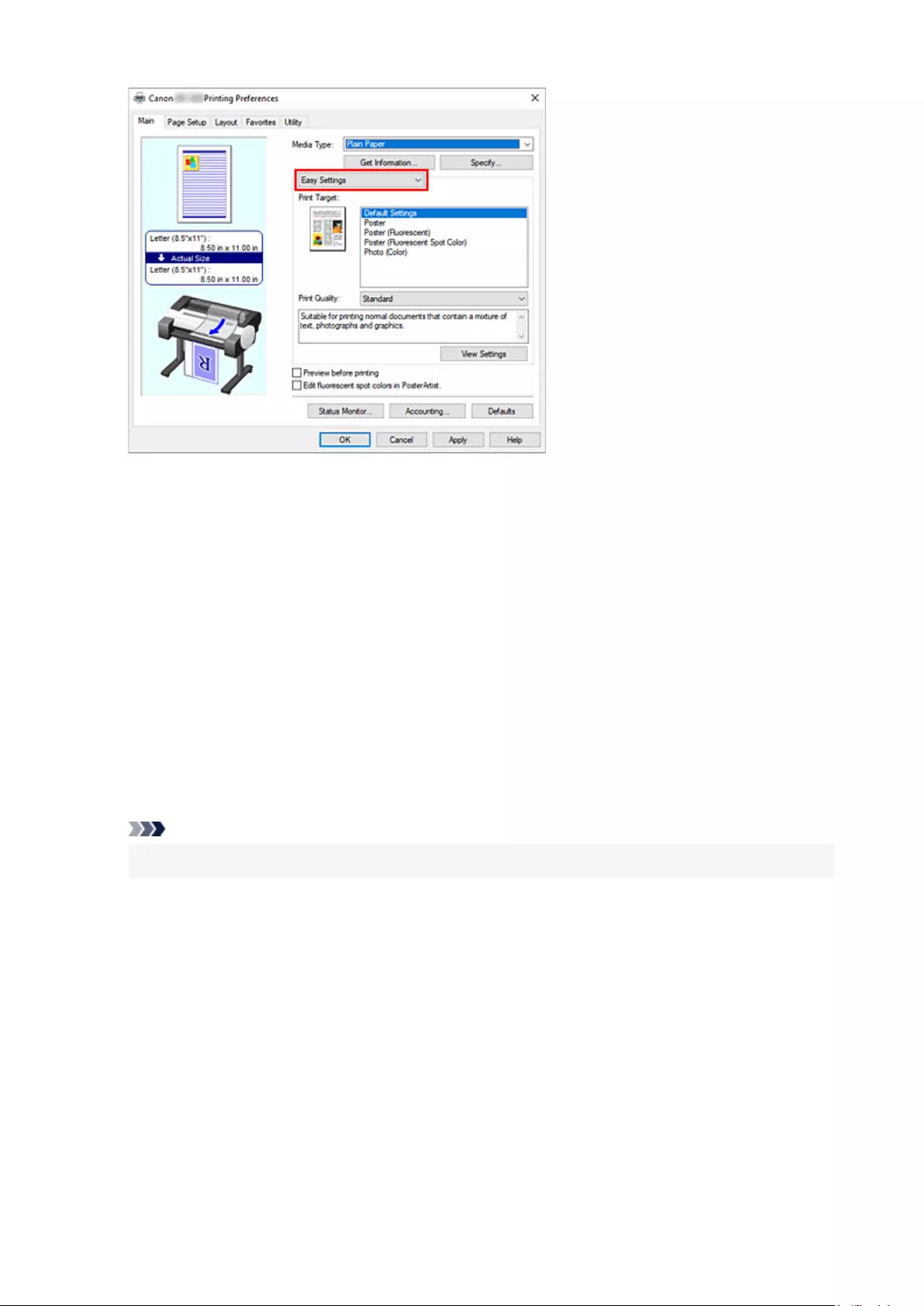
4. Select print purpose
4.
For Print Target, select the setting that matches the document.
Default Settings
Select this when printing general documents such as business documents.
Poster
Select this when printing posters.
Poster (Fluorescent)
Select this when you want to print the entire poster with bright colors.
Poster (Fluorescent Spot Color)
Select this when you want to specify the area of the poster to print with bright colors.
Photo (Color)
Select this when printing color illustrations or photos.
Note
• To check the settings of the items that are set by Print Target, click View Settings.
5. Select the paper size
5.
From the Page Size list on the Page Setup tab, select the same size as that of the document that was
created with the application software.
The current settings are displayed in the settings preview on the left side of the window.
399

6. Select the paper source
6.
For Paper Source, select the setting that matches your purpose.
7. Set the other items7.
Set the other items as necessary.
8. Complete the setup8.
Click OK.
When you print, the document is printed with settings to match the specified print purpose.
400

Edit in PosterArtist and Print
Word processing and spreadsheet software documents and web browser screens, etc. can be edited a print
from PosterArtist.
The following explains the procedure for editing original documents made in multiple application software in
PosterArtist and printing in a poster layout.
1. Open the printer driver setup window
1.
2. Select edit in PosterArtist
2.
Check Page Layout in the Layout tab and select Edit Using PosterArtist from the pull-down menu.
Note
•Edit Using PosterArtist may not be available for use depending on the usage environment.
3. Start up PosterArtist
3.
Click OK.
When printing is executed, PosterArtist starts up and PageCapture window opens.
4. Select page to get in PosterArtist
4.
5. Edit page in PosterArtist
5.
Image editing and sorting is implemented in PosterArtist.
By repeating steps 1 through 4 without closing the PosterArtist window, documents made in multiple
application software can be arranged on one page.
After editing is complete, please print from PosterArtist menu.
401

Note
• For instructions on how to edit and rearrange images, refer to the PosterArtist manual.
402

Adjusting Color Balance
You can adjust the color tints when printing.
Since this function adjusts color balance of the output by changing the ink ratios of each color, it changes
the total color balance of the document. Use the application software when you want to change the color
balance significantly. Use the printer driver only when you want to adjust the color balance slightly.
The following sample shows the case when color balance is used to intensify cyan and to diminish yellow so
that the overall colors are more uniform.
No adjustment Adjust color balance
The procedure for adjusting color balance is as follows:
1. Open the printer driver setup window1.
2. Select the advanced settings2.
Select Advanced Settings from the pull-down menu on the Main tab.
3. Select color mode
3.
For Color Mode, select Color, and then click Color Settings....
The Color Settings dialog box appears.
404

4. Adjust color balance4.
The Color Adjustment tab has individual sliders for Cyan, Magenta, and Yellow. Each color becomes
stronger when the corresponding slider is moved to the right, and becomes weaker when the
corresponding slider is moved to the left. For example, when cyan becomes weaker, the color red
becomes stronger.
You can also directly enter a value linked to the slider. Enter a value in the range from -50 to 50. The
current settings are displayed in the settings preview on the left side of the printer driver.
After adjusting each color, click OK.
5. Complete the setup
5.
Click OK on the Main tab.
When you execute print, the document is printed with the adjusted color balance.
Related Topics
Setting the Print Quality Level (Custom)
Specifying Color Correction
Adjusting Brightness
Adjusting Contrast
405

Setting the Print Quality Level (Custom)
Custom on the Print Quality tab allows you to set detailed print quality levels.
The procedure for setting the print quality level is as follows:
1. Open the printer driver setup window1.
2. Select advanced settings
2.
From the Main tab pull-down menu, select Advanced Settings.
3. Select the print quality
3.
For Print Quality, select Custom.
The Custom dialog box opens.
4. Setting the print quality level
4.
Drag the slider bar to select the print quality level and click OK.
Important
•Certain print quality levels cannot be selected depending on the settings of Media Type.
5. Complete the setup
5.
406
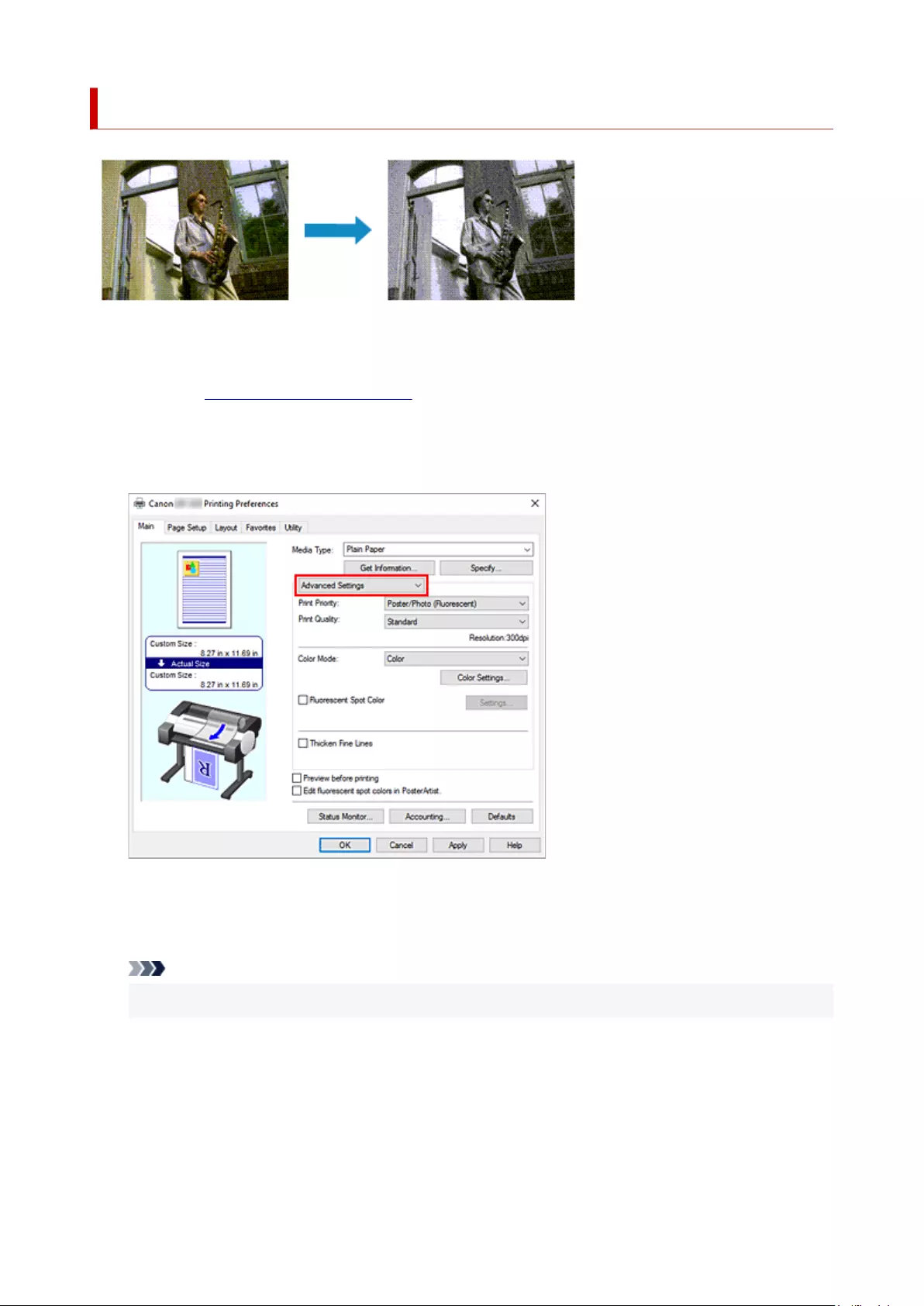
Printing a Color Document in Monochrome
The procedure for printing a color document in monochrome is as follows:
1. Open the printer driver setup window
1.
2. Select advanced settings
2.
From the Main tab pull-down menu, select Advanced Settings.
3. Select color mode
3.
For Color Mode, select Monochrome.
Note
•The selectable Color Mode depends on the media type selected for Media Type on the Main tab.
4. Complete the setup
4.
Click OK.
When you execute print, the document is converted to grayscale data. It allows you to print the color
document in monochrome.
408
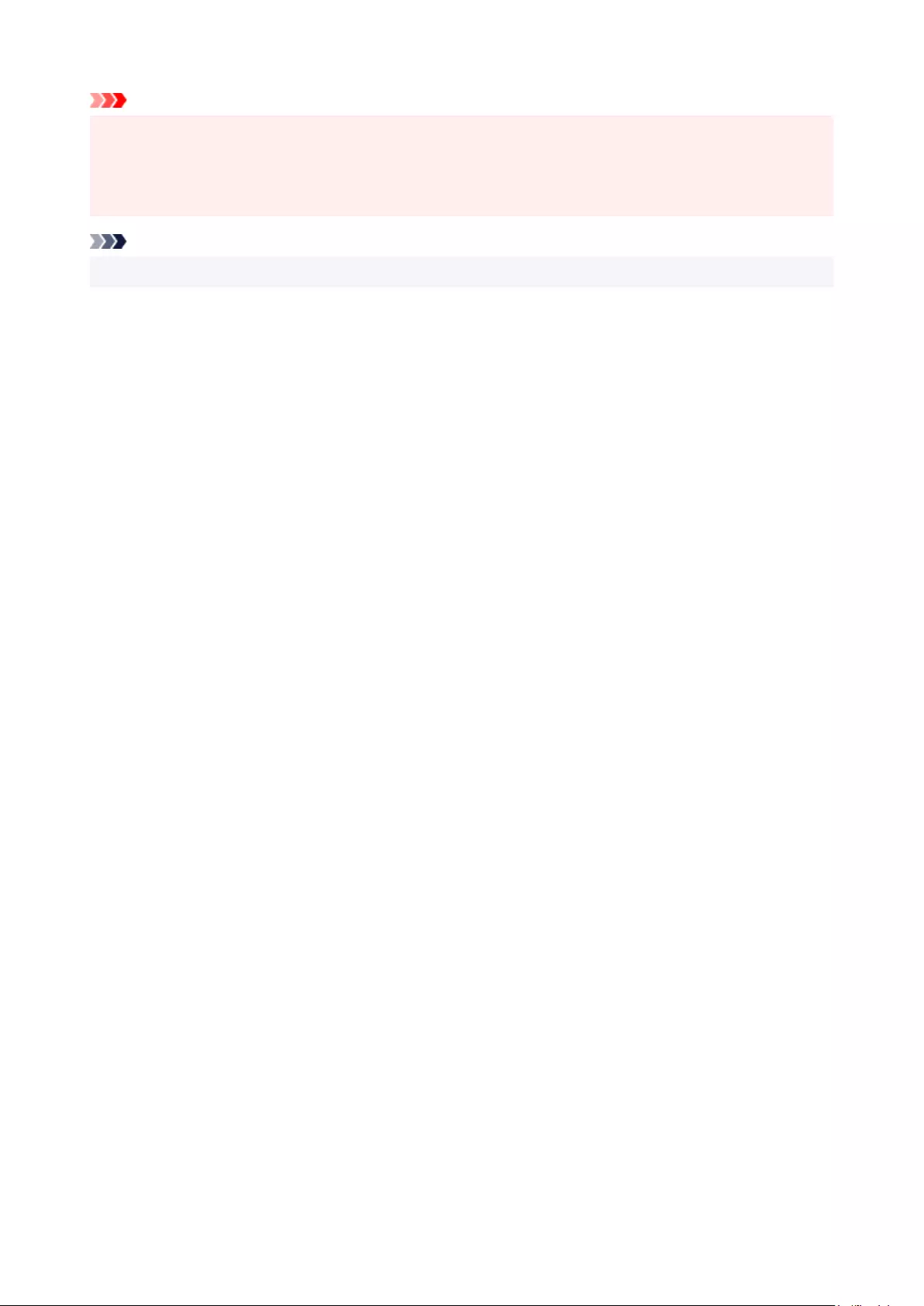
Important
• When Monochrome is selected, the printer driver processes image data as sRGB data. In this case,
actual colors printed may differ from those in the original image data.
When using the grayscale printing function to print Adobe RGB data, convert the data to sRGB data
using an application software.
Note
• When Monochrome is selected, inks other than black ink may also be used.
409

Specifying Color Correction
You can specify the color correction method suited to the type of document to be printed.
Normally, when data is printed, the printer driver automatically adjusts the colors.
When you want to print by using the color space of the image data effectively, select ICM or, ICC Profile
Matching. When you want to use an application software to specify a printing ICC profile, select Off.
The procedure for specifying color correction is as follows:
1. Open the printer driver setup window
1.
2. Select advanced settings
2.
From the Main tab pull-down menu, select Advanced Settings.
3. Select color mode
3.
For Color Mode, select Color, and then click Color Settings....
The Color Settings dialog box appears.
4. Select color correction
4.
Click Matching tab, select Color Correction setting that matches your purpose from the following, and
click OK.
410
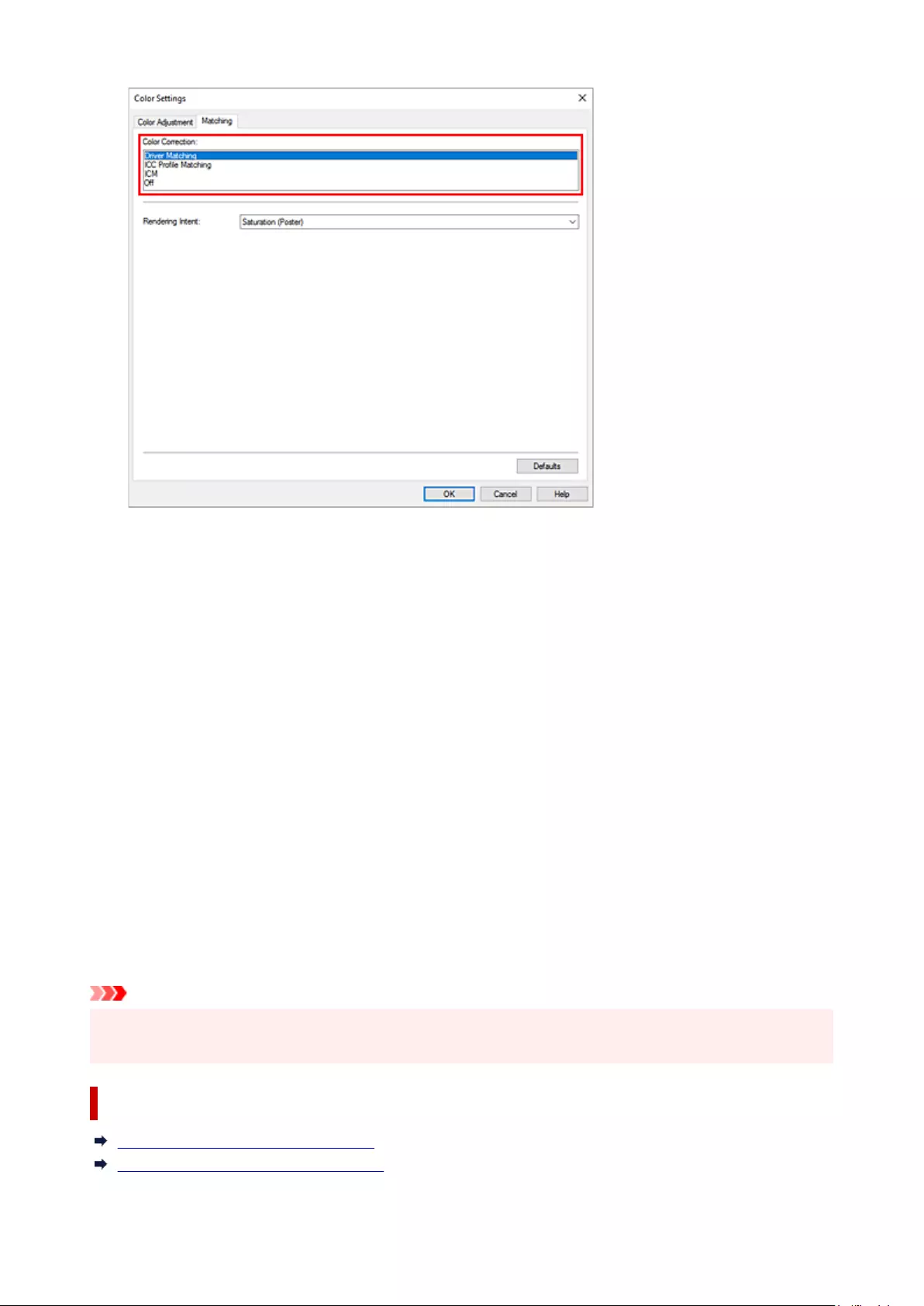
Driver Matching
Print with the optimal color using the printer driver's original color profile. Normally, you should
choose this mode.
ICC Profile Matching
Carry out color matching using the ICC profile. Specify the input profile, printer profile and matching
method in detail, and select when printing. You can use the digital camera or scanner ICC profile, or
the ICC profile created using the profile creation tool.
ICM
Perform color matching on the host computer using the Windows ICM function. Select when printing
from an ICM function-compatible application.
Off
Print without performing color matching on the printer driver. Select this when performing color
matching using applications such as Adobe Photoshop, or printing a color chart using a profile
creation tool.
5. Complete the setup
5.
Click OK on the Main tab.
When you execute print, the document data is printed with the specified color correction.
Important
• When ICM is disabled in the application software, ICM is unavailable for Color Correction and the
printer may not be able to print the image data properly.
Related Topics
Optimal Photo Printing of Image Data
Adjusting Colors with the Printer Driver
411

Optimal Photo Printing of Image Data
When people print images taken with digital cameras, they sometimes feel that the printed color tones differ
from those of actual image or those displayed on the monitor.
To get the print results as close as possible to the desired color tones, you must select a printing method
that is best suited to the application software used or to your purpose.
Color Management
Devices such as digital cameras, scanners, monitors, and printers handle color differently. Color
management (color matching) is a method that manages device-dependent "colors" as a common color
space.
For Windows, a color management system called "ICM" is built into the operating system.
sRGB is one of the common color spaces that is frequently used.
ICC profiles convert device-dependent "colors" into a common color space. By using an ICC profile and
carrying out color management, you can draw out the color space of the image data within the color
reproduction area that the printer can express.
Note
• Normally, image files are saved in JPEG format. Some digital cameras allow you to save images in a
format called RAW. RAW data refers to an image saving format that requires a computer to develop
the image. You can embed an input ICC profile tag into a RAW file by using special application
software.
Selecting a Printing Method Suited to the Image Data
The recommended printing method depends on the color space of the image data or the application
software to be used.
There are two typical printing methods.
Check the color space of the image data and the application software to be used, and then select the
printing method suited to your purpose.
Adjusting Colors with the Printer Driver
This section describes the procedure for printing data by using the color correction function of the
printer driver.
Select this function when you want to print impressions that are close to those displayed on the
monitor, for example, if you corrected the colors while checking the print image on the monitor.
Printing with ICC Profiles
Describes the procedure for printing by using the color space of the image data effectively.
You can print with a common color space by setting up the application software and the printer driver
so that the color management matches the input ICC profile of the image data.
The method for setting up the printer driver differs depending on the application software to be used.
413

Adjusting Colors with the Printer Driver
To use printer driver matching when printing, turn on the printer driver's color correction function. Printer
driver matching accurately applies the characteristics of data displayed on the monitor and allows you to
obtain print results of impressions that are close to those displayed on the monitor.
Important
• When printing using printer driver matching, Canon recommends that you set the monitor and the
environment light as follows:
Monitor
Color temperature: D50 (5000K)
Brightness: 100 to 120cd/m2
Gamma: 2.2
Environment light
Fluorescent light for D50 color evaluation (color temperature 5000K, high color rendering
properties)
Brightness when looking at printed materials: 500 lx ± 125 lx
Note
• When printing from an application software that can identify ICC profiles and allows you to specify them,
use a printing ICC profile in the application software, and select settings for color management.
The procedure for adjusting colors with the printer driver is as follows:
1. Open the printer driver setup window1.
2. Select advanced settings2.
From the Main tab pull-down menu, select Advanced Settings.
414

3. Select color mode3.
For Color Mode, select Color, and then click Color Settings....
The Color Settings dialog box appears.
4. Select color correction
4.
Click Matching tab, and select Driver Matching for Color Correction.
5. Select the rendering intent
5.
Select the coloring adjustment method in Rendering Intent.
Perceptual (Photo)
Reproduces colors of general photos naturally and features smooth gradation. In addition, selecting
this setting allows you to adjust colors easily using an application software.
Saturation (Poster)
Reproduces vivid colors on data such as a poster.
6. Set the other items
6.
If necessary, click Color Adjustment tab, and adjust the color balance (Cyan, Magenta, Yellow) and
adjust Brightness, and Contrast settings, and then click OK.
7. Complete the setup
7.
Click OK on the Main tab.
When you print, the colors get adjusted by the printer driver when printing the data.
Related Topics
Setting the Print Quality Level (Custom)
415

Printing with ICC Profiles
When the image data has a specified input ICC profile, you can print by using the color space of the data
effectively.
The printer driver setting procedure varies depending on the application software used to print.
Specify an ICC Profile from the Application Software and Print the Data
When you print the editing and touch-up results of Adobe Photoshop, Canon Digital Photo Professional,
or any application software that allows you to specify input and printing ICC profiles, you print by
effectively using the color space of the input ICC profile specified in the image data.
To use this printing method, use your application software to select color management items and specify
an input ICC profile and a printing ICC profile in the image data.
Even if you print using a printing ICC profile that you created yourself, be sure to select color management
items from your application software.
For instructions, refer to the manual of the application software you are using.
1. Open the printer driver setup window
1.
2. Select advanced settings2.
From the Main tab pull-down menu, select Advanced Settings.
3. Select color mode
3.
For Color Mode, select Color, and then click Color Settings....
The Color Settings dialog box appears.
4. Select color correction
4.
Click Matching tab, and select Off for Color Correction.
417

5. Set the other items
5.
If necessary, click Color Adjustment tab, and adjust the color balance (Cyan, Magenta, Yellow) and
adjust Brightness, and Contrast settings, and then click OK.
6. Complete the setup
6.
Click OK on the Main tab.
When you execute print, the printer uses the color space of the image data.
Specify an ICC Profile with the Printer Driver, and then Print
When you print from application software that cannot identity input ICC profiles or does not allow you to
specify one, the data color space is printed as sRGB.
1. Open the printer driver setup window
1.
2. Select advanced settings
2.
From the Main tab pull-down menu, select Advanced Settings.
418

3. Select color mode
3.
For Color Mode, select Color, and then click Color Settings....
The Color Settings dialog box appears.
4. Select color correction
4.
Click Matching tab, and select ICC Profile Matching for Color Correction.
5. Select input profile
5.
Select the Input Profile you want to use.
419

Important
• When the application software specifies an input profile, the input profile setting of the printer
driver becomes invalid.
6. Select the printer profile6.
Select Printer Profile as follows:
•To set the printer profile automatically:
•
Select Auto Settings.
• To set the printer profile manually:
•
Select a printer profile that matches the media type to be used.
7. Select the rendering intent
7.
Select the coloring adjustment method in Rendering Intent.
Perceptual
Reproduces colors of general photos naturally and features smooth gradation. In addition,
selecting this setting allows you to adjust colors easily using an application software.
Important
• When you select Perceptual to print images, Canon recommends that you set the monitor
and the environment light as follows:
Monitor
Color temperature: D50 (5000K)
Brightness: 100 to 120cd/m2
Gamma: 2.2
Environment light
Fluorescent light for D50 color evaluation (color temperature 5000K, high color rendering
properties)
Brightness when looking at printed materials: 500 lx ± 125 lx
Saturation
Reproduces vivid colors on data such as a poster.
Relative Colorimetric
When image data is converted to the color space of the printer, this method converts the image
data so the color reproduction approximates the shared color regions. Select this method to print
image data with colors that are close to the original colors.
Absolute Colorimetric
When Relative Colorimetric is selected, white spots are reproduced as white spots of the paper
(background color). However, when Absolute Colorimetric is selected, how the white spots are
reproduced depends on the image data.
Important
•Depending on the media type, you may obtain the same print results even when you change
the Rendering Intent setting.
8. Set the other items
8.
420

If necessary, click Color Adjustment tab, and adjust the color balance (Cyan, Magenta, Yellow) and
adjust Brightness, and Contrast settings, and then click OK.
9. Complete the setup9.
Click OK on the Main tab.
When you execute print, the printer uses the color space of the image data.
Related Topics
Setting the Print Quality Level (Custom)
Specifying Color Correction
Adjusting Color Balance
Adjusting Brightness
Adjusting Contrast
421
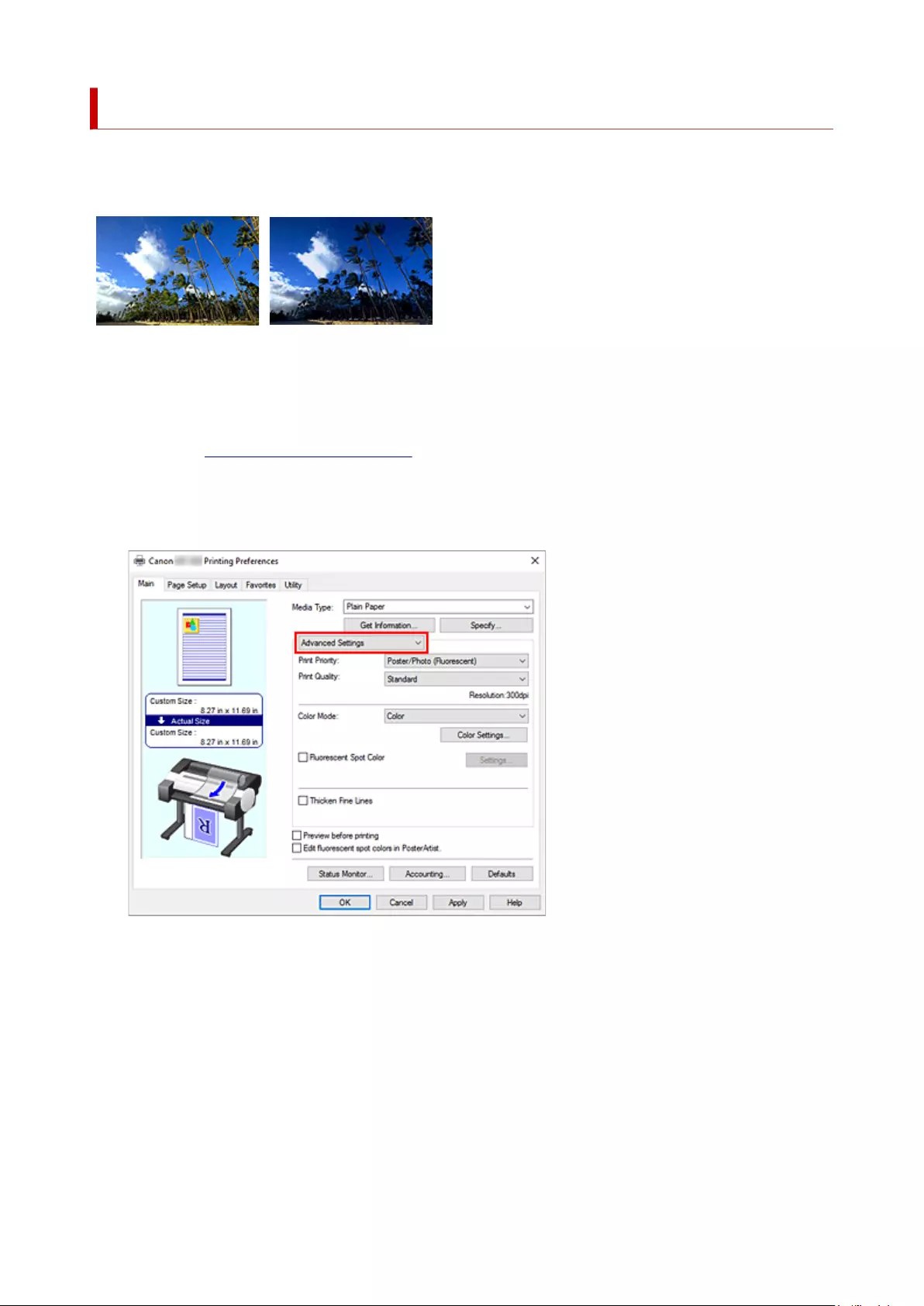
Adjusting Brightness
You can brighten or darken the colors of the overall image data during printing.
The following sample shows the case when light colors are darkened when the image data is printed.
No adjustment Darken light colors
The procedure for adjusting brightness is as follows:
1. Open the printer driver setup window
1.
2. Select advanced settings
2.
From the Main tab pull-down menu, select Advanced Settings.
3. Select color mode
3.
For Color Mode, select Color, and then click Color Settings....
The Color Settings dialog box appears.
4. Adjust brightness
4.
On the Color Adjustment tab, moving the Brightness slider to the right brightens (dilutes) the colors,
and moving the slider to the left darkens (intensifies) the colors.
You can also directly enter a value linked to the slider. Enter a value in the range from -50 to 50. The
current settings are displayed in the settings preview on the left side of the printer driver.
422

Adjusting Contrast
You can adjust the image contrast during printing.
To make the differences between the light and dark portions of images greater and more distinct, increase
the contrast. On the other hand, to make the differences between the light and dark portions of images
smaller and less distinct, reduce the contrast.
No adjustment Adjust the contrast
The procedure for adjusting contrast is as follows:
1. Open the printer driver setup window1.
2. Select advanced settings2.
From the Main tab pull-down menu, select Advanced Settings.
3. Select color mode
3.
For Color Mode, select Color, and then click Color Settings....
The Color Settings dialog box appears.
4. Adjust the contrast
4.
On the Color Adjustment tab, moving the Contrast slider to the right increases the contrast, and
moving the slider to the left decreases the contrast.
424

You can also directly enter a value linked to the slider. Enter a value in the range from -50 to 50. The
current settings are displayed in the settings preview on the left side of the printer driver.
After adjusting each color, click OK.
5. Complete the setup5.
Click OK on the Main tab.
When you execute print, the image is printed with the adjusted contrast.
Related Topics
Setting the Print Quality Level (Custom)
Specifying Color Correction
Adjusting Color Balance
Adjusting Brightness
425

Printing Using Detailed Setting Mode
You can print by using your own settings instead of the pre-registered Print Target settings.
The procedure for using the detailed setting mode and printing is as follows:
1. Open the printer driver setup window1.
2. Select the media type
2.
Select the type of paper loaded in the printer from the Media Type list on the Main tab.
3. Select advanced settings
3.
From the Main tab pull-down menu, select Advanced Settings.
426

4. Set print conditions4.
Set the following items as necessary.
Print Priority
Select elements to prioritize for print results.
If you select Poster/Photo (Fluorescent), posters and other material will be printed with bright
colors.
Print Quality
Selects your desired printing quality.
Select one of the following to set the print quality level that is appropriate for the purpose.
Fluorescent Spot Color
Check this check box if you want to print with fluorescent ink.
Color Mode
Selects color adjustment method.
Thicken Fine Lines
To make thin lines thicker and easier to see when printing, add a checkmark.
5. Select the paper size5.
From the Page Size list on the Page Setup tab, select the same size as that of the document that was
created with the application software.
The current settings are displayed in the settings preview on the left side of the window.
6. Select the paper source
6.
For Paper Source, select the setting that matches your purpose.
7. Set the other items
7.
Set the other items as necessary.
427

Scaled Printing
The procedure for printing a document with pages enlarged or reduced is as follows:
1. Open the printer driver setup window1.
2. Select the paper size of the document
2.
Using Page Size on the Page Setup tab, select the page size that is set with your application software.
3. Select the paper source
3.
For Paper Source, select the setting that matches your purpose.
4. Select roll paper width
4.
If you selected a roll paper for Paper Source, set Roll Paper Width to the width of the roll paper loaded
in the printer.
5. Select scaled printing5.
Check the Enlarged/Reduced Printing check box.
6. Set one of scaling methods described below
6.
From the items listed below, select the setting that matches your purpose and select the corresponding
check box.
The current settings are displayed in the settings preview on the left side of the window.
•Fit Paper Size
•
429

Scales the document to match the paper size.
•Fit Roll Paper Width
•
Scales the document to match the roll paper width.
•Scaling
•
Allows you to specify the scaling by entering a number directly or by selecting the paper size you
want from the Printer Paper Size list.
The document is reduced when a size smaller than the Page Size setting is selected from the
Printer Paper Size list, and enlarged when a size larger is selected.
7. Complete the setup
7.
Click OK.
When you execute print, the document will be printed with the specified scale.
Important
• When the application software which you used to create the original has the scaled printing function,
configure the settings on your application software. You do not need to configure the same setting in
the printer driver.
430

Note
• Selecting Enlarged/Reduced Printing changes the printable area of the document.
431
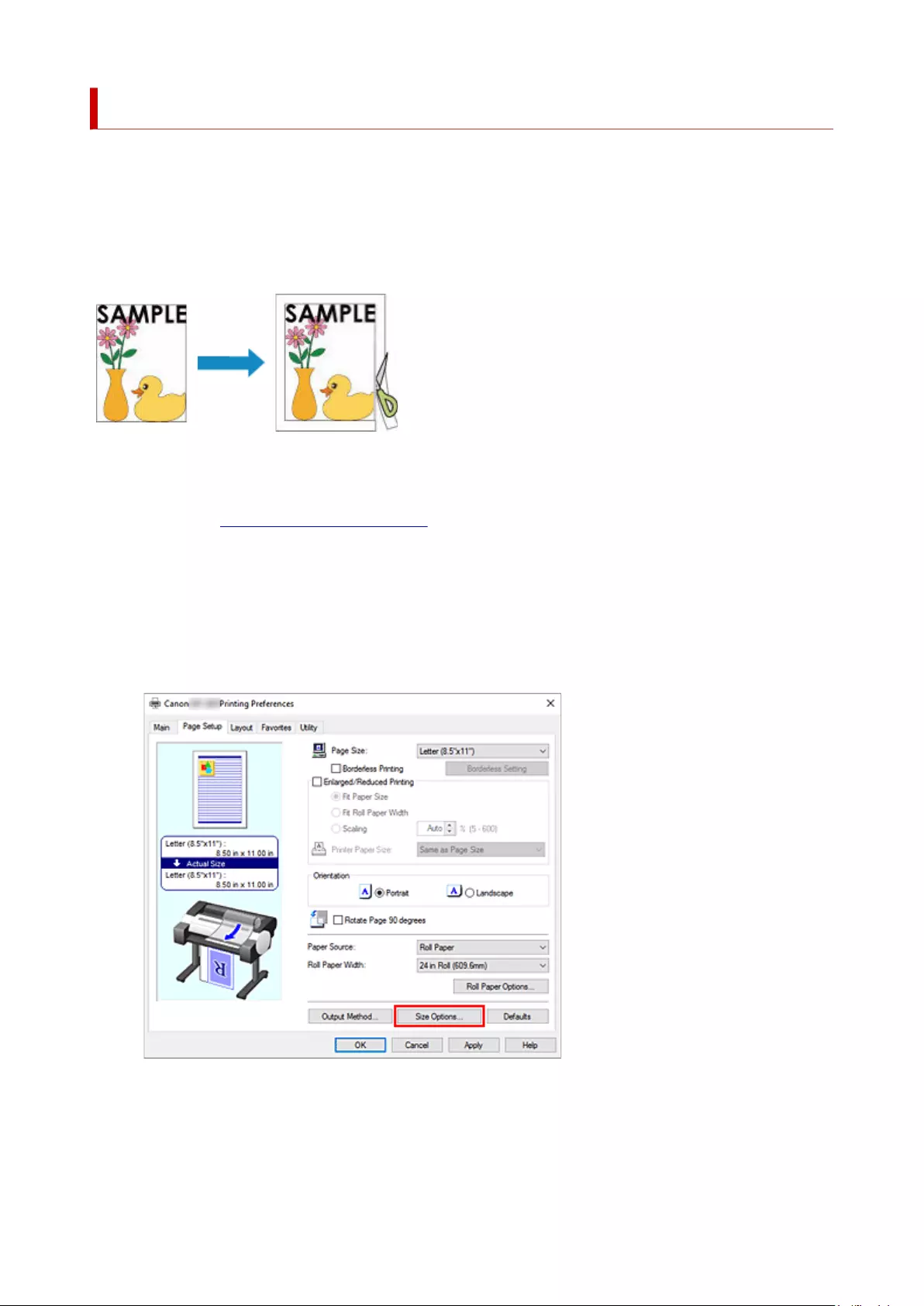
Printing to Oversized Paper Sizes
When printing a created document so that it fills the entire paper width, select a paper size from the
Oversize list (sizes resulting from adding margins necessary for printer operation to the document sizes) so
that all areas of the document are printed at their actual size.
A printout that has the same area as the document can be obtained by trimming the outer margins after
printing.
The procedure for printing with oversize is as follows:
1. Open the printer driver setup window1.
2. Select the paper size2.
From the Page Size list on the Page Setup tab, select the same size as that of the document that was
created with the application software.
3. Click Size Options...3.
The Paper Size Options dialog box opens.
4. Select oversize
4.
Select the Oversize check box, and click OK.
432
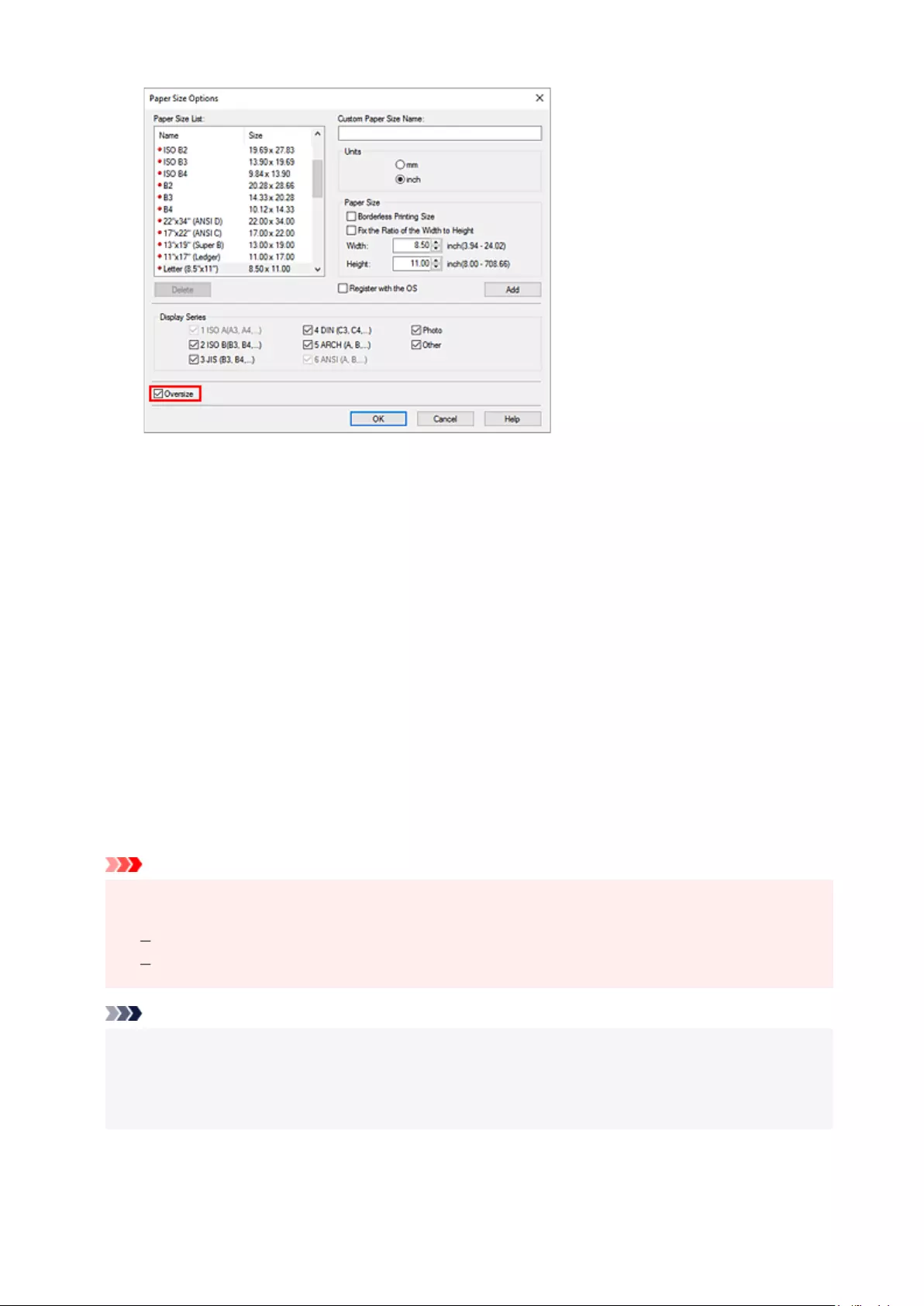
The current settings are displayed in the settings preview on the left side of the Page Setup tab.
5. Select the paper source5.
For Paper Source, select the setting that matches your purpose.
6. Select roll paper width
6.
If you selected a roll paper for Paper Source, set Roll Paper Width to the width of the roll paper
loaded in the printer.
7. Set the other items7.
Set the other items as necessary.
8. Complete the setup8.
Click OK.
When you print, the document is printed using oversize.
Important
• When printing to oversized paper sizes, use paper that has the following necessary margins added to
the document size.
Cut sheet: 6 mm or more added to width and 23 mm or more added to height of document size
Roll paper: 6 mm or more added to width and 6 mm or more added to height of document size
Note
• An oversized paper size cannot be used for the largest paper size that can be loaded in the printer.
• To set an oversized paper size for a non-standard paper size, register the paper size in the Paper
Size Options dialog box. An oversized paper size cannot be set for paper sizes that were set in the
Custom Size Settings dialog box.
433
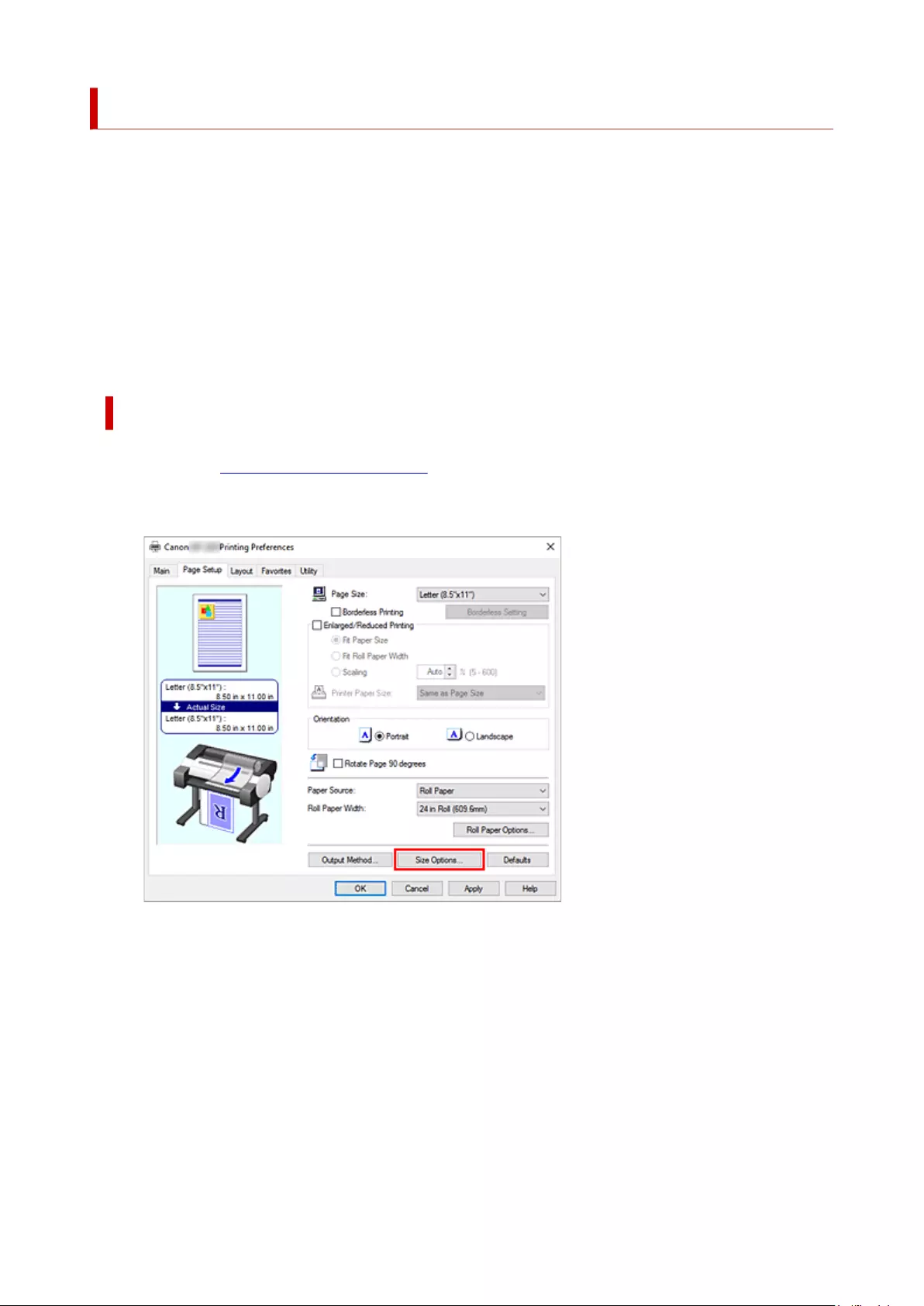
Setting Paper Dimensions (Custom Size)
You can specify the height and width of paper when its size cannot be selected from the Page Size. Such a
paper size is called "custom size."
There are two ways of setting a user-defined paper, setting the paper from Size Options... on the Page
Setup tab and setting the paper from Custom Size of Page Size.
If you will be using a user-defined paper repeatedly, setting it from Size Options... is convenient because it
becomes registered to Page Size and can be selected any time after that.
If you want to use a user-defined paper temporarily, setting it from Custom Size is suitable.
The procedure for specifying a custom size is as follows:
Setting from Paper Size Options
1. Open the printer driver setup window
1.
2. Click Size Options... on the Page Setup tab
2.
The Paper Size Options dialog box opens.
3. Set user-defined paper
3.
Set Custom Paper Size Name, Units, and Size, and then click Add.
For Size, specify an size or select the paper size to be used from Paper Size List.
To narrow down the paper sizes displayed in Paper Size List, select the Display Series check box.
434

Note
• By selecting the Borderless Printing Size check box for Paper Size, you can select a size
from the paper sizes that support Borderless Printing. By selecting the Fix the Ratio of the
Width to Height check box, you can change the size while keeping the Width and Height ratio.
4. Set user-defined paper4.
Click OK, then it returns to Page Setup tab.
The paper size registered by using Custom Paper Size Name is registered to Custom Paper Size of
Page Size and can be selected at any time.
Setting from Custom Size
1. Open the printer driver setup window
1.
2. Select the paper size2.
For Page Size on the Page Setup tab, select Custom Size from the Custom Paper Size list.
435

The Custom Size Settings dialog box opens.
3. Set the custom paper size3.
Enter the Width and Height values of the paper to be used, specify the Units, and then click OK.
4. Complete the setup
4.
Click OK on the Page Setup tab.
When you execute print, the data is printed with the specified paper size.
Important
•If the application software that created the document has a function for specifying height and width
values, use the application software to set the values. If the application software does not have such a
function or if the document does not print correctly, perform the above procedure from the printer driver
to set the values.
•Printing may be disabled depending on the size of the specified user-defined media.
For information about printable sizes for user-defined media, see "Paper Sizes."
•Any paper size that was set by using Custom Size can no longer be used after the application software
is closed.
436

Note
• If the paper settings in the printer driver differ from the paper information registered on the printer, an
error message may appear on the printer's operation panel. You can still print but you may not be able
to obtain correct print results.
• The maximum configurable size with Custom Size is 3.2m.
437
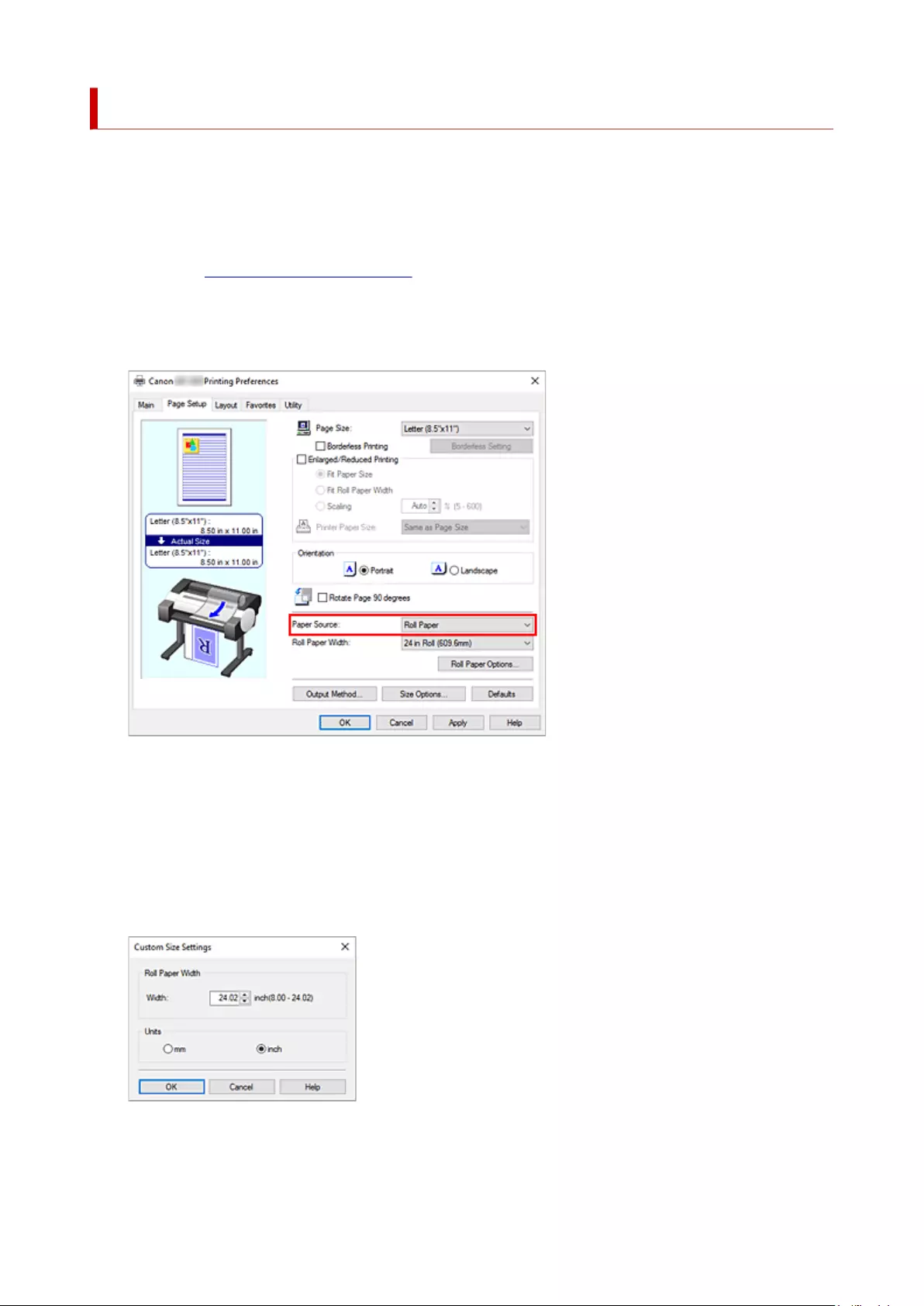
Set a Custom Size Roll Width
By specifying the roll paper width with a value, you can use roll paper with a width that cannot be selected in
Roll Paper Width.
The procedure for setting custom size roll width is described below.
1. Open the printer driver setup window1.
2. Select the paper source
2.
From the Paper Source list on the Page Setup tab, select Roll Paper.
3. Select paper roll width
3.
In Roll Paper Width, select User-defined1 (XXXX) / User-defined2 (XXXX).
The Custom Size Settings dialog box opens.
4. Set paper roll width
4.
Specify Units, enter the roll width you want to use, and then click OK.
438

Note
• If the value you entered is the same as the other roll widths, a message will be displayed, and the
other roll paper sizes will be set.
5. Complete the setup5.
Click OK on the Page Setup tab.
If you perform the print, the roll paper with the specified width will be used for printing with each setting
applied.
Note
• If the paper settings in the printer driver differ from the paper information registered on the printer, an
error message may appear on the printer's operation panel. You can execute Print, but you may not
obtain the correct printing result.
• If you select a paper feed method for the custom size roll paper in Get Information... in the Main tab,
Roll Paper Width is set to Custom Size (XXXX).
However, if the same custom size is already set in User-defined1 (XXXX) or User-defined2 (XXXX),
it will not be set to Custom Size (XXXX), and User-defined1 (XXXX) or User-defined2 (XXXX) will be
selected instead.
439

Printing without Margins to Match Paper Size
The procedure for borderless printing by enlarging or reducing documents to match paper size is described
below.
1. In the printer driver, open the settings screen1.
2. Select the paper source2.
From the Paper Source list on the Page Setup tab, select Roll Paper.
3. Select paper roll width
3.
For paper roll width, enter the same value set in the printer under Roll Paper Width.
4. Select borderless printing4.
Place a checkmark next to the Borderless Printing option.
441
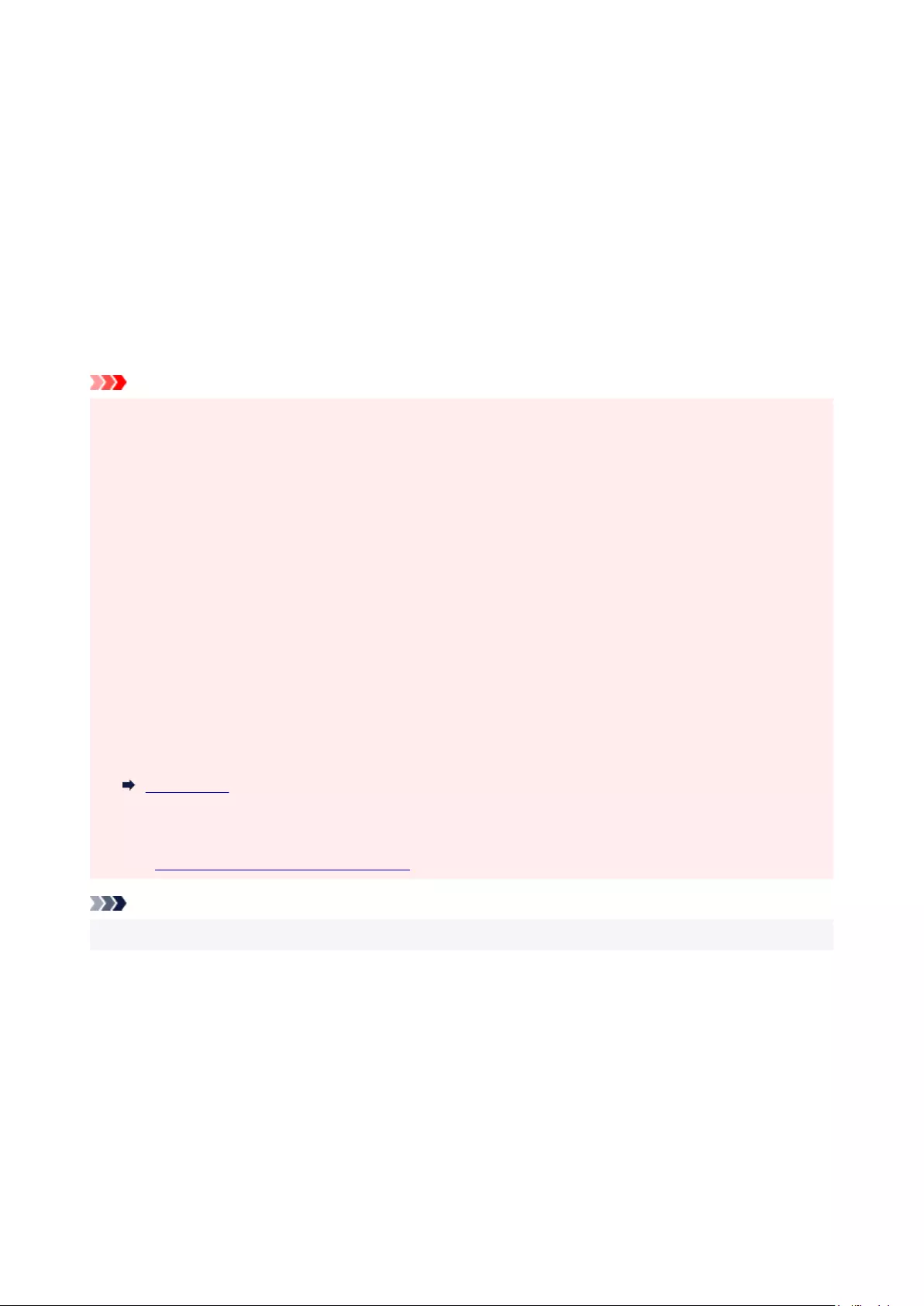
After the Information dialog is displayed, under Roll Paper Width, select the same paper width as that
of the paper roll loaded in the printer and click OK.
5. Select a method for printing borderless5.
Select Fit Paper Size in Borderless Printing Method.
If the size of the document is different from the size of the paper you want to print on, select the paper
size you want to print on from Printer Paper Size.
6. Complete the setting process
6.
Click OK.
If you print now, the document will be printed without margins to fit the paper size.
Important
• If you place a checkmark next to the Borderless Printing option, the Page Layout and Print Centered
options in the Layout tab will be displayed in gray out and you will not be able to configure them.
• Depending on paper size, the length/width ratio of the paper may be different from that of the image,
making it impossible for the whole image to fit on the paper.
When this happens, crop the image with the application software to match paper size.
• When printing borderless, printing may stop abruptly and the paper will be cut causing a slight color
unevenness on the edges of the paper. If you require exceptionally high quality, in the Roll Paper
Options dialog box select No from the Automatic Cutting list. When you do so, the document will be
printed without the left and right margins. After the printed material has exited the printer and has been
cut, cut the upper and lower edges with a pair of scissors.
• When printing borderless on paper with low ink-fixing properties, depending on frequency of use, the
cutter unit may come into contact with the paper surface scratching it and causing the paper to be
unevenly cut.
You may be able to improve the situation by clicking Specify... on the Main tab and, in the Paper
Detailed Settings dialog box, under Drying Time, set Between Pages to a higher value.
• The following roll paper supports borderless printing.
Paper Sizes
• If margins are formed on the left and right of the document, adjust the amount extending off paper
during borderless printing from the printer's operation panel.
See "Borders appear in borderless printing" for details on how to set the amount extending off paper.
Note
• When using applications like Microsoft Word which allow you to set margins, set margins to 0 mm.
442

Printing without Margins to Match Roll Paper Width
Procedure for printing borderless by enlarging/reducing documents to match roll paper width.
1. In the printer driver, open the settings screen
1.
2. Select the paper source2.
From the Paper Source list on the Page Setup tab, select Roll Paper.
3. Select paper roll width
3.
For paper roll width, enter the same value set in the printer under Roll Paper Width.
4. Select borderless printing4.
Place a checkmark next to the Borderless Printing option.
After the Information dialog is displayed, under Roll Paper Width, select the same paper width as that
of the paper roll loaded in the printer and click OK.
443

5. Select a method for printing borderless5.
Select Scale to fit Roll Paper Width in Borderless Printing Method.
6. Complete the setting process6.
Click OK.
Job will print to the entire roll width without a white border.
Important
•If you place a checkmark next to the Borderless Printing option, the Page Layout and Print Centered
options in the Layout tab will be displayed in gray out and you will not be able to configure them.
•Depending on paper size, the length/width ratio of the paper may be different from that of the image,
making it impossible for the whole image to fit on the paper.
When this happens, crop the image with the application software to match paper size.
•When printing borderless, printing may stop abruptly and the paper will be cut causing a slight color
unevenness on the edges of the paper. If you require exceptionally high quality, in the Roll Paper
Options dialog box select No from the Automatic Cutting list. When you do so, the document will be
printed without the left and right margins. After the printed material has exited the printer and has been
cut, cut the upper and lower edges with a pair of scissors.
•When printing borderless on paper with low ink-fixing properties, depending on frequency of use, the
cutter unit may come into contact with the paper surface scratching it and causing the paper to be
unevenly cut.
You may be able to improve the situation by clicking Specify... on the Main tab and, in the Paper
Detailed Settings dialog box, under Drying Time, set Between Pages to a higher value.
•The following roll paper supports borderless printing.
Paper Sizes
•If margins are formed on the left and right of the document, adjust the amount extending off paper
during borderless printing from the printer's operation panel.
See "Borders appear in borderless printing" for details on how to set the amount extending off paper.
Note
•When using applications like Microsoft Word which allow you to set margins, set margins to 0 mm.
444

Printing Full-Size without Margins
Procedure for printing borderless images in the same size as the original document without enlarging/
reducing them.
1. In the printer driver, open the settings screen
1.
2. Select the paper source
2.
From the Paper Source list on the Page Setup tab, select Roll Paper.
3. Select paper roll width
3.
For paper roll width, enter the same value set in the printer under Roll Paper Width.
4. Select borderless printing4.
Place a checkmark next to the Borderless Printing option.
After the Information dialog is displayed, under Roll Paper Width, select the same paper width as that
of the paper roll loaded in the printer and click OK.
5. Select a method for printing borderless
5.
445

Select Print Image with Actual Size in Borderless Printing Method.
6. Complete the setting process6.
Click OK.
If you print, the document is printed in the original size without white borders.
Important
•If Amount of Extension is set to the second from the right, create the source document with a
size 2mm larger on each of the top, bottom, left and right sides than the size of the paper you wish
to print.
Important
• If you place a checkmark next to the Borderless Printing option, the Page Layout and Print Centered
options in the Layout tab will be displayed in gray out and you will not be able to configure them.
• Depending on paper size, the length/width ratio of the paper may be different from that of the image,
making it impossible for the whole image to fit on the paper.
When this happens, crop the image with the application software to match paper size.
• When printing borderless, printing may stop abruptly and the paper will be cut causing a slight color
unevenness on the edges of the paper. If you require exceptionally high quality, in the Roll Paper
Options dialog box select No from the Automatic Cutting list. When you do so, the document will be
printed without the left and right margins. After the printed material has exited the printer and has been
cut, cut the upper and lower edges with a pair of scissors.
• When printing borderless on paper with low ink-fixing properties, depending on frequency of use, the
cutter unit may come into contact with the paper surface scratching it and causing the paper to be
unevenly cut.
You may be able to improve the situation by clicking Specify... on the Main tab and, in the Paper
Detailed Settings dialog box, under Drying Time, set Between Pages to a higher value.
• The following roll paper supports borderless printing.
Paper Sizes
• If margins are formed on the left and right of the document, adjust the amount extending off paper
during borderless printing from the printer's operation panel.
See "Borders appear in borderless printing" for details on how to set the amount extending off paper.
Note
• When using applications like Microsoft Word which allow you to set margins, set margins to 0 mm.
446
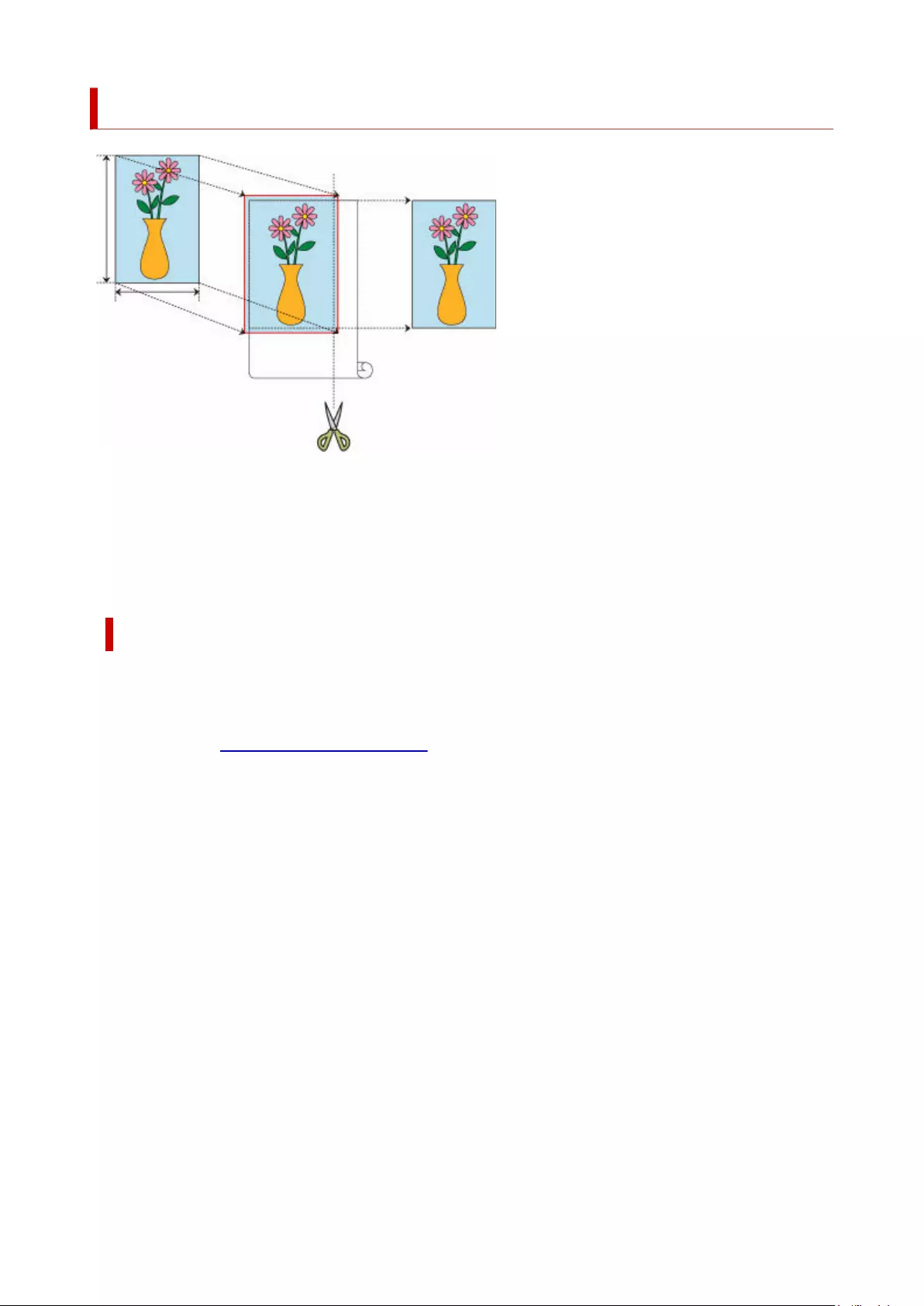
Three-sided Borderless Printing on Roll Paper
In normal borderless printing, paper sizes that match the width of the roll paper are combined to print without
borders on all four sides.
If you use the three-sided borderless printing feature, you can combine paper sizes that don't match the
roll paper width, and print with no borders on three sides. However, if you perform three-sided borderless
printing, you need to cut the right side of the paper after printing.
Three-sided Borderless Printing to Match Paper Size
The procedure for three-sided borderless printing by enlarging or reducing documents to match paper size
is described below.
1. Open the printer driver setup window
1.
2. Select the paper source2.
From the Paper Source list on the Page Setup tab, select Roll Paper.
3. Select paper roll width3.
For paper roll width, enter the same value set in the printer under Roll Paper Width.
4. Select borderless printing
4.
In the Page Setup tab, place a checkmark next to the Borderless Printing option.
447
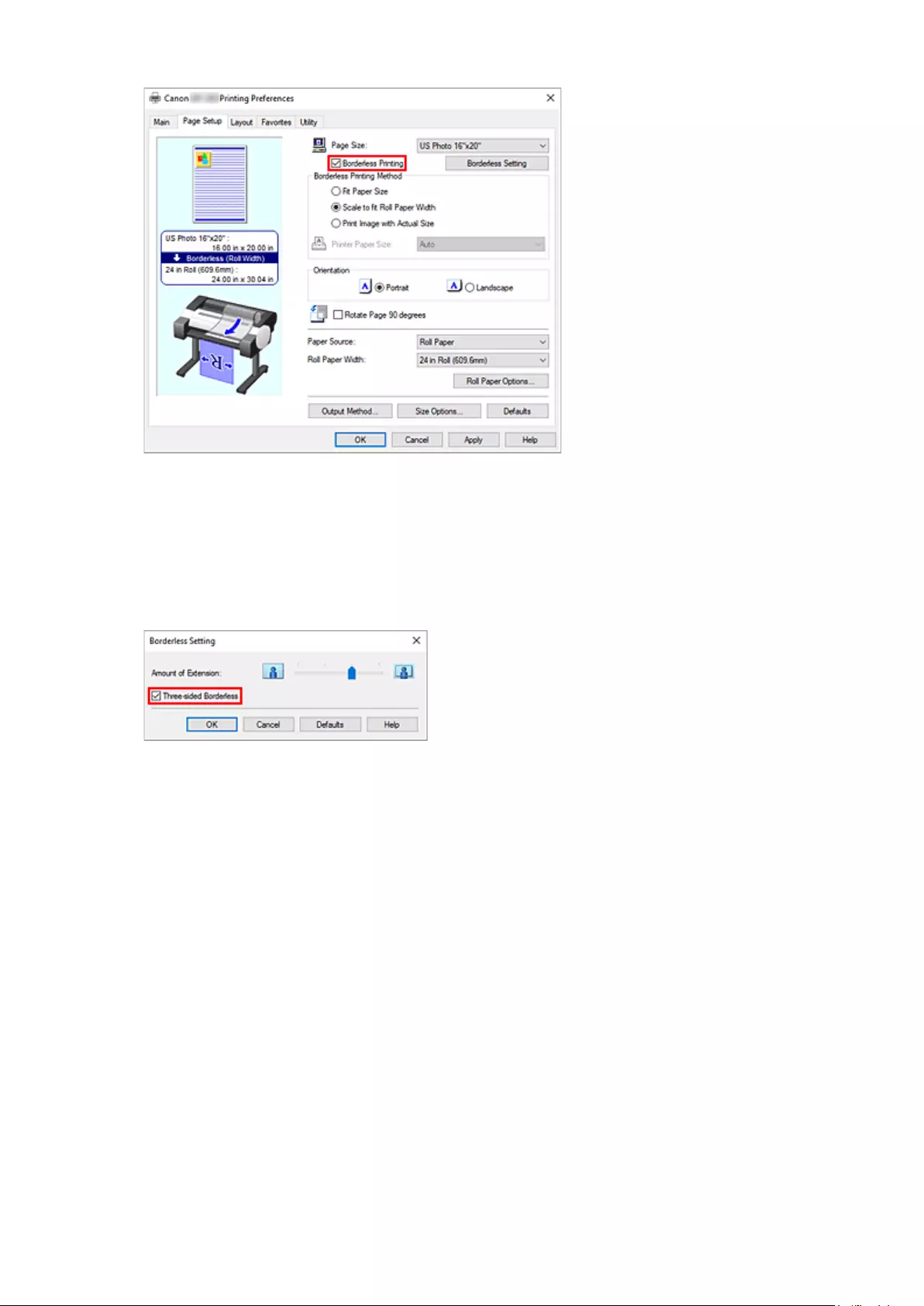
After the Information dialog is displayed, under Roll Paper Width, select the same paper width as
that of the paper roll loaded in the printer and click OK.
5. Click Borderless Setting5.
When the Borderless Setting dialog box is displayed, place a checkmark next to Three-sided
Borderless, and then click OK.
6. Select a method for printing borderless6.
In the Borderless Printing Method tab, place a checkmark next to the Fit Paper Size option.
If the size of the document is different from the size of the paper you want to print on, select the paper
size you want to print on from Printer Paper Size.
7. Complete the setting process
7.
Click OK.
If you print now, the document will be printed without margins on three sides to fit the paper size.
8. Cut the right side of the paper
8.
Cut the margin on the right side of the paper with scissors after printing. Cut slightly to the inside of the
margin as the document is enlarged to extend slightly beyond the specified size.
To get the document to standard size, it is recommended to take measurements and cut in the correct
positions.
448

Printing Full-Size without Margins on Three Sides
The procedure for three-sided borderless printing in the same size as the original document without
enlarging or reducing the size is described below.
1. Open the printer driver setup window
1.
2. Select the paper source
2.
From the Paper Source list on the Page Setup tab, select Roll Paper.
3. Select paper roll width3.
For paper roll width, enter the same value set in the printer under Roll Paper Width.
4. Select borderless printing4.
In the Page Setup tab, place a checkmark next to the Borderless Printing option.
After the Information dialog is displayed, under Roll Paper Width, select the same paper width as
that of the paper roll loaded in the printer and click OK.
5. Click Borderless Setting
5.
When the Borderless Setting dialog box is displayed, place a checkmark next to Three-sided
Borderless, and then click OK.
449
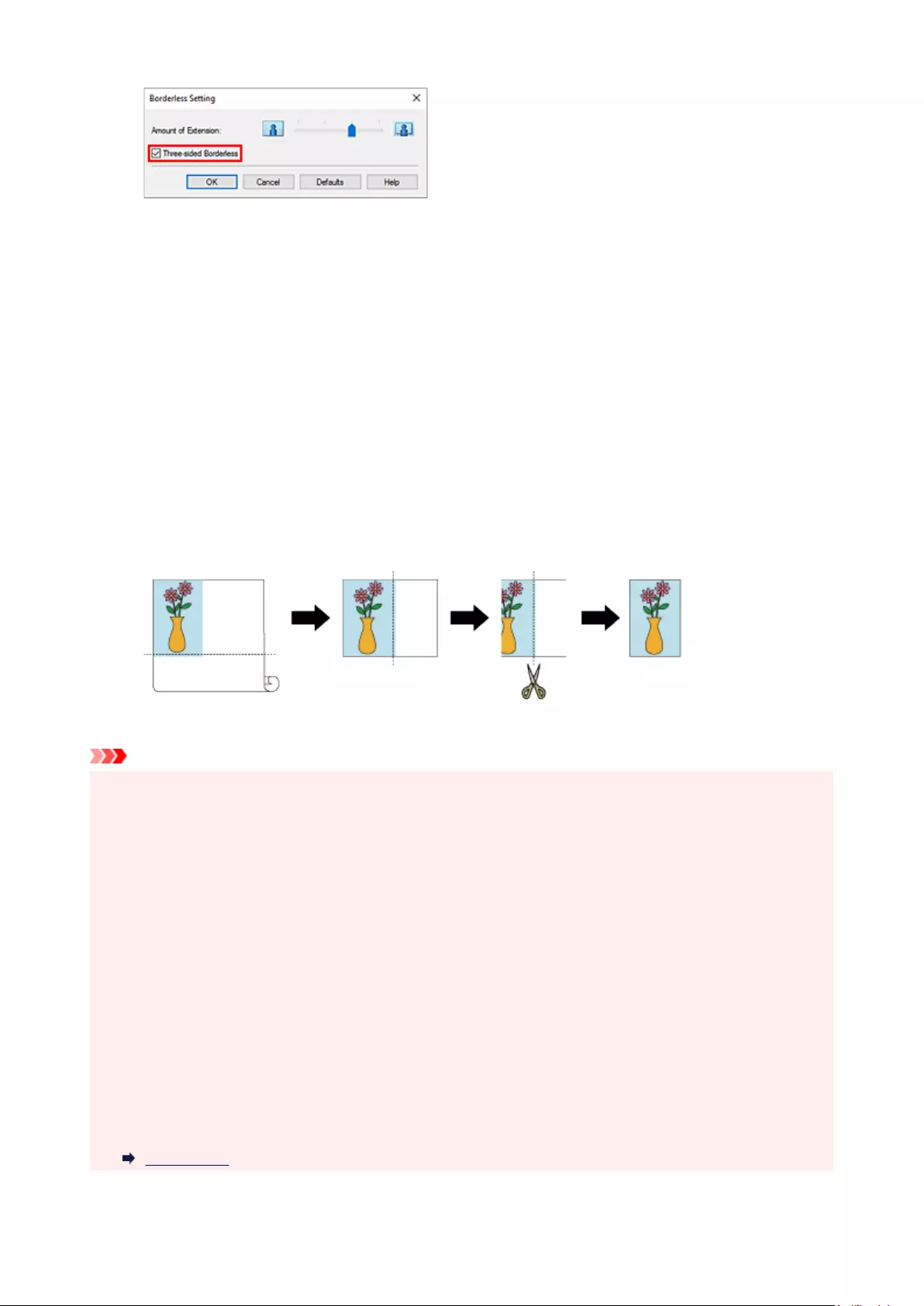
6. Select a method for printing borderless6.
In the Borderless Printing Method tab, place a checkmark next to the Print Image with Actual Size
option.
7. Complete the setting process
7.
Click OK.
If you print now, the document will be printed without margins on three sides while retaining the same
document size.
8. Cut the right side of the paper
8.
Cut the margin on the right side of the paper with scissors after printing.
To get the document to standard size, it is recommended to take measurements and cut in the correct
positions.
Important
• If you place a checkmark next to the Borderless Printing option, the Page Layout and Print Centered
options in the Layout tab will be displayed in gray out and you will not be able to configure them.
• Depending on paper size, the length/width ratio of the paper may be different from that of the image,
making it impossible for the whole image to fit on the paper.
When this happens, crop the image with the application software to match paper size.
• When printing borderless, printing may stop abruptly and the paper will be cut causing a slight color
unevenness on the edges of the paper. If you require exceptionally high quality, in the Roll Paper
Options dialog box select No from the Automatic Cutting list. When you do so, the document will be
printed without the left margin. After the printed material has exited the printer and has been cut, cut the
upper, lower, and right edges with a pair of scissors.
• When printing borderless on paper with low ink-fixing properties, depending on frequency of use, the
cutter unit may come into contact with the paper surface scratching it and causing the paper to be
unevenly cut.
You may be able to improve the situation by clicking Specify... on the Main tab and, in the Paper
Detailed Settings dialog box, under Drying Time, set Between Pages to a higher value.
• The following roll paper supports borderless printing.
Paper Sizes
450

• If margins are formed on the left of the document, adjust the amount extending off paper during
borderless printing from the printer's operation panel.
See "Borders appear in borderless printing" for details on how to set the amount extending off paper.
Note
• When using applications like Microsoft Word which allow you to set margins, set margins to 0 mm.
451
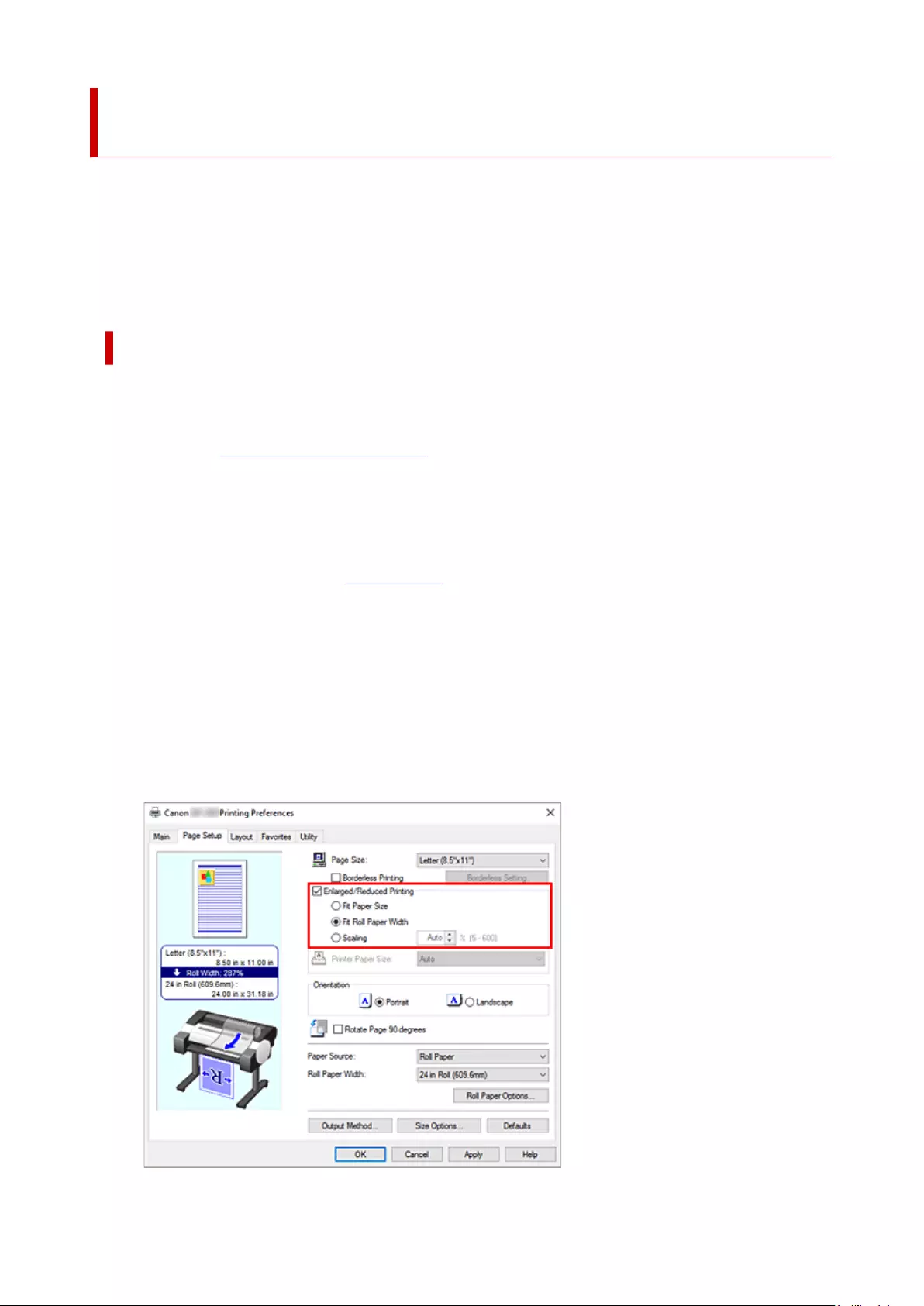
Printing Hanging and Horizontal Banners (Large-Format
Printing)
A drapery or banner up to 18.0m can be made by enlarging or reducing original documents made on
application software.
However, there are cases in which an 18.0 meter banner cannot be printed because the application
software used has limits on the document size that can be set.
The procedure for printing hanging and horizontal banners is as follows:
Print for width of roll
1. Create document by using application software
1.
2. Open the printer driver setup window
2.
3. Select the paper size
3.
Select the same original paper size created in the application soft in the Page Setup tab's Page Size.
In the event an optional size is set in the application software, select Custom Size from Custom
Paper Size in Page Size and designate size in the dialog box that appears.
4. Select roll width4.
Select the equivalent to the paper width of the roll set in the printer under Roll Paper Width.
5. Set Enlarged/Reduced Printing5.
Check Enlarged/Reduced Printing and select Fit Roll Paper Width.
When the Information dialog box appears, select the equivalent to the paper width of the roll set in
the printer.
452

6. Complete the setup6.
Click OK.
When printing is executed, a drapery or banner can be printed according to the roll.
Enlarge and print
1. Register user-defined paper1.
Register both the actual desired print size (user-defined paper 1) and original document size created
in application (user-defined document size 2) in the Size Options... under the Page Setup tab.
Note
•Please set user-defined paper 2 to the same aspect ratio as user-defined paper 1. If the aspect
ratio differs, the enlarged image may not turn out to be the expected size.
After creating user-defined paper 1, if user-defined paper 2 is created after checking Fix the
Ratio of the Width to Height, settings can be set to the same aspect ratio.
Also set user-defined paper 2 to a size that doesn't exceed the maximum size supported by the
application.
For example, when printing on paper 600mm wide and 3,000mm long, use the following
settings.
(when setting length to 1/6 the user-defined paper)
User-defined paper 1: Width 600mm, Height 3,000mm
User-defined paper 2: Width 100mm, Height 500mm
2. Create original document in application software2.
Use the registered user-defined paper 2 size to create original document using an application.
3. Open printer driver settings screen
3.
4. Select Paper Size4.
Select registered user-defined paper 1 from Custom Paper Size in Page Setup tab's Page Size.
5. Complete the setup
5.
Click OK.
When you print, the hanging or horizontal banner is printed by using the user-defined size.
Note
• Maximum printable length is 18.0m. In the event the enlarged length exceeds 18.0m, the part of the
image exceeding the length will not be printed.
• If printing cannot be performed correctly, you may be able to improve printing by using the Special
Settings dialog box on the Layout tab to change FineZoom Settings to Yes.
453
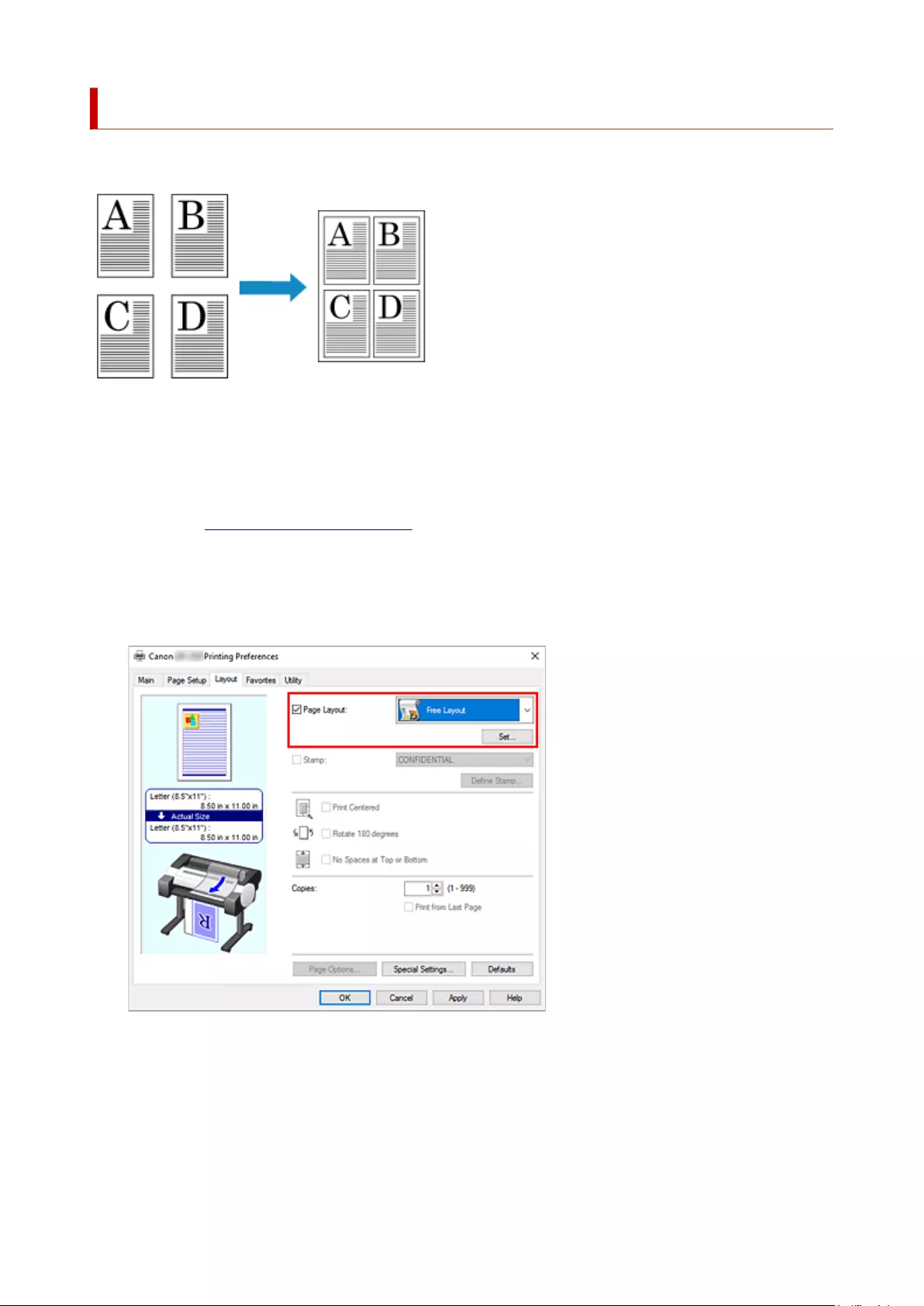
Lining Up and Printing Multiple Documents to Cut Sheets
You can line up multiple documents that were created separately and print them together on one page.
You must install imagePROGRAF Printer Driver Extra Kit to use this function. Go to the Canon website,
download imagePROGRAF Printer Driver Extra Kit, and then install it
The procedure for lining up and printing multiple documents to cut sheets is as follows:
1. Open the printer driver setup window1.
2. Select Free Layout2.
On the Layout tab, select the Page Layout check box, and then from the pull-down menu, select Free
Layout.
3. Complete the setup
3.
Click OK.
When you print, Canon imagePROGRAF Free Layout starts. Canon imagePROGRAF Free Layout
allows you to edit and rearrange images.
455
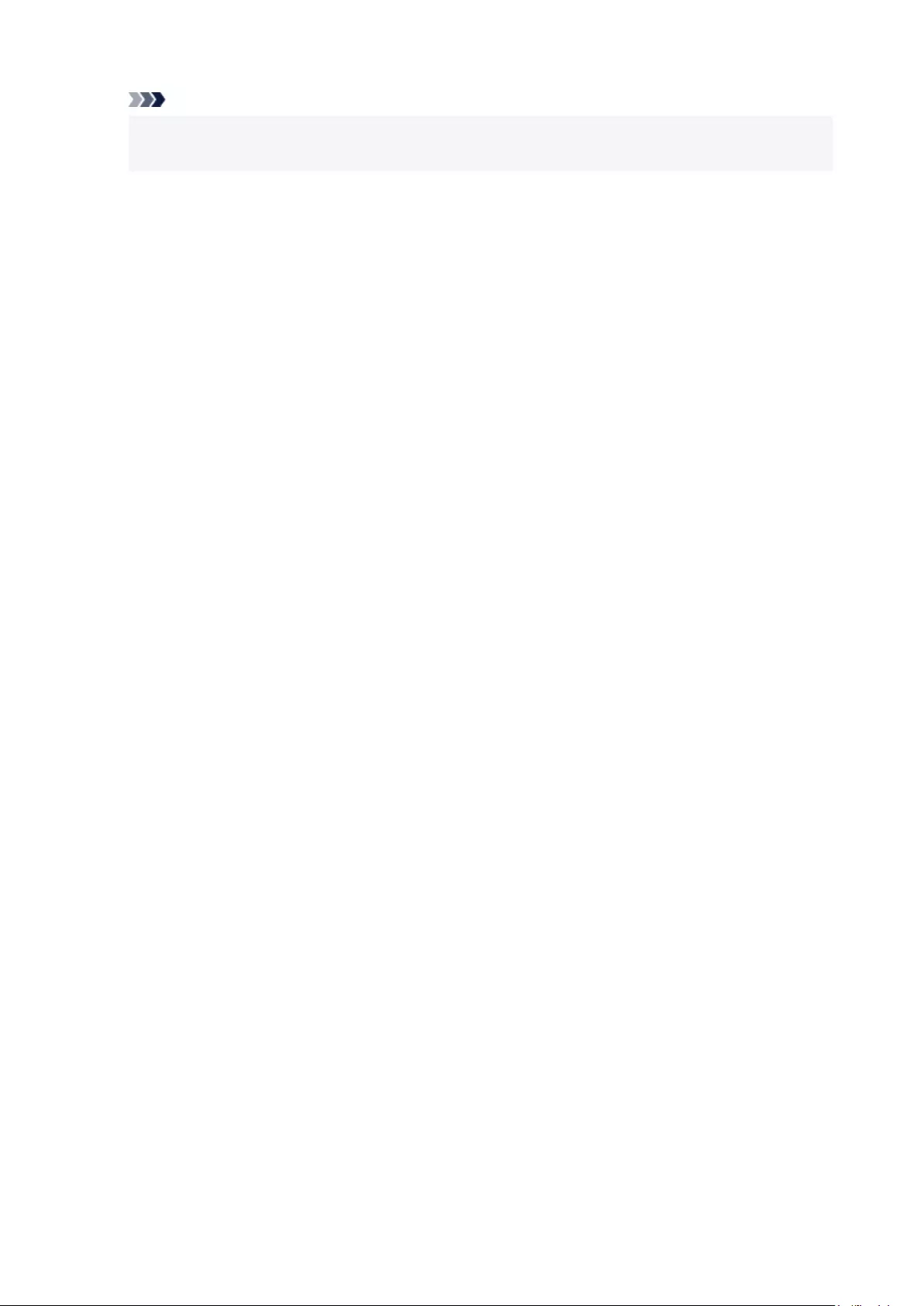
Note
• To lay out multiple application software documents onto one page, repeat steps 1 to 3 without
closing the Canon imagePROGRAF Free Layout window.
456
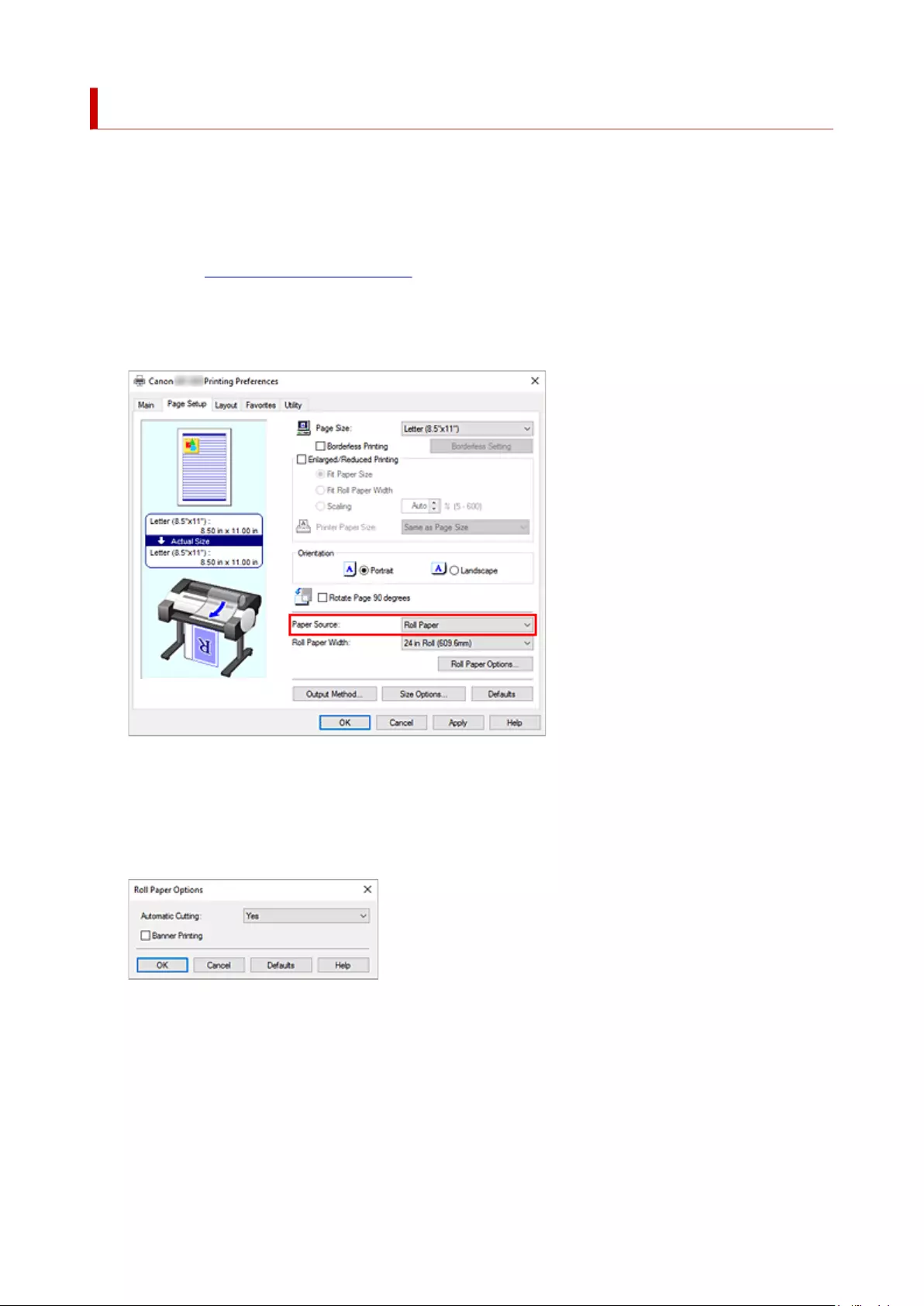
Printing by Connecting Multiple Pages
Print documents with several pages as one continuous document. When you do this, the spaces between
the pages will be removed.
The procedure for printing by connecting multiple pages is as follows:
1. Open the printer driver setup window1.
2. Select the paper source
2.
For Paper Source on the Page Setup tab, select Roll Paper.
3. Set roll paper options
3.
Click Roll Paper Options to display the Roll Paper Options dialog box.
Select the Banner Printing check box, and then click OK.
The current settings are displayed in the settings preview on the left side of the Page Setup tab.
4. Complete the setup
4.
Click OK on the Page Setup tab.
When you print, the document is printed with the print conditions you set.
457

Printing Multiple Pages All on One Page
The page layout printing function allows you to print more than one page image on a single sheet of paper.
The procedure for printing multiple pages all on one page is as follows:
1. Open the printer driver setup window
1.
2. Select the print paper size2.
From the Page Size list on the Page Setup tab, select the size of the paper loaded in the printer.
3. Set number of pages to be printed per sheet
3.
On the Layout tab, select the Page Layout check box, and from the pull-down menu, select 2 Pages/
Sheet, 4 Pages/Sheet, 6 Pages/Sheet, 8 Pages/Sheet, 9 Pages/Sheet, or 16 Pages/Sheet.
The current settings are displayed in the settings preview on the left side of the window.
458

4. Set the number of pages to be printed on one sheet and the page order
4.
If necessary, click Set..., specify the following settings in the Page Layout Printing dialog box, and click
OK.
Page Order
To change the page arrangement order, select a placement method from the list.
Page Border
To print a page border around each document page, select something other than None from the list.
5. Complete the setup
5.
Click OK on the Layout tab.
When you execute print, the specified number of pages will be arranged on each sheet of paper in the
specified order.
Important
•When there is a checkmark next to Banner Printing under Roll Paper Options dialog box on the
Page Setup tab, Page Layout is grayed out and cannot be set.
•If Spooling at Printer Driver in Special Settings dialog box is set to No (Use RAW Spooling),
Page Layout is grayed out and cannot be set.
459
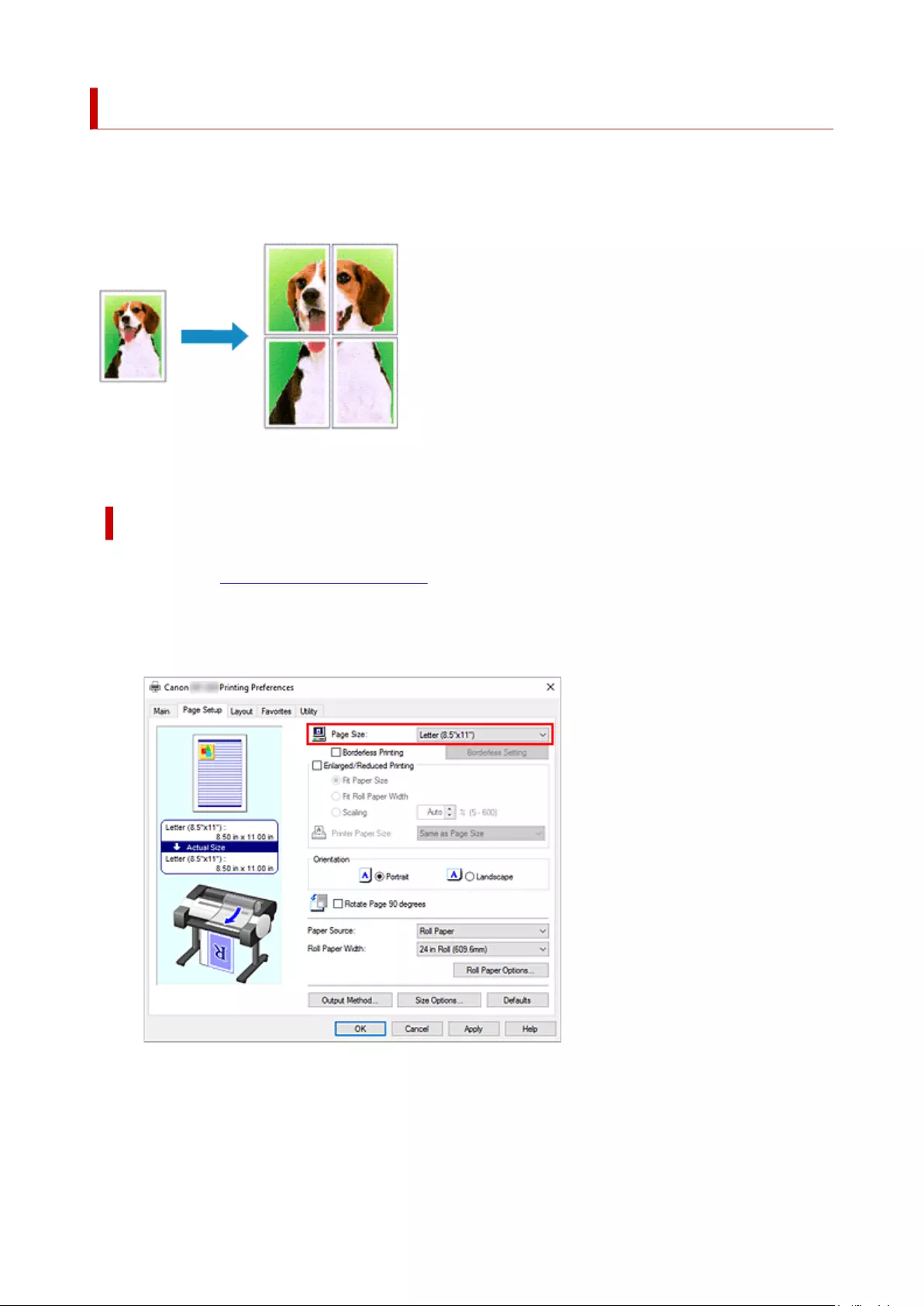
Dividing and Printing Posters
The tiling/poster printing function allows you to enlarge image data, divide it into several pages, and print
these pages on separate sheets of paper. You can also paste the pages together to create a large print like
a poster.
The procedure for dividing and printing posters is as follows:
Setting for Dividing and Printing Posters
1. Open the printer driver setup window
1.
2. Select the print paper size2.
From the Page Size list on the Page Setup tab, select the size of the paper loaded in the printer.
3. Set number of divisions
3.
On the Layout tab, select the Page Layout check box, and from the pull-down menu, select Poster (1
x 2) or Poster (2 x 2).
The current settings are displayed in the settings preview on the left side of the window.
460
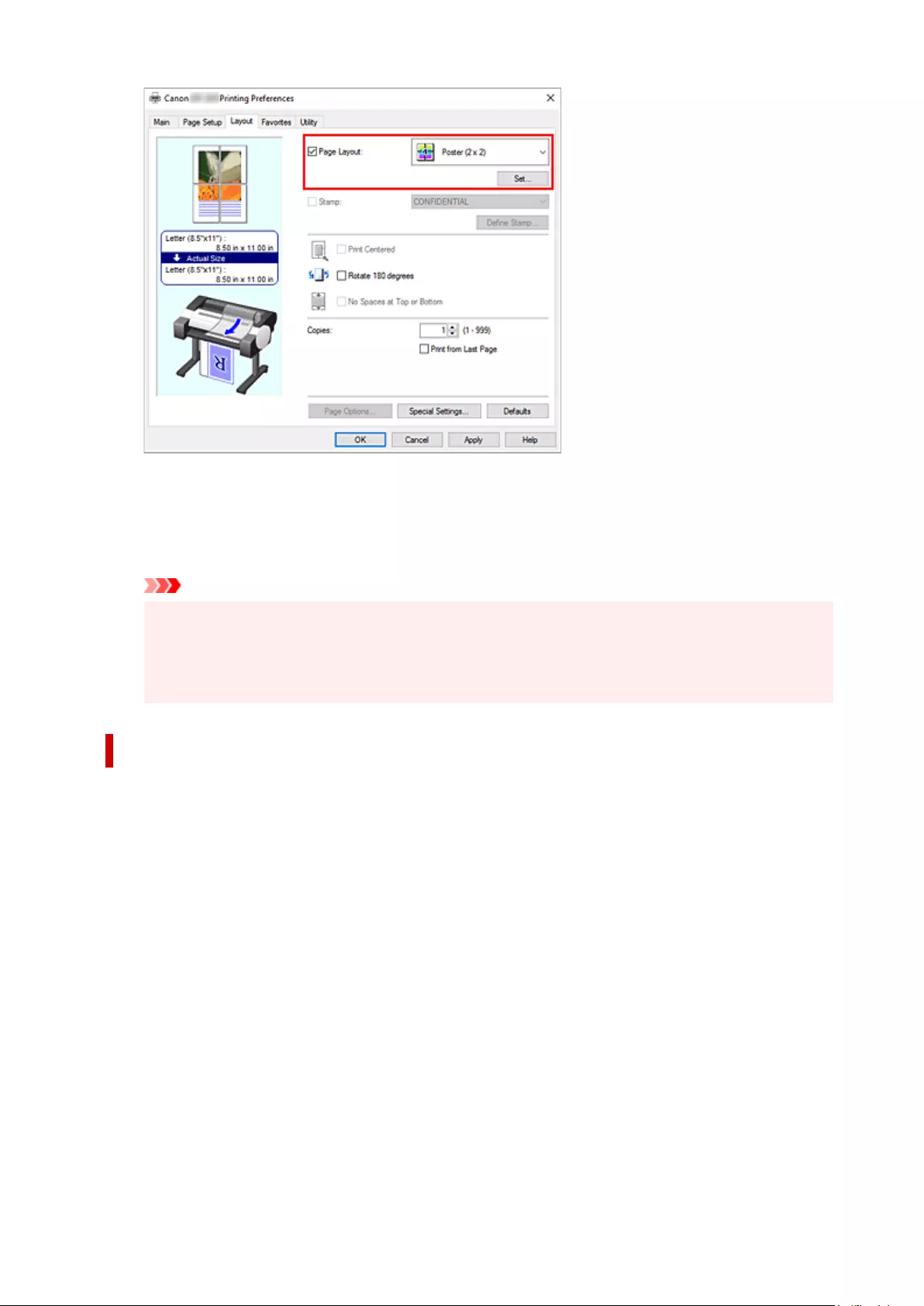
4. Complete the setup
4.
Click OK on the Layout tab.
When you execute print, the document will be divided into several pages during printing.
Important
• When there is a checkmark next to Banner Printing under Roll Paper Options dialog box on
the Page Setup tab, Page Layout is grayed out and cannot be set.
• If Spooling at Printer Driver in Special Settings dialog box is set to No (Use RAW
Spooling), Page Layout is grayed out and cannot be set.
Printing Only Specific Pages
If ink becomes faint or runs out during printing, you can reprint only the specific pages by following the
procedure below:
1. Display Pages to Print dialog box1.
For Page Layout, click Set... to display the Pages to Print dialog box.
2. Set print range
2.
Clear the check boxes of the pages you do not want to print.
In the setting view, the pages that you cleared are deleted and only the pages to be printed are
displayed.
Check the pages to be printed, and then click OK.
461
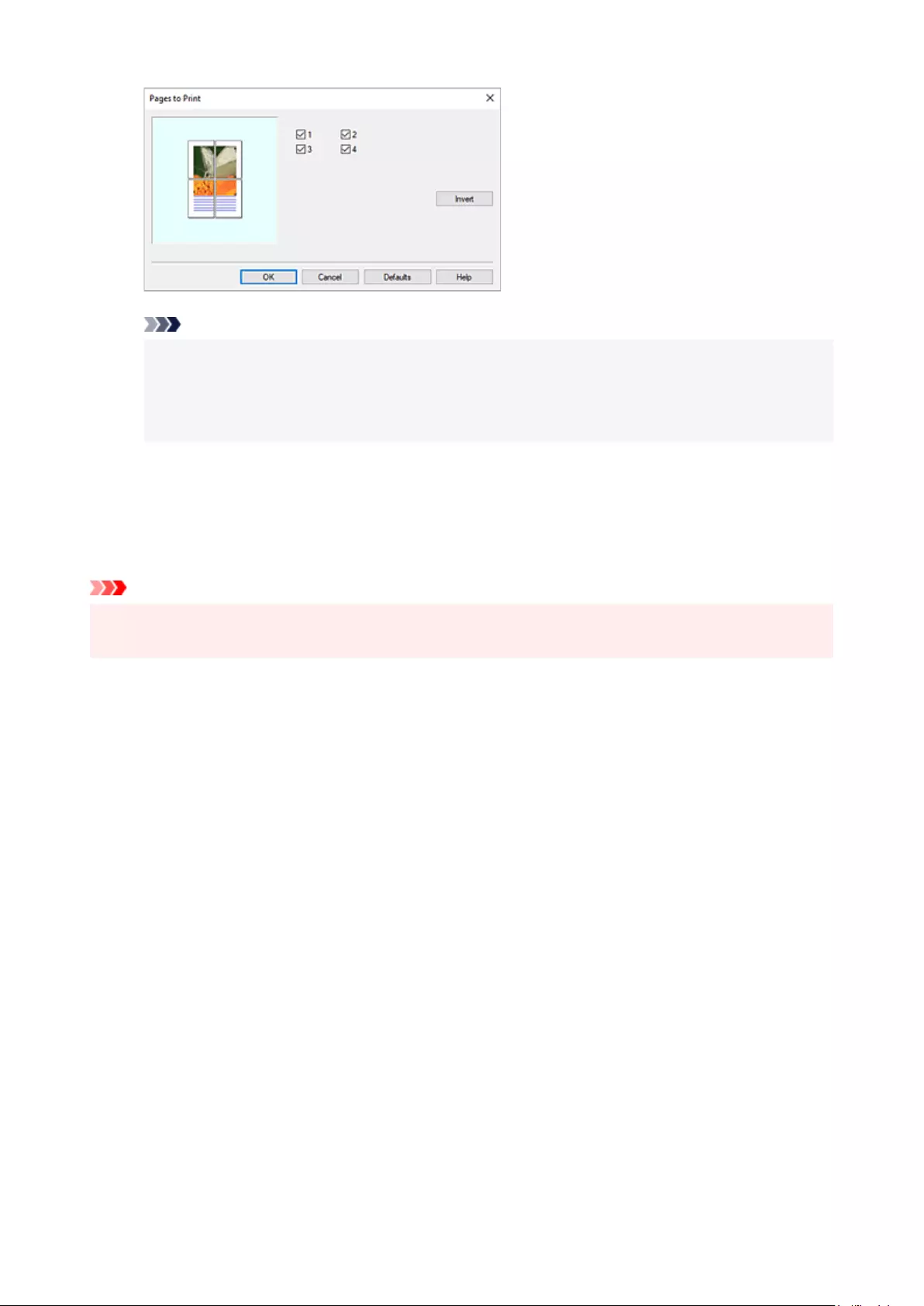
Note
•In the setting view on the left side of the Pages to Print dialog box, you can also clear the
display by clicking the pages you do not want to print.
To redisplay a cleared page, click that page again.
•To switch the pages to display/hide, click Invert in the Pages to Print dialog box.
3. Complete the setup
3.
Click OK on the Layout tab.
When you print, only the specified pages are printed.
Important
• If you partition and print as a poster, the source document will be printed in enlarged form, so the print
results may become rough.
462

Printing Document in Center of Paper
When you want to position the source document in the middle of the cut paper and print, or print with even
margins on the right and left in relation to the width of the roll paper, use the Print Centered function.
The print results when setting with Print Centered are as follows. Normally, if Print Centered is set when
printed as in (A), it will be printed as in (B) for cut paper and (C) for roll paper.
Note
• When setting the magnification using Scaling from Enlarged/Reduced Printing on the Page Setup
tab and printing, the start point for enlarge/reduce will always be fixed based on the top left corner of
that page. For that reason, for reduced printing, the bottom and right margins of the paper will increase.
At this time, if you place a checkmark next to Print Centered on the Layout tab, the top, bottom, left
and right margins can all be printed evenly.
The procedure for printing in the center of the paper is as follows:
1. Open the printer driver setup window1.
2. Select the media type2.
Select the type of paper loaded in the printer from the Media Type list on the Main tab.
463
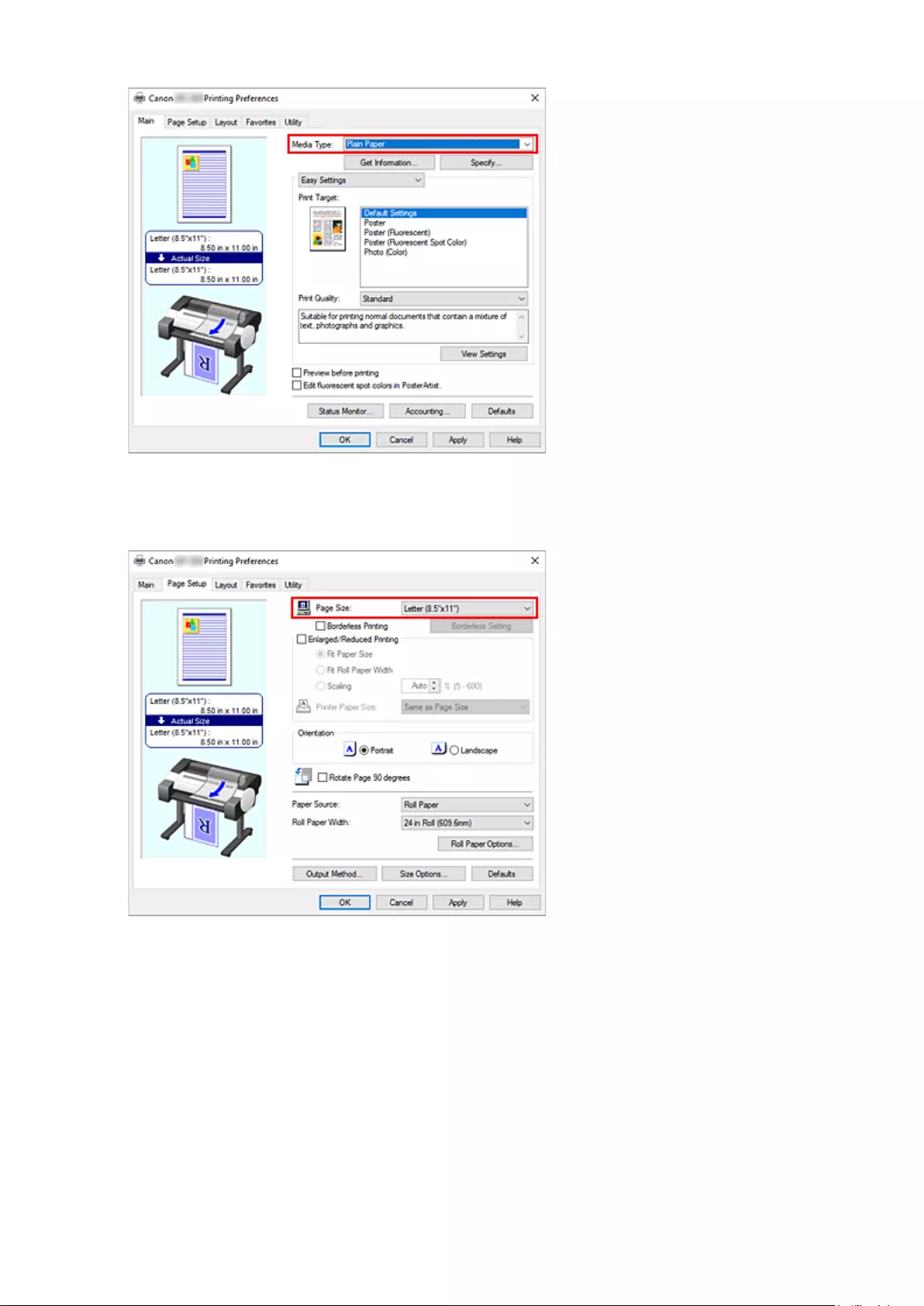
3. Select the paper size
3.
Select the size of the paper you want to print from Page Size on the Page Setup tab.
4. Set magnification as necessary
4.
Where necessary, attach a checkmark next to Enlarged/Reduced Printing, and set according to the
objective.
5. Select the paper source
5.
For Paper Source, select the setting that matches your purpose.
6. Select roll paper width
6.
464
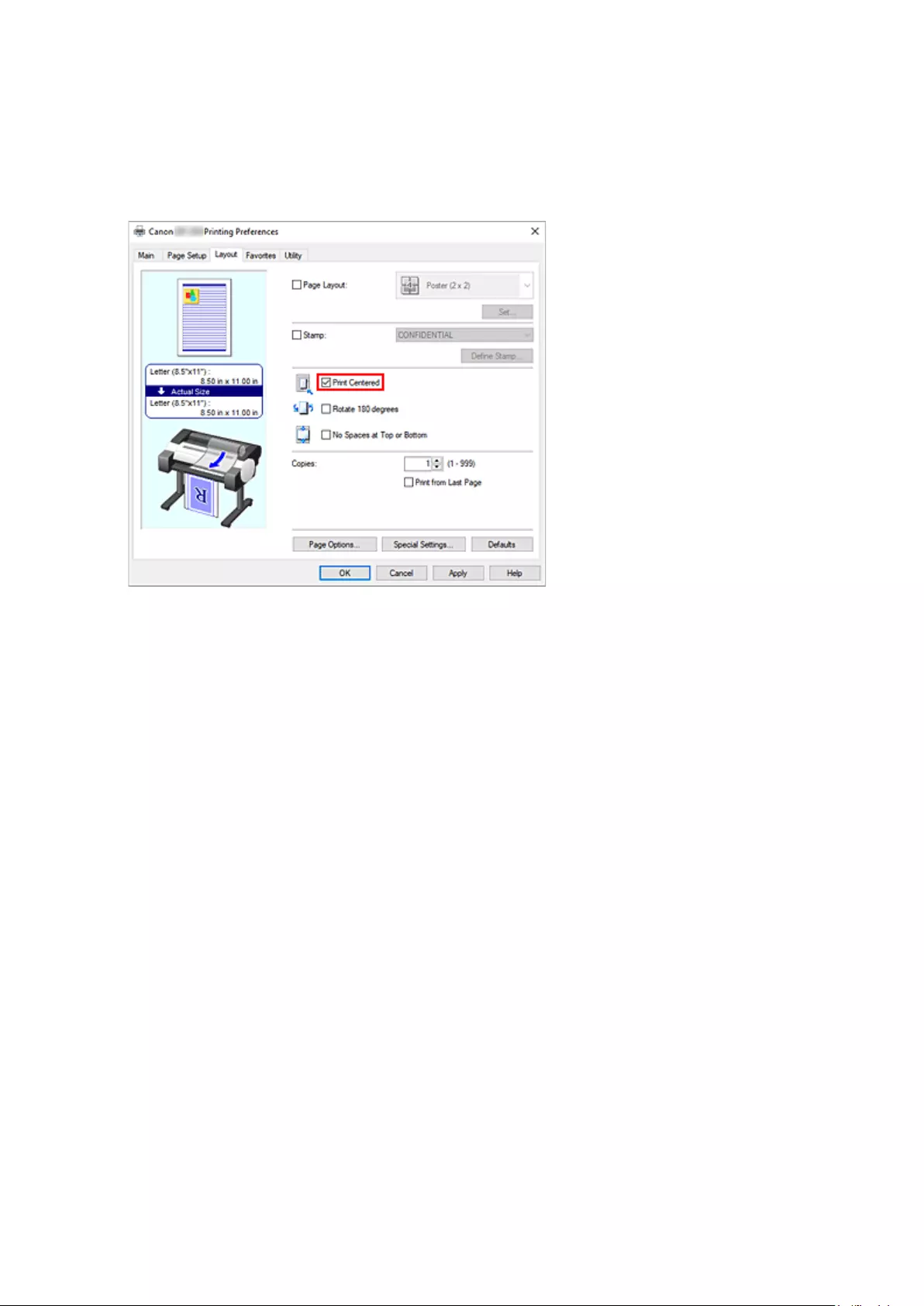
If you selected a roll paper for Paper Source, set Roll Paper Width to the width of the roll paper loaded
in the printer.
7. Print document in the center of paper7.
Select the Print Centered check box on the Layout tab.
8. Complete the setup8.
Click OK.
When you print, the document is printed in the center of the paper.
465

Saving Roll Paper by Rotating Document 90 Degrees
When printing a portrait document on roll paper, you can save paper by rotating the document 90 degrees
and printing the document so that it is oriented horizontally relative to the paper.
The procedure for saving paper by rotating the document 90 degrees is as follows:
1. Open the printer driver setup window1.
2. Select the media type
2.
Select the type of paper loaded in the printer from the Media Type list on the Main tab.
3. Select the paper size
3.
From the Page Size list on the Page Setup tab, select the same size as that of the document that was
created with the application software.
4. Select the paper source
4.
In Paper Source, select Roll Paper.
5. Selecting Paper Saving
5.
Select the Rotate Page 90 degrees check box.
The current settings are displayed in the settings preview on the left side of the window.
467
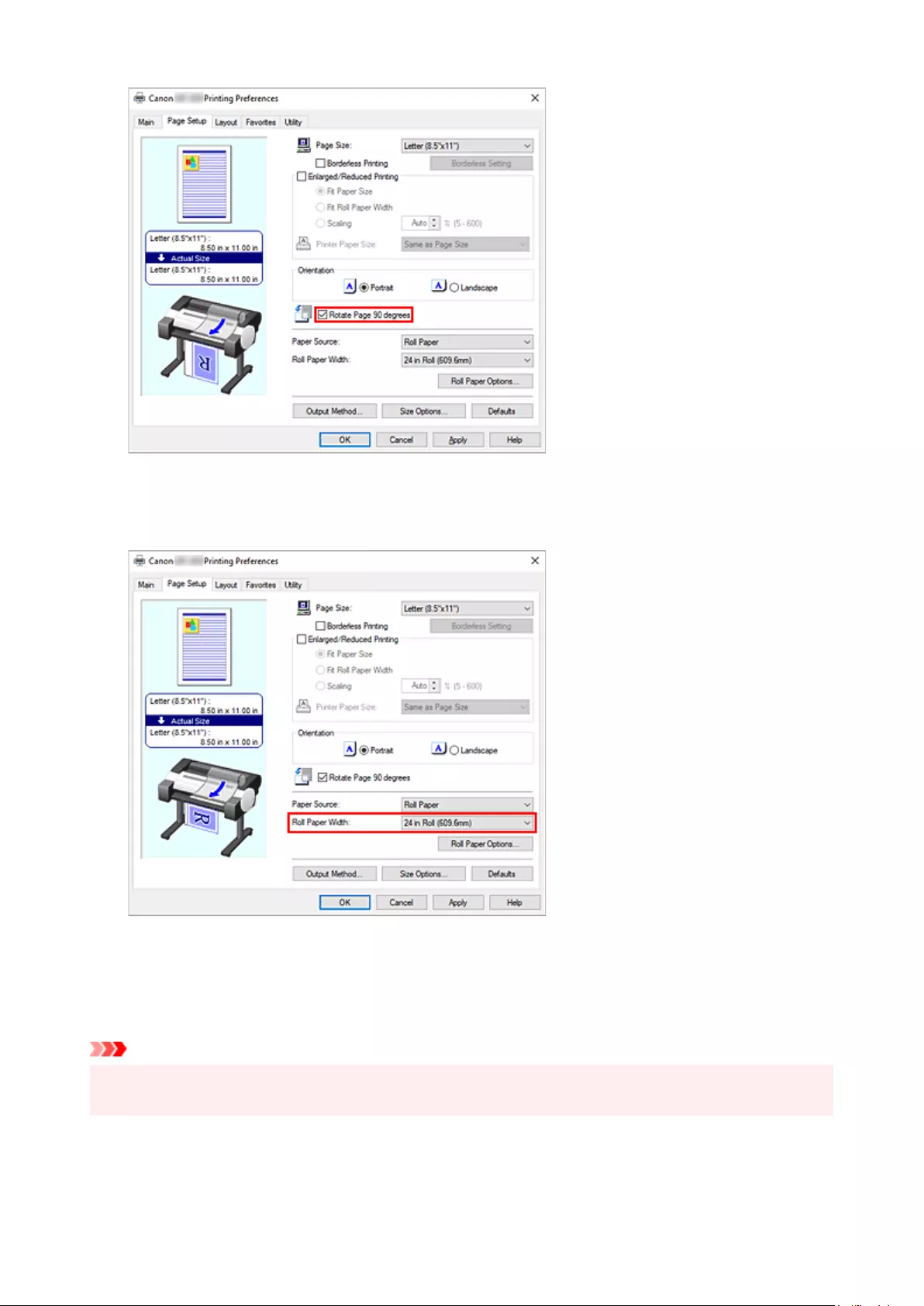
6. Select roll paper width
6.
For Roll Paper Width, select the width of the roll paper loaded in the printer.
7. Complete the setup
7.
Click OK.
When you print, you can rotate a portrait document 90 degrees to save paper.
Important
• When there is a checkmark attached to Banner Printing on the Page Setup tab, Rotate Page 90
degrees is grayed out and cannot be set.
468

• When selecting paper in portrait format as the Page Size from the Page Setup tab, if the length in the
vertical direction is longer than the width selected in Roll Paper Width, even if a checkmark is placed
next to Rotate Page 90 degrees, the page will not be rotated.
469
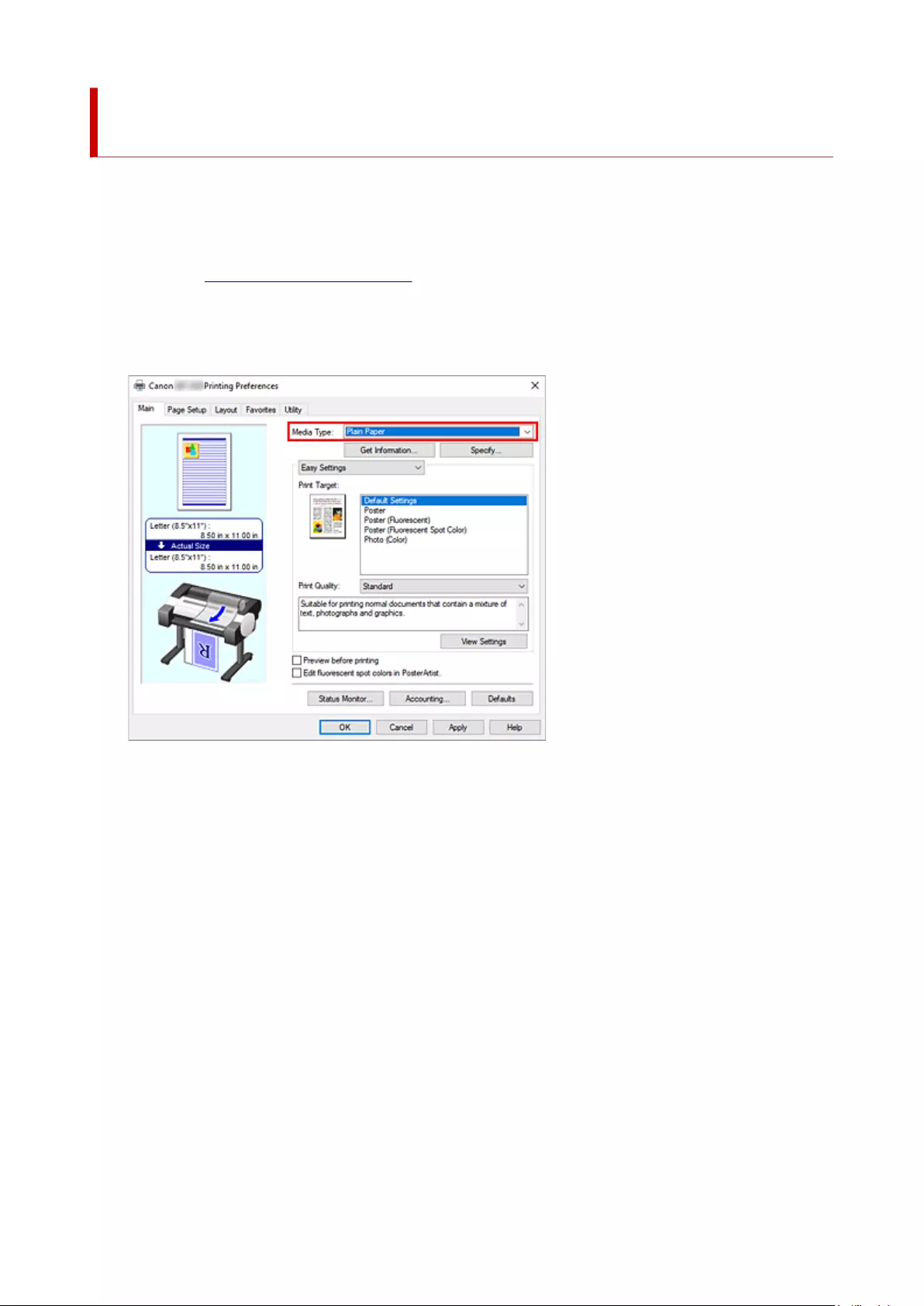
Saving Roll Paper by Eliminating Upper and Lower Margins on
Document
When printing on roll paper, you can save paper by reducing the upper and lower margins when printing.
The procedure for saving paper by reducing the upper and lower margins is as follows:
1. Open the printer driver setup window1.
2. Select the media type
2.
Select the type of paper loaded in the printer from the Media Type list on the Main tab.
3. Select the paper size
3.
From the Page Size list on the Page Setup tab, select the same size as that of the document that was
created with the application software.
470

4. Select the paper source
4.
For Paper Source, select Roll Paper.
5. Select roll paper width5.
For Roll Paper Width, select the width of the roll paper loaded in the printer.
6. Selecting Paper Saving6.
On the Layout tab, select the No Spaces at Top or Bottom check box.
The current settings are displayed in the settings preview on the left side of the window.
7. Complete the setup
7.
471
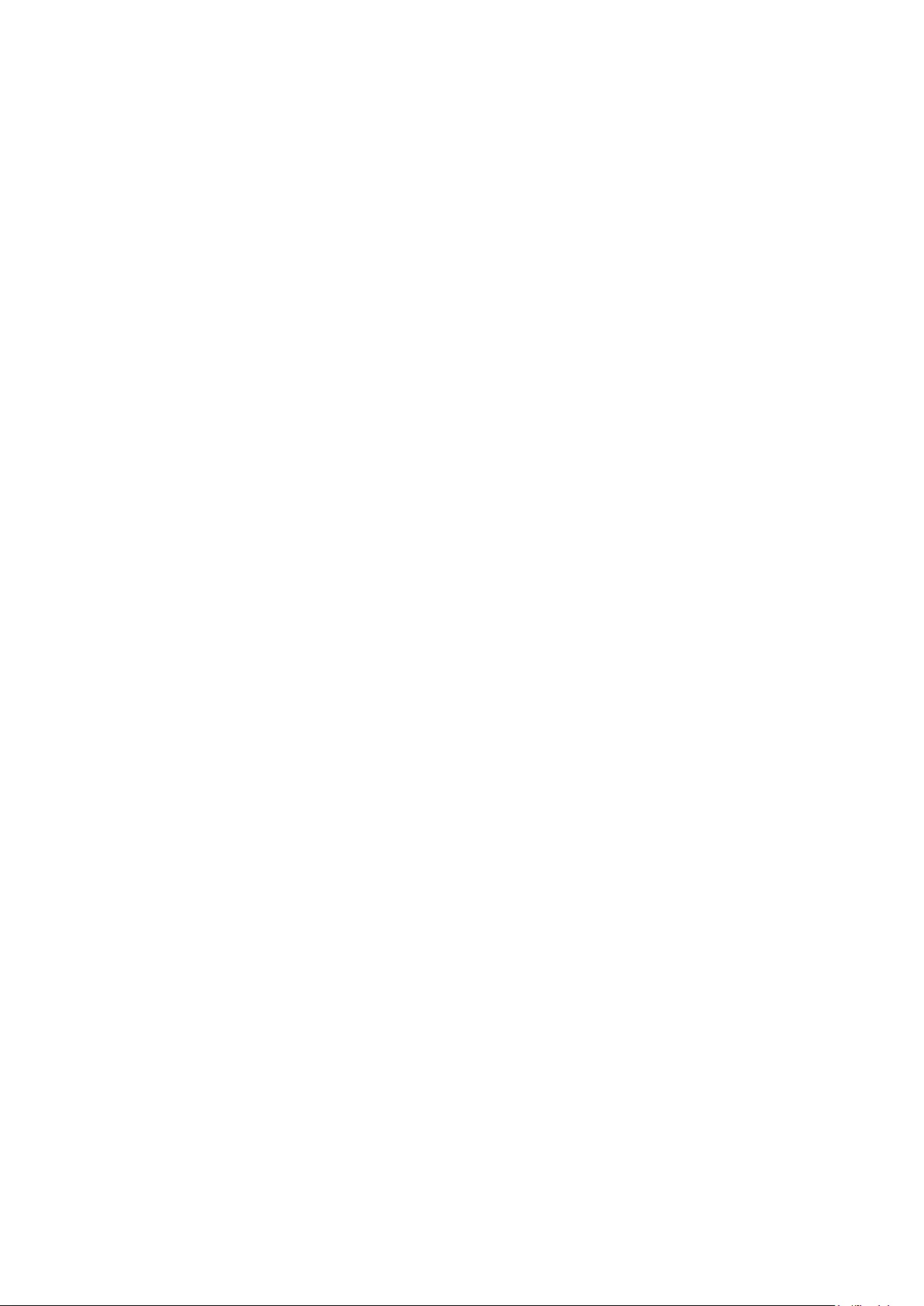
Click OK.
When you print, the upper and lower margins are reduced so that you can save paper.
472
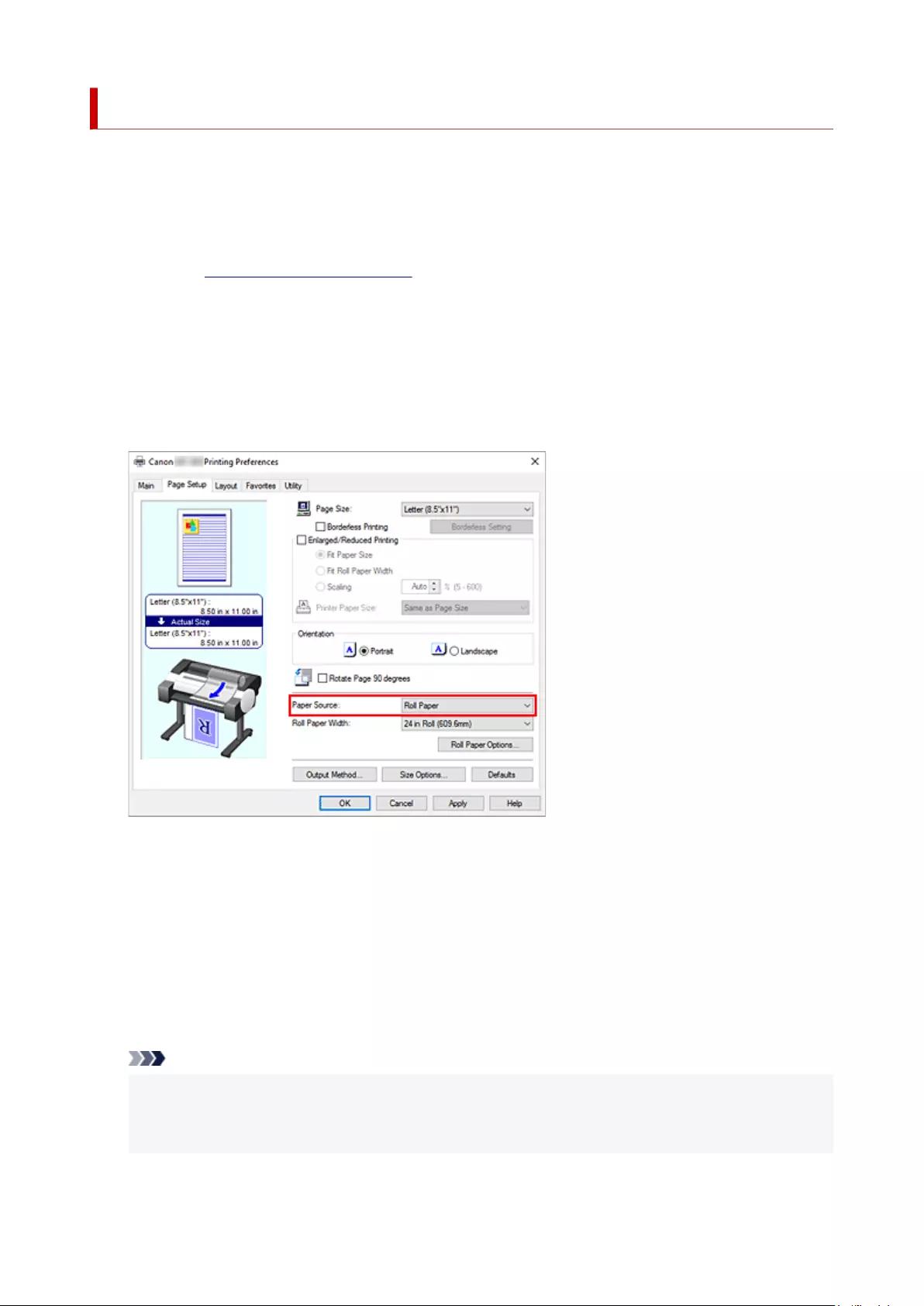
Switching the Paper Source to Match the Purpose
This printer has two paper sources: Roll and Cut Sheet.
You can facilitate printing by selecting a paper source setting that matches your media type or purpose.
The procedure for setting paper source is as follows:
1. Open the printer driver setup window1.
2. Select the media type
2.
Select the type of paper loaded in the printer from the Media Type list on the Main tab.
3. Select the paper source
3.
From the Paper Source list on the Page Setup tab, select the paper source that matches your purpose.
Roll Paper
Feeds paper using roll paper.
Cut Sheet
Feeds paper using the cut paper.
4. Complete the setup
4.
Click OK.
When you execute print, the printer uses the specified paper source to print the data.
Note
•If the paper settings in the printer driver differ from the paper information registered on the printer,
an error message may appear on the printer's operation panel. You can still print but you may not
be able to obtain correct print results.
473

Displaying the Print Results before Printing
You can display and check the print result before printing.
The procedure for displaying the print result before printing is as follows:
1. Open the printer driver setup window1.
2. Set the preview
2.
Check the Preview before printing check box on the Main tab.
3. Complete the setup
3.
Click OK.
When you execute print, the Canon imagePROGRAF Preview opens and displays the print results.
Related Topic
Canon imagePROGRAF Preview
474
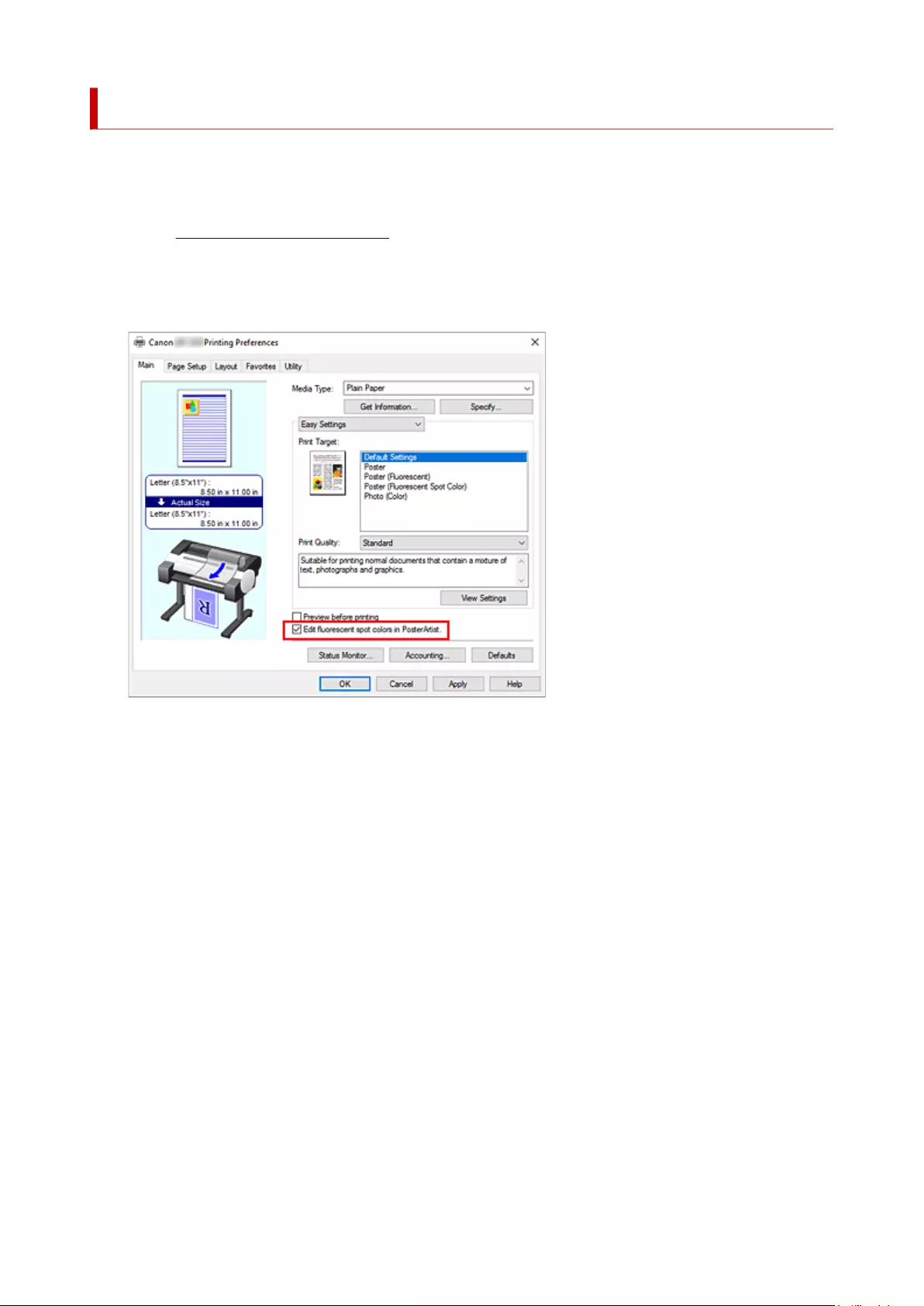
Link with PosterArtist to print with bright colors
With PosterArtist, you can import the data you want to print, and then edit fluorescent spot colors and check
print results using the preview function.
1. Open printer driver's setup screen1.
2. Link with PosterArtist
2.
Add a checkmark to Edit fluorescent spot colors in PosterArtist in the Main sheet.
3. Start PosterArtist
3.
Click OK.
When you start printing, PosterArtist will start, and the Page Capture window will open.
4. Select Pages to Import with PosterArtist
4.
5. Edit the page in PosterArtist
5.
Follow the instructions displayed on the PosterArtist screen to operate.
475

Specify Fluorescent Colors and Print
You can set specific RGB values in advance for text and figures that are painted over (single-color painting)
with the color palette of the application you are using, and print the specified sections of posters with bright
colors using fluorescent ink.
1. Select Advanced Settings1.
2. Add a checkmark to Fluorescent Spot Color Set becomes active.2.
Set becomes active.
3. Click Set3.
The color palette will be displayed.
You can print the color palette from the printer operation panel. Print to the paper of your choice, and set
the RGB values as you check the colors.
Test print
476
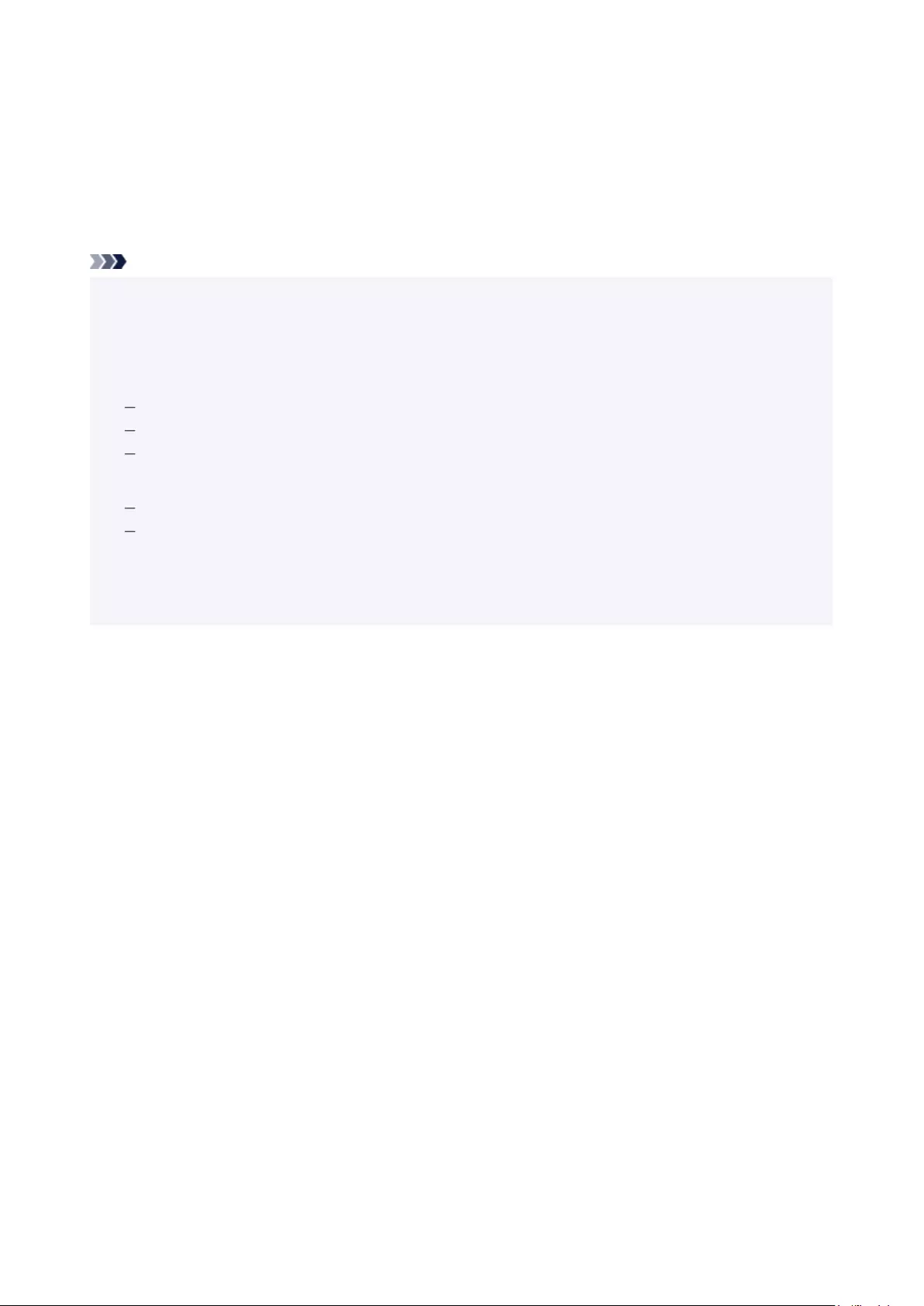
4. Add a checkmark to the color of the fluorescent ink you want to print with4.
5. Print5.
The color that you added the checkmark for will be brightly printed.
We recommend that you add a checkmark to Preview before printing to confirm how the color you
checked will appear when printed.
Note
• When printing by specifying fluorescent colors, the RGB values set by the application software must be
retained when being input to the printer driver. If color management is performed during printing by the
application software, the RGB values are not retained, and therefore may not produce the desired print
results. If this happens, configure the settings on the application software as follows.
For detailed instructions on settings, see the user's guide of the application software you are using.
Disable color management and color adjustment functions during printing.
Configure settings so that color management during printing is performed by the printer.
For color management during printing, specify the same profile as the document profile.
• Under the following conditions, printing may not produce the desired results.
Text or shapes that have been shaded, rotated, or anti-aliased
Data with specified RGB values that were saved in GIF format
• Sections that are close to the specified RGB values will also be printed with bright colors.
• If you want to print gradations using fluorescent ink, configure Poster (Fluorescent) in Print Target
under Easy Settings.
477
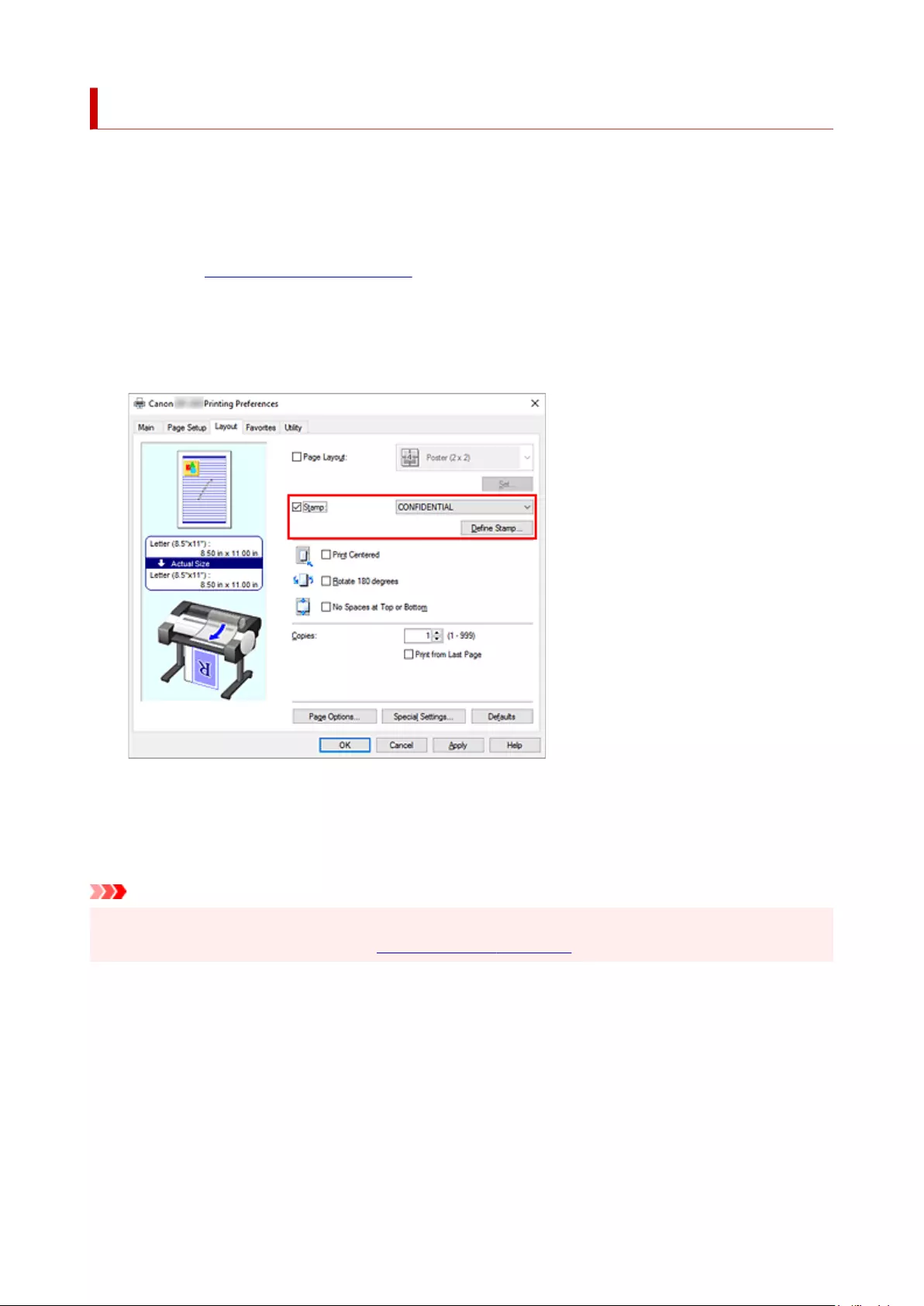
Stamp Printing
The Stamp function allows you to print a stamp text over or behind document data.
"DRAFT," "CONFIDENTIAL," and other stamps that are used often in companies are pre-registered.
The procedure for printing with a stamp is as follows:
1. Open the printer driver setup window1.
2. Select stamp
2.
On the Layout tab, select the Stamp check box, and then select the stamp to use from the list.
The current settings are displayed in the settings preview on the left side of the Layout tab.
3. Complete the setup
3.
Click OK.
When you execute print, the data is printed with the specified stamp.
Important
• Depending on your usage environment, you may not be able to use the Stamp function. In this case,
set Spooling at Printer Driver in the Special Settings dialog box to Yes.
479
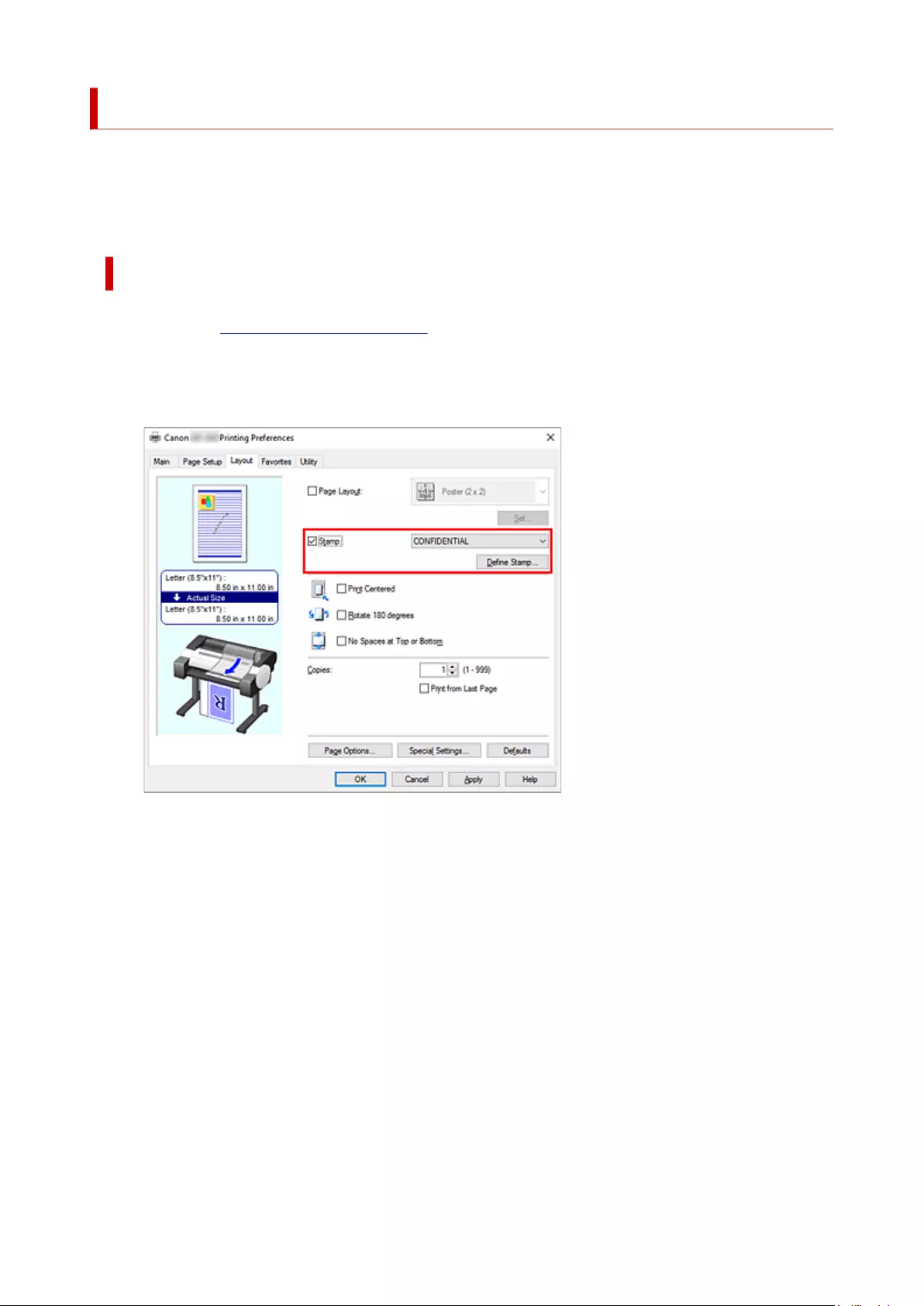
Registering a Stamp
You can create and register a new stamp. You can also change and re-register some of the settings of an
existing stamp. Unnecessary stamps can be deleted at any time.
The procedure for registering a new stamp is as follows:
Registering a New Stamp
1. Open the printer driver setup window
1.
2. Select stamp
2.
On the Layout tab, select the Stamp check box, and click Define Stamp....
The Define Stamp dialog box opens.
480
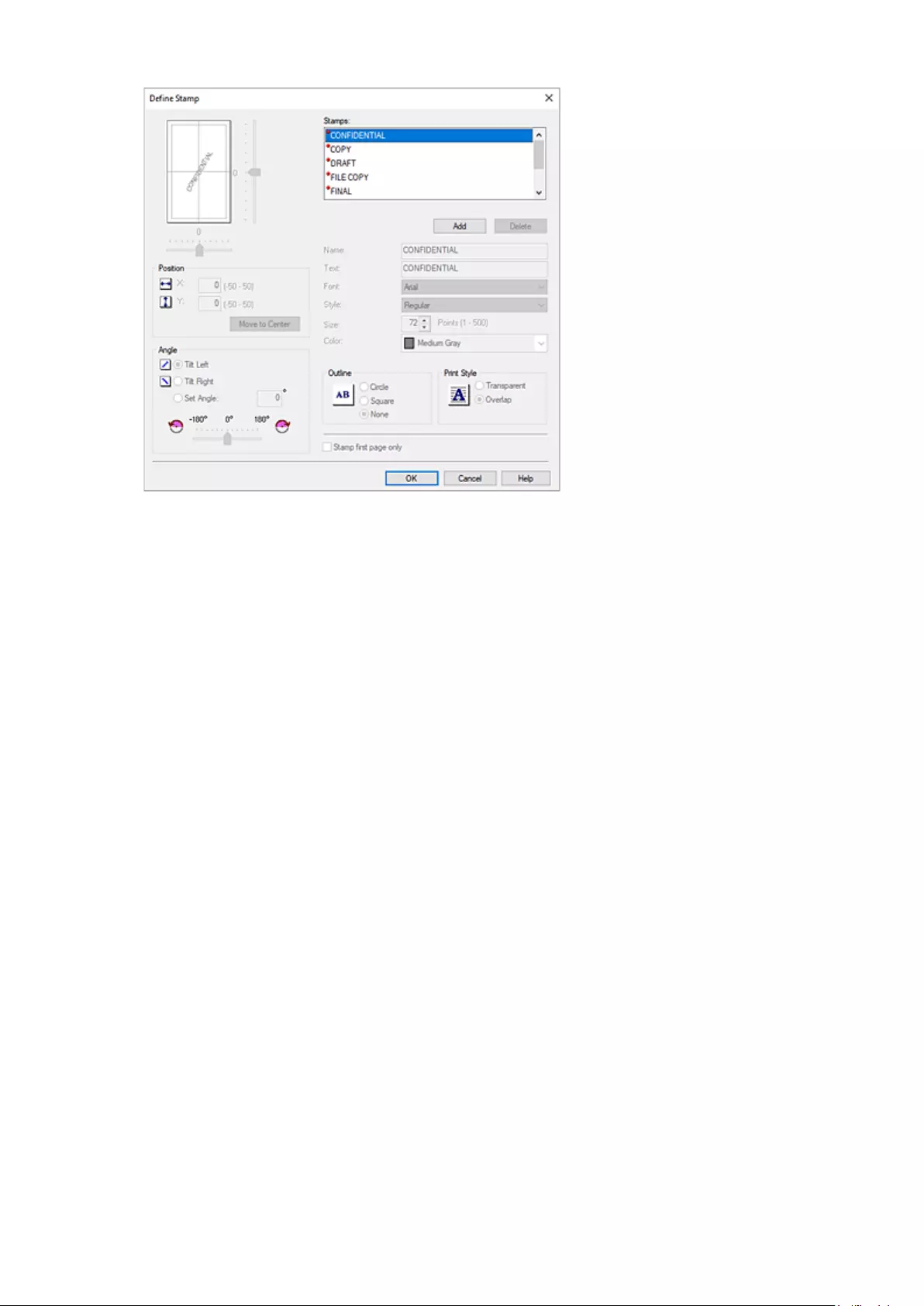
3. Set stamp details
3.
Click Add to add a new stamp (Untitled) to the list.
In Name, enter the name of the stamp to register, and in Text, enter the character string you want as
the stamp.
Change the Font, Style, Size, and Color settings as necessary.
4. Set the other items4.
Set the following items as necessary.
Outline
Selects a frame that encloses the stamp text string.
Print Style
Select the stamp print method.
Select Transparent to print the stamp on the back of the document, and select Overlap to print it
on the front.
Position
Specifies the stamp position on the page.
Enter numbers in X and Y to set the coordinates, or drag the horizontal and vertical slide bars to
the left/right or up/down to change the settings.
Angle
Set the stamp placement angle.
Enter a number in Set Angle to set the angle, or drag the slide bar to the left/right to change the
setting.
Set the angle by entering a number in range of -180 to 180.
Stamp first page only
To print the stamp on the first page only, select this check box.
481
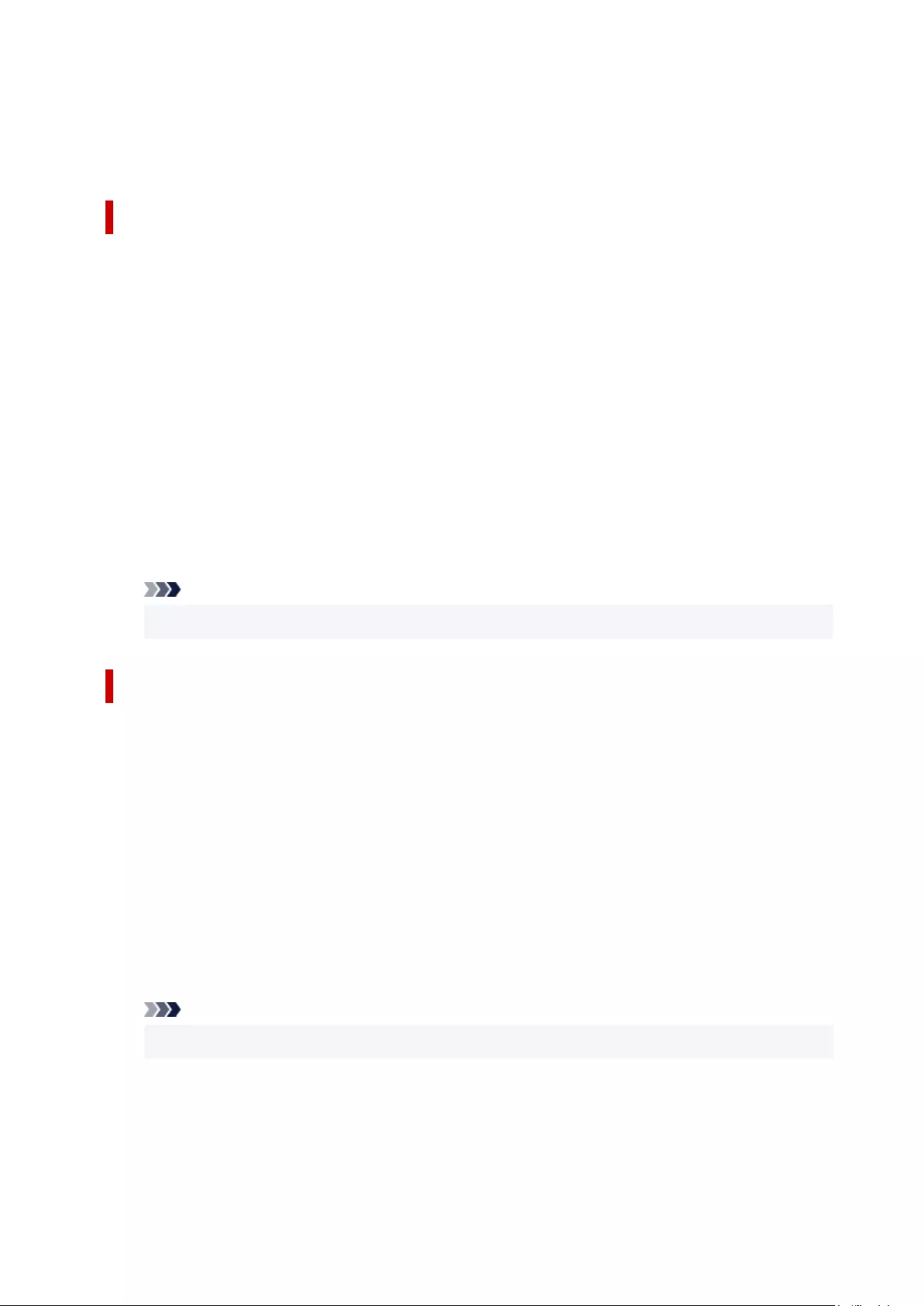
5. Complete the setup5.
Click OK to return to the Layout tab.
The registered title appears in the Stamp list.
Changing and Registering Some of Stamp Settings
1. Select stamp1.
On the Layout tab, select the Stamp check box, and click Define Stamp....
The Define Stamp dialog box opens.
2. Select the stamp for which the settings are to be changed
2.
From Stamps, select the title of the stamp you want to change the settings for.
3. Configure each setting while viewing the preview
3.
4. Complete the setup4.
Click OK to return to the Layout tab.
The registered title appears in the Stamp list.
Note
•The stamp registered as the default setting cannot be changed.
Deleting an Unnecessary Stamp
1. Select stamp1.
On the Layout tab, select the Stamp check box, and click Define Stamp....
The Define Stamp dialog box opens.
2. Select the stamp to be deleted2.
Select the title that you wish to delete from the Stamps and click Delete.
Click Yes when the confirmation message appears.
3. Complete the setup
3.
Click OK to return to the Layout tab.
Note
•The stamp registered as the default setting cannot be deleted.
482

Setting a Page Size and Orientation
The paper size and orientation are essentially determined by the application software. When the page size
and orientation set for Page Size and Orientation on the Page Setup tab are same as those set with the
application software, you do not need to select them on the Page Setup tab.
When you are not able to specify them with the application software, the procedure for selecting a page size
and orientation is as follows:
1. Open the printer driver setup window
1.
2. Select the paper size
2.
Select a page size from the Page Size list on the Page Setup tab.
3. Set Orientation
3.
Select Portrait or Landscape for Orientation. Check Rotate Page 90 degrees check box when you
want to perform printing with the original being rotated 90 degrees.
4. Complete the setup
4.
Click OK.
When you execute print, the document will be printed with the selected page size and the orientation.
483

Registering a Frequently Used Printing Profile
You can register the frequently used printing settings to Favorites. Unnecessary printing profiles can be
deleted at any time.
The procedure for registering a printing profile is as follows:
Registering a Printing Profile
1. Open the printer driver setup window
1.
2. Set the necessary items
2.
On the Main tab, the Page Setup tab, and the Layout tab, specify the print settings you want to
register.
3. Display Add dialog box
3.
On the Favorites tab, click Add....
The Add dialog box opens.
4. Register favorite setting
4.
484
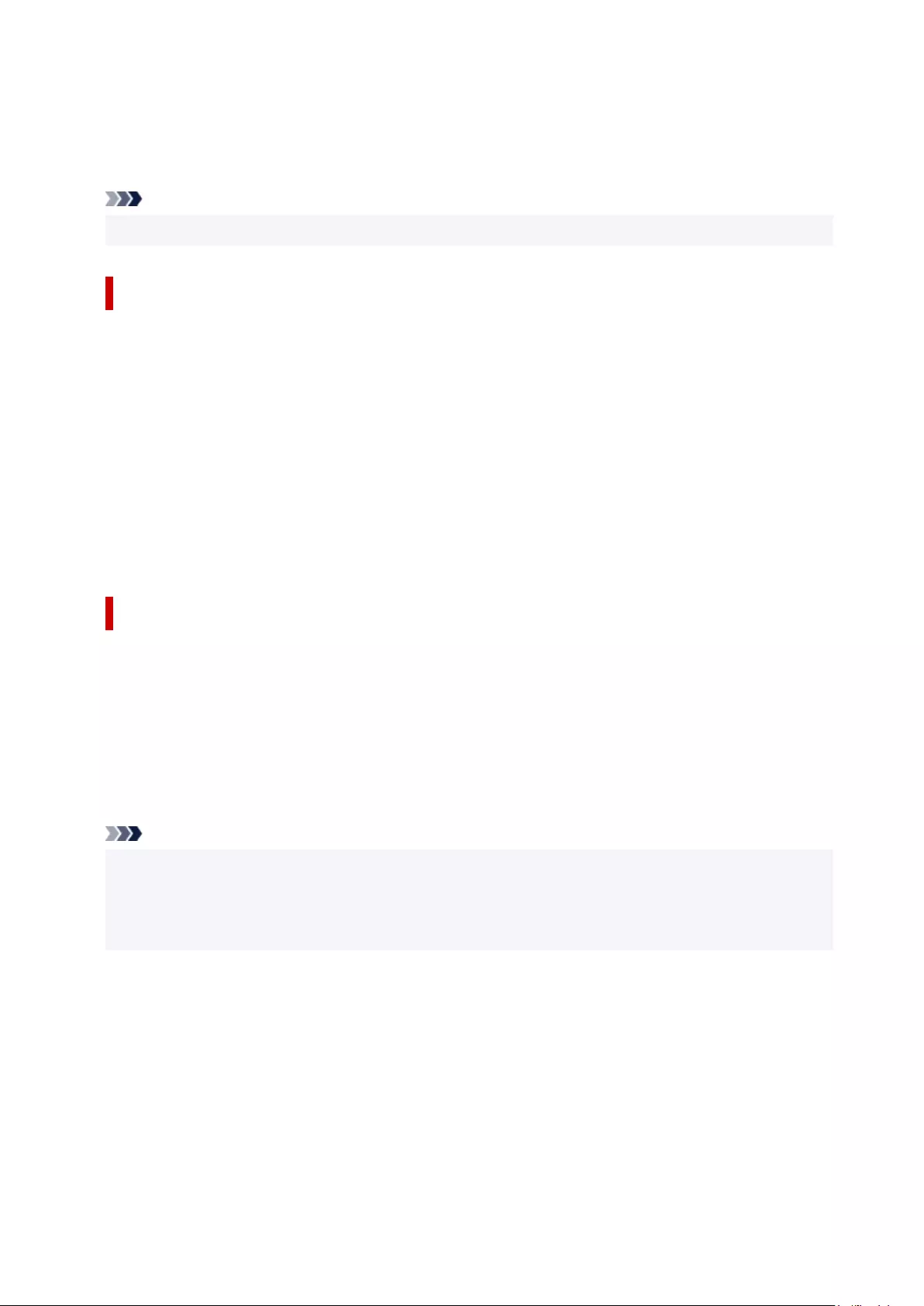
In Name, enter the name of the favorite. Set the Icon and Comment fields as necessary, and then
click OK.
The name and the icon appear in the Favorites list.
To check the settings of the registered favorite, click Settings Details.
Note
• To save the settings of the favorite to a file, click Export... on the Favorites tab.
Printing Using Favorite Settings
1. Open the printer driver setup window
1.
2. Apply favorite
2.
From the Favorites list on the Favorites tab, select the favorite you want to use.
Click Apply Favorite to replace the registered print settings.
3. Complete the setup
3.
Click OK.
When you print, the document is printed with the settings of the registered favorite.
Deleting Unnecessary Printing Profile
1. Select favorite to be deleted
1.
Select the favorite you want to delete from the Favorites list on the Favorites tab.
2. Delete setting2.
Click Delete. When the confirmation message appears, click OK.
The selected favorite is deleted from the Favorites list.
Note
• Printing profiles that are registered in the initial settings cannot be deleted.
• The settings of the favorite being applied to the current print settings cannot be deleted. To delete
that favorite, select another favorite from the Favorites list, click Apply Favorite to apply the settings
of that other favorite, and then delete the target favorite.
485
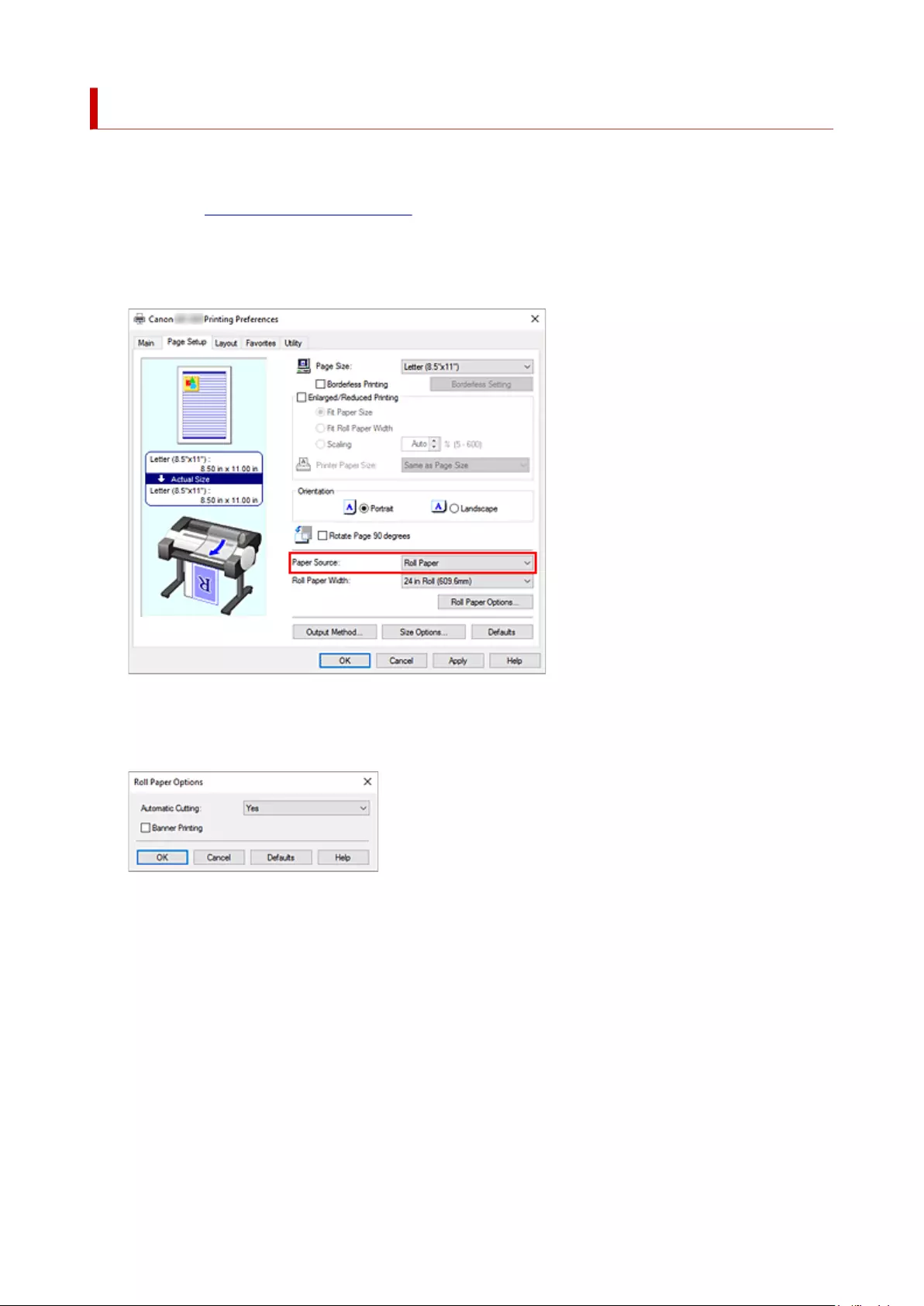
Cutting Roll Paper after Printing
The procedure for cutting roll paper automatically and printing cut guidelines is as follows:
1. Open the printer driver setup window1.
2. Select the paper source
2.
For Paper Source on the Page Setup tab, select Roll Paper.
3. Display Roll Paper Options dialog box
3.
Click Roll Paper Options to display the Roll Paper Options dialog box.
4. Set auto cut
4.
From Automatic Cutting, select the item that matches your purpose.
The current settings are displayed in the settings preview on the left side of the Page Setup tab.
•Yes
•
The roll paper is cut automatically after printing.
•No
•
The roll paper is not cut after printing.
•Print Cut Guideline
•
Cut guidelines are printed for cutting the roll paper manually after printing.
486
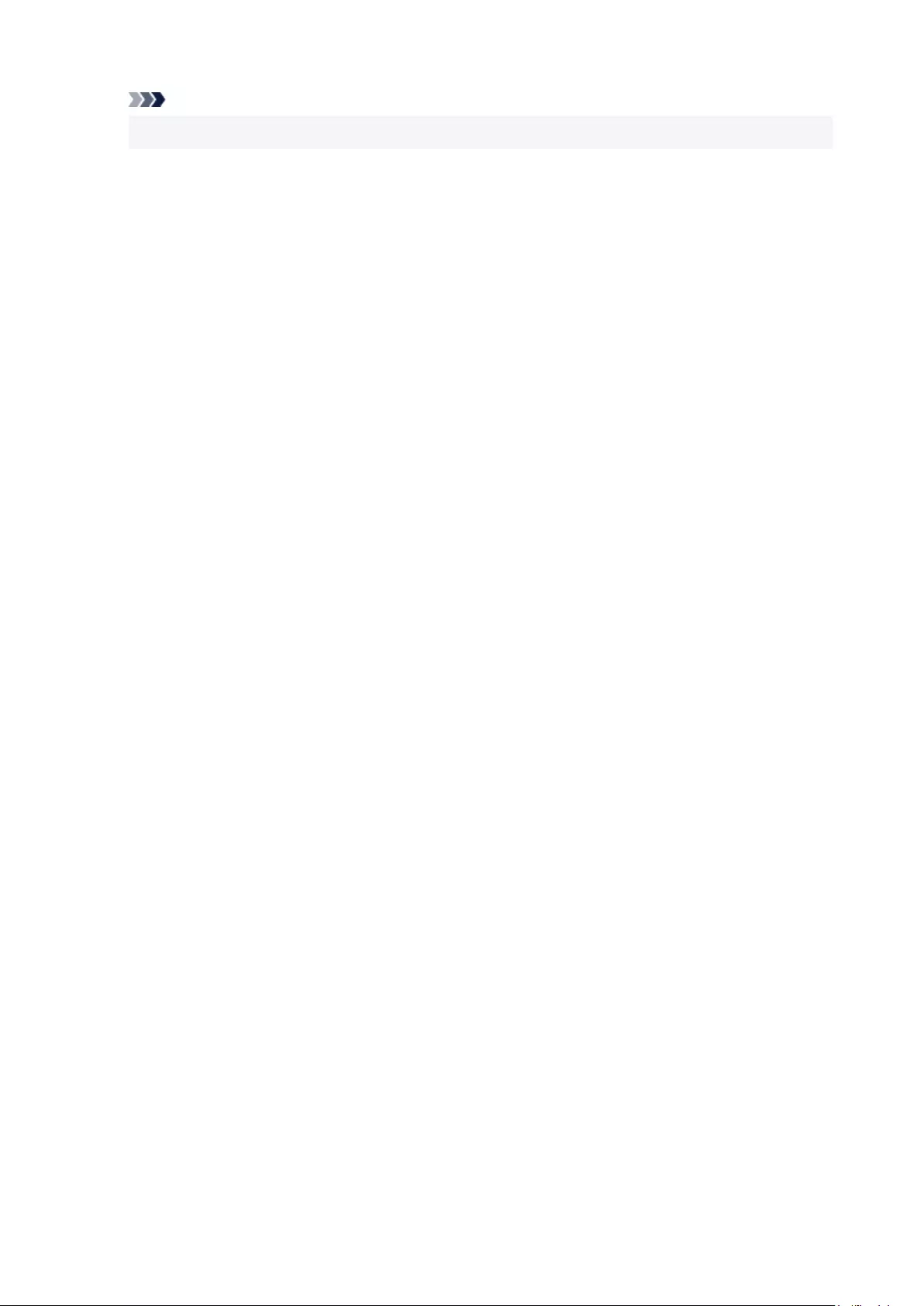
Note
• The default setting for automatic cutting is Yes.
After completing the setting, click OK to return to the Page Setup tab.
5. Complete the setup5.
Click OK on the Page Setup tab.
When you print, the status after printing is set to whatever was set in Automatic Cutting.
487
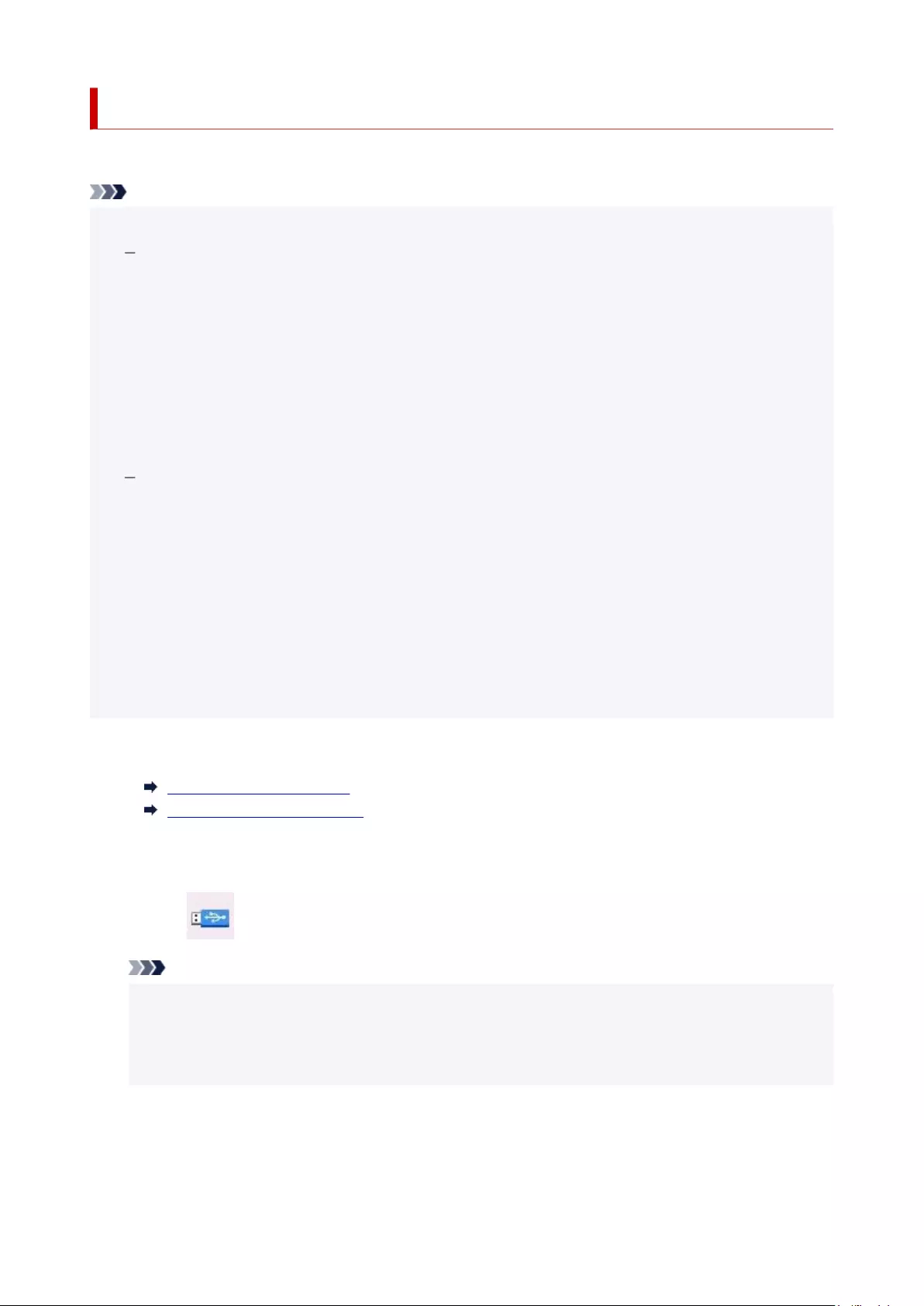
Printing Data Saved on USB Flash Drive
You can print photo data (JPEG file) or document data (PDF file) saved on the USB flash drive easily.
Note
• Restrictions on printable PDF/JPEG files•
PDF file:
Files which conforms to V 1.7
-Does not support overprint or some of transparent processing.
-Font embedding is recommended. If a font is not embedded, it is replaced with one of the built-in
fonts below.
Times-Roman, Helvetica, Courier, Symbol, Times-Bold, Helvetica-Bold, Courier-Bold,
ZapfDingbats, Times-Italic, Helvetica-Oblique, Courier-Oblique, Times-BoldItalic, Helvetica-
BoldOblique, Courier-BoldOblique
JPEG file:
Files which conforms to JFIF 1.02
Supports the files with the following conditions.
-Processing method: Basic DCT
-Color mode: RGB/GrayScale
-Number of colors: 24bit/8bit
-Number of pixels: 38400 or less vertically and horizontally
Does not support some samplings
1. Load paper.1.
Loading Rolls in the Printer
Loading Sheets in the Printer
2. Insert USB flash drive into USB flash drive port.2.
3. Tap on (Print from USB flash drive) displayed on the top right of the HOME screen.
3.
Note
•When the message informing you that the operation restriction is enabled, ask the administrator of
the printer you are using.
•If no printable data is saved on the USB flash drive, There are no files that can be printed. is
displayed on the touch screen.
4. In the list, tap folder or data to print.
4.
Tapping a folder displays the data list. Tap the data to print.
489
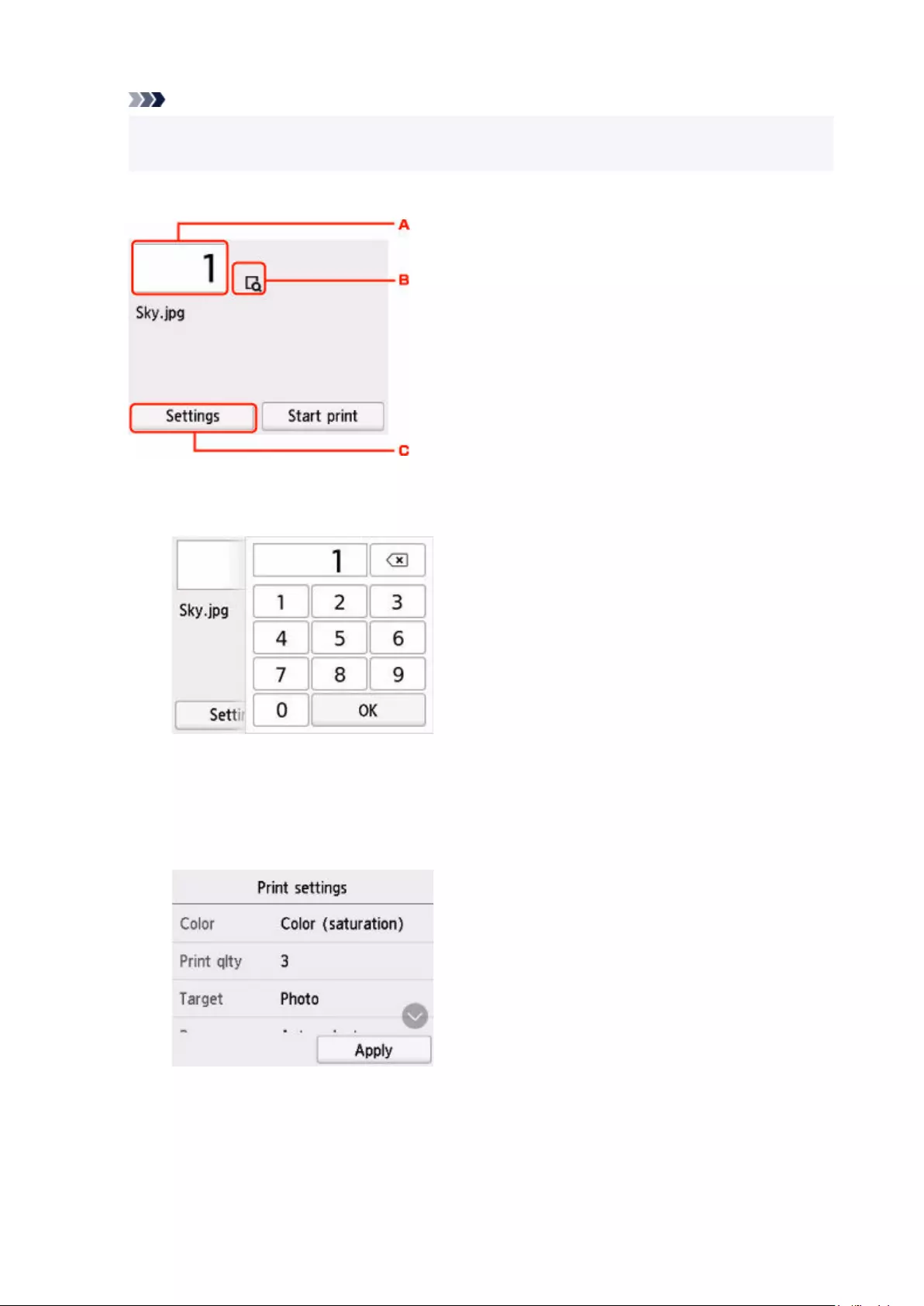
Note
• If no printable data is saved on the folder you tapped, There are no files that can be printed. is
displayed on the touch screen.
The following screen is displayed.
A. Number of copies
A.
Tap to display the screen below and specify the number of copies.
B. PreviewB.
Tap to preview an image of the printout on the preview screen.
C. Settings
C.
Tap to display the Settings screen. You can check and change the print settings.
5. Tap Start print.
5.
The following screen is displayed.
490
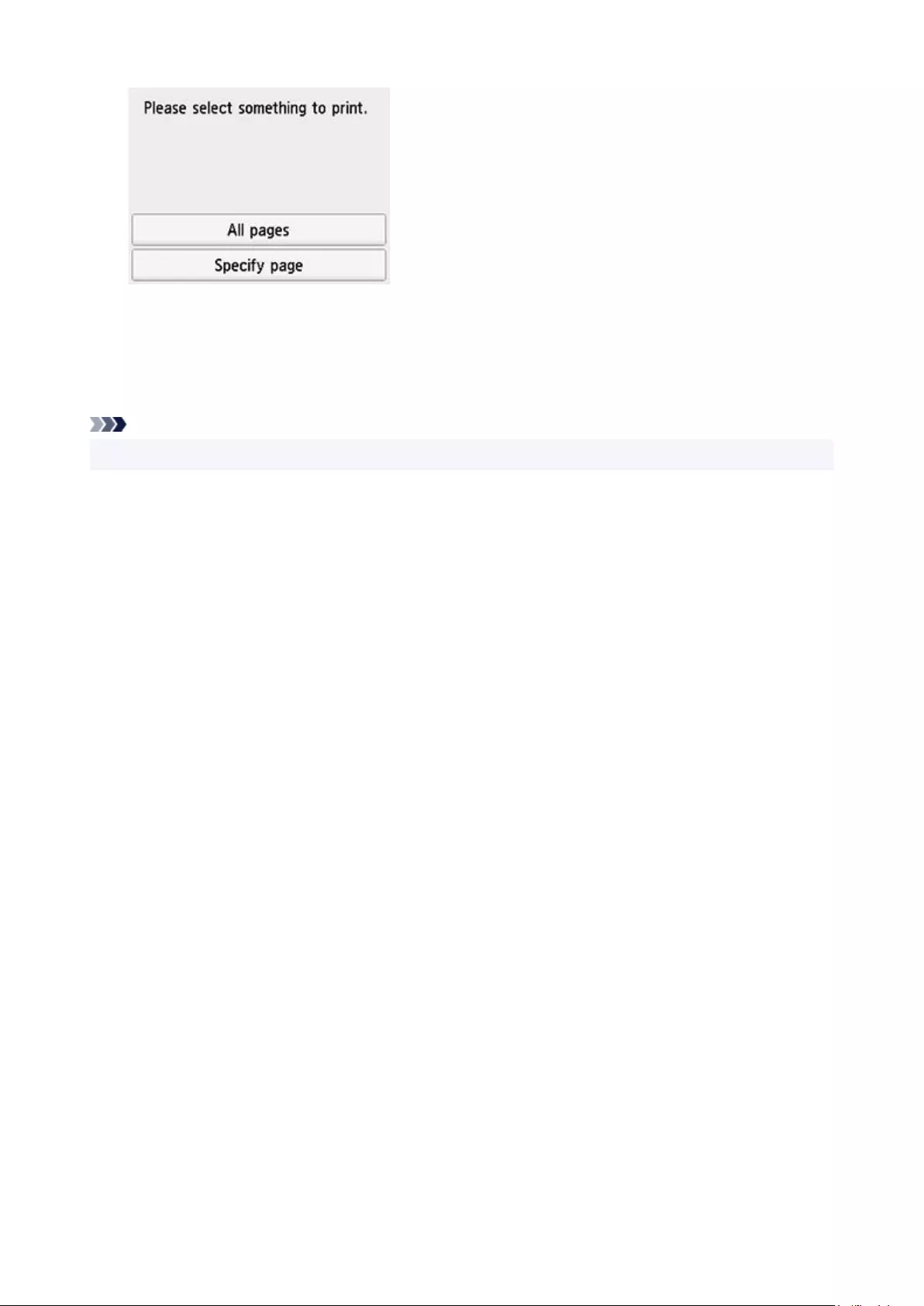
All pages
Tap to start printing all pages.
Specify page
Tap to specify a page to print. Tap OK to start printing the specified page.
Note
• Tapping Yes on the displayed screen returns to step 4. Tapping No returns to HOME screen.
491
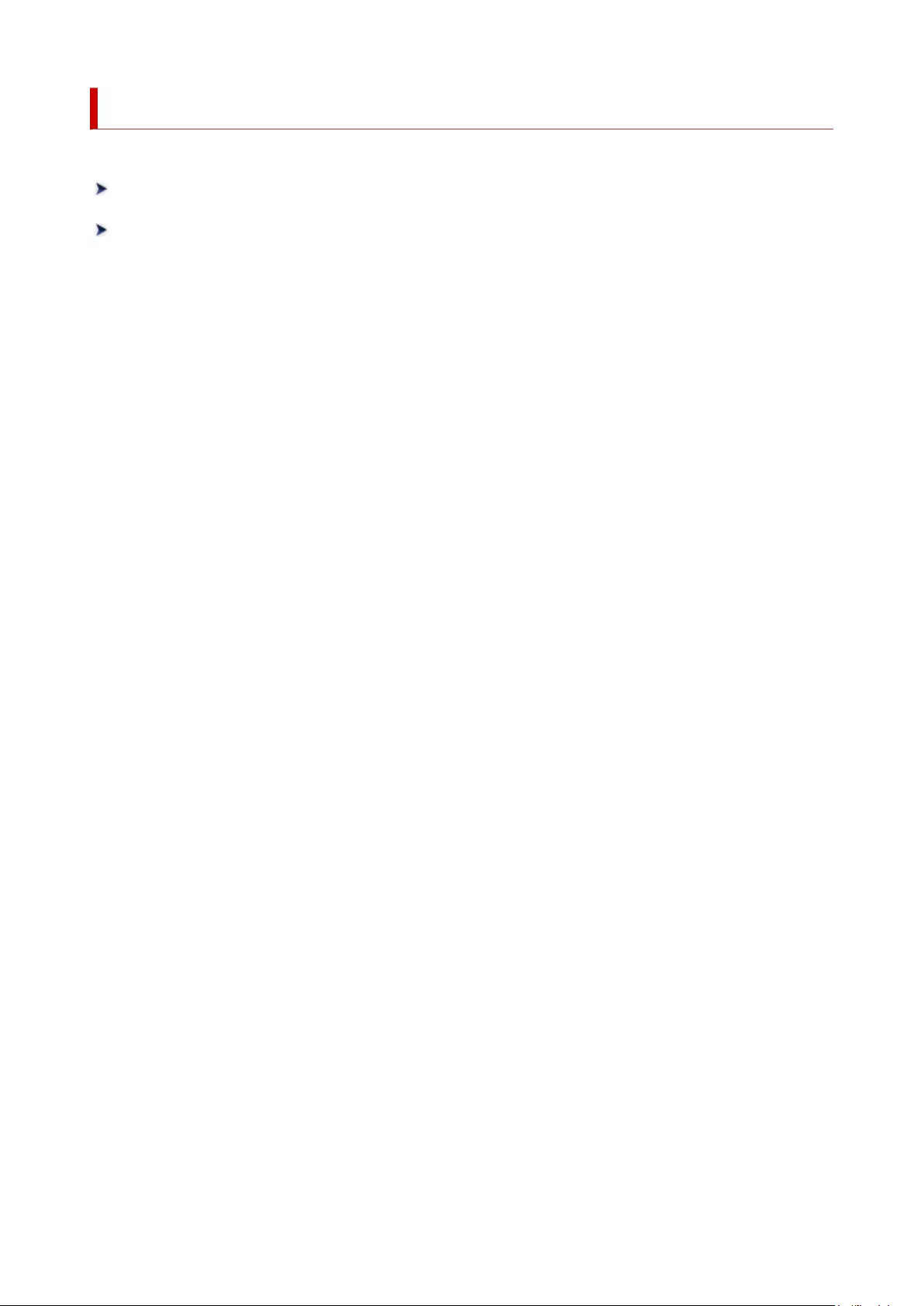
Printing from Smartphone/Tablet
For more on printing from a device, refer to the device's or application's instruction manual.
Print Easily from a Smartphone or Tablet with Canon PRINT Inkjet/SELPHY
Printing from iOS Device (AirPrint)
492
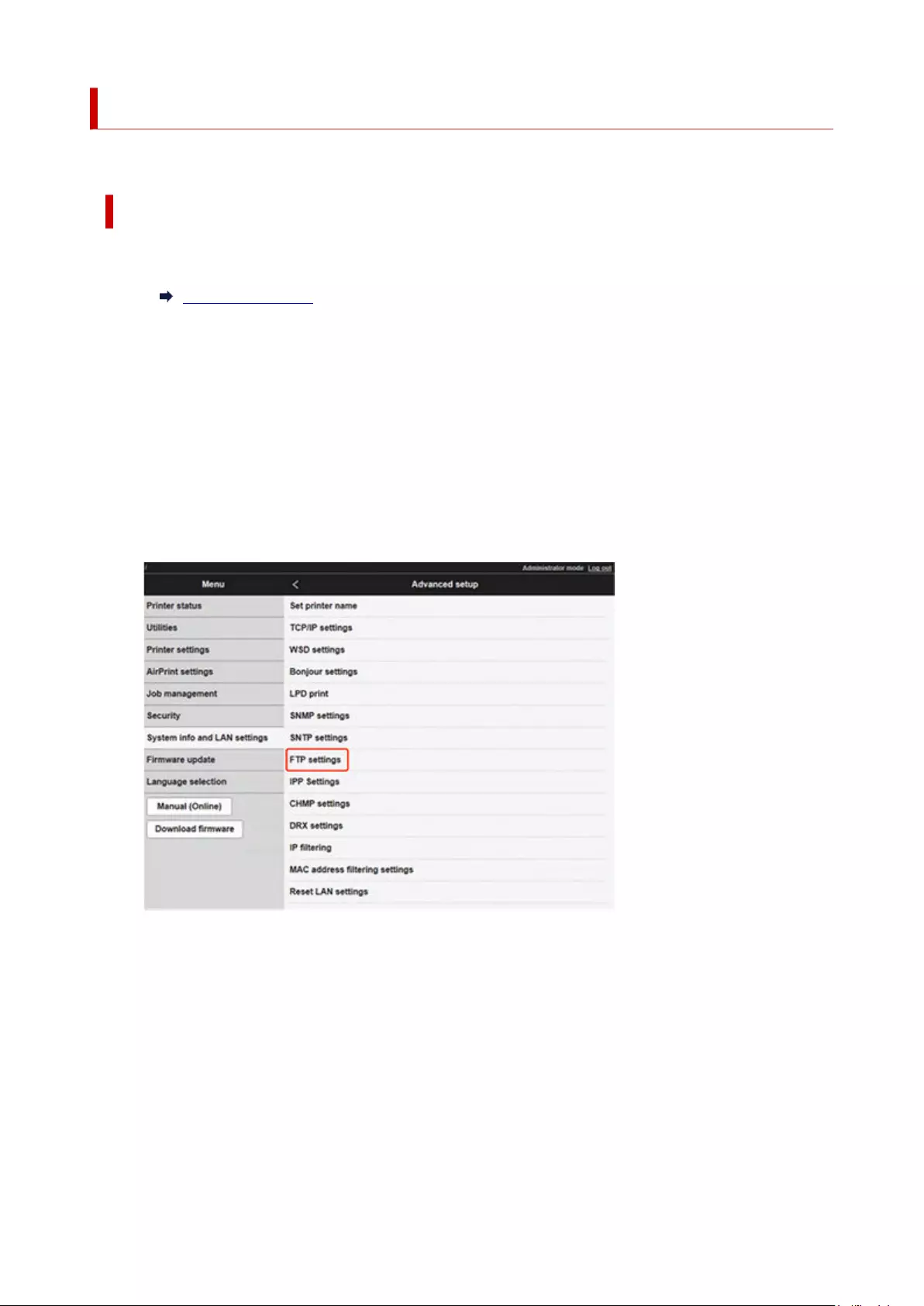
Enlarging Copy with imageRUNNER ADVANCE
Copy scanned with imageRUNNER ADVANCE can be sent to the printer via FTP.
Enable FTP from Remote UI.
1. Start up Remote UI.
1.
Start up Remote UI
2. Select System info and LAN settings.
2.
3. Select LAN settings.
3.
4. Select Advanced setup.
4.
5. Confirm displayed message and tap Yes.
5.
6. Select FTP settings.
6.
7. Select Enable.
7.
493

8. Select Use authentication check box and Set/change password check box, and then
8.
enter a user name and password.
The user name and password you enter in this step are used for FTP authentication.
Enter the same value for FTP settings of imageRUNNER ADVANCE.
9. Select OK.9.
Please wait momentarily appears and returns to the startup screen.
10. Close web browser.10.
Perform enlarge settings on the operation panel.
1. Tap (Setup) on HOME screen.1.
Home Screen Menu Composition
2. Tap Printer settings.
2.
3. Tap Print settings.
3.
4. Tap Direct print settings from FTP.
4.
5. Select the number to set and tap.
5.
494

5. Tap FTP from the Protocol drop-down list.
5.
6. Enter setting items.6.
Enter the printer's IP address as the Host Name.
Note
•We recommend that you set a fixed IP address for your printer.
Enter "./folderN" in Folder Path. ("N" represents the print setting number specified in the Direct print
settings from FTP screen on the printer.) For example, to enter the pathname for Print settings 1,
enter "./folder1". For Print settings 2, enter "./folder2".
Use the same User Name and Password that you set for FTP authentication in the Remote UI.
7. Tap OK.
7.
8. Tap the setting button for file format.
8.
496
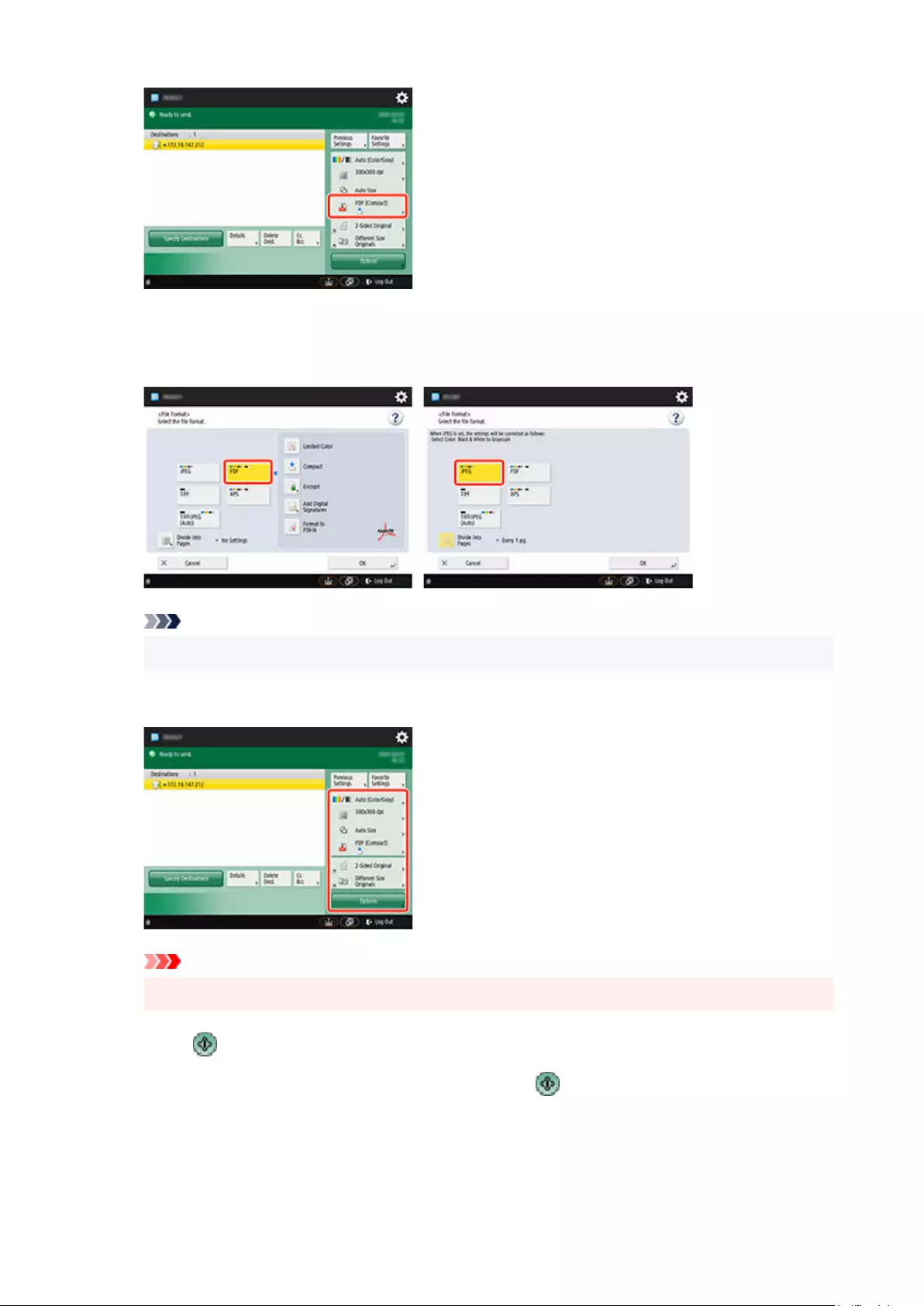
9. Select File Format.
9.
Select PDF or JPEG.
Note
• If you select PDF, remove the check from the Compact and Encrypt check boxes.
10. Specify the settings as necessary.10.
Important
•Select 300x300 dpi or 600x600 dpi as the resolution.
11. Press (Start).
11.
If you are placing your originals on the platen glass, press (Start) to scan each original.
12. When scanning is complete, tap Start Sending.
12.
497
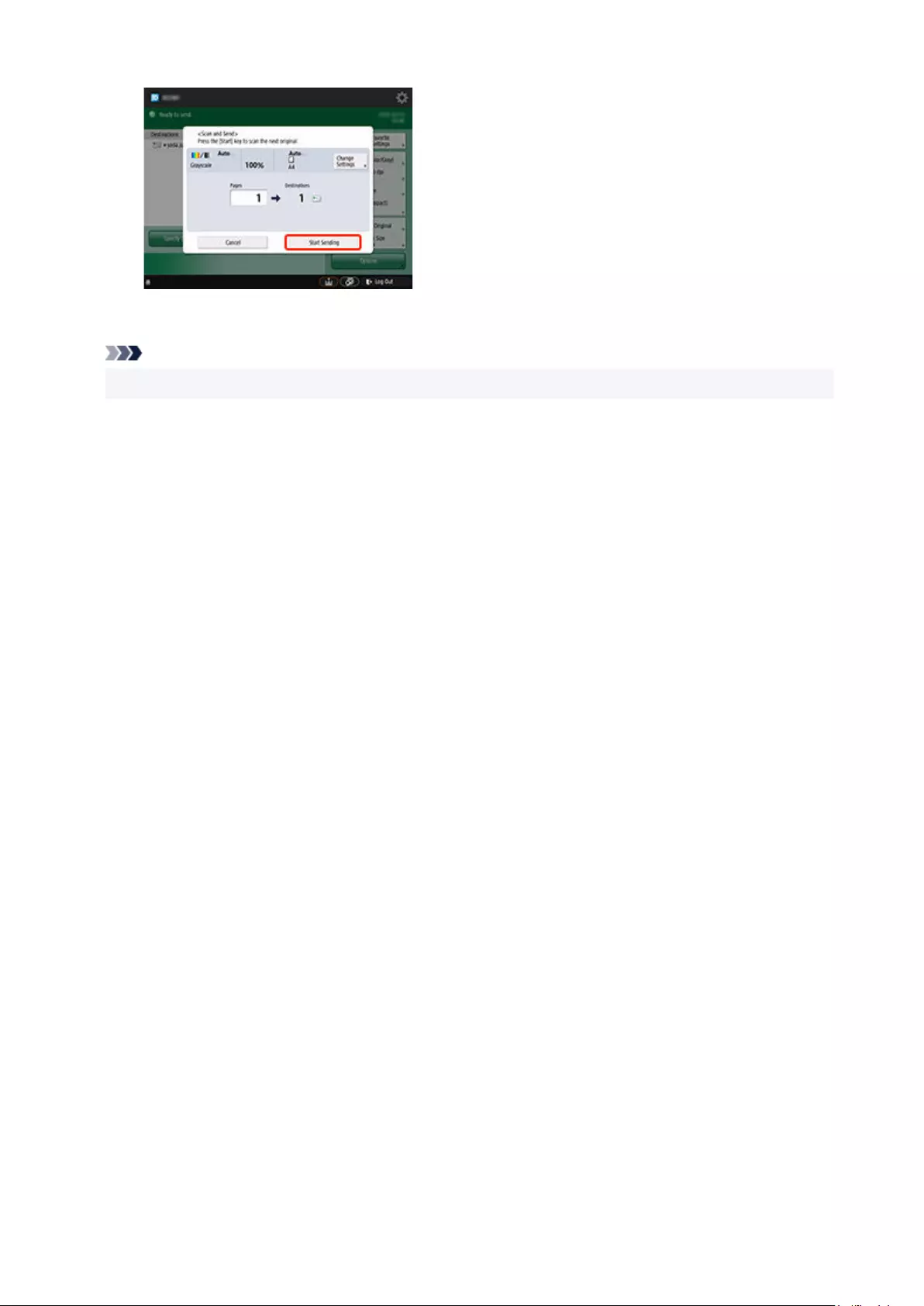
Scanned originals are sent to the printer and printing starts.
Note
• It is recommended to register the setting contents in Favorite Settings.
498
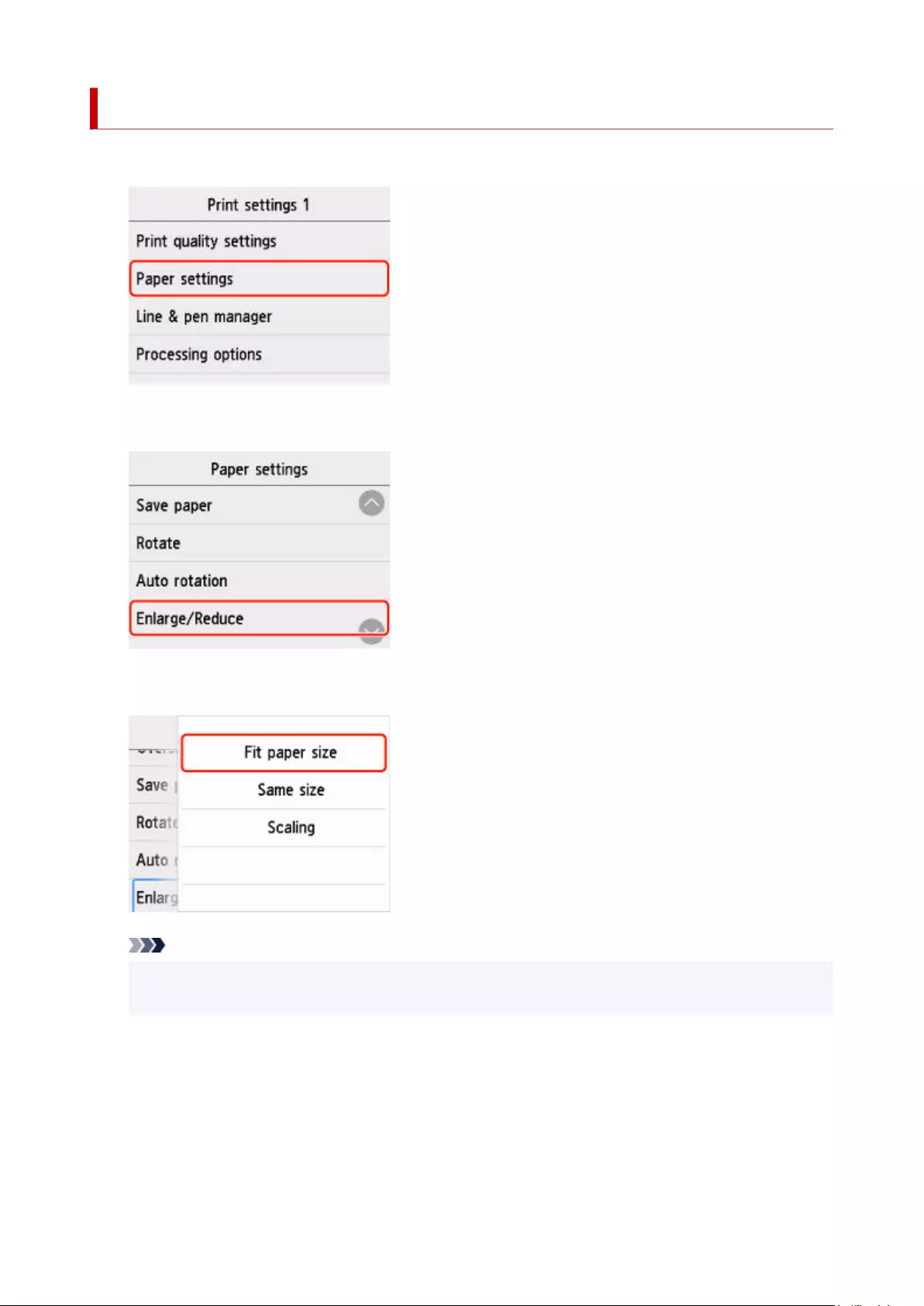
Fitting to Paper Width
1. Tap Paper settings.1.
2. Tap Enlarge/Reduce.
2.
3. Tap Fit paper size.3.
Note
• Change the image quality in Print quality settings if necessary.
• You can specify the orientation of the image from Rotate.
499

Specifying Magnification Level
Setting Input resolution
1. Tap Print quality settings.
1.
2. Tap Input resolution.
2.
Select the input resolution that matches your output requirements.
600 dpi
Select when printing at 600 dpi.
300 dpi
Select when printing at 300 dpi.
Specify print job
Select to match the input resolution of the printer with the scanning resolution when scanning the
original in JPEG format.
Important
• When scanning the original in JPEG format with imageRUNNER ADVANCE, match the
scanning resolution with the input resolution of the printer. If the resolution is different, it will
not be printed at the specified magnification level.
Setting scale percentage
1. Tap Paper settings.
1.
500
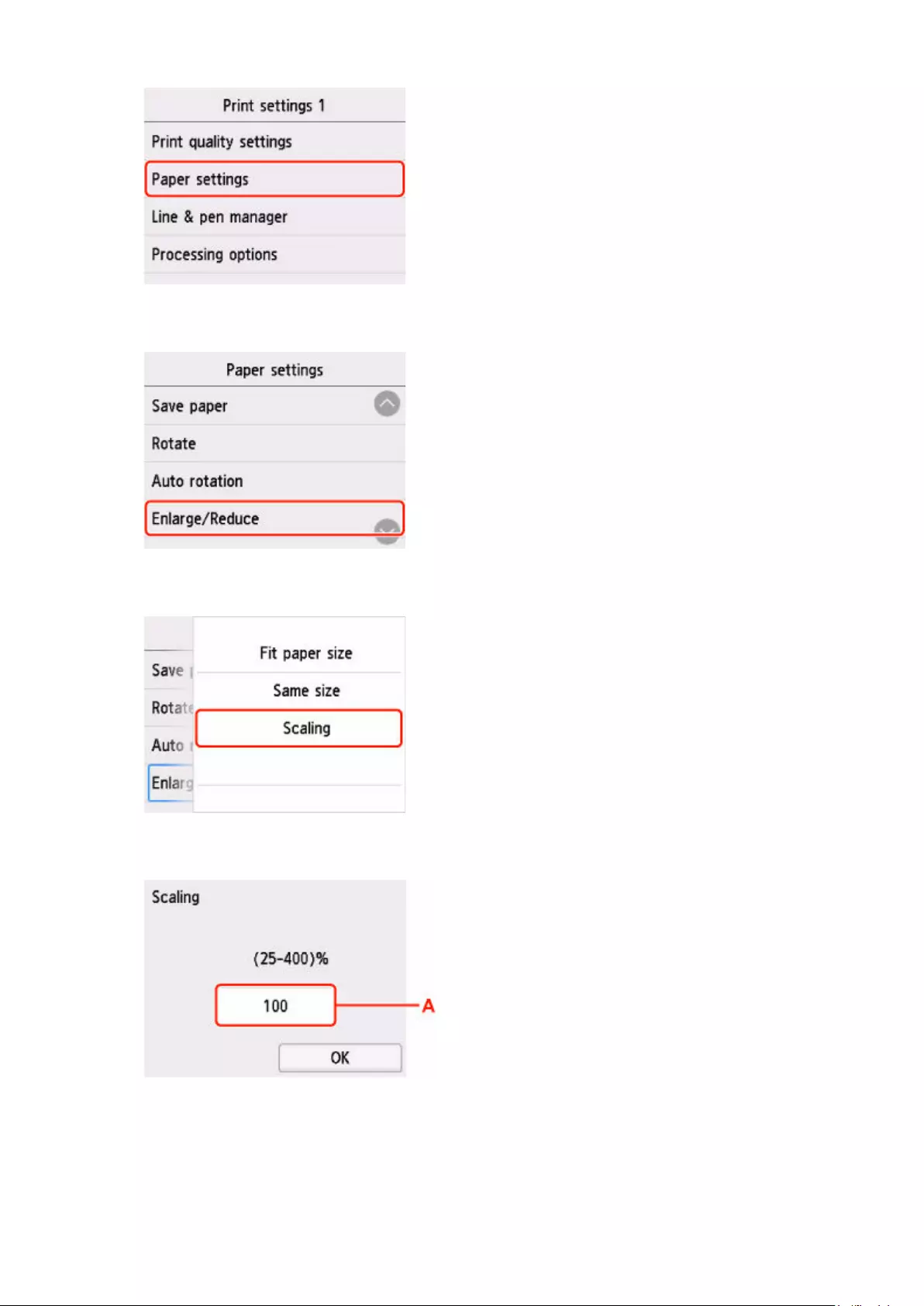
2. Tap Enlarge/Reduce.
2.
3. Tap Scaling.3.
4. Tap A on the displayed screen.4.
5. Enter the scale percentage, and then tap OK.
5.
501
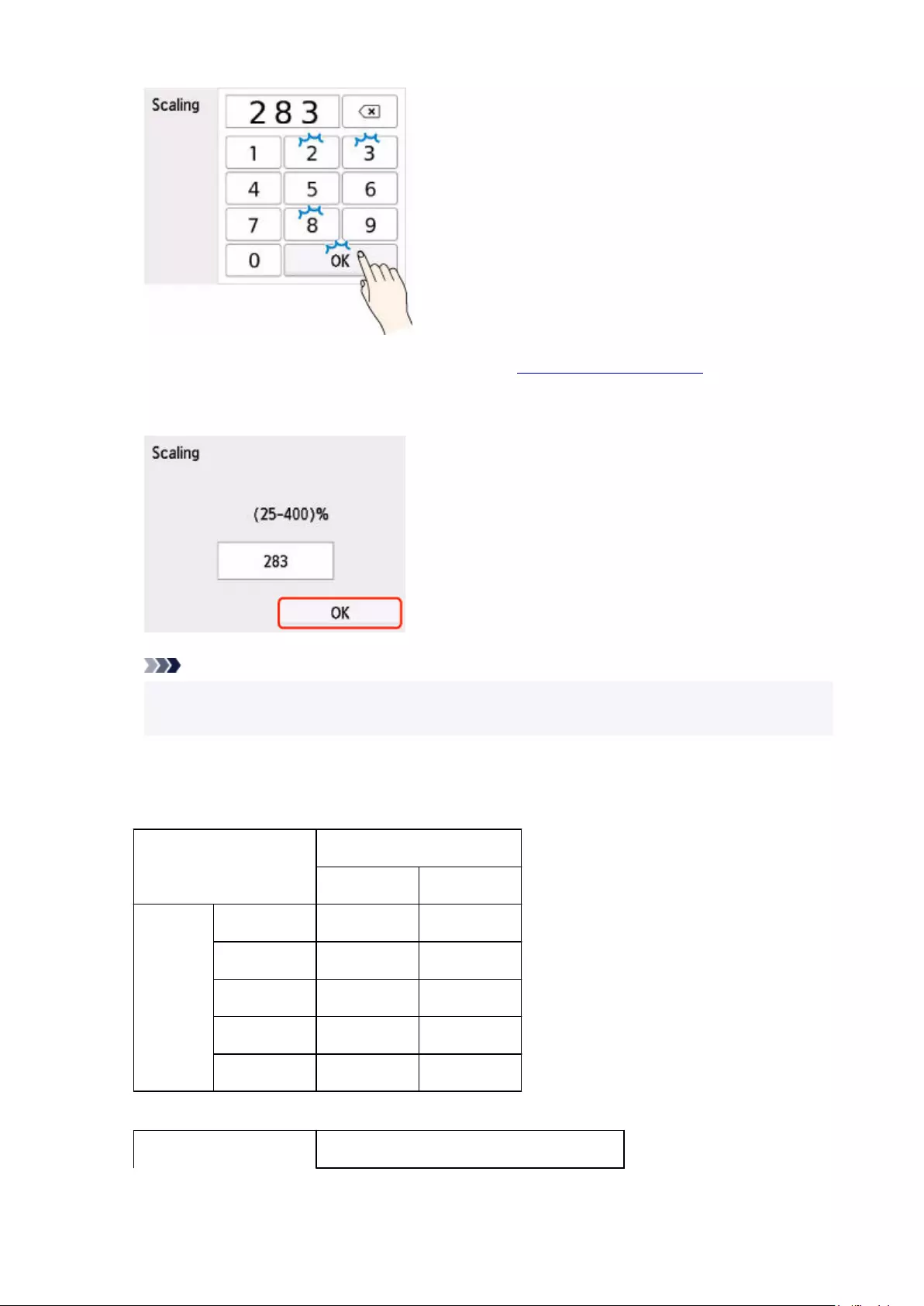
For commonly used magnification conversions, refer to Reference for Magnification.
6. Select OK on the displayed screen.
6.
Note
• Change the image quality in Print quality settings if necessary.
• You can specify the orientation of the image from Rotate.
Reference for Magnification
• ISO A format•
Original size
A4 A3
Output size
A4 100% 71%
A3 141% 100%
A2 200% 141%
A1 283% 200%
A0 400% 283%
• ANSI format•
Original size
502
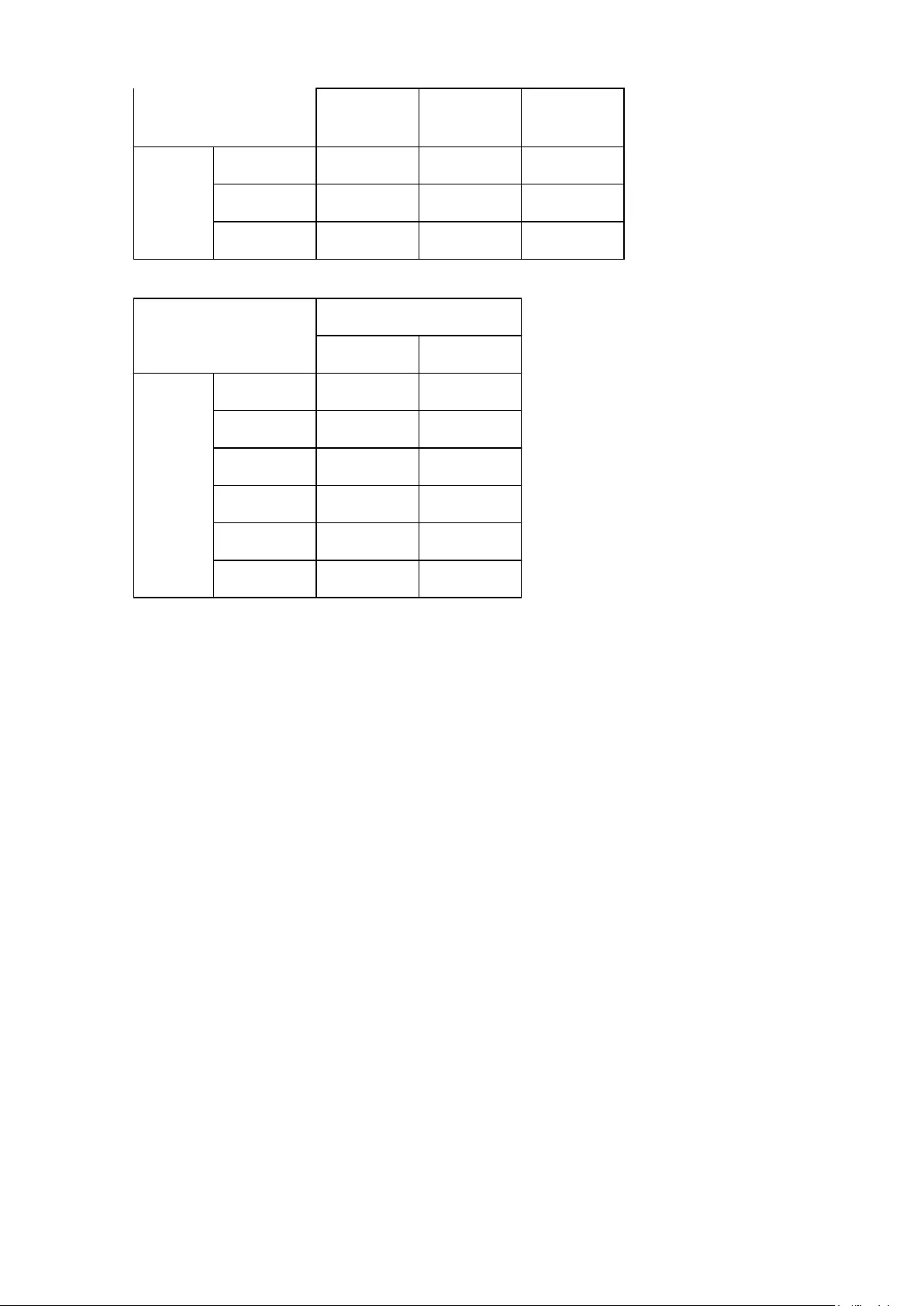
Letter
8.5" x 11"
Legal
8.5" x 14"
Ledger
11" x 17"
Output size
C 200% 157% 129%
D 258% 242% 200%
E 400% 314% 258%
• ARCH format•
Original size
A B
Output size
A 100% 66%
B 133% 100%
C 200% 133%
D 266% 200%
E 400% 266%
E1 333% 233%
503
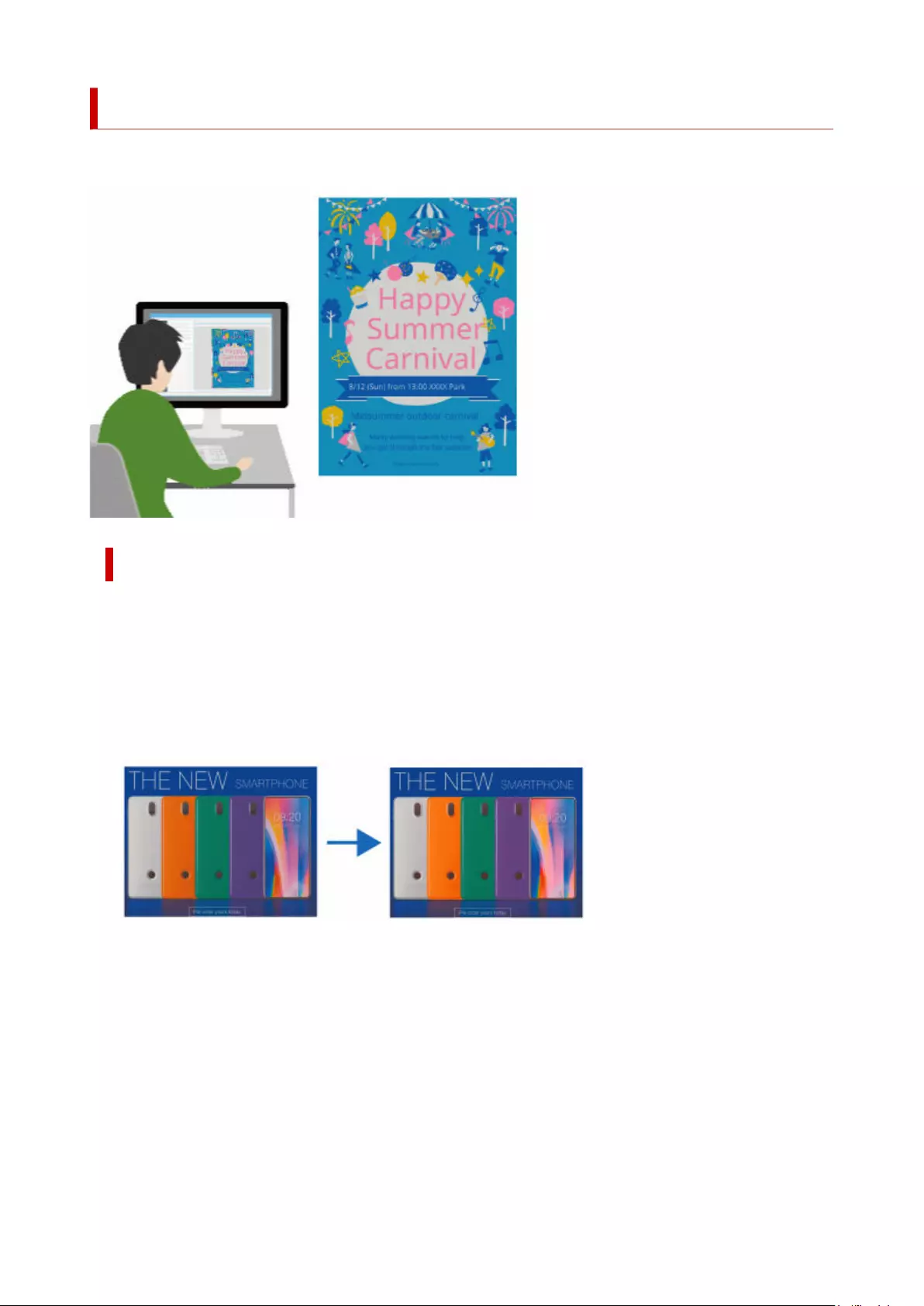
Printing with Fluorescent Ink
Create items such as posters in bright and vivid color tones using fluorescent ink.
Using Vivid Color Tones
There are two ways to make your item vivid.
Printing the Entire Item Vividly (Vivid mode)
Make all warm colors bright and vivid.
This is recommended when a photo or illustration contains multiple warm colors such as pink and
orange.
Printing Colors of Specific Areas Vividly (Spot mode)
Make specific colors bright and vivid using pink or orange fluorescent ink.
This is recommended when you want to enhance text or shapes.
504
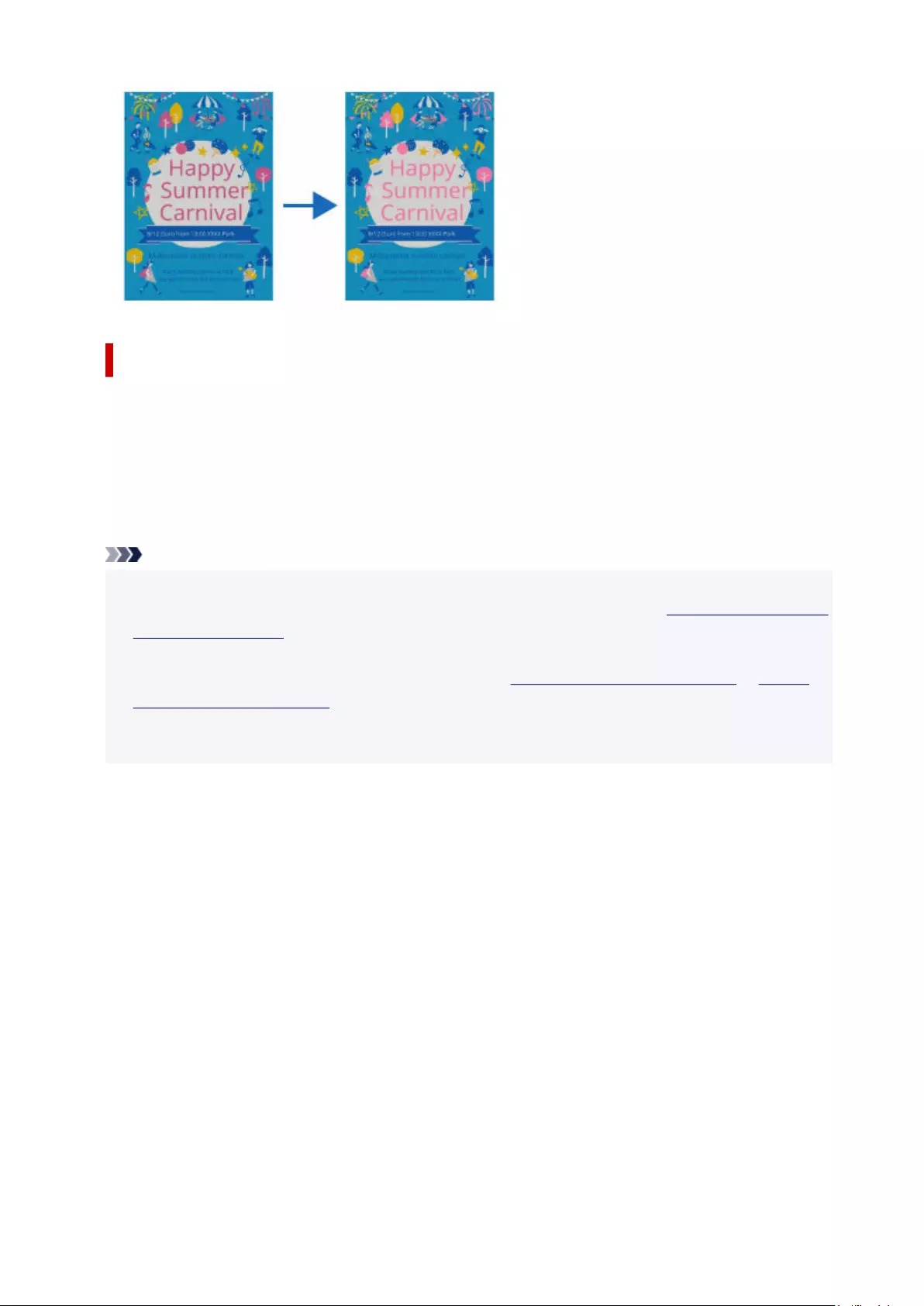
Creating Vivid Items
In Windows, you can use PosterArtist, an application for creating professional-looking posters even
without professional knowledge or technique; simply select a design from a variety of templates and then
insert and edit text, photos, clipart, and other materials.
Use PosterArtist to quickly create a bright and vivid item by selecting a template and specifying colors for
text and shapes. There is also a function for previewing only the area that will be vivid. For details, see
Creating Vivid Posters Using Fluorescent Colors.
Note
• Even for items you created in your application, you can use PosterArtist to make them vivid by
specifying pink or orange fluorescent ink for specific portions. For details, see Link with PosterArtist to
print with bright colors.
• You can also open the printer driver from your application and specify the setting for making color
tones vivid in the print settings screen. For details, see Printing By Setting Print Purpose or Specify
Fluorescent Colors and Print.
• If using macOS, create an item in your application, and then see Printing with Easy Setup or Specify
Fluorescent Colors and Print and print.
505

Overview of the Printer Driver
Canon IJ Printer Driver
Changing the Print Options
Canon imagePROGRAF Preview
How to Open the Printer Driver Setup Window
Updating Media Information in Printer Driver
Setting Accounting Information
Set a PIN Code for Print Jobs
Deleting the Undesired Print Job
Canon IJ Status Monitor
Instructions for Use (Printer Driver)
508

Canon IJ Printer Driver
The Canon IJ printer driver (called printer driver below) is a software that is installed on your computer for
printing data with this printer.
The printer driver converts the print data created by your application software into data that your printer can
understand, and sends the converted data to the printer.
Because different models support different print data formats, you need a printer driver for the specific
model you are using.
Installing the Printer Driver
To install the printer driver, install the driver from the Setup CD-ROM or our website.
Specifying the Printer Driver
To specify the printer driver, open the Print dialog box of the application software you are using, and
select "XXX" (where "XXX" is your model name).
Displaying the Manual from the Printer Driver
To display a description of a tab in the printer driver setup window, click the Help button found on the tab.
Related Topic
How to Open the Printer Driver Setup Window
509
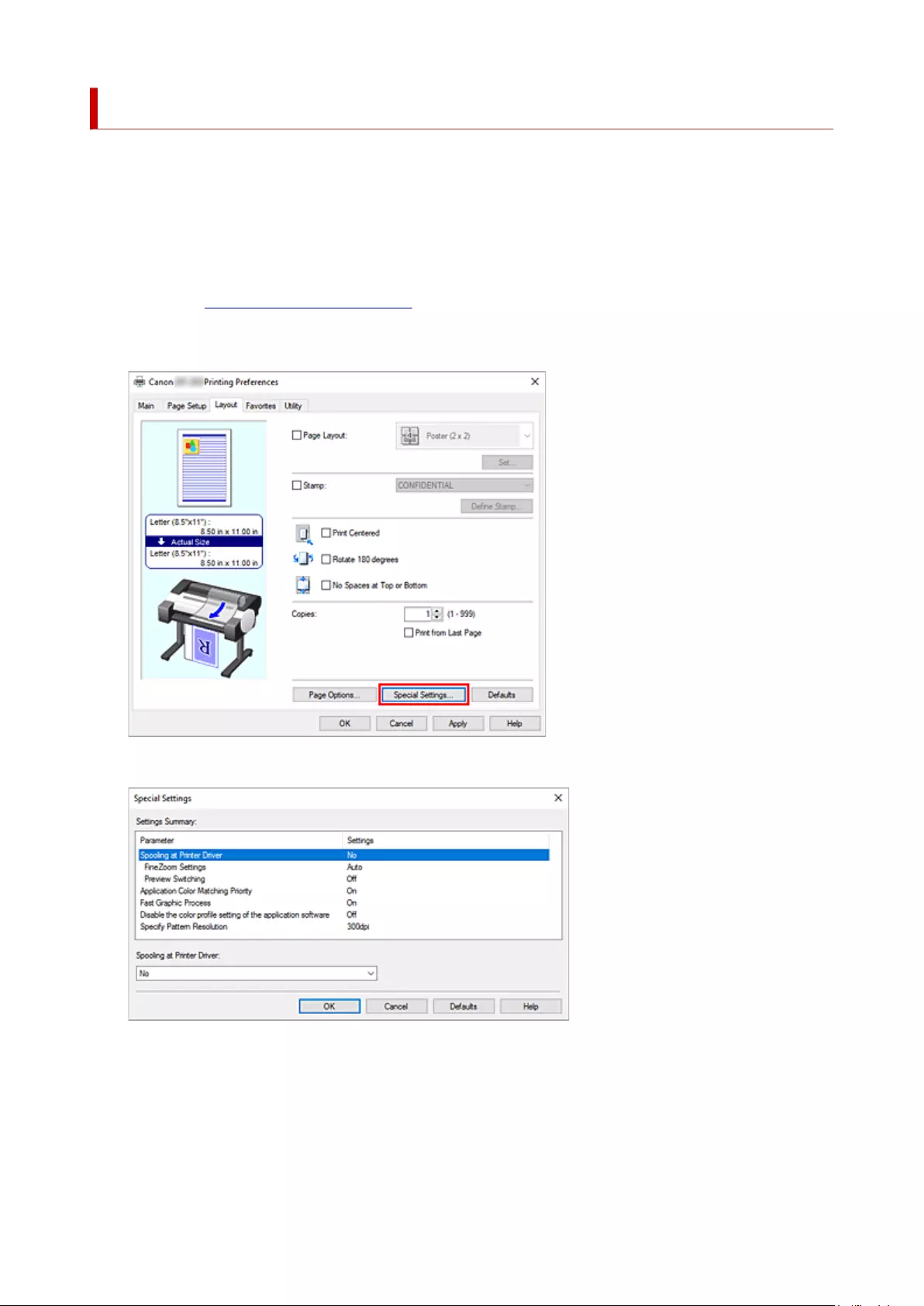
Changing the Print Options
You can change the detailed printer driver settings for print data that is sent from an application software.
Check this check box if part of the image data is cut off, the paper source during printing differs from the
driver settings, or printing fails.
The procedure for changing the print options is as follows:
1. Open the printer driver setup window
1.
2. Click Special Settings... on the Layout tab
2.
The Special Settings dialog box opens.
3. Change the individual settings
3.
If necessary, change the setting of each item, and then click OK.
The Layout tab is displayed again.
510
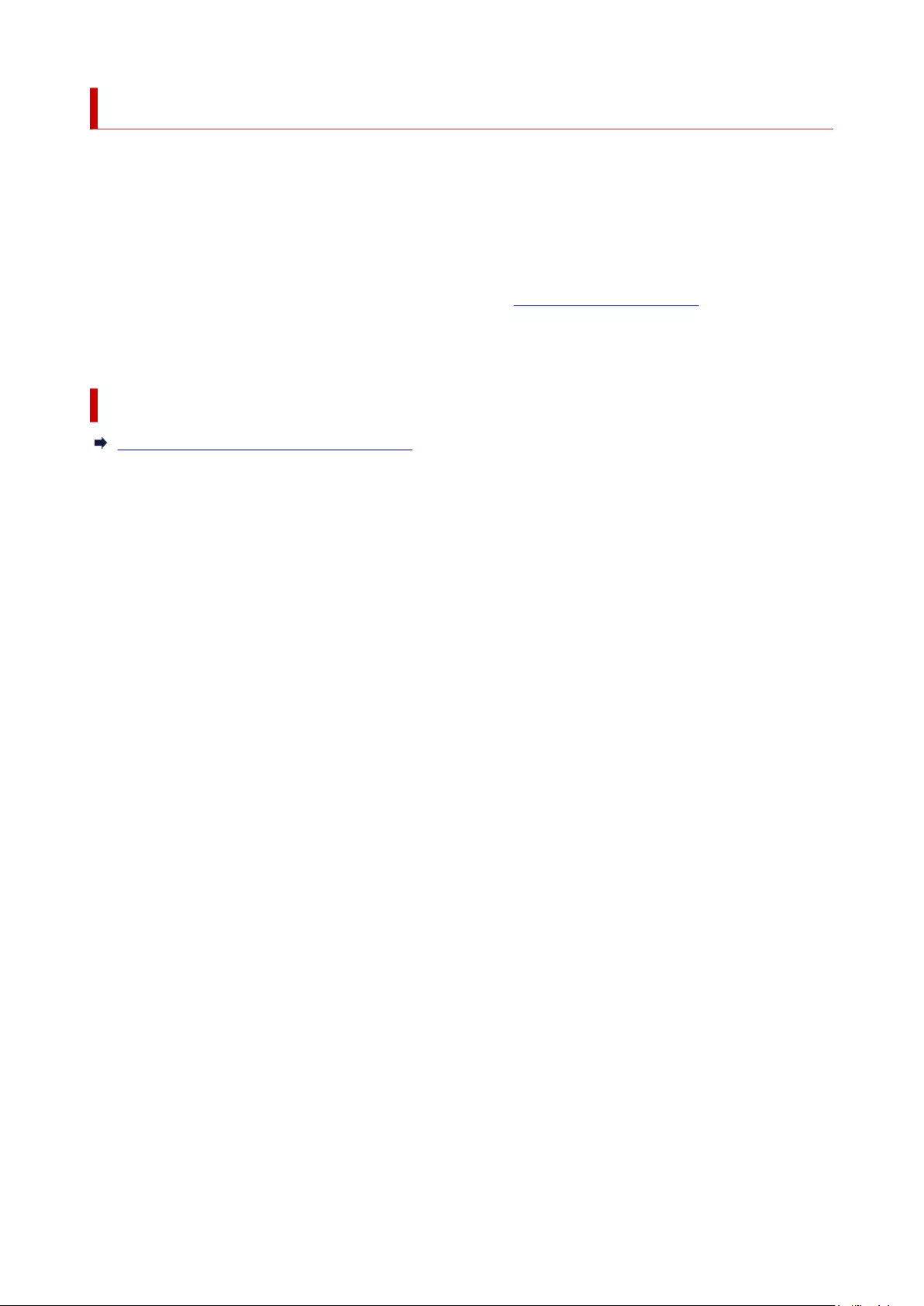
Canon imagePROGRAF Preview
The Canon imagePROGRAF Preview is an application software that displays what the print result will look
like before a document is actually printed.
The preview reflects the information that is set within the printer driver and allows you to check the
document layout, print order, and number of pages. You can also change the media type and paper source
settings.
When you want to display a preview before printing, open the printer driver setup window, click the Main
tab, and check the Preview before printing check box.
When you do not want to display a preview before printing, uncheck the check box.
Related Topic
Displaying the Print Results before Printing
511
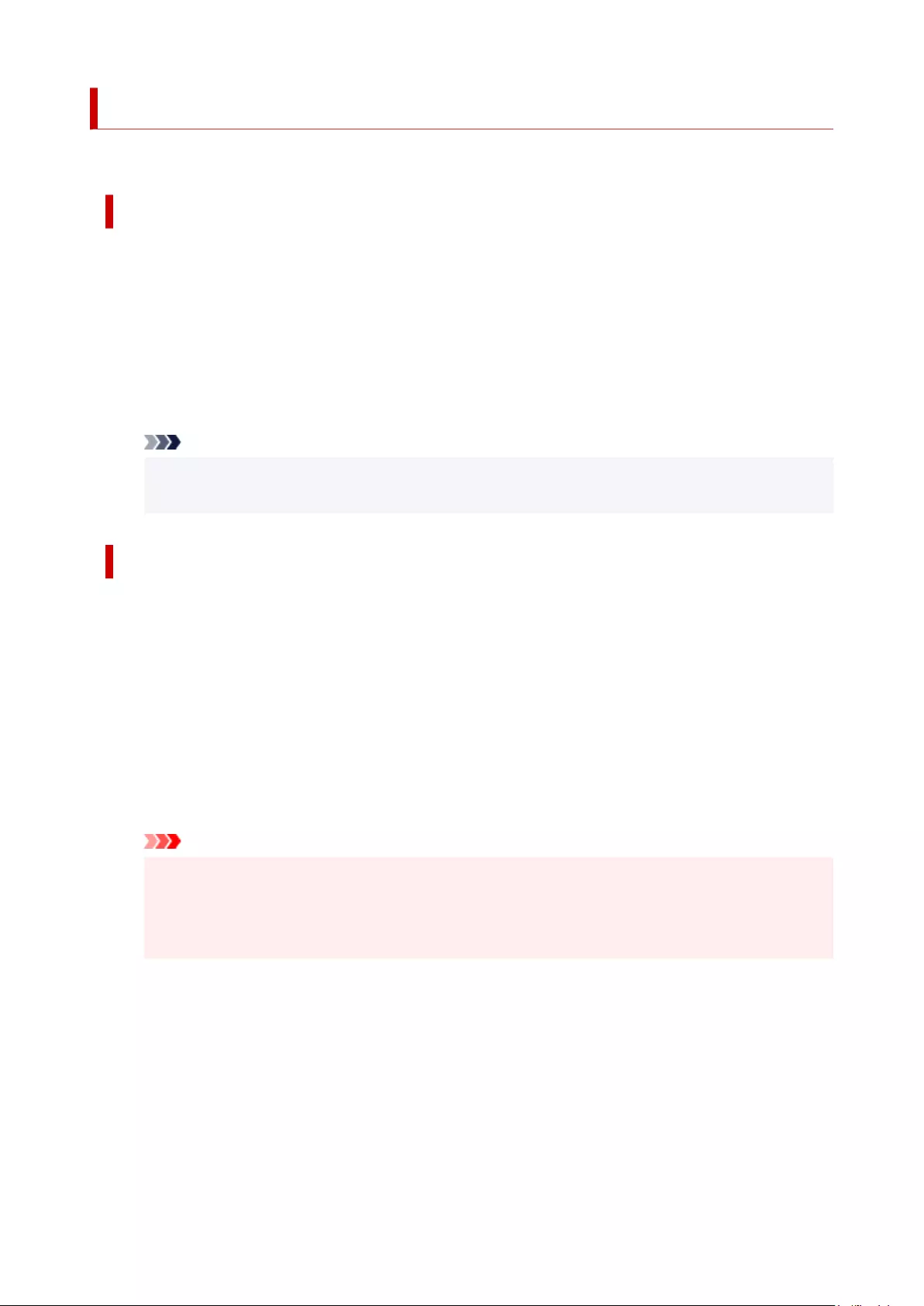
How to Open the Printer Driver Setup Window
You can display the printer driver setup window from the application software in use or from the printer icon.
Open the Printer Driver Setup Window through the Application Software
Follow the procedure below to configure printing profile when printing.
1. Select the command that you perform printing on the application software
1.
In general, select Print on the File menu to open the Print dialog box.
2. Select your model name and click Preferences (or Properties)
2.
The printer driver setup window appears.
Note
•Depending on application software you use, command names or menu names may vary and
there may be more steps. For details, refer to the user's manual of your application software.
Opening the Printer Driver Setup Window from the Printer Icon
Follow the procedure below to perform printer maintenance operations such as print head cleaning, or to
configure a printing profile that is common to all application software.
1. Display the Devices and Printers window1.
Select the Control Panel -> Hardware and Sound (Hardware) -> Devices and Printers.
2. Right-click your model name icon, and then select Printing preferences from the2.
displayed menu
The printer driver setup window appears.
Important
• Opening the printer driver setup window through Printer properties displays such tabs
regarding the Windows functions as the Ports (or Advanced) tab. Those tabs do not appear
when opening through Printing preferences or application software. For tabs regarding
Windows functions, refer to the user's manual for the Windows.
512
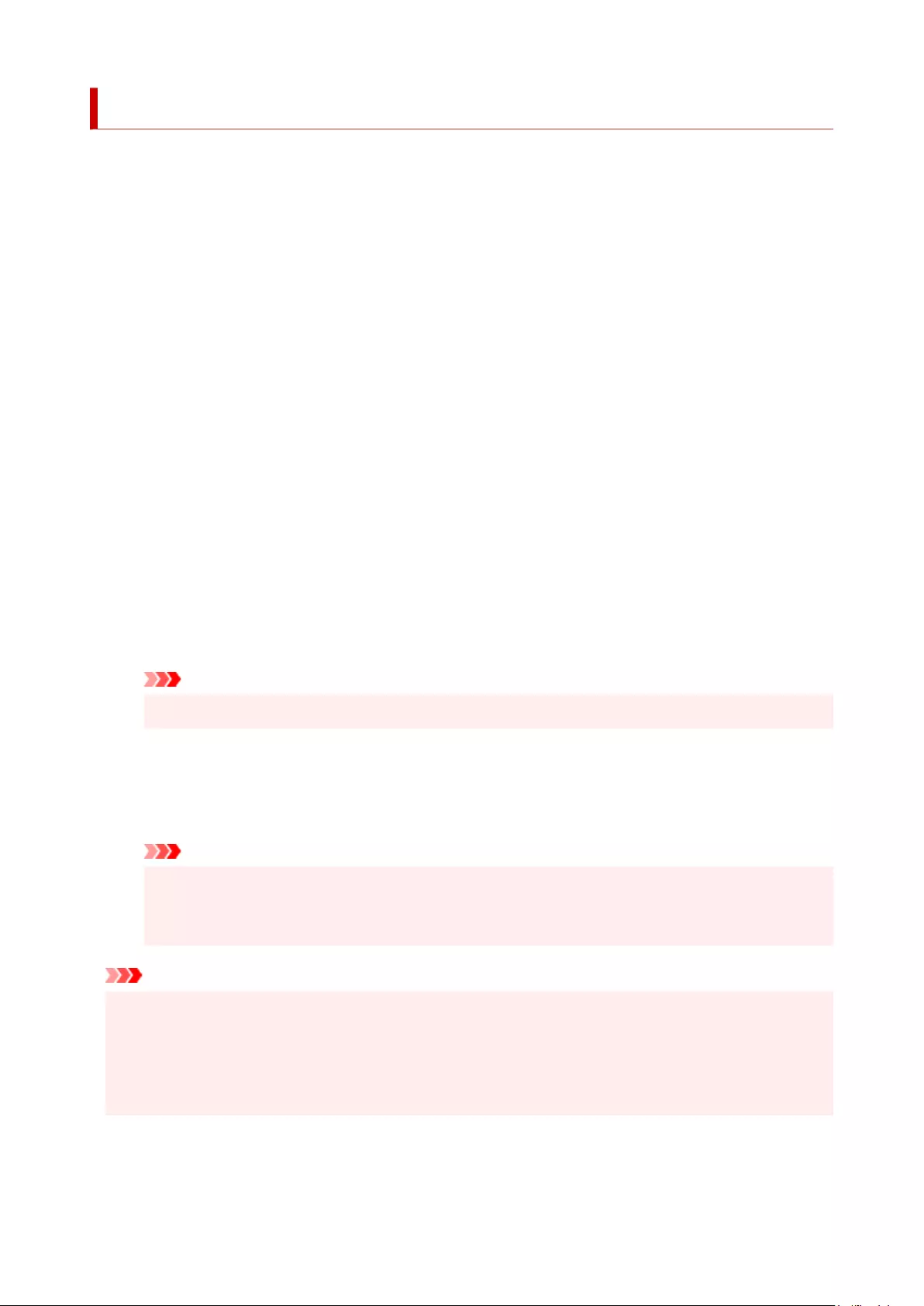
Updating Media Information in Printer Driver
This function gets the latest media information from the printer and updates the media information in the
printer driver.
When the media information is updated, the media displayed for Media Type on the Main tab is updated to
the latest information.
The procedure for updating media information is described below.
1. Display the Devices and Printers window
1.
Select the Control Panel -> Hardware and Sound (Hardware) -> Devices and Printers.
The Devices and Printers window is displayed.
2. Display setup window
2.
Right-click the "Your model name" icon, and select Printer properties.
The printer's Properties window appears.
3. Update media information
3.
Click Update Media Information the Device Settings tab.
When a confirmation message appears, click Start.
If the paper information on the driver cannot be updated, click Initial Check Items and check the
displayed information.
The printer driver media information will update.
Important
• It may take some time to update the media information.
4. Finish updating media information4.
When a confirmation message appears, click OK.
The media information will be updated.
Important
•Restart the printer driver after updating media information.
•Do not change media information on the printer while you are updating media information on
the driver.
Important
• Ensure that a user with administrative privileges carries out the media information update.
Users other than administrators can check if a media information update is required, but cannot carry
out the update itself.
• When you have added, deleted, or edited media using administrative tools (the Media Configuration
Tool) but have not updated the media information, issues may arise such as the inability to print.
513
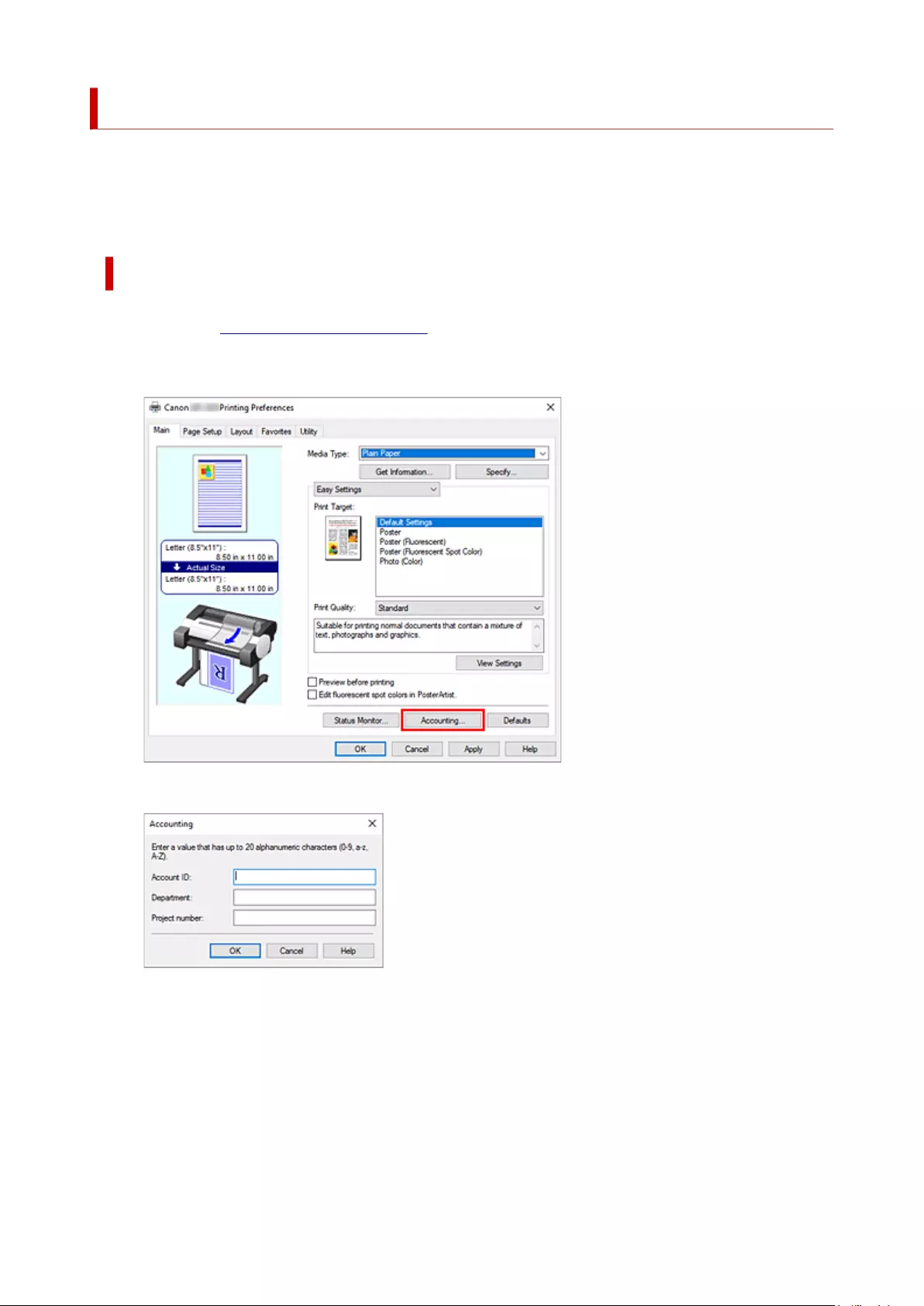
Setting Accounting Information
By setting accounting information, you add IDs to print jobs, and use the printer and cost management tool
to tabulate print history information for any ID.
The procedure for setting accounting information is described below.
Setting Accounting Information
1. Open the printer driver setup window
1.
2. Click Accounting... on the Main tab
2.
The Accounting dialog box opens.
3. If necessary, complete the following settings:
3.
Account ID/Department/Project number
Enter the account ID, department, and project number that you want to set. Enter the ID by using
up to 20 alphanumeric characters (0 to 9, a to z, and A to Z).
514
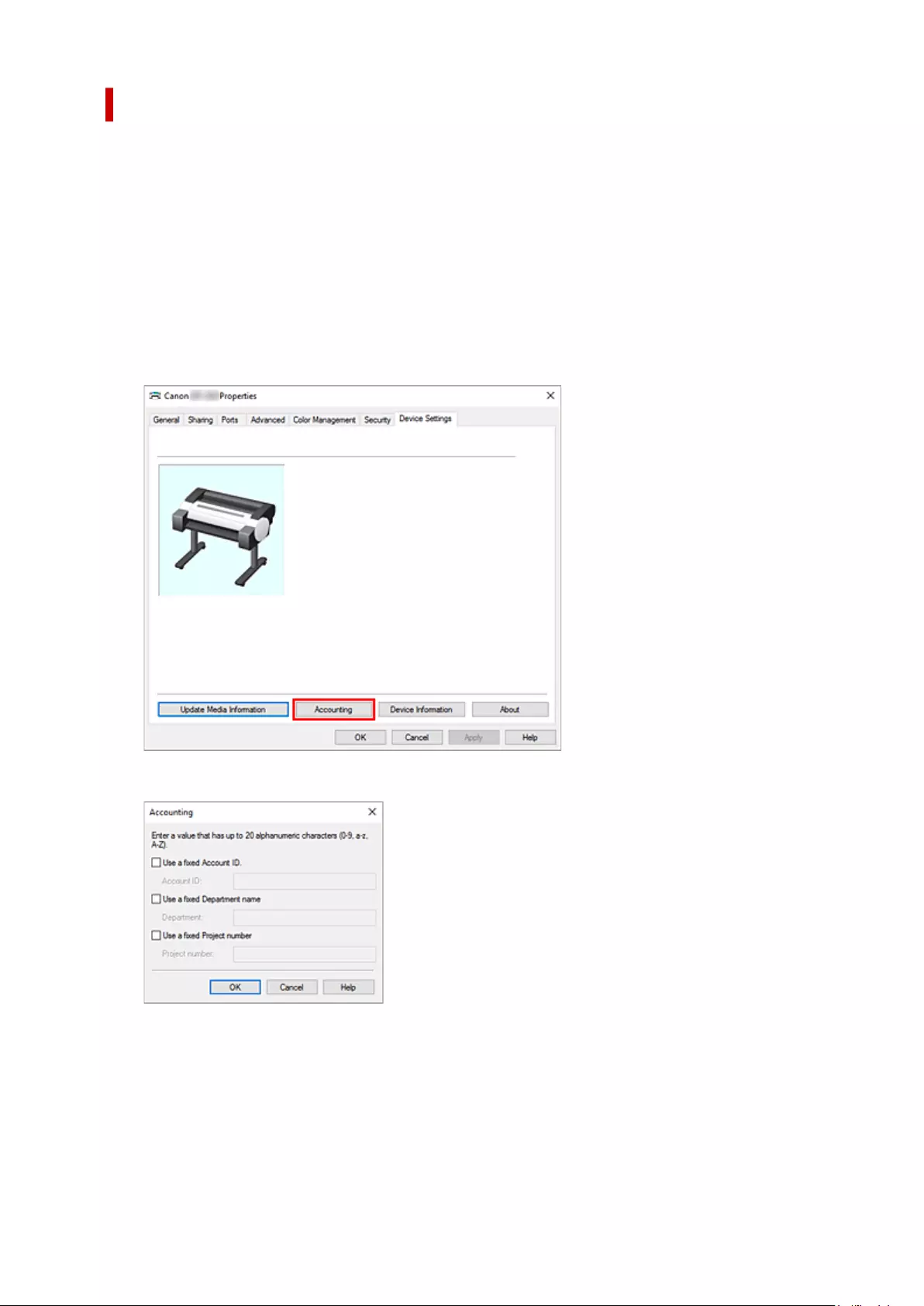
Fix Accounting
1. Display the Devices and Printers window1.
Select the Control Panel -> Hardware and Sound (Hardware) -> Devices and Printers.
The Devices and Printers window is displayed.
2. Display setup window
2.
Right-click the "Your model name" icon, and select Printer properties.
The printer's properties window appears.
3. Click Accounting on the Device Settings tab
3.
The Accounting dialog box opens.
4. If necessary, complete the following settings:
4.
Use a fixed Account ID./Use a fixed Department name./Use a fixed Project number.
Prohibits changes to account ID, department, and project number that have already been set.
Check this check box to prevent other users from changing IDs.
515
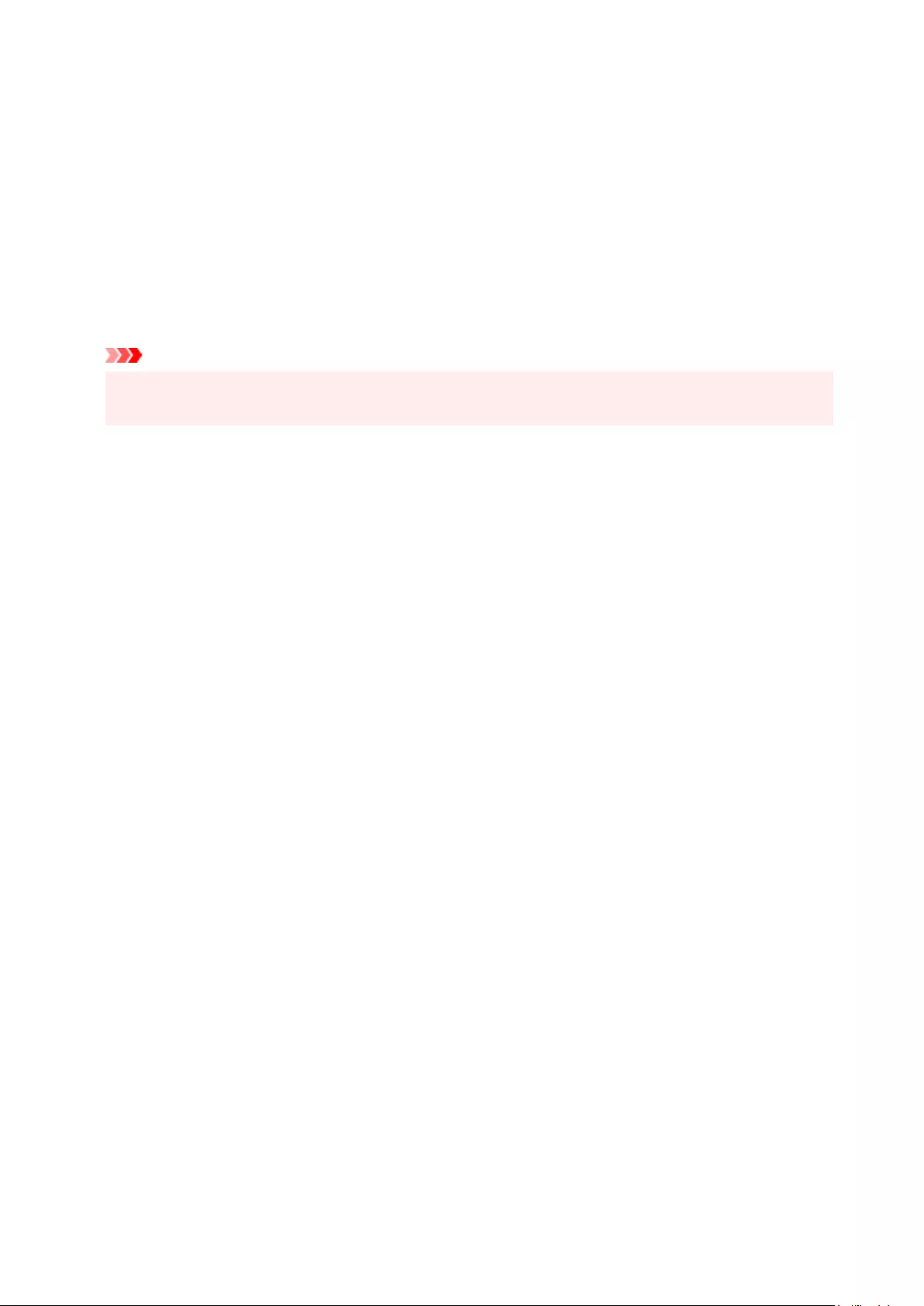
Account ID/Department/Project number
Enter the account ID, department, and project number that you want to set. Enter the ID by
using up to 20 alphanumeric characters (0 to 9, a to z, and A to Z).
If you've added checkmarks to Use a fixed Account ID., Use a fixed Department name., or
Use a fixed Project number., you'll be able to configure each setting.
After completing the setting, click OK to return to the Device Settings tab.
5. Apply the settings5.
Click OK or Apply.
The settings are enabled hereafter.
Important
• If you fix the Accounting value in the Device Settings tab, the setting items in the Accounting dialog
box in the Main tab will be grayed out and disabled.
516

Set a PIN Code for Print Jobs
If you set a PIN code to your print jobs, the print jobs remain in standby status until the PIN code is entered
on the printer operation panel.
As the material is printed immediately after entering the PIN code, issues such as retrieving the wrong
documents and allowing others to peek at your documents can be prevented.
The procedure for setting a PIN code to your print jobs is explained here.
1. Open the printer driver setup window
1.
2. Set the output method
2.
Click Output Method... in the Page Setup tab.
3. Set the PIN code
3.
Place a checkmark next to Set PIN for printing, and enter a one to seven-digit number in PIN.
4. Complete the setup
4.
Click OK.
When you print, the print job is set to standby status on the printer unit.
If you enter the PIN code you set on the printer operation panel, the print job will be printed.
Note
• See "Printing Security Print Jobs" for instructions on how to operate using the printer operation panel.
• Print jobs with a PIN code set are not saved on the printer hard disk.
517
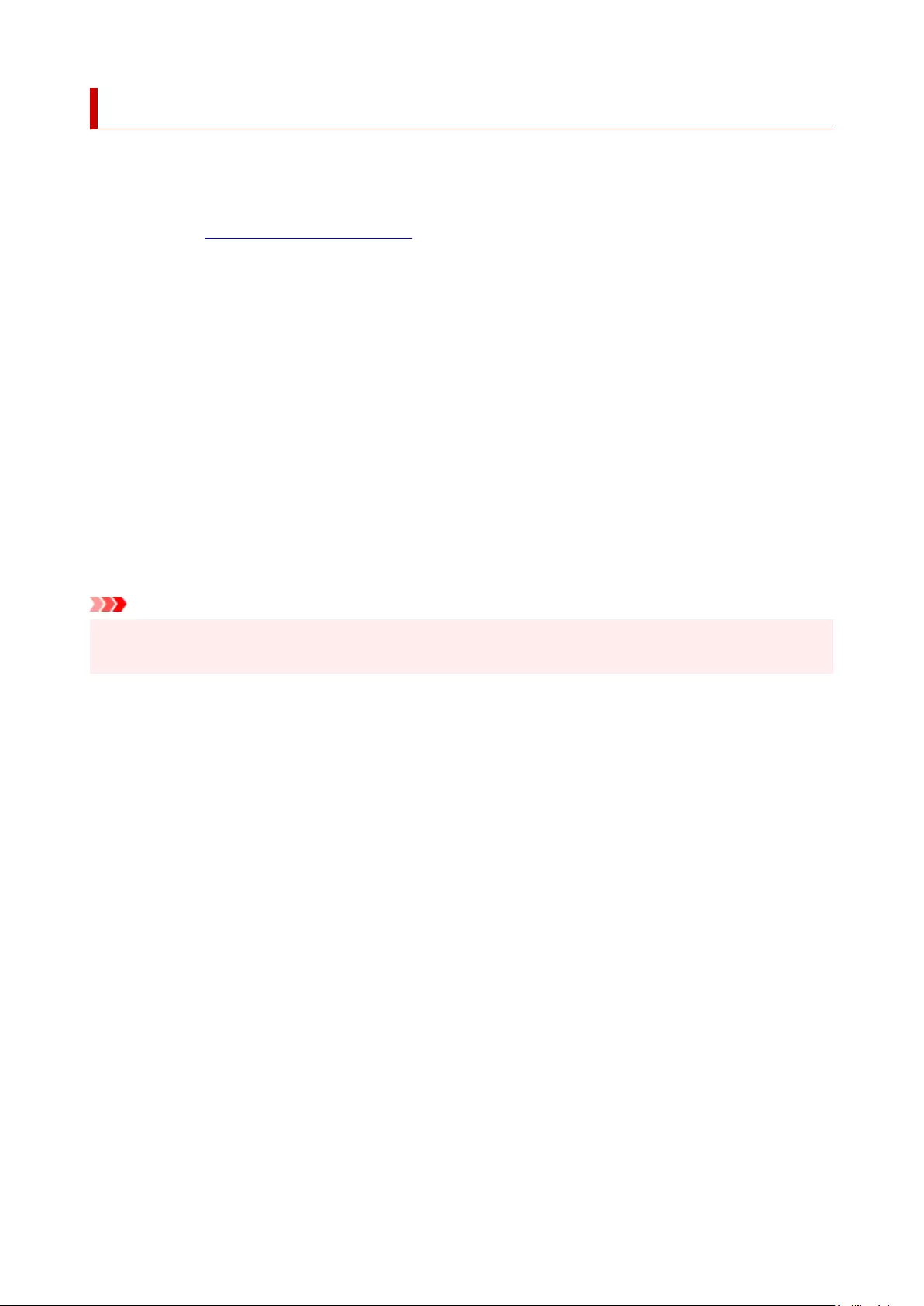
Deleting the Undesired Print Job
If the printer does not start printing, canceled or failed print job data may be remaining.
Delete the undesired print job by using the Canon IJ Status Monitor.
1. Open the printer driver setup window1.
2. Display the Canon IJ Status Monitor
2.
Click Status Monitor... on the Main tab.
The Canon IJ Status Monitor appears.
3. Display the print jobs
3.
Click Display Send Queue.
The print queue window opens.
4. Delete the print jobs
4.
Select the print jobs you want to delete, and select Cancel from the Document menu.
When the confirmation message appears, click Yes.
The deletion of the print job is complete.
Important
• Users who have not been granted access permission for printer management cannot delete the print
job of another user.
518
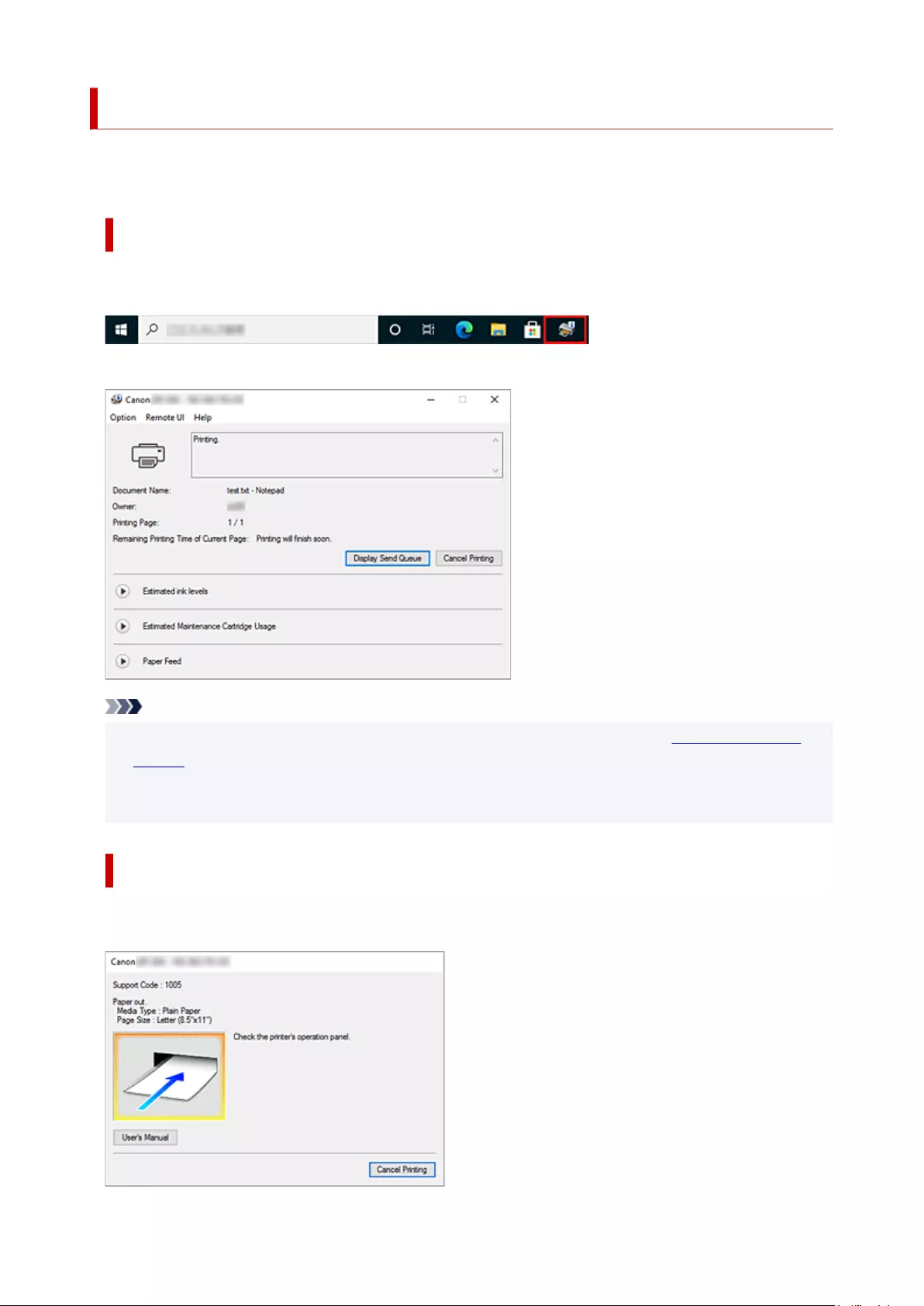
Canon IJ Status Monitor
The Canon IJ Status Monitor is an application software that shows the status of the printer and the progress
of printing. You will know the status of the printer with graphics, icons, and messages.
Launching the Canon IJ Status Monitor
The Canon IJ Status Monitor launches automatically when print data is sent to the printer. When
launched, the Canon IJ Status Monitor appears as a button on the task bar.
Click the button of the status monitor displayed on the task bar. The Canon IJ Status Monitor appears.
Note
• To open the Canon IJ Status Monitor when the printer is not printing, open the printer driver setup
window and click Status Monitor... on the Main tab.
• The information displayed on the Canon IJ Status Monitor may differ depending on the country or
region where you are using your printer.
When Errors Occur
If an error occurs (e.g., if the printer runs out of paper or if the ink is low), the Canon IJ Status Monitor
displays an error information dialog box.
519
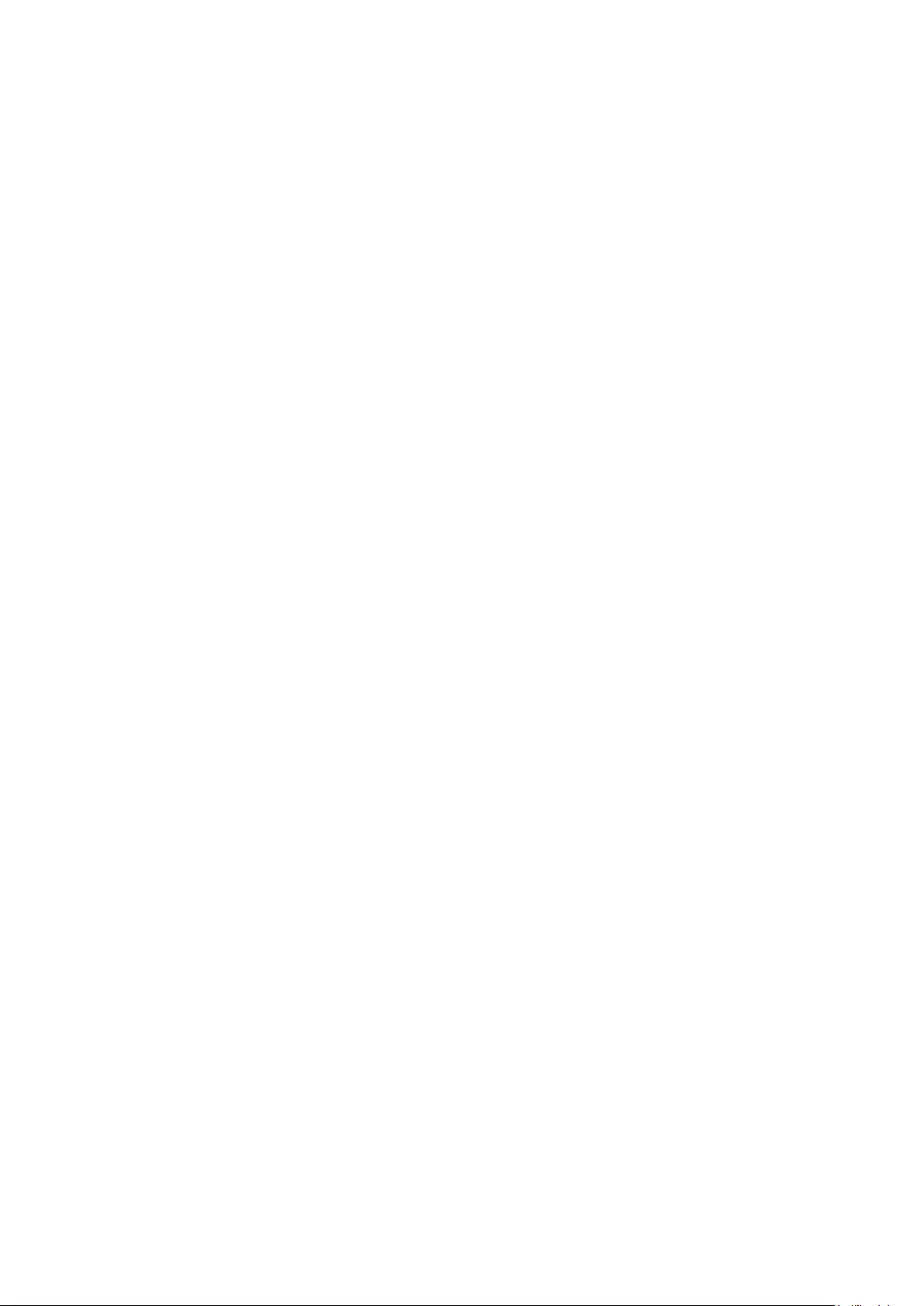
In such cases, take the appropriate action as described.
520

Checking the Ink Status from Your Computer
You can check the remaining ink level and the ink tank types for your model.
1. Open the printer driver setup window1.
2. Launching the Canon IJ Status Monitor
2.
On the Main tab, click Status Monitor....
The Canon IJ Status Monitor opens.
3. Display Estimated ink levels
3.
Ink status is displayed as an illustration.
Note
• The information displayed on the Canon IJ Status Monitor may differ depending on the country or
region where you are using your printer.
521
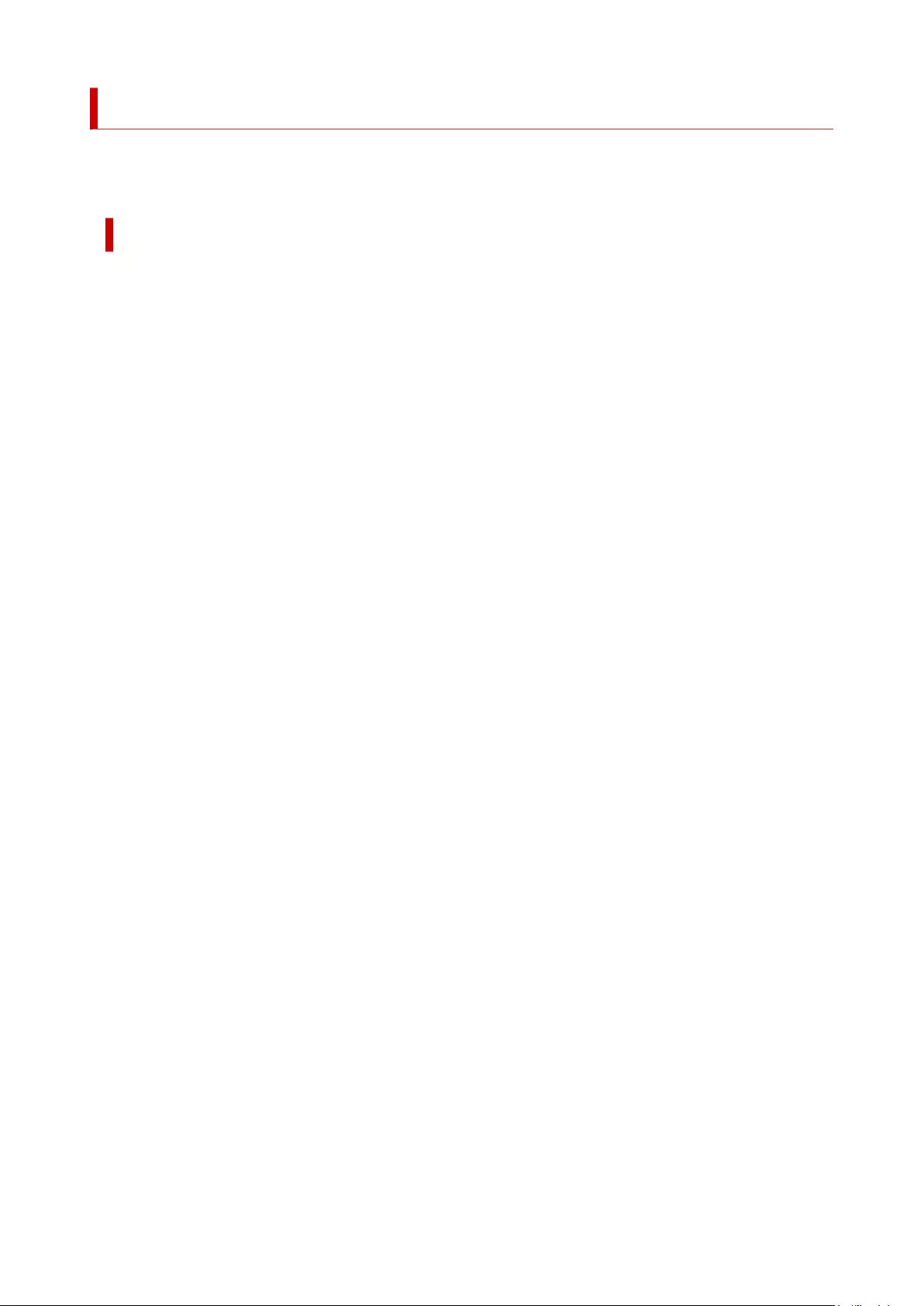
Instructions for Use (Printer Driver)
This printer driver is subject to the following restrictions. Keep the following points in mind when using the
printer driver.
Restrictions on the Printer Driver
• Before installing, log on to Windows as user with administrator rights.
• Always check the following before installing the software.
1. Quit the application software while it is running.
2. If you are printing a document, abort printing or wait for it to finish.
3. Close all the printer driver's dialog boxes.
• If you can set the number of copies with the application software, set them either with the printer
driver or the application software.
• If you can configure enlarging/reducing settings with the application software, set the normal size
(100%) in the printer driver, and then configure the magnification factor with the application software.
• Depending on the application software used, it may be possible to print collated copies; however,
please do not use this feature when configuring layout printing with the Page Layout option in the
Layout tab.
This may cause incorrect layout.
• When printing enlarged/reduced documents, printed results may come out different due to a
discrepancy between the image data resolution and the enlarging/reducing ratio.
• When printing reduced color images, 1-dot wide lines or points may disappear from the color images.
• Depending on the application software, lines drawn at almost horizontal angles may not print
correctly.
If that should happen, re-draw the line horizontally and print one more time.
• Immediately after installing (or updating) the printer driver, you might not be able to visualize new
features in some of the application software.
In all application software provided with printing features, choose Print from the File menu and, after
selecting the printer you are using, click the Properties.
After the Properties dialog box has opened, immediately close it by clicking OK.
• If you update the model name of your printer through the General tab in the printer's Properties, the
Favorites settings registered in the printer driver will be disabled.
In such cases, save the Favorites settings as a file before changing the name of the printer and reload
the saved file after you have updated the printer's name.
•Printing at high resolution requires a large amount of memory on your computer.
When your computer is low on memory or you are using a large number of application software, the
application software may not work correctly.
In such cases, re-start Windows and, before resuming printing, close all the applications you are not
using. Also, when the printer is not printing correctly, switch the Print Quality setting in the Main tab
to a lower resolution.
•When using a local connection, if you do not see a check mark next to the Enable bidirectional
support option in the Ports tab in the printer's Properties, it will not be possible to acquire printer and
device information correctly.
•If you are you are using your printer with a USB connection, refrain from using standby mode. You
can set standby mode through the Power Options on the Control Panel.
522
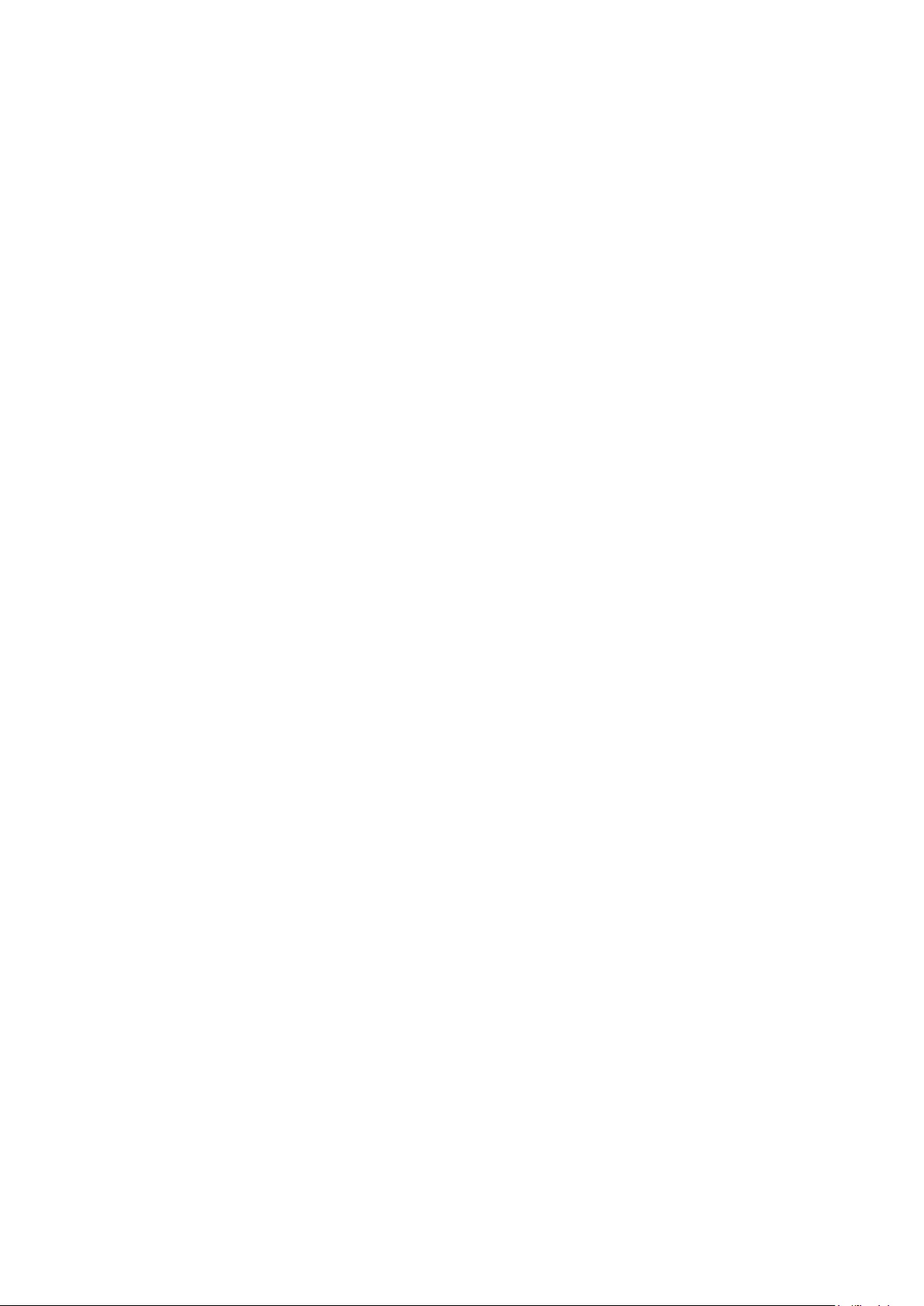
• In case of a large amount of print data, the printer may time-out during printing and you may no longer
be able to print.
In such cases, in the Advanced tab in the printer's Properties, choose Spool print documents so
program finishes printing faster and place a check mark next to Start printing after last page is
spooled.
• Fine lines and gradients may not print correctly.
In such cases, choose Print from the File menu of the application, and after opening from there the
property dialog box of the printer driver, follow the procedure below and then run printing.
1. In the Main tab, uncheck Preview before printing.
2. In the Layout tab, uncheck Page Layout.
3. If you are using a 32-bit driver, open the Layout tab and click Special Settings....
Turn off Fast Graphic Process.
• In case of a large amount of print data, the printer may time-out during printing and you may no longer
be able to print.
In such cases, you may be able to print by increasing the time set in Job timeout in the printer's
operation panel.
• Depending on the application used, if you print using features like enlarging/reducing, layout printing,
page borders and so on, some of the data in the resulting printed document, for example graphics,
may differ from the source document.
• If you print very large images from your computer when it's running low on memory, you may not be
able to print correctly; for example, it may take a very long time to print or parts of the image may end
up missing.
In such cases, try printing after following the procedure indicated below.
◦ If you are using a 32-bit driver, open the Layout tab and click Special Settings....
Turn off Fast Graphic Process.
◦ Increase your computer memory.
◦ Increase the virtual memory of your operating system.
• To print to cut sheets by lining up multiple documents, you must use the Free Layout function. Go to
the Canon website, download imagePROGRAF Printer Driver Extra Kit, and then install it.
• Do not change the Print Processor... settings in the Advanced tab in the printer Properties.
If you change them, you will not be able to use some of the features correctly, such as the Page
Layout feature in the Layout tab.
• In the cases described below, you will not be able to use the Free Layout and the Edit Using
PosterArtist features of Page Layout in the Layout tab as well as the Canon imagePROGRAF
Preview feature.
◦ When right-clicking on the printer icon and choosing from See what's printing: Printer -> Pause
Printing, or when right-clicking on the printer icon and choosing Pause Printing
◦ When right-clicking on the printer icon and choosing from See what's printing: Printer -> Use
Printer Offline, or when right-clicking on the printer icon and choosing Use Printer Offline
◦ When printing during hours other than those set in Available from and To in the Advanced tab in
the printer's Properties
◦ When printing with the Enable advanced printing features turned off in the Advanced tab in the
printer's Properties
◦ When printing with Print directly to the printer enabled in the Advanced tab in printer's
Properties
523
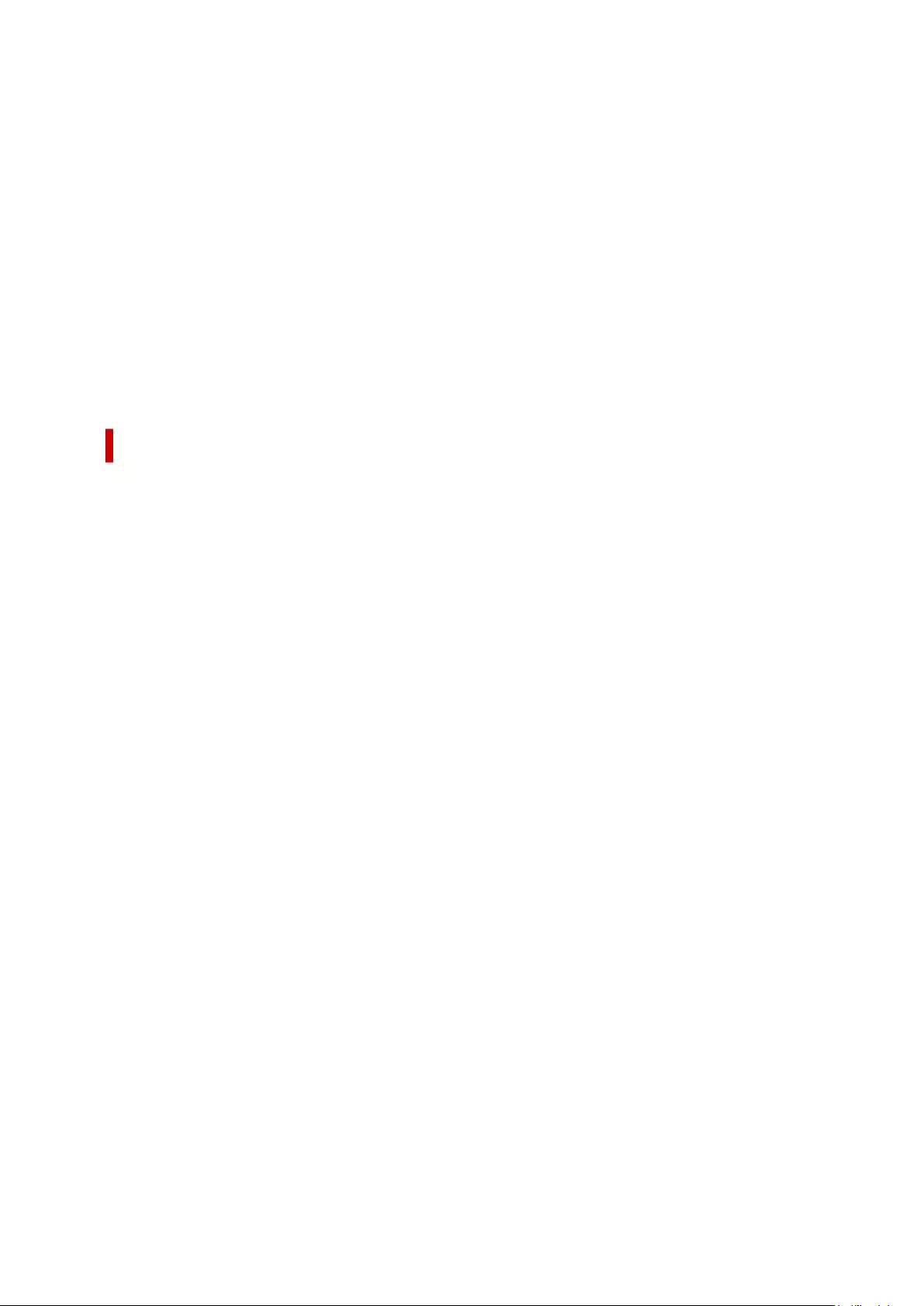
◦ When printing after the printing port in the Ports tab in the printer's Properties has changed to
FILE:
◦ When printing after choosing Output to file in the Print dialog box in the application software
• If you perform a point-and-print installation, you will not be able to use the Free Layout and the Edit
Using PosterArtist features of Page Layout in the Layout tab.
• If you print after setting Free Layout and Edit Using PosterArtist, refrain from printing from other
drivers.
• If you combine specific Print Quality with large paper sizes, you may not be able to correctly print
stamps and borders.
• In the Canon imagePROGRAF Preview, characters and fine lines visualized in the View screen may
look differ from printed results. In such cases, try choosing the Layout tab, opening the Special
Settings dialog and turning on Preview Switching.
•
Points to Note About Applications with Restrictions
• If, in Microsoft Excel, you place a checkmark next to the Collate and then you print more than one
copy, or if you do Entire workbook after configuring different settings in each tab, you may not be
able to perform layout printing nor to get the intended printing results.
• If you try to print data on a very large-size paper through applications like Adobe Illustrator, you may
not be able to print.
In such cases, try printing after following the procedure indicated below.
◦ Open the Main tab and uncheck Preview before printing.
◦ If you are using a 32-bit driver, open the Layout tab and click Special Settings....
Turn off Fast Graphic Process.
◦ Increase the virtual memory of your operating system.
◦ If you are using Adobe Illustrator, turn off/on Bitmap printing in the Print dialog box.
• In the cases described below, you will not be able to use the Free Layout and the Edit Using
PosterArtist features of Page Layout in the Layout tab.
◦ When printing from application software which do not allow EMF spooling.
• When printing from Adobe Photoshop, tone jumps may occur in the gradation of black and white
photographs.
•When printing data created with Microsoft Word using Enlarged/Reduced Printing or Borderless
Printing, you may not be able to print correctly.
In such cases, try printing after following the procedure indicated below.
◦Open the printer folder from the start menu, right click on the printer icon and select Printing
preferences. Launch the application after setting, in the Page Setup tab, Page Size, Enlarged/
Reduced Printing and Borderless Printing.
◦Open Microsoft Word's Page setup dialog box and close it by clicking OK.
◦After configuring the printer driver, close momentarily the Print dialog box without printing. Then,
open the printer driver's set up screen once again, close it by clicking OK, and run printing.
524

Main Tab Description
The Main tab allows you to create a basic print setup in accordance with the media type. Unless special
printing is required, normal printing can be performed just by setting the items on this tab.
Settings Preview
The paper illustration shows how the original will be laid out on a sheet of paper.
You can check an overall image of the layout.
The printer illustration shows how to load paper to match the printer driver settings.
Check whether the printer is set up correctly by looking at the illustration before you start printing.
Media Type
Selects a type of printing paper.
Select a media type that matches the paper that is loaded in the printer. This ensures that printing is
carried out properly for the specified paper.
Get Information...
Opens the Paper Information on Printer dialog box.
You can check the settings on the printer and apply the checked settings to the printer driver.
Specify...
Open the Paper Detailed Settings dialog box, and specify detailed print settings that match the media
type loaded in the printer.
Pull-down menu
Switches the Easy Settings and Advanced Settings.
Easy Settings
This mode allows you to print by using pre-registered print settings.
Print Target
Print settings that are generally used frequently are pre-registered as print purposes. By using
a print purpose to print, you can print by using settings that match the document.
Default Settings
Select this when printing general documents such as business documents.
526
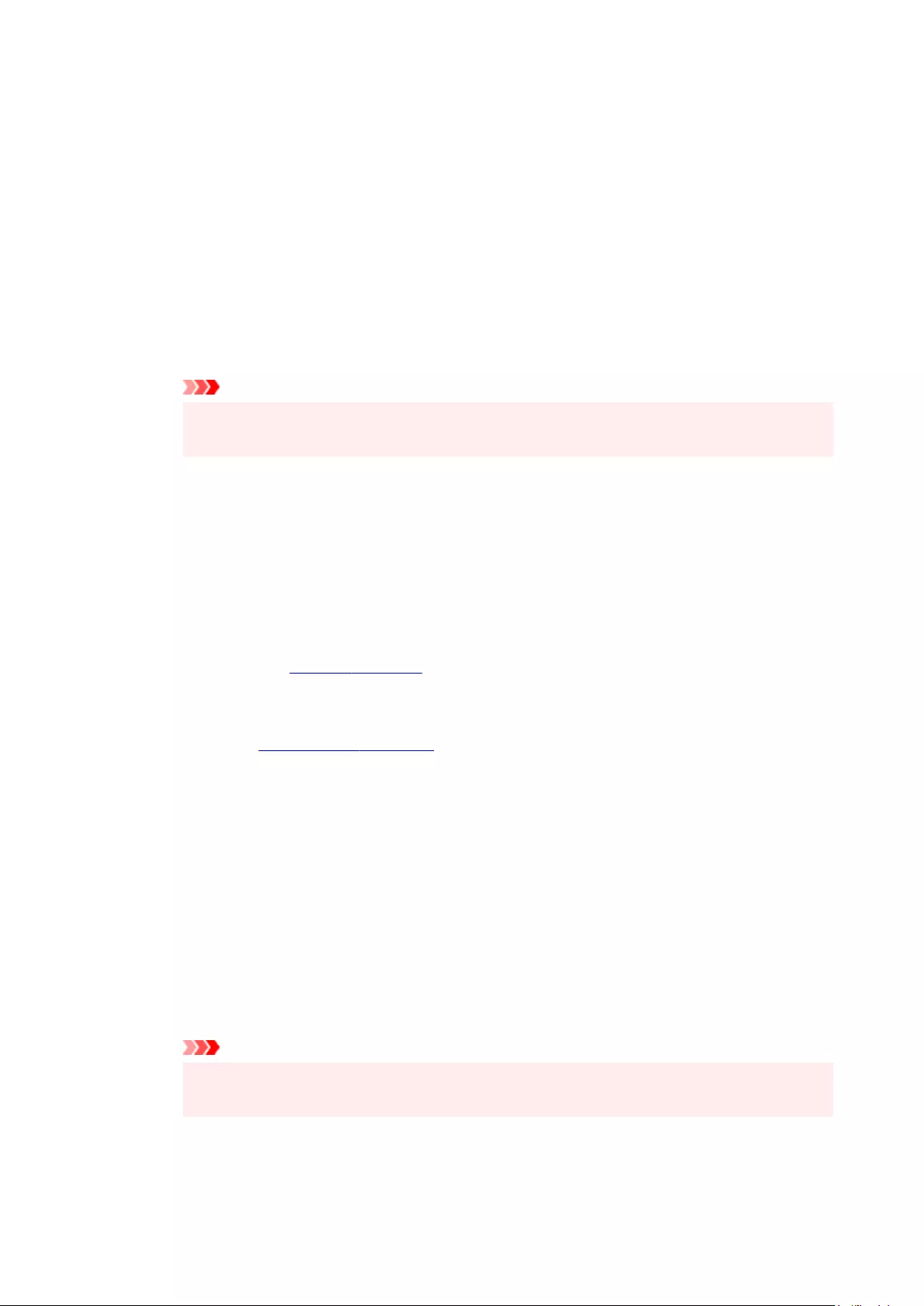
Poster
Select this when printing posters.
Poster (Fluorescent)
Select this when you want to make the entire poster more vibrant.
Poster (Fluorescent Spot Color)
Select this when you want to specify areas of the poster to make more vibrant.
Photo (Color)
Select this when printing color illustrations or photos.
Print Quality
Selects your desired printing quality.
Select one of the following to set the print quality level that is appropriate for the purpose.
Important
• Depending on the Media Type settings, the same print results may be produced even if
the Print Quality is changed.
High
Gives priority to print quality over printing speed.
Standard
Prints with average speed and quality. Resolution settings depend on media type.
Fast
Gives priority to printing speed over print quality.
Custom
Opens the Custom dialog box.
Select this when you want to set the printing quality level individually.
View Settings
Opens the View Settings dialog box.
Advanced Settings
This mode allows you to print by specifying detailed settings that match your purpose.
Print Priority
Select elements to prioritize for print results.
Poster/Photo
Prioritize the print results of the poster or photo without using fluorescent ink.
Poster/Photo (Fluorescent)
Use fluorescent ink to make posters or photos more vibrant.
Print Quality
Selects your desired printing quality.
Select one of the following to set the print quality level that is appropriate for the purpose.
Important
• Depending on the Media Type settings, the same print results may be produced even if
the Print Quality is changed.
High
Gives priority to print quality over printing speed.
527
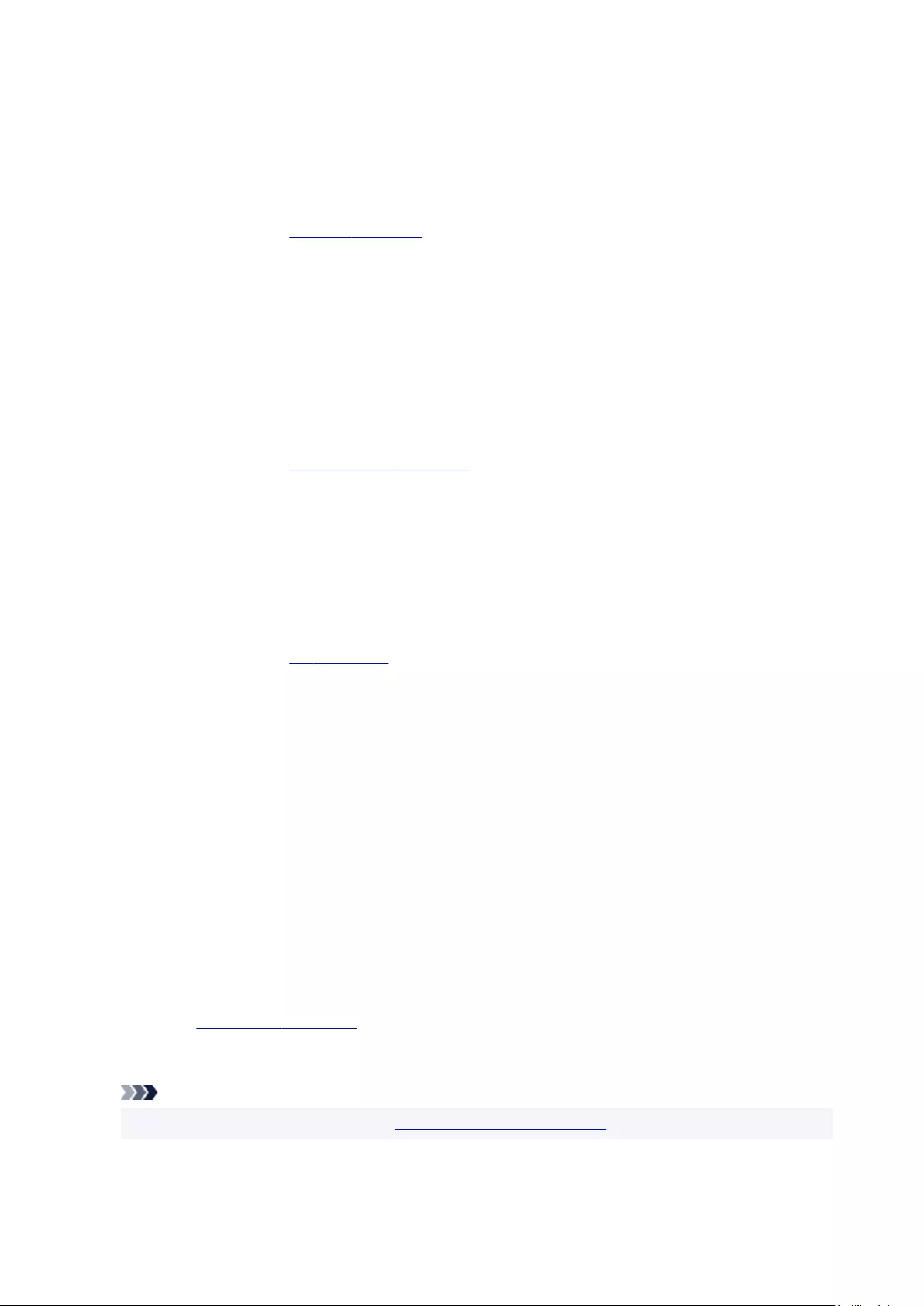
Standard
Prints with average speed and quality. Resolution settings depend on media type.
Fast
Gives priority to printing speed over print quality.
Custom
Opens the Custom dialog box.
Select this when you want to set the printing quality level individually.
Color Mode
Select the color to print.
Color
Prints with the number of colors in the document.
Monochrome
Print in grayscale.
Color Settings
Opens the Color Settings dialog box.
You can adjust individual color settings such as Cyan, Magenta, Yellow, Brightness,
and Contrast on the Color Adjustment tab, and select the Color Correction method on
the Matching tab.
Fluorescent Spot Color
Specify an area and print posters with bright colors.
To use fluorescent spot colors, add a checkmark.
Settings...
Opens the Set dialog box.
Select the fluorescent spot color you want to use from the palette.
Thicken Fine Lines
To make thin lines thicker and easier to see when printing, add a checkmark.
Preview before printing
You can start up the Canon imagePROGRAF Preview, and check what the printing results will be
before executing the print.
Check this check box to display a preview before printing.
Edit fluorescent spot colors in PosterArtist
Start PosterArtist to edit fluorescent spot colors and check print results using the preview function.
To edit fluorescent spot colors in PosterArtist, add a checkmark.
Status Monitor...
Displays the status monitor.
Accounting...
Opens the Accounting dialog box.
By setting Accounting information, you add IDs to print jobs, and use the printer and cost management
tool to tabulate print history information for any ID.
Note
• To set accounting information, see "Setting Accounting Information."
528
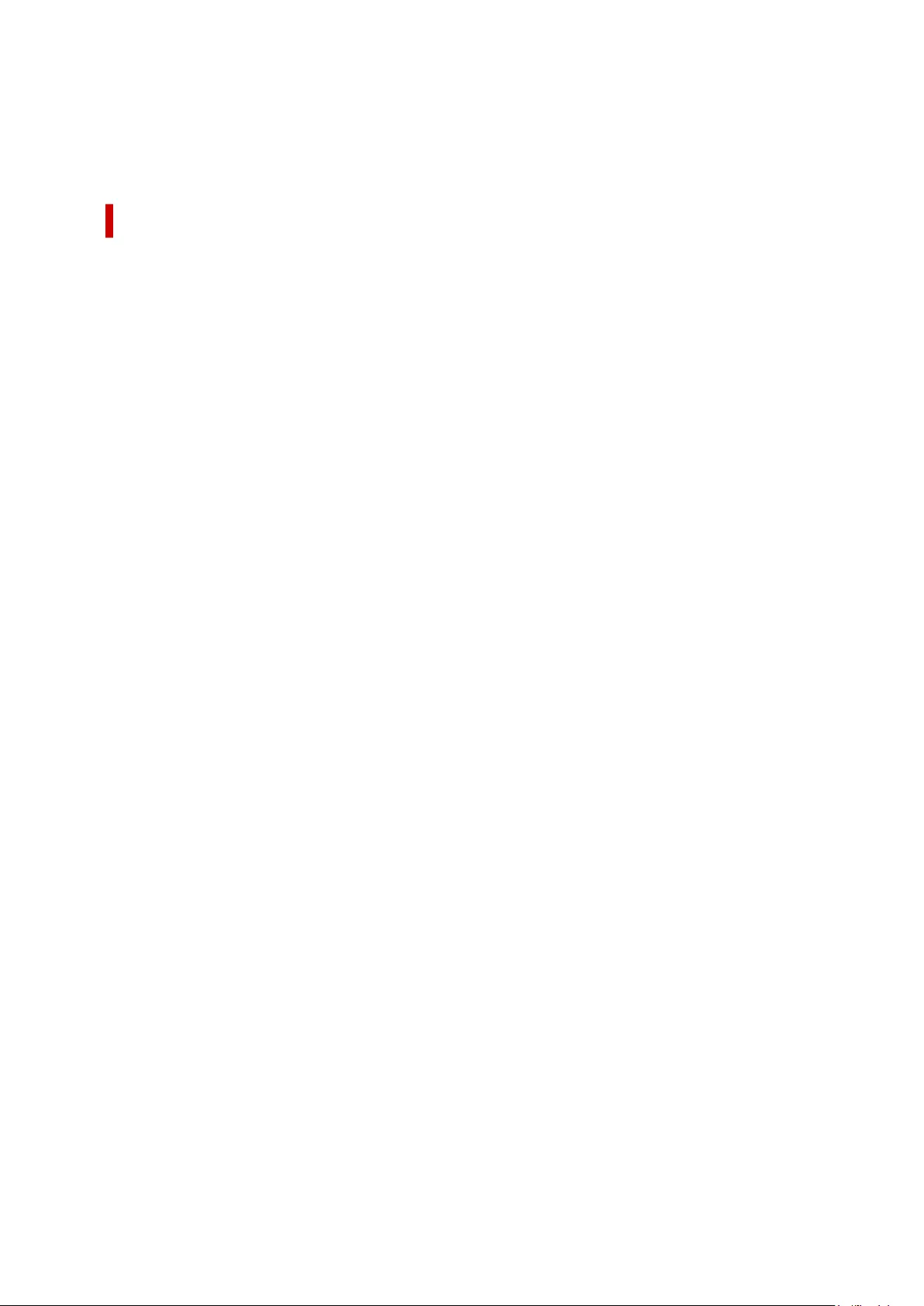
Defaults
Restores all the settings you have changed to their default values.
Clicking this button restores all the settings on the current screen to their default values (factory
settings).
Paper Detailed Settings dialog box
Drying Time
Wait time can be set to allow ink to dry. Between Pages settings are only enabled for roll paper.
Between Pages
The wait time until outputting paper can be set after printing one page. Time is taken before
cutting roll paper to allow the ink to dry, so even when Automatic Cutting in the Roll Paper
Options dialog box of the Page Setup tab is set to Yes, page may be dropped into the basket
with dried ink.
Printer Default
Settings in printer unit operation panel are applied.
None
Page will be output immediately after printing
30 sec. / 1 min. / 3 min. / 5 min. / 10 min. / 30 min. / 60 min.
Page will be output after set amount of time has passed after printing.
Between Scans
The wait time until printing next scan can be set after printing one scan in page. Set in the event
smudging occurs in the page, unevenness occurs in borderless printing, etc., and you would like
to avoid this smudging and unevenness.
Printer Default
Settings in printer unit operation panel are applied.
None
Next scan will be print immediately after first scan is print.
0.5 sec. / 1sec. / 3sec. / 5sec. / 7sec. / 9sec.
Next scan will be print after the set amount of time has passed after printing one scan.
* If smudges and/or unevenness occur, please increase time.
Roll Paper Safety Margin
In order for heavily curling paper to absorb well in platen, length of margin established on edge of
paper can be selected.
Near End Margin
Roll Near End Margin length can be set.
Printer Default
Settings in printer unit operation panel are applied.
3mm
Will be print in standard size.
* Please select when there are no particular problems with printing.
20mm
Please select when rubbing of the print heads occurs, such as when heavily curling paper is
being used.
529
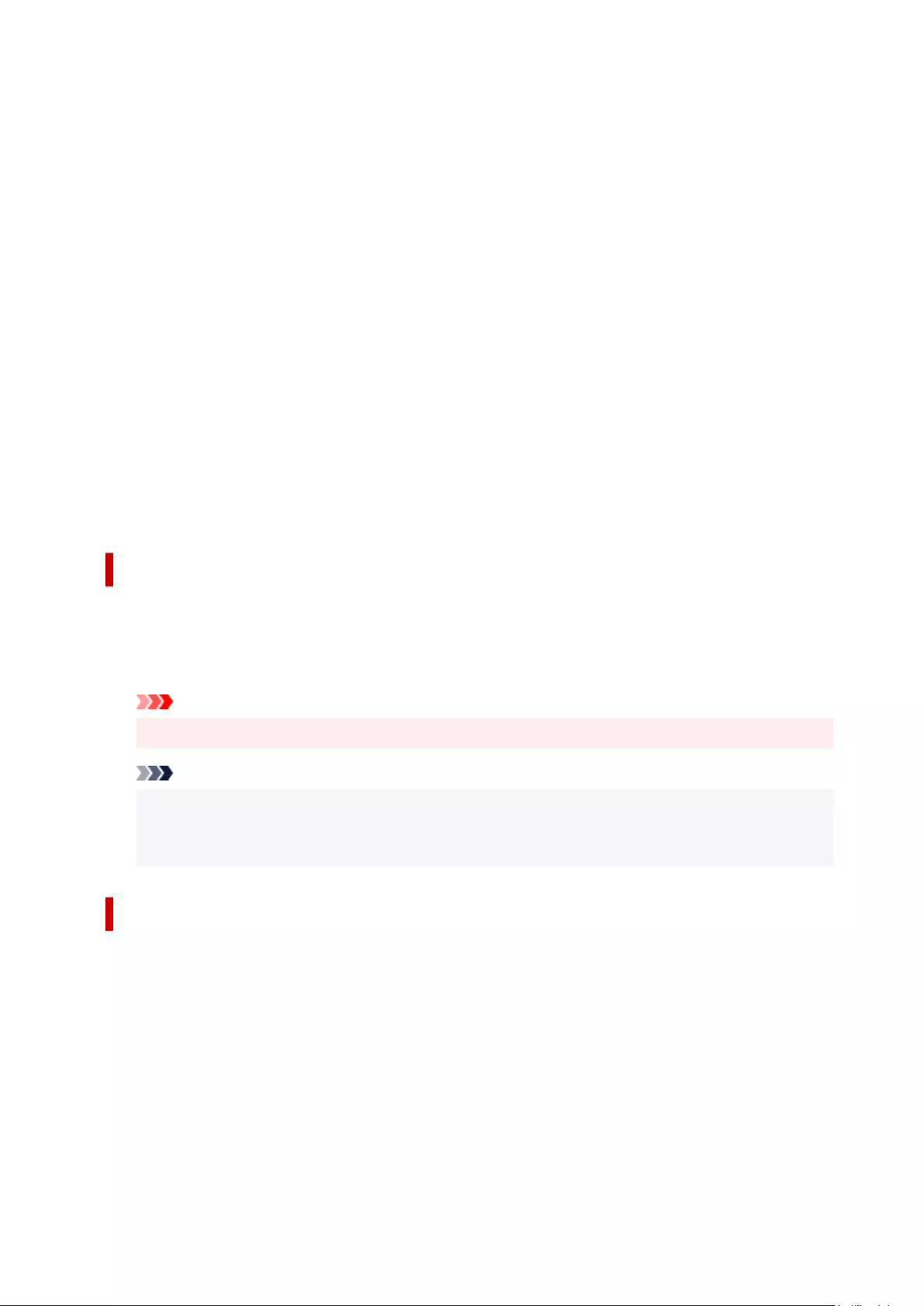
Cut Speed
Select auto-cut speed. This can be adjusted when paper cannot be cut precisely with auto-cut.
Printer Default
Settings in printer unit operation panel are applied.
Fast
Select when cut is not smooth with Standard settings.
Standard
Select when there are no particular problems with auto-cut.
Slow
If this is selected for paper with adhesive, the cutter will not stick to the adhesive easily and it will
slow deterioration of the cutter's capabilities.
Unidirectional Printing
Controls color unevenness and unaligned ruled lines.
Please check when printing in one direction.
Mirror
Select whether to print reflected image or not. When you select this check box, text and images will
be printed as if reflected in a mirror.
Custom dialog box
Set the quality level, and select the desired print quality.
Quality
You can use the slider bar to adjust the print quality level.
Important
• Certain print quality levels cannot be selected depending on the settings of Media Type.
Note
• The High, Standard, or Fast print quality modes are linked with the slider bar. Therefore when
the slider bar is moved, the corresponding quality and value are displayed on the left. This is the
same as when the corresponding quality is selected for Print Quality on the Main tab.
View Settings dialog box
Print Target
Select the print purpose. The settings of the selected print purpose are displayed in Details.
Name
Displays the name of the selected print purpose.
Details
Displays the settings of the print purpose that was selected for Print Target.
530
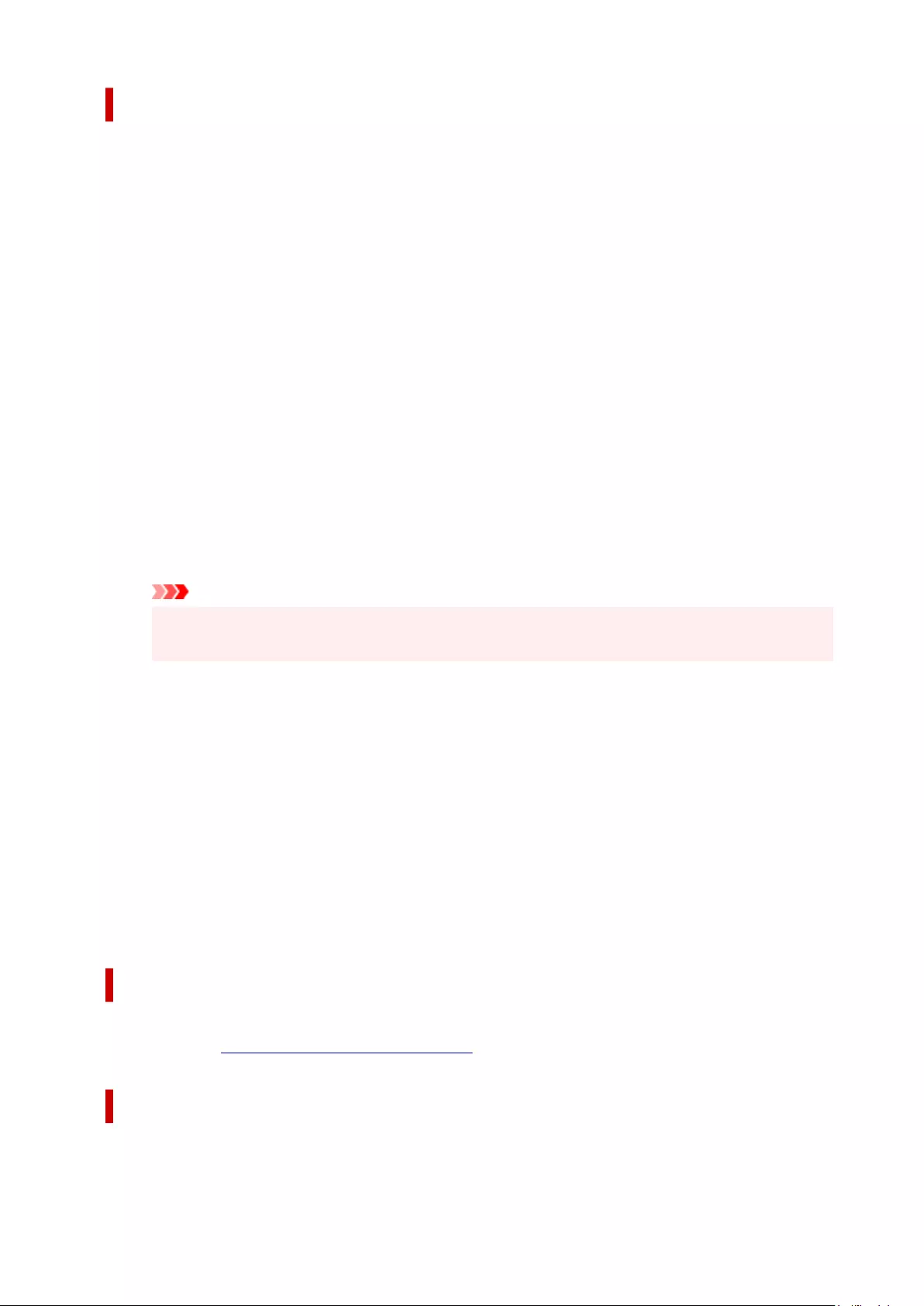
Color Settings dialog box
Color Adjustment Tab
This tab allows you to adjust the color balance by changing the settings of the Cyan, Magenta, Yellow,
Brightness, and Contrast options.
Preview
Shows the effect of color adjustment.
The color and brightness change when each item is adjusted.
View Color Pattern
Displays a pattern for checking color changes produced by color adjustment.
If you want to display the preview image with a color pattern, check this check box.
Cyan / Magenta / Yellow
Adjusts the strengths of Cyan, Magenta, and Yellow.
Moving the slider to the right makes a color stronger, and moving the slider to the left makes a color
weaker.
You can also directly enter a value linked to the slider. Enter a value in the range from -50 to 50.
This adjustment changes the relative amount of ink of each color used, which alters the total
color balance of the document. Use your application if you want to change the total color balance
significantly. Use the printer driver only if you want to adjust the color balance slightly.
Important
• When Monochrome is selected for Color Mode, the color balance (Cyan, Magenta, and
Yellow) can't be set.
Brightness
Adjusts the brightness of your print. You cannot change the levels of pure white and black.
However, the brightness of the colors between white and black can be changed. Colors become
brighter as you drag the slider toward the right and darker as you drag the slider toward the left.
You can also directly enter brightness values that are linked to the slider bar. Enter a value in the
range from -50 to 50.
Contrast
Adjusts the contrast between light and dark in the image to be printed.
Moving the slider to the right increases the contrast, moving the slider to the left decreases the
contrast.
You can also directly enter a value linked to the slider. Enter a value in the range from -50 to 50.
Set dialog box
Select the fluorescent spot color you want to use from the palette.
For details, see "Specify Fluorescent Colors and Print."
Matching Tab
This is displayed when Color is selected for Color Mode.
Allows you to select the method for adjusting colors to match the type of document to be printed.
531
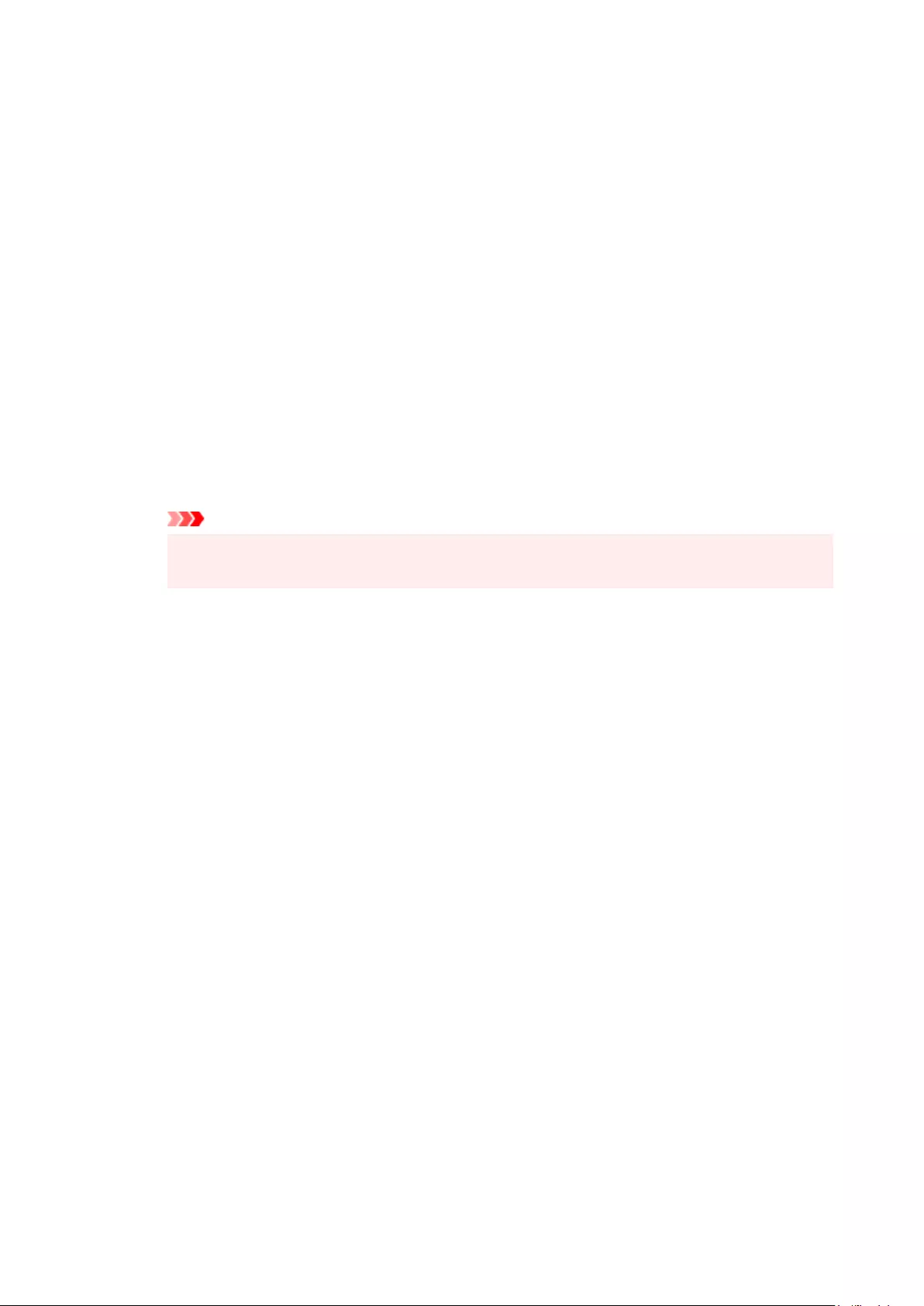
Color Correction
Allows you to select Driver Matching, ICC Profile Matching, ICM, or Off to match the purpose of the
print operation.
Driver Matching
Print with the optimal color using the driver's original color profile. Normally, you should choose
this mode.
ICC Profile Matching
Carry out color matching using the ICC profile. Specify the input profile, printer profile and
matching method in detail, and select when printing. You can use the digital camera or scanner
ICC profile, or the ICC profile created using the profile creation tool.
ICM
Perform color matching on the host computer using the Windows ICM function. Select when
printing from an ICM function-compatible application.
Off
Print without performing color matching on the printer driver. Select this when performing color
matching using applications such as Adobe Photoshop, or printing using a profile creation tool or
color chart.
Important
• When setting not to use ICM in the application software, ICC Profile Matching and ICM of
Color Correction do not function. There are also times when it does not print correctly.
Input Profile
Specifies the input profile to be used when you select ICC Profile Matching for Color Correction.
Printer Profile
Specifies the printer profile to be used when ICC Profile Matching is selected for Color Correction.
Normally Auto is selected but you can also select a printer profile manually.
Rendering Intent
Specifies the matching method to be used when you select Driver Matching, ICC Profile Matching,
or ICM, for Color Correction.
Perceptual (Photo) / Perceptual
Reproduces colors of general photos naturally and features smooth gradation. In addition,
selecting this setting allows you to adjust colors easily using an application software.
Saturation (Poster) / Saturation
Reproduces vivid colors on data such as a poster.
Relative Colorimetric
When image data is converted to the color space of the printer, this method converts the image
data so the color reproduction approximates the shared color regions. Select this method to print
image data with colors that are close to the original colors.
The white spots are reproduced as white spots (background color) on the paper.
Absolute Colorimetric
This method uses the white spot definitions in the input and output ICC profiles to convert the
image data.
Although the color and color balance of the white spots change, you may not be able to get the
desired output results because of the profile combination.
532

Important
• Depending on the media type, you may obtain the same print results even when you change the
Rendering Intent setting.
• If Driver Matching is selected for Color Correction, then Relative Colorimetric and Absolute
Colorimetric are not displayed.
Accounting dialog box
Click Accounting... to display the Accounting dialog box.
The Accounting dialog box allows you to add IDs to print jobs. You can then use the IDs, along with the
printer and cost management tool, to tabulate print history information.
Account ID/Department/Project number
Enter the account ID, department, and project number that you want to set. Enter the ID by using up
to 20 alphanumeric characters (0 to 9, a to z, and A to Z).
533
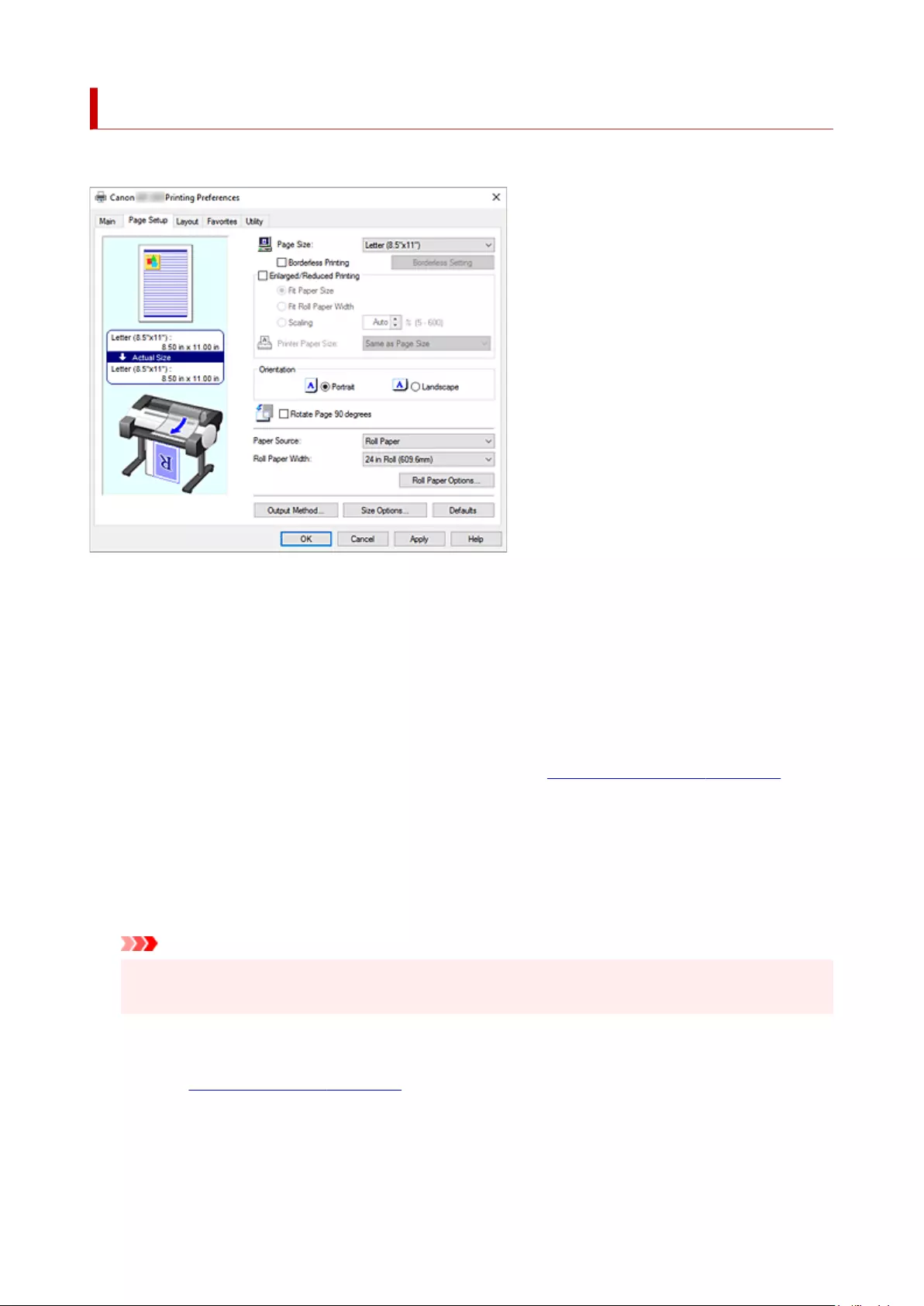
Page Setup Tab Description
The Page Setup tab allows you to set borderless printing for a document and specify the scaling.
Settings Preview
The paper illustration shows how the original will be laid out on a sheet of paper.
You can check an overall image of the layout.
The printer illustration shows how to load paper to match the printer driver settings.
Check whether the printer is set up correctly by looking at the illustration before you start printing.
Page Size
Selects a page size.
Ensure that you select the same page size as you selected within the application.
When you select Custom Size from Custom Paper Size, the Custom Size Settings dialog box
appears, and you can specify any vertical and horizontal dimensions for the paper.
Borderless Printing
Chooses whether you are printing on a full page without any page margins or printing with page
margins.
In borderless printing, originals are enlarged to extend slightly off the paper. Thus, printing can be
performed without any margins (border).
Important
• When Cut Sheet is selected for Paper Source, Borderless Printing is grayed out and cannot be
set.
Borderless Setting
Select Borderless Printing to enable it for clicking.
Open the Borderless Setting dialog box, so that you can adjust Amount of Extension.
Borderless Printing Method
This appears when you select Borderless Printing.
Set the borderless printing method.
534
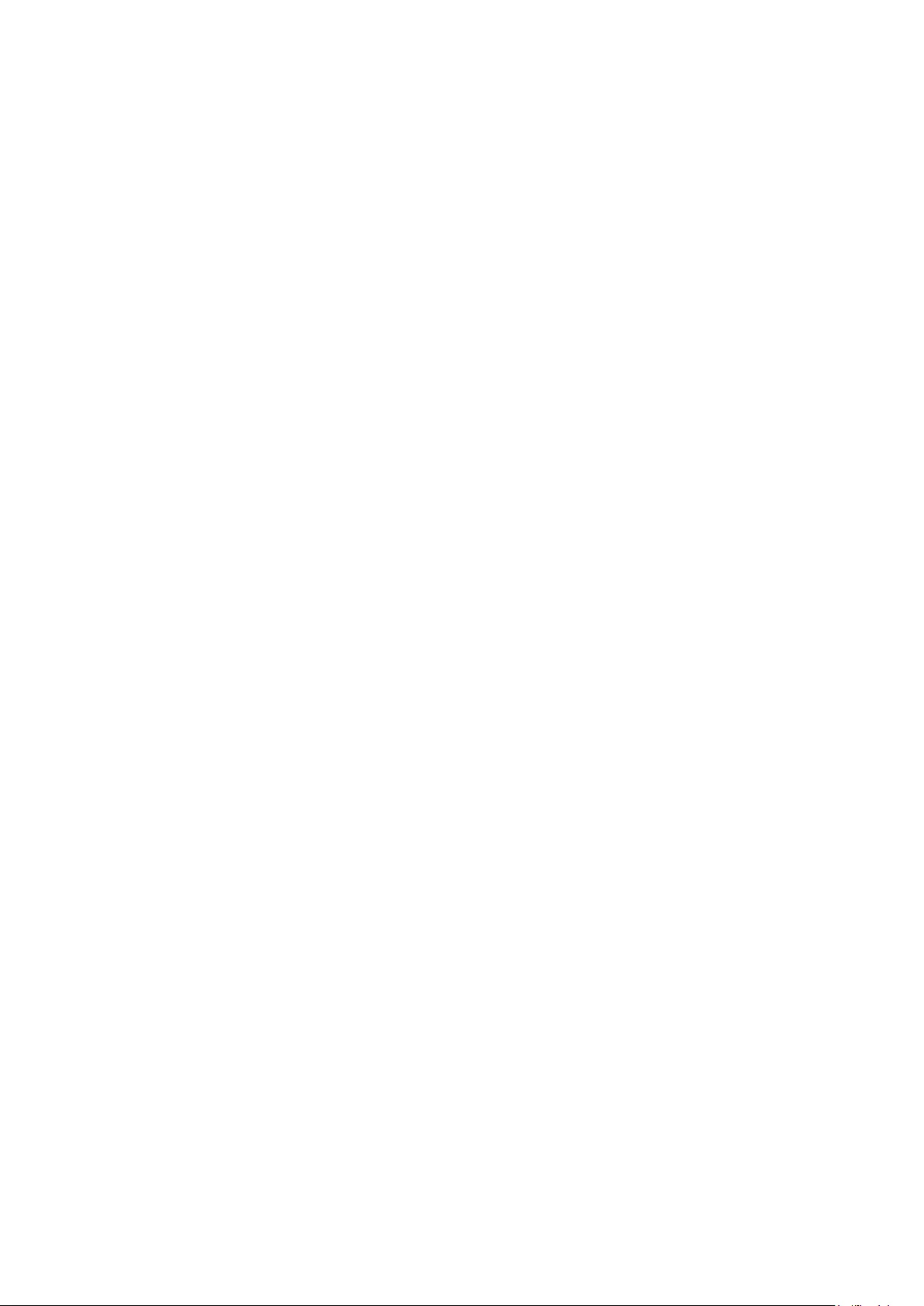
Fit Paper Size
Enlarge or reduce the document to match the size of the paper to be printed, and then print the
document.
Scale to fit Roll Paper Width
You can enlarge or reduce the document to match the roll paper width and then print the
document.
When you select this radio button, the Information dialog box appears, and you can select Roll
Paper Width.
Print Image with Actual Size
Prints the document at its actual size.
Printer Paper Size
When you select Fit Paper Size, you can specify the setting.
Select the size of the paper to be printed.
The list displays the paper sizes that support borderless printing.
Enlarged/Reduced Printing
You can enlarge or reduce a document and then print it.
When you select Enlarged/Reduced Printing, you can then set Fit Paper Size, Fit Roll Paper Width,
or Scaling.
Fit Paper Size
Enlarge/reduce the document to match the size of the paper to be printed, and then print the
document.
Fit Roll Paper Width
You can enlarge/reduce the document to match the roll paper width and then print the document.
When you select this radio button, the Information dialog box appears, and you can select Roll
Paper Width.
Scaling
Enlarge or reduce the document to a specified scale before printing.
Printer Paper Size
When you select Fit Paper Size, or Scaling, you can specify the setting.
Select the size of the paper to be printed.
Orientation
Selects the printing orientation.
If the application used to create your document has a similar function, select the same orientation that
you selected in that application.
Portrait
Prints the document so that its top and bottom positions are unchanged relative to the paper feed
direction. This is the default setting.
Landscape
Prints the document by rotating it 90 degrees relative to the paper feed direction.
Rotate Page 90 degrees
Rotate the long edge of the document 90 degrees, match it to the width of the roll paper, and then print
the document.
When you print a portrait document onto roll paper, you can save paper by rotating the document 90
degrees and print the document horizontally relative to the paper.
535
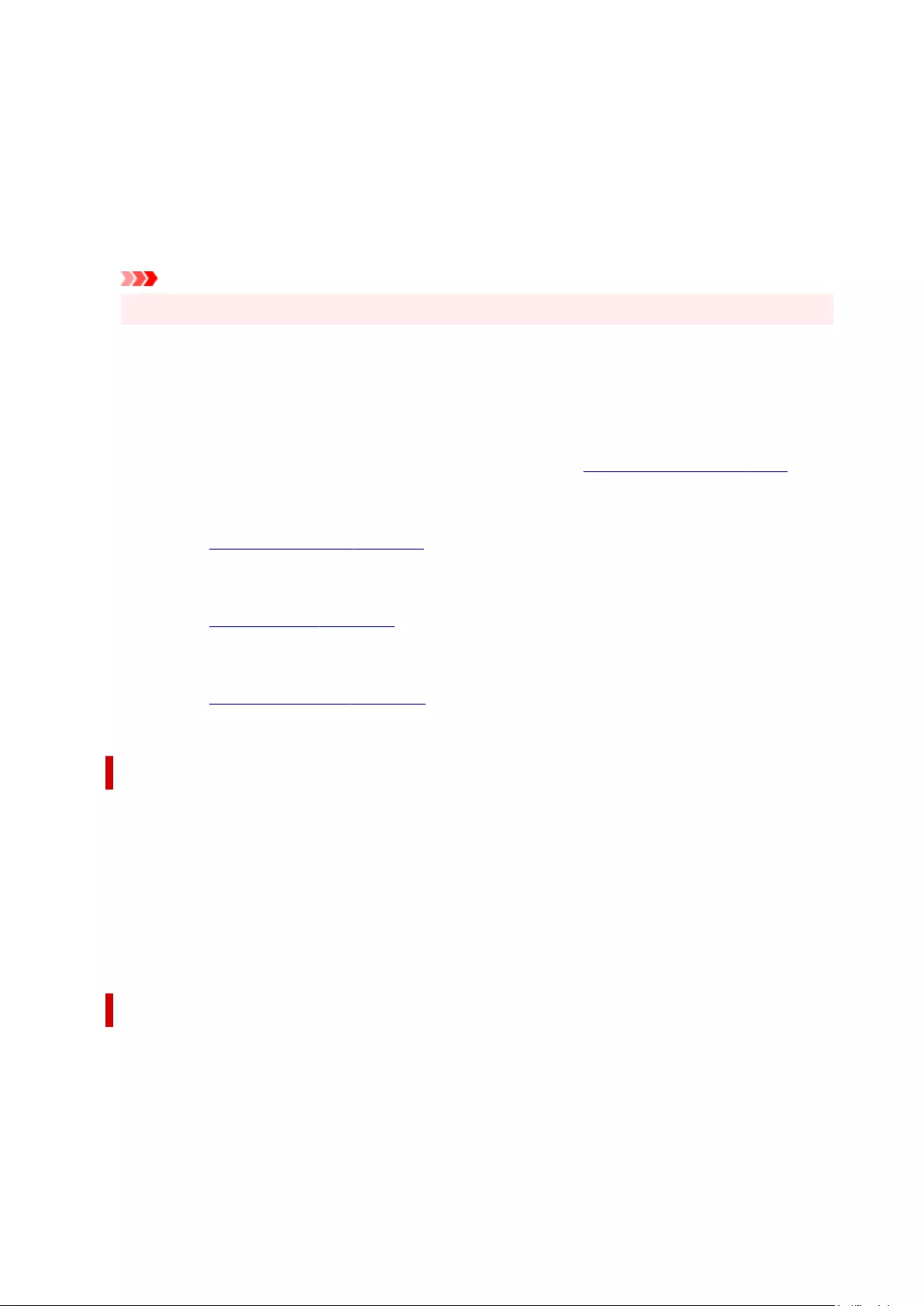
Paper Source
Shows the source from which paper is supplied.
You may be able to switch the paper source with the printer driver.
Roll Paper
Feeds paper using roll paper.
Cut Sheet
Feeds paper using the cut paper.
Important
• Depending on the media type and size, the Paper Source settings that can be selected may differ.
Roll Paper Width
Select the roll paper width.
Select the width that matches the width of the roll paper loaded in the printer.
If you select Custom Size (XXXX), the paper size set in the printer will be used.
The paper information set in the printer can be confirmed in Get Information... in the Main sheet.
If you select User-defined1 (XXXX) or User-defined2 (XXXX), the Custom Size Settings dialog box is
displayed, where you can specify the paper length and width.
Roll Paper Options...
Displays the Roll Paper Options dialog box.
You can specify auto cut, banner printing, and other settings for printing on roll paper.
Output Method...
Displays the Output Method dialog box.
You can select Output Method and specify save settings for saving documents to a box.
Size Options...
Displays the Paper Size Options dialog box.
The Paper Size Options dialog box allows you to create and register any user-defined paper.
Custom Size Settings dialog box (Paper Size)
This dialog box allows you to specify the size (width and height) of the custom paper.
Paper Size
Specifies the Width and the Height of the custom paper. Measurement is shown according to the
units specified in Units.
Units
Select the unit for entering a user-defined paper size.
Borderless Setting dialog box
Adjust how much of the document extends off the paper during borderless printing, and configure the
three-sided borderless setting.
Amount of Extension
Adjusts how much of the document extends off the paper during borderless printing.
Moving the slider to the right increases the amount of extension and allows you to perform borderless
printing with no problems.
536
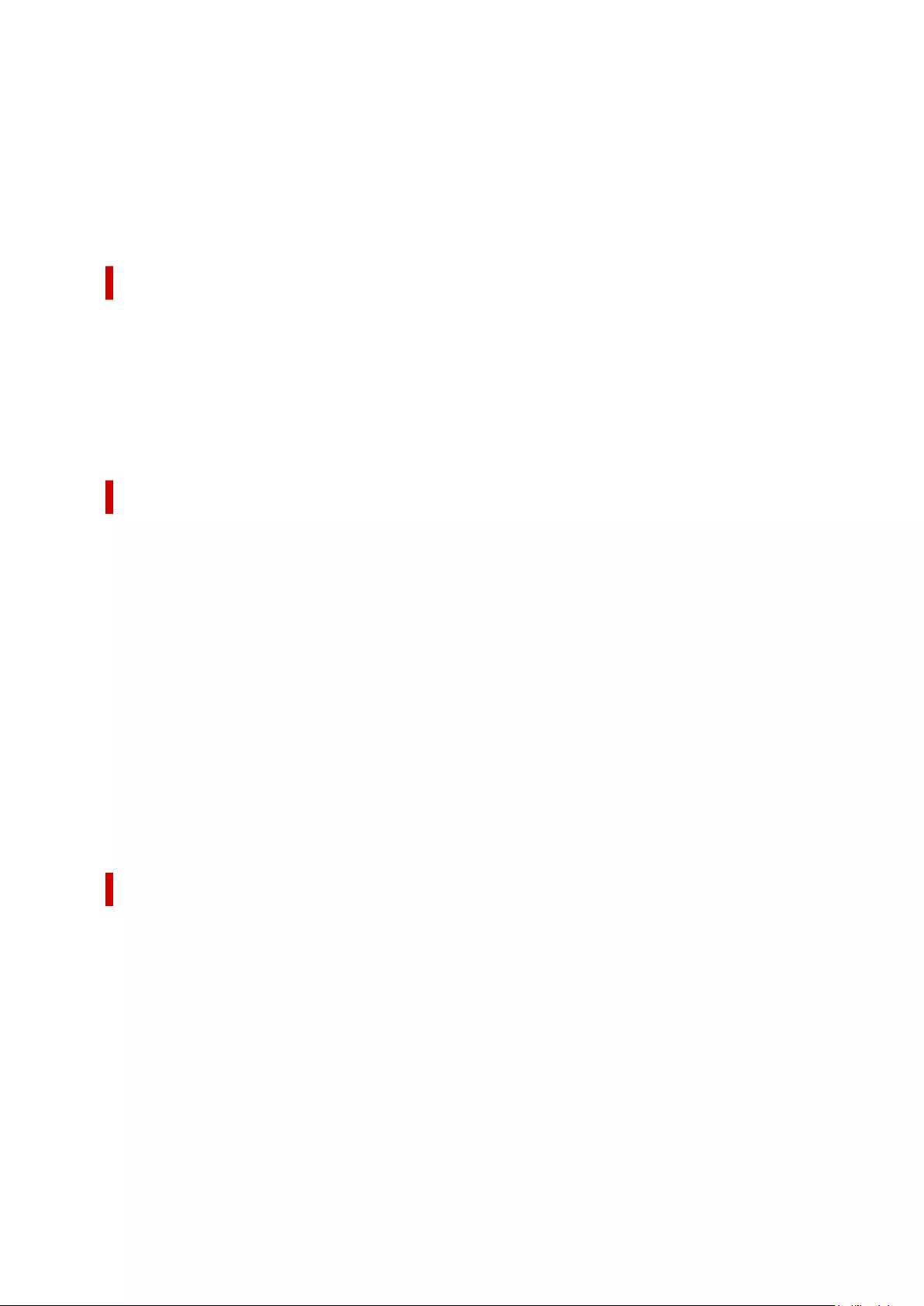
Moving the slider to the left reduces the amount of extension and expands the range of the document
to print.
Three-sided Borderless
If you check this check box, and the width or the length of the output paper size is smaller than the
roll width, a margin will be created on the right of the document, and the remaining three sides (top,
bottom, and left) will be borderless when printing.
Custom Size Settings dialog box (Roll Paper Width)
Enter the roll width you want to use.
Roll Paper Width
Specify the Width of the roll paper. Measurement is shown according to the units specified in Units.
Units
Select the unit for entering a user-defined paper size.
Roll Paper Options dialog box
You can specify settings for printing on roll paper.
Automatic Cutting
You can print cut guidelines for cutting the roll paper automatically or manually after printing.
Yes
Cut the roll paper automatically after printing.
No
Do not cut the roll paper automatically after printing.
Print Cut Guideline
Prints cut guidelines for cutting the roll paper manual after printing.
Banner Printing
Select this check box to print documents with several pages as one continuous document. When you
do this, the spaces between the pages will be removed.
Output Method dialog box
Set the method for exporting the print job to the printer's hard disk drive.
Output Method
Print
After the printing ends, the print job is not saved to the printer's hard disk drive.
Set PIN for printing
Set a PIN code for print jobs to prevent issues such as retrieving the wrong documents and
allowing others to peek at your documents.
PIN
Enter a one to seven-digit number.
537
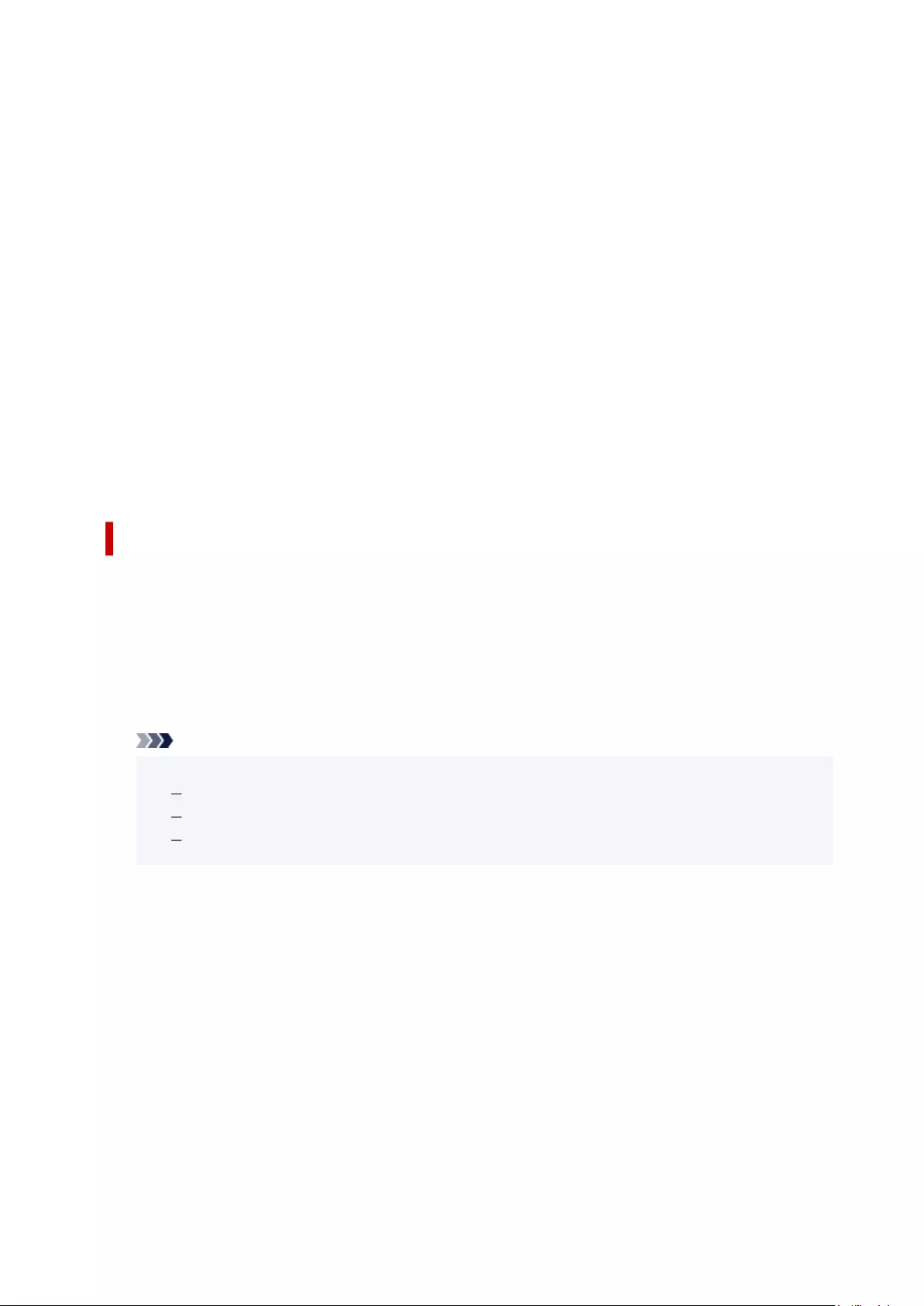
Print after reception is complete
When you select this check box, you can prevent the print quality from dropping if the print
job reception is cut off or if printing is interrupted.
Save in Job Box
The print job is saved to the printer's hard disk drive. If you selected Save in Job Box, select an
individual box number as the save destination from the Job Box list.
Name of data to be saved
Use file name
The file name is used as-is.
Enter name
You can set a new name. Enter the save name in Name.
Job Box
The box list appears. If you selected Save in Job Box, select an individual box number as the save
destination from the list.
Acquire Job Box Name
When you click this, Job Box displays the box name that was obtained from the printer.
Paper Size Options dialog box
You can create and register any user-defined paper. You can then select the defined paper size from
Custom Paper Size of Page Size.
Paper Size List
The names and sizes of the paper sizes that the printer driver can use are displayed.
Delete
From Paper Size List, you can delete a user-defined paper that a user created.
Note
• Paper deletion is not possible in the following case:
When a standard paper size of the printer driver is selected
When an oversized paper size is selected
When a paper size with a red circle is selected
Custom Paper Size Name
You can specify the name of a user-defined paper.
Units
You can specify the units for the height and width dimensions of the user-defined paper.
Page Size
You can specify the Width and Height settings of the paper.
Borderless Printing Size
When you select this check box, you can select a size from the paper sizes that support
Borderless Printing.
Fix the Ratio of the Width to Height
When you select this check box, you can change the size while keeping the Width and Height
ratio.
538
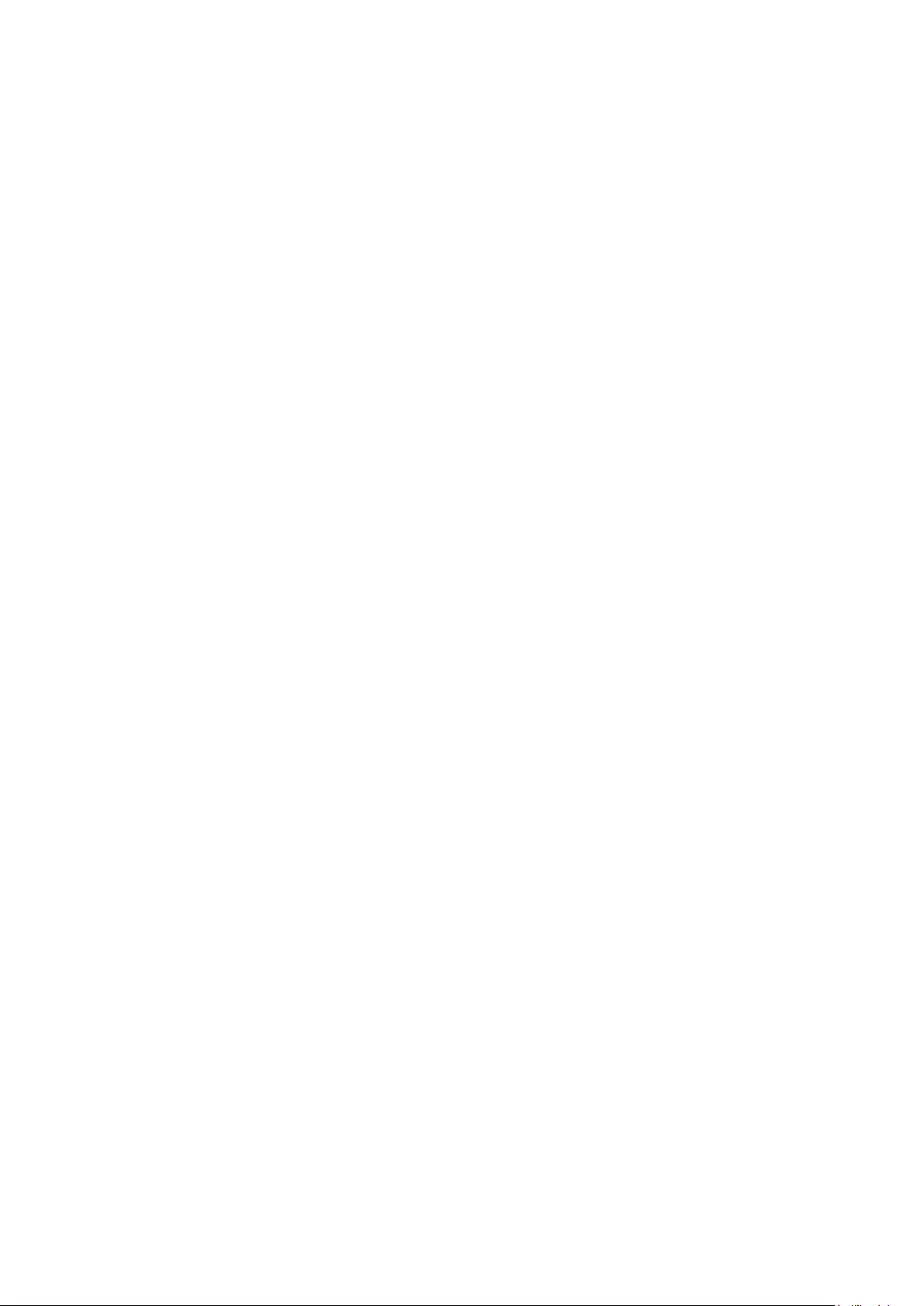
Width
Specify the paper width.
Height
Specify the paper height.
Register with the OS
Register the set user-defined paper in the OS.
By registering in the OS, any user sharing the use of the printer or PC can use the set user -defined
paper.
Add
You can register a user-defined paper that was set and overwrite the existing user-defined paper.
Display Series
You can narrow down the paper sizes to be displayed in Paper Size List.
Oversize
When you select this check box, add appropriate margins so that the document contents will not get
cut off, and then print the document.
539
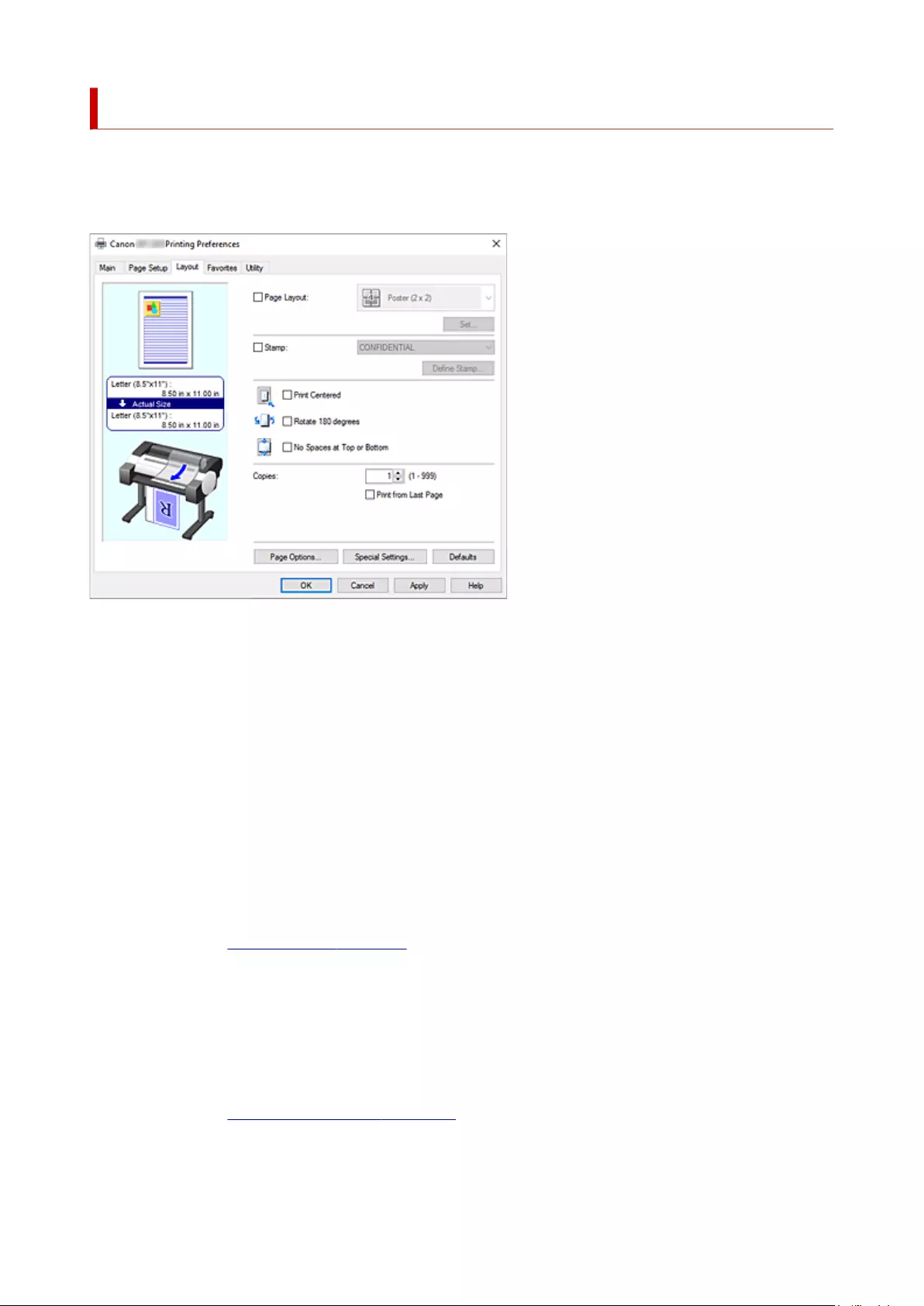
Layout Tab Description
The Layout tab allows you to specify how to arrange the document onto the paper. You can also set the
number of copies to be printed and the print sequence. If the application software that you used to create
the document features the same functions, specify the settings from the application software.
Settings Preview
The paper illustration shows how the original will be laid out on a sheet of paper.
You can check an overall image of the layout.
The printer illustration shows how to load paper to match the printer driver settings.
Check whether the printer is set up correctly by looking at the illustration before you start printing.
Page Layout
Selects the size of the document you want to print and the type of printing.
Poster (1 x 2)/Poster (2 x 2)
Printing is performed with poster settings.
The value in parentheses represents the ratio of the vertical x horizontal lengths. As the number of
divisions increases, the number of sheets used for printing increases. If you are pasting pages together
to create a poster, increasing the number of divisions allows you to create a larger poster.
Set...
Opens the Pages to Print dialog box.
Specify this setting when you want to print only specific pages.
Free Layout
You can freely position and print any document created with an application software.
You must install imagePROGRAF Printer Driver Extra Kit to use this function. Go to the Canon website,
download imagePROGRAF Printer Driver Extra Kit, and then install it.
Set...
Opens the Free Layout Settings dialog box.
You can freely specify detailed settings for free layout.
540
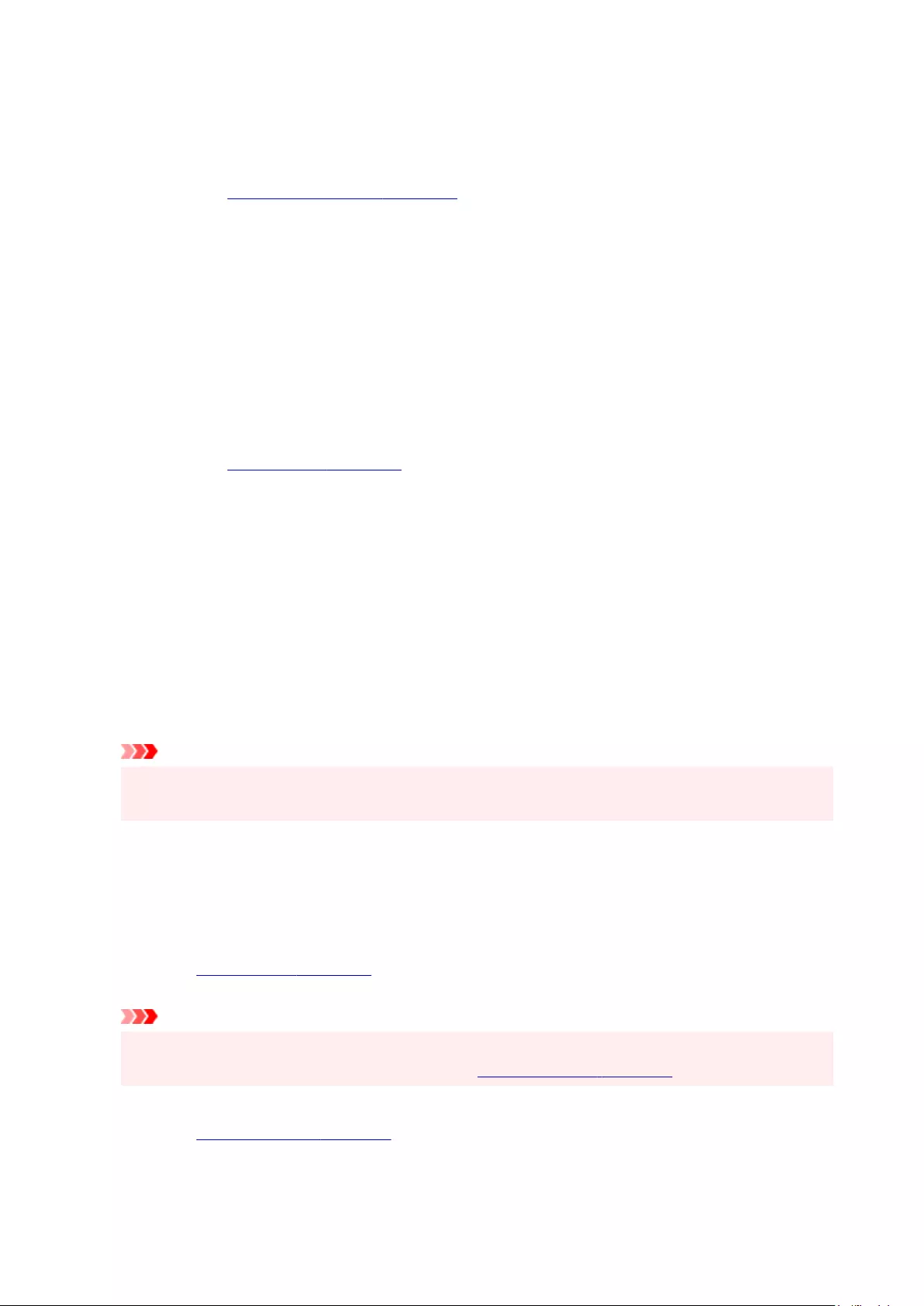
2 Pages/Sheet / 4 Pages/Sheet / 6 Pages/Sheet / 8 Pages/Sheet / 9 Pages/Sheet / 16 Pages/Sheet
Multiple pages are assigned to one sheet of paper and printed. The number presents the number of
pages assigned to one sheet.
Set...
Opens the Page Layout Printing dialog box.
You can freely specify detailed settings for assigned printing.
Edit Using PosterArtist
Word processing and spreadsheet software documents and web browser screens, etc. can be edited a
print from PosterArtist.
You must install PosterArtist to use this function. Go to the Canon website, download PosterArtist, and
then install it.
Stamp
The Stamp function prints a specific character string over the document pages. You can select the
characters to be printed from a list or use the Define Stamp dialog box to set any characters.
Define Stamp...
Opens the Define Stamp dialog box.
You can specify detailed stamp settings or register any stamp.
Print Centered
Prints document in center of paper.
Rotate 180 degrees
Rotates document 180 degrees and prints it.
No Spaces at Top or Bottom
When printing on roll paper, you can save paper by reducing the upper and lower margins when
printing.
Copies
Specifies the number of copies you want to print. You can specify a value from 1 to 999.
Important
• If the application used to create your document has a similar function, specify the number of copies
with the application without specifying it here.
Print from Last Page
Check this check box when you want to print from the last page in order. If you do this, you do not
need to sort the pages into their correct order after printing.
Uncheck this check box to print your document in normal order, starting from the first page.
Page Options...
Opens the Page Options dialog box.
You specify settings for printing information such as date, user name, and page number.
Important
• Depending on your usage environment, you may not be able to use the Page Options function. In
this case, set Spooling at Printer Driver in the Special Settings dialog box to Yes.
Special Settings...
Opens the Special Settings dialog box.
If you are unable to obtained the desired print results, you can change the print processing method.
541
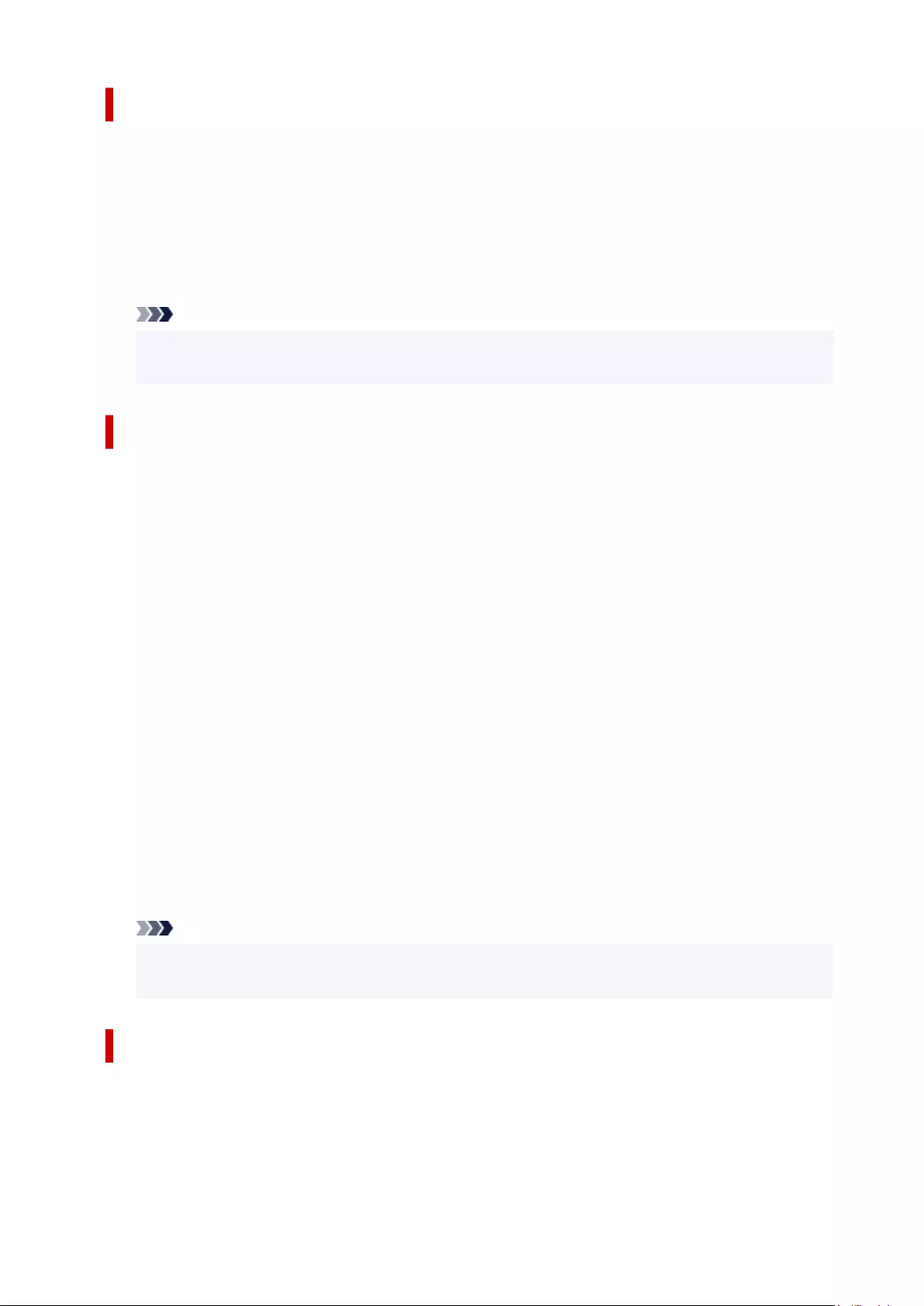
Pages to Print dialog box
When printing a poster that has been divided into several pages, you can specify which pages to print and
just print those pages.
Simply clear the check boxes of the pages you do not want to print.
In the setting view, the pages that were unchecked are hidden, and only the pages to be printed are
displayed.
Invert
Switches the pages to be displayed or hidden.
Note
• The Pages to Print dialog box appears only when Poster (1 x 2) or Poster (2 x 2) is selected
for Page Layout.
Free Layout Settings dialog box
You can specify detailed settings for free layout.
Paper Orientation
Selects the printing orientation.
If the application used to create your document has a similar function, select the same orientation that
you selected in that application.
Portrait
Prints the document so that its top and bottom positions are unchanged relative to the paper feed
direction.
Landscape
Prints the document by rotating it 90 degrees relative to the paper feed direction.
Roll Paper Length
Sets the roll paper length.
Auto
Automatically determines the roll paper length and prints.
Manual Settings
Determines and specifies the roll paper length.
Page Order
Specifies the document orientation to be printed on a sheet of paper.
Note
• The Free Layout Settings dialog box appears only when Free Layout is selected for Page
Layout.
Page Layout Printing dialog box
This dialog box allows you to select the number of document pages to be placed on one sheet of paper,
the page order, and whether a page border line is to be printed around each document page.
The settings specified in this dialog box can be confirmed in the settings preview on the printer driver.
542
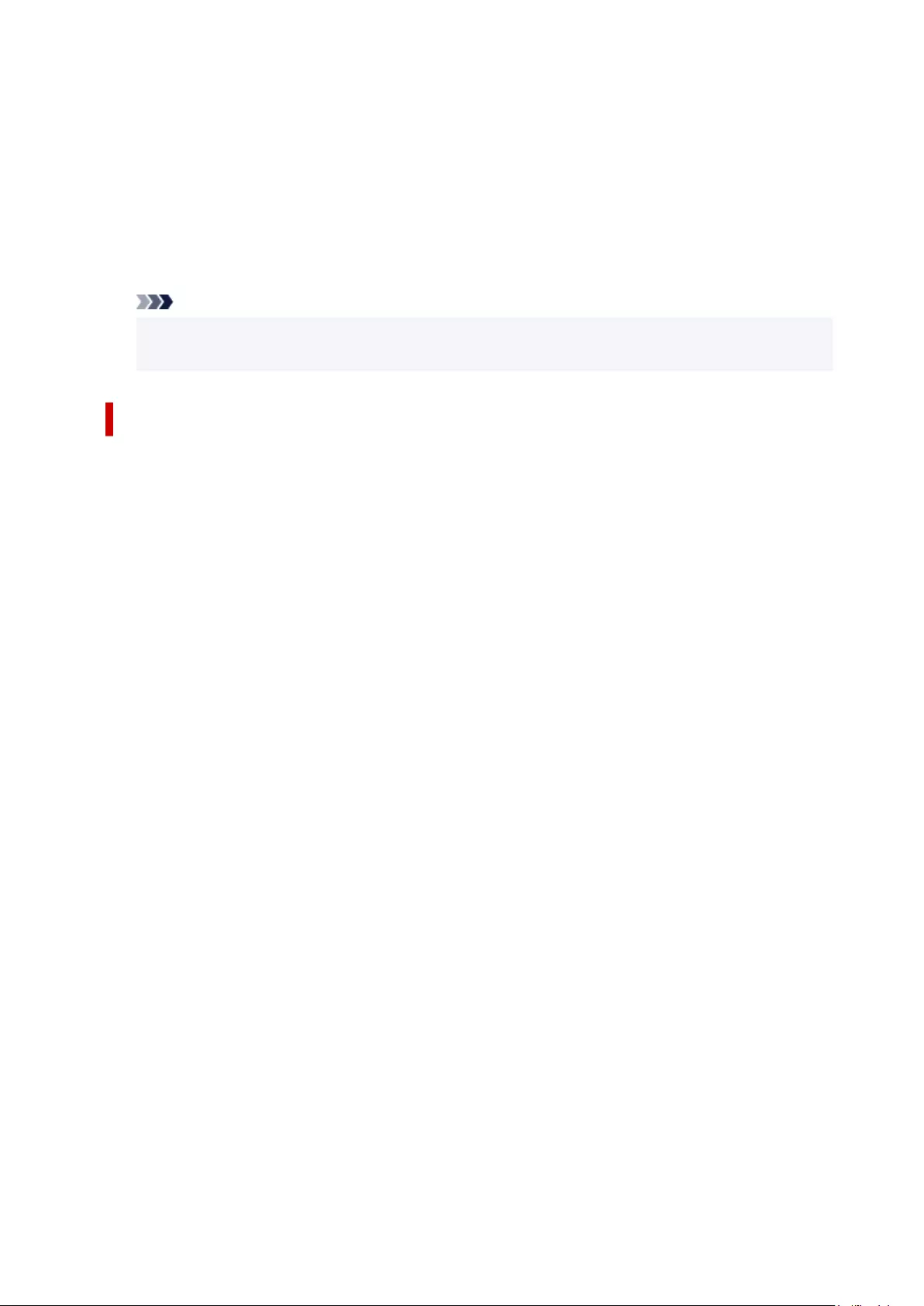
Preview Icon
Shows the settings made on the Page Layout Printing dialog box.
You can check what the print result will look like before you actually print the data.
Page Order
Specifies the document orientation to be printed on a sheet of paper.
Page Border
Prints a page border line around each document page.
Select something other than None from the list to print the page border line.
Note
• The Page Layout Printing dialog box appears only when 2 Pages/Sheet, 4 Pages/Sheet, 6
Pages/Sheet, 8 Pages/Sheet, 9 Pages/Sheet, or 16 Pages/Sheet is selected for Page Layout.
Define Stamp dialog box
The Define Stamp dialog box allows you to specify settings for printing a stamp over the document
pages. In addition to the pre-registered ones, you can register and use your original stamp.
Stamps
This is a list of the pre-registered stamps.
Add
Creates an original stamp.
Click this item to set Name, Text, Font, Style, Size, and Color.
Name
Enter the stamp name to be registered.
Text
Enter the characters to be used in the stamp.
Font
Selects the font for the stamp text string.
Style
Selects the font style for the stamp text string.
Size
Selects the font size for the stamp text string.
Color
Select the color of the stamp text string.
Delete
Deletes an unnecessary stamp.
Specify the title of an unnecessary stamp from the Stamps, and click this button.
Outline
Selects a frame that encloses the stamp text string.
Print Style
Select the stamp printing method.
Select Transparent to print the stamp on the back of the document, and select Overlap to print the
stamp on the front.
543
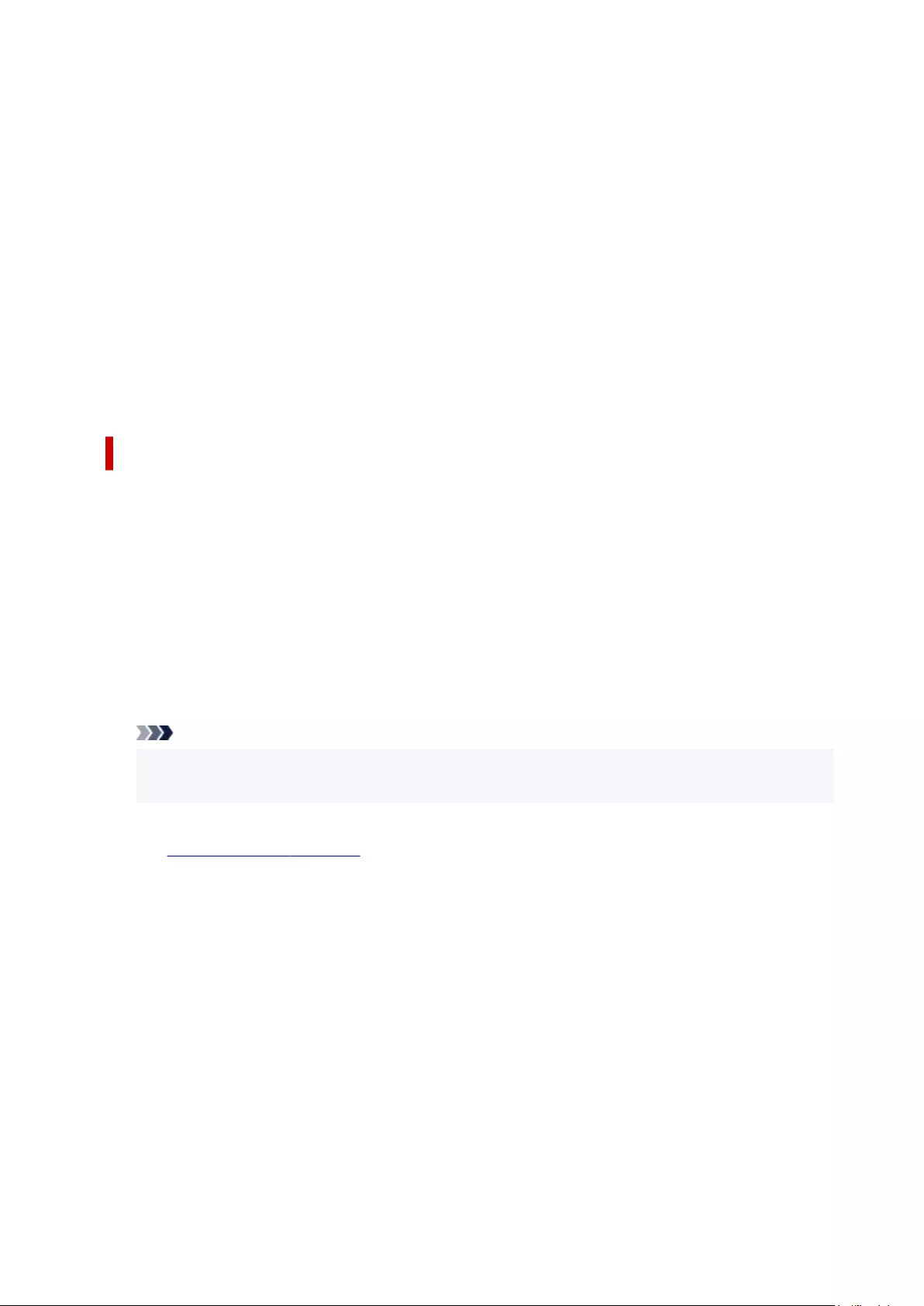
Position
Specifies the stamp position on the page.
You can specify values in X and Y to set the coordinates, or you can drag the horizontal and vertical
slide bars to the left/right or up/down to change the coordinates.
Move to Center
Moves the stamp to the center of the paper.
Angle
Set the stamp positioning angle.
You can specify a value in Set Angle to set the angle, or you can drag the slide bar left/right to
change the angle.
When specifying an angle value, set a value in the range of -180 to 180.
Stamp first page only
Select this check box if you want to print a stamp only on the first page.
Page Options dialog box
Specify the print settings, such as date, user name, and page number.
Print Date
Select the position for printing the date.
Print Time Also
Prints the time along with the date.
Print User Name
Select the position for printing the user name.
Print Page Number
Select the position for printing the page number.
Note
• It will be displayed if you select Yes in Spooling at Printer Driver in the Special Settings dialog
box.
Format Settings
The Format Settings dialog box opens, and you can set the format.
Format Settings dialog box
Set the format to be used when printing the contents set in the Page Options dialog box.
Font
Select the font type.
Style
Select the font style.
Size
Select the font size.
Color
Select the font color.
544

Special Settings dialog box
The Special Settings dialog box allows you to change the print processing method if you do not get the
print results you want.
Settings Summary
This is a list of items that you can set in the Special Settings dialog box.
When you click an item that you want to set, the setting contents are displayed outside the box.
Spooling at Printer Driver
Set whether print jobs are to be spooled in the print driver or whether PageComposer processing
is to be performed.
Setting No (Use RAW Spooling) or Yes may improve the print results or the printing speed.
Also, depending on the setting, you may not be able to use some of the driver functions.
FineZoom Settings
Use this function to print on long paper.
Yes
The print problem may be corrected.
Select this in usual cases.
No
Image distortions may be corrected (for example, small lines may be eliminated).
Preview Switching
If you check the Preview before printing check box on the Main tab and then print,
PageComposer starts.
Application Color Matching Priority
You can assign higher priority to color management by the application software.
Fast Graphic Process
If image colors or line thicknesses are printed incorrectly, you may be able to get the print results
you want by setting this function to off.
This is only displayed when using a 32-bit driver.
Disable the color profile setting of the application software
If the color profile information set in the application software is output to the printer driver, the
printing results may include an unexpected tint. You can resolve the problem in this case by
setting Disable the color profile setting of the application software to On.
Important
•Even if this is set to On, it will only disable some of the color profile information, and it is still
possible to print using the color profile.
This should normally be set to Off when using.
Specify Pattern Resolution
This function is for switching the rendering resolution for drawings using the hatch brush or
pattern brush.
545
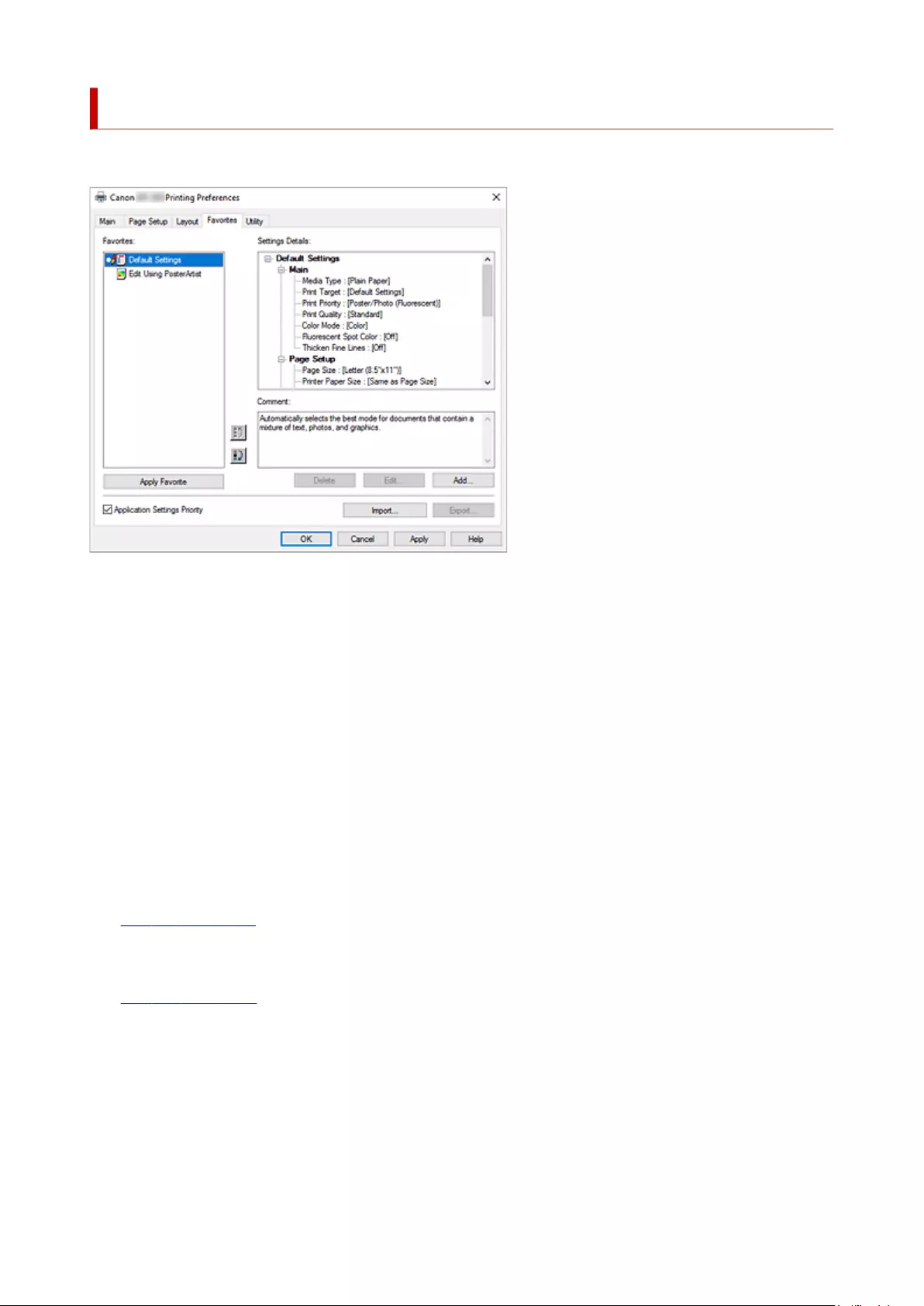
Favorites Tab Description
The Favorites tab allows you to register frequently used print settings as favorites.
Favorites
A list of the registered favorite settings appears. The Default Settings are registered in the initial
settings.
Settings Details
The settings of the favorite that you selected from Favorites appear.
Comment
The comment registered to the favorite appears.
Apply Favorite
You can change the print settings to the settings of the favorite that you selected from the Favorites
list.
Delete
You can delete favorites that have become unnecessary.
Edit...
The Edit dialog box opens.
You can change the name and icon settings of the favorite that you selected from the Favorites list.
Add...
The Add dialog box opens.
You can register the current settings as a favorite.
Application Settings Priority
The setting in the application software will take priority over the favorites setting set on the printer driver.
The setting in the application software is only prioritized for Page Size, Orientation and Copies.
Place a checkmark to prioritize the settings for the application software.
Import...
You can read the settings of the favorite that was saved to a file (.cfg).
546
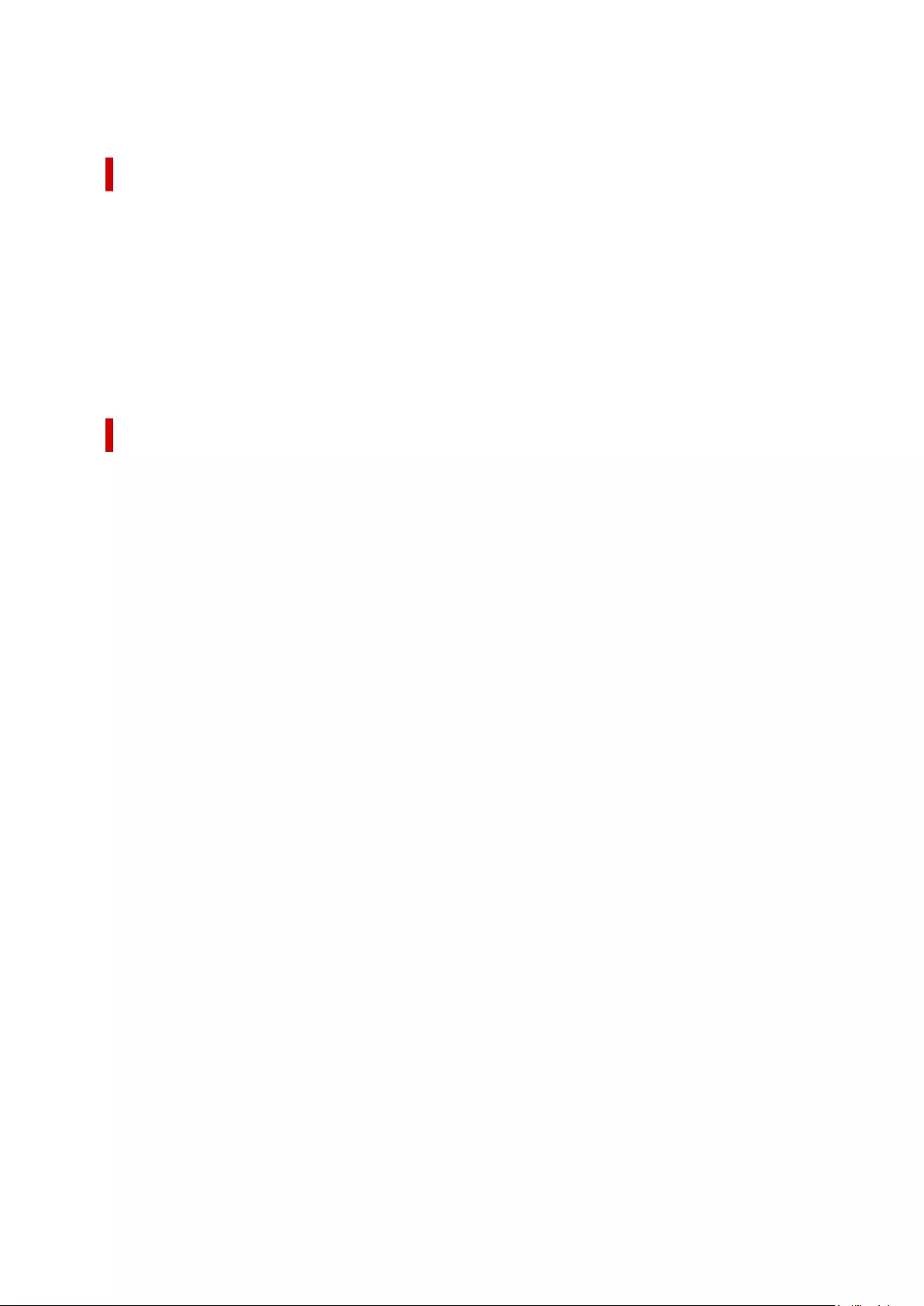
Export...
You can save the settings of a favorite to a file (.cfg).
Edit dialog box
You can change the name and icon of the favorite that you selected from the Favorites list.
Name
Changes name to be displayed in Favorites list.
Icon
Changes icon to be displayed in Favorites list.
Comment
Changes information to be displayed in Comment.
Add dialog box
You can save the current print settings as the settings of a favorite.
Name
Set the name to be displayed in Favorites list.
Icon
Set the icon to be displayed in Favorites list.
Comment
Enter information to be displayed in Comment.
547

Utility Tab Description
The Utility tab allows you to perform printer maintenance or check the settings of the printer.
Print Nozzle Check Pattern
Prints a nozzle check pattern.
Perform this function if printing becomes faint or a specific color fails to print. Print a nozzle check
pattern, and check whether the print head is working properly.
If the print result for a specific color is fainted, or if there are any unprinted sections, use Print Head
Cleaning to clean the print head.
Paper Source
Displayed using the Media Type, Page Size and Roll Paper Width for each currently set paper
feed position.
Print Head Cleaning
Performs print head cleaning.
Print head cleaning removes any blockage in the print head nozzles.
Perform cleaning when printing becomes faint, or a specific color fails to print, even though all ink levels
are sufficiently high.
There are two head cleaning functions, which are described below.
Cleaning
Perform cleaning when printing becomes faint, or a specific color fails to print, even though all ink
levels are sufficiently high.
System Cleaning
System Cleaning is a more powerful cleaning function. Execute this function if the condition does
not improve even after you repeat Cleaning several times.
548
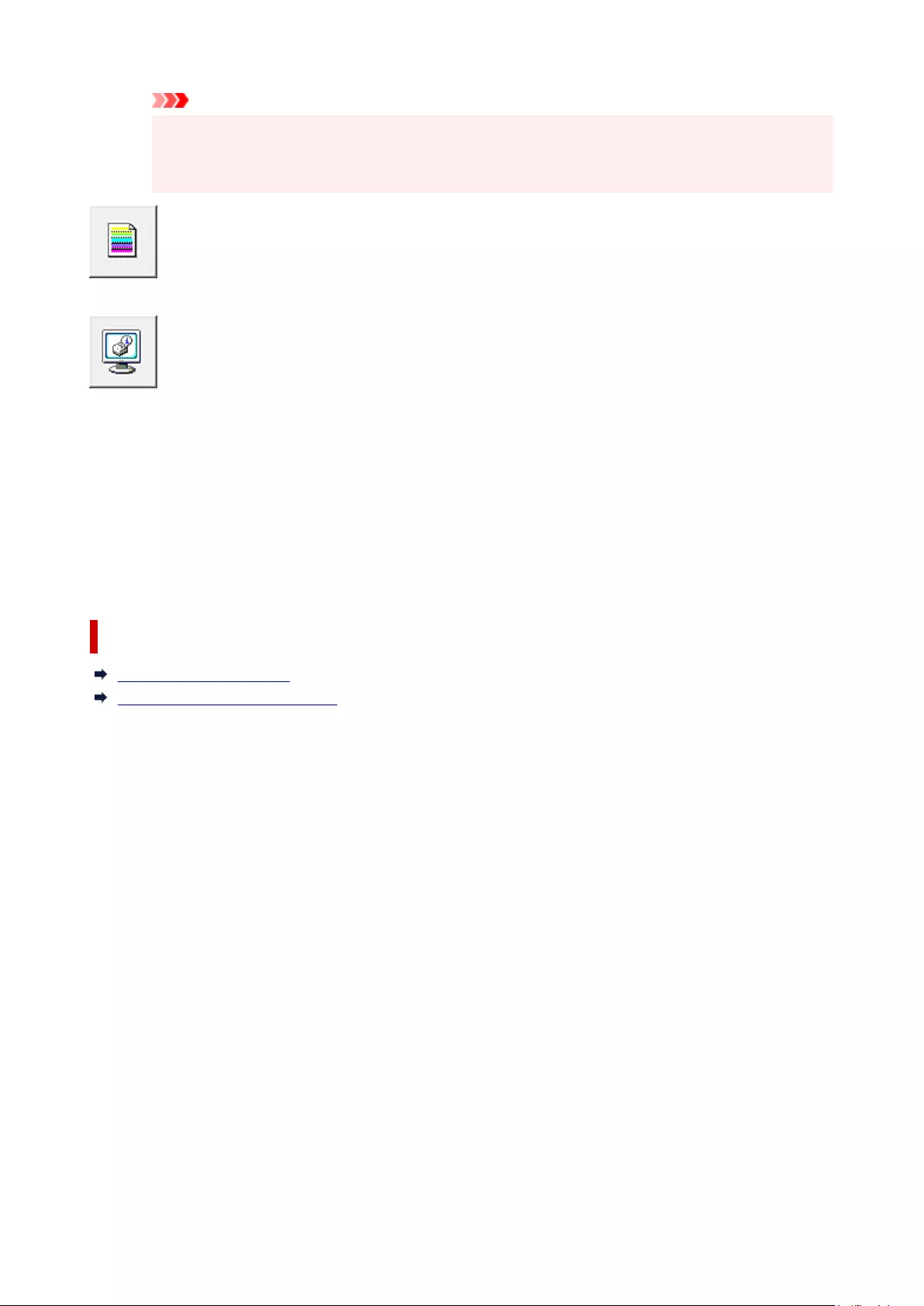
Important
•System Cleaning consumes an extremely large amount of ink.
Executing system cleaning frequently will rapidly deplete your printer's ink supply. Therefore,
execute system cleaning only when necessary.
Paper Feed Amount Adjustment
This function adjusts the paper feed amount if the print result is faint or contains streaks.
View Status
This function copies printer information and setting values to the clipboard.
About
Opens the About dialog box.
You can check information such as the version and copyright of the printer driver.
Settings Summaries...
The Settings Summaries dialog box is displayed.
You can confirm the list of items set in the printer driver.
If you click the tab of each sheet, you can confirm the setting details of each item.
Related Topics
Cleaning the Print Heads
Printing a Nozzle Check Pattern
549
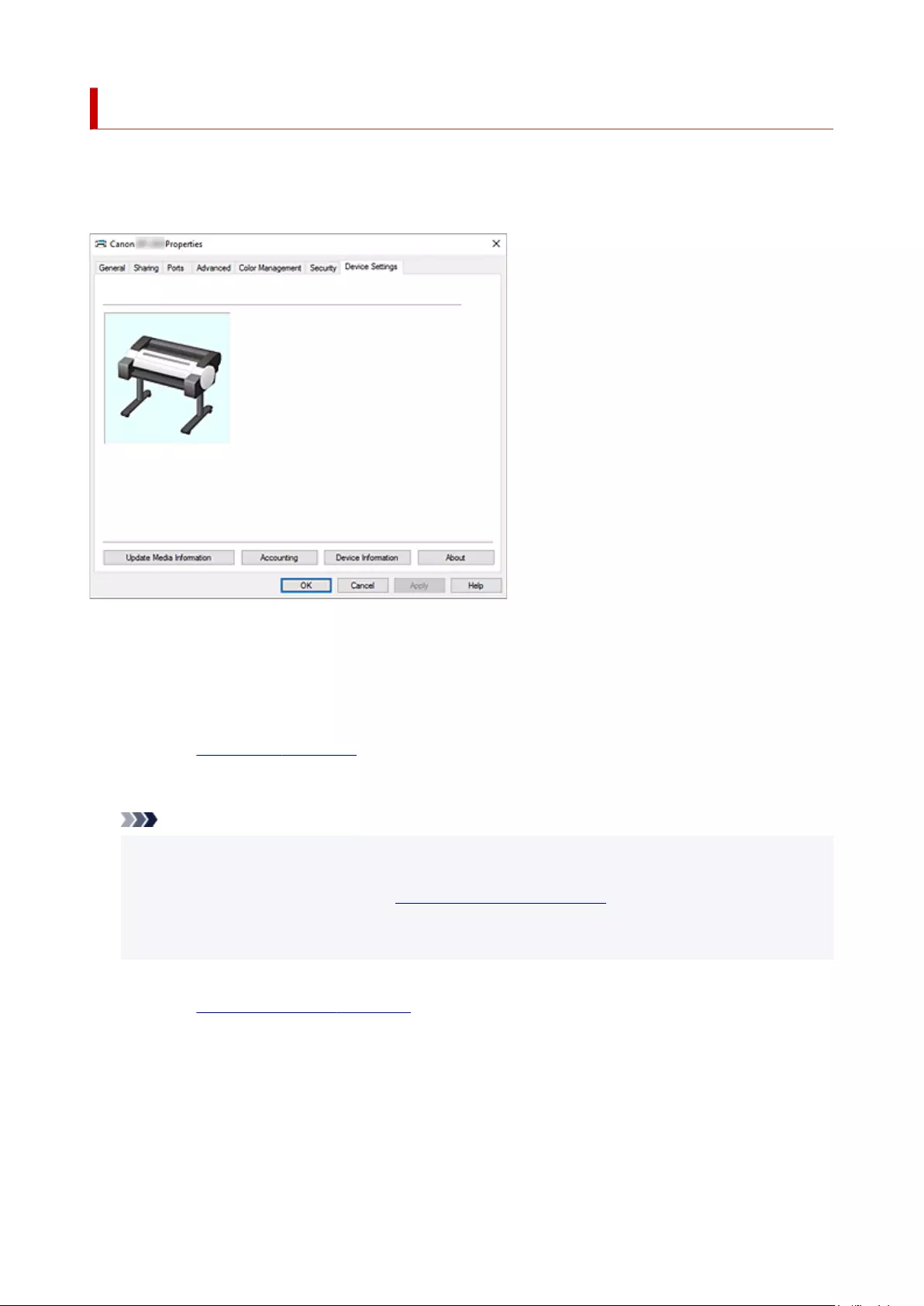
Device Settings Tab Description
Many of the tabs in the Properties windows of the printer are controlled by Windows. However, the Device
Settings tab is for specifying printer configuration-related settings and is part of the printer driver.
The Device Settings tab allows you to specify settings related to the printer unit.
Update Media Information
Opens the Update Media Information dialog box.
Gets the latest media information from the printer and updates the media information in the printer
driver.
Accounting
Opens the Accounting dialog box.
By setting Accounting information, you add IDs to print jobs, and use the printer and cost management
tool to tabulate print history information for any ID.
Note
•Accounting can be set only by users with Administrator rights.
Users without Administrator rights may not be able to set Accounting information.
• To set accounting information, see "Setting Accounting Information."
• If you set accounting information in the Device Settings sheet, the items in the Accounting dialog
in the Main sheet will be greyed out, and you won't be able to configure them.
Device Information
Opens the Device Information dialog box.
You can obtain the device information of the connected printer, and change the configuration to match
the printer that is connected to the driver function.
About
Opens the About dialog box.
You can check information such as the version and copyright of the printer driver.
550
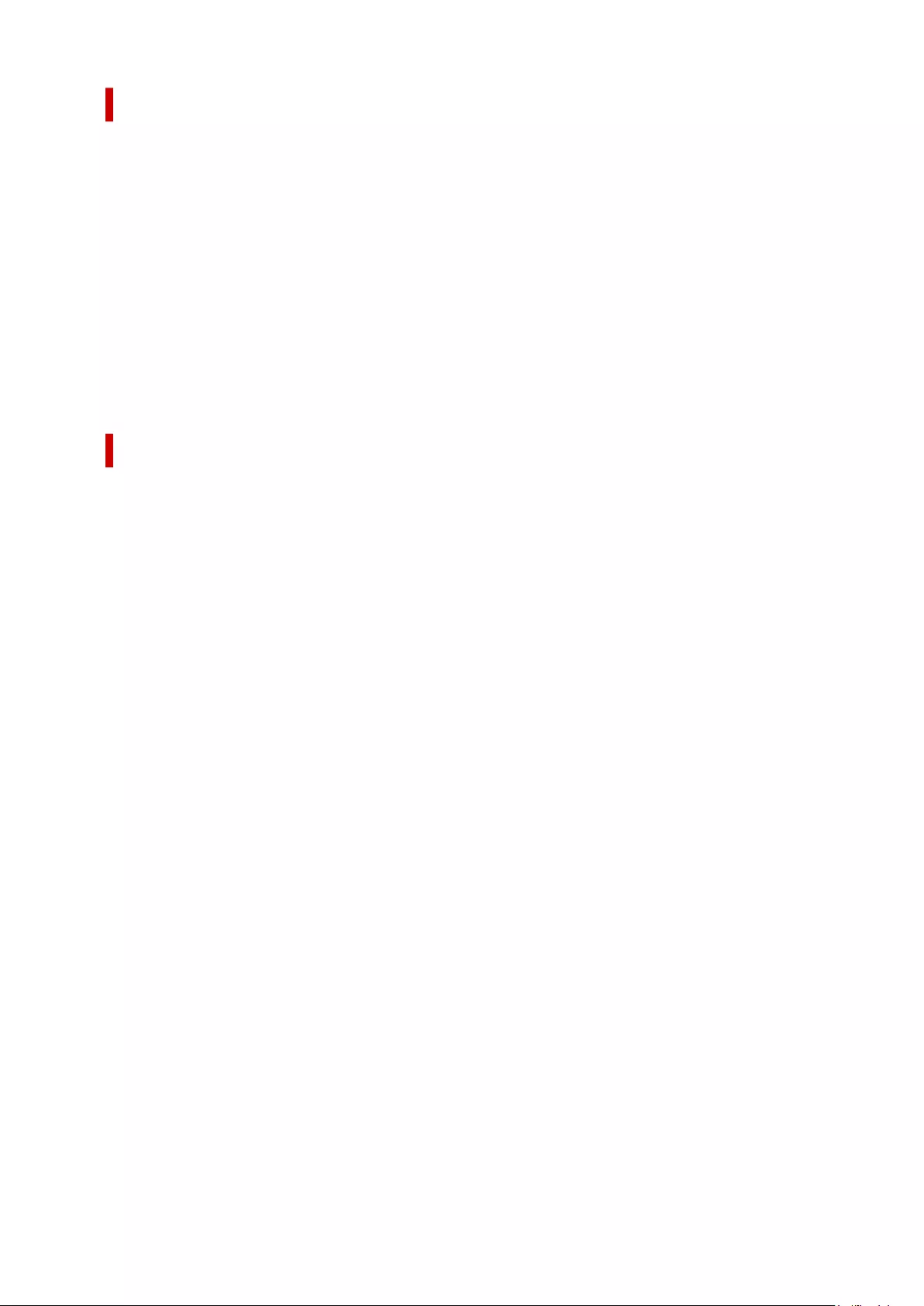
Accounting dialog box
Click Accounting to display the Accounting dialog box.
The Accounting dialog box allows you to add IDs to print jobs. You can then use the IDs, along with the
printer and cost management tool, to tabulate print history information.
Use a fixed Account ID./Use a fixed Department name./Use a fixed Project number.
Prohibits changes to account ID, department, and project number that have already been set.
Check this check box to prevent other users from changing IDs.
Account ID/Department/Project number
Enter the account ID, department, and project number that you want to set. Enter the ID by using
up to 20 alphanumeric characters (0 to 9, a to z, and A to Z).
If you've added checkmarks to Use a fixed Account ID., Use a fixed Department name., or
Use a fixed Project number., you'll be able to configure each setting.
Device Information dialog box
The Device Information dialog box allows you to obtain the device information of the connected printer,
and change the configuration to match the printer that is connected to the driver function.
Settings Summary
This is a list of items that you can set in the Device Information dialog box.
When you click an item that you want to set, the setting contents are displayed outside the box.
Device Type
The maximum supported roll paper width will be set to the initial value.
Hard disk
If a hard disc is equipped, it will be set to Yes.
Acquire Status
Obtain device type and hard disk information from the printer.
551
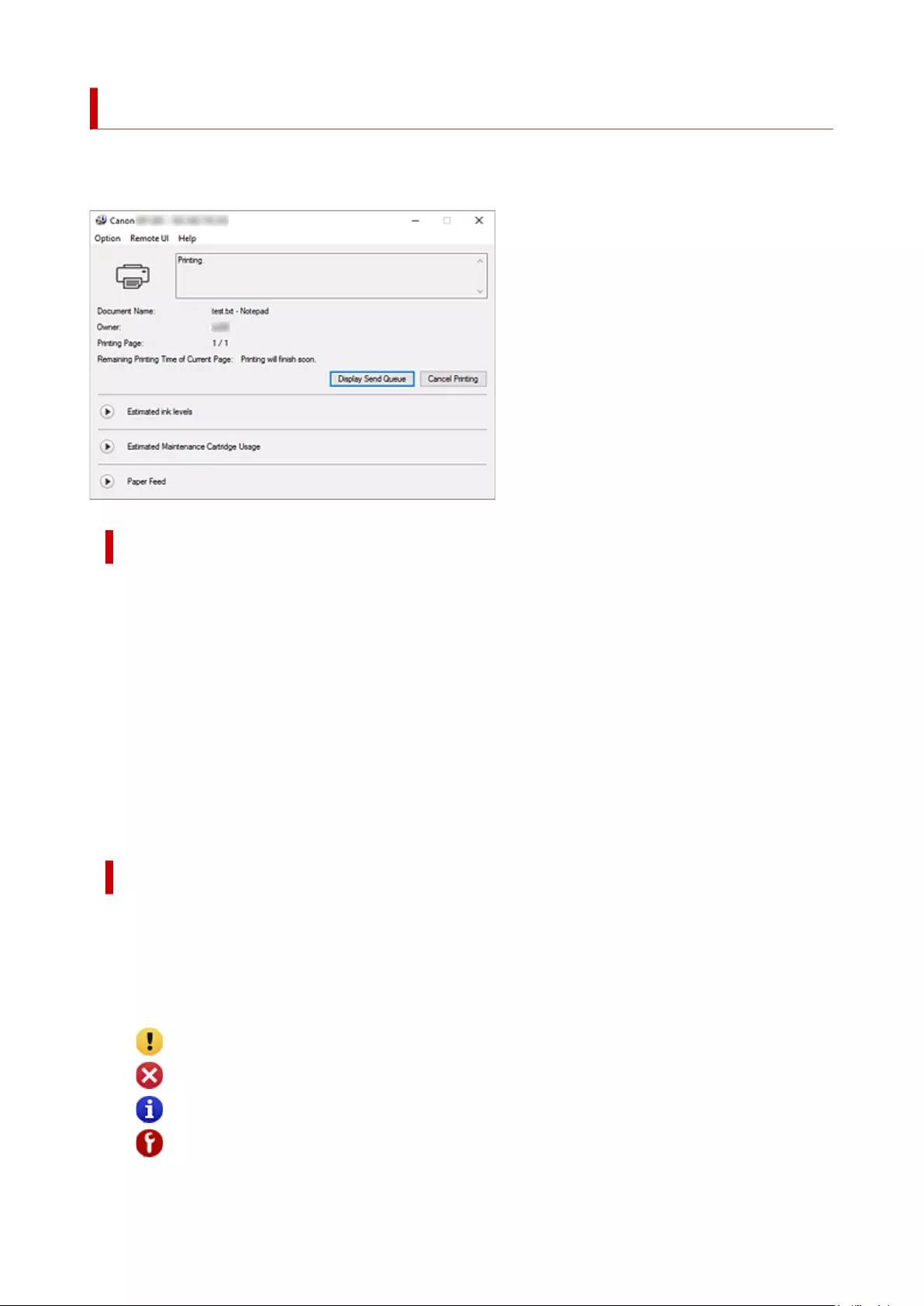
Canon IJ Status Monitor Description
The Canon IJ Status Monitor displays the status of the printer and the printing progress. The monitor uses
graphics, icons, and messages to let you know the printer status.
Canon IJ Status Monitor Features
The Canon IJ Status Monitor offers the following advantages:
You can check the status of the printer on the screen.
The status of the printer is shown on the screen in real time.
You can check the printing progress of each printing document (print job).
Error types and solutions are shown on the screen.
Shown when a printer error occurs.
You can immediately check how to respond.
You can check the ink status.
This function displays graphics showing the ink tank type and the estimated ink levels.
Icons and messages are displayed when ink is running low (ink level warning).
Canon IJ Status Monitor Overview
Canon IJ Status Monitor allows you to check the status of the printer and ink with graphics and messages.
You can check the information on the printing document and the printing progress during printing.
When a printer error occurs, it shows the cause and solution. Follow the instruction in the message.
Printer
Canon IJ Status Monitor shows an icon when a warning or error occurs to the printer.
: A warning is being displayed.
: An operation error has occurred.
: You are being informed of remaining ink levels, etc.
: There has been an error which requires a service.
552
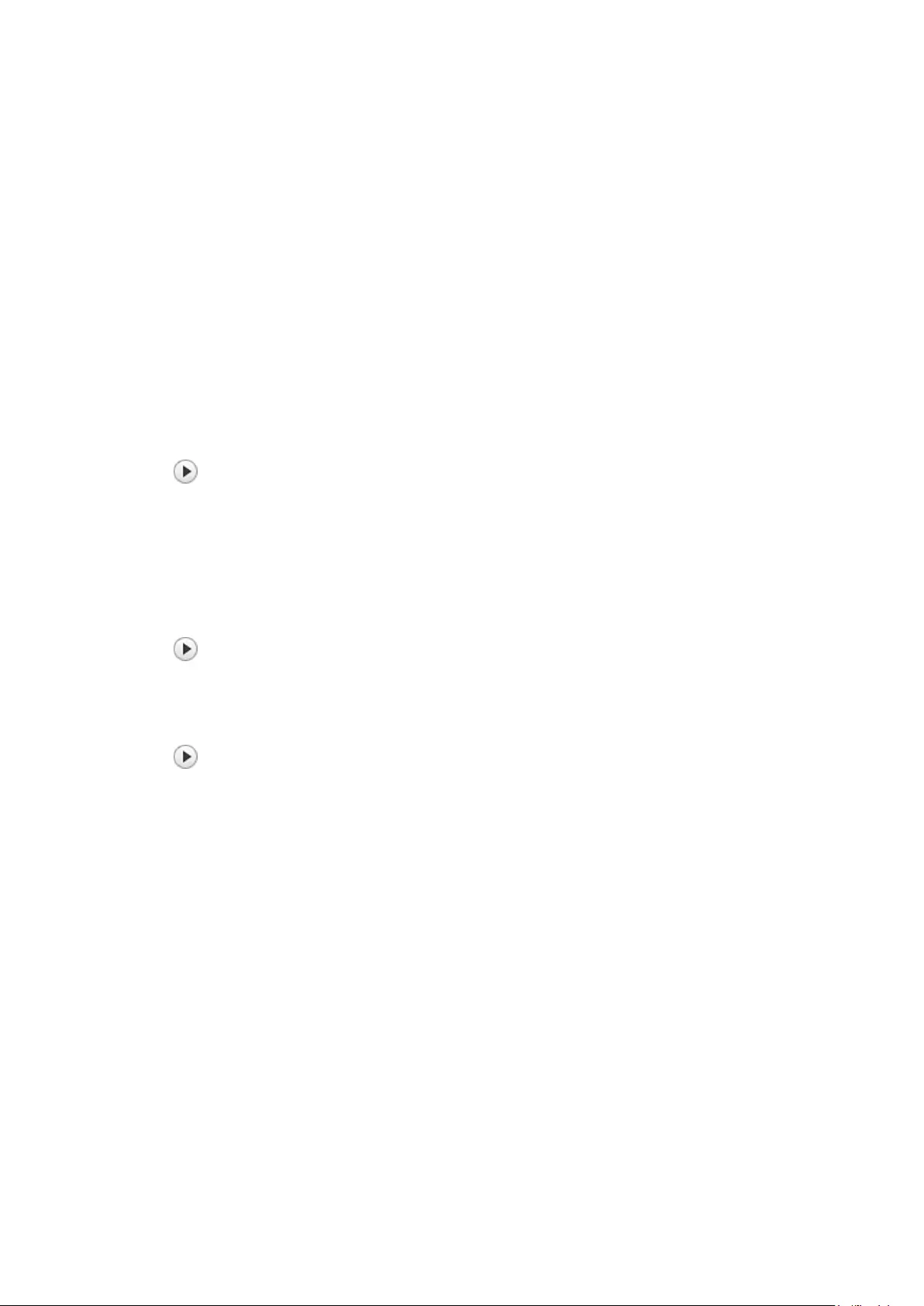
Document Name
Shows the name of the document to be printed.
Owner
Shows the owner's name of the document to be printed.
Printing Page
Shows the number of printing page and total printing pages.
Remaining Printing Time of Current Page
Displays the remaining print time of the pages being printed.
Display Send Queue
Shows the print window used to manage the print job that is being printed or being in the print queue.
Cancel Printing
Cancels the current print job.
Estimated ink levels
Displays icons to report a remaining ink level warning and an ink depletion error.
Click (the disclosure triangle) to display a pictorial representation of the estimated ink level in the
ink tank.
Ink Model Number
You can look up the correct ink tank for your printer.
Estimated Maintenance Cartridge Usage
Displays icons to report that the available space in the maintenance cartridge is low or the cartridge is
full.
Click (the disclosure triangle) to display a pictorial representation of the estimated usage amount
in the maintenance cartridge.
Paper Feed
Displays the size and type of paper loaded in each feeder.
Click (the disclosure triangle) to check the remaining amount of paper.
Purchase information is displayed in Purchase Paper....
Option Menu
If you select Enable Status Monitor, when a printer related message is generated the Canon IJ
Status Monitor starts.
When Enable Status Monitor is selected, following commands are available.
Always Display Current Job
Displays the Canon IJ Status Monitor during printing.
Always Display on Top
Displays the Canon IJ Status Monitor in front of other windows.
Display Warning Automatically
When a Low Ink Warning Occurs
Starts the Canon IJ Status Monitor window automatically and displays it in front of the other
windows when a low ink warning occurs.
When a Maintenance Cartridge Warning Occurs
When a maintenance cartridge remaining space warning occurs, the Canon IJ status
monitor starts automatically and appears in front of all other windows.
553

Other Warnings
When any other warning occurs, the Canon IJ Status Monitor will open automatically and be
displayed in front of other windows.
Start when Windows is Started
Starts the Canon IJ Status Monitor automatically when you start Windows.
Remote UI menu
You are able to open the printer's Remote User Interface.
You are able to check the printer status and run maintenance functions on the printer when
connected to and using it through a network.
Note
• When the printer is being used via USB connection Remote UI will not display.
Printer Information
Allows you check detailed information, such as the printer status, the print progress, and
remaining ink levels.
Maintenance
Allows you to run printer maintenance and change printer settings.
Job Log
Displays the Job history window.
Job List
Displays the Print job window.
HDD Information
Displays the Saved job window.
This window allows you to check each box of the information saved on the printer's hard disk.
Ink Supplier Display Settings
Displays the Ink supplier information window.
Paper Supplier Display Settings
Displays the Paper supplier information window.
Download Security Certificate
Displays the For secure communication window.
This window allows you to download the root certificate, register it to the browser, and disable
warning displays.
Help Menu
When you select this menu item, the Help window for Canon IJ Status Monitor is displayed, and you
can check the version and copyright information.
554
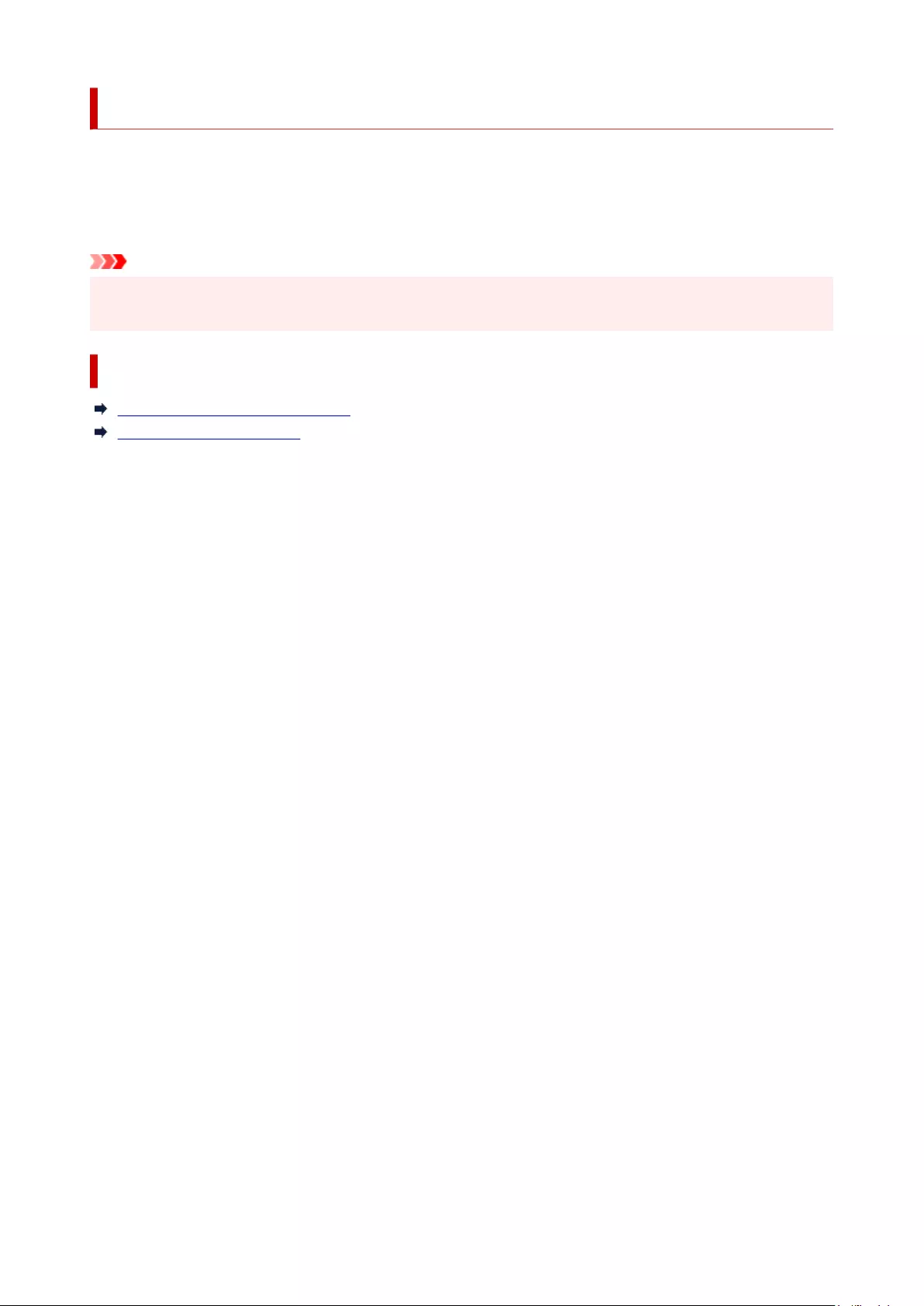
Obtaining the Latest Printer Driver
By updating the printer driver to the latest version of the printer driver, unresolved problems may be solved.
You can check the version of the printer driver by clicking the About button on the Utility tab.
You can access our website and download the latest printer driver for your model.
Important
• You can download the printer driver for free, but any Internet access charges incurred are your
responsibility.
Related Topics
Before Installing the Printer Driver
Installing the Printer Driver
556
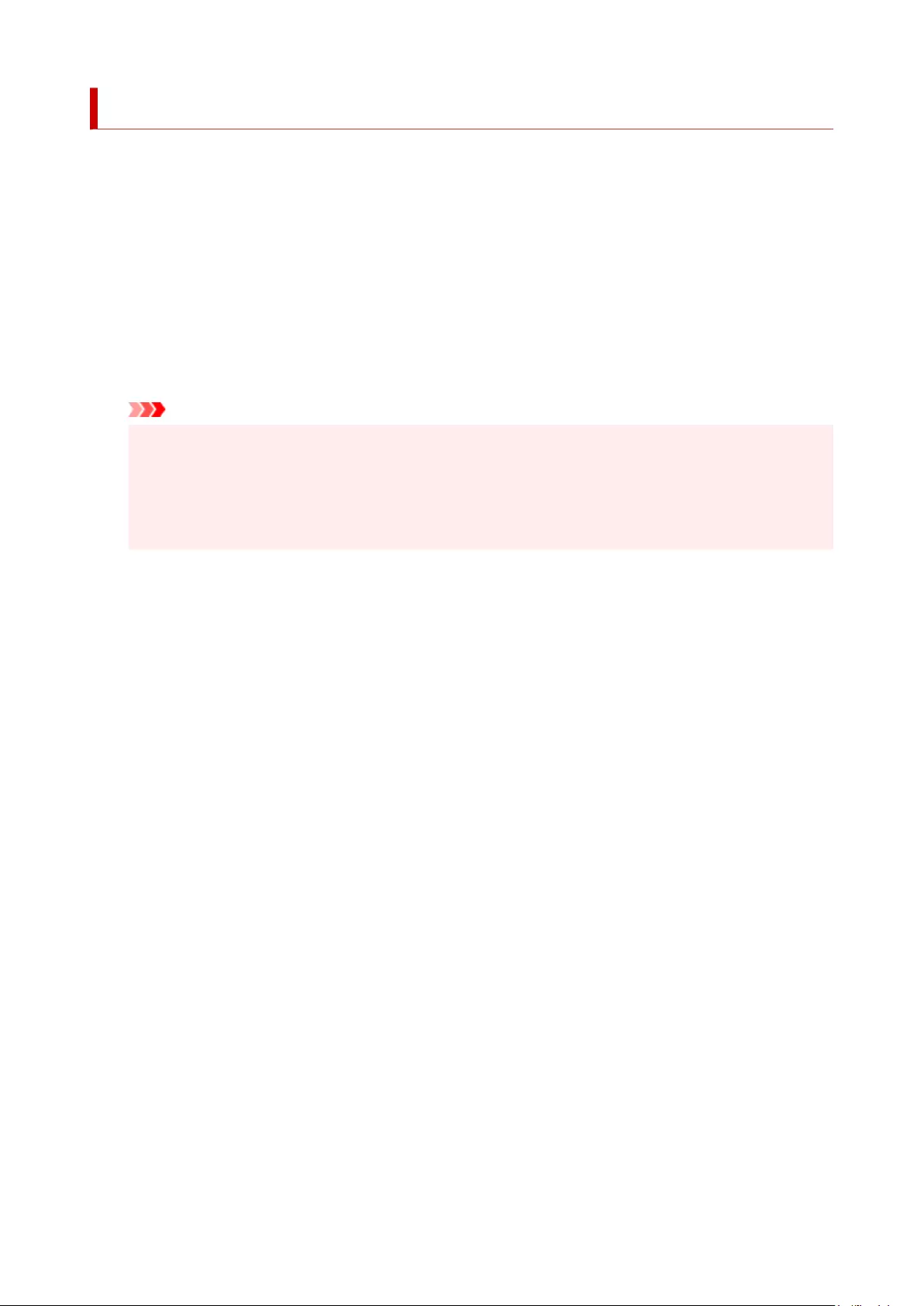
Deleting the Unnecessary Printer Driver
The printer driver which you no longer use can be deleted.
When deleting the printer driver, first exit all programs that are running.
The procedure to delete the unnecessary printer driver is as follows:
1. Start the uninstaller1.
Select the Control Panel -> Programs -> Uninstall a program (Programs and Features).
From the program list, select "XXX Printer Driver" (where "XXX" is your model name) and then click
Uninstall.
The confirmation window for uninstalling the model appears.
Important
•A confirmation/warning dialog box may appear when starting, installing or uninstalling software.
This dialog box appears when administrative rights are required to perform a task.
When you are logged on to an administrator account, click Yes (or Continue, Allow) to continue.
Some applications require an administrator account to continue. In such cases, switch to an
administrator account, and restart the operation from the beginning.
2. Execute the uninstaller
2.
Click Start. When the confirmation message appears, click Yes.
When all the files have been deleted, click Complete.
The deletion of the printer driver is complete.
557
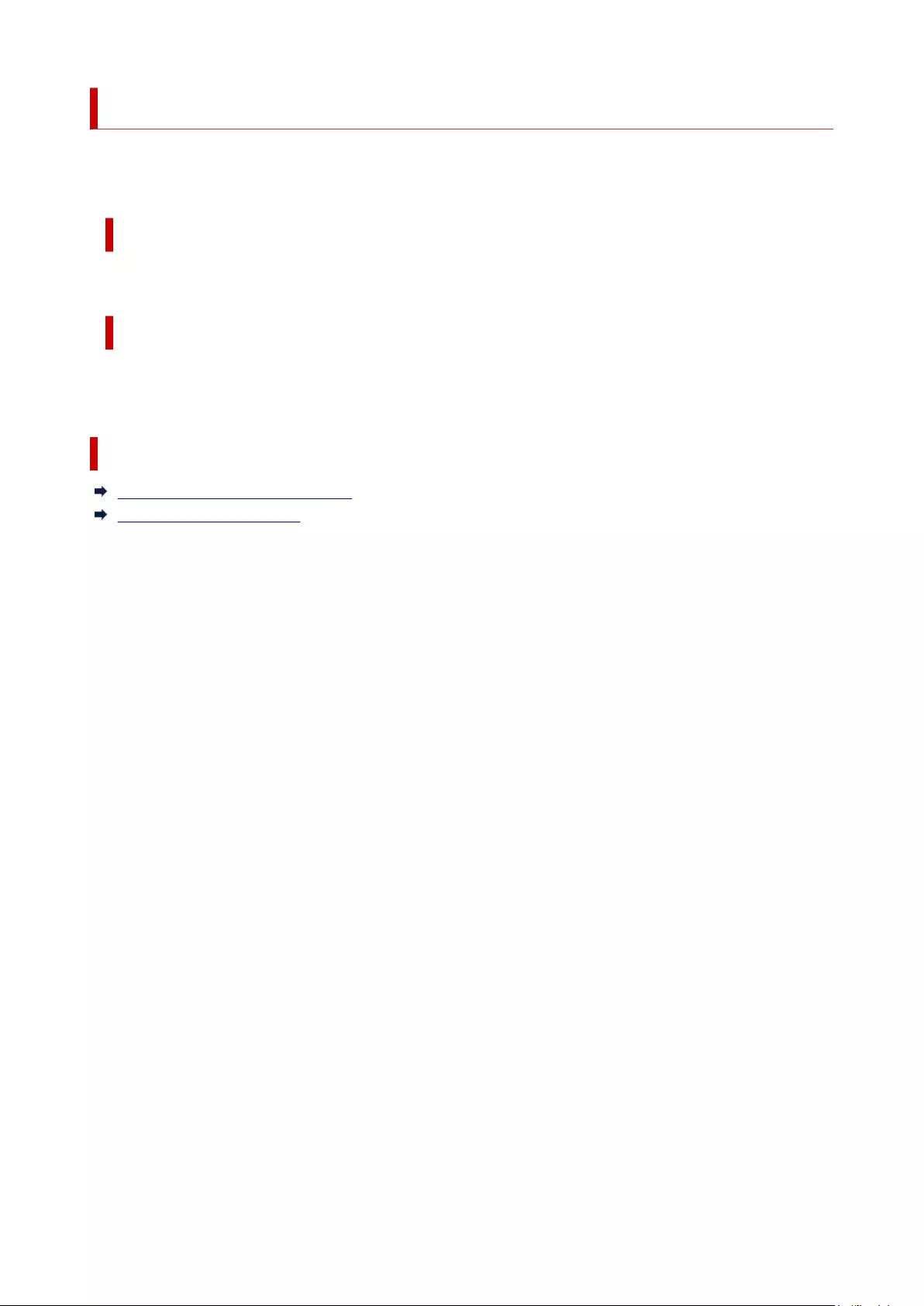
Before Installing the Printer Driver
This section describes the items that you should check before installing the printer driver. You should also
refer to this section if the printer driver cannot be installed.
Checking the Printer Status
• Turn on the printer.
Checking the Personal Computer Settings
• Terminate all running applications.
• Log on as a user who has the administrator account.
Related Topics
Obtaining the Latest Printer Driver
Installing the Printer Driver
558
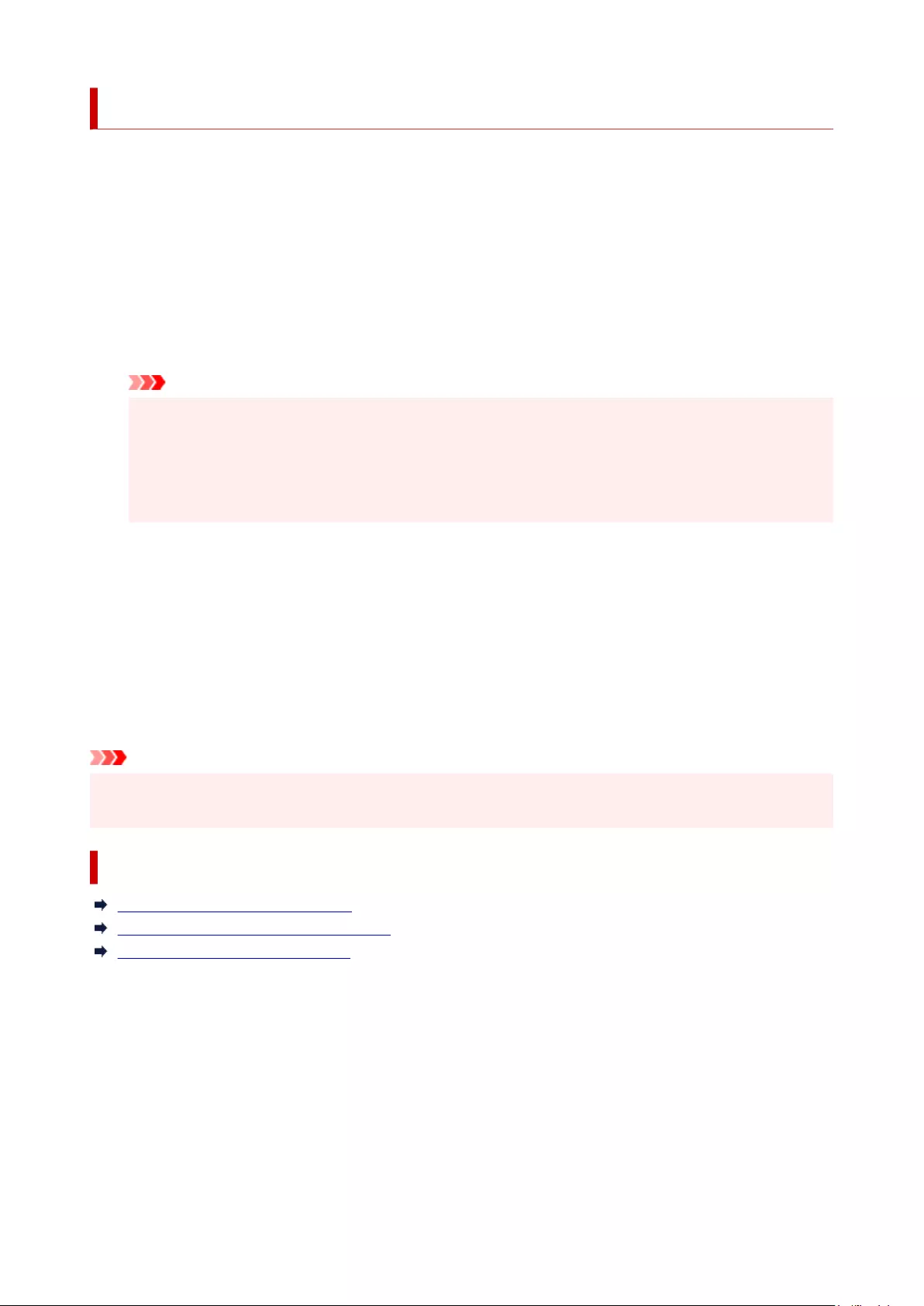
Installing the Printer Driver
You can access our web site through the Internet and download the latest printer driver for your model.
The procedure for installing the downloaded printer driver is as follows:
1. Turn on the printer1.
2. Start the installer
2.
Double-click the icon of the downloaded file.
The installation program starts.
Important
•A confirmation/warning dialog box may appear when starting, installing or uninstalling software.
This dialog box appears when administrative rights are required to perform a task.
When you are logged on to an administrator account, click Yes (or Continue, Allow) to continue.
Some applications require an administrator account to continue. In such cases, switch to an
administrator account, and restart the operation from the beginning.
3. Install the printer driver
3.
Take the appropriate action as described on the screen.
4. Complete the installation4.
Click Exit.
Depending on the environment you are using, a message prompting you to restart the computer may be
displayed. To complete the installation properly, restart the computer.
Important
• You can download the printer driver for free, but any Internet access charges incurred are your
responsibility.
Related Topics
Obtaining the Latest Printer Driver
Deleting the Unnecessary Printer Driver
Before Installing the Printer Driver
559
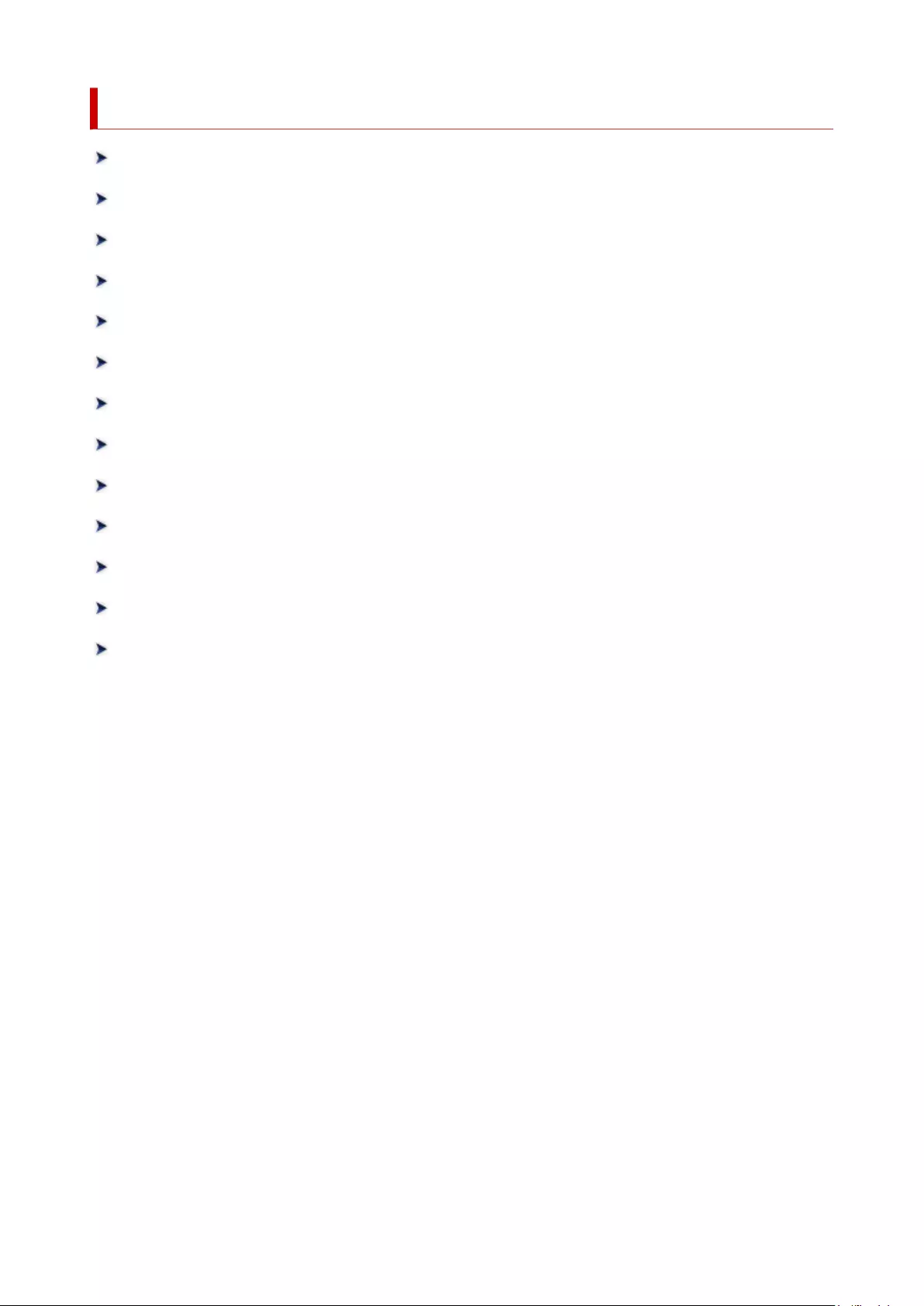
Application Software
Direct Print Plus Guide
Easy-PhotoPrint Editor Guide
Preview Guide (Windows)
Preview Guide (macOS)
Free Layout plus Guide (Windows)
Free Layout Guide (macOS)
Quick Utility Toolbox Guide
IJ Network Device Setup Utility Guide
Media Configuration Tool Guide
Device Management Console Guide
Accounting Manager Guide
PosterArtist Guide
Firmware Update Tool
560
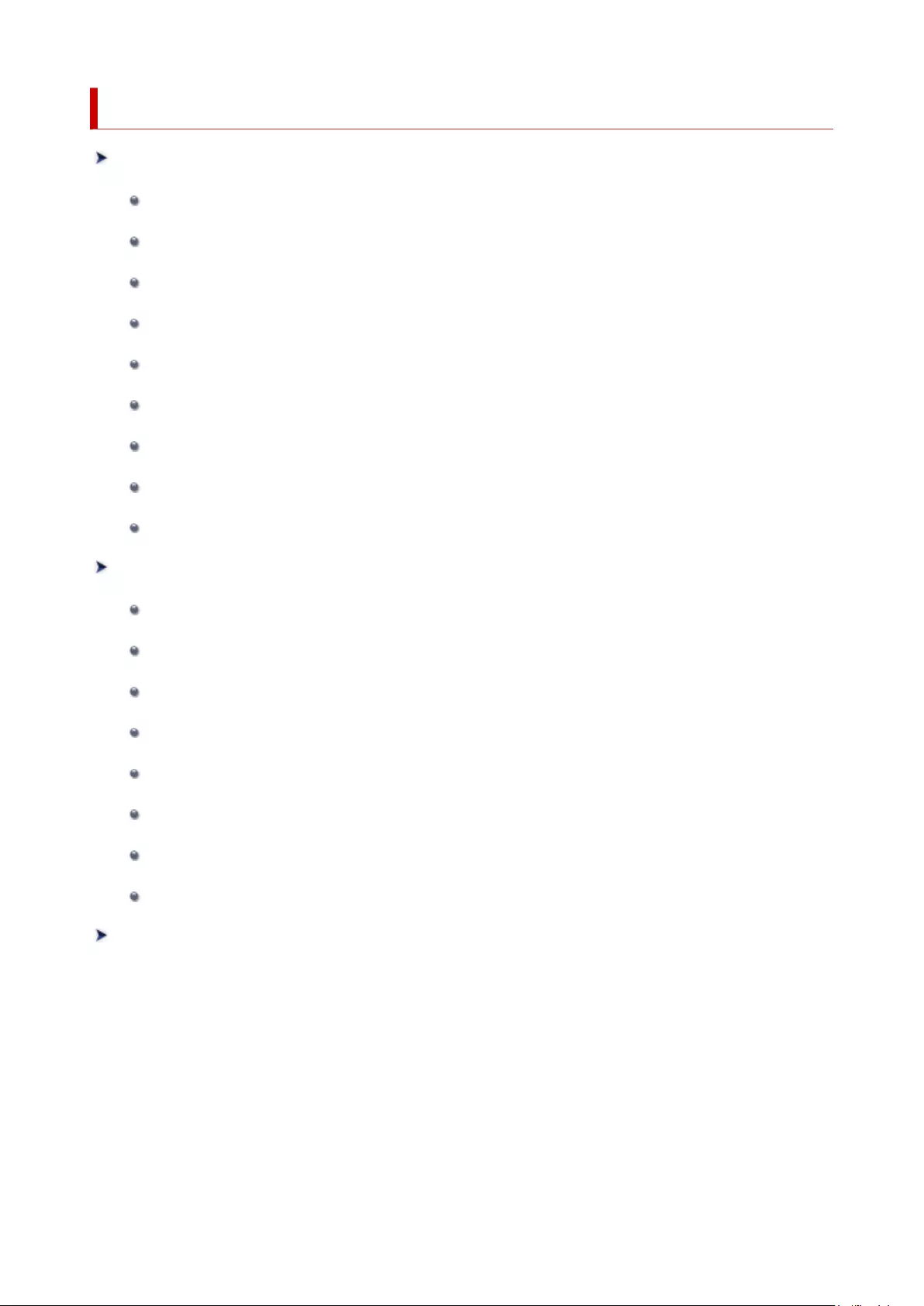
Managing Print Jobs
Basic Print Job Operations
Using Printer Hard Disk
Saving Print Jobs on Personal Job Boxes
Priority Printing
Printing Pending Jobs
Printing Security Print Jobs
Deleting Print Jobs
Printing Saved Jobs
Deleting Saved Jobs
Moving Saved Jobs
Advanced Print Job Operations
Saving Print Jobs Sent from Sources Other than Printer Driver
Printing without Saving Jobs in Common Job Box
Setting Passwords for Personal Job Boxes
Naming Personal Job Boxes
Printing List of Saved Jobs
Renaming Saved Jobs
Printer Hard Disk Operations
Checking Free Hard Disk Space
Collecting Printer Job Logs Using Accounting Manager
561
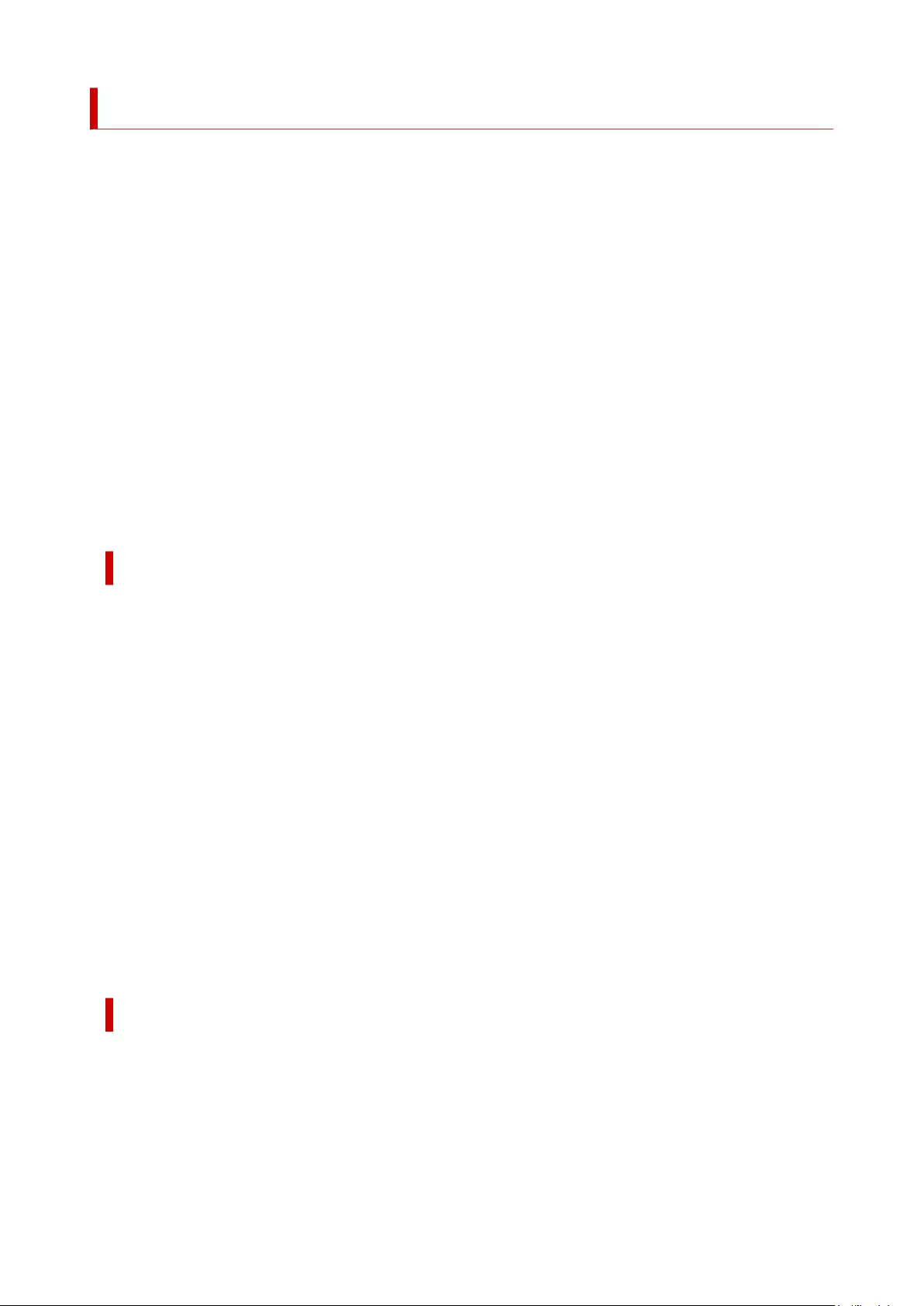
Using Printer Hard Disk
The printer can save print jobs on the built-in hard disk.
Saving print jobs offers the following benefits.
•Save the time spent using a computer•
When you send a print job to the printer, you can save it on the printer after printing or simply save it on
the printer without printing it yet. Saved print jobs can be printed in the required quantity later without the
need to use a computer again.
•Simplify reprinting, if any errors occur•
If errors occur in the middle of printing (as when paper runs out), you can resume printing after clearing
the error without resending the print job from a computer.
•Streamline printing work•
Without using a computer, you can select print jobs and print in the desired quantity. You can also
select multiple print jobs to print during the same period. This enables unattended operation at night, for
example.
Output Method
To save print jobs on the printer's hard disk, configure the printer driver.
In Windows, this is set using the Output Method dialog box.
In macOS, this is set by selecting Additional Settings in the pop-up menu of the printer properties dialog.
Print
Perform printing while saving the print job on the temporary storage area of the printer's hard disk.
Set PIN for printing
Set a 7 digit security code. To start printing, enter the PIN set here using the operation panel. If the
entered PIN does not match the set PIN, the printing does not start.
Print after reception is complete
This option is available in combination with Print. You can prevent degradation of print quality that
occurs when receiving a print job is interrupted and printing is aborted in the middle.
Save in Job Box
Save print jobs on the permanent storage area of the printer's hard disk. Selecting this does not start
printing.
Storage Destination
The storage area on the printer's hard disk is divided into a temporary storage area and a permanent
storage area. The temporary storage area stores print jobs in the job queue or common job box. The
permanent storage area stores jobs in personal job boxes.
563
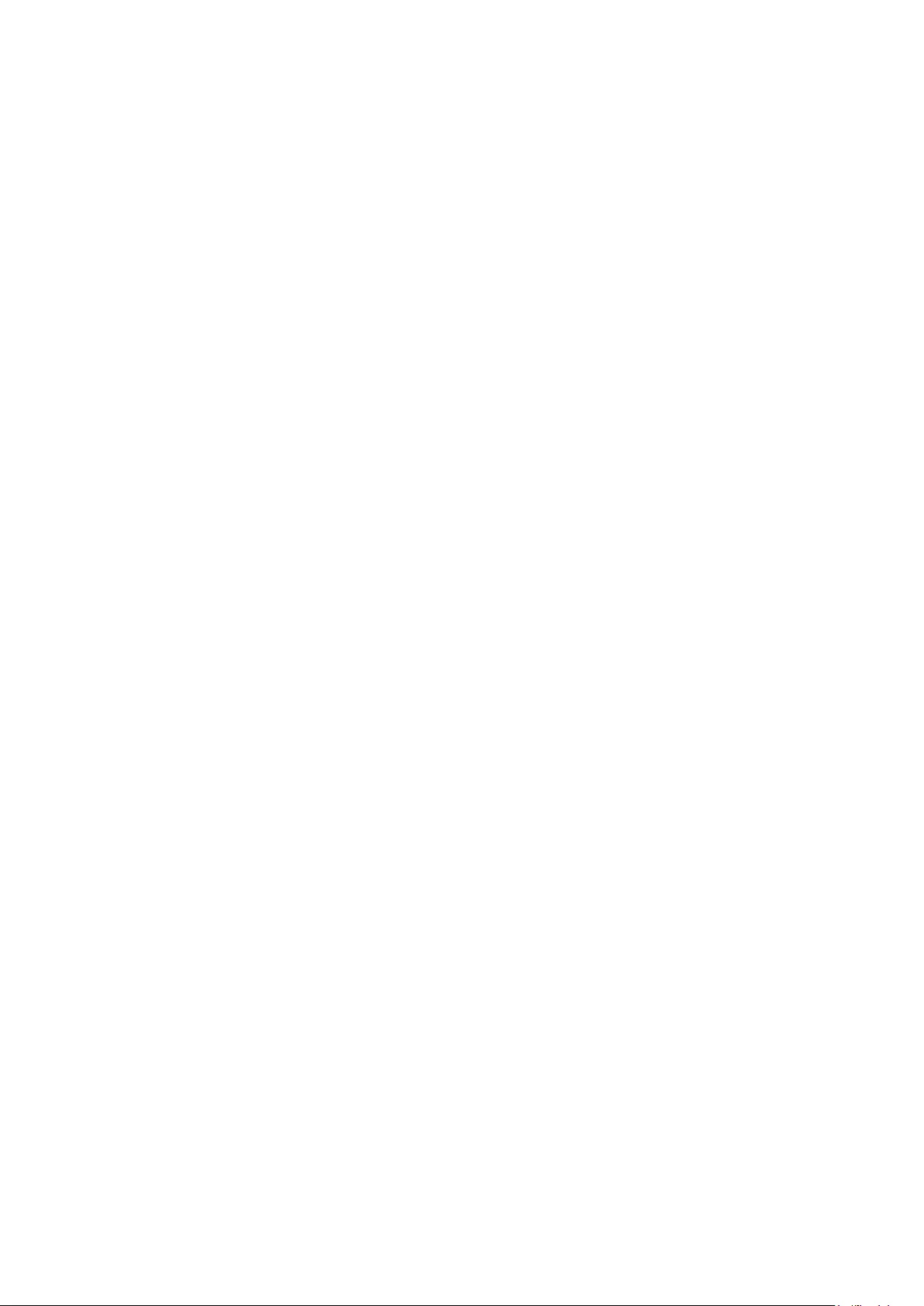
Job queue
The job queue refers to print jobs that are being processed by the printer (saved, received, prepared
for processing, printed, deleted, or held). Up to 100 jobs can be stored in the temporary storage area.
However, the number of jobs available as queued jobs is up to 64.
When the maximum number of job queues are saved, the print job sent from the computer is in a
state of waiting for processing.
However, if all saved job queue states are pending, the oldest job queue of the saved date and time
will be deleted and the print job sent from the computer will be processed.
Common job box
Jobs for which you have specified Print in Output Method are saved in common job box and
classified as saved jobs.
There is one common job box, numbered "00". A password cannot be set for common job box.
Up to 100 print jobs can be saved here. However, they will be deleted one after another starting with
the oldest job in the following situations.
• If there are over 101 jobs queued and saved in common job box combined
• If no more temporary storage space is available when jobs for which you have selected Print in
Output Method are received
• If there is not enough space in the temporary or permanent storage area when jobs for which you
have selected Save in Job Box in Output Method are received.
Personal job boxes
In the following cases, the job is classified as saved job and saved in a personal job box on the
permanent storage area.
• When a saved job stored in common job box is moved to a personal job box
• When you have selected Save in Job Box in Output Method
There are 29 personal job boxes, numbered "01" to "29". You can specify a name and password for
each personal job box.
Up to 100 print jobs can be saved in all personal job boxes combined.
564
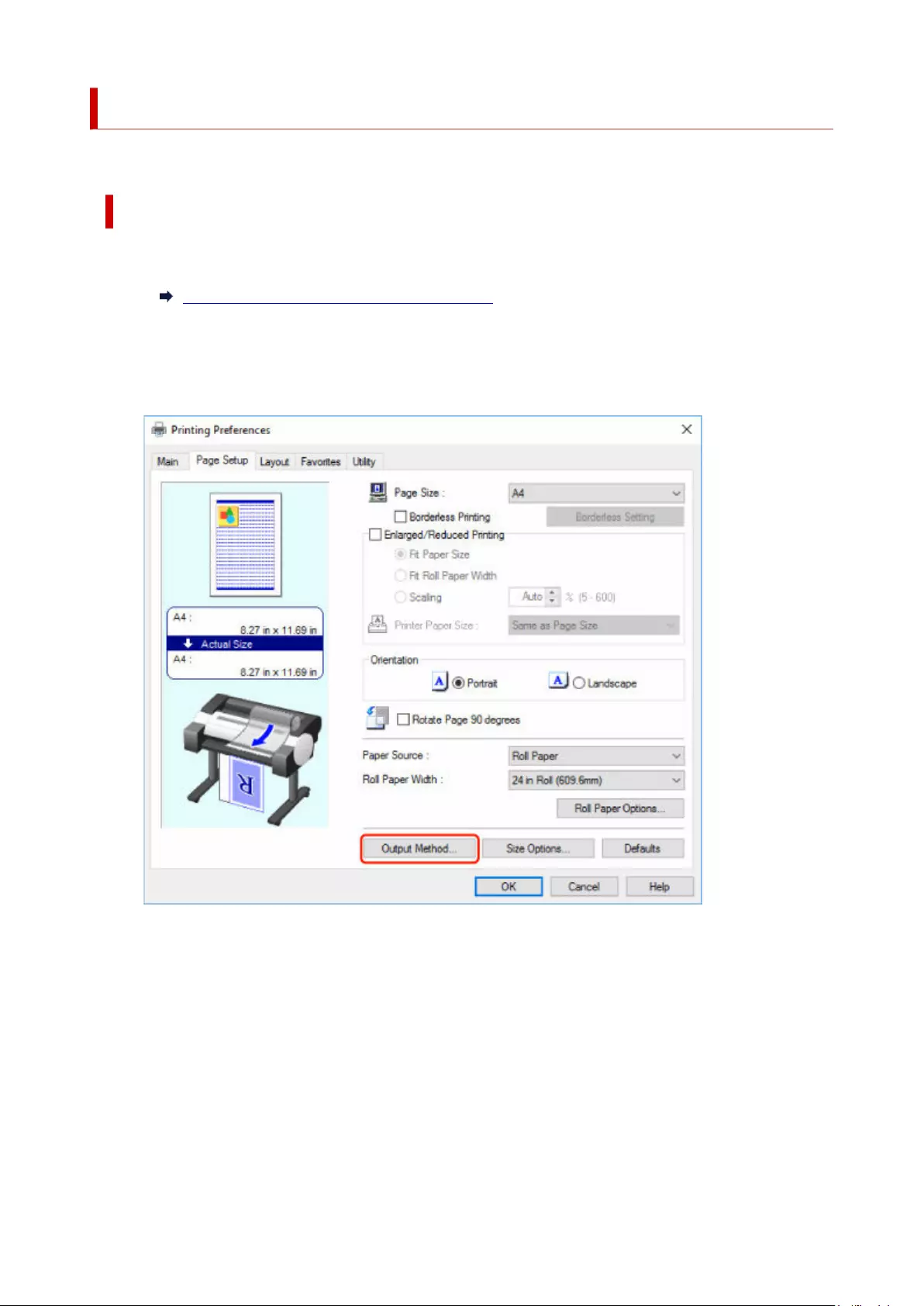
Saving Print Jobs in Personal Job Boxes
To save print jobs in personal job boxes, configure the printer driver.
Configuring Printer Driver (Windows)
1. Open printer properties dialog box.
1.
How to Open the Printer Driver Setup Window
2. Select Page Setup tab.
2.
3. Select Output Method.
3.
4. Select Save in Job Box in Output Method.
4.
565
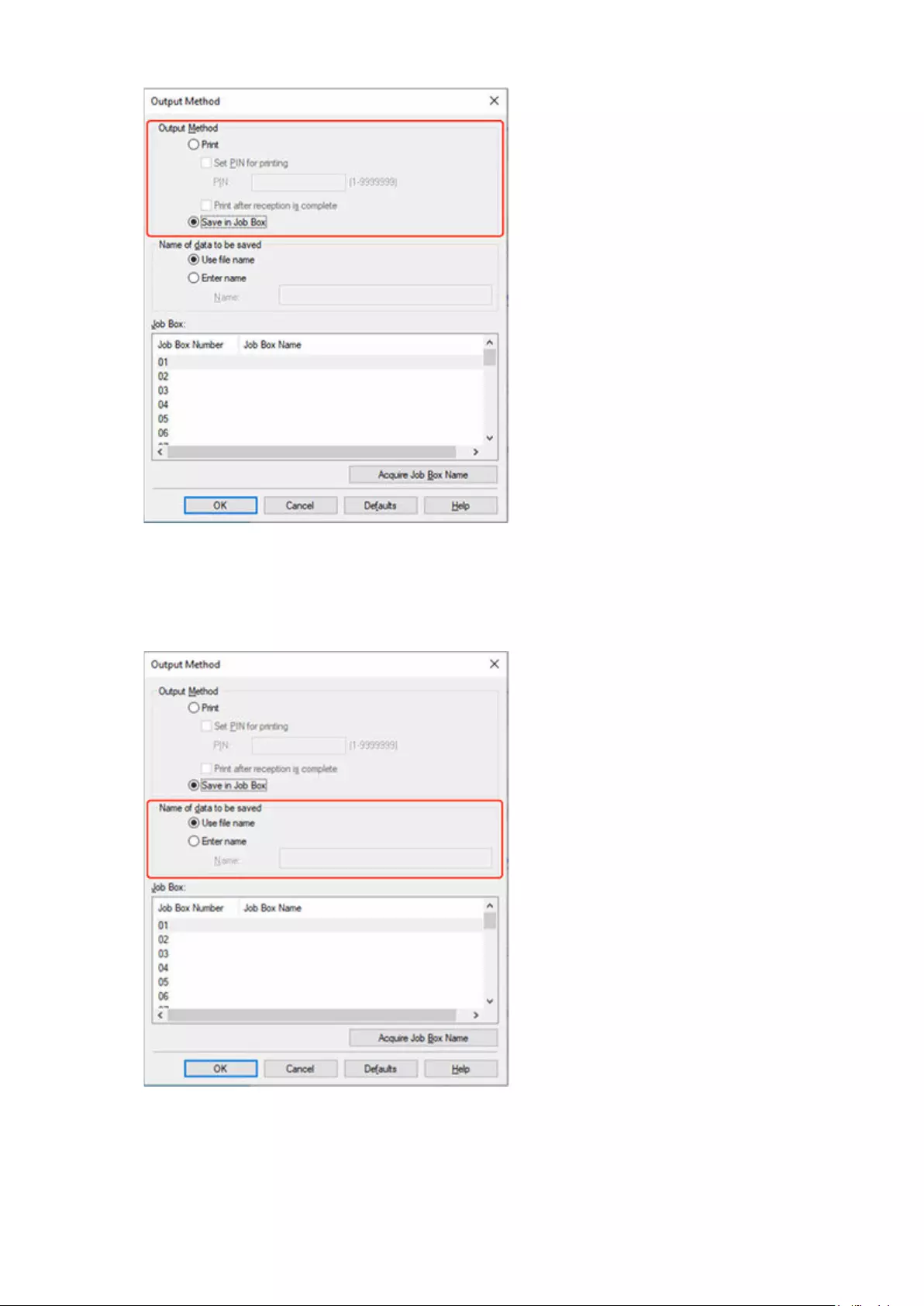
5. In Name of data to be saved, specify how to name saved print jobs.
5.
To use the file name, select Use file name.
Otherwise select Enter name and enter a name in Name.
6. Select a personal job box in Job Box.
6.
566
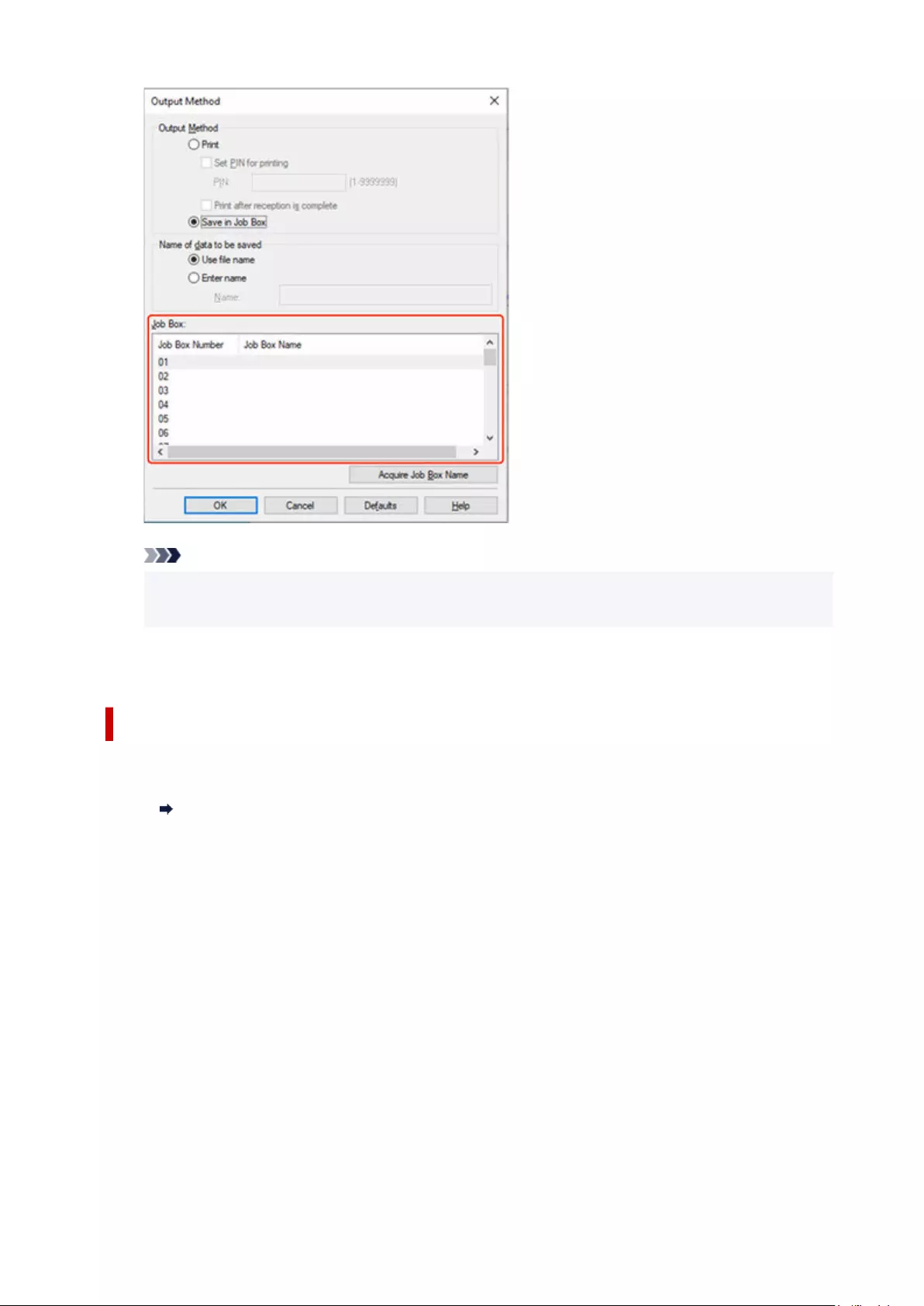
Note
• Select Acquire Job Box Name to display personal job box names in the Job Box list, as
acquired from the printer.
7. Select OK.
7.
Configuring Printer Driver (macOS)
1. Open printer properties dialog.1.
How to Open the Printer Driver Setup Dialog
2. Select Additional Settings in pop-up menu.
2.
567
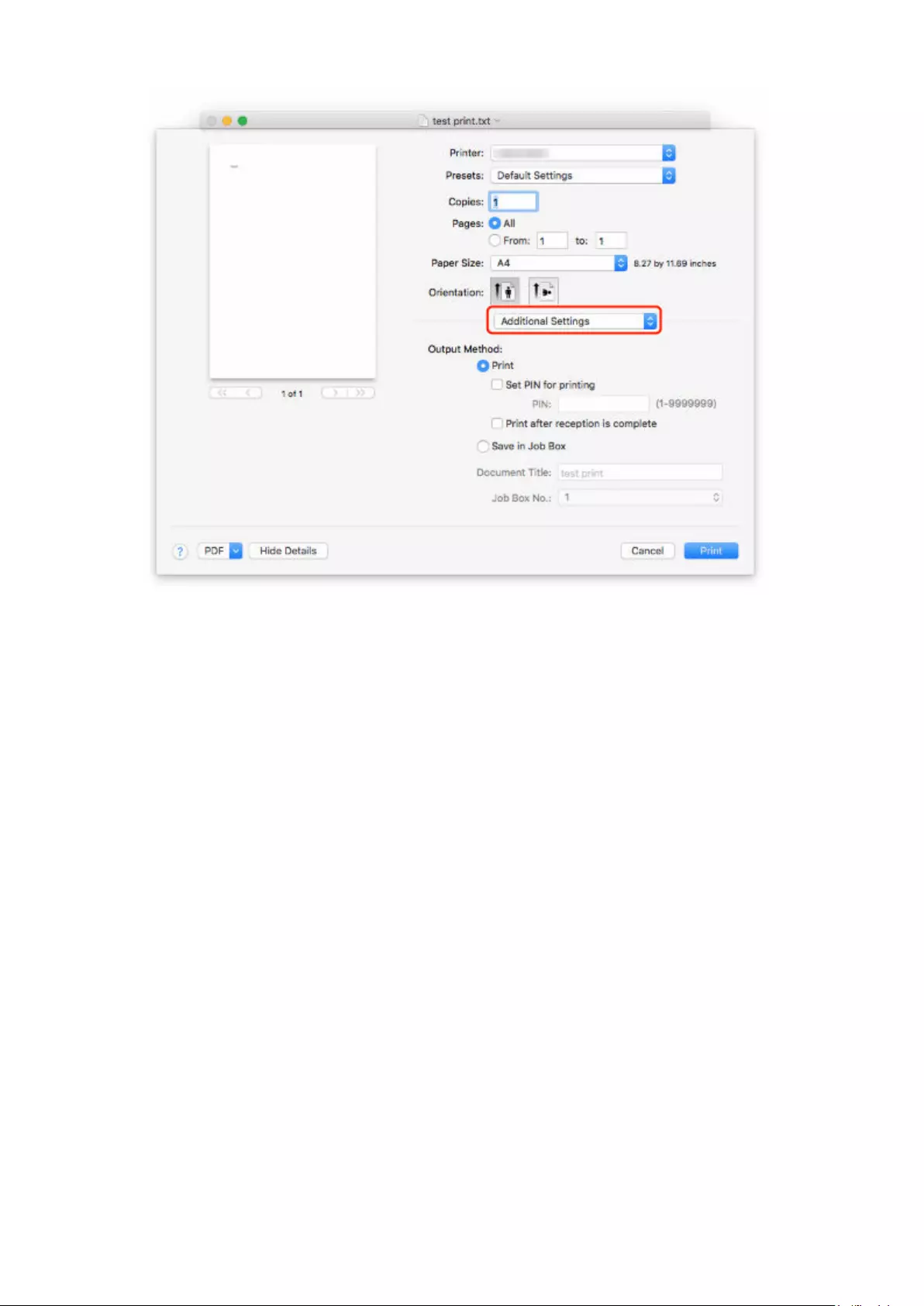
3. Select Save in Job Box in Output Method.
3.
568

569
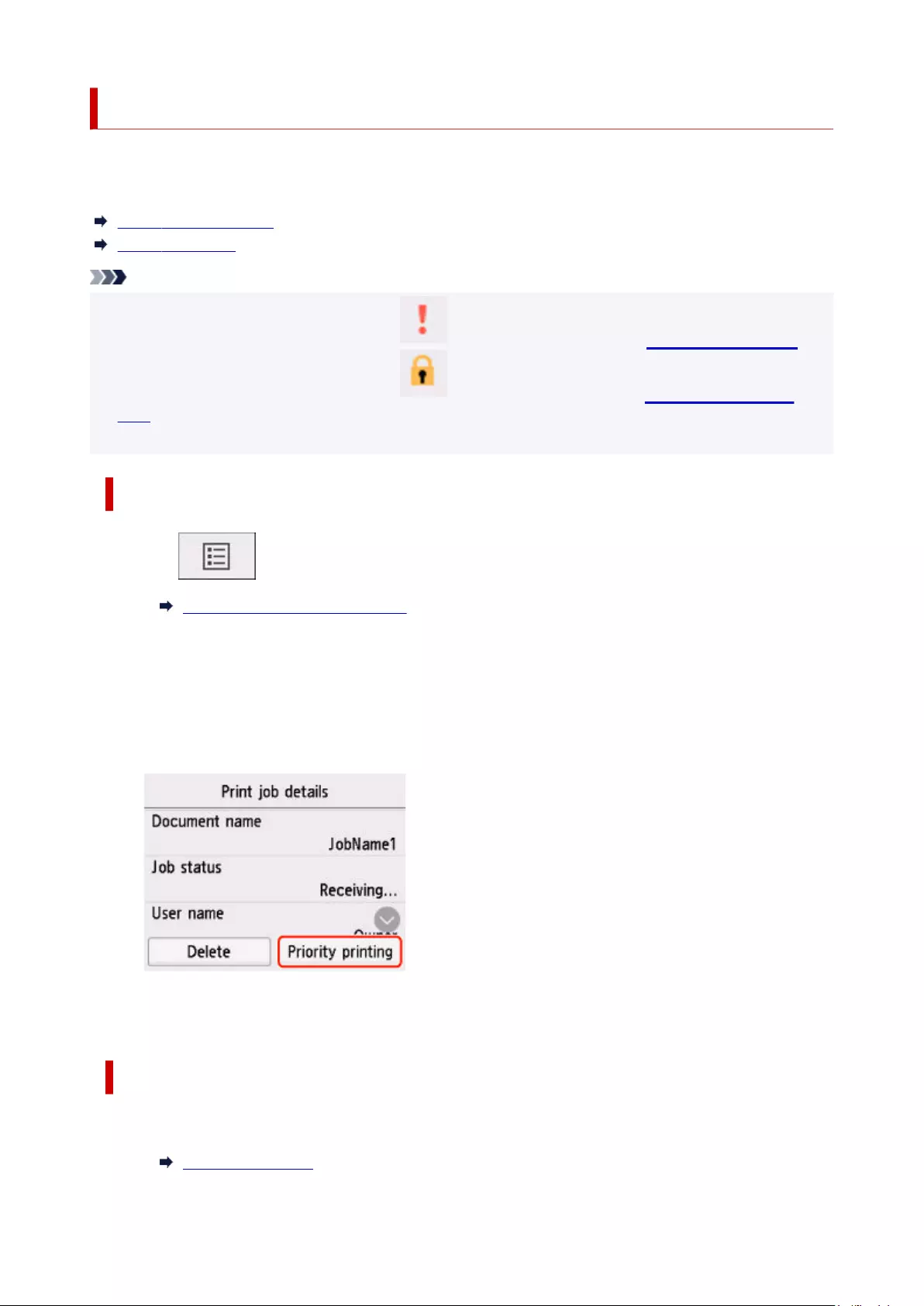
Priority Printing
You can change the print order (Priority printing) by specifying the print job that is being received.
This operation is available using the operation panel or Remote UI.
Using Operation Panel
Using Remote UI
Note
• For the operation of the print job with the icon (pending print job), see Printing Pending Jobs.
• For the operation of the print job with the icon (security print job), see Printing Security Print
Jobs
.
Using Operation Panel
1. Tap (Jobs) on HOME screen.1.
Home Screen Menu Composition
2. Tap Print job.
2.
3. In the list, tap the target job.
3.
4. Tap Priority printing.4.
5. Confirm displayed message and tap Yes.
5.
Using Remote UI
1. Start up Remote UI.
1.
Start up Remote UI
570
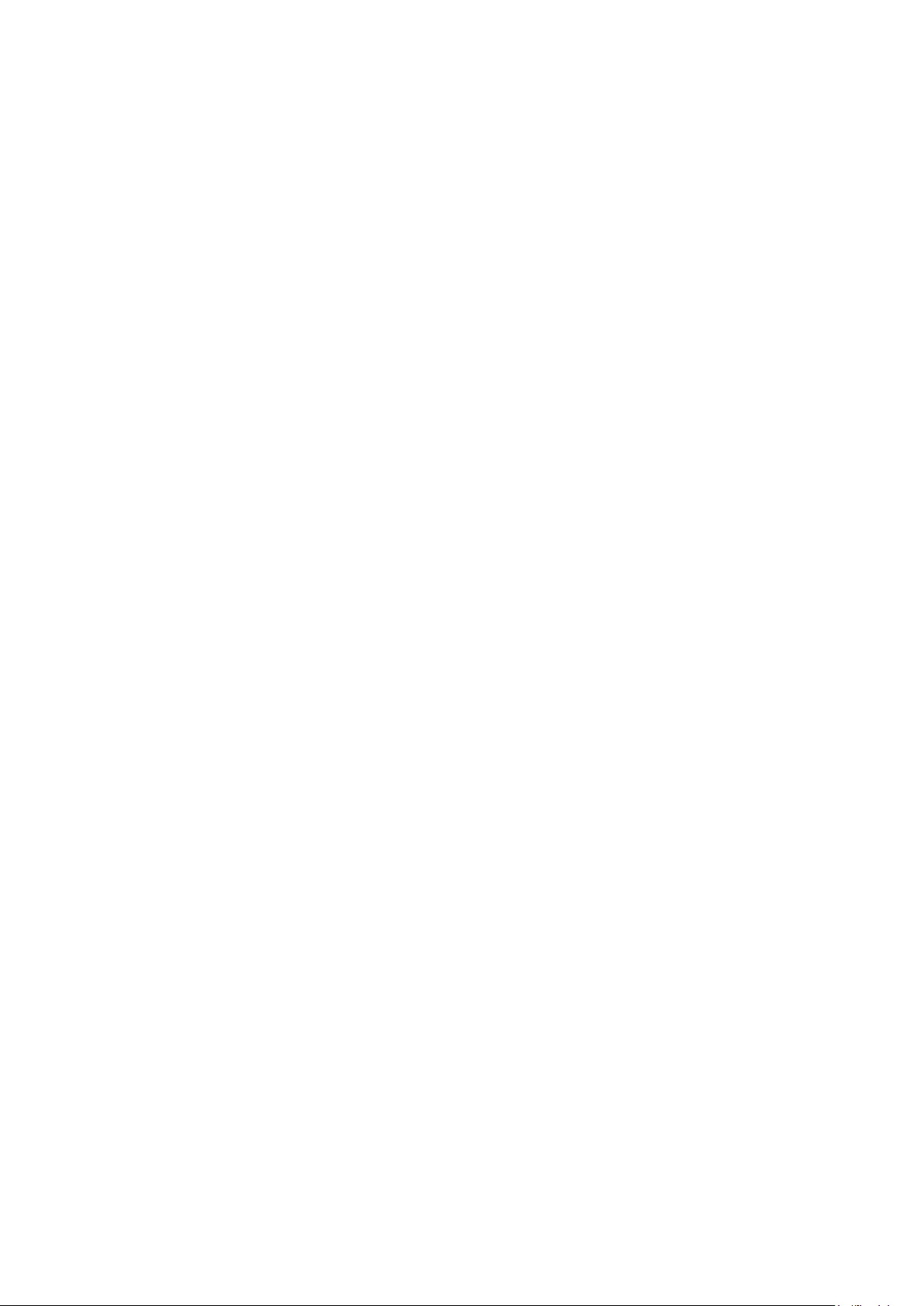
2. Select Job management.2.
3. Select Print job.3.
4. In the list, select the target job.4.
5. Select Prioritize.5.
571
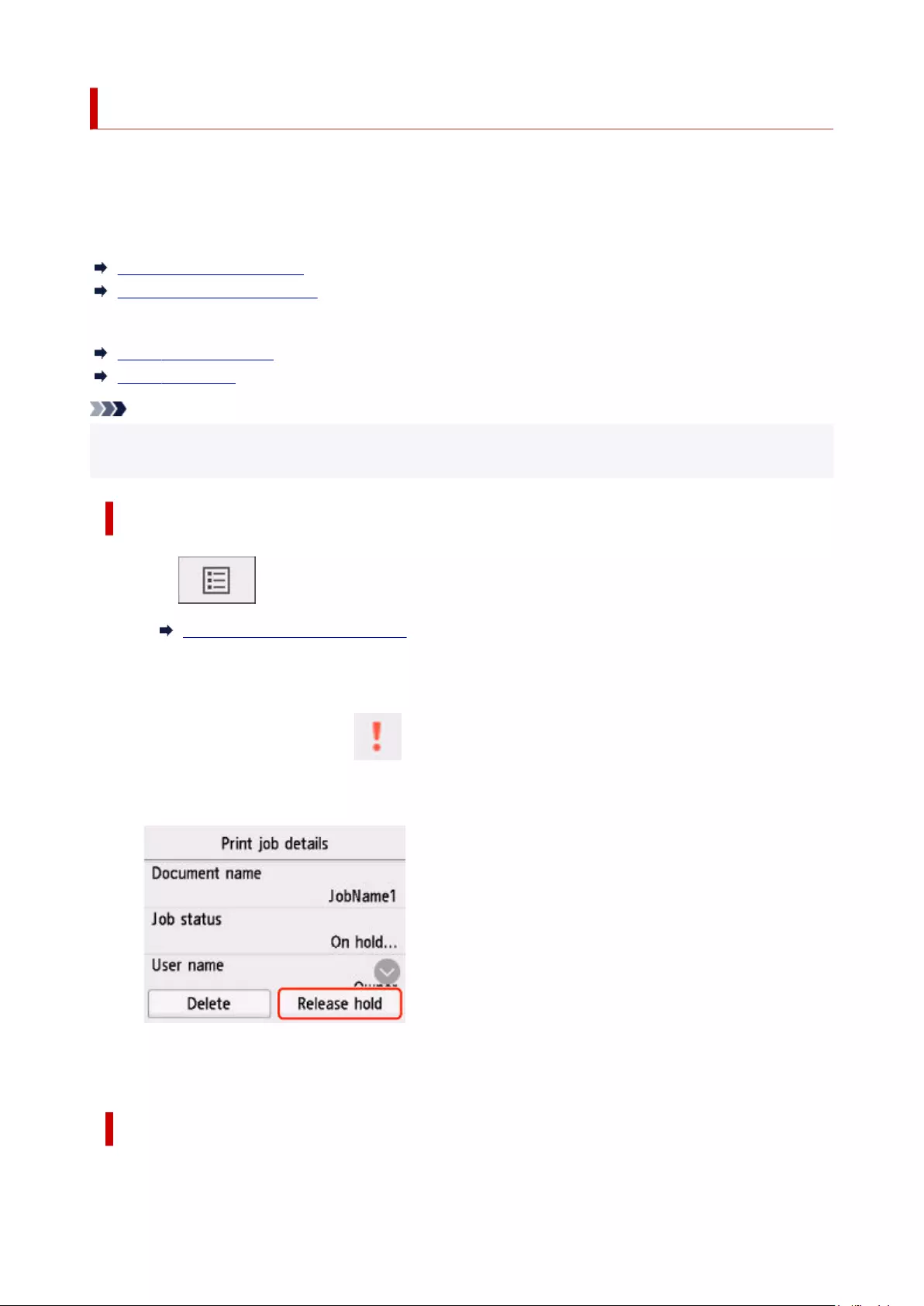
Printing Pending Jobs
If the type or size of paper loaded does not match the settings in the print job received when you have set
Detect paper setting mismatch to Hold job in the operation panel, the print job is held on the printer as a
pending job in the job queue.
To print held jobs, replace the loaded paper with the paper specified in the print job.
Loading Rolls in the Printer
Loading Sheets in the Printer
This operation is available using the operation panel or Remote UI.
Using Operation Panel
Using Remote UI
Note
• As long as you do not manage held jobs from the operation panel, they will remain in the job queue. In
this case, the printer processes the next job in the queue without pausing.
Using Operation Panel
1. Tap (Jobs) on HOME screen.1.
Home Screen Menu Composition
2. Tap Print job.
2.
3. In the list, tap print job with icon on the left.
3.
4. Tap Release hold.
4.
5. Confirm displayed message and tap Yes.
5.
Using Remote UI
1. Start up Remote UI.
1.
572
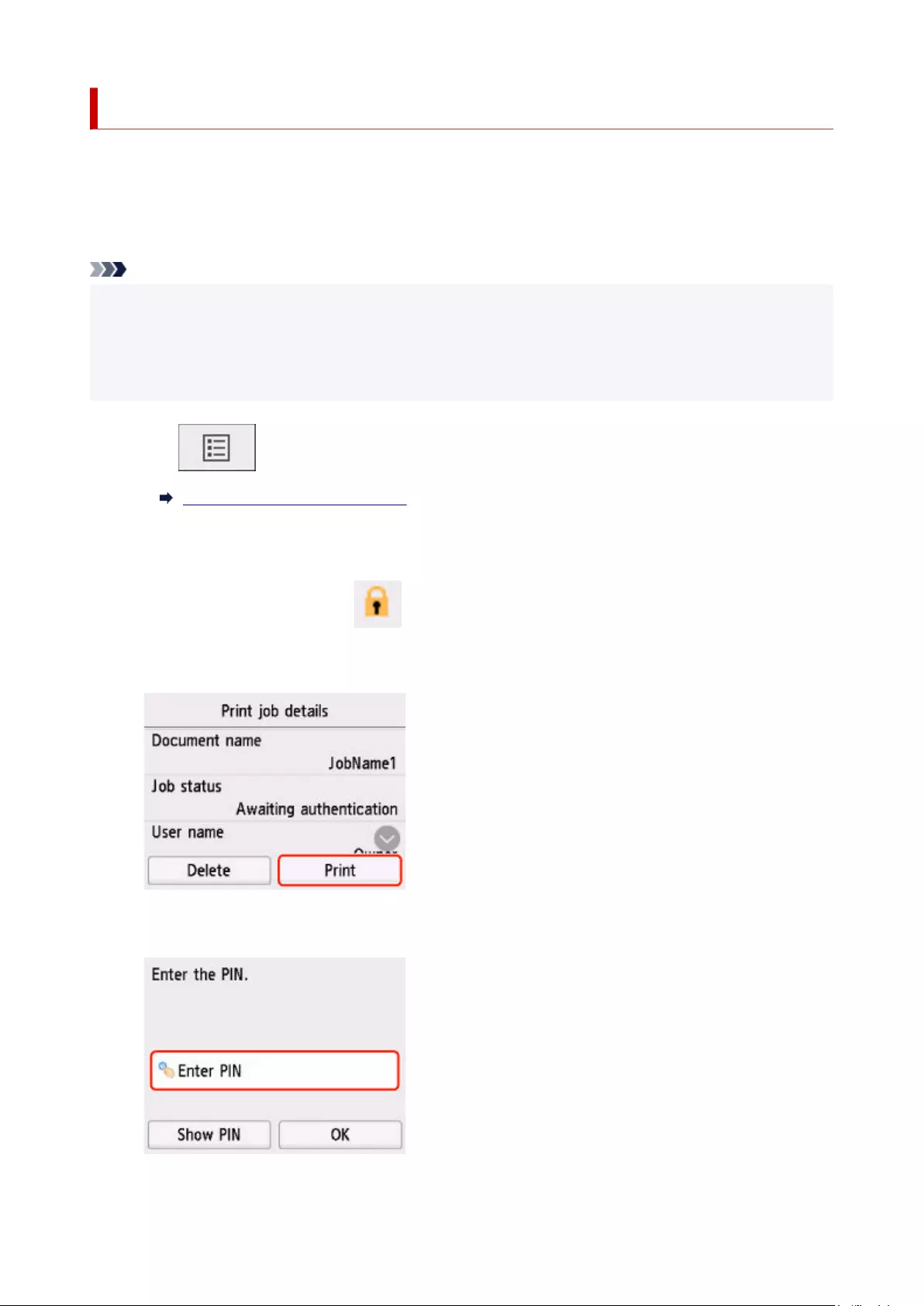
Printing Security Print Jobs
A security print job is a print job that requires you to enter the PIN code set in the printer driver when
printing.
The print job specified for the security print job has a lock icon to the left of the job name in the list such as
List of print jobs.
Note
• The security print job remains saved as a normal pending job until you enter the PIN code using the•
operation panel or Remote UI. In this case, the printer processes the next job in the queue without
pausing.
• When deleting a security print job, you do not need to enter a PIN code.•
1. Tap (Jobs) on HOME screen.
1.
Home Screen Menu Composition
2. Tap Job management.2.
3. In the list, tap print job with icon on the left.3.
4. Tap Print.4.
5. Enter PIN code you set and tap OK.
5.
574
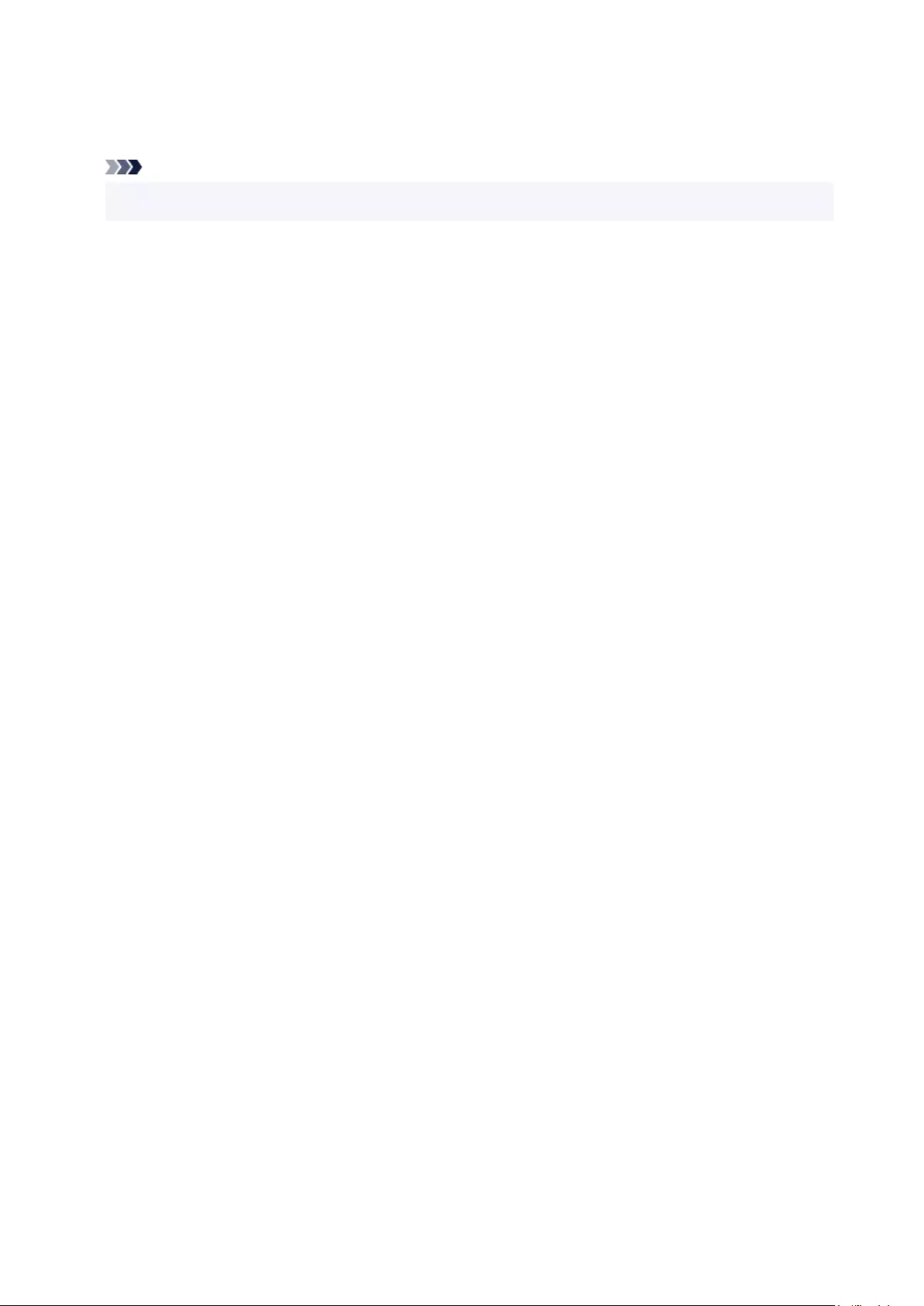
6. Tap OK.6.
PIN authentication successful. is displayed and printing starts.
Note
• The security print job is deleted after printing.•
575
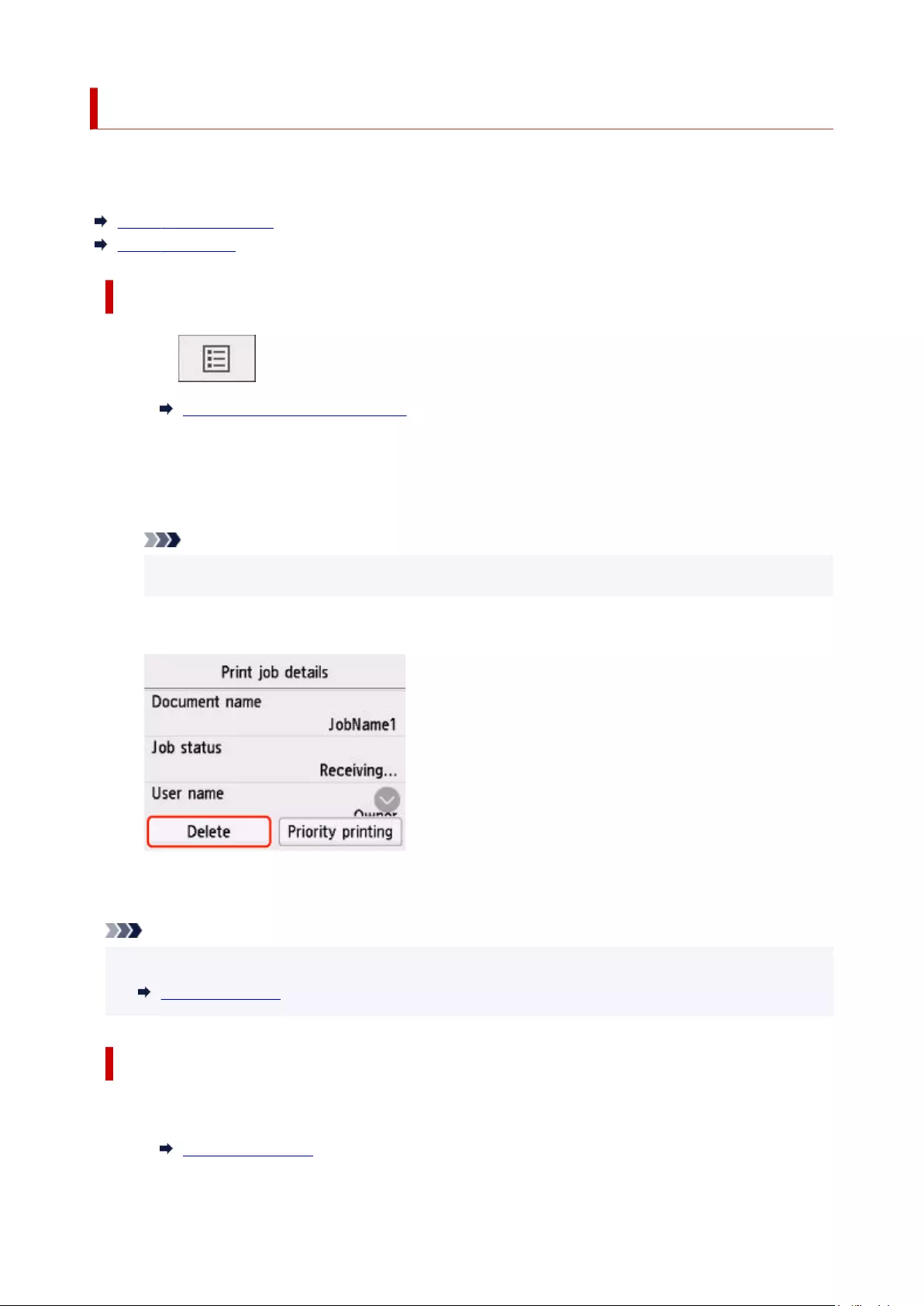
Deleting Print Jobs
You can delete a print job as needed.
This operation is available using the operation panel or Remote UI.
Using Operation Panel
Using Remote UI
Using Operation Panel
1. Tap (Jobs) on HOME screen.
1.
Home Screen Menu Composition
2. Tap Print job.
2.
3. In the list, tap the target job.3.
Note
• Tap Del. selected to delete multiple jobs at one time.•
4. Tap Delete.4.
5. Confirm displayed message and tap Yes.
5.
Note
• Select Delete all print jobs on Job management to delete all jobs in the job queue•
Job management
Using Remote UI
1. Start up Remote UI.
1.
Start up Remote UI
576
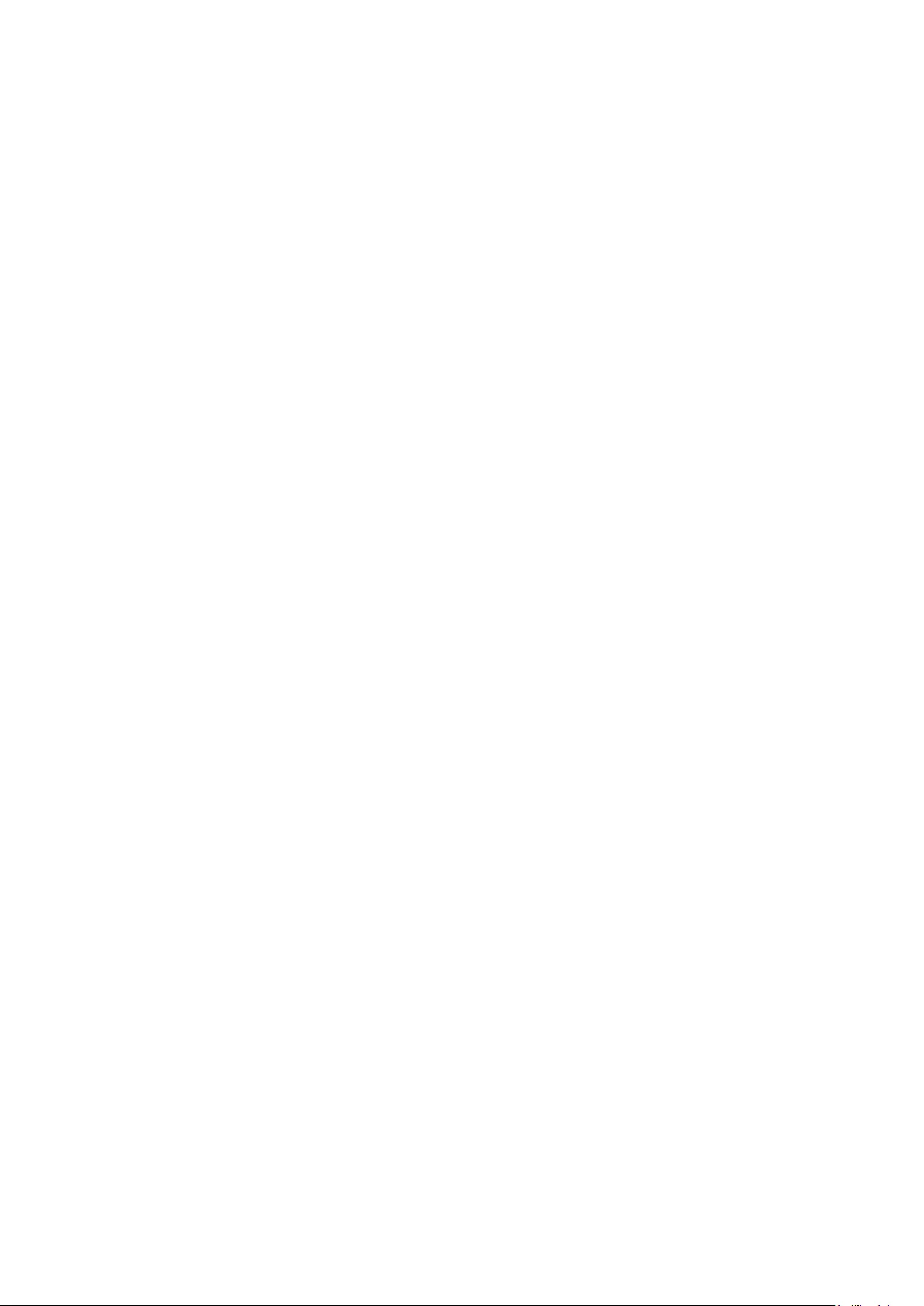
2. Select Job management.2.
3. Select Print job.3.
4. In the list, select the target job.4.
5. Select Delete.5.
6. Confirm displayed message and tap Yes.
6.
577
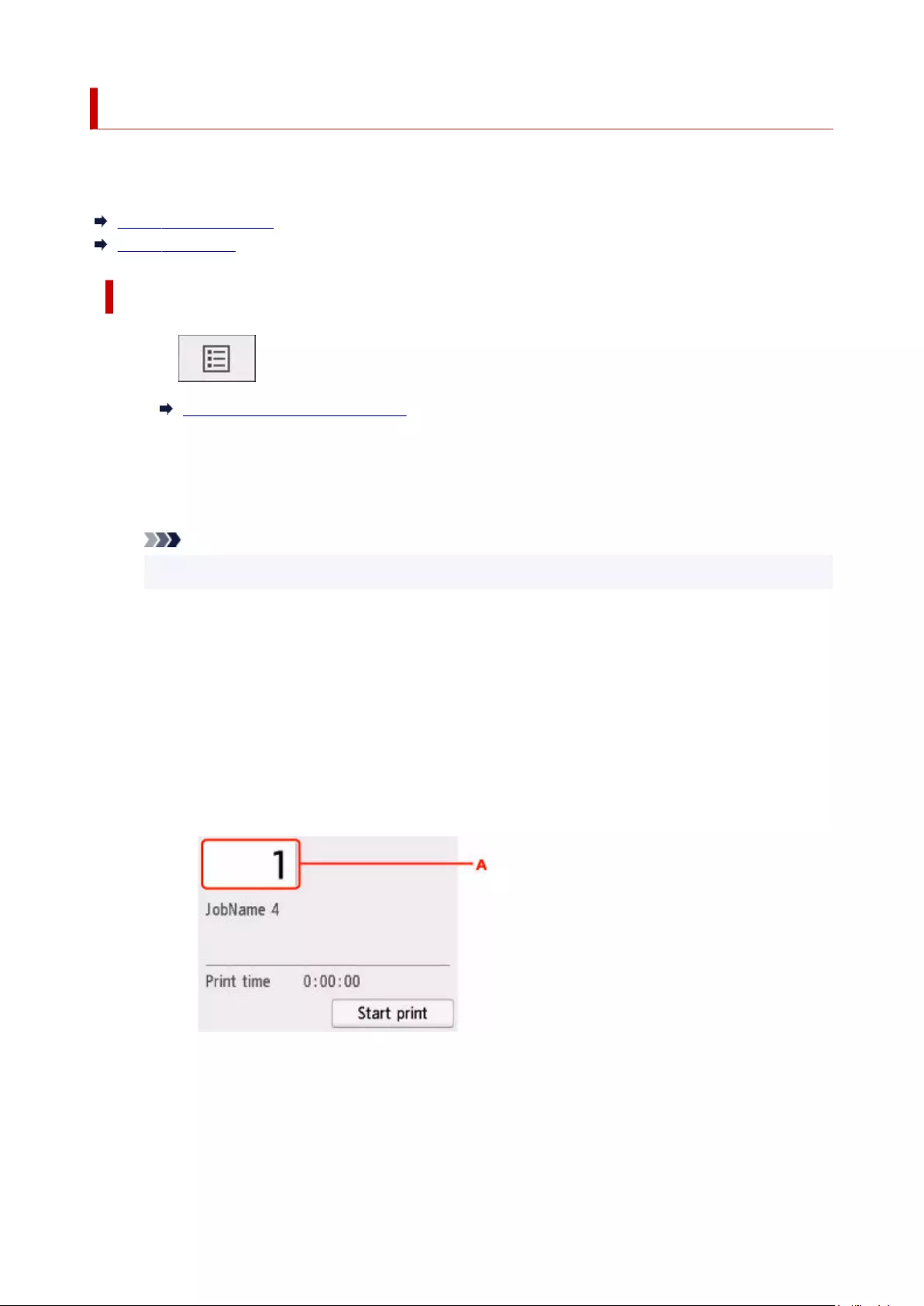
Printing Saved Jobs
Print saved print jobs stored on the printer's hard disk as follows.
This operation is available using the operation panel or Remote UI.
Using Operation Panel
Using Remote UI
Using Operation Panel
1. Tap (Jobs) on HOME screen.
1.
Home Screen Menu Composition
2. Tap Saved job.
2.
3. In the list, tap the target job box.3.
Note
• If an administrator password is set, enter the password.
4. Tap Job list.
4.
5. In the list, tap the target job.5.
6. Tap Print settings.6.
7. Specify the number of copies.7.
1. To change the number of copies, tap A.1.
2. Specify the number of copies and tap OK.2.
578
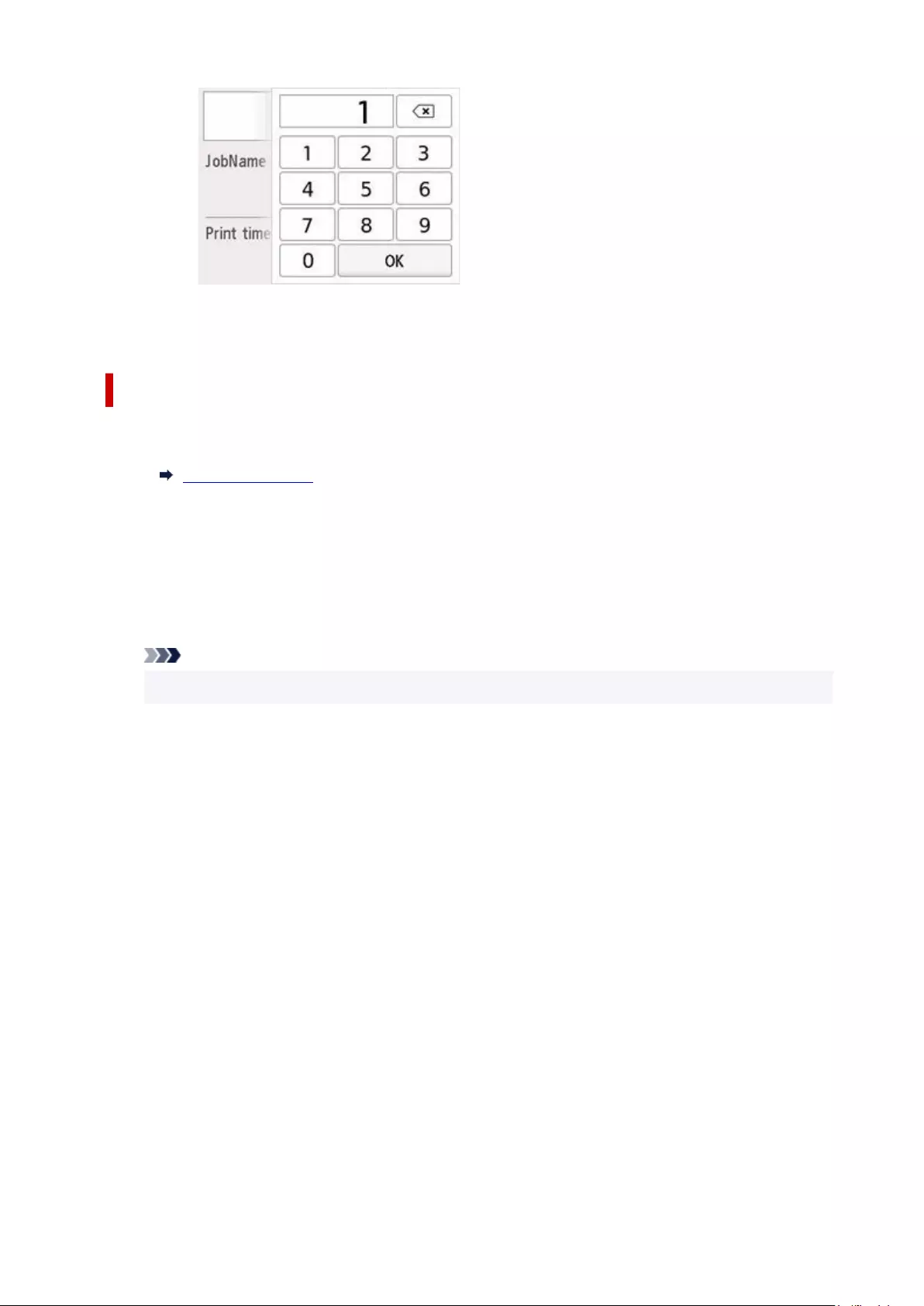
8. Tap Start print.
8.
Using Remote UI
1. Start up Remote UI.
1.
Start up Remote UI
2. Select Job management.2.
3. Select Saved job.3.
4. In the list, select the target job box.4.
Note
• If an administrator password is set, enter the password.
5. In the list, select the target job.5.
6. Select Print.
6.
7. Enter the number of copies and select Yes.
7.
8. select Yes.
8.
579
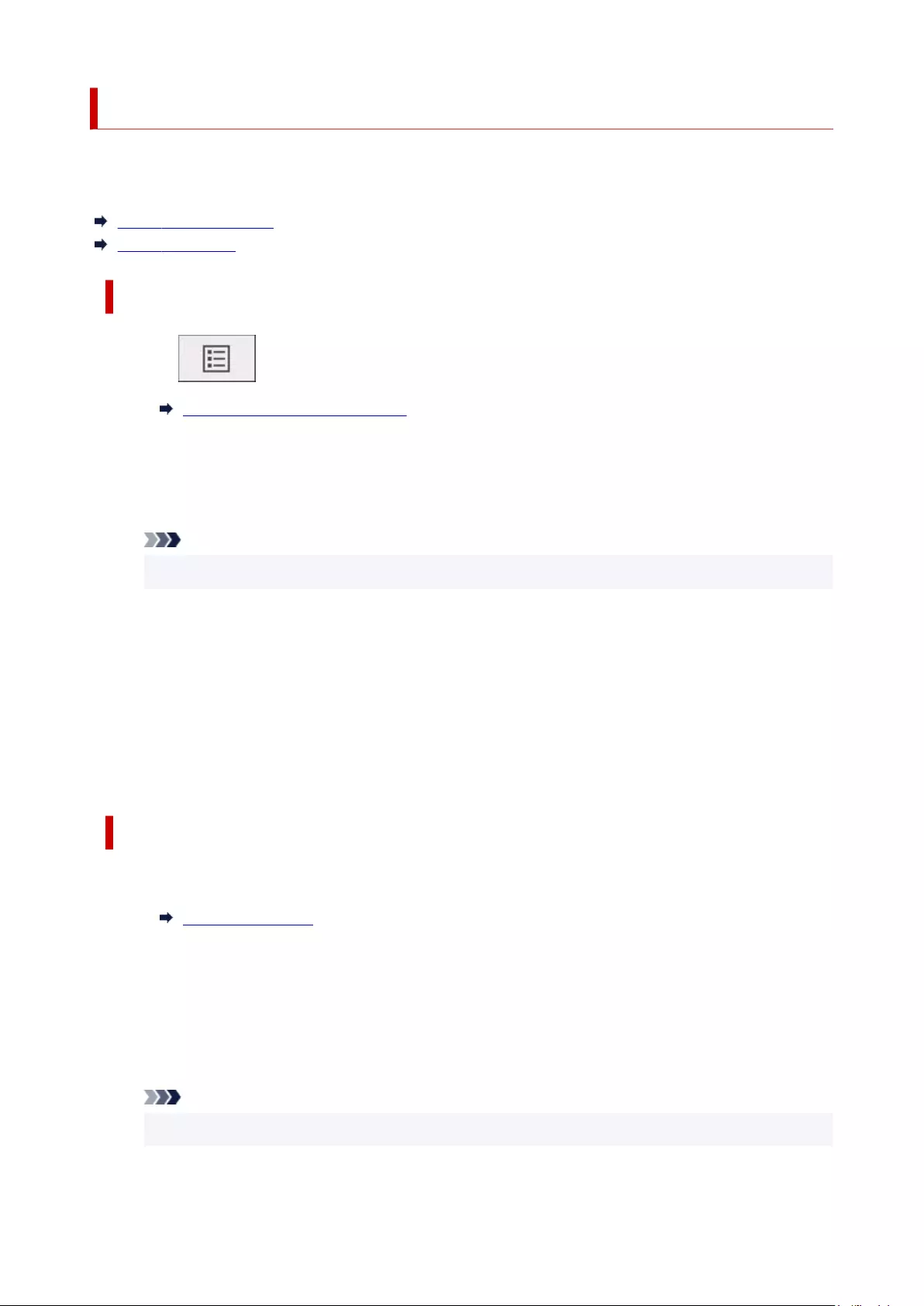
Deleting Saved Jobs
Delete saved print jobs stored on the printer's hard disk as follows.
This operation is available using the operation panel or Remote UI.
Using Operation Panel
Using Remote UI
Using Operation Panel
1. Tap (Jobs) on HOME screen.
1.
Home Screen Menu Composition
2. Tap Saved job.
2.
3. In the list, tap the target job box.3.
Note
• If an administrator password is set, enter the password.
4. Tap Job list.
4.
5. In the list, tap the target job.5.
6. Tap Delete.6.
7. Confirm displayed message and tap Yes.7.
Using Remote UI
1. Start up Remote UI.
1.
Start up Remote UI
2. Select Job management.
2.
3. Select Saved job.
3.
4. In the list, select the target job box.
4.
Note
•If an administrator password is set, enter the password.
580
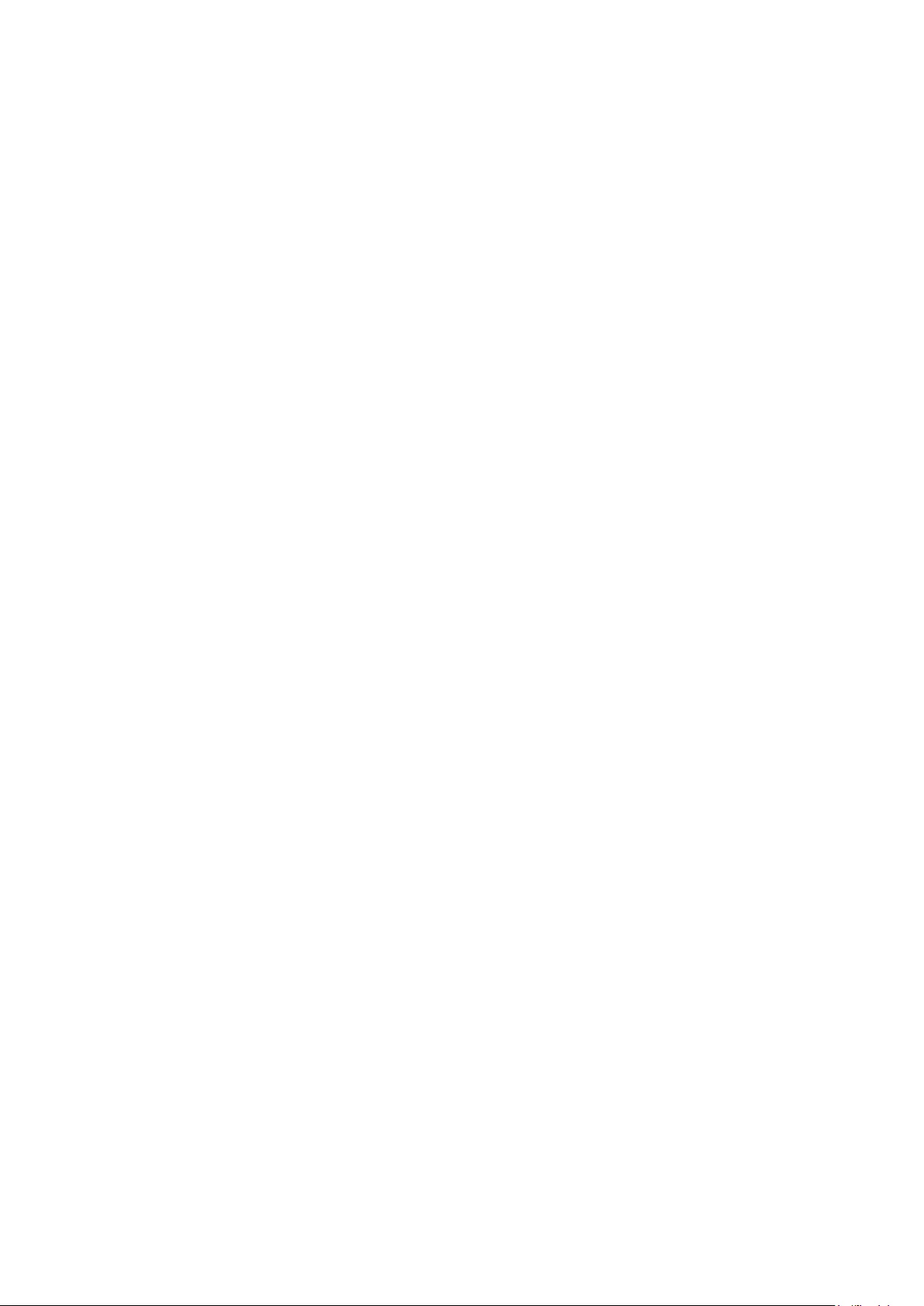
5. In the list, select the target job.5.
6. Select Edit.6.
7. Select Delete.7.
8. Select Yes.8.
581
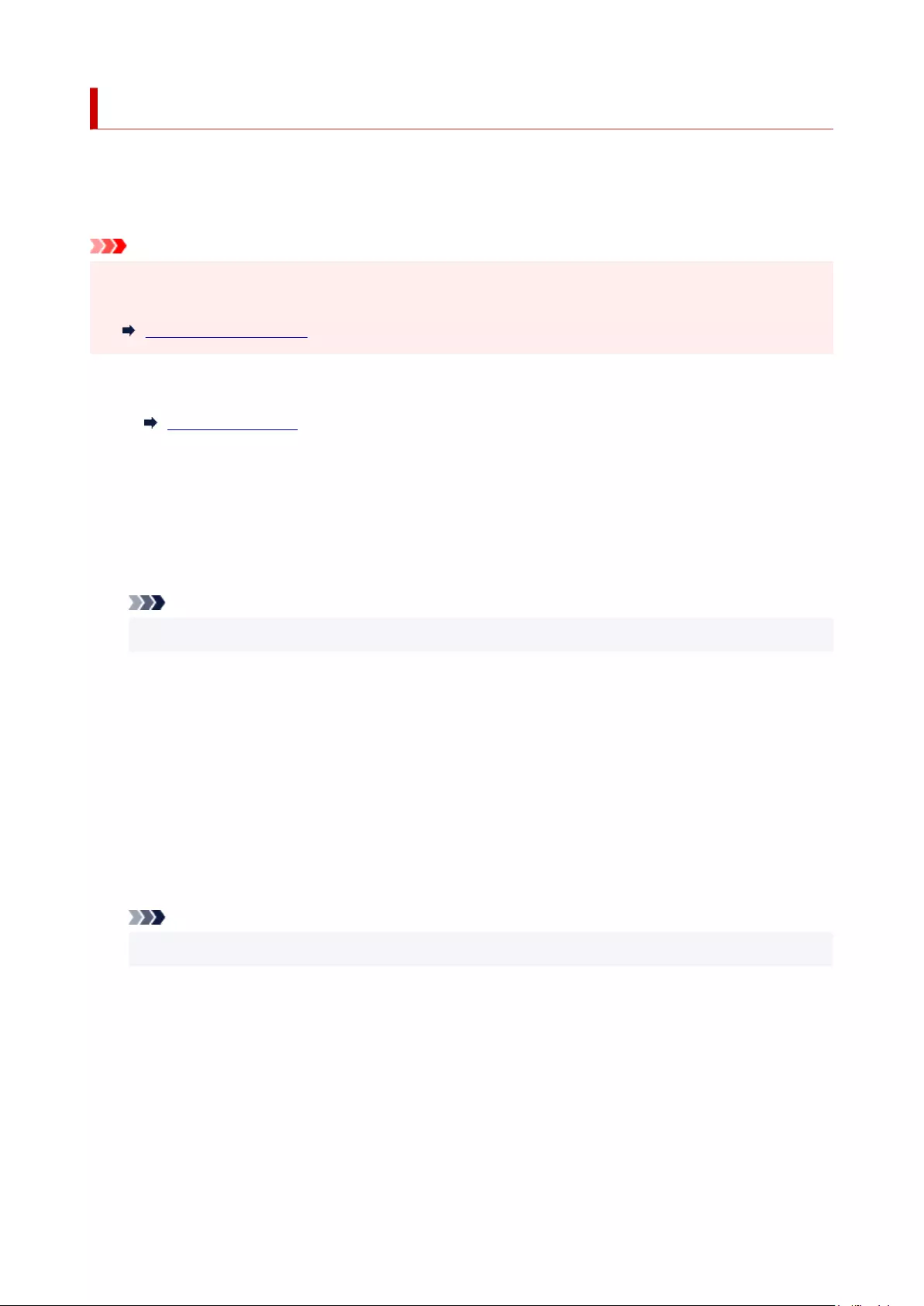
Moving Saved Jobs
Print jobs stored on the printer's hard disk (saved jobs) can be moved from the current job box to another job
box as follows.
However, jobs saved in personal job boxes cannot be moved to common job box.
Important
• Jobs stored in common job box may be automatically deleted under some conditions. To prevent jobs•
from being deleted, move them from common job box to personal job boxes.
Using Printer Hard Disk
1. Start up Remote UI.
1.
Start up Remote UI
2. Select Job management.
2.
3. Select Saved job.
3.
4. In the list, select the target job box.4.
Note
• If an administrator password is set, enter the password.
5. In the list, select the target job.5.
6. Select Edit.6.
7. Select Move.7.
8. Select Destination job box.8.
9. In the list, select the personal job box to move to and select OK.
9.
Note
•If an administrator password is set, enter the password.
582
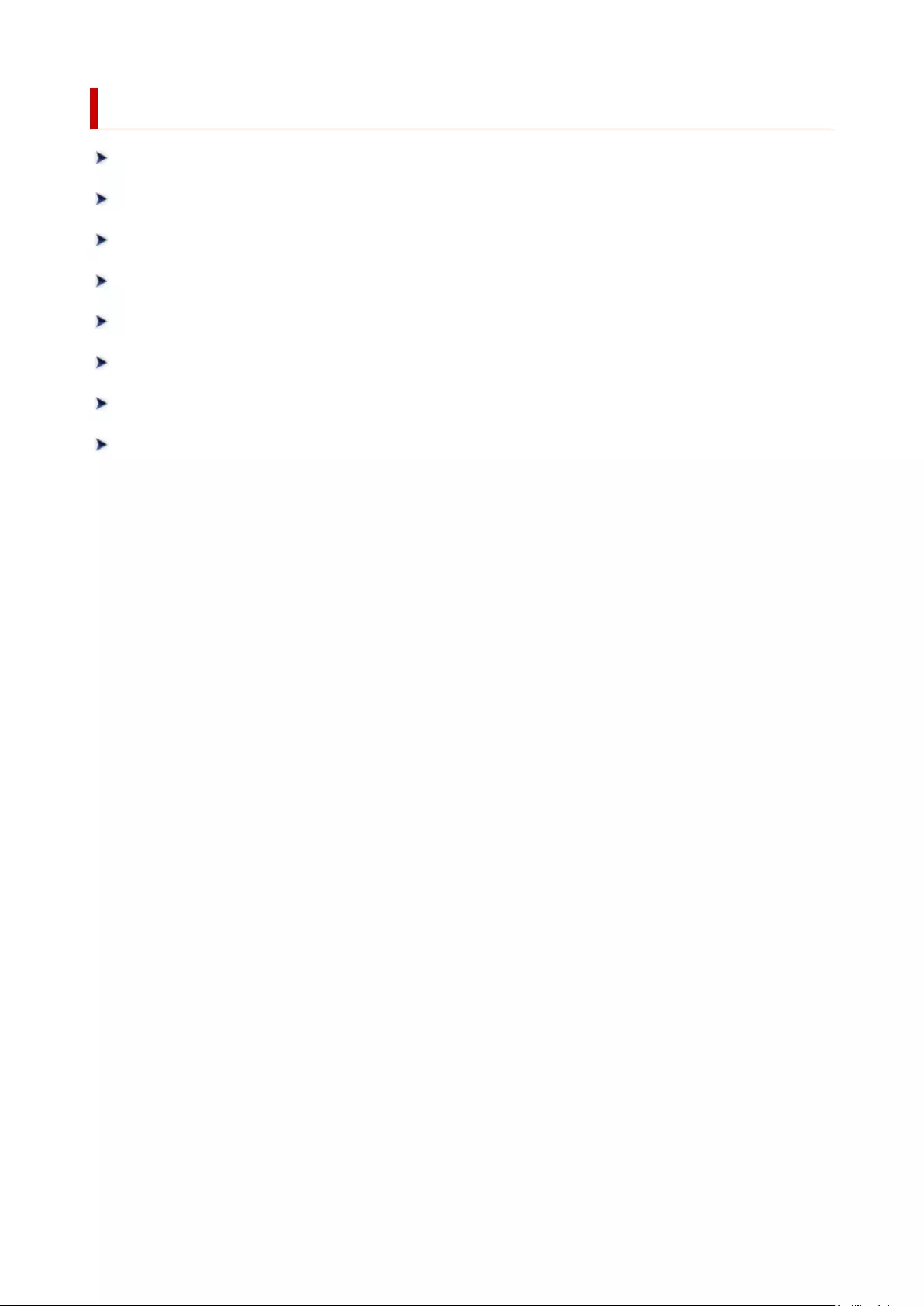
Advanced Print Job Operations
Saving Print Jobs Sent from Sources Other than Printer Driver
Printing without Saving Jobs in Common Job Box
Setting Passwords for Personal Job Boxes
Naming Personal Job Boxes
Printing List of Saved Jobs
Renaming Saved Jobs
Printer Hard Disk Operations
Checking Free Hard Disk Space
583
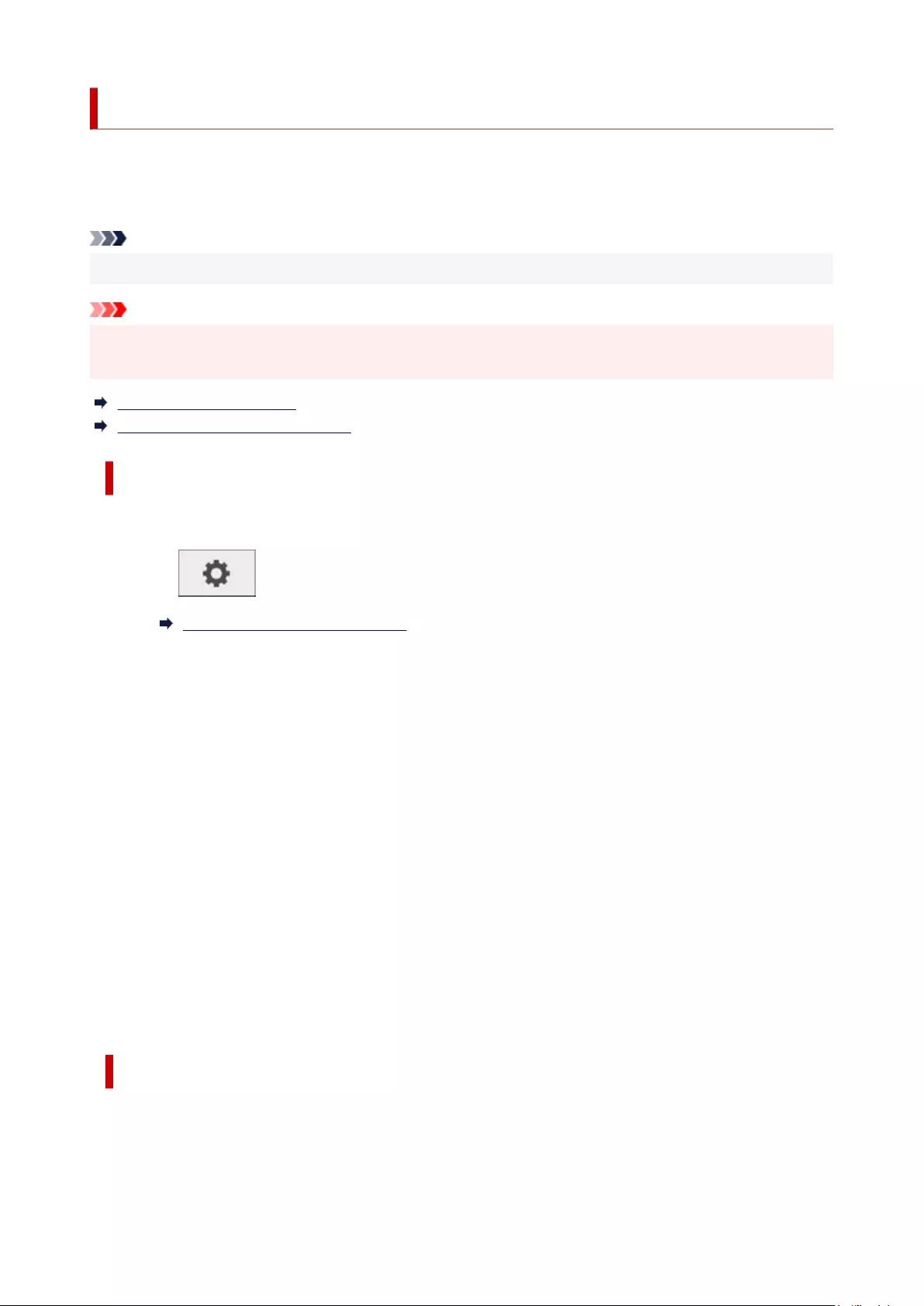
Saving Print Jobs Sent from Sources Other than Printer Driver
To save print jobs sent from software or systems other than the printer driver or applications provided with
the printer, specify the output method and select the setting to perform printing after saving printing data
using the operation panel.
Note
• Contact the software or system developer for information about support for this printer function.
Important
• The administrator password is required to change settings if it is enabled for changing settings using the
operation panel.
Specifying Output Method
Printing after Saving Printing Data
Specifying Output Method
Perform settings for printing or saving print job.
1. Tap (Setup) on HOME screen.1.
Home Screen Menu Composition
2. Tap Printer settings.
2.
3. Tap Hard disk settings.3.
Enter administrator password if it is enabled.
4. Tap Output method.4.
5. Tap the output method you want to set up.5.
Print
Save print jobs automatically at the same time they are printed. (This is the default format.)
Print (auto delete)
Save print jobs temporarily at the same time they are printed and delete them after printing.
Save to job box
Save print jobs on in the personal job box.
Printing after Saving Printing Data
To save print jobs on the hard disk before printing, select ON for Save first and print.
Printing will start when Save first and print is set to ON, even if you have selected Save to job box for
Output method.
584
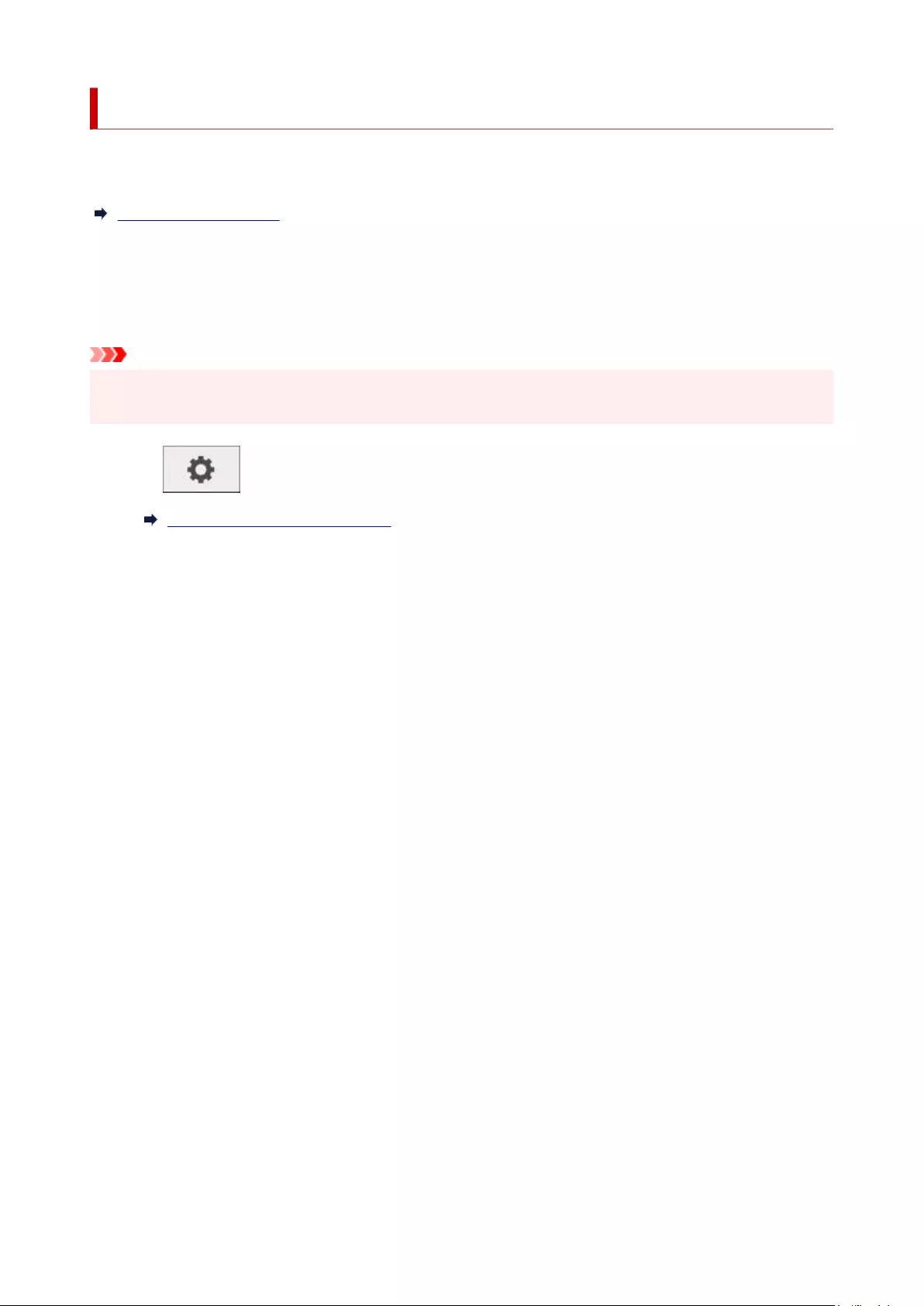
Printing without Saving Jobs in Common Job Box
Jobs sent from a computer for which you have selected Print in Output Method in the printer driver are
saved in common job box.
Using Printer Hard Disk
When Common job box settings is set to Print (auto delete) in the operation panel menu, print jobs for
which you have selected Print in Output Method in the printer driver are deleted from common job box after
printing.
Use this function when printing highly confidential documents.
Important
• The administrator password is required to change settings if it is enabled for changing settings using the
operation panel.
1. Tap (Setup) on HOME screen.
1.
Home Screen Menu Composition
2. Tap Printer settings.2.
3. Tap Hard disk settings.3.
Enter administrator password if it is enabled.
4. Tap Common job box settings.4.
5. Tap Print (auto delete).5.
586
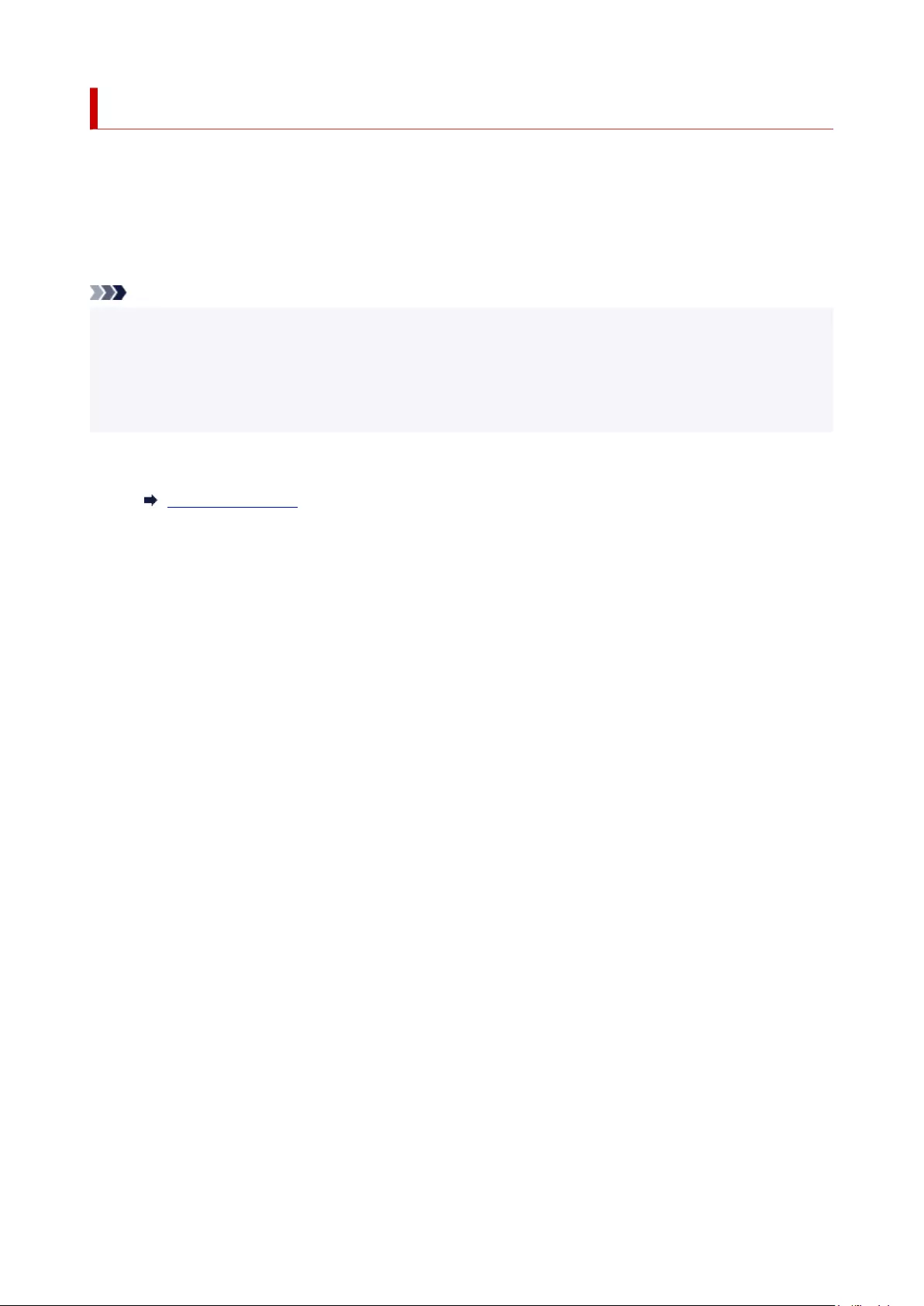
Setting Passwords for Personal Job Boxes
For greater security, you can specify a password for personal job boxes. After setting the password, it is
necessary to enter the password when performing the following operations.
• Change personal job box settings
• Display / print the list of jobs saved in personal job box, print / delete / move /rename jobs saved in
personal job box
Note
• By default, no passwords are set for personal job boxes.
• A password cannot be set for common job box.
• Enter a seven-digit number as the password, in the range 0000001 to 9999999.
• Even if you have set passwords, they are not required to access personal job boxes in Administrator
Mode in Remote UI.
1. Start up Remote UI.
1.
Start up Remote UI
2. Select Job management.
2.
3. Select Saved job.
3.
4. In the list, tap the target job box.4.
5. Select Edit.5.
6. Select Set/change password check box and enter password. (This field is limited to seven6.
digits in the range 0000001 to 9999999.)
7. Select OK.
7.
587
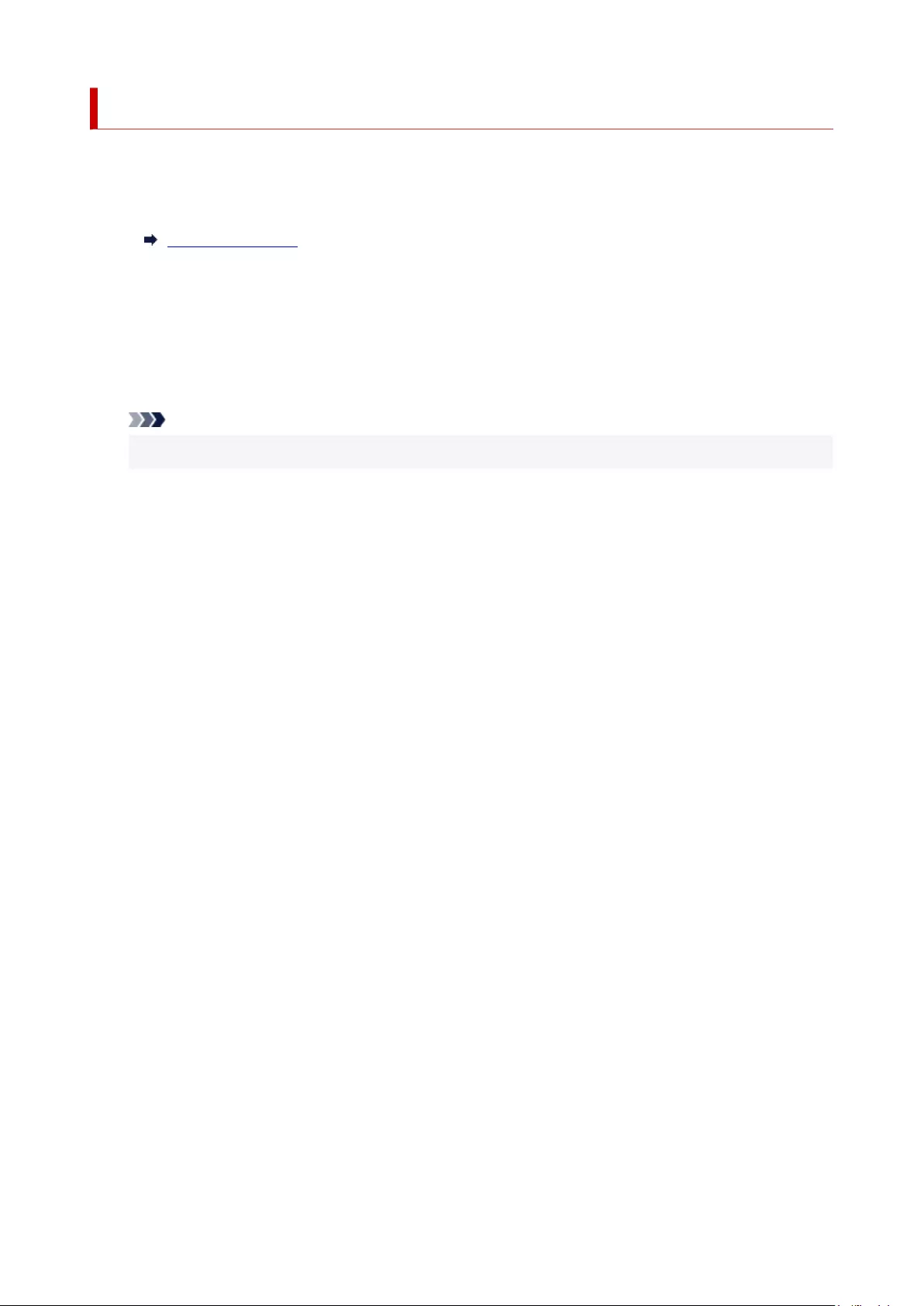
Naming Personal Job Boxes
For easier identification, you can assign names to personal job boxes.
1. Start up Remote UI.1.
Start up Remote UI
2. Select Job management.
2.
3. Select Saved job.
3.
4. In the list, select the target job box.
4.
Note
•Enter the password if the personal job box has it.
5. Select Edit.5.
6. Enter name and select OK.6.
588
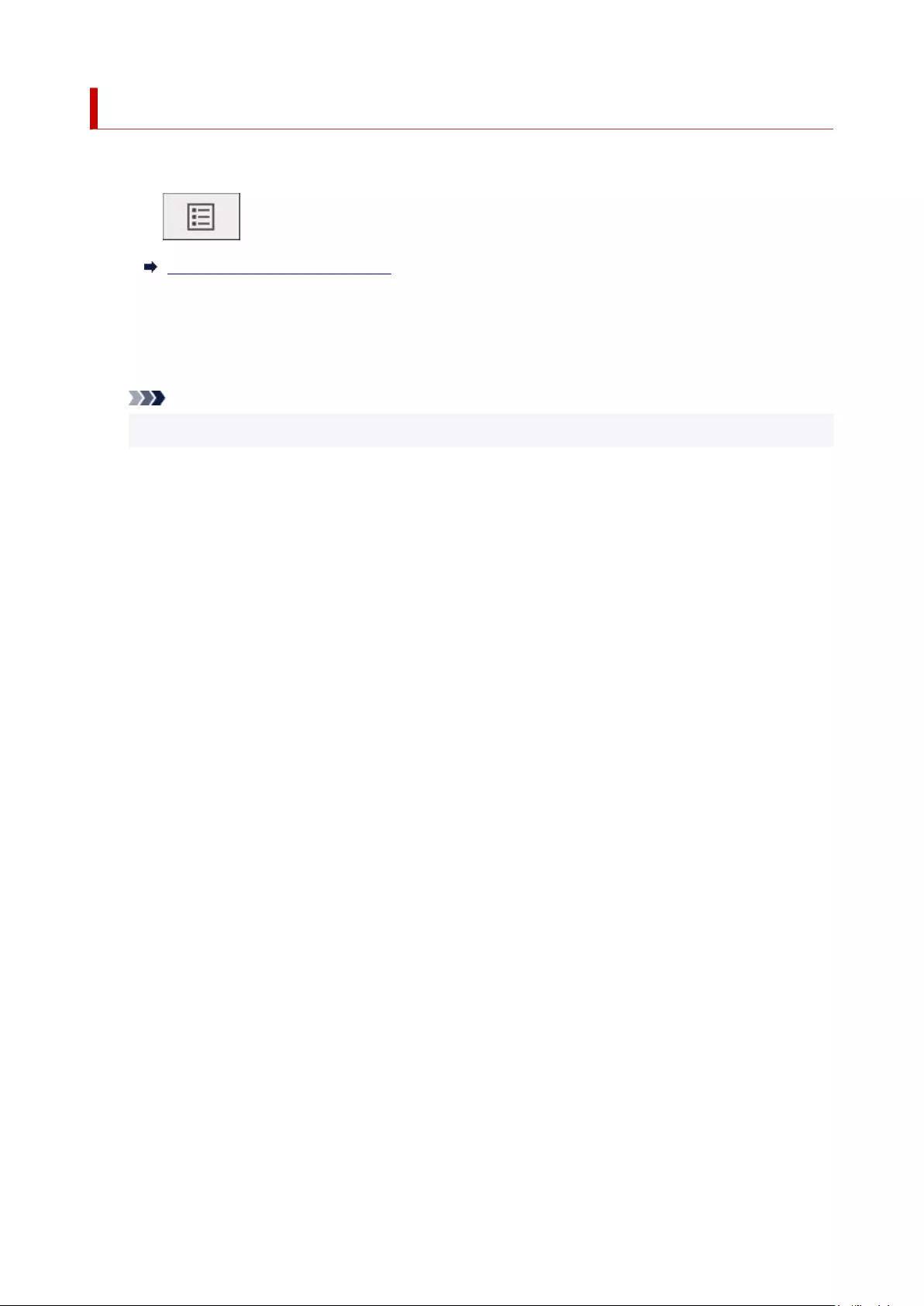
Printing List of Saved Jobs
The list of print jobs stored on the printer's hard disk (saved jobs) can be printed by job box as follows.
1. Tap (Jobs) on HOME screen.1.
Home Screen Menu Composition
2. Tap Saved job.
2.
3. In the list, tap the target job box.
3.
Note
•Enter the password if the personal job box has it.
4. Tap Print the job list.
4.
For each job box, a list of saved jobs is printed.
589
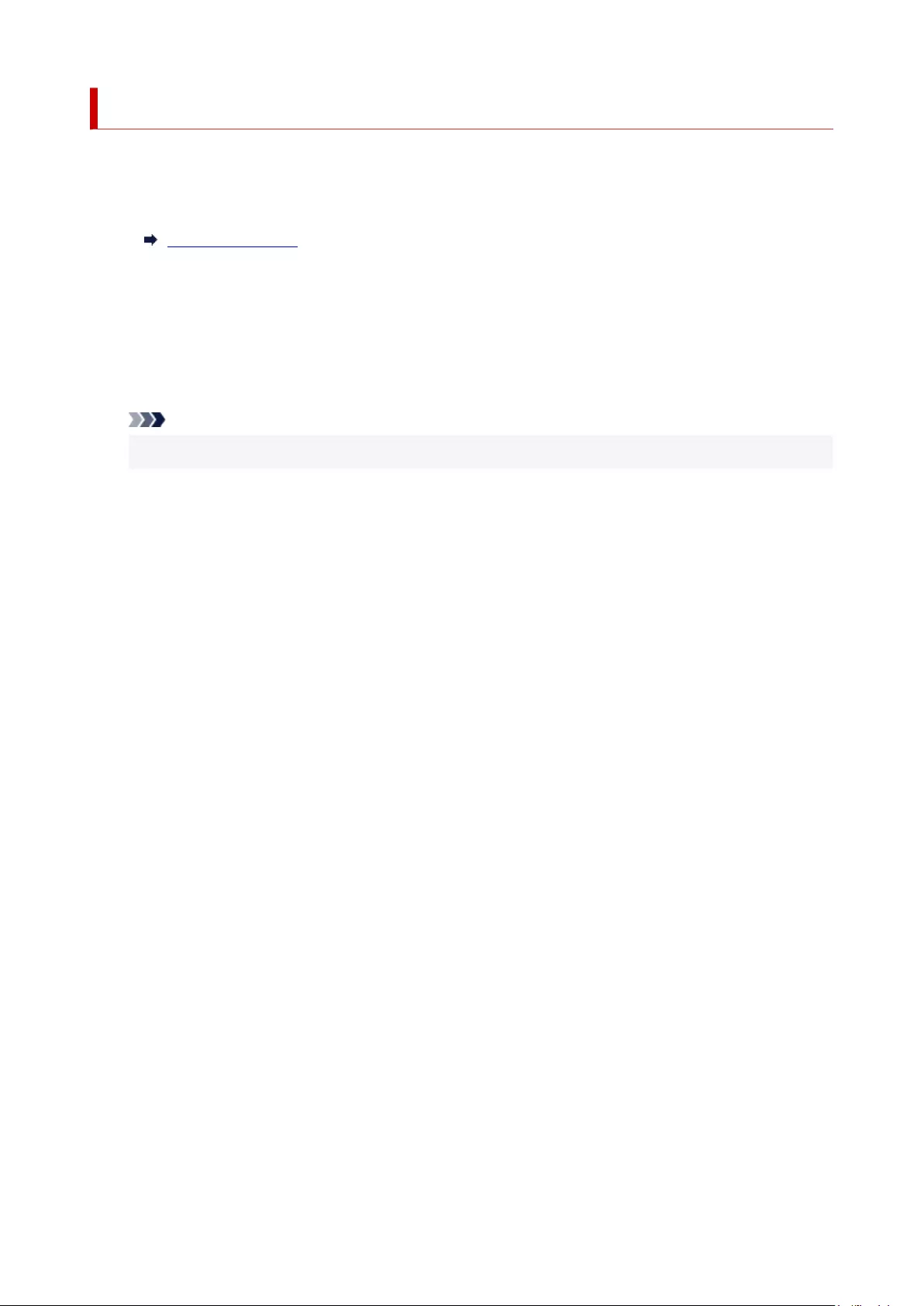
Renaming Saved Jobs
Print jobs stored on the printer's hard disk (saved jobs) can be renamed as follows.
1. Start up Remote UI.1.
Start up Remote UI
2. Select Job management.
2.
3. Select Saved job.
3.
4. In the list, tap the target job box.
4.
Note
•Enter the password if the personal job box has it.
5. In the list, tap the target job.5.
6. Select Edit.6.
7. Select Change.7.
8. Enter name and select OK.8.
590
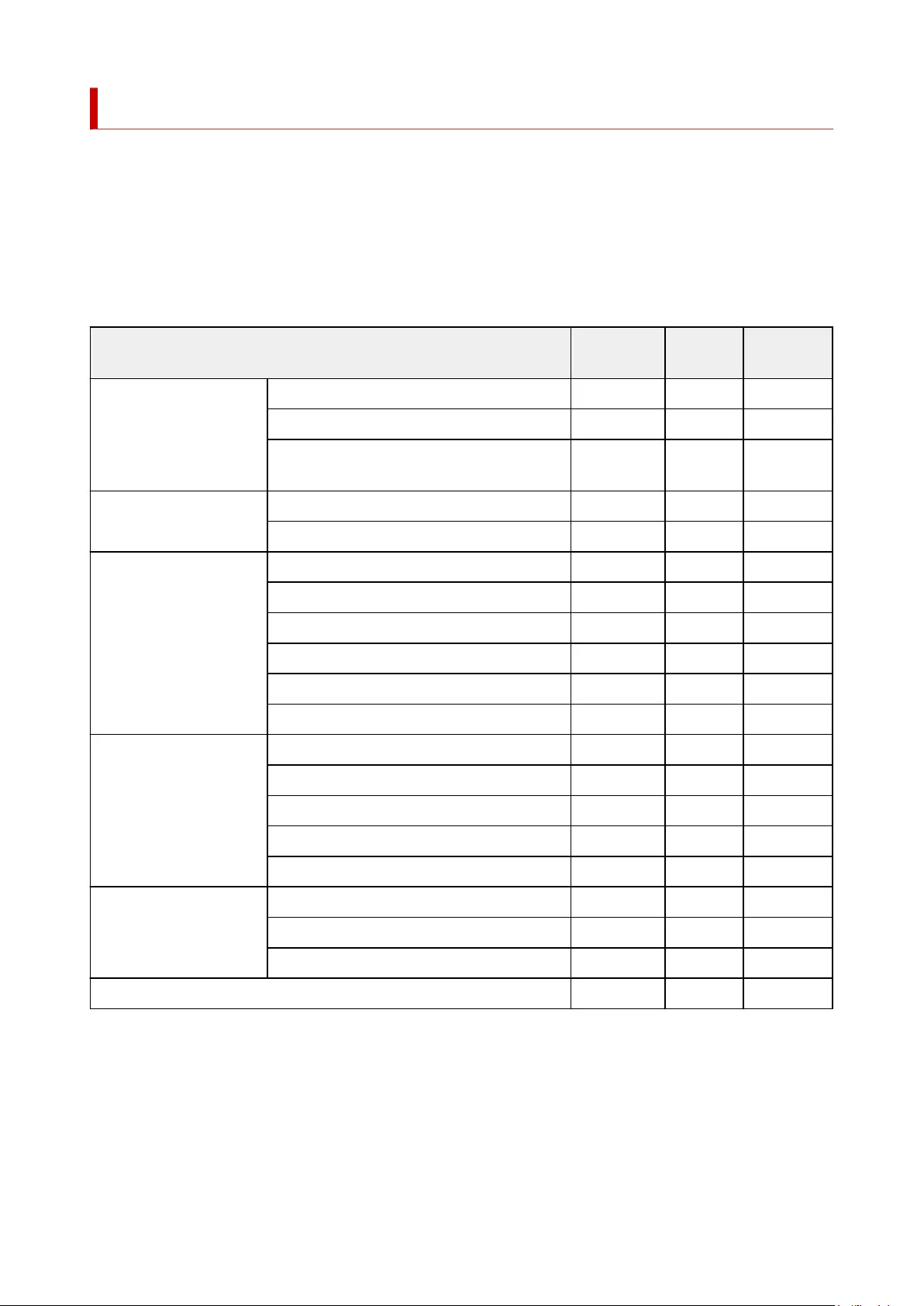
Printer Hard Disk Operations
Printer hard disk operations are available from the following programs and interfaces.
•Printer driver•
•Remote UI•
•Operation panel•
The hard disk operations available through each interface are as follows.
Operation Printer driv-
er
Remote UI Operation
panel
Saving print jobs Save to job box ✓- -
Print without saving jobs in common job box - - ✓
Save print jobs sent from sources other than
printer driver
- - ✓
Operations with saved jobs Print saved jobs - ✓ ✓
Delete saved jobs - ✓ ✓
Job queue management Display job queue - ✓ ✓
Delete - ✓ ✓
Priority printing - ✓ ✓
Operations with pending jobs - ✓ ✓
Operations with security print jobs - - ✓
Delete Operations with security jobs - ✓ ✓
Job box management Move saved jobs - ✓-
Modify saved jobs - ✓-
Modify job boxes - ✓-
Print a list of saved jobs - - ✓
Display a list of saved jobs - ✓ ✓
Other operations Display free hard disk space - ✓ ✓
Initialize hard disk - - ✓
Display the time of printing - ✓ ✓
Display error messages - ✓ ✓
591
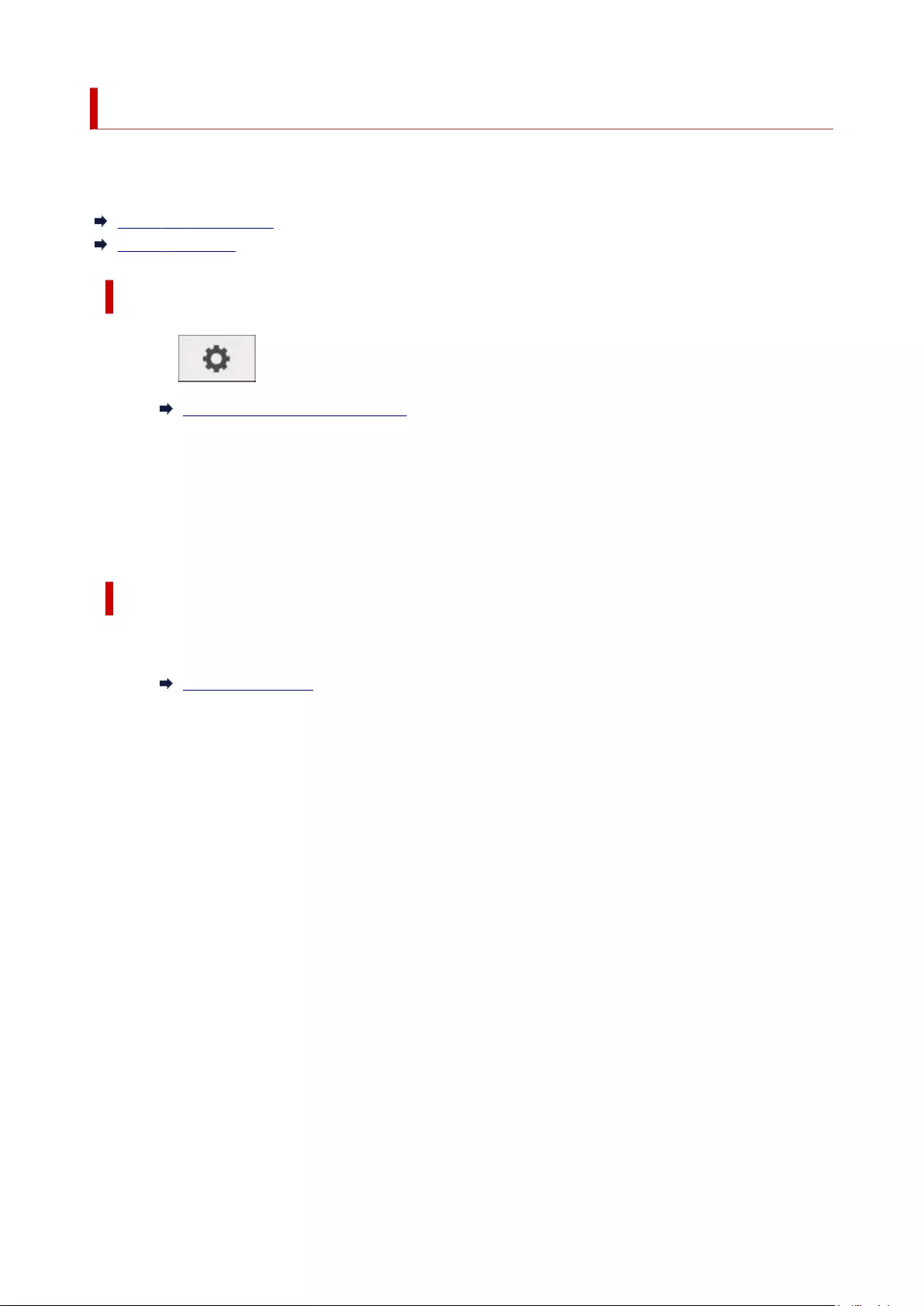
Checking Free Hard Disk Space
Check the space available on the printer's hard disk as follows.
This operation is available using the operation panel or Remote UI.
Using Operation Panel
Using Remote UI
Using Operation Panel
1. Tap (Setup) on HOME screen.
1.
Home Screen Menu Composition
2. Tap Printer information.
2.
3. Tap Hard disk information.3.
The free hard disk space (job box free space) appears.
Using Remote UI
1. Start up Remote UI.
1.
Start up Remote UI
2. Select Job management.2.
3. Select Hard disk information.3.
The free hard disk space (job box free space) appears.
592
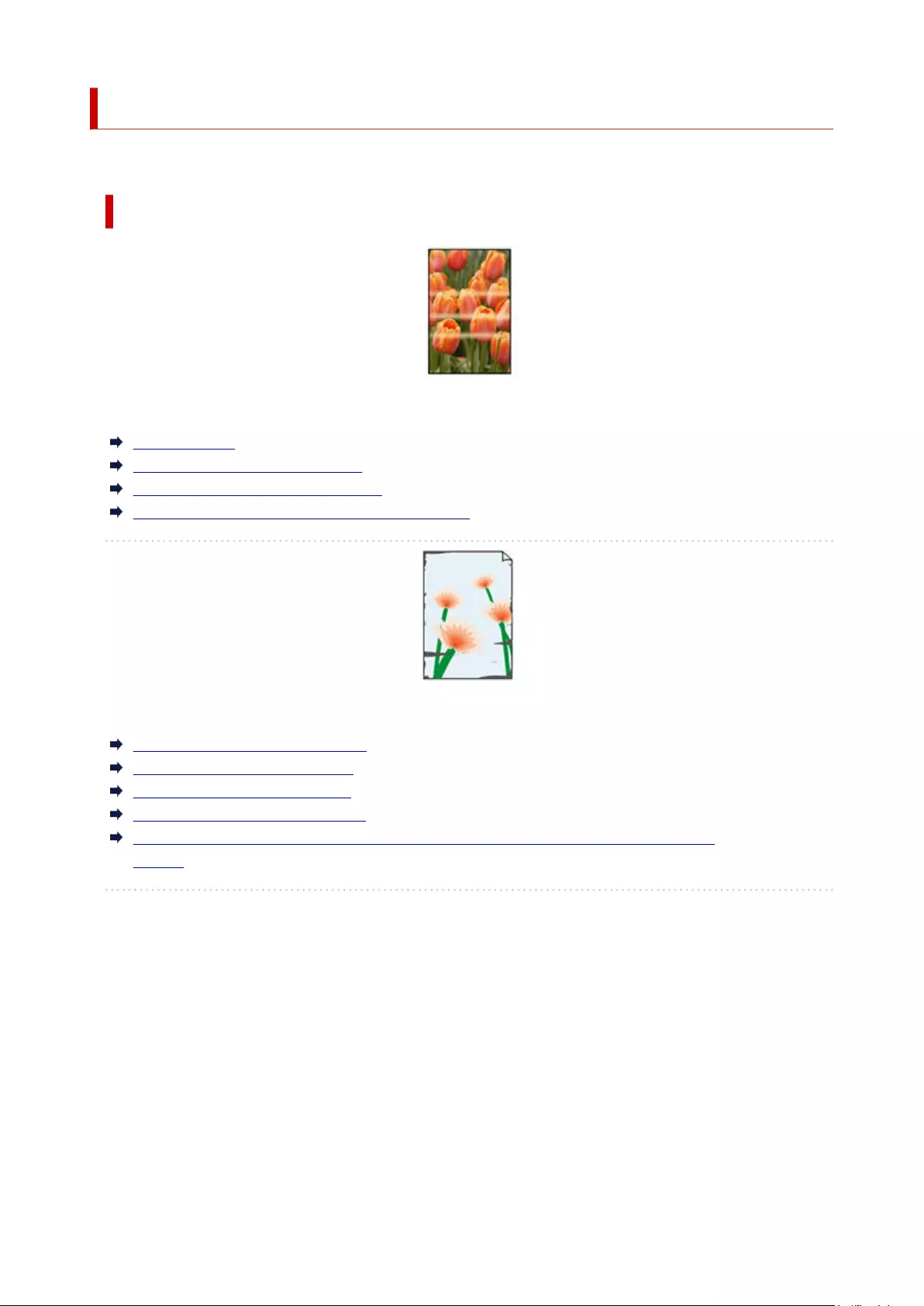
Printing is faint
Banding in different colors occurs
Colors in printed images are uneven
Image edges are blurred or white banding occurs
Paper rubs against the Print Head
The edges of the paper are dirty
The surface of the paper is dirty
The back side of the paper is dirty
Immediately after borderless printing, the trailing edge margin is soiled during regular
printing
Frequently Asked Questions
Problems with the Printing Quality
Unevenness, Banding, Faint
dirt
593
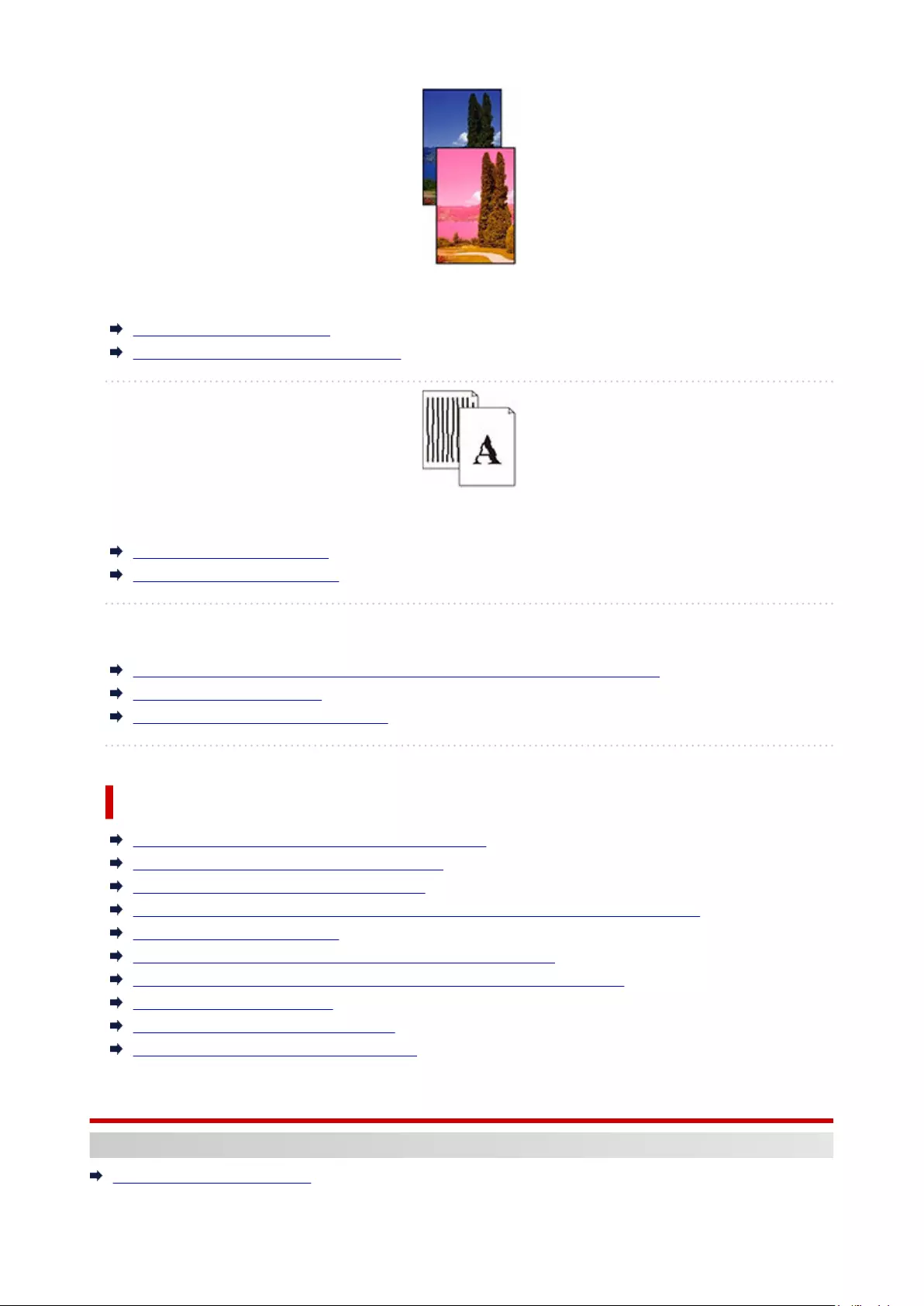
Printed colors are inaccurate
Documents are printed in monochrome
Line thickness is not uniform
Lines or colors are misaligned
The length of the printed image in the paper ejection direction is not accurate
Images are printed crooked
Borders appear in borderless printing
colors are inaccurate
Line
Others
General FAQ
I want to easily create vertical or horizontal banners
Does this printer support sub-ink tank system
I want to know how to configure roll cutting
I want to configure so that the roll is cut automatically after waiting for the ink to dry
How do I print without borders
I want to know the paper types that can be used in this printer
The paper type that I want to print is not displayed on the Touch Screen
Can I perform duplex printing
I want to perform enlargement printing
Network Settings and Common Problems
Search by Category
Problems Regarding Paper
Remove Jammed Roll Paper
594
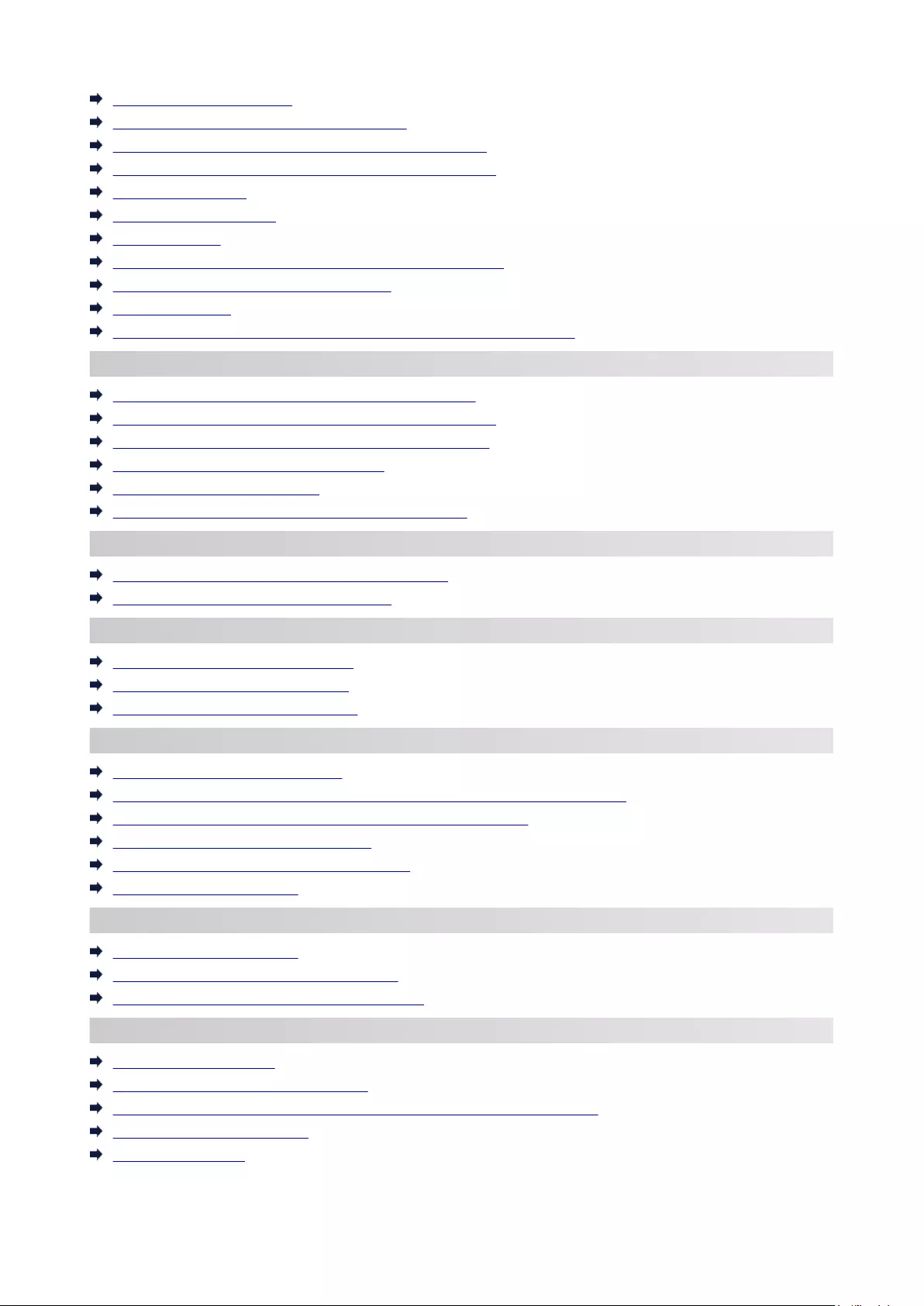
Remove a Jammed Sheet
Remove Jammed Paper (Paper Feed Slot)
Roll paper cannot be inserted into the Paper Feed Slot
Roll Paper Remains/Lacks under Quantity Management
Cannot load sheets
Paper is not cut straight
Paper is not cut
Cutter Blade Does Not Work While Cutting Is in Progress
The size of clear film cannot be detected
Margins are wide
When printing on roll paper, the printed surface becomes scratched
Printing Does Not Start
Printer Suddenly Stopped Working for Some Reason
The Data lamp on the Operation Panel does not light up
The printer does not respond even if print jobs are sent
"Preparing the ink system." is displayed
"Agitating the ink" is displayed
Message Is Displayed and Borderless Printing Fails
The Printer Stops During a Print Job
Printing stops and an error message is displayed
The printer ejects blank, unprinted paper
Cannot Print over Network
Cannot Connect Printer to Network
Cannot Print over TCP/IP Network
Cannot Print over Bonjour networks
Cannot Find Printer on Network
Cannot Find Printer During Setup
Cannot Proceed beyond Printer Connection Screen/Connect Cable Screen
Searching Printer by IP Address or Host Name During Setup
Cannot Find Printer while Using Wi-Fi
Cannot Find Printer while Using Wired LAN
Cannot Print Using AirPrint
Installation Problems
Removing Printer Software
Taking Time to Setup Process (Windows)
Failed to Printer Driver Installation (Windows)
Other Problems
Printer does not turn on
If the Printer Makes a Strange Sound
Messages advising to check the maintenance cartridge are not cleared
Printer consumes a lot of ink
Ink Level Detection
595
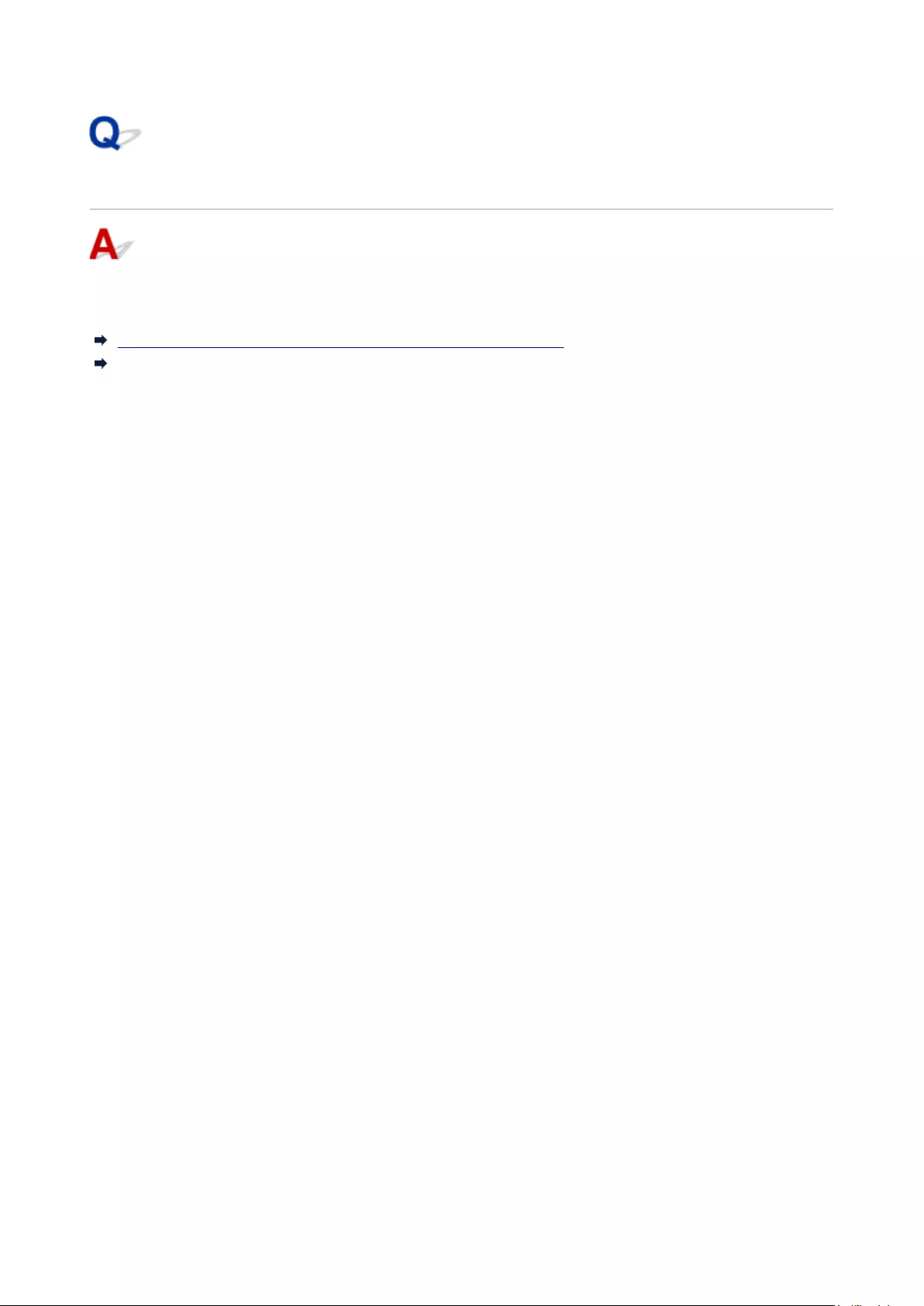
I want to easily create vertical or horizontal banners
You can print originals that are in landscape (or portrait) orientation automatically enlarged to fit the roll
width. This is an easy way to create vertical or horizontal banners.
Printing Hanging and Horizontal Banners (Large-Format Printing) (Windows)
Printing Hanging and Horizontal Banners (Large-Format Printing) (macOS)
597
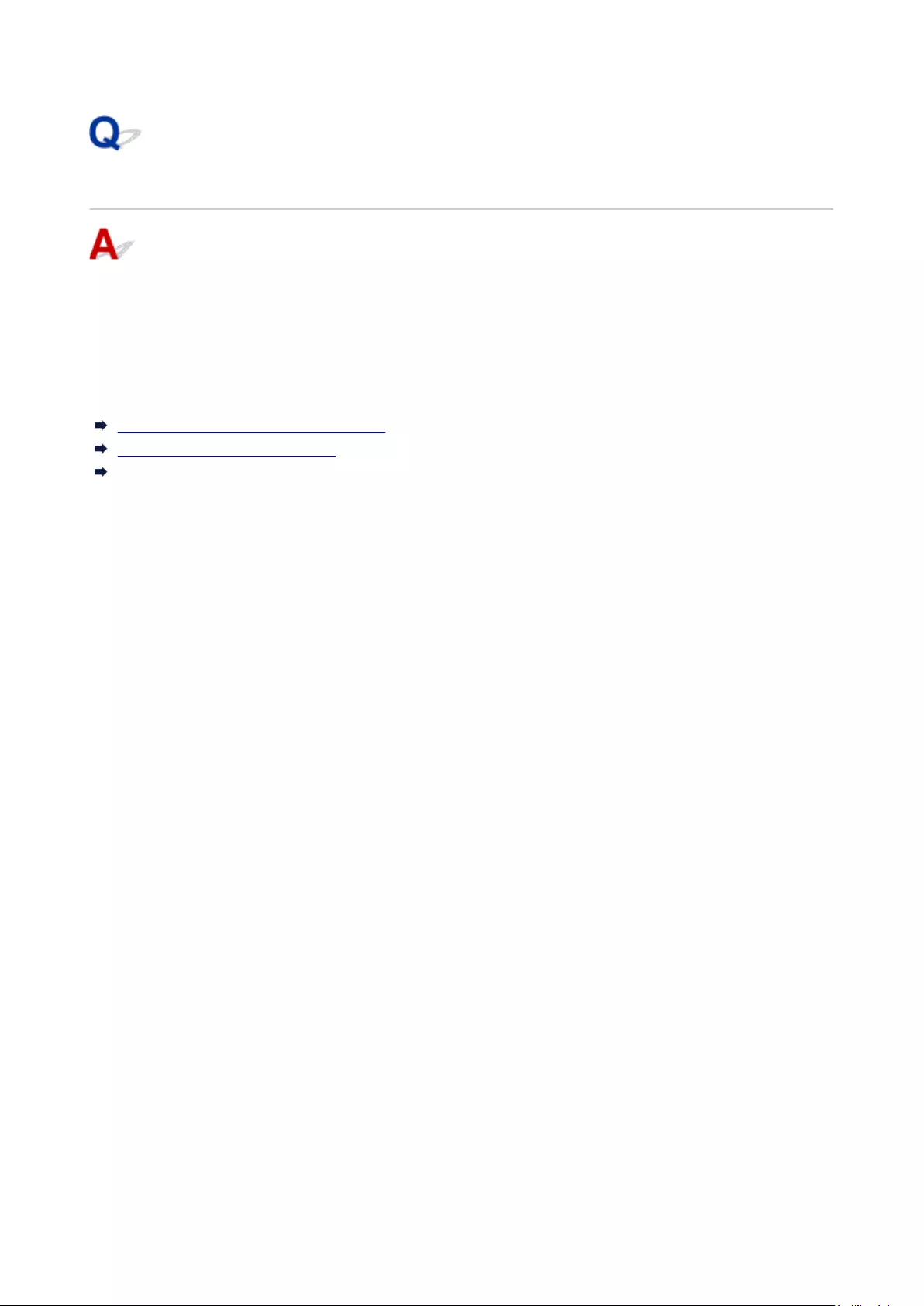
I want to know how to configure roll cutting
Cutting methods can be selected in the printer settings and printer driver settings.
To automatically cut roll paper after printing, open the Cutting mode settings on the printer, and then under
Automatic cut set Automatic Cutting in the printer driver to Yes.
When using paper that is easily scratched, or paper where the ink requires extra time to fix, we recommend
setting Cutting mode on the printer to Eject cut.
Specifying the Cutting Method for Rolls
Cutting Roll Paper after Printing (Windows)
Cutting Roll Paper after Printing (macOS)
599
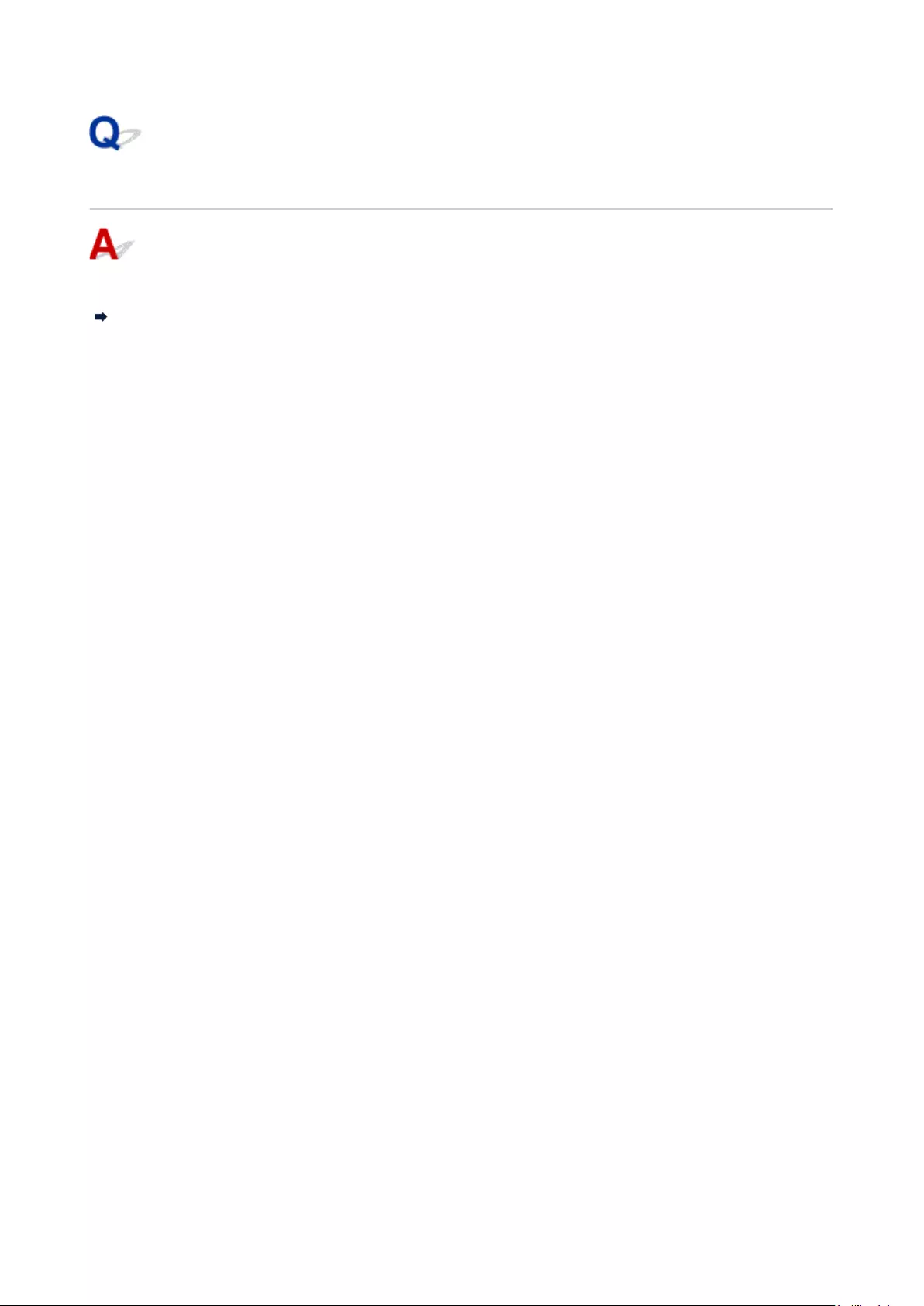
I want to know the paper types that can be used in this printer
For information about paper that can be used with this printer, refer to the media information list.
Paper Information List
602
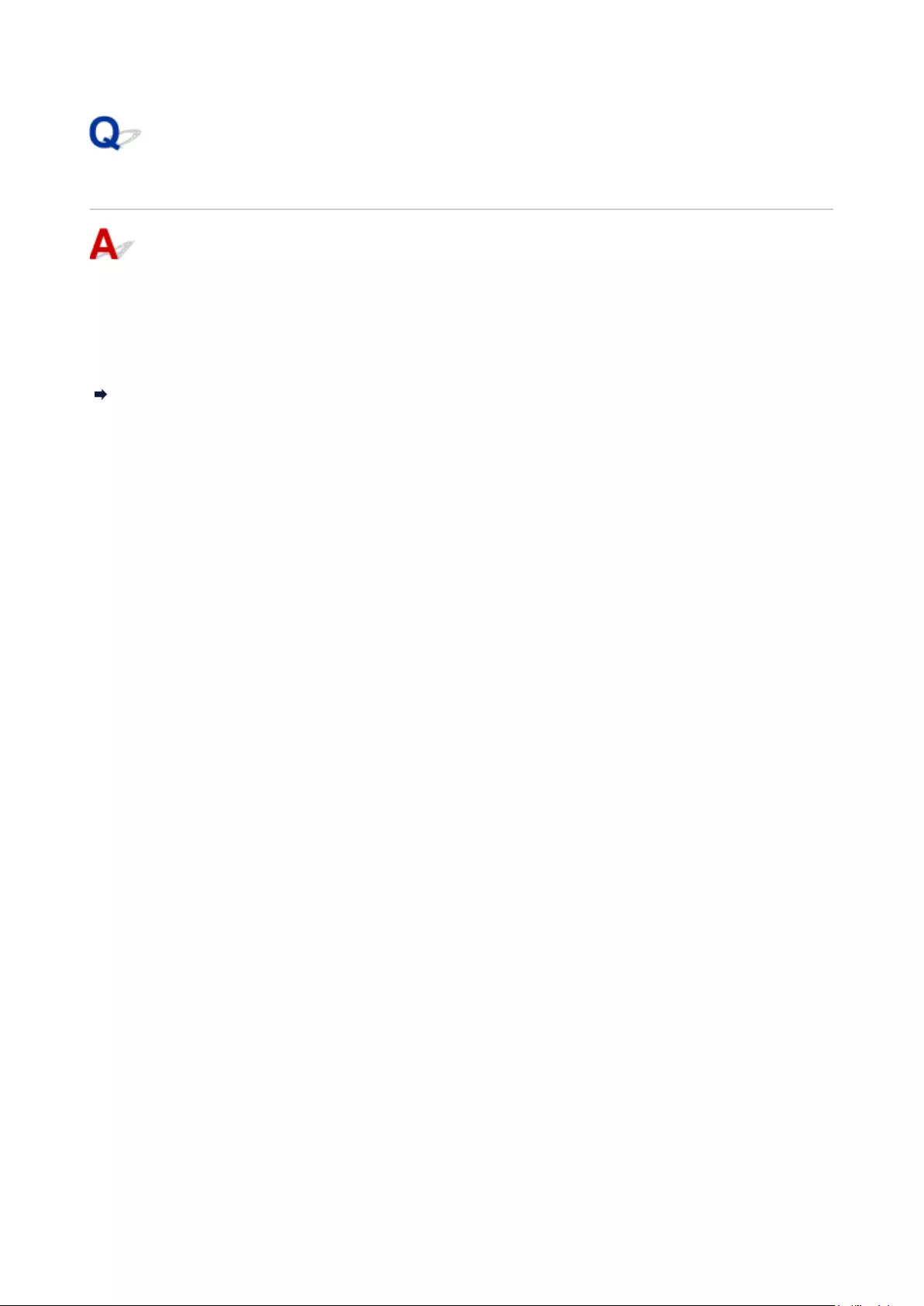
Can I perform duplex printing
This printer cannot print double-sided.
An alternative to double-sided printing is to use the Folded Duplex function of the Windows software Free
Layout plus, which prints two pages on one side, folds the sheet back from the center, and hangs it.
Laying Out Documents Freely Using Free Layout plus
604
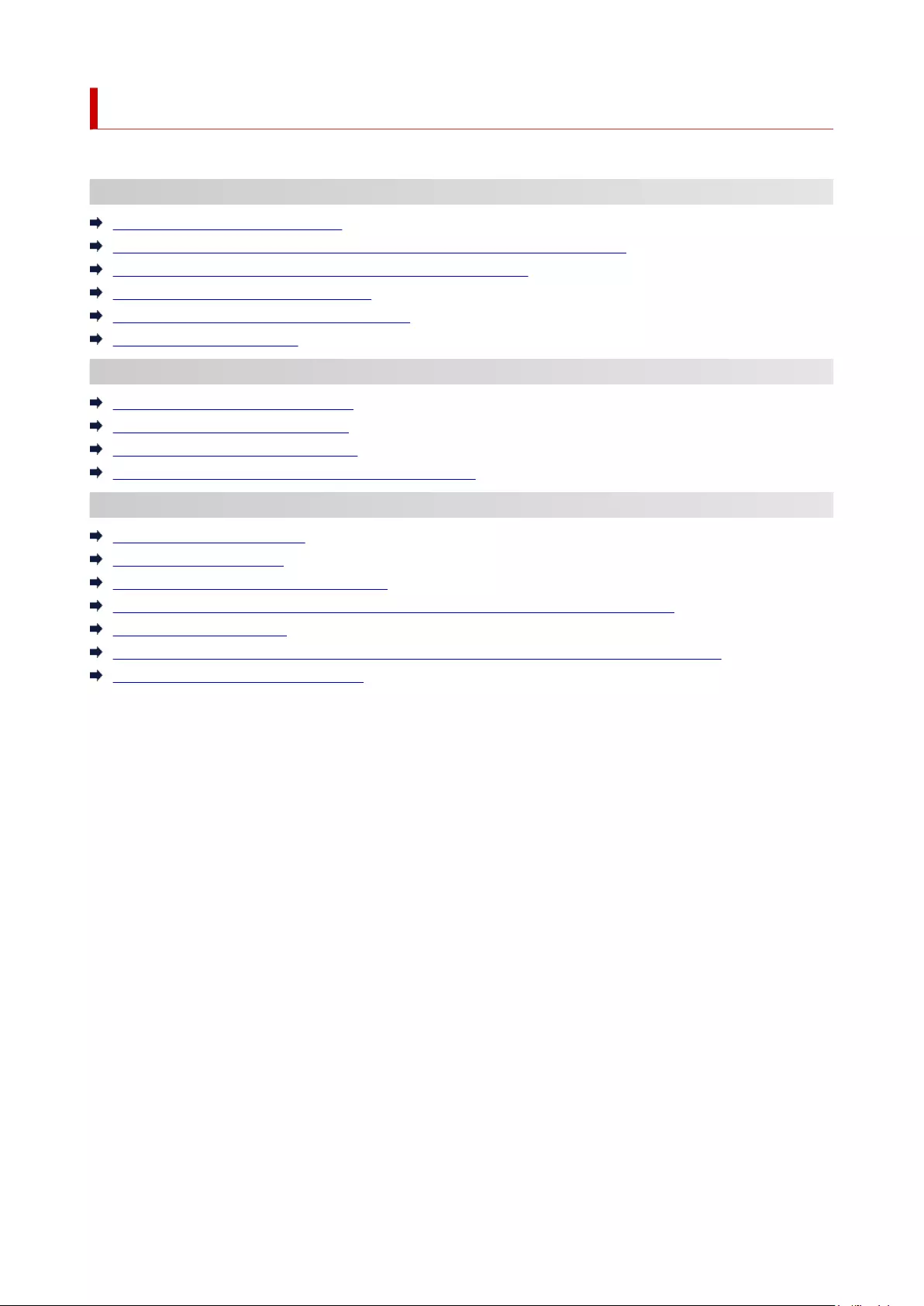
Network Settings and Common Problems
Here are frequently asked questions on network.
Cannot Find Printer
Cannot Find Printer During Setup
Cannot Proceed beyond Printer Connection Screen/Connect Cable Screen
Searching Printer by IP Address or Host Name During Setup
Cannot Find Printer while Using Wi-Fi
Cannot Find Printer while Using Wired LAN
Cannot Print Using AirPrint
Cannot Print or Connect
Cannot Connect Printer to Network
Cannot Print over TCP/IP Network
Cannot Print over Bonjour networks
Printer Suddenly Stopped Working for Some Reason
LAN Setting Tips/Changing LAN Settings
Printer Connection Methods
Default Network Settings
Another Printer Found with Same Name
Connecting to Another Computer via LAN/Changing from USB to LAN Connection
Printing Network Settings
Reconfiguration Method of LAN Connection/Reconfiguration Method of Wi-Fi Connection
Network Status and Troubleshooting
606

Problems Regarding Paper
Remove Jammed Roll Paper
Remove a Jammed Sheet
Remove Jammed Paper (Paper Feed Slot)
Roll paper cannot be inserted into the Paper Feed Slot
Roll Paper Remains/Lacks under Quantity Management
Cannot load sheets
Paper is not cut straight
Paper is not cut
Cutter Blade Does Not Work While Cutting Is in Progress
Dent in the Tip of Paper
The size of clear film cannot be detected
Printer Keeps Ejecting the Roll Paper
Margins are wide
When printing on roll paper, the printed surface becomes scratched
607
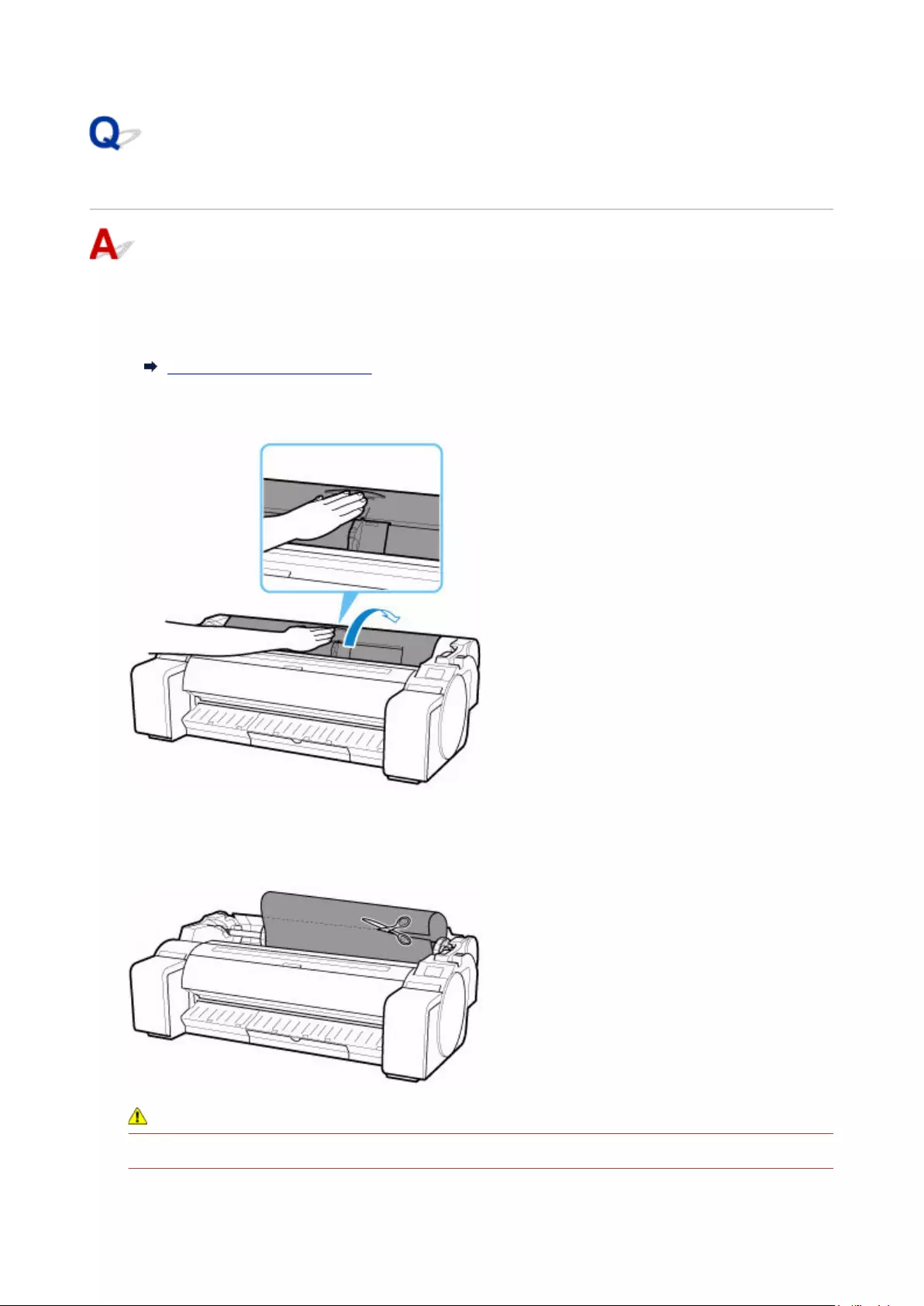
Remove Jammed Roll Paper
If roll paper jams, follow the steps below to remove jams.
1. Turn off printer.
1.
Turning the Printer On and Off
2. Positioning your hands as shown, open roll paper cover.
2.
3. Cut loaded roll paper with regular scissors or the like.3.
Before cutting, loose the roll paper and lift it up.
Caution
•When cutting paper, be careful to avoid injury or damage to the printer.
608
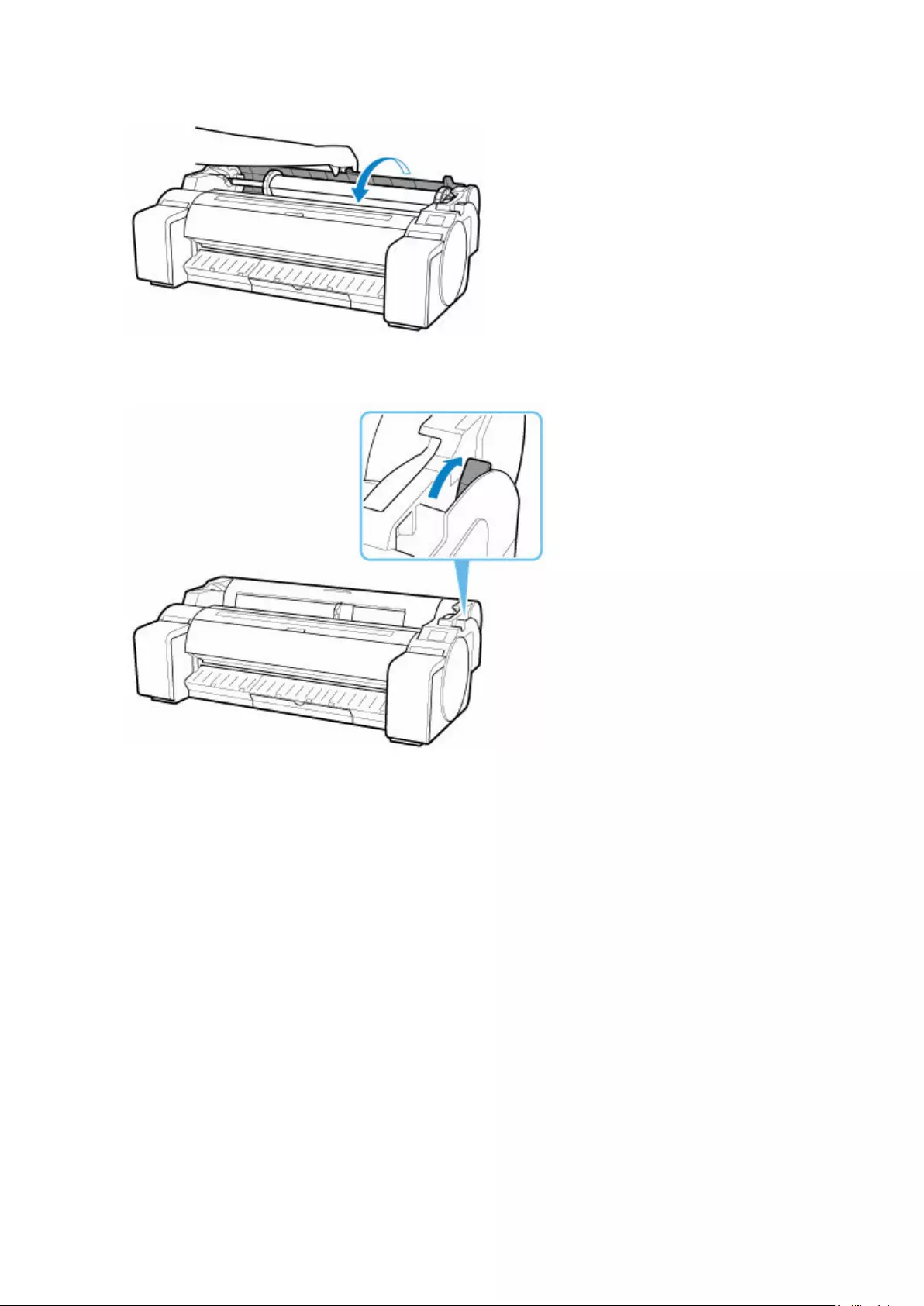
4. Holding it at the positions indicated, close roll paper cover.4.
5. Push release lever back.
5.
6. Remove jammed paper.6.
• If paper is jammed inside the top cover•
1. Open top cover and move carriage to the left or right side manually, away from the1.
jam.
609
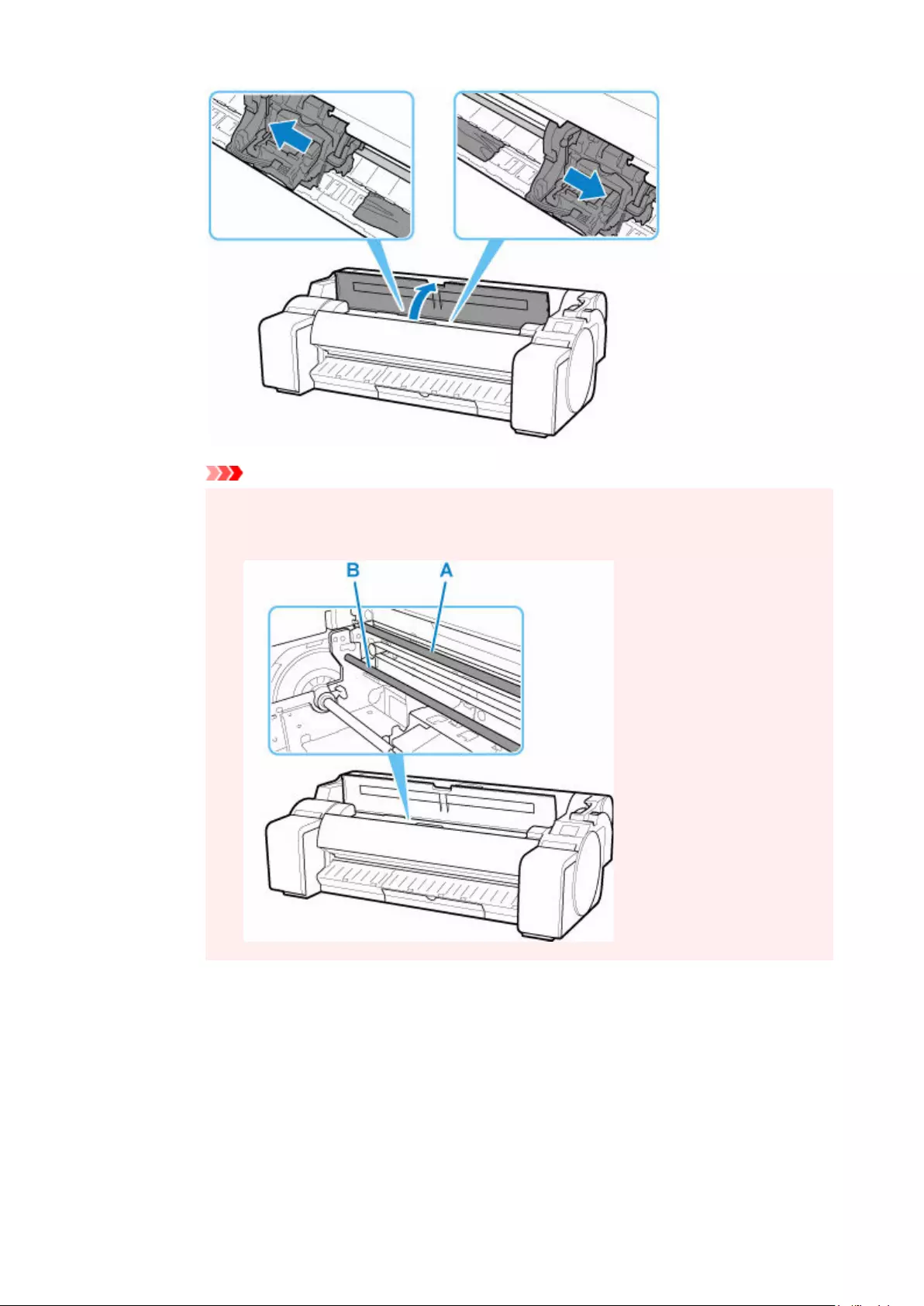
Important
•Do not move the carriage over jammed paper. This may damage the print head.
• Do not touch the linear scale (A) or carriage shaft (B). This may stain your hands and
damage the printer.
2. Remove any jammed paper inside top cover.
2.
After removing the paper, make sure there are no other scraps of paper in the printer.
3. Close top cover.
3.
610
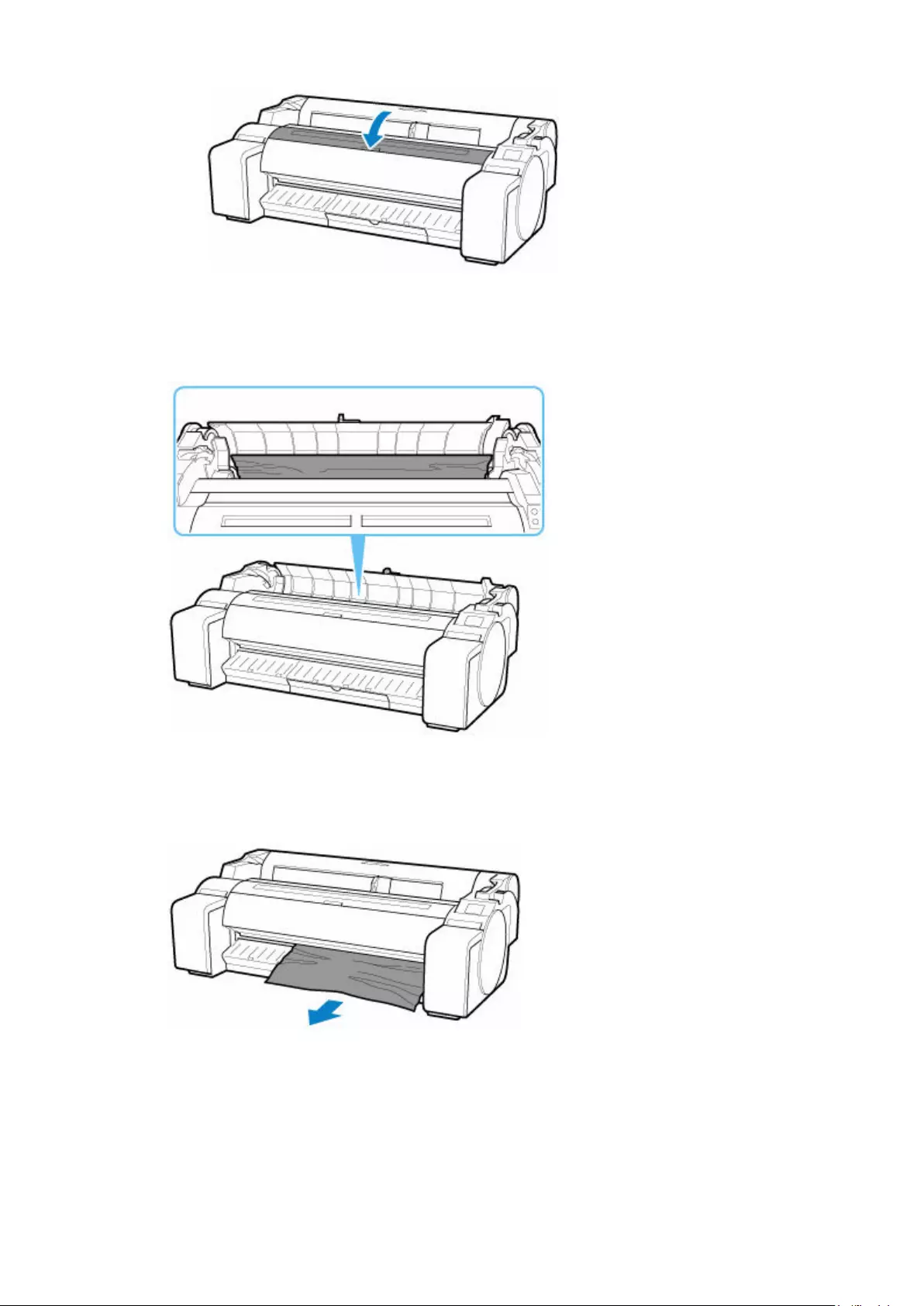
•If the paper from a roll is jammed by the paper feed slot
•
Remove the jammed paper from the paper feed slot.
After removing the paper, make sure there are no other scraps of paper in the printer.
• If the paper is jammed by the ejection guide•
Remove the jammed paper from the output tray.
After removing the paper, make sure there are no other scraps of paper in the printer.
7. Pull release lever forward.
7.
611
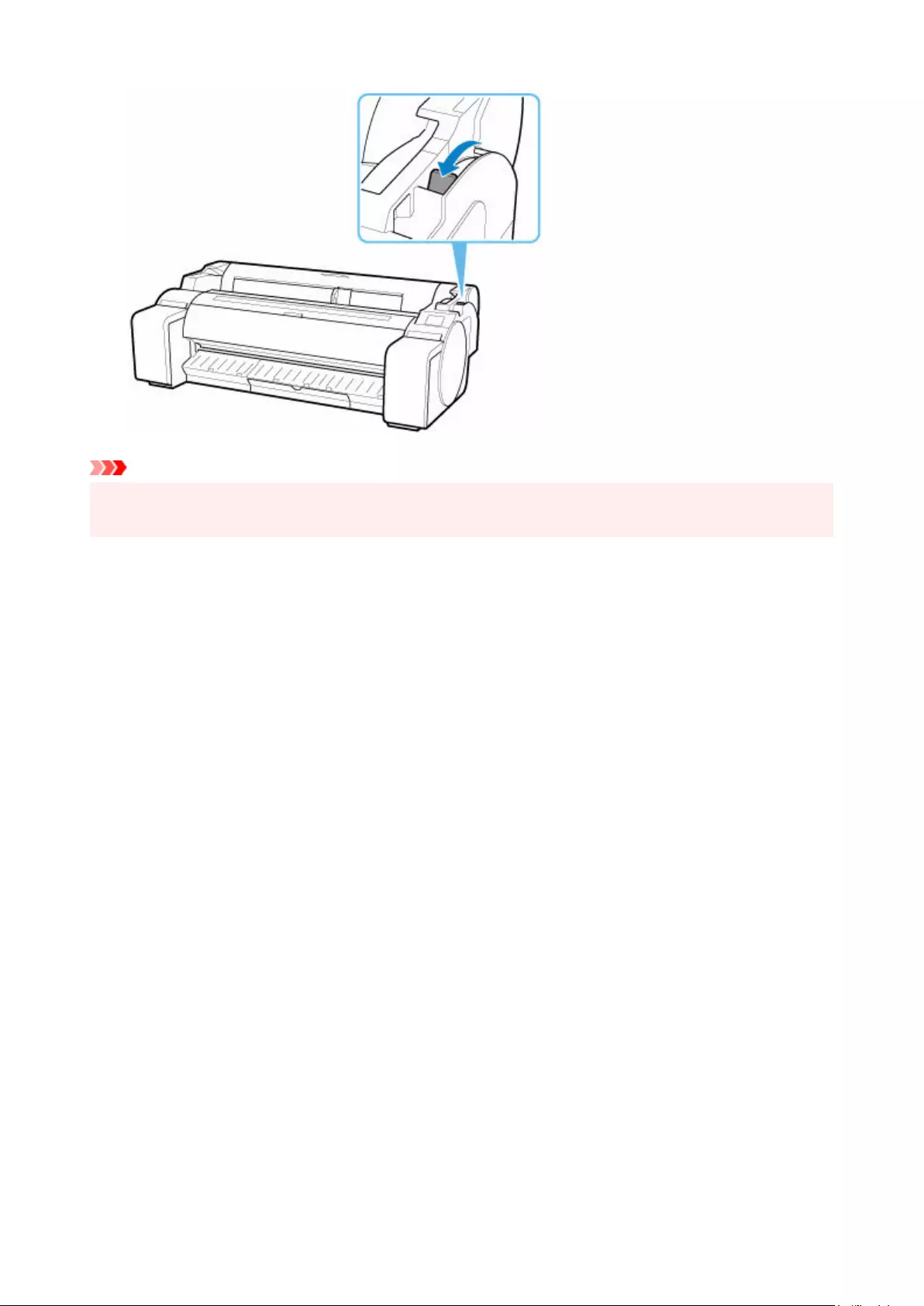
Important
• Changing the release lever position while printing is in progress causes paper jam, misaligned lines, or
wrong colors. Be careful not to touch the release lever while printing in progress.
612
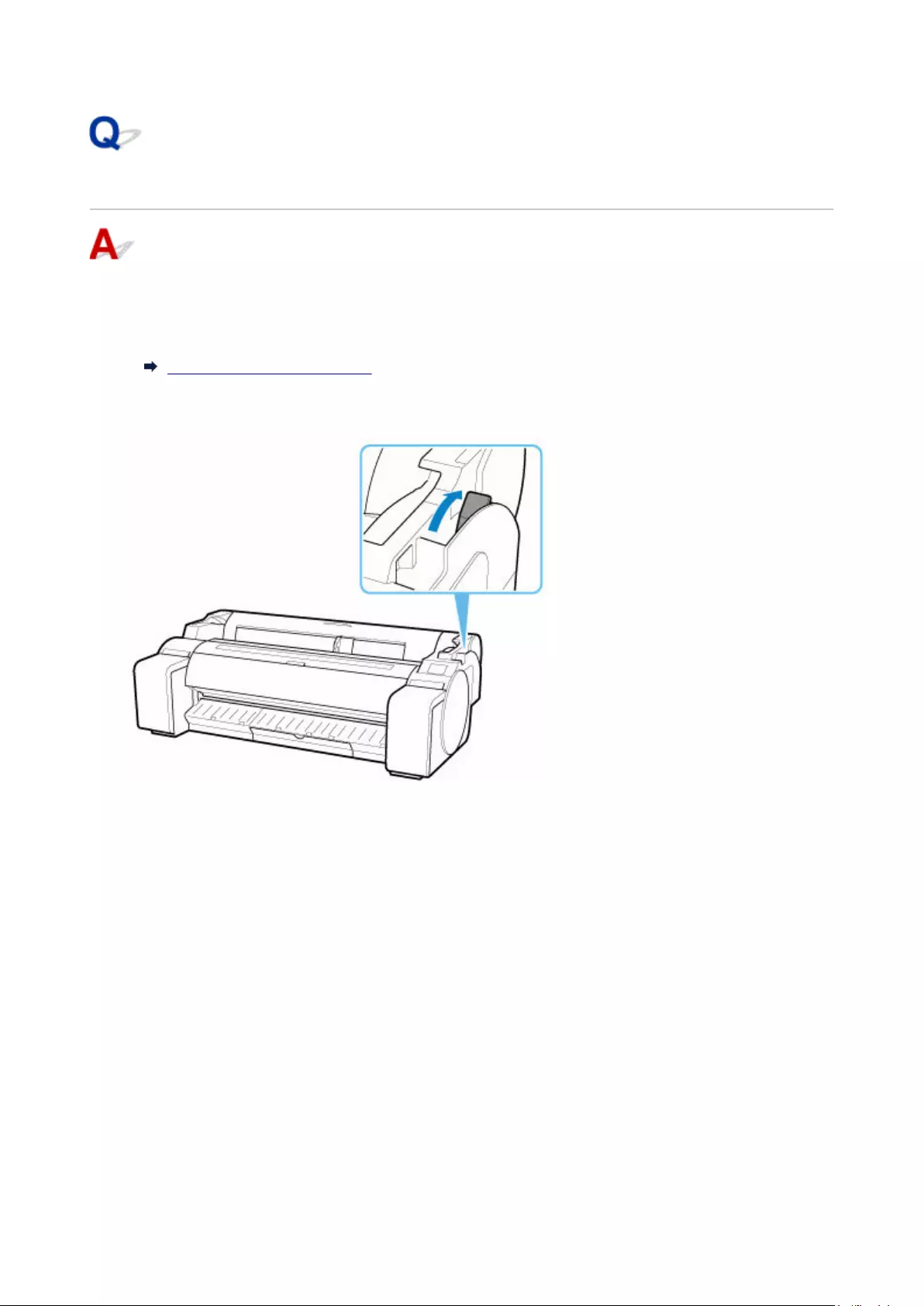
Remove a Jammed Sheet
If a sheet jams, follow the steps below to remove it.
1. Turn off printer.
1.
Turning the Printer On and Off
2. Push release lever back.
2.
3. Remove jammed paper.3.
• If paper is jammed inside the top cover•
1. Open top cover and move carriage to the left or right side manually, away from the
1.
jam.
613
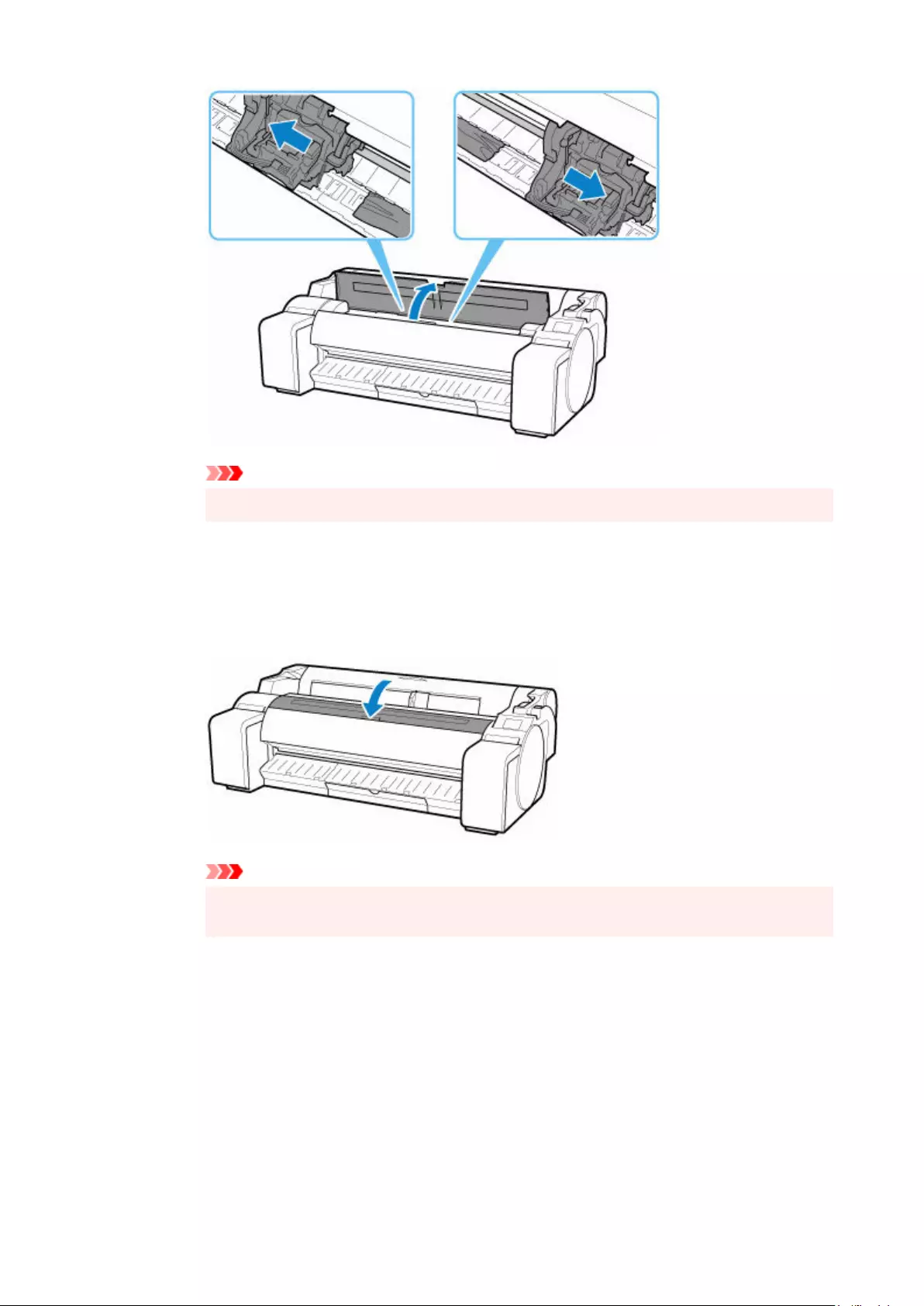
Important
•Do not move the carriage over jammed paper. This may damage the print head.
2. Remove any jammed paper inside top cover.2.
After removing the paper, make sure there are no other scraps of paper in the printer.
3. Close top cover.3.
Important
• Do not touch the linear scale (A) or carriage shaft (B). This may stain your hands and•
damage the printer.
614
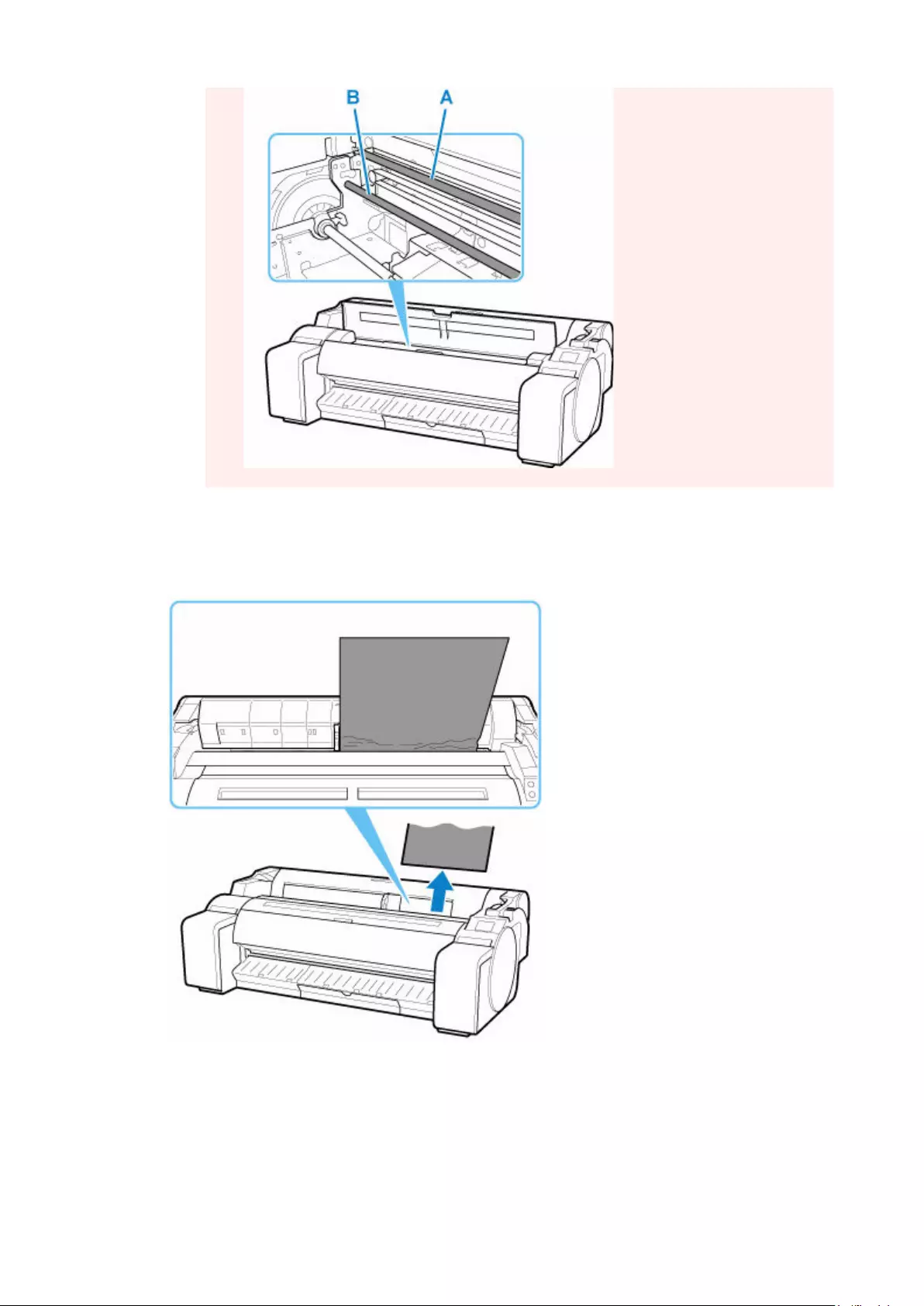
• If the paper is jammed by the paper feed slot
•
Remove the jammed paper from the paper feed slot.
After removing the paper, make sure there are no other scraps of paper in the printer.
•If the paper is jammed by the ejection guide
•
Remove the jammed paper from the output tray.
After removing the paper, make sure there are no other scraps of paper in the printer.
615
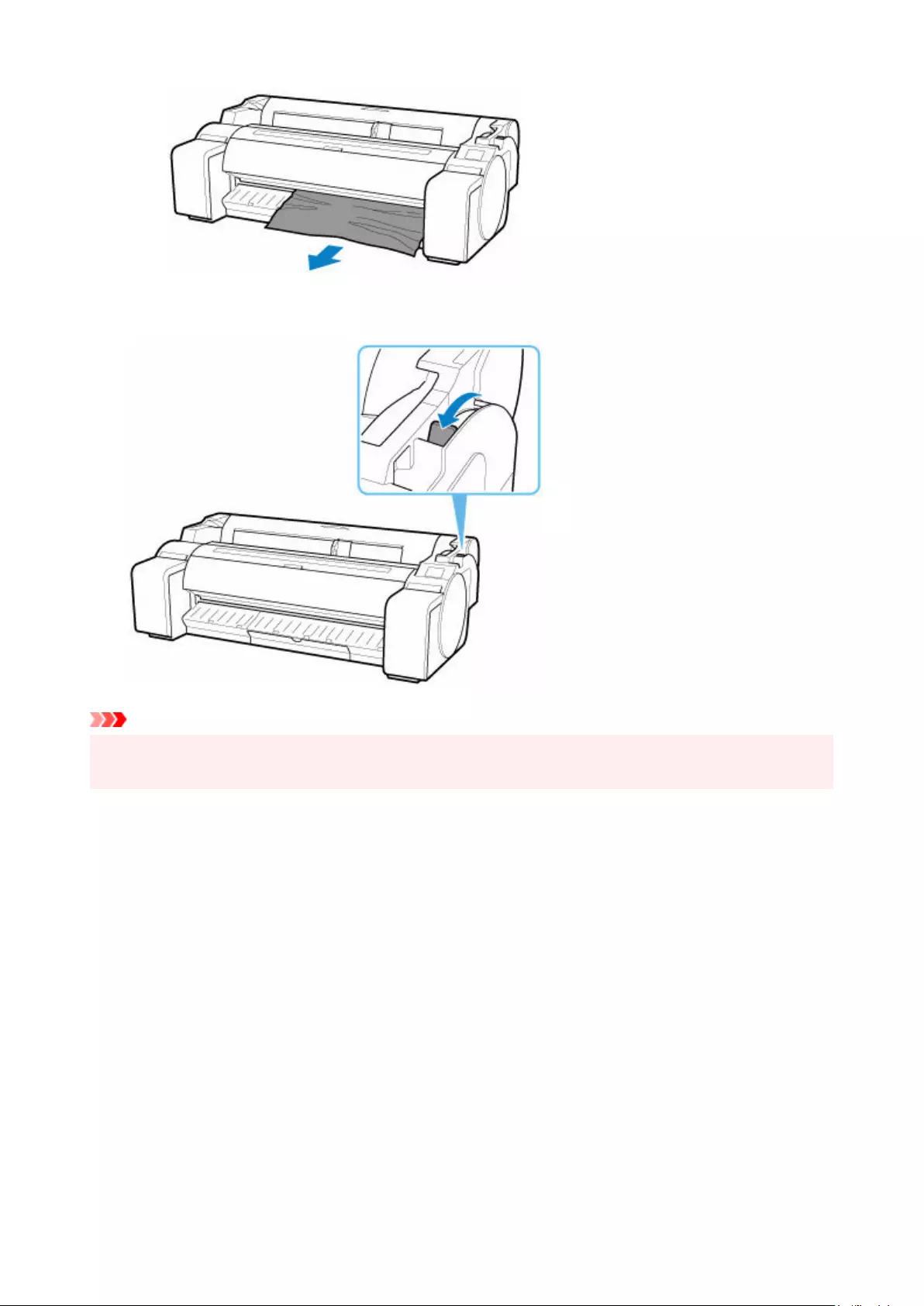
4. Pull release lever forward.
4.
Important
•Changing the release lever position while printing is in progress causes paper jam, misaligned lines, or
wrong colors. Be careful not to touch the release lever while printing in progress.
616

4. Fold an A4 sheet lengthwise four times and insert it through the gap of paper feed slot.
4.
Push scrap out toward platen.
5. Remove scrap when it is pushed out onto platen.
5.
6. If any scraps remain inside paper feed slot, repeat steps 4 and 5.
6.
7. Holding it at the positions indicated, close roll paper cover.
7.
618
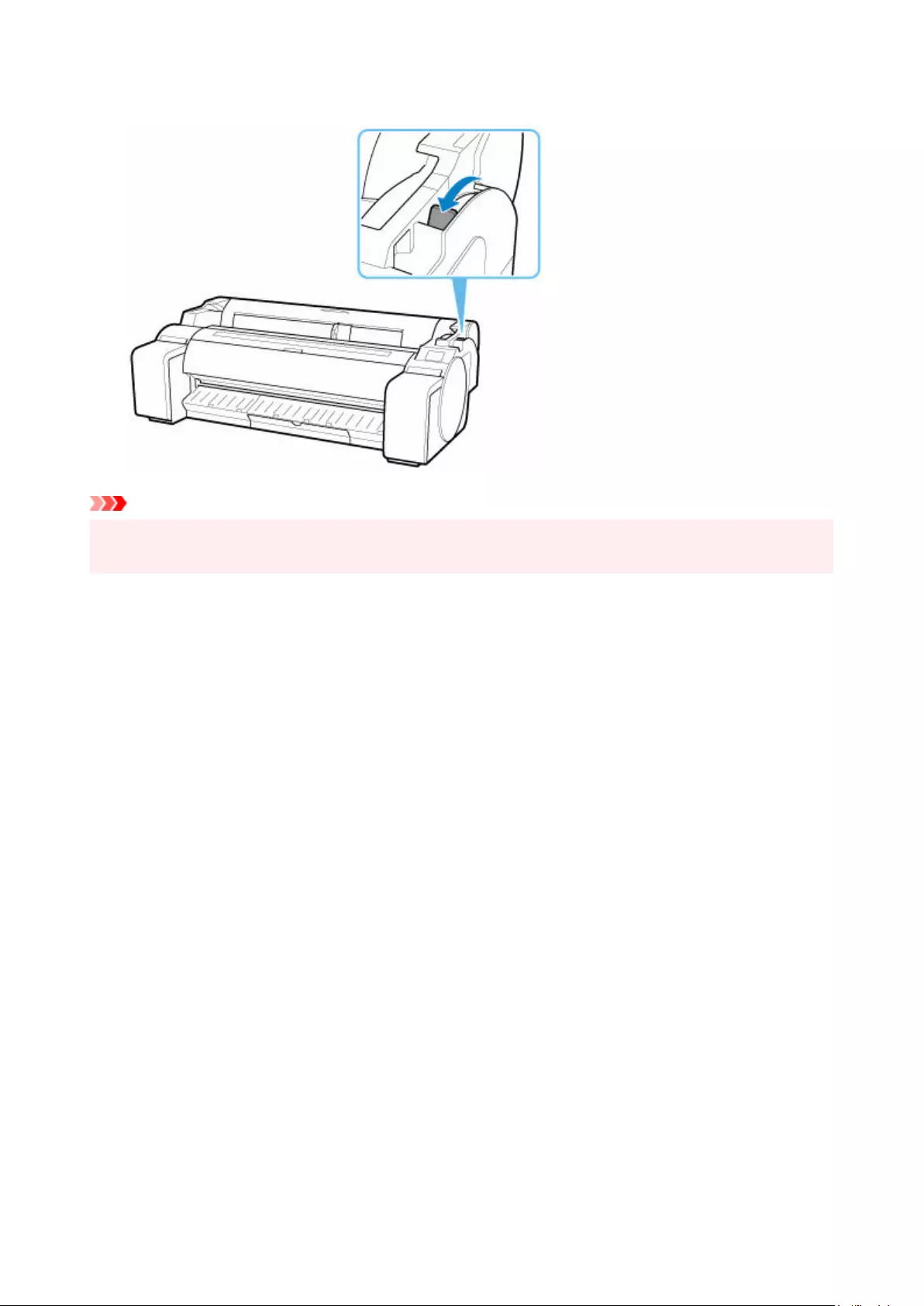
8. Pull release lever forward.8.
Important
• Changing the release lever position while printing is in progress causes paper jam, misaligned lines, or
wrong colors. Be careful not to touch the release lever while printing in progress.
619

Roll paper cannot be inserted into the Paper Feed Slot
Check 1 Is the roll paper curled?
Straighten out curls and reload the roll.
Check 2 Is paper jammed in the feed slot?
Remove the jammed paper.
Remove Jammed Roll Paper
Remove a Jammed Sheet
Check 3 Check the paper information on the HOME screen.
If "Roll" is not displayed, select Replace roll paper or Load roll paper from the Select paper screen, and then
load the roll paper.
Note
•You cannot load a roll paper and sheets on the printer at the same time.
Check 4 The leading edge of the roll paper may not be cut properly.
If the leading edge of the roll paper is crooked or folded, the paper may not be fed correctly. Cut the leading
edge with scissors to straighten it. If the roll paper has a printed barcode, be careful not to cut the barcode part.
620
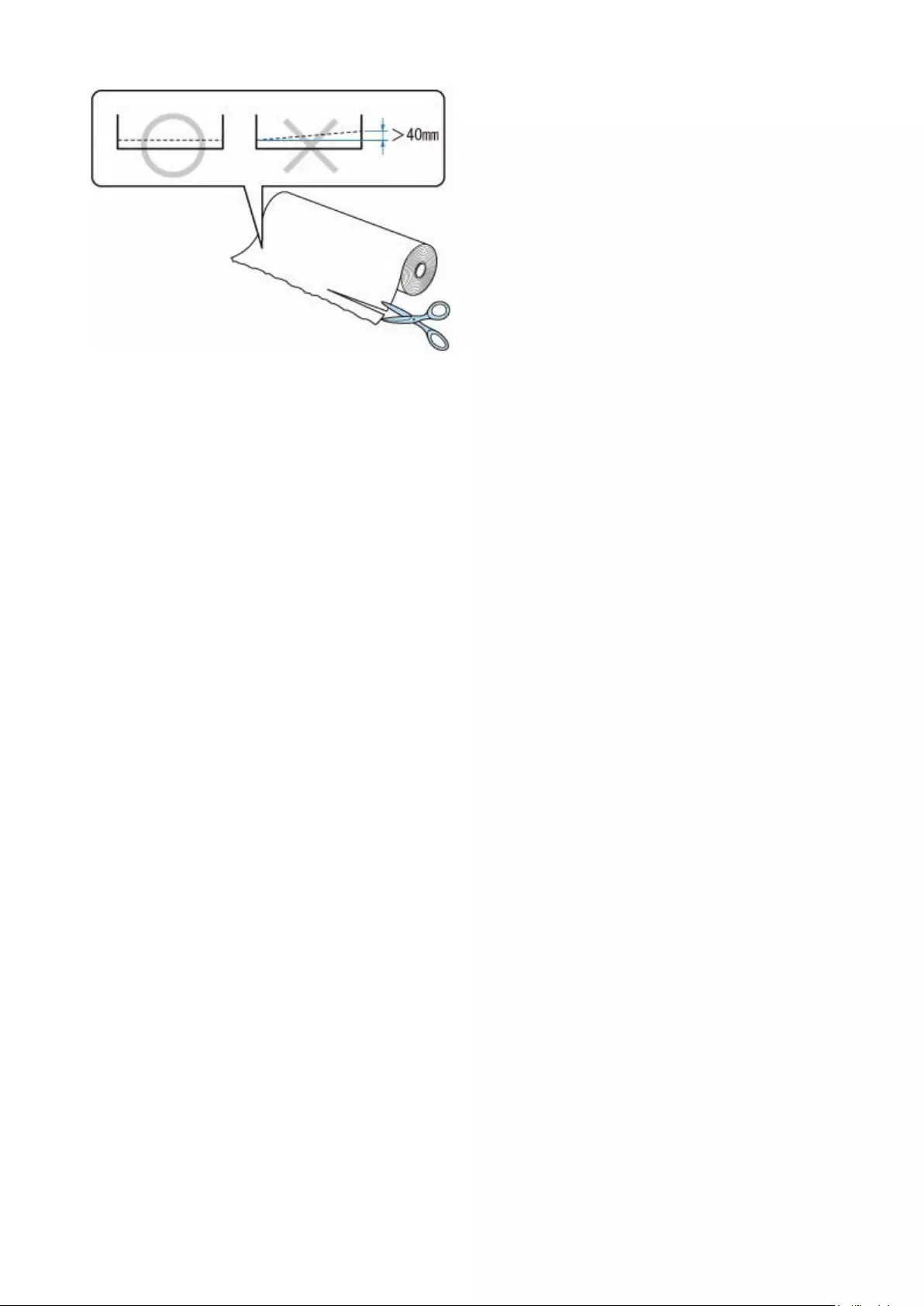
621

Roll Paper Remains/Lacks under Quantity Management
Check Check the setting of Manage remaining roll amount.
• If Barcodes is selected for Manage remaining roll amount:•
1. Enter Roll paper length and tap OK.
1.
2. Select the timing when the warning message appears for Roll amount warning settings.
2.
•If Warning message only is selected for Manage remaining roll amount:
•
Select the timing to display warning messages for Roll amount warning settings.
Paper-related settings
622
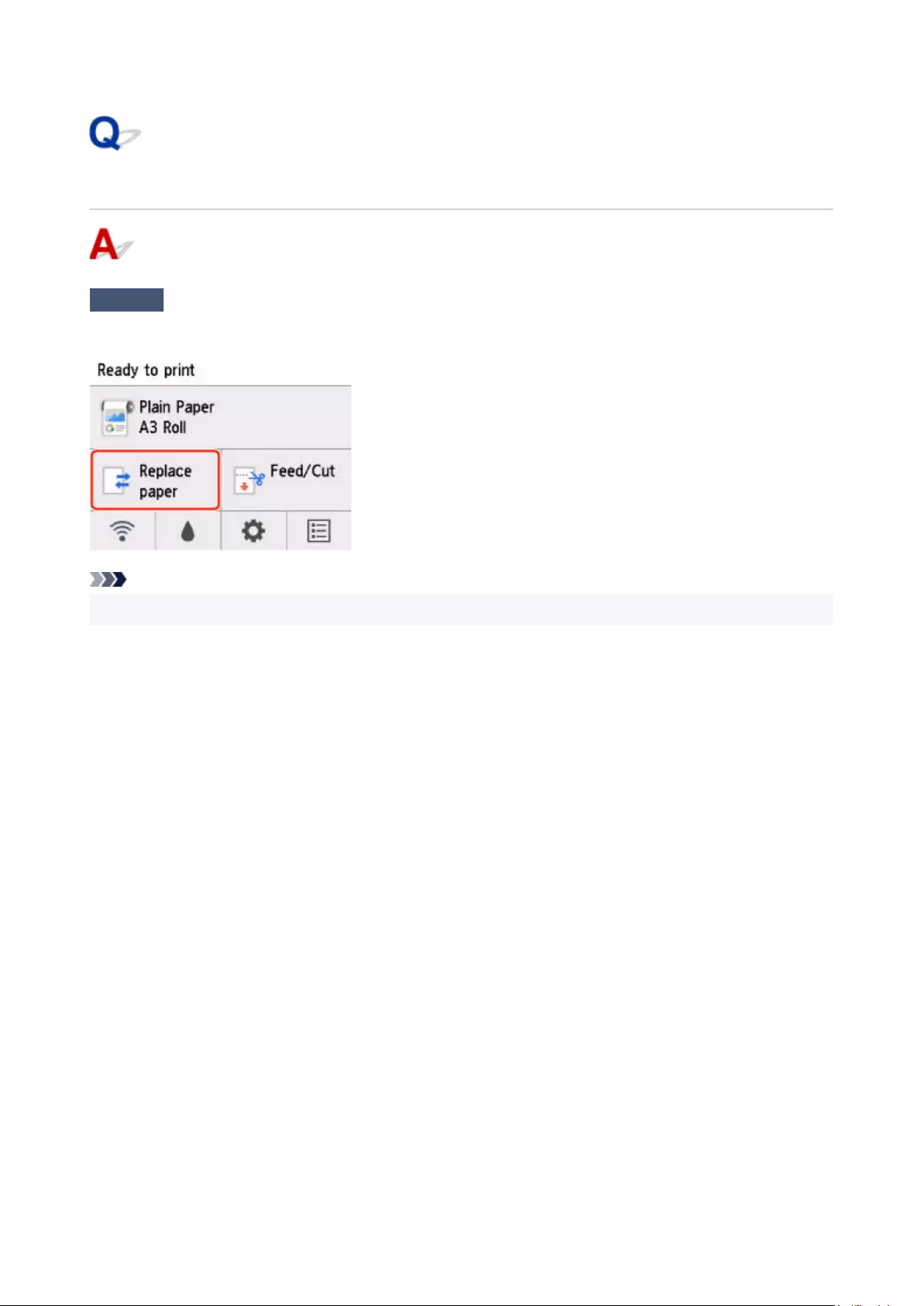
Cannot load sheets
Check Check the paper information on the HOME screen.
If "Roll" is displayed, select Load cut sheet from the Select paper screen, and then load the sheet.
Note
•You cannot load a roll paper and sheets on the printer at the same time.
623
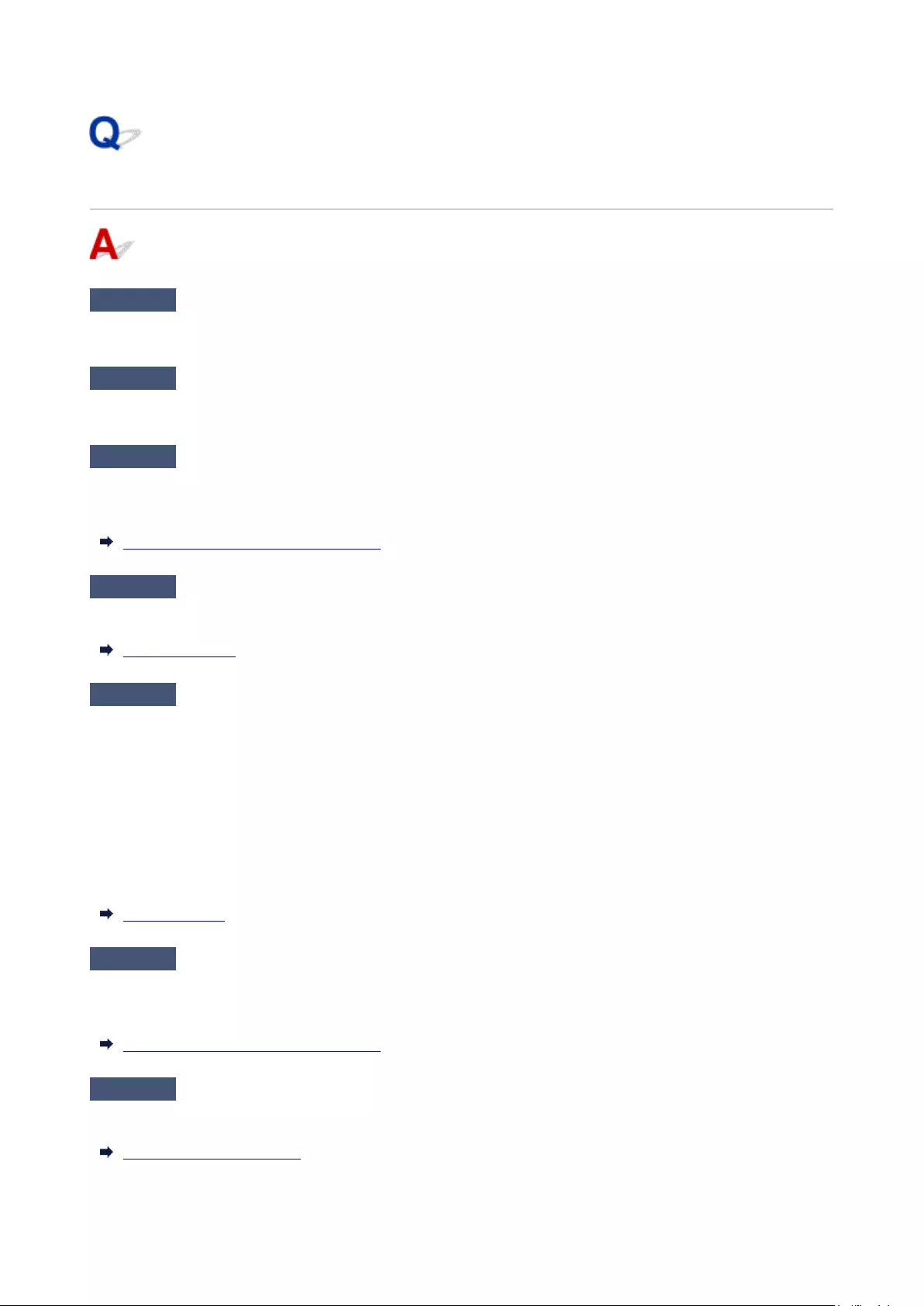
Paper is not cut straight
Check 1 Is the edge of the paper cutting position creased?
Straighten out any curling by the edges of the paper.
Check 2 Is the edge of the paper cutting position lifting up when cutting?
Reload the paper correctly.
Check 3 Is the paper a type that can be cut with the cutter blade?
Set Cutting mode in the touch screen menu to User cut, then and cut the roll paper with a cutting implement
such as scissors.
Specifying the Cutting Method for Rolls
Check 4 Are you using the basket properly?
Make sure that you are using the basket properly.
Using the Basket
Check 5 Check that the Cut speed setting is correct.
Select Paper settings > Advanced on Paper menu in the touch screen menu, and change Cut speed.
If the paper edge cannot be cut straight at the cut starting position, it may be improved by selecting slower cut
speed than that selected currently.
If the paper edge cannot be cut straight at the cut ending position, it may be improved by selecting faster cut
speed than that selected currently.
Select Paper settings > Advanced on Paper menu in the touch screen menu, and change the Cut speed
setting.
Menu Structure
Check 6 Did the printing material slip diagonally while being cut?
Set the Cutting mode in the touch screen menu to Eject cut, and then hold and cut the material after it has
printed.
Specifying the Cutting Method for Rolls
Check 7 Is the cutter blade attached properly?
Attach the cutter blade properly.
Replacing the Cutter Blade
624
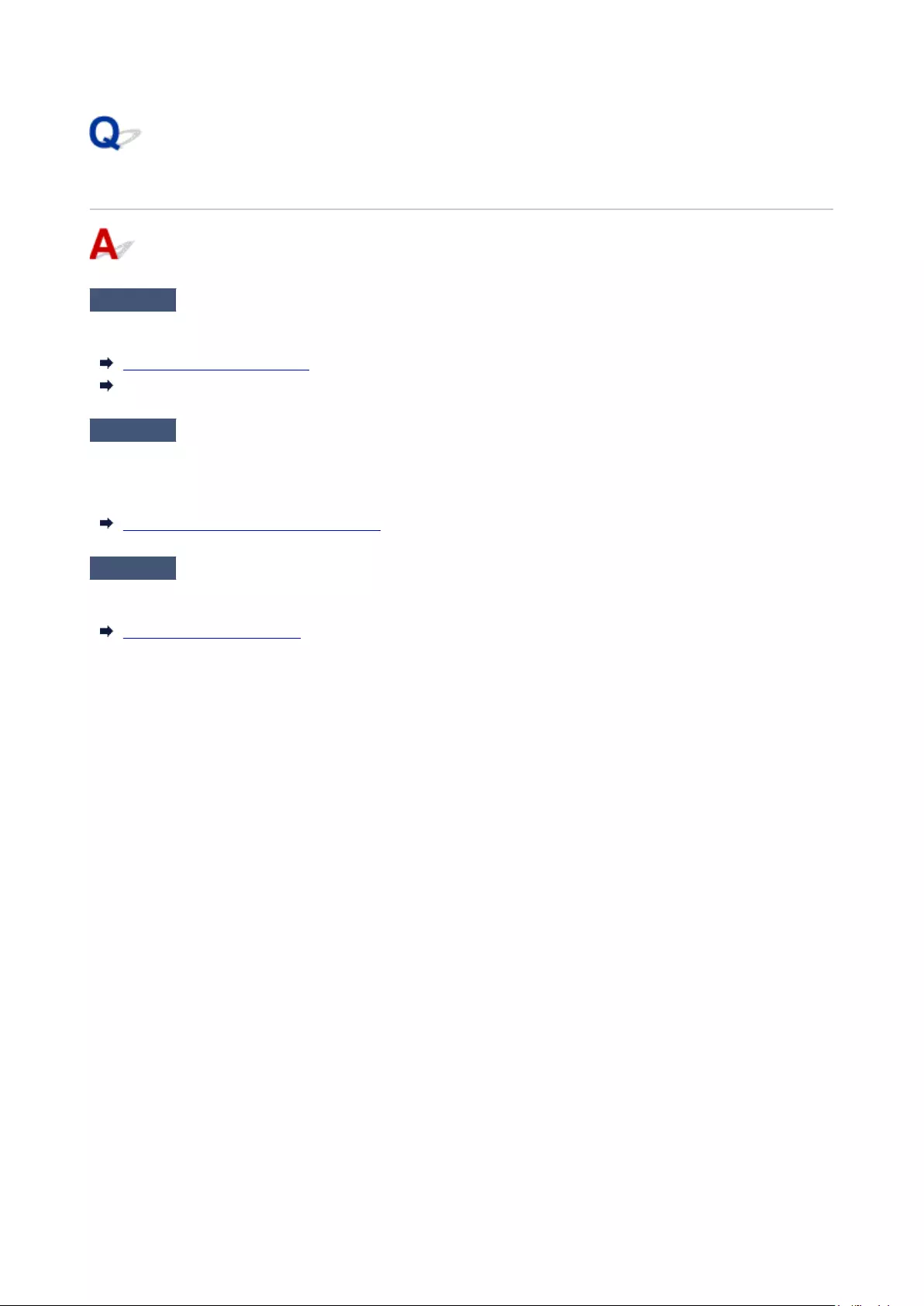
Paper is not cut
Check 1 Is Automatic Cutting in the printer driver set to No or Print Cut Guideline?
Set the printer driver Automatic Cutting setting to Yes.
Page Setup Tab Description (Windows)
Quality & Media (macOS)
Check 2 Is Cutting mode in the touch screen menu set to Eject cut or User cut?
If Cutting mode is set to Eject cut, select Feed/cut in the touch screen menu and cut the paper.
If Cutting mode is set to User cut, cut the roll paper with a cutting implement such as scissors.
Specifying the Cutting Method for Rolls
Check 3 Is the cutter blade attached?
Attach the cutter blade.
Replacing the Cutter Blade
626
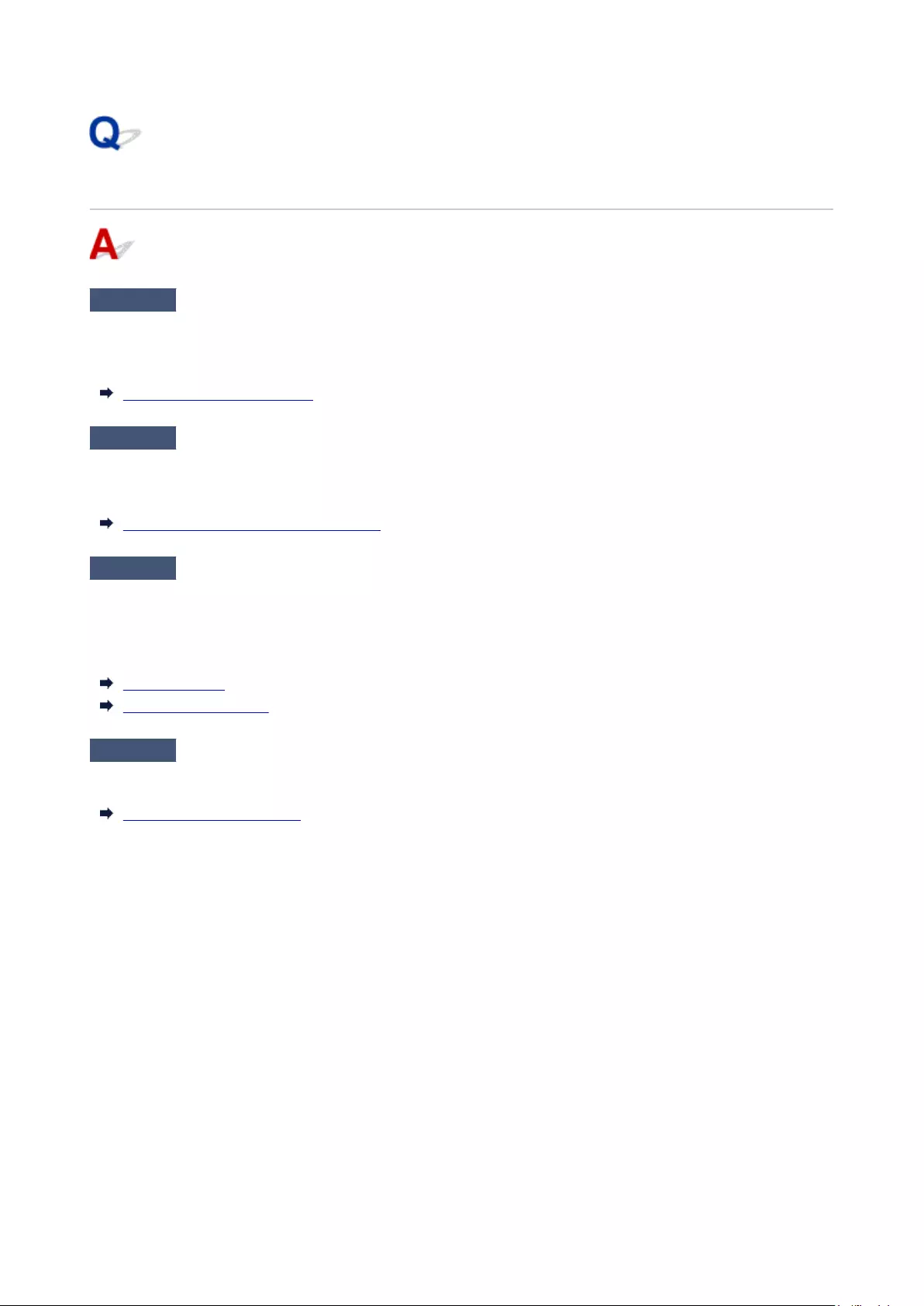
Cutter Blade Does Not Work While Cutting Is in Progress
Check 1 Does a message appear on the touch screen?
If the cutter blade failed to cut the paper, it stops moving and a message appears on the touch screen.
Remove the paper and try printing again.
Remove Jammed Roll Paper
Check 2 Make sure the cutter blade can cut paper used currently.
Select User cut for Cutting mode in the touch screen menu and cut the roll paper with a cutting implement such
as scissors.
Specifying the Cutting Method for Rolls
Check 3 Check the setting value for Cut speed.
Selecting slower value may enable the cutter blade to cut paper.
Tap paper settings display area on Home screen of touch screen, tap the feed slot where the paper to change is
set, then tap Paper settings > Advanced and, change the setting value of Cut speed.
Menu Structure
Paper-related settings
Check 4 Is the edge of the cutter blade blunt?
Replace the cutter blade.
Replacing the Cutter Blade
627
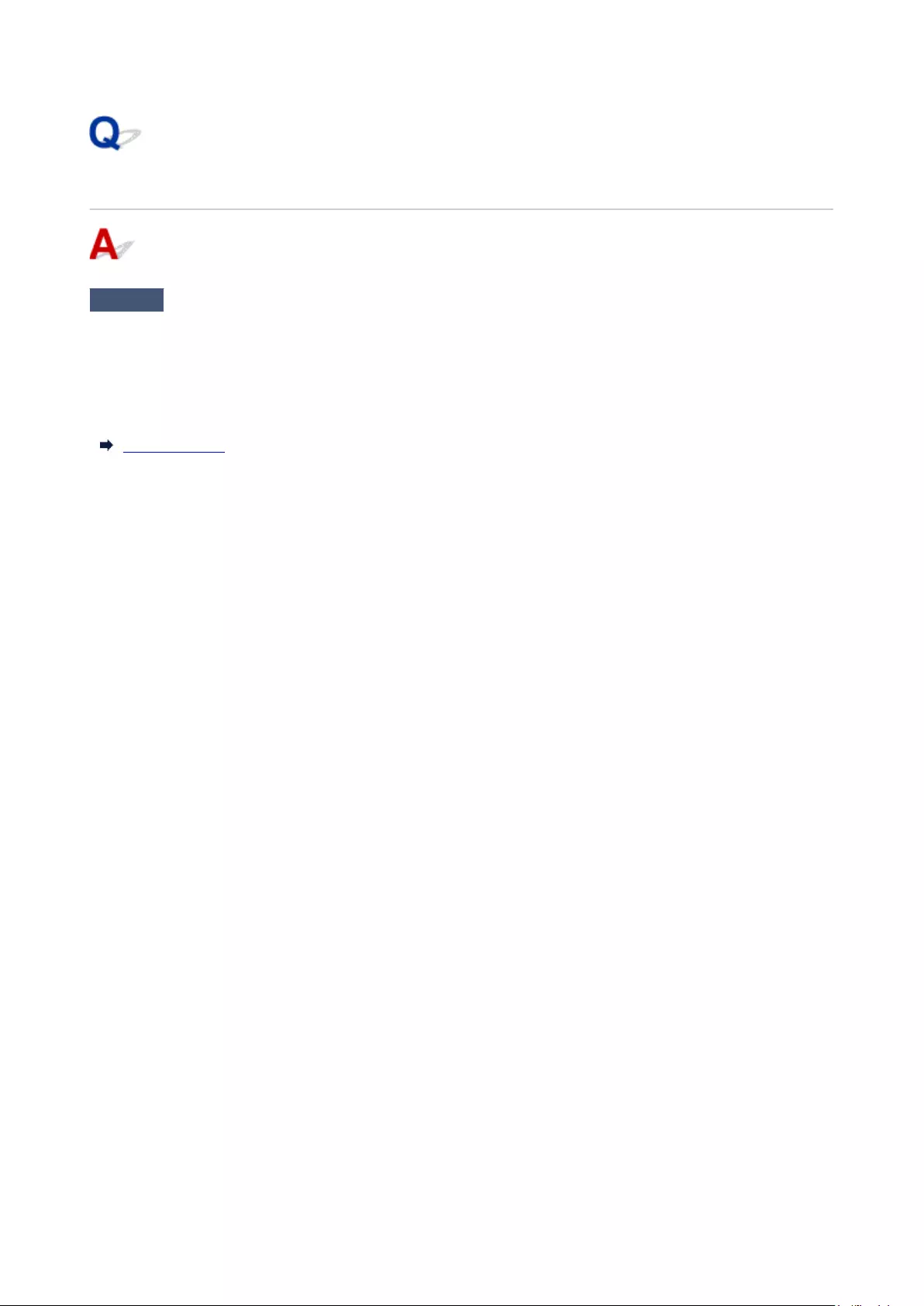
Dent in the Tip of Paper
Check Are you keeping the roll in the printer for a long time without printing on it?
Doing so may leave a dent on the tip of paper and it remains when you print on the paper the next time.
When printing quality is most important, we recommend cutting the paper tip before printing.
On the HOME screen, selecting Feed/Cut > Cut paper > Yes enables the printer to cut the paper tip at the
shortest length.
Menu Structure
628
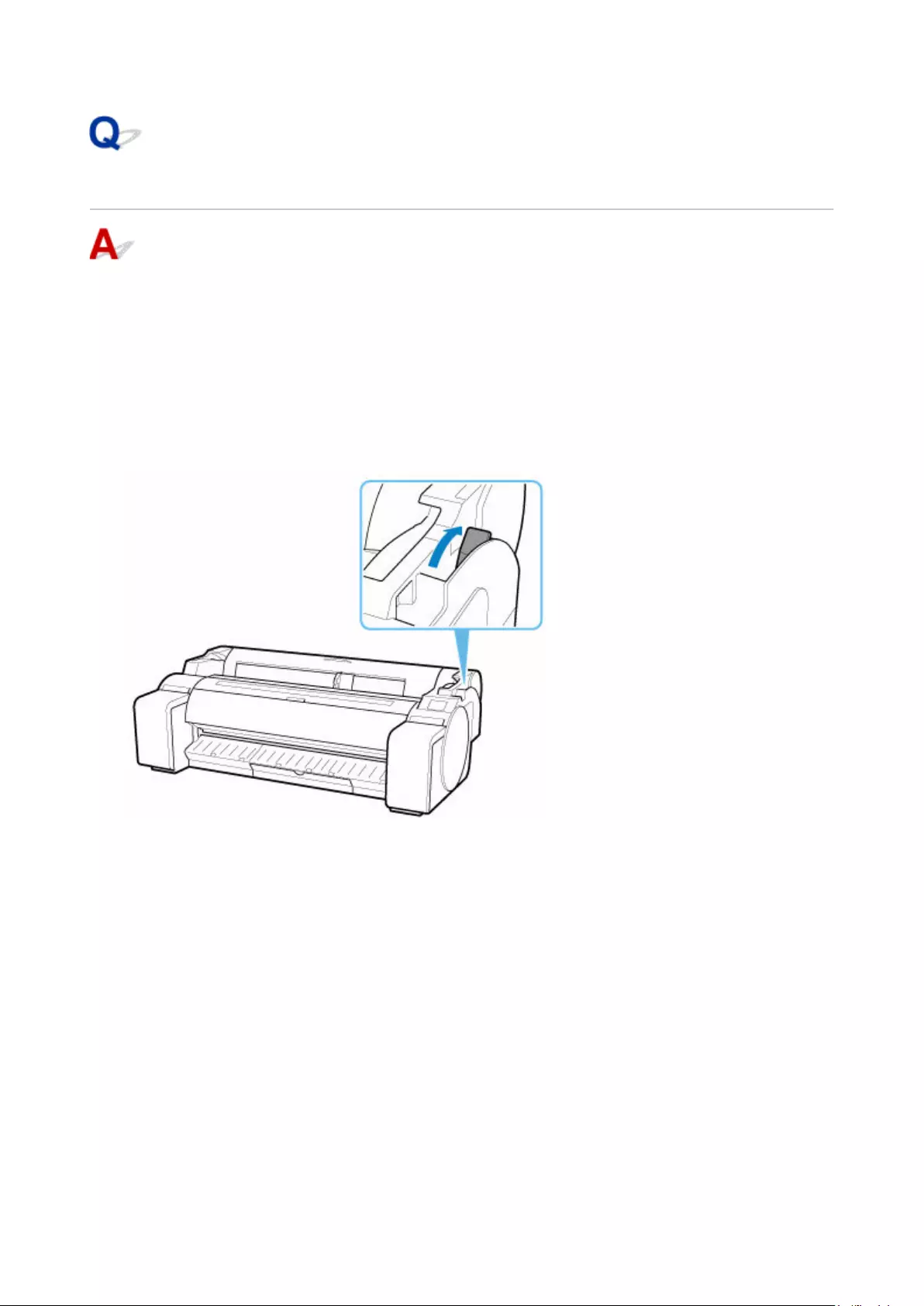
Printer Keeps Ejecting the Roll Paper
When a sheet is selected on the HOME screen, loading a roll paper with its surface left loose may make the
printer recognize the loaded roll paper as a sheet.
In this case, selecting Remove paper on Paper menu may allow the printer to keep ejecting the paper.
Check the paper feed settings on the printer.
After roll ejection stops, follow these steps to reload the roll.
1. Push release lever back.
1.
2. Positioning your hands as shown, open roll paper cover.2.
630
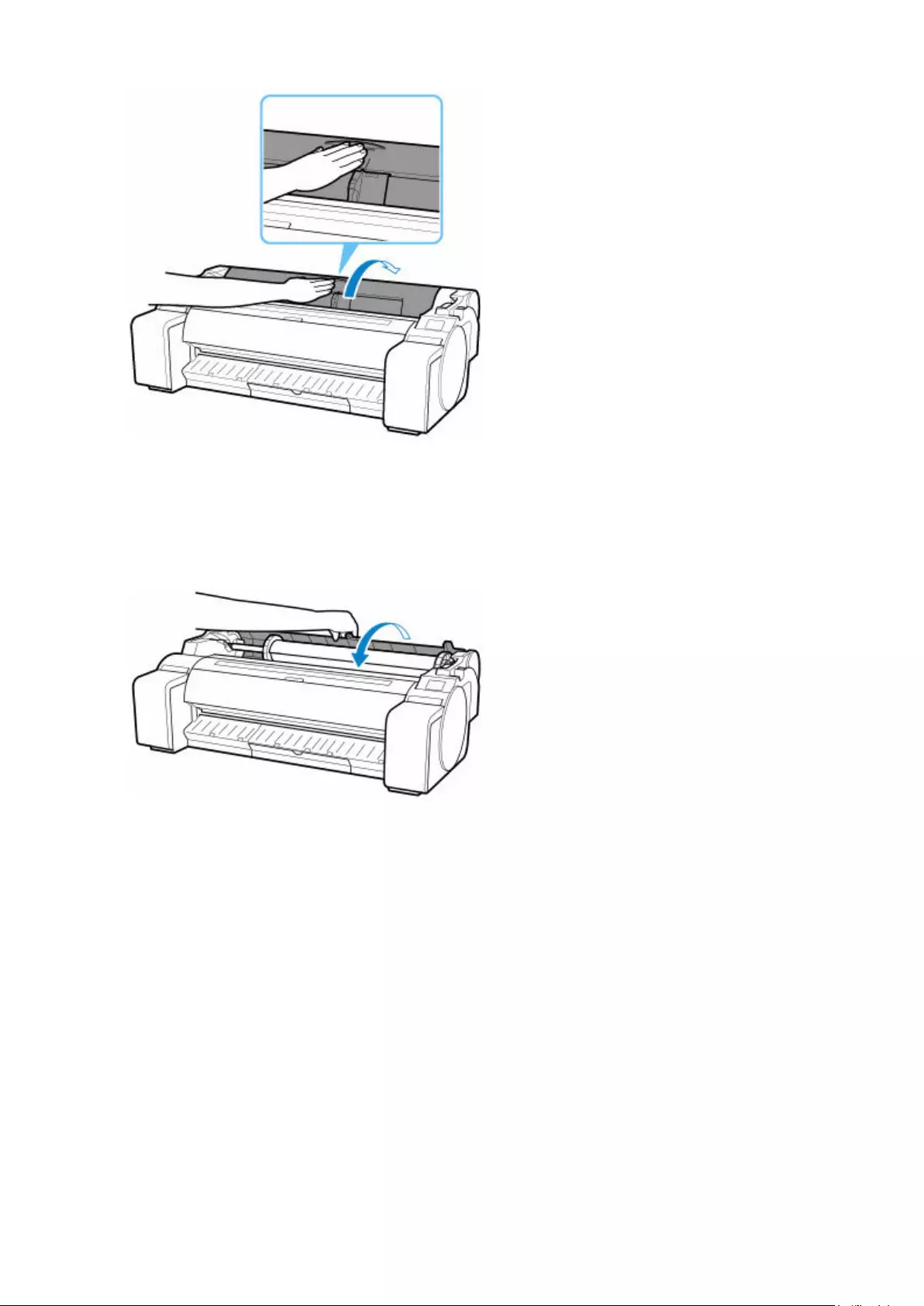
3. Using both hands, rotate the roll holder toward the back to rewind the roll.
3.
At this time, ensure that both ends of the roll are rewound evenly.
4. Holding it at the positions indicated, close roll paper cover.4.
5. Pull release lever forward.
5.
631
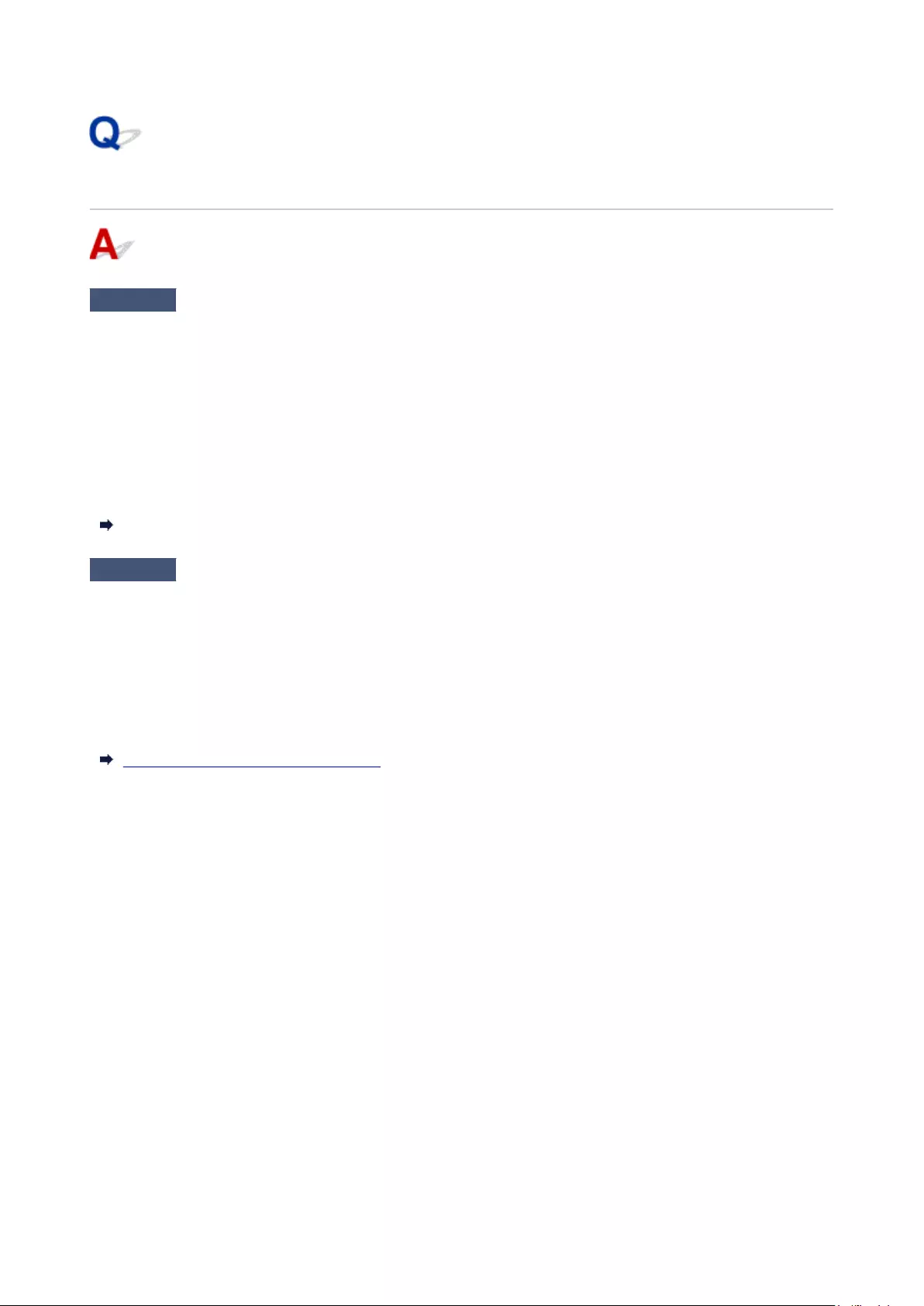
Margins are wide
Check 1 Is auto cut being used on printed material with a wide margin on the trailing
edge only?
Rolls are advanced a specific amount before cutting to prevent problems with cutting and paper ejection.
This operation is normal.
The specified length varies depending on the media type and the usage environment (humidity). Please refer to
the minimum printing length of the paper from paper information list.
If the length of the printed document is shorter than the minimum cut length, an extra edge margin will be added
to increase the length of the printed document to the minimum cut length.
Paper Information List (Rolls)
Check 2 Is leading edge detection set to Do not detect?
Do not detect may have been set by responding to the message Do you want to set to detect the leading
edge of the paper? when Cutting mode was set to User cut in the touch screen menu.
If the message Do you want to set to detect the leading edge of the paper? appears when setting Cutting
mode to User cut, select Detect (recommended).
Please note that if Detect (recommended) is selected and the paper has a strong curl, the Print head may rub
against the edge of the paper when printing starts.
Specifying the Cutting Method for Rolls
633
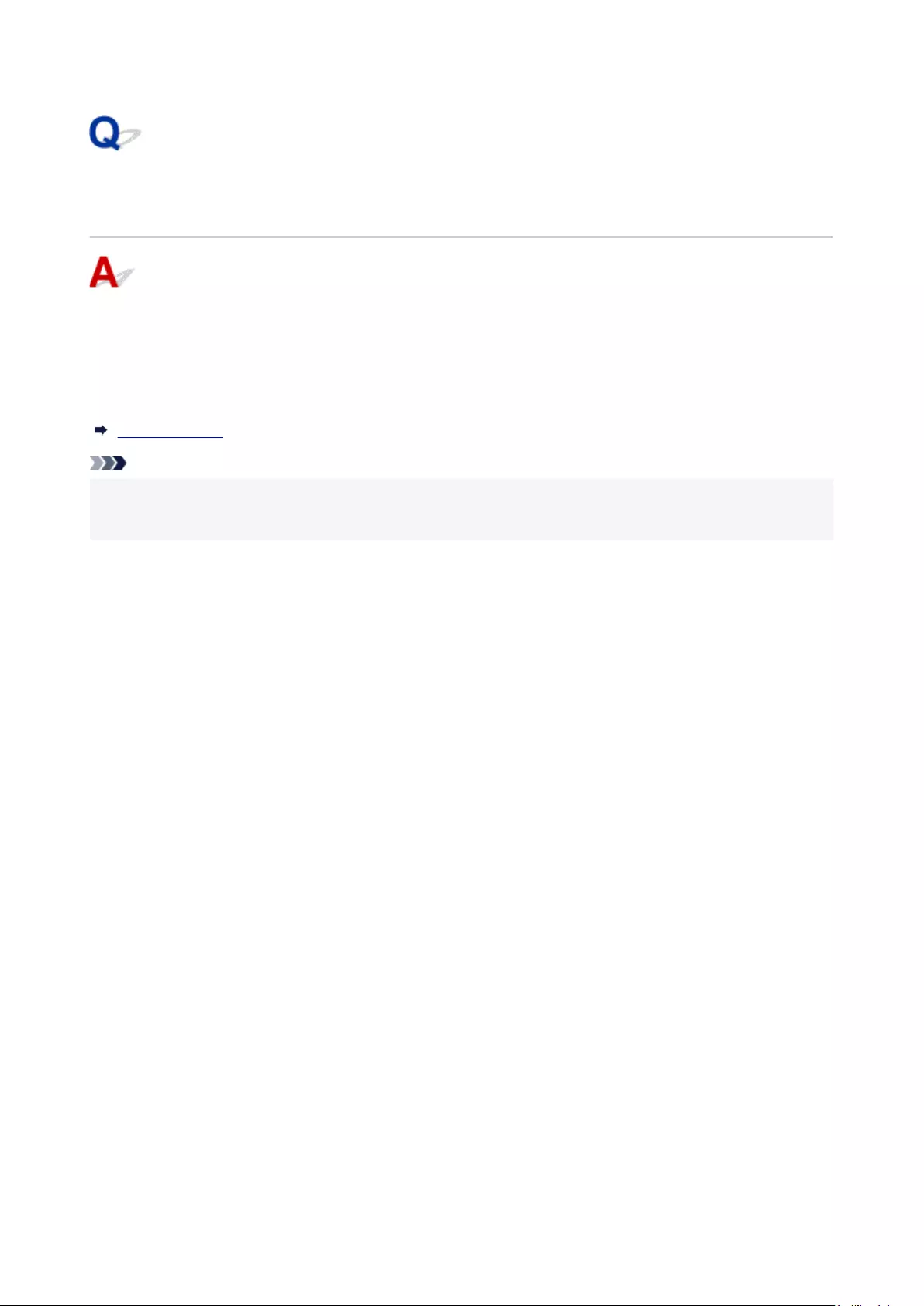
When printing on roll paper, the printed surface becomes
scratched
Make sure the roll paper has not lost tension during printing.
If the roll paper loses tension, the paper surface could be damaged and the paper could wrinkle or fold.
Select Paper settings > Advanced on Paper menu in the touch screen menu, and set Roll paper tension
(printing) to High.
Menu Structure
Note
• Carrying out Adjust print quality is recommended when changing Roll paper tension (printing)•
settings.
634
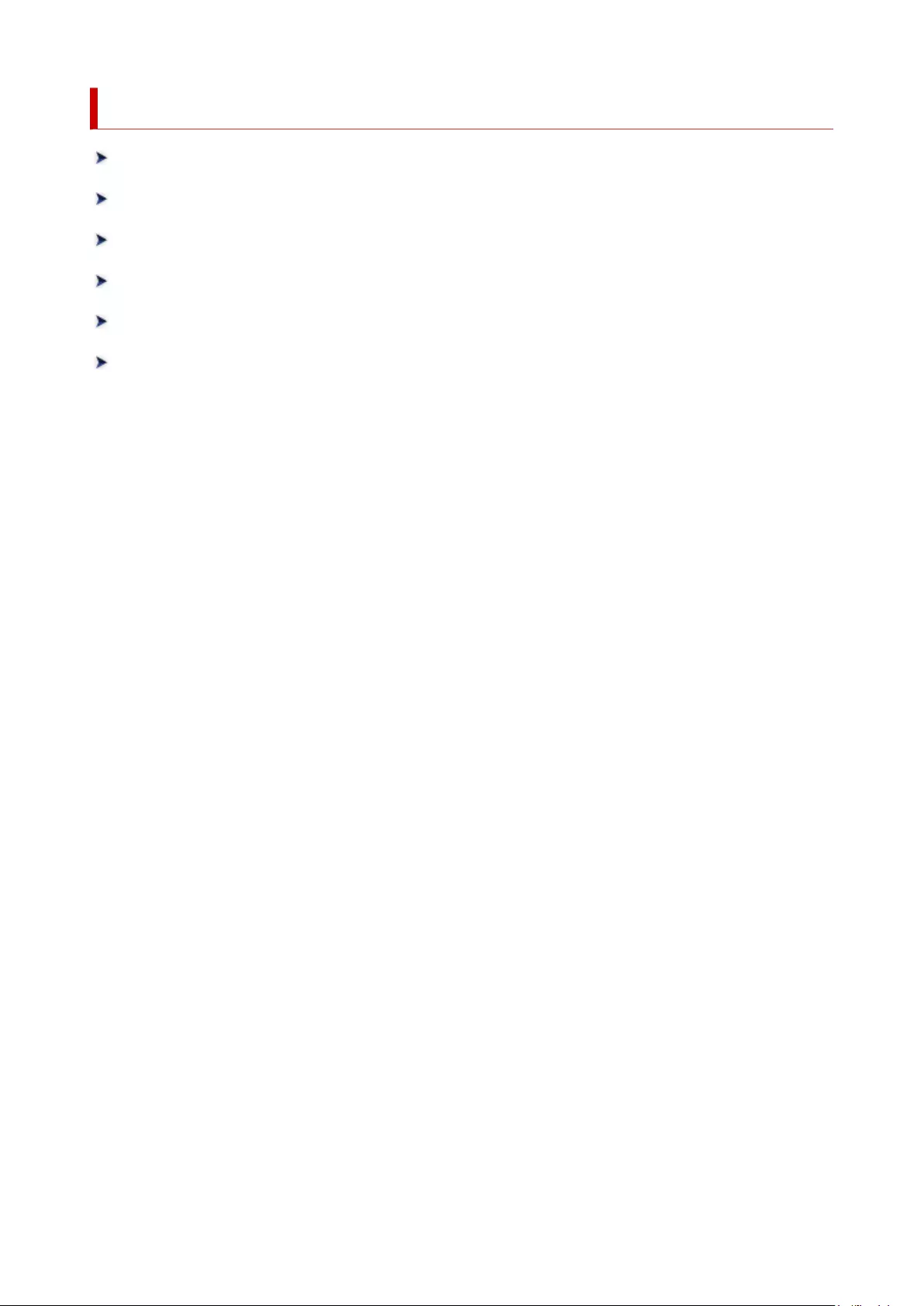
Printing Does Not Start
Printer Suddenly Stopped Working for Some Reason
The Data lamp on the Operation Panel does not light up
The printer does not respond even if print jobs are sent
"Preparing the ink system." is displayed
"Agitating the ink" is displayed
Message Is Displayed and Borderless Printing Fails
635
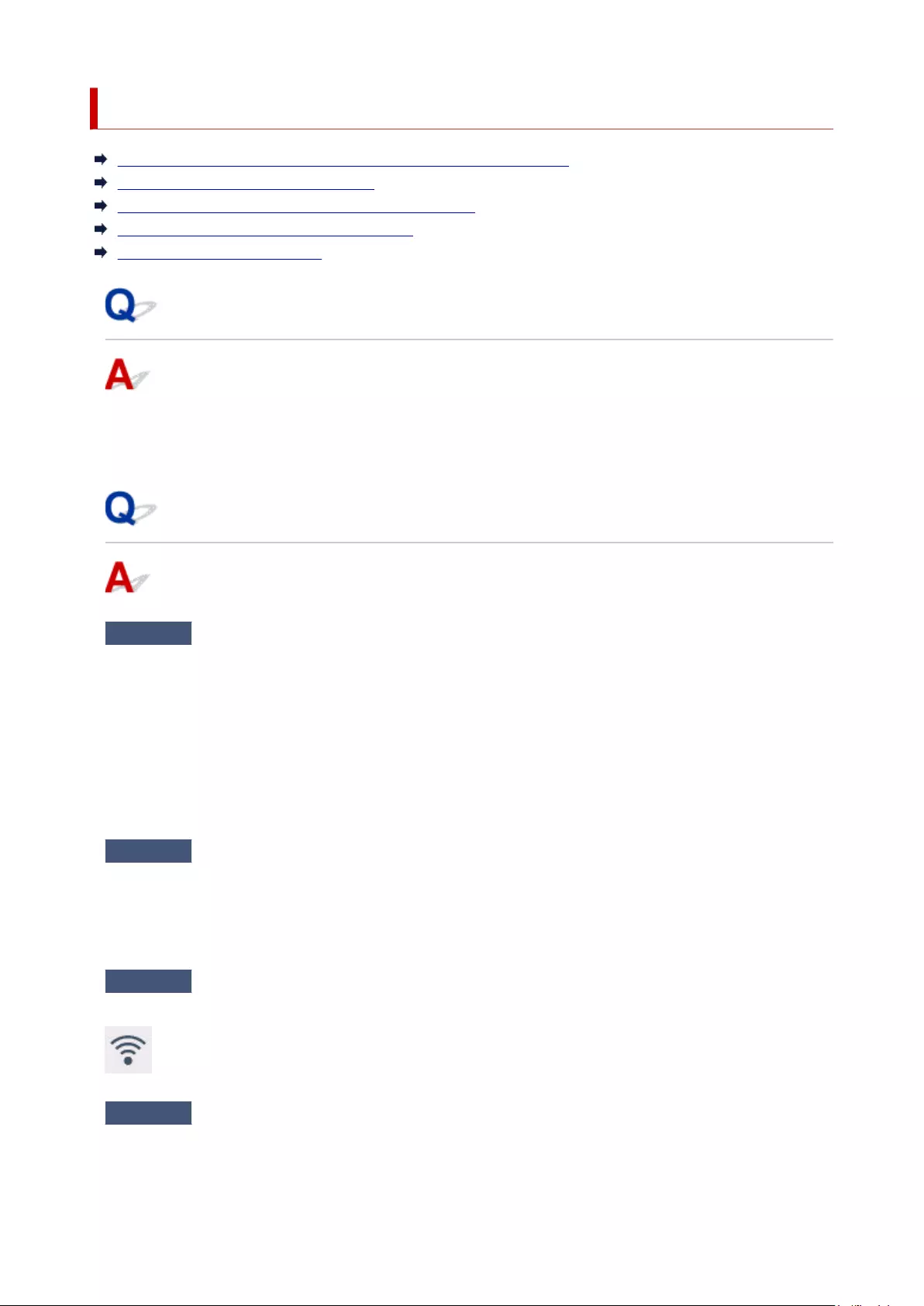
Printer Suddenly Stopped Working for Some Reason
Cannot Connect to a Printer after Network Configuration Changes
Cannot Connect to a Printer via Wi-Fi
Cannot Connect to a Printer through Wireless Direct
Cannot Connect to a Printer via Wired LAN
Cannot Print through Network
Cannot Connect to a Printer after Network Configuration Changes
It may take a while for the computer to obtain an IP address, or you may need to restart your computer.
Make sure the computer has obtained a valid IP address, and try again to find the printer.
Cannot Connect to a Printer via Wi-Fi
Check 1 Check the power status of printer and devices (e.g. wireless router or
computer) connected to the network.
Turn on the printer or devices.
If the power is already turned on, turn it off and on again.
It may be necessary to resolve wireless router problems (e.g. update interval of a key, problems of DHCP
update interval, energy saving mode, etc.) or to update the wireless router firmware.
For details, contact the manufacturer of your wireless router.
Check 2 Can you view any web pages on your computer?
Make sure your computer is connected to the wireless router properly.
For more on checking computer settings or connection status, see the instruction manual supplied with the
computer or contact the manufacturer.
Check 3 Is the printer connected to the wireless router?
Use the icon on the touch screen to check the connection status between the printer and wireless router. If the
icon is not displayed, Wi-Fi is disabled. Turn on wireless communication on the printer.
Check 4 Make sure the printer and wireless router network settings match.
Make sure the network settings of the printer (e.g. wireless router name, SSID, network key, etc.) are identical
with those of the wireless router.
636

To check the settings of the wireless router, refer to the instruction manual provided with it or contact its
manufacturer.
To check the current network settings of the printer, print out the network setting information.
Printing Network Settings
Note
•IJ Network Device Setup Utility allows you to diagnose and repair the network status.
•
Select the link below to download IJ Network Device Setup Utility and install it.
Checking Printer Connection Status Using IJ Network Device Setup Utility
Check 5 Make sure the printer is not placed too far away from the wireless router.
If the distance between the printer and wireless router is too far, wireless communication becomes poor. Place
the printer and wireless router close to each other.
Note
•Though an antenna is attached to most wireless routers, note that some of them have it inside.
Check 6 Make sure wireless signal is strong. Monitor signal status and move printer
and wireless router as necessary.
Place the printer and wireless router where there are no obstacles between them. Wireless communication
between different rooms or floors is generally poor. Wireless communication can be impeded by building
materials containing metal or concrete. If the printer cannot communicate with the computer over a Wi-Fi due
to a wall, place the printer and the computer in the same room.
In addition, if a device like a microwave oven that emits radio waves of the same frequency bandwidth as a
wireless router is nearby, it may cause interference. Place the wireless router as far away from interference
sources as possible.
Note
•IJ Network Device Setup Utility allows you to diagnose and repair the network status.
•
Select the link below to download IJ Network Device Setup Utility and install it.
Checking Printer Connection Status Using IJ Network Device Setup Utility
Check 7 Make sure of the Wi-Fi channel numbers used for your computer.
You need to have the same Wi-Fi channel number that you are using for the wireless router as your computer.
It is normally set in the way that you can use all the Wi-Fi channels. However, when the channels that you are
using are restricted, the Wi-Fi channels do not match.
See the instruction manual provided with your computer and check the Wi-Fi channel number available for
your computer.
Check 8 Make sure channel set on wireless router is a usable channel as confirmed in
Check 7.
If it is not, change the channel set on the wireless router.
637
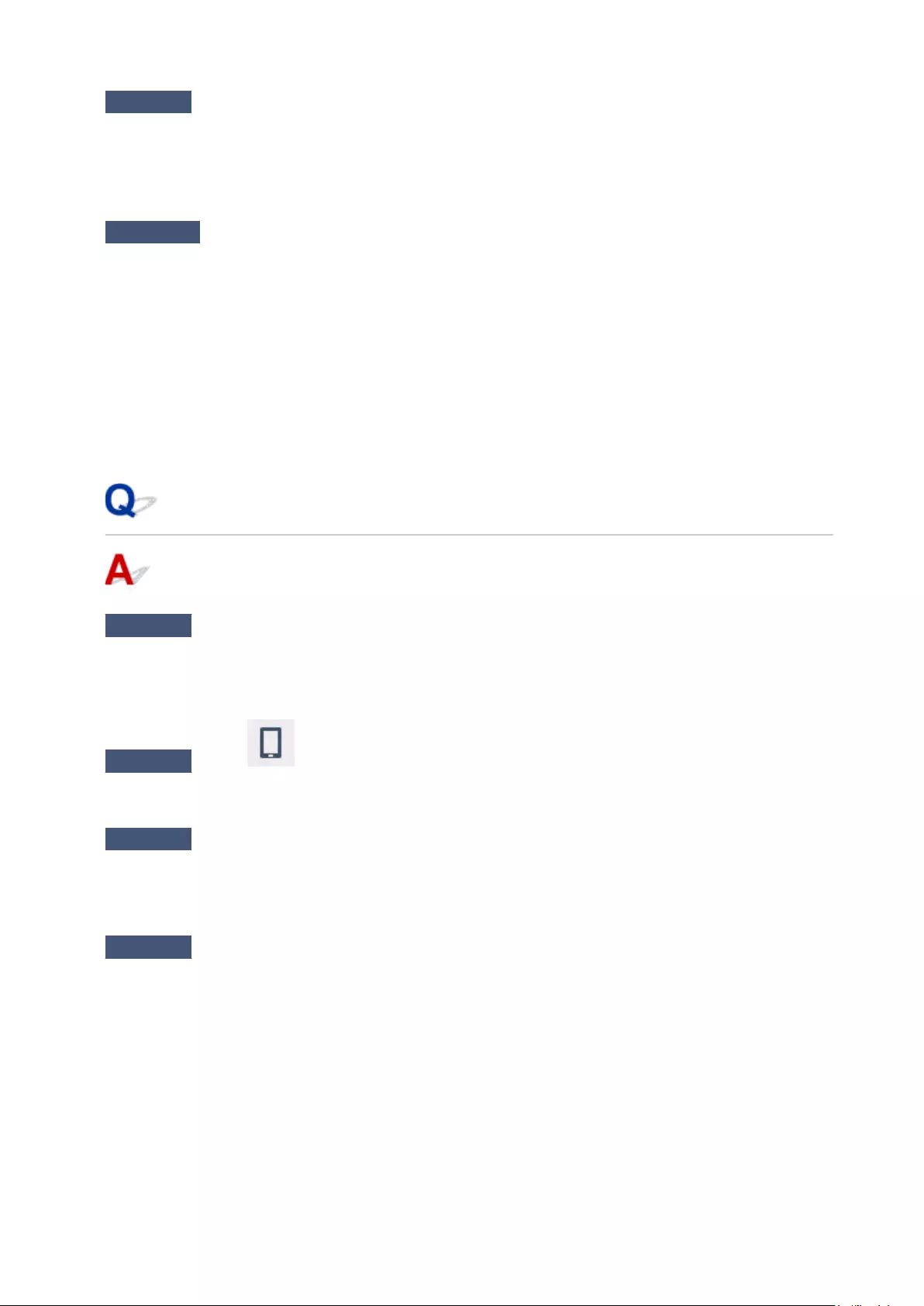
Check 9 Make sure security software's firewall is off.
If your security software's firewall is on, a message may appear warning you that Canon software is attempting
to access the network. If this warning message appears, set security software to always allow access.
If you are using any programs that switch between network environments, check their settings.
Check 10 If printer is connected to an AirPort Base Station via LAN, make sure you
use alphanumeric characters for network identifier (SSID). (macOS)
If the problem is not resolved, redo setup.
• For Windows:•
Perform setup using the Setup CD-ROM or from Setup Guide.
• For macOS:•
Perform setup from Setup Guide.
Cannot Connect to a Printer through Wireless Direct
Check 1 Check the power status of printer and other devices (smartphone or tablet).
Turn on the printer or devices.
If the power is already turned on, turn it off and on again.
Check 2 Is the icon displayed on the touch screen?
If not, Wireless Direct is disabled. Turn on Wireless Direct.
Check 3 Check the settings of your device (smartphone/tablet).
Make sure Wi-Fi is enabled on your device.
For details, refer to your device's instruction manual.
Check 4 Make sure printer is selected as connection for device (e.g. smartphone or
tablet).
Select the identifier for Wireless Direct (SSID) specified for the printer as the connection destination for
devices.
Check the destination on your device.
For details, refer to your device's instruction manual or visit the manufacturer's website.
To check the identifier for wireless direct (SSID) specified for the printer, display it using the operation panel of
the printer or print out the network setting information of the printer.
• Display on the touch screen.•
638

LAN settings
• Print the network settings.•
Printing Network Settings
Check 5 Have you entered the proper password specified for the Wireless Direct?
To check the password specified for the printer, display it using the operation panel of the printer or print out
the network setting information of the printer.
•Display on the touch screen.
•
LAN settings
•Print the network settings.
•
Printing Network Settings
Check 6 Make sure the printer is not placed too far away from the device.
If the distance between the printer and device is too far, wireless communication becomes poor. Place the
printer and device close to each other.
Check 7 Make sure 5 devices are already connected.
Wireless Direct does not allow more than 5 devices to be connected.
Cannot Connect to a Printer via Wired LAN
Check 1 Make sure the printer is turned on.
Check 2 Make sure the LAN cable is connected properly.
Make sure the printer is connected to the router with the LAN cable. If the LAN cable is loose, connect the
cable properly.
If the LAN cable is connected to the WAN side of the router, connect the cable to the LAN side of the router.
If the problem is not resolved, redo setup.
• For Windows:•
Perform setup using the Setup CD-ROM or from Setup Guide.
• For macOS:•
Perform setup from Setup Guide.
639
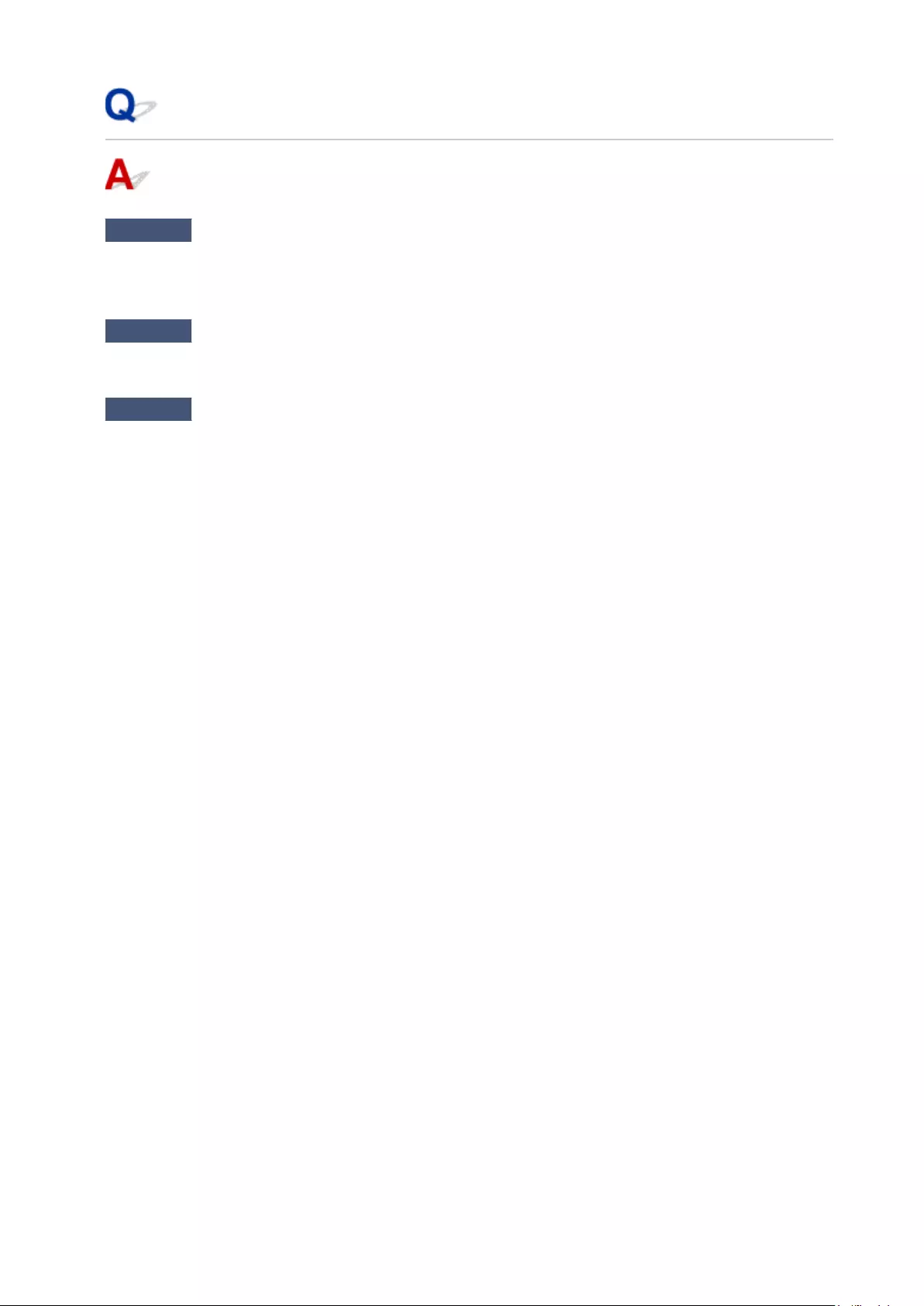
Cannot Print through Network
Check 1 Make sure the computer is connected to the wireless router.
For more on how to check the computer settings or connection status, see your computer instruction manual
or contact its manufacturer.
Check 2 If the printer driver is not installed, install it. (Windows)
Install the printer driver using the Setup CD-ROM or install it from here.
Check 3 When using Wi-Fi, make sure wireless router does not restrict which
computers can access it.
For more on connecting to and setting up your wireless router, see the wireless router instruction manual or
contact its manufacturer.
640
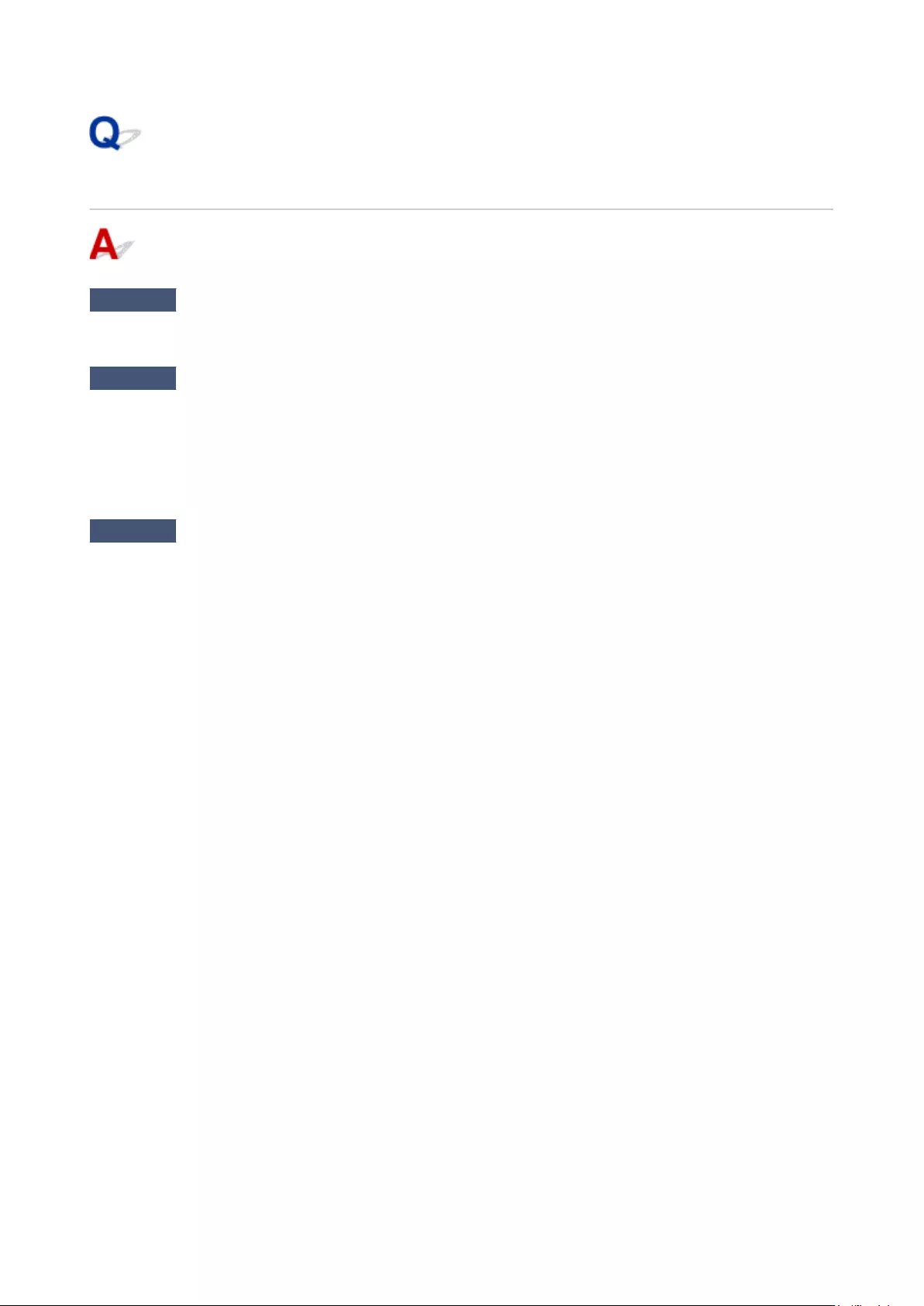
The Data lamp on the Operation Panel does not light up
Check 1 Does the printer have power?
Check that the power cord is firmly plugged all the way in. Turn on the power to the printer.
Check 2 Was the correct printer selected?
In Windows, select the printer by clicking Select Printer or Printer in the printing dialog box and try printing
again.
In macOS, open the dialog box of the printer driver, select the printer from the list of Printer, and try printing
again.
Check 3 Is the print job paused?
In Windows, restart the print job as follows.
1. Select the printer icon in the Devices and Printers window.
1.
2. Clear Pause Printing in the Printer menu to restart the print job.
2.
In macOS, restart the print job as follows.
1. Click Print & Scan (or Print & Fax).
1.
2. Select the printer, and then Resume Printer (or Start Jobs) in the Printers menu to
2.
restart the print job.
641
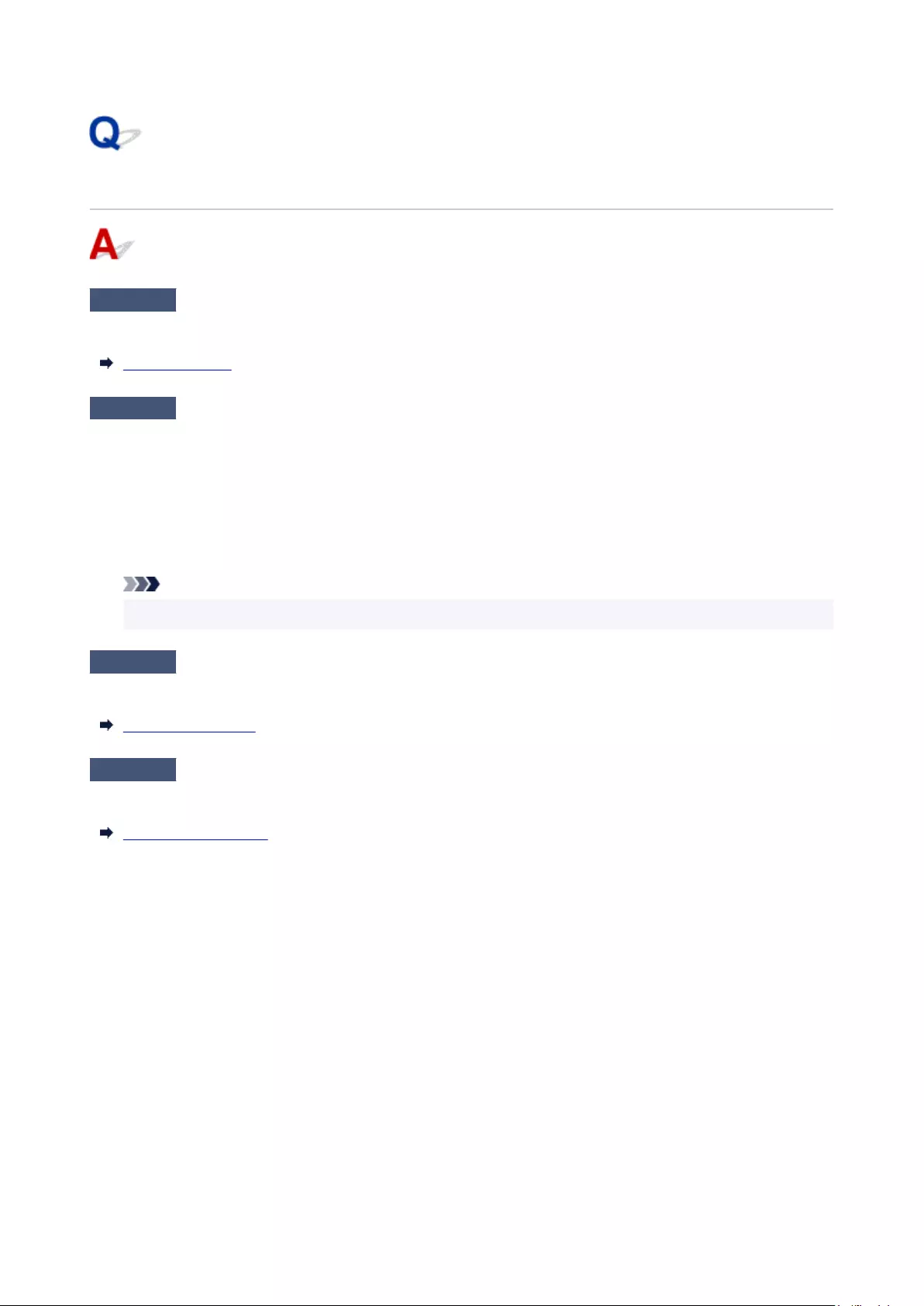
The printer does not respond even if print jobs are sent
Check 1 Is Pause printing set to Enable?
Set Pause printing on the touch screen menu to Disable.
Pausing Printing
Check 2 Is USB or LAN connection disabled?
• For USB connection:•
Set Use USB connection on the touch screen menu to Use.
•For LAN connection (wired/Wi-Fi/Wireless Direct):
•
Set Enable/disable Wired LAN, Enable/disable Wi-Fi, or Enable/disable Wireless Direct on the touch
screen menu to Enable.
Note
•You cannot enable wired LAN and Wi-Fi or Wireless Direct at the same time.
Check 3 Is Save to job box selected as the printer Output method?
Print the job saved on the printer's hard disk.
Printing Saved Jobs
Check 4 Is the print job pending?
Manage the jobs on hold and print as needed.
Printing Pending Jobs
642
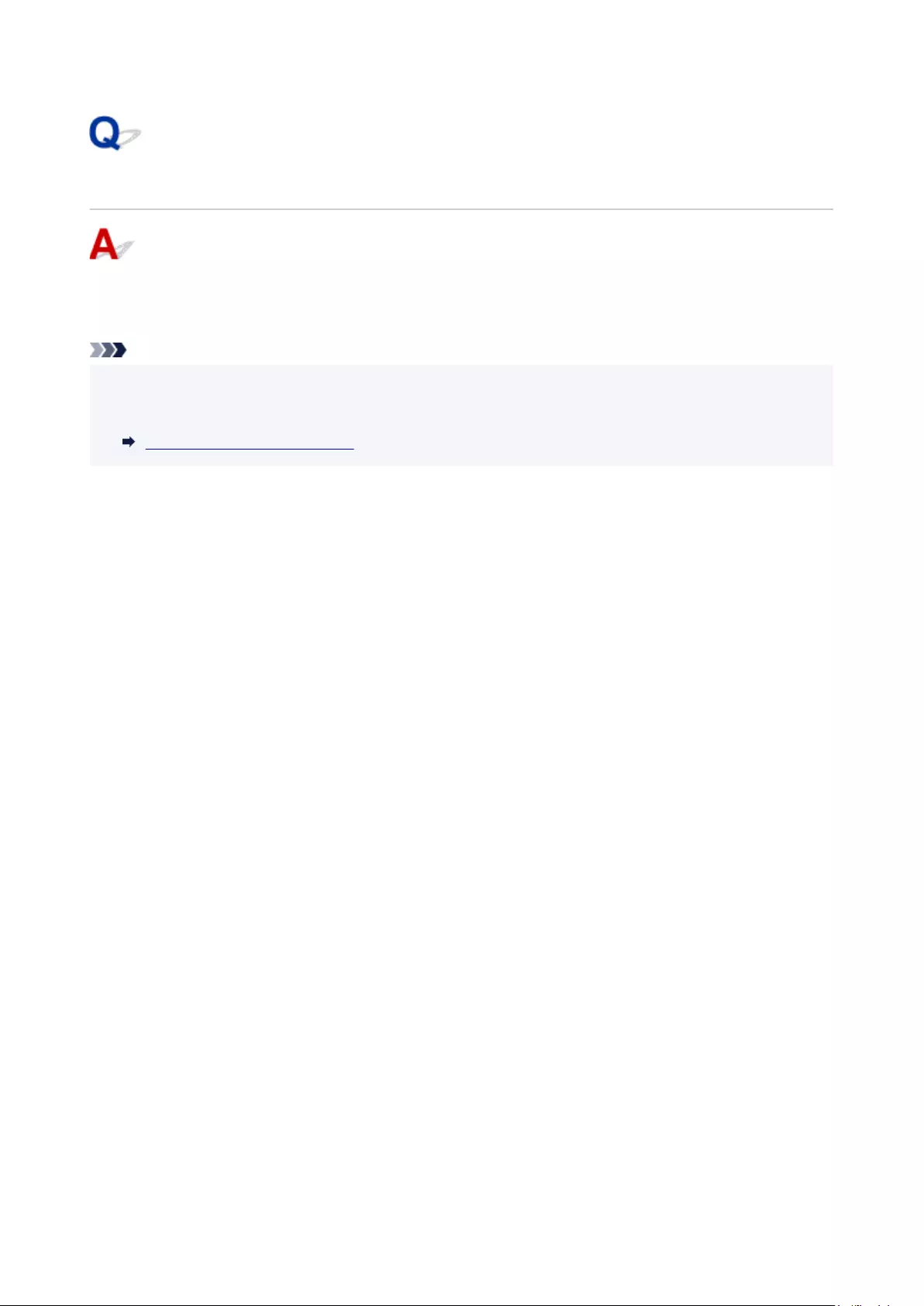
"Preparing the ink system." is displayed
The Print head and sub-ink tank are being filled with ink.
Wait until the system has been filled with ink.
Note
• This message might appear if you force the power off while the printer is operating.•
Always follow the correct procedure when turning off the power.
Turning the Printer On and Off
643
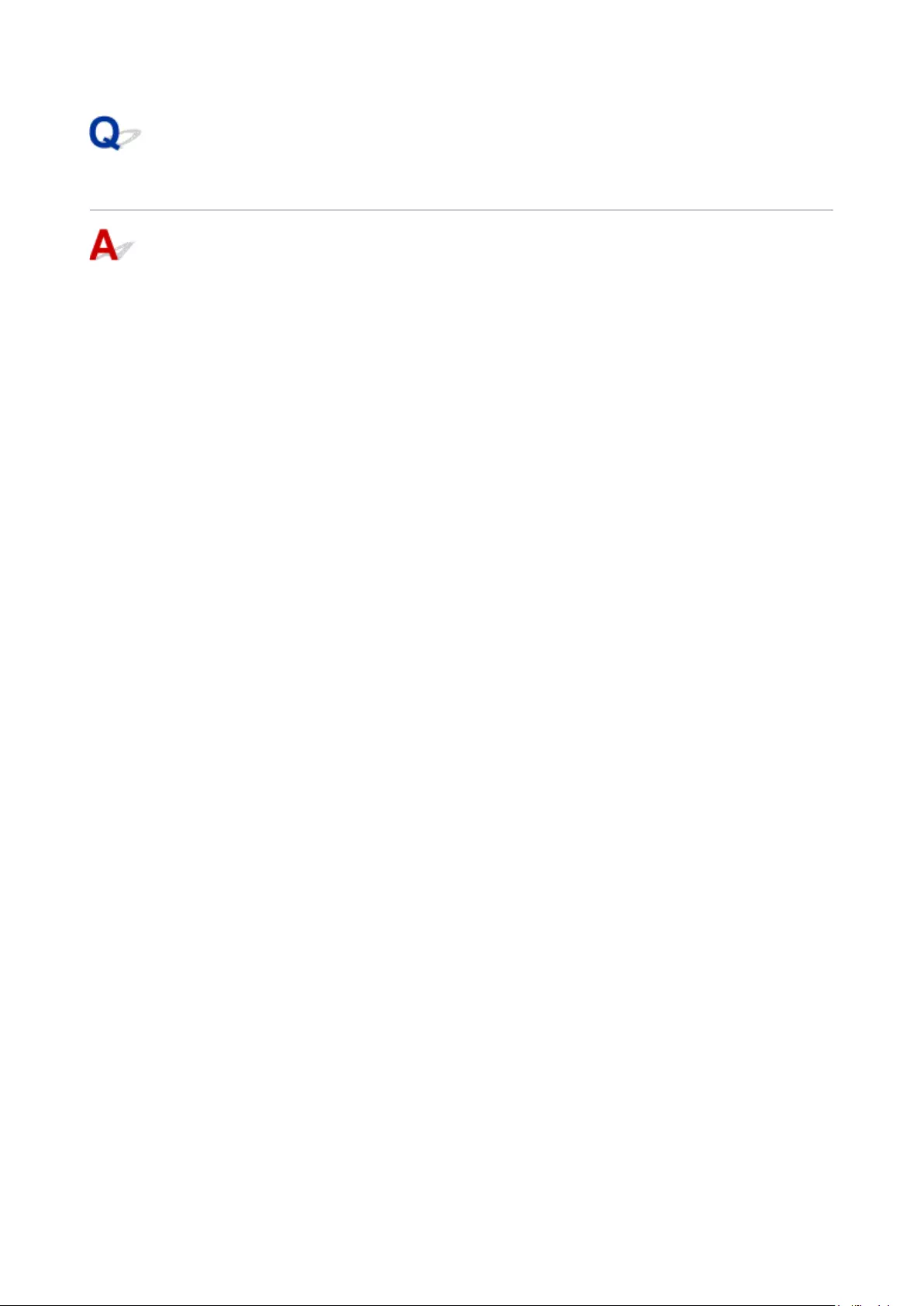
"Agitating the ink" is displayed
Ink agitation is in progress.
Please wait until ink agitation is finished.
Agitation time varies depending on time elapsed since powering off (approximately 30 seconds to 2
minutes).
644
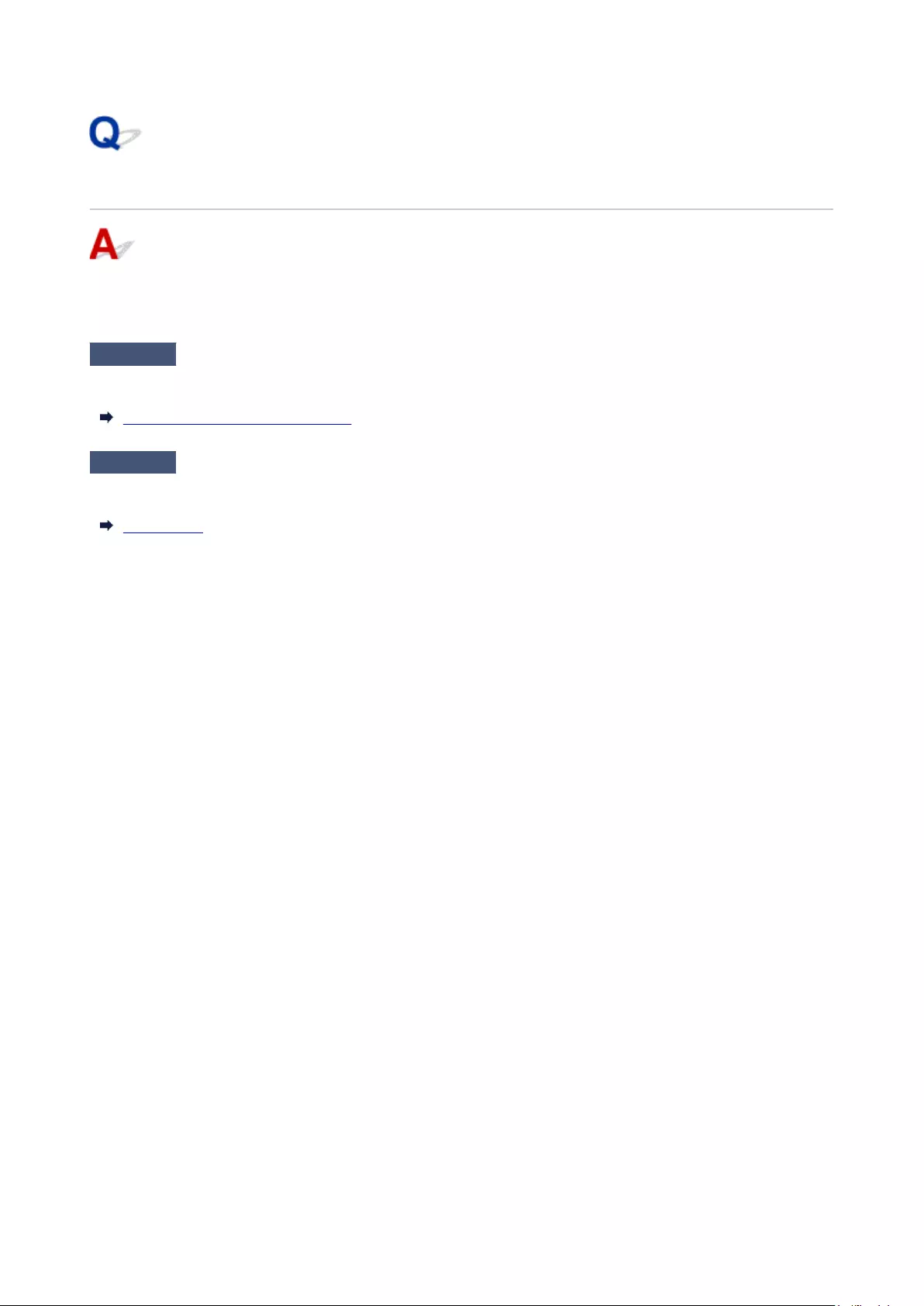
Printing stops and an error message is displayed
If the action indicated in the error message does not solve the problem, the roll paper may not be able to be
advanced and may be stuck.
Check 1 Is the loaded roll paper touching printer parts, etc.?
If the loaded roll paper is touching printer parts, load the roll paper again.
Removing the Roll from the Printer
Check 2 Is the roll paper proper to use?
Check the outer diameter and paper thickness of the roll paper that can be used with your printer.
Paper Sizes
647
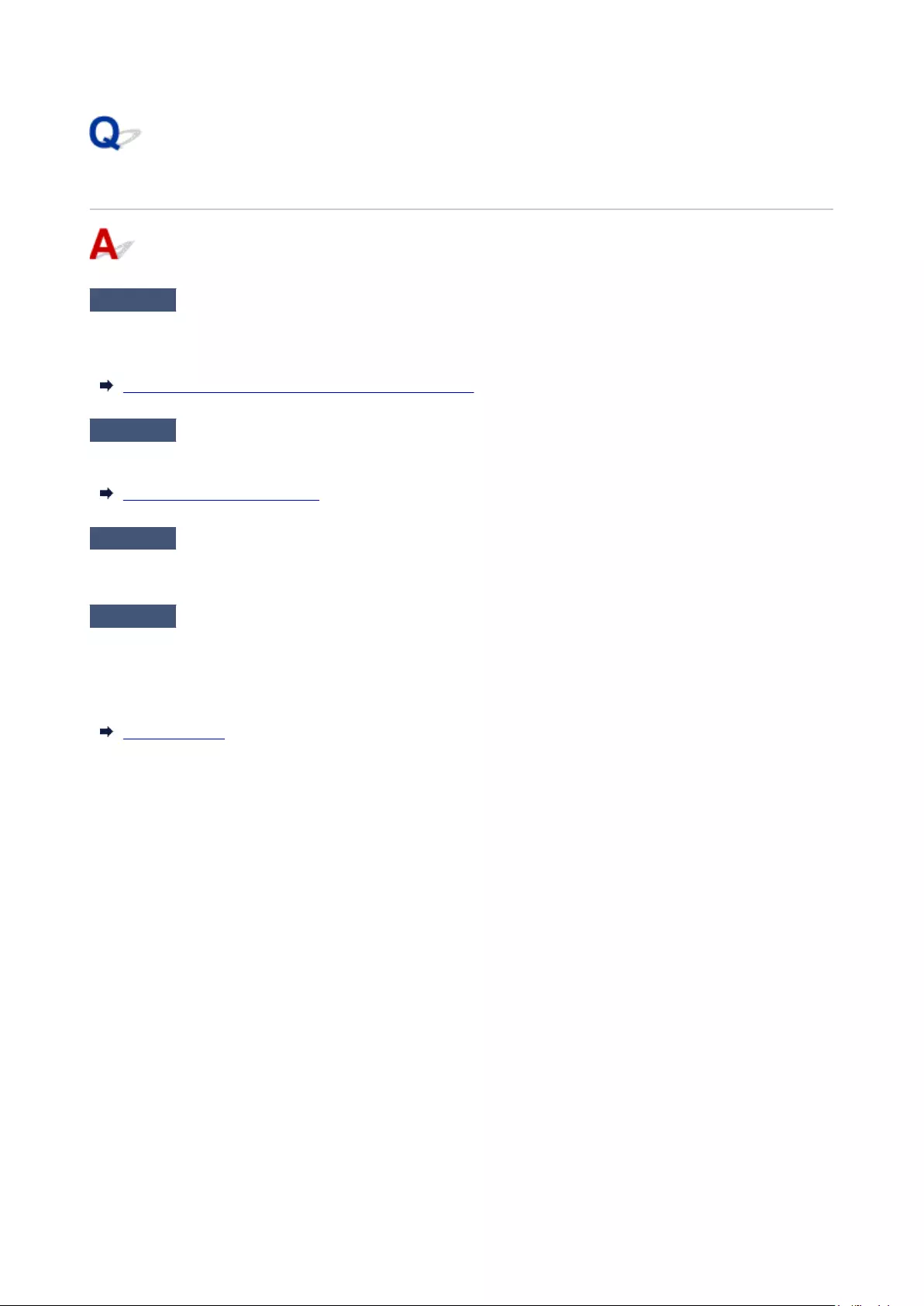
The printer ejects blank, unprinted paper
Check 1 The leading edge of the roll paper may have been trimmed.
The leading edge of the roll paper may be trimmed if Trim edge first is not set to Off or Manual in the touch
screen menu.
Cutting the Leading Edge of Roll Paper Automatically
Check 2 Is the Print head nozzle blocked?
Print a nozzle check pattern to check the Print head status.
Checking for Nozzle Clogging
Check 3 Is the correct printer driver selected?
Print again using the correct printer driver for your printer.
Check 4 When you print data including HP RTL command, check the settings below in
the touch screen menu.
•Set Auto rotation to OFF.
•If Rotate is set to 90 degrees, select 0 degrees and start printing.
Menu Structure
If none of the above apply, there may be a printer malfunction.
Contact your Canon dealer for assistance.
648

Problems with the Printing Quality
Printing is faint
Paper rubs against the Print Head
The edges of the paper are dirty
The surface of the paper is dirty
The back side of the paper is dirty
Immediately after borderless printing, the trailing edge margin is soiled during
regular printing
Printed colors are inaccurate
Banding in different colors occurs
Colors in printed images are uneven
Image edges are blurred or white banding occurs
The length of the printed image in the paper ejection direction is not accurate
Images are printed crooked
Documents are printed in monochrome
Line thickness is not uniform
Lines or colors are misaligned
Borders appear in borderless printing
649
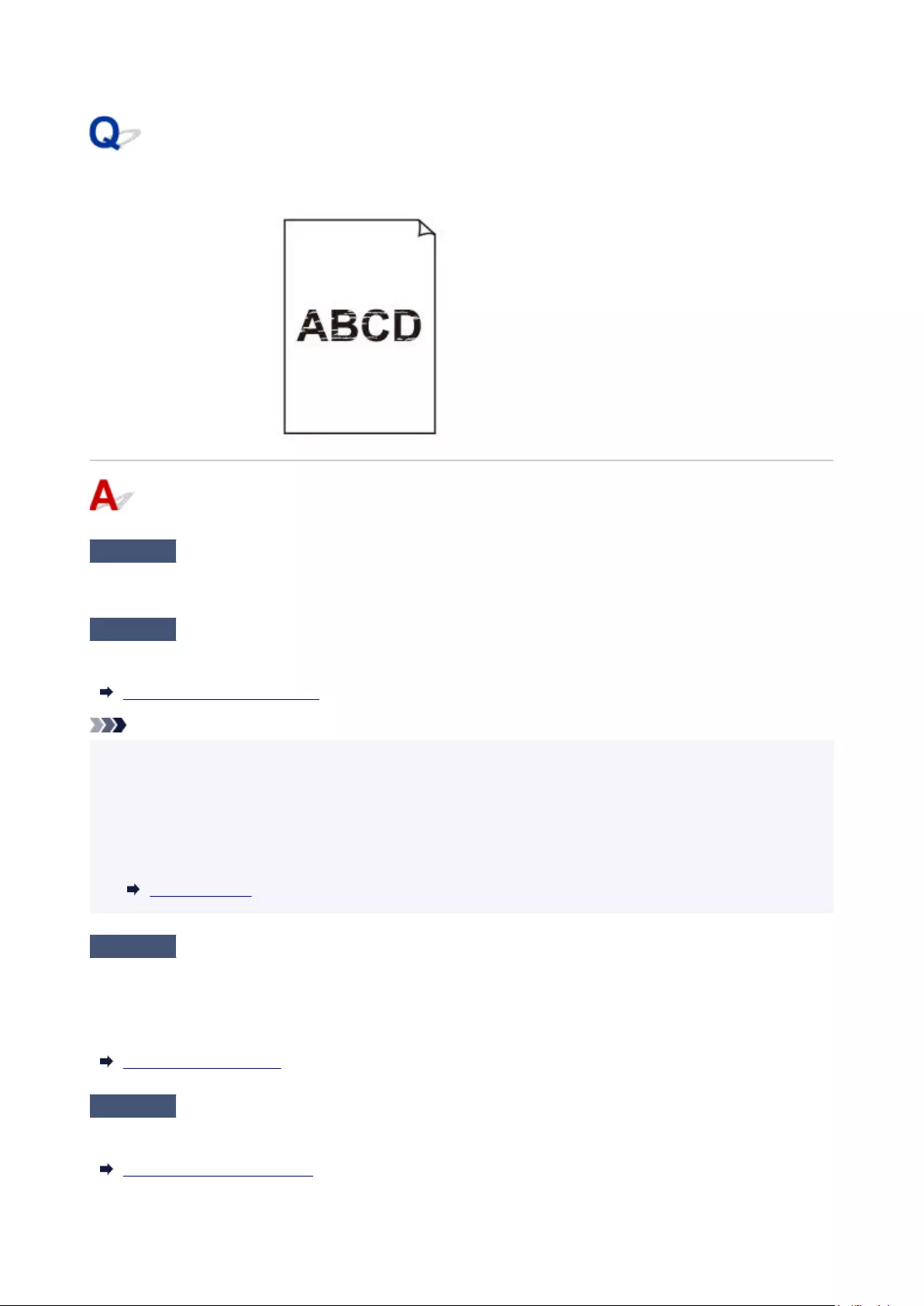
Printing is faint
Check 1 Is the reverse side of the paper being used for printing?
Print on the printing surface.
Check 2 Is the Print head nozzle blocked?
Print a test pattern to check the nozzles and see if they are clogged.
Checking for Nozzle Clogging
Note
•To automatically check for nozzle blockages after printing, set Auto nozzle check in the touch screen
•
menu to a setting other than Disable.
To show warnings based on nozzle check results, set Nozzle check error display in the touch screen
menu to Enable.
However, printing may be stopped by warnings if this setting is set to Enable.
Menu Structure
Check 3 Was the printer left with the ink tank out?
The ink supply may become blocked by ink if the ink tank is left out.
If this happens, leave the printer for at least 24 hours with the ink tank in, and then carry out Print Head
Cleaning.
Cleaning the Print Head
Check 4 Are paper scraps stuck in the top cover?
Remove paper scraps left inside the top cover.
Remove Jammed Roll Paper
650
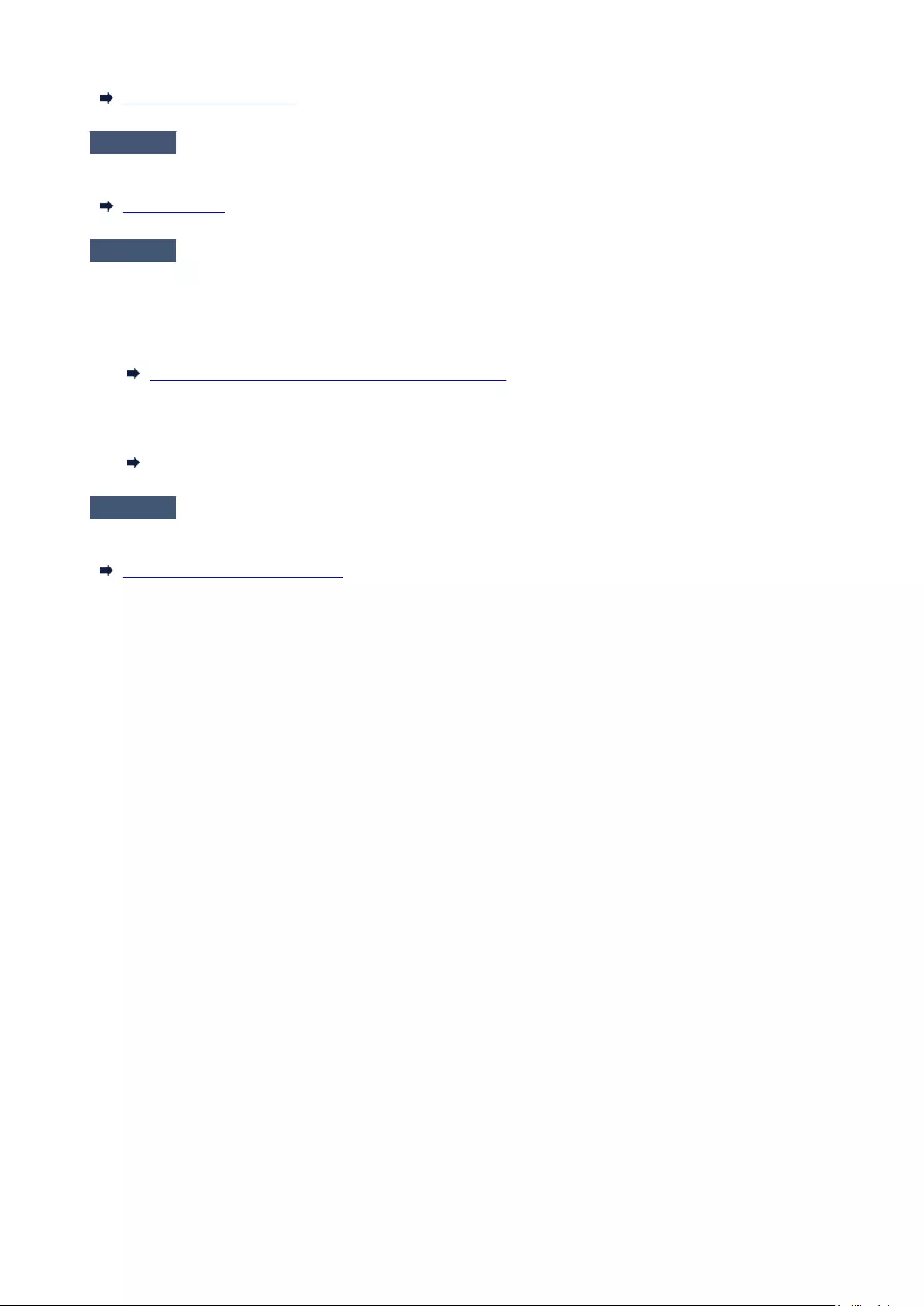
Remove a Jammed Sheet
Check 5 Was the paper cut before the ink dried?
Set a longer Ink drying wait time in Advanced paper settings in the touch screen menu.
Menu Structure
Check 6 Is the printer driver Print Quality set to a low quality setting?
Follow the steps below to set Print Quality to higher quality settings, and then print.
• Windows•
Change the Print Quality settings in the printer driver Advanced Settings.
Changing the Print Quality and Correcting Image Data (Windows)
•macOS
•
Change the Print Quality in the printer driver Quality & Media settings.
Changing the Print Quality and Correcting Image Data (macOS)
Check 7 Does the paper used for printing create a lot of cutting dust?
In the touch screen menu, set Cut-dust reduction in Advanced paper settings to ON.
Reducing Dust from Cutting Rolls
651
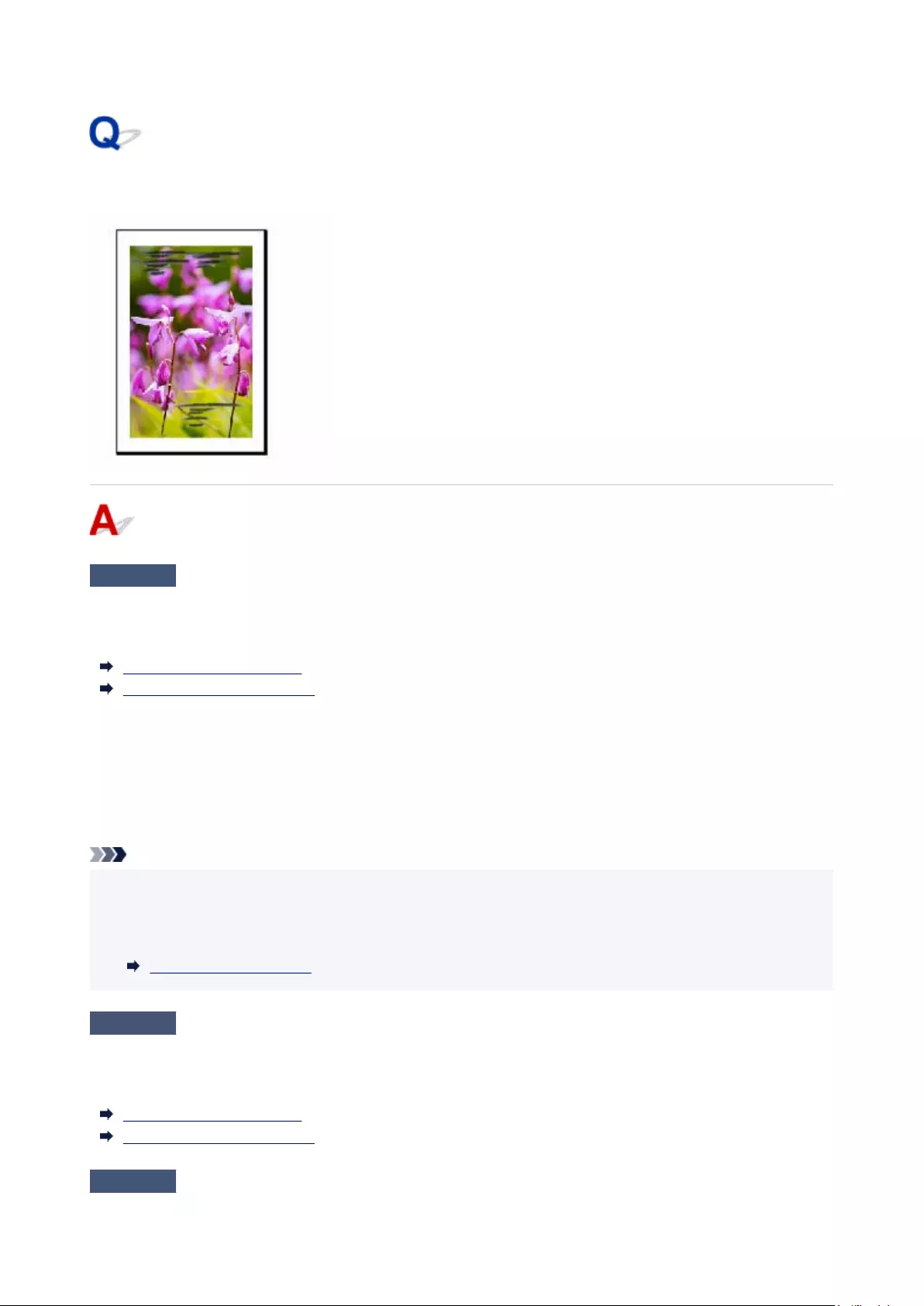
Paper rubs against the Print Head
Check 1 Is the media type specified in the printer driver the same as the media type
loaded in the printer?
When printing with the media type specified in the printer driver, load the specified media type in the printer.
Loading Rolls in the Printer
Loading Sheets in the Printer
When printing with the media type loaded in the printer, specify the same media type in the printer driver.
1. To stop printing, press the Stop button.
1.
2. Change the paper type in the printer driver and try printing again.
2.
Note
•When Auto (Use Printer Settings) is selected for the media type, printing is performed with the media
•
type loaded in the printer.
•Click Get Information to reflect the paper information set in the printer to the printer driver.
•
Printing with Easy Setup
Check 2 When loading paper in the printer, is the media loaded the same as the media
type selected on the touch screen?
Select the correct media type in the touch screen menu when loading paper in the printer.
Loading Rolls in the Printer
Loading Sheets in the Printer
Check 3 Is the paper loaded properly?
652
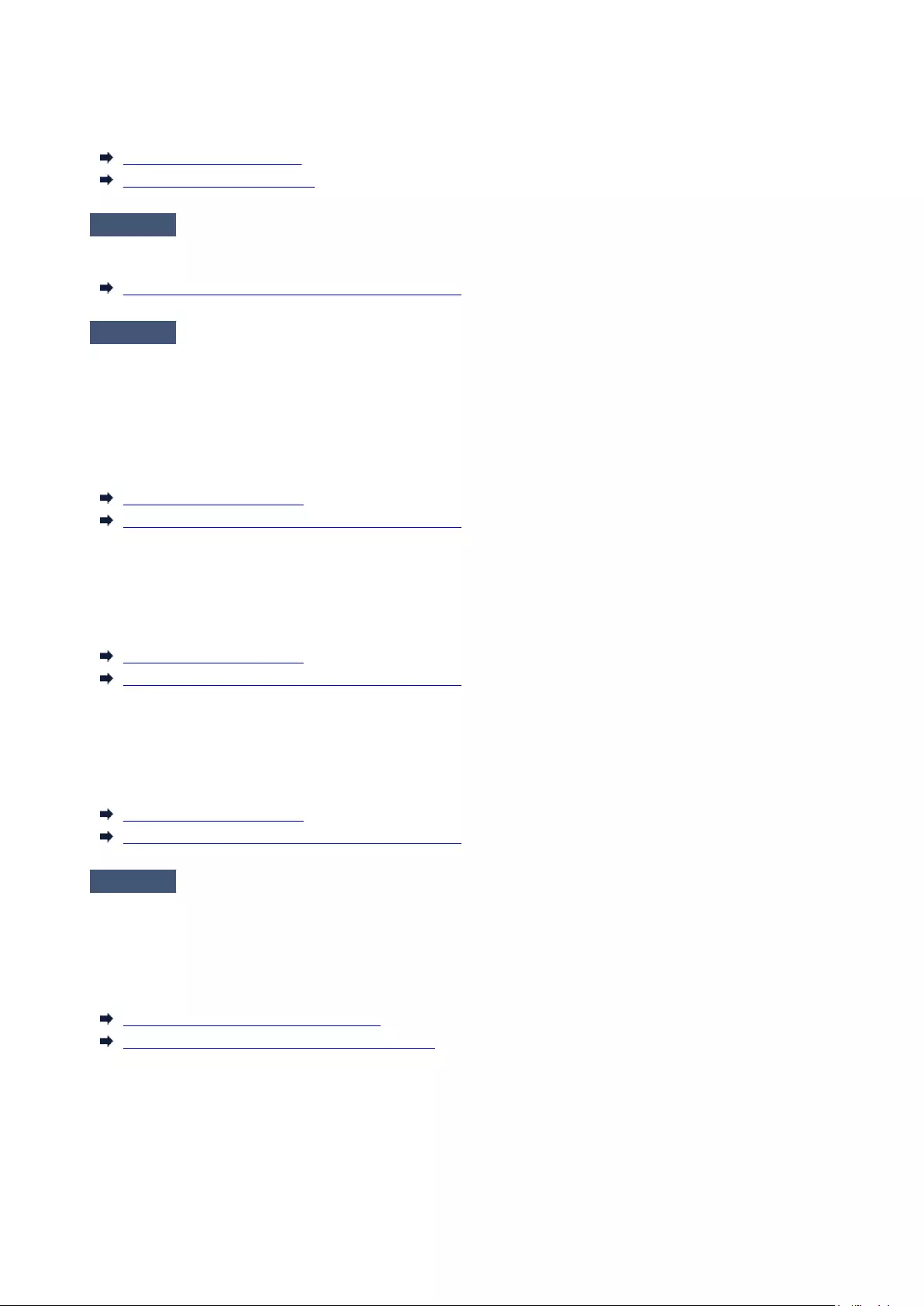
If not loaded properly, paper can buckle and rub against the Print head.
Reload the paper.
Loading Rolls in the Printer
Loading Sheets in the Printer
Check 4 Is the Print head height set too low?
Set Paper thickness (head height) in the touch screen menu to the value higher than the current one.
Troubleshooting Paper Abrasion and Blurry Images
Check 5 Is the paper thick, or a type that curls easily or is prone to buckling after
absorbing ink?
If using paper-based printing material such as Heavyweight Coated Paper, set Transport unit vacuum strength
in the touch screen menu to Medium-strong or Strong.
If that does not resolve the problem, increase the Paper thickness (head height) setting in the touch screen
menu.
Adjusting Vacuum Strength
Troubleshooting Paper Abrasion and Blurry Images
If using film-based printing material such as CAD Tracing Paper, set the Transport unit vacuum strength in the
touch screen menu to Standard, Medium-strong, or Strong.
If that does not resolve the problem, increase the Paper thickness (head height) setting in the touch screen
menu.
Adjusting Vacuum Strength
Troubleshooting Paper Abrasion and Blurry Images
If using paper thinner than 0.004 inches (0.1 mm), set Transport unit vacuum strength in the touch screen
menu to Weak.
If that does not resolve the problem, increase the Paper thickness (head height) setting in the touch screen
menu.
Adjusting Vacuum Strength
Troubleshooting Paper Abrasion and Blurry Images
Check 6 Does the paper have a strong curl at the front edge or is it buckled?
Set Cutting mode in the touch screen menu to User cut, and set leading edge detection to Do not detect.
In this case, to keep track of the amount of remaining roll paper, set Manage remaining roll amount to OFF
before loading the roll paper, and then restore the setting of Manage remaining roll amount to ON after the roll
paper is loaded.
Specifying the Cutting Method for Rolls
Keeping Track of the Amount of Roll Paper Left
653

The edges of the paper are dirty
Check 1 Was printing borderless or on small paper?
The platen may become dirtied by borderless printing or on small paper sizes.
Open the top cover and clean the platen.
Cleaning Inside the Top Cover
Check 2 Is Extension for borderless printing set to a large value?
The platen may become dirtied by setting a large amount of extension.
Reduce the value of Extension for borderless printing.
Specifying the Amount of Extension for Borderless Printing
Check 3 Is the media type specified in the printer driver the same as the media type in
the printer?
When printing with the media type specified in the printer driver, load the specified media type in the printer.
Loading Rolls in the Printer
Loading Sheets in the Printer
When printing with the media type loaded in the printer, specify the same media type in the printer driver.
1. To stop printing, press the Stop button.1.
2. Change the type of paper in the printer driver and try printing again.2.
Note
• When Auto (Use Printer Settings) is selected for the media type, printing is performed with the media•
type loaded in the printer.
•Click Get Information to reflect the paper information set in the printer to the printer driver.
•
654
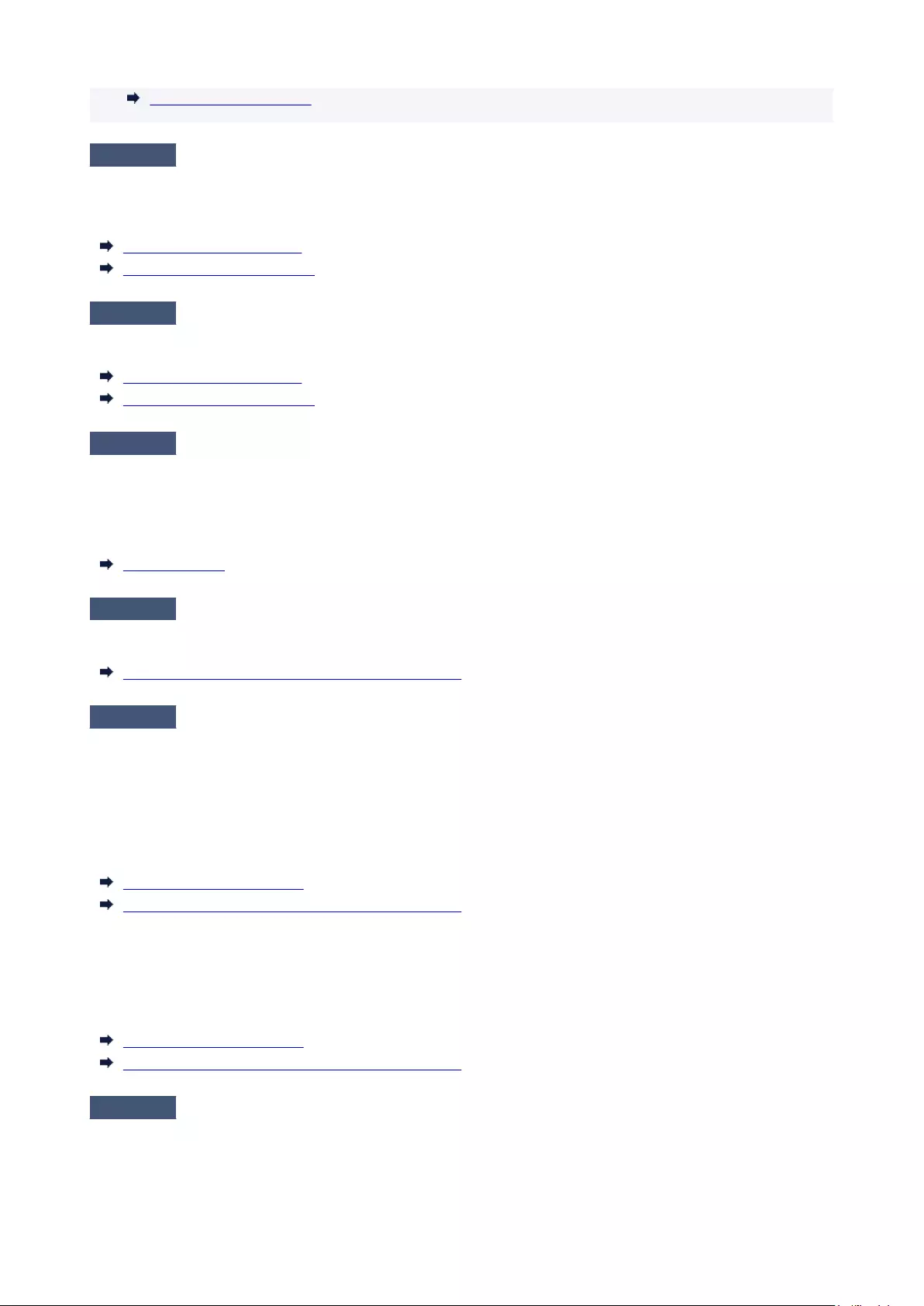
Printing with Easy Setup
Check 4 When loading paper in the printer, is the media loaded the same as the media
type selected on the touch screen?
Select the correct media type in the touch screen menu when loading paper in the printer.
Loading Rolls in the Printer
Loading Sheets in the Printer
Check 5 Is the paper creased or curled?
Straighten out the wrinkles or curls and reload the paper.
Loading Rolls in the Printer
Loading Sheets in the Printer
Check 6 In the touch screen menu, is Cut-dust reduction in Advanced paper settings
set to ON?
A cut dust reduction line is printed at the paper cut position when Cut-dust reduction is set to ON.
If cutting dust reduction is not required, set Cut-dust reduction to OFF.
Menu Structure
Check 7 Is the Print head height set too low in the touch screen menu?
Set Paper thickness (head height) to the value higher than the current one.
Troubleshooting Paper Abrasion and Blurry Images
Check 8 Is the paper thick, or a type that curls easily or is prone to buckling after
absorbing ink?
If using paper-based printing material such as thick-coat paper, set Transport unit vacuum strength in the
touch screen menu to Medium-strong or Strong.
If that does not resolve the problem, increase the Paper thickness (head height) setting in the touch screen
menu.
Adjusting Vacuum Strength
Troubleshooting Paper Abrasion and Blurry Images
If using film-based printing material such as tracing paper, set the Transport unit vacuum strength in the touch
screen menu to Standard, Medium-strong, or Strong.
If that does not resolve the problem, increase the Paper thickness (head height) setting in the touch screen
menu.
Adjusting Vacuum Strength
Troubleshooting Paper Abrasion and Blurry Images
Check 9 Is the output guide clean?
Clean the output guide.
655

The surface of the paper is dirty
Check 1 Is the paper retainer clean?
Clean the paper retainer.
Cleaning Inside the Top Cover
Check 2 If using plain papers, is the media type set to Plain papers?
Set the media type to PlainP(Instant-dry) for improved quick-drying.
Changing the Type of Paper
Check 3 Does this paper take longer to dry?
Increase the length of the Pause between pages and Pause between scans settings from the touch screen
menu.
Menu Structure
Note
• When printing on paper that takes longer to dry, the paper may curl during printing and come in contact•
with the output tray.
In such situations, set an Ink drying wait time and an Ink drying target area for Pause between scans
in the touch screen menu.
However, note that printing will now take longer.
Menu Structure
Note
• In a hot and humid environment, rolling paper printed with images containing areas of saturated color•
may transfer ink to the contact surface, affecting print quality.
657

Move the printer to a different environment, or let the paper dry before rolling it.
658

The back side of the paper is dirty
Check 1 Was the previous print job borderless, or printed on small paper?
Open the top cover and clean the platen.
Cleaning Inside the Top Cover
Check 2 Is Detect paper width in the touch screen menu set to Disable?
Printing with Detect paper width set to Disable may cause the platen to be dirtied.
Set Detect paper width in the touch screen menu to Enable, and then open the top cover and clean the platen.
Cleaning Inside the Top Cover
To continue printing with Detect paper width set to Disable, first open the top cover and clean the platen, and
then manually feed roll paper over the platen when printing.
Cleaning Inside the Top Cover
Feeding Roll Paper Manually
Check 3 Paper may be gripped weakly over the platen.
Set a higher Transport unit vacuum strength in the touch screen menu.
Adjusting Vacuum Strength
Check 4 Is the setting of Extension for borderless printing in the touch screen menu
large?
The platen may become dirtied by setting a large amount of extension.
Reduce the setting of Extension for borderless printing in the touch screen menu to less than the current
setting.
Menu Structure
Check 5 If using plain papers, is the media type set to Plain papers?
659
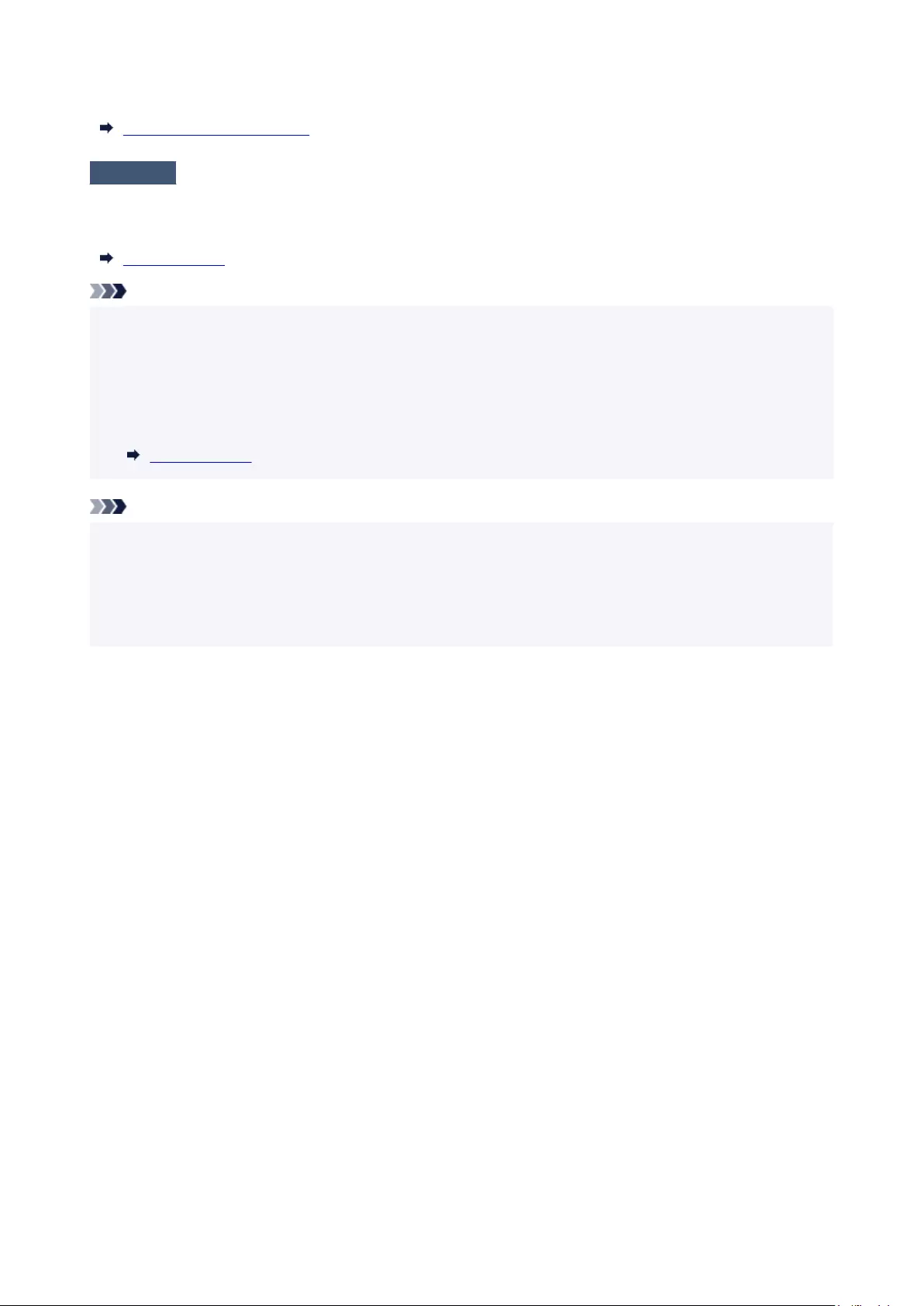
Set the media type to PlainP(Instant-dry) for improved quick-drying.
Changing the Type of Paper
Check 6 Does this paper take longer to dry?
Increase the length of the Pause between pages and Pause between scans settings from the touch screen
menu.
Menu Structure
Note
•When printing on paper that takes longer to dry, the paper may curl during printing and come in contact
•
with the output tray.
In such situations, set an Ink drying wait time and an Ink drying target area for Pause between scans
in the touch screen menu.
However, note that printing will now take longer.
Menu Structure
Note
• If the platen is dirty, open the top cover and clean the platen.•
• In a hot and humid environment, rolling paper printed with images containing areas of saturated color•
may transfer ink to the contact surface, affecting print quality.
Move the printer to a different environment, or let the paper dry before rolling it.
660

Immediately after borderless printing, the trailing edge margin is
soiled during regular printing
In some situations, borderless printing with automatic cutting of the leading and trailing edges on roll paper
may transfer ink on the cutter blade to the next item printed.
Follow the steps below to change Between Pages in Drying Time to between 30 seconds and 3 minutes
and perform borderless printing.
• Windows•
1. Click Specify for Media Type on the Main sheet of the printer driver.1.
2. Select an ink drying time from the Between Pages list in Drying Time.2.
• macOS•
Select an ink drying time from the Drying Time list on the Advanced Paper Settings sheet of the
printer driver.
661
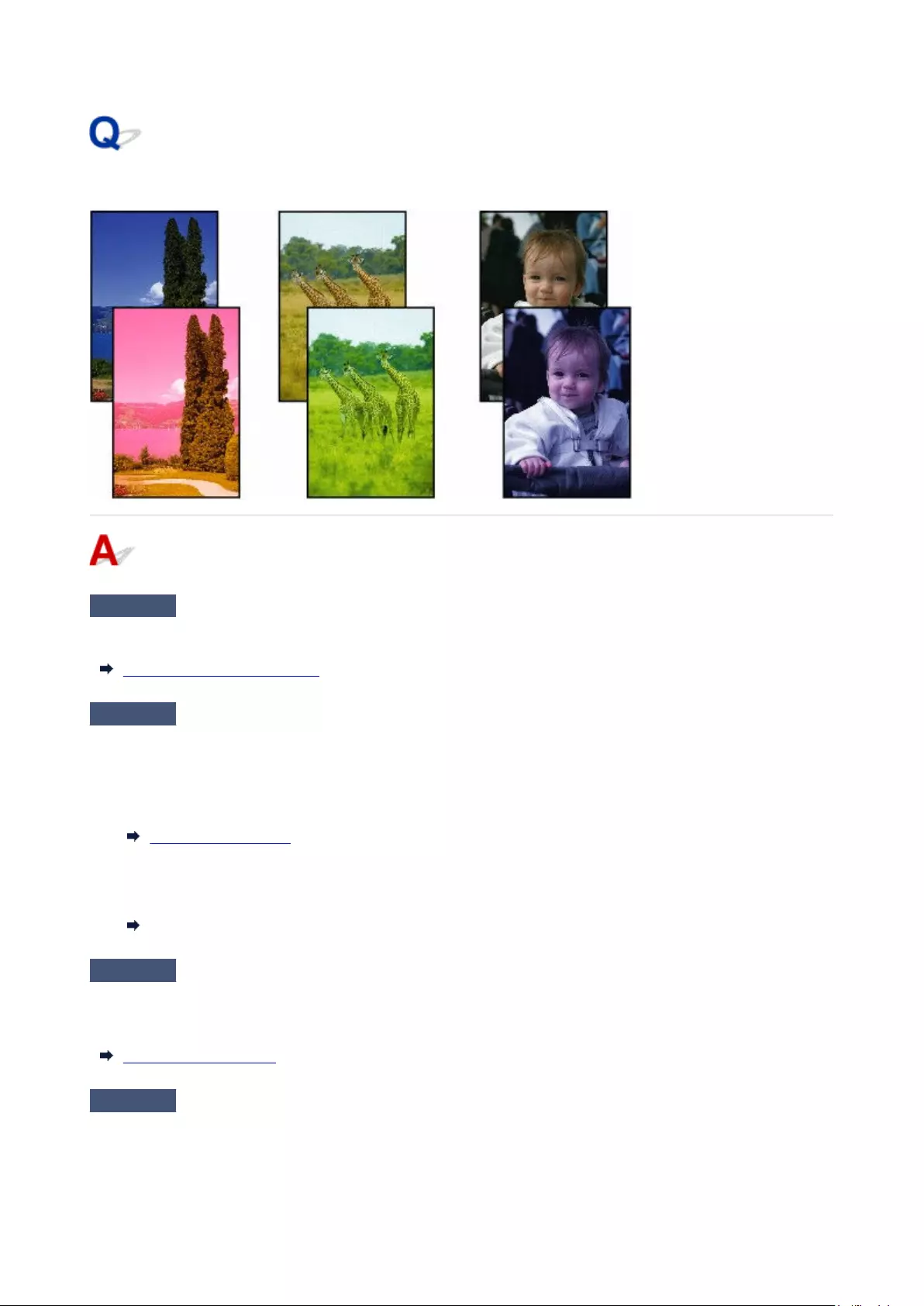
Printed colors are inaccurate
Check 1 Is the Print head nozzle blocked?
Print a test pattern to check the nozzles and see if they are clogged.
Checking for Nozzle Clogging
Check 2 Has color been adjusted in the printer driver?
Follow the steps below to adjust color settings.
•Windows
•
Adjust the color settings with Color Mode > Color Settings in Advanced Settings in the printer driver.
Main Tab Description (Windows)
•macOS
•
Adjust the color settings in the printer driver Color Options.
Color Options (macOS)
Check 3 Is Application Color Matching Priority set to Off in a Windows printer driver?
In the printer driver Layout sheet, click Special Settings, and then set Application Color Matching Priority to
On in the dialog box that appears.
Layout Tab Description (Windows)
Check 4 Has the computer or monitor color been adjusted?
Take the actions below.
•Refer to the computer and monitor documentation to adjust the colors.
•
662

• Adjust the settings of the color management software, referring to the software documentation as needed.•
Check 5 Color varies even between printers of the same model due to differences in
firmware and printer driver versions, settings, or environment.
Follow these steps to prepare the printing environment.
1. Use the same version of firmware or printer driver.1.
2. Specify the same value for all settings items.
2.
663
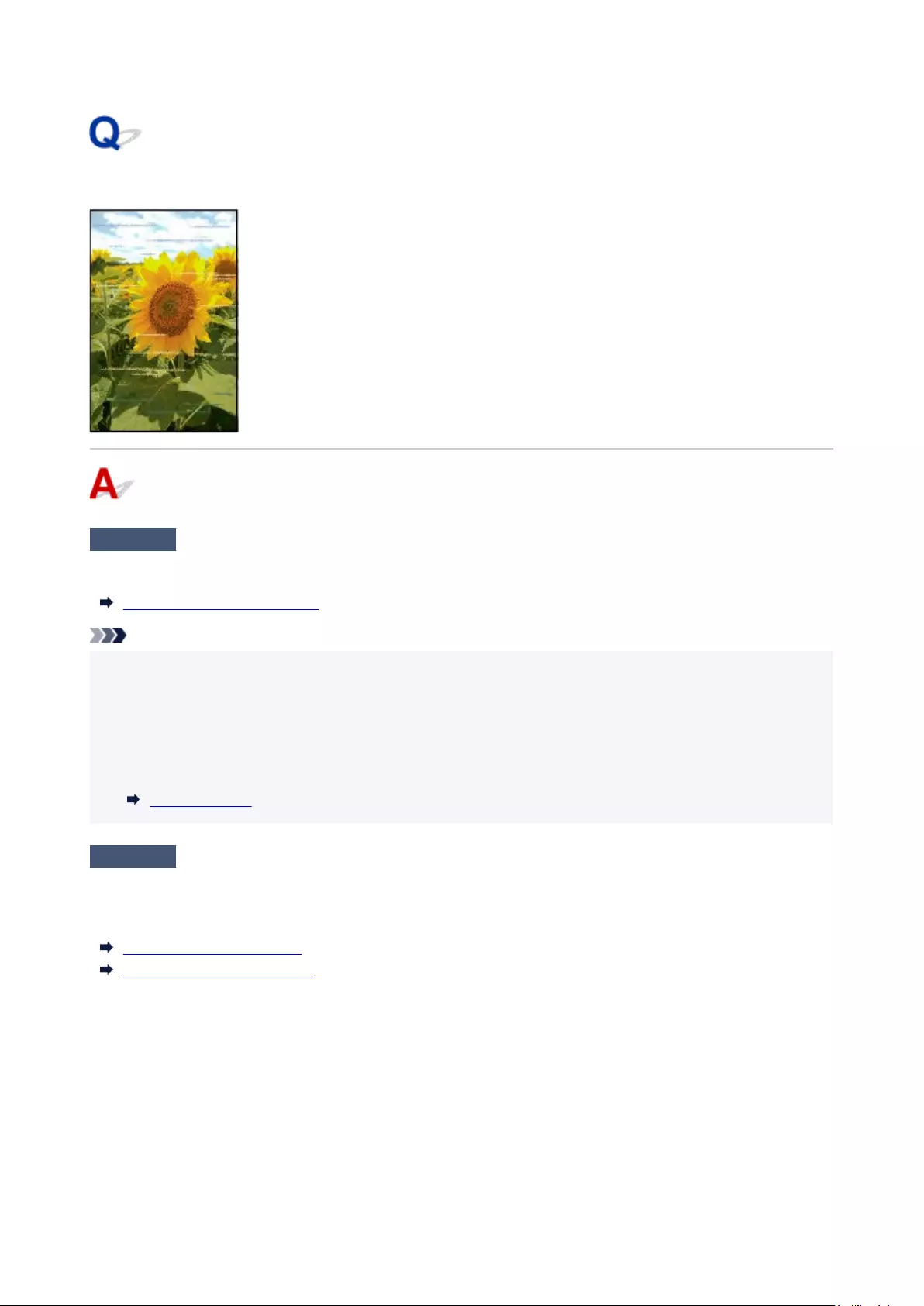
Banding in different colors occurs
Check 1 Make sure that the Print head nozzle is not blocked
Print a test pattern to check the nozzles and see if they are clogged.
Checking for Nozzle Clogging
Note
•To automatically check for nozzle blockages after printing, set Auto nozzle check in the touch screen
•
menu to a setting other than Disable.
To show warnings based on nozzle check results, set Nozzle check error display in the touch screen
menu to Enable.
However, printing may be stopped by warnings if this setting is set to Enable.
Menu Structure
Check 2 Is the media type specified in the printer driver the same as the media type
loaded in the printer?
When printing with the media type specified in the printer driver, load the specified media type in the printer.
Loading Rolls in the Printer
Loading Sheets in the Printer
When printing with the media type loaded in the printer, specify the same media type in the printer driver.
1. To stop printing, press the Stop button.1.
2. Change the type of paper in the printer driver and try printing again.
2.
664
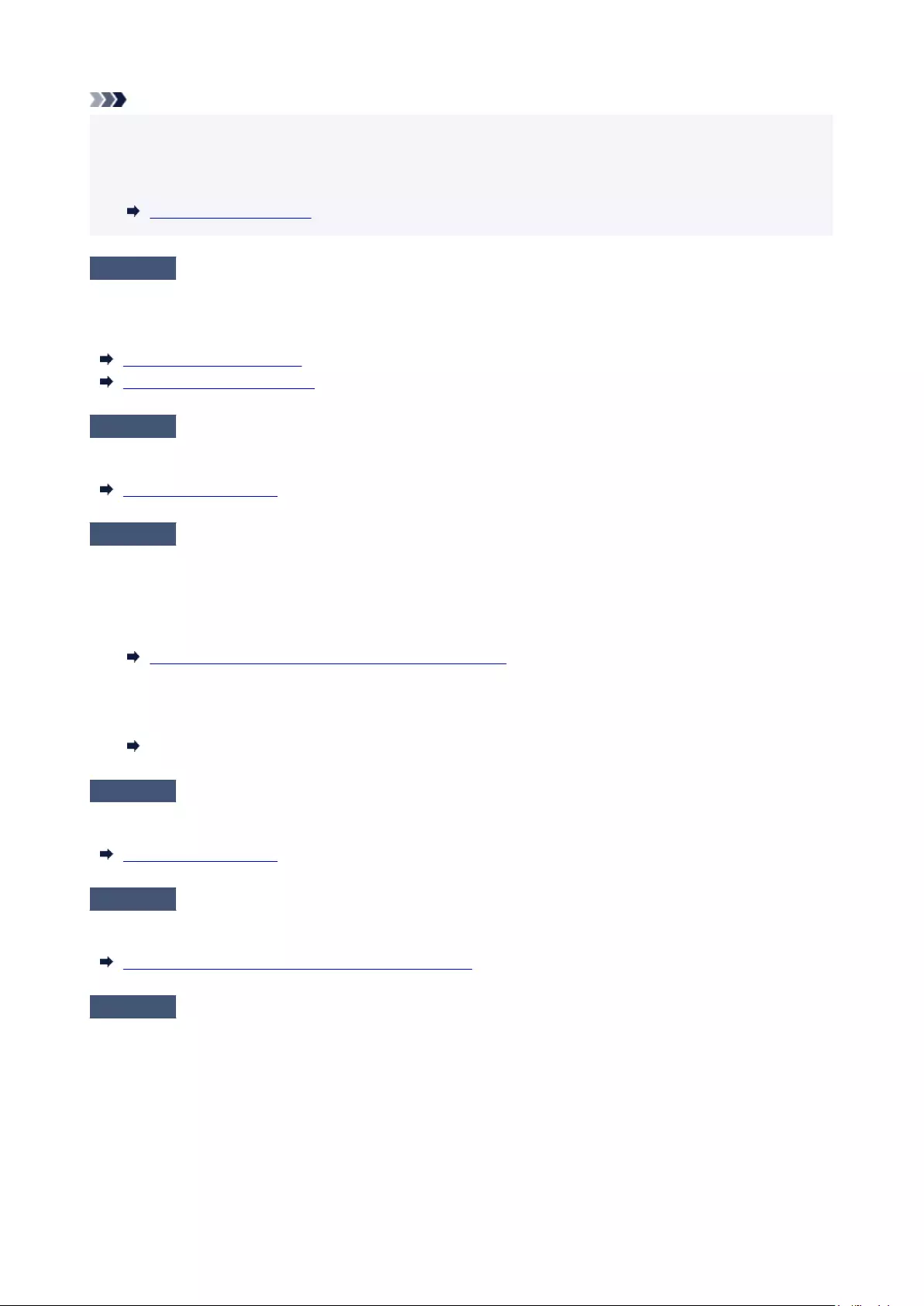
Note
•When Auto (Use Printer Settings) is selected for the media type, printing is performed with the media
•
type loaded in the printer.
• Click Get Information to reflect the paper information set in the printer to the printer driver.•
Printing with Easy Setup
Check 3 Does the paper loaded on the printer match the media type selected on the
touch screen?
Select the correct media type in the touch screen menu when loading paper in the printer.
Loading Rolls in the Printer
Loading Sheets in the Printer
Check 4 Has the paper feed rate been calibrated properly?
Adjust the feed amount.
Adjusting Feed Amount
Check 5 Low Print Quality setting causing lines in the printing
Follow the steps below to set Print Quality to the highest quality setting, and then print.
•Windows
•
Change the Print Quality settings in the printer driver Advanced Settings.
Changing the Print Quality and Correcting Image Data (Windows)
•macOS
•
Change the Print Quality in the printer driver Quality & Media settings.
Changing the Print Quality and Correcting Image Data (macOS)
Check 6 Is Set priority in the touch screen menu set to Prioritize length accuracy?
Setting Set priority to Prioritize print quality and adjusting the feed amount can help.
Adjusting Feed Amount
Check 7 Check if the Print head is in the right position
Adjust the Print head position.
Automatic Adjustment to Straighten Lines and Colors
Check 8 Print job may have been interrupted while receiving, and therefore not printed
at a fast frame rate
Exit other applications and cancel other print jobs.
665
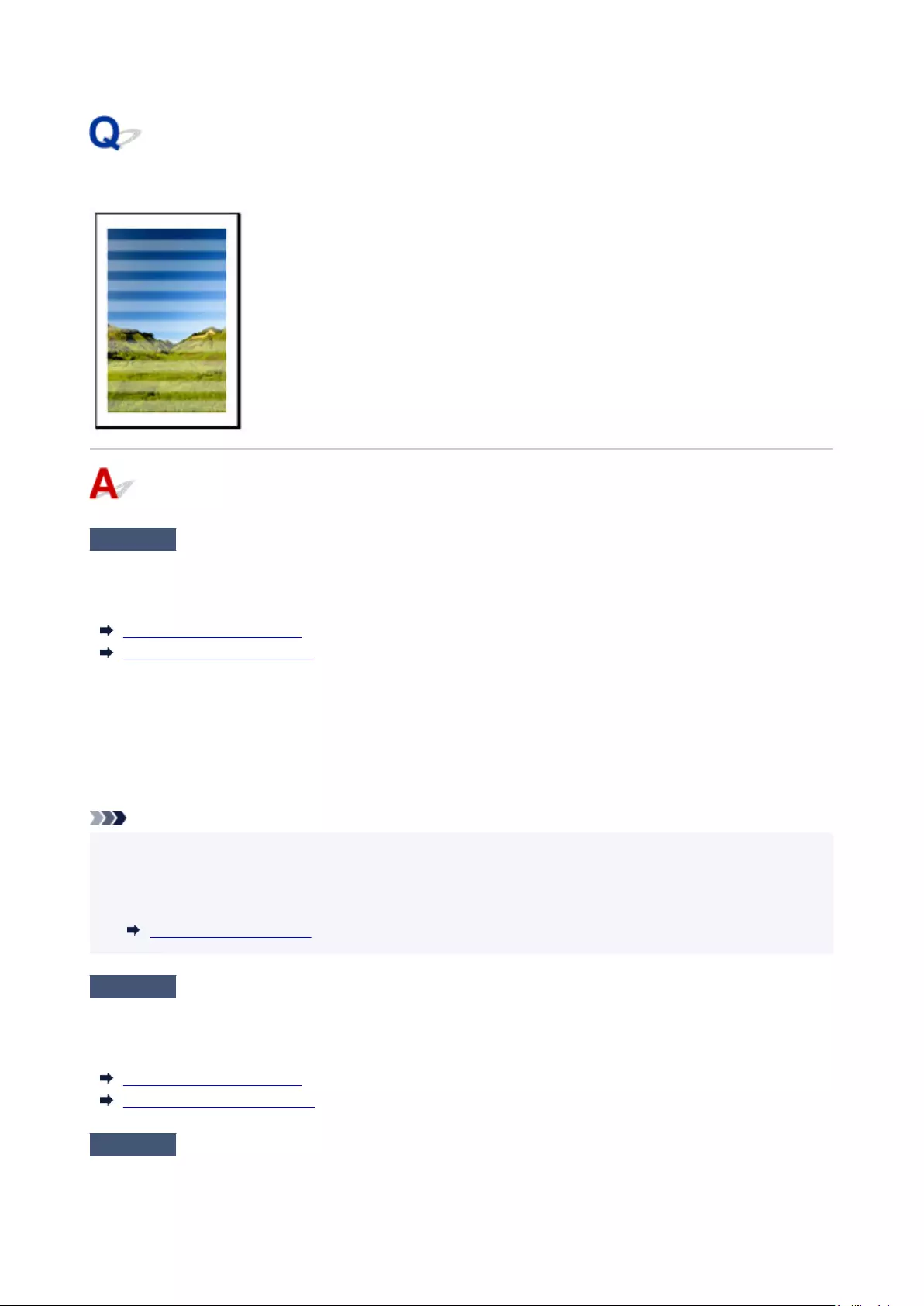
Colors in printed images are uneven
Check 1 Does the paper loaded on the printer match the media type selected in the
printer driver?
When printing with the media type specified in the printer driver, load the specified media type in the printer.
Loading Rolls in the Printer
Loading Sheets in the Printer
When printing with the media type specified in the printer driver, load the specified media type in the printer.
1. To stop printing, press the Stop button.
1.
2. Change the paper type in the printer driver and try printing again.
2.
Note
•When Auto (Use Printer Settings) is selected for the media type, printing is performed with the media
•
type loaded in the printer.
•Click Get Information to reflect the paper information set in the printer to the printer driver.
•
Printing with Easy Setup
Check 2 When loading paper in the printer, is the media loaded the same as the media
type selected on the touch screen?
Select the correct media type in the touch screen menu when loading paper in the printer.
Loading Rolls in the Printer
Loading Sheets in the Printer
Check 3 Is the Print head position adjusted correctly?
Adjust the Print head position.
666
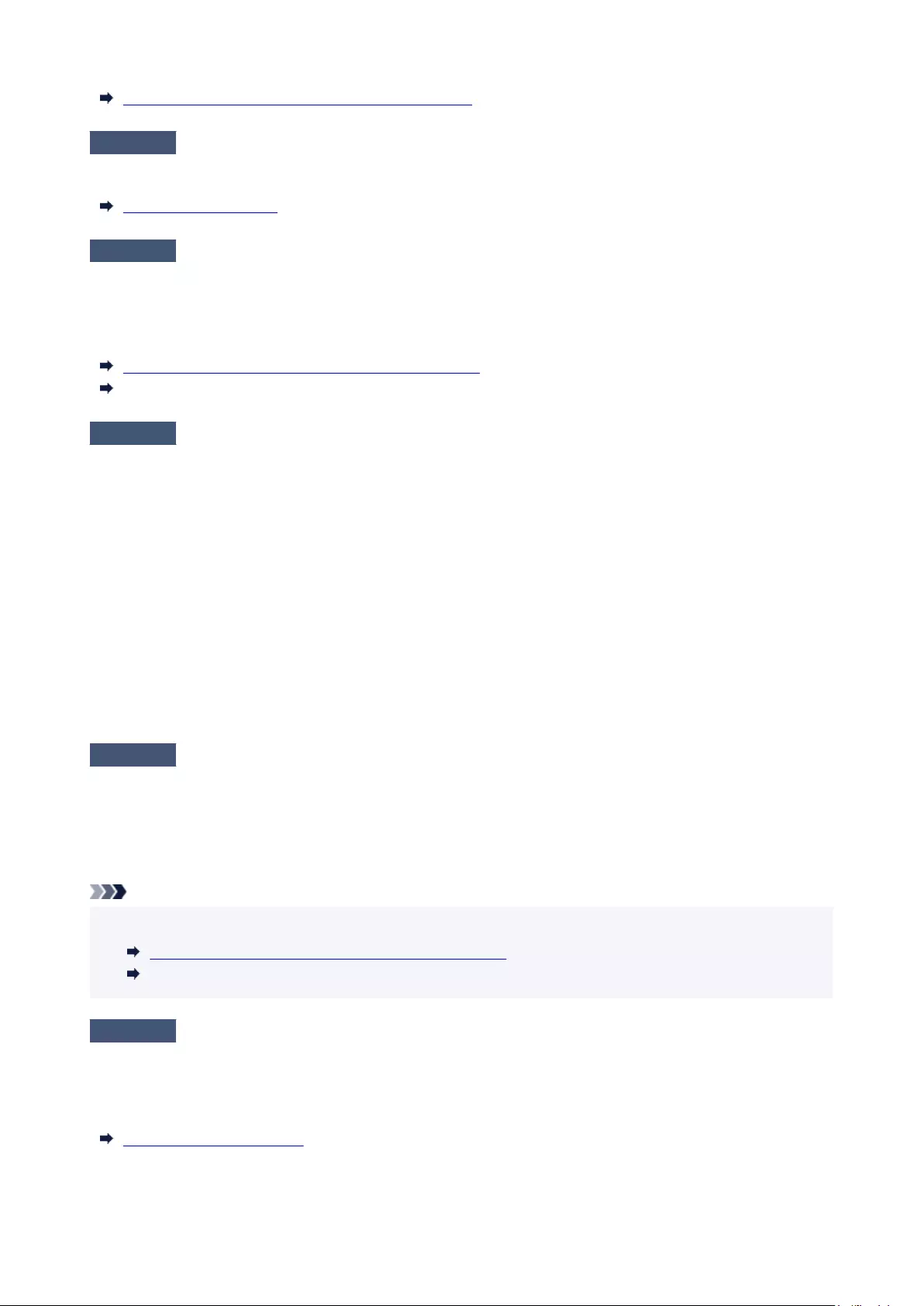
Automatic Adjustment to Straighten Lines and Colors
Check 4 Is the feed amount adjusted correctly?
Adjust feed amount.
Adjusting Feed Amount
Check 5 Colors in printed images may be uneven if the Print Quality setting is too low
If using Windows, select Advanced Settings from the Main tab of the printer driver, and then select a higher
Print Quality setting.
If using macOS, select Quality & Media in the printer driver, and then select a higher Print Quality setting.
Changing the Print Quality and Correcting Image Data (Windows)
Changing the Print Quality and Correcting Image Data (macOS)
Check 6 Colors in printed images may be uneven on the boundary between shades if
there are dark and light areas in an image
Prints on the same page while switching between Bidirectional printing and Unidirectional printing. Therefore,
color unevenness may occur when switching. Using the unidirectional printing function may reduce color
unevenness in this situation.
Follow the steps below for unidirectional printing.
•Windows
•
Open Paper Detailed Settings from the Main tab of the printer driver, and then select Unidirectional
Printing.
•macOS
•
Open Advanced Paper Settings in the printer driver, and then select Unidirectional Printing.
Check 7 If printing borderless, colors in printed images may be a little uneven at the
leading edge of the paper because printing is interrupted to cut the paper
Set the printer driver Automatic Cutting settings to No, and then print. Doing this prints only the left and right
sides borderless. Cut the top and bottom borders with a cutting implement such as scissors after the printed
materials are output and cut.
Note
• Selecting a higher Print Quality in the printer driver Advanced Settings may resolve the problem.•
Changing the Print Quality and Correcting Image Data (Windows)
Changing the Print Quality and Correcting Image Data (macOS)
Check 8 Does this paper curl easily?
Colors in printed images may be uneven at the leading edge of paper that curls easily. Change the Transport
unit vacuum strength in the touch screen to increase the grip on the paper, or set a margin of at least 0.8
inches (20 mm) at the front edge of the paper.
Adjusting Vacuum Strength
667
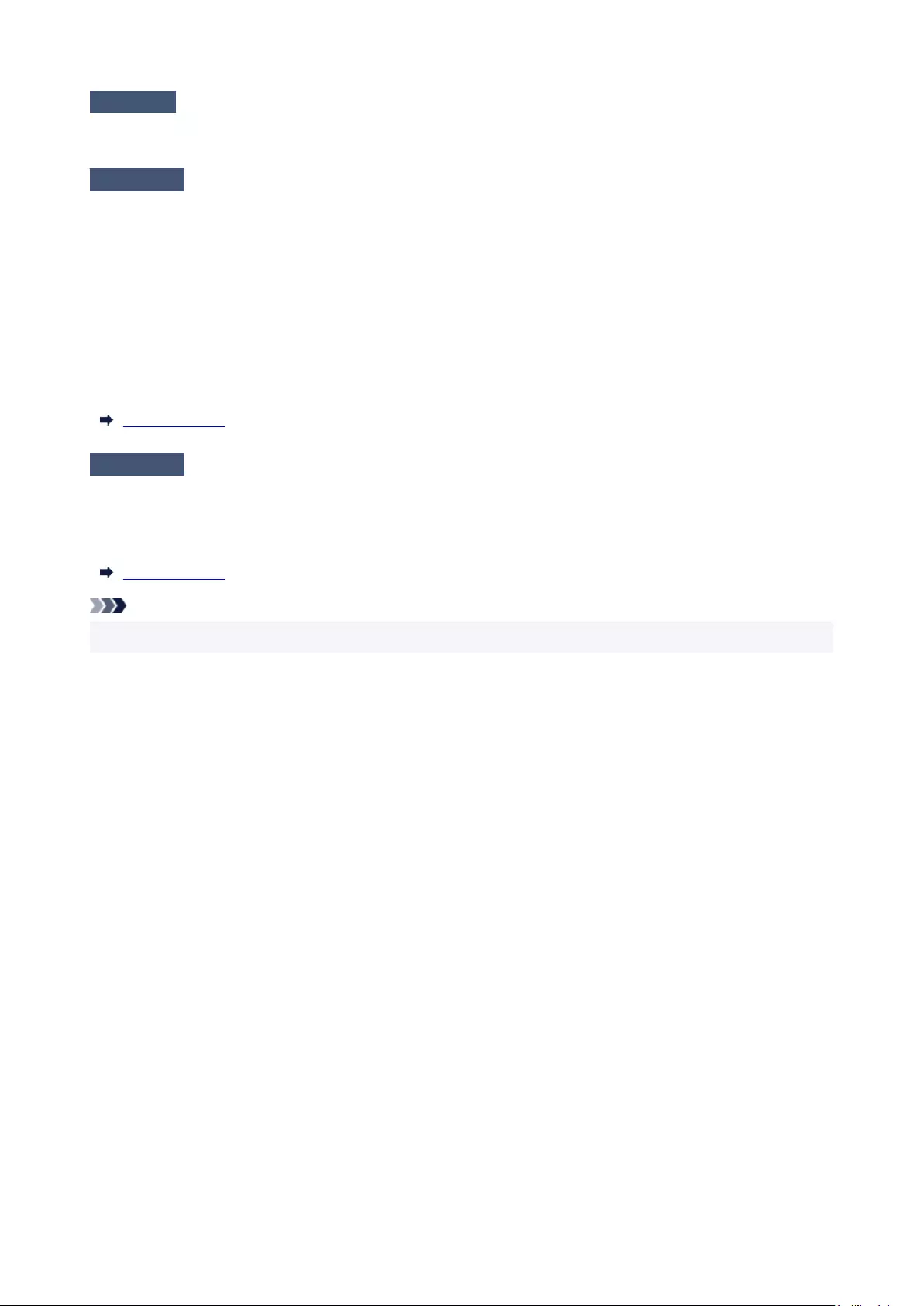
Check 9 Color may be uneven if printing materials were stacked while drying
To avoid uneven colors, we recommend drying each sheet separately.
Check 10 Is Ink drying target area for Pause between scans in the touch screen
menu set to Leading edge?
If the Ink drying target area for Pause between scans is set to Leading edge, color may be uneven
approximately 4.3 to 6.3 inches (110 to 160 mm) from the front edge of the paper. (The position depends
on the Print Quality settings)
On the home screen of the touch screen, tap the paper setting display area, tap the paper feed slot where the
paper whose settings to change is set, and then tap Paper settings > Advanced > Pause between scans >
Ink drying target area and set to Overall.
However, note that printing will now take longer.
Menu Structure
Check 11 Make sure you are not printing cut sheet with AirPrint (macOS)
When you print cut sheets with AirPrint, uneven or streaked colors may occur at the trailing edge of the sheet.
To print cut sheets with AirPrint. From the touch screen menu, tap Printer settings > Paper-related settings >
Keep margin at cut sheet end.
Menu Structure
Note
•Set Keep margin at cut sheet end to Enable to increase the margin at the trailing edge of the sheet.
668
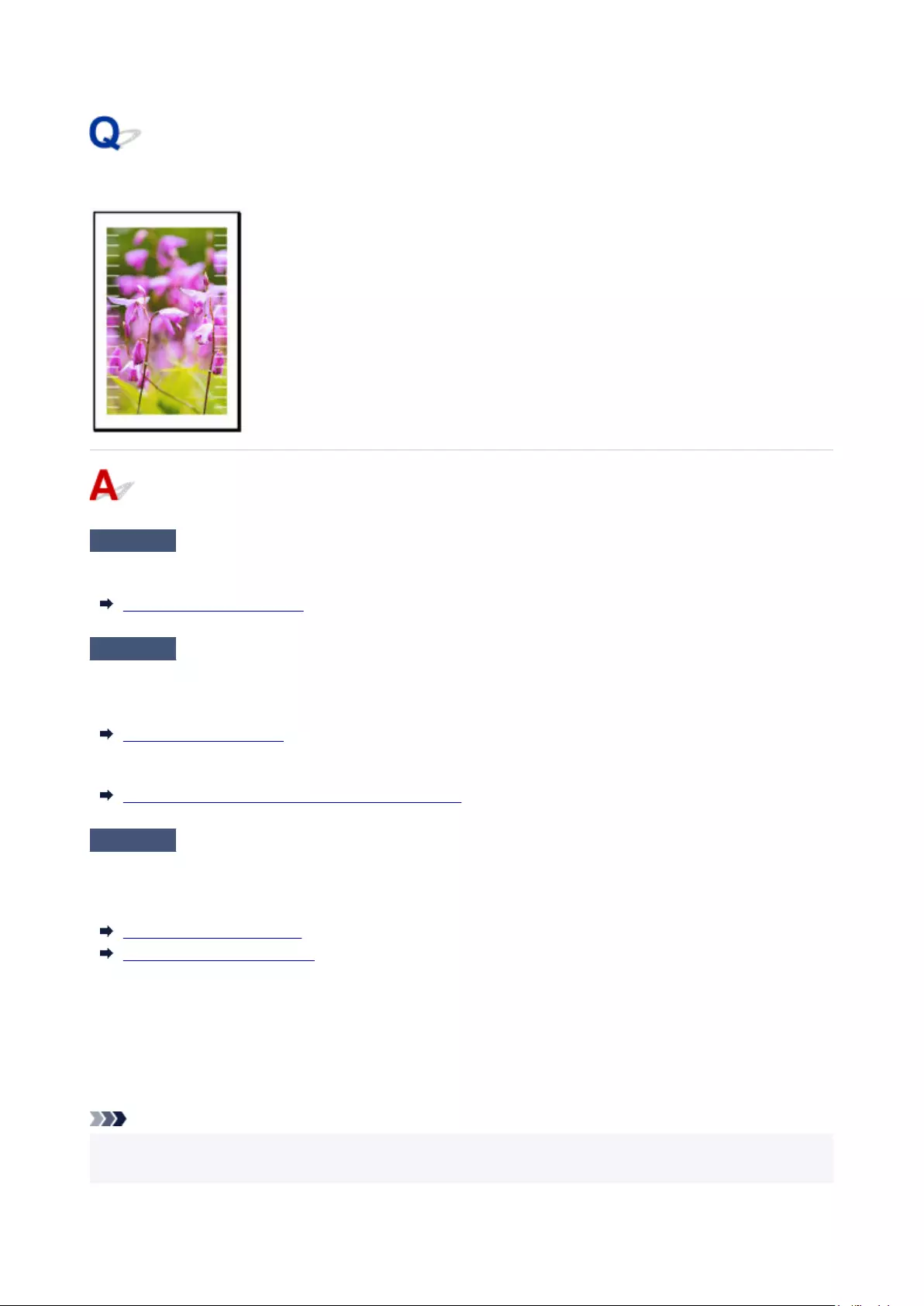
Image edges are blurred or white banding occurs
Check 1 Paper may be gripped too strongly over the platen.
Set a lower Transport unit vacuum strength in the touch screen menu.
Adjusting Vacuum Strength
Check 2 Check if the Print head is in the right position.
For detailed printing of small text or fine lines on glossy or semi-gloss photo paper or proof paper, etc., set the
Print head to the optimal height and then adjust the position of the Print head.
Adjusting the Print Head
Setting a lower value for Paper thickness (head height) in the touch screen menu may resolve the problem.
Troubleshooting Paper Abrasion and Blurry Images
Check 3 Is the media type specified in the printer driver the same as the media type
loaded in the printer?
When printing with the media type specified in the printer driver, load the specified media type in the printer.
Loading Rolls in the Printer
Loading Sheets in the Printer
When printing with the media type specified in the printer driver, load the specified media type in the printer.
1. To stop printing, press the Stop button.1.
2. Change the paper type in the printer driver and try printing again.2.
Note
•When Auto (Use Printer Settings) is selected for the media type, printing is performed with the media
•
type loaded in the printer.
669
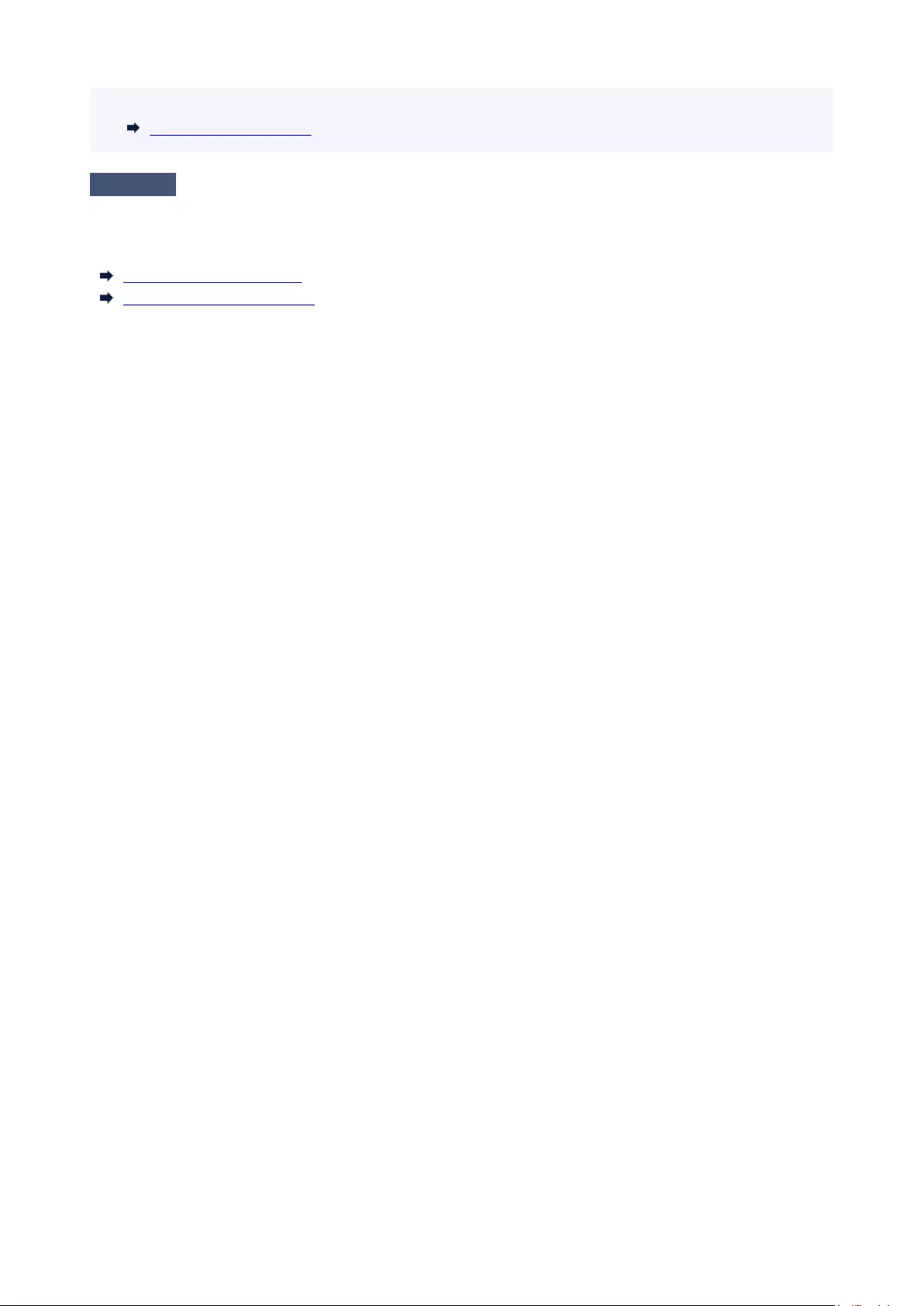
• Click Get Information to reflect the paper information set in the printer to the printer driver.•
Printing with Easy Setup
Check 4 When loading paper in the printer, is the media loaded the same as the media
type selected on the touch screen?
Select the correct media type in the touch screen menu when loading paper in the printer.
Loading Rolls in the Printer
Loading Sheets in the Printer
670

The length of the printed image in the paper ejection direction is
not accurate
Check 1 Is the media type specified in the printer driver the same as the media type
loaded in the printer?
When printing with the media type specified in the printer driver, load the specified media type in the printer.
Loading Rolls in the Printer
Loading Sheets in the Printer
When printing with the media type specified in the printer driver, load the specified media type in the printer.
1. To stop printing, press the Stop button.
1.
2. Change the paper type in the printer driver and try printing again.
2.
Note
• When Auto (Use Printer Settings) is selected for the media type, printing is performed with the media•
type loaded in the printer.
•Click Get Information to reflect the paper information set in the printer to the printer driver.
•
Printing with Easy Setup
Check 2 When loading paper in the printer, is the media loaded the same as the media
type selected on the touch screen?
Select the correct media type in the touch screen menu when loading paper in the printer.
Loading Rolls in the Printer
Loading Sheets in the Printer
Check 3 Perform print quality adjustment to automatically adjust the feed amount.
671

Perform Adjust print quality from Paper feed adjustment and Print alignment pattern to automatically adjust
the feed amount.
Automatic Banding Adjustment
Check 4 Is Set priority for Paper feed adjustment in the touch screen menu set to
Prioritize print quality?
Set Set priority for Paper feed adjustment to Prioritize length accuracy, and then carry out Adjust feed
length.
Adjusting Feed Amount
672
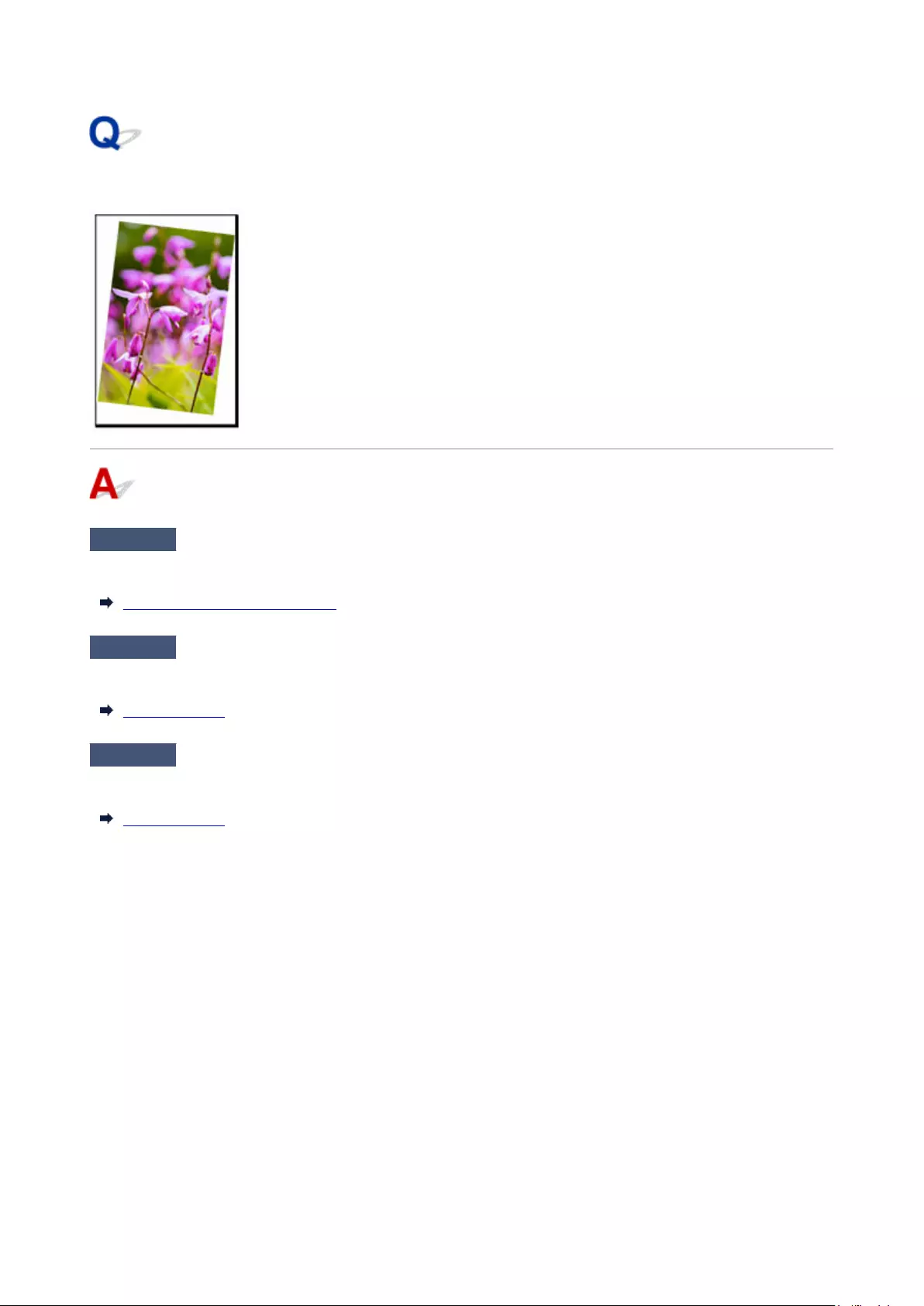
Images are printed crooked
Check 1 Has the roll paper been loaded at an angle?
If there is a gap between the roll paper and roll holder, reload the roll on the roll holder.
Loading Rolls on the Roll Holder
Check 2 Is Detect paper width set to Disable?
Set Detect paper width in the touch screen menu to Enable to load the paper.
Menu Structure
Check 3 Is Skew detection accuracy in the touch screen menu set to Loose or OFF?
Set Skew detection accuracy to Standard, and then reload the paper.
Menu Structure
673
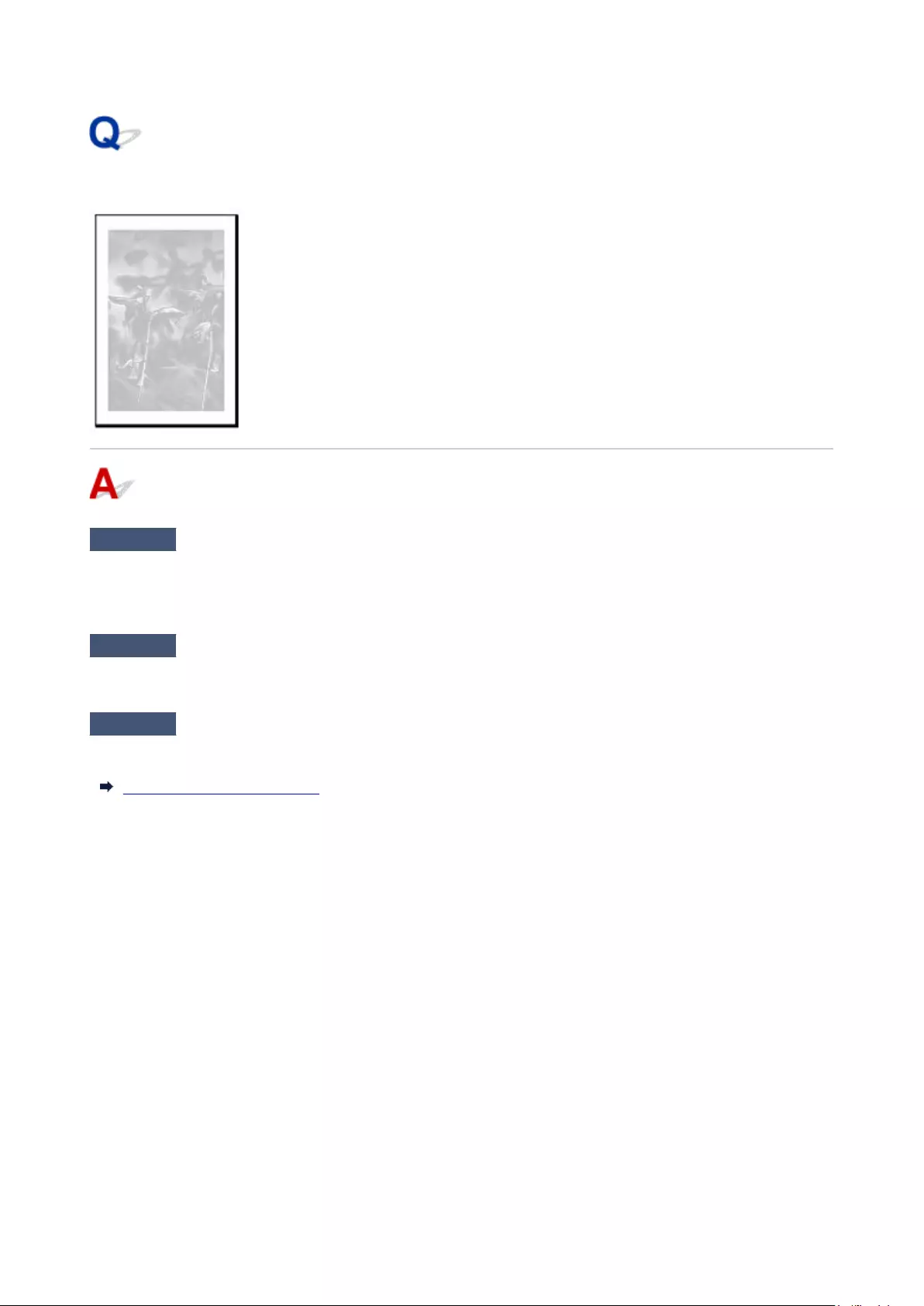
Documents are printed in monochrome
Check 1 Is Color Mode set to Monochrome, or Print Target set to Monochrome
(Photo) in a Windows printer driver?
In the Advanced Settings of the printer driver, specify Color in Color Mode and try printing again.
Check 2 Is Black and White Photo Print selected in a macOS printer driver?
Deselect Black and White Photo Print in the printer driver Quality & Media settings, and then print again.
Check 3 The print head nozzle may be blocked
Print a test pattern to check the color ink nozzles and see if they are clogged.
Checking for Nozzle Clogging
674
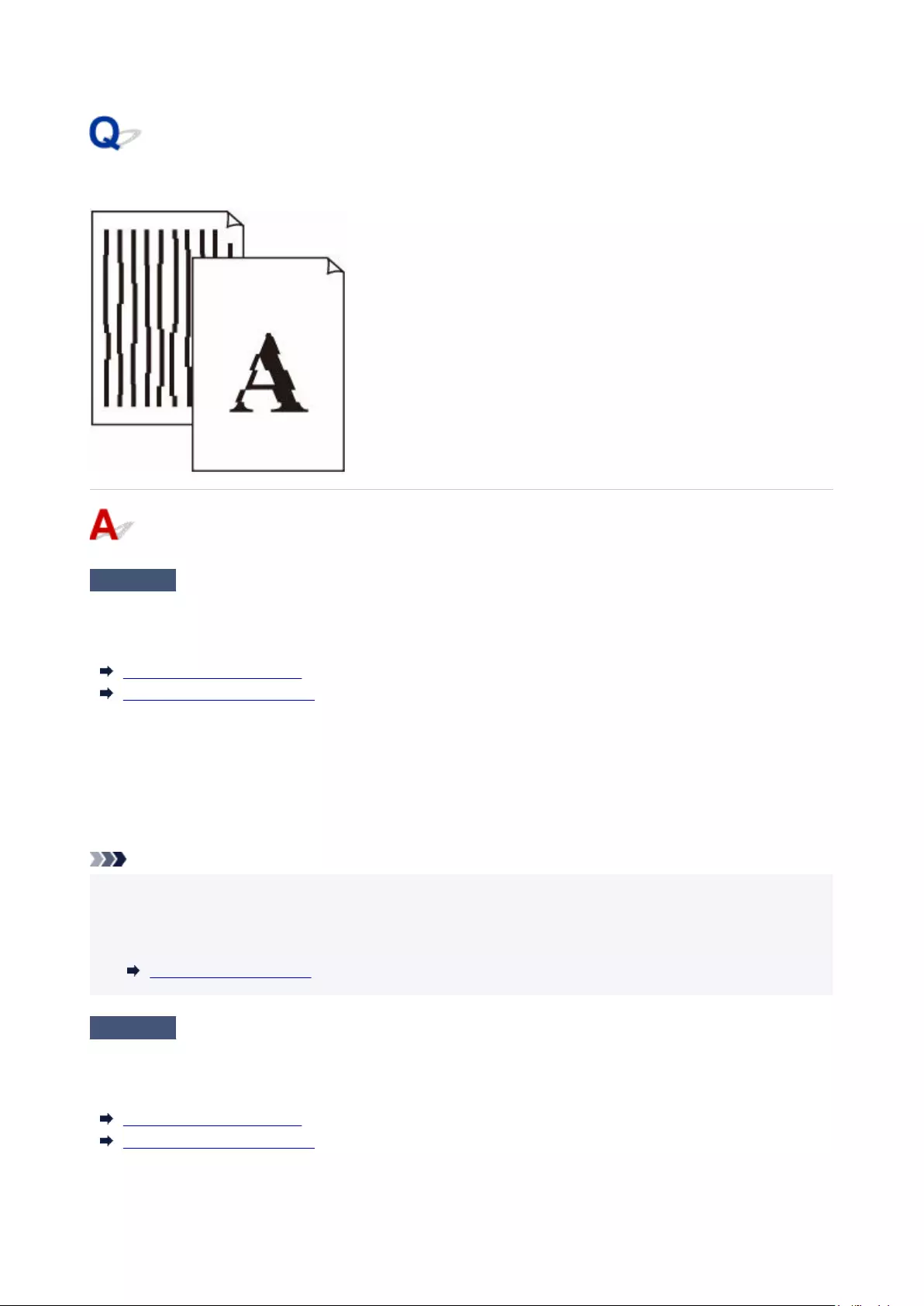
Line thickness is not uniform
Check 1 Is the media type specified in the printer driver the same as the media type
loaded in the printer?
When printing with the media type specified in the printer driver, load the specified media type in the printer.
Loading Rolls in the Printer
Loading Sheets in the Printer
When printing with the media type specified in the printer driver, load the specified media type in the printer.
1. To stop printing, press the Stop button.
1.
2. Change the paper type in the printer driver and try printing again.
2.
Note
•When Auto (Use Printer Settings) is selected for the media type, printing is performed with the media
•
type loaded in the printer.
•Click Get Information to reflect the paper information set in the printer to the printer driver.
•
Printing with Easy Setup
Check 2 When loading paper in the printer, is the media loaded the same as the media
type selected on the touch screen?
Select the correct media type in the touch screen menu when loading paper in the printer.
Loading Rolls in the Printer
Loading Sheets in the Printer
675

Check 3 Adjust the position of the Print head
If the printed result does not look uniform, such as when the lines are misaligned, adjust the position of Print
Head.
Automatic Adjustment to Straighten Lines and Colors
Manual Adjustment to Straighten Lines and Colors
For photo paper and proof paper, it may be improved by setting Paper thickness (head height) to a value lower
than the current setting and then adjust the position of the Print head.
Troubleshooting Paper Abrasion and Blurry Images
Check 4 Is Fast Graphic Process set to On in the 32-bit Windows printer driver
Special Settings dialog box?
Access the printer driver Properties dialog box from Print in the File menu of the source application, and follow
these steps to print.
1. Deselect Preview before printing in the Main sheet.
1.
2. Deselect Page Layout in the Layout sheet.
2.
3. Click the Special Settings button in the Layout sheet, and then set Fast Graphic
3.
Process to Off in the Special Settings dialog box that opens.
676
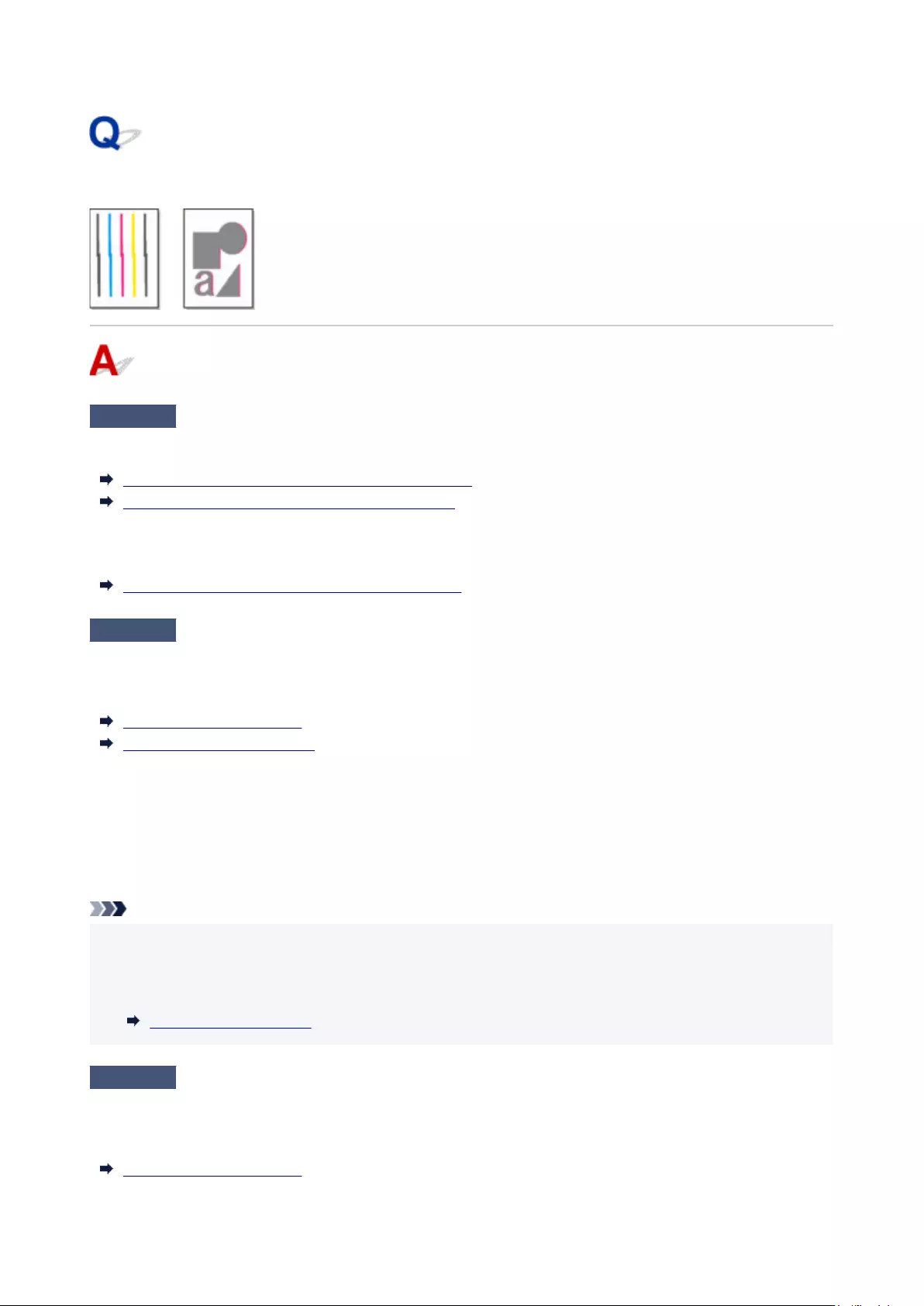
Lines or colors are misaligned
Check 1 Adjust the position of the Print head
If borders are misaligned or the print results are not uniform, adjust the position of the Print head.
Automatic Adjustment to Straighten Lines and Colors
Manual Adjustment to Straighten Lines and Colors
For photo paper and proof paper, it may be improved by setting Paper thickness (head height) to a value lower
than the current setting and then adjust the position of the Print head.
Troubleshooting Paper Abrasion and Blurry Images
Check 2 Is the media type specified in the printer driver the same as the media type
loaded in the printer?
When printing with the media type specified in the printer driver, load the specified media type in the printer.
Loading Rolls in the Printer
Loading Sheets in the Printer
When printing with the media type specified in the printer driver, load the specified media type in the printer.
1. To stop printing, press the Stop button.
1.
2. Change the paper type in the printer driver and try printing again.
2.
Note
• When Auto (Use Printer Settings) is selected for the media type, printing is performed with the media•
type loaded in the printer.
• Click Get Information to reflect the paper information set in the printer to the printer driver.•
Printing with Easy Setup
Check 3 When loading paper in the printer, is the media loaded the same as the media
type selected on the touch screen?
Select the correct media type in the touch screen menu when loading paper in the printer.
Loading Rolls in the Printer
677
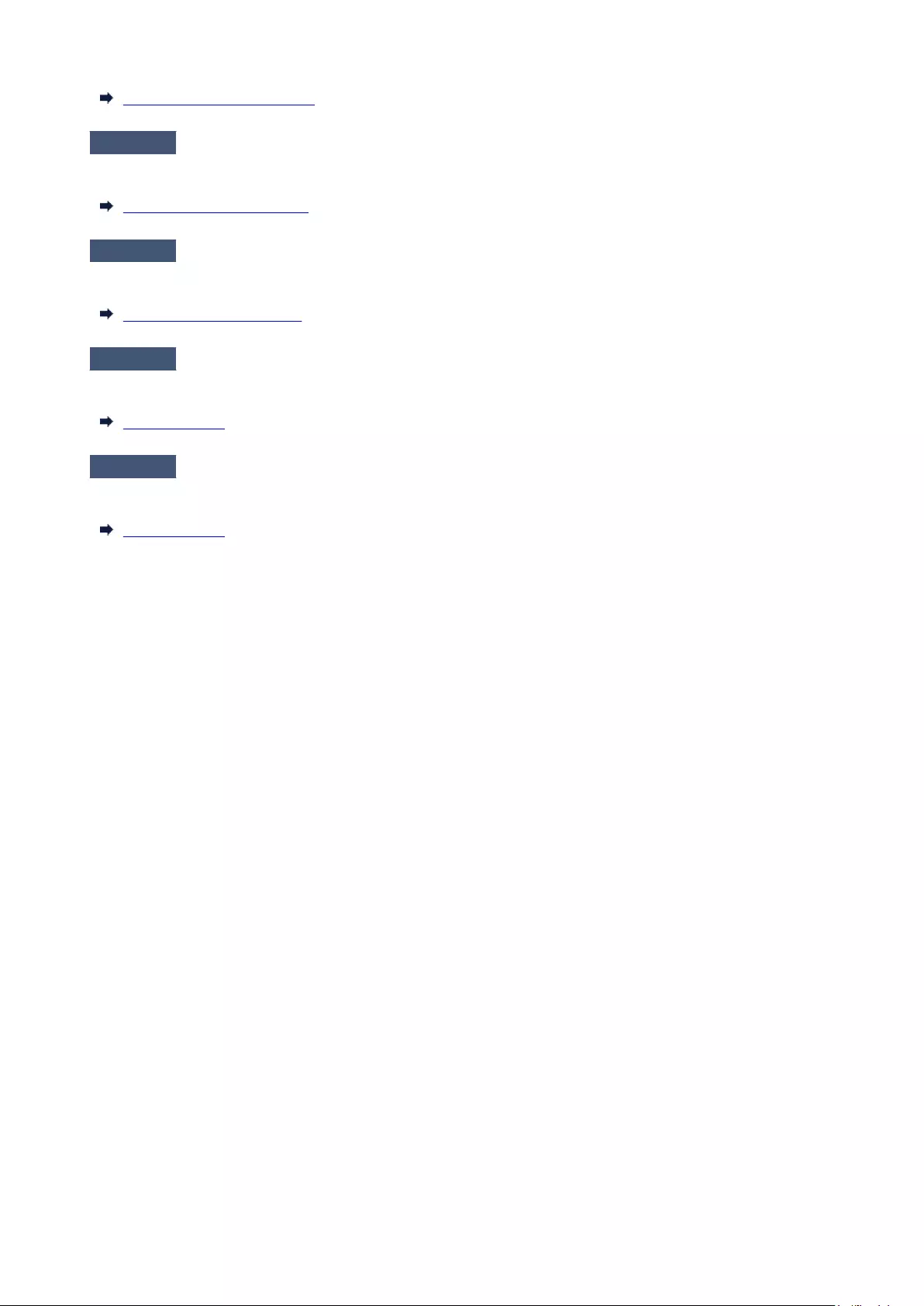
Loading Sheets in the Printer
Check 4 Adjust the angle of the Print head
Select Print head angle adjustment from the touch screen menu to adjust the Print head angle.
Adjusting Line Misalignment
Check 5 Is the Roll Paper loaded at an angle?
If there is a gap between the roll paper and the roll holder, reload the roll paper.
Loading Rolls in the Printer
Check 6 Is Detect paper width set to Disable?
Set Detect paper width in the touch screen menu to Enable to load the paper.
Menu Structure
Check 7 Is Skew detection accuracy in the touch screen menu set to Loose or OFF?
Set Skew detection accuracy to Standard, and then reload the paper.
Menu Structure
678
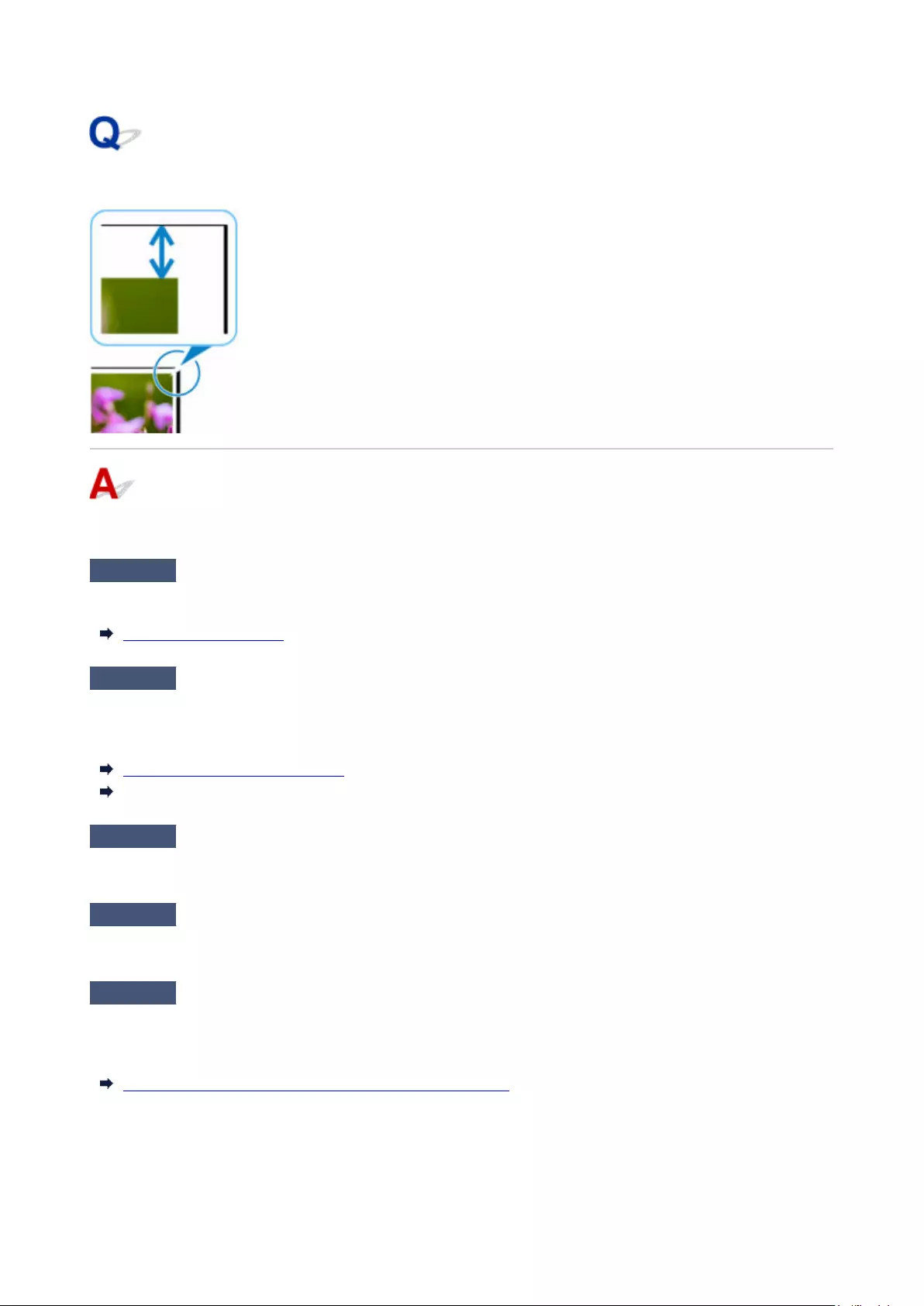
Borders appear in borderless printing
If white bandings or borders appear on the edges of borderless printing, check the following items.
Check 1 Is the position of the Print head adjusted?
Adjusting the position of the Print head will improve the printing accuracy.
Adjusting the Print Head
Check 2 If printing full-scale borderless, is the selected paper wider than the source
size?
For borderless printing at actual size, use roll paper that has the same width as the actual page size.
Printing Full-Size without Margins (Windows)
Printing Full-Size without Margins (macOS)
Check 3 Does the source file have margins?
Check that the printing image data does not have any objects like crop marks and transparent objects.
Check 4 Is a margin set in application software?
Check that no margins are configured in the application software you are using.
Check 5 Is the Extension for borderless printing set to large in the touch screen
menu?
In the touch screen menu, set Extension for borderless printing to the smaller number than the current setting.
Specifying the Amount of Extension for Borderless Printing
679

Cannot Connect Printer to Network
Check1 Is the Ethernet cable connected correctly to the printer's wired LAN connector?
Make sure the printer is connected to the network with the correct Ethernet cable, and then turn the printer on.
For instructions on connecting the cable, refer to the Setup Guide.
Check2 Make sure the Link indicator is lit.
The left and right indicators are lit if the printer is connected via 1000Base-T.
The left indicator is green if the printer is connected via 100Base-TX, and the right indicator is orange if
connected via 10Base-T.
If the Link indicator is not lit, check the following points.
•The hub is on.
•The end of the Ethernet cable is connected correctly.
•
Insert the Ethernet cable until it clicks and locks in place.
•There is no problem with the Ethernet cable.
•
If there is any problem, replace the Ethernet cable.
681
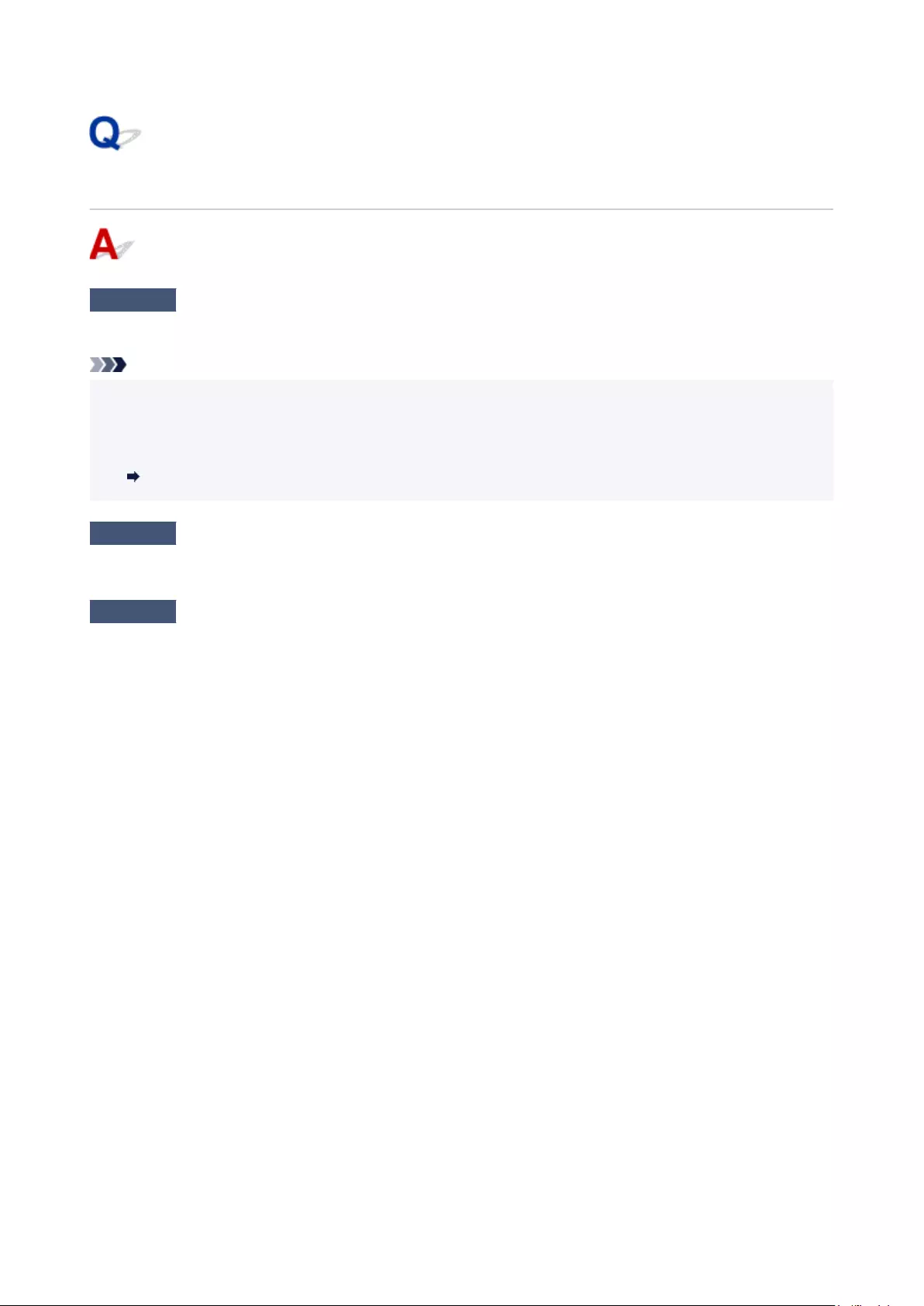
Cannot Print over TCP/IP Network
Check 1 Is the printer's IP address configured correctly?
Make sure the printer's IP address is configured correctly.
Note
•For Windows, you can configure the printer's IP address using IJ Network Device Setup Utility.
•
For details, refer to "Performing/Changing Network Settings" > "Performing Network Settings" in IJ Network
Device Setup Utility Guide.
IJ Network Device Setup Utility Guide
Check 2 Are the printer's TCP/IP network settings configured correctly?
Make sure the printer's TCP/IP network settings are configured correctly.
Check 3 Is the computer you are trying to print from configured correctly?
Make sure the computer's TCP/IP network settings are configured correctly.
682
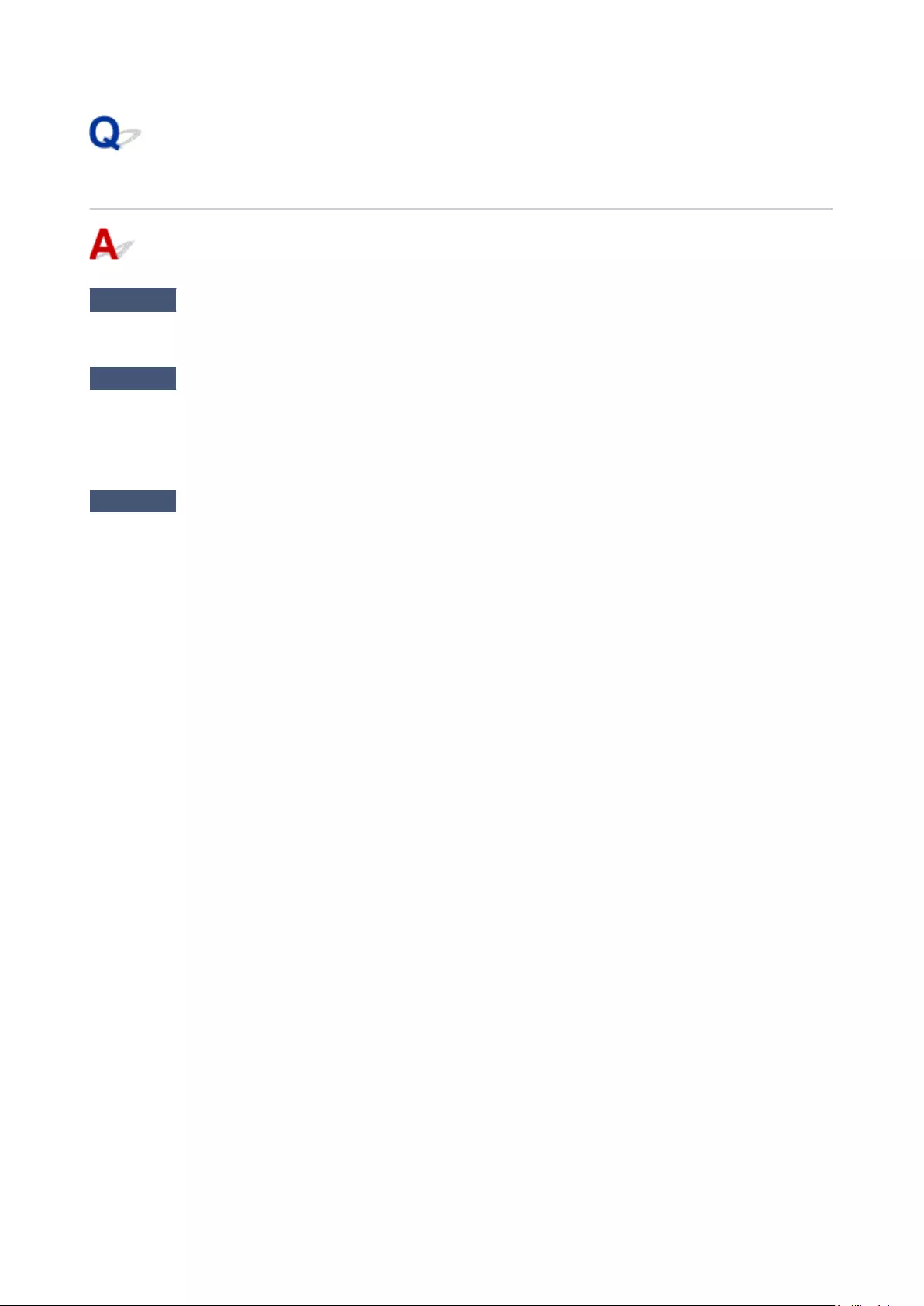
Cannot Print over Bonjour networks
Check 1 Is the computer you are trying to print from configured correctly?
Make sure the computer is configured correctly.
Check 2 Are the computer and printer on the same network?
Due to the nature of Bonjour, printing may not be possible if the printer is on another network behind a router.
Make sure the computer and printer are on the same network. For information about network settings, ask your
network administrator.
Check 3 Are the printer's Bonjour settings configured correctly?
Make sure the Bonjour settings are configured correctly.
683
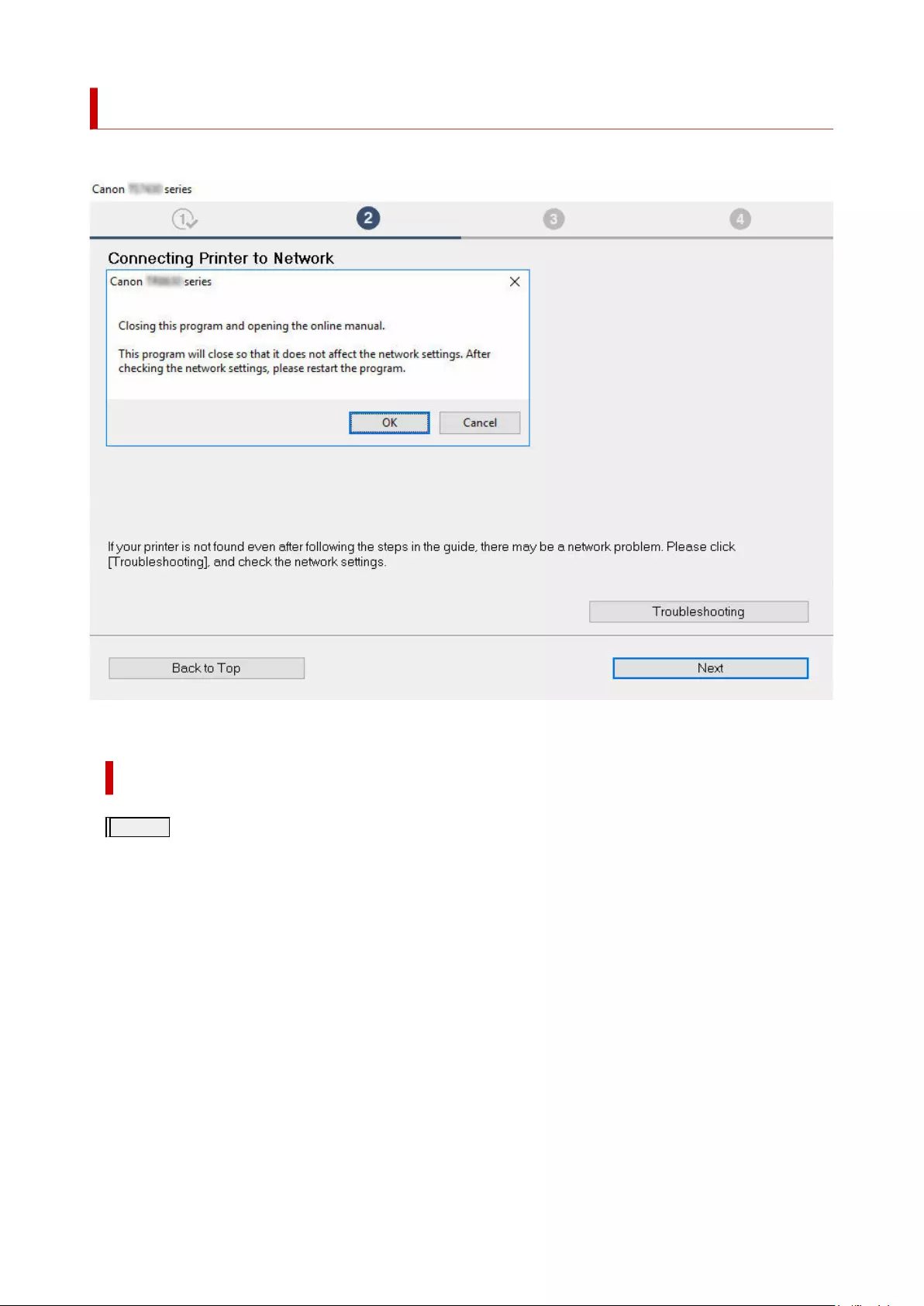
Cannot Find Printer During Setup
If you cannot find the printer on network during setup, check the following.
When you complete all the checking, try to set up from the beginning.
Items to check for Wi-Fi
Step 1 Check the basic items for Wi-Fi
1. Check power status
1.
Are printer and network device (router, etc.) turned on?
Stop setting up, and check if the router (modem) is turned on and then check if the printer is turned on.
1. Check if network devices such as router are turned on.1.
If network devices are not turned on, turn on the power. If the network devices are on, turn them off and on again.
It may take a while for the network device to become ready for use once they are turned on.
Proceed once the network devices such as router are ready for use.
2. Check if the printer is turned on2.
If printer is not turned on, turn on the power. If the printer is on, turn them off and on again.
2. Check PC network connection
2.
Can you view any web pages on your computer? Make sure the computer and network device (wireless router, etc.) are configured and the
computer is connected to the network.
If you cannot view web pages on your computer, check wireless router network connection settings, such as IP address filtering, MAC address
filtering, and DHCP function.
685
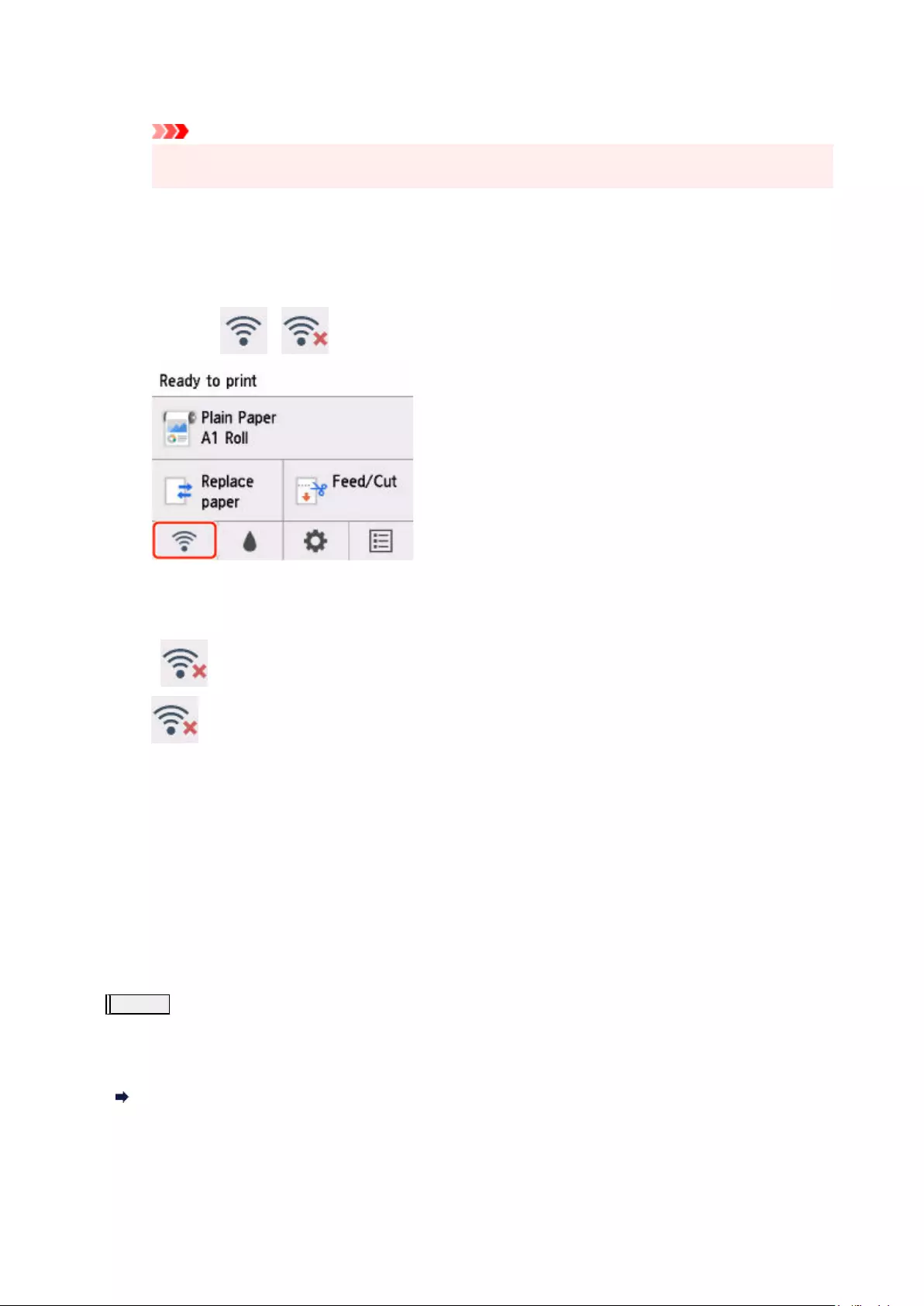
For more on checking the settings of the wireless router, refer to the instruction manual supplied with the wireless router or contact the
manufacturer.
Important
•Depending on the wireless router, note that different network name (SSID) is assigned for a bandwidth (2.4 GHz or 5 GHz) or its usage (for
•
PC or game machine), using alphanumeric characters at the end of network name (SSID).
Once you complete checking the wireless router, configure the network settings for your computer. For the procedures, refer to the instruction
manual supplied with the computer, or contact the manufacturer.
Once you complete setting up the wireless router and your computer, configure the settings on your computer in order to view web pages, using the
information of the wireless router.
3. Check printer's Wi-Fi settings
3.
Make sure the or icon is displayed on the touch screen.
If icon is not displayed:
The printer is not set to enable wireless communication. Change the printer settings in order to use Wi-Fi. Turn on wireless communication on the
printer.
If icon is displayed:
icon indicates that the wireless router and the printer are not connected. Reconsider the locations of the wireless router and the printer.
•Checking the location of wireless router:
•
After checking the wireless router setting, make sure the printer is not placed too far away from the wireless router. The printer can be up 164
ft. (50 m) from the wireless router indoors if unobstructed. Make sure the printer is close enough to the wireless router to be used.
Place the printer and wireless router where there are no obstacles between them. Wireless communication between different rooms or
floors is generally poor. Wireless communication can be impeded by building materials containing metal or concrete. If the printer cannot
communicate with the computer over a Wi-Fi due to a wall, place the printer and the computer in the same room.
In addition, if a device like a microwave oven that emits radio waves of the same frequency bandwidth as a wireless router is nearby, it may
cause interference. Place the wireless router as far away from interference sources as possible.
• Checking the location of printer:•
Make sure that the printer is not placed behind an object. The printer may not be connected when placed behind a wall or on a shelf. Try to
place the printer in a location where there is no obstacle.
For details, see the instruction manual supplied with the wireless router or contact the manufacturer.
Step 2 Solve the Problem, Using IJ Network Device Setup Utility
Diagnose and repair the network connections using IJ Network Device Setup Utility.
Download IJ Network Device Setup Utility from the below page, and install it on your computer.
Checking Printer Connection Status Using IJ Network Device Setup Utility
If you can connect to the network, try to set up from the beginning.
686
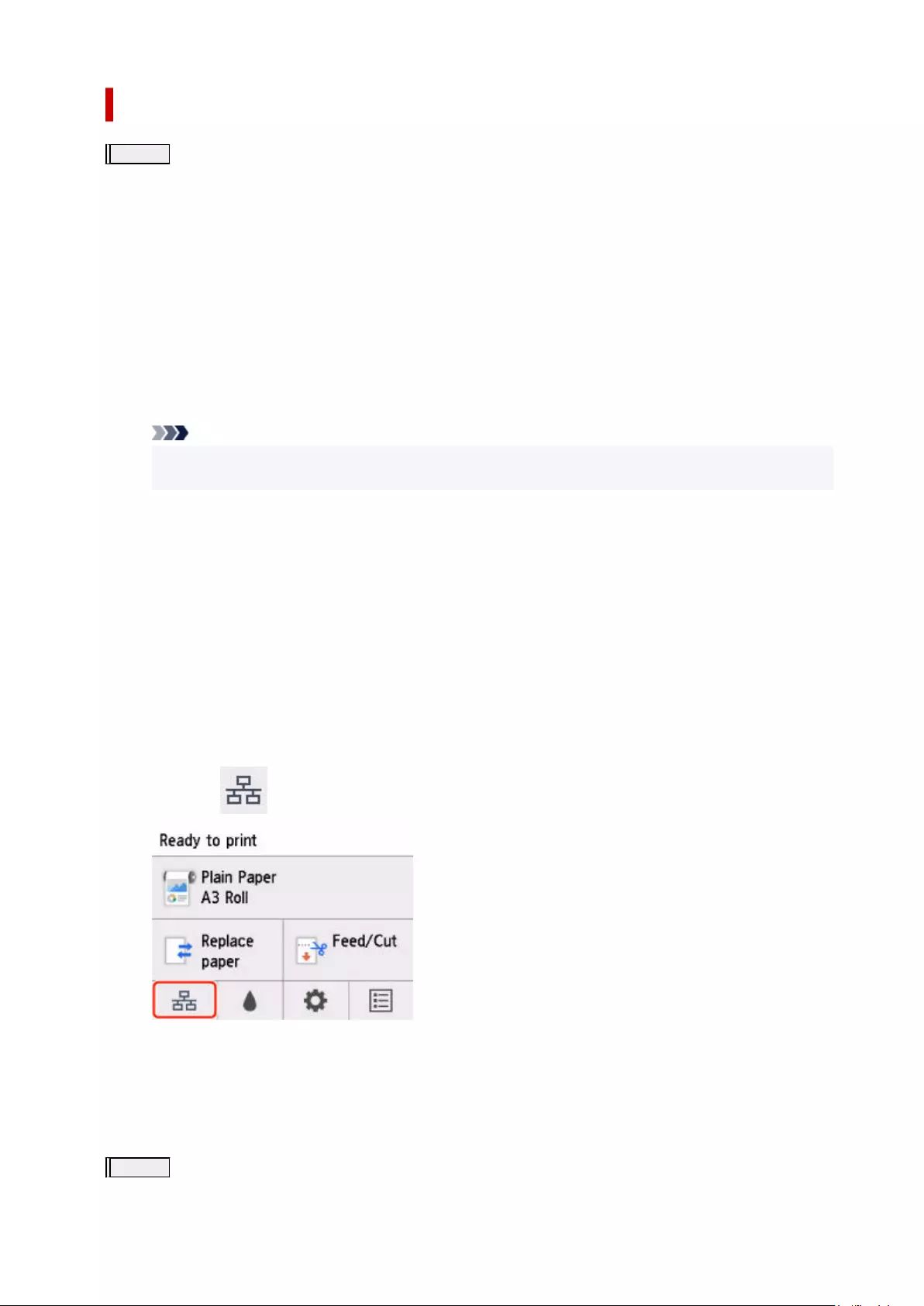
Items to check for wired LAN
Step 1 Check the basic items for wired LAN
1. Check the power and LAN Cable
1.
When the printer cannot be found on the setup screen, using wired LAN connection setup, make sure that all the network devices are connected
with the router and the hub via LAN cables and that all the devices are turned on.
If LAN cable is not connected:
Connect the router, hub, computer and printer via LAN cables.
Make sure the printer is turned on.
Make sure the printer is turned on, and make sure that the router and the hub are turned on.
If LAN cable is connected, and printer and network device are off:
Turn on printer or network device.
If LAN cable is connected, and printer and network device are on:
If they are on, turn them off and on again.
Note
•It may take a while for the printer and network device to become ready for use once they are turned on again. After turning it on, wait for a
•
while and proceed.
2. Check PC network connection
2.
Can you view any web pages on your computer? Make sure the computer and network device (router, etc.) are configured and the computer is
connected to the network.
If you cannot view web pages, unplug the cable connected to the router's WAN side. Connect the cable directly to the computer to see if you can
view web pages on the Internet.
Check the settings for the router if you were able to view web pages. For details on checking the settings of the router, refer to the instruction
manual supplied with the router or contact the manufacturer. Refer also to the instruction manual regarding the connection of the provider.
Once you complete checking the router, configure the network settings of your computer. For the procedures, refer to the instruction manual
supplied with the computer, or contact the manufacturer.
Once you complete setting up the router and your computer, configure the settings on your computer to view web pages, using the information of
the router.
Proceed once you can view web pages on your computer.
3. Check printer's wired LAN settings
3.
Make sure the icon is displayed on the touch screen.
If icon is not displayed:
The printer is not set to enable wired communication. Change the printer settings in order to use wired LAN.
When you complete checking [Step 1] above, try to set up from the beginning.
If the printer cannot be detected after trying to set up from the beginning, proceed to [Step 2].
Step 2 Solve the Problem, Using IJ Network Device Setup Utility
687

Diagnose and repair the network connections using IJ Network Device Setup Utility.
Download IJ Network Device Setup Utility from the below page, and install it on your computer.
Checking Printer Connection Status Using IJ Network Device Setup Utility
If you can connect to the network, try to set up from the beginning.
688
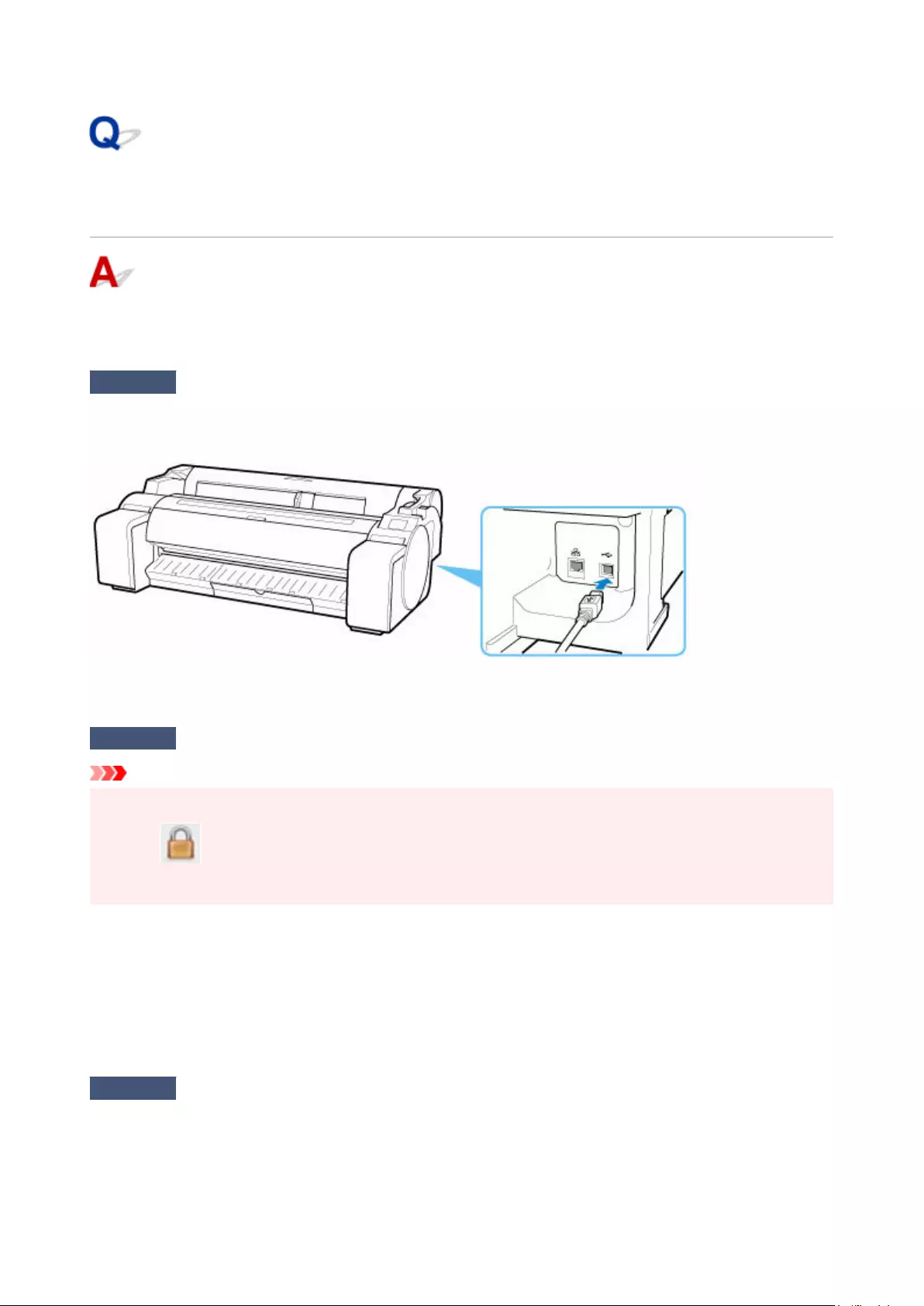
Cannot Proceed beyond Printer Connection Screen/Connect Cable
Screen
If you cannot proceed beyond the Printer Connection screen or the Connect Cable screen, check the
following.
Check 1 Make sure USB cable is securely plugged in to printer and computer.
Connect the printer and the computer using a USB cable as the illustration below. The USB port is located at the
back side of the printer.
Check the items below only if you cannot proceed beyond the Printer Connection screen.
Check 2 Follow procedure below to connect printer and computer again.
Important
•For macOS, make sure the lock icon is on the lower left of the Printers & Scanners screen.
•
If the icon (locked) is displayed, click the icon to unlock. (The administrator name and the password
are necessary to unlock.)
1. Turn off printer.1.
2. Unplug USB cable from printer and computer and connect it again.
2.
3. Turn on printer.3.
Check 3 If you cannot resolve problem, follow procedure below to reinstall printer driver.
1. Exit setup.
1.
689
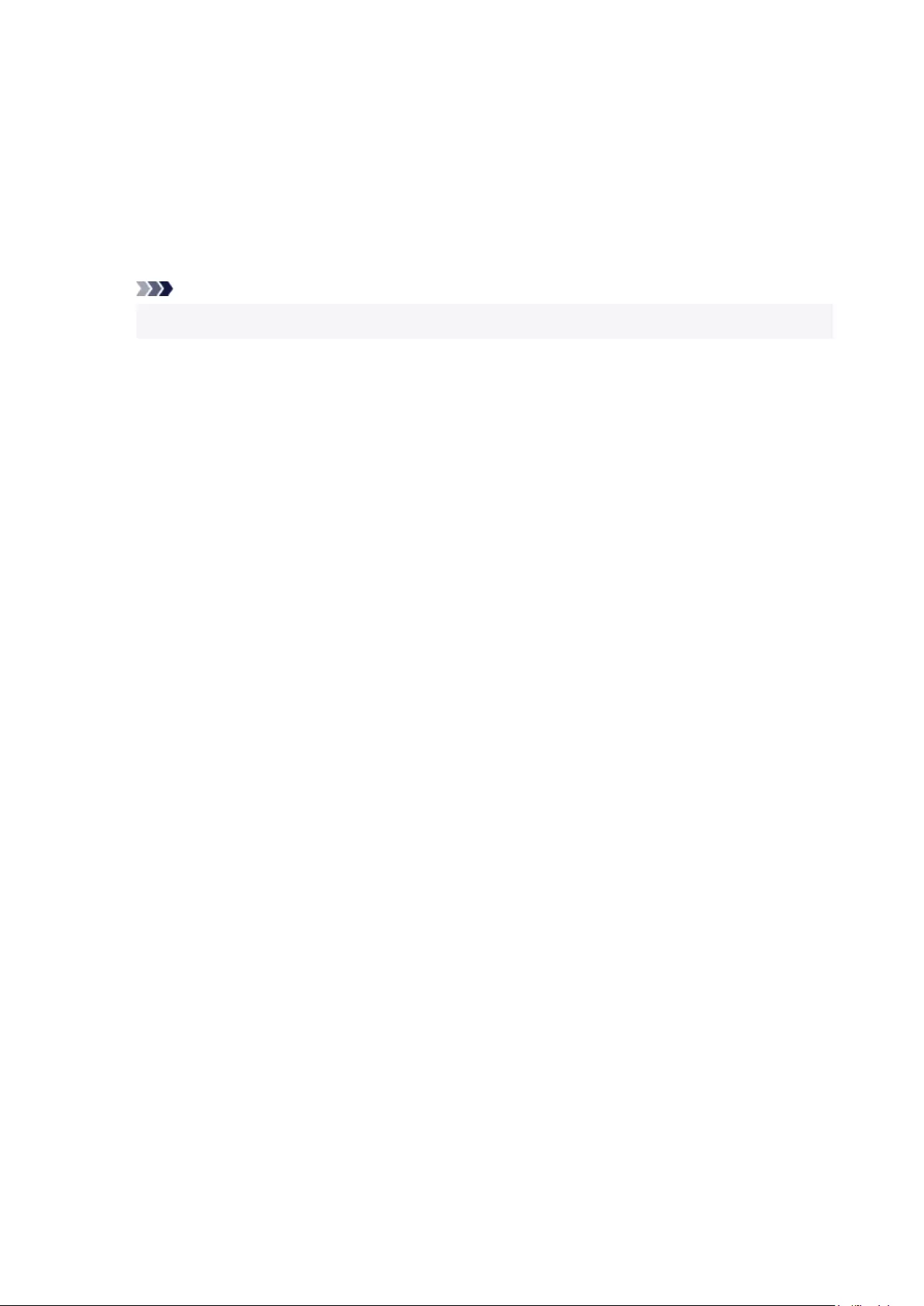
2. Turn off printer.2.
3. Restart computer.3.
4. Make sure you have no application software running.4.
5. Click here and perform setup.
5.
Note
•You can use the Setup CD-ROM to redo setup.
690
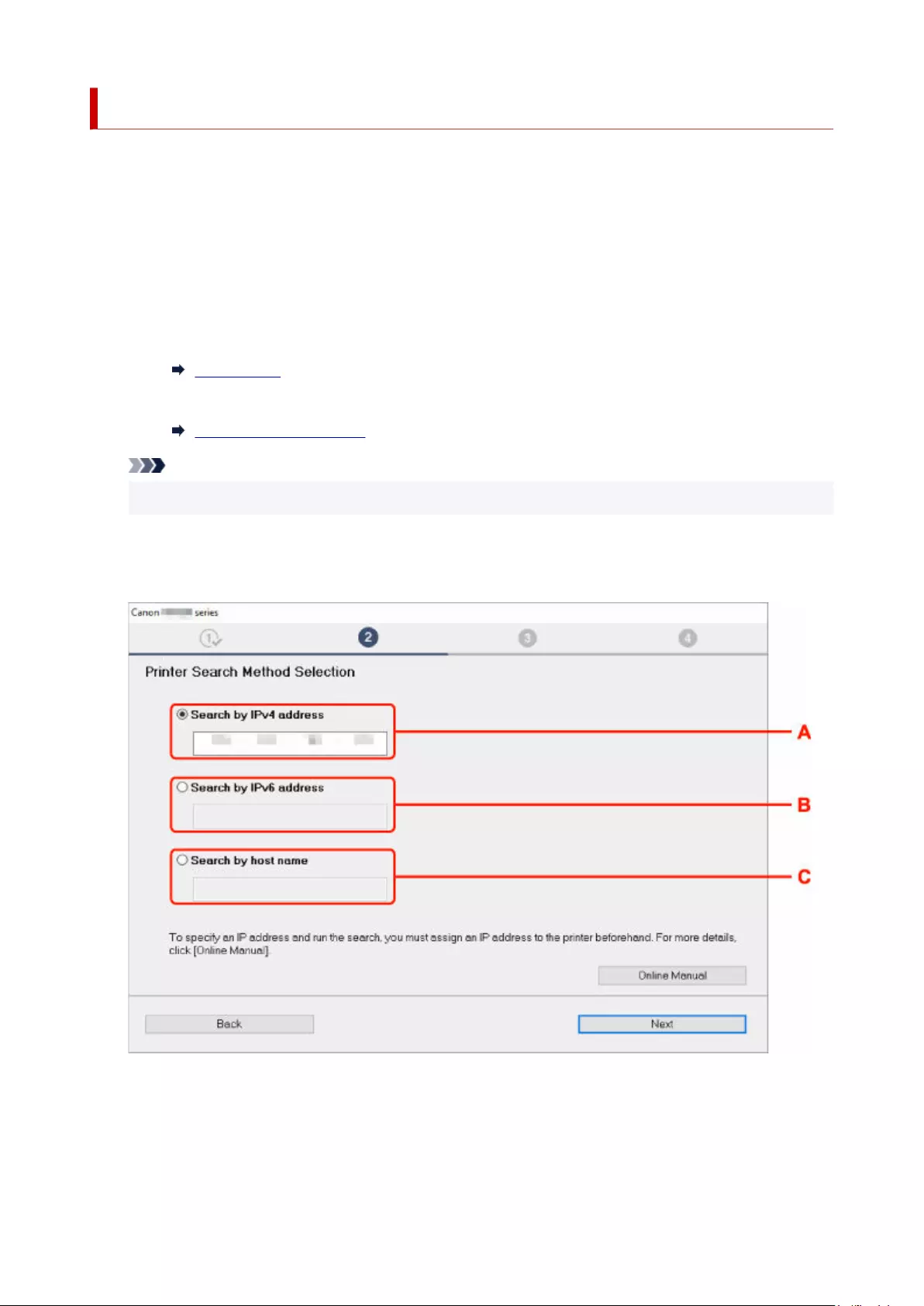
Searching Printer by IP Address or Host Name During Setup
If the printer cannot be found on the Select Printer screen, search for the printer by an IP address or
host name. Click Search By IP Address on the screen which appears by clicking Printer Not Found. The
screen to select searching criteria appears.
1. Check printer's IP address or host name.1.
To check the printer's IP Address or host name, print out the network settings information or use the
touch screen to display it.
•Display on the touch screen.
•
LAN settings
•Print the network settings.
•
Printing Network Settings
Note
•If you use the printer in an office, ask the network administrator.
2. Specify searching method.2.
Select one of the methods below.
A: Search by IPv4 address
Select to search for printers by IPv4 address.
B: Search by IPv6 address
Select to search for printers by IPv6 address.
691
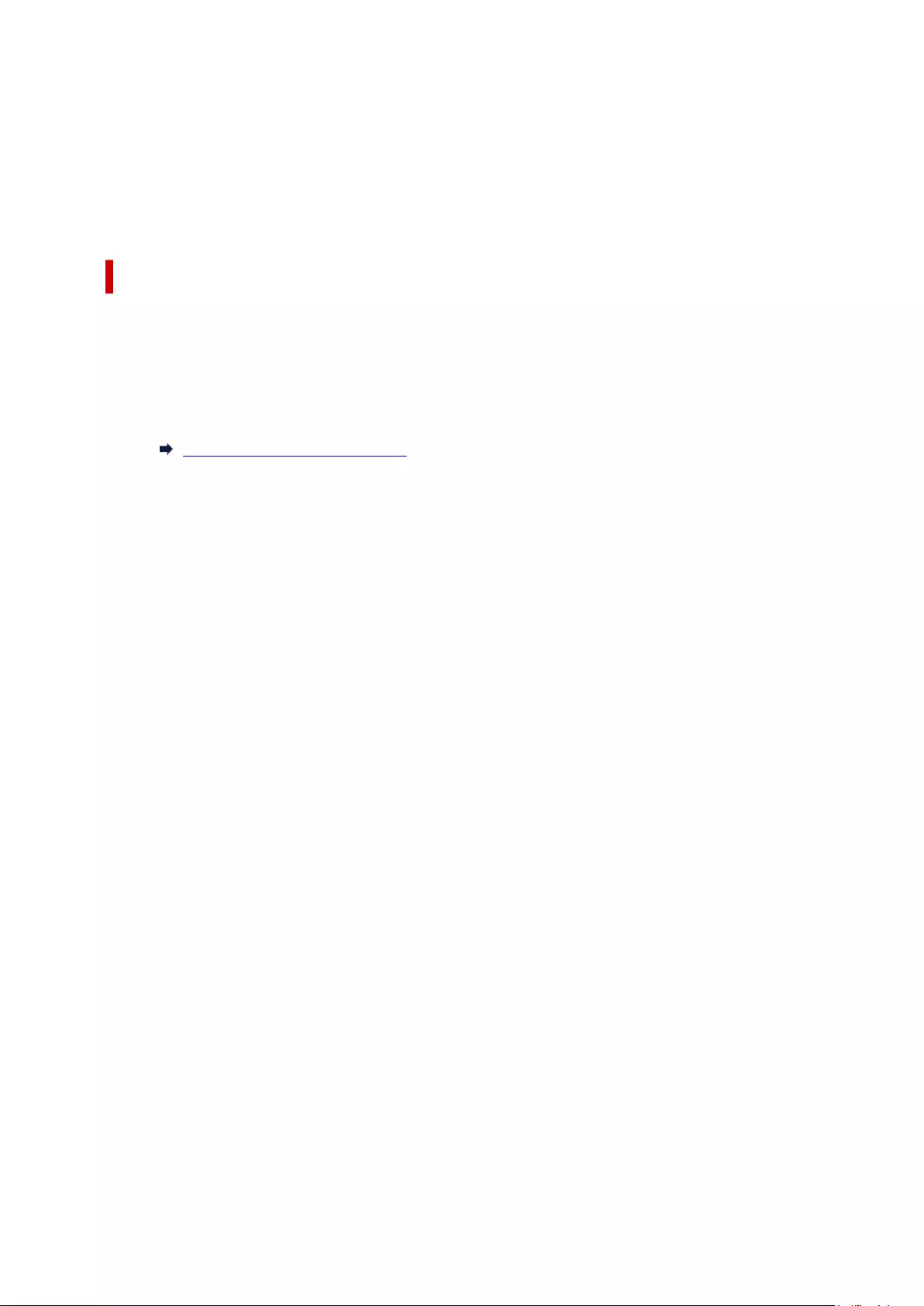
C: Search by host name
Select to search for printers by host name. A host name is referred to as LLMNR host name or
Bonjour name.
3. Enter IP address or host name and click Next.3.
Printer search starts.
If an error screen appears:
Resolve the error according to the instruction on the screen.
If the IP address you entered is already used for another device, follow the procedure below to specify
printer's IP address.
1. Select LAN settings on HOME screen.
1.
Home Screen Menu Composition
If you specify the administrator password, enter the password.
2. Select Wi-Fi.
2.
3. Select Settings.
3.
4. Select Advanced.4.
5. Select TCP/IP settings.5.
•If you specify IPv4 address:•
1. Select IPv4.1.
2. Select Yes on the displayed screen.2.
3. Select IP address.3.
4. Select Manual setup.
4.
Selecting Auto setup specifies the IP address automatically.
5. Enter IP address.
5.
6. Select OK.
6.
7. Enter subnet mask.
7.
8. Select OK.
8.
9. Enter default gateway.
9.
692
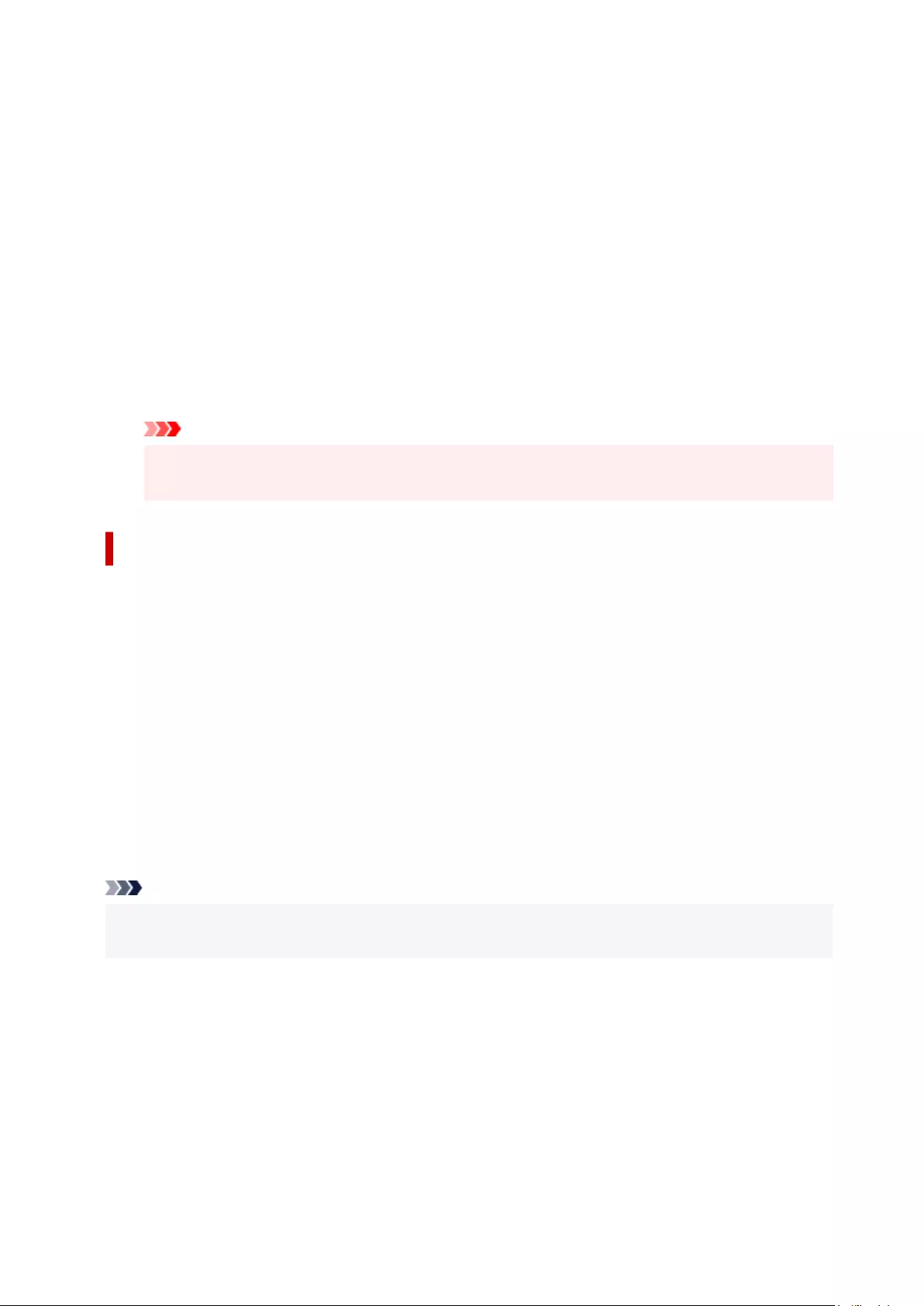
10. Select OK.10.
The IPv4 address has been specified.
•If you specify IPv6 address:•
1. Select IPv6.
1.
2. Select Yes on the displayed screen.2.
3. Select Enable/disable IPv6.
3.
4. Select Enable.4.
The IPv6 address has been specified.
Important
•If firewall is enabled on the computer, printers on a different subnet may not be detected.
Disable firewall.
If firewall interferes with printer search:
•If a firewall message appears:•
If a firewall message appears warning that Canon software is attempting to access the network, set
the security software to allow access.
After allowing the software to access, specify the IP address or host name and search for printers
again.
If the printer is found, follow the instructions on the screen to continue to set up the network
communication.
•If no firewall message appears:•
Temporarily disable the firewall and specify the IP address or host name to search for printers again.
After the setup is complete, re-enable the firewall.
Note
• For more on firewall settings of your operating system or security software, see instruction manual or
contact its manufacturer.
693
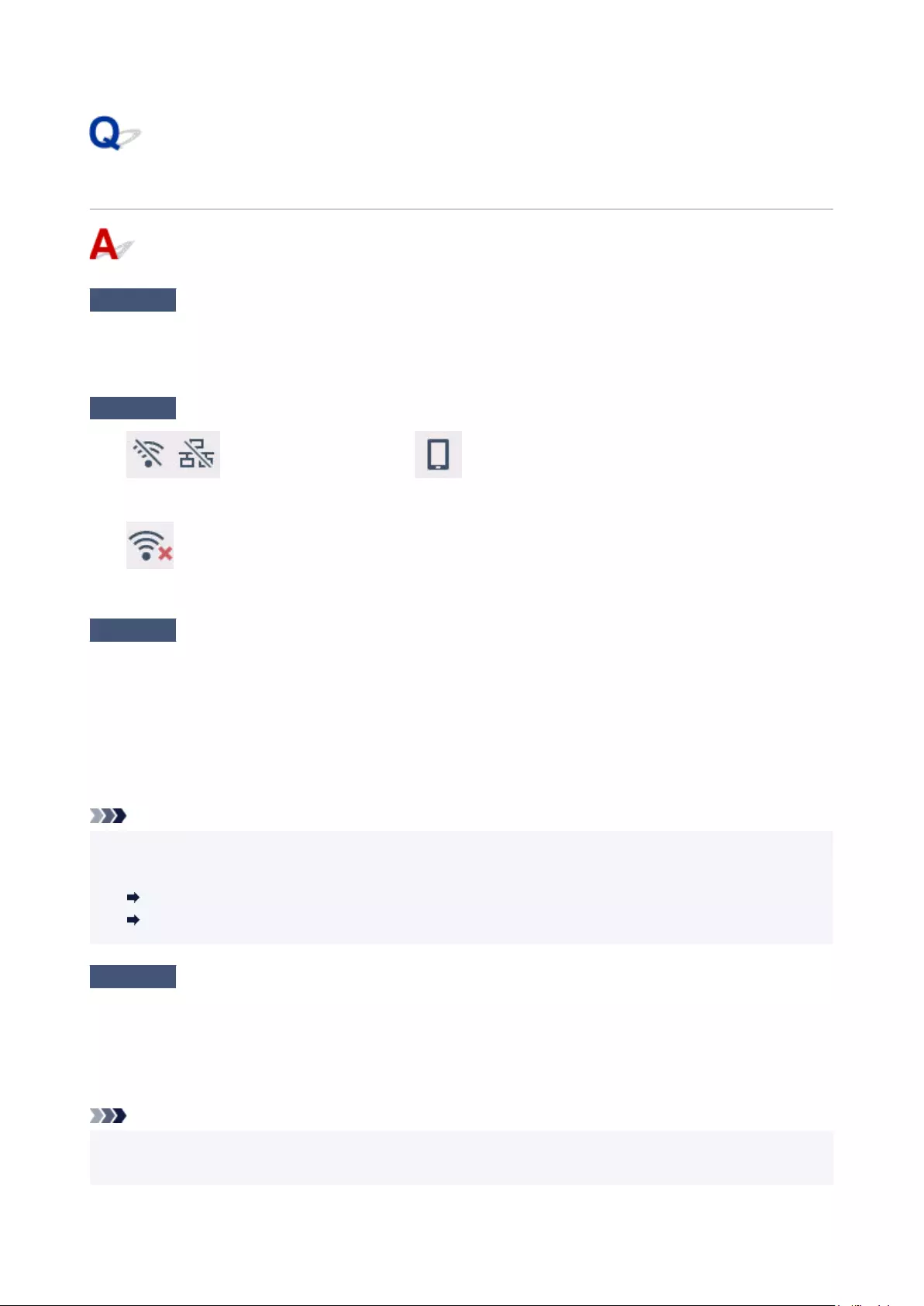
Cannot Find Printer while Using Wi-Fi
Check 1 Make sure printer is turned on.
If not, make sure the printer is securely plugged in and press ON button to turn on.
The ON lamp flashes while the printer is initializing. Wait until the ON lamp stops flashing and remains lit.
Check 2 Check the network status on the touch screen.
If the icon is displayed, or only the icon is displayed, Wi-Fi is disabled.
Set Enable/disable Wi-Fi in the touch screen menu to Enable.
If the icon is displayed, see Check 3 or later checking items to make sure whether printer setup is
complete or the settings of wireless router to connect are correct.
Check 3 Make sure printer setup is complete on the computer.
If it is not, perform setup.
•For Windows:
•
Perform setup using the Setup CD-ROM or from Setup Guide.
•For macOS:
•
Perform setup from Setup Guide.
Note
•IJ Network Device Setup Utility allows you to diagnose and repair the network status. Download it from the
•
web page.
For Windows
For macOS
Check 4 Make sure printer and wireless router network settings match.
Make sure the network settings of the printer (e.g. wireless router name, SSID, network key, etc.) are identical
with those of the wireless router.
To check the settings of the wireless router, refer to the instruction manual provided with it or contact its
manufacturer.
Note
• Use 2.4 GHz frequency band to connect to a wireless router. Match the SSID set for the printer with that for
2.4 GHz frequency band of the wireless router.
694
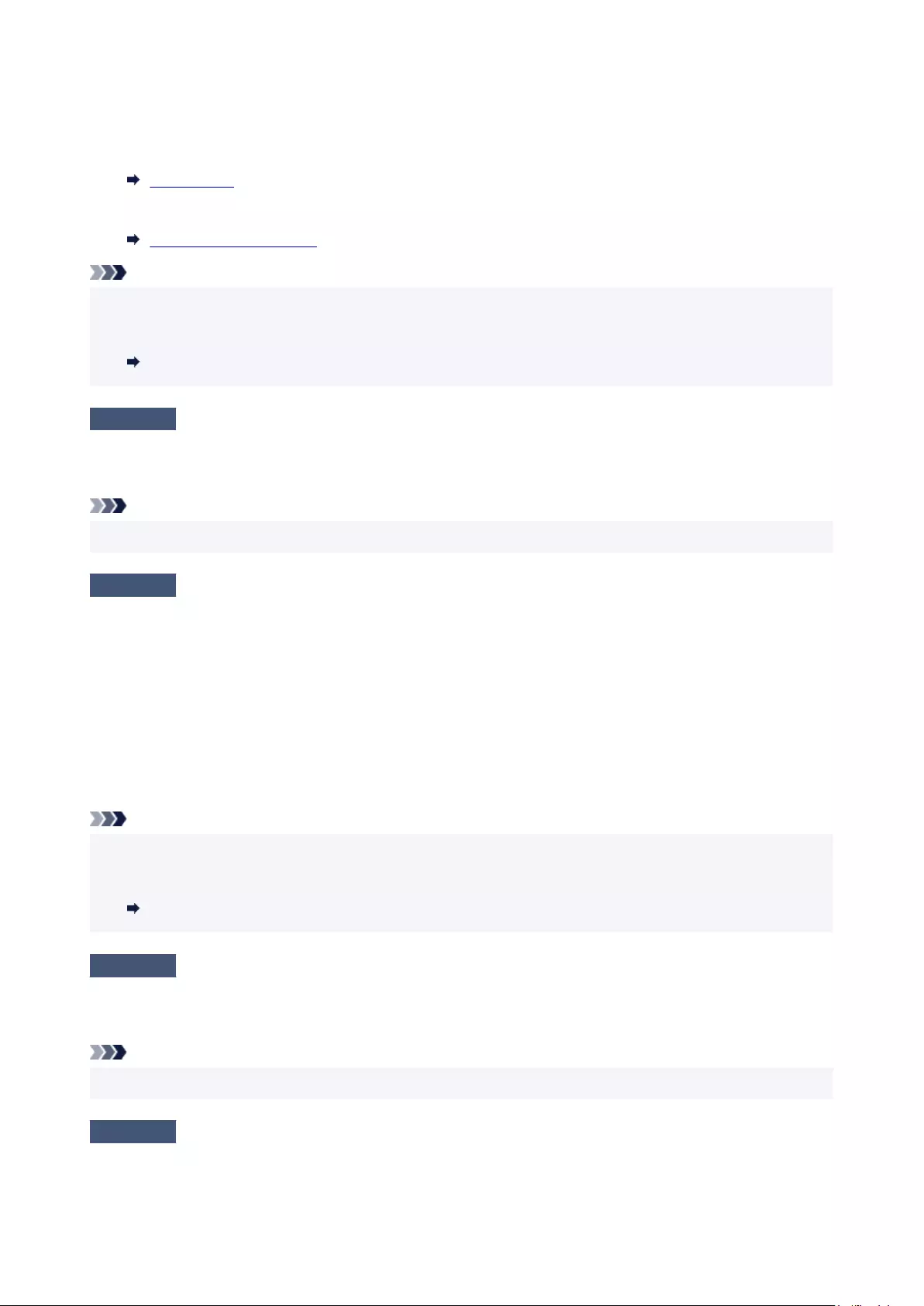
To check the SSID set for the printer, print out the network setting information or use the operation panel to
display it.
• Display on the touch screen.•
LAN settings
• Print the network settings.
•
Printing Network Settings
Note
•IJ Network Device Setup Utility allows you to diagnose and repair the network status.
•
Select the link below to download IJ Network Device Setup Utility and install it.
Checking Printer Connection Status Using IJ Network Device Setup Utility
Check 5 Make sure the printer is not placed too far away from the wireless router.
If the distance between the printer and wireless router is too far, wireless communication becomes poor. Place
the printer and wireless router close to each other.
Note
•Though an antenna is attached to most wireless routers, note that some of them have it inside.
Check 6 Make sure wireless signal is strong. Monitor signal strength and move printer
and wireless router as necessary.
Place the printer and wireless router where there are no obstacles between them. Wireless communication
between different rooms or floors is generally poor. Wireless communication can be impeded by building
materials containing metal or concrete. If the printer cannot communicate with the computer over a Wi-Fi due to
a wall, place the printer and the computer in the same room.
In addition, if a device like a microwave oven that emits radio waves of the same frequency bandwidth as a
wireless router is nearby, it may cause interference. Place the wireless router as far away from interference
sources as possible.
Note
•IJ Network Device Setup Utility allows you to diagnose and repair the network status.
•
Select the link below to download IJ Network Device Setup Utility and install it.
Checking Printer Connection Status Using IJ Network Device Setup Utility
Check 7 Make sure the computer is connected to the wireless router.
For more on how to check the computer settings or connection status, see your computer instruction manual or
contact its manufacturer.
Note
• If you use a smartphone or tablet, make sure the Wi-Fi is enabled on the device.
Check 8 Make sure Enable bidirectional support is selected in the Ports sheet of the
properties dialog box of the printer driver. (Windows)
695
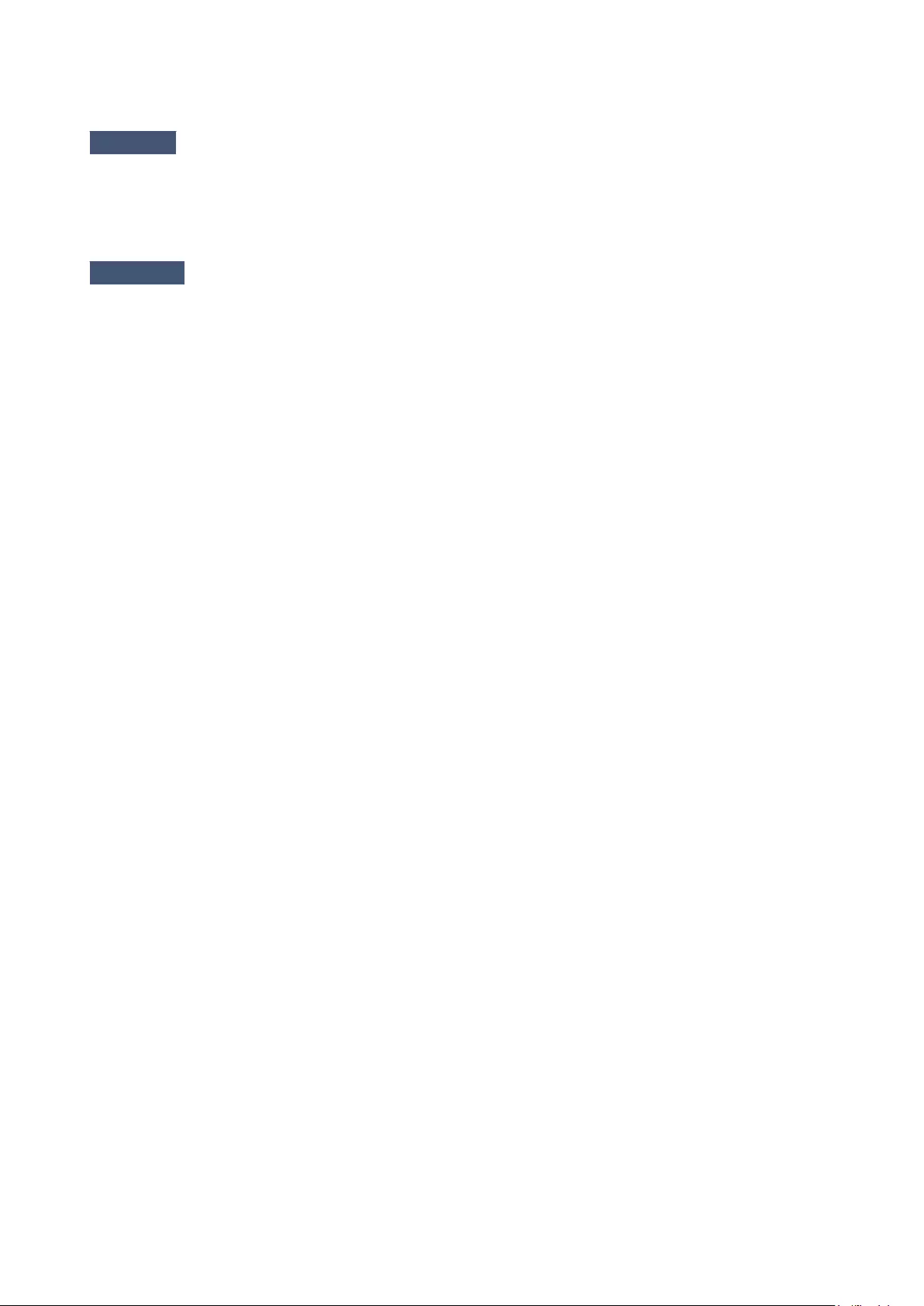
If not, select it to enable bidirectional support.
Check 9 Make sure security software's firewall is off.
If your security software's firewall is on, a message may appear warning you that Canon software is attempting
to access the network. If this warning message appears, set security software to always allow access.
If you are using any programs that switch between network environments, check their settings.
Check 10 If printer is connected to an AirPort Base Station via LAN, make sure you use
alphanumeric characters for network identifier (SSID). (macOS)
If the problem is not resolved, redo setup.
• For Windows:•
Perform setup using the Setup CD-ROM or from Setup Guide.
• For macOS:•
Perform setup from Setup Guide.
696
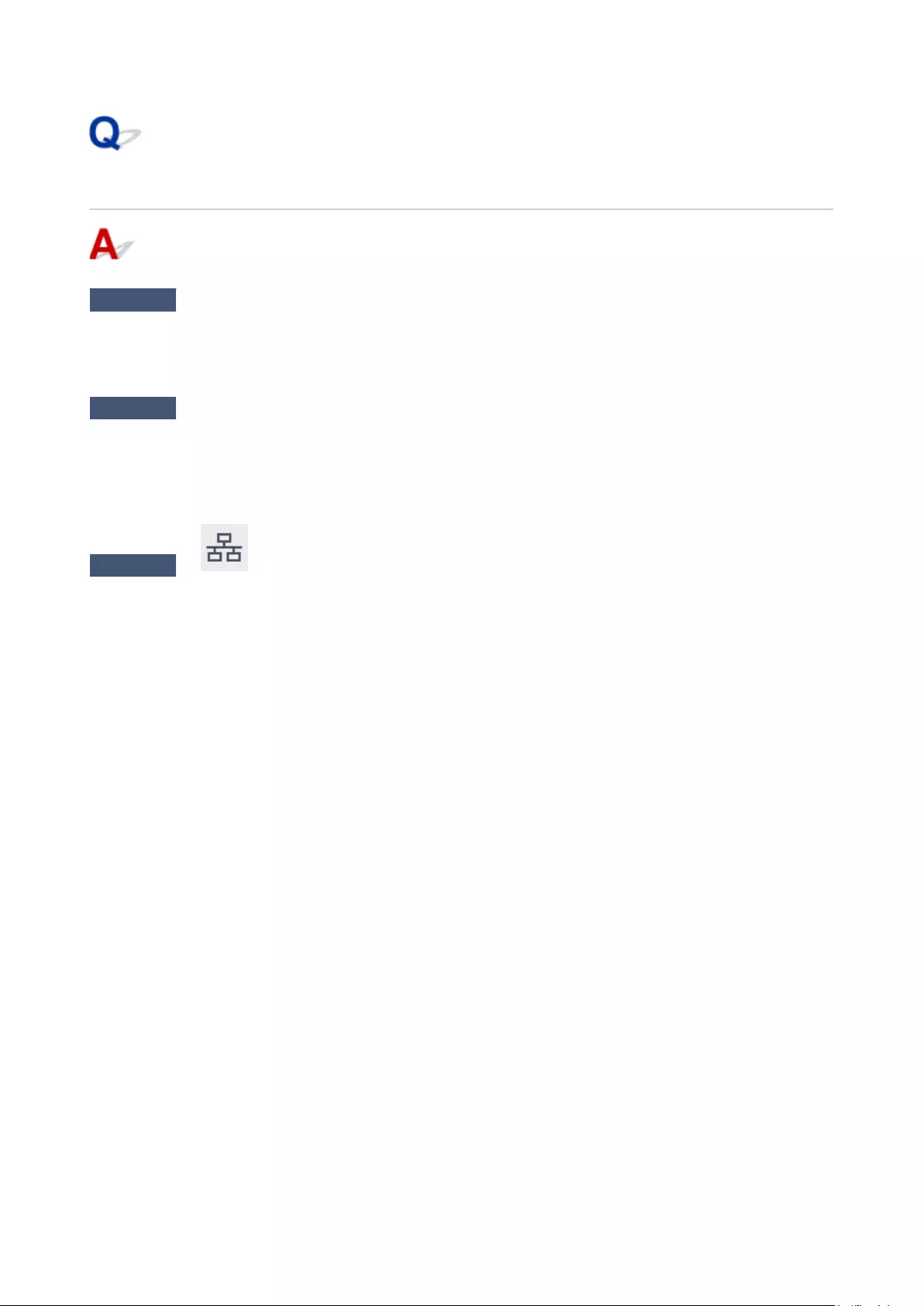
Cannot Find Printer while Using Wired LAN
Check 1 Make sure printer is turned on.
If not, make sure the printer is securely plugged in and press ON button to turn on.
The ON lamp flashes while the printer is initializing. Wait until the ON lamp stops flashing and remains lit.
Check 2 Make sure LAN cable is connected properly.
Make sure the printer is connected to the router with the LAN cable. If the LAN cable is loose, connect the cable
properly.
If the LAN cable is connected to the WAN side of the router, connect the cable to the LAN side of the router.
Check 3 Is icon displayed on touch screen?
If the icon is not displayed, wired LAN is disabled.
If not, select LAN settings > Wired LAN > Settings, and then select Enable for Enable/disable Wired LAN.
697
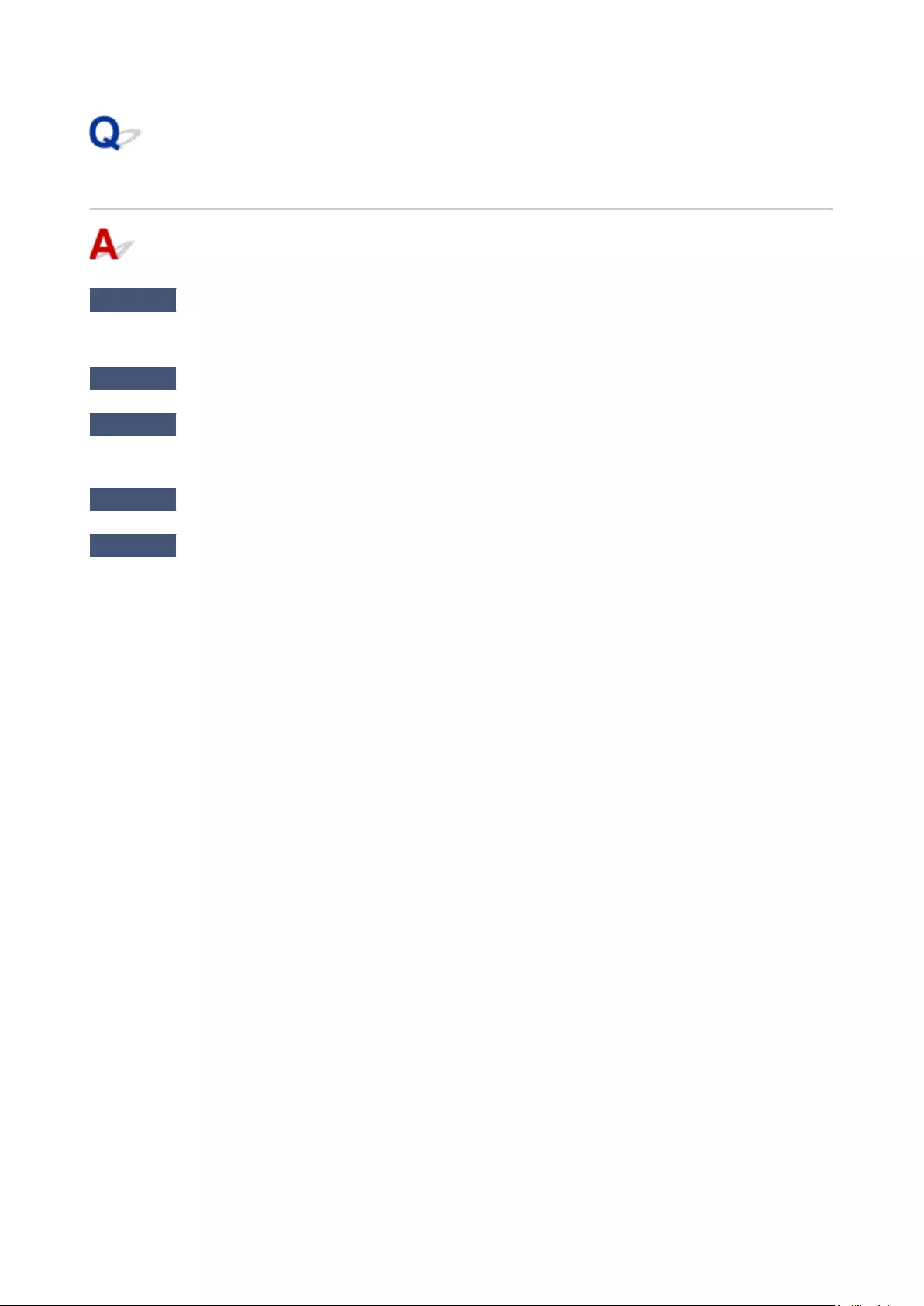
Cannot Print Using AirPrint
Check 1 Make sure printer is turned on.
If the printer is turned on, turn it off and back on, and then check whether the issue is resolved.
Check 2 Make sure printer is registered to your computer.
Check 3 Make sure printer is connected by LAN to same network subnet as AirPrint
compliant device when printing over LAN.
Check 4 Make sure printer has enough paper and ink.
Check 5 Make sure no error message is displayed on printer's touch screen.
698
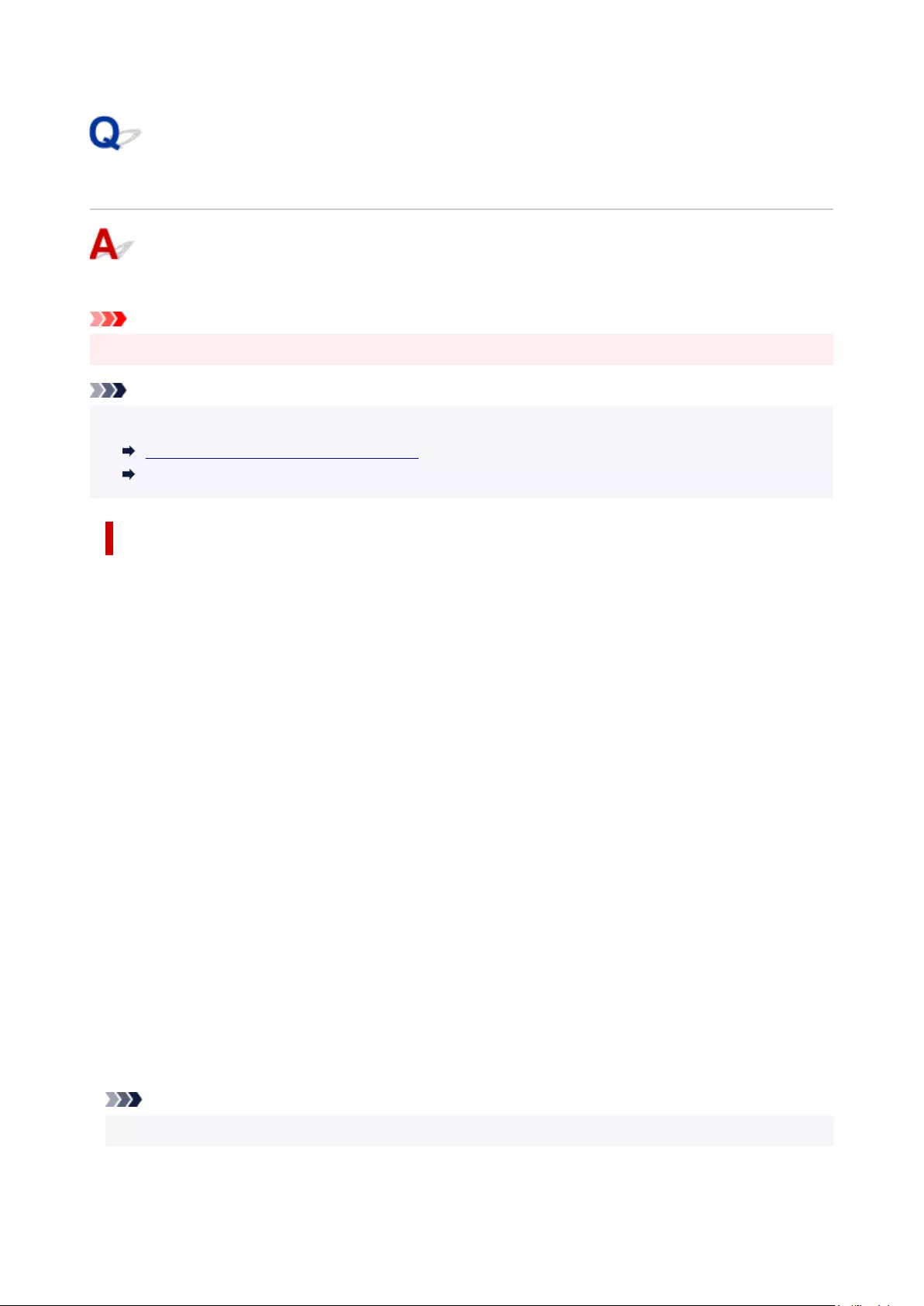
Removing Printer Software
Follow the steps below to remove utility software installed on the computer.
Important
• You must log in as an administrator or have administrator permissions.
Note
• See the pages below for how to remove printer drivers.•
Deleting the Unnecessary Printer Driver (Windows)
Delete the Unnecessary Canon IJ Printer from the Printer List (macOS)
Removing the IJ Network Device Setup Utility (Windows)
Follow the steps below to remove the IJ Network Device Setup Utility.
• Windows 10•
1. Click start, select Windows System, and then select Control Panel.
1.
2. Under Programs, select Programs and Features, select IJ Network Device Setup
2.
Utility from the list of programs, and then click Uninstall.
• Windows 8.1•
1. Use the Settings charm on the desktop to open the Control Panel.
1.
2. Under Programs, select Programs and Features, select IJ Network Device Setup
2.
Utility from the list of programs, and then click the Uninstall button.
• Windows 7•
1. Select Control Panel from the start menu.
1.
2. Select Uninstall a program.
2.
3. Select IJ Network Device Setup Utility, and then click the Uninstall button.
3.
Note
• If the User Account Control dialog box is displayed, click Yes.
700
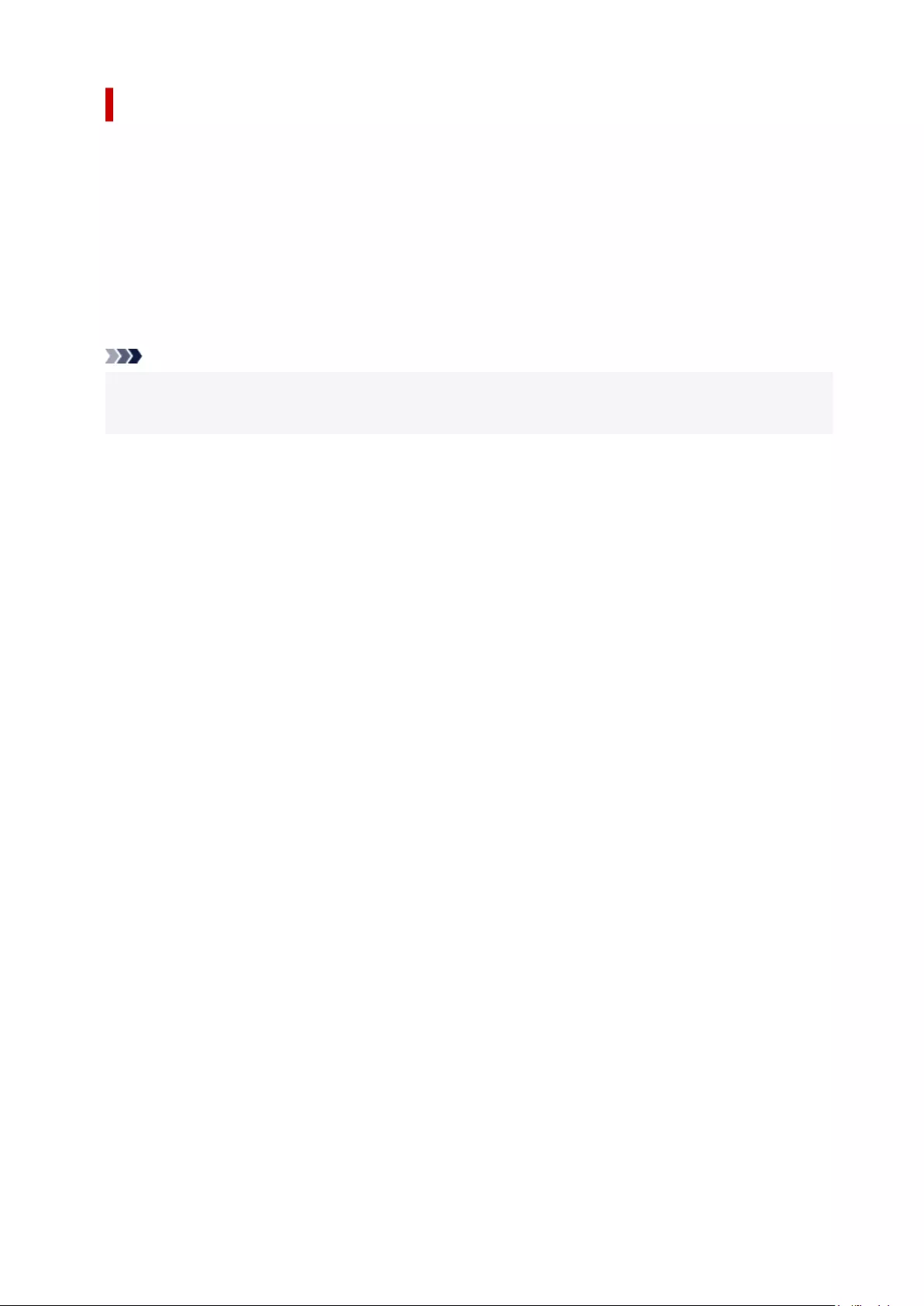
Removing the IJ Network Device Setup Utility (macOS)
Follow the steps below to remove the IJ Network Device Setup Utility.
1. Select Applications from Go menu of Finder, double-click Canon Utilities > IJ Network1.
Device Setup Utility, and then drag Canon IJ Network Device Setup Utility icon into
Trash.
2. Restart computer.
2.
Empty the Trash and restart your computer.
Note
• To reinstall IJ Network Device Setup Utility, uninstall IJ Network Device Setup Utility and install it•
again from the Canon website.
701
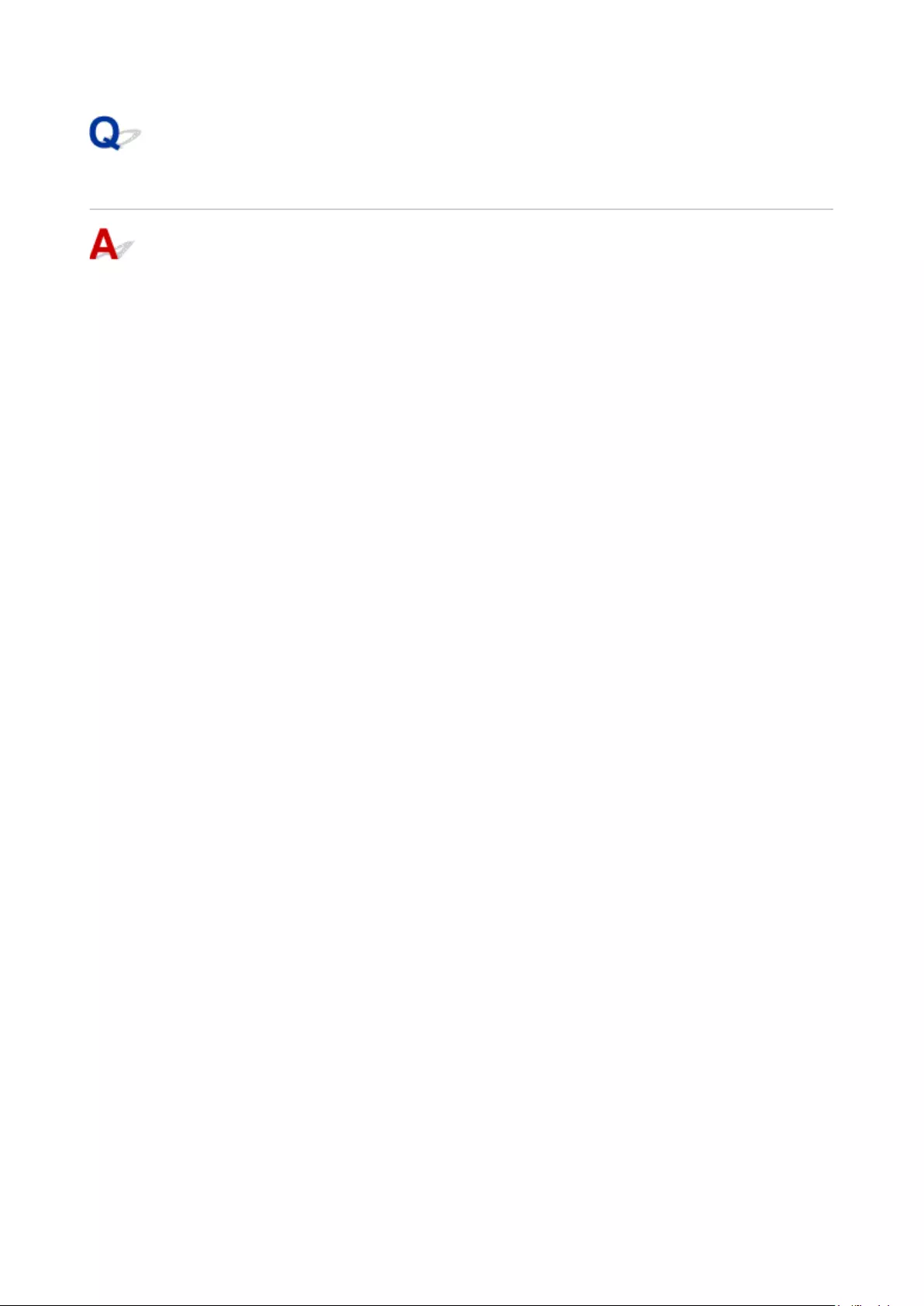
Taking Time to Setup Process (Windows)
If Windows update starts during setup, or if you perform setup while Windows update is in progress, it may
take a while to register the printer or to perform other processes.
Wait for a while. This is not a malfunction.
702
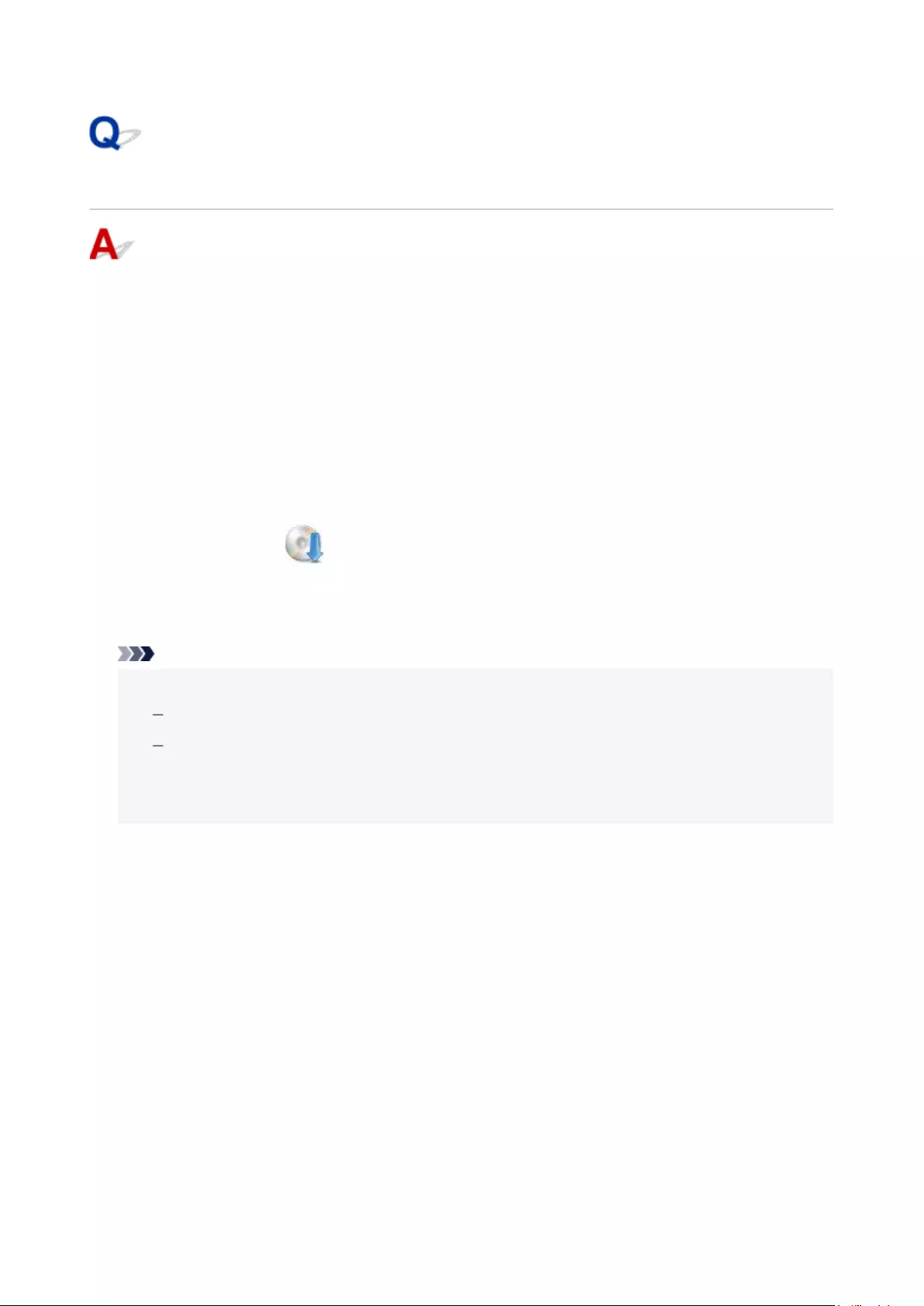
Failed to Printer Driver Installation (Windows)
•If installation does not start when you insert Setup CD-ROM:•
Follow the instructions below to start the installation.
1. Make the following settings.
1.
◦In Windows 10, click Start button > File Explorer, and then click This PC from list on left.
◦
◦In Windows 8.1, select Explorer icon in Taskbar on Desktop, and then select This PC from
◦
list on left.
◦In Windows 7, click Start, and then click Computer.
◦
2. Double-click the CD-ROM icon in the window that appears.2.
If the contents of the CD-ROM appear, double-click MSETUP4.EXE.
If you cannot install the printer driver with the Setup CD-ROM, install it from the Canon website.
Note
• If the CD-ROM icon does not appear, try the following:•
Remove the CD-ROM from your computer and reinsert it.
Restart your computer.
If the icon still does not appear, try a different disc and see if it appears. If it does, there is a
problem with the Setup CD-ROM. Contact your nearest Canon service center to request a repair.
703
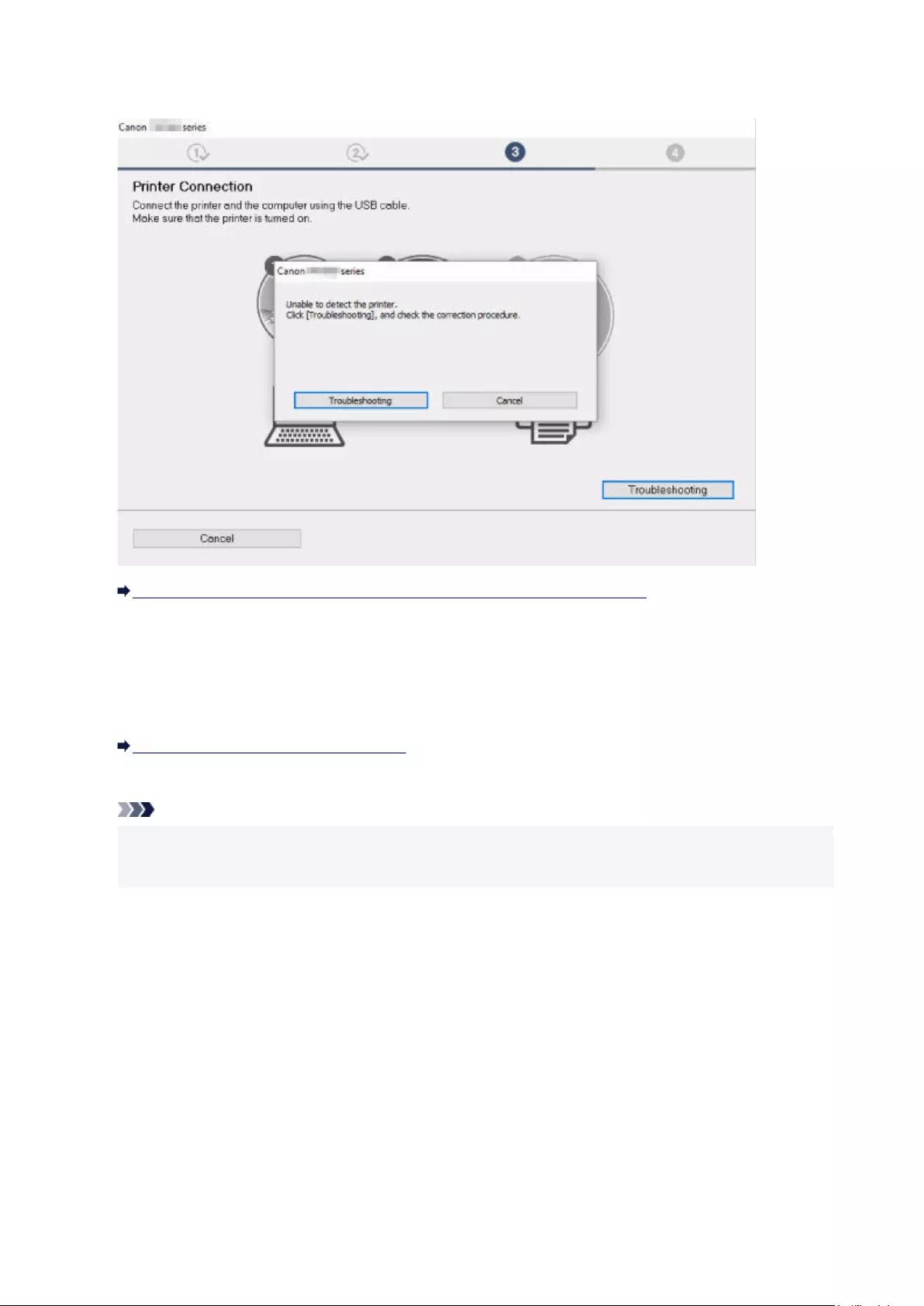
•If you cannot get past the Printer Connection screen:•
Cannot Proceed beyond Printer Connection Screen/Connect Cable Screen
•Other cases:•
Reinstall the printer driver.
If the printer driver was not installed correctly, uninstall the printer driver, restart your computer, and then
reinstall the printer driver.
Deleting the Unnecessary Printer Driver
Reinstall the printer driver with the Setup CD-ROM or install it from the Canon website.
Note
• If the installer was stopped due to a Windows error, Windows operation may be unstable, and you•
may not be able to install the drivers. Restart your computer and then reinstall the drivers.
704
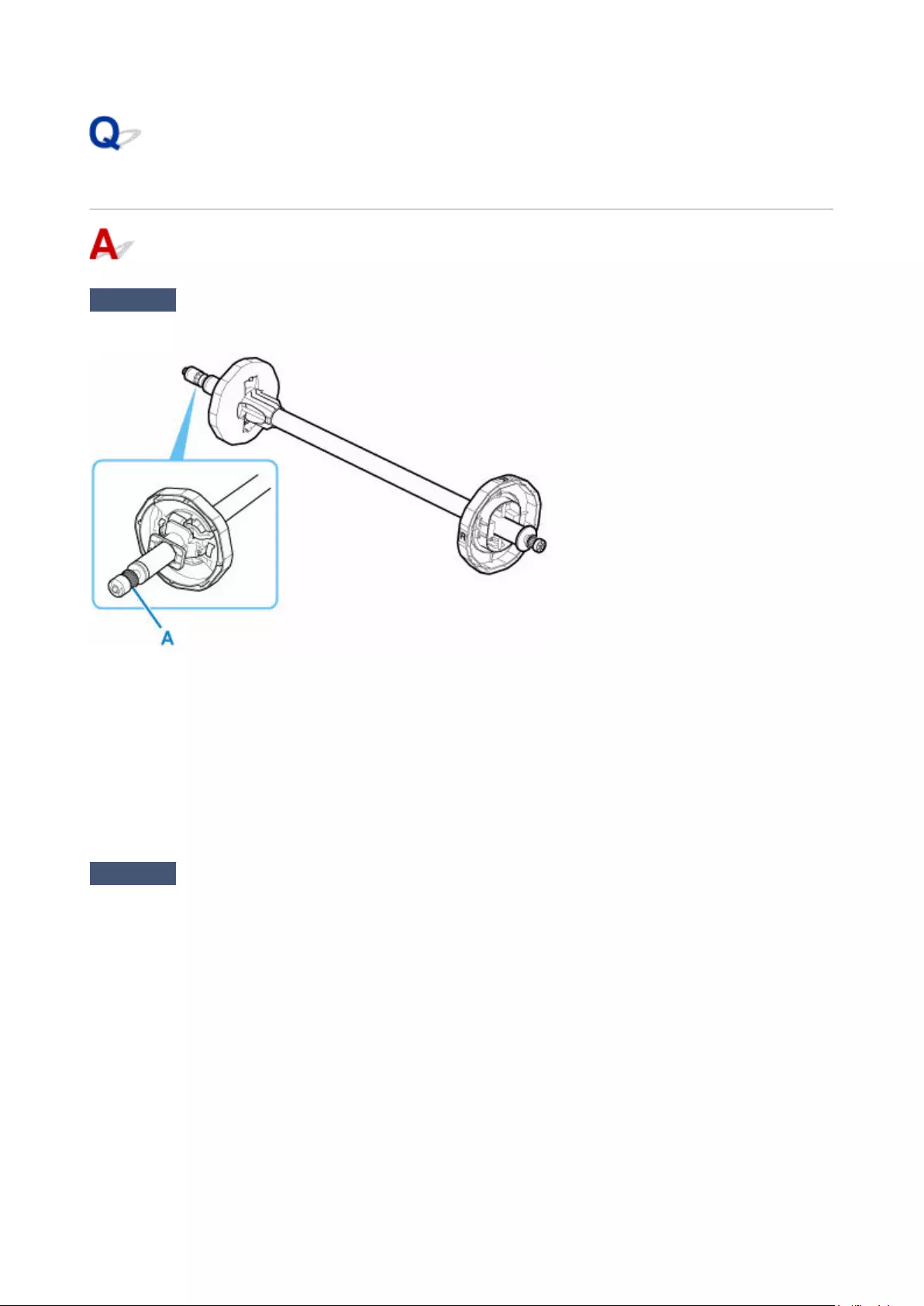
If the Printer Makes a Strange Sound
Check 1 Has an unusual noise been produced from the vicinity of the roll holder?
If dust accumulates on the gear (A) at the end of the roll holder, a noise may be produced from that area.
When the noise starts, clean the gear with the following procedure.
1. Remove the roll holder from the printer.
1.
2. Wipe the dust off the gear with a damp, tightly wrung cloth, and then dry with a dry cloth.
2.
3. Insert the roll holder in the printer.
3.
Check 2 Operating noise may be heard from the printer even when not printing.
The following sounds do not indicate a problem with the printer.
• A suction sound can be heard from the platen•
To prevent the paper from rising, the surface of the platen has vacuum holes that create suction on the
paper.
• Roll paper makes a fluttering sound during printing.•
There may be a fluttering sound when large paper is advanced.
• You suddenly hear the sound of cleaning operations.•
Cleaning is automatically performed at specified intervals in order to keep the printer maintained.
• You suddenly hear the sound of ink agitation.•
707
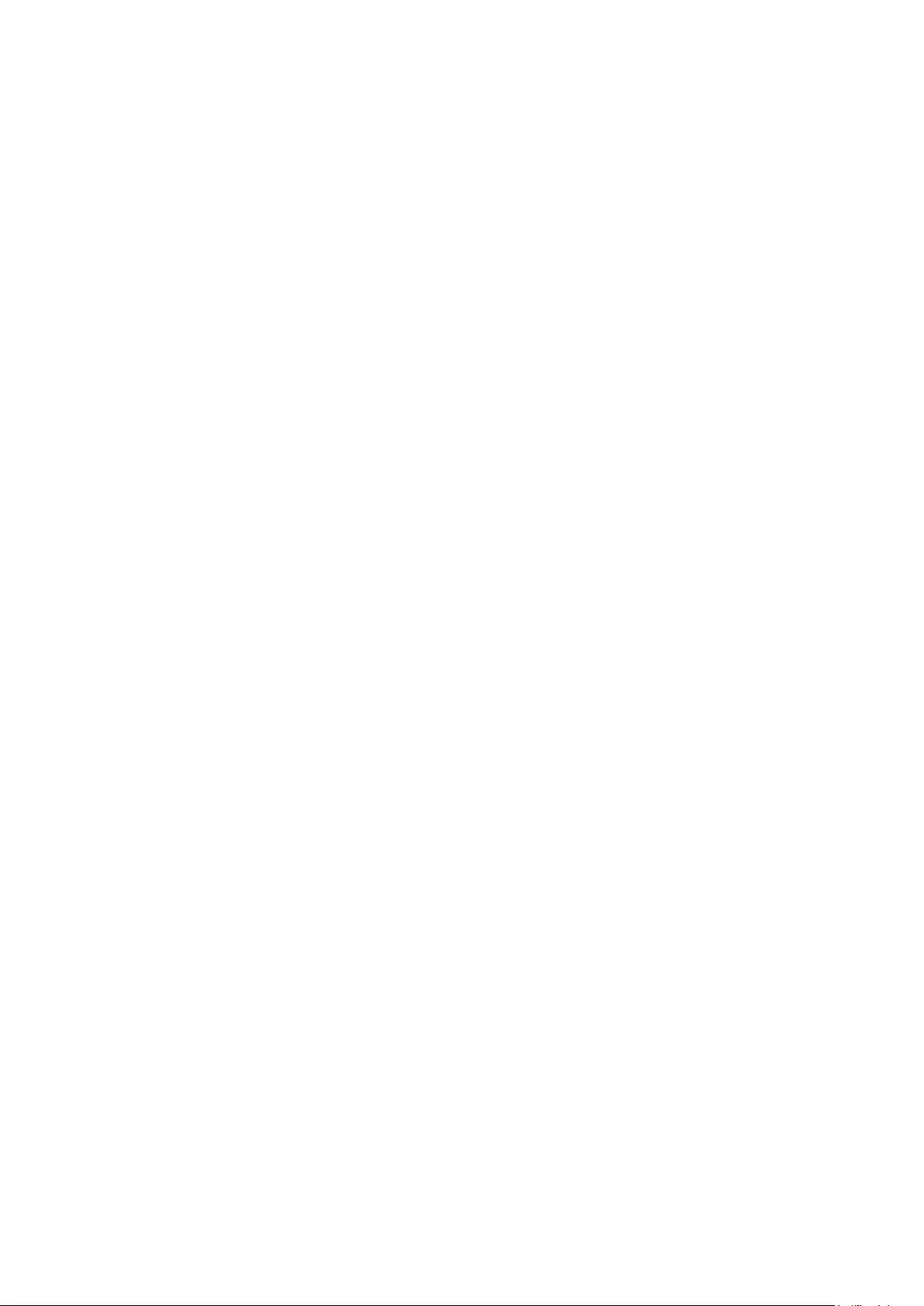
Ink is automatically agitated after specified intervals to maintain optimal print quality. Agitation takes
approximately 1 minute 30 seconds.
Ink is also agitated automatically at the following times. Please note that no other operations can be
performed while "Agitating the ink" is on the touch screen.
◦ After the printer is turned on
◦ After data transmission
◦ After ink tank replacement
In other cases, contact your Canon dealer.
708
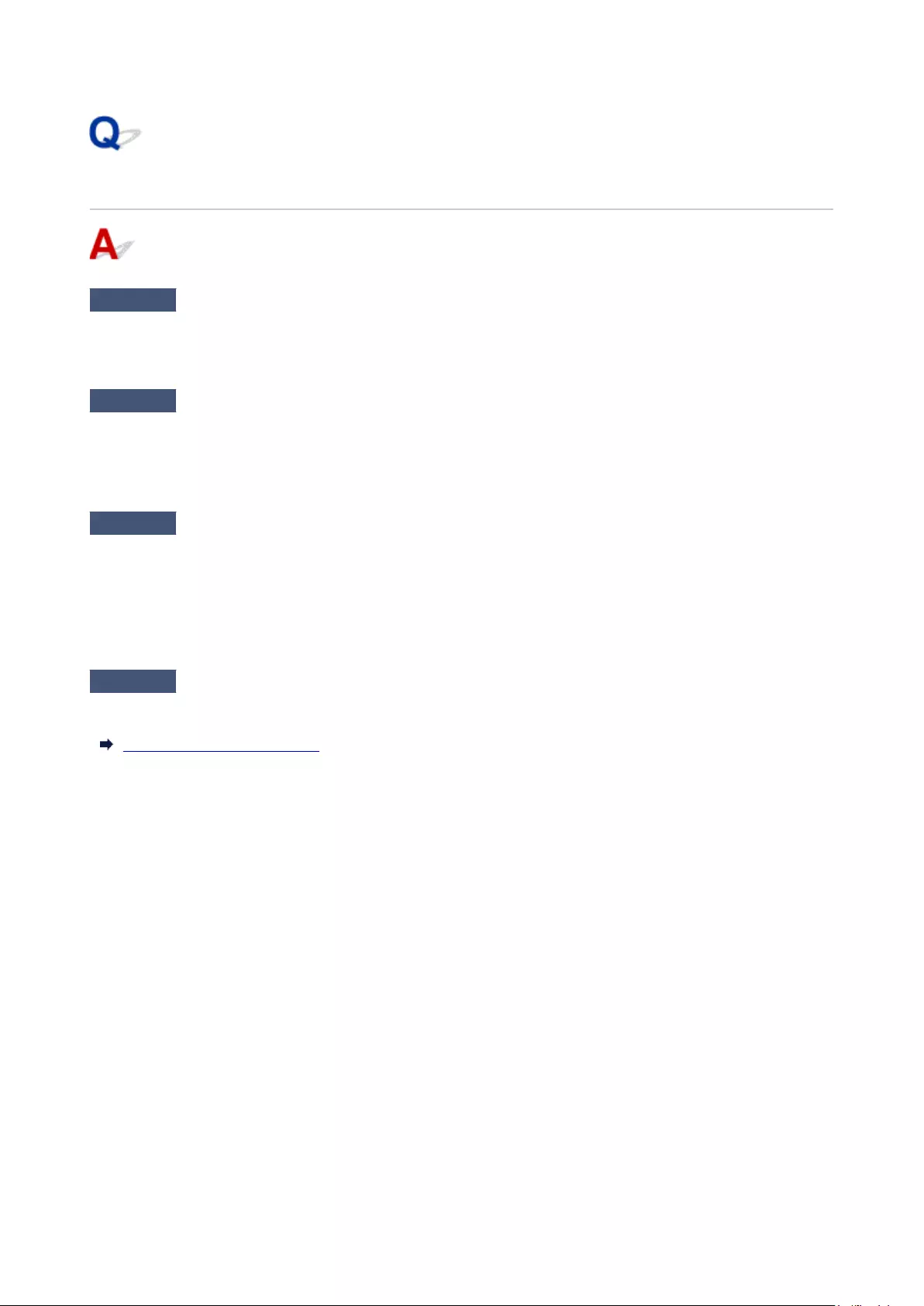
Printer consumes a lot of ink
Check 1 Are lots of full-color materials being printed?
In print jobs such as photos, images are filled with color. This consumes a lot of ink. This does not indicate a
problem with the printer.
Check 2 Is System Cleaning being carried out frequently?
System Cleaning uses a lot of ink. This is normal. We recommend that you only carry out System Cleaning
after the printer has been transported, if it has not been used for a long time, or if there is a problem with the
Print head.
Check 3 You have just finished initial installation, when more ink is consumed to fill the
system.
If using the printer for the first time, or using it after transport, the ink tank will supply an initial fill of ink to the
Print head.
Although the amount of remaining ink may drop as a result, it does not indicate a problem.
Check 4 Is the Print head nozzle blocked?
Check for nozzle clogging.
Checking for Nozzle Clogging
710

Ink Level Detection
The printer ink tank detects the amount of ink remaining to prevent running out of ink while printing and to
avoid printer failure.
Ink Tanks
When using an ink tank refilled with ink, the function for detecting the remaining ink level may not operate
properly and printing may stop. If you want to use an ink tank refilled with ink, you need to disable the
function for detecting the remaining ink level.
Important
• Printing with the ink level detection canceled may lead to printer damage and printing problems. Canon•
Inc. is not liable for any damage that may occur as a result of refilling ink.
• Once the function for detecting the remaining ink level is disabled, it cannot be restored for that ink tank.•
To restore the function for detecting the remaining ink level, replace the ink tank with a new ink tank for
that printer.
• Repeatedly removing and inserting the same ink tank can cause the contacts between the ink tank and•
printer to malfunction, ink may leak from the ink tank, and the printer may become damaged.
Releasing ink level detection
Ink level detection will be deactivated if you load ink tanks once emptied.
If "The above ink tank may be an ink tank that ran out of genuine Canon ink or a counterfeit Canon ink
tank." appears on the touch screen, follow the steps below.
1. Move through the screens, performing the actions described in the messages that appear
1.
on the touch screen.
2. If an instruction to disable detection of remaining ink appears, touch Stop on the printer
2.
for at least 5 seconds, and then release it.
Ink level detection is now released.
711
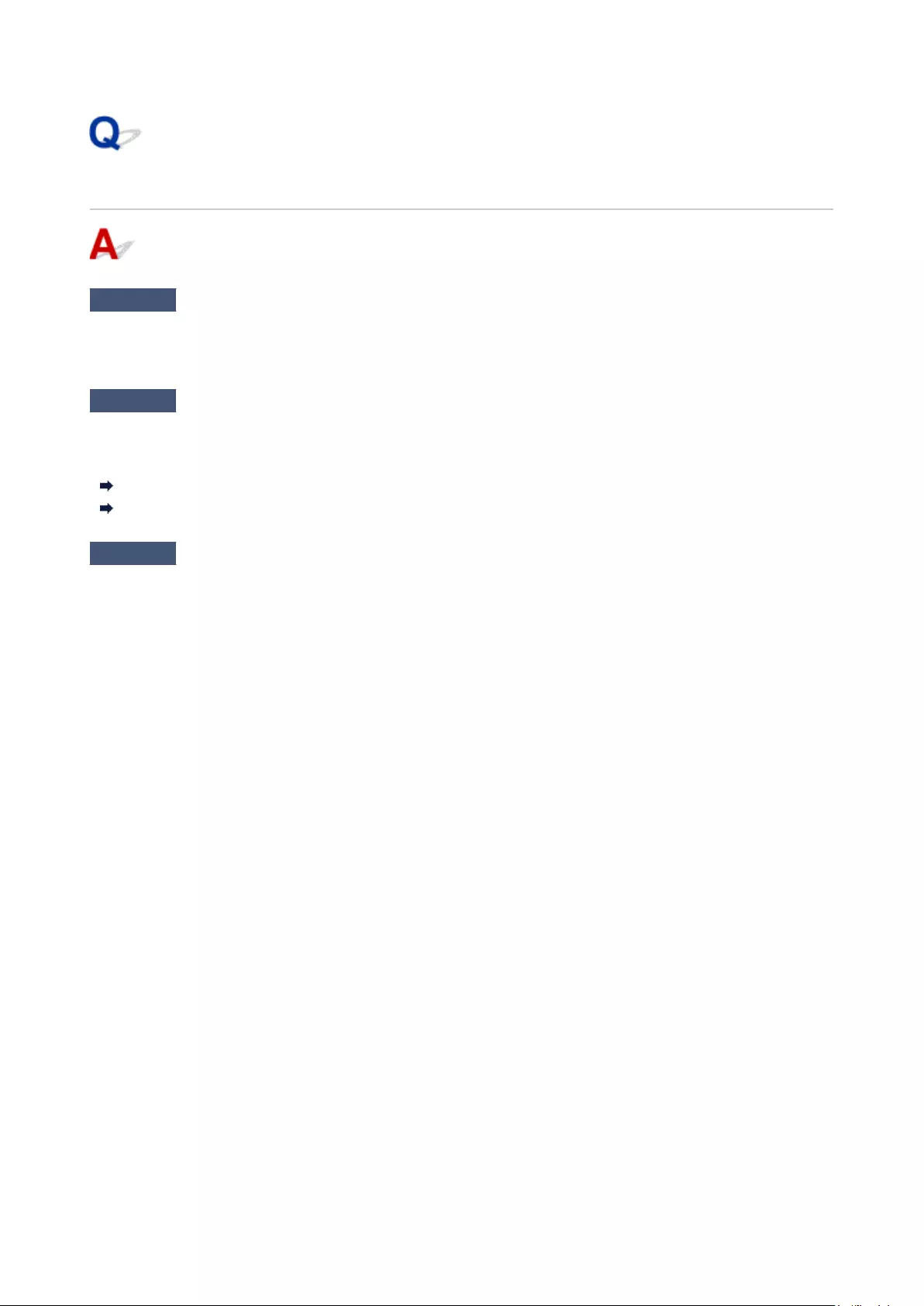
Media Type Selection does not Match Loaded Media Type
Check 1 Is this paper being used for the first time?
If this is the first time to use the paper, it may not be selected correctly. In the media type selection, manually
select the correct paper type.
Check 2 Is the paper you set genuine paper or recommended paper?
If you want to use a paper that is not in the paper information list, register the media type in the Media
Configuration Tool.
Paper Information List
Media Configuration Tool Guide
Check 3 Is there any unevenness in the gloss and color of the paper surface?
Some media types may not be suitable for paper type estimation. If the paper type is not recognized correctly,
manually select the correct paper in the media type selection.
712
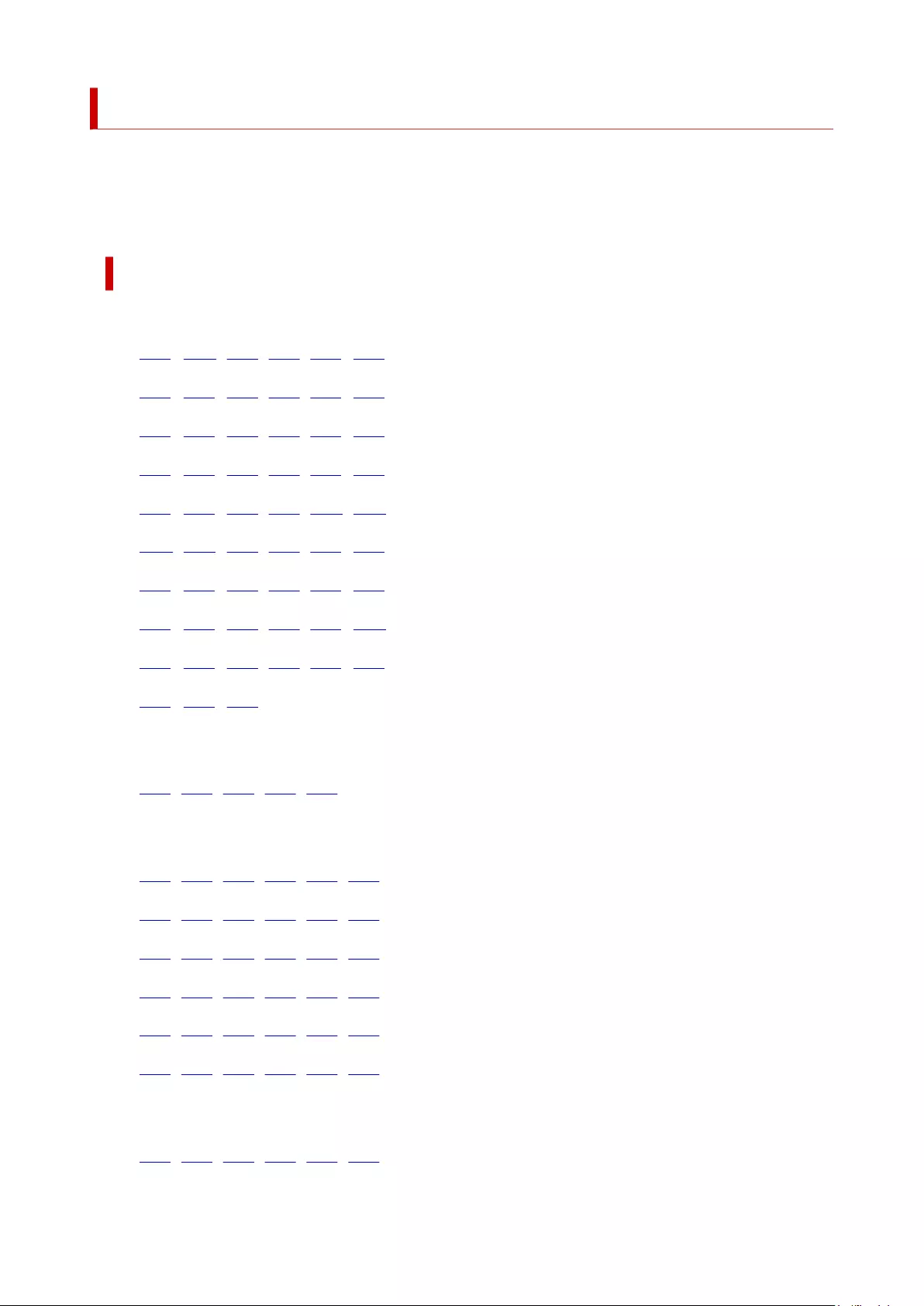
List of Support Code for Error
Support codes appear on the PC when an error occurs.
Support codes are error identification numbers that appear alongside error messages.
If an error occurs, check the support code and follow the recommended steps to resolve the issue.
Support code displayed
•1000 to 1ZZZ•
1005 100A 1012 1021 1024 1041
1051 1052 1054 1056 1057 1058
1061 1200 1201 1210 1213 1214
1300 1306 1317 1322 1323 1324
1401 1403 1408 1409 140A 140B
140C 140F 1468 1477 1478 1480
1481 1485 1492 1494 1495 1500
1551 1552 1570 1571 1660 168B
1720 1721 1722 1730 1731 1752
1753 1756 1757
•2000 to 2ZZZ
•
2001 2002 2130 2131 2132
•3000 to 3ZZZ•
3000 3001 3200 3201 3250 3306
3311 3312 3313 3314 3315 3316
3317 3331 3332 3333 3336 3338
3341 3342 3350 3351 3352 3414
3415 3416 3417 3418 3419 3420
3421 3422 3423 3424 3448 3451
•4000 to 4ZZZ•
4111 4113 4114 4116 4117 4122
713
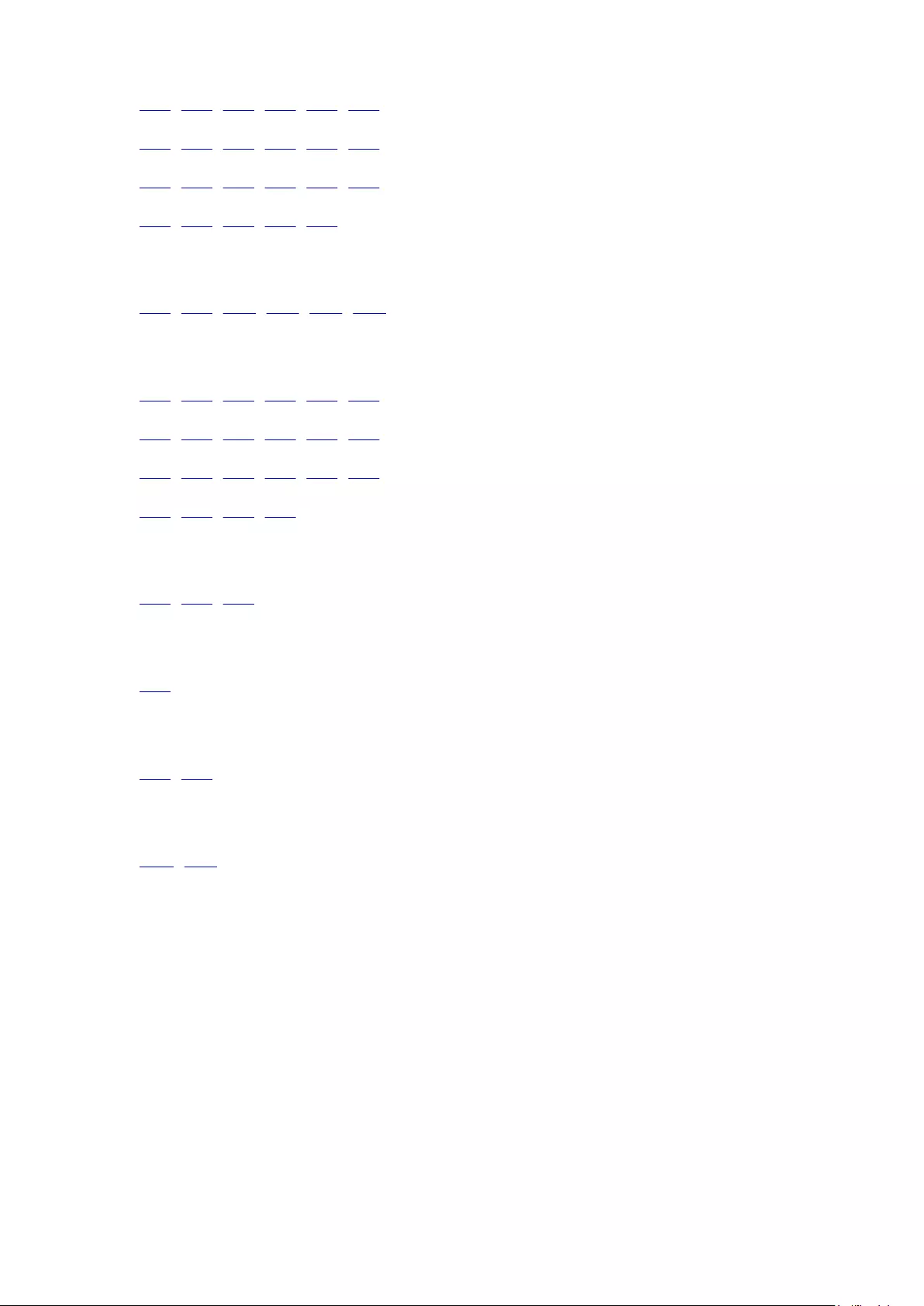
4801 4803 4900 4901 4903 4905
4910 4911 4913 4920 4931 4932
4933 4934 4935 4937 4950 4951
4952 4953 4954 4955 4956
•5000 to 5ZZZ•
5106 5200 5B16 5B20 5B21 5C00
•6000 to 6ZZZ•
6502 6700 6702 6820 6900 6901
6902 6910 6911 6920 6921 6930
6931 6932 6933 6940 6941 6942
6943 6944 6945 6946
•7000 to 7ZZZ•
7050 7051 7052
•8000 to 8ZZZ•
8200
•9000 to 9ZZZ•
9000 9110
•A000 to ZZZZ•
B20A B510
714
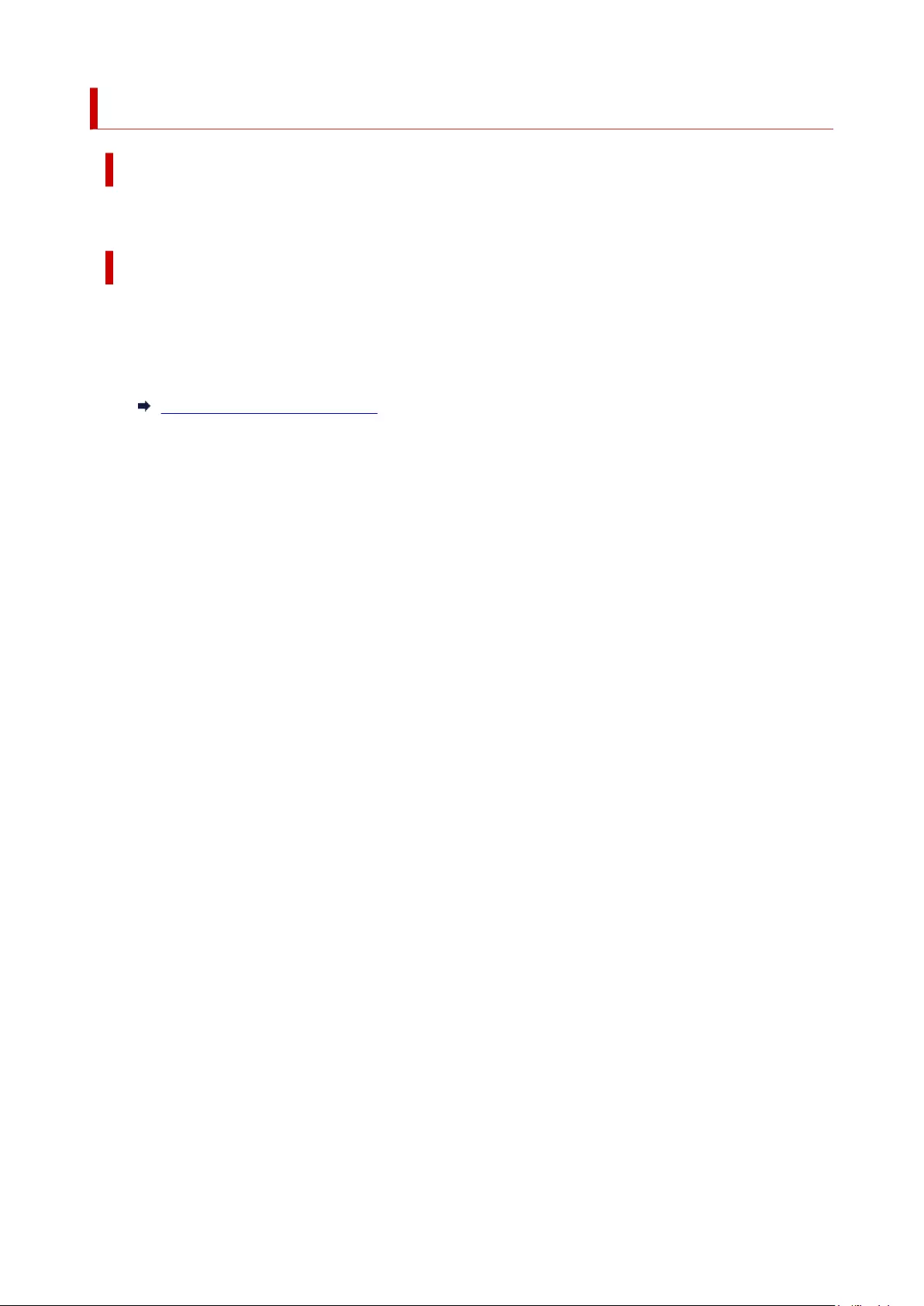
1005
Cause
You have attempted to print on a sheet, but no sheet is loaded.
What to Do
Check the media size and type for the print job on the touch screen, and then tap OK.
•Continuing to print•
Tap Load paper, and then load the paper.
Loading and Printing on Sheets
•Stopping printing•
To stop printing, tap Cancel on the touch screen or press the Stop button.
715
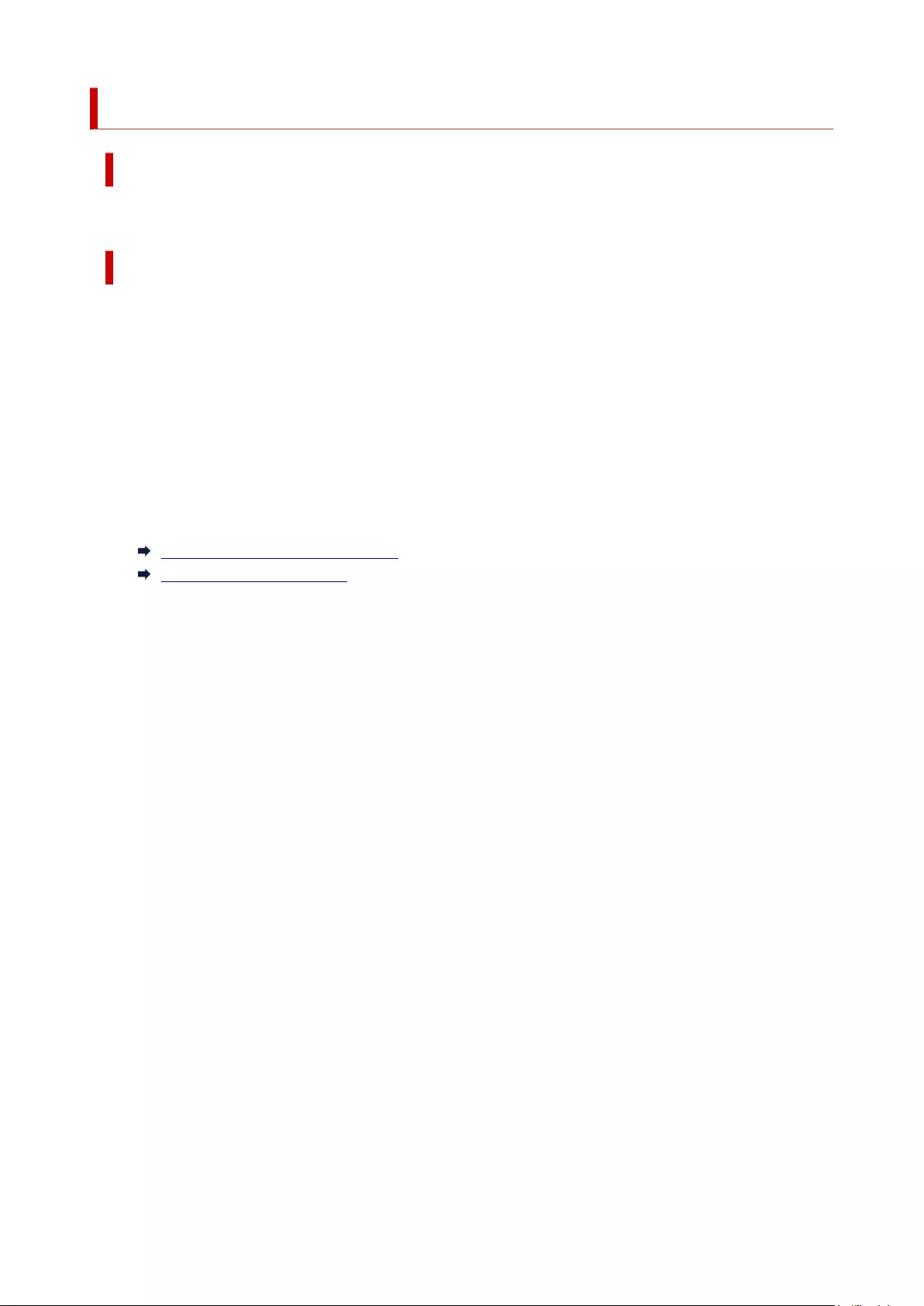
1021
Cause
The printer has received a print job longer than the amount of roll paper left.
What to Do
•Continuing to print•
To continue printing, tap Print with the loaded paper. on the touch screen.
However, the roll paper may run out during the print job and you may not be able to print all of the
document.
•Replacing paper•
Tap Replace the paper and print and print on the touch screen.
Change the Paper Source in the printer driver, or replace the paper with paper of the right length for
the print job, and then try again.
Removing the Roll from the Printer
Loading Rolls in the Printer
•Stopping printing•
To stop printing, tap Cancel on the touch screen or press the Stop button.
718
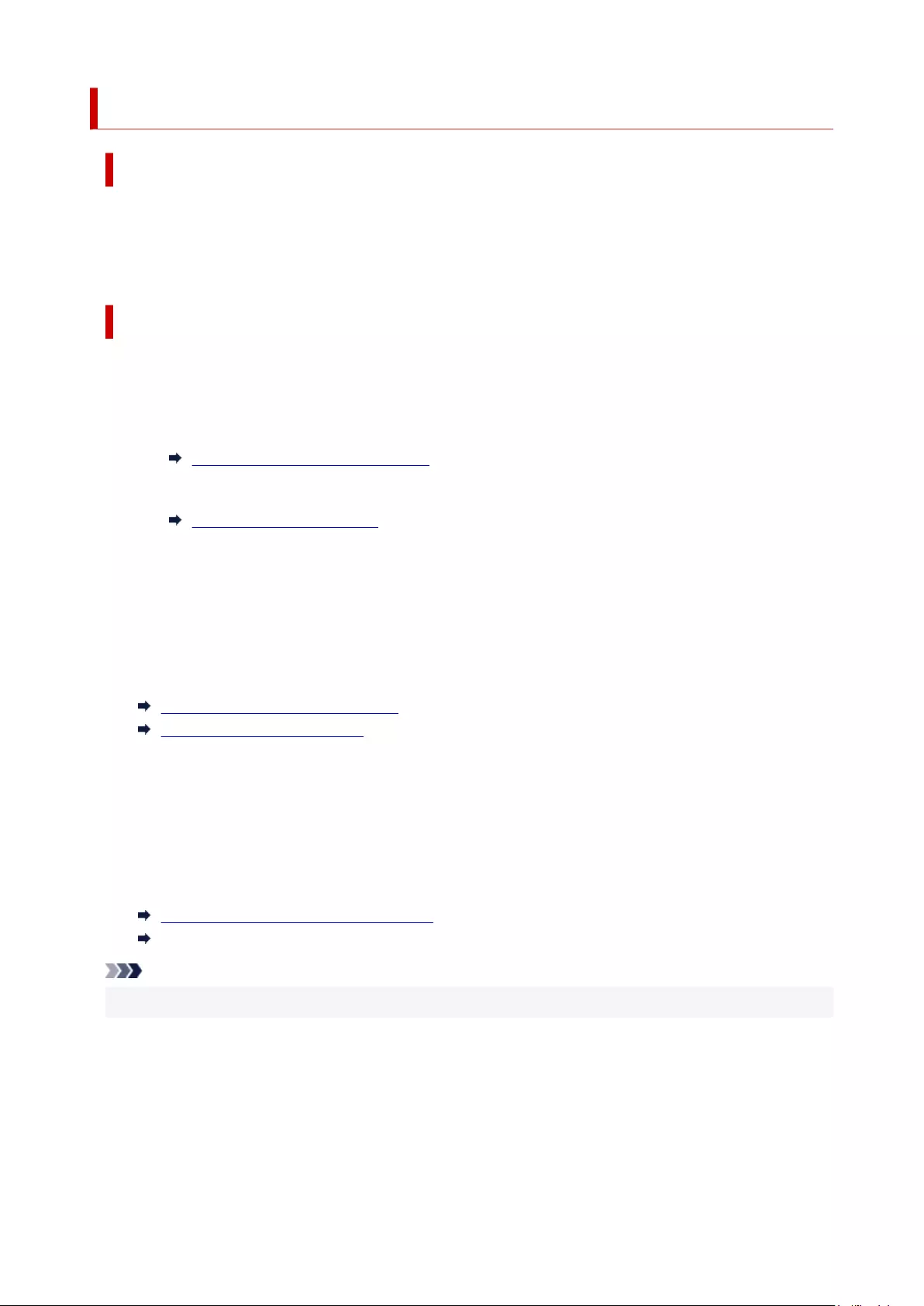
1024
Cause
Possible causes include the following.
• Roll paper is empty.
• There is remaining roll paper, but because it could not be advanced, it could not be detected.
What to Do
•The roll paper has run out•
Follow the steps below to replace the used roll with a new roll of the same type and size.
1. Tip back the release lever and remove the roll paper.1.
Removing the Roll from the Printer
2. Load the new roll.2.
Loading Rolls in the Printer
3. If "There is a job which has not been printed yet. Do you want to print this job?" appears on3.
the touch screen, tap Yes.
Printing will resume, starting from the page on which the error occurred.
•Feed stopped because the end of the paper roll is attached to the core with tape•
Remove the used roll paper and insert a new roll paper.
Removing the Roll from the Printer
Loading and Printing on Rolls
•Feed stopped because the remaining paper roll is too heavy•
It may be helpful to change the printing mode, which will change the paper feed timing.
If using Windows, select a higher Print Quality setting under Advanced Settings in the printer driver.
If using macOS, select Quality & Media in the printer driver, and then select a higher Print Quality
setting.
Setting the Print Quality Level (Custom) (Windows)
Setting the Print Quality Level (Custom) (macOS)
Note
• To stop printing, press the Stop button.
719

1041
Cause
You have selected wrong paper source for Replace paper.
What to Do
Match the paper source for loading paper with the paper source setting for Replace paper.
For the roll paper, select Roll paper and load it.
For the cut sheet, select Cut sheet and load it.
720
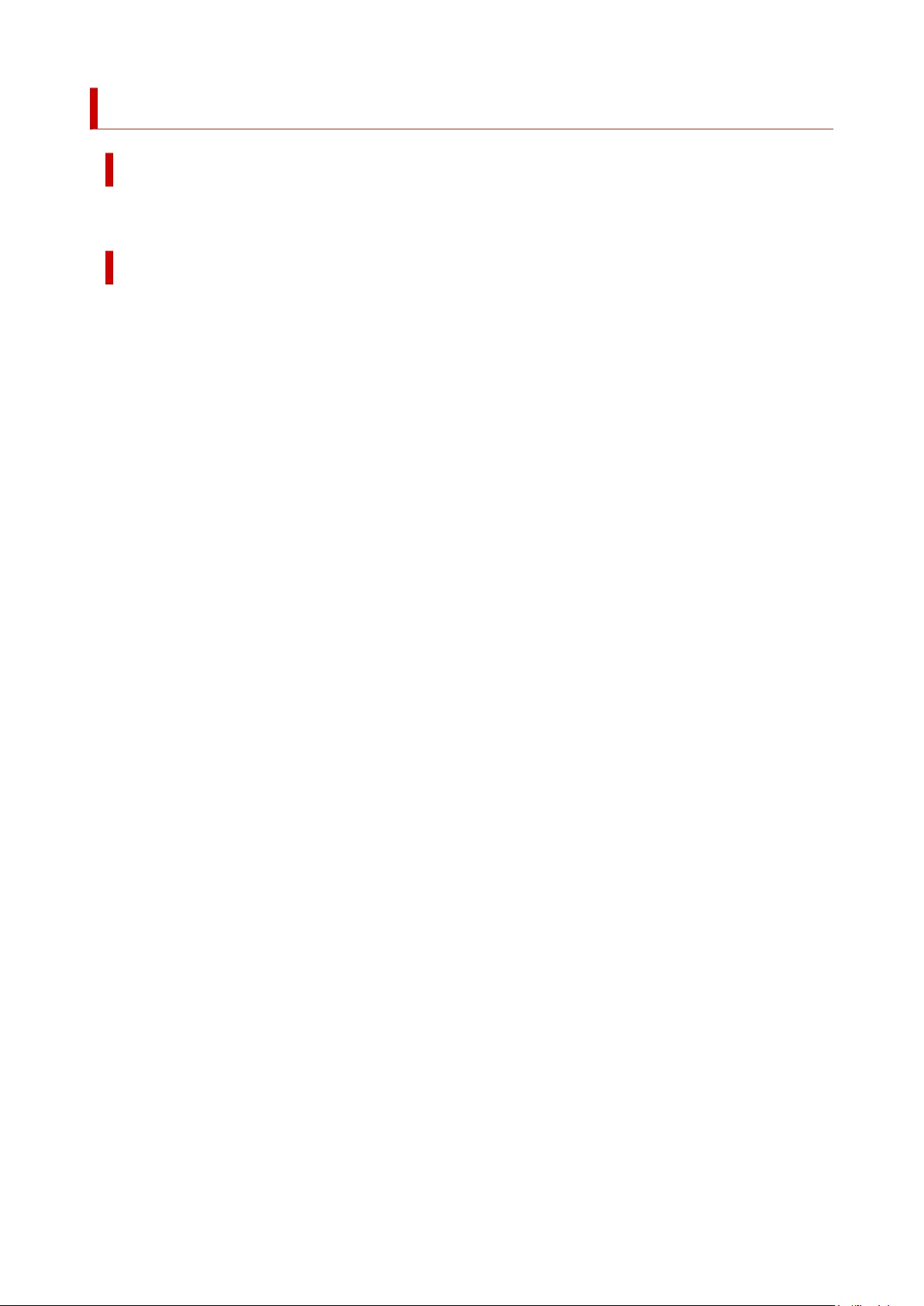
1051
Cause
The media type specified in the printer driver is not the same as the media type loaded in the printer.
What to Do
You can continue to print, but note that this error may cause problems in the printing results.
721
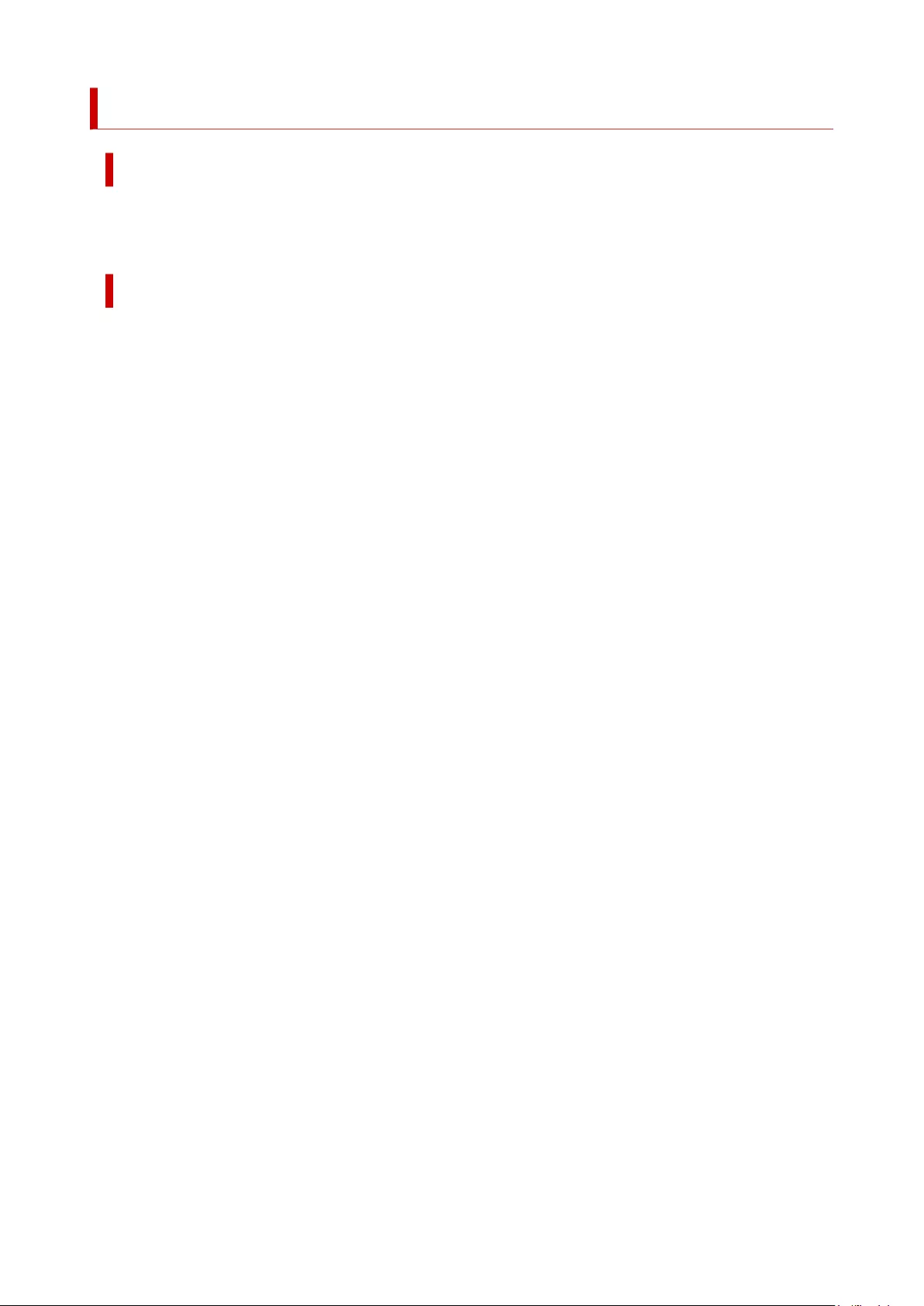
1052
Cause
The width of the roll paper set in Fit Roll Paper Width in the printer driver is not the same as the width of
the roll paper loaded in the printer.
What to Do
You can continue to print, but note that this error may cause problems in the printing results.
722
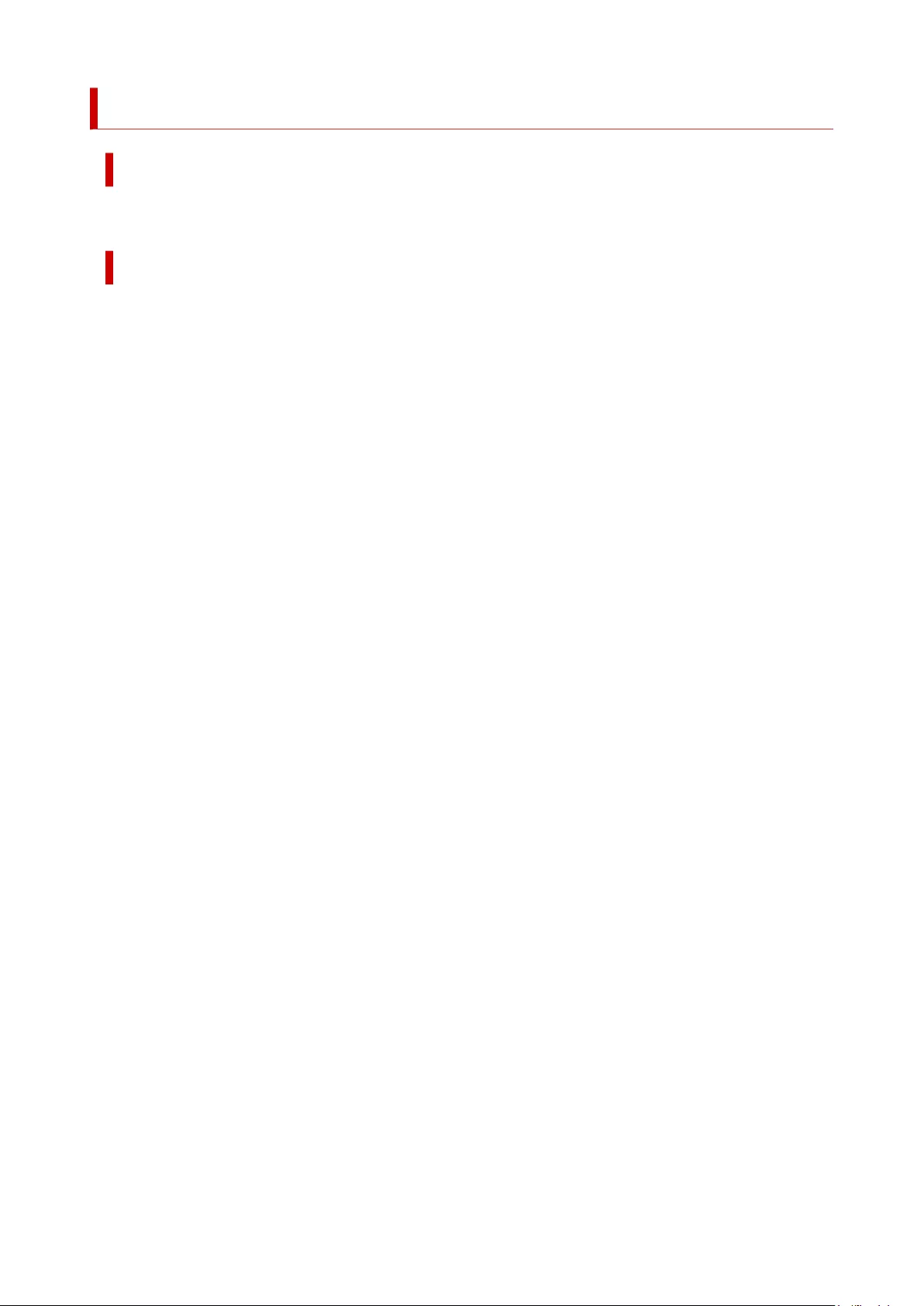
1054
Cause
The paper in the printer is smaller than the paper size set in the printer driver.
What to Do
You can continue to print, but note that this error may cause problems in the printing results.
723

1056
Cause
The paper position is not suitable for borderless printing.
What to Do
You can continue to print, but note that this error may cause problems in the printing results.
724
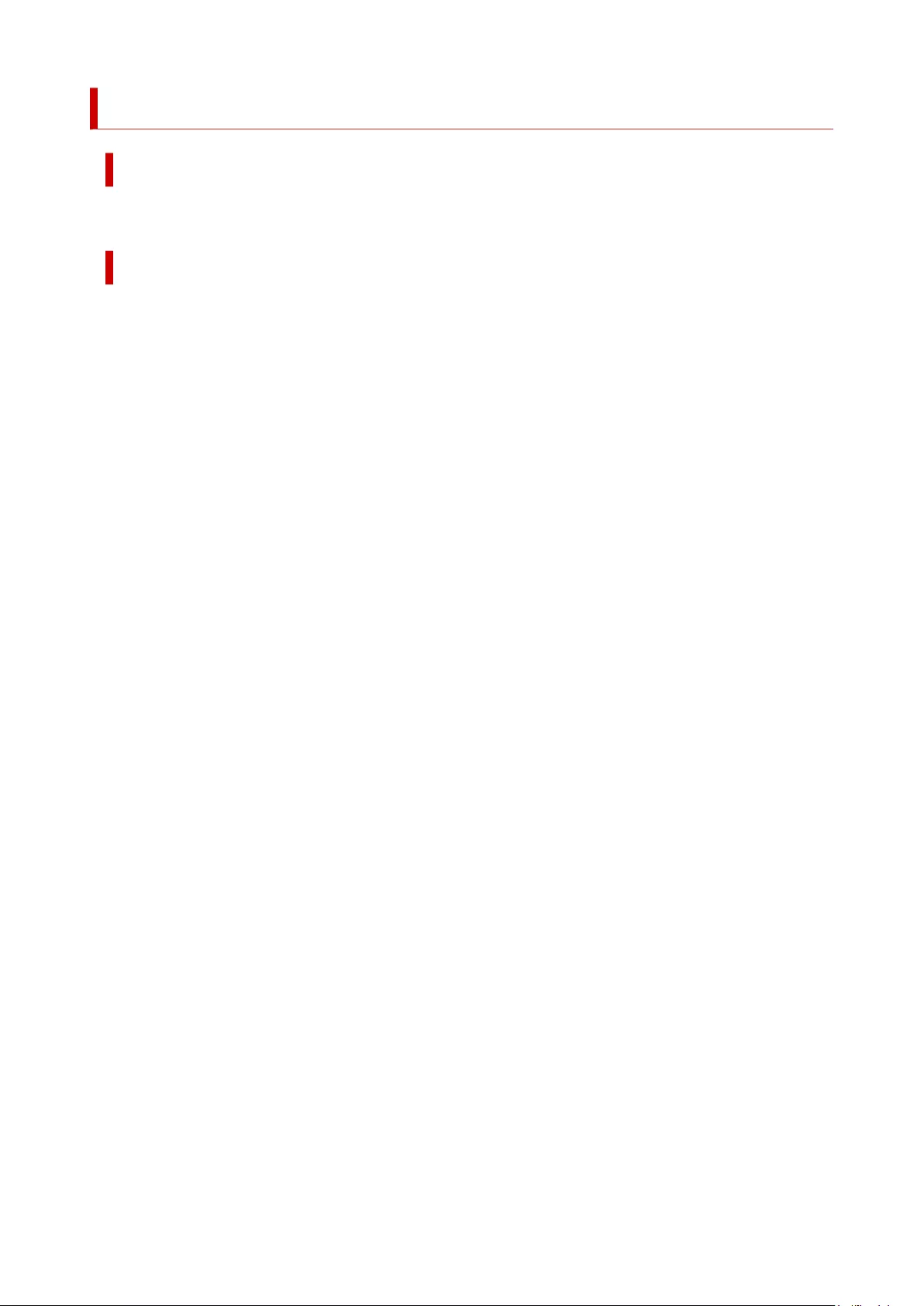
1057
Cause
The paper position is not suitable for borderless printing.
What to Do
You can continue to print, but note that this error may cause problems in the printing results.
725
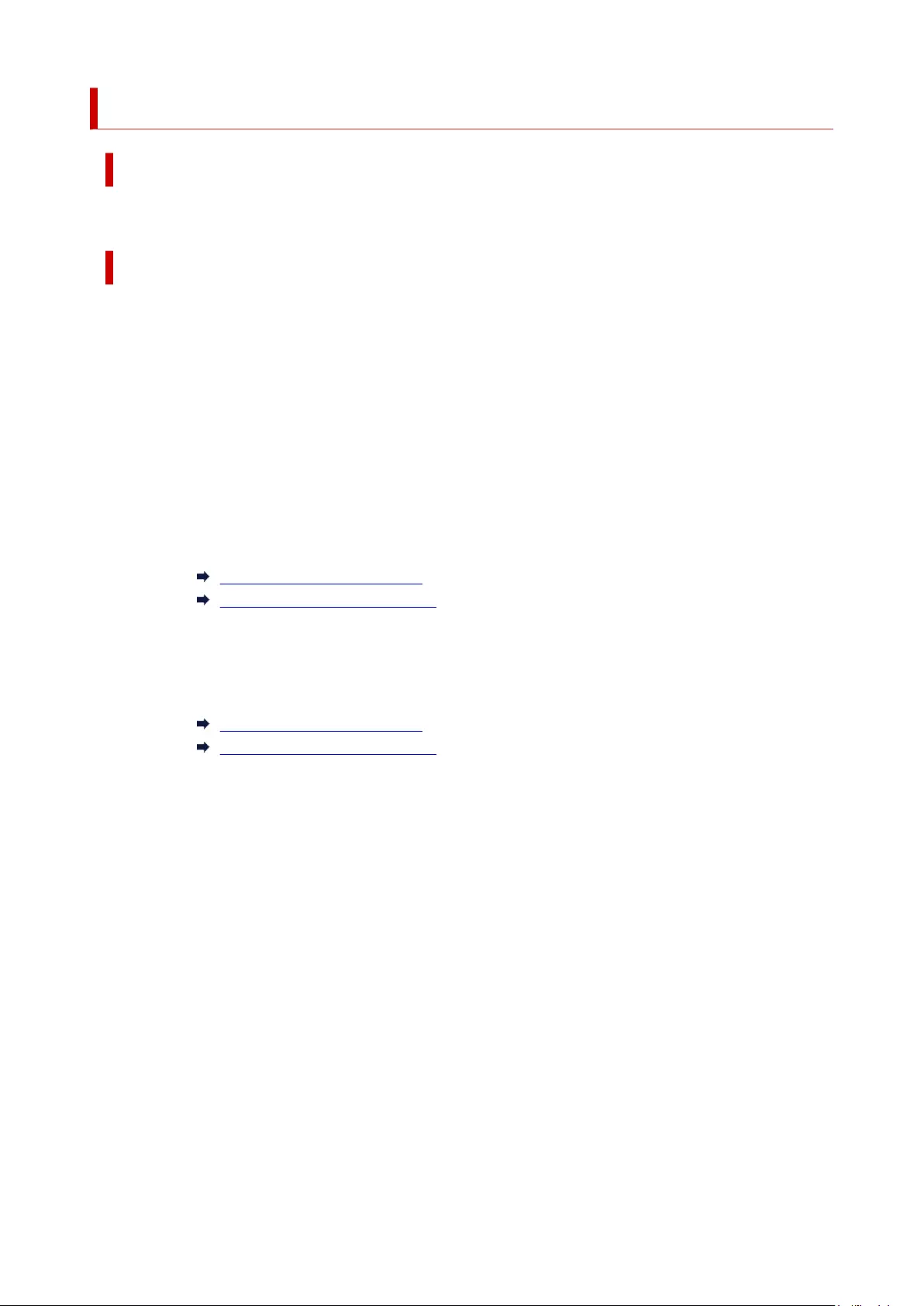
1061
Cause
The media type specified in the print job is not the same as the media type loaded in the printer.
What to Do
Tap OK on the touch screen to go to the next screen.
Check the displayed media type and size, and tap OK.
•Printing again according to the media type•
Follow the steps below to match the media type in the print job and the media type loaded in the
printer.
◦Changing the media type in the print job◦
1. Tap Cancel to stop printing.
2. Change the media type in the print job settings to the media type loaded in the printer, and2.
then try again.
Loading and Printing on Rolls
Loading and Printing on Sheets
◦Replacing paper◦
1. Tap Replace the paper and print.
2. Load the paper with the media type specified in the print job, and then try again.2.
Loading and Printing on Rolls
Loading and Printing on Sheets
•Printing with the current print settings•
To continue printing, tap Print with the loaded paper. on the touch screen.
However, note that this error may cause paper jams and affect the printing quality.
727
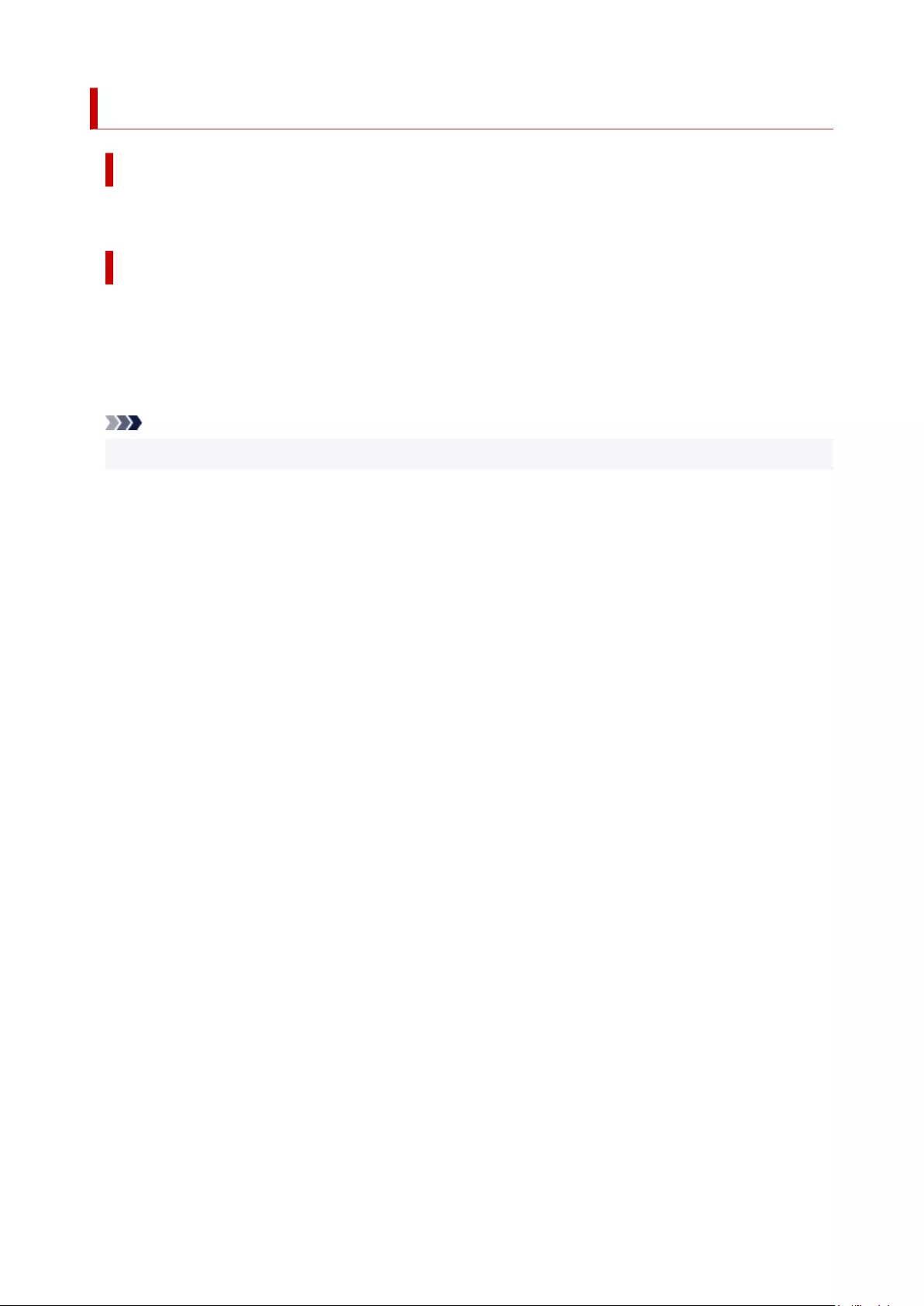
1200
Cause
Top cover or print head lock lever is open.
What to Do
Open the top cover and make sure the print head lock lever is closed properly.
Make sure there are no foreign objects caught in the top cover, and then close the top cover.
If this error appears again, close the top cover, turn the power off, wait a moment, and then turn the power
back on.
Note
• If installing a print head, close the top cover after finishing.
728
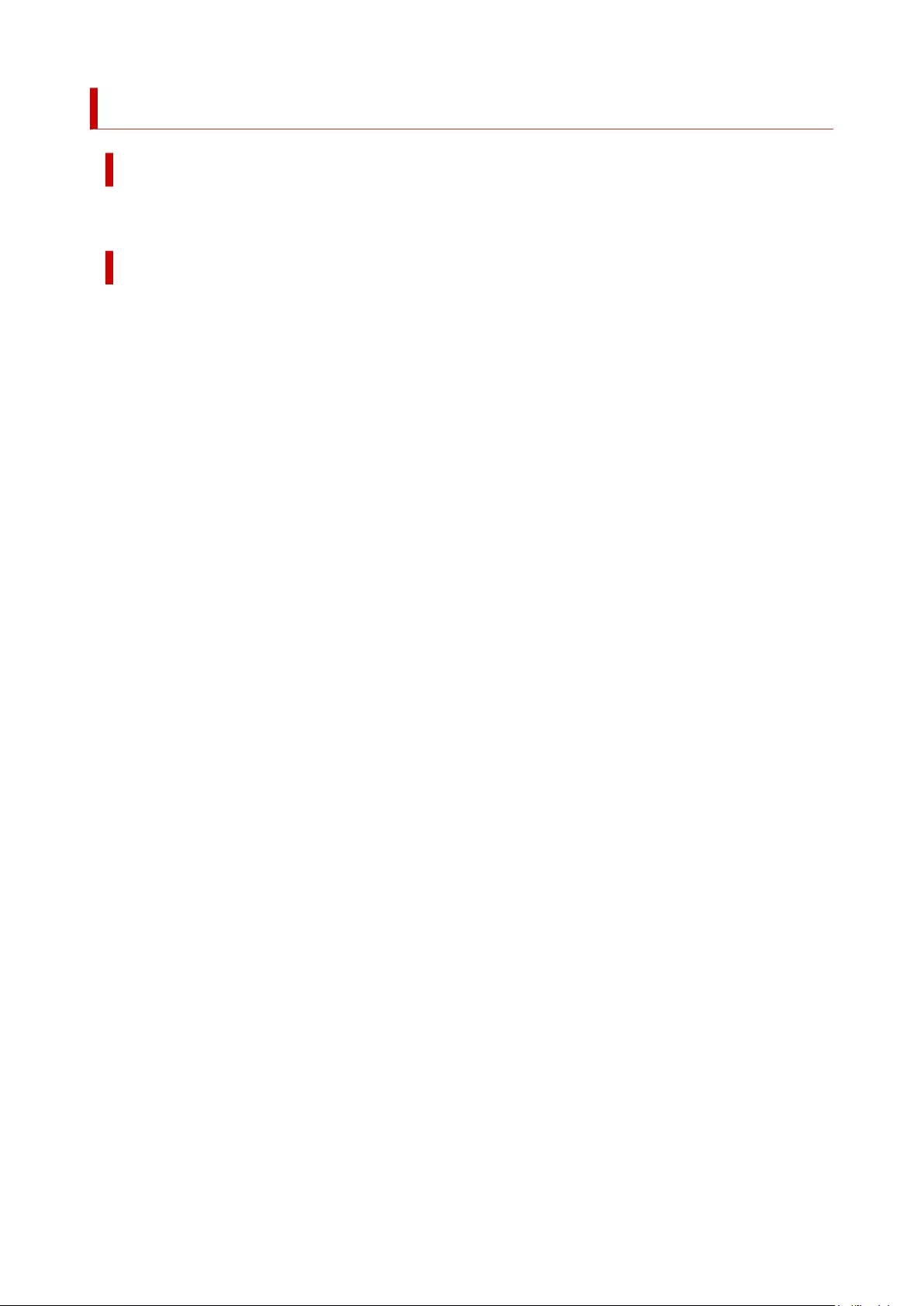
1201
Cause
The ink tank cover is open.
What to Do
Close the ink tank cover.
729
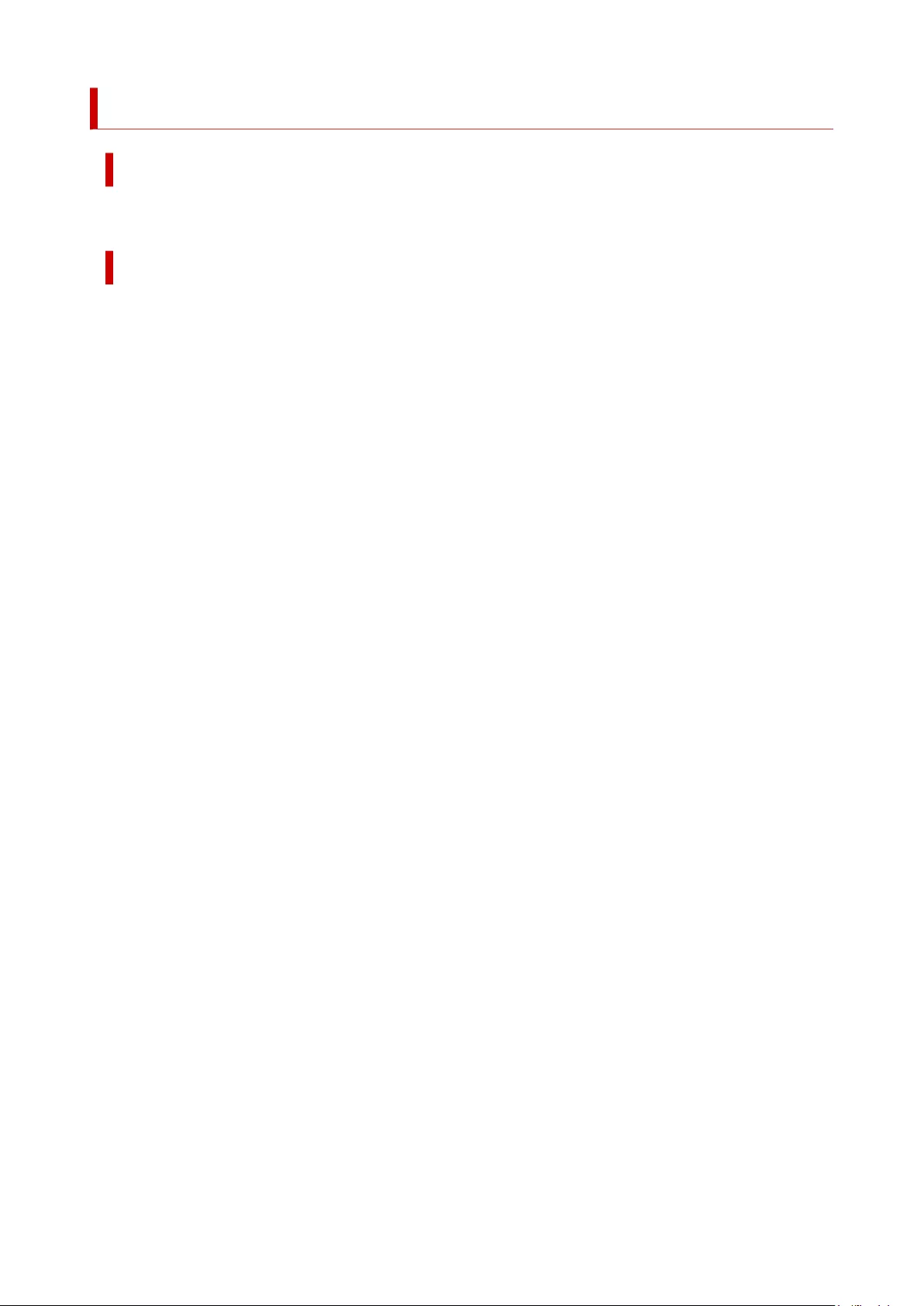
1210
Cause
The ink tank cover is open.
What to Do
Close the ink tank cover.
730
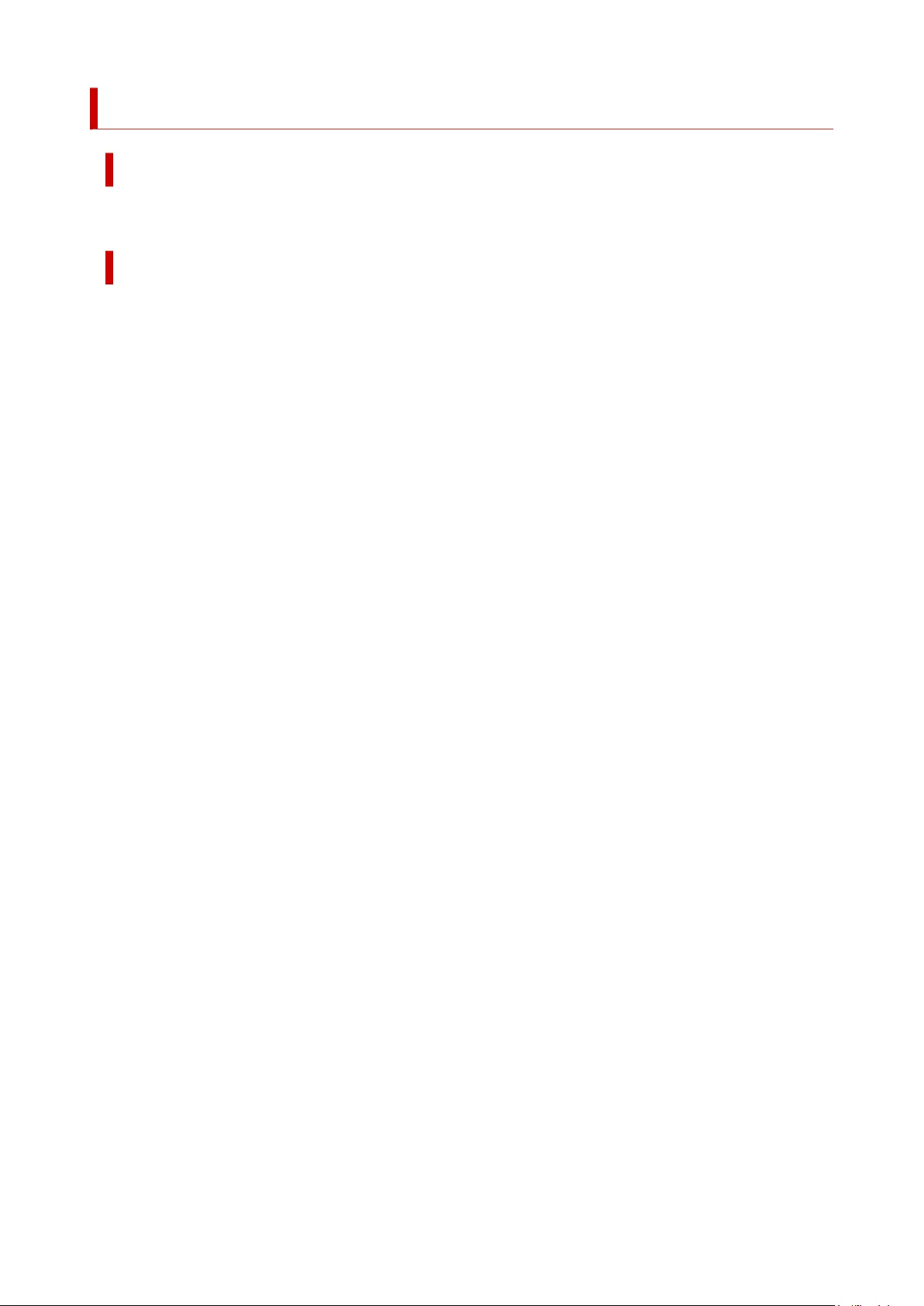
1213
Cause
Release lever is released.
What to Do
Pull the release lever toward the front.
If the error occurs again, turn off the printer and wait a while before restoring power.
731
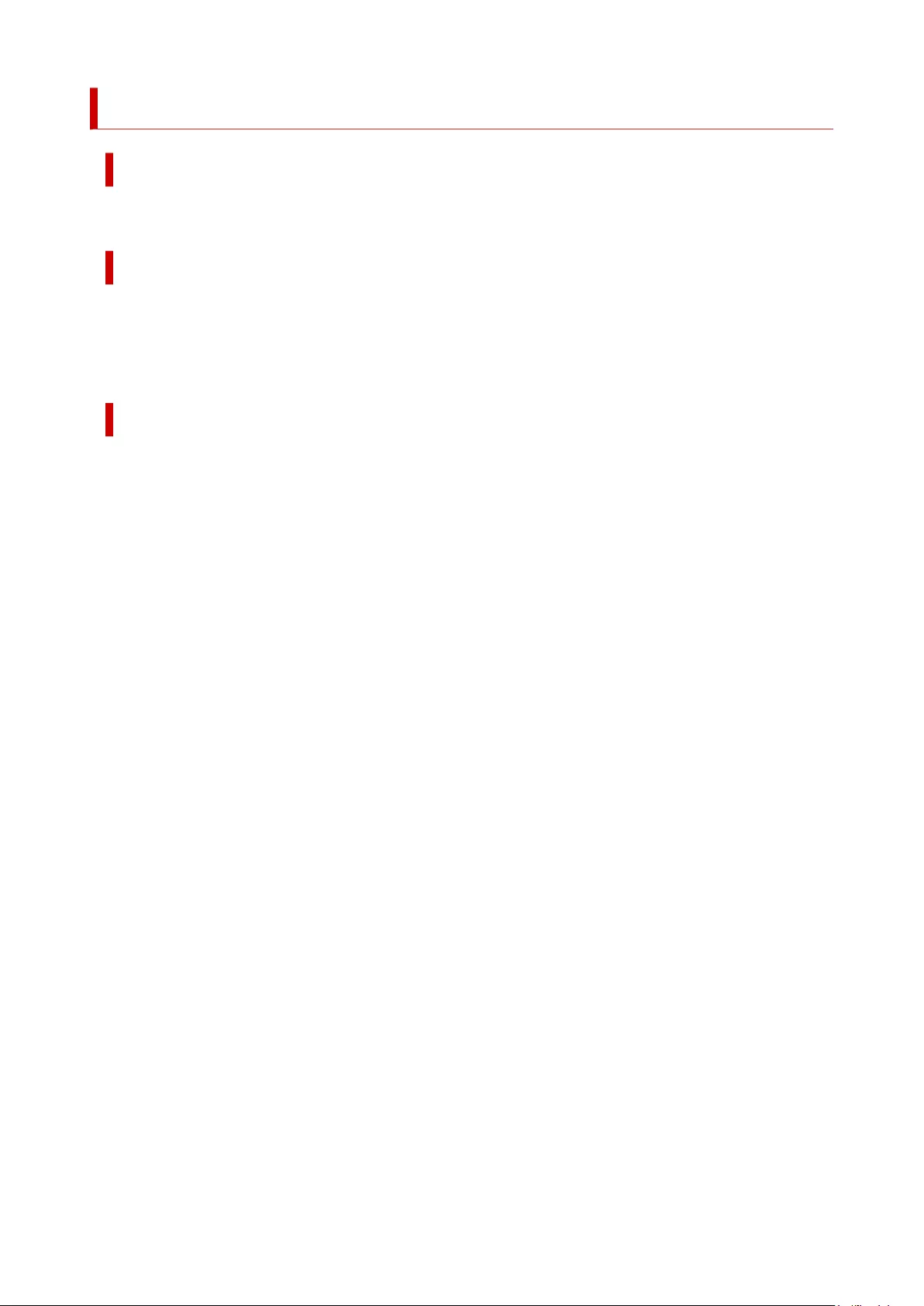
1214
Cause
While the printer was printing or performing maintenance, the release lever was released.
What to Do
Turn off the power, wait a moment, and then turn it back on.
If the error appears again, make a note of the detailed error code (ECxx-xxxx) that appears on the touch
screen, and then turn off the power and contact a Canon customer service center.
Detailed error codes
EC19-2F21
732
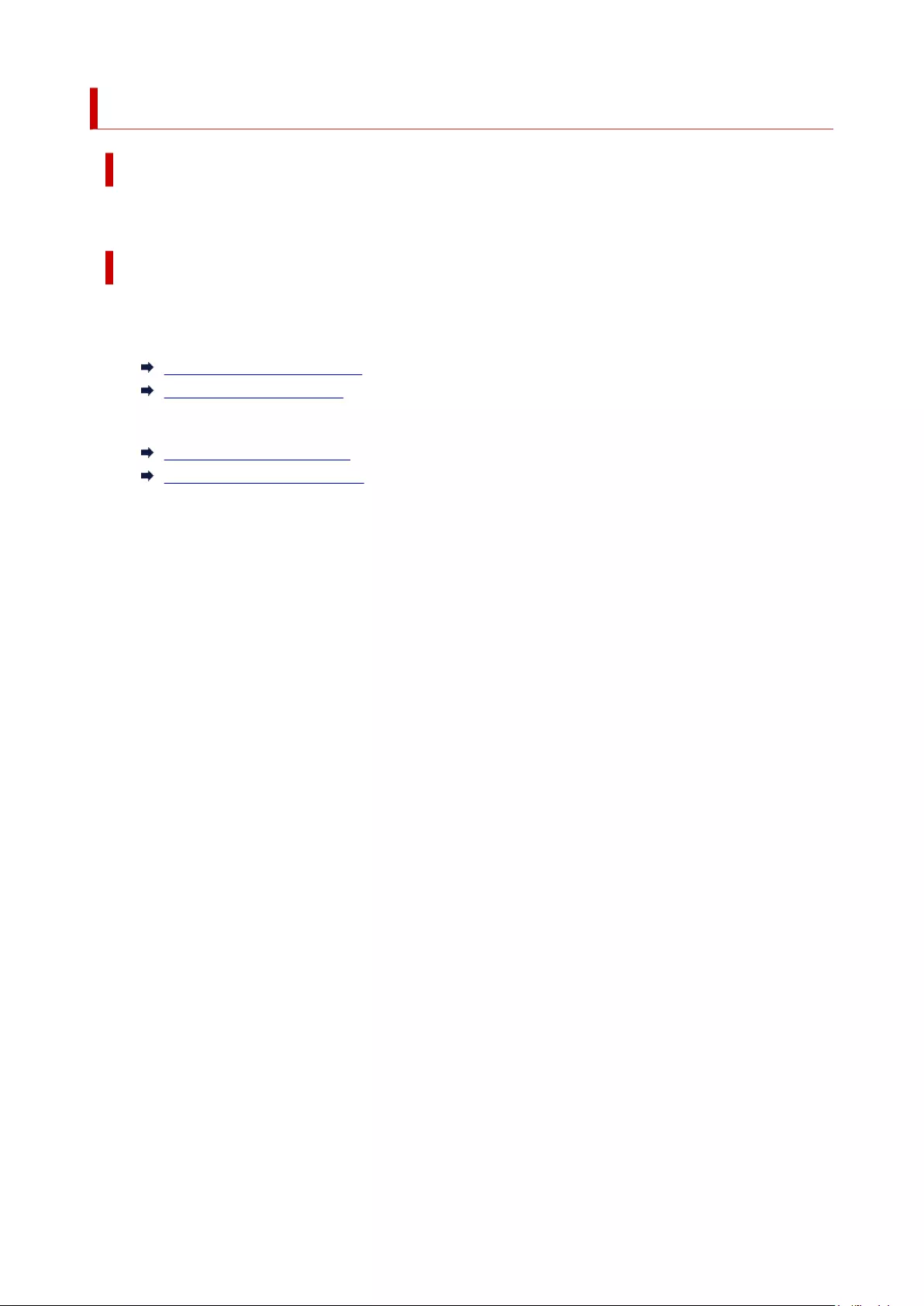
1300
Cause
Paper jammed inside the printer while printing.
What to Do
Follow the steps below to remove jammed paper.
1. Tip back the release lever and remove the jammed paper.1.
Remove Jammed Roll Paper
Remove a Jammed Sheet
2. Load the paper.2.
Loading Rolls in the Printer
Loading Sheets in the Printer
3. If "There is a job which has not been printed yet. Do you want to print this job?" appears on the3.
touch screen, tap Yes.
Printing will resume, starting from the page on which the error occurred.
If the error appears again, the printer may be damaged. Contact a Canon customer service center.
733
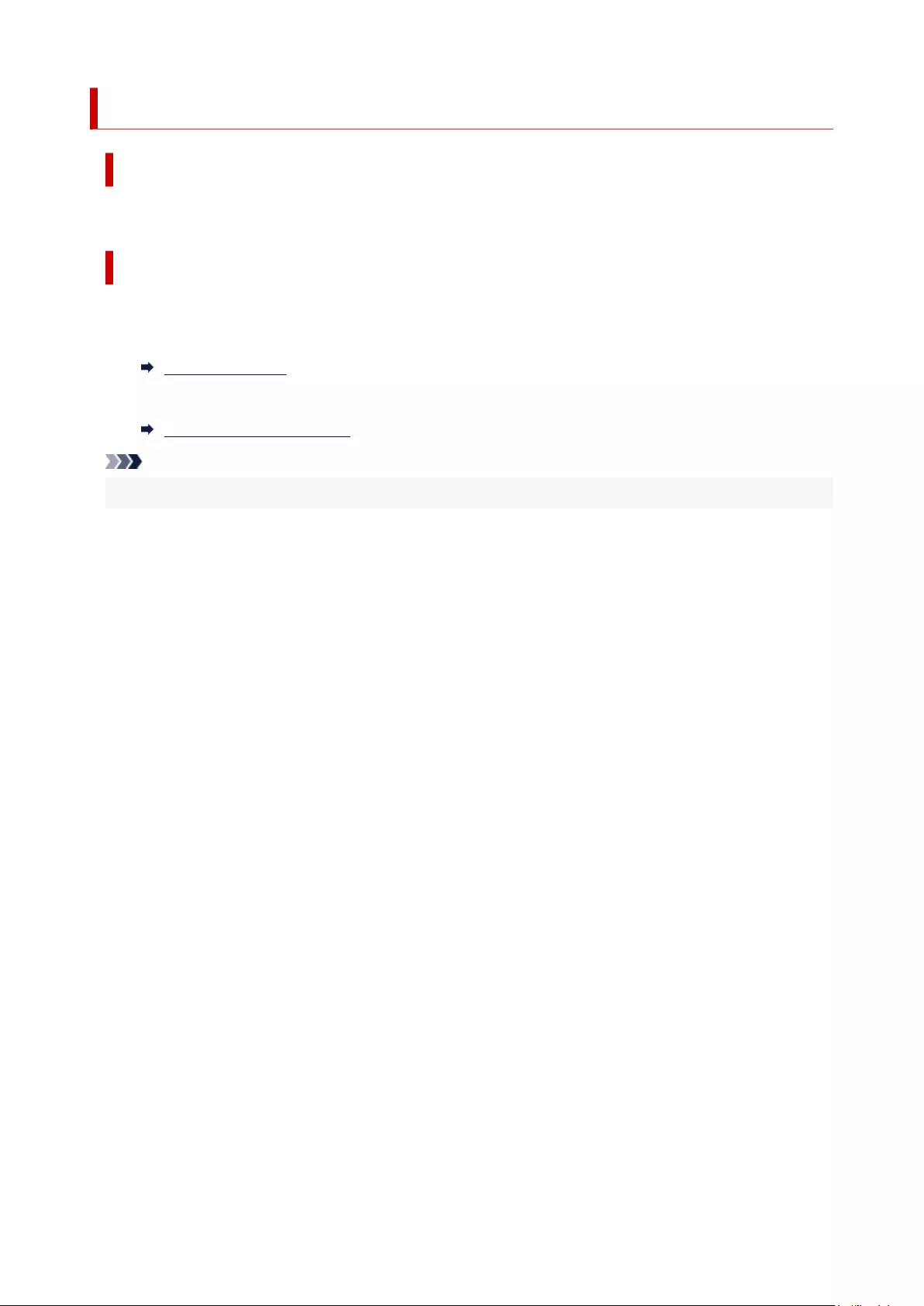
1306
Cause
A print job for rolls was received when a sheet is loaded.
What to Do
Follow these steps to load and print on a roll.
1. To remove the cut paper, tap Remove paper on the touch screen.1.
Removing Sheets
2. Load a new roll.2.
Loading Rolls in the Printer
Note
• To stop printing, tap Cancel on the touch screen or press the Stop button.
734

1317
Cause
Paper loaded crooked was detected when the paper was advanced.
What to Do
Tip back the release lever and reload the paper.
Loading Rolls in the Printer
Loading Sheets in the Printer
If this error appears again even after reloading the paper roll, remove the roll holder from the printer, insert
the paper roll firmly into the roll holder until it is up against the flange, and then insert the roll holder into
the printer.
Loading Rolls on the Roll Holder
Important
• If this message continues to appear even after taking the steps above, or if you do not want this
message to appear, set Skew detection accuracy in the printer menu to OFF or Loose. However,
note that the paper will be printed skewed, which could cause paper jams and abnormal print results,
or dirty the platen and the reverse of the next printed sheet.
735
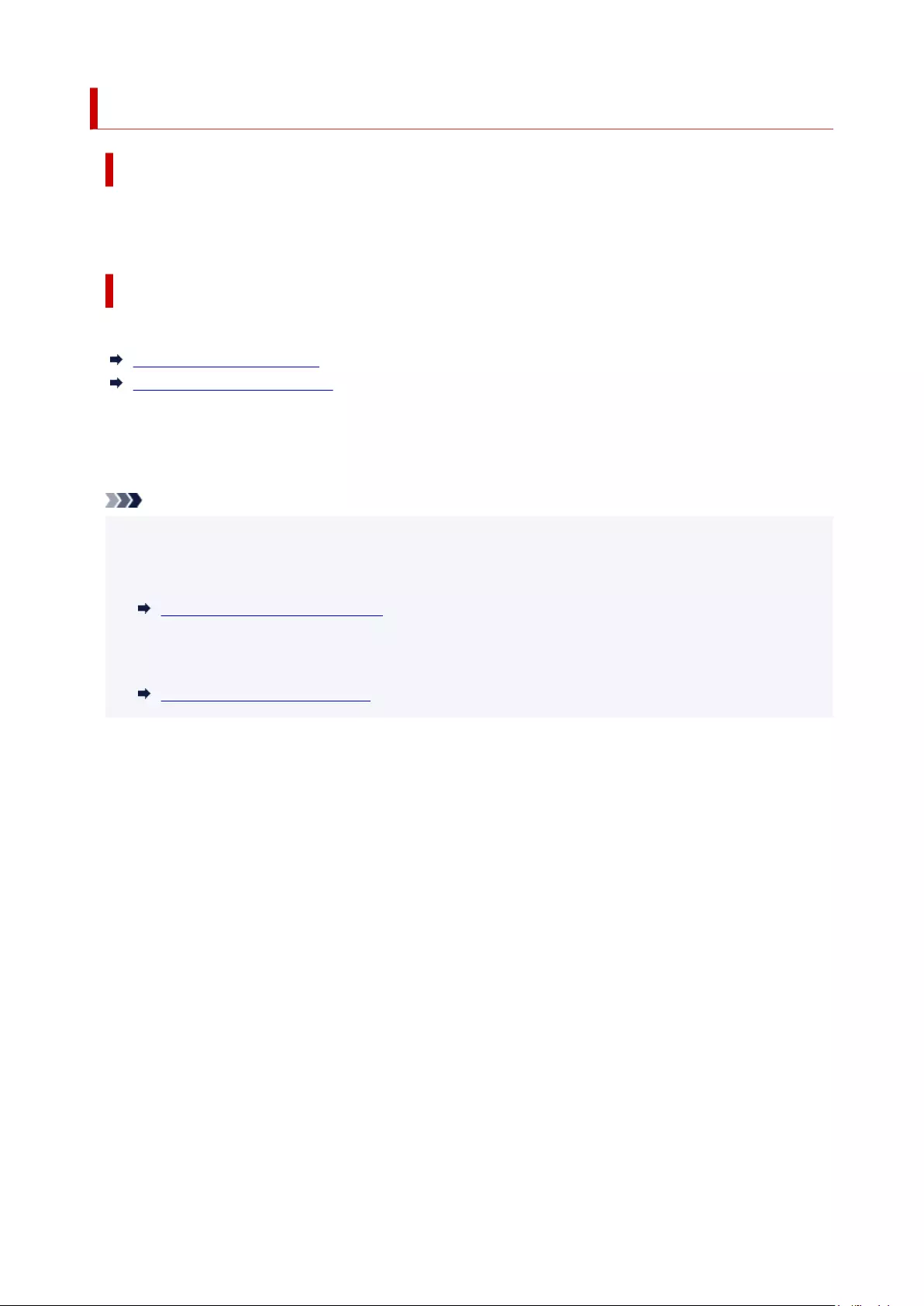
1322
Cause
Cannot detect paper size because paper is not in the correct position or because curled paper has been
loaded.
What to Do
Tip back the release lever and remove any paper. Then check the paper and reload it.
Loading Rolls in the Printer
Loading Sheets in the Printer
If "There is a job which has not been printed yet. Do you want to print this job?" appears on the
touch screen, tap Yes.
Printing will resume, starting from the page on which the error occurred.
Note
• If this error appears again even after reloading the paper roll, remove the roll holder from the printer,•
insert the paper roll firmly into the roll holder until it is up against the flange, and then insert the roll
holder into the printer.
Loading Rolls on the Roll Holder
• This error might also appear if the platen has been dirtied by ink or another substance, or if the size•
of clear film could not be detected. In this case, open the top cover and clean the entire platen area.
Cleaning Inside the Top Cover
736
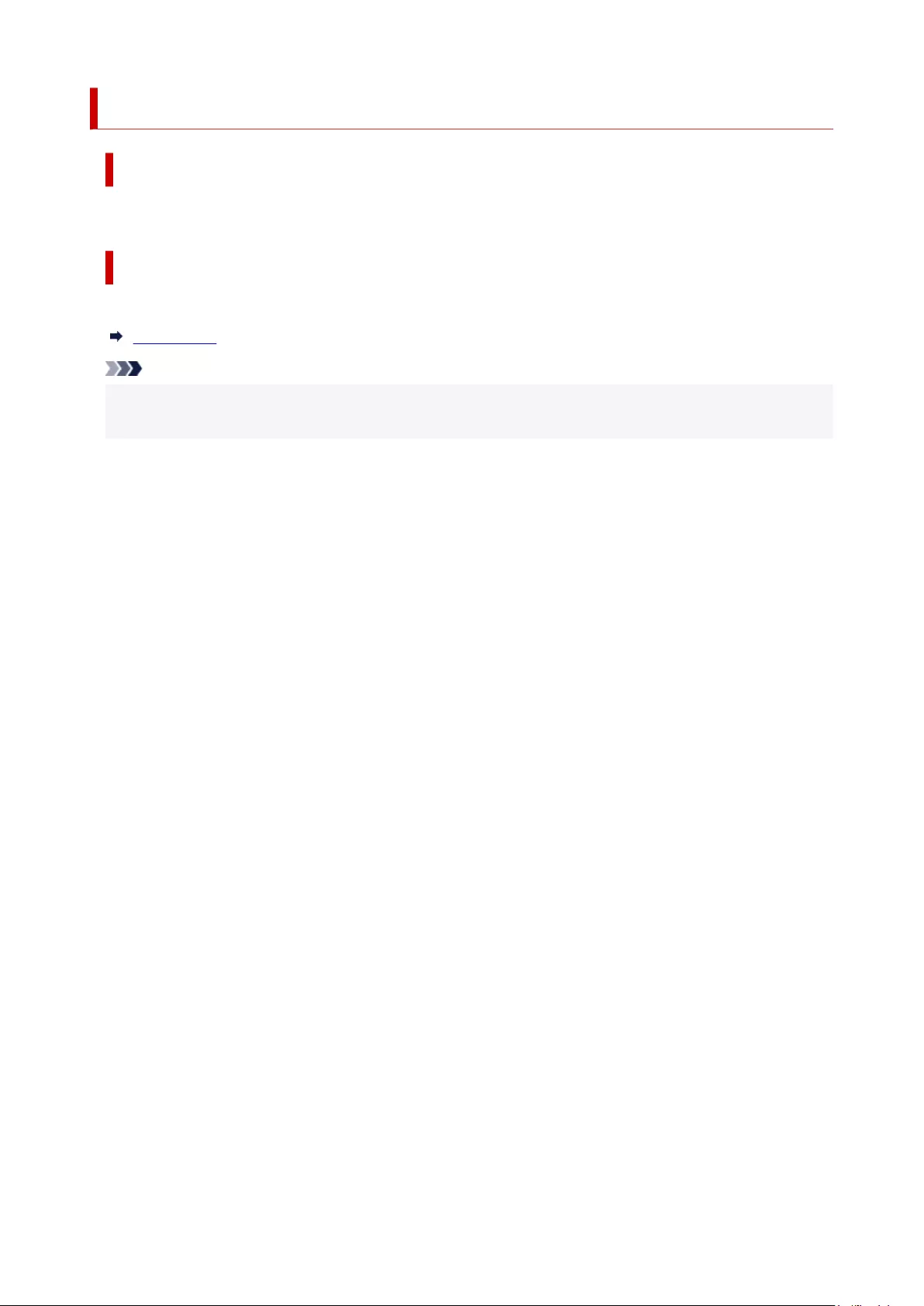
1323
Cause
An unsuitable paper size has been loaded.
What to Do
Tip back the release lever, remove any paper, and then reload paper of suitable size.
Paper Sizes
Note
• Load unused A4/letter size or larger paper if printing calibration and nozzle check patterns. Each
calibration may take several sheets of paper.
737
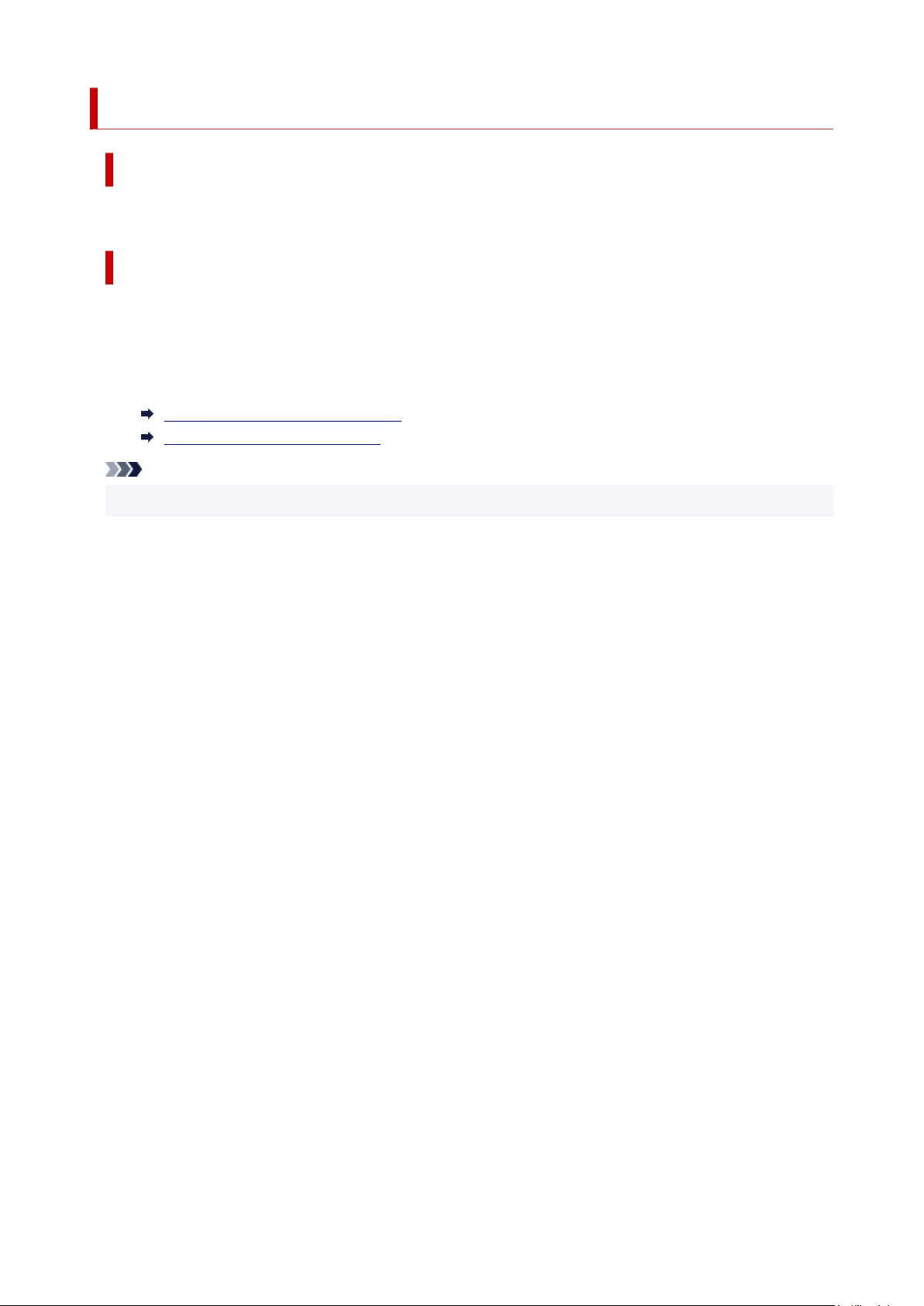
1324
Cause
A print job for printing on sheets was sent when a roll is loaded.
What to Do
Follow the steps below to print again.
1. Tap Remove paper on the touch screen to stop printing.
2. Remove the paper roll, load cut paper of the size and type specified in the printer driver, and then try2.
again.
Removing the Roll from the Printer
Loading and Printing on Sheets
Note
• To stop printing, tap Cancel on the touch screen or press the Stop button.
738

140C
Cause
There is a problem with the print head.
What to Do
Turn off the power, wait a moment, and then turn it back on.
745
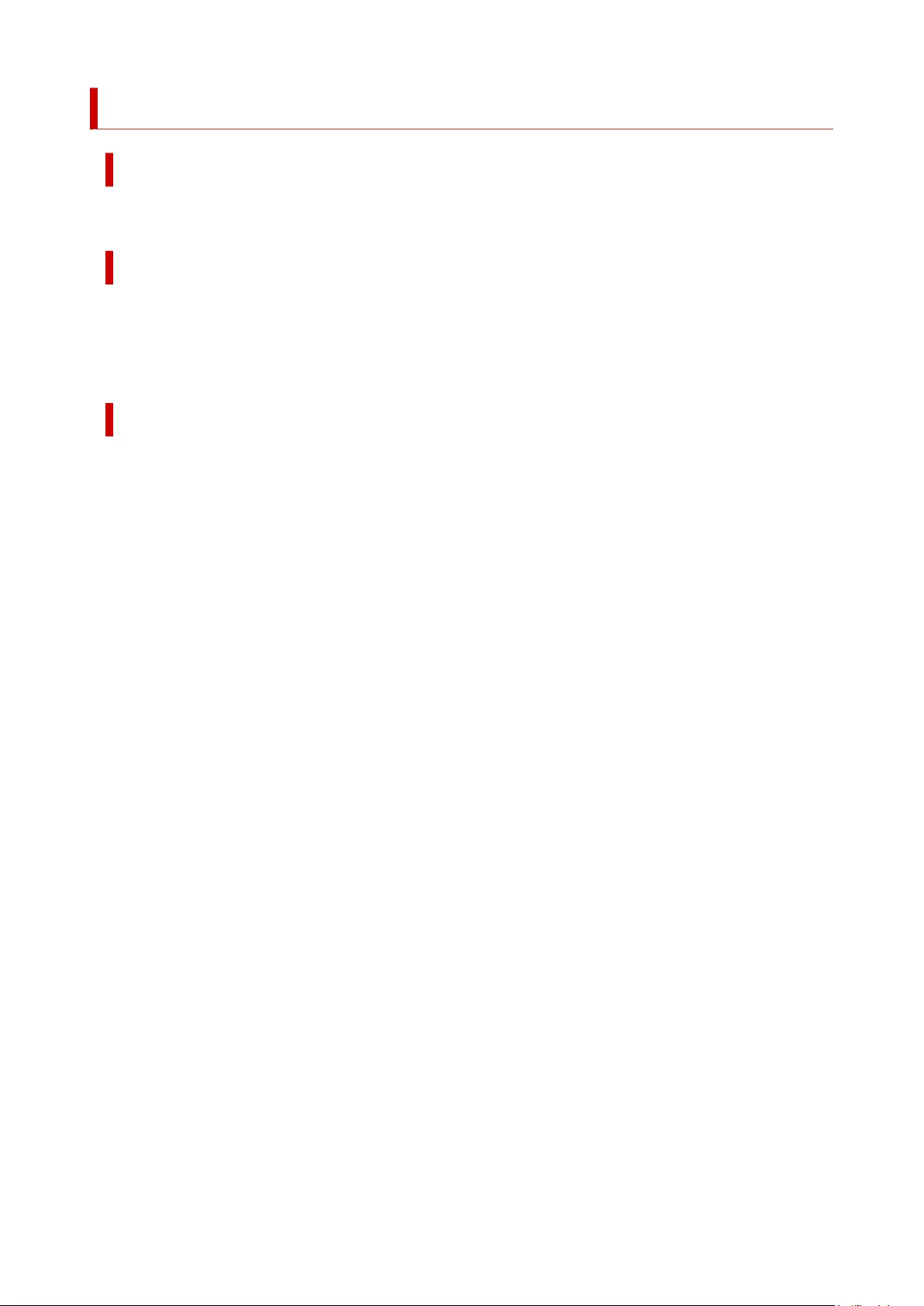
1468
Cause
A printer error has occurred.
What to Do
Turn off the power, wait a moment, and then turn it back on.
If the error appears again, make a note of the detailed error code (ECxx-xxxx) that appears on the touch
screen, and then turn off the power and contact a Canon customer service center.
Detailed error codes
EC55-2F24
747
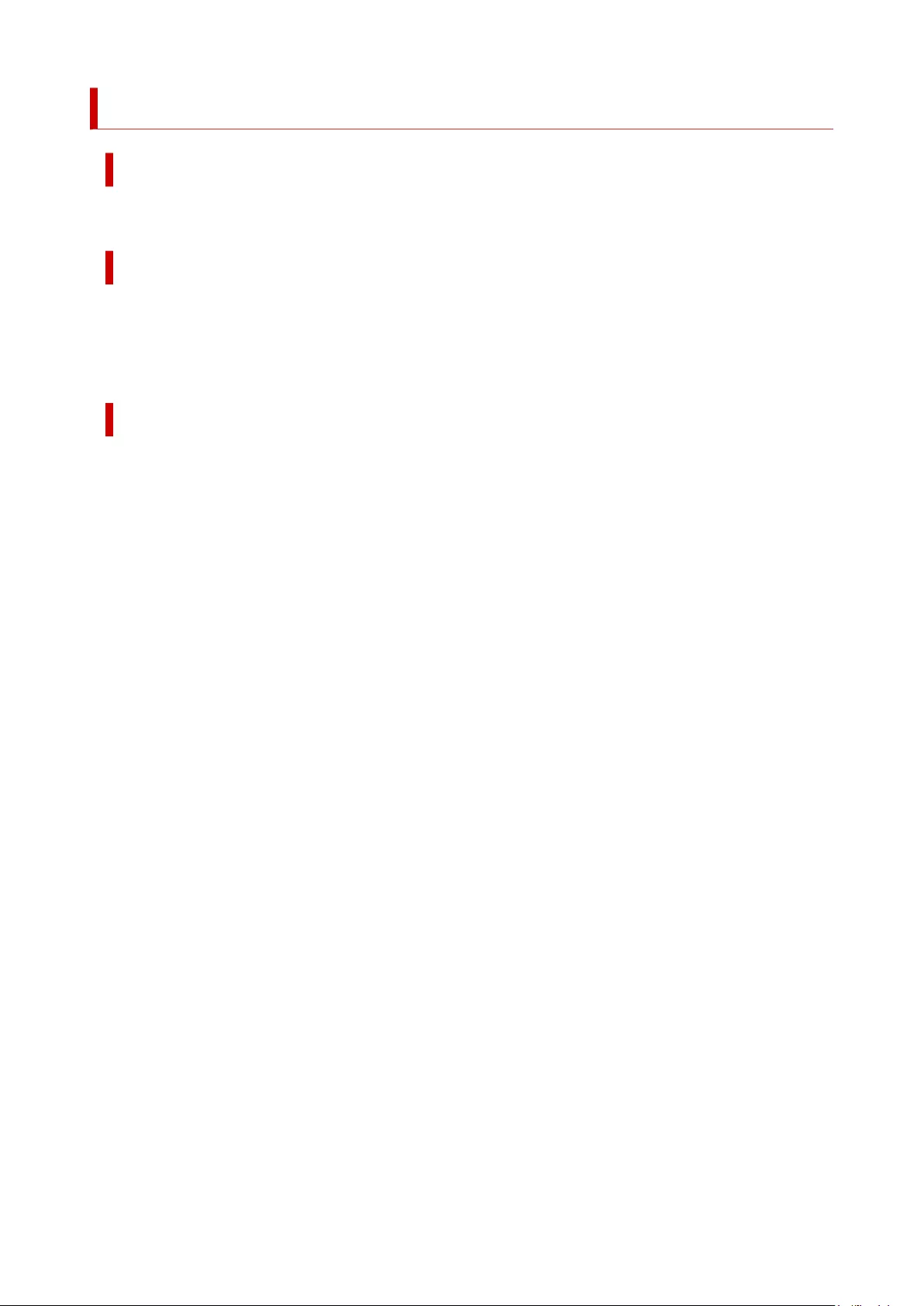
1492
Cause
A printer error has occurred.
What to Do
Turn off the power, wait a moment, and then turn it back on.
If the error appears again, make a note of the detailed error code (ECxx-xxxx) that appears on the touch
screen, and then turn off the power and contact a Canon customer service center.
Detailed error codes
EC02-2F42 EC21-2F44 EC3F-2F40 EC3F-2F41
753
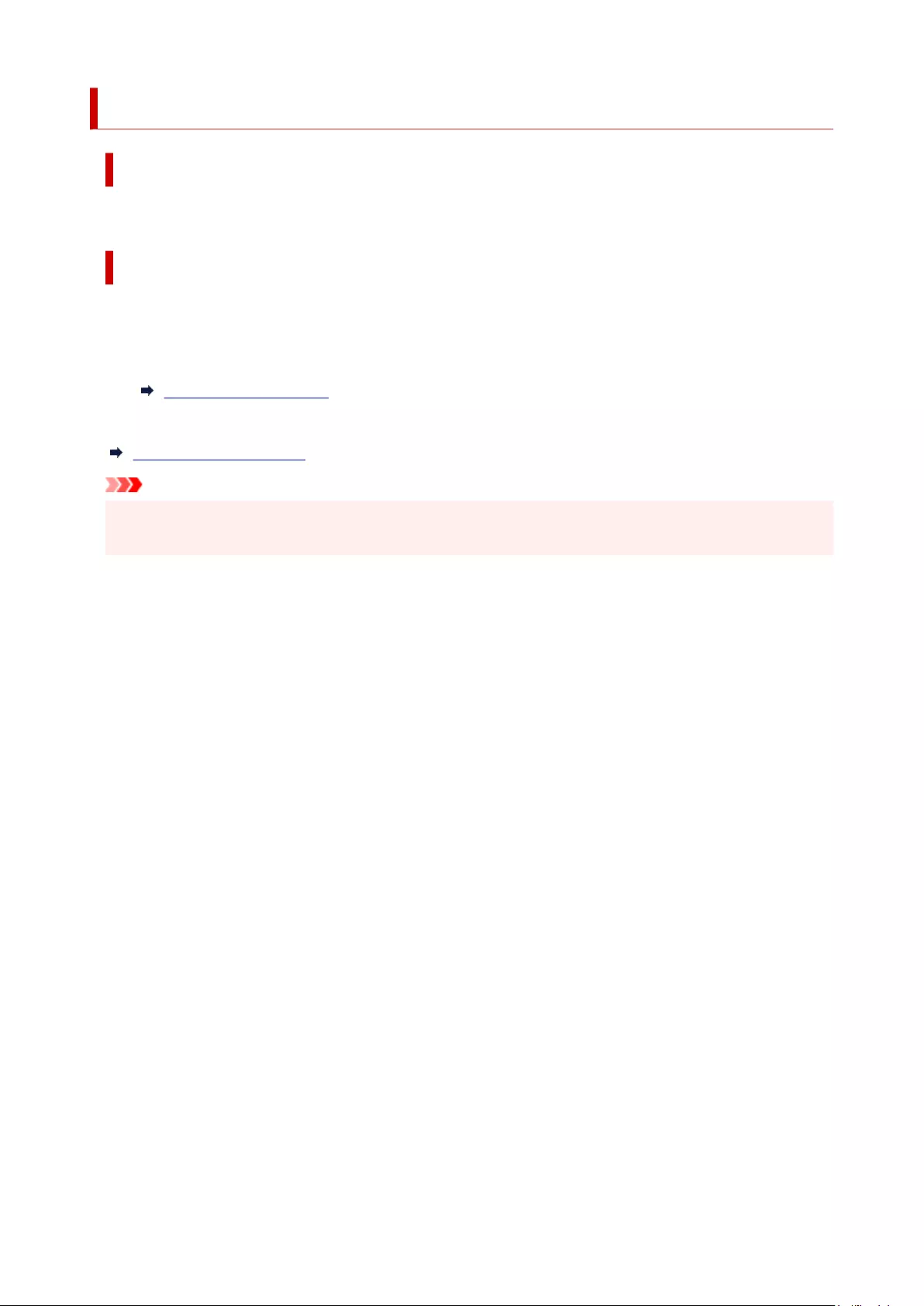
1495
Cause
The print head nozzle is blocked.
What to Do
Follow the steps below to clean the print head.
1. Tap Cancel on the touch screen to stop printing.
2. Clean the print head.2.
Cleaning the Print Head
If this message still appears when printing, replace the print head.
Replacing the Print Head
Important
• To continue printing, use the touch screen and tap Continue printing. However, the print results may
not be satisfactory.
755

1500
Cause
The ink in the ink tank is running low.
What to Do
Prepare a new ink tank.
756

1551
Cause
A genuine Canon ink tank with a history of past use has been detected.
What to Do
To dismiss the message, tap OK on the touch screen.
757
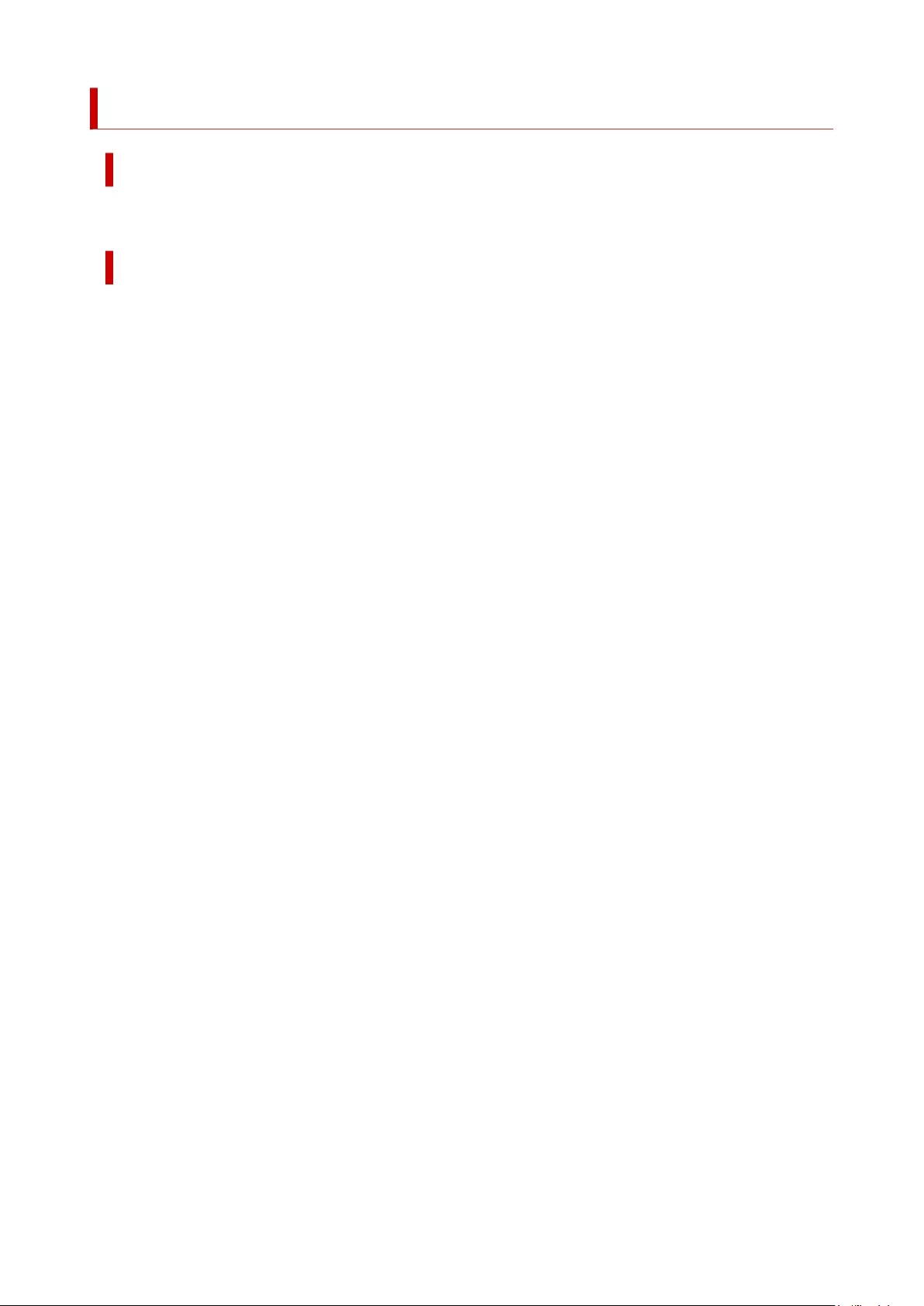
1552
Cause
A genuine Canon ink tank has been inserted.
What to Do
To dismiss the message, tap OK on the touch screen.
758
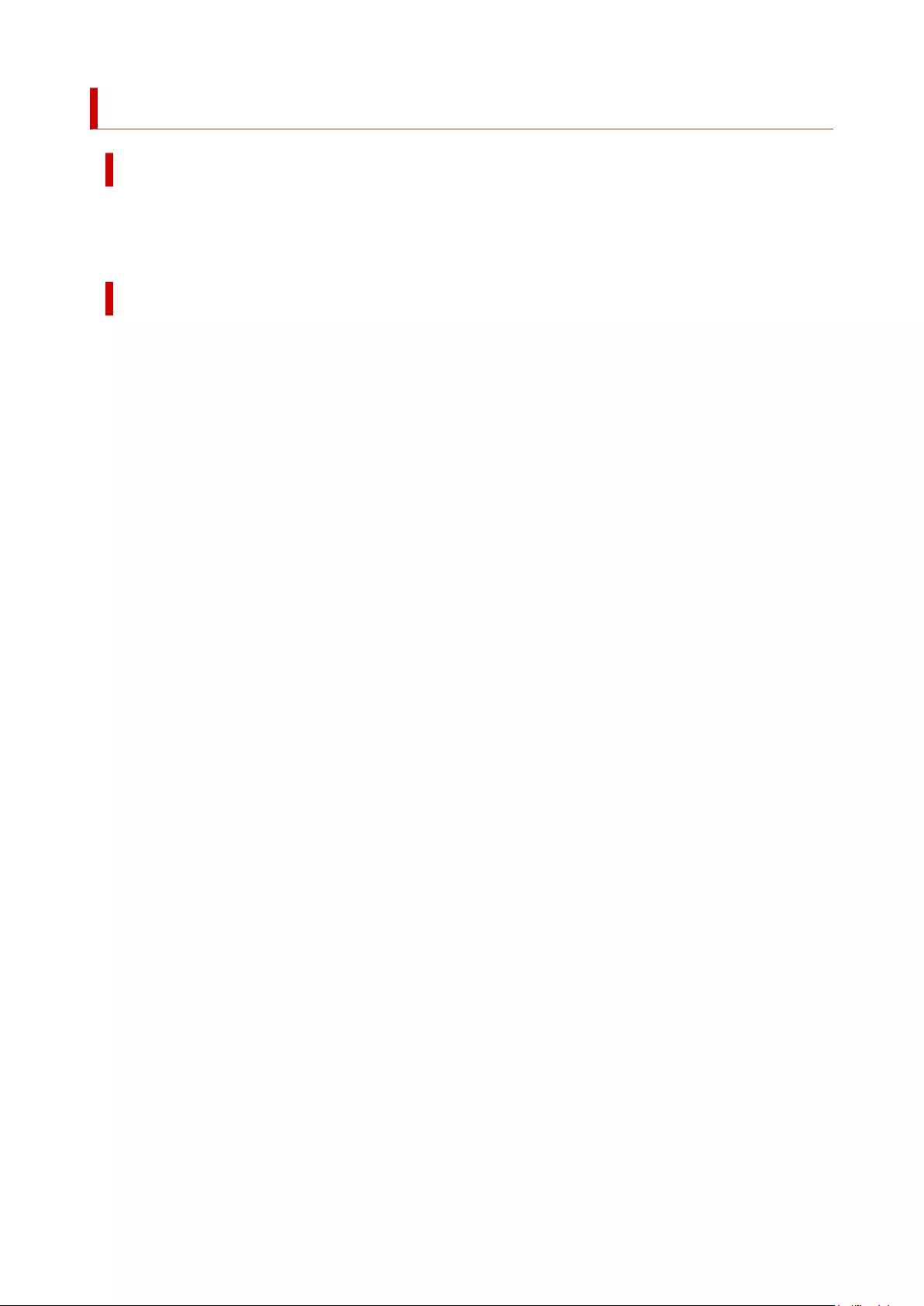
168B
Cause
The ink tank cannot be recognized.
Printing cannot be executed because the ink tank may not be compatible with this printer.
What to Do
Install the appropriate ink tank.
762
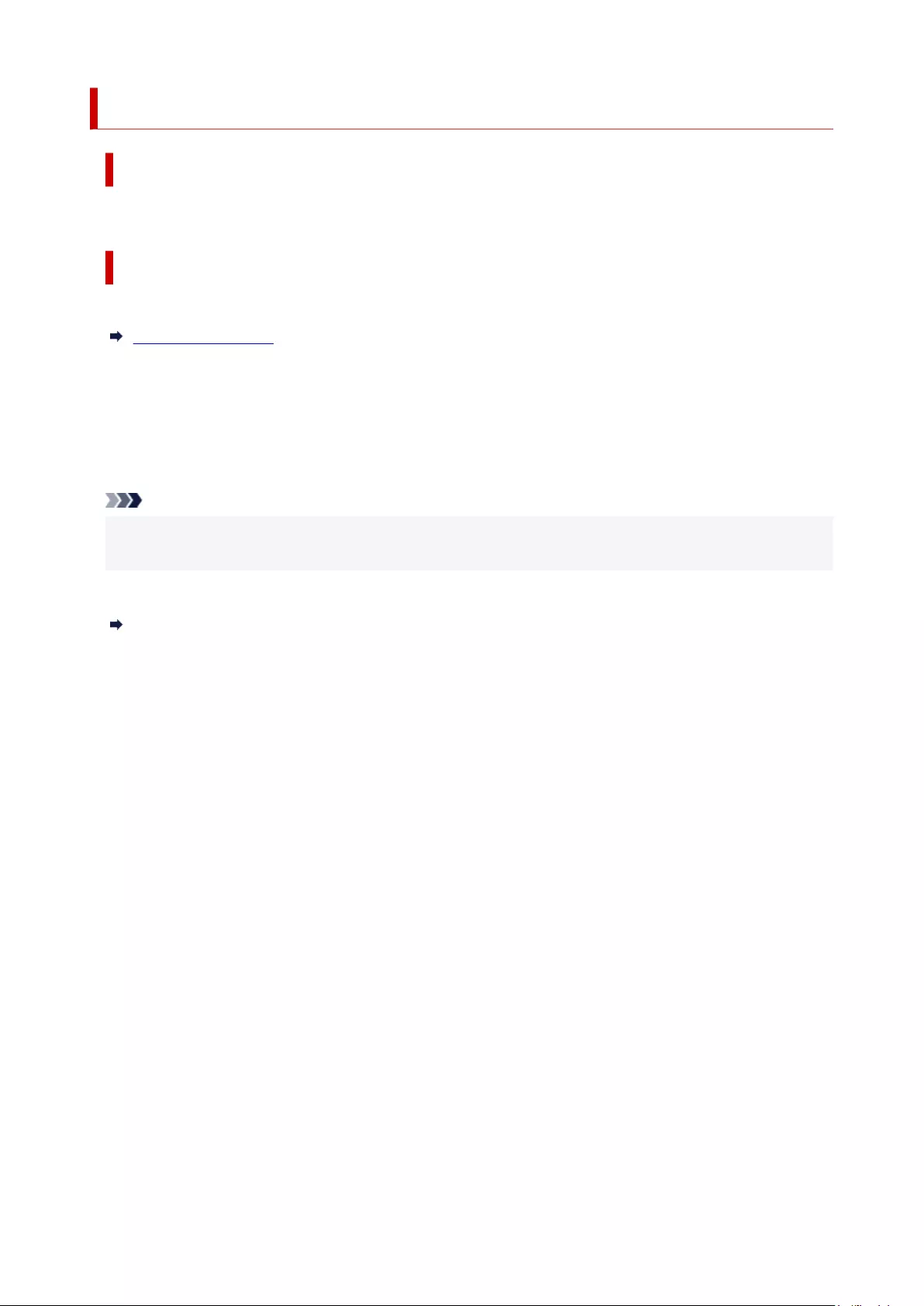
1730
Cause
The ink tank may be an ink tank that ran out of genuine Canon ink or a counterfeit Canon ink tank.
What to Do
To print, you must replace the ink tank or disable the function for detecting the remaining ink level.
Replacing Ink Tanks
To disable the function for detecting the remaining ink level, press and hold the printer's Stop button for at
least 5 seconds, and then release it.
By this operation, the fact that you have disabled the function for detecting the remaining ink level will be
memorized. Please be advised that Canon shall not be liable for any malfunction or trouble caused by
continuation of printing under the ink out condition or by using refilled ink tanks.
Note
• If the function for detecting the remaining ink level is disabled, the ink tank in gray is displayed on the
touch screen when checking the current ink level.
To report the counterfeit ink tank, access Canon website from the following link.
Report Counterfeit
766

1731
Cause
Non-genuine Canon ink tank has been detected.
What to Do
To print, you must replace the ink tank or disable the function for detecting the remaining ink level.
Replacing Ink Tanks
To disable the function for detecting the remaining ink level, press and hold the printer's Stop button for at
least 5 seconds, and then release it.
By this operation, the fact that you have disabled the function for detecting the remaining ink level will be
memorized. Please be advised that Canon shall not be liable for any malfunction or trouble caused by
using a non-genuine Canon ink tank.
Note
• If the function for detecting the remaining ink level is disabled, the ink tank in gray is displayed on the
touch screen when checking the current ink level.
To report the counterfeit ink tank, access Canon website from the following link.
Report Counterfeit
767
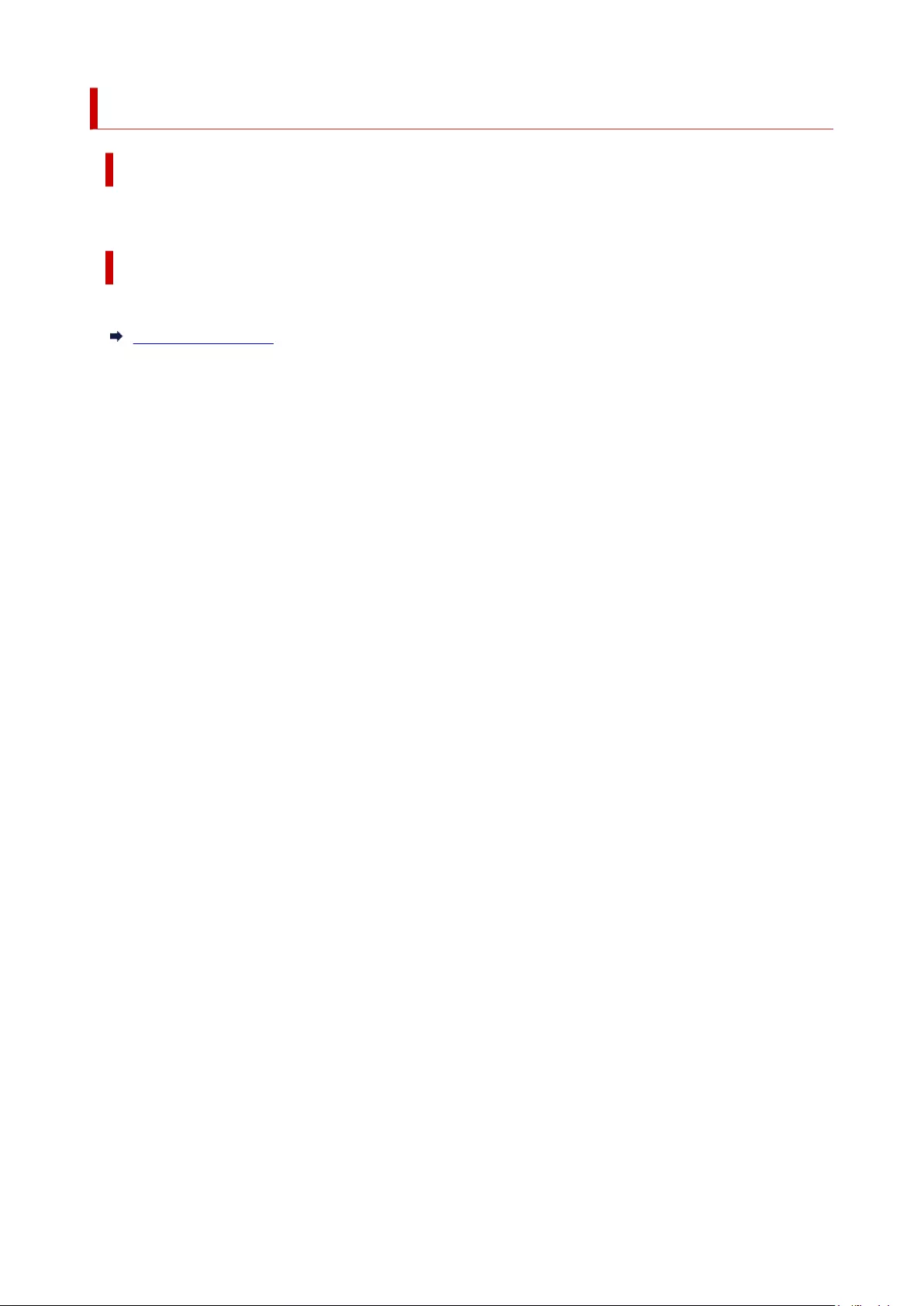
1753
Cause
The remaining level of the ink cannot be correctly detected.
What to Do
Replace the ink tank. Printing will restart.
Replacing Ink Tanks
An ink tank that was once empty is installed.
If you want to continue printing, you need to disable the function for detecting the remaining ink level.
To disable this function, press and hold the printer's Stop button for at least 5 seconds, and then release
it.
With this operation, disabling the function for detecting the remaining ink level is memorized.
Please be advised that Canon shall not be liable for any malfunction or trouble caused by continuation of
printing under the ink out condition or by using refilled ink tanks.
769
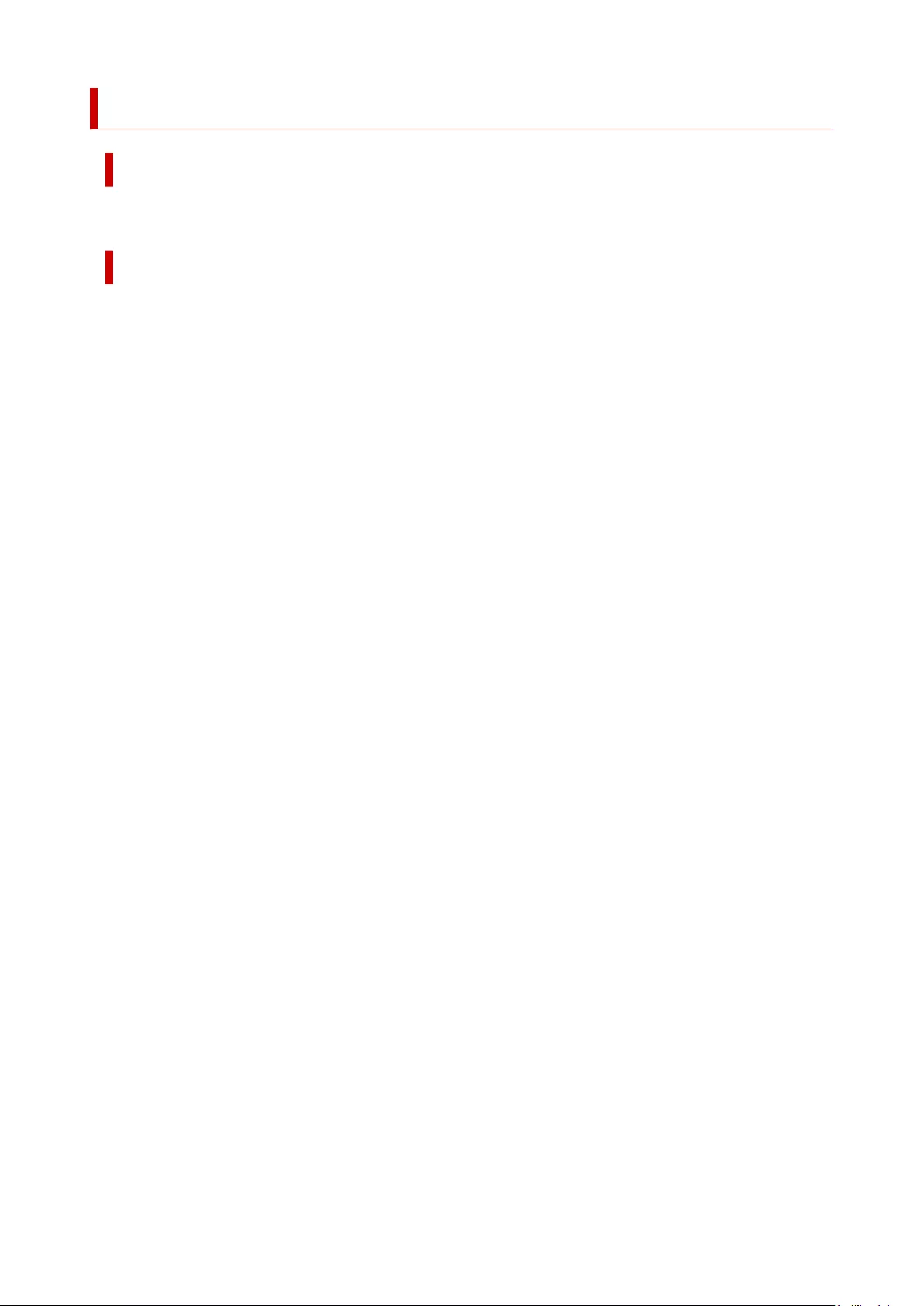
2001
Cause
An incompatible device is connected.
What to Do
Check the device connected to the USB flash drive port.
Only USB flash drive can be connected to this device for direct printing.
772
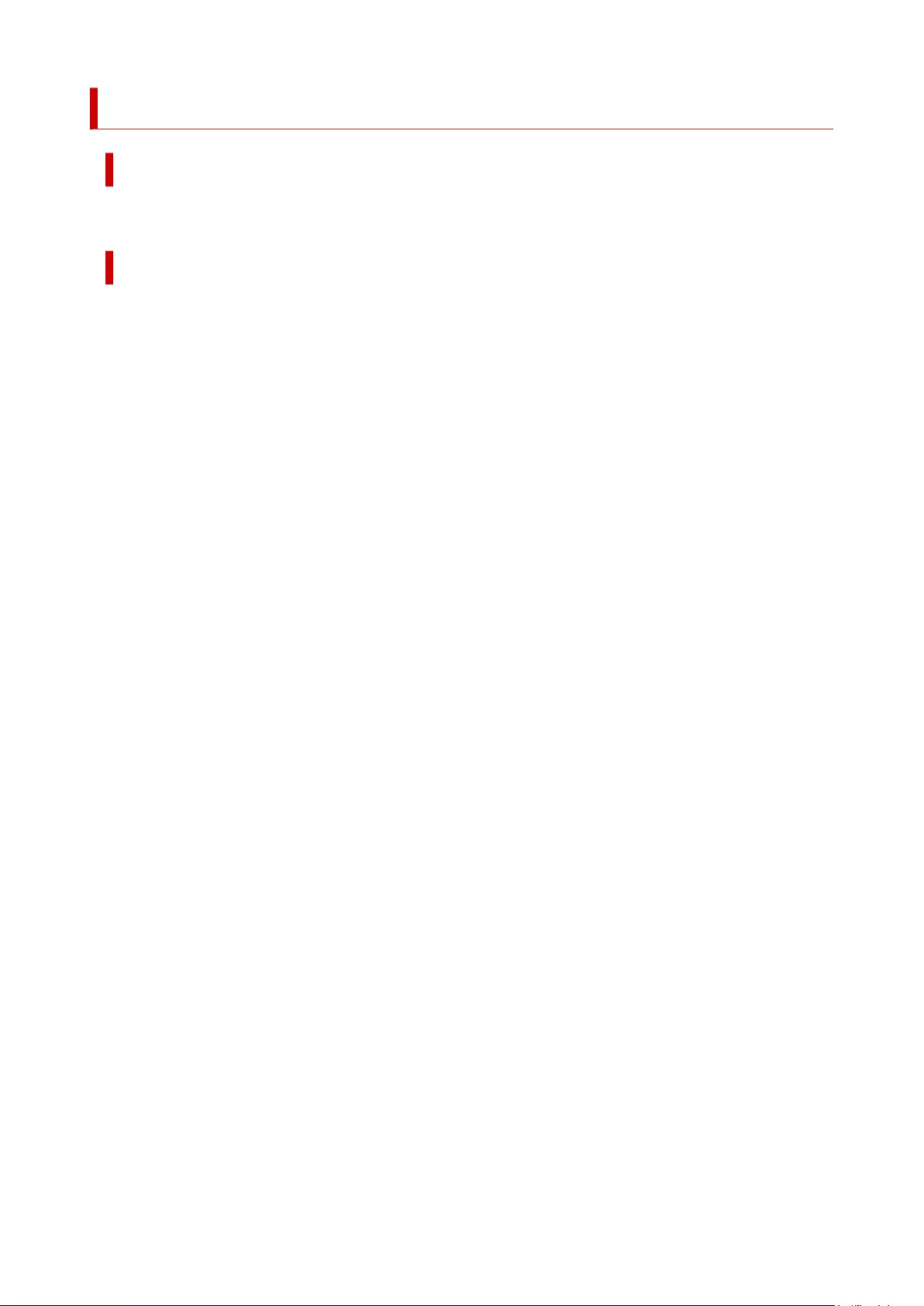
2002
Cause
An incompatible USB hub is connected.
What to Do
If USB flash drive is connected to this device through a USB hub, remove the USB hub.
Connect the USB flash drive directly to this device.
773
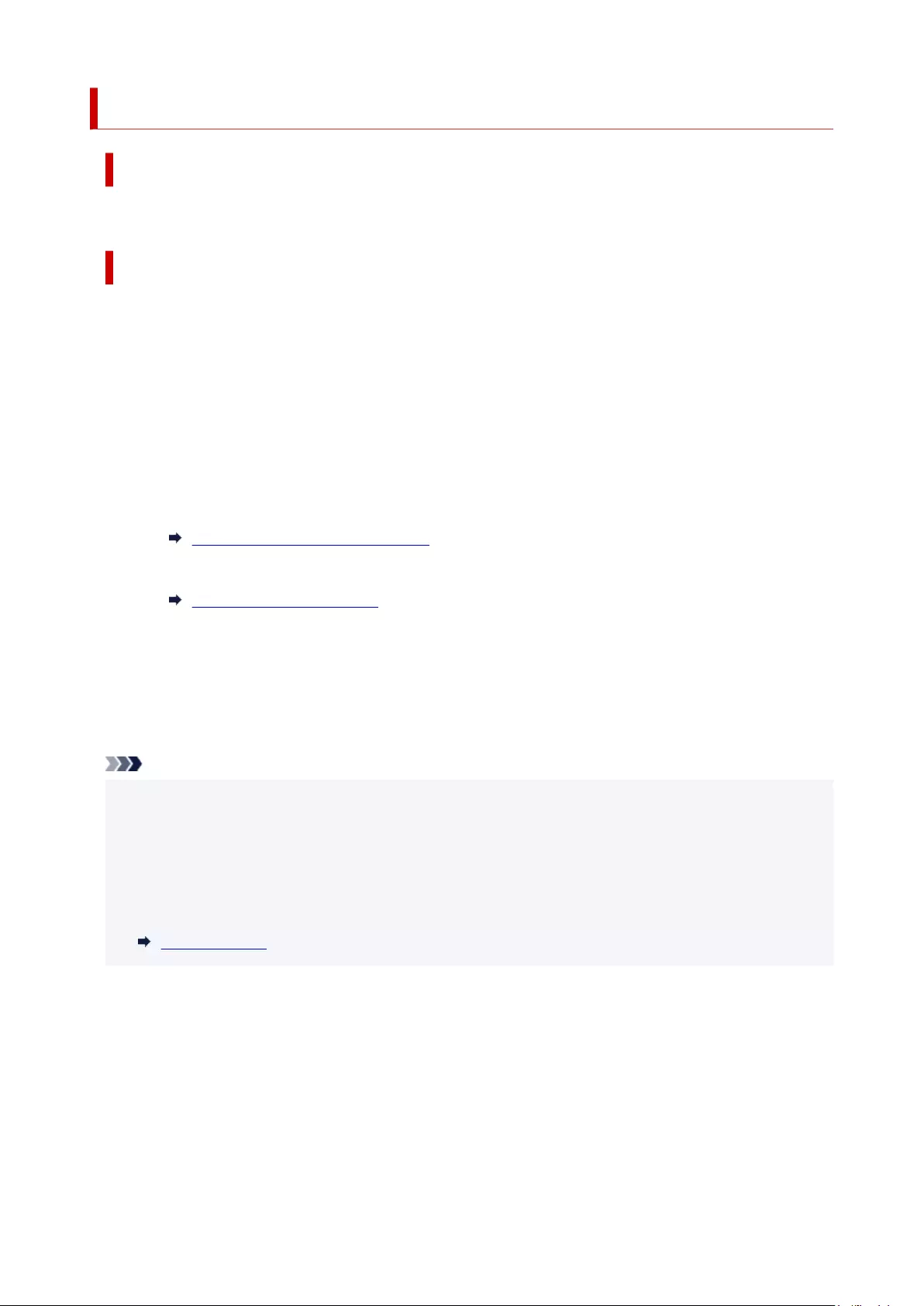
2130
Cause
The roll paper width set in the print job is not the same as the width of the roll paper in the printer.
What to Do
Tap OK on the touch screen to go to the next screen.
Check the media type and size that appear and tap OK.
•Stopping printing•
Tap Cancel on the touch screen or press the Stop button.
•Replacing the roll paper•
Follow the steps below to replace the paper with roll paper of the width set in the printer driver.
1. Tap Replace the paper and print, then remove the roll paper.1.
Removing the Roll from the Printer
2. Replace the paper with paper of the width set in the printer driver.2.
Loading Rolls in the Printer
Printing begins.
•Printing without changes•
Tap Print with the loaded paper..
However, note that this error may cause paper jams and affect the printing quality.
Note
• To change print settings in Windows, select Fit Roll Paper Width in the printer driver and set the roll
paper width in the dialog box that appears.
• To change print settings in macOS, open the printer driver and select Fit Roll Paper Width, and then
set the roll paper width in that panel to the width of the paper loaded in the printer.
• To suppress this message, set Detect paper setting mismatch in the touch screen menu to Do not•
detect. However, note that this error may affect the printing quality.
Menu Structure
774
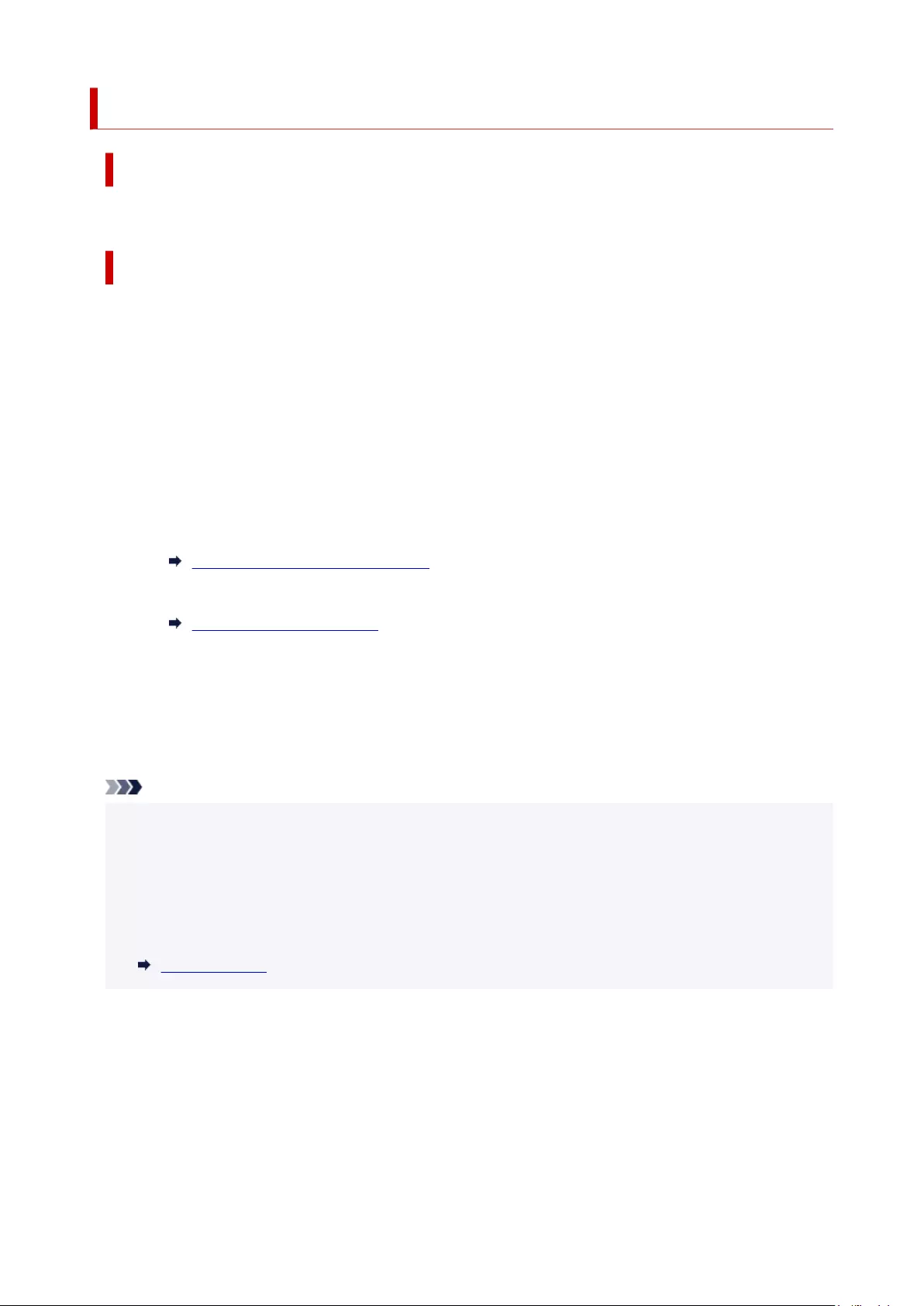
2131
Cause
The roll paper loaded in the printer is narrower than the roll paper width in the print job.
What to Do
Tap OK on the touch screen to go to the next screen.
Check the media type and size that appear and tap OK.
•Stopping printing•
Tap Cancel on the touch screen or press the Stop button.
•Replacing the roll paper•
Follow the steps below to replace the paper with roll paper of the width specified in the print job paper
size settings.
1. Tap Replace the paper and print, then remove the roll paper.1.
Removing the Roll from the Printer
2. Replace the paper with paper of the width set in the printer driver.2.
Loading Rolls in the Printer
Printing begins.
•Printing without changes•
Tap Print with the loaded paper..
However, note that this error may cause paper jams and affect the printing quality.
Note
• To change print settings in Windows, select Fit Roll Paper Width in the printer driver and set the roll
paper width in the dialog box that appears.
• To change print settings in macOS, open the printer driver and select Fit Roll Paper Width, and then
set the roll paper width in that panel to the width of the paper loaded in the printer.
• To suppress this message, set Detect paper setting mismatch in the touch screen menu to Do not•
detect. However, note that this error may affect the printing quality.
Menu Structure
775

2132
Cause
Cannot print internal printer data, such as test prints, for the following reasons.
• The paper roll loaded in the printer is too small.
• The cut paper loaded in the printer is the wrong size or type.
What to Do
•Roll•
Tap Replace the paper and print on the touch screen, or tip back the release lever and replace the
paper with paper of the correct size.
Loading Rolls in the Printer
To stop printing, tap Cancel or press the Stop button.
•Sheet•
Tip back the release lever, remove any paper, and then load paper of the same size and type as the
first page.
Loading Sheets in the Printer
To stop printing, press the Stop button.
776
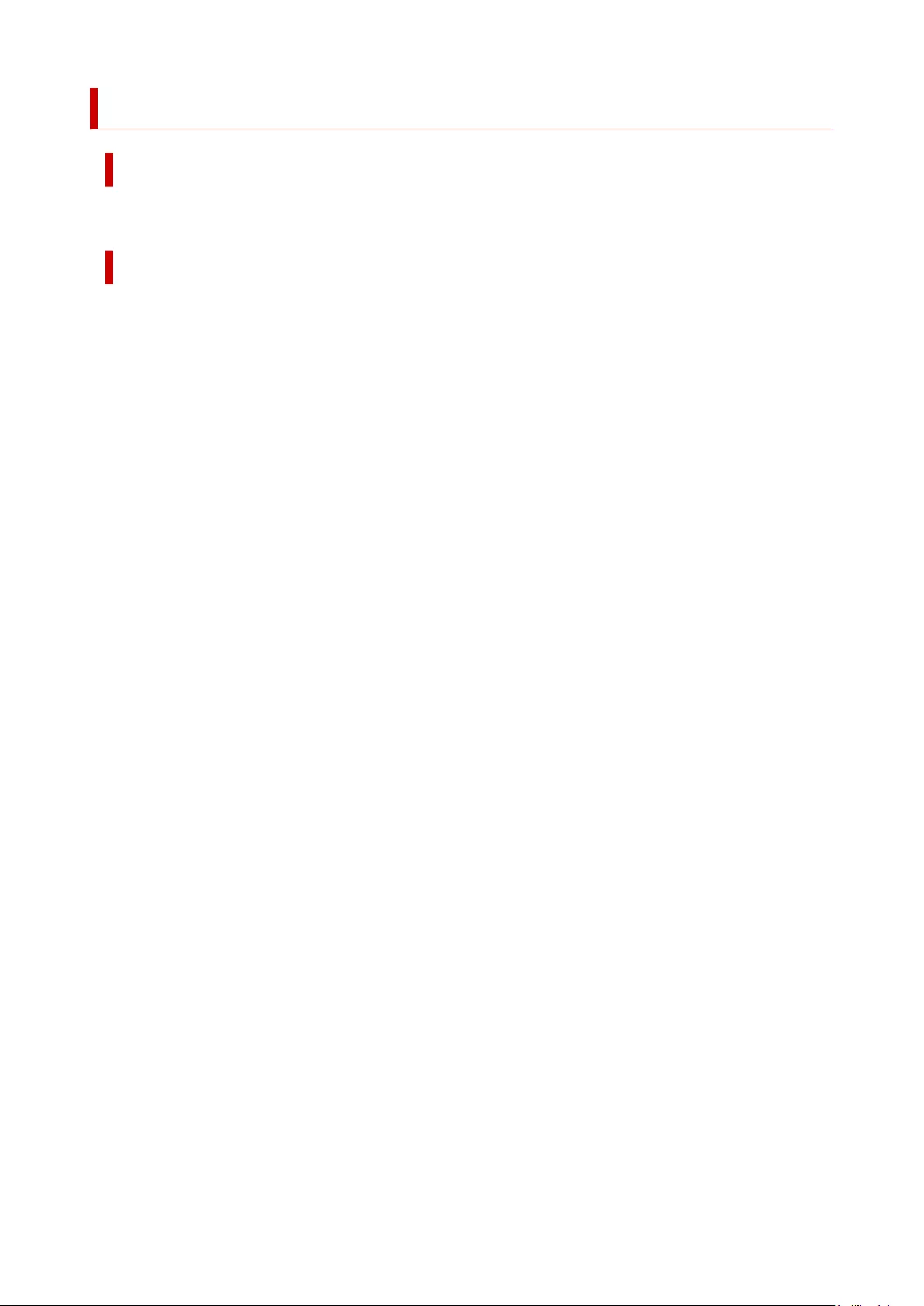
3200
Cause
It is almost time to replace consumables for which service is required.
What to Do
This can used for a little while, until the message "A part needs to be replaced." appears.
Contact your Canon dealer for assistance.
779
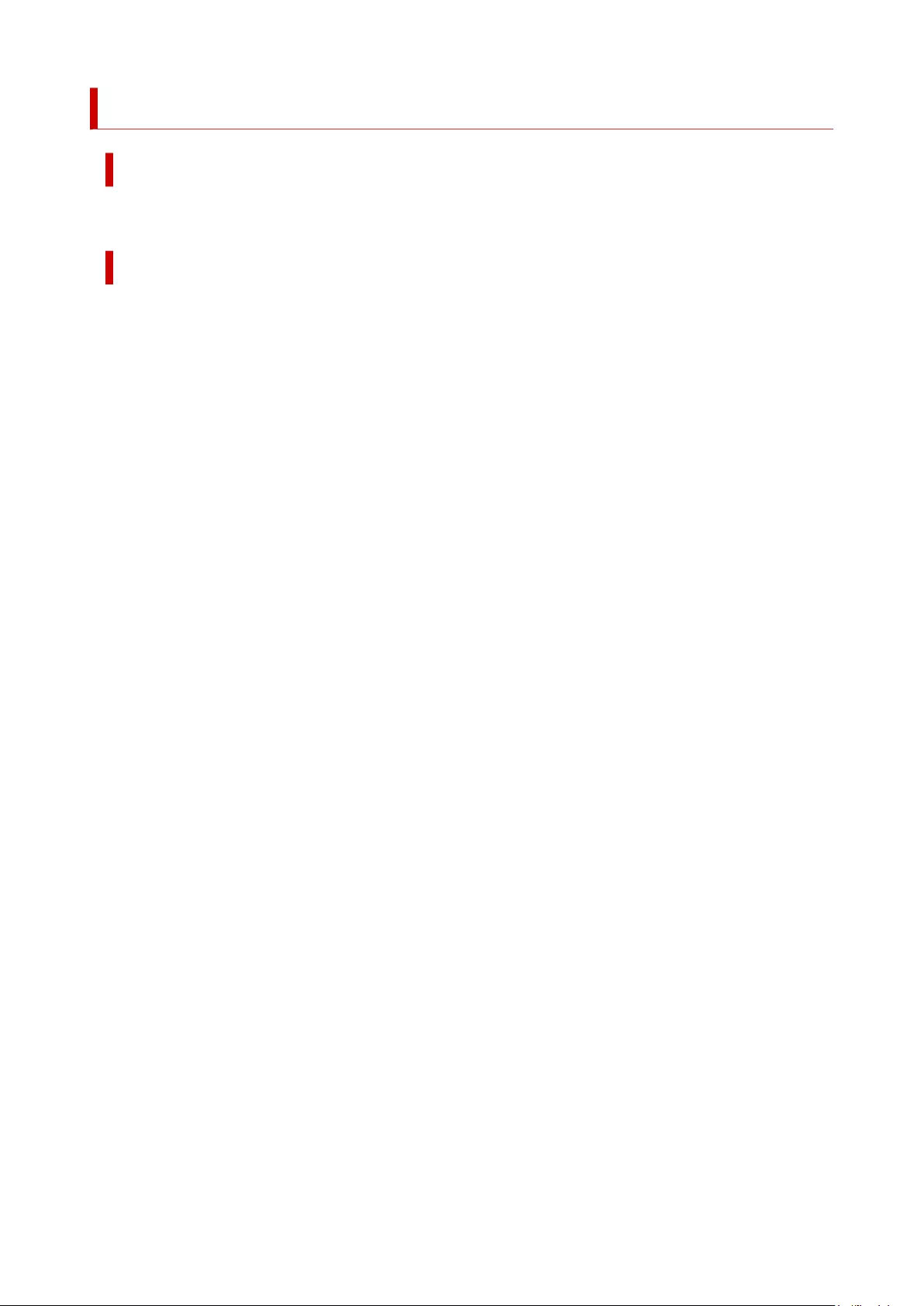
3201
Cause
It is past the recommended time to replace consumables for which service is required.
What to Do
Contact your Canon dealer for assistance.
780
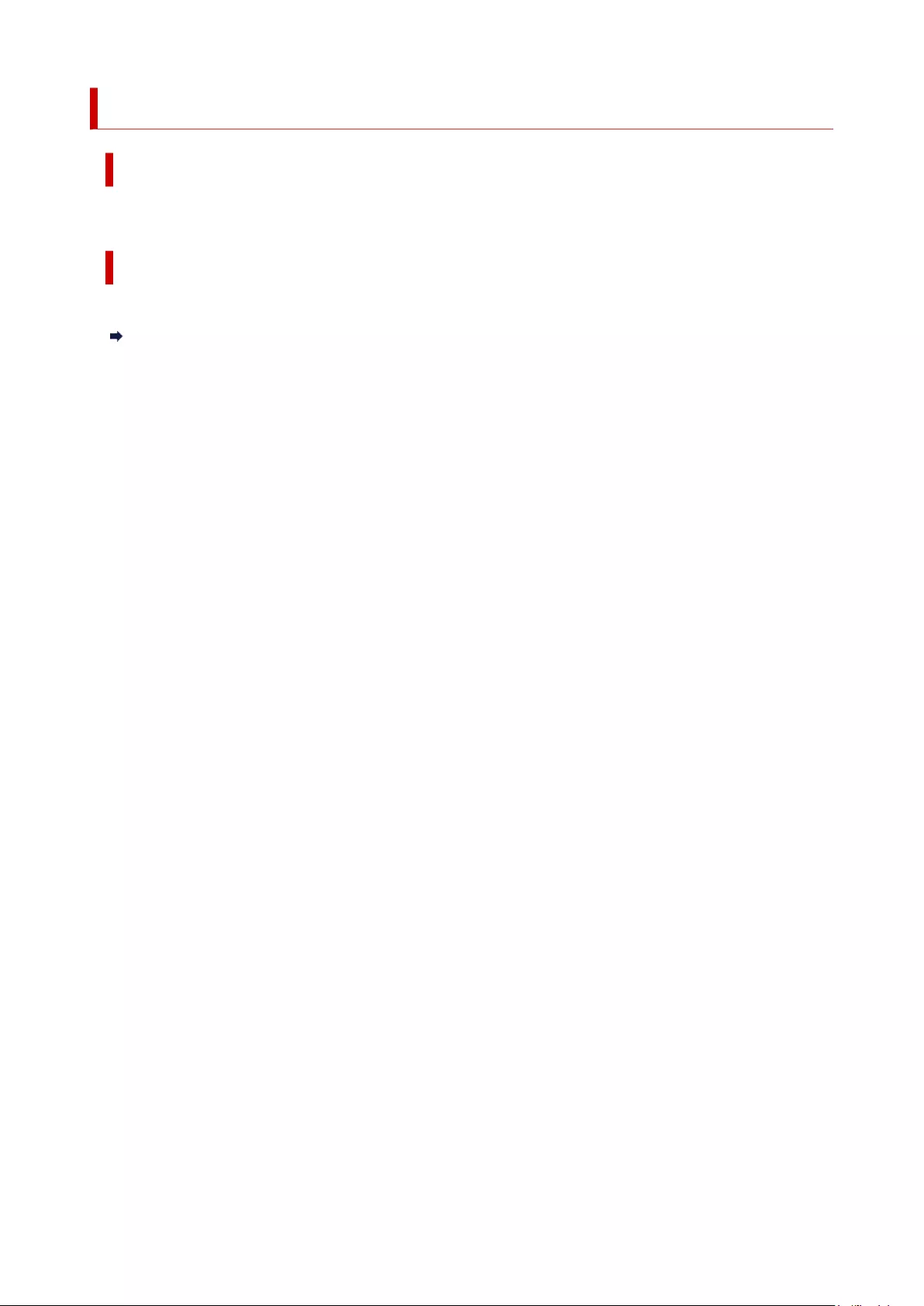
3306
Cause
Media information cannot be recognized because the printer media information is corrupt.
What to Do
Start the Media Configuration Tool, and then recover the media information.
Media Configuration Tool Guide
To set the Media Configuration Tool to recovery mode, open the Media Configuration Tool, select this
device and then click OK.
Select and load the media information backup file.
If you do not have a media information backup file, contact a Canon customer service center.
782
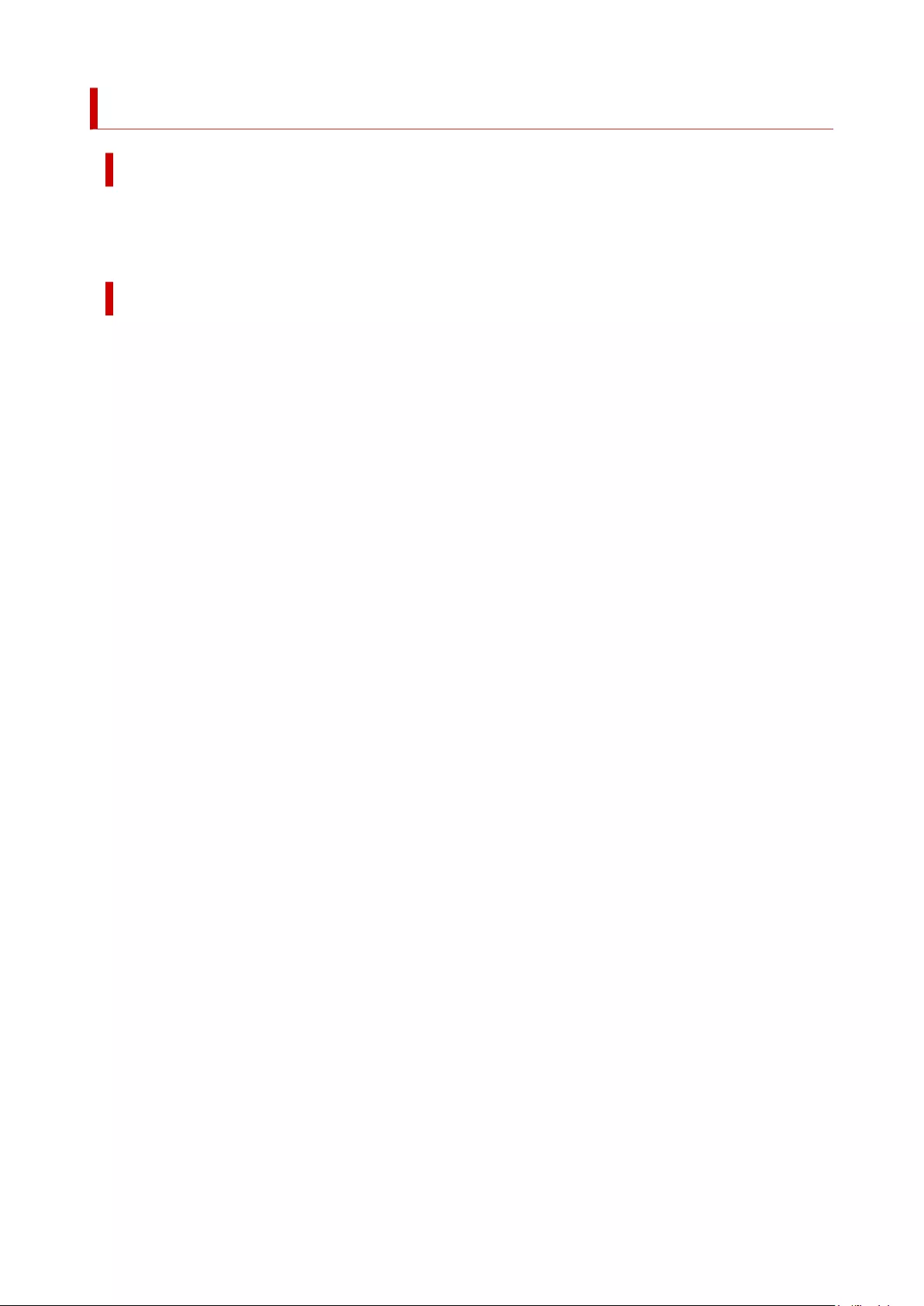
3311
Cause
Incorrect print data.
Illegal number of parameters.
What to Do
Defective print data, please check the print results.
If using printing software such as RIP (Raster Image Processor), contact the software manufacturer.
783

3312
Cause
Incorrect print data.
Required items have been omitted.
What to Do
Defective print data, please check the print results.
If using printing software such as RIP (Raster Image Processor), contact the software manufacturer.
784
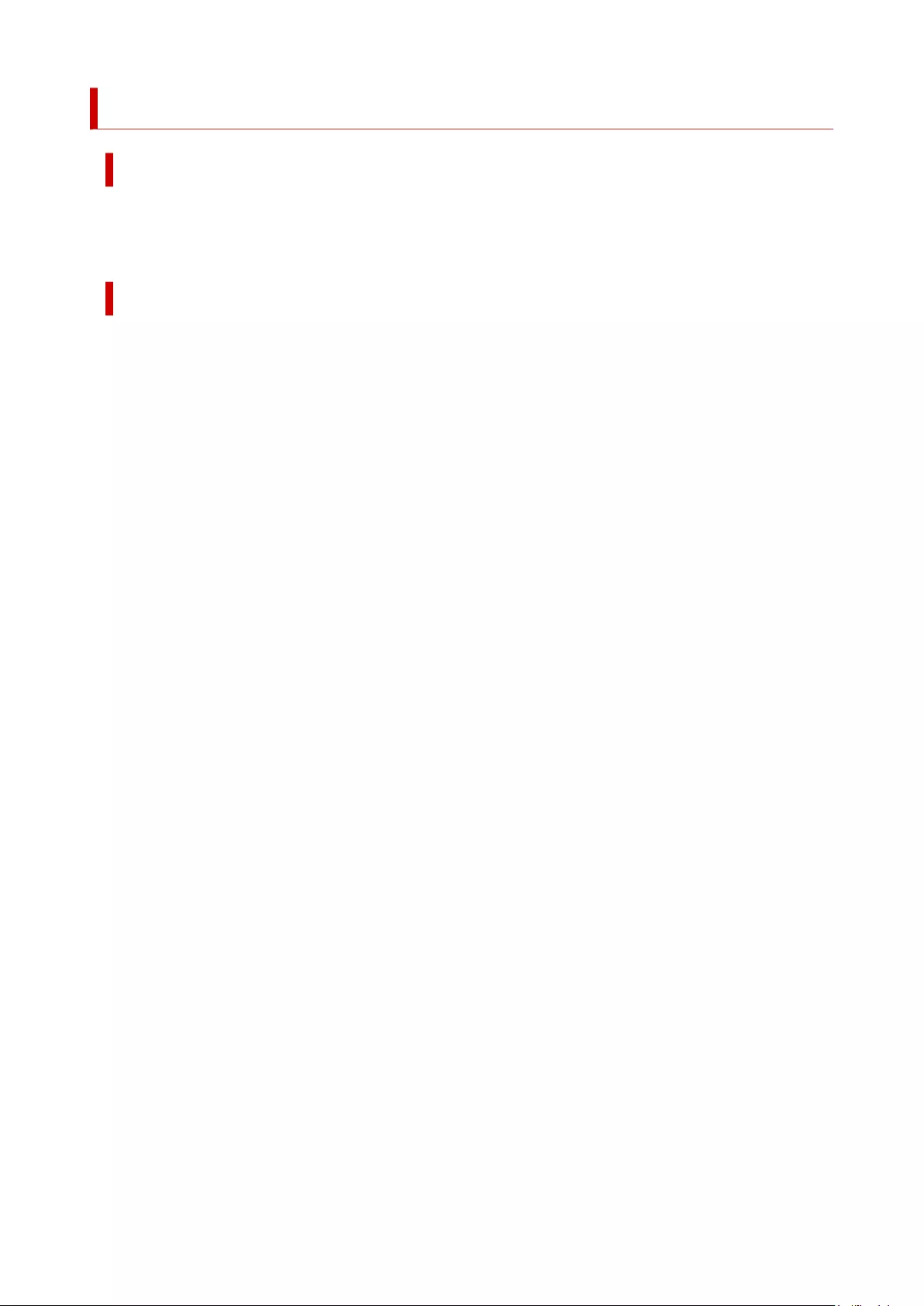
3313
Cause
Incorrect print data.
Data out of range.
What to Do
Defective print data, please check the print results.
If using printing software such as RIP (Raster Image Processor), contact the software manufacturer.
785
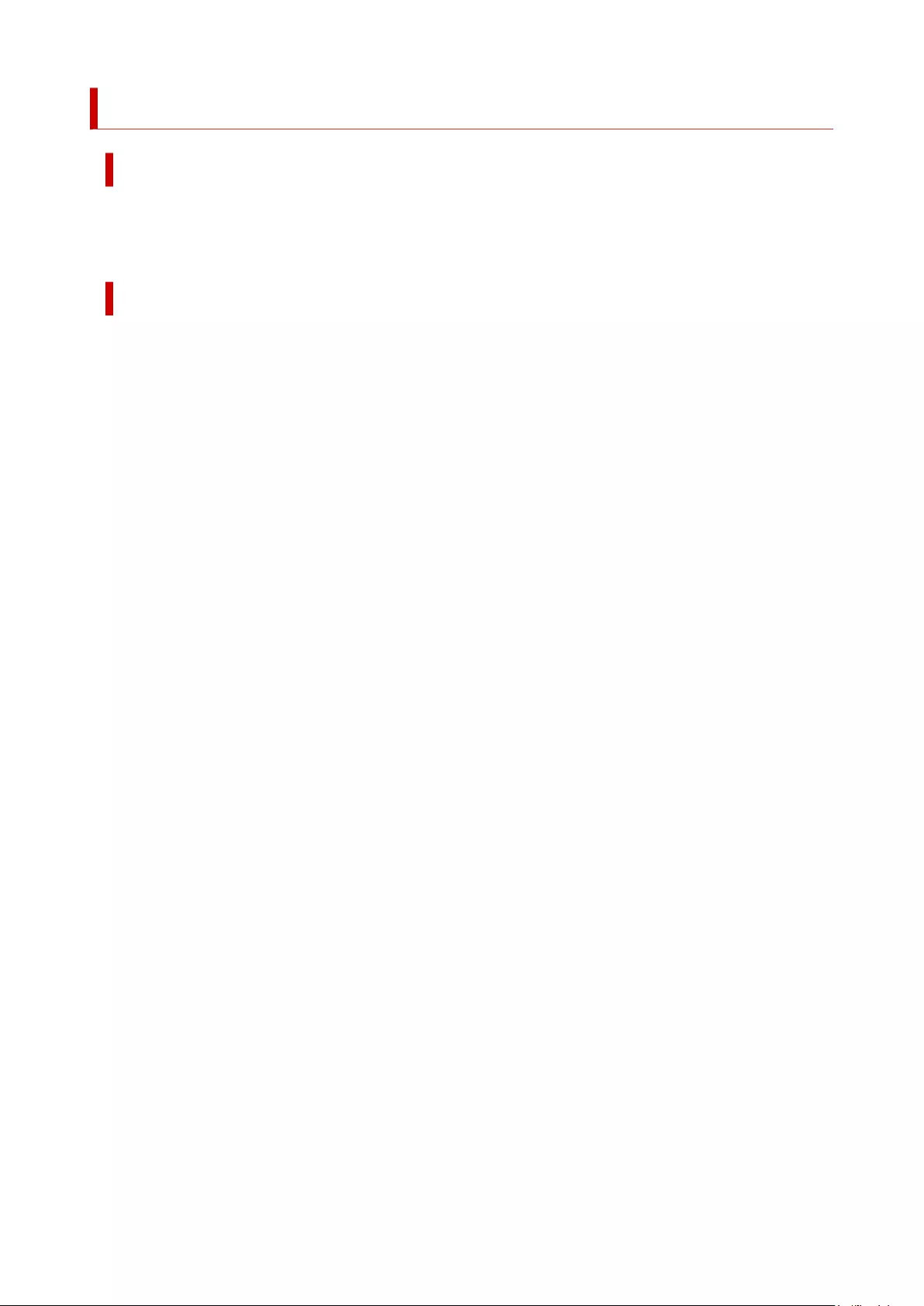
3314
Cause
Incorrect print data.
Resolution value out of range.
What to Do
Defective print data, please check the print results.
If using printing software such as RIP (Raster Image Processor), contact the software manufacturer.
786
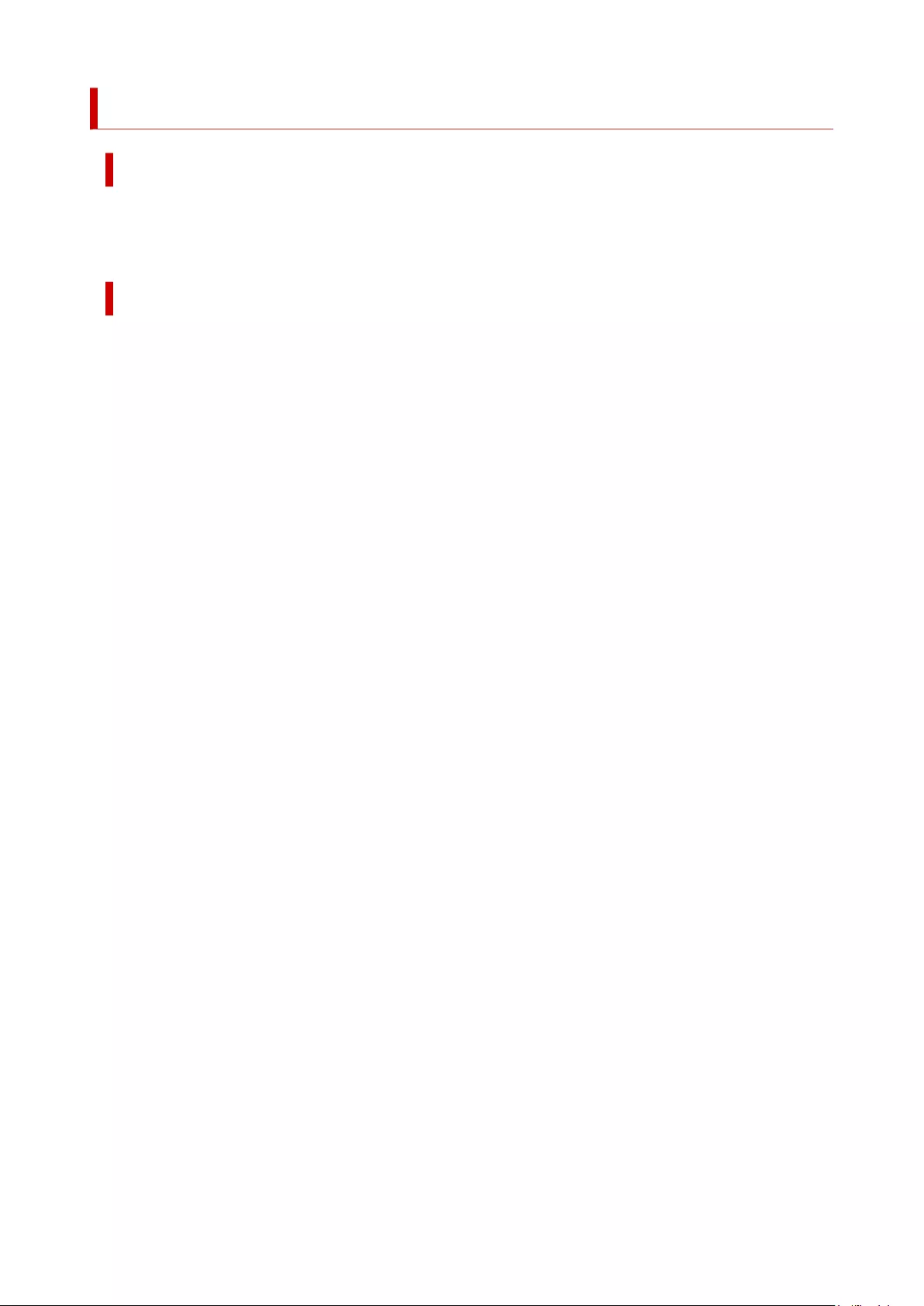
3315
Cause
Incorrect print data.
Compression method value out of range.
What to Do
Defective print data, please check the print results.
If using printing software such as RIP (Raster Image Processor), contact the software manufacturer.
787
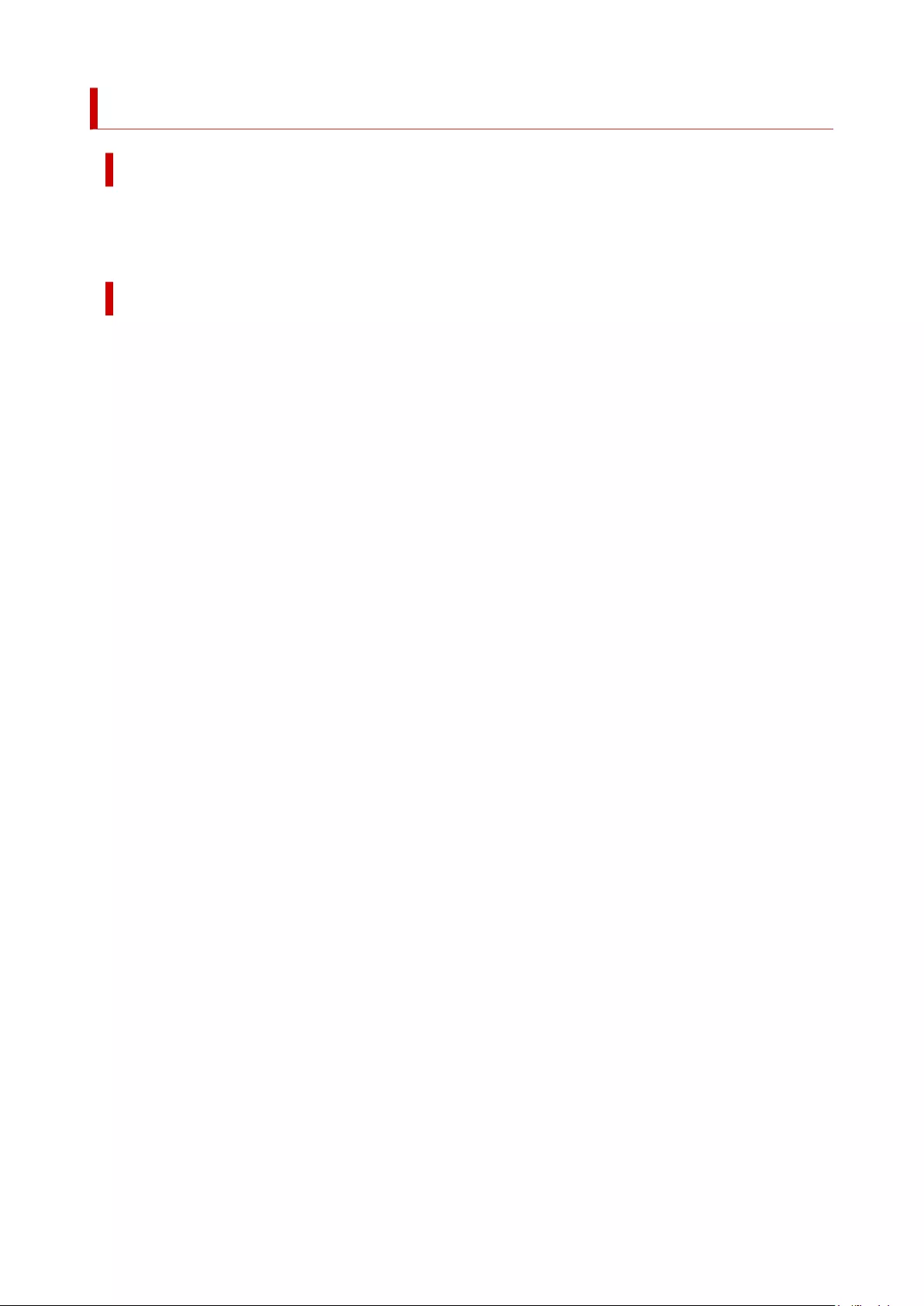
3316
Cause
Incorrect print data.
Incorrect data formatting (color sequence, bit count).
What to Do
Defective print data, please check the print results.
If using printing software such as RIP (Raster Image Processor), contact the software manufacturer.
788
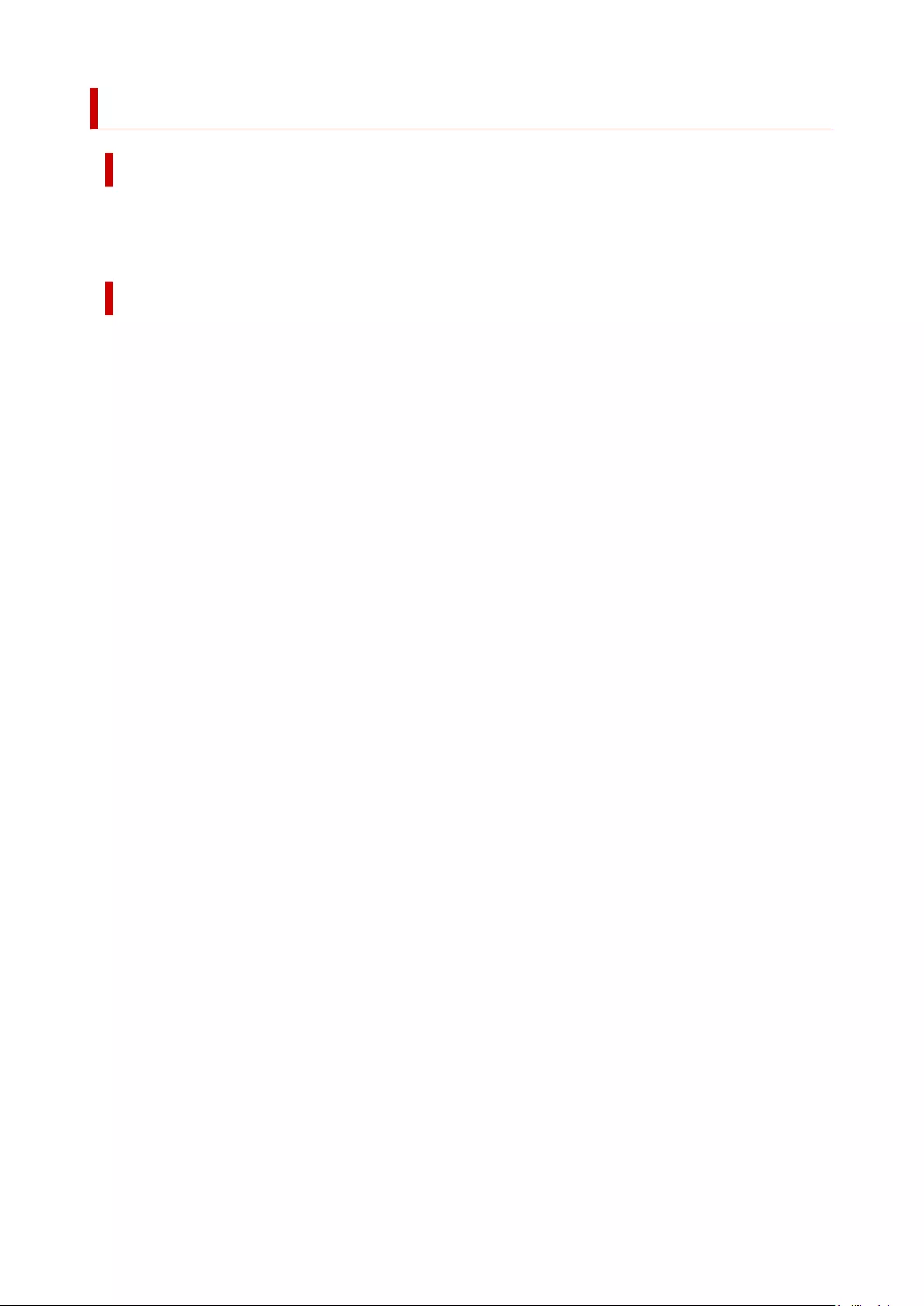
3317
Cause
Incorrect print data.
Illegal combination of resolution and image data format.
What to Do
Defective print data, please check the print results.
If using printing software such as RIP (Raster Image Processor), contact the software manufacturer.
789
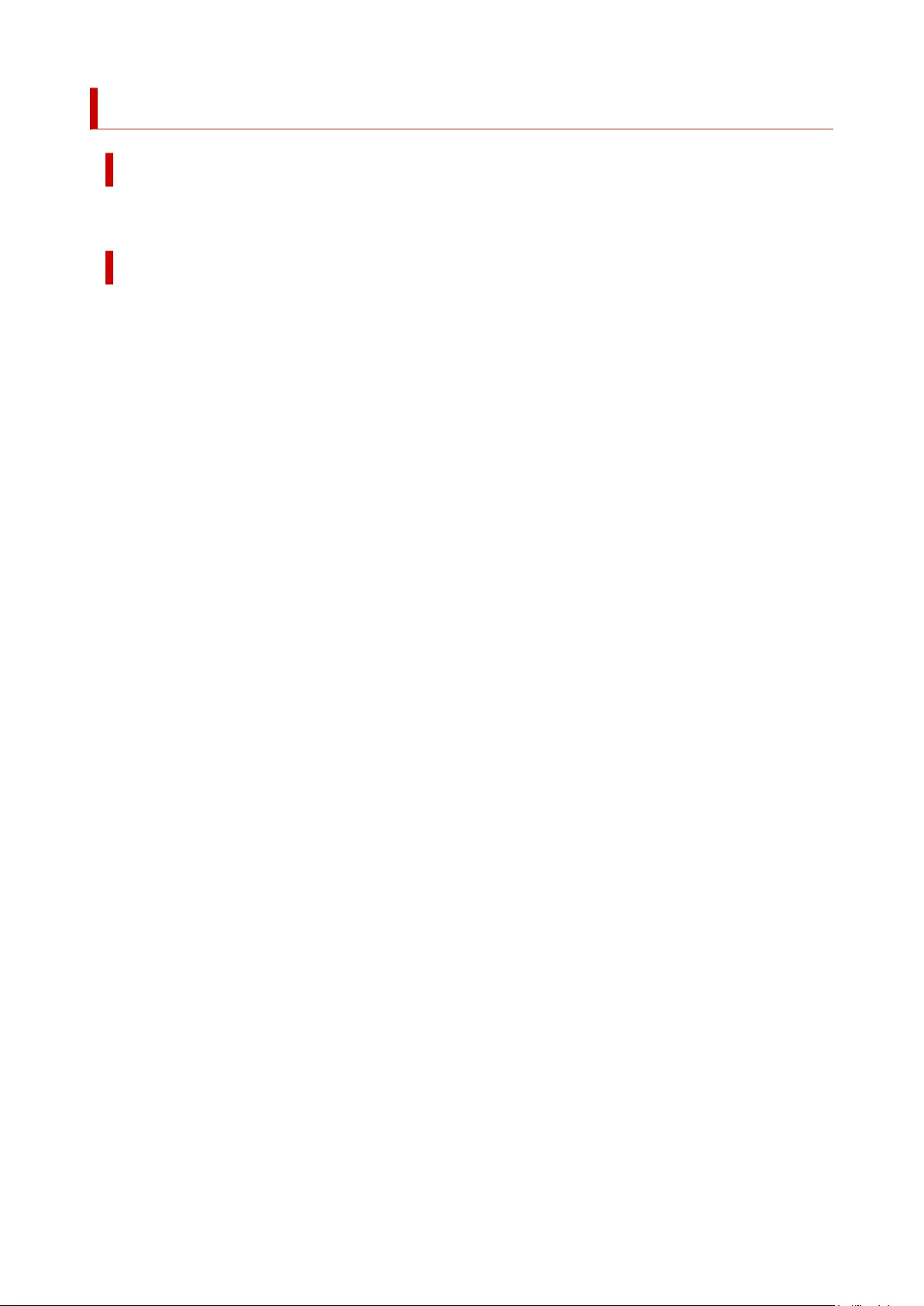
3331
Cause
Print results may be abnormal as there is a large volume of print data.
What to Do
Check the print job.
790
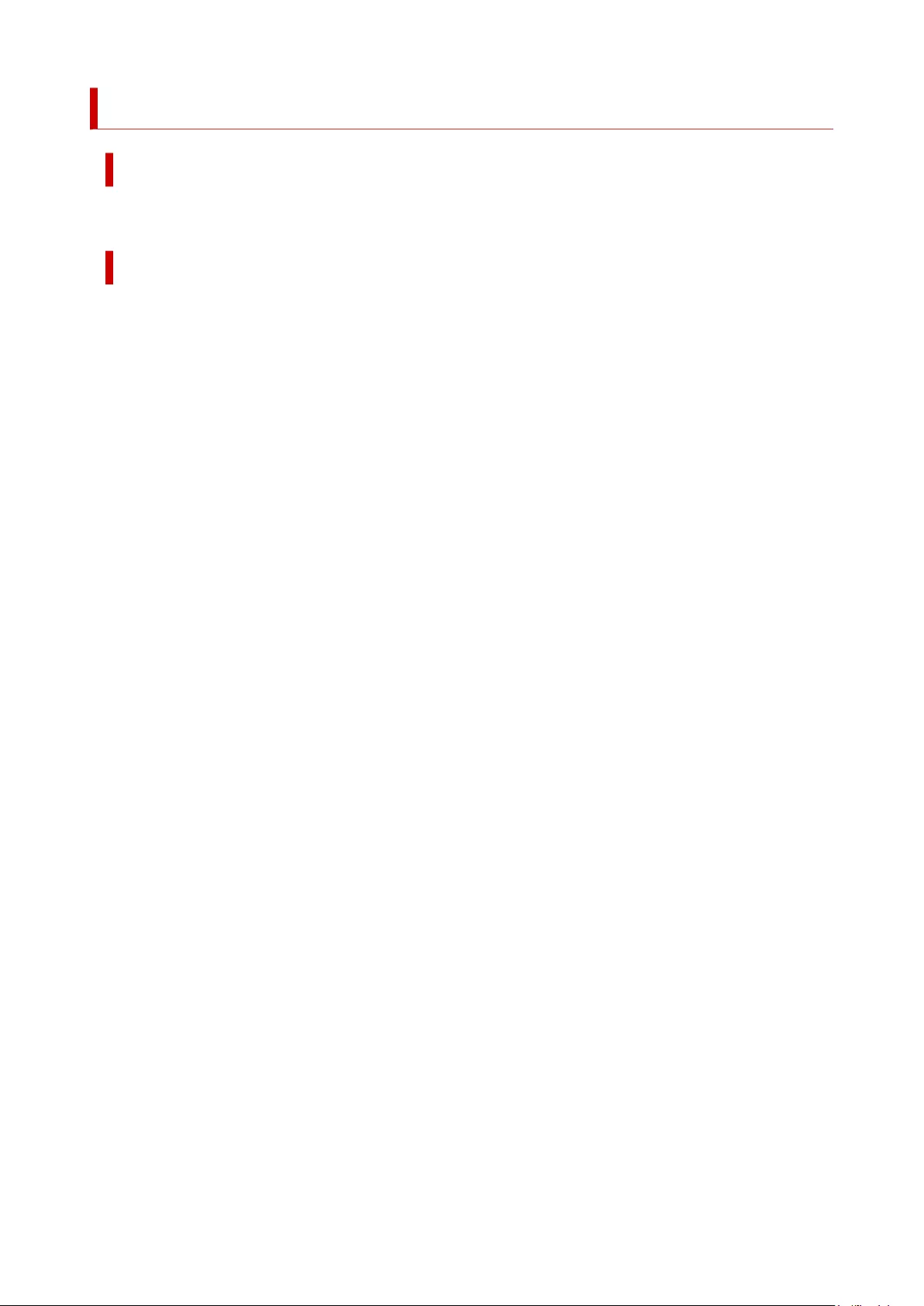
3332
Cause
Unsupported JPEG data format.
What to Do
Check the JPEG data.
Printable file formats are as follows.
•Files which conforms to JFIF 1.02•
◦ Processing method: Basic DCT◦
◦ Color mode: RGB/GrayScale◦
◦ Number of colors: 24bit/8bit◦
◦ Number of pixels: 38400 or less vertically and horizontally◦
* Does not support some samplings.
791
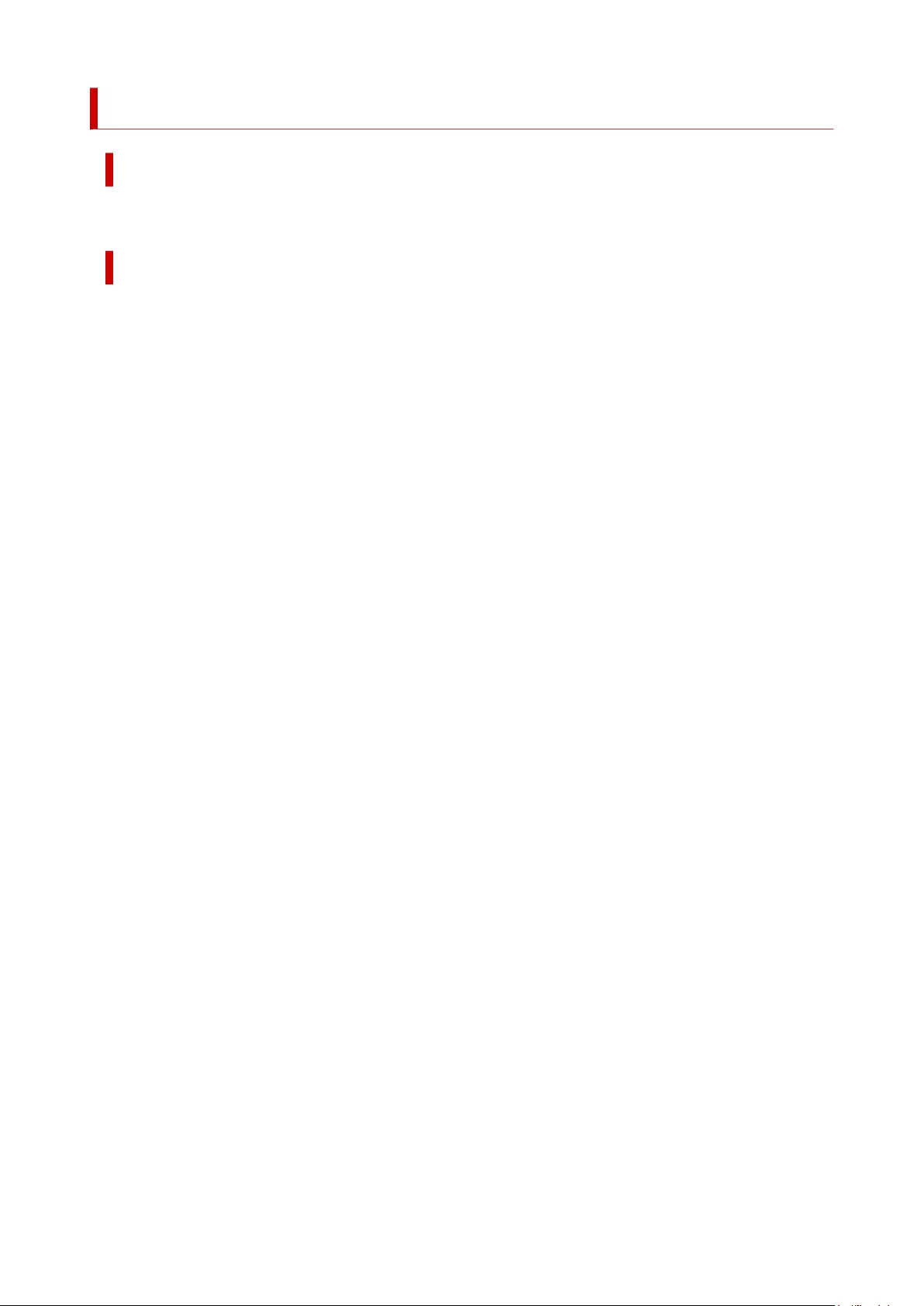
3333
Cause
Unsupported JPEG data format.
What to Do
Check the JPEG data.
Printable file formats are as follows.
•Files which conforms to JFIF 1.02•
◦ Processing method: Basic DCT◦
◦ Color mode: RGB/GrayScale◦
◦ Number of colors: 24bit/8bit◦
◦ Number of pixels: 38400 or less vertically and horizontally◦
* Does not support some samplings.
792

3336
Cause
Too many fonts are used in the PDF file, causing a memory shortage.
Printing will continue but some incorrect characters will be printed.
What to Do
Print the PDF file from a computer or convert the PDF file to JPEG and then print it.
793
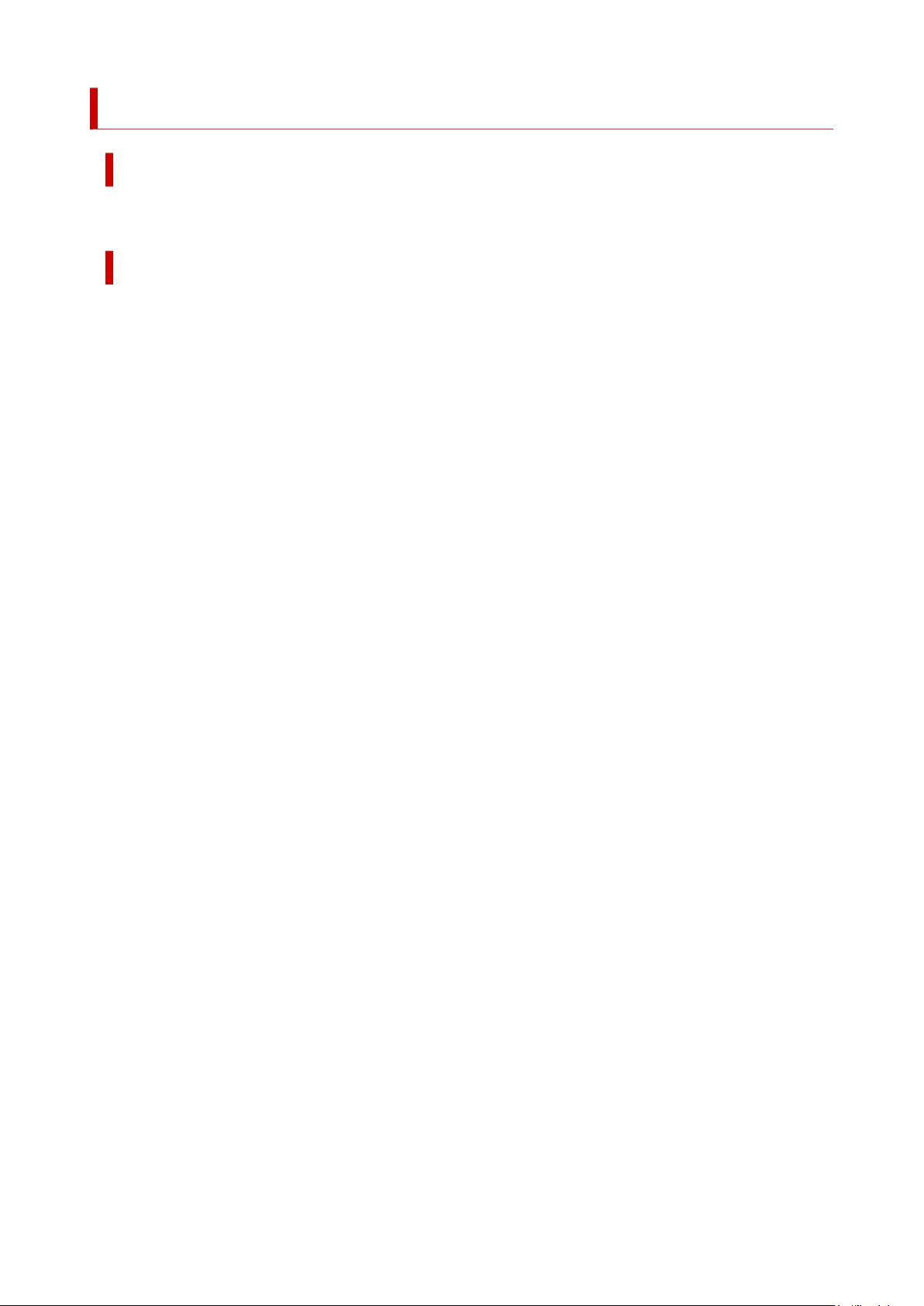
3338
Cause
Resolution of JPEG data and printer settings are mismatched.
What to Do
Check the print results.
When the print results have problems, print using a printer driver.
794
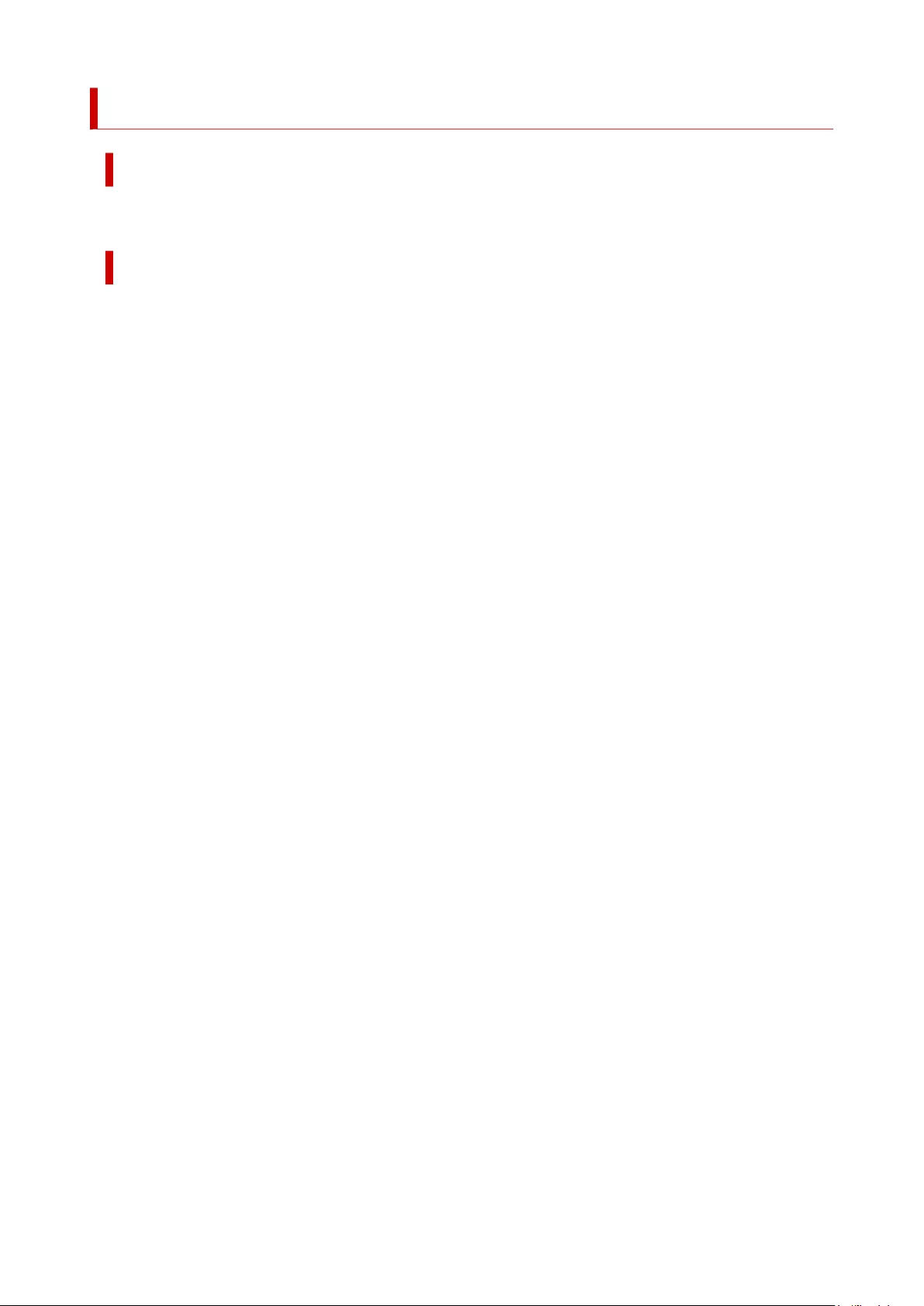
3341
Cause
Print data including the image processing table was sent.
What to Do
Print data that includes the image processing table cannot be printed.
If using printing software such as RIP (Raster Image Processor), contact the software manufacturer.
795
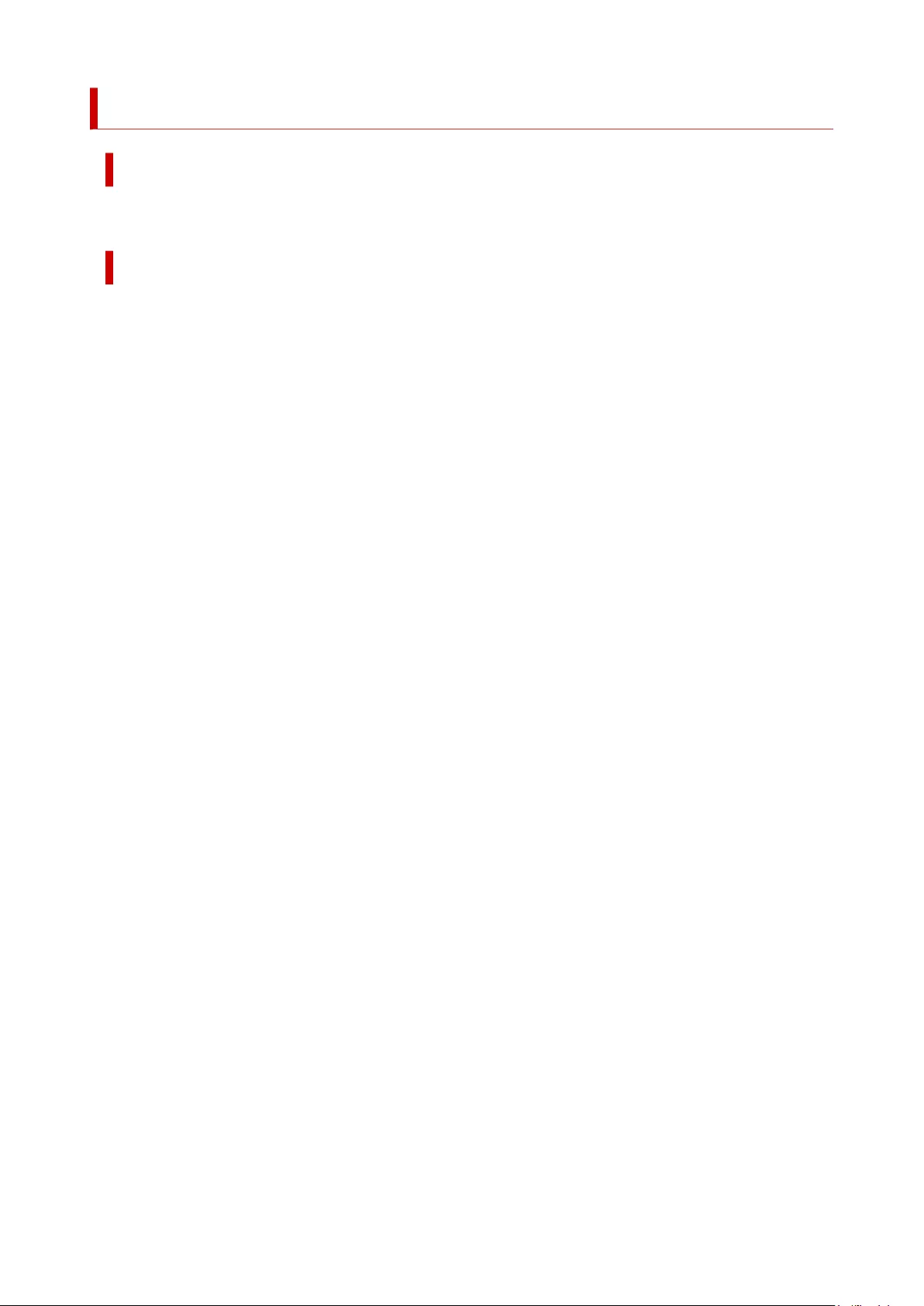
3342
Cause
Incorrect resolution value.
What to Do
Check the print settings.
If using printing software such as RIP (Raster Image Processor), contact the software manufacturer.
796
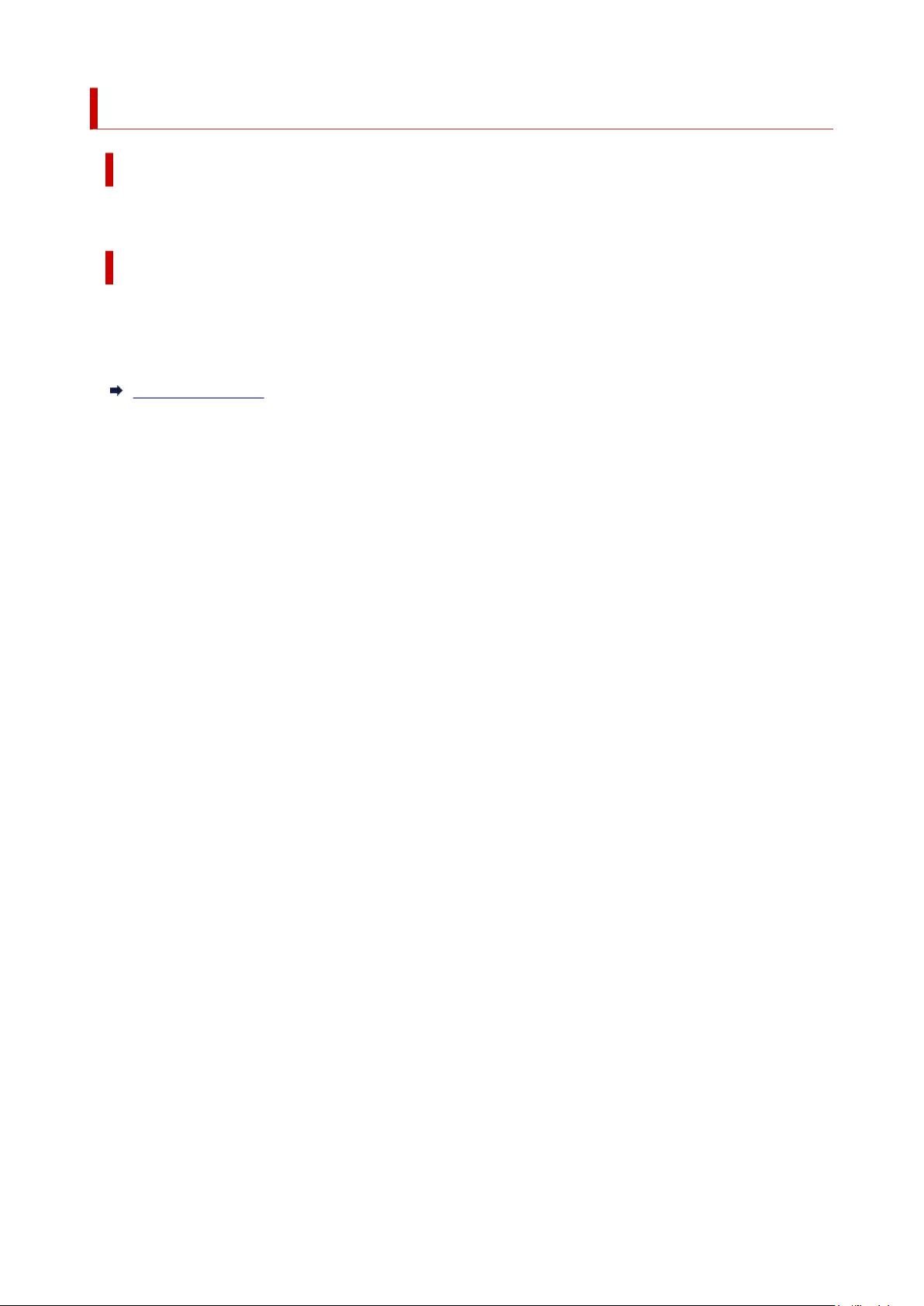
3414
Cause
Communication with mail server failed.
What to Do
Tap OK on the touch screen to dismiss the error.
Check that the address and port numbers of the sending mail server (SMTP server) are correct in the
Remote UI mail server settings.
Setting Mail Server
If this does not resolve the error, check the status of the mail server.
Contact the mail server administrator to check the server settings and status.
800
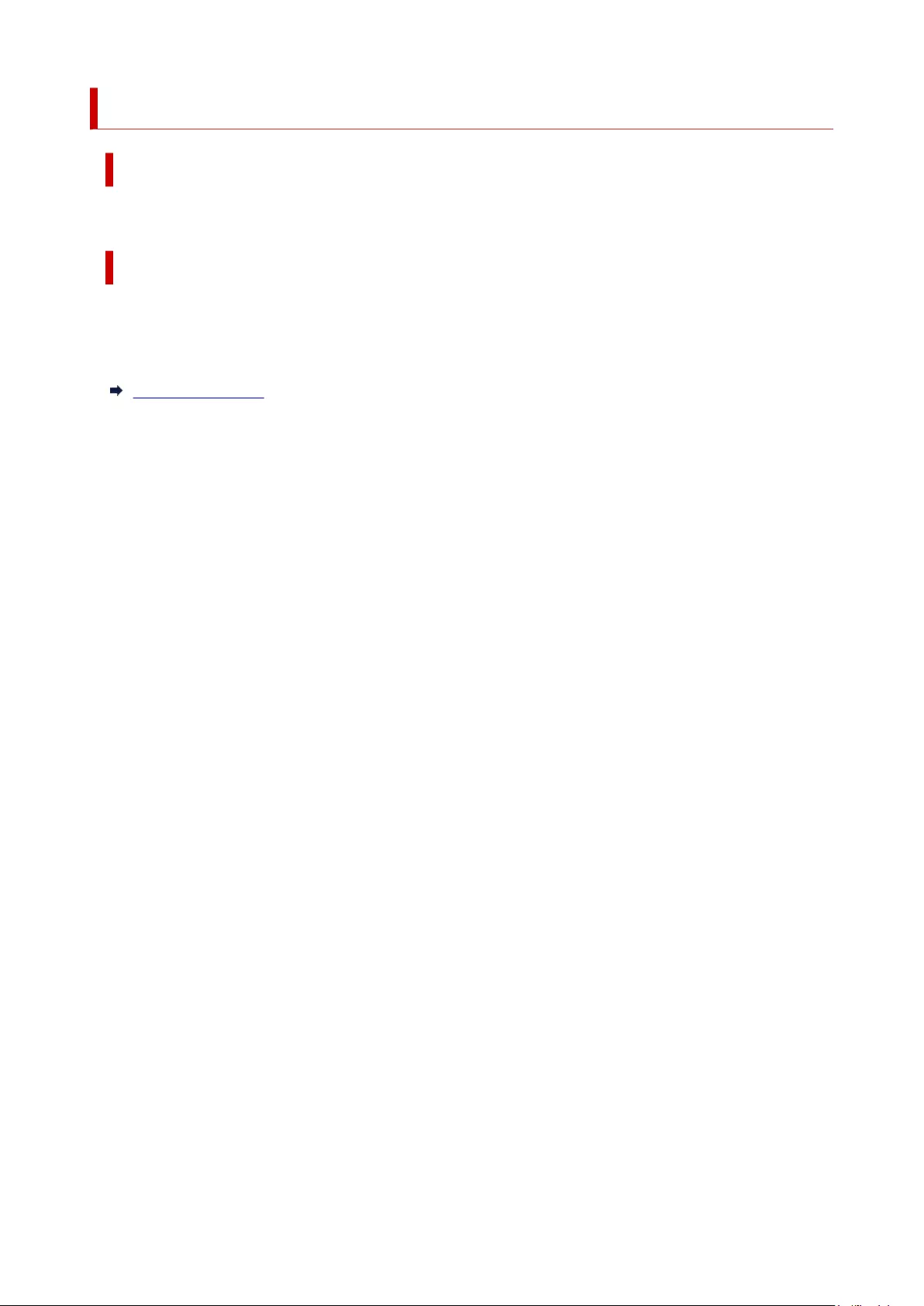
3415
Cause
Communication with mail server failed.
What to Do
Tap OK on the touch screen to dismiss the error.
Check that the address and port numbers of the receiving mail server (POP3 server) are correct in the
Remote UI mail server settings.
Setting Mail Server
If this does not resolve the error, check the status of the mail server.
Contact the mail server administrator to check the server settings and status.
801
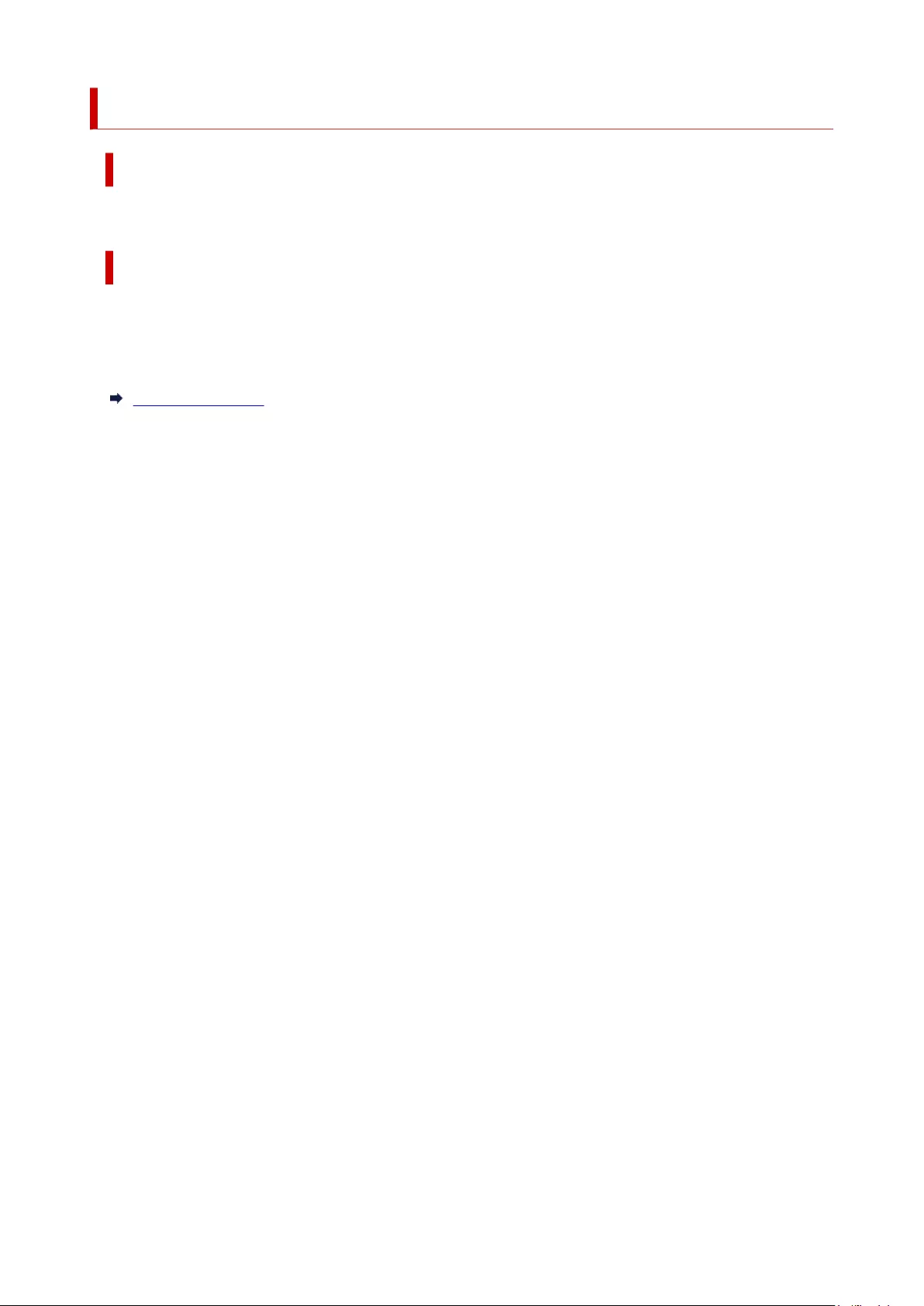
3416
Cause
Communication with mail server failed.
What to Do
Tap OK on the touch screen to dismiss the error.
Check that the mail server and device secure connection (SSL) settings match.
Check the secure connection (SSL) settings in Remote UI.
Setting Mail Server
Contact the mail server administrator to configure a secure connection (SSL) to the mail server.
802
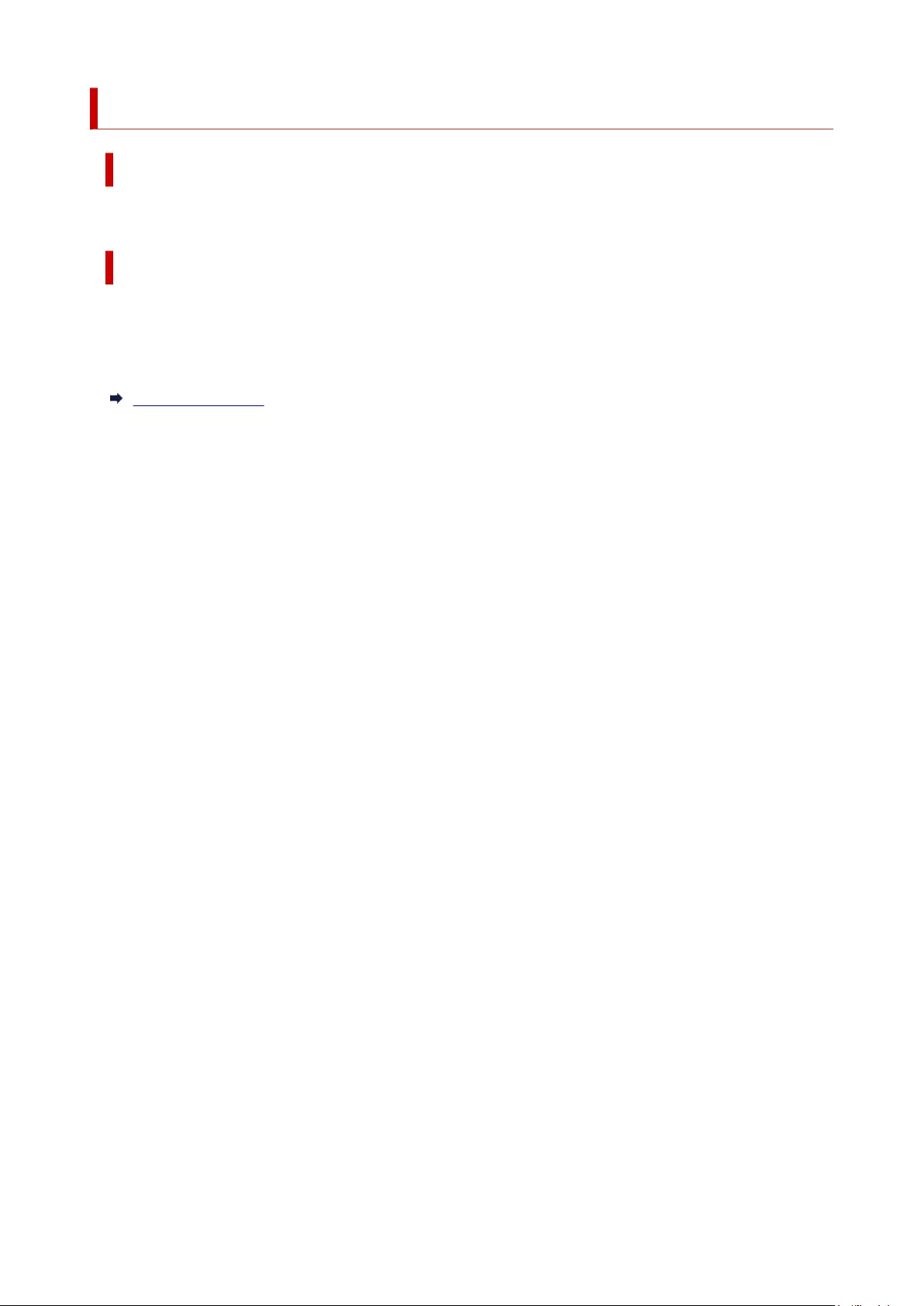
3417
Cause
Communication with mail server failed.
What to Do
Tap OK on the touch screen to dismiss the error.
Check that the mail server and device secure connection (SSL) settings match.
Check the secure connection (SSL) settings in Remote UI.
Setting Mail Server
Contact the mail server administrator to configure a secure connection (SSL) to the mail server.
803
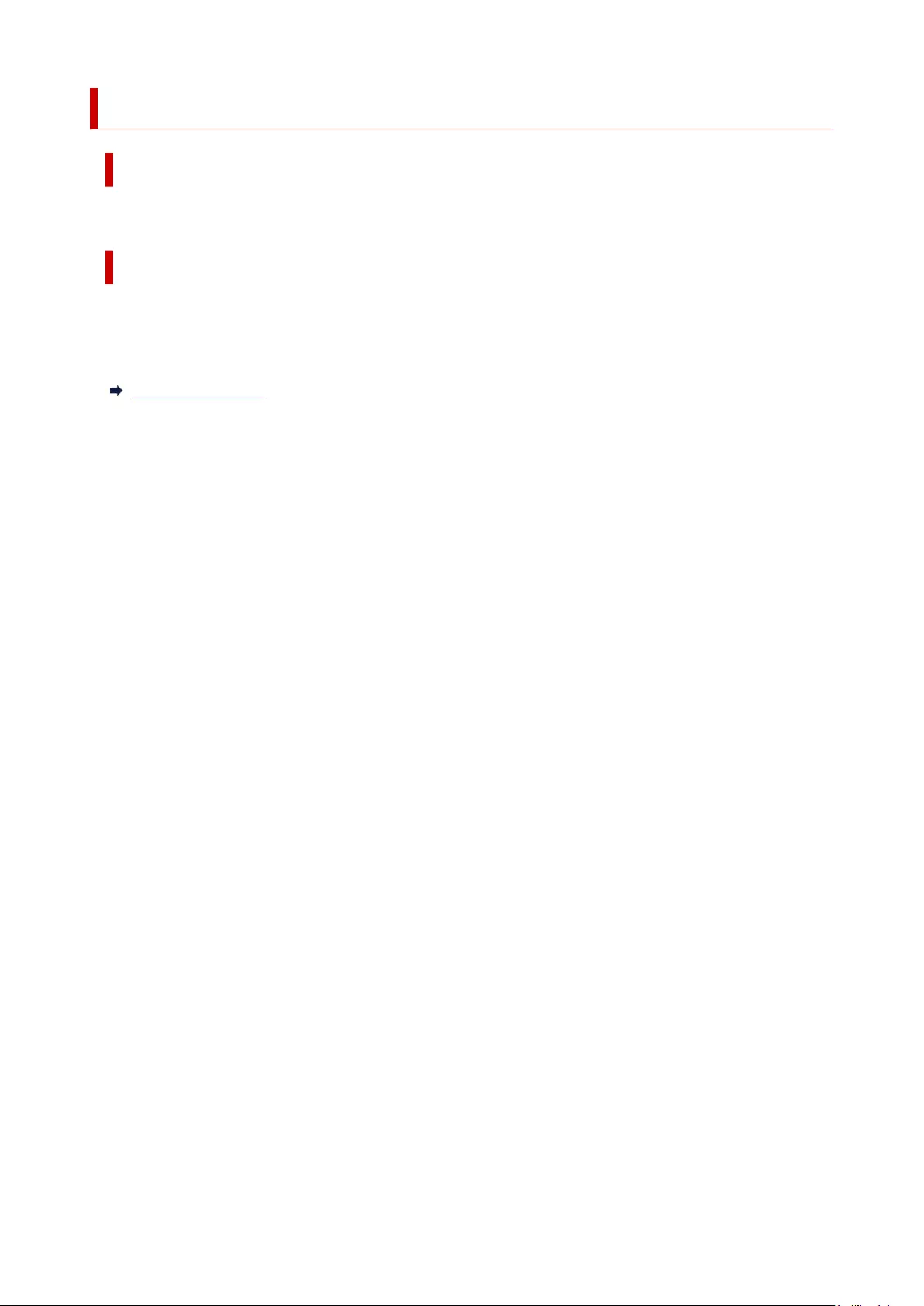
3418
Cause
Communication with mail server failed.
What to Do
Tap OK on the touch screen to dismiss the error.
Check that the sending mail server (SMTP server) is correctly configured in the Remote UI mail server
settings.
Setting Mail Server
If this does not resolve the error, check the status of the mail server.
Contact the mail server administrator to check the server settings and status.
804
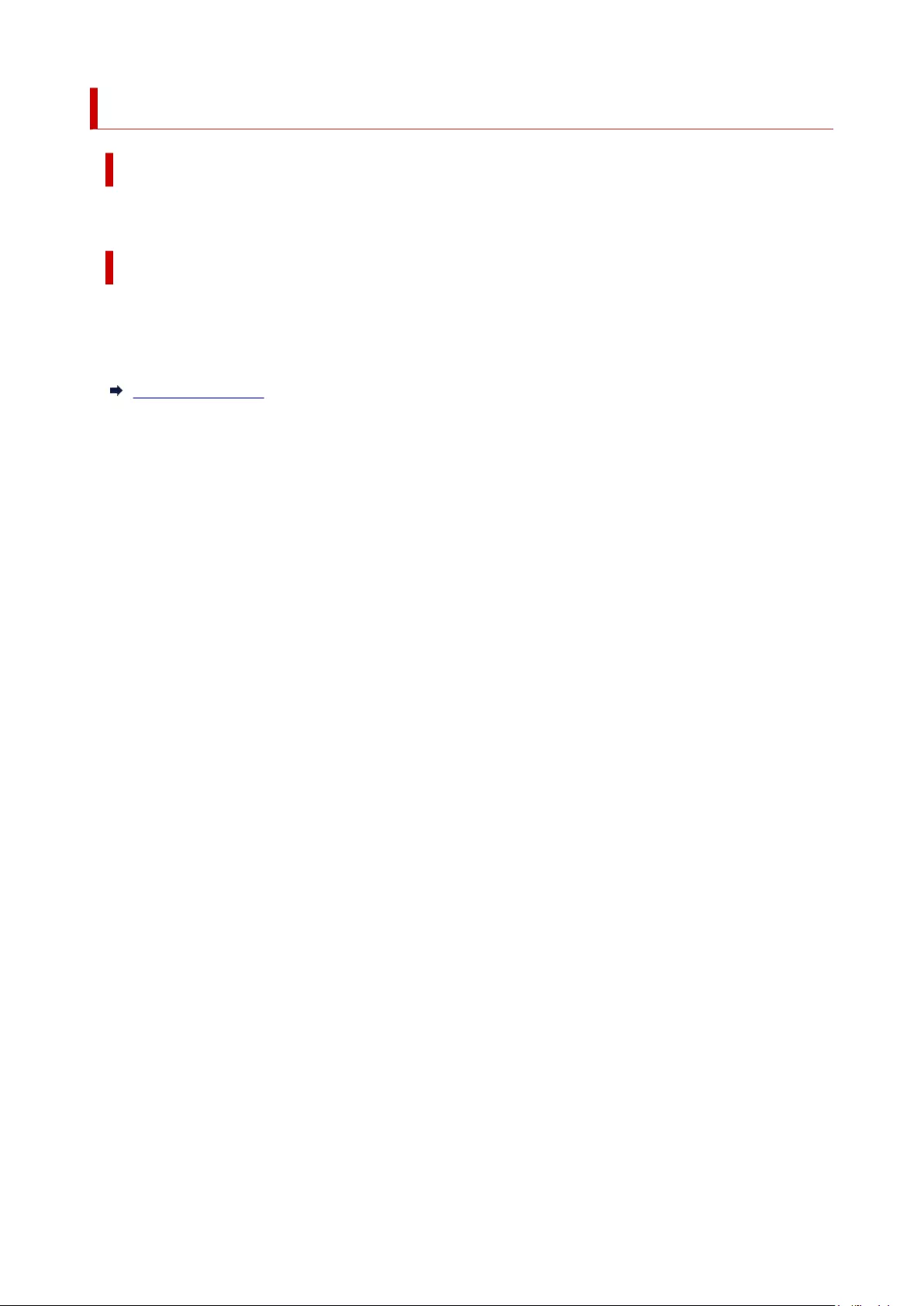
3419
Cause
Communication with mail server failed.
What to Do
Tap OK on the touch screen to dismiss the error.
Check that the sending account and password are correctly configured in the Remote UI mail server
settings.
Setting Mail Server
If this does not resolve the error, check the status of the mail server.
Contact the mail server administrator to check the server settings and status.
805
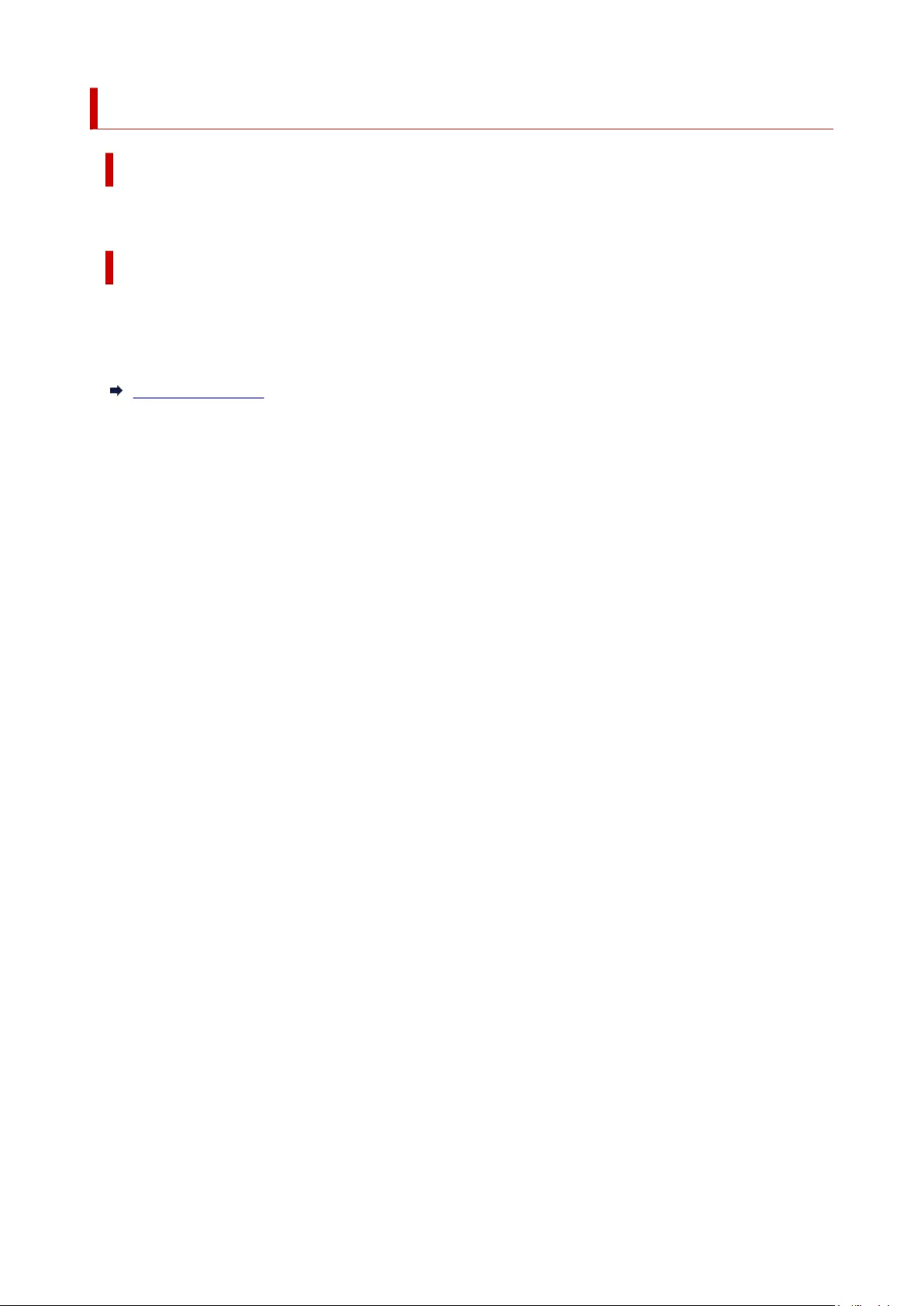
3420
Cause
Communication with mail server failed.
What to Do
Tap OK on the touch screen to dismiss the error.
Check that the receiving mail server (POP3 server) is correctly configured in the Remote UI mail server
settings.
Setting Mail Server
If this does not resolve the error, check the status of the mail server.
Contact the mail server administrator to check the server settings and status.
806
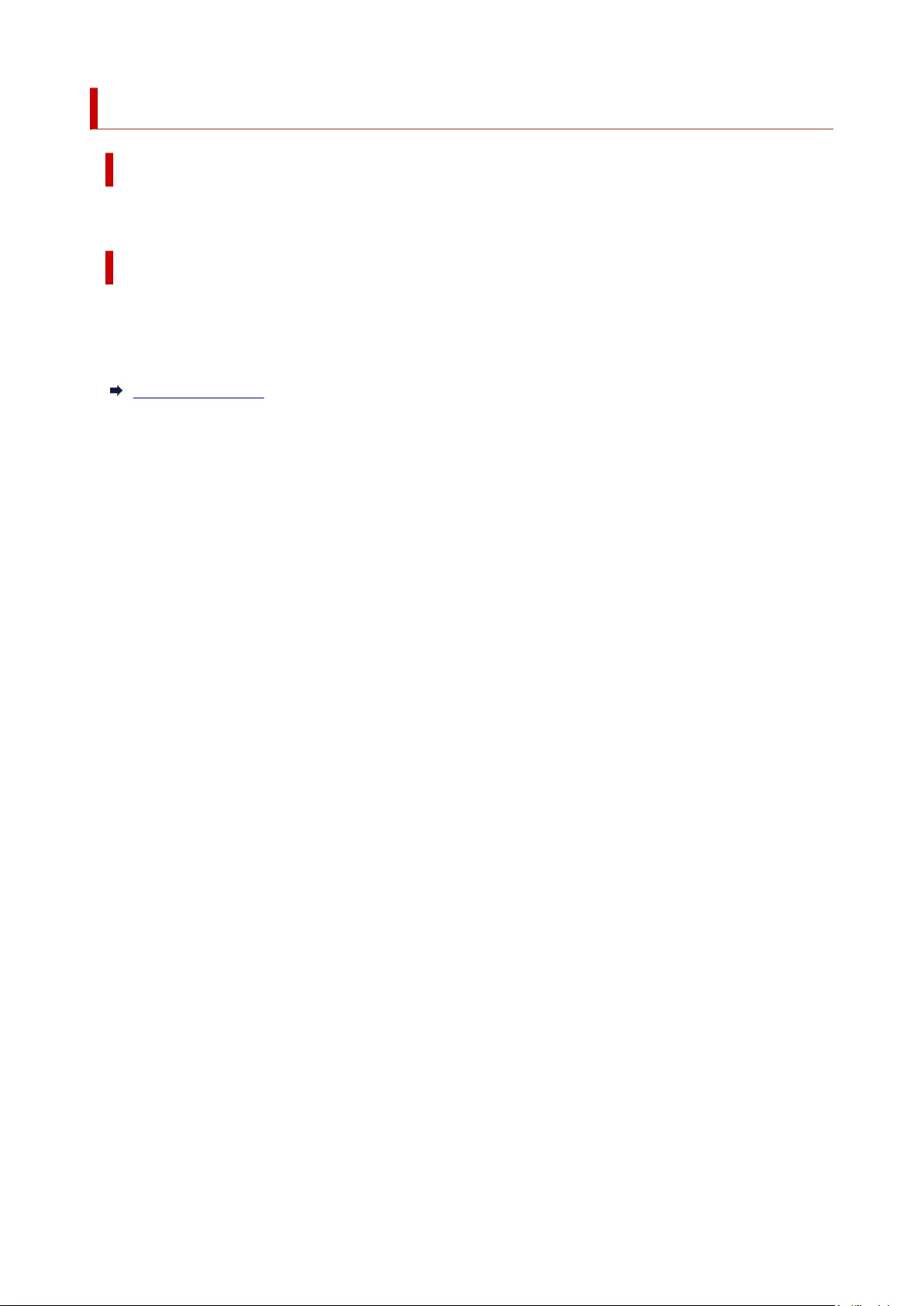
3421
Cause
Communication with mail server failed.
What to Do
Tap OK on the touch screen to dismiss the error.
Check that the receiving account and password are correctly configured in the Remote UI mail server
settings.
Setting Mail Server
If this does not resolve the error, check the status of the mail server.
Contact the mail server administrator to check the server settings and status.
807
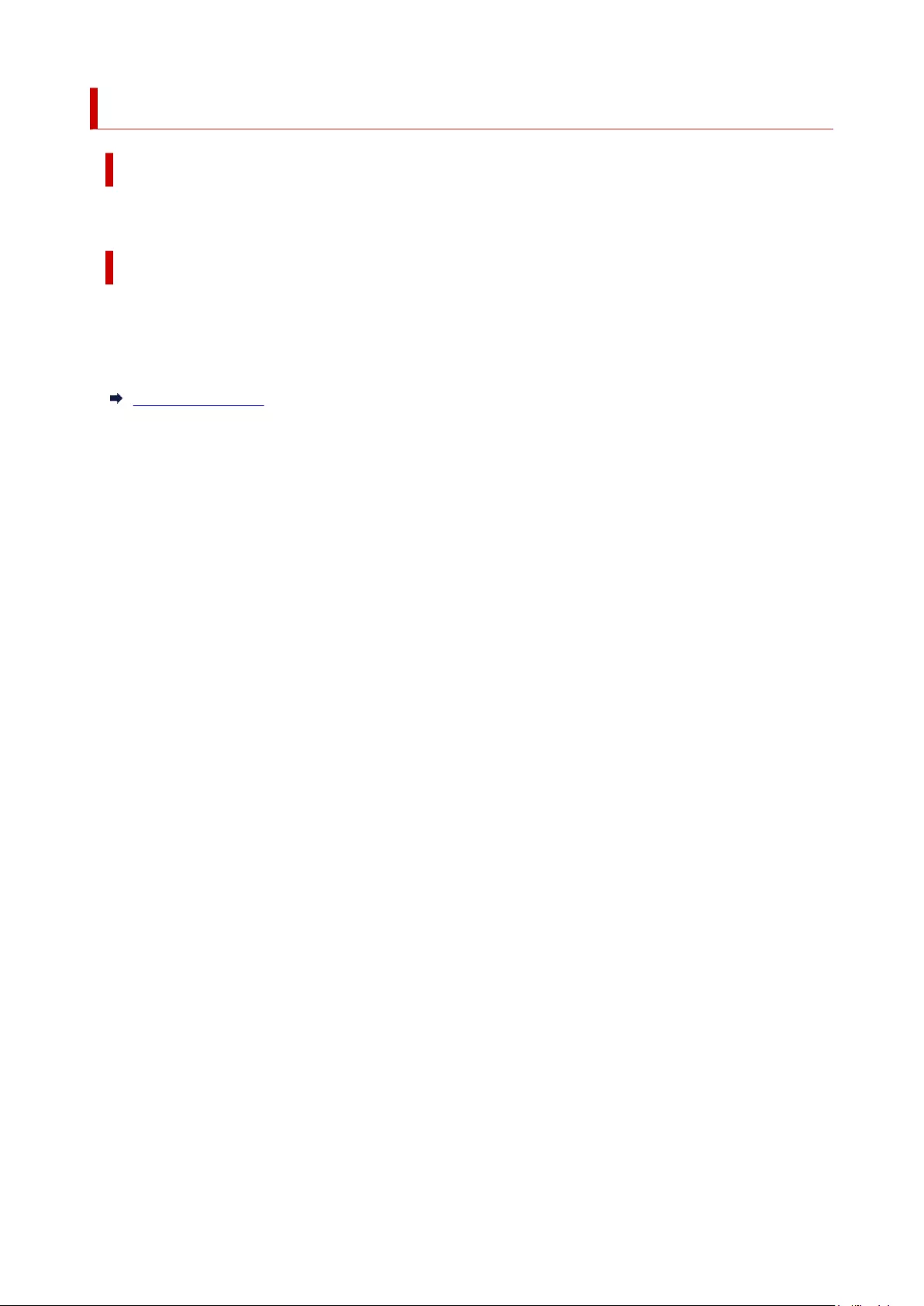
3422
Cause
Communication with mail server failed.
What to Do
Tap OK on the touch screen to dismiss the error.
Check that the settings on the mail server and the APOP settings on this device match.
Check this device's APOP settings in Remote UI.
Setting Mail Server
Contact the mail server administrator for configuring APOP on the mail server.
808
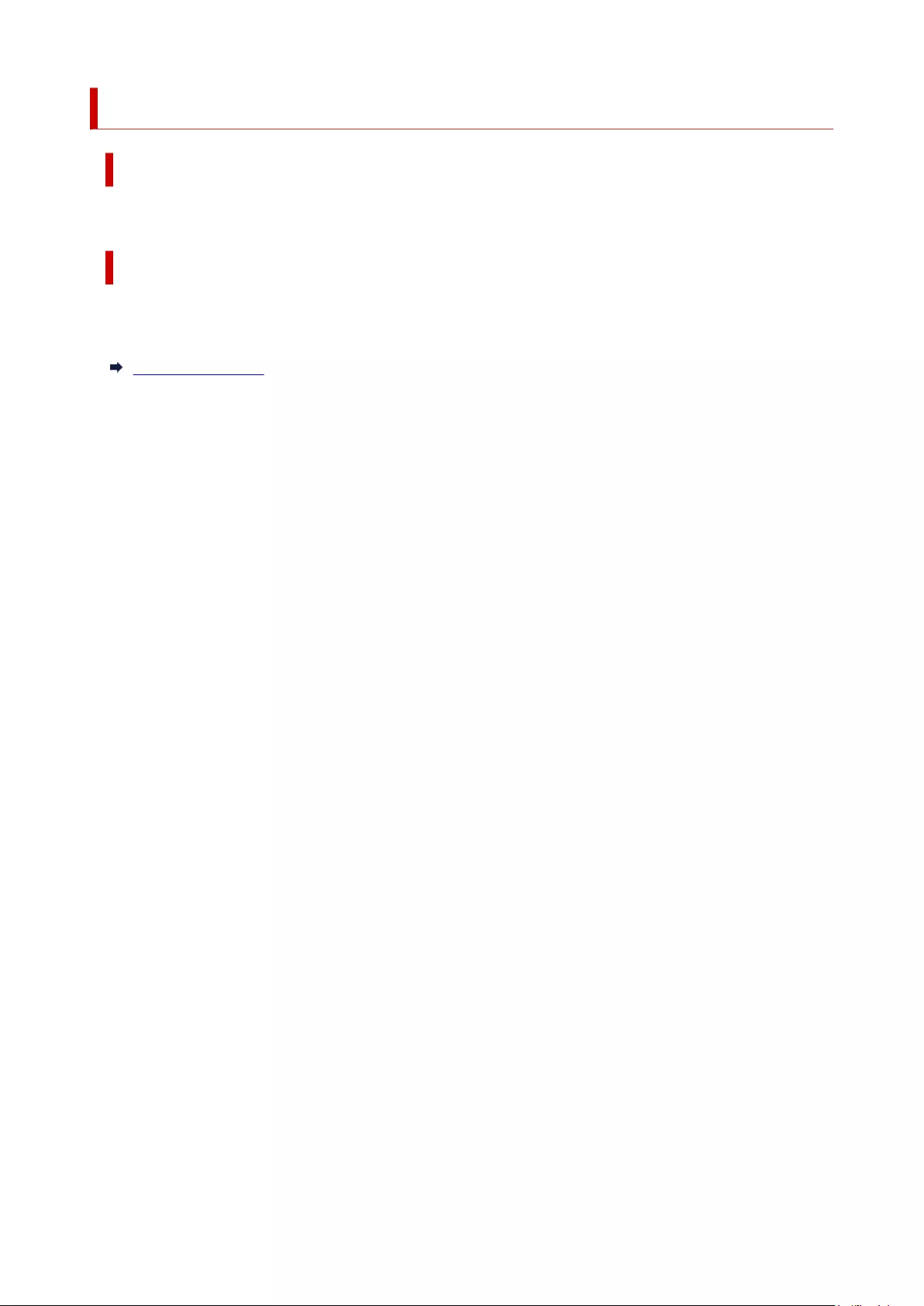
3423
Cause
Communication with mail server failed.
What to Do
Tap OK on the touch screen to dismiss the error.
Check if the Remote UI mail server settings are correct.
Setting Mail Server
If this does not resolve the error, check the status of the mail server.
Contact the mail server administrator to check the server settings and status.
809
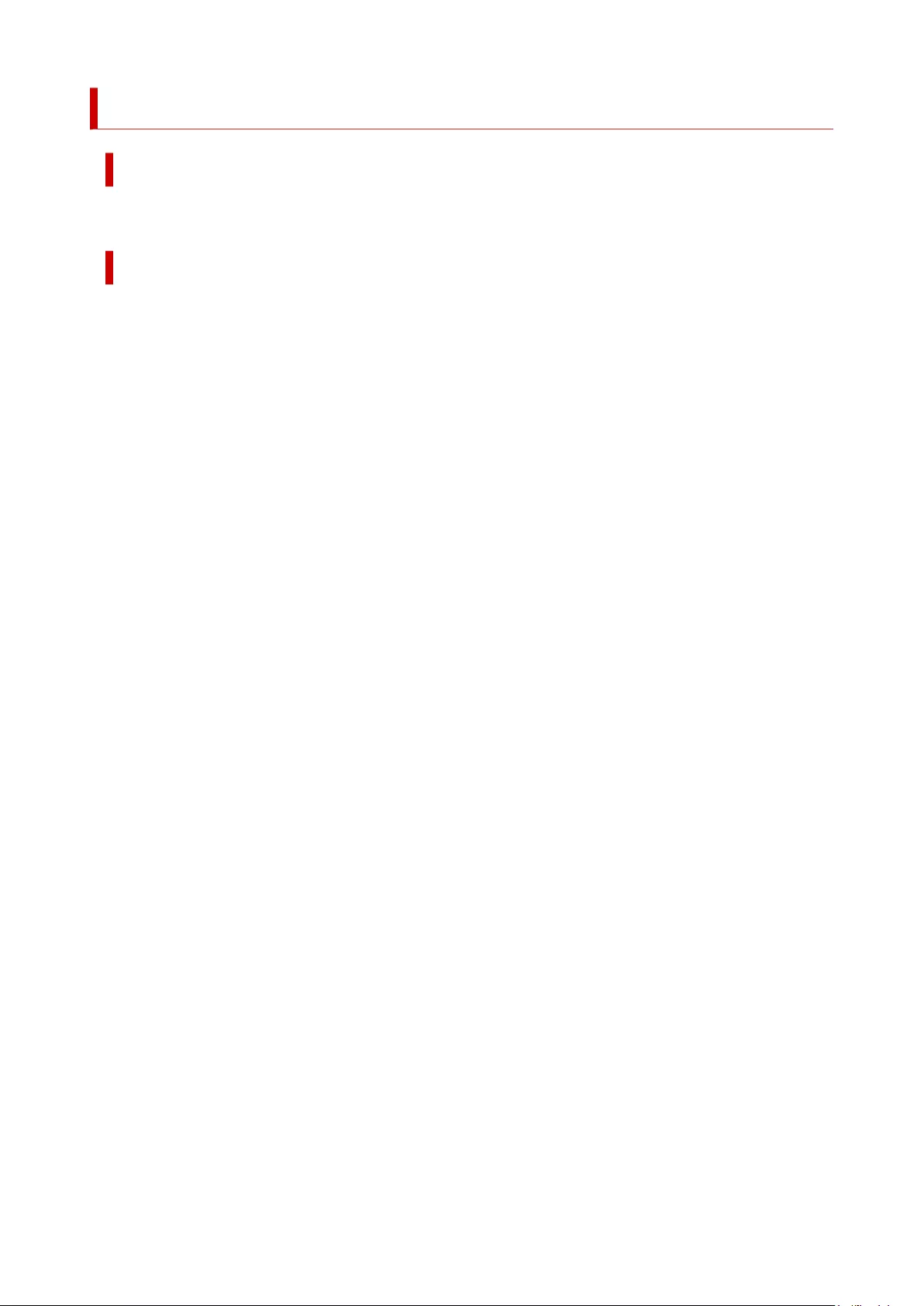
3424
Cause
Sending mail failed.
What to Do
Tap OK on the touch screen to dismiss the error.
Specify the correct destination mail address and try again.
810
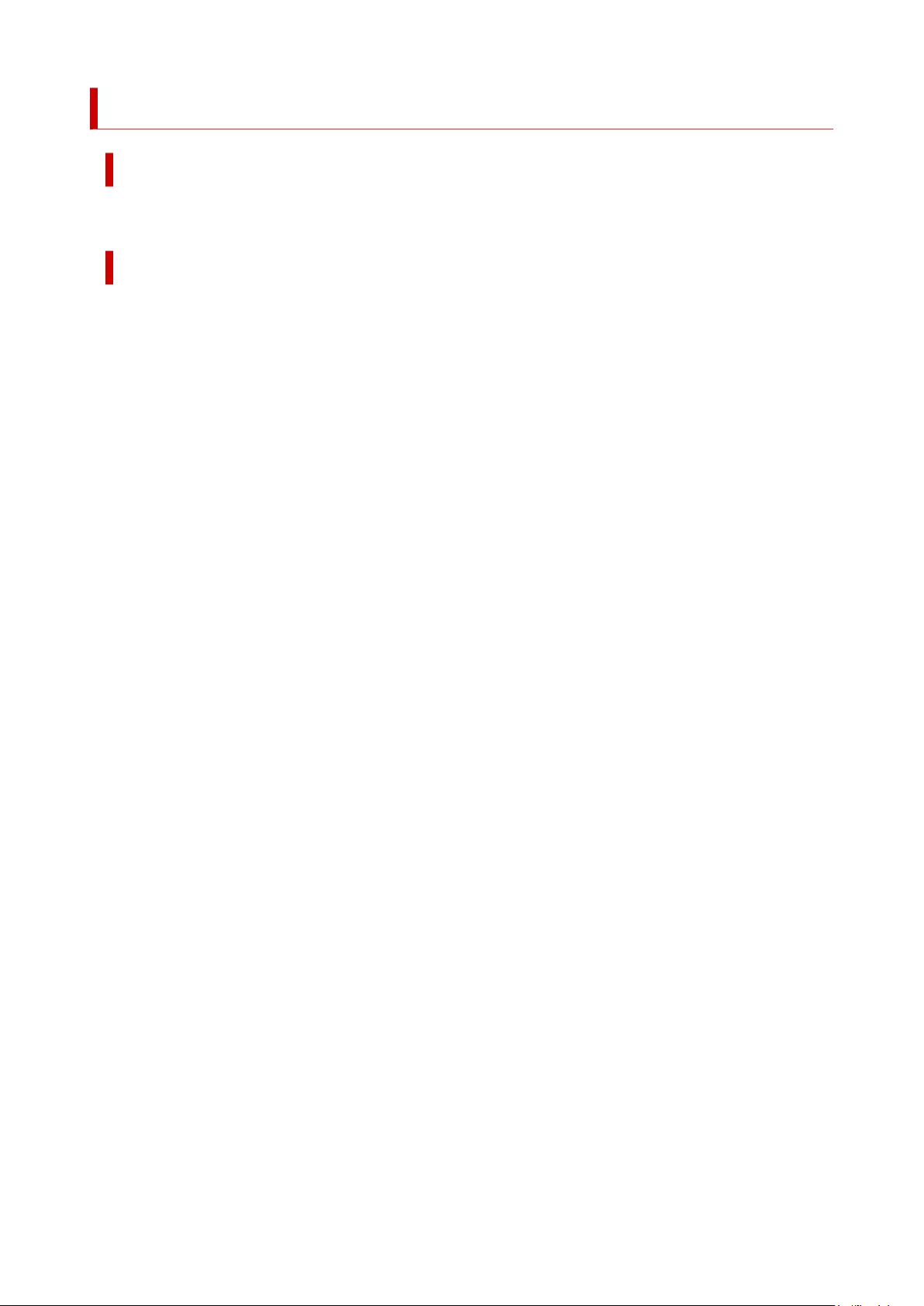
3448
Cause
IP address is conflicting.
What to Do
Tap OK on the touch screen to dismiss the error.
Check the network configuration and change the network configuration to prevent a conflict with other
network devices.
For details on changing the network configuration, refer to the documentation for your network device.
811

3451
Cause
Failed to communicate with the monitoring service center.
What to Do
Check the network connection and perform a communication test.
For details on changing the network configuration, refer to the documentation for your network device.
812
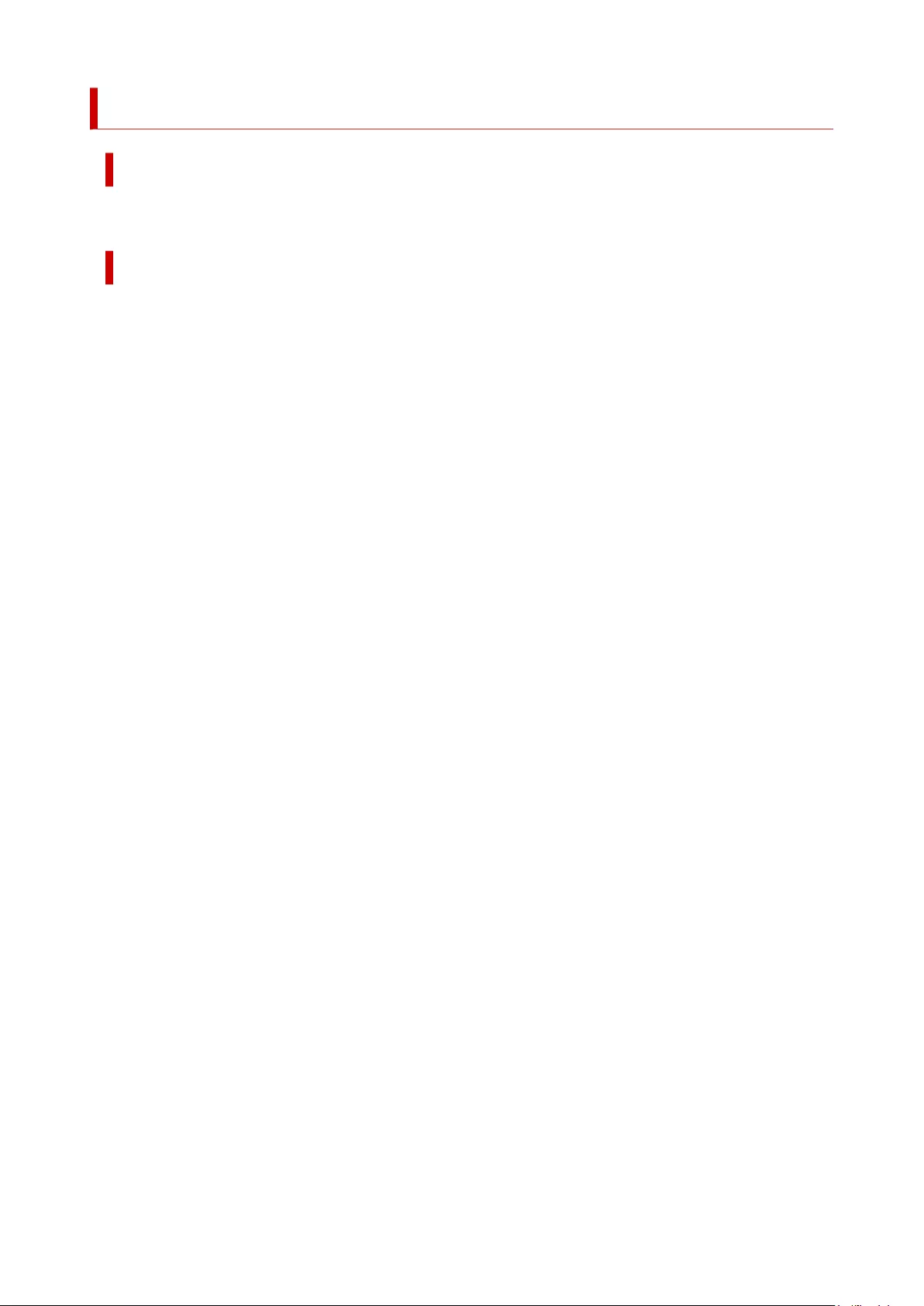
4111
Cause
The media type specified is incompatible with this device.
What to Do
Press the Stop button to stop printing.
Check the media type settings, and then try again.
813
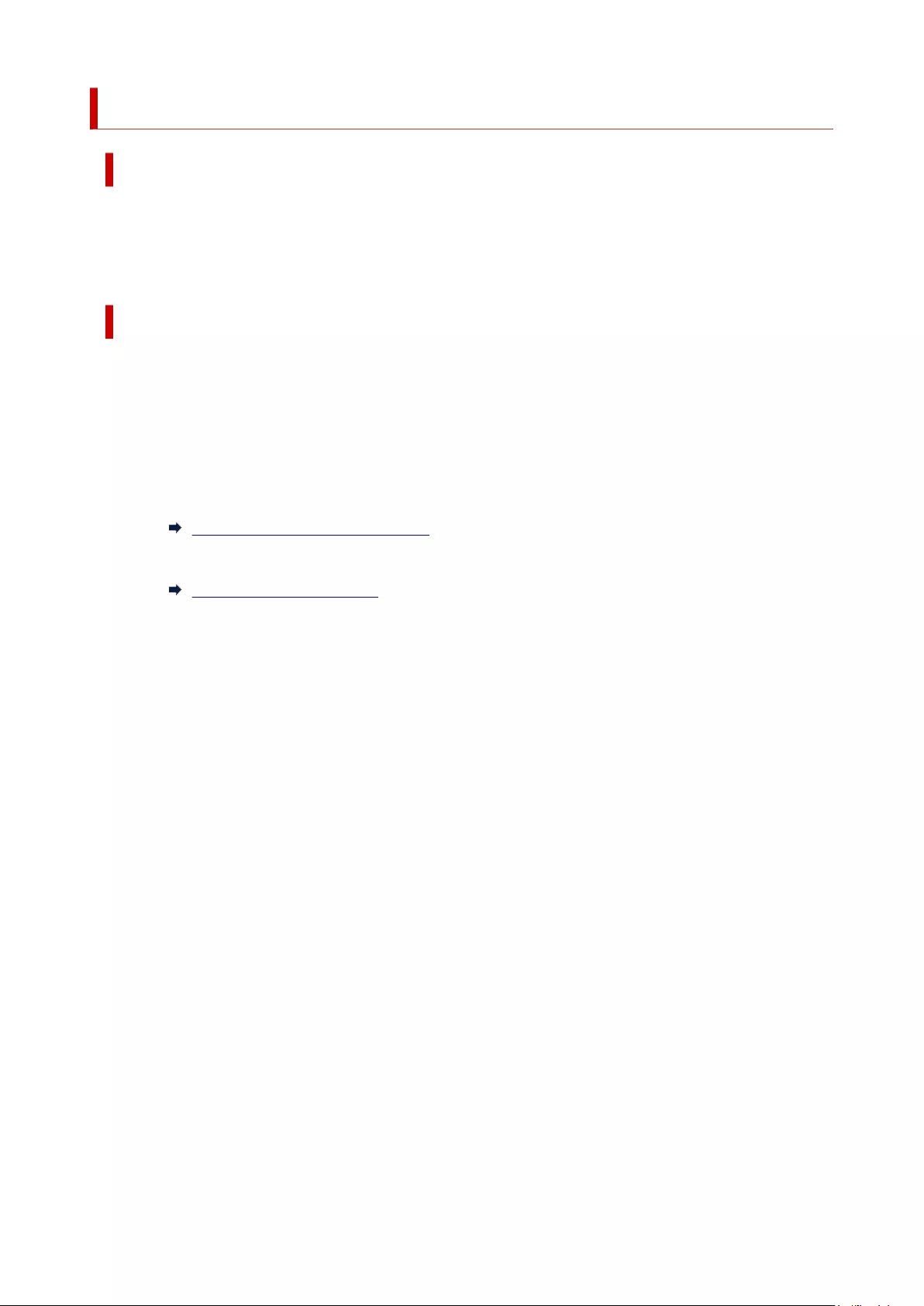
4113
Cause
Cannot print borderless for the following reasons.
• Printer driver is not set to Fit Roll Paper Width.
• Roll paper is not wide enough, or the paper is out of position.
What to Do
•Stopping printing•
Tap Cancel on the touch screen.
•Replacing paper•
Follow the steps below to replace the printer paper with paper that can be printed borderless.
1. Tap Replace the paper and print on the touch screen, then remove the roll paper.1.
Removing the Roll from the Printer
2. Replace the printer paper with paper that can be printed borderless.2.
Loading Rolls in the Printer
•Printing with the loaded paper•
Tap Print with the loaded paper. on the touch screen.
Paper is printed borderless with the document width set slightly smaller than the paper.
814
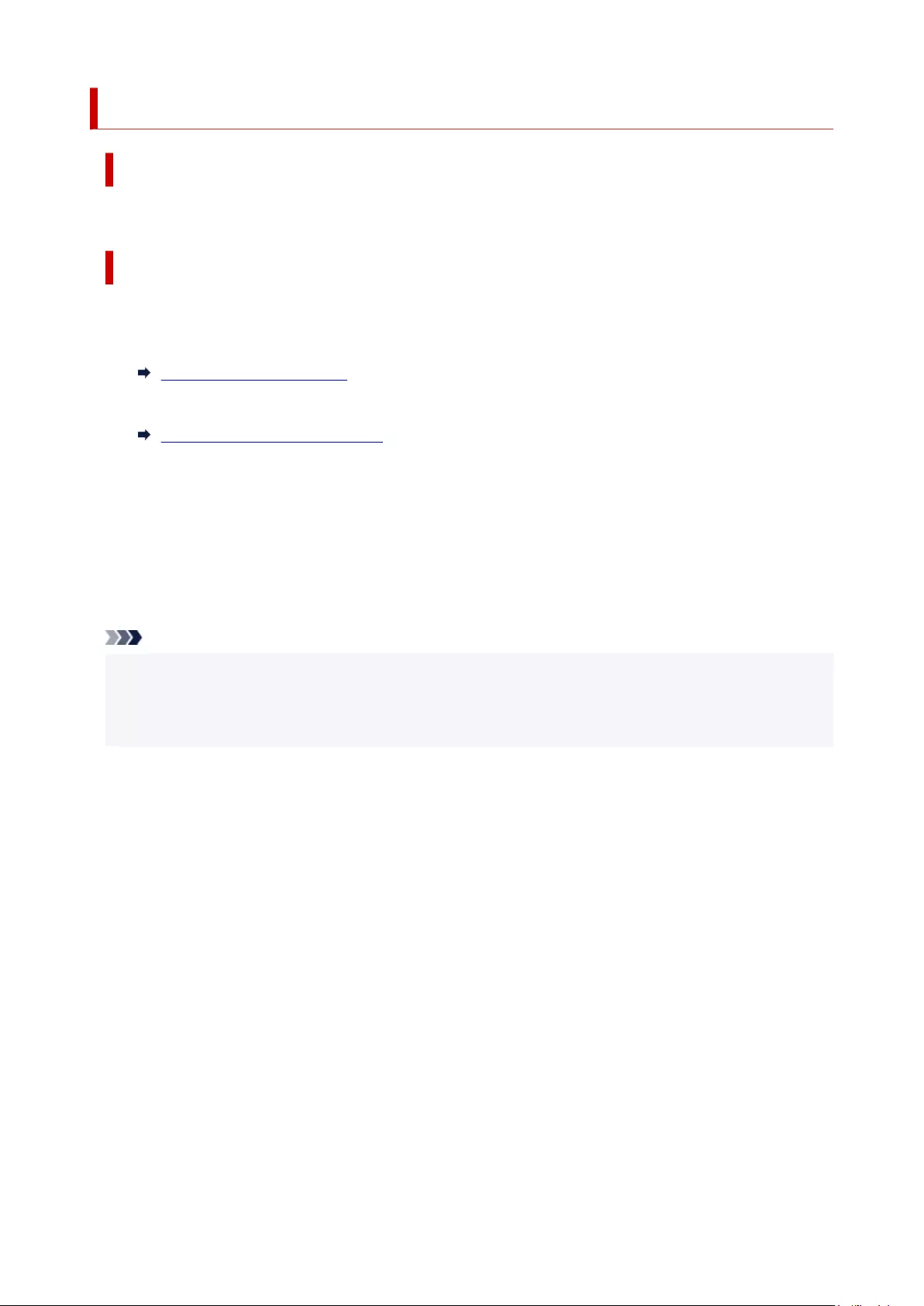
4116
Cause
The paper is loaded askew.
What to Do
•Reloading paper•
Tap Replace the paper and print on the touch screen, and then load the paper.
Loading Rolls in the Printer
Insert the roll paper firmly until it is against the roll holder flange.
Loading Rolls on the Roll Holder
•Printing with the loaded paper
•
Tap Print with the loaded paper. on the touch screen.
Paper is printed borderless with the document width set slightly smaller than the paper.
•Stopping printing•
Tap Cancel on the touch screen to stop printing.
Note
• To force the printer to print, set Detect paper setting mismatch in the touch screen menu to Do not•
detect.
However, note that this error may affect the printing quality.
816
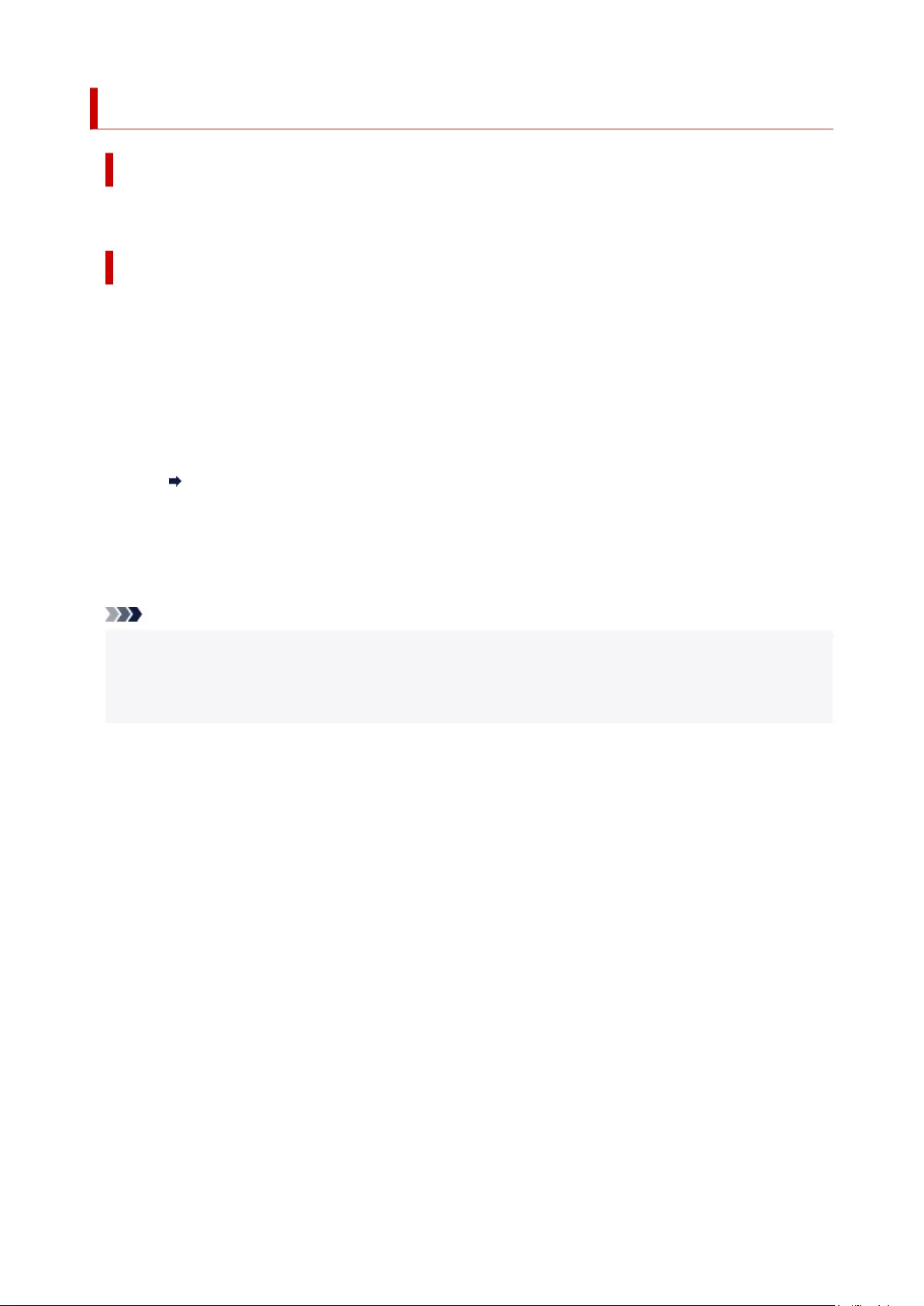
4117
Cause
The print job received contains settings not compatible with borderless printing.
What to Do
•Changing the print job settings•
Follow these steps to change the settings of the print job to enable borderless printing.
1. Tap Cancel on the touch screen to stop printing.
2. Check that the paper source is set to Roll Paper in your application.
3. Check that banner printing is not set, and then try again.3.
See the media information list for media types compatible with borderless printing.
Paper Information List
•Printing with a border•
Tap Print with border on the touch screen.
Printing with a border is now enabled.
Note
• To force the printer to print, set Detect paper setting mismatch in the touch screen menu to Do not•
detect.
However, note that this error may affect the printing quality.
817
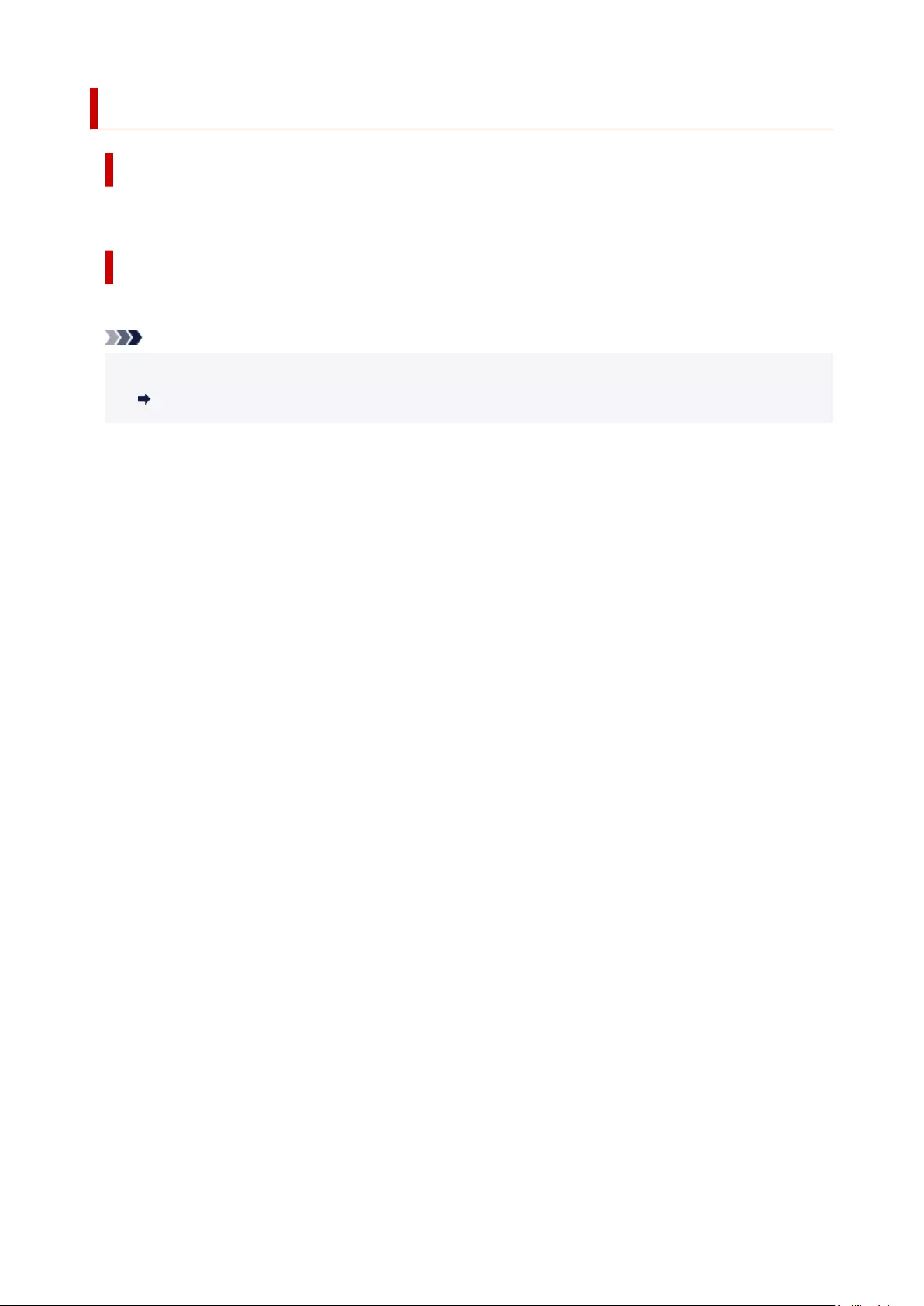
4122
Cause
The media type in the printer cannot be printed borderless.
What to Do
Tap Cancel on the touch screen to stop printing.
Note
• See the media information list for media types compatible with borderless printing.•
Paper Information List
818
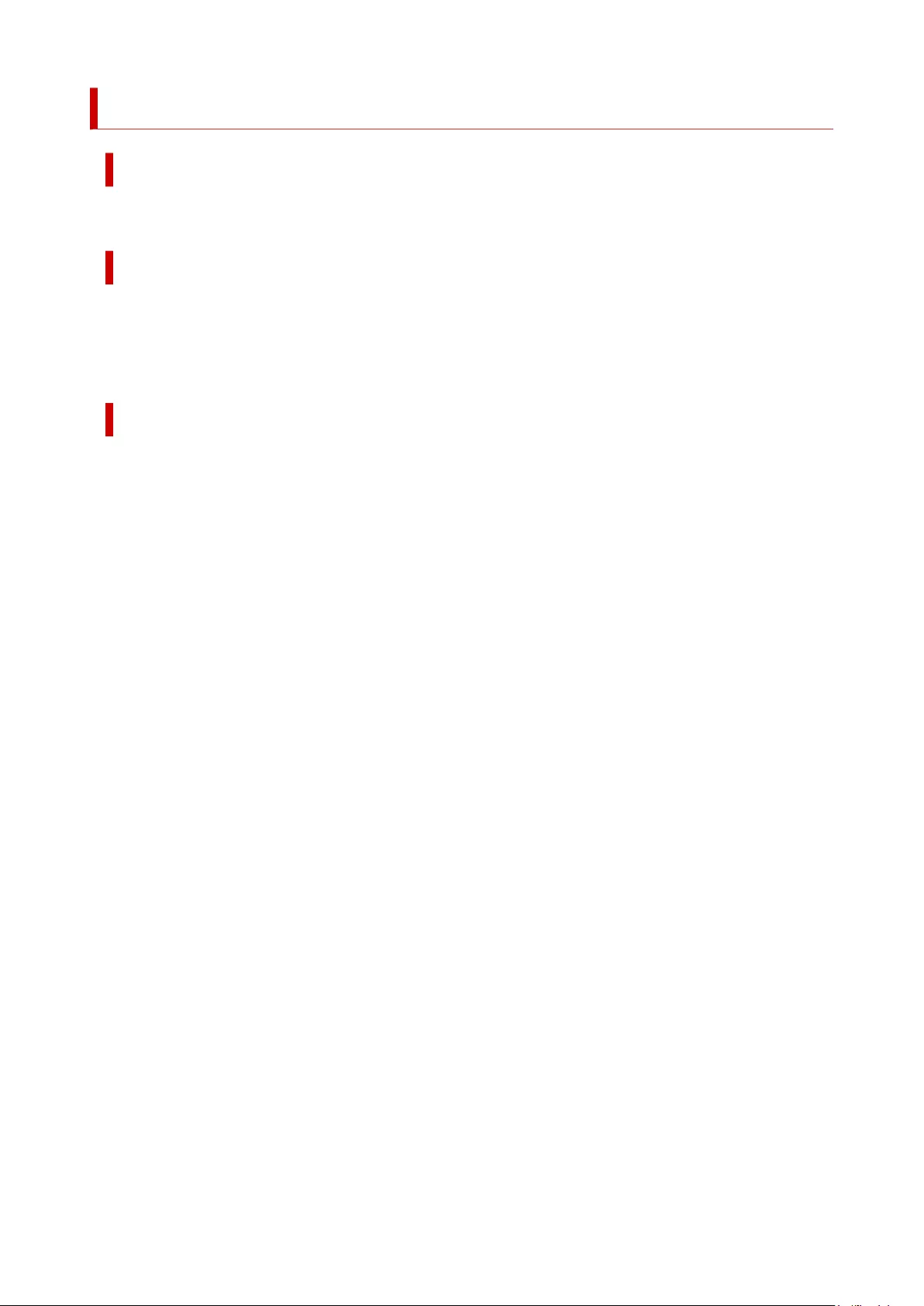
4801
Cause
A printer error has occurred.
What to Do
Turn off the power, wait a moment, and then turn it back on.
If the error appears again, make a note of the detailed error code (ECxx-xxxx) that appears on the touch
screen, and then turn off the power and contact a Canon customer service center.
Detailed error codes
EC01-2F90 EC01-2F95 EC04-2F31 EC05-2F92 EC06-2F9A EC06-2F9B EC06-2F9C EC0F-2F96
EC11-2F2A EC12-2F29 EC12-2F2B EC12-2F2C EC13-2F17 EC15-2E23 EC16-2021 EC16-2022
EC16-2027 EC16-202A EC16-2038 EC21-2F51 EC21-2F54 EC21-2F57 EC21-2F59 EC21-2F61
EC21-2F67 EC21-2F70 EC21-2F71 EC21-2F72 EC22-2F30 EC22-2F47 EC23-260E EC23-2F11
EC23-2F18 EC23-2F32 EC25-2F16 EC31-2F1C EC31-2F1D EC31-2F1E EC31-2F22 EC33-2601
EC33-2F3A EC33-2F3D EC33-2F3E EC34-2602 EC34-2F3B EC35-2603 EC35-2F3C EC51-2F14
EC51-2F15 EC51-2FDD EC51-2FDE EC51-2FDF EC51-3301 EC51-3302 EC51-3303 EC54-290A
EC54-290D EC54-2910 EC54-2911 EC54-2912 EC55-2F20 EC55-2F6C EC58-2F12
819

4803
Cause
A printer error has occurred.
What to Do
Turn off the power, wait a moment, and then turn it back on.
If the error appears again, make a note of the detailed error code (ECxx-xxxx) that appears on the touch
screen, and then turn off the power and contact a Canon customer service center.
Detailed error codes
EC51-203C
820
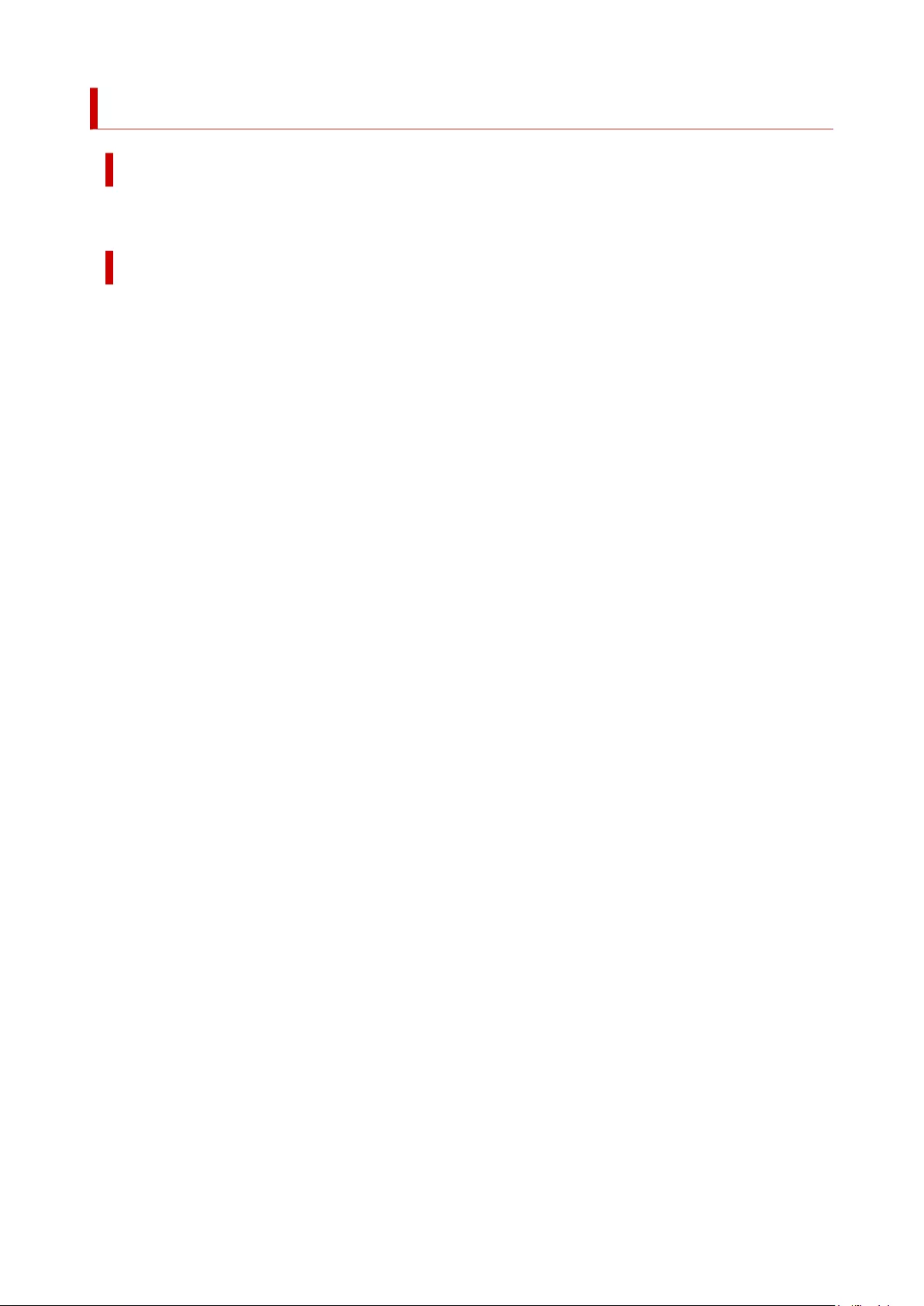
4901
Cause
The printer hard disk has not been formatted.
What to Do
Tap OK on the touch screen to begin formatting the hard disk.
When formatting is complete, the data on the hard disc will be erased and the printer will automatically
restart.
822
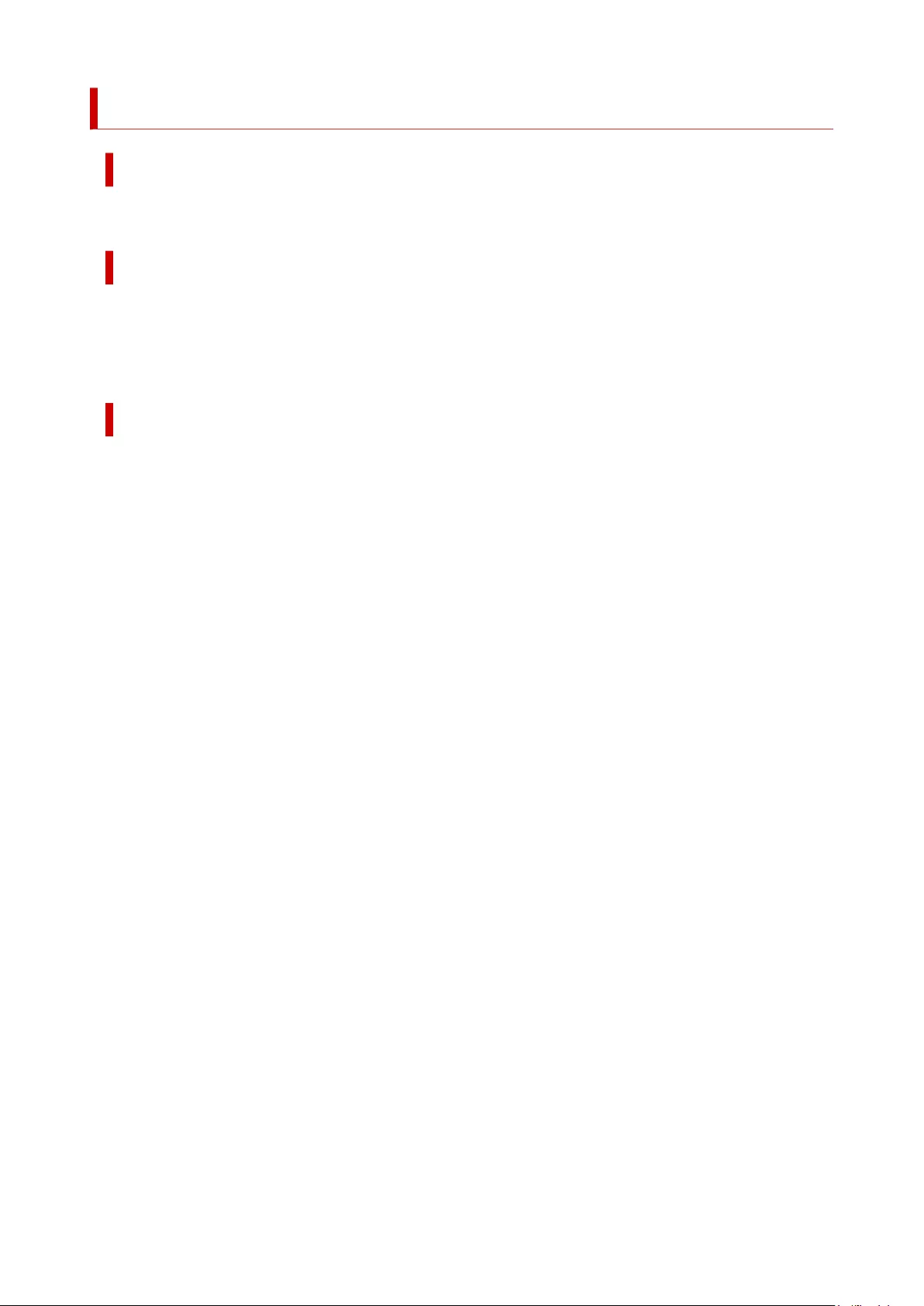
4905
Cause
A printer error has occurred.
What to Do
Turn off the power, wait a moment, and then turn it back on.
If the error appears again, make a note of the detailed error code (ECxx-xxxx) that appears on the touch
screen, and then turn off the power and contact a Canon customer service center.
Detailed error codes
EC51-3304 EC51-3306 EC51-3307 EC51-3308 EC51-3309 EC51-330A
824
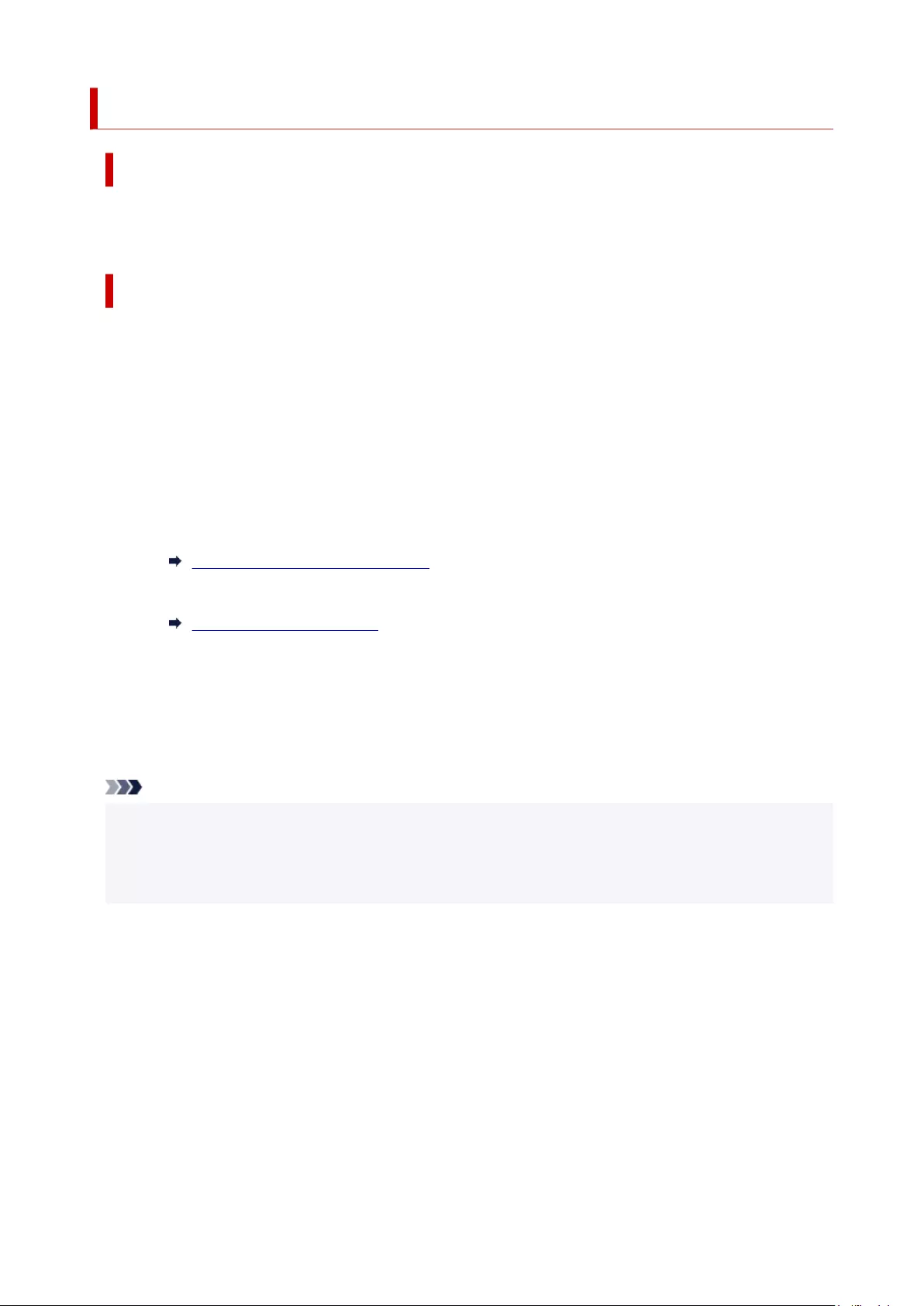
4910
Cause
The width of the roll paper set in Fit Roll Paper Width in the printer driver is not the same as the width of
the roll paper loaded in the printer.
What to Do
Tap OK on the touch screen to go to the next screen.
Check the media type and size that appear and tap OK.
•Stopping printing•
Tap Cancel on the touch screen or press the Stop button.
•Replacing the roll paper•
Follow the steps below to replace the paper with roll paper of the width set in the printer driver.
1. Tap Replace the paper and print, then remove the roll paper.1.
Removing the Roll from the Printer
2. Replace the paper with paper of the width set in the printer driver.2.
Loading Rolls in the Printer
Printing begins.
•Printing without changes•
Tap Print with the loaded paper..
However, note that this error may cause paper jams and affect the printing quality.
Note
• To change print settings in Windows, select Fit Roll Paper Width in the printer driver and set the roll
paper width in the dialog box that appears.
• To change print settings in macOS, open the printer driver and select Fit Roll Paper Width, and then
set the roll paper width in that panel to the width of the paper loaded in the printer.
825
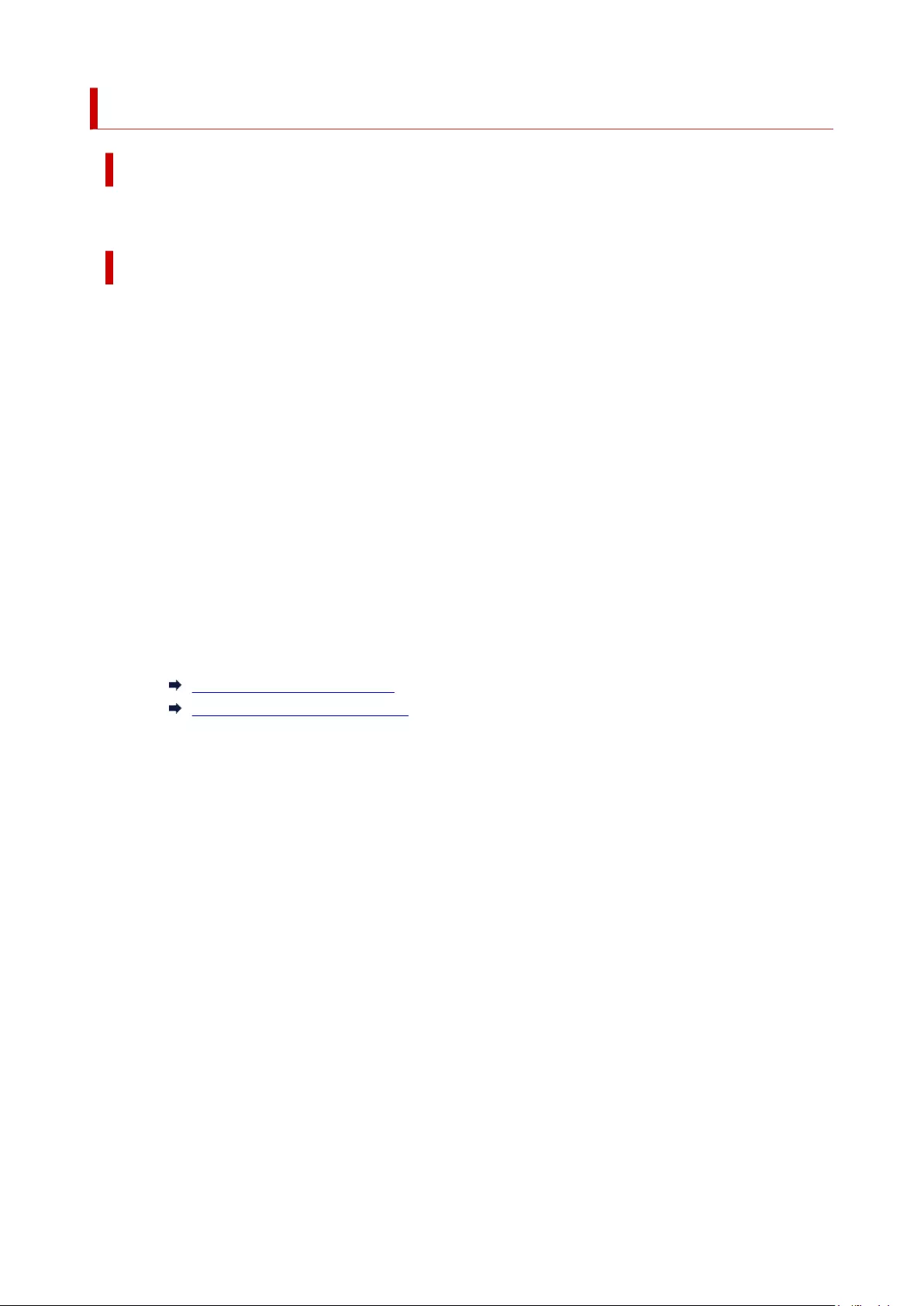
4911
Cause
The media type specified in the printer driver is not the same as the media type loaded in the printer.
What to Do
Tap OK on the touch screen to go to the next screen.
Check the media type and size that appear and tap OK.
•Changing the printer driver print settings•
Follow the steps below to match the media type in the printer driver and the media type specified for
the printer.
1. Tap Cancel on the touch screen to stop printing.
2. Change the media type in the printer driver settings to the media type loaded in the printer, and
then try again.
•Replacing paper•
Follow the steps below to match the media type in the printer driver and the media type specified for
the printer.
1. Tap Replace the paper and print on the touch screen to stop printing.
2. Load the paper with the media type set in the printer driver, and then try again.2.
Loading and Printing on Rolls
Loading and Printing on Sheets
•Printing without changes•
To continue printing, tap Print with the loaded paper. on the touch screen.
However, note that this error may cause paper jams and affect the printing quality.
826

4913
Cause
Cannot print borderless for one of the following reasons.
• The paper size in the printer cannot be printed borderless.
• The paper is loaded askew.
What to Do
•Replacing paper•
Follow the steps below to replace the printer paper with paper that can be printed borderless.
1. Tap Replace the paper and print on the touch screen, then remove the roll paper.1.
Removing the Roll from the Printer
2. Replace the printer paper with paper that can be printed borderless.2.
Loading Rolls in the Printer
Printing begins.
Note
See the media information list for media types compatible with borderless printing.
Paper Information List
•Reloading paper•
Tap Replace the paper and print on the touch screen, and then load the paper.
Loading Rolls in the Printer
Insert the roll paper firmly until it is against the roll holder flange.
Loading Rolls on the Roll Holder
•Printing with the loaded paper•
Tap Print with the loaded paper. on the touch screen.
Paper is printed borderless with the document width set slightly smaller than the paper.
•Stopping printing•
Tap Cancel on the touch screen to stop printing.
827
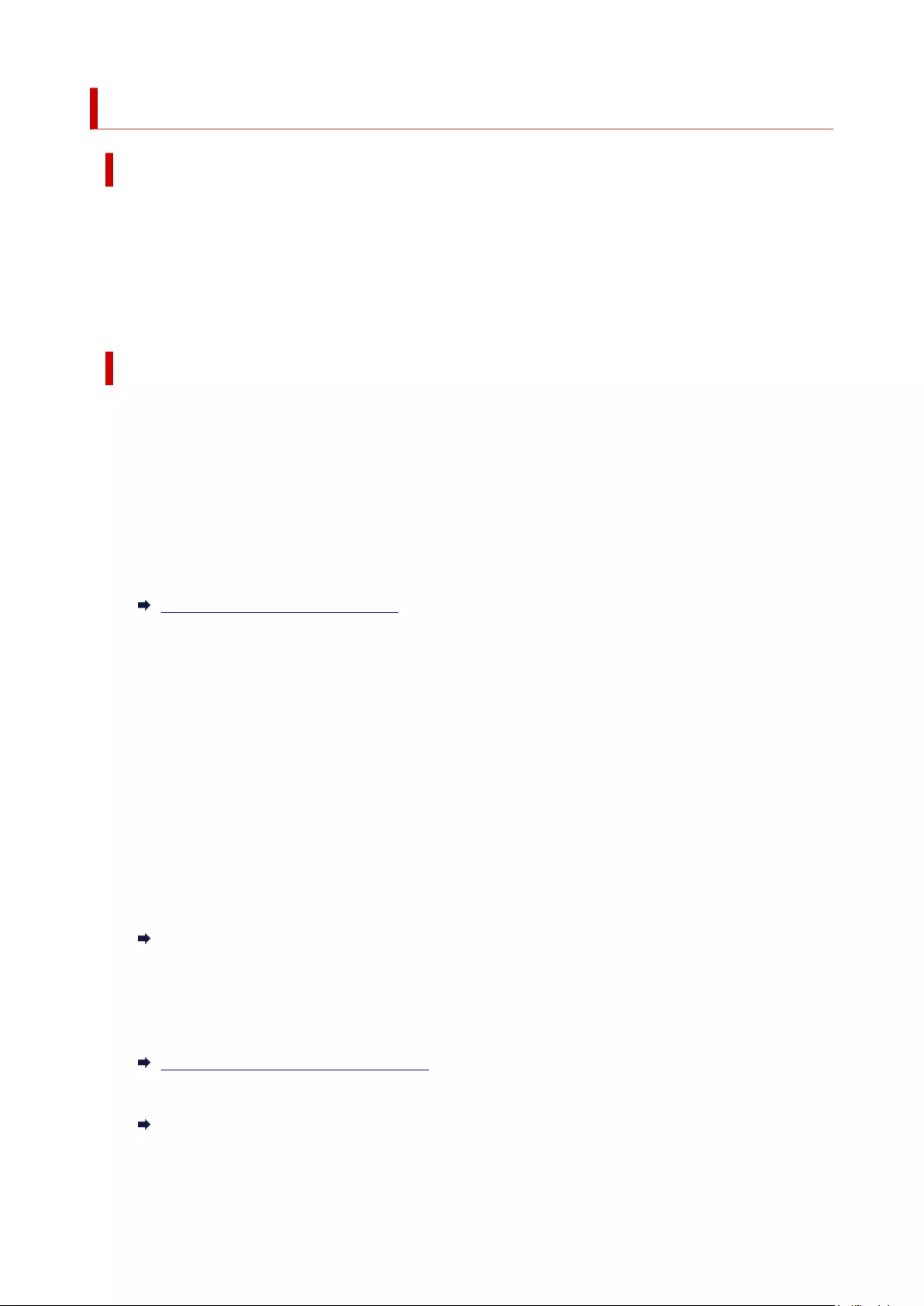
4920
Cause
Cannot cut paper for one of the following reasons.
• Paper that has been cut remains on the output guide.
• There is a foreign object near the output slot that is obstructing the cutter blade.
• The paper is not being used under the recommended usage conditions.
• The paper in use cannot be used with Automatic cut.
What to Do
•Paper that has been cut remains on the output guide•
Follow the steps below to resume printing.
1. Tip back the release lever and remove the paper.
2. Load the paper.
3. If "There is a job which has not been printed yet. Do you want to print this job?" appears on3.
the touch screen, tap Yes.
Printing will resume, starting from the page on which the error occurred.
Removing the Roll from the Printer
•A foreign object near the output slot is obstructing the cutter blade•
Follow the steps below to resume printing.
1. Open the top cover and remove any foreign objects.
2. If "There is a job which has not been printed yet. Do you want to print this job?" appears on2.
the touch screen, tap Yes.
Printing will resume, starting from the page on which the error occurred.
•Paper not being used under the recommended usage conditions•
Every paper type has different recommended conditions of use. Use all paper under its recommended
usage conditions.
See the media information list for recommended usage conditions.
Paper Information List
•The paper in use cannot be used with Automatic cut•
Set the roll paper cutting method to User cut and cut the roll paper with a cutting implement such as
scissors.
Specifying the Cutting Method for Rolls
See the media information list for paper types that can be used with Automatic cut.
Paper Information List
If this does not apply, there may be a cutter blade malfunction.
828
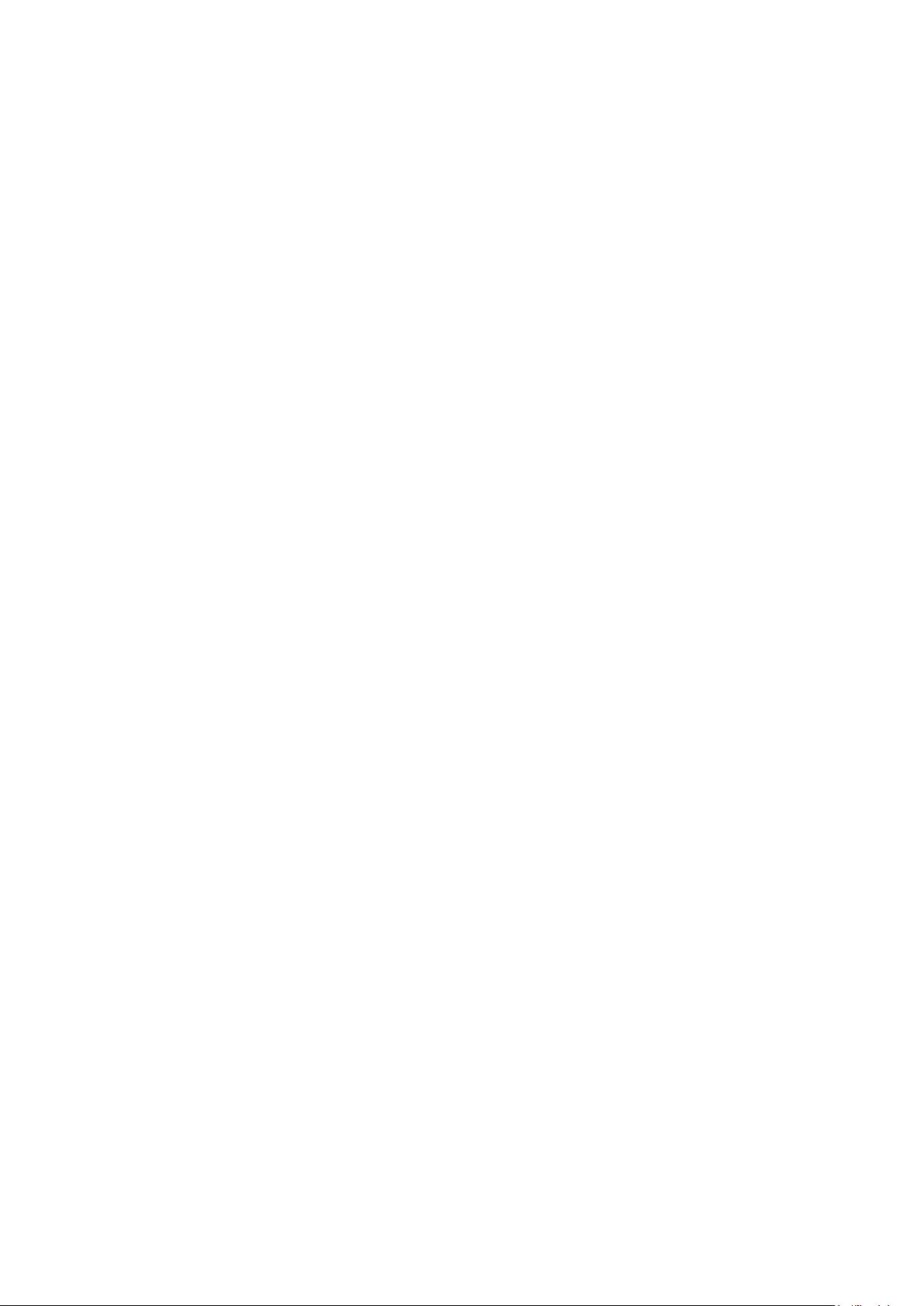
Contact your Canon dealer for assistance.
829
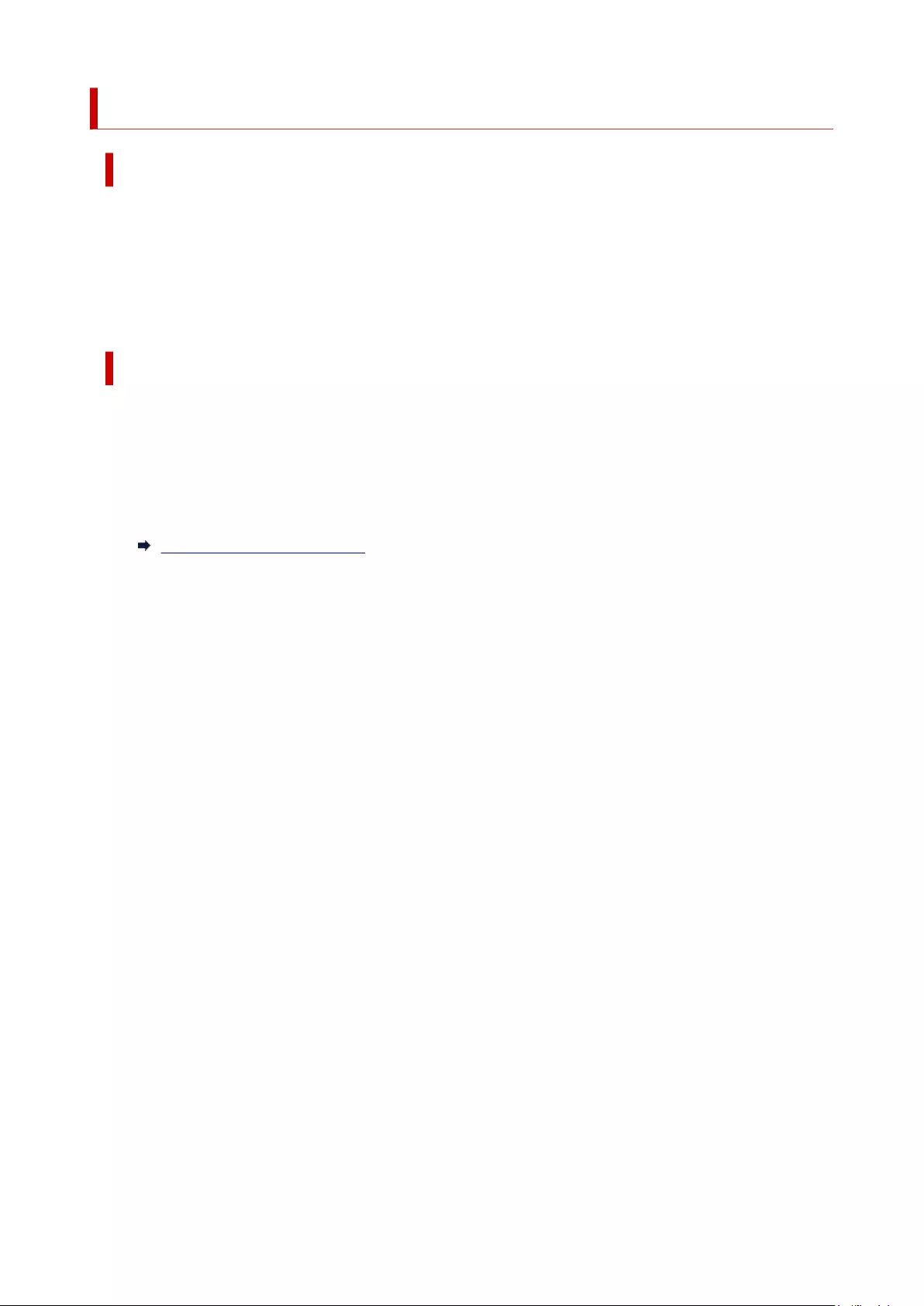
4931
Cause
Paper feed adjustment may have failed for the following reasons.
• The paper for printing a test pattern is soiled. Otherwise, you have loaded colored paper.
• The printer may be exposed to strong light, such as direct sunlight, which can cause the sensors to
malfunction.
• The test pattern was printed too faintly.
What to Do
Tap OK on the touch screen to dismiss the error, and then take the following actions.
• Load unused paper.
• Make adjustments to ensure that the printer is not exposed to strong light.
• Print a nozzle check pattern to check the print head status.•
If the pattern has gaps or horizontal white lines, the print head nozzle is blocked. Clean the print head.
Checking for Nozzle Clogging
830

4932
Cause
The print head cannot be calibrated because the printer is loaded with very transparent film-type paper.
What to Do
Tap OK on the touch screen to dismiss the error.
We recommend calibrating the print head with a frequently used, non-film paper.
Automatic Adjustment to Straighten Lines and Colors
831
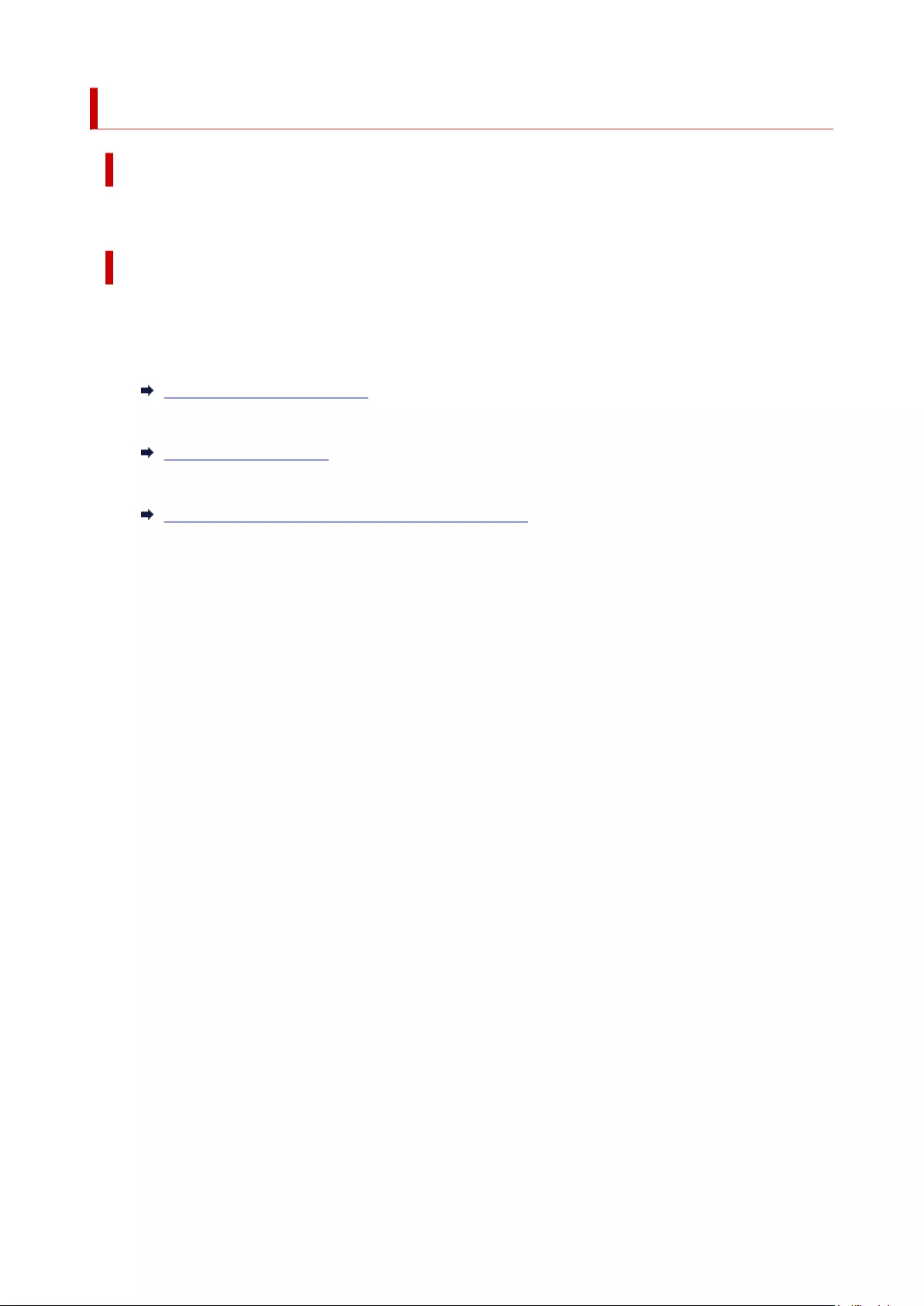
4933
Cause
The print head nozzle may be blocked.
What to Do
Follow the steps below to repeat Print Head Alignment.
1. Tap OK on the touch screen to dismiss the error.
2. Print a test pattern to check the nozzles.2.
Checking for Nozzle Clogging
3. If the nozzle is blocked, clean the print head.3.
Cleaning the Print Head
4. Repeat Print Head Alignment.4.
Automatic Adjustment to Straighten Lines and Colors
832
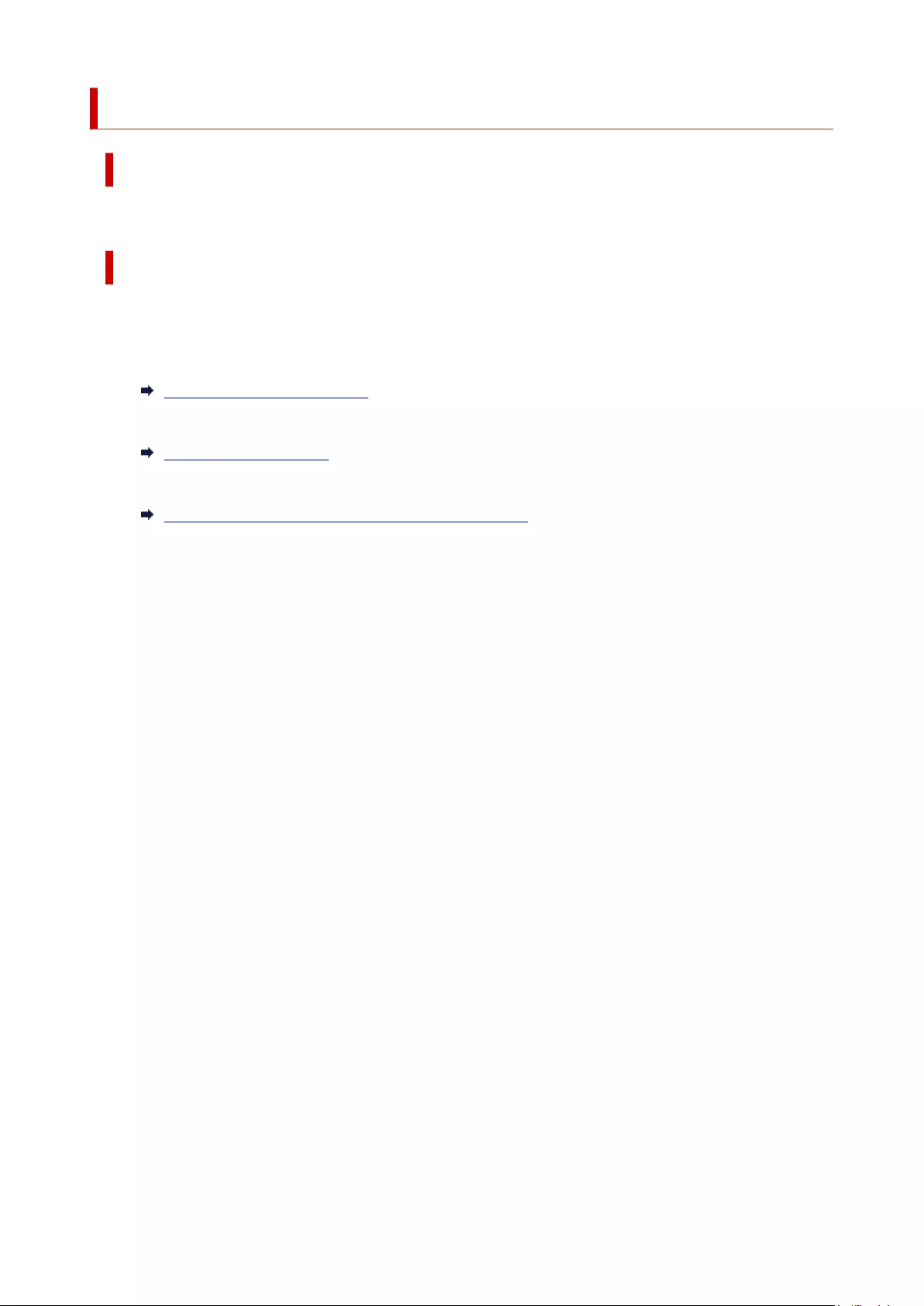
4934
Cause
The print head nozzle may be blocked.
What to Do
Follow the steps below to repeat Print Head Alignment.
1. Tap OK on the touch screen to dismiss the error.
2. Print a test pattern to check the nozzles.2.
Checking for Nozzle Clogging
3. If the nozzle is blocked, clean the print head.3.
Cleaning the Print Head
4. Repeat Print Head Alignment.4.
Automatic Adjustment to Straighten Lines and Colors
833
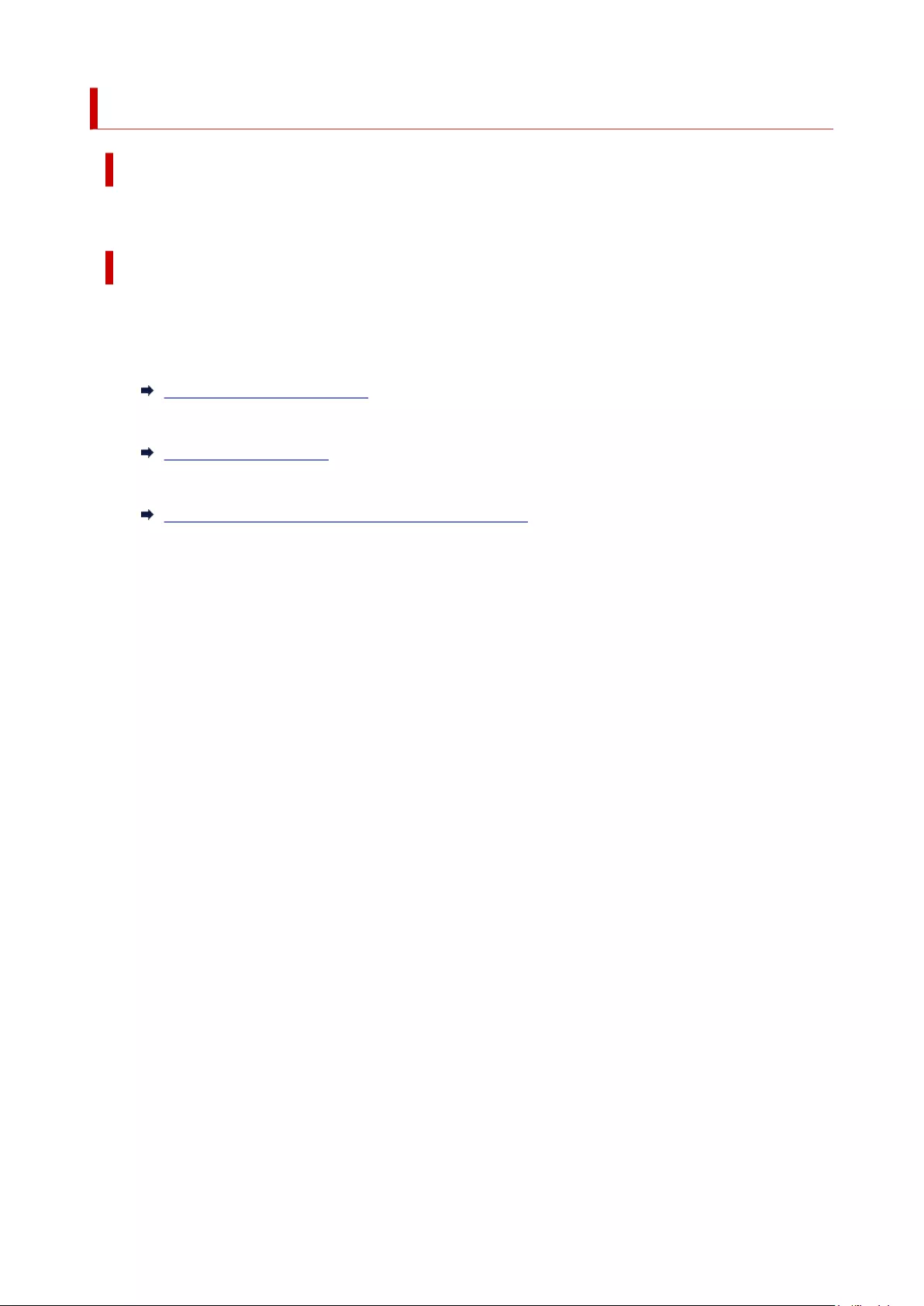
4935
Cause
The print head nozzle may be blocked.
What to Do
Follow the steps below to repeat Print Head Alignment.
1. Tap OK on the touch screen to dismiss the error.
2. Print a test pattern to check the nozzles.2.
Checking for Nozzle Clogging
3. If the nozzle is blocked, clean the print head.3.
Cleaning the Print Head
4. Repeat Print Head Alignment.4.
Automatic Adjustment to Straighten Lines and Colors
834
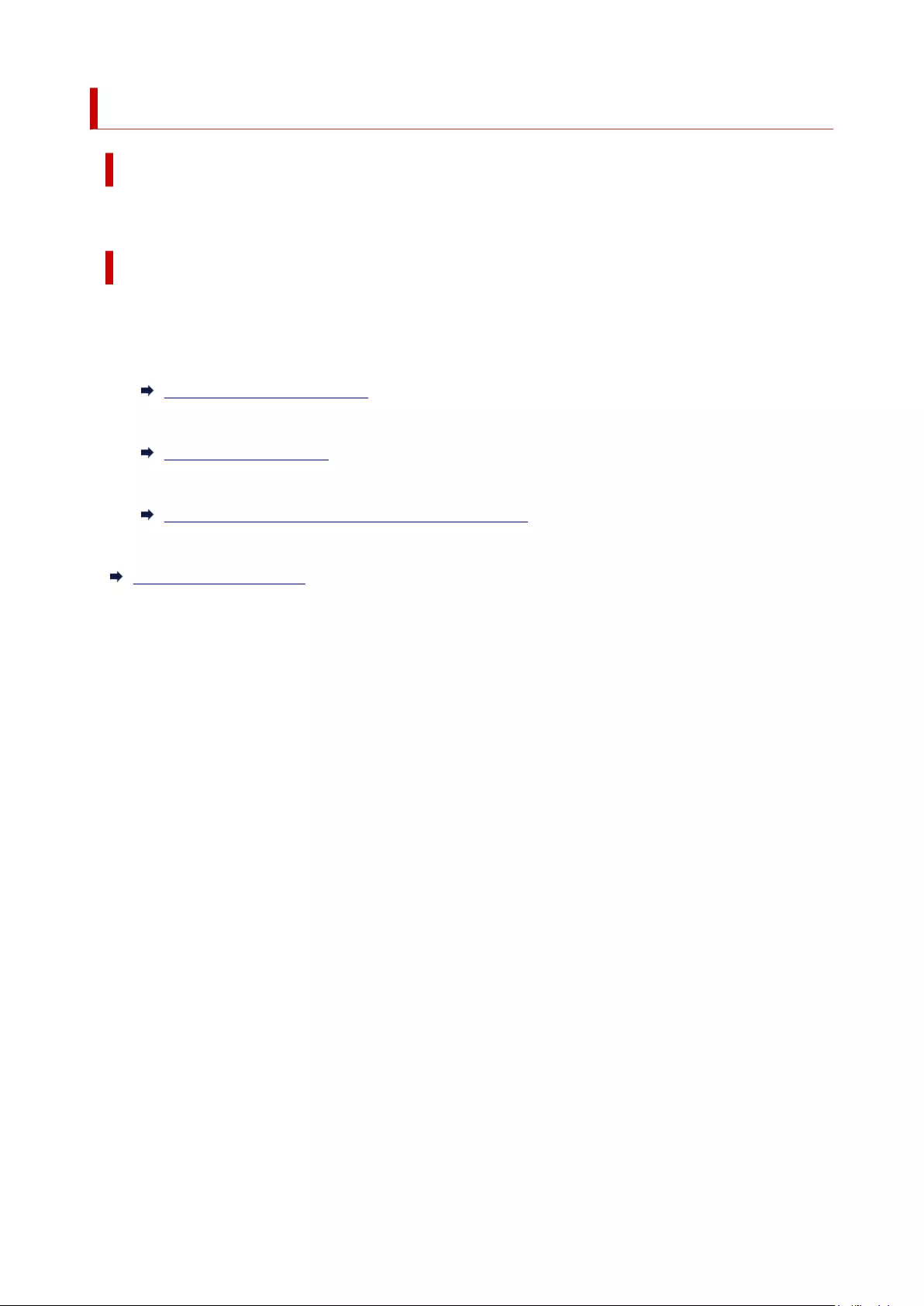
4937
Cause
Print head position adjustment failed.
What to Do
Follow the steps below to repeat Print Head Alignment.
1. Tap OK on the touch screen to dismiss the error.
2. Print a test pattern to check the nozzles.2.
Checking for Nozzle Clogging
3. If the nozzle is blocked, clean the print head.3.
Cleaning the Print Head
4. Retry Print Head Alignment.4.
Automatic Adjustment to Straighten Lines and Colors
If any print head nozzles are still blocked, replace the print head.
Replacing the Print Head
If the error appears again, the printer may be damaged. Contact a Canon customer service center.
835
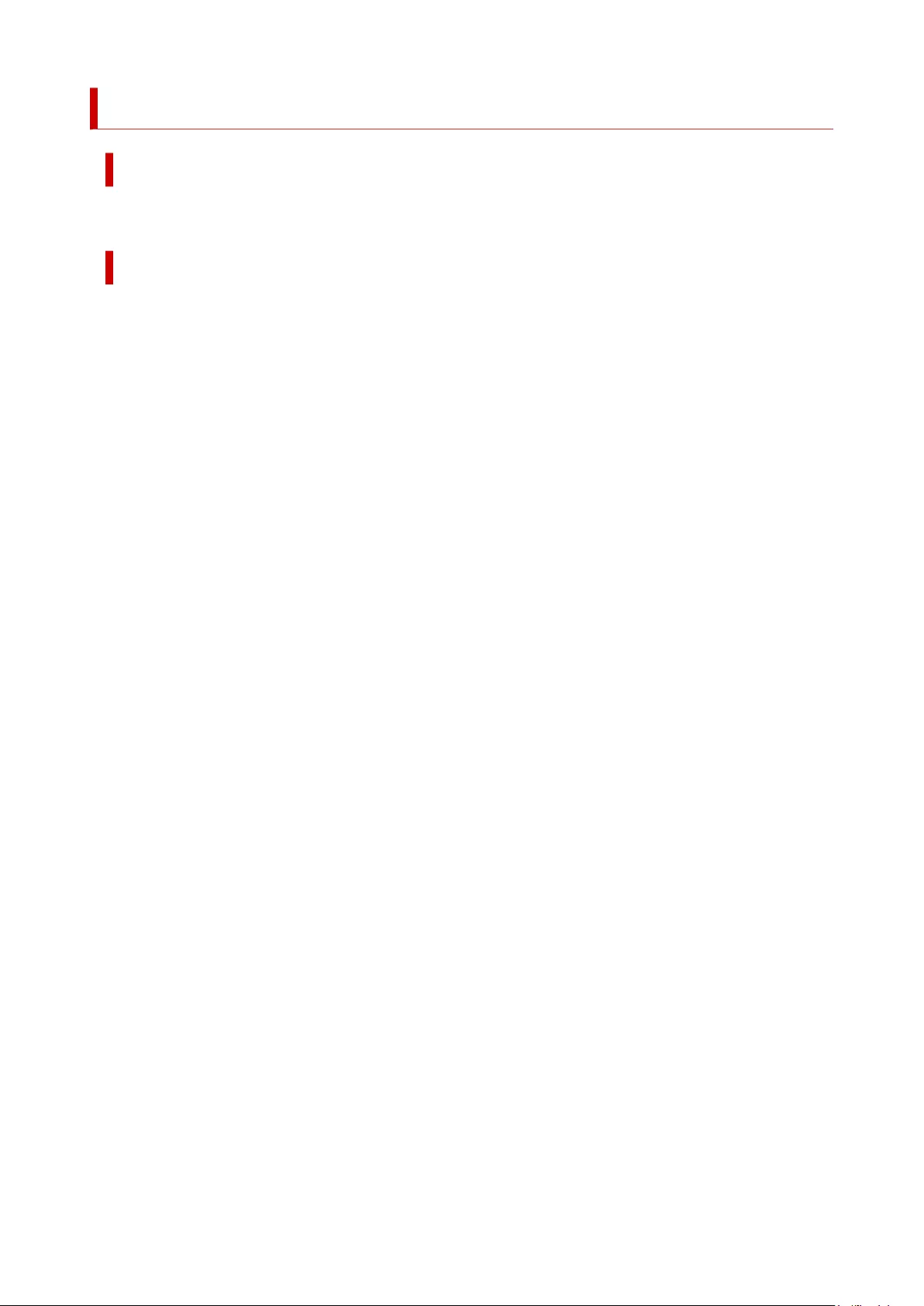
4950
Cause
WPS (Push button method) connection failed.
What to Do
Follow the instructions on the touch screen to try connecting to the wireless router again.
836
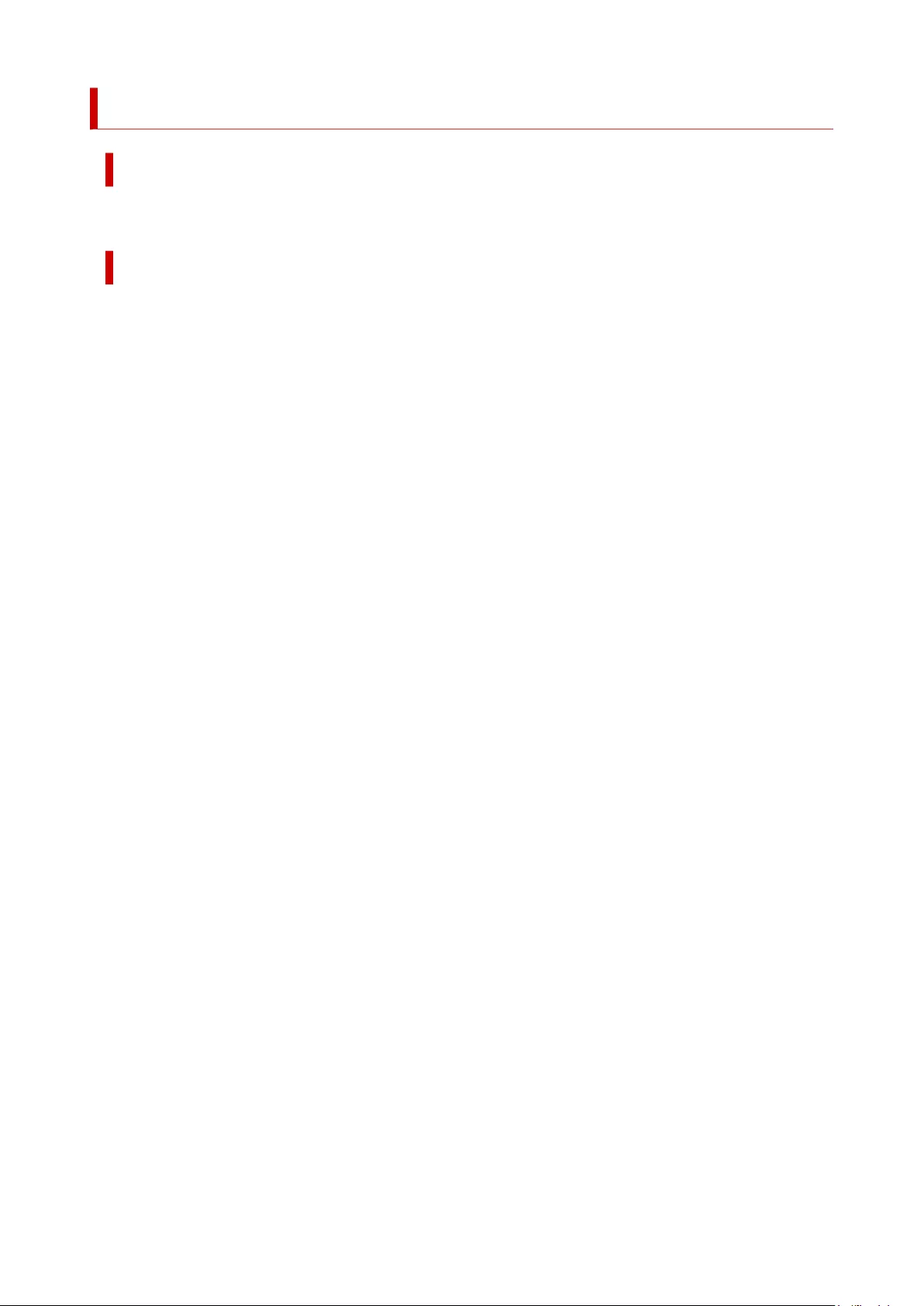
4951
Cause
AOSS (BUFFALO) connection failed.
What to Do
Follow the instructions on the touch screen to try connecting to the wireless router again.
837
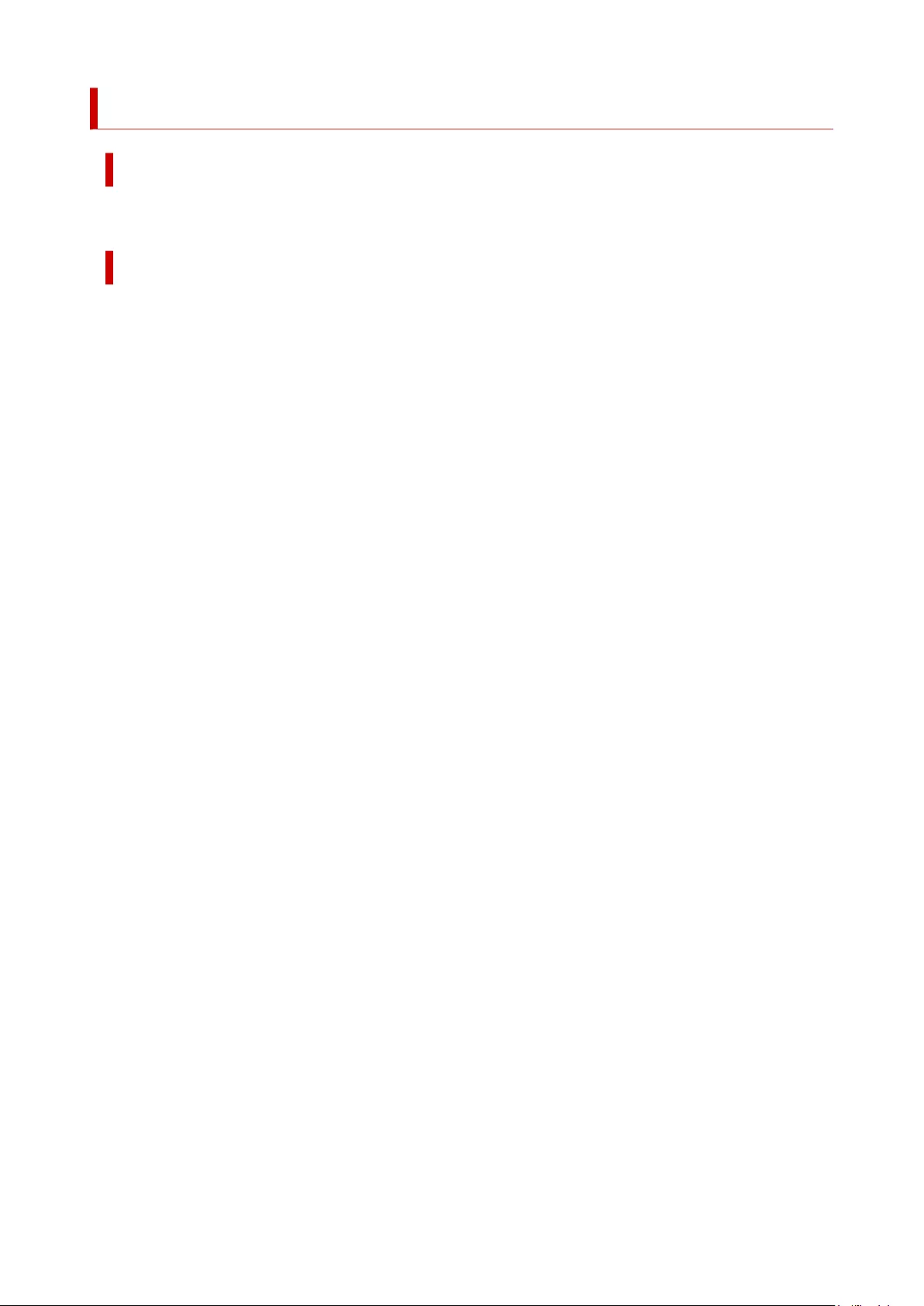
4952
Cause
Failed to connect to the wireless router.
What to Do
Follow the instructions on the touch screen to try connecting to the wireless router again.
838
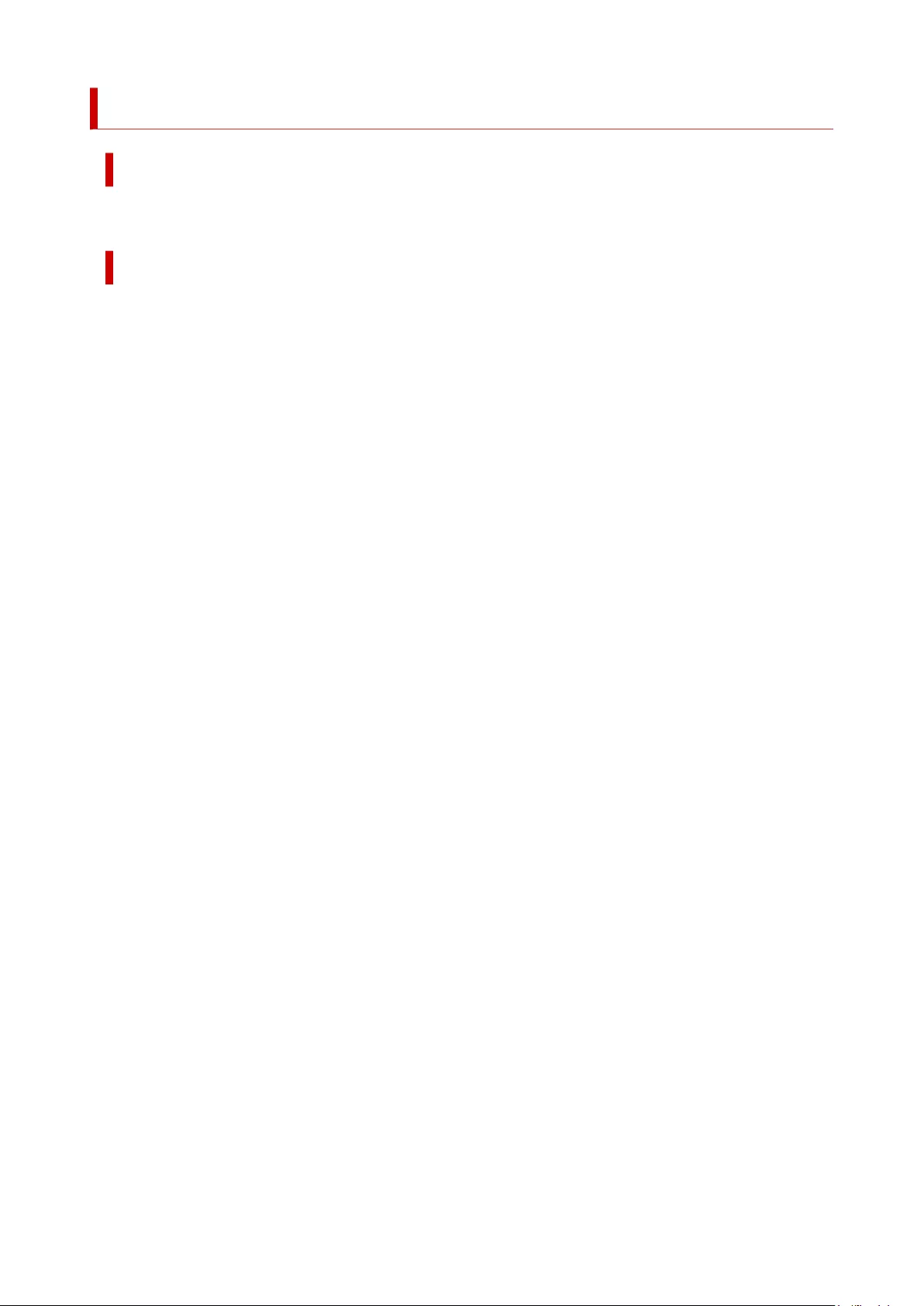
4953
Cause
Failed to acquire IP address.
What to Do
Check the information that appears on the touch screen, and then try connecting again.
839
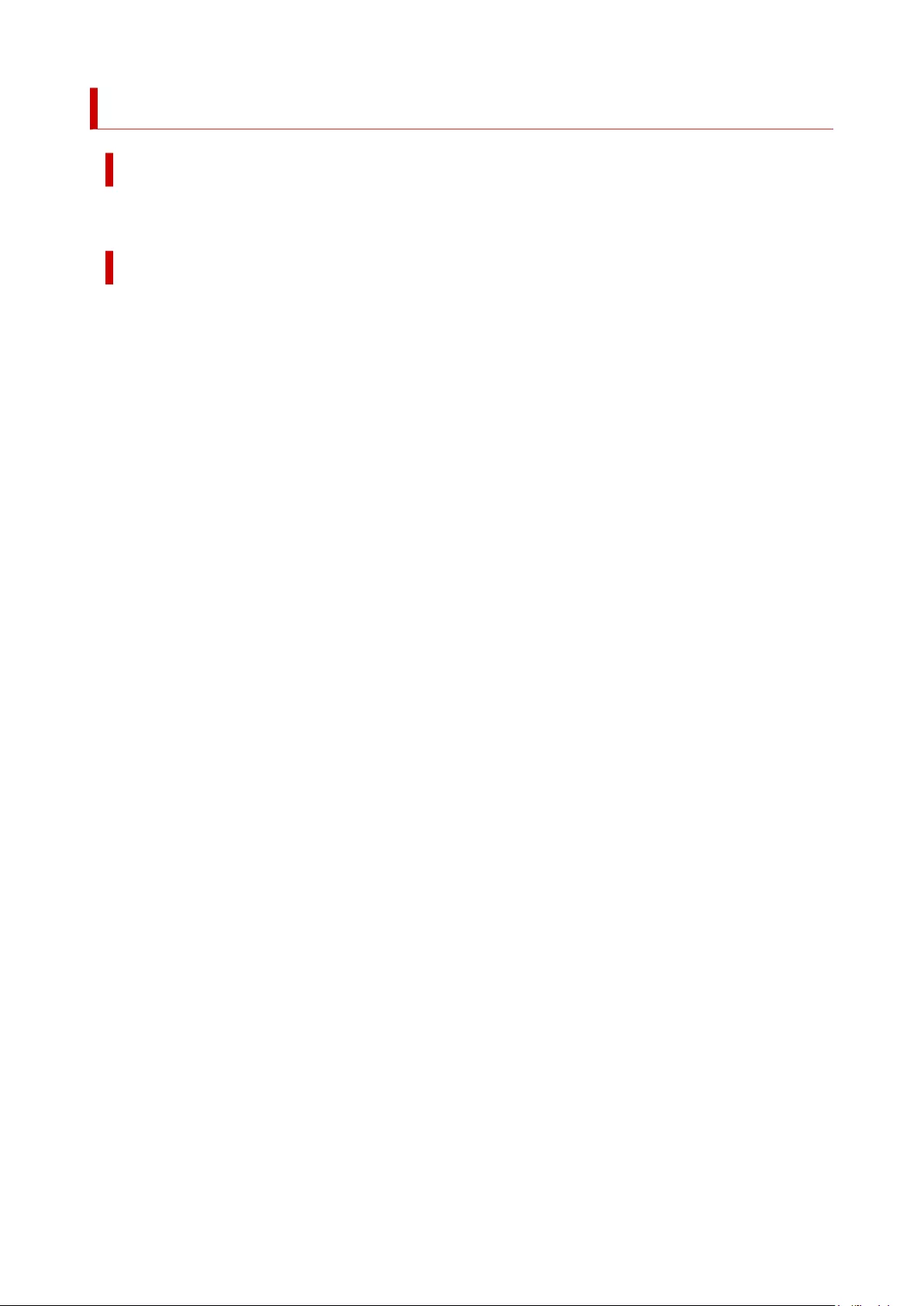
4954
Cause
Failed to set up Wi-Fi using Easy wireless connect.
What to Do
Tap OK on the touch screen to dismiss the error, and then configure the settings again.
840
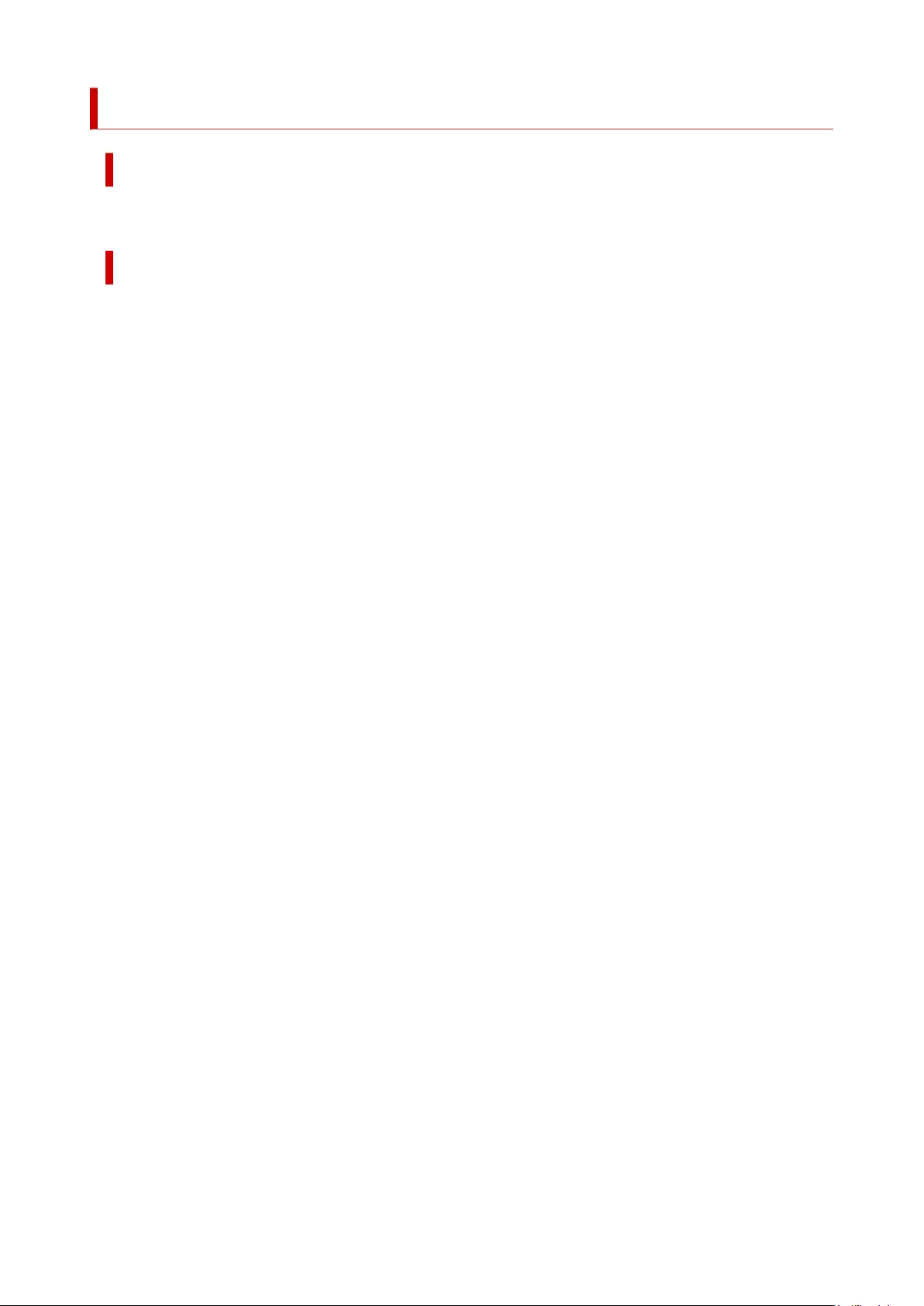
4955
Cause
IPv4/IPv6 settings were changed, but wired LAN and Wi-Fi are disabled.
What to Do
Tap OK on the touch screen to dismiss the error, and then enable wired LAN or Wi-Fi.
841
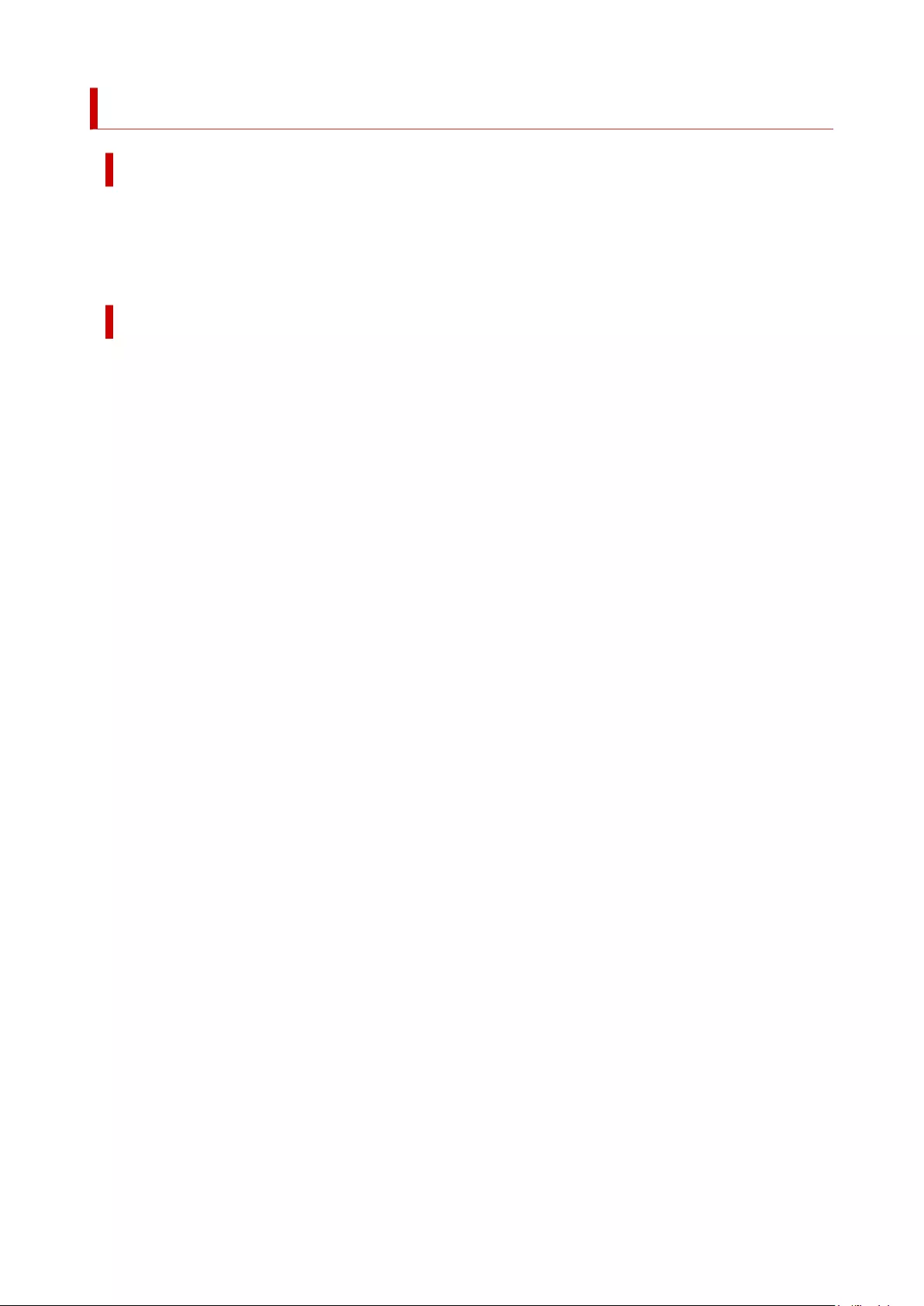
4956
Cause
Attempted to change LAN settings, but they cannot be changed for the following reasons.
• Printer is operating
• Printer currently being configured using Remote UI
What to Do
Tap OK on the touch screen to dismiss the error, exit other processes and then configure the settings
again.
842
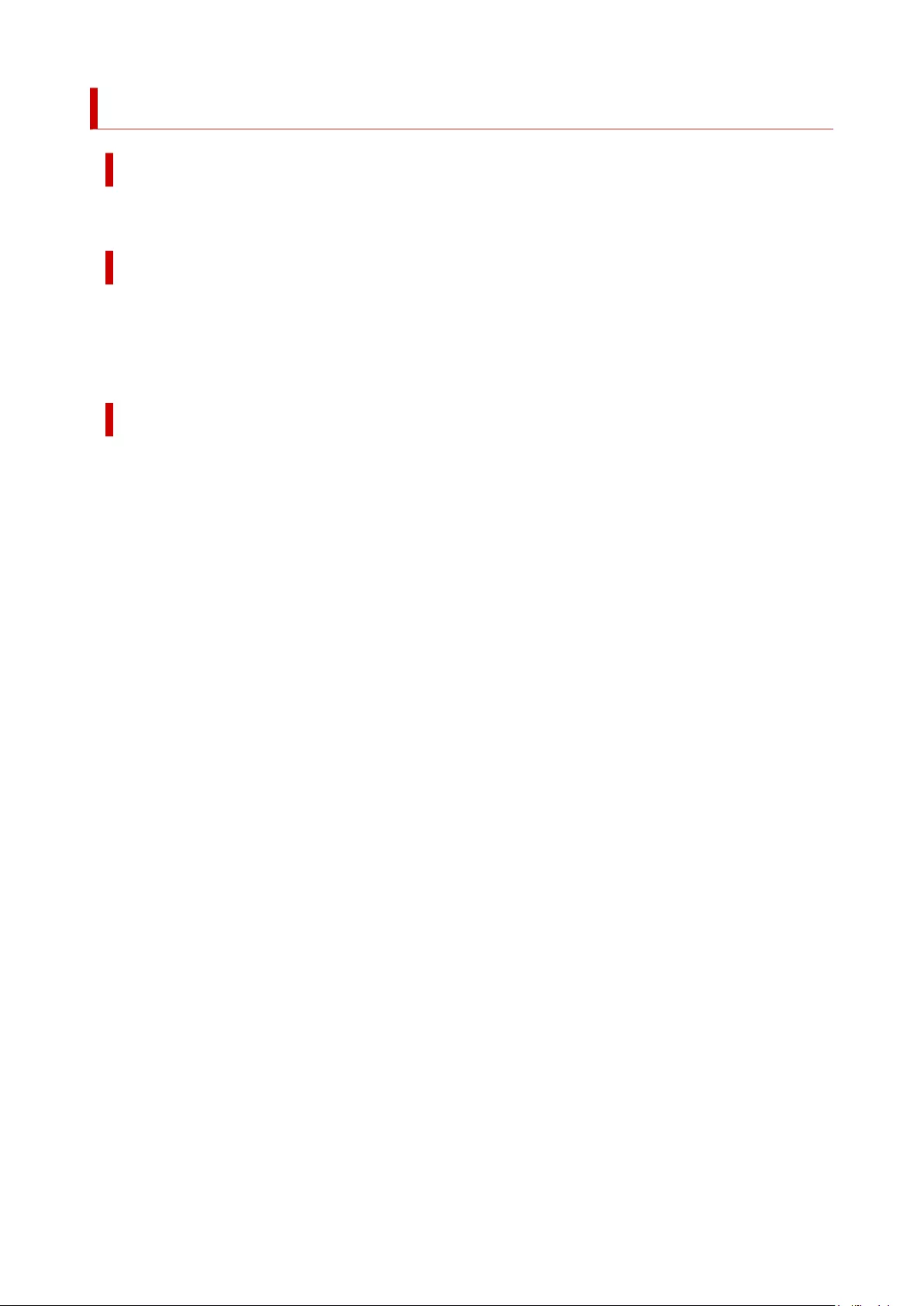
5106
Cause
A printer error has occurred.
What to Do
Make a note of the detailed error code (ECxx-xxxx) that appears on the touch screen, and then turn off
the power and unplug the power cord.
Contact your Canon dealer for assistance.
Detailed error codes
EC03-4061
843
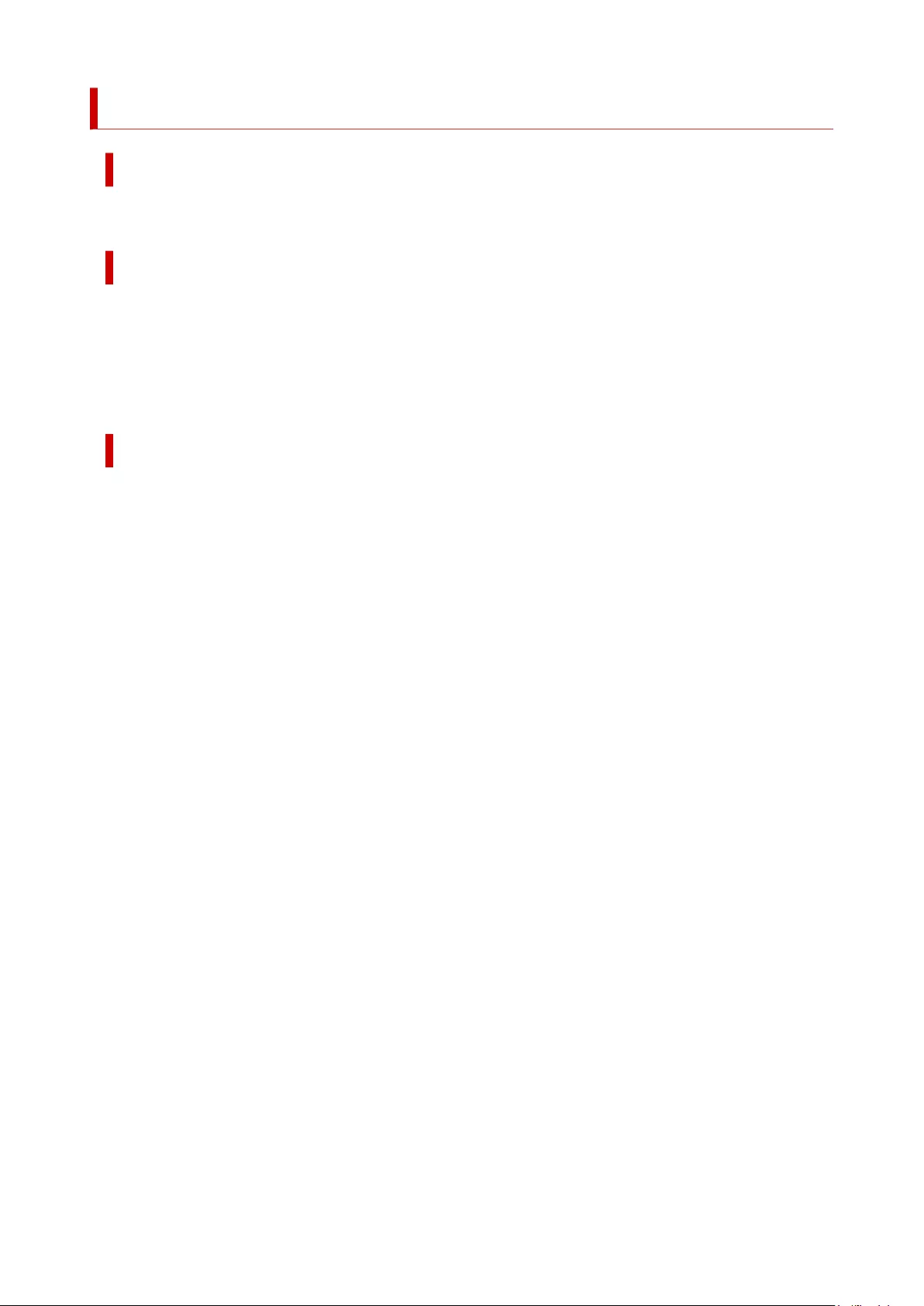
5200
Cause
A printer error has occurred.
What to Do
Turn off the power and unplug the power cord.
Wait a moment and turn the power back on.
If the error appears again, make a note of the detailed error code (ECxx-xxxx) that appears on the touch
screen, and then contact a Canon customer service center.
Detailed error codes
EC21-2F7E
844
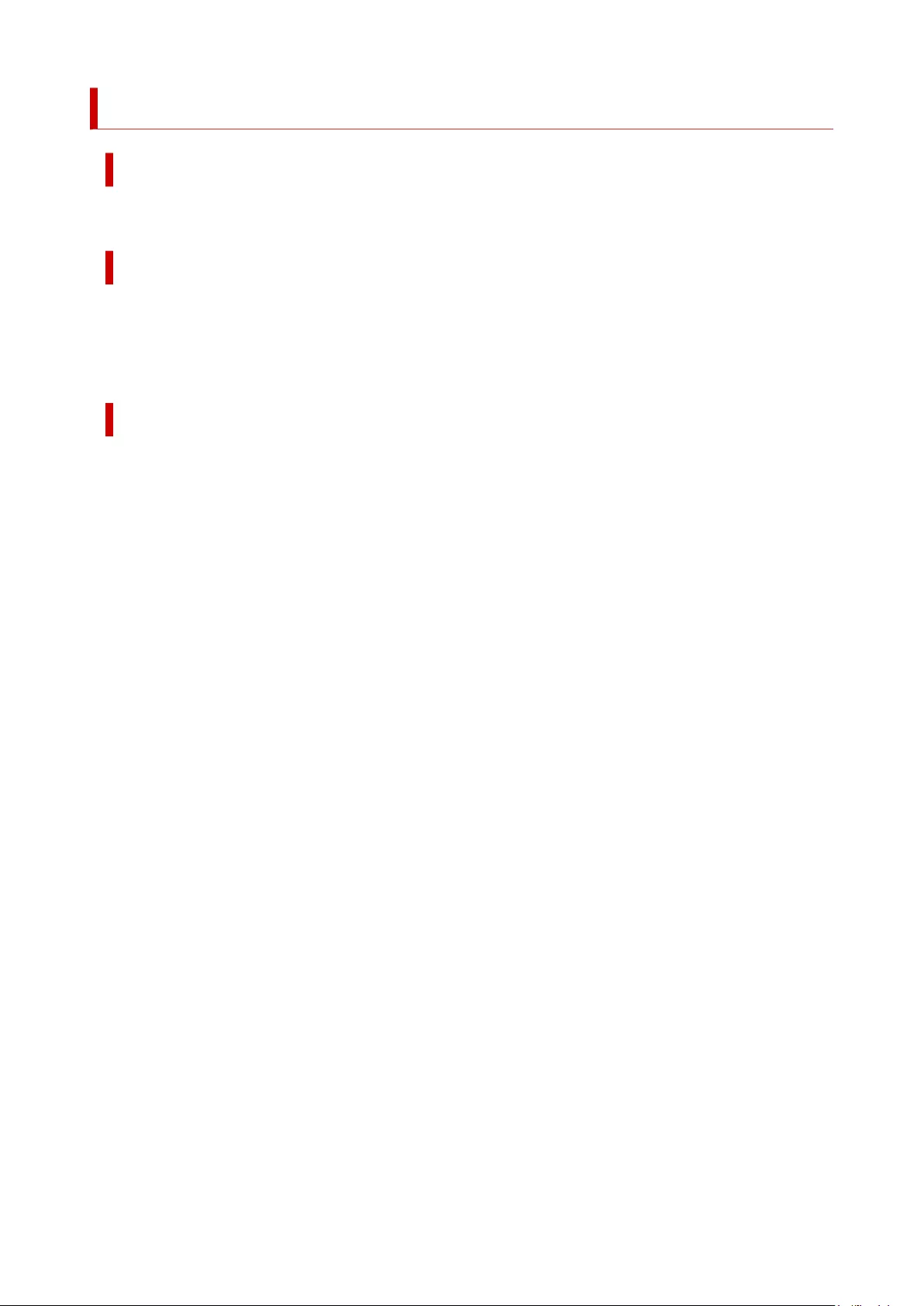
5B16
Cause
A printer error has occurred.
What to Do
Make a note of the detailed error code (ECxx-xxxx) that appears on the touch screen, and then turn off
the power and unplug the power cord.
Contact your Canon dealer for assistance.
Detailed error codes
EC22-4001
845
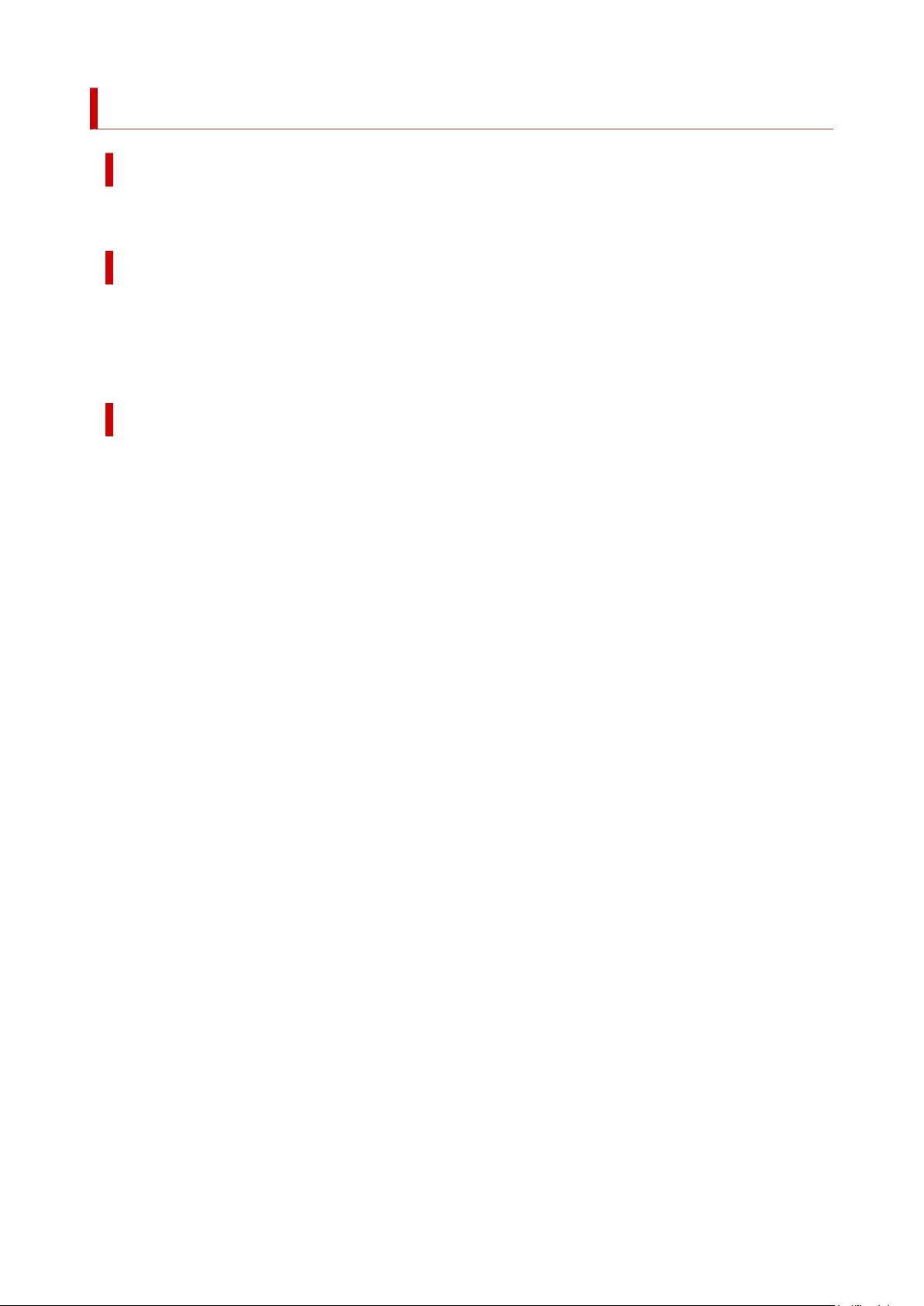
5B20
Cause
A printer error has occurred.
What to Do
Make a note of the detailed error code (ECxx-xxxx) that appears on the touch screen, and then turn off
the power and unplug the power cord.
Contact your Canon dealer for assistance.
Detailed error codes
EC25-4001 EC41-4001 EC43-4001 EC44-4001 EC47-4001
846

5B21
Cause
A printer error has occurred.
What to Do
Make a note of the detailed error code (ECxx-xxxx) that appears on the touch screen, and then turn off
the power and unplug the power cord.
Contact your Canon dealer for assistance.
Detailed error codes
EC48-4001
847
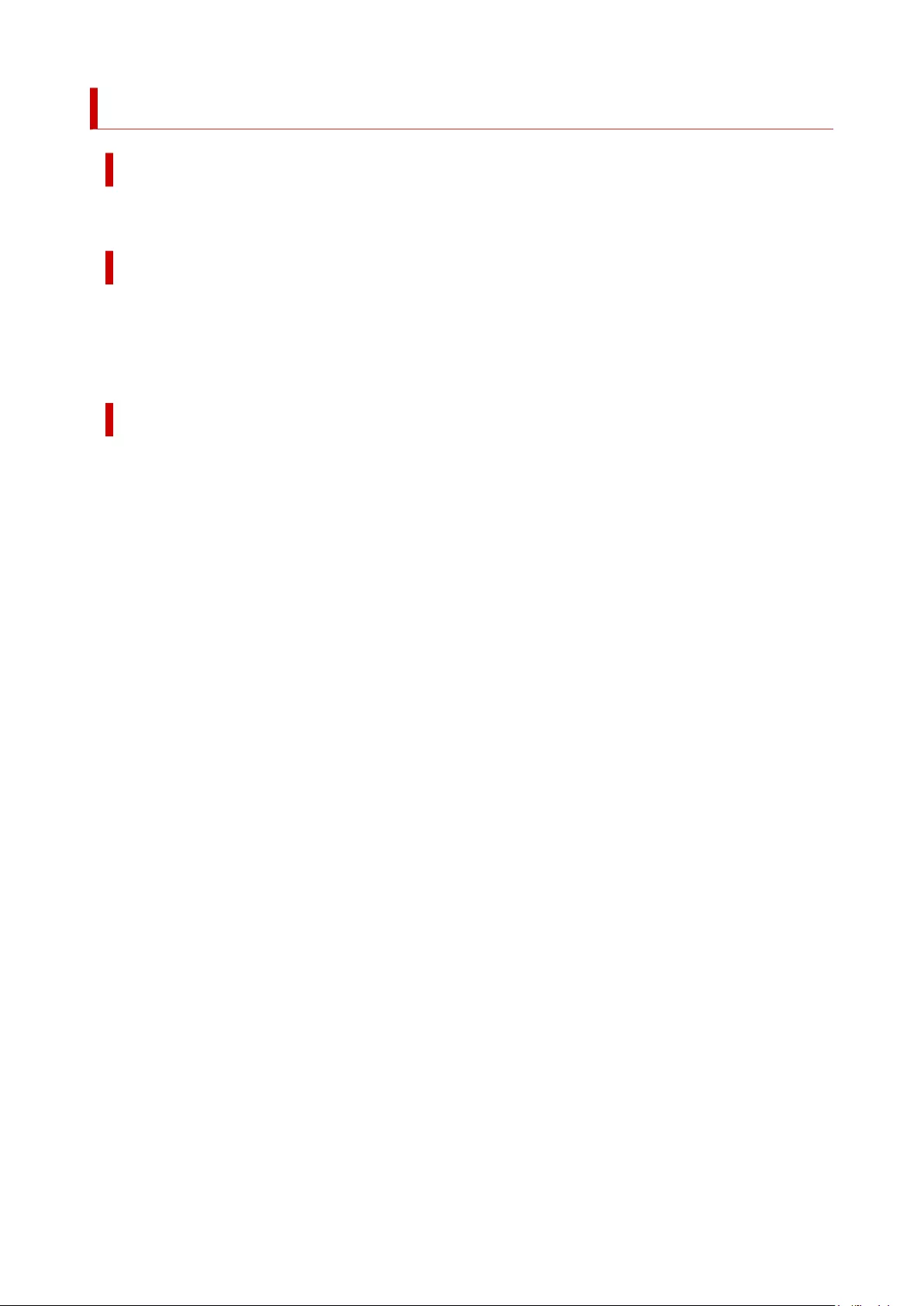
5C00
Cause
A printer error has occurred.
What to Do
Make a note of the detailed error code (ECxx-xxxx) that appears on the touch screen, and then turn off
the power and unplug the power cord.
Contact your Canon dealer for assistance.
Detailed error codes
EC31-4001
848
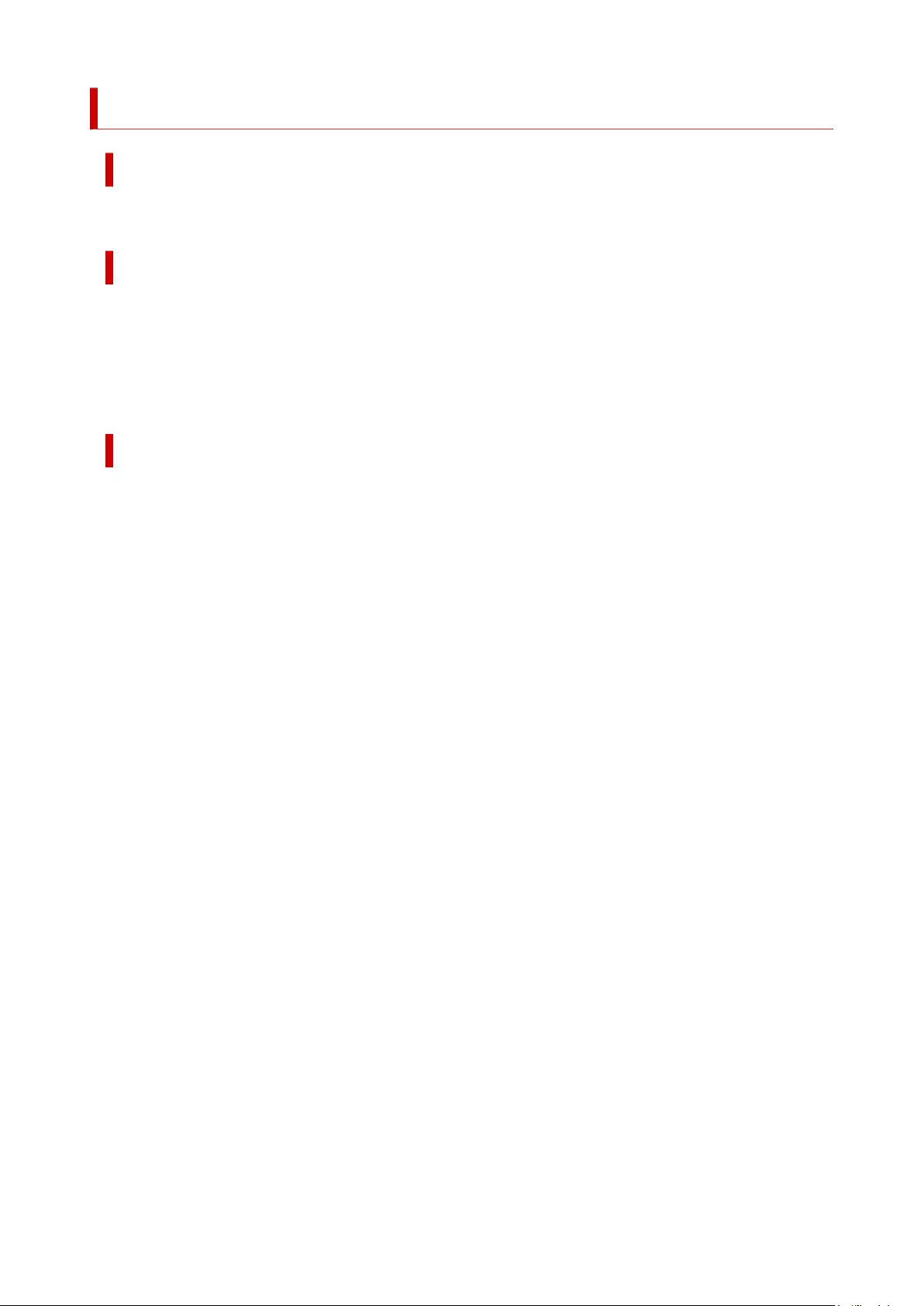
6502
Cause
A printer error has occurred.
What to Do
Turn off the power and unplug the power cord.
Wait a moment and turn the power back on.
If the error appears again, make a note of the detailed error code (ECxx-xxxx) that appears on the touch
screen, and then contact a Canon customer service center.
Detailed error codes
EC56-2FE0
849

6700
Cause
A printer error has occurred.
What to Do
Make a note of the detailed error code (ECxx-xxxx) that appears on the touch screen, and then turn off
the power and unplug the power cord.
Contact your Canon dealer for assistance.
Detailed error codes
EC57-404F
850
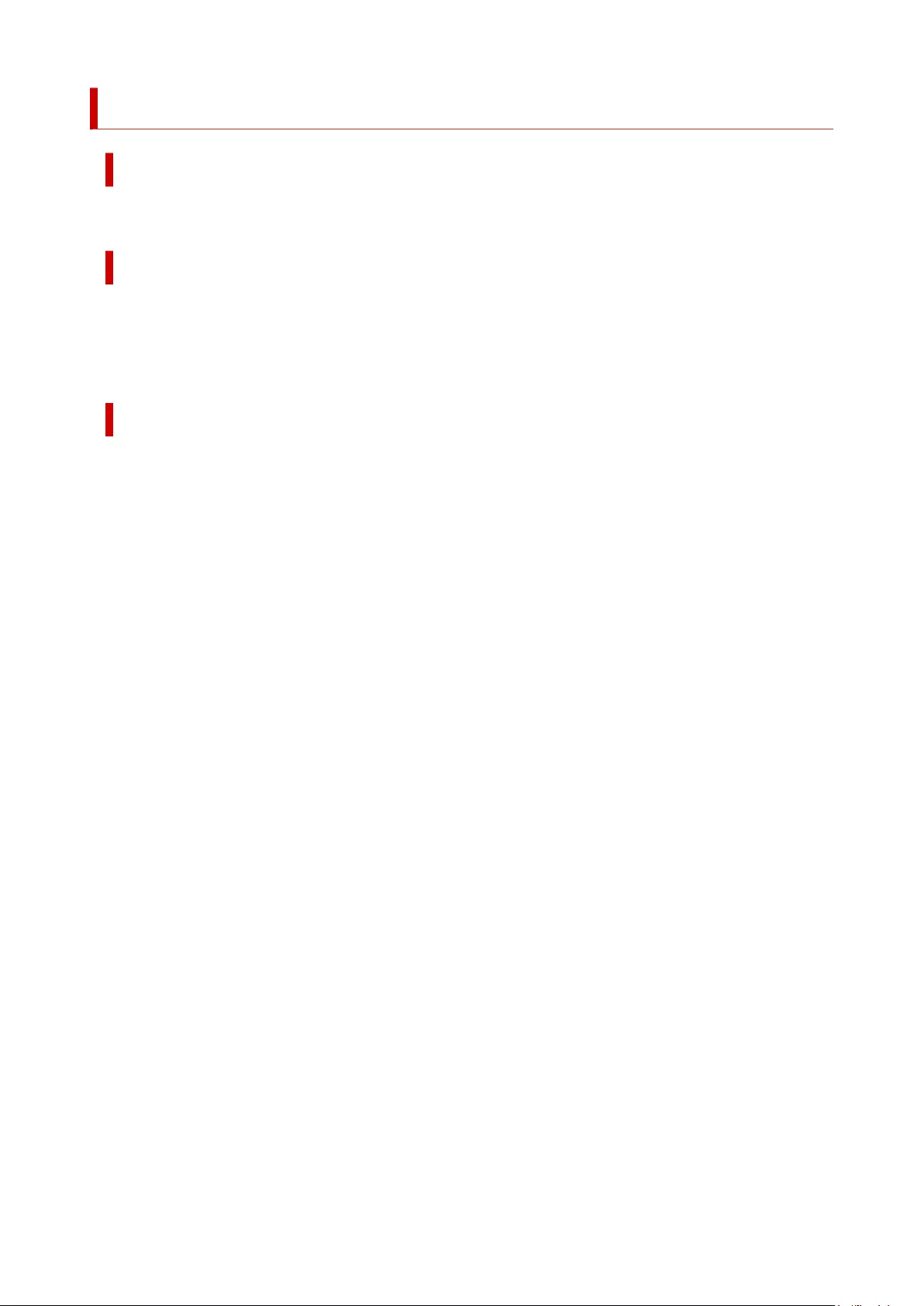
6702
Cause
A printer error has occurred.
What to Do
Make a note of the detailed error code (ECxx-xxxx) that appears on the touch screen, and then turn off
the power and unplug the power cord.
Contact your Canon dealer for assistance.
Detailed error codes
EC57-4040
851
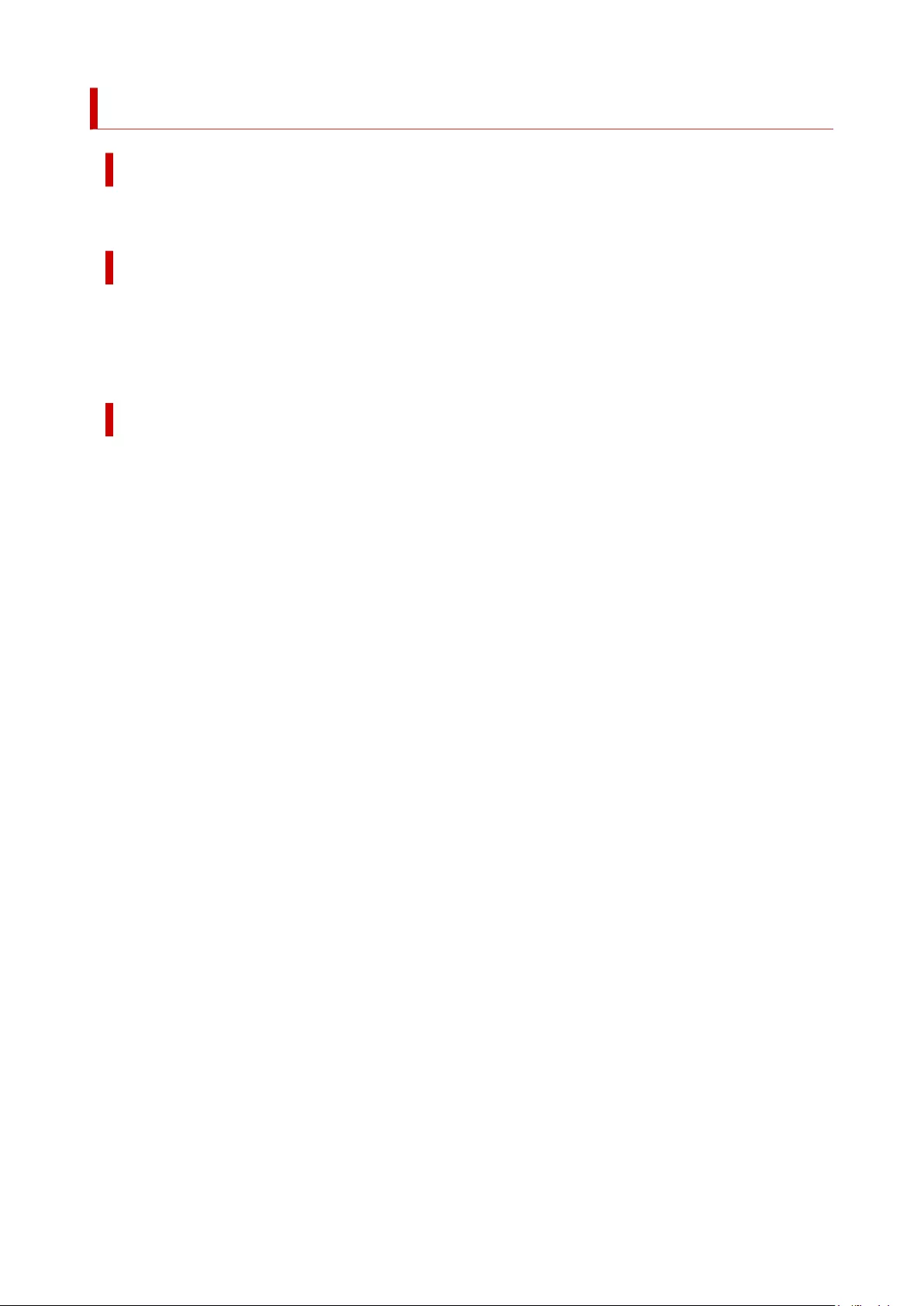
6820
Cause
A printer error has occurred.
What to Do
Make a note of the detailed error code (ECxx-xxxx) that appears on the touch screen, and then turn off
the power and unplug the power cord.
Contact your Canon dealer for assistance.
Detailed error codes
EC07-4060 EC51-4041 EC51-4042 EC51-4045 EC51-4046 EC51-4047 EC51-404C EC51-404D
EC51-404E EC51-4070 EC51-4071 EC51-4072
852
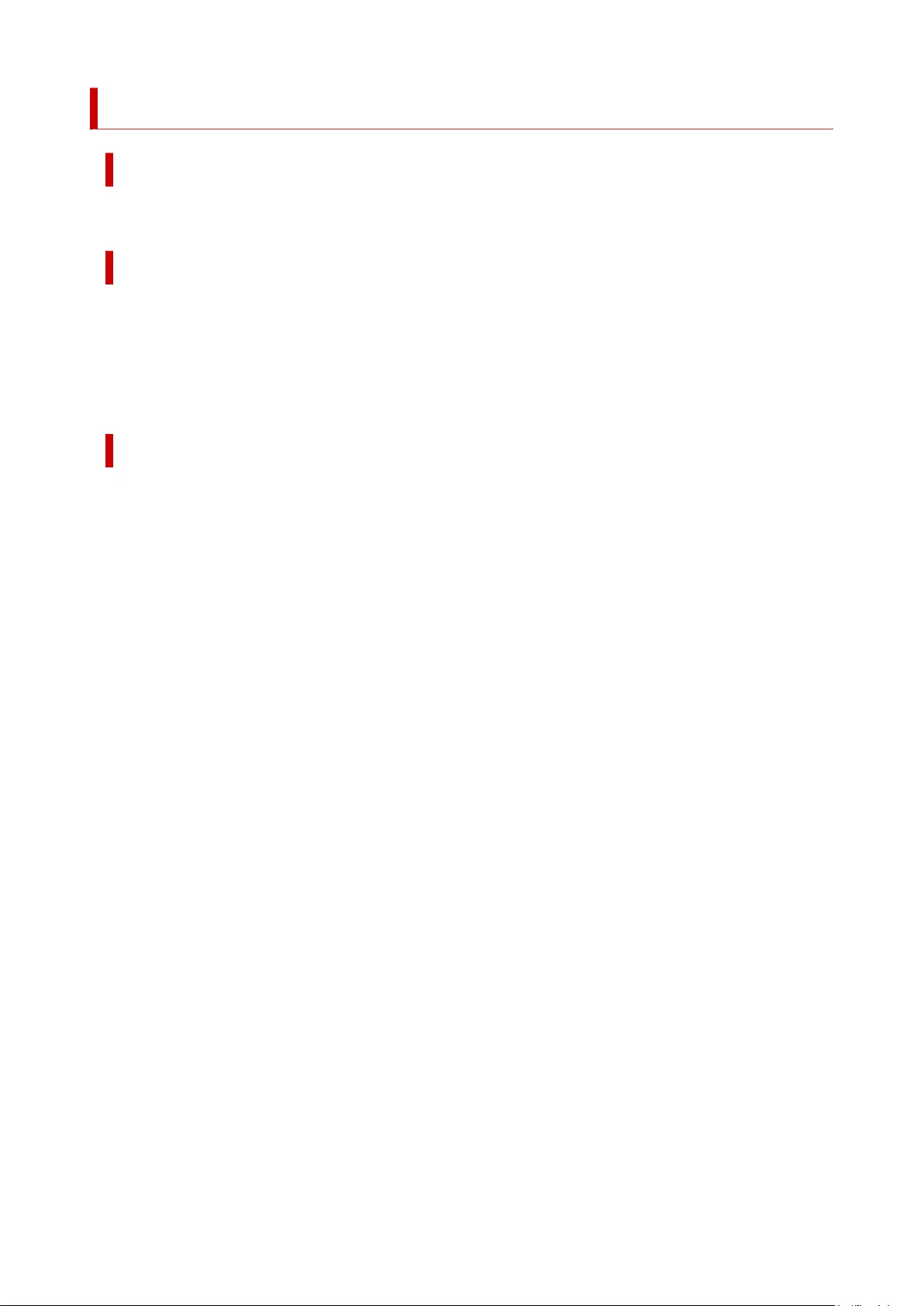
6900
Cause
A printer error has occurred.
What to Do
Turn off the power and unplug the power cord.
Wait a moment and turn the power back on.
If the error appears again, make a note of the detailed error code (ECxx-xxxx) that appears on the touch
screen, and then contact a Canon customer service center.
Detailed error codes
EC51-3000
853
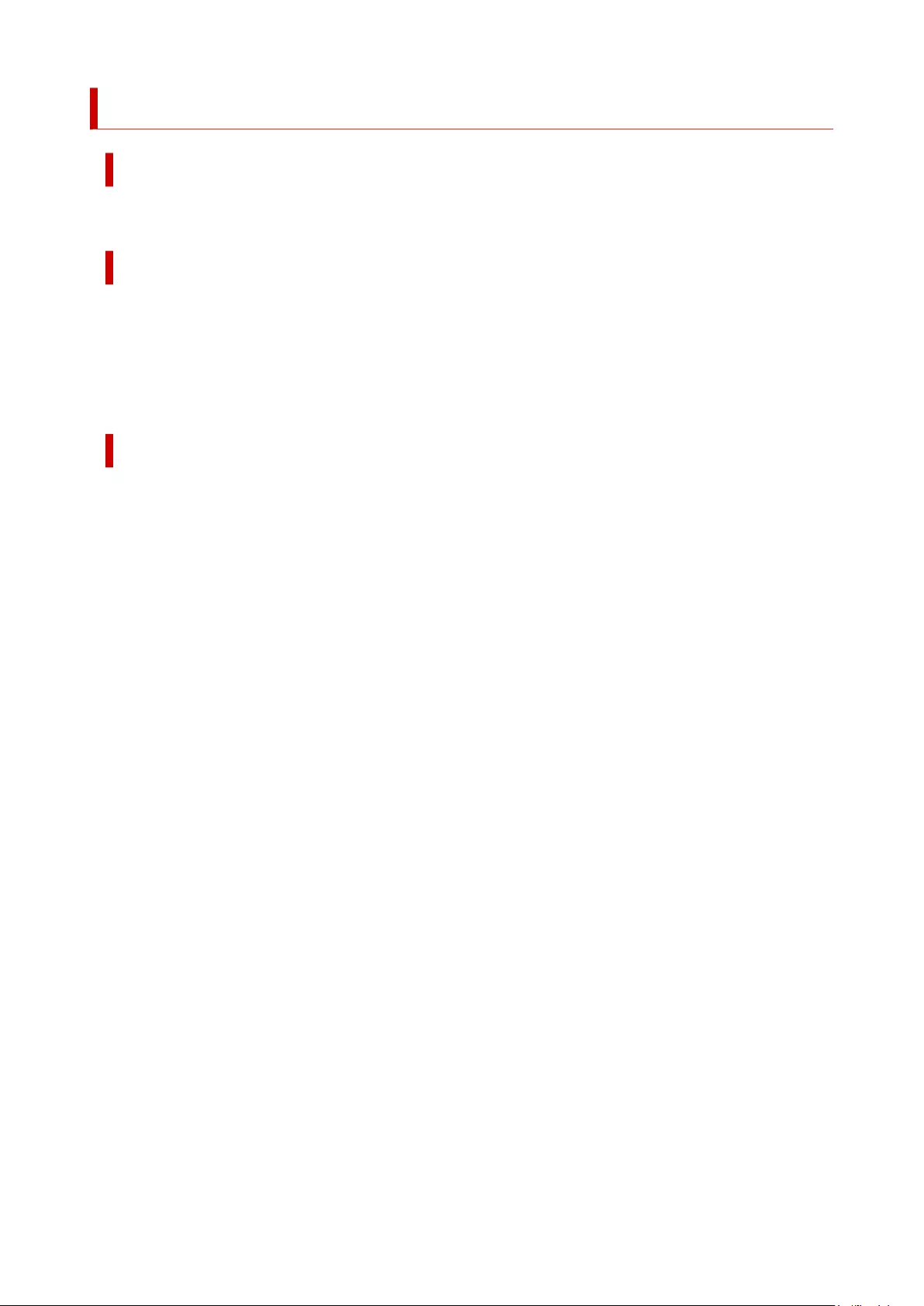
6901
Cause
A printer error has occurred.
What to Do
Turn off the power and unplug the power cord.
Wait a moment and turn the power back on.
If the error appears again, make a note of the detailed error code (ECxx-xxxx) that appears on the touch
screen, and then contact a Canon customer service center.
Detailed error codes
EC51-3001
854
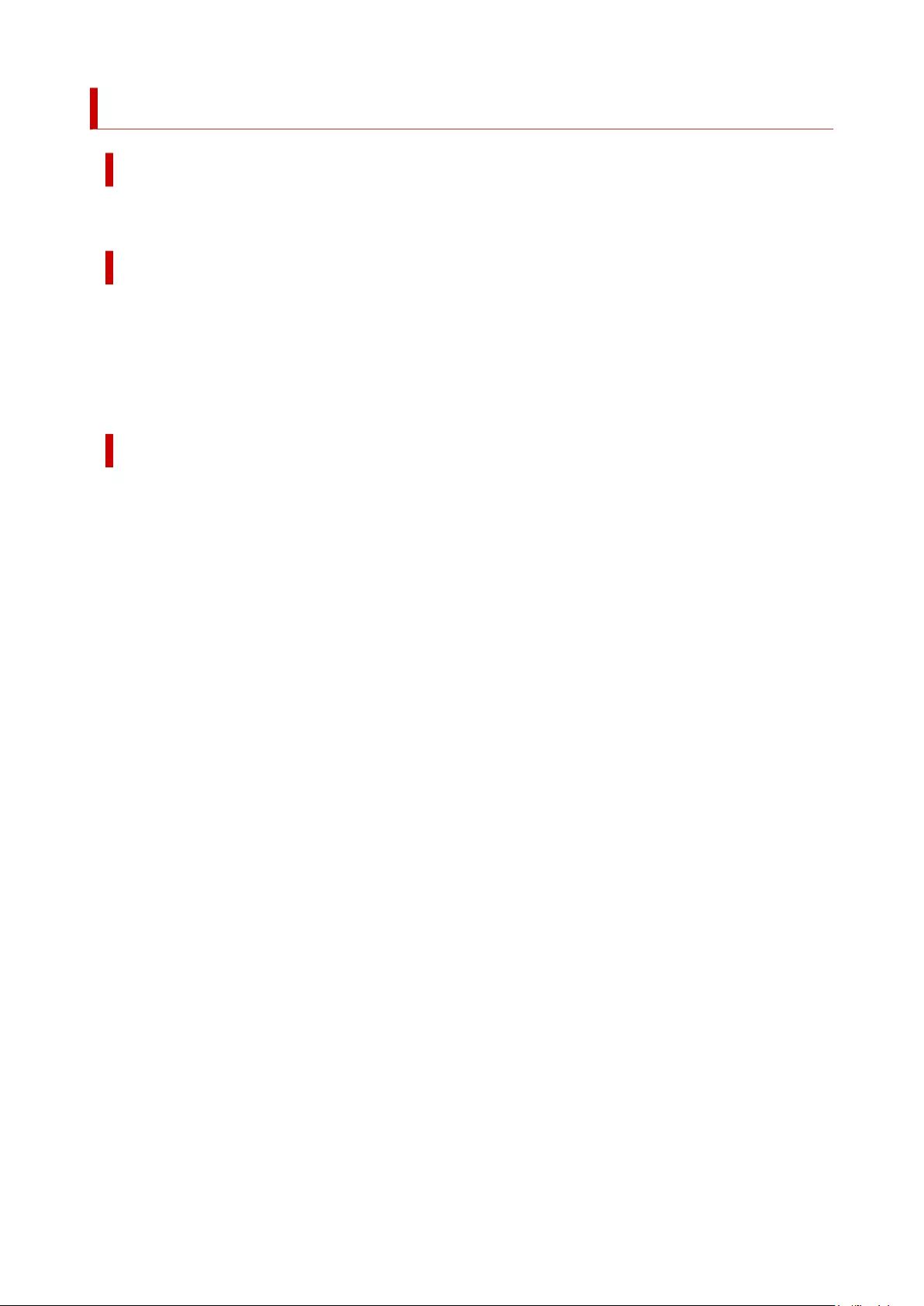
6902
Cause
A printer error has occurred.
What to Do
Turn off the power and unplug the power cord.
Wait a moment and turn the power back on.
If the error appears again, make a note of the detailed error code (ECxx-xxxx) that appears on the touch
screen, and then contact a Canon customer service center.
Detailed error codes
EC51-3006
855
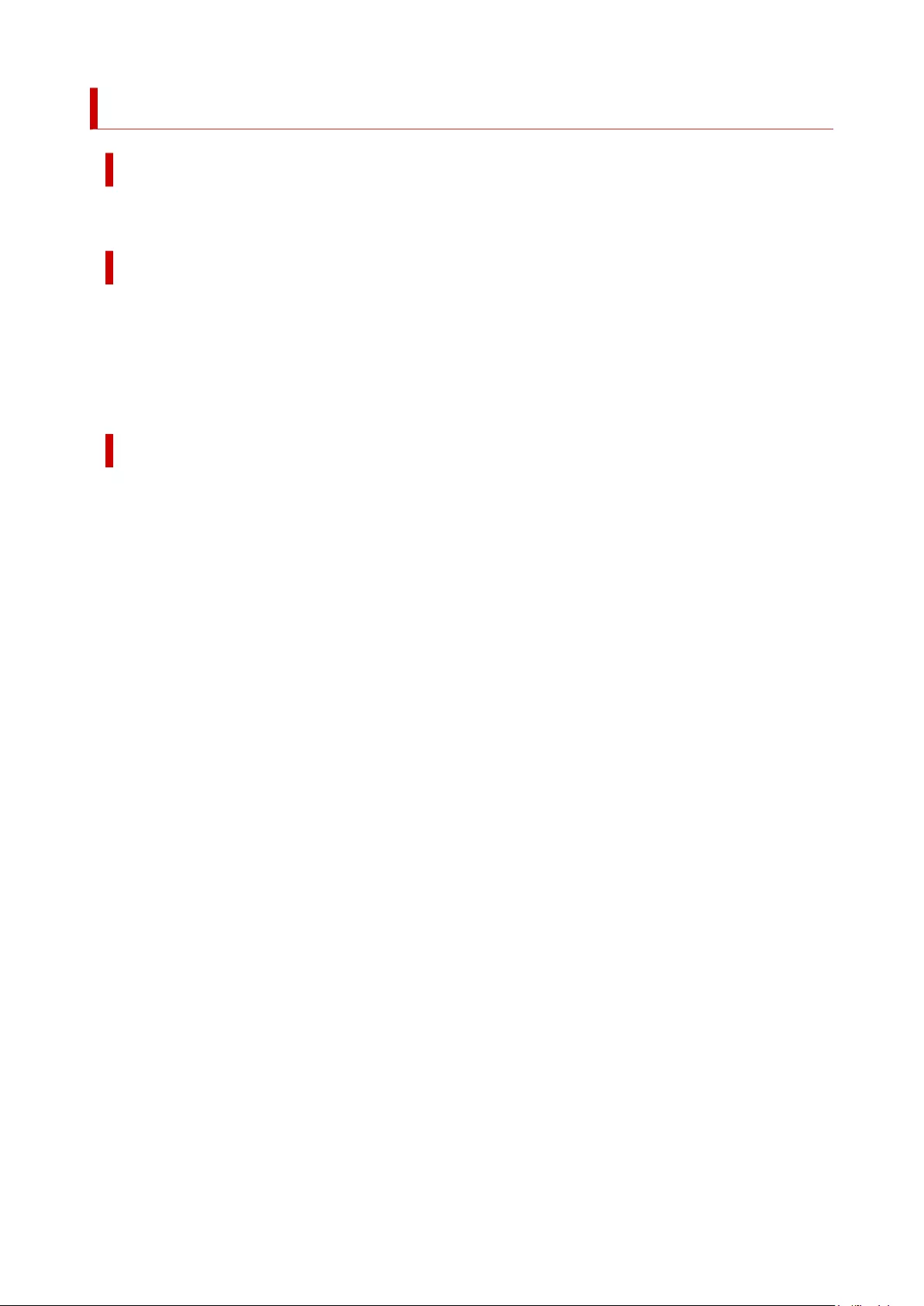
6910
Cause
A printer error has occurred.
What to Do
Turn off the power and unplug the power cord.
Wait a moment and turn the power back on.
If the error appears again, make a note of the detailed error code (ECxx-xxxx) that appears on the touch
screen, and then contact a Canon customer service center.
Detailed error codes
EC51-3002
856

6911
Cause
A printer error has occurred.
What to Do
Turn off the power and unplug the power cord.
Wait a moment and turn the power back on.
If the error appears again, make a note of the detailed error code (ECxx-xxxx) that appears on the touch
screen, and then contact a Canon customer service center.
Detailed error codes
EC51-3003
857
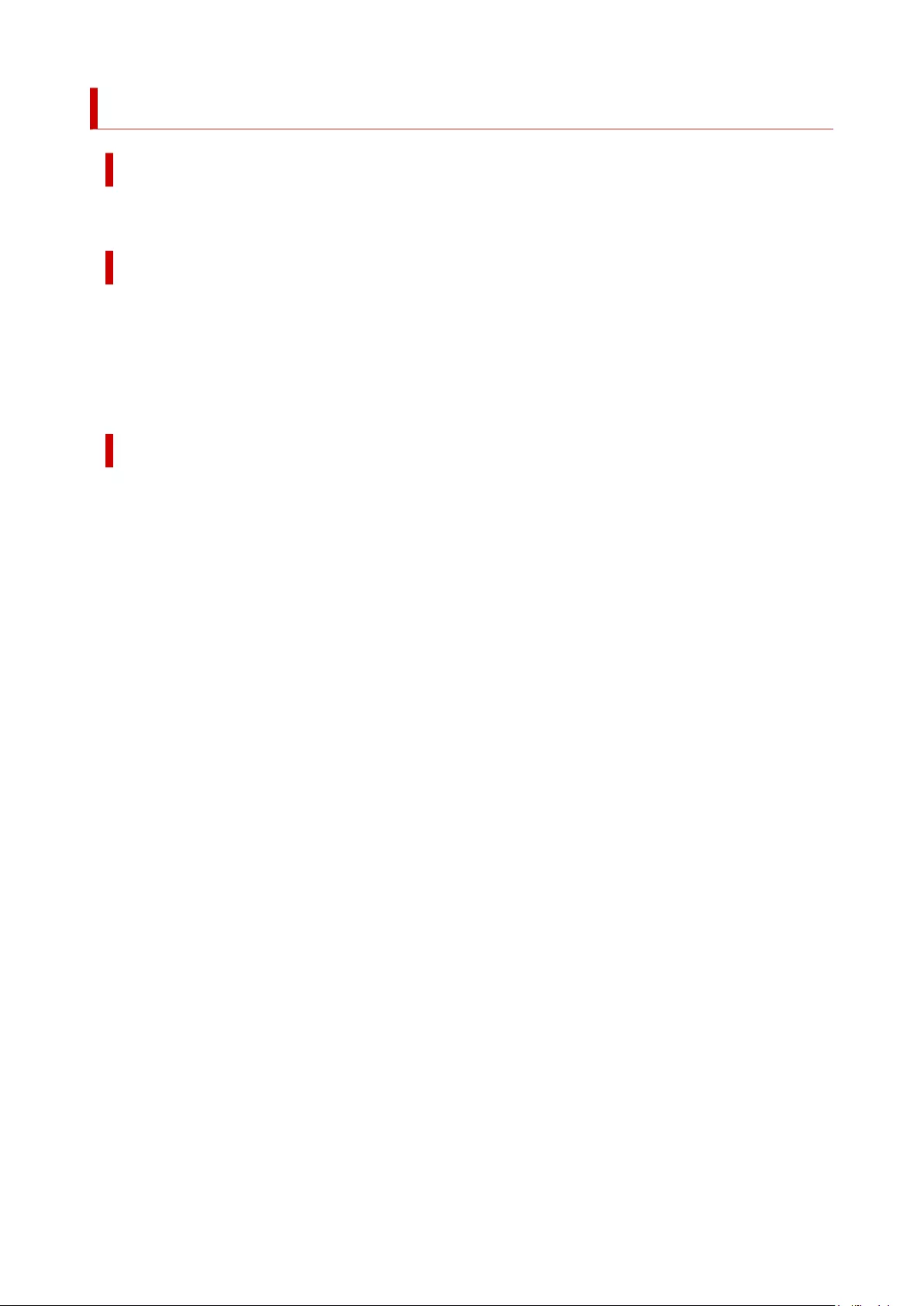
6920
Cause
A printer error has occurred.
What to Do
Turn off the power and unplug the power cord.
Wait a moment and turn the power back on.
If the error appears again, make a note of the detailed error code (ECxx-xxxx) that appears on the touch
screen, and then contact a Canon customer service center.
Detailed error codes
EC51-3004
858
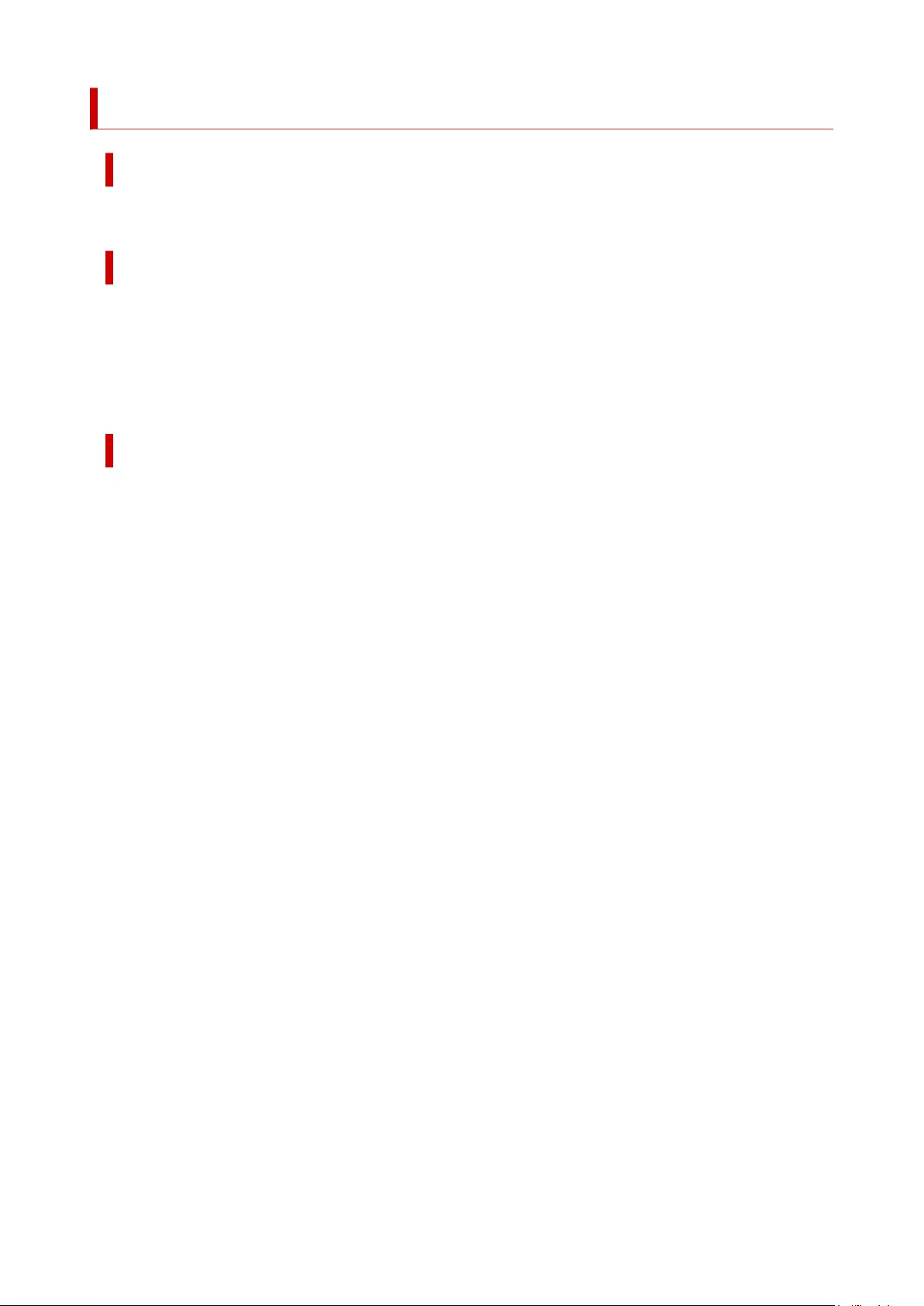
6921
Cause
A printer error has occurred.
What to Do
Turn off the power and unplug the power cord.
Wait a moment and turn the power back on.
If the error appears again, make a note of the detailed error code (ECxx-xxxx) that appears on the touch
screen, and then contact a Canon customer service center.
Detailed error codes
EC51-3005
859

6930
Cause
A printer error has occurred.
What to Do
Turn off the power and unplug the power cord.
Wait a moment and turn the power back on.
If the error appears again, make a note of the detailed error code (ECxx-xxxx) that appears on the touch
screen, and then contact a Canon customer service center.
Detailed error codes
EC51-3100
860
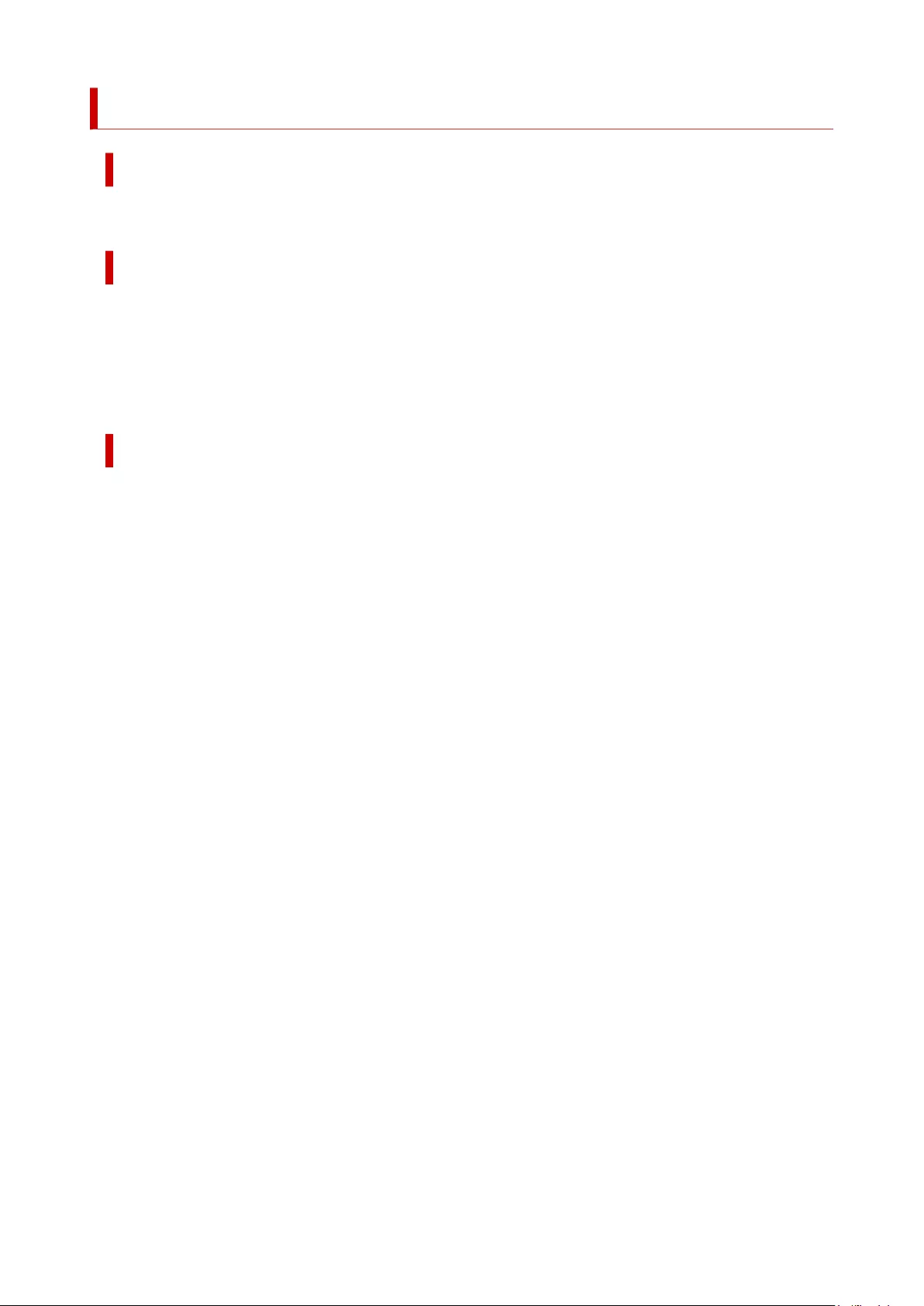
6931
Cause
A printer error has occurred.
What to Do
Turn off the power and unplug the power cord.
Wait a moment and turn the power back on.
If the error appears again, make a note of the detailed error code (ECxx-xxxx) that appears on the touch
screen, and then contact a Canon customer service center.
Detailed error codes
EC51-3101
861
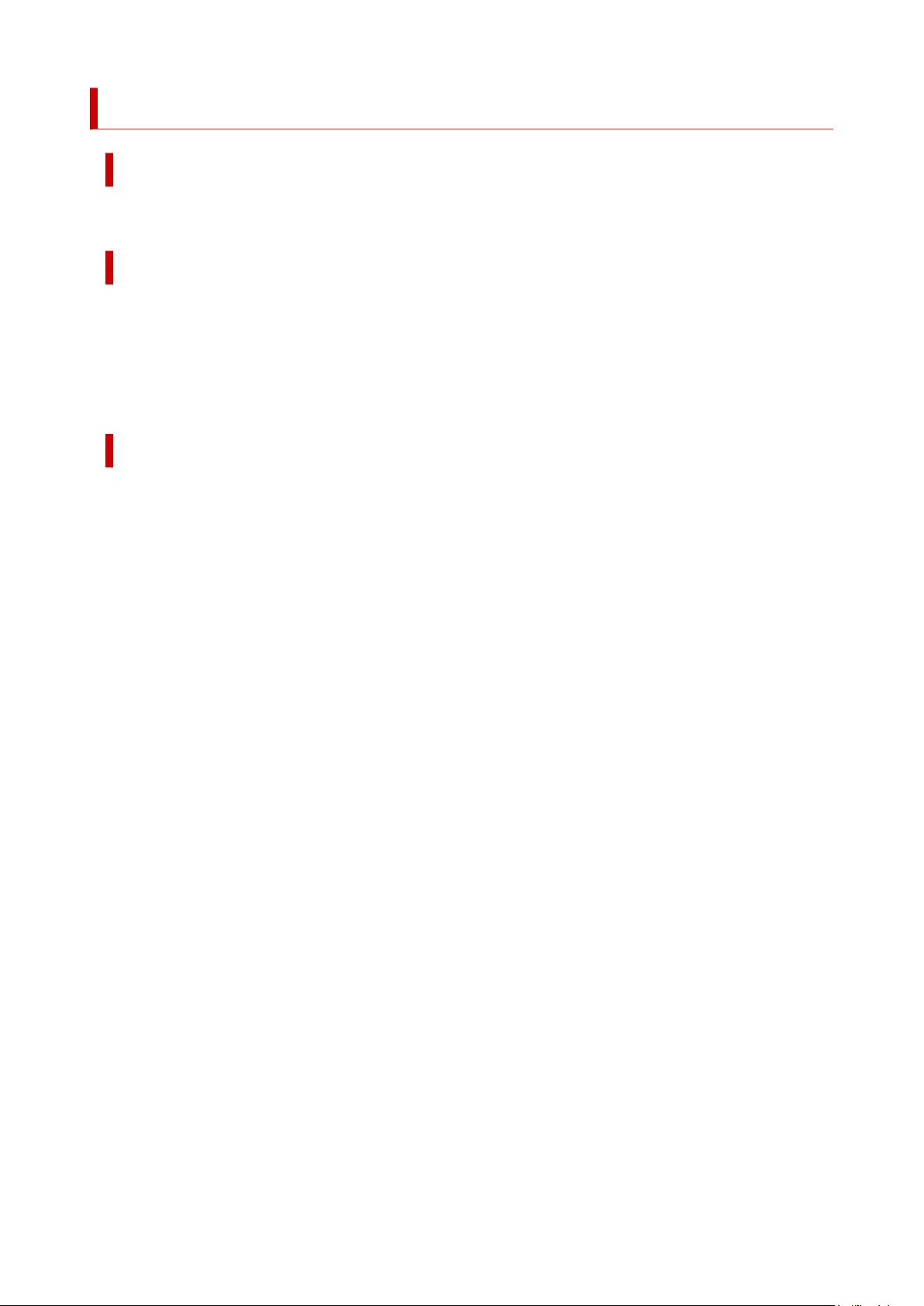
6932
Cause
A printer error has occurred.
What to Do
Turn off the power and unplug the power cord.
Wait a moment and turn the power back on.
If the error appears again, make a note of the detailed error code (ECxx-xxxx) that appears on the touch
screen, and then contact a Canon customer service center.
Detailed error codes
EC51-3102
862
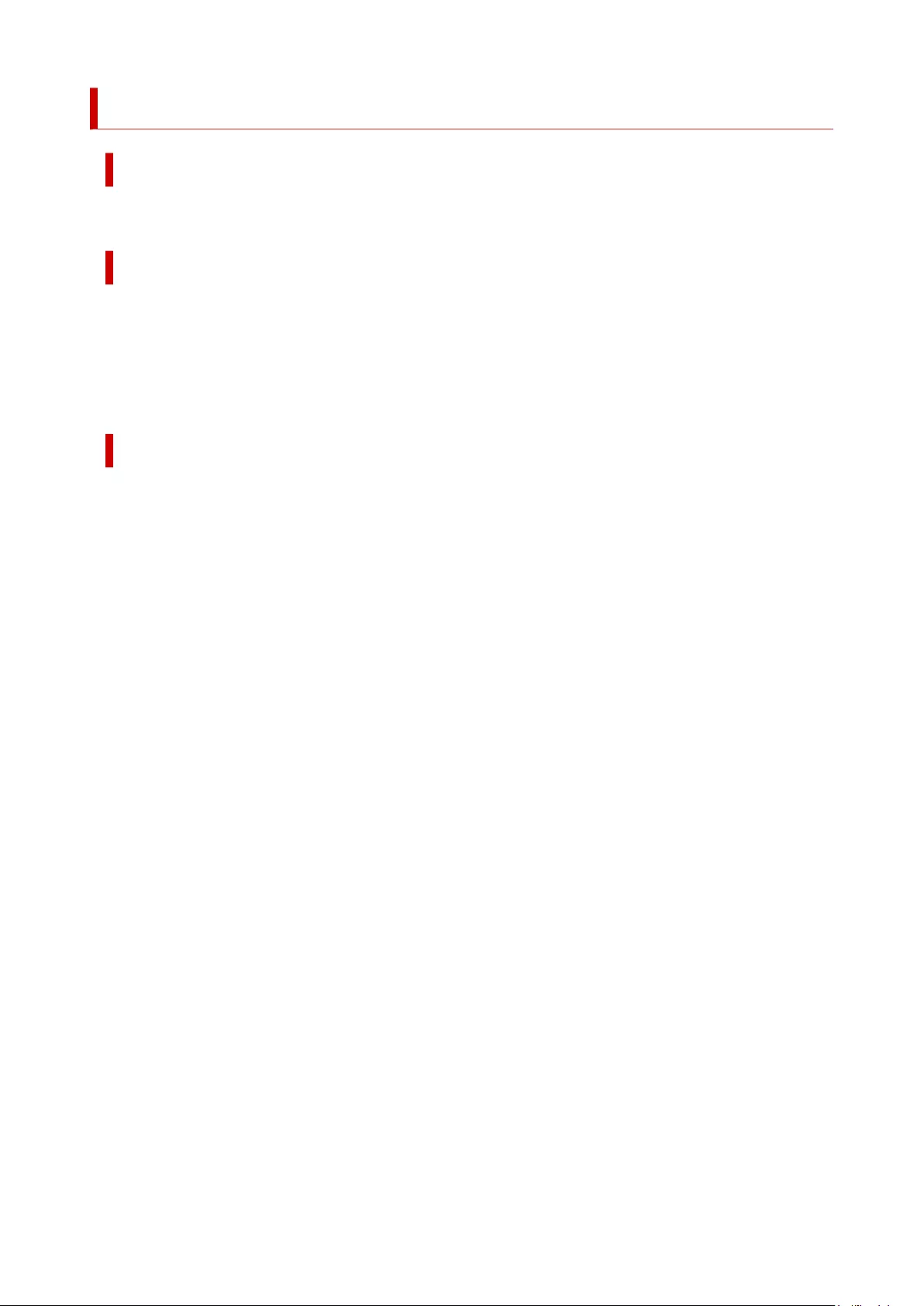
6933
Cause
A printer error has occurred.
What to Do
Turn off the power and unplug the power cord.
Wait a moment and turn the power back on.
If the error appears again, make a note of the detailed error code (ECxx-xxxx) that appears on the touch
screen, and then contact a Canon customer service center.
Detailed error codes
EC51-3103
863
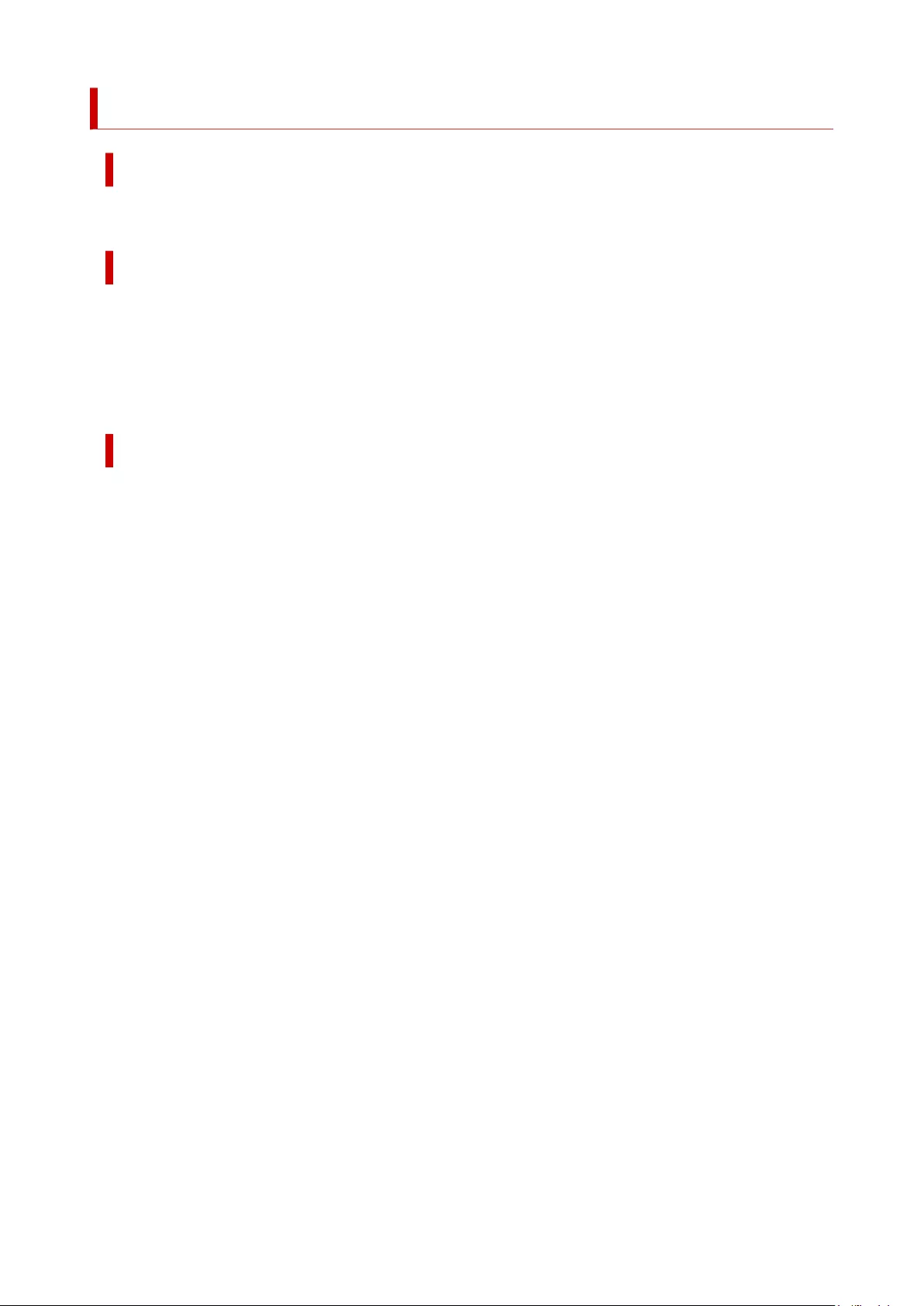
6940
Cause
A printer error has occurred.
What to Do
Turn off the power and unplug the power cord.
Wait a moment and turn the power back on.
If the error appears again, make a note of the detailed error code (ECxx-xxxx) that appears on the touch
screen, and then contact a Canon customer service center.
Detailed error codes
EC51-3104
864
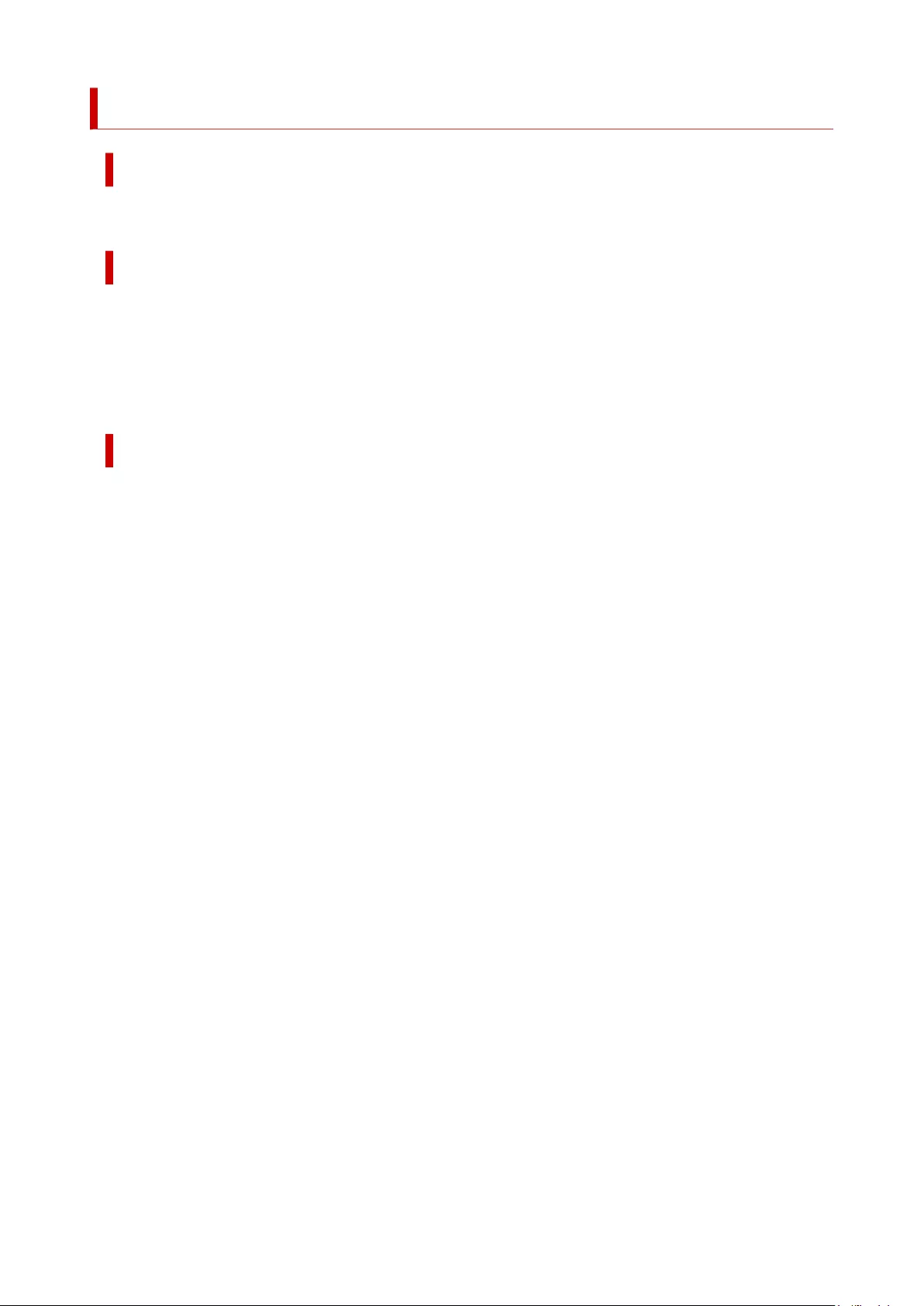
6941
Cause
A printer error has occurred.
What to Do
Turn off the power and unplug the power cord.
Wait a moment and turn the power back on.
If the error appears again, make a note of the detailed error code (ECxx-xxxx) that appears on the touch
screen, and then contact a Canon customer service center.
Detailed error codes
EC51-3105
865
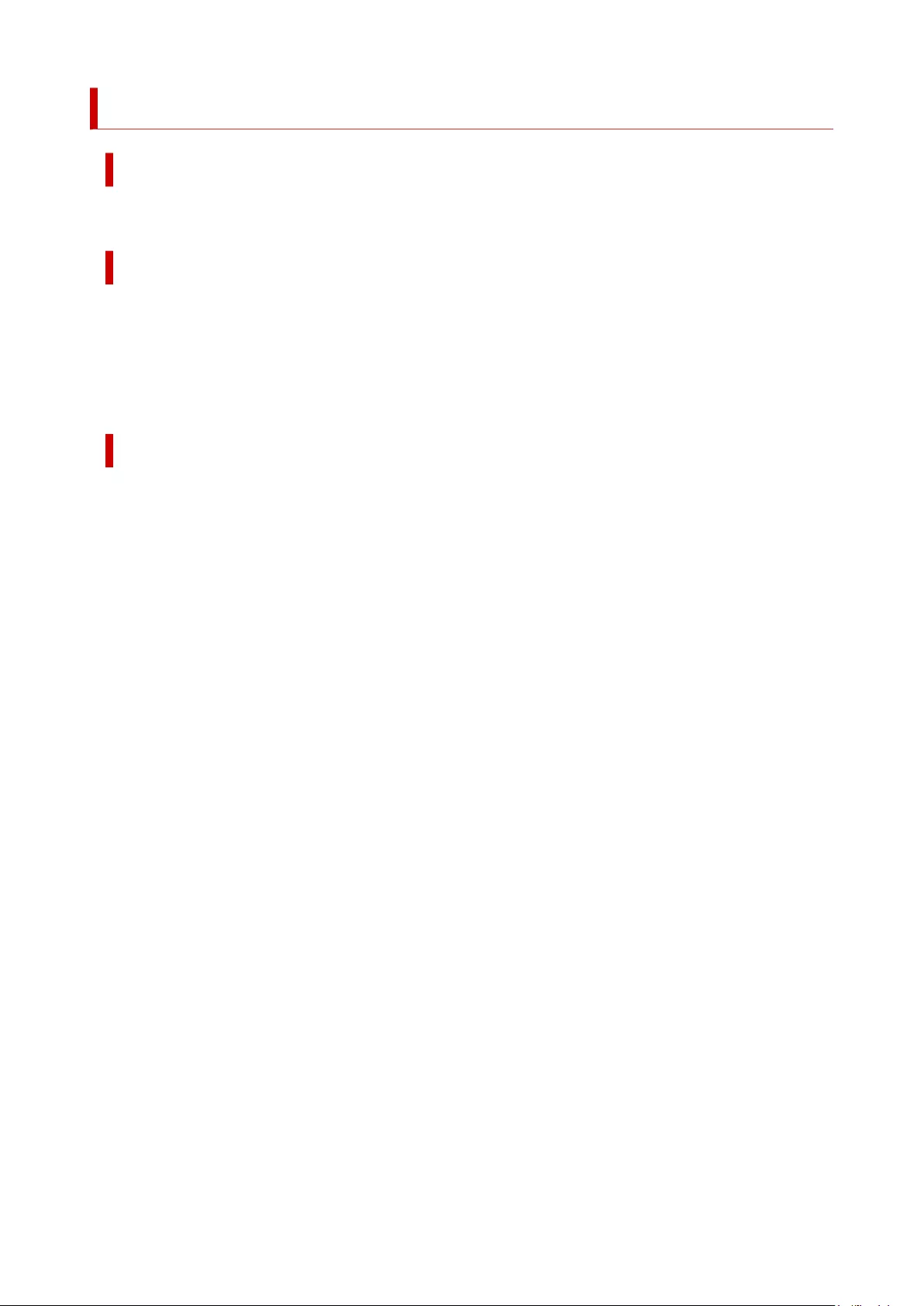
6942
Cause
A printer error has occurred.
What to Do
Turn off the power and unplug the power cord.
Wait a moment and turn the power back on.
If the error appears again, make a note of the detailed error code (ECxx-xxxx) that appears on the touch
screen, and then contact a Canon customer service center.
Detailed error codes
EC51-3106
866

6943
Cause
A printer error has occurred.
What to Do
Turn off the power and unplug the power cord.
Wait a moment and turn the power back on.
If the error appears again, make a note of the detailed error code (ECxx-xxxx) that appears on the touch
screen, and then contact a Canon customer service center.
Detailed error codes
EC51-3107
867

6944
Cause
A printer error has occurred.
What to Do
Turn off the power and unplug the power cord.
Wait a moment and turn the power back on.
If the error appears again, make a note of the detailed error code (ECxx-xxxx) that appears on the touch
screen, and then contact a Canon customer service center.
Detailed error codes
EC51-3108
868
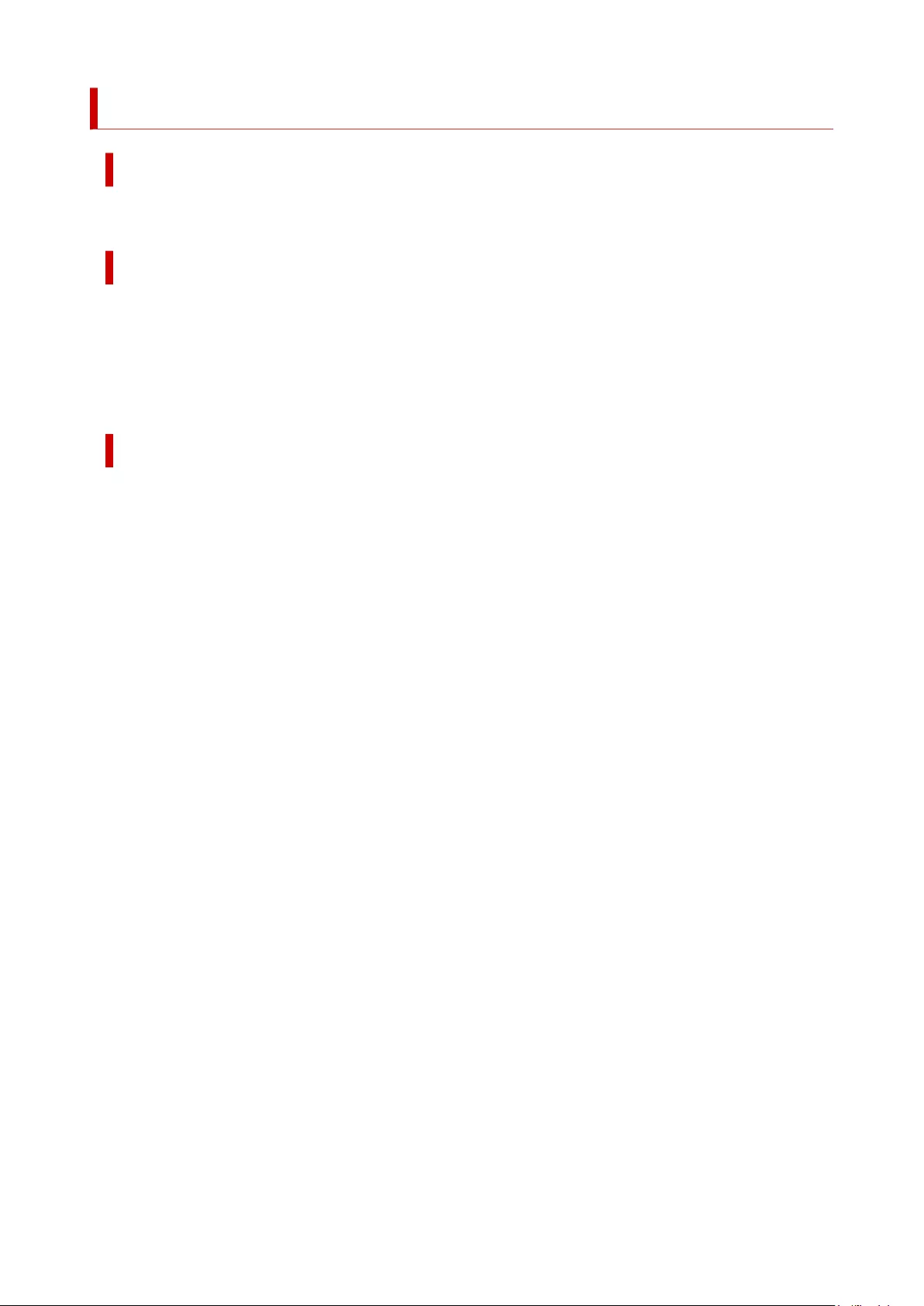
6945
Cause
A printer error has occurred.
What to Do
Turn off the power and unplug the power cord.
Wait a moment and turn the power back on.
If the error appears again, make a note of the detailed error code (ECxx-xxxx) that appears on the touch
screen, and then contact a Canon customer service center.
Detailed error codes
EC51-3109
869
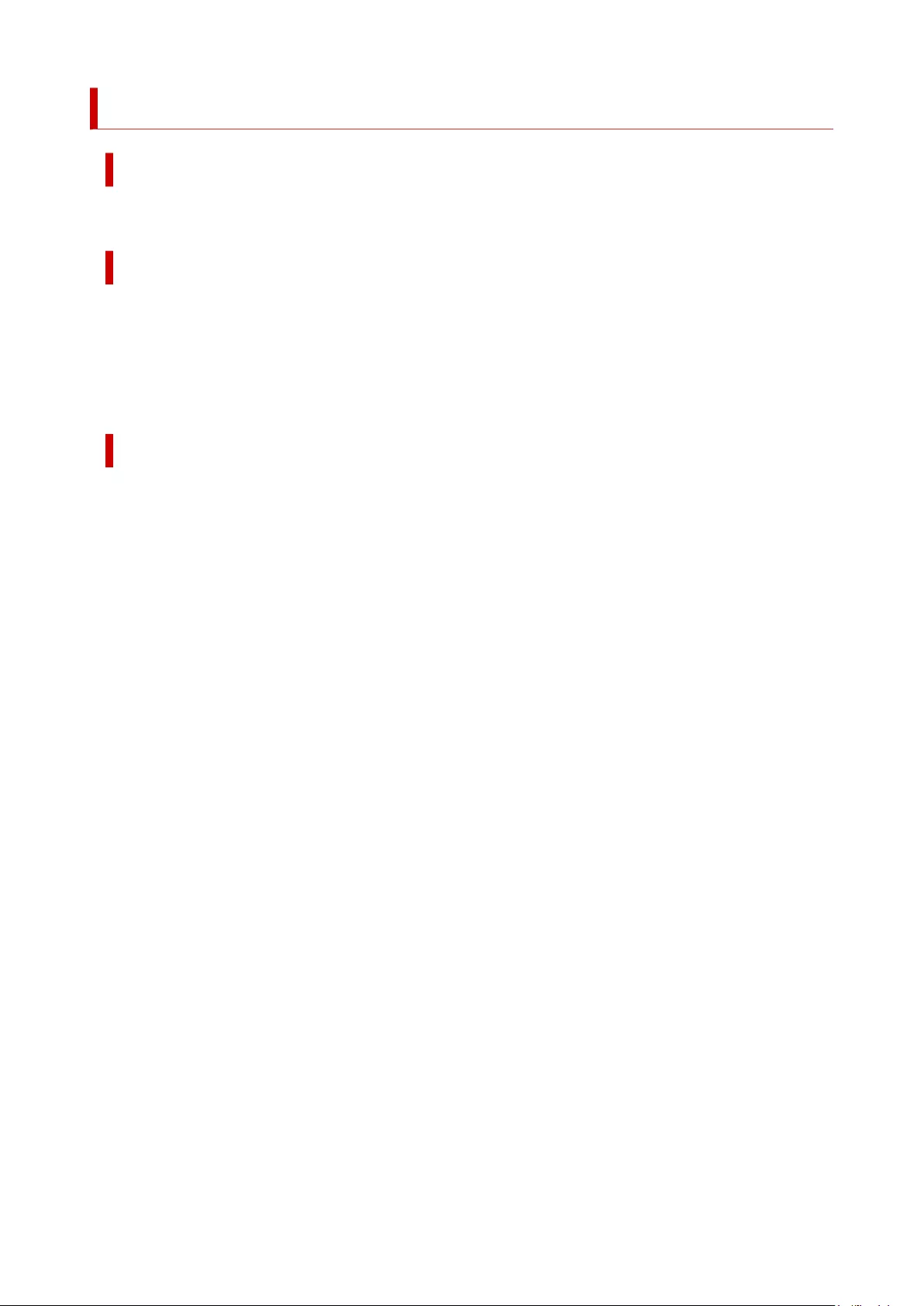
6946
Cause
A printer error has occurred.
What to Do
Turn off the power and unplug the power cord.
Wait a moment and turn the power back on.
If the error appears again, make a note of the detailed error code (ECxx-xxxx) that appears on the touch
screen, and then contact a Canon customer service center.
Detailed error codes
EC51-3110
870
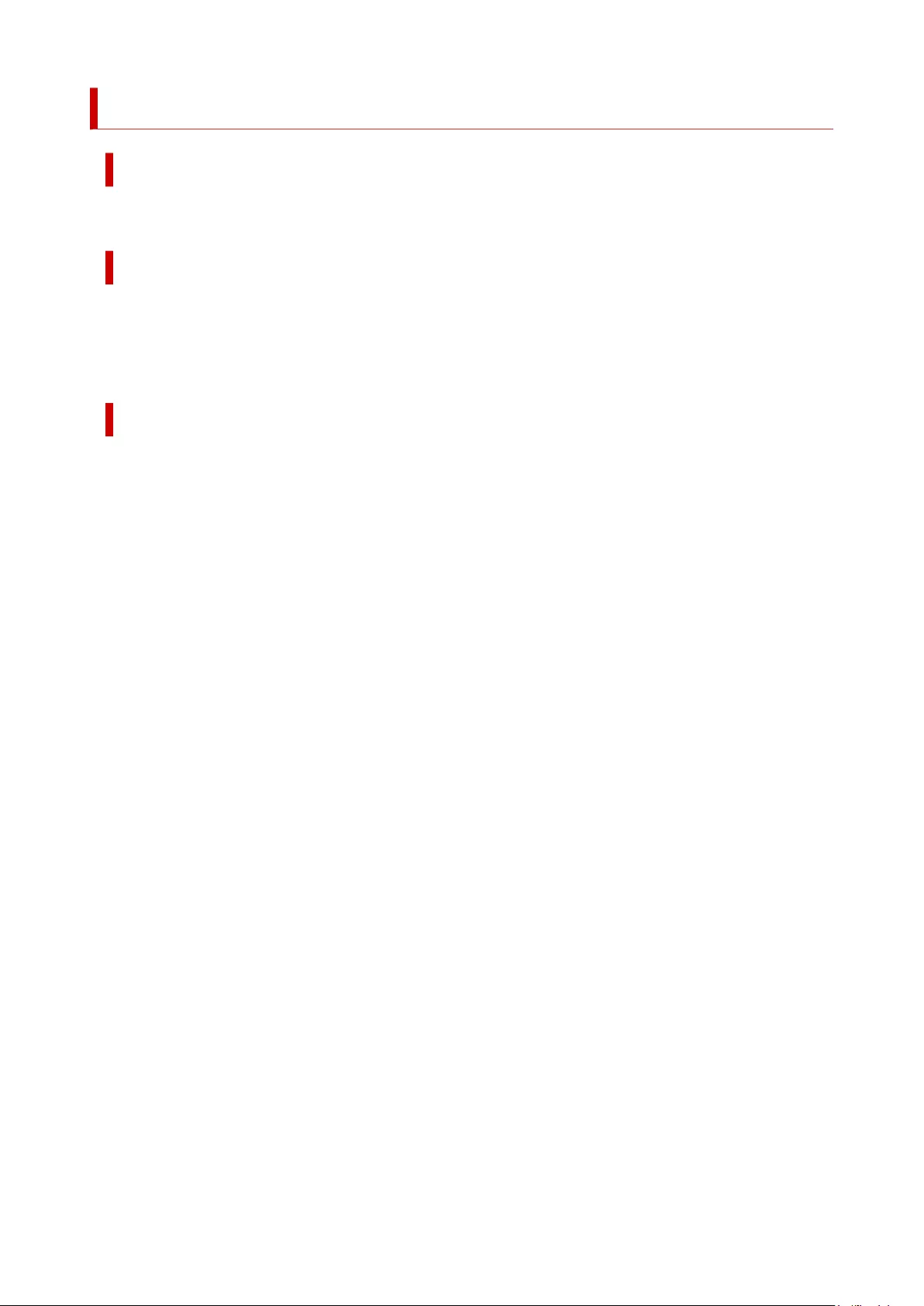
7050
Cause
A printer error has occurred.
What to Do
Make a note of the detailed error code (ECxx-xxxx) that appears on the touch screen, and then turn off
the power and unplug the power cord.
Contact your Canon dealer for assistance.
Detailed error codes
EC51-5001
871

7051
Cause
A printer error has occurred.
What to Do
Make a note of the detailed error code (ECxx-xxxx) that appears on the touch screen, and then turn off
the power and unplug the power cord.
Contact your Canon dealer for assistance.
Detailed error codes
EC51-5002
872

7052
Cause
A printer error has occurred.
What to Do
Make a note of the detailed error code (ECxx-xxxx) that appears on the touch screen, and then turn off
the power and unplug the power cord.
Contact your Canon dealer for assistance.
Detailed error codes
EC51-5003
873
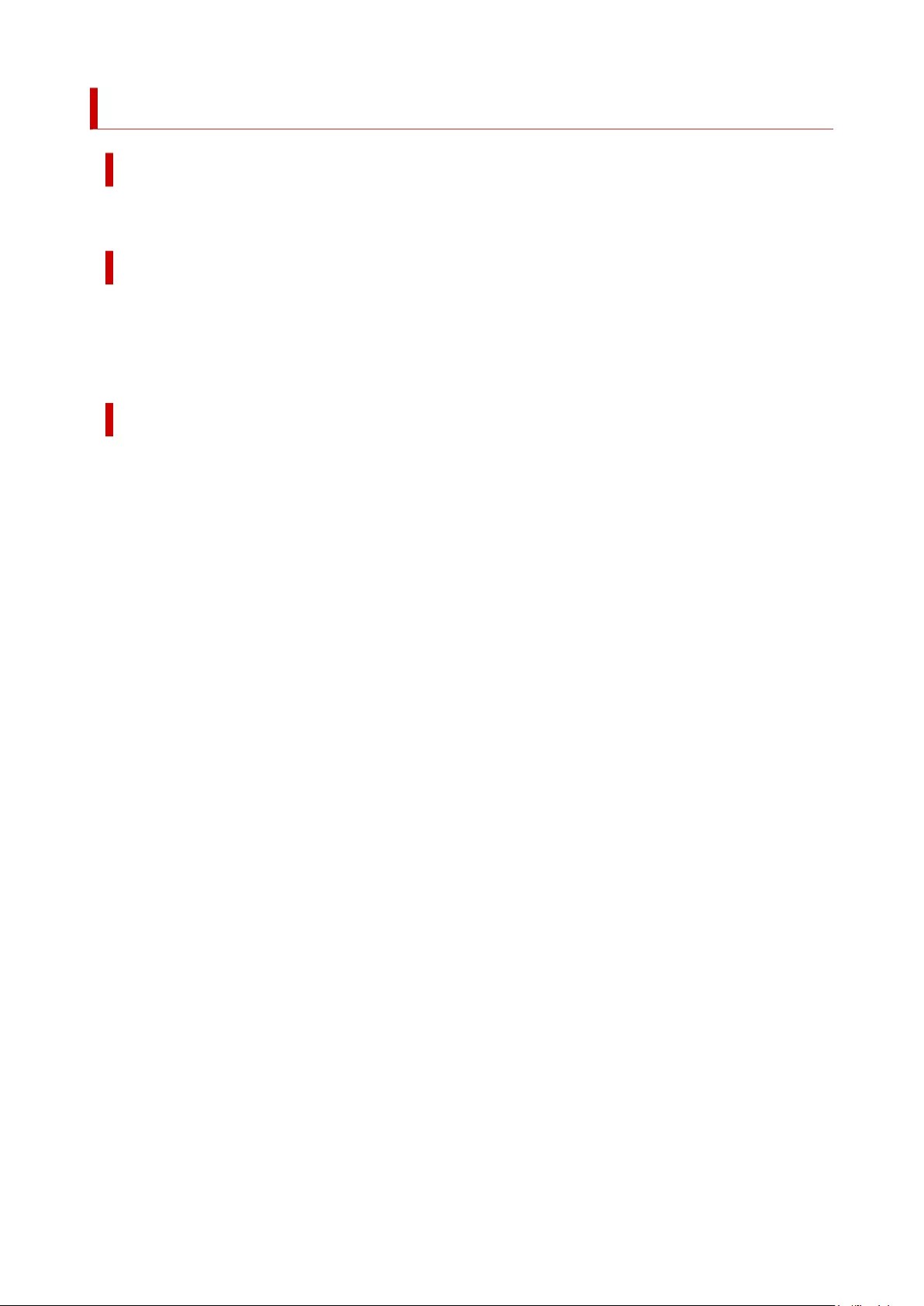
8200
Cause
A printer error has occurred.
What to Do
Make a note of the detailed error code (ECxx-xxxx) that appears on the touch screen, and then turn off
the power and unplug the power cord.
Contact your Canon dealer for assistance.
Detailed error codes
EC24-4049 EC24-404A EC24-404B
874
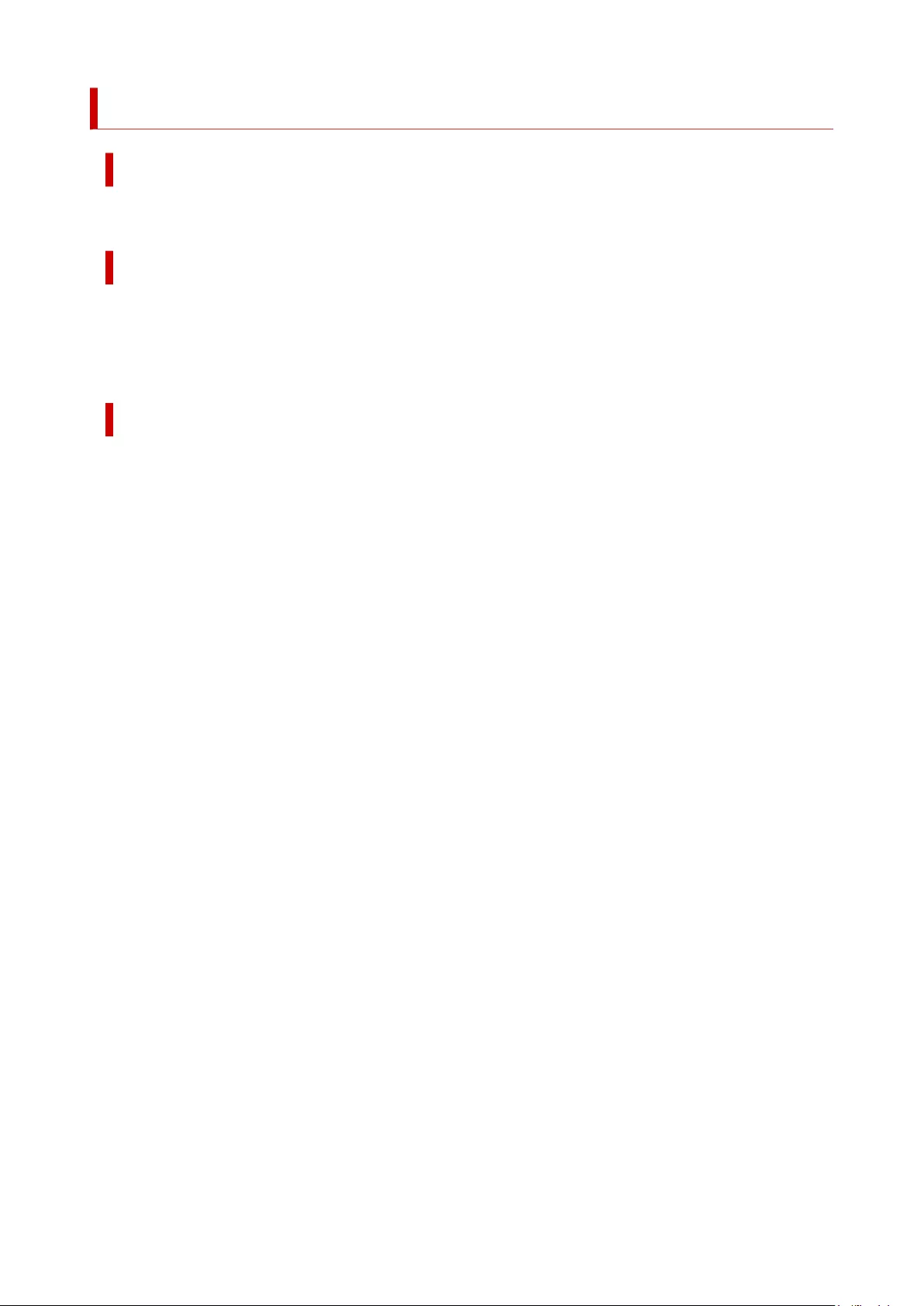
9000
Cause
A printer error has occurred.
What to Do
Make a note of the detailed error code (ECxx-xxxx) that appears on the touch screen, and then turn off
the power and unplug the power cord.
Contact your Canon dealer for assistance.
Detailed error codes
EC51-2F07
875
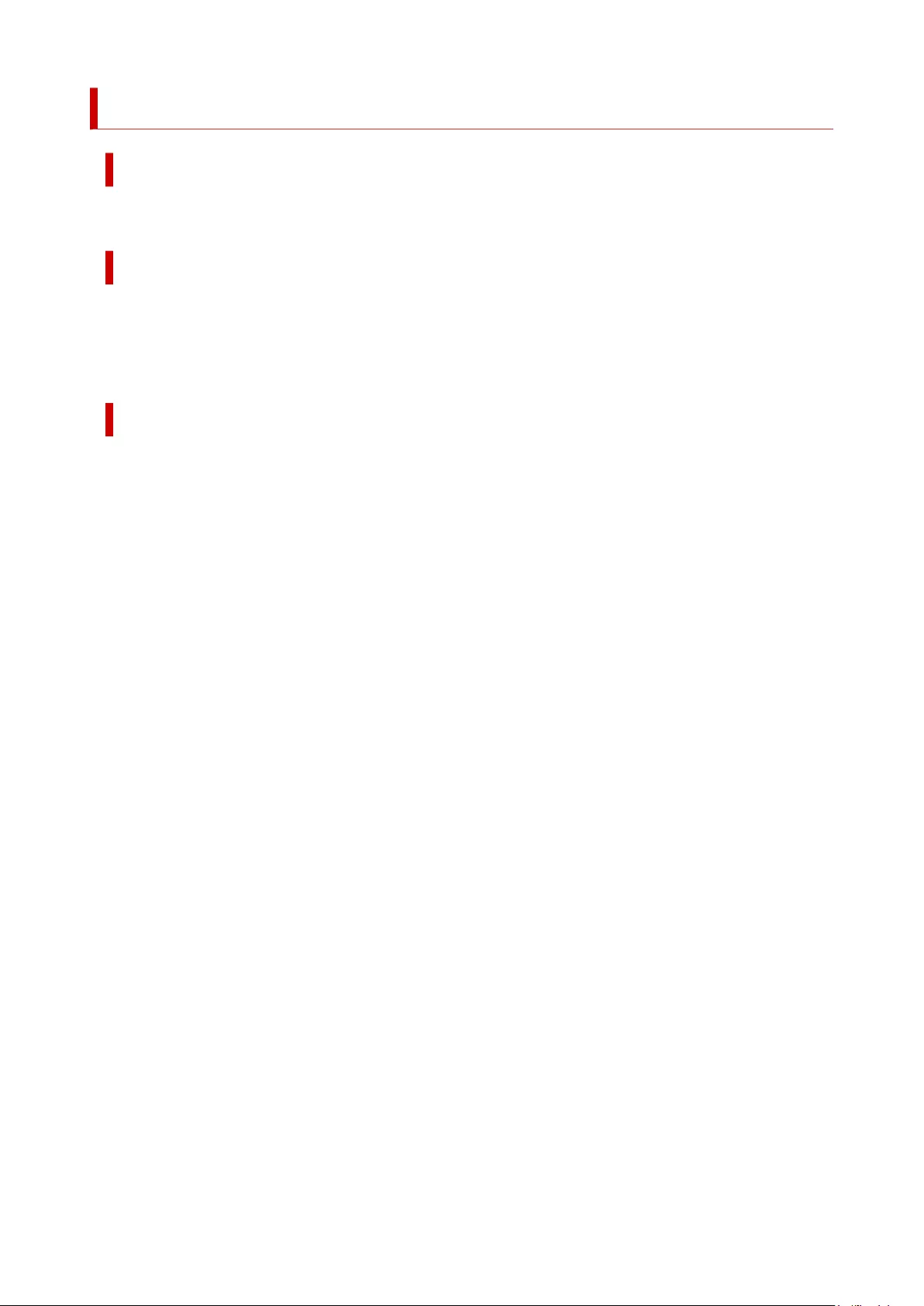
9110
Cause
A printer error has occurred.
What to Do
Make a note of the detailed error code (ECxx-xxxx) that appears on the touch screen, and then turn off
the power and unplug the power cord.
Contact your Canon dealer for assistance.
Detailed error codes
EC52-4038 EC52-4039
876
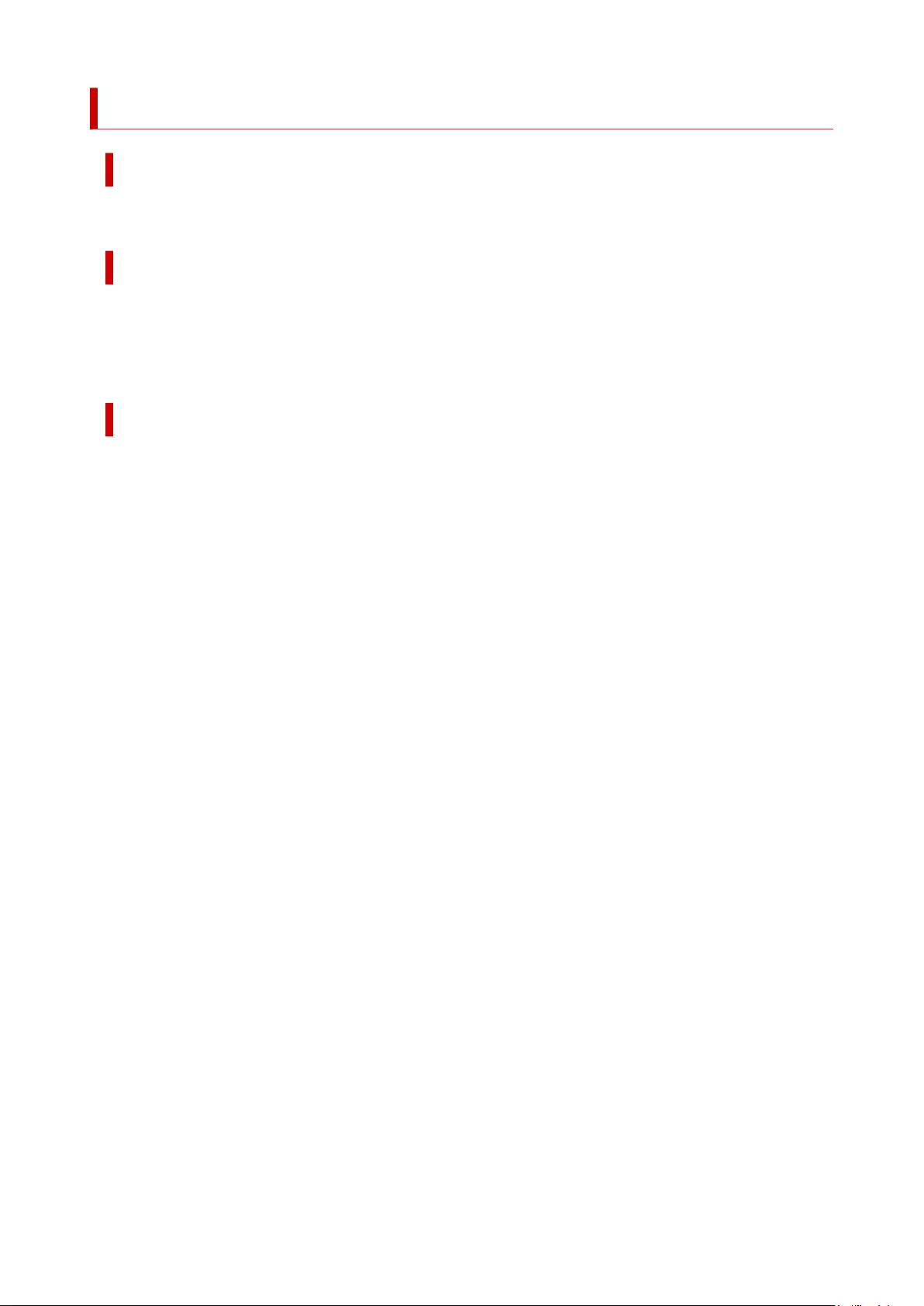
B20A
Cause
A printer error has occurred.
What to Do
Make a note of the detailed error code (ECxx-xxxx) that appears on the touch screen, and then turn off
the power and unplug the power cord.
Contact your Canon dealer for assistance.
Detailed error codes
EC03-403A
877
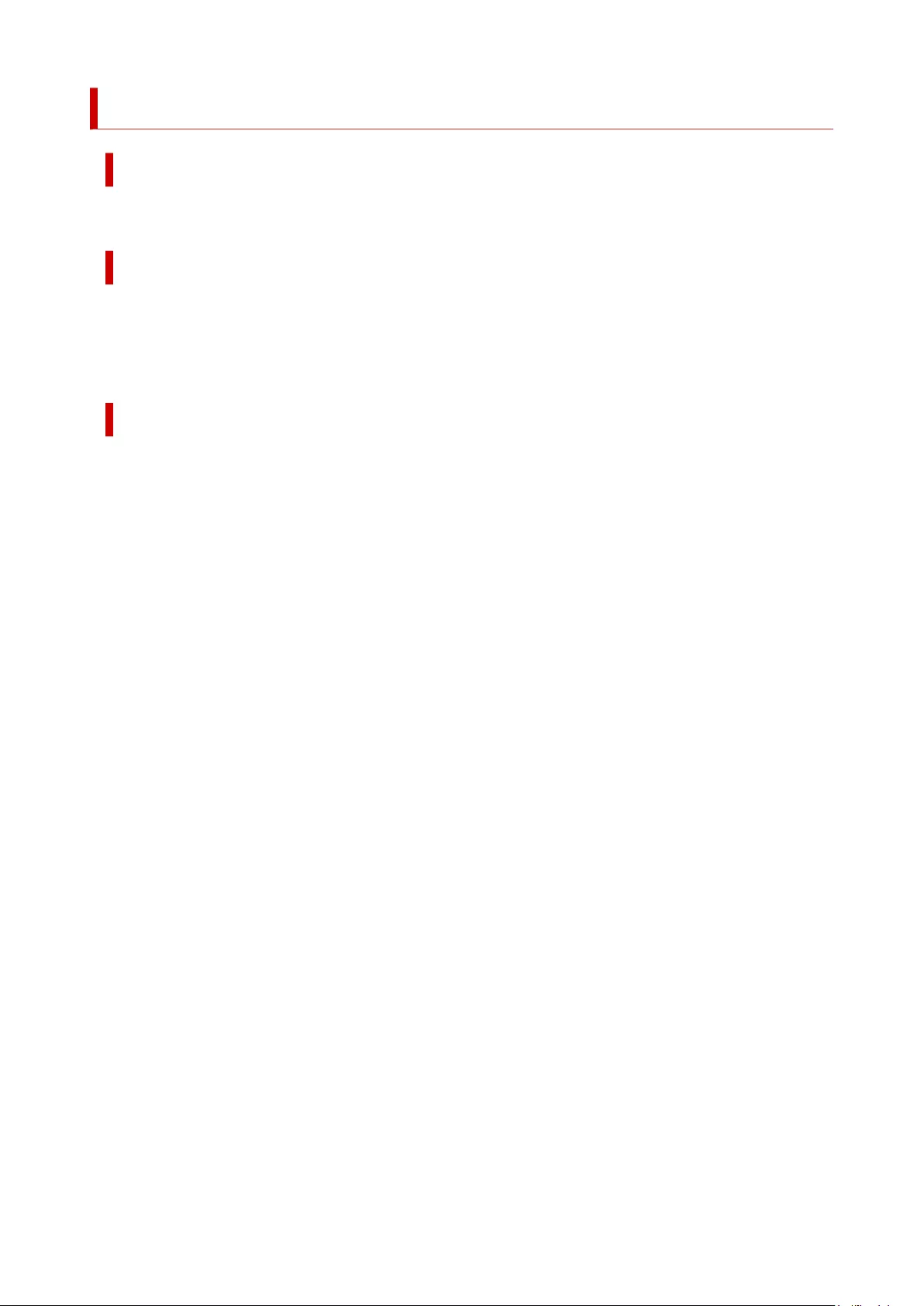
B510
Cause
A printer error has occurred.
What to Do
Make a note of the detailed error code (ECxx-xxxx) that appears on the touch screen, and then turn off
the power and unplug the power cord.
Contact your Canon dealer for assistance.
Detailed error codes
EC32-4001
878







































